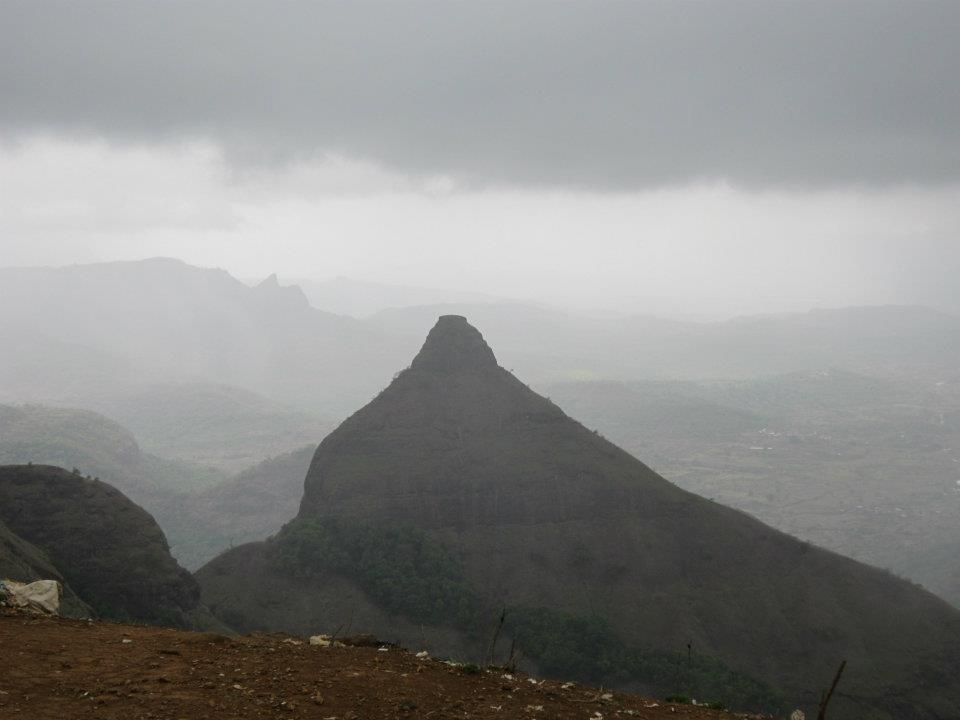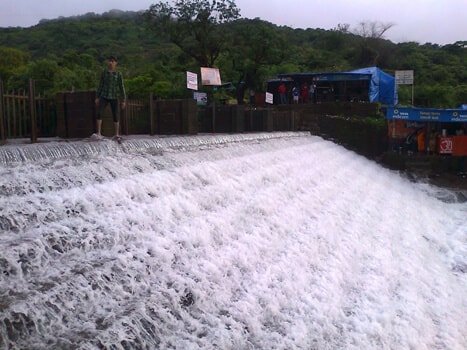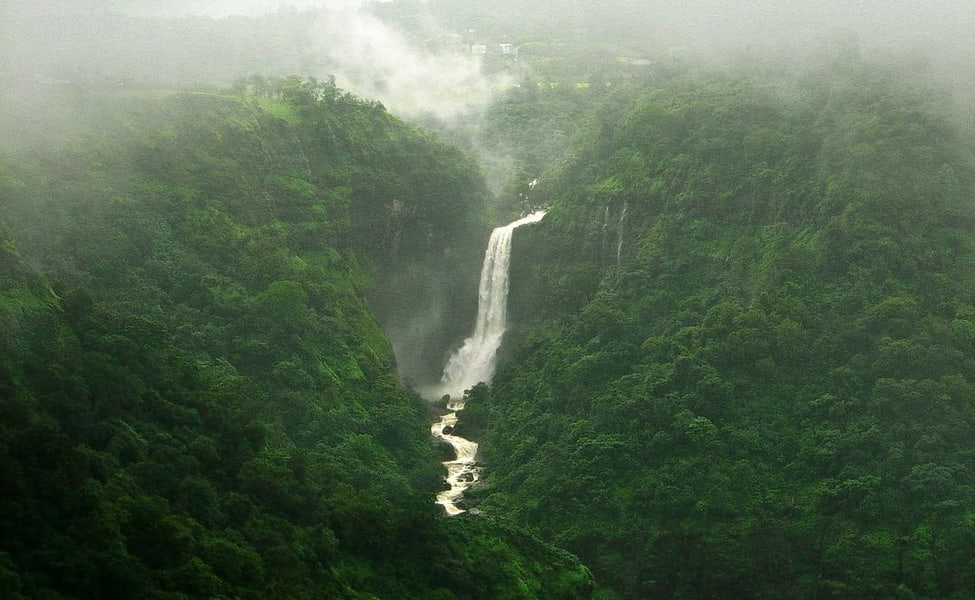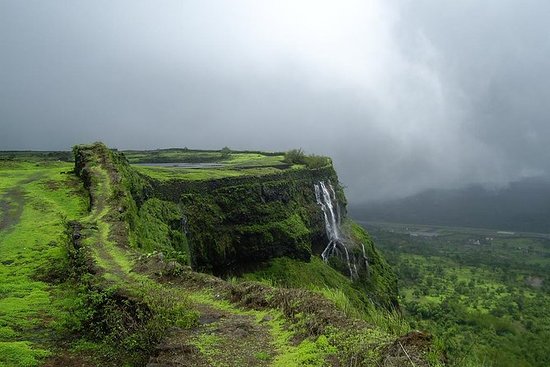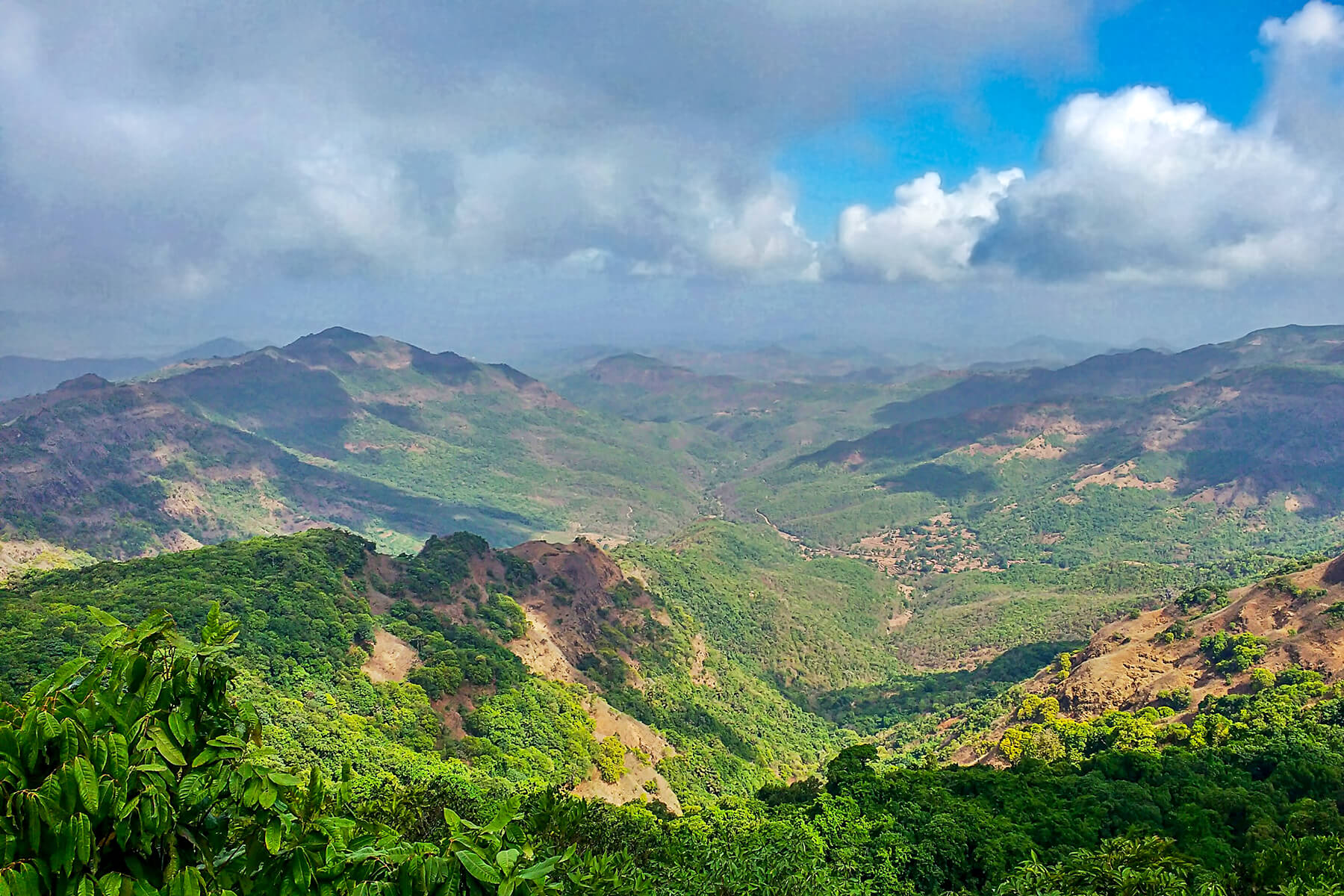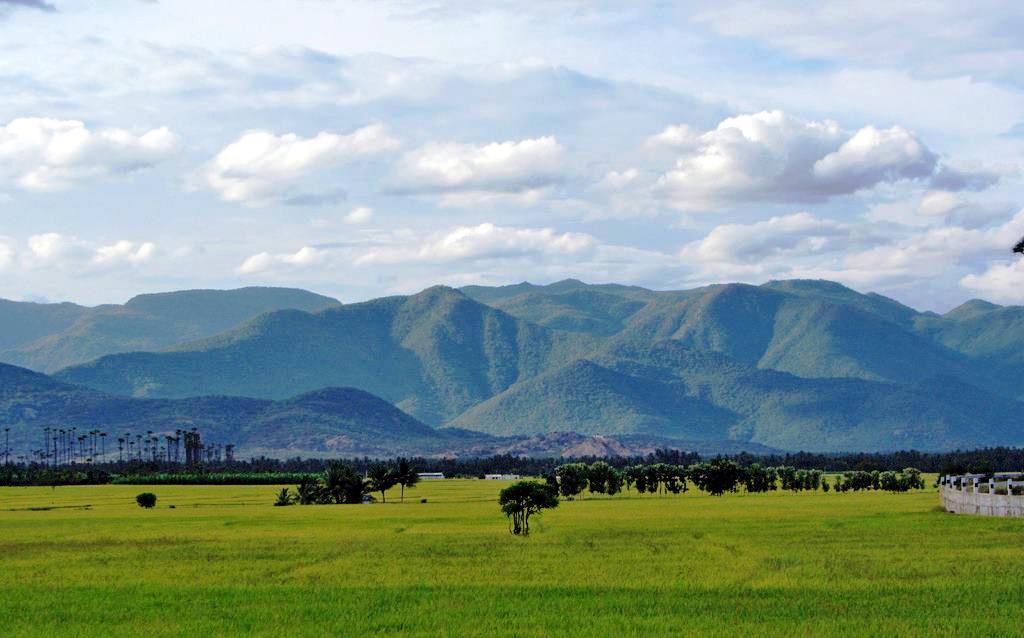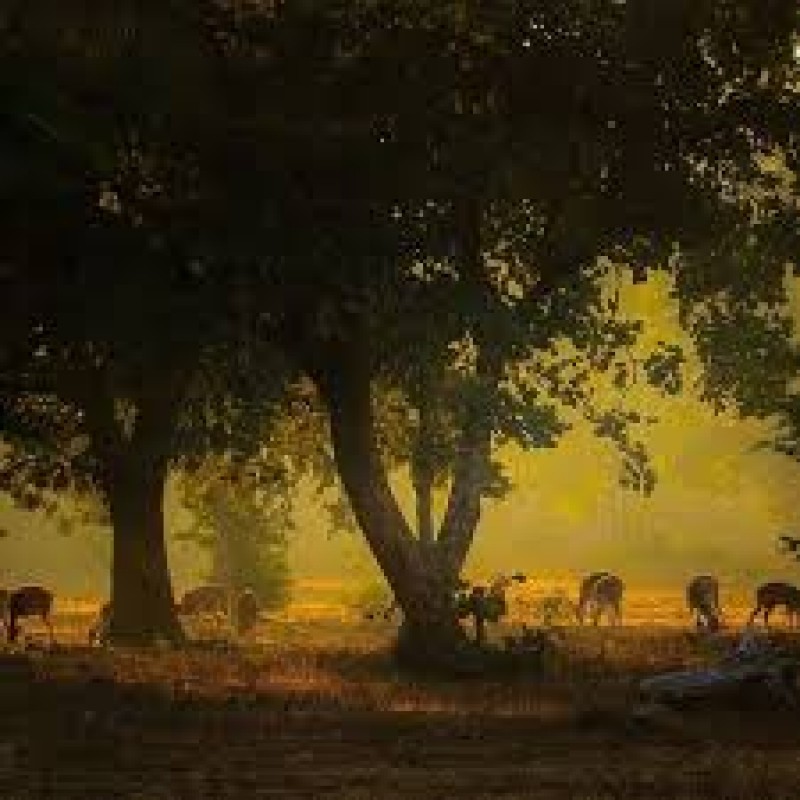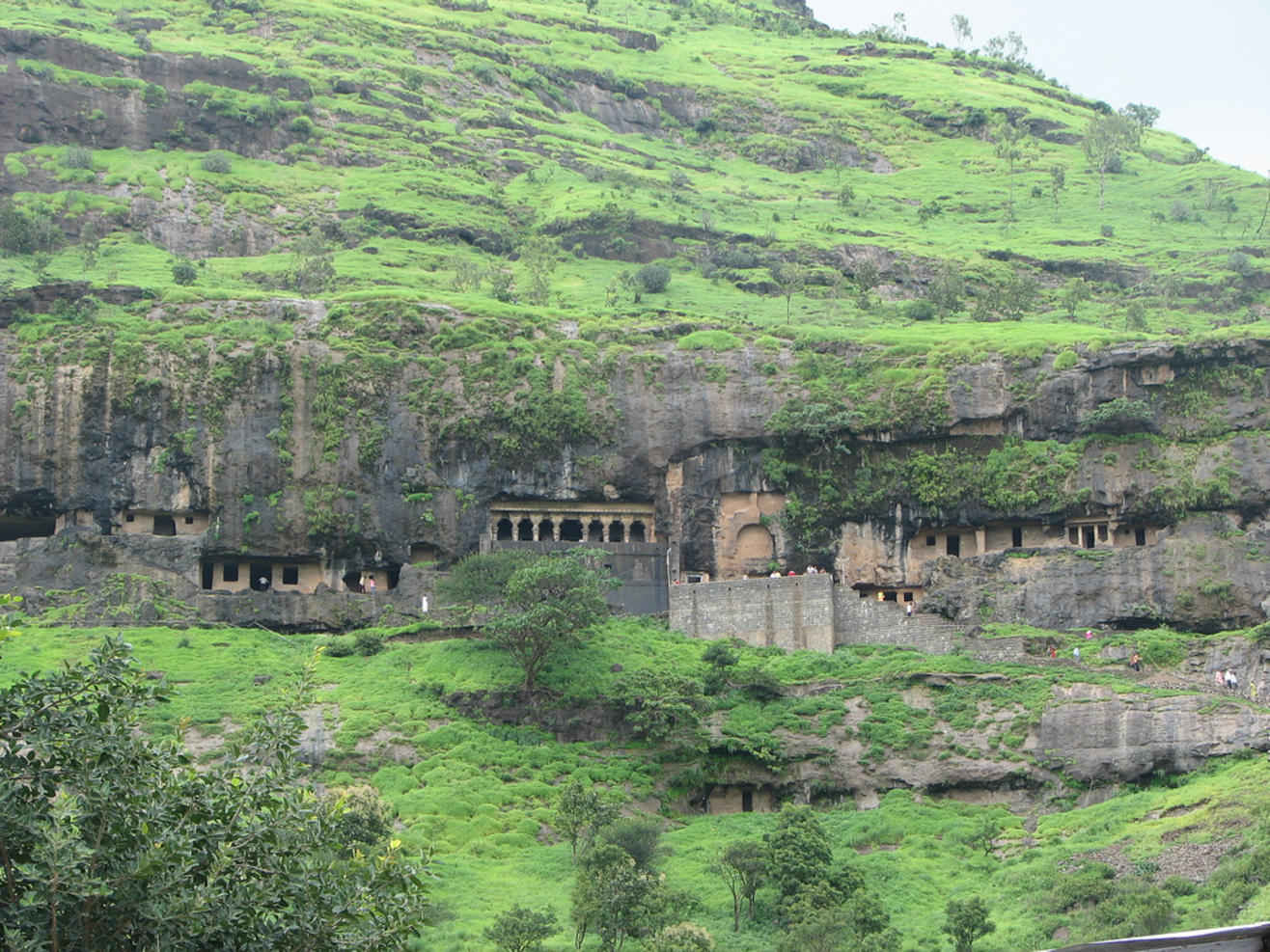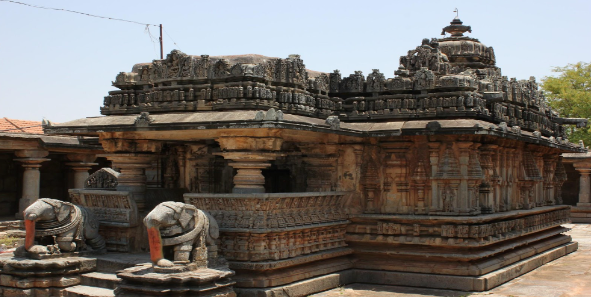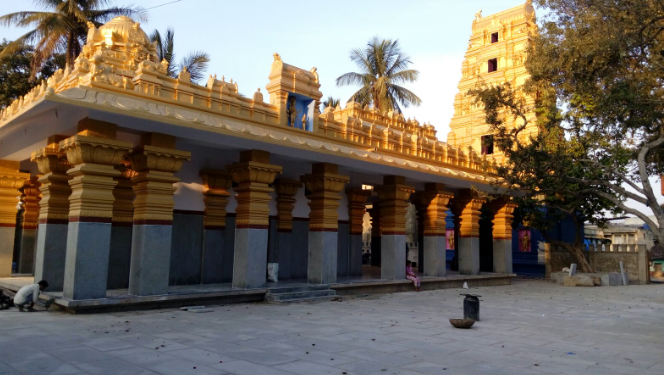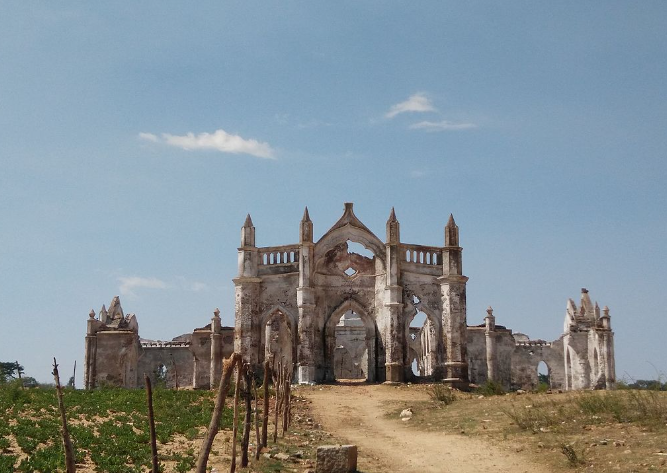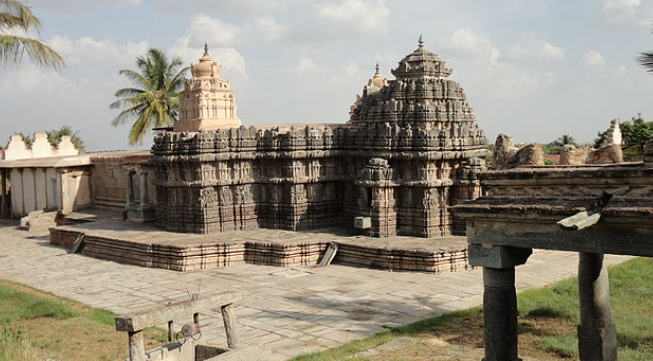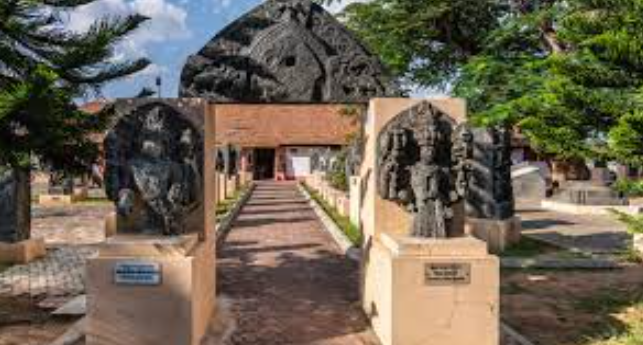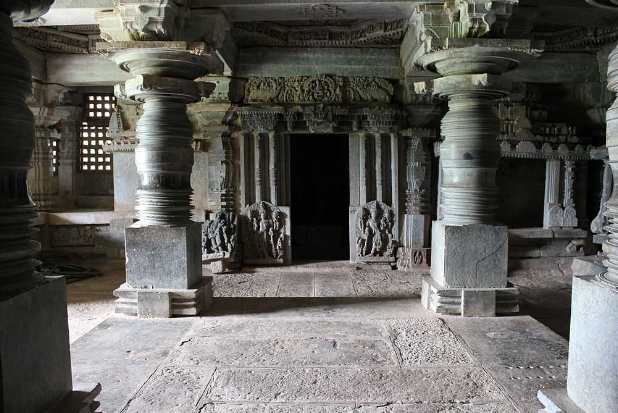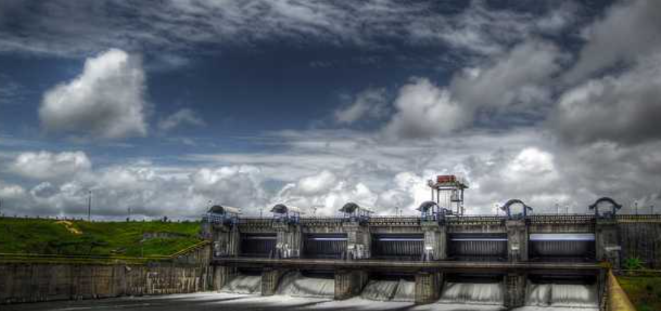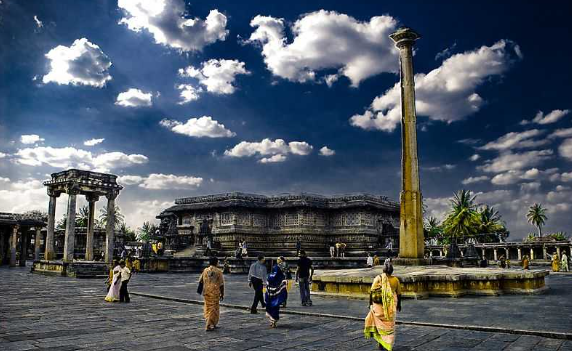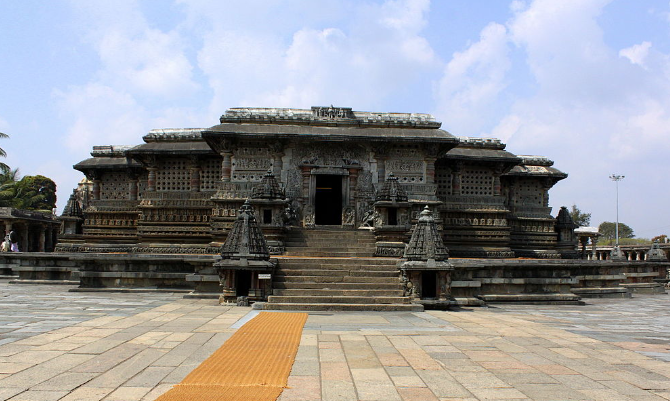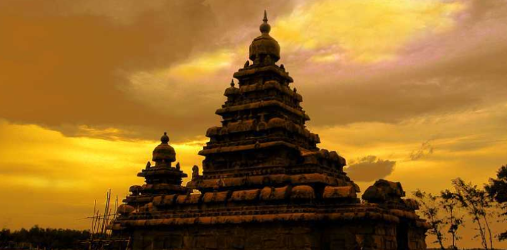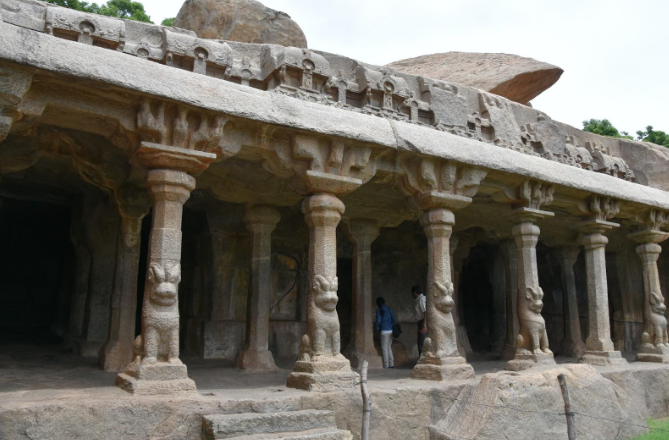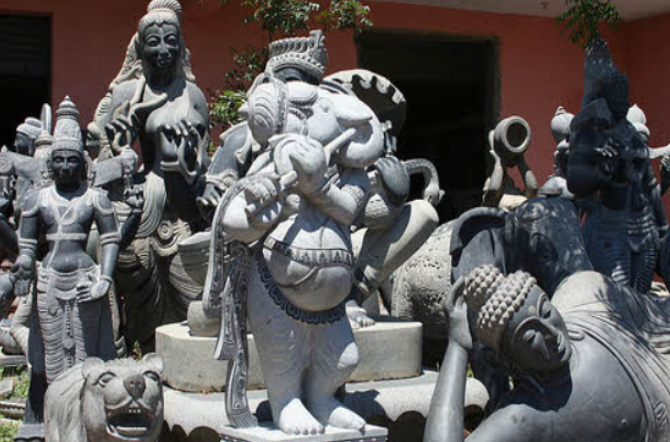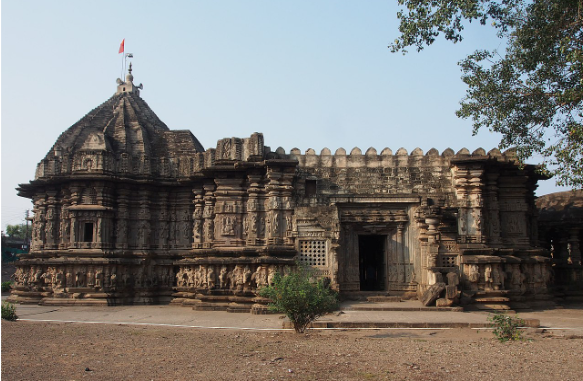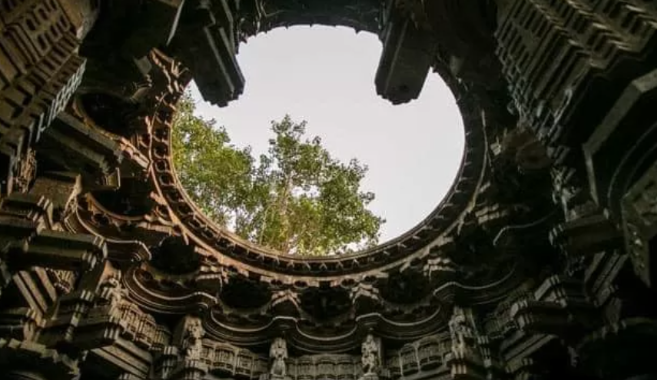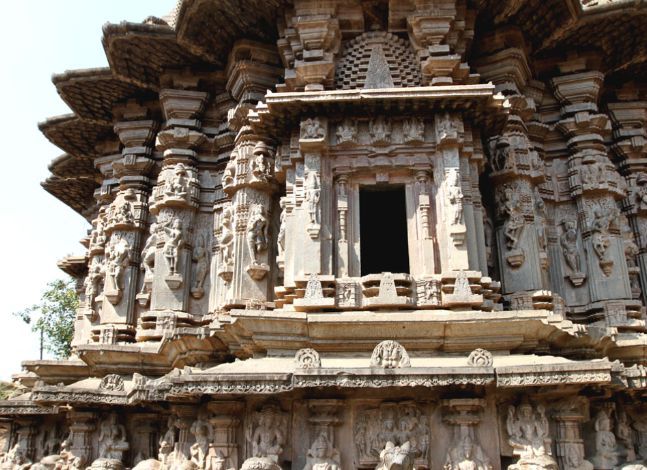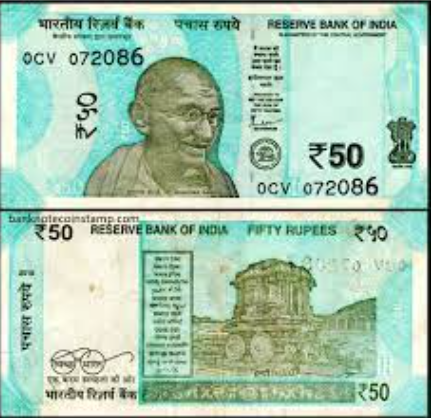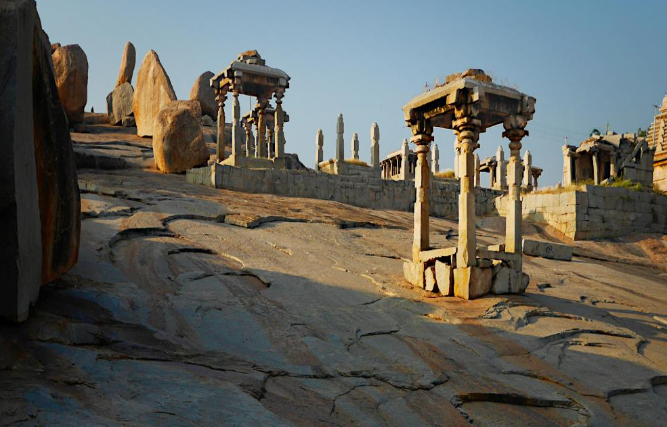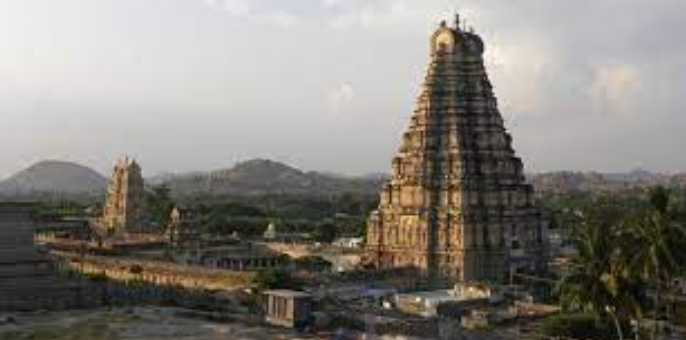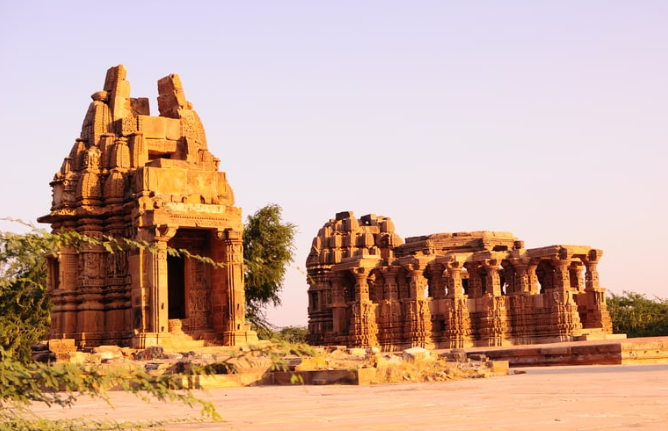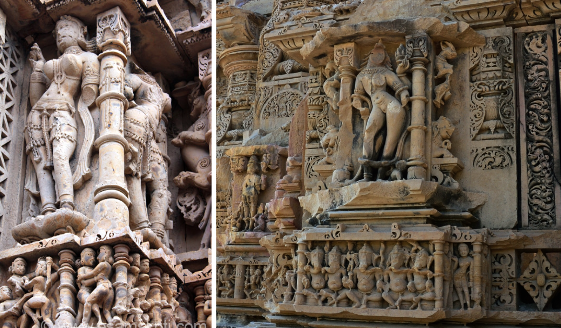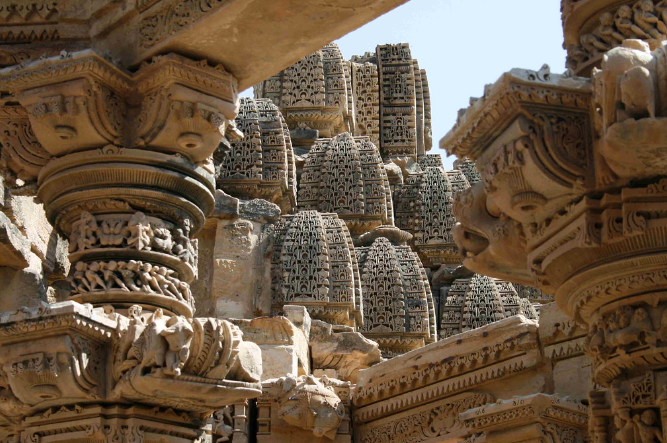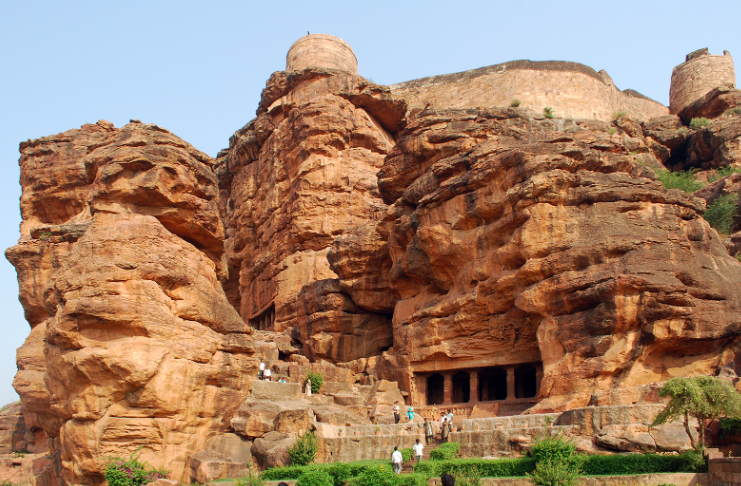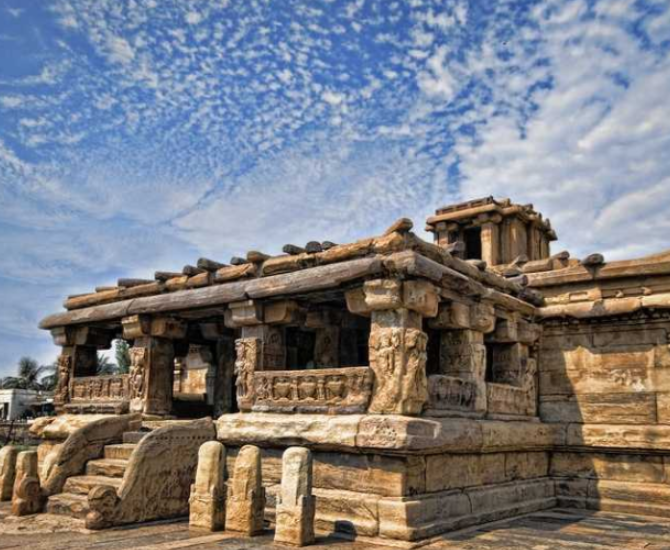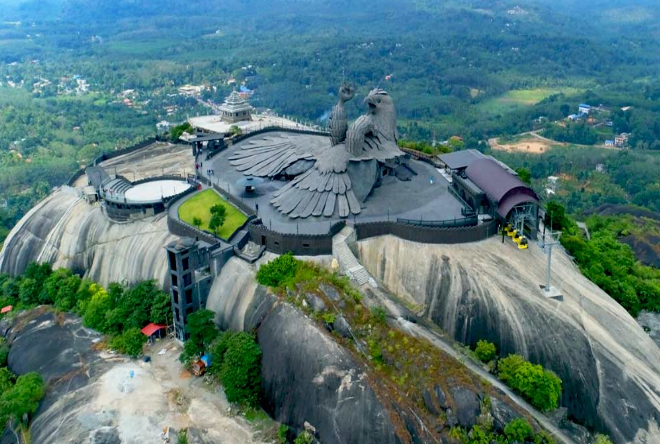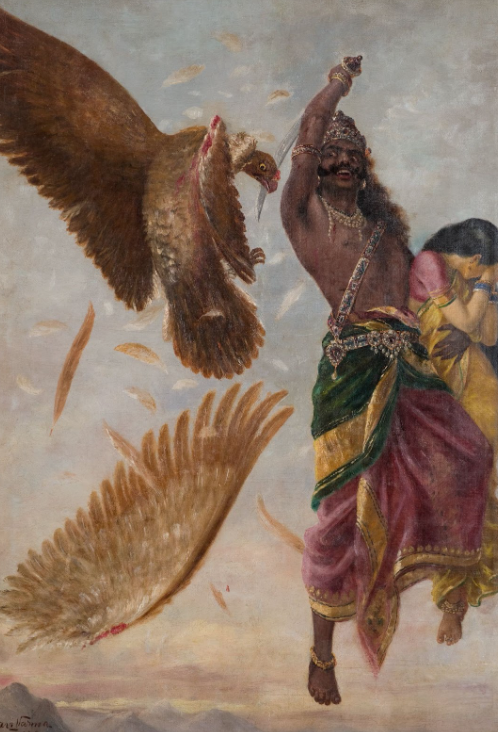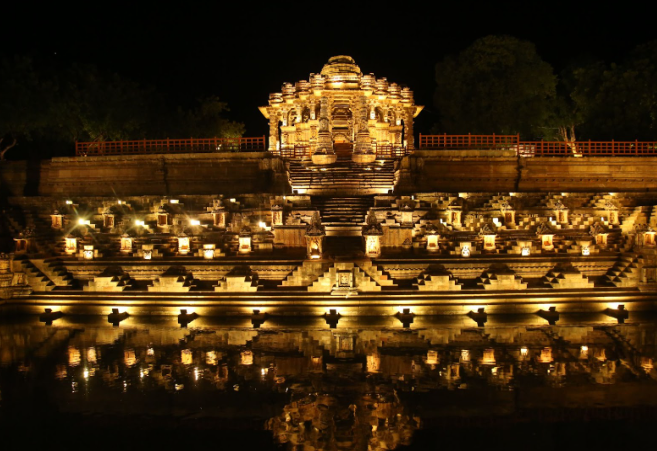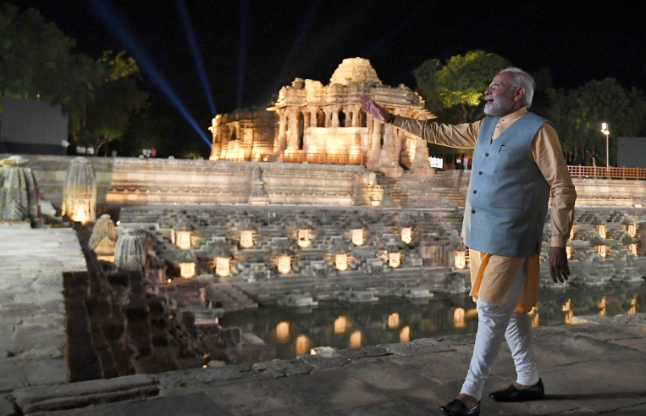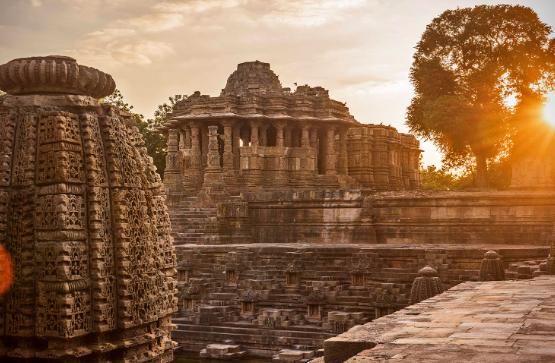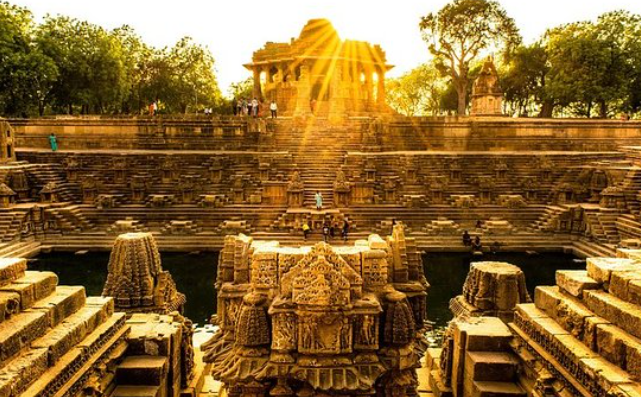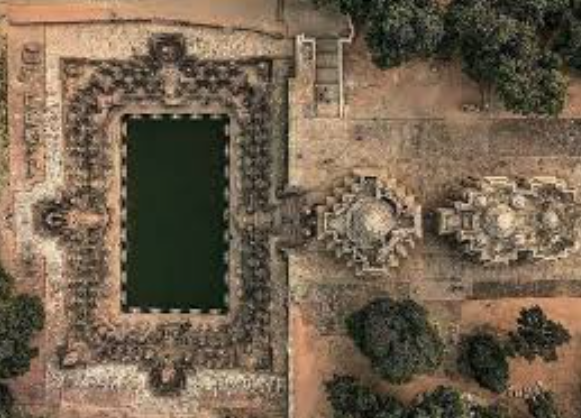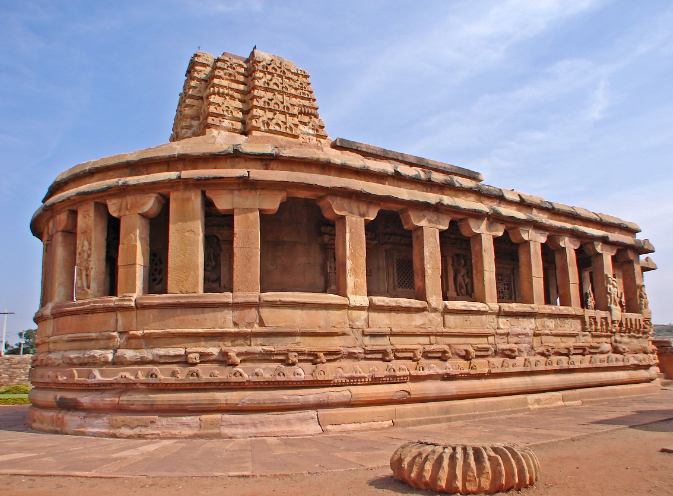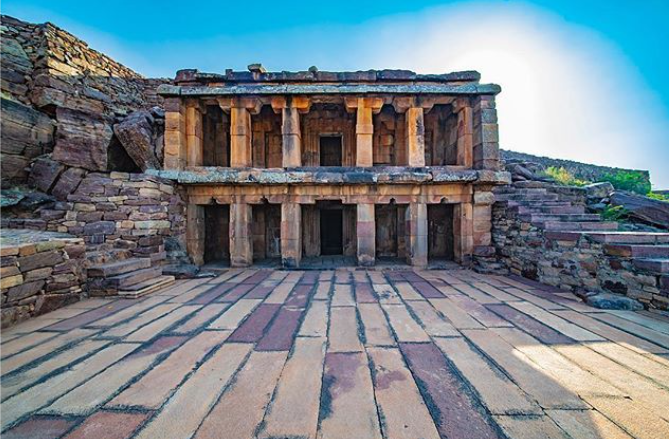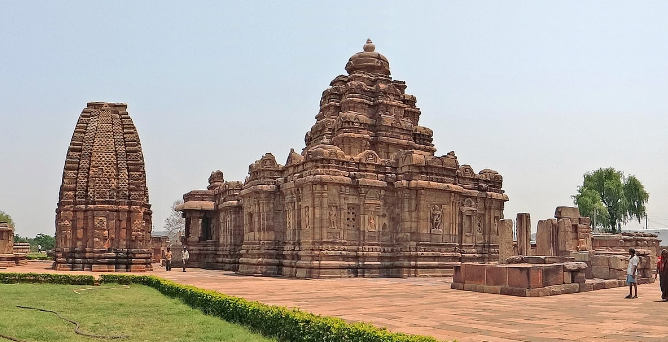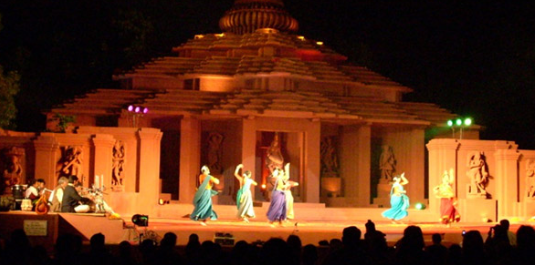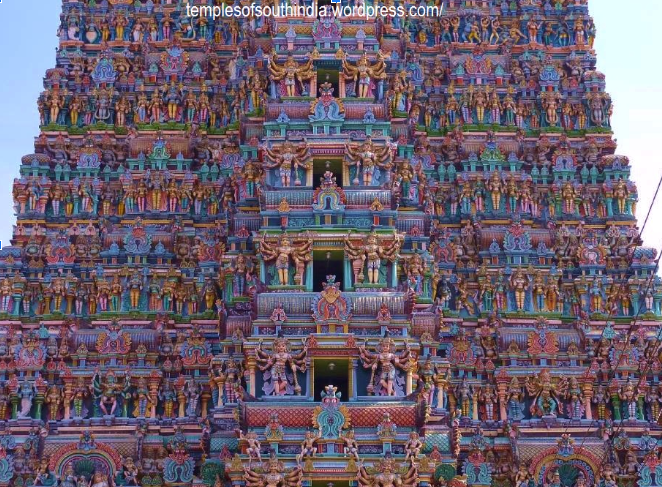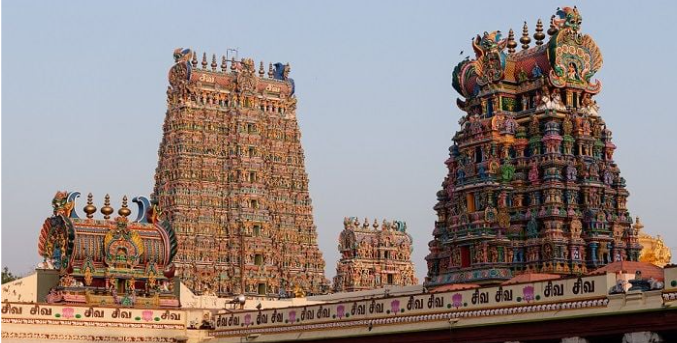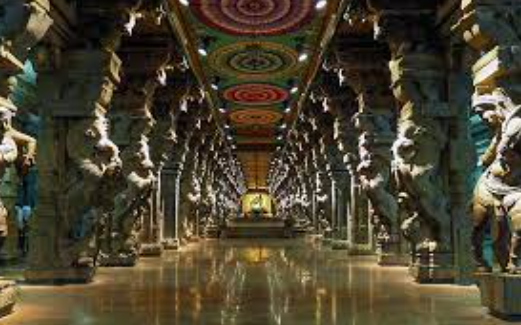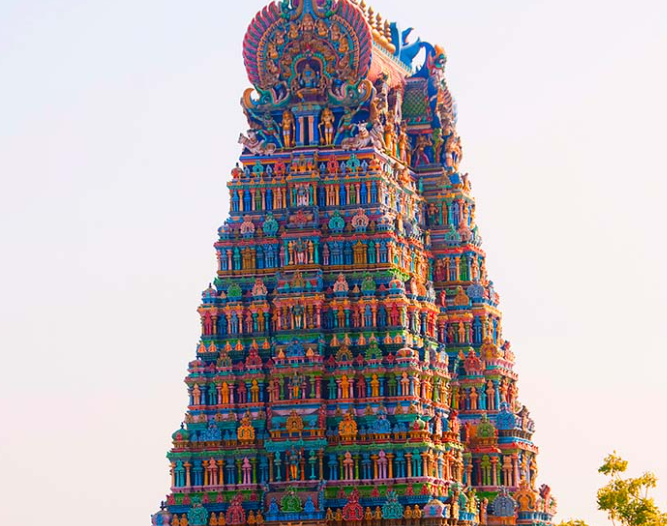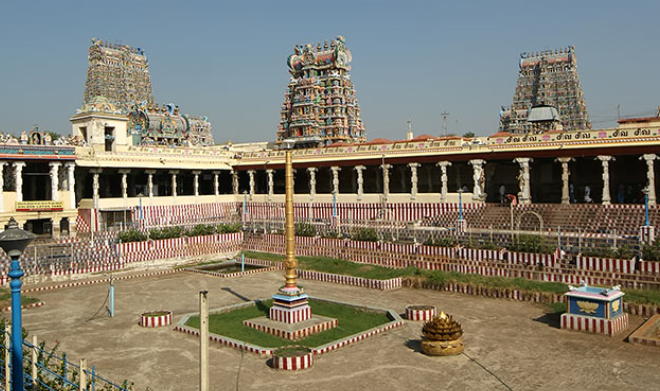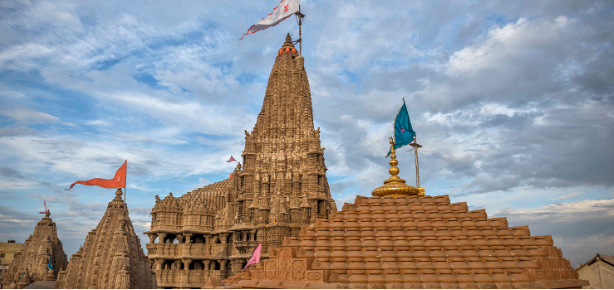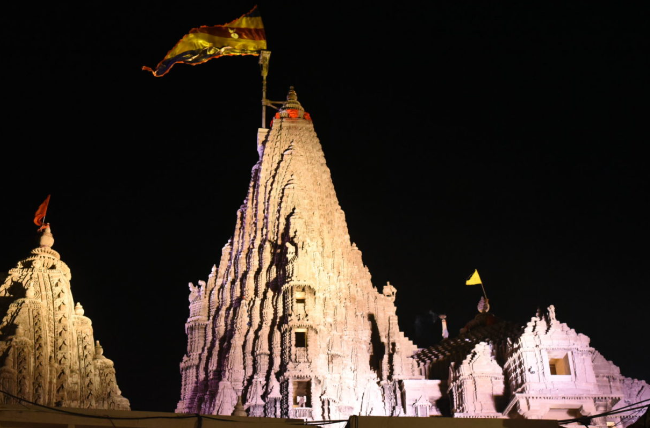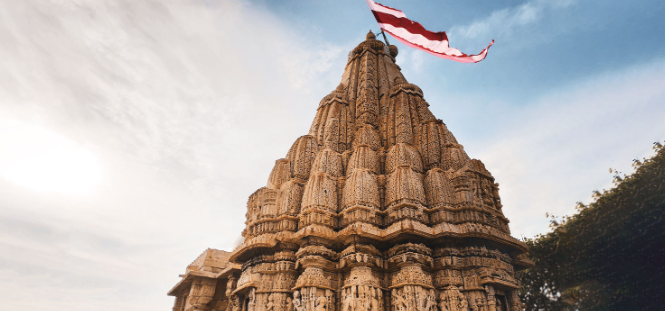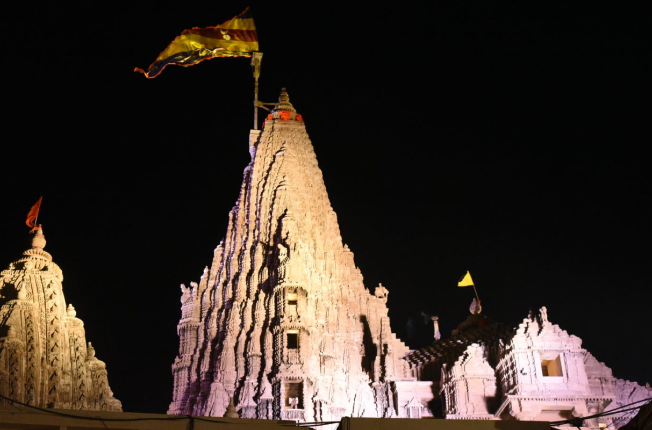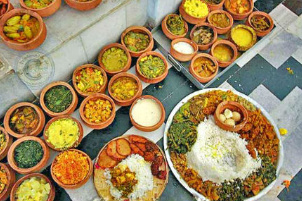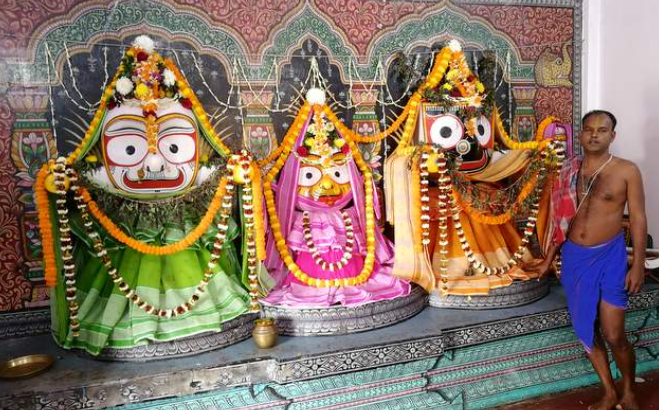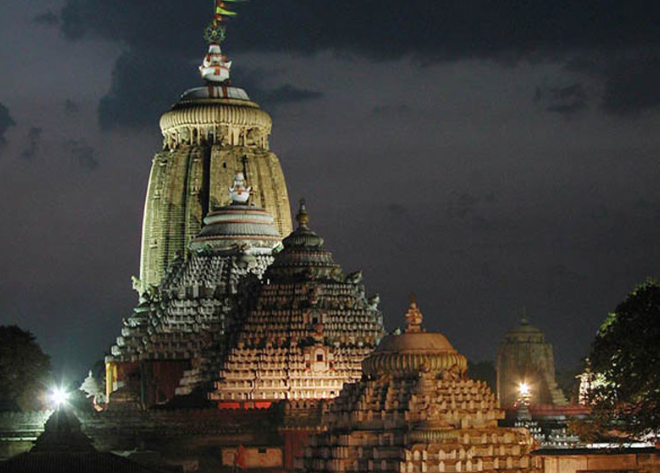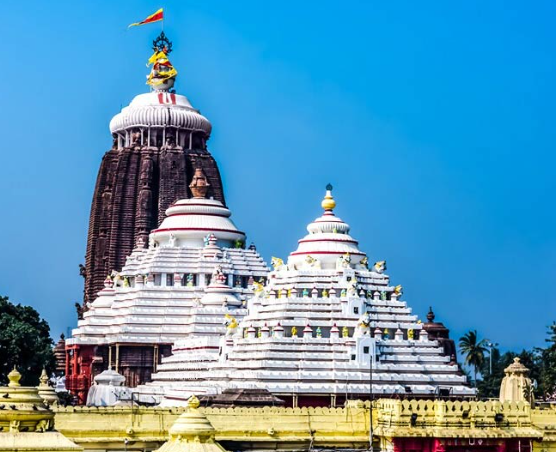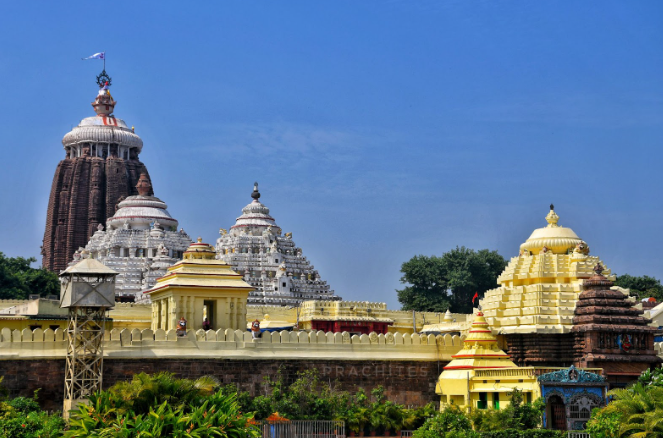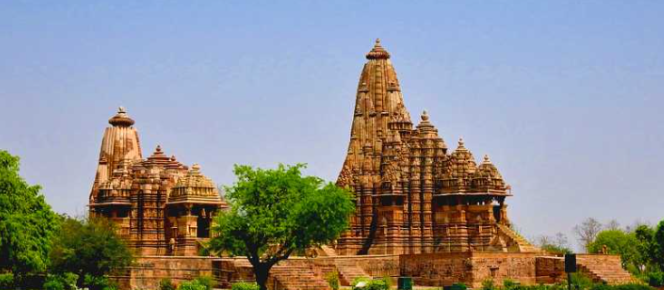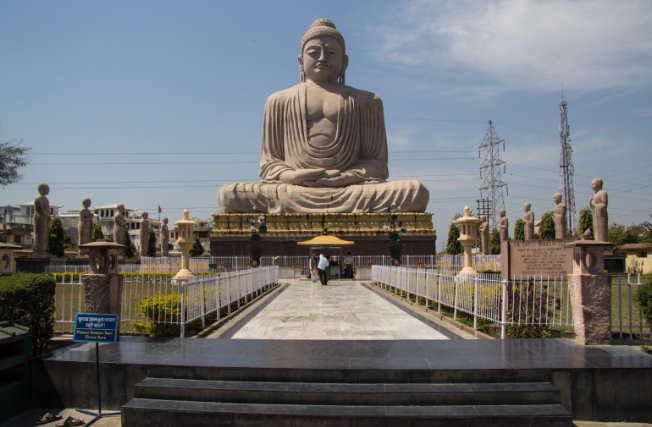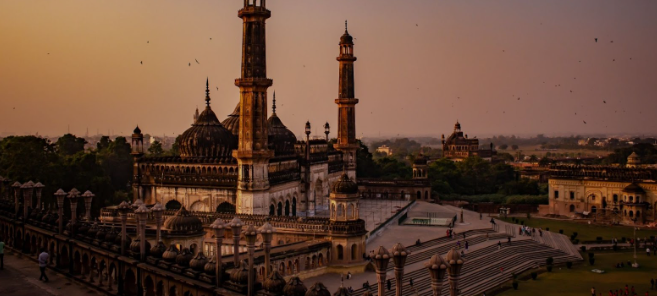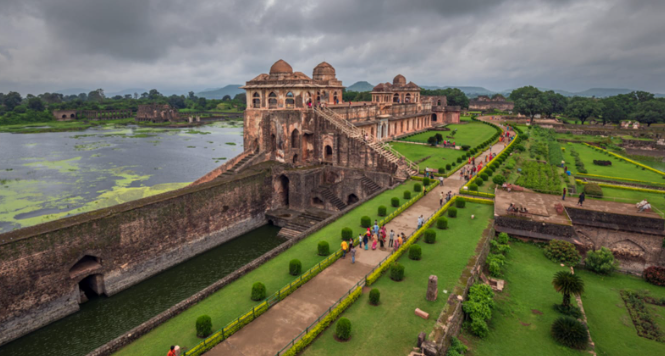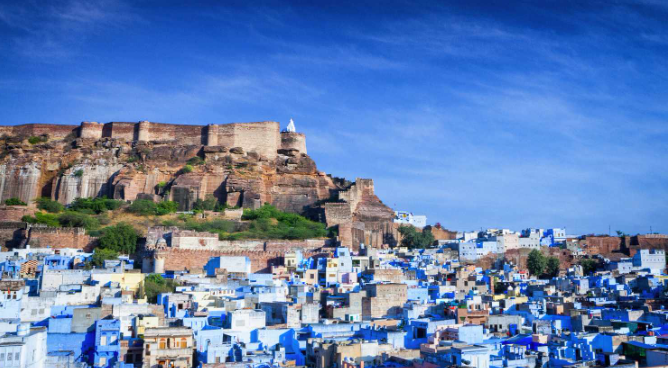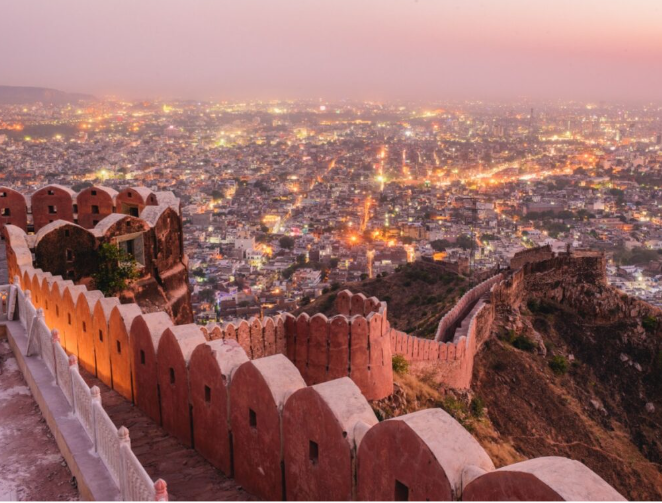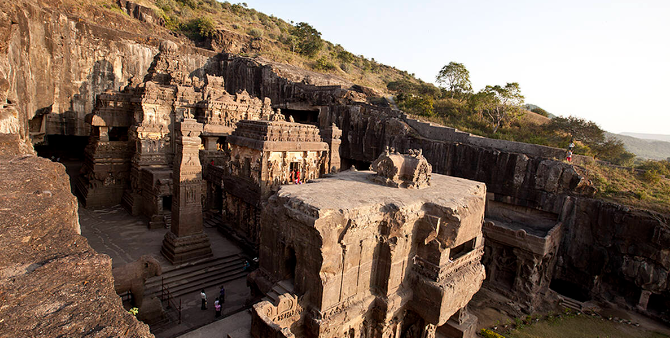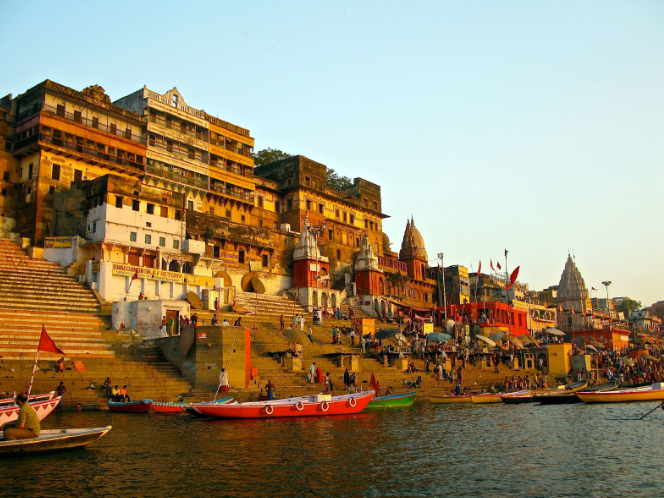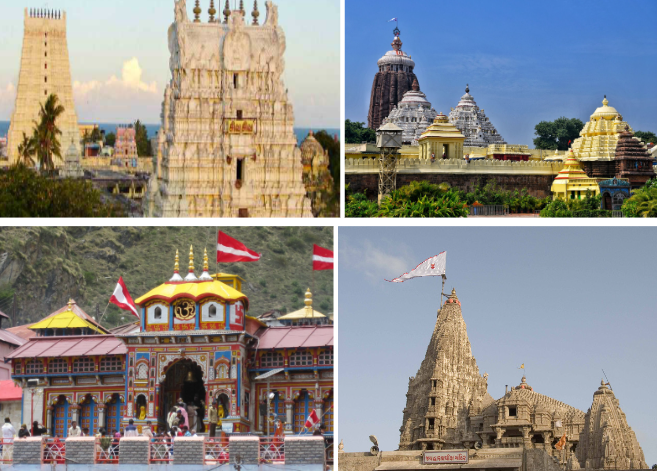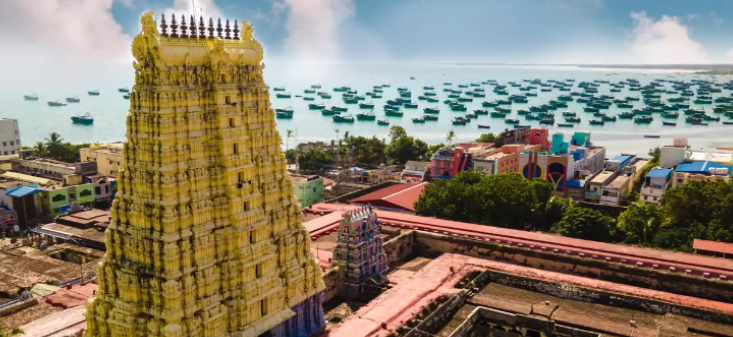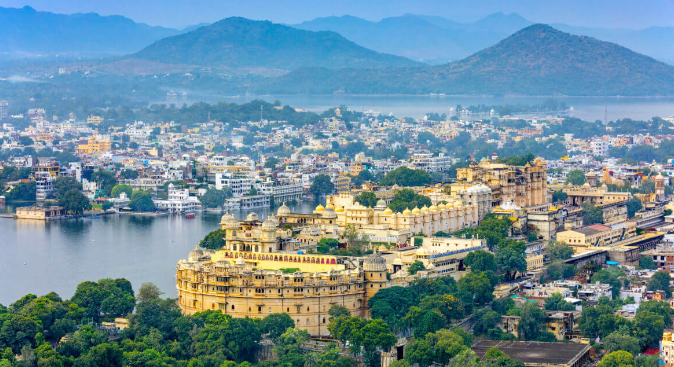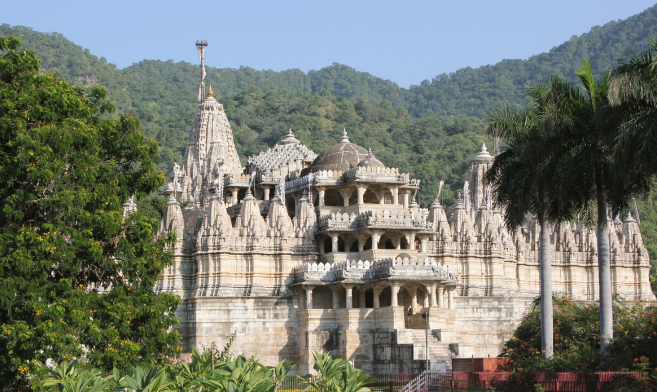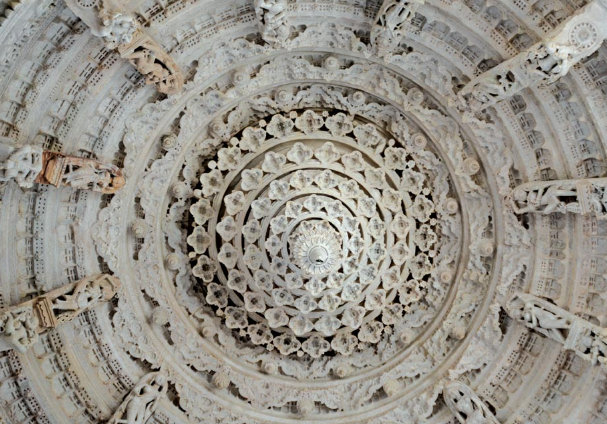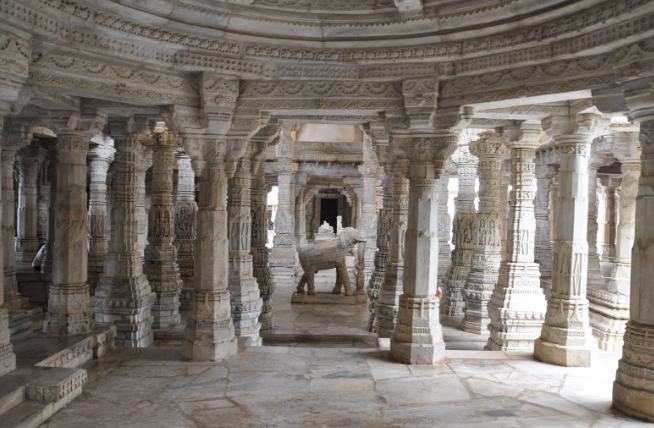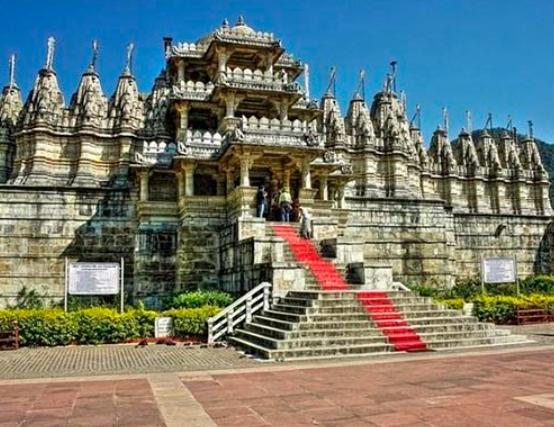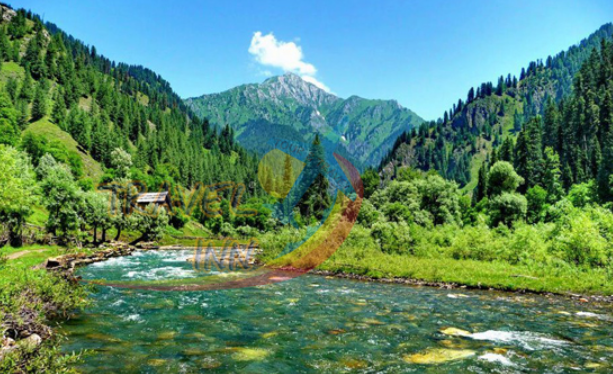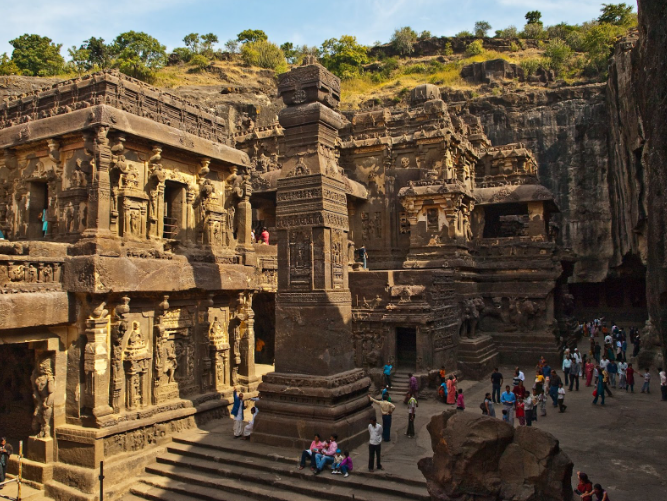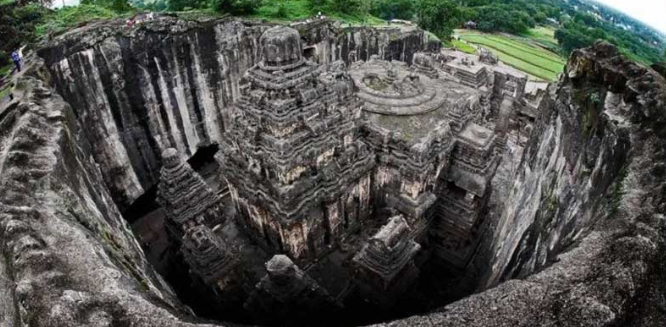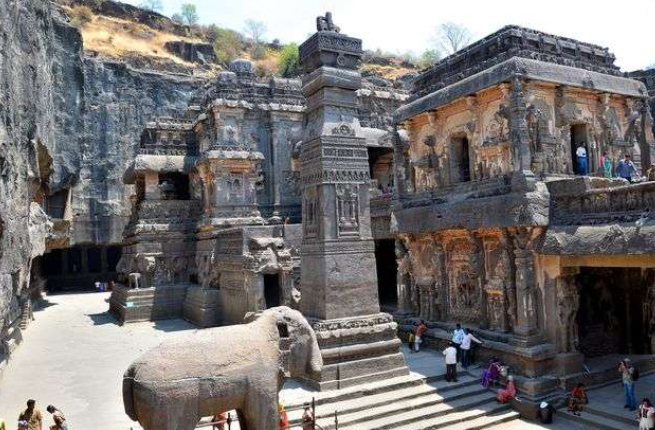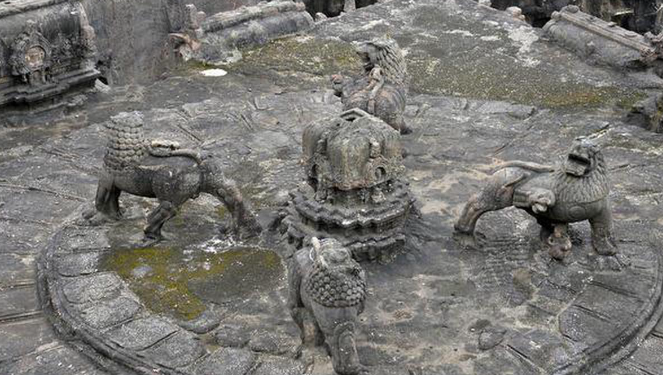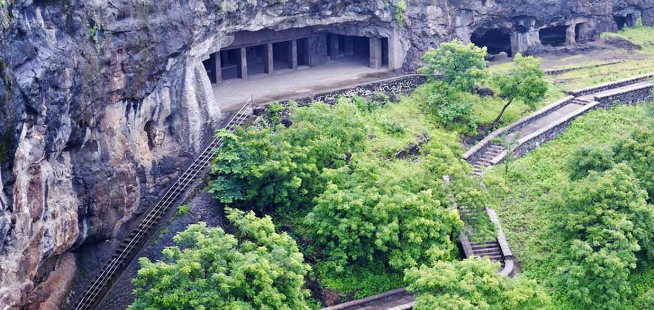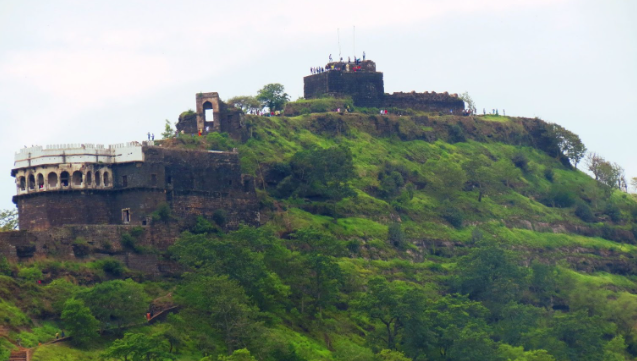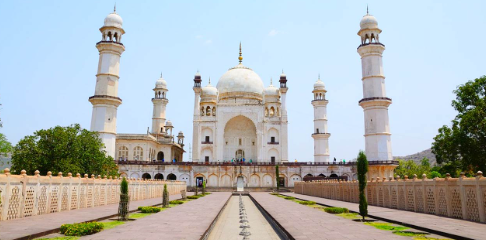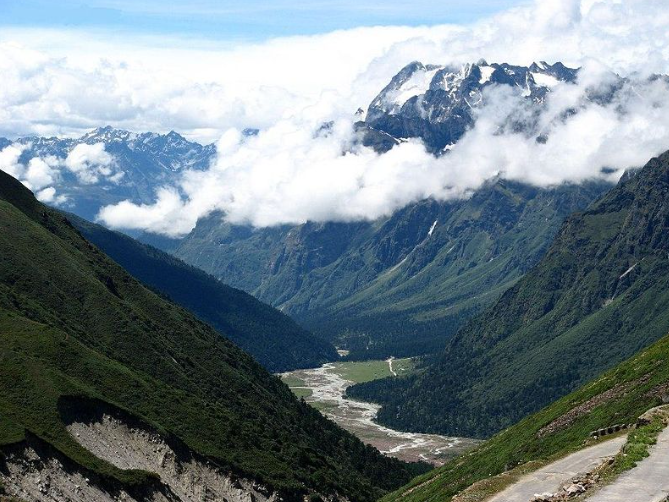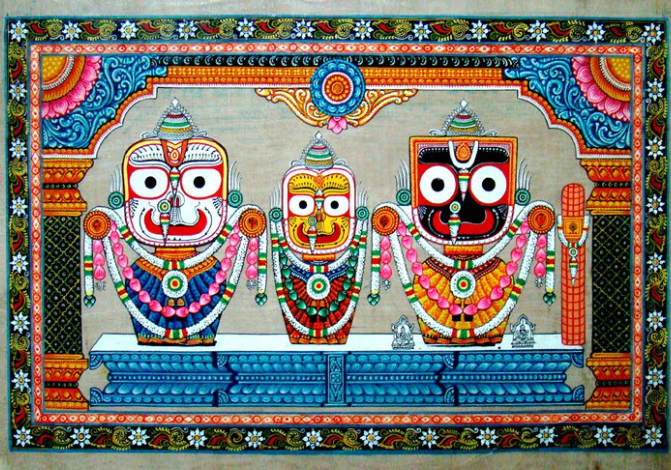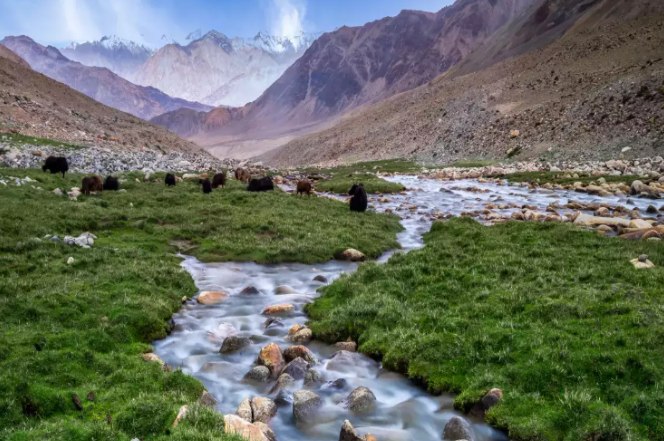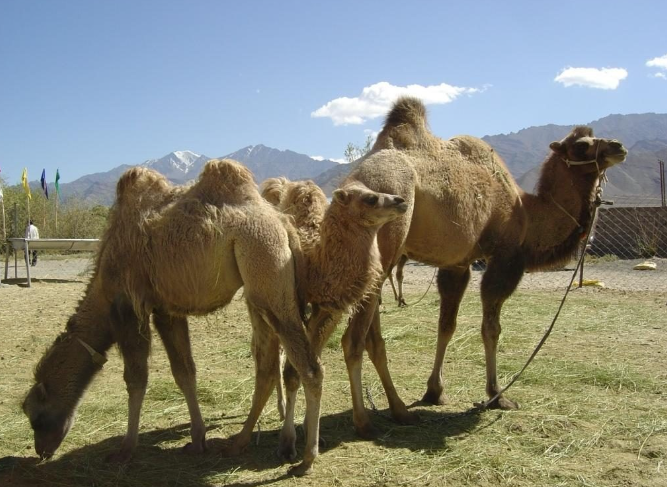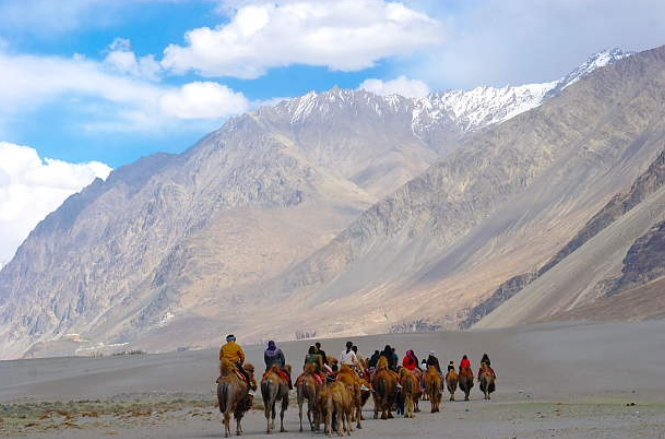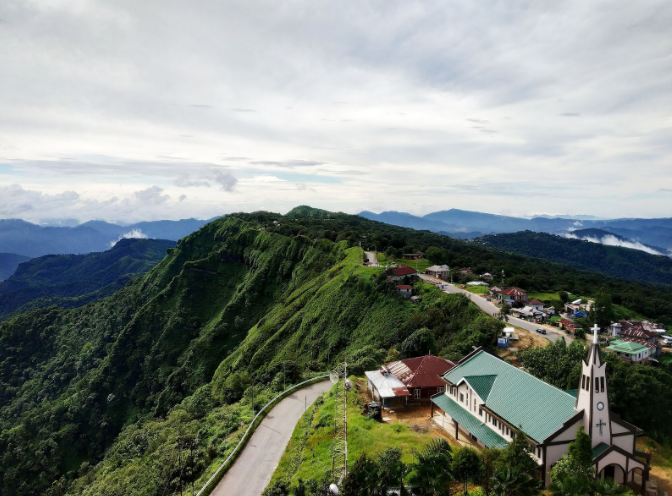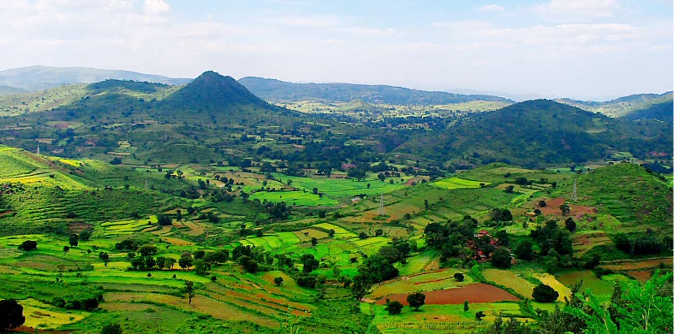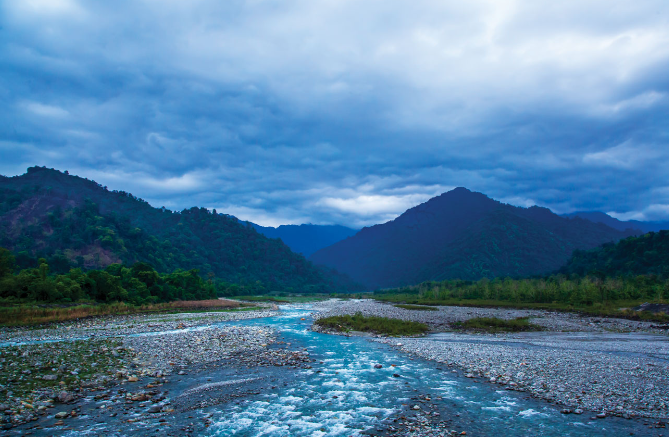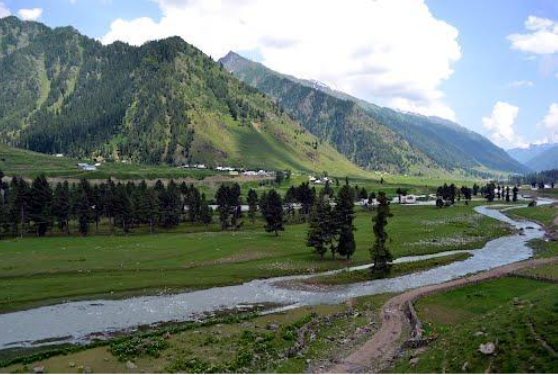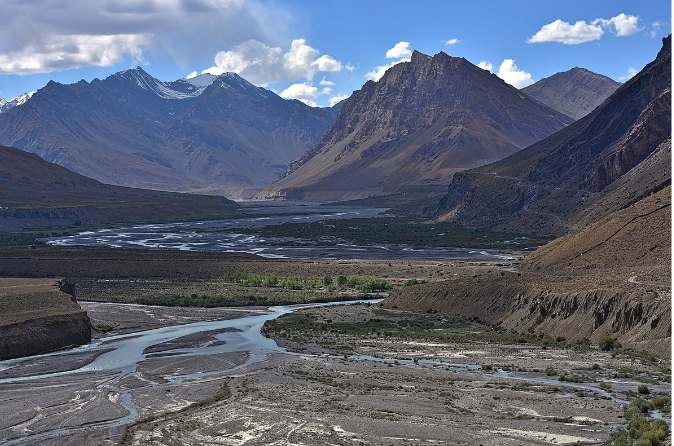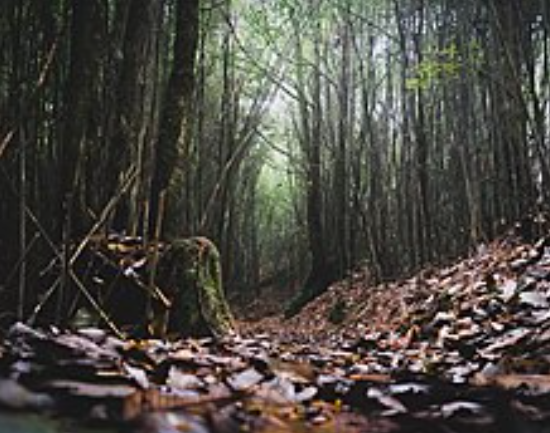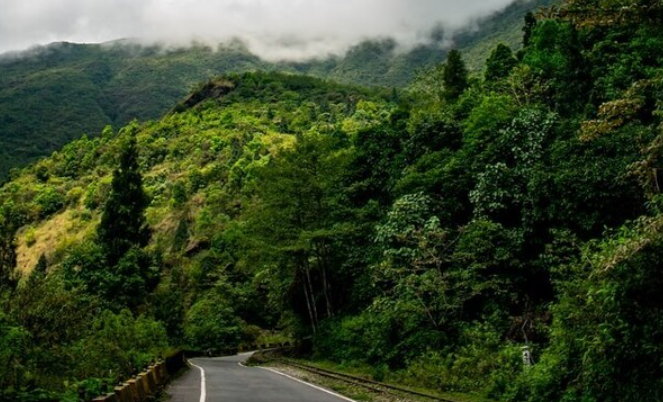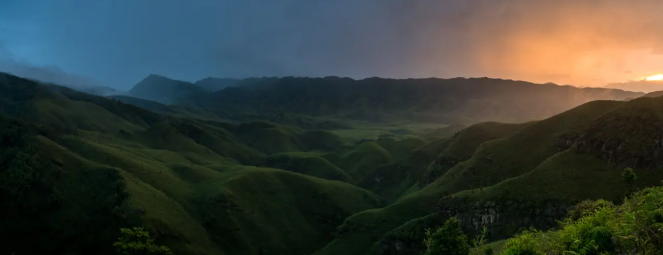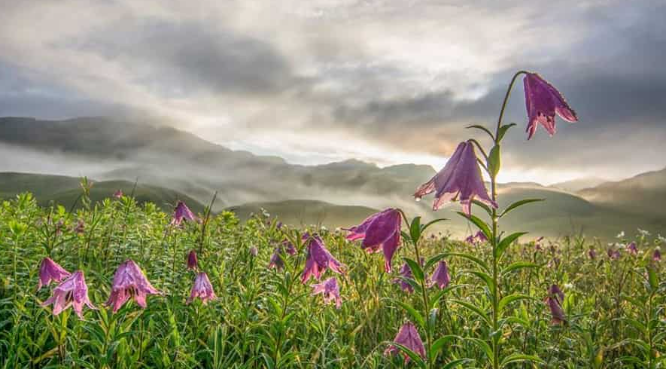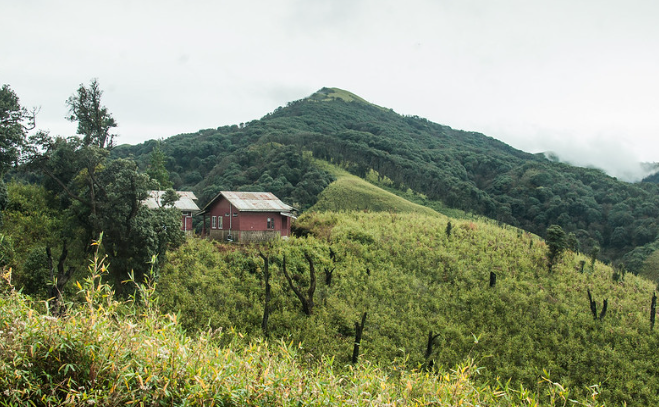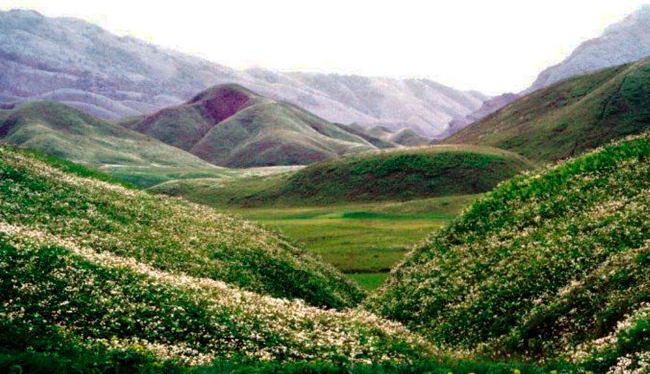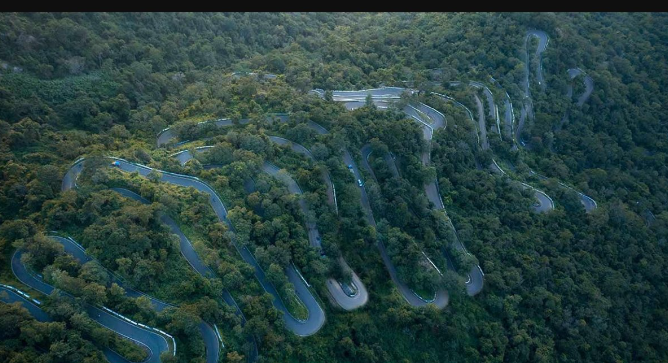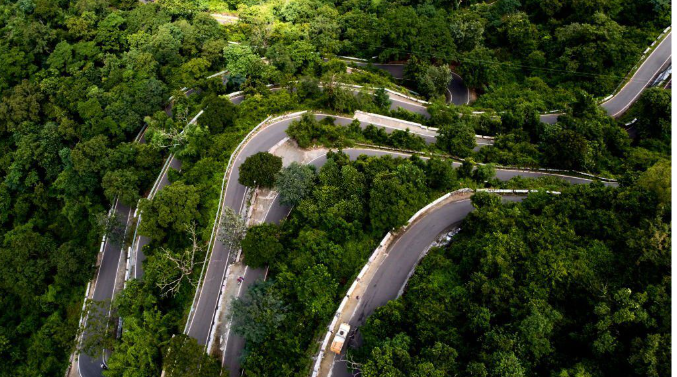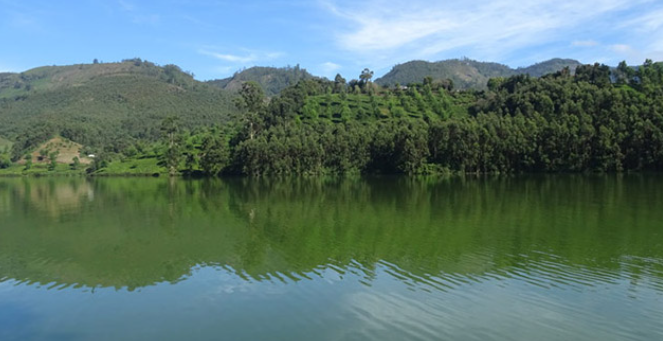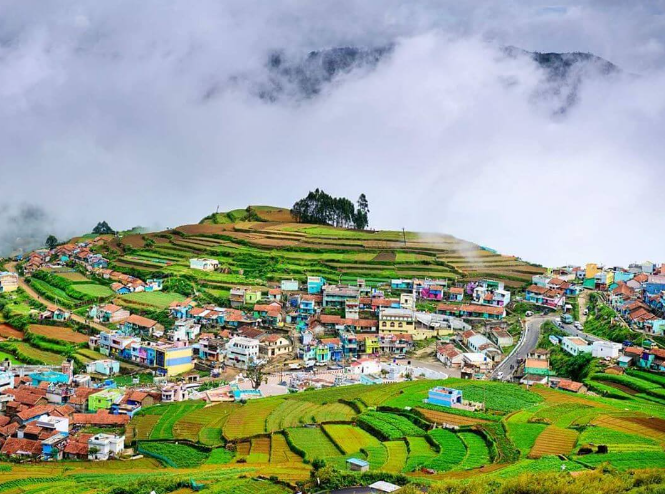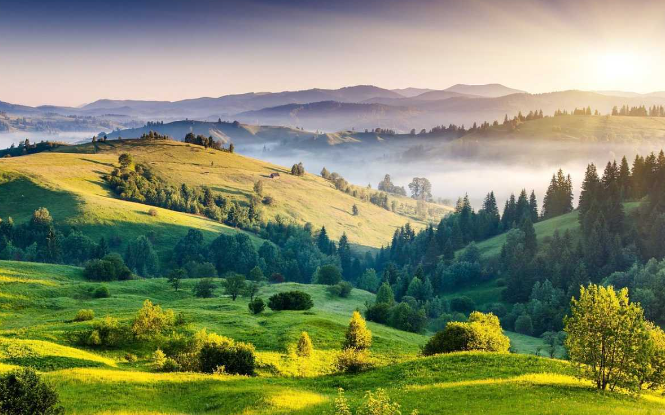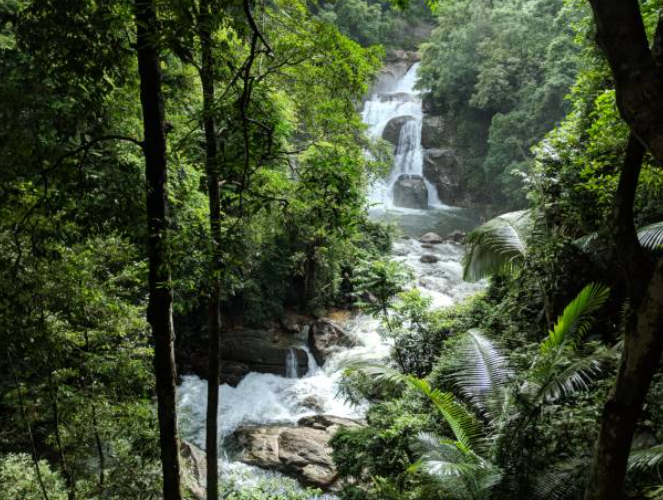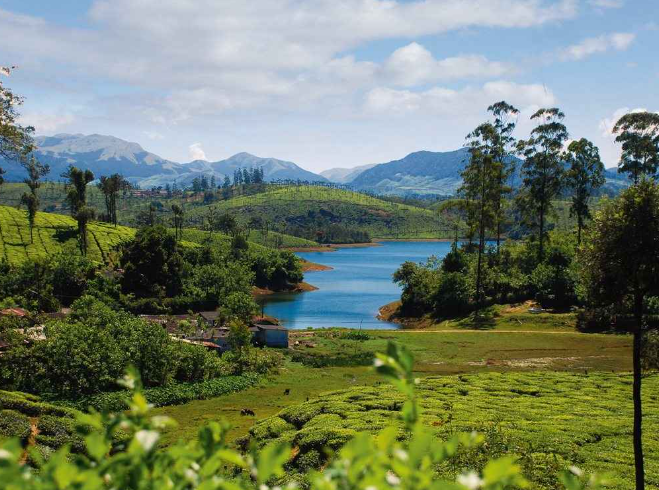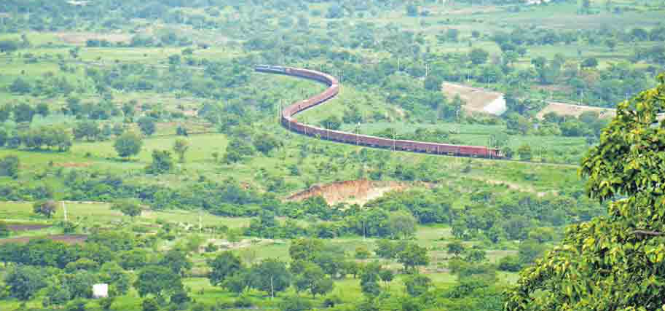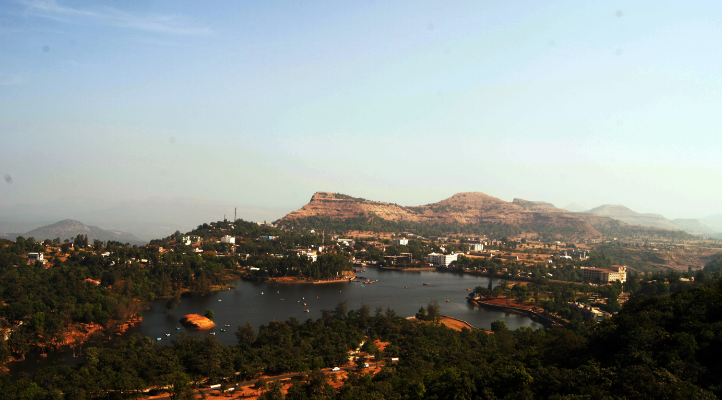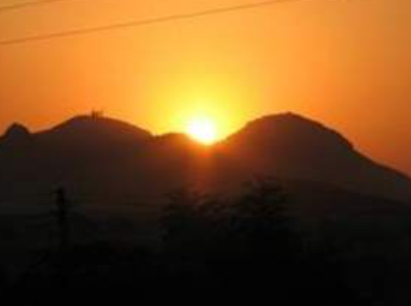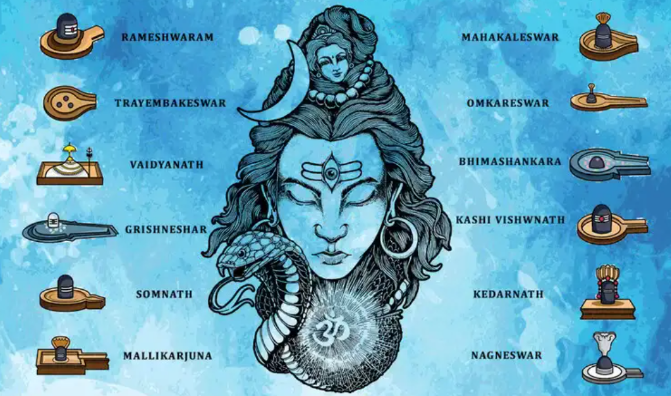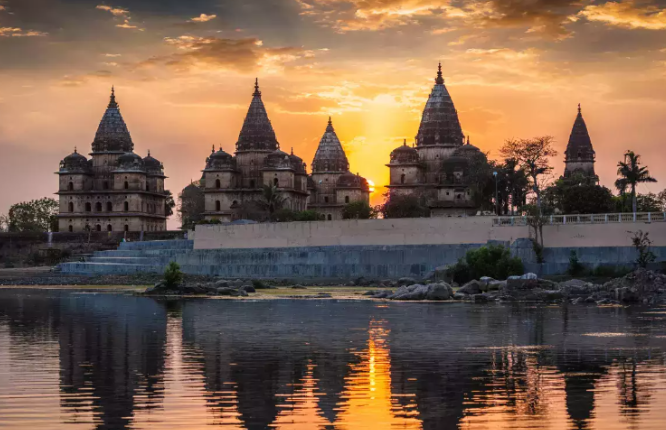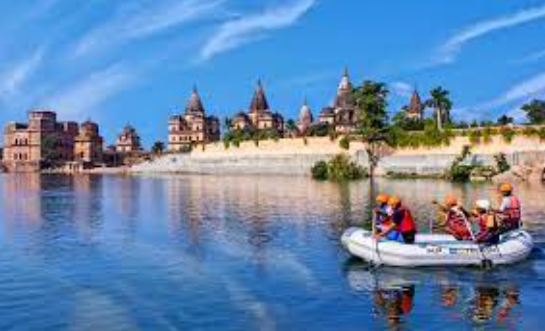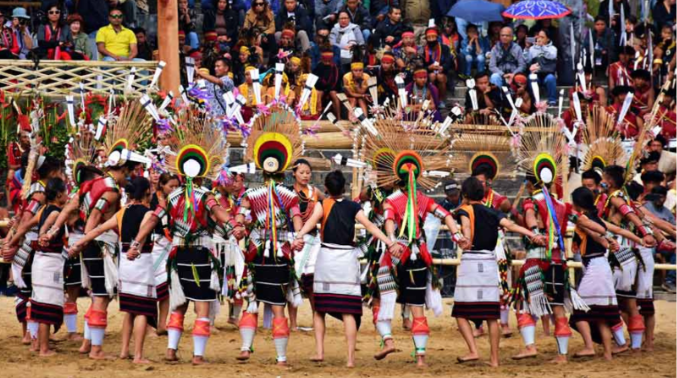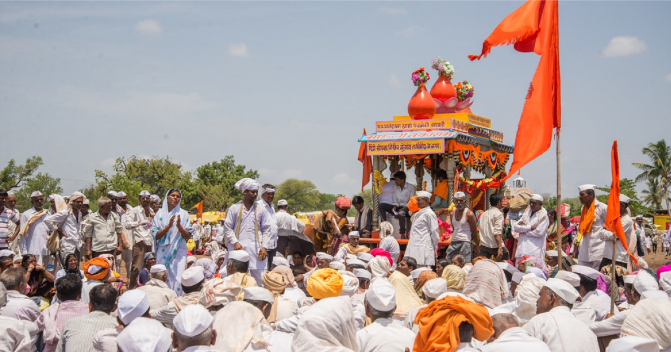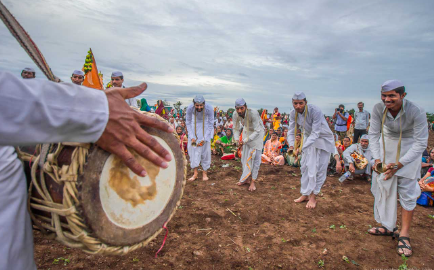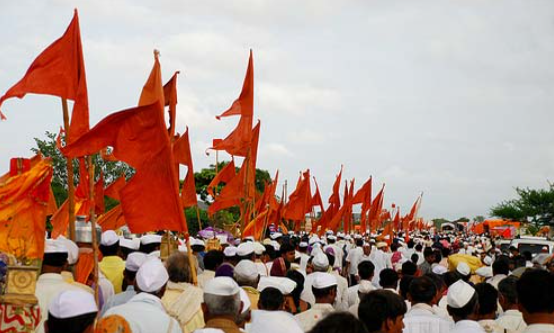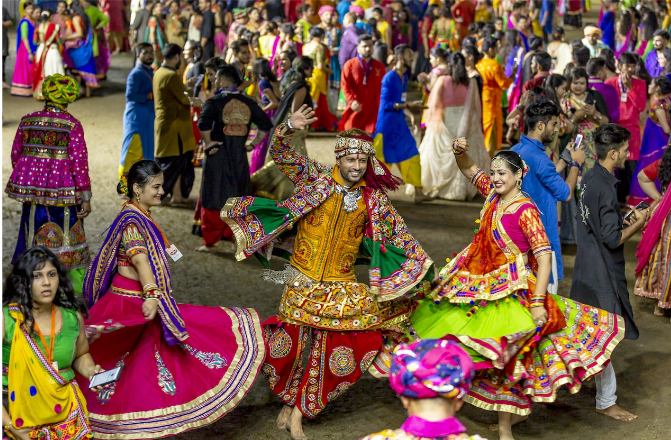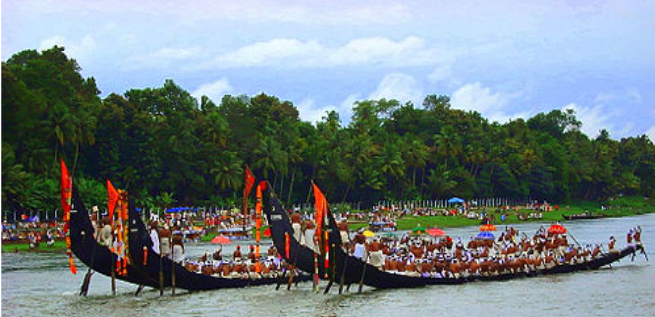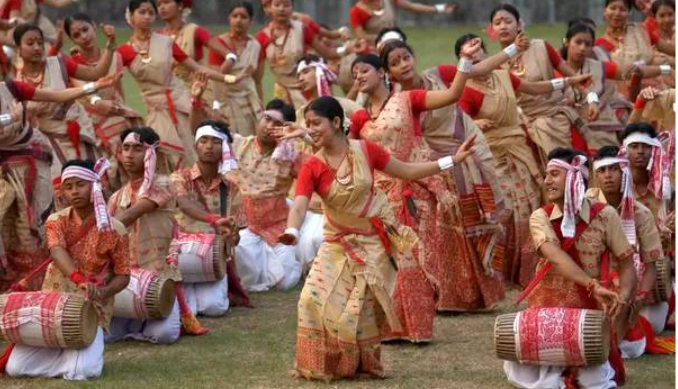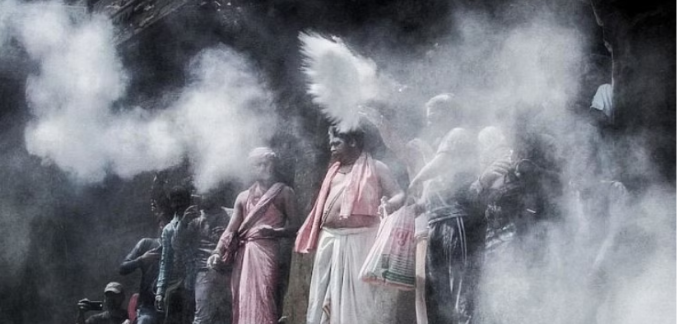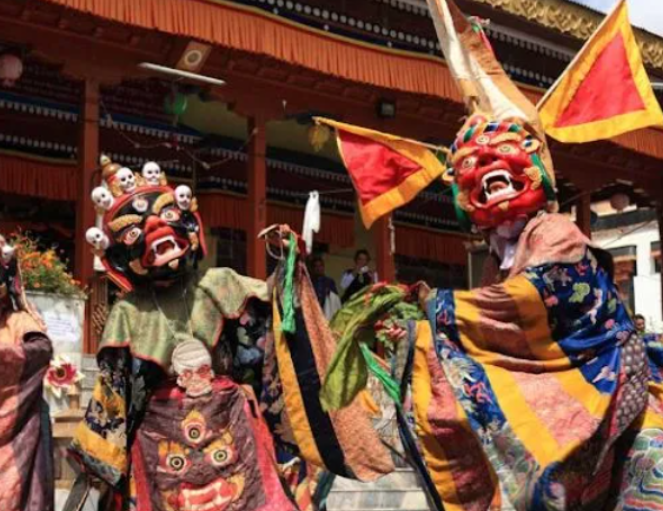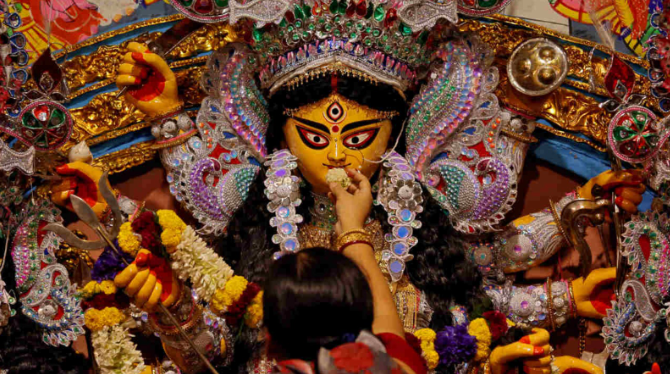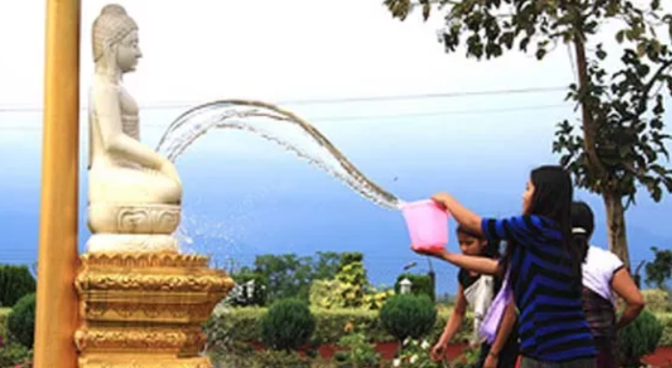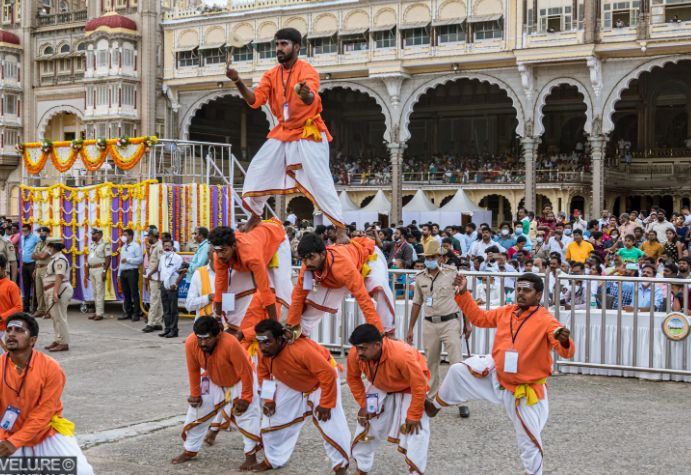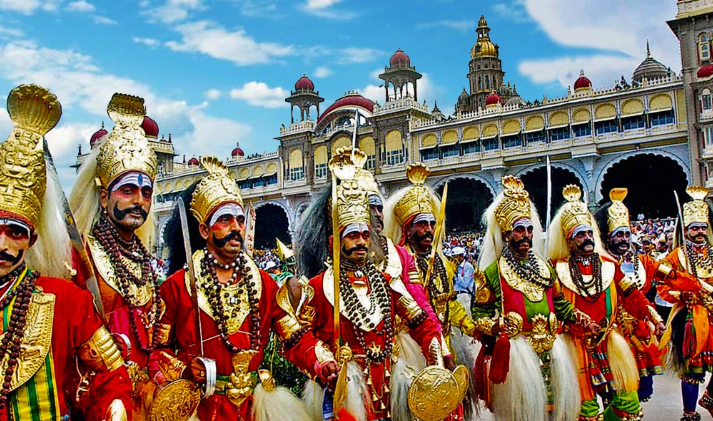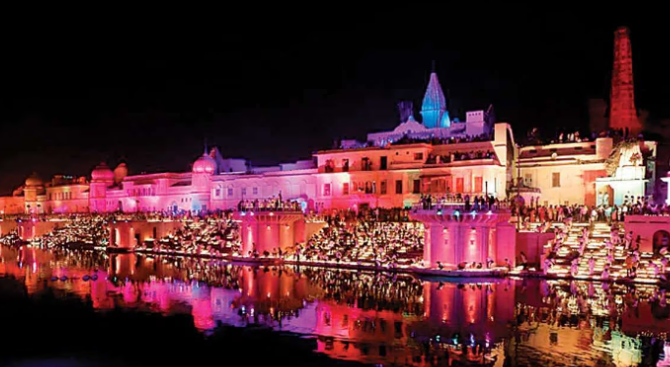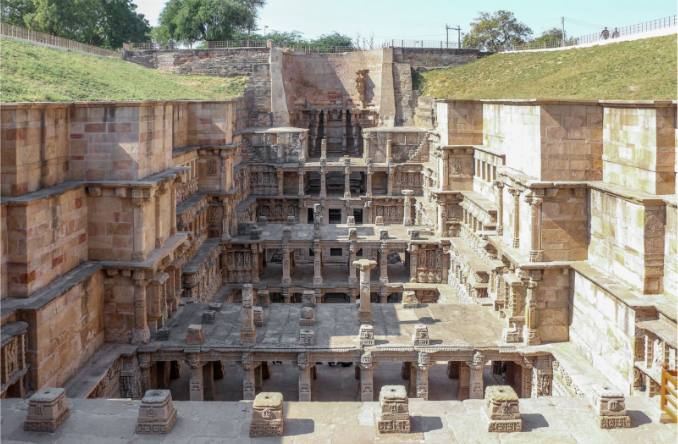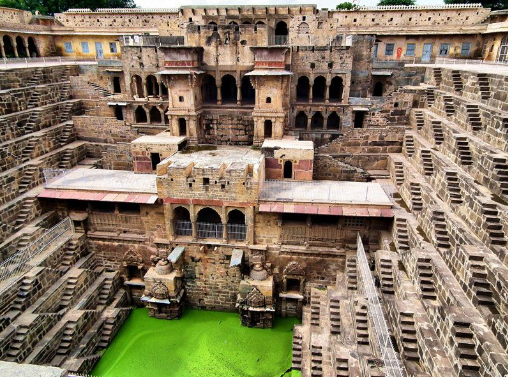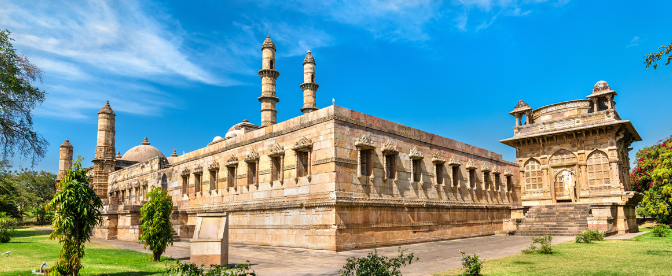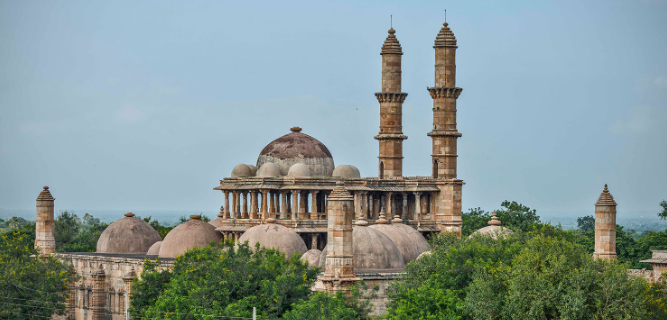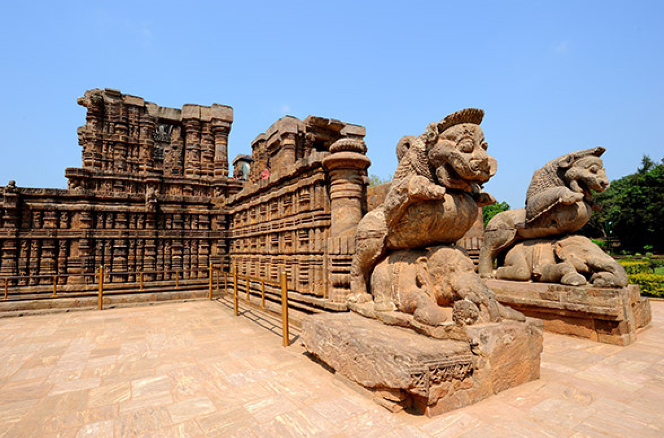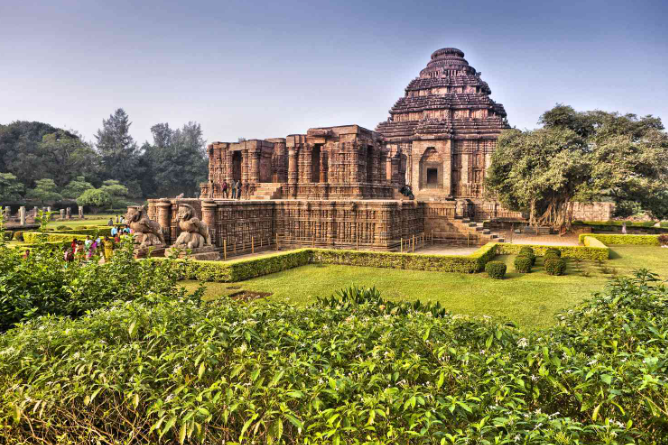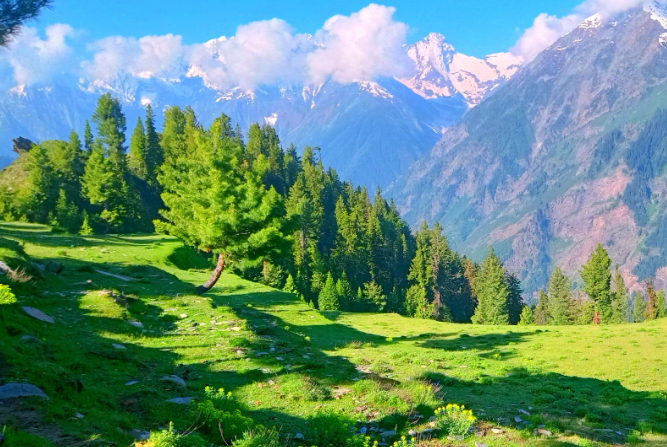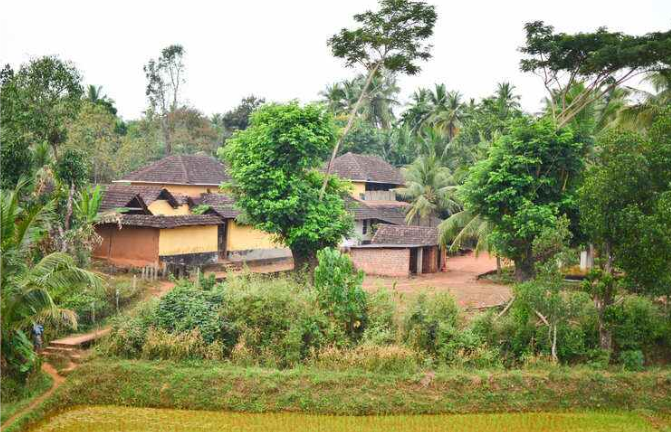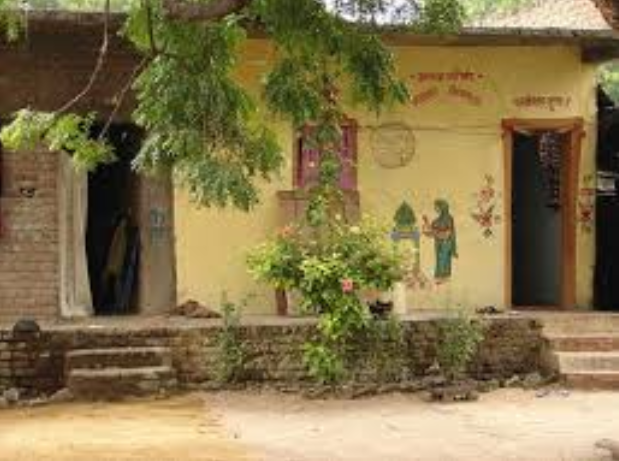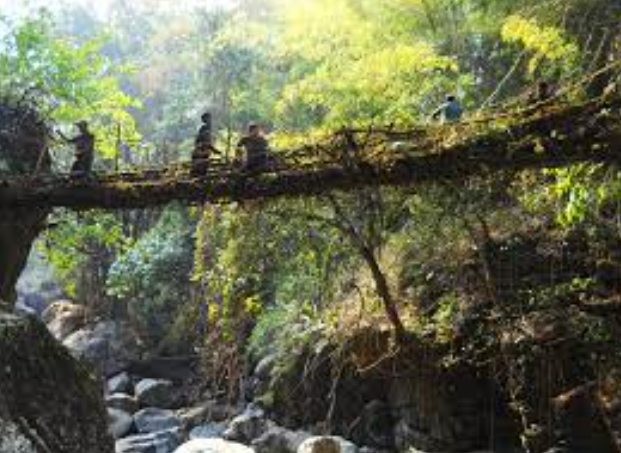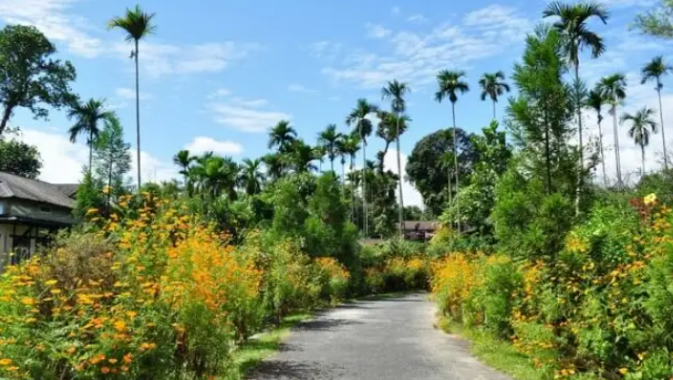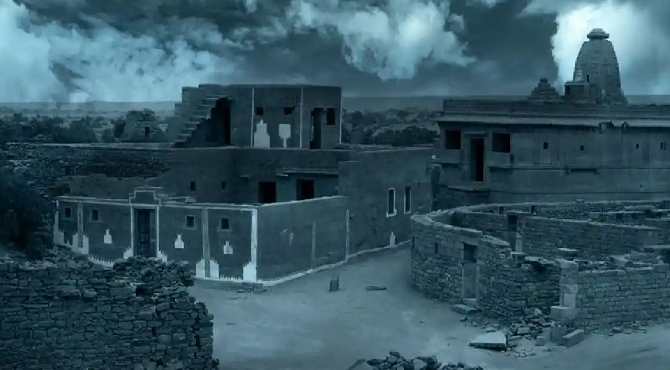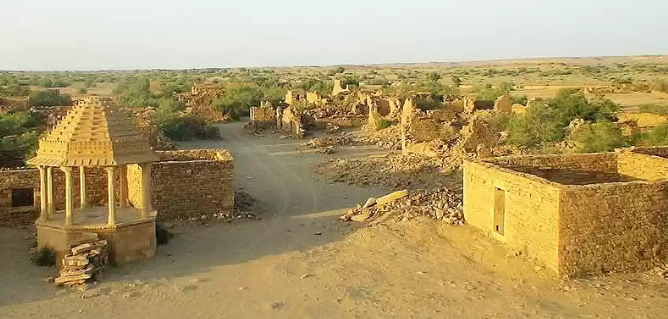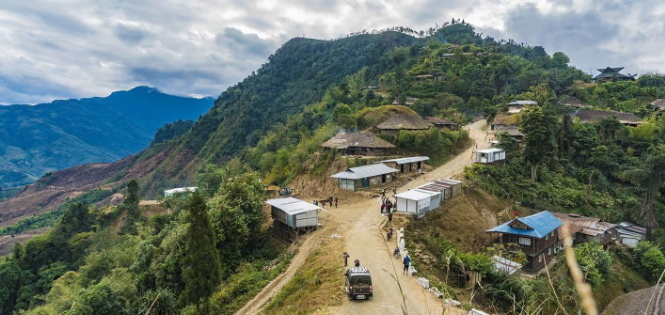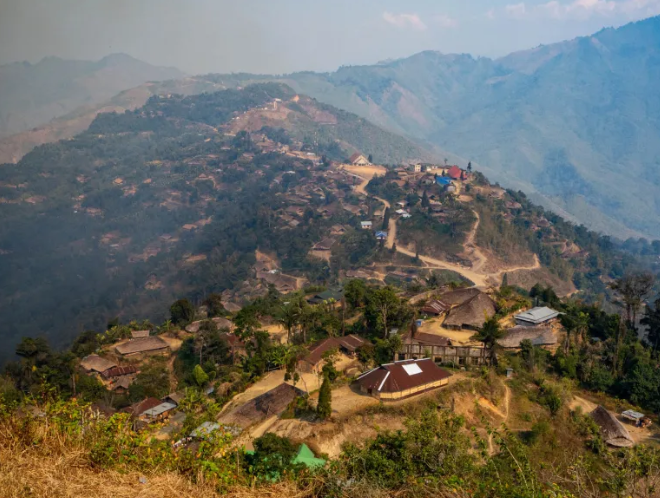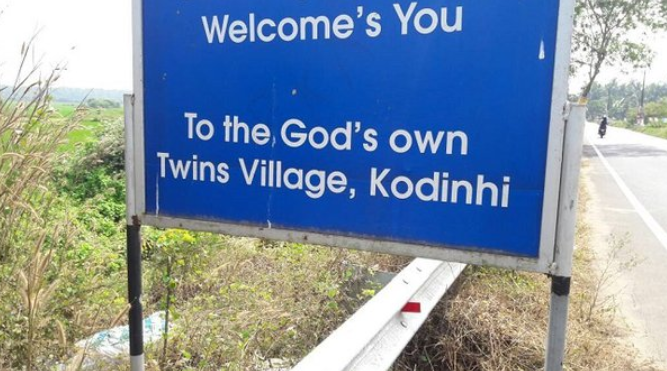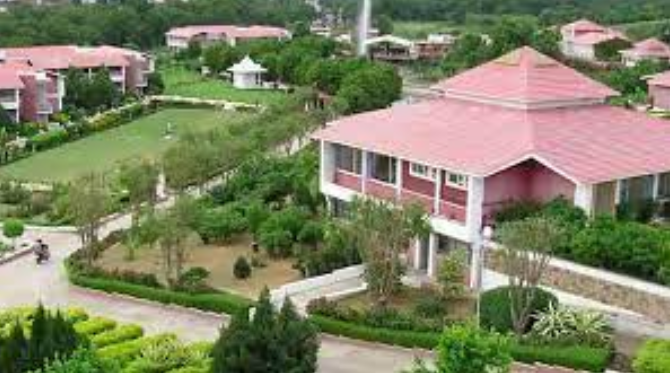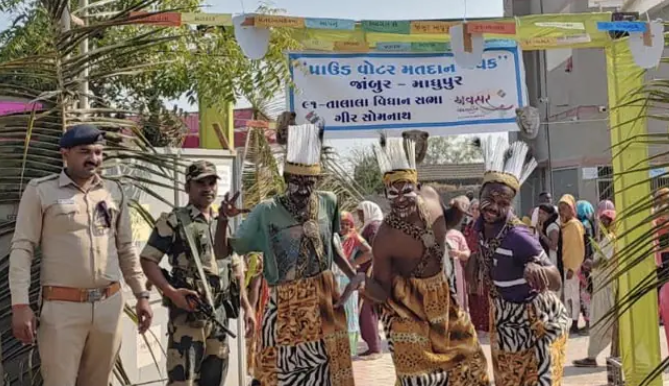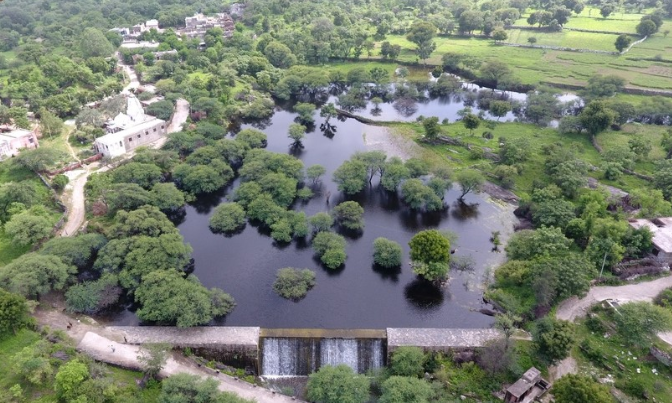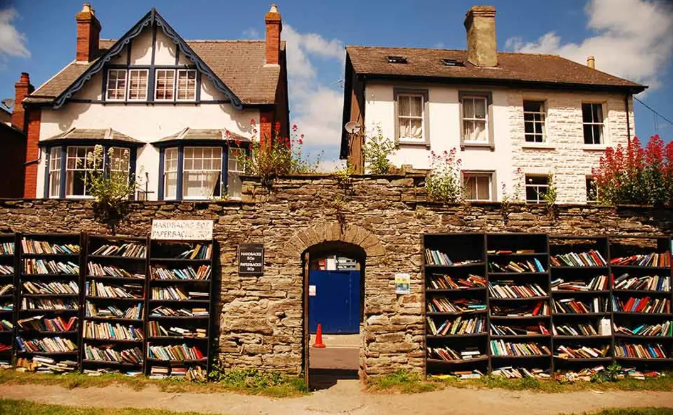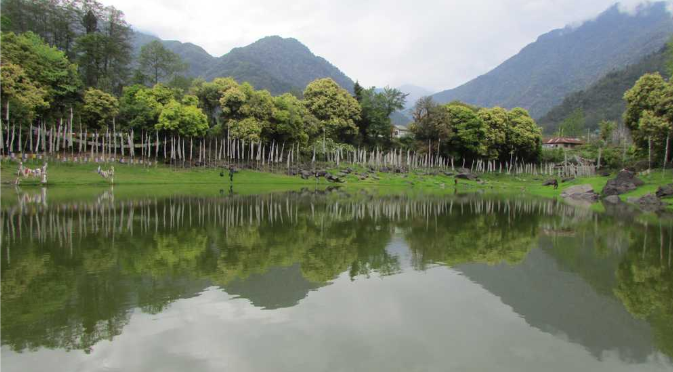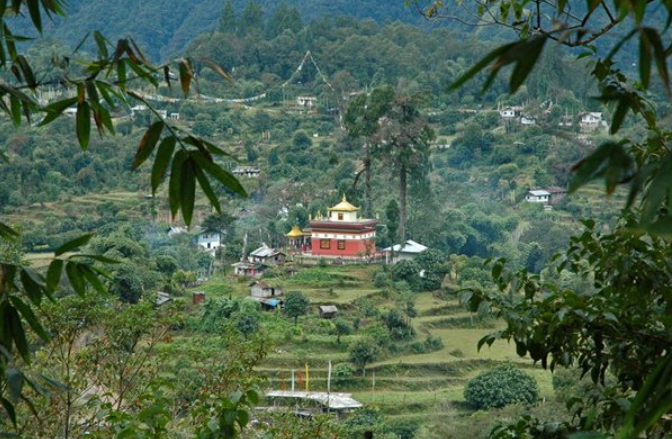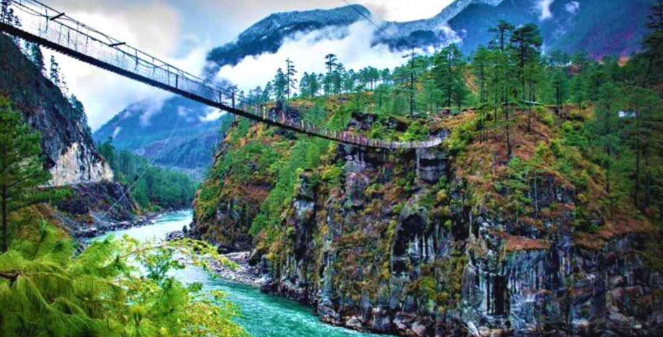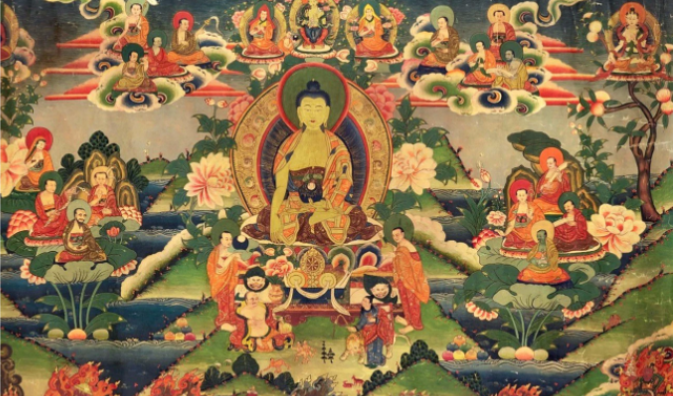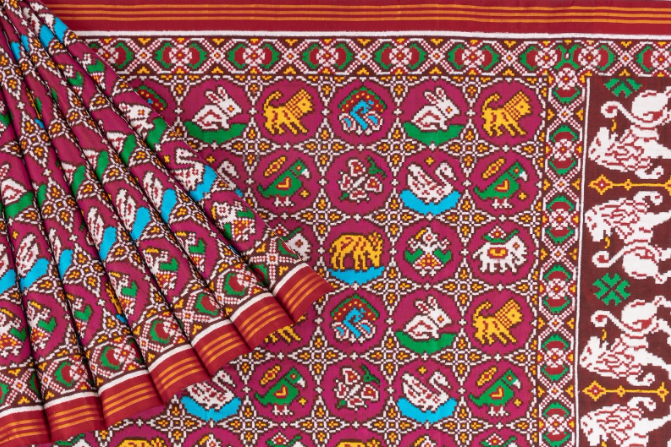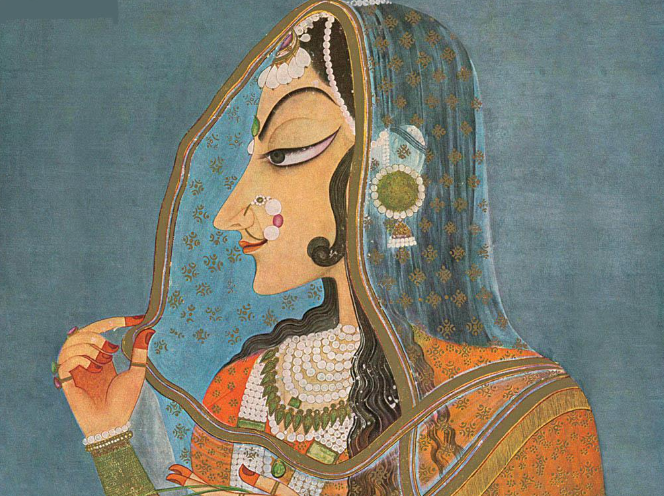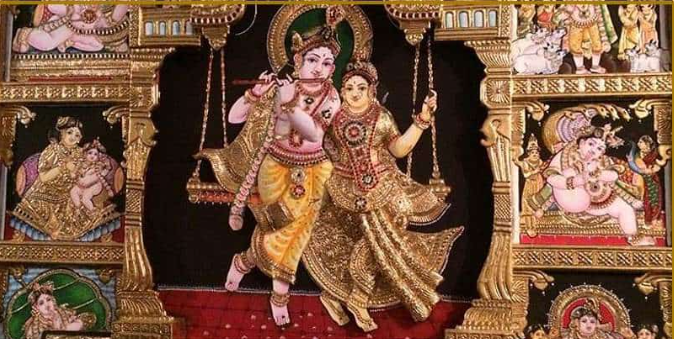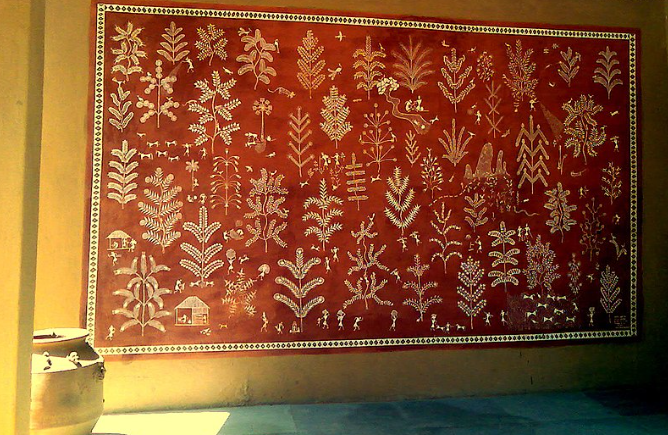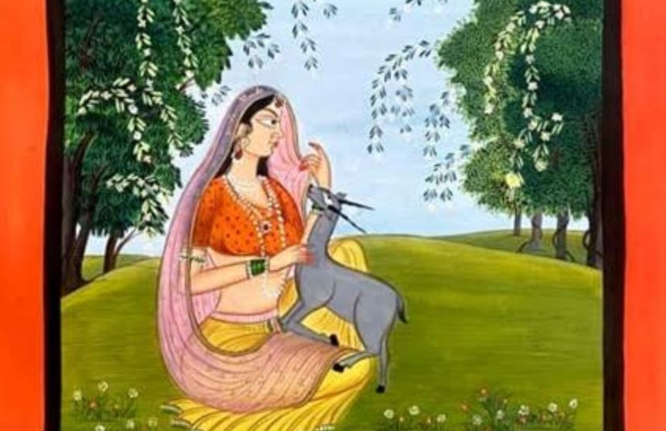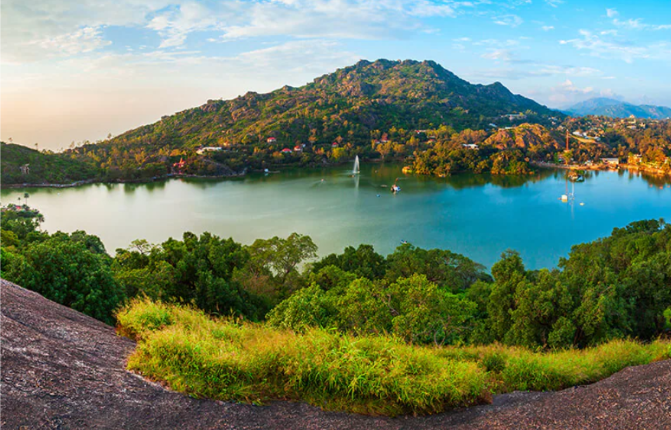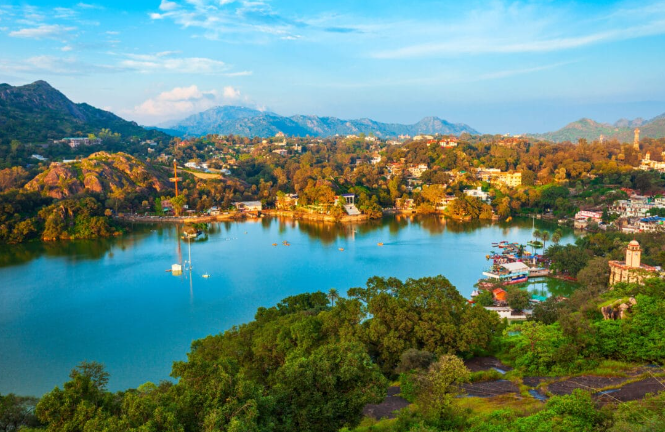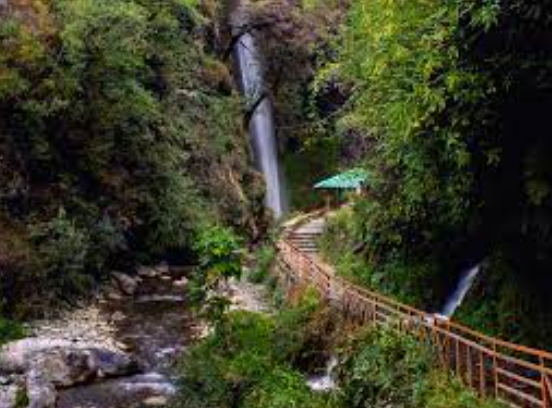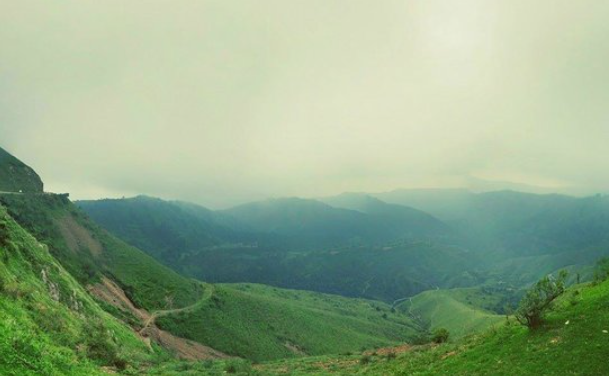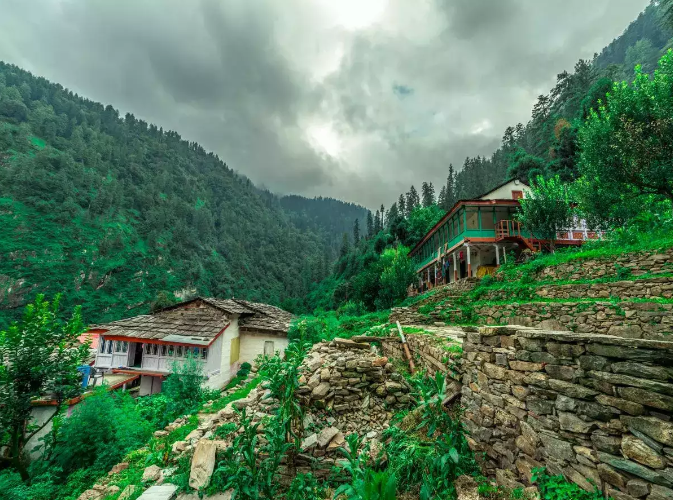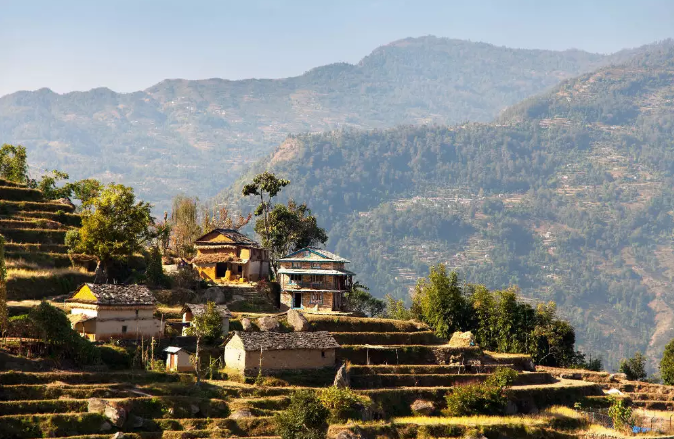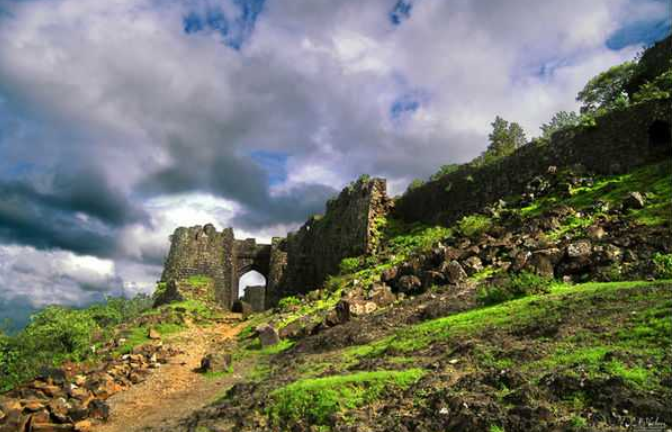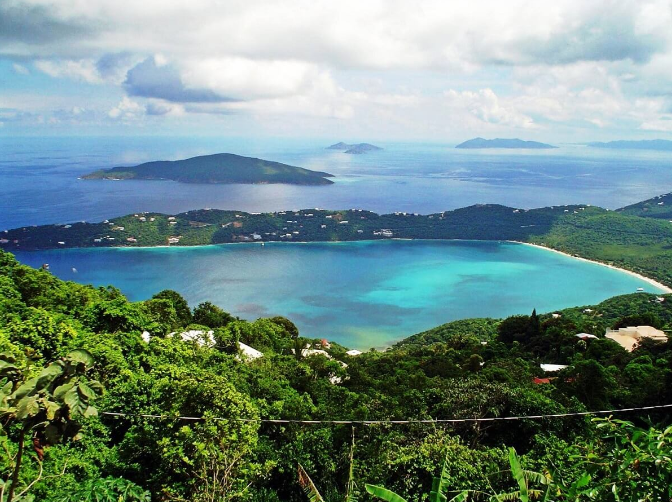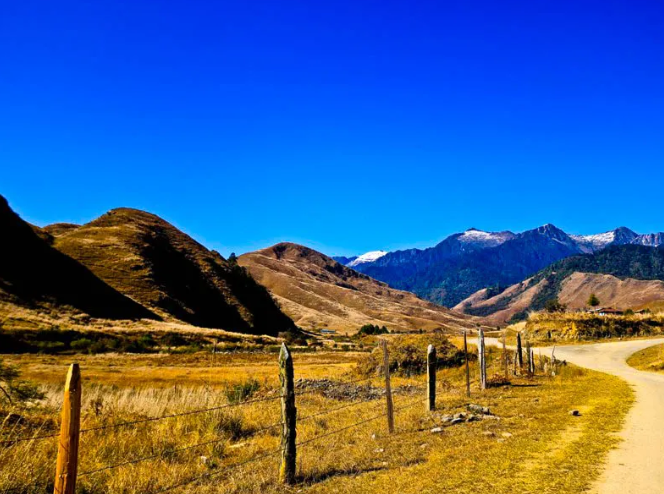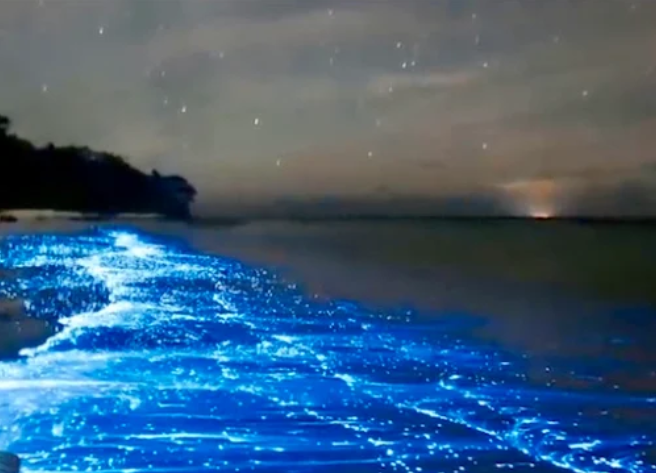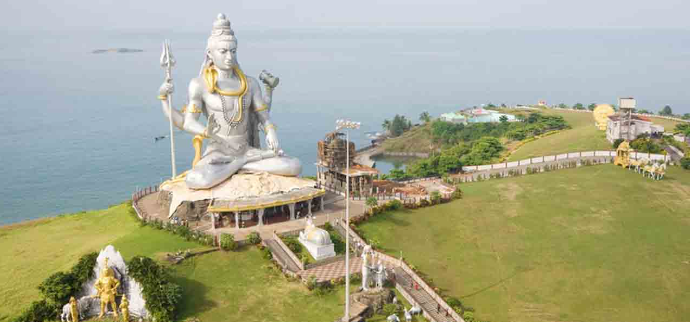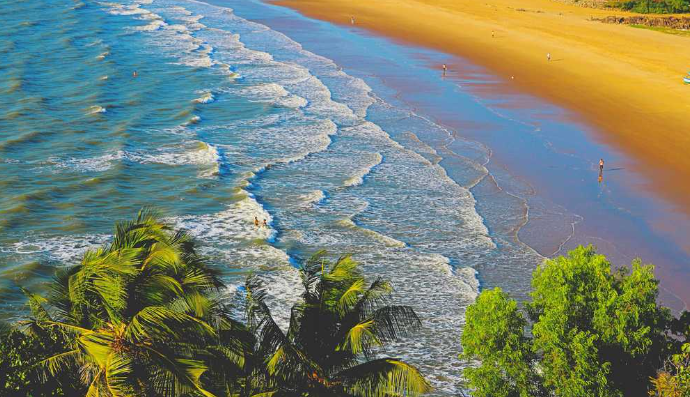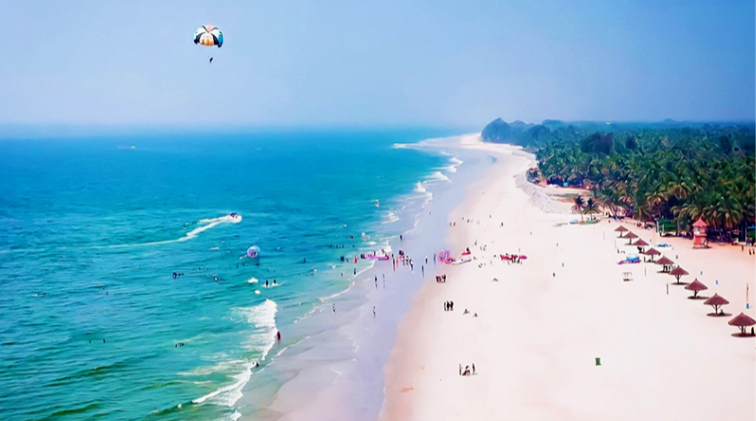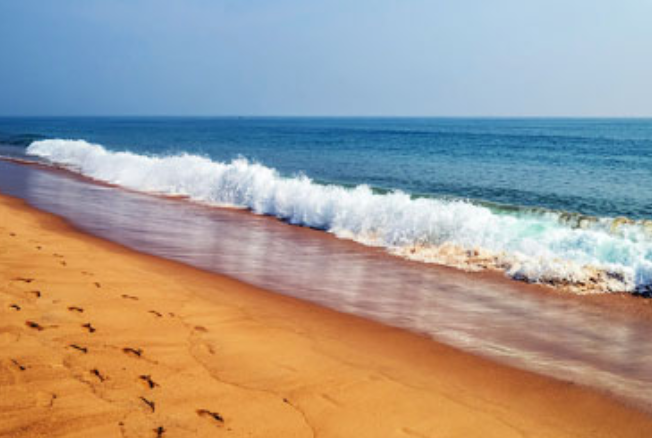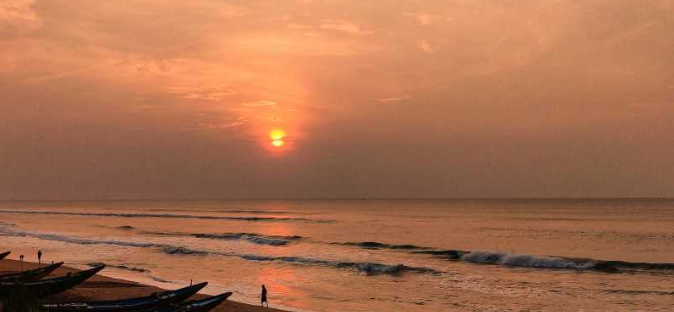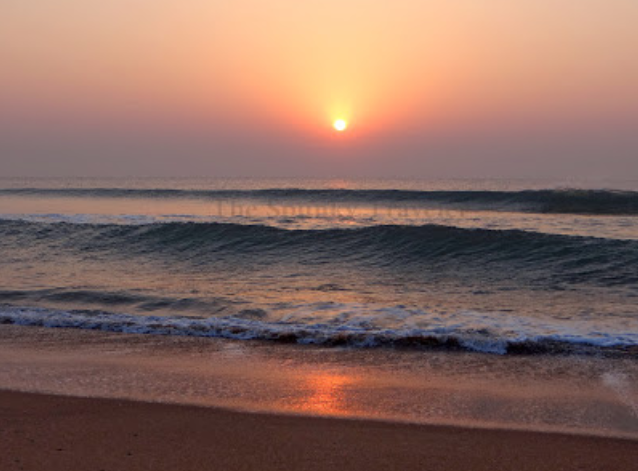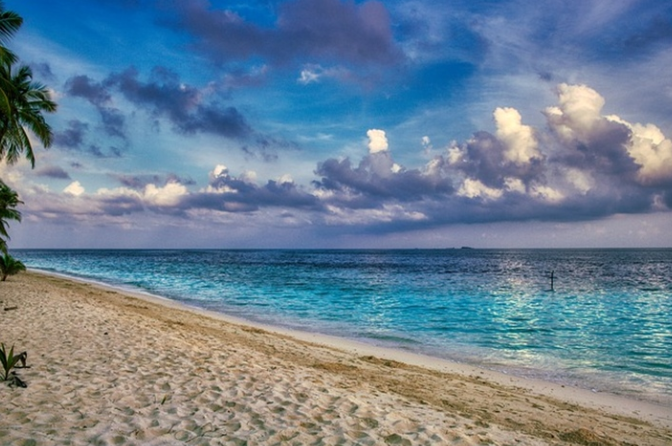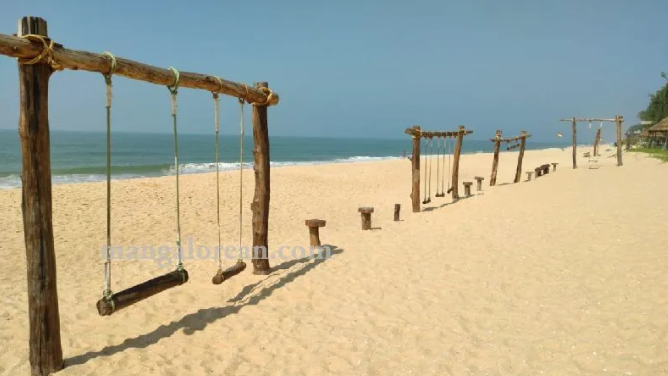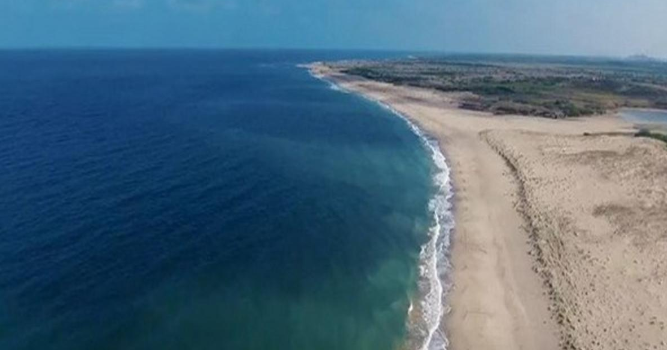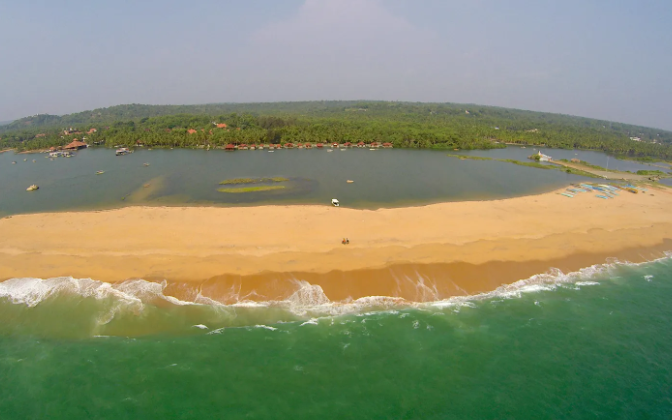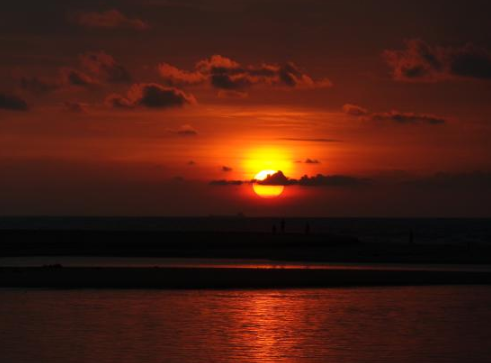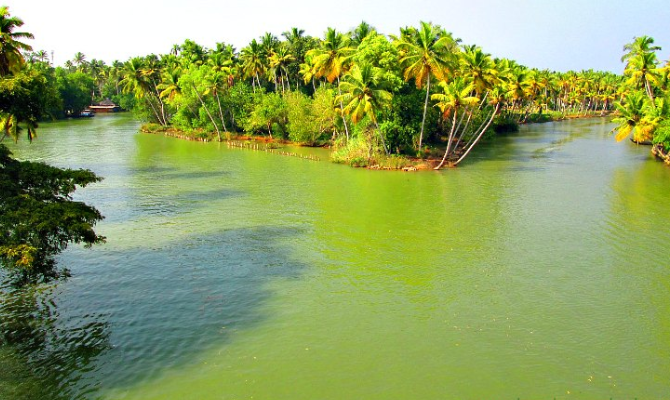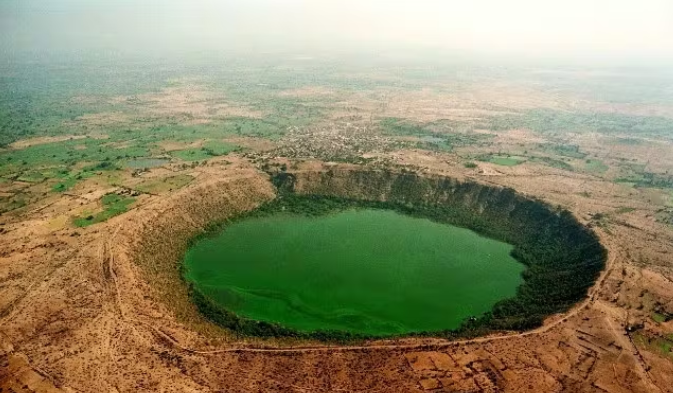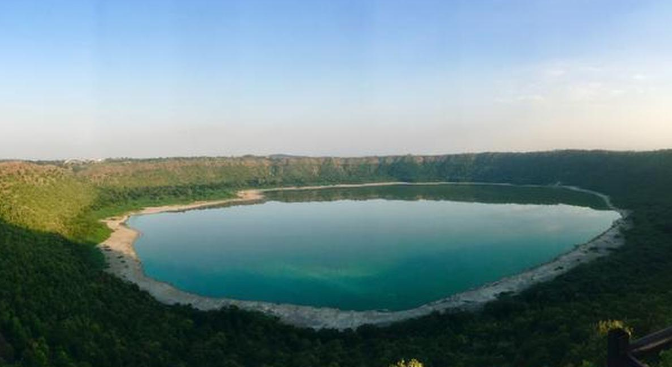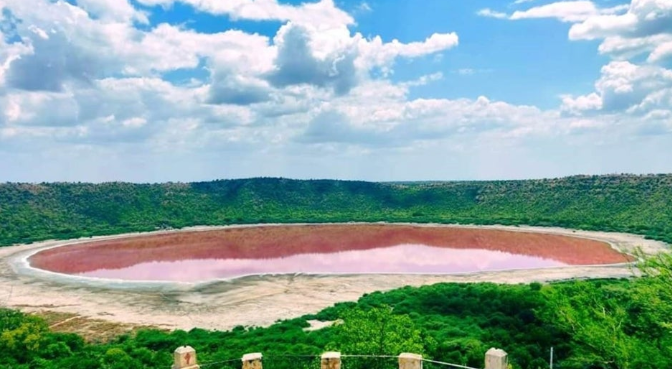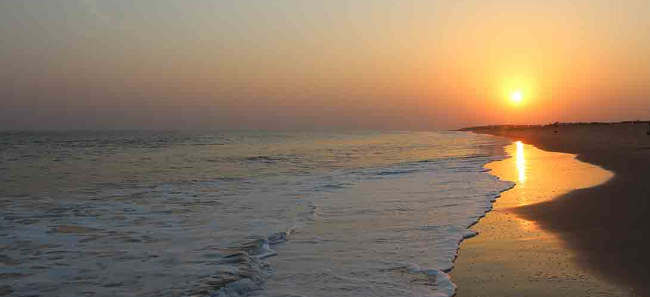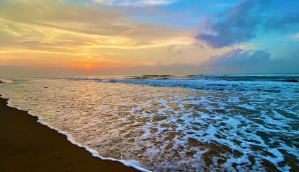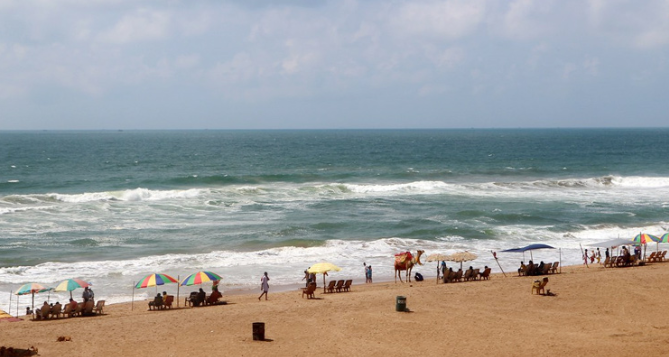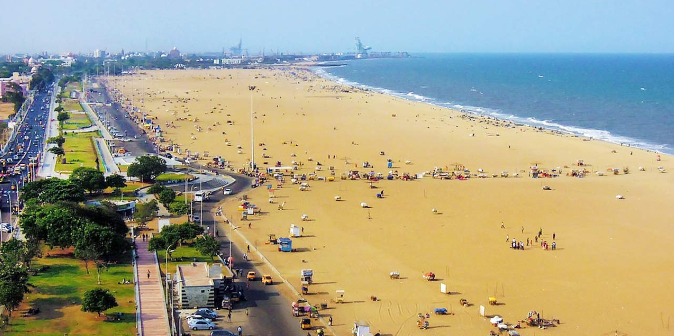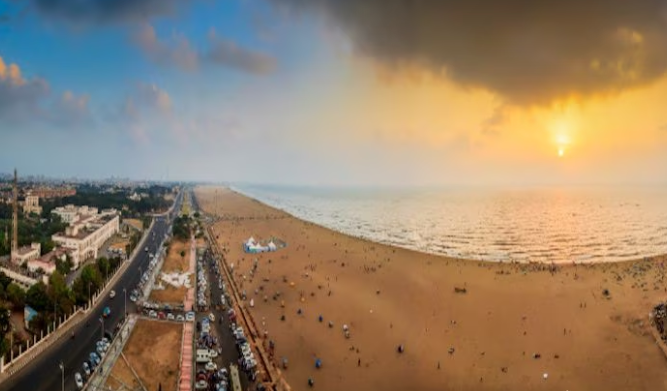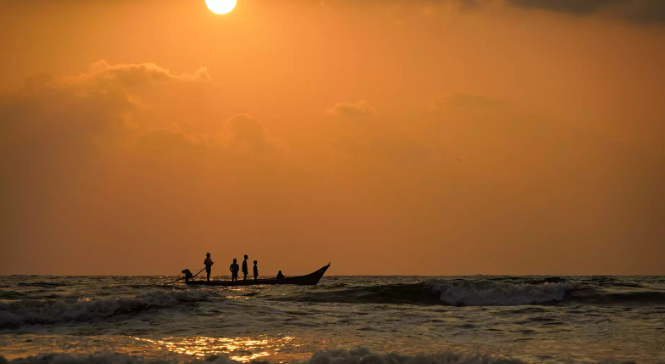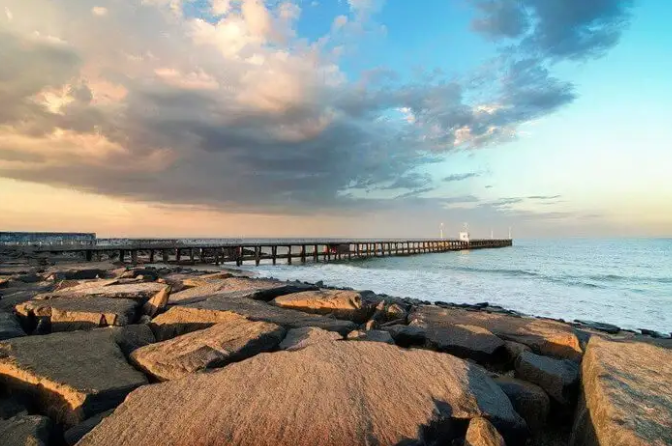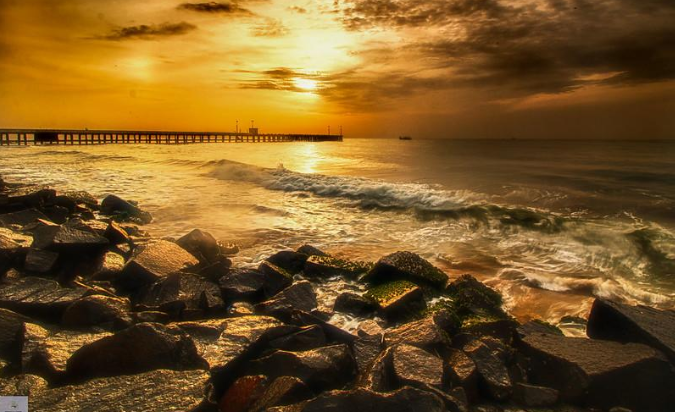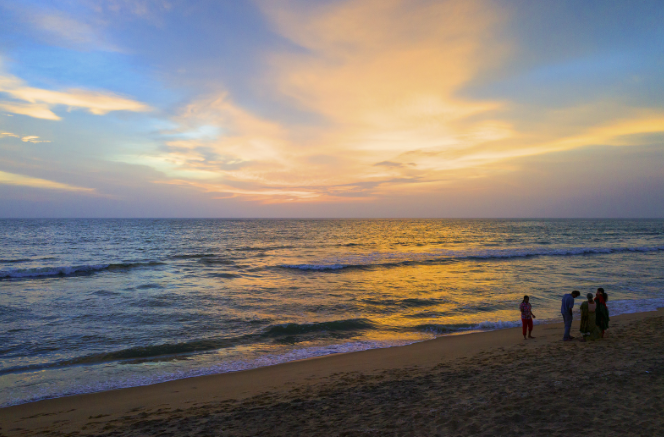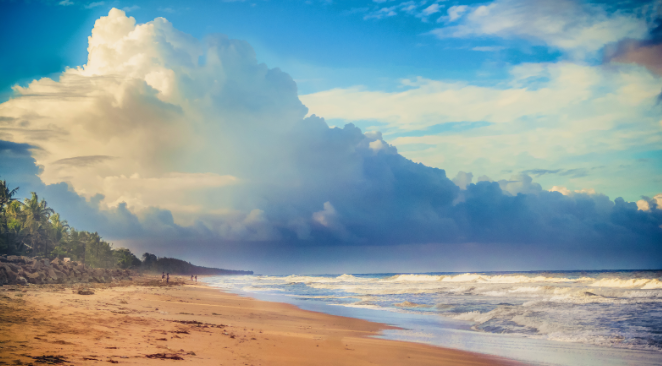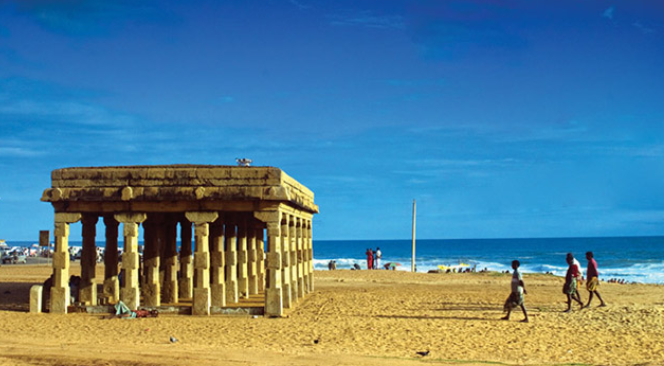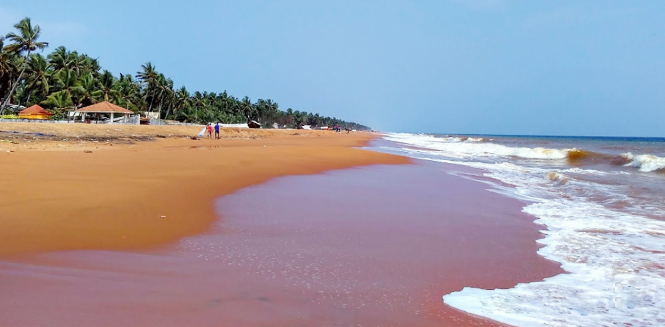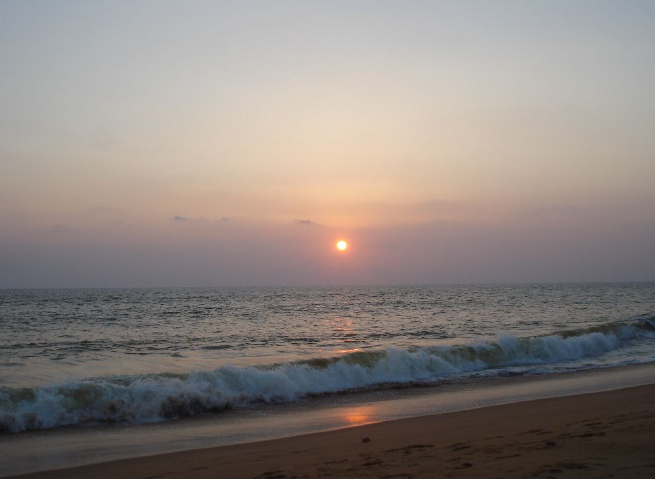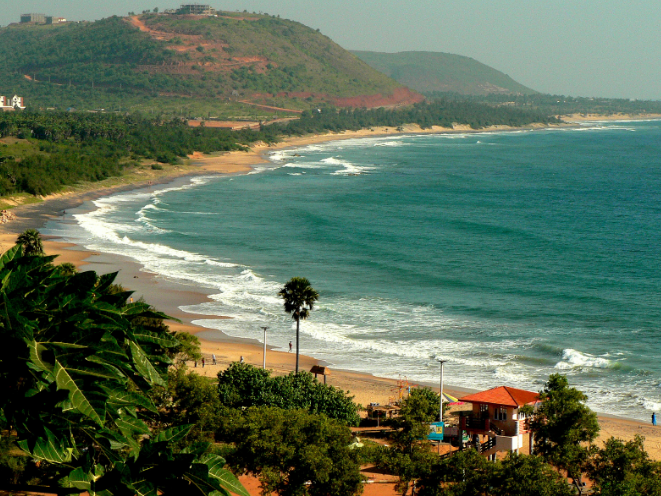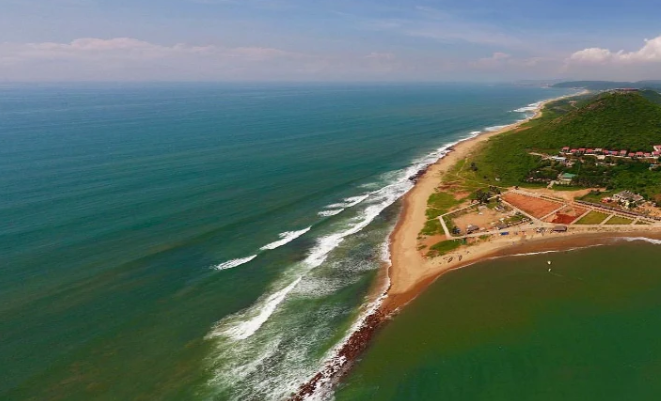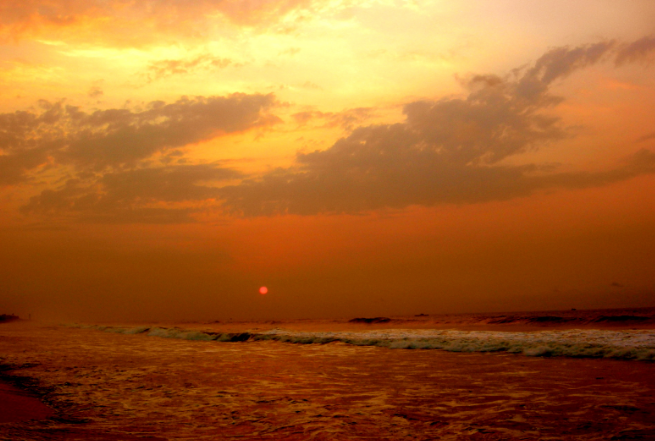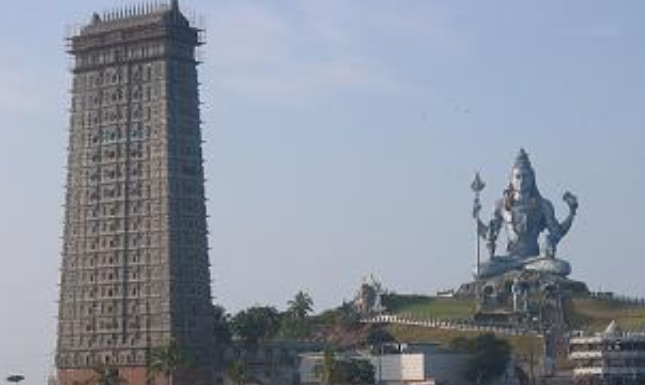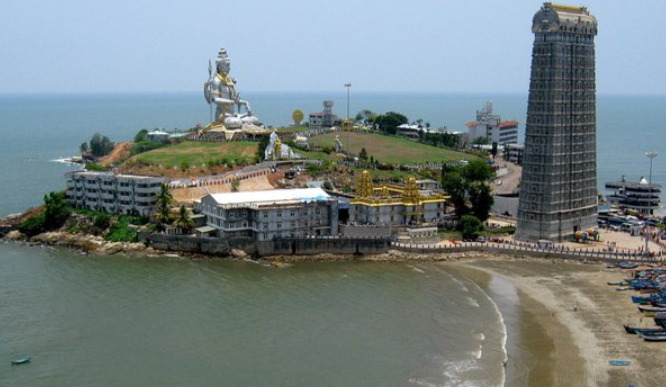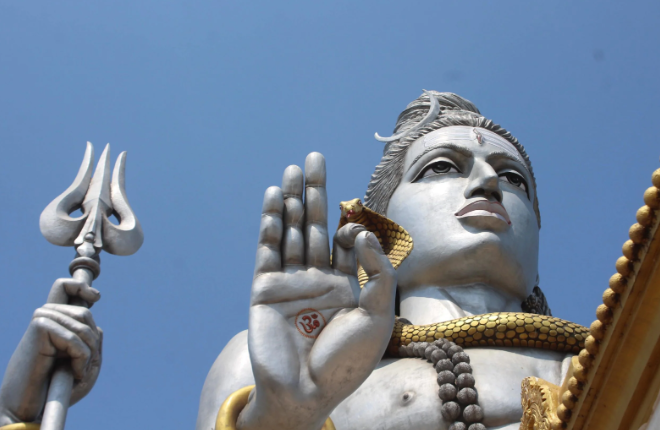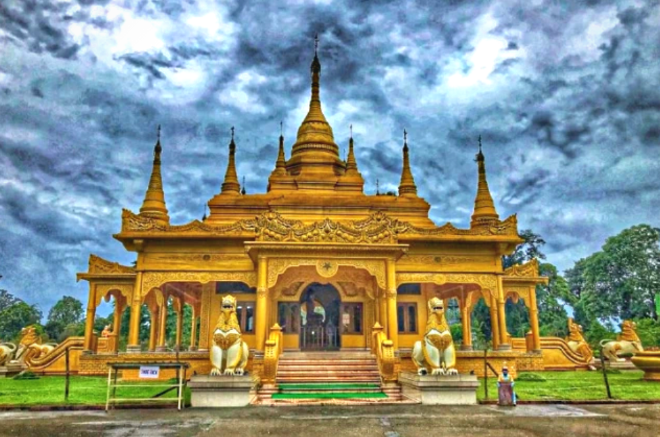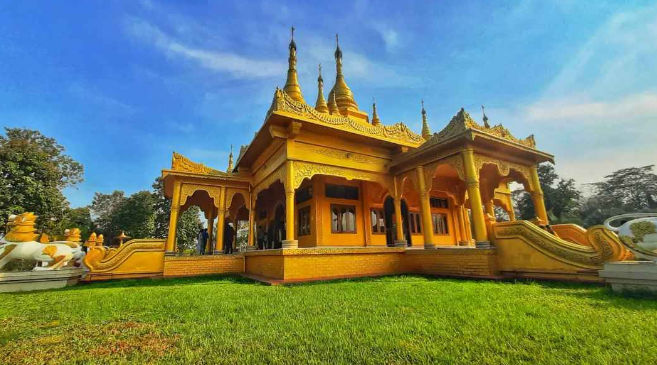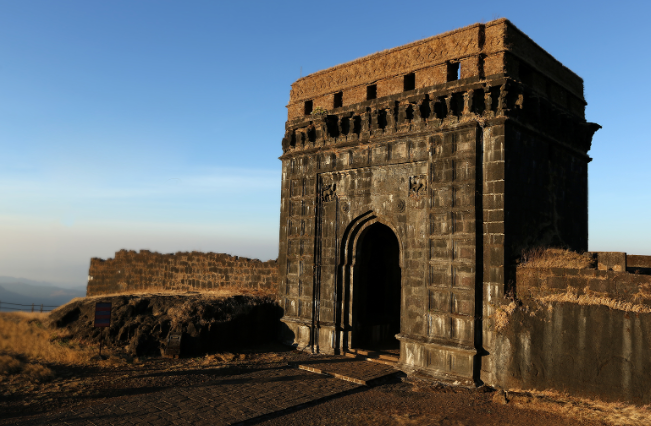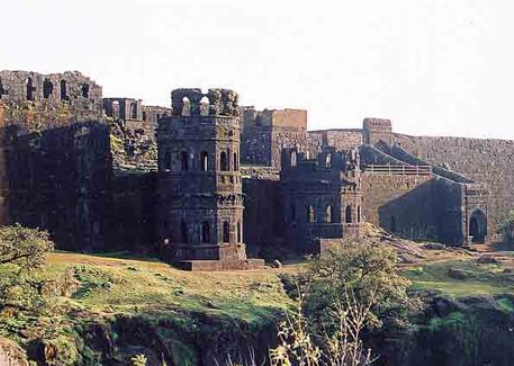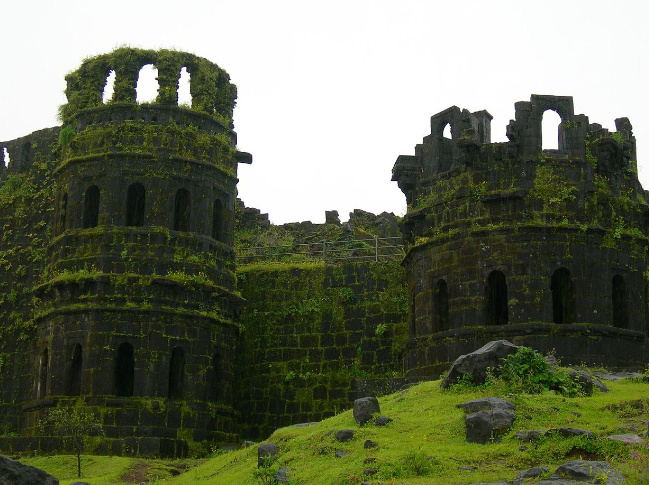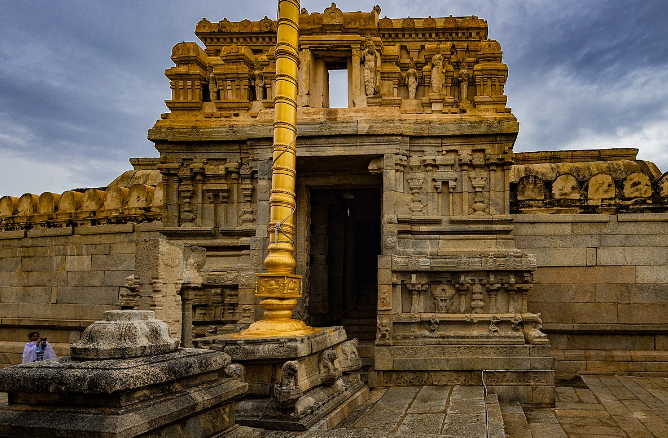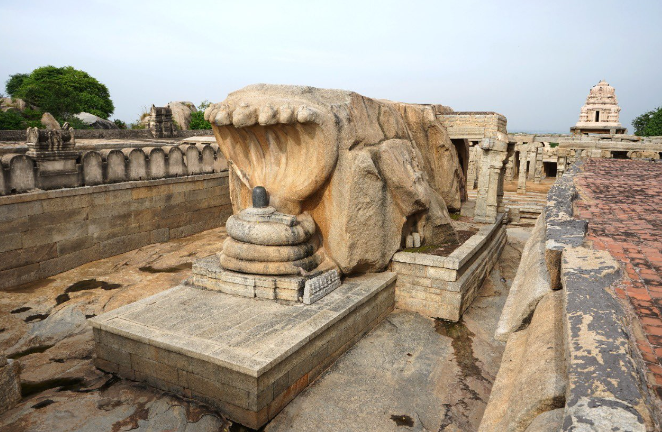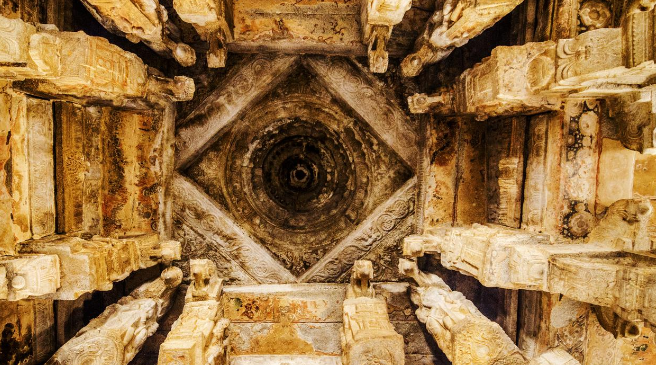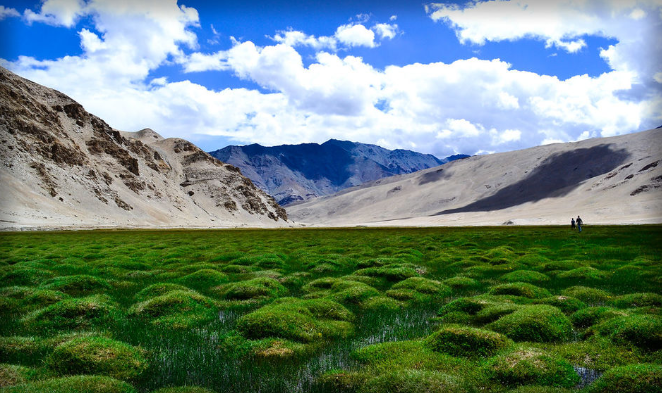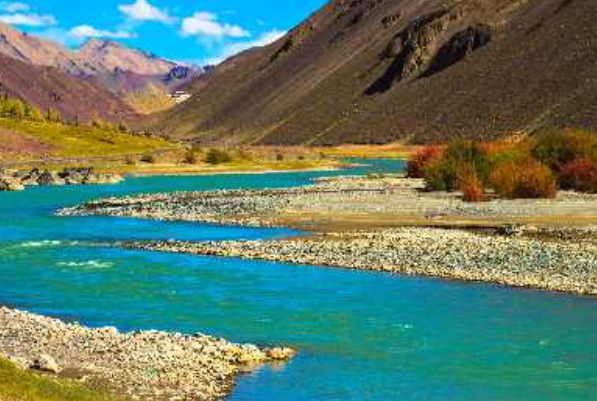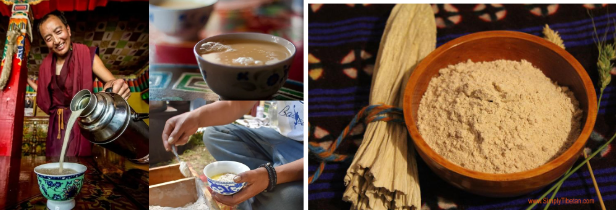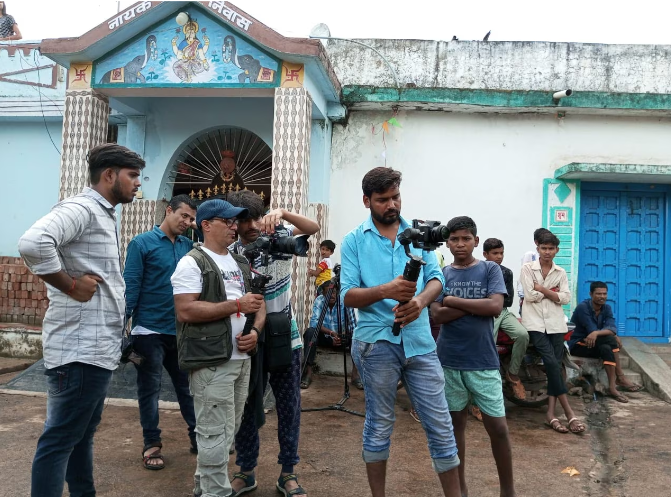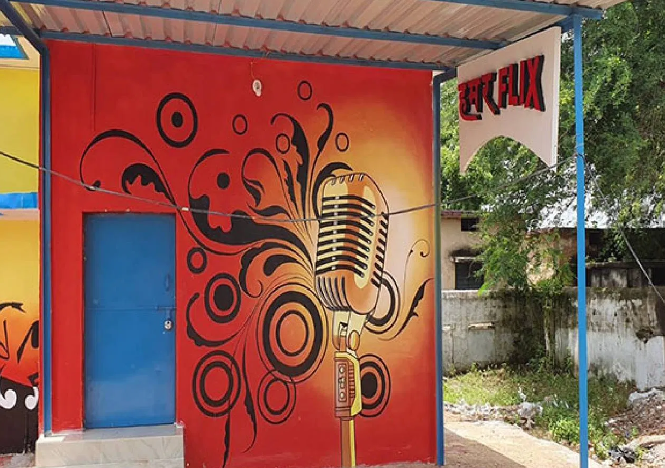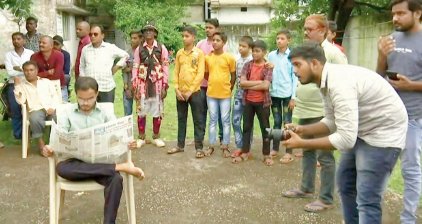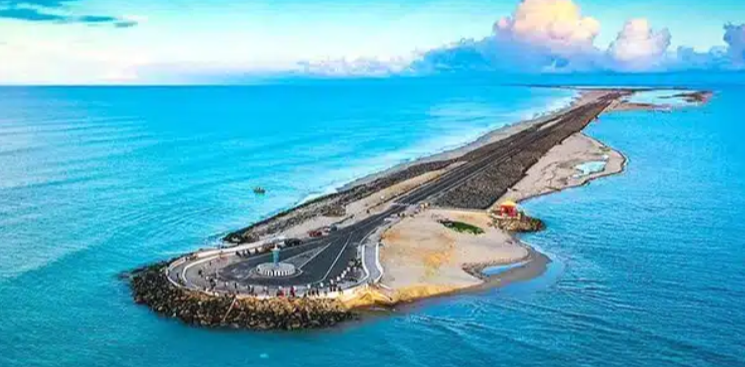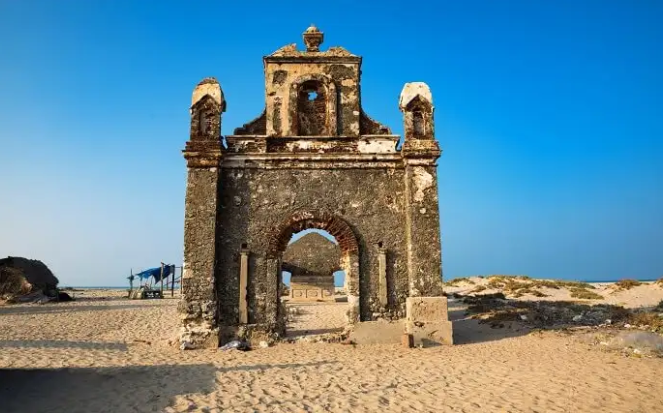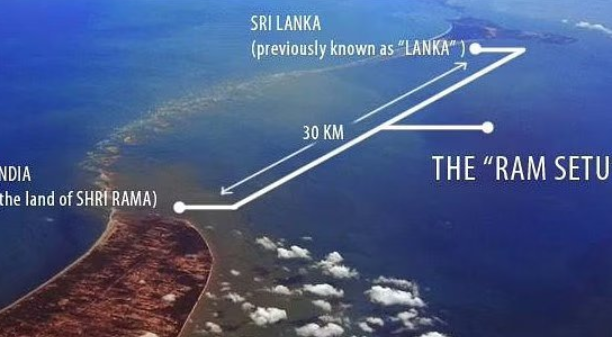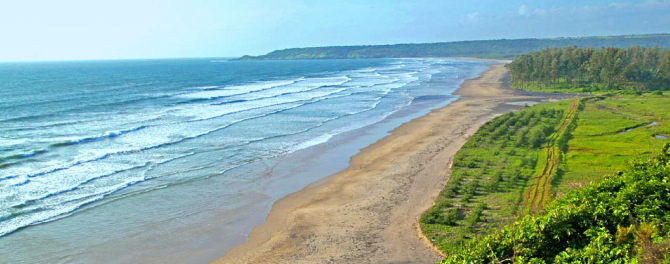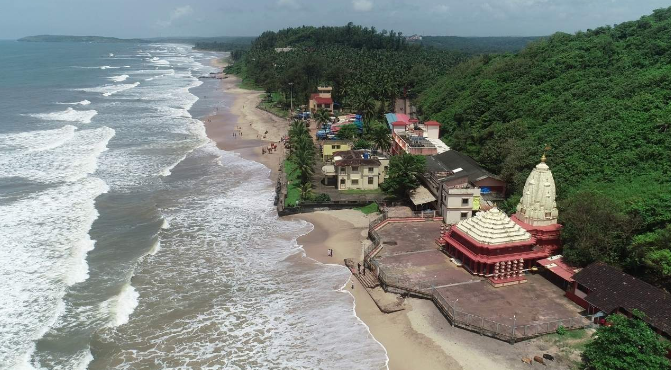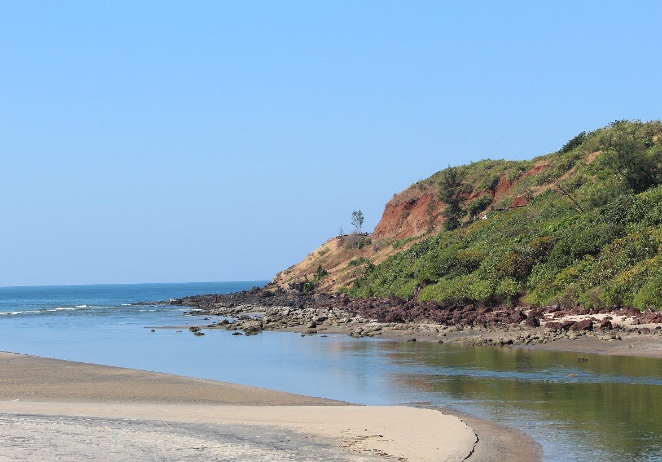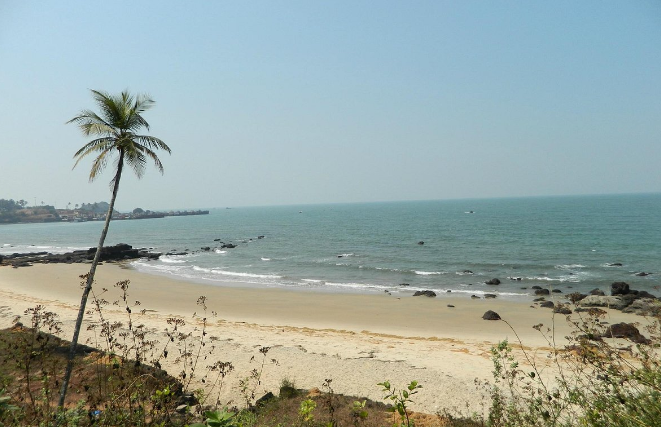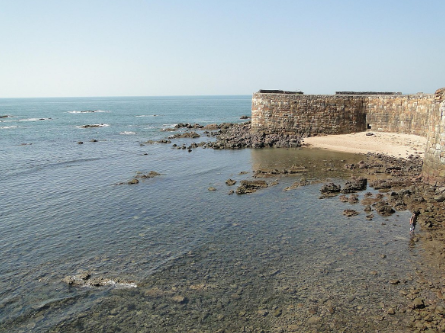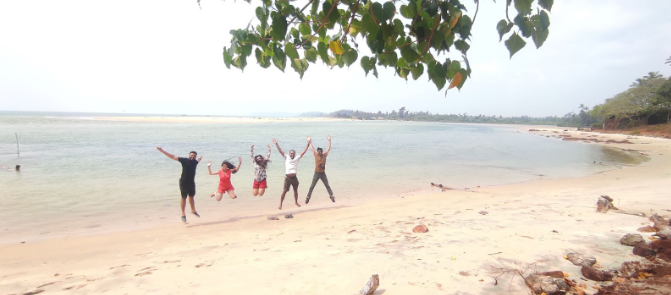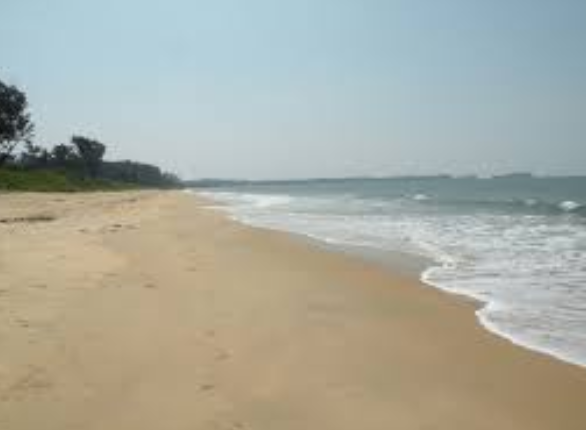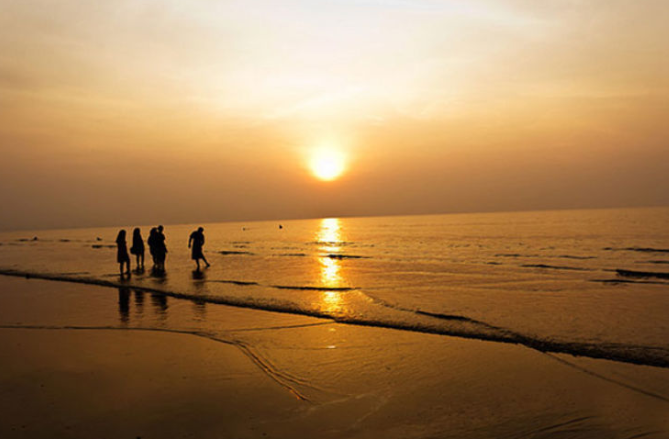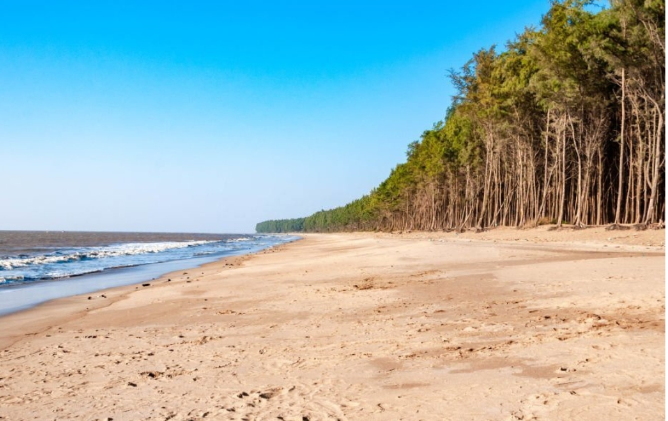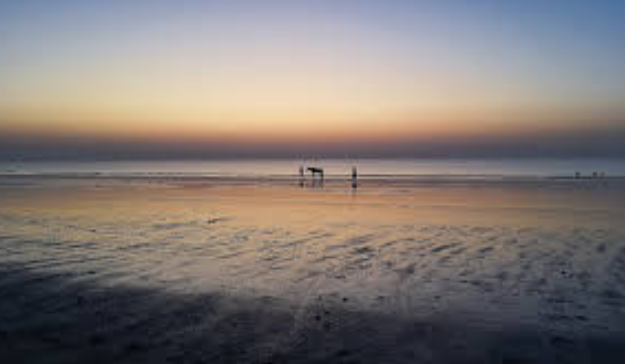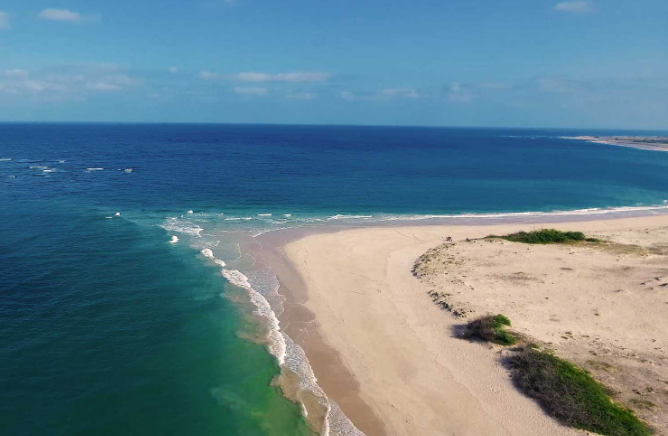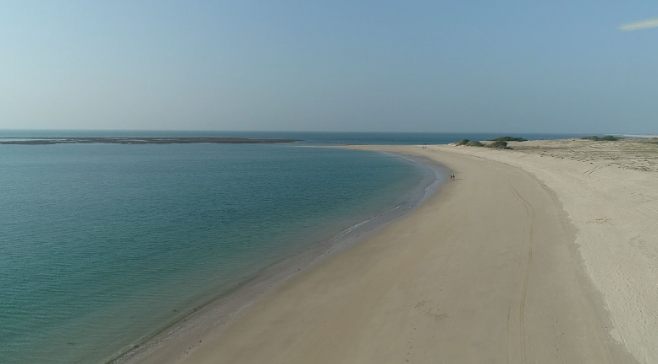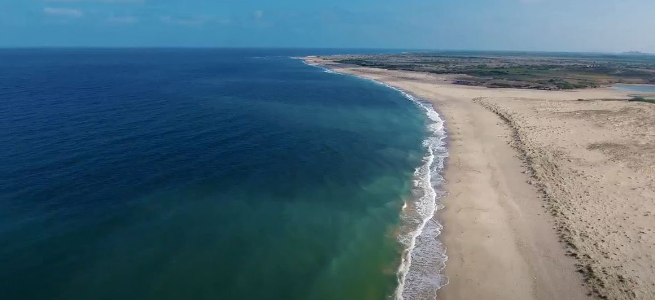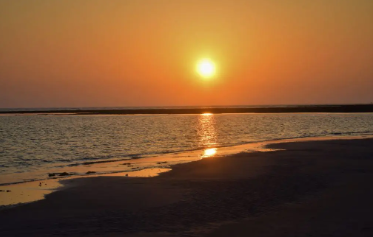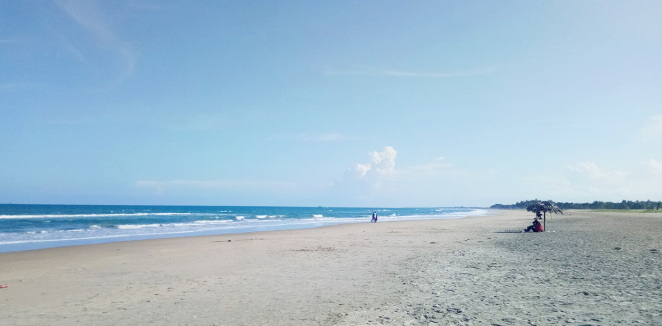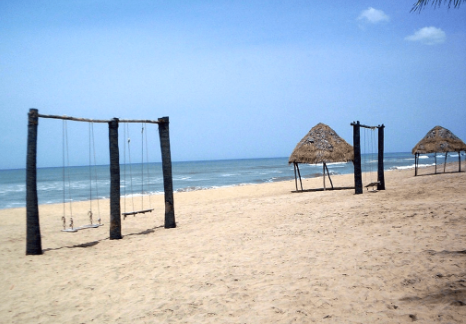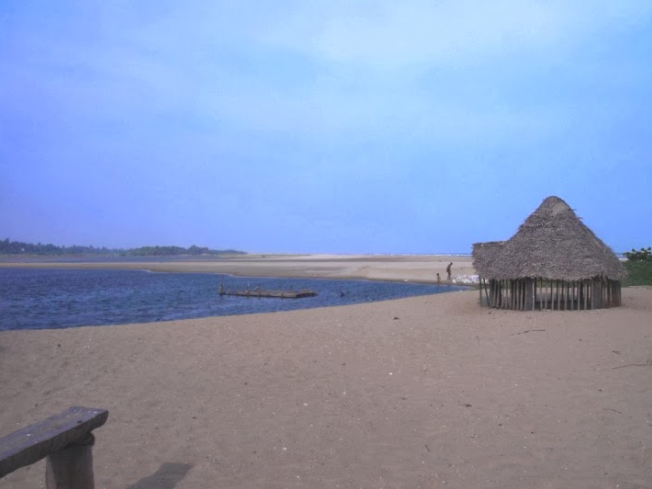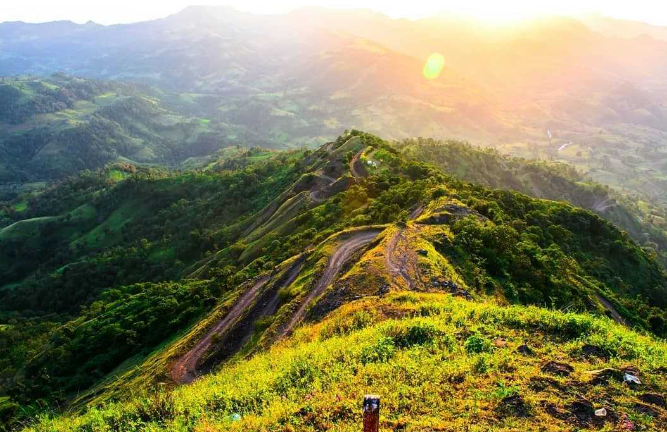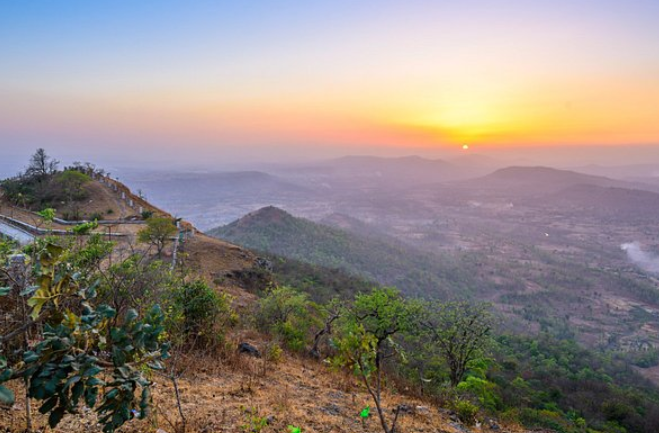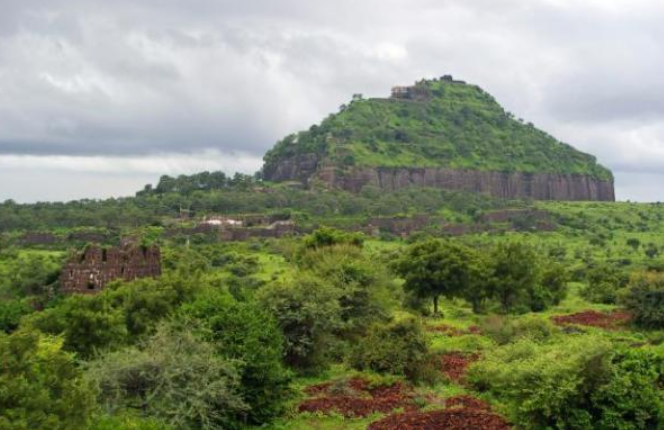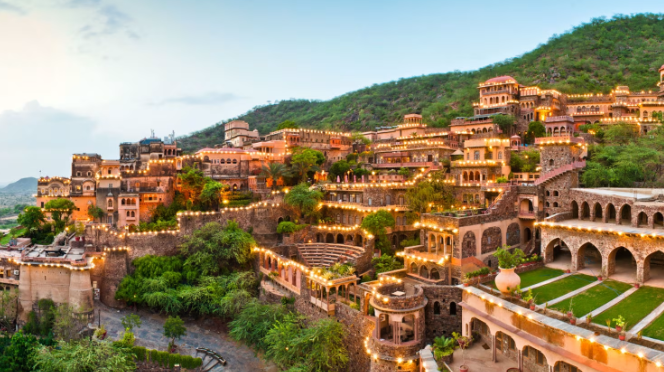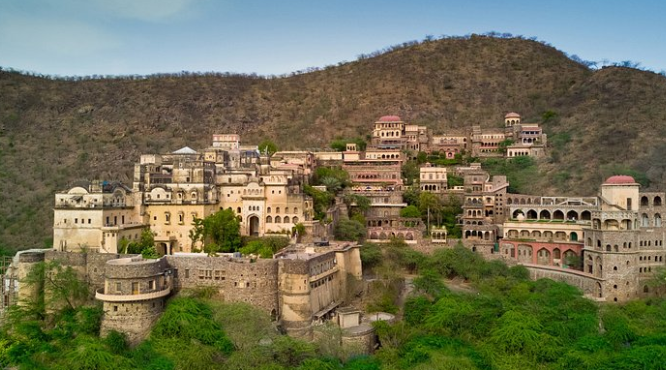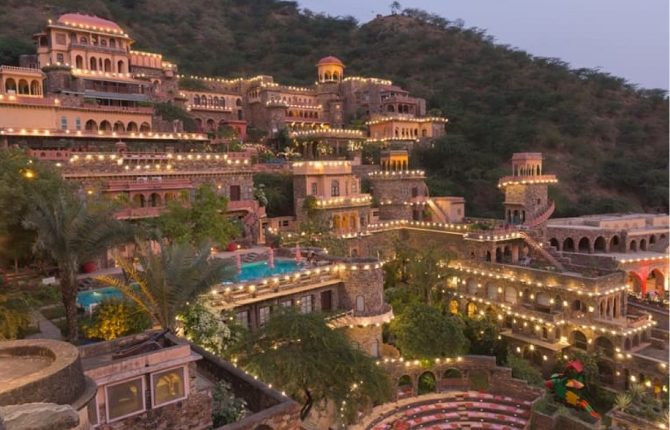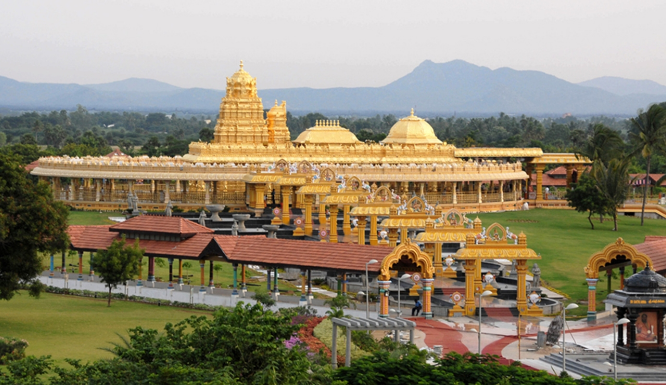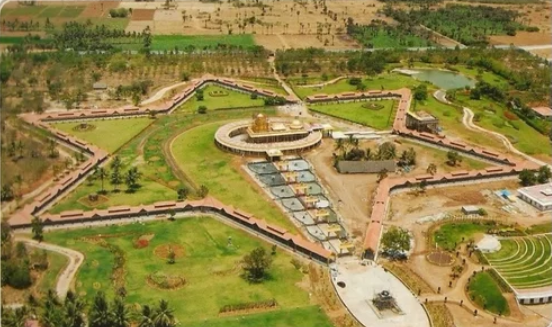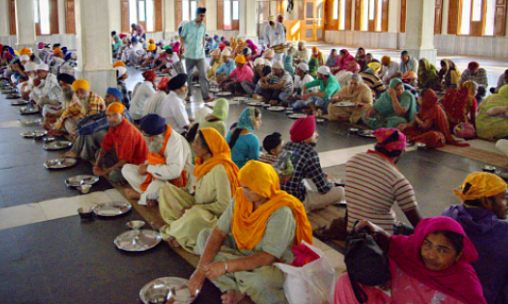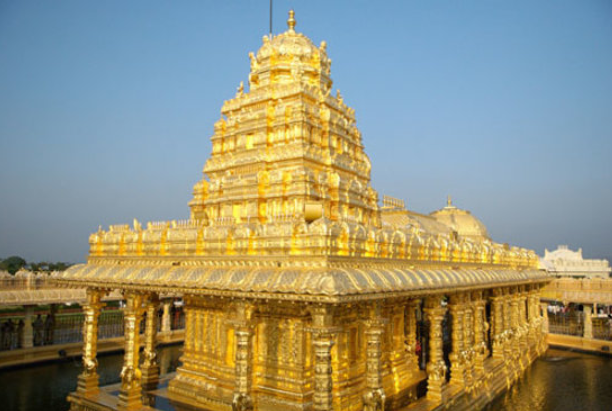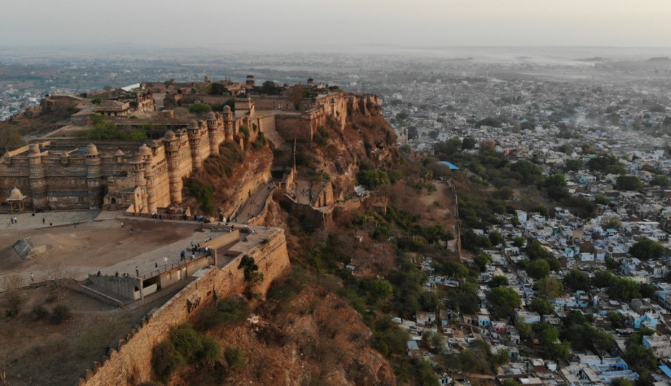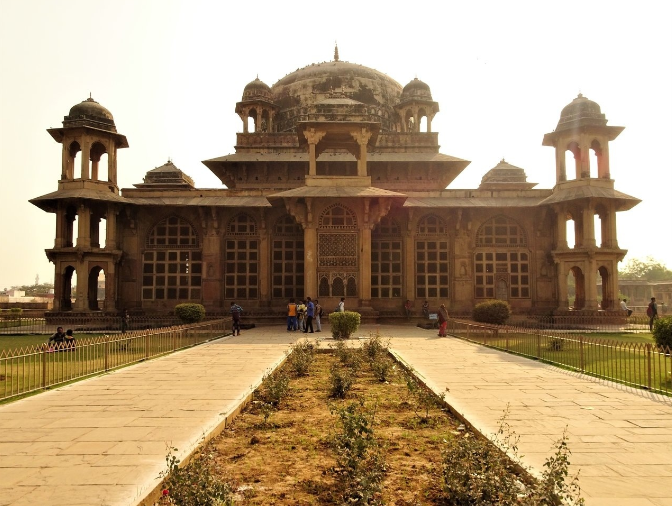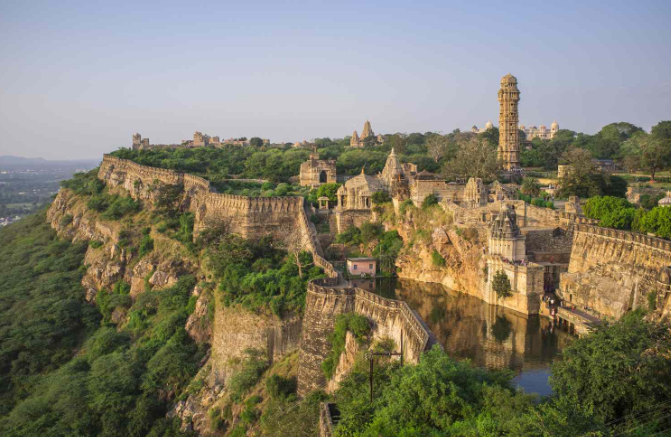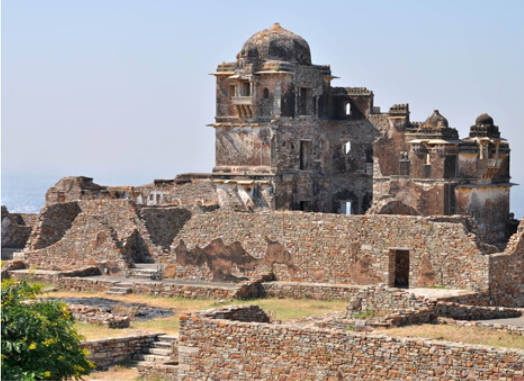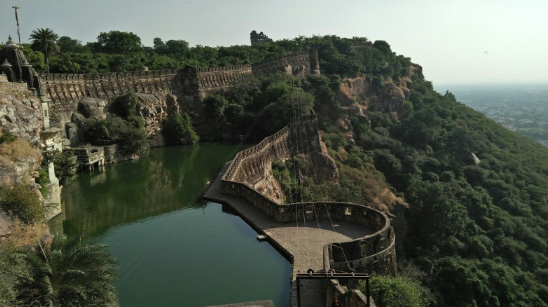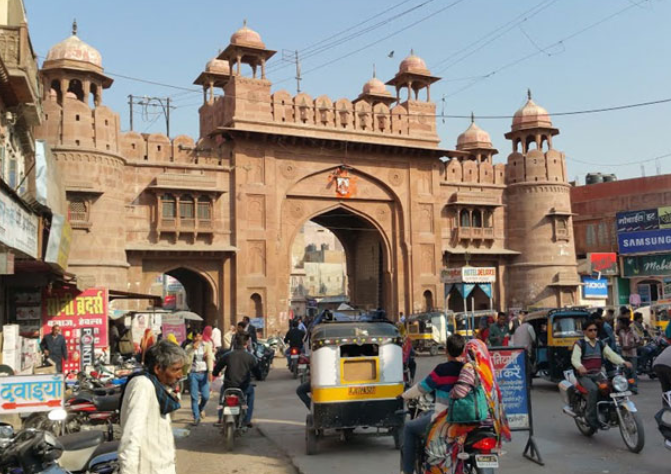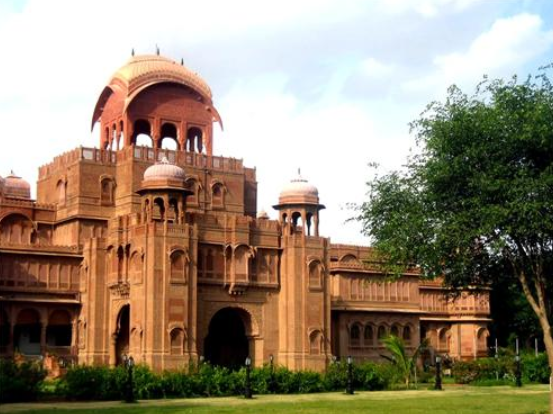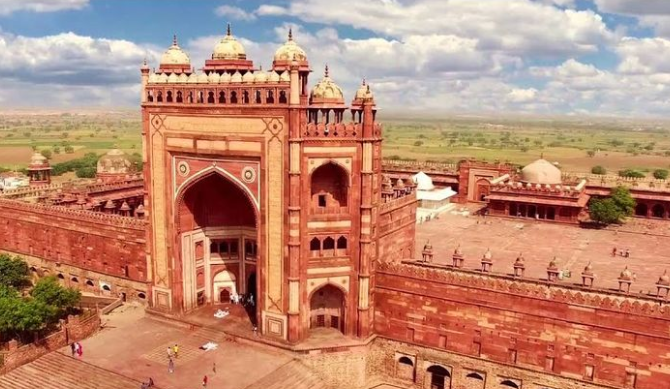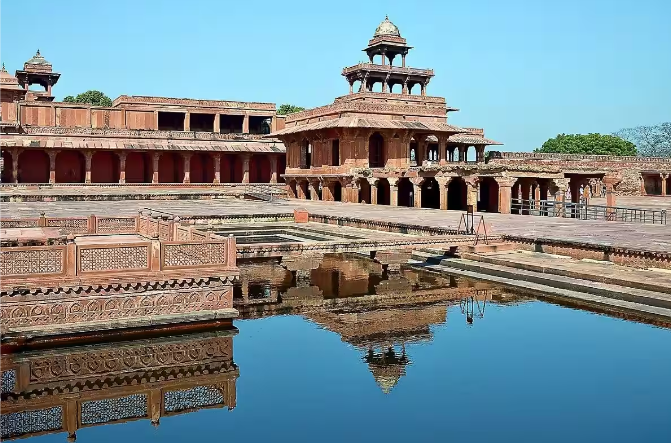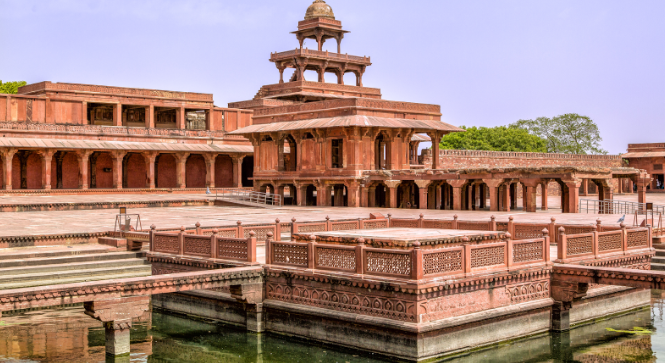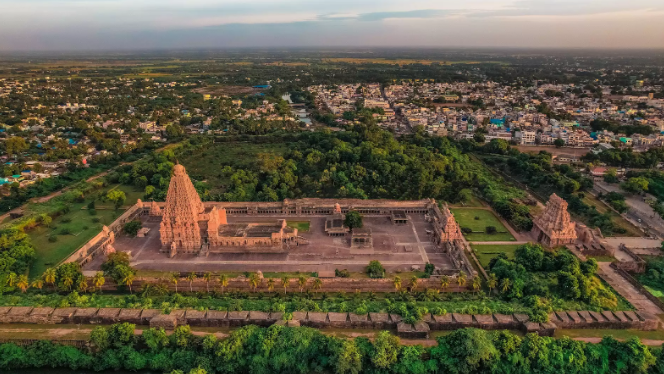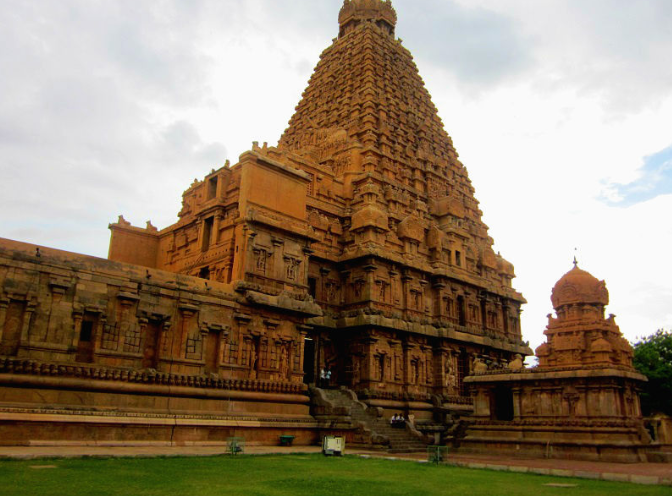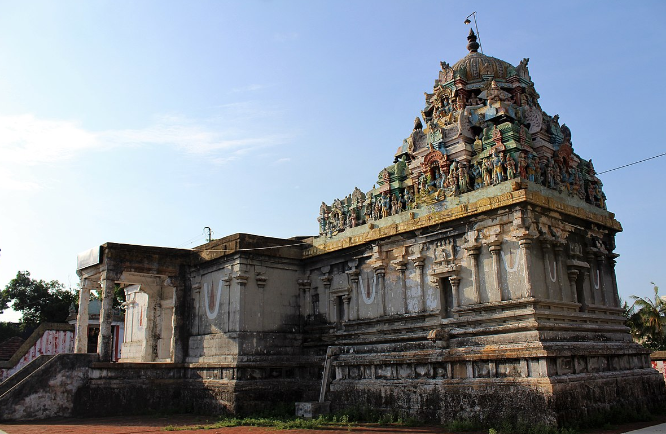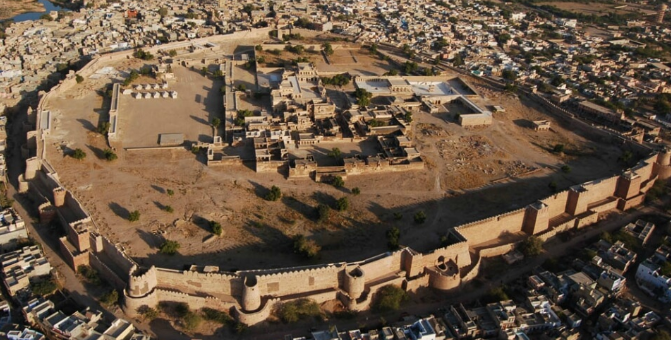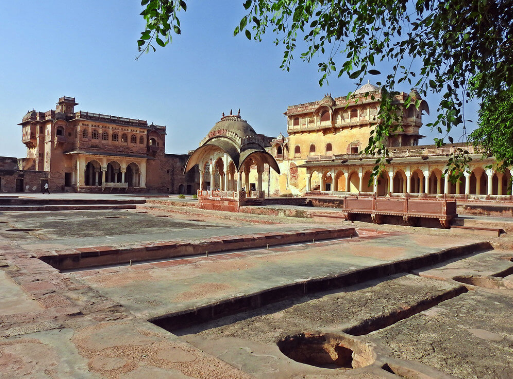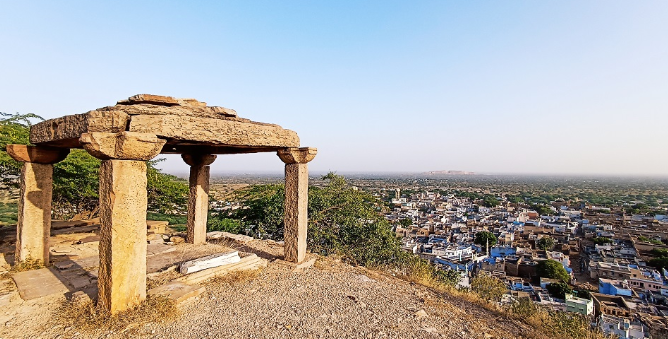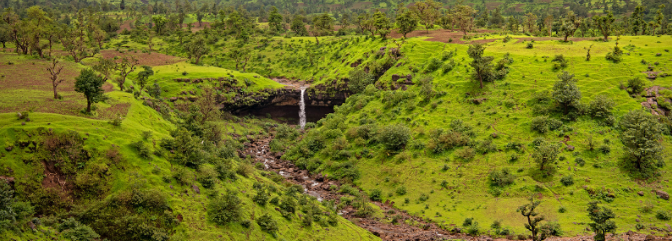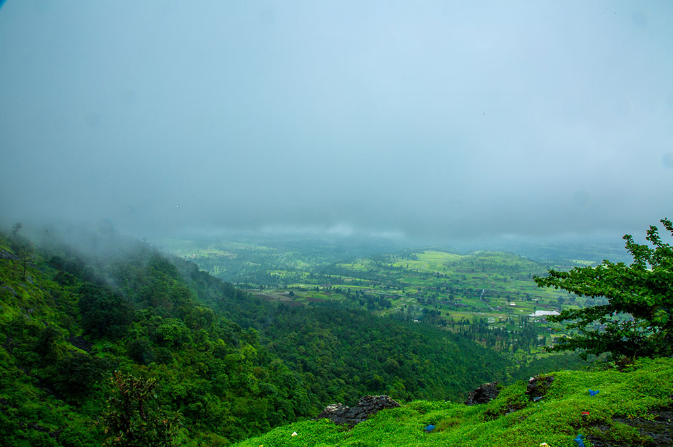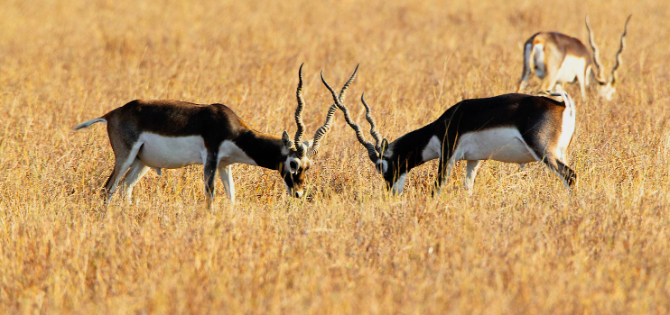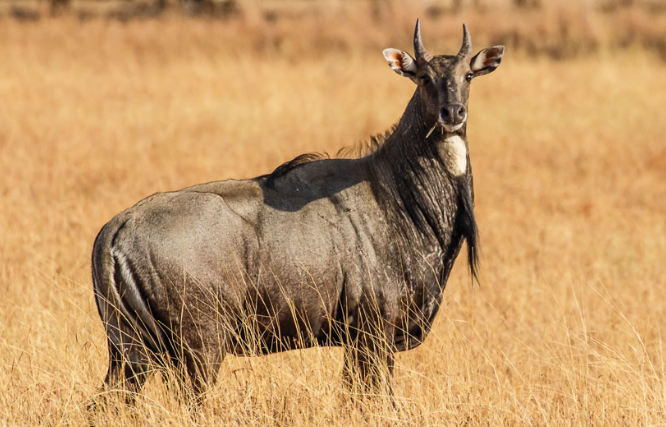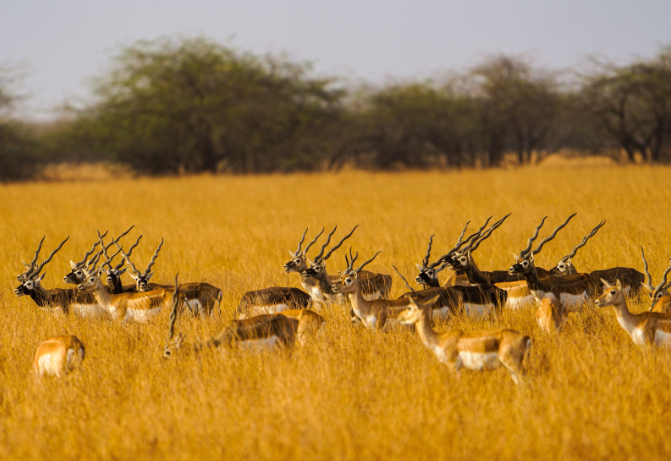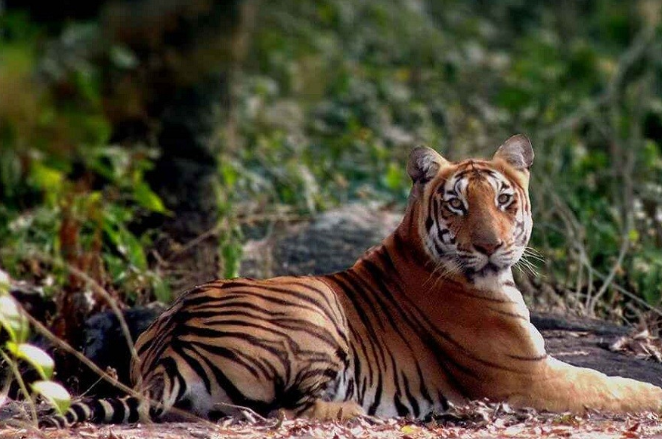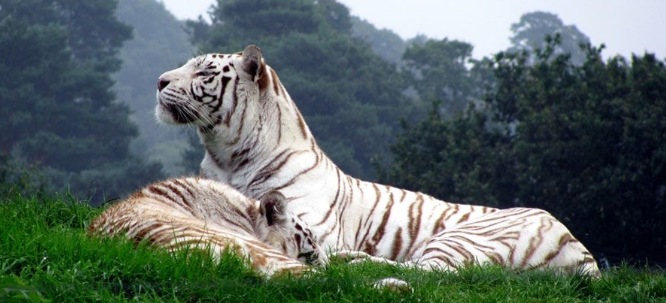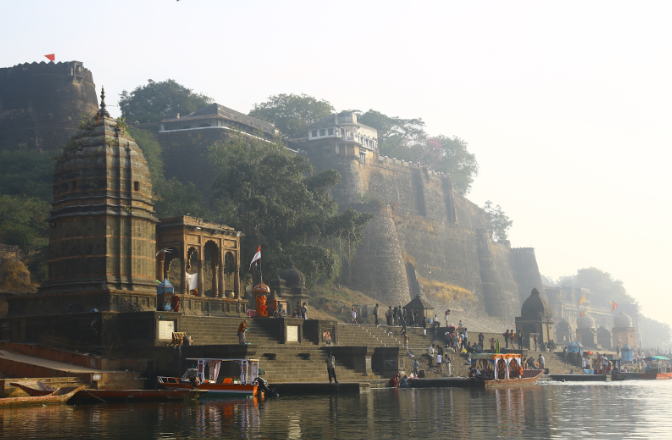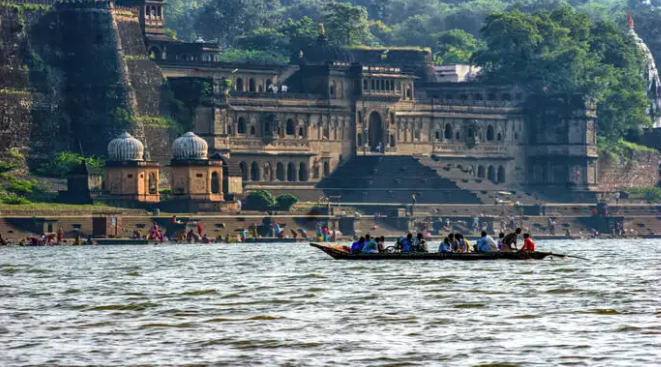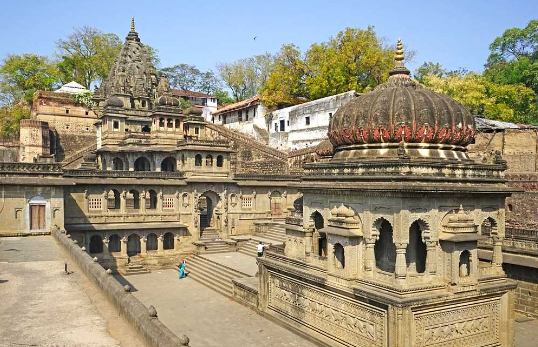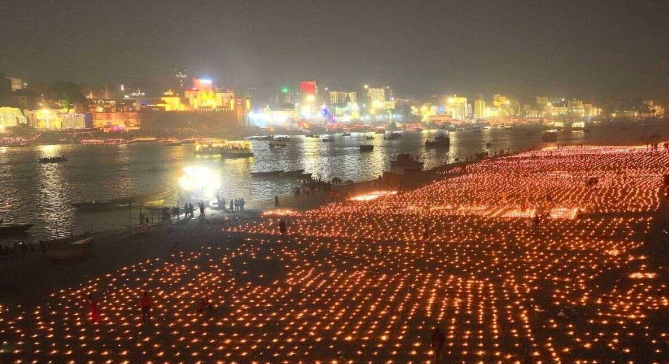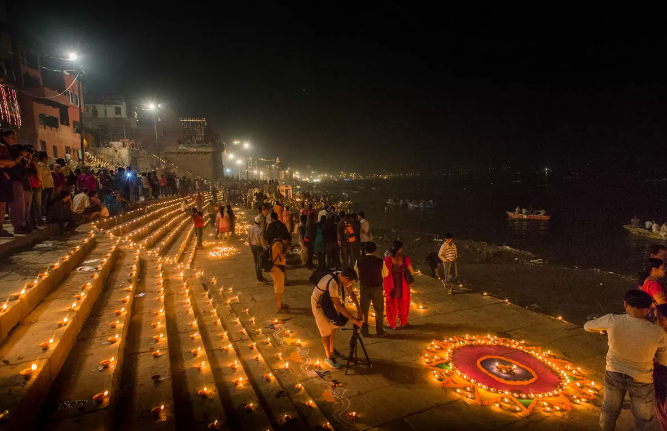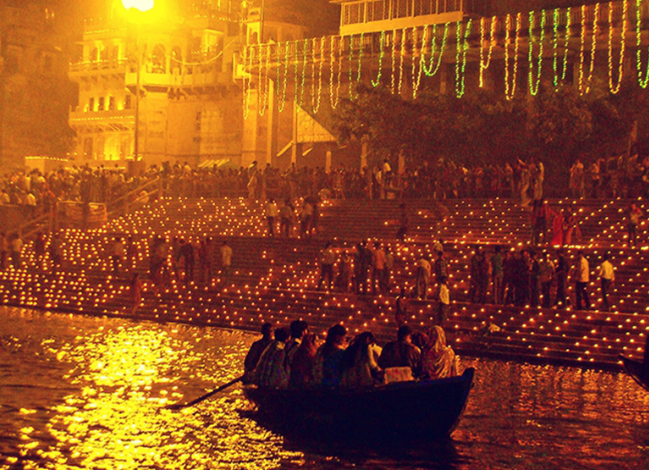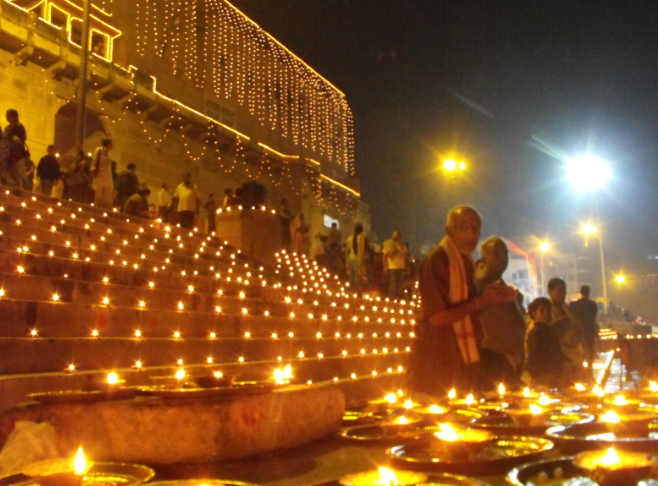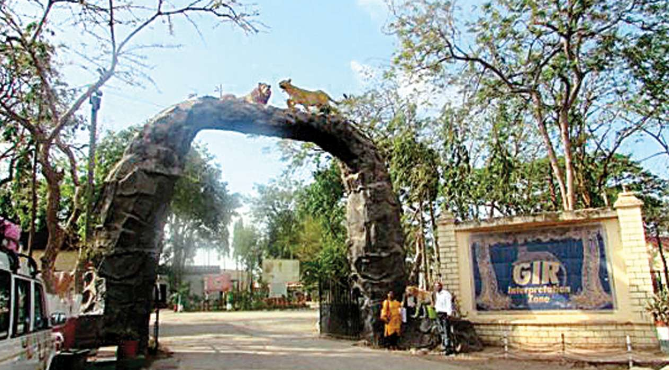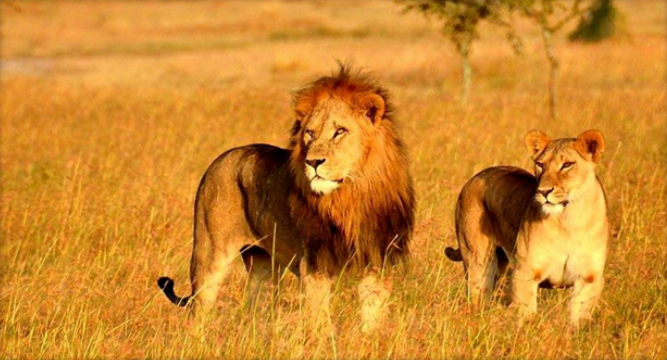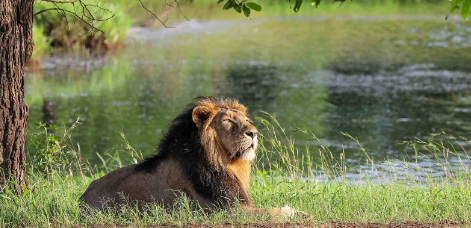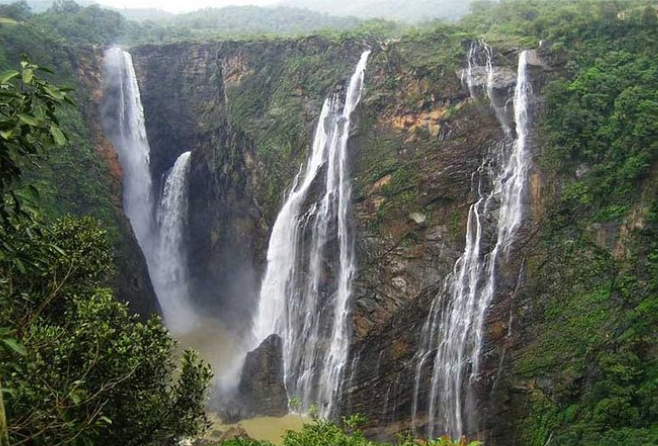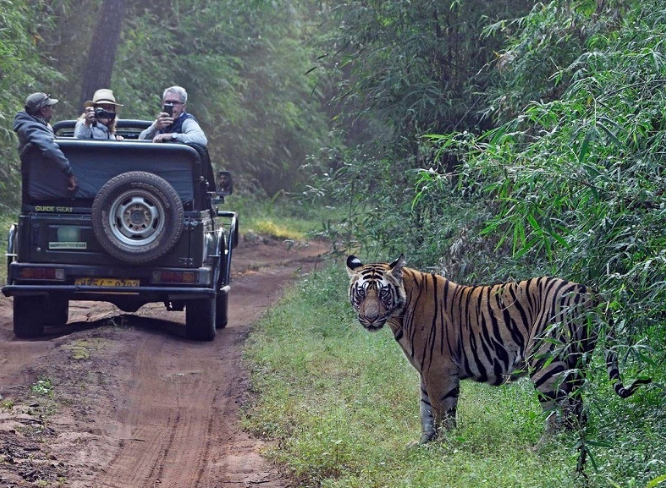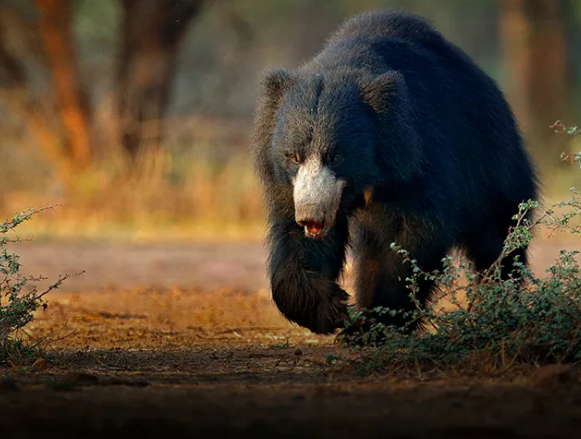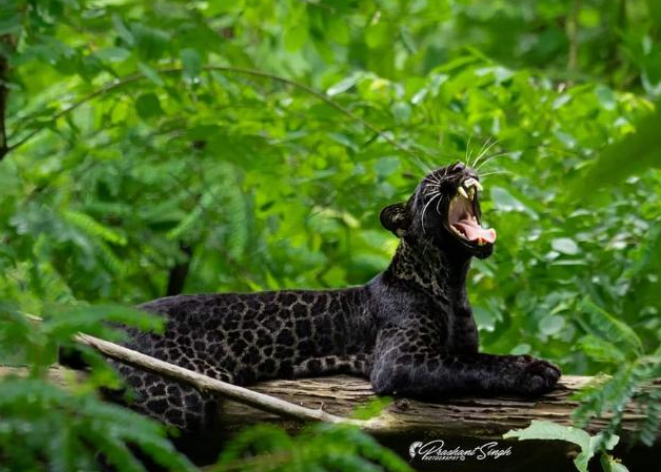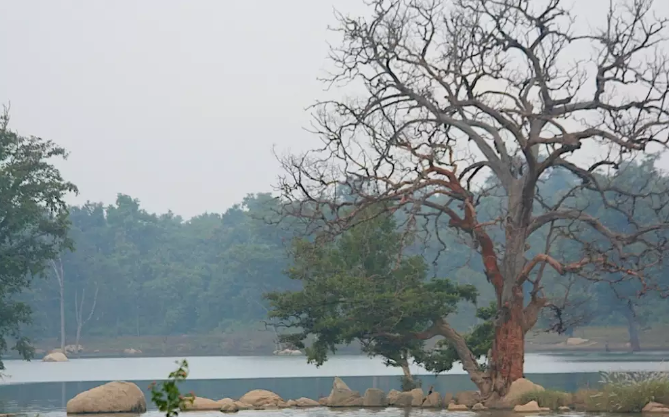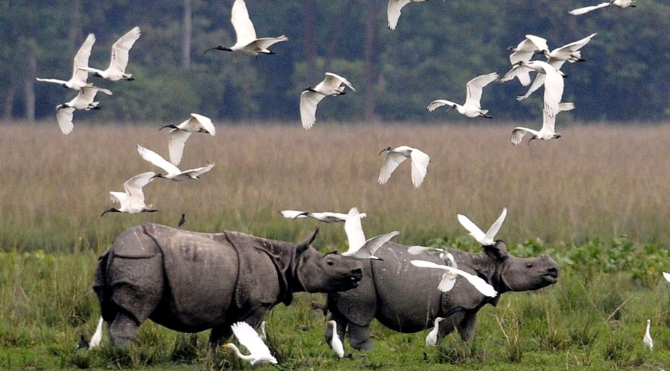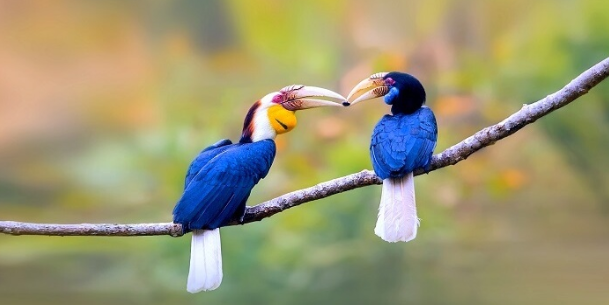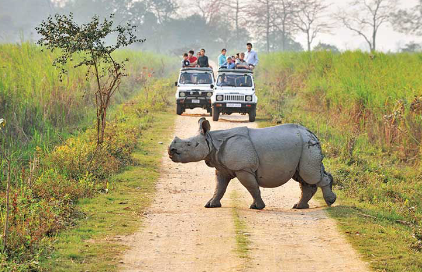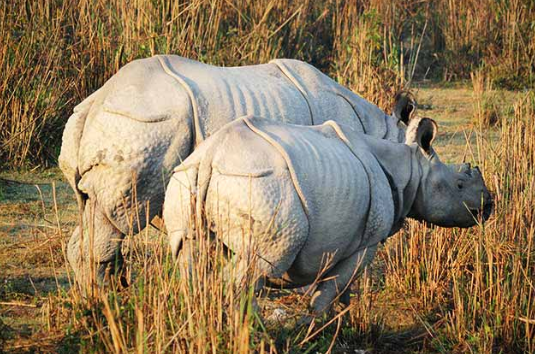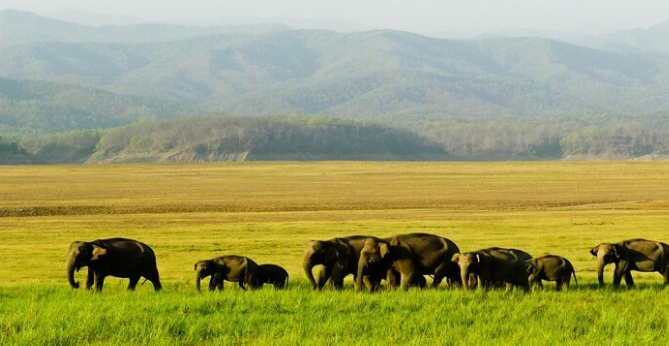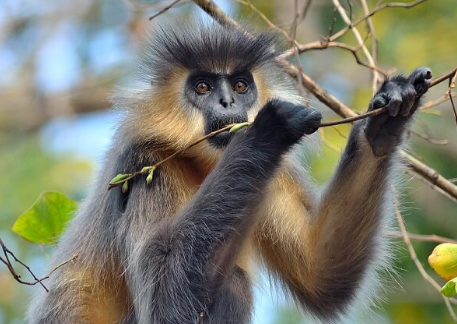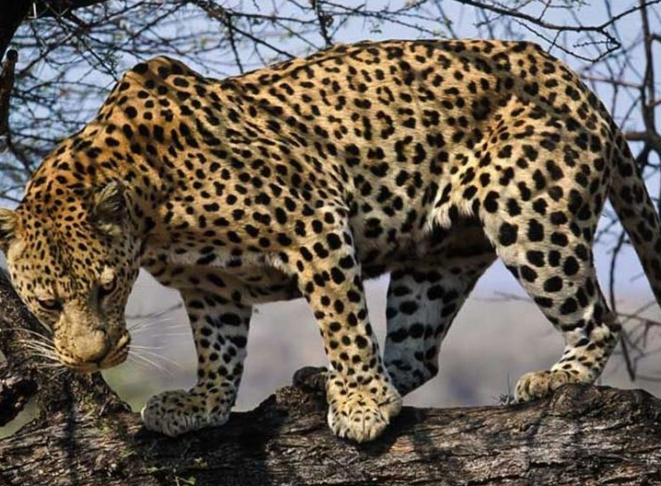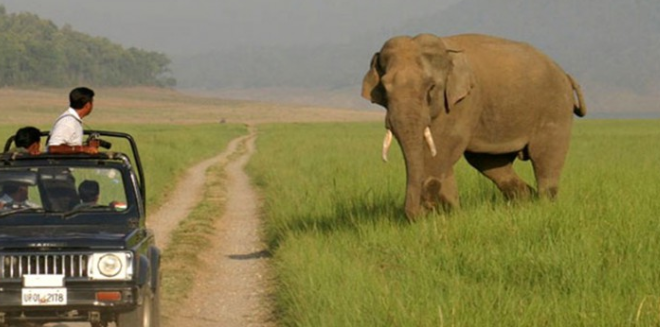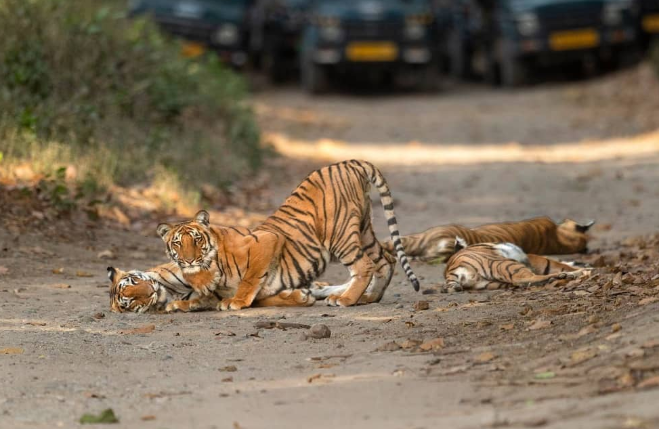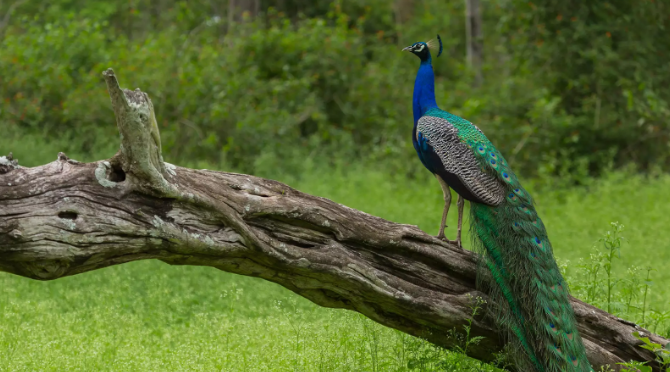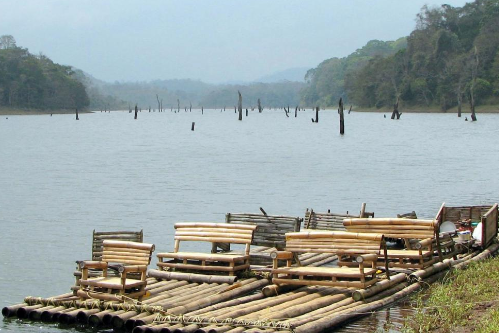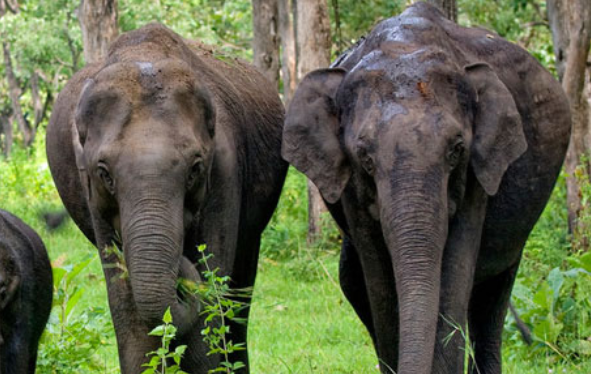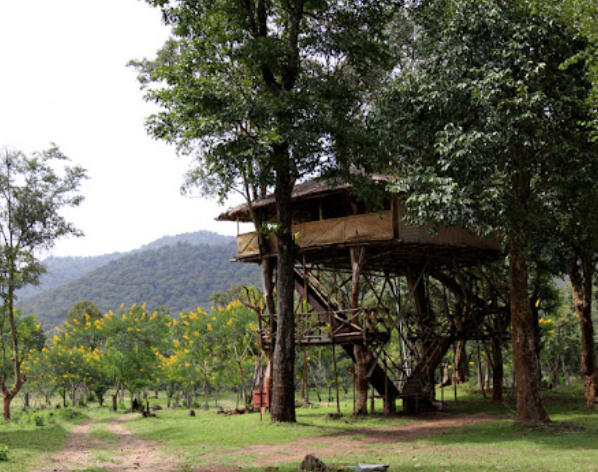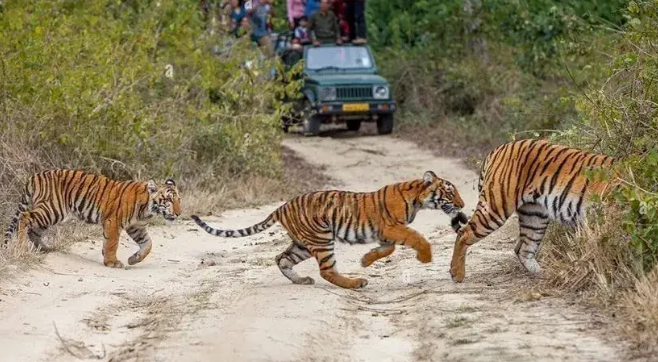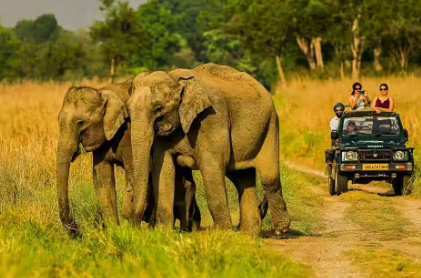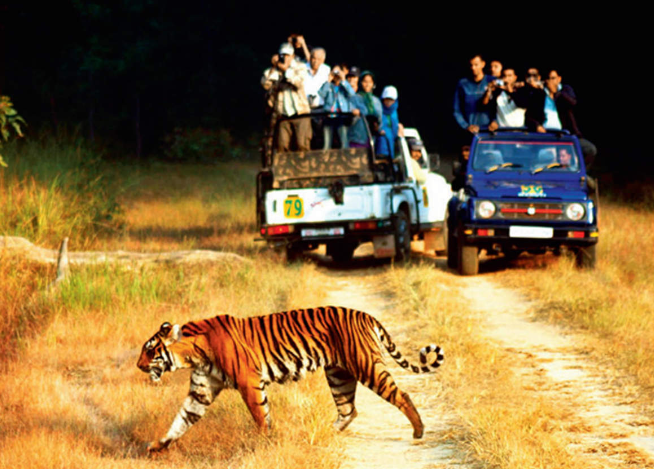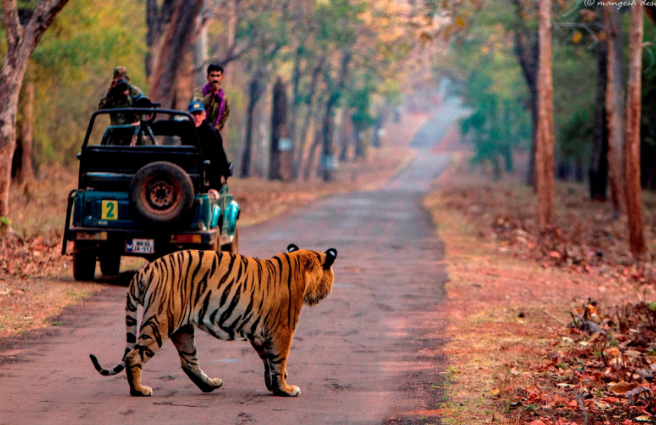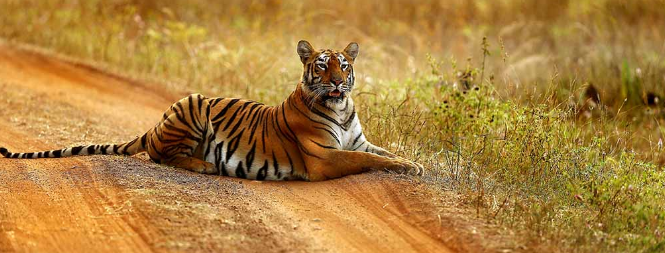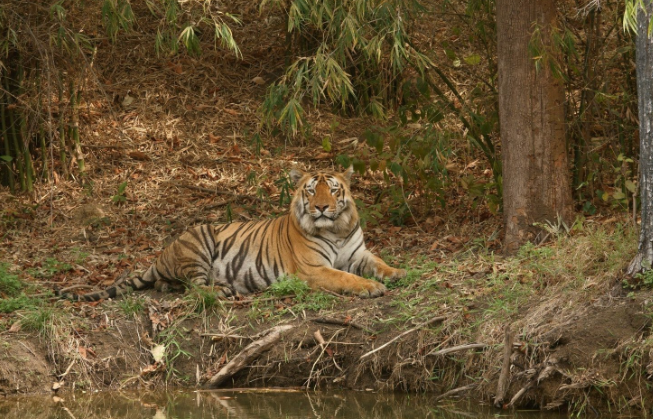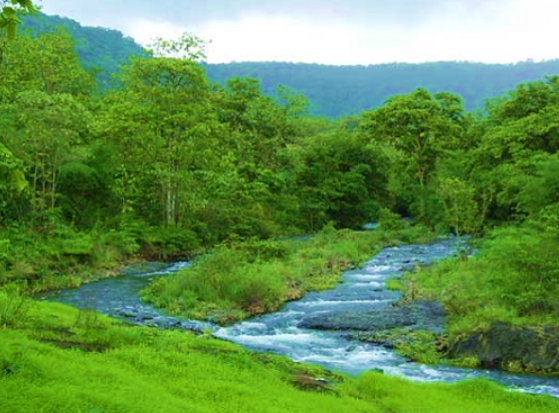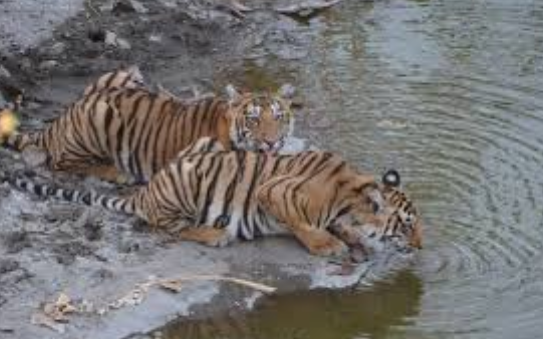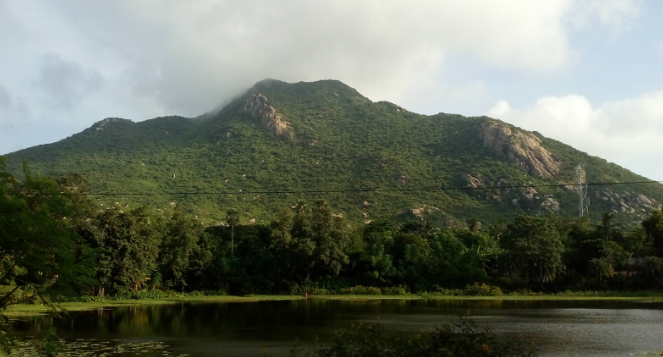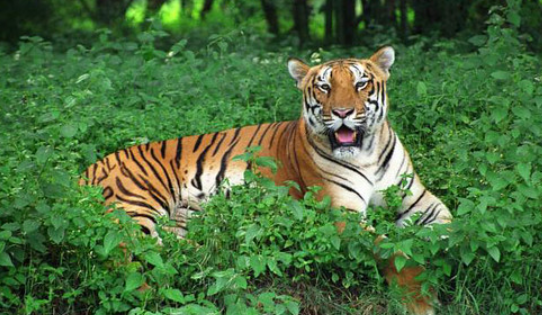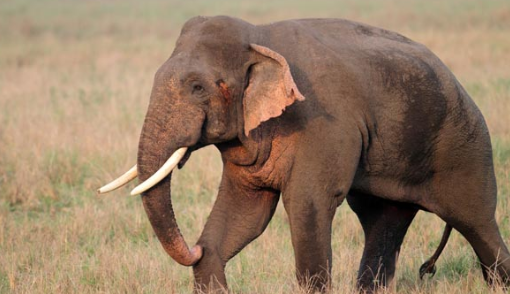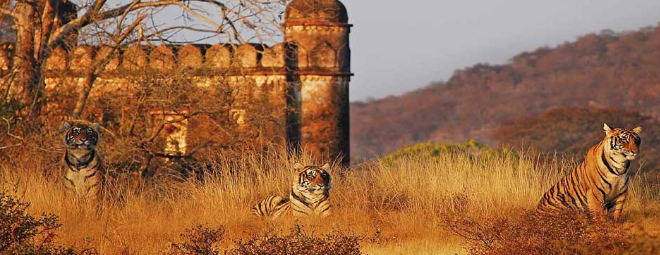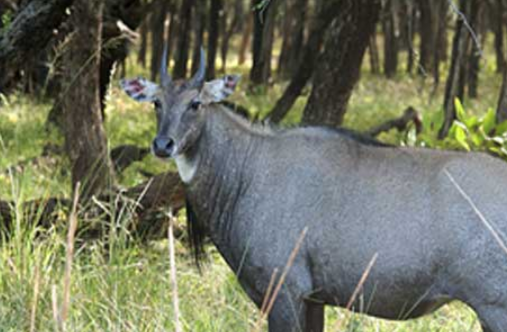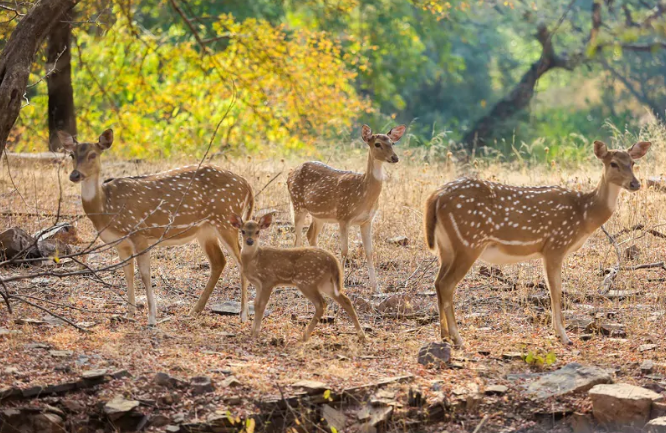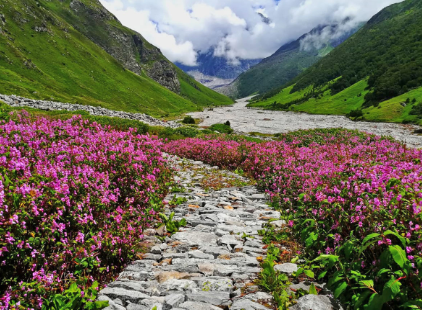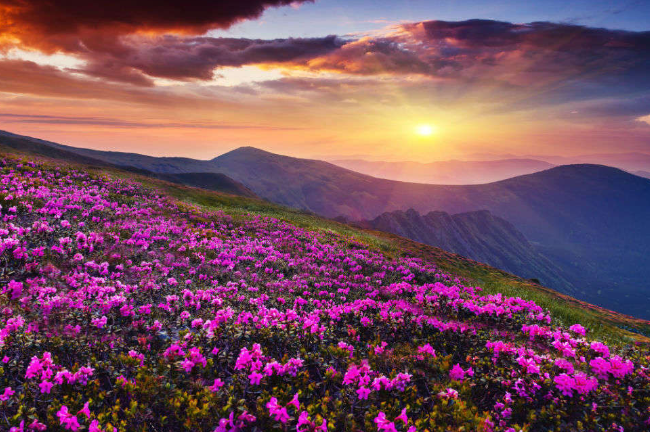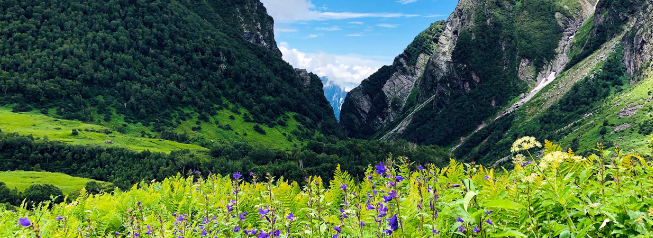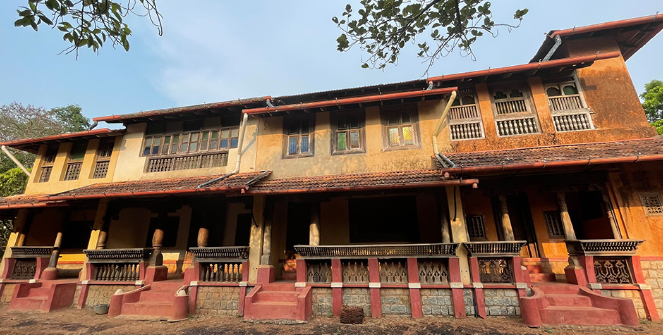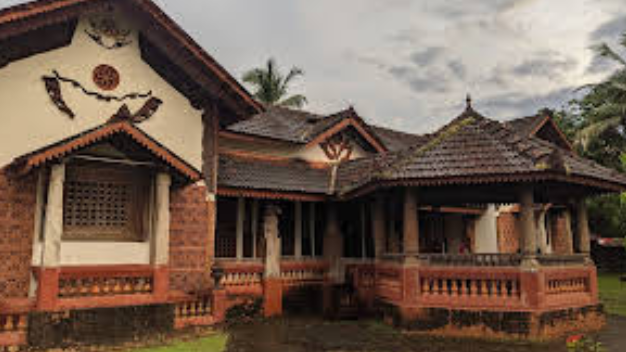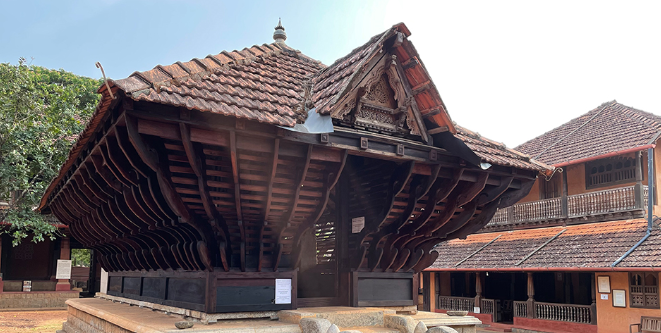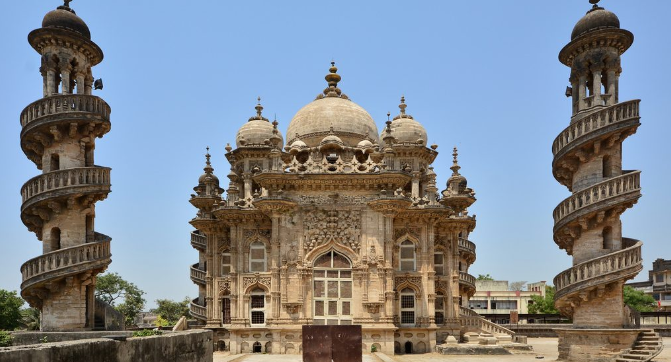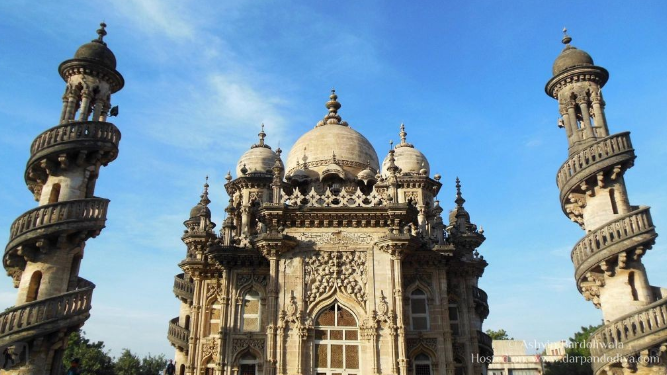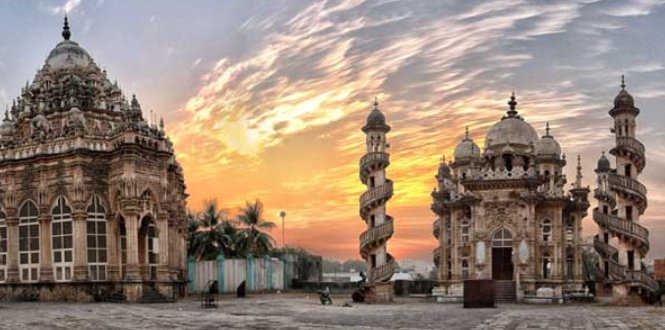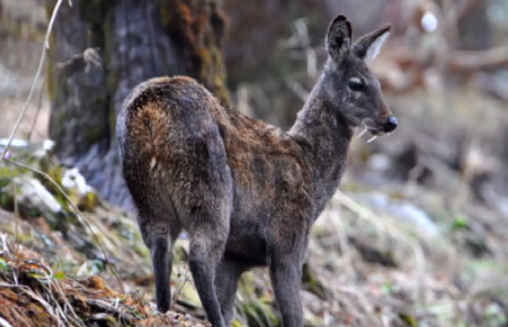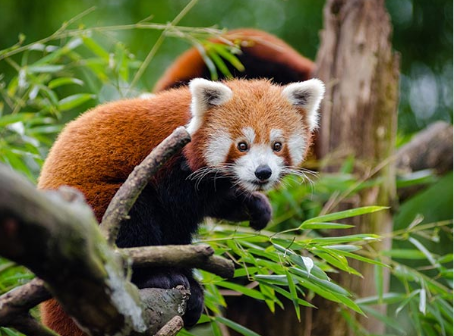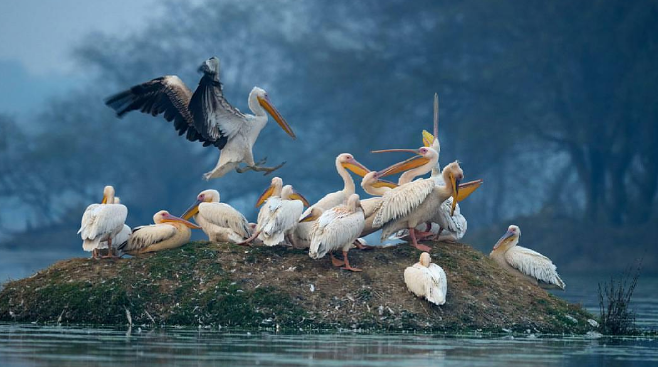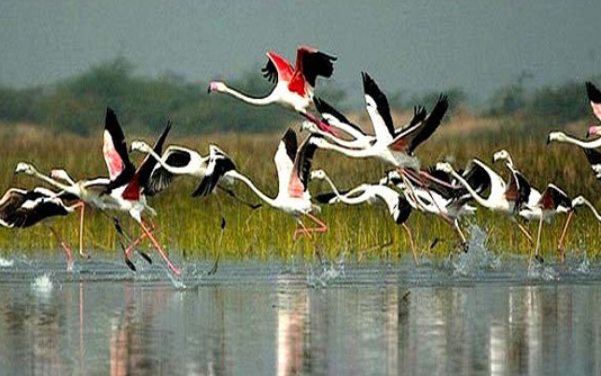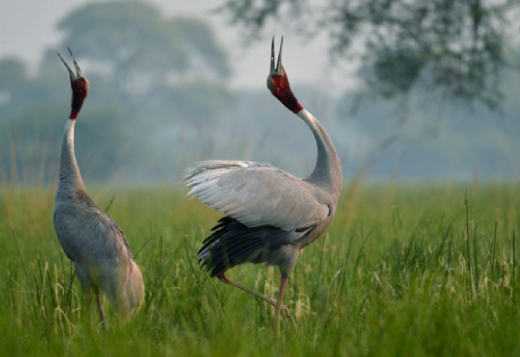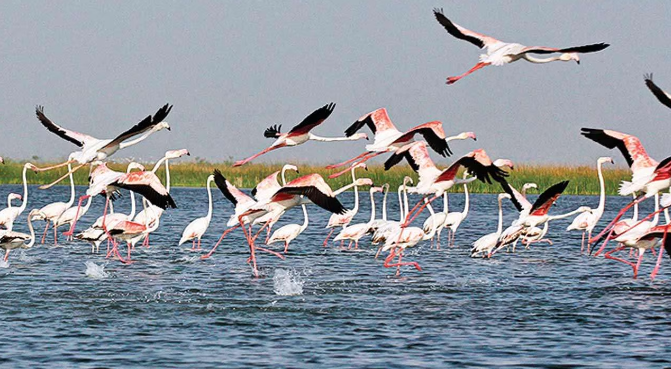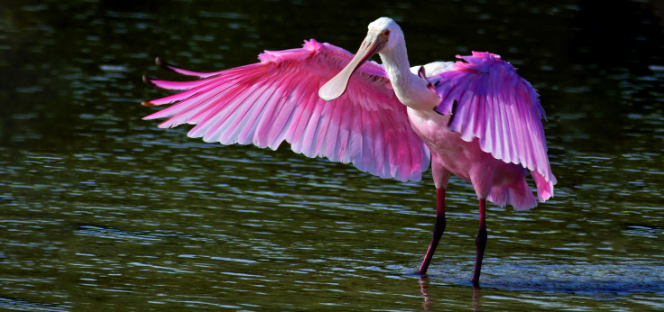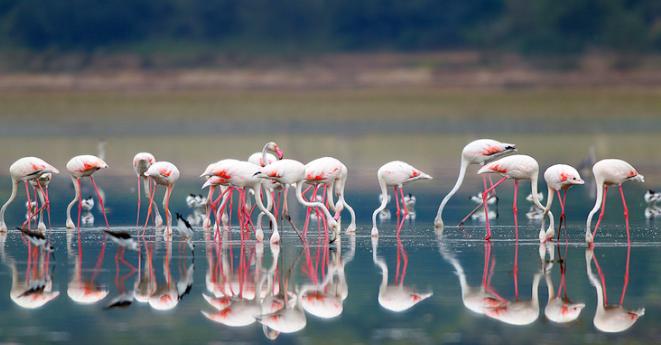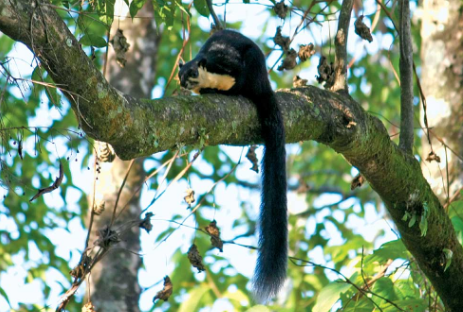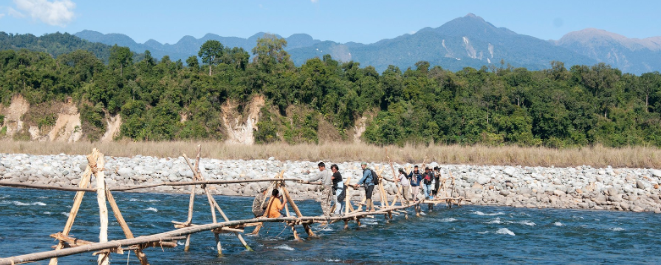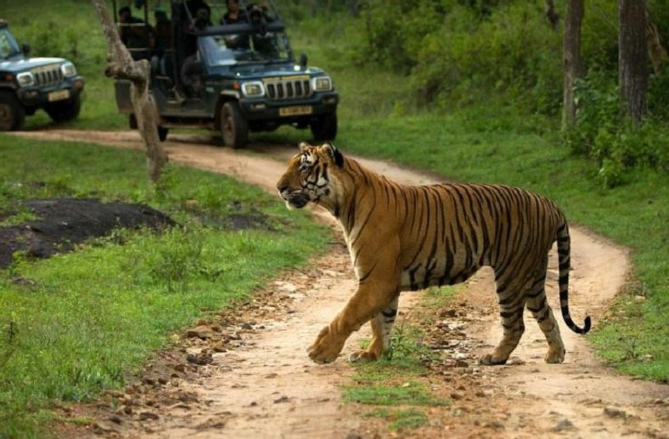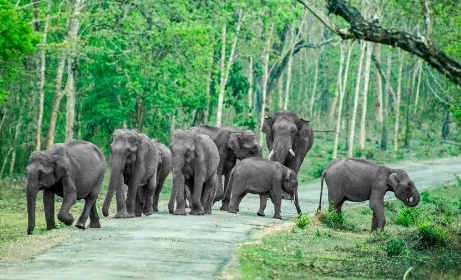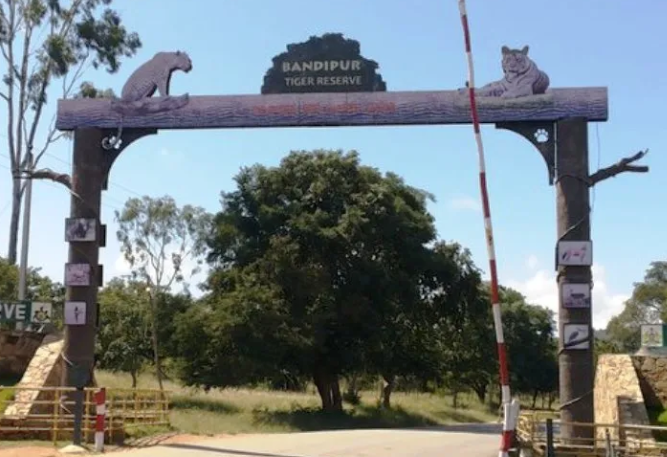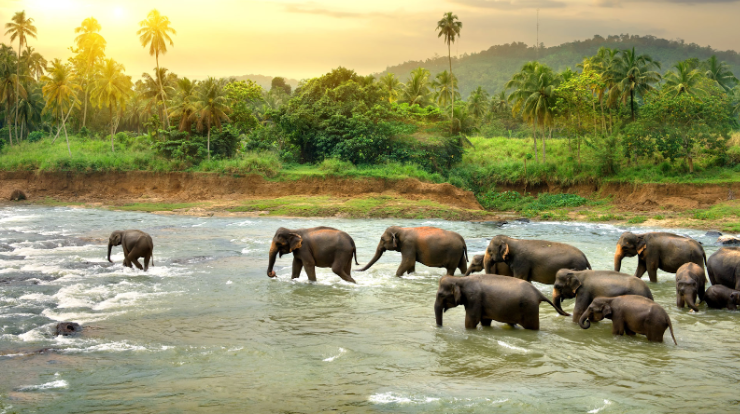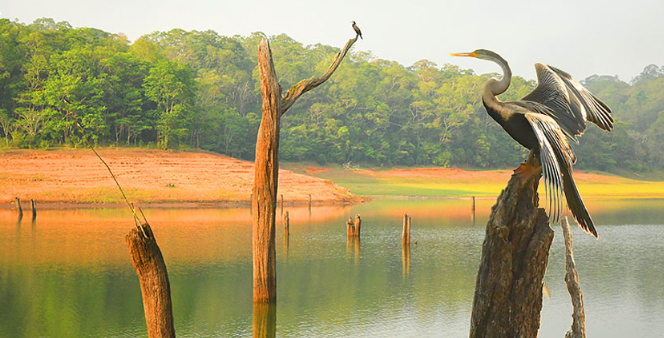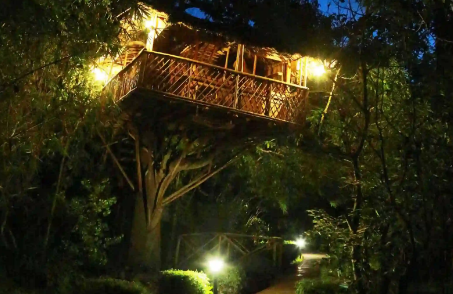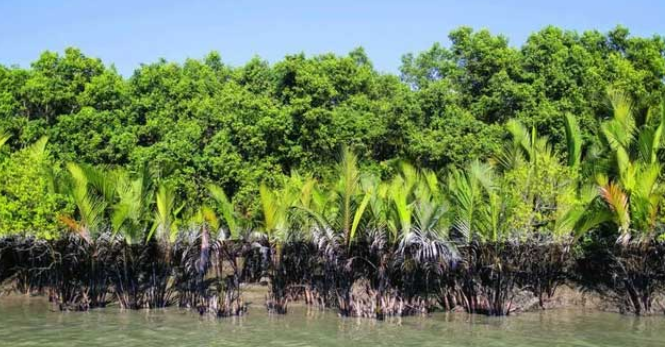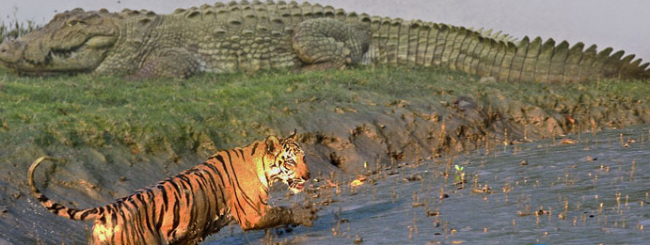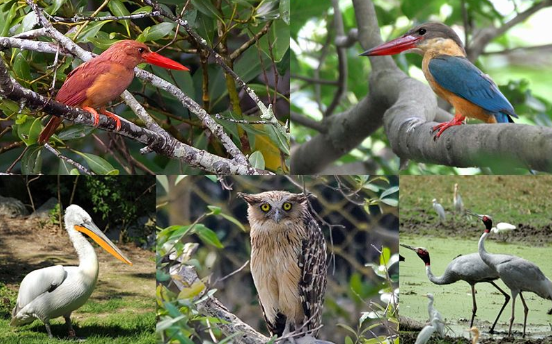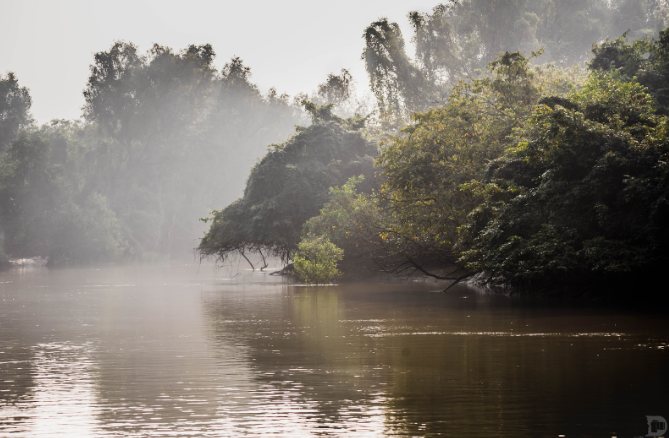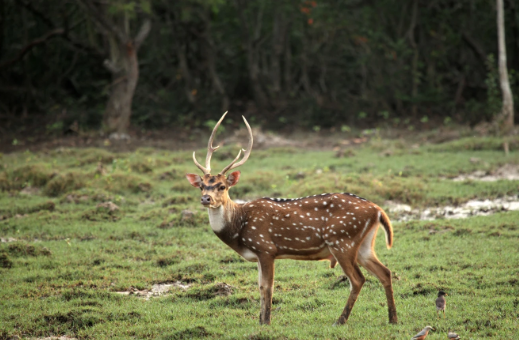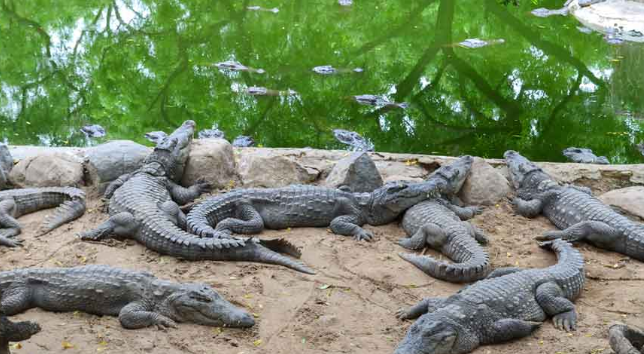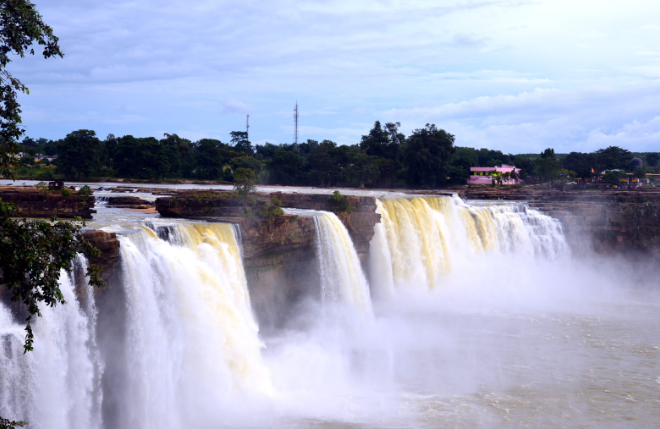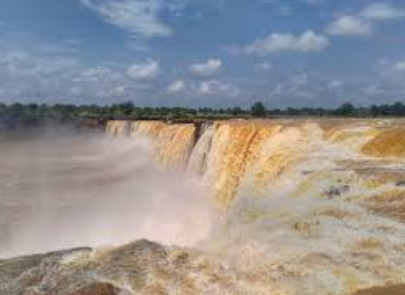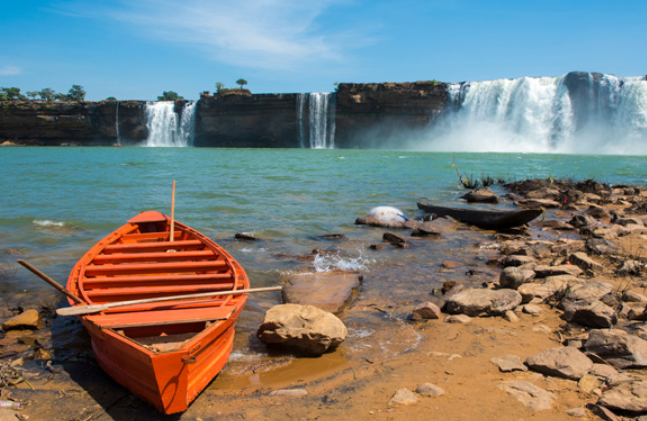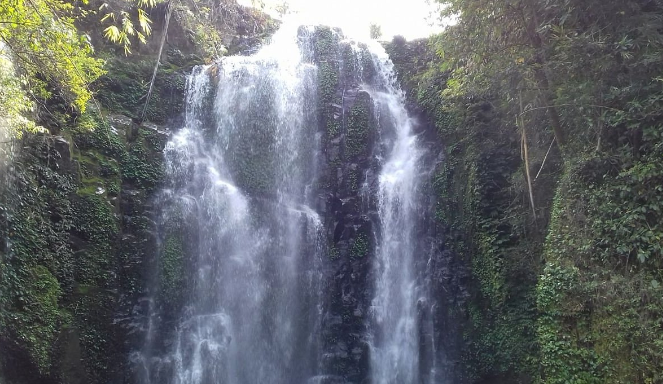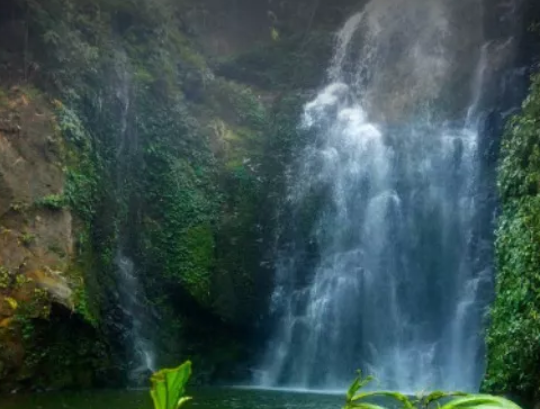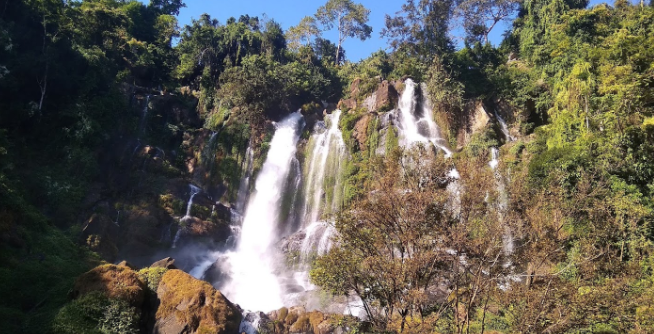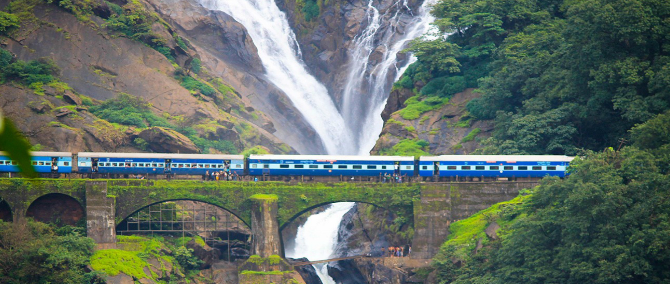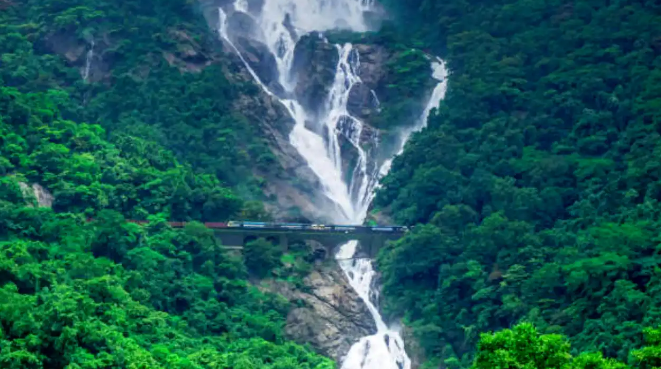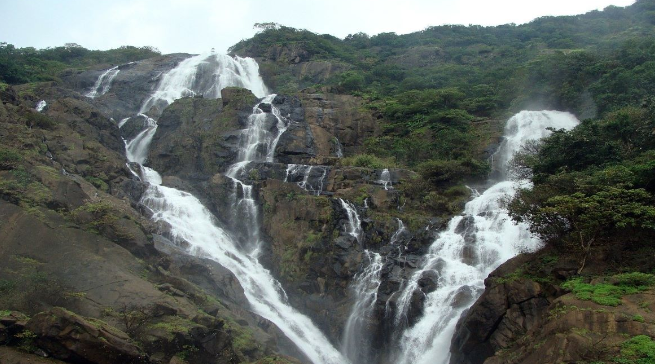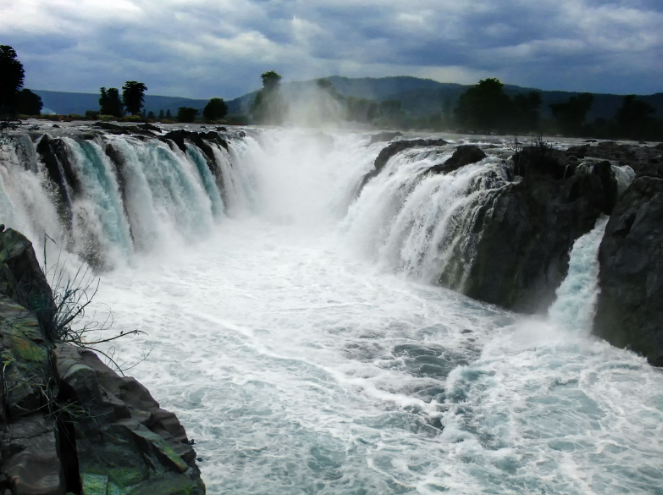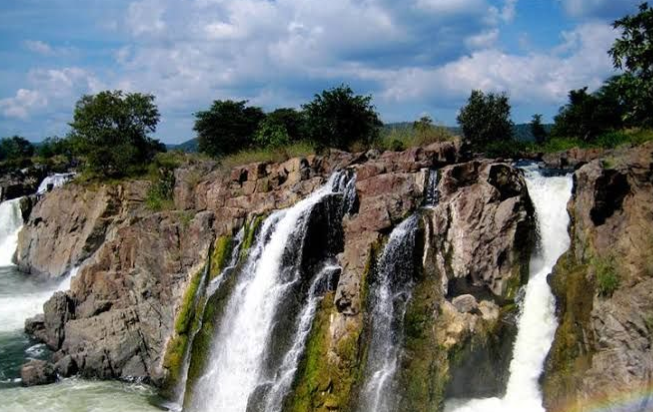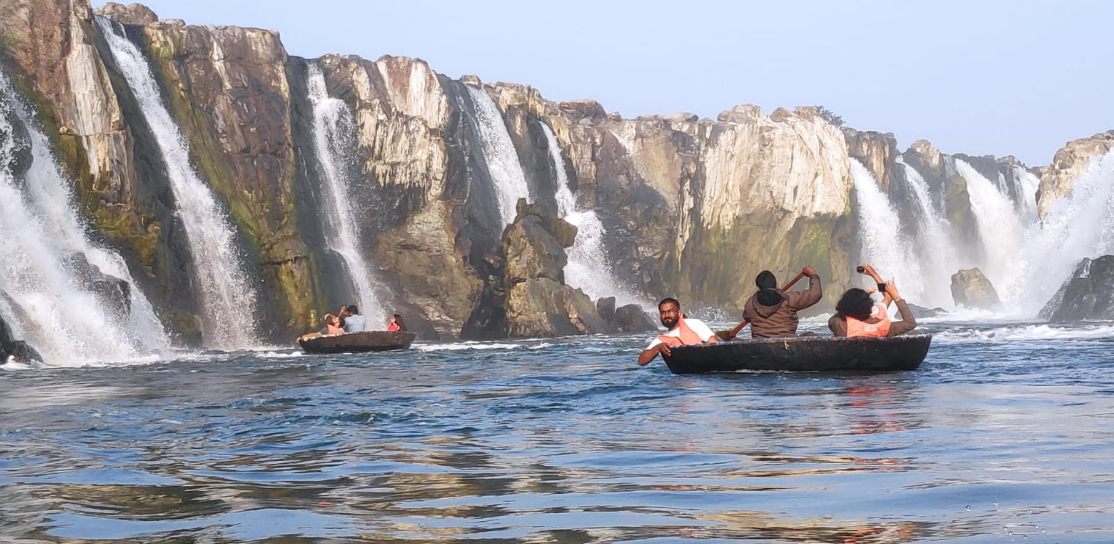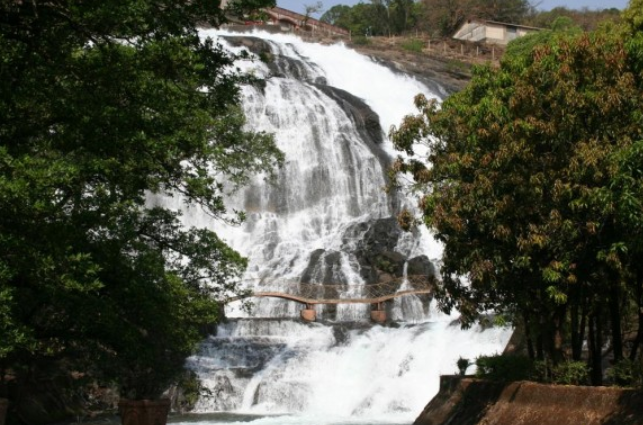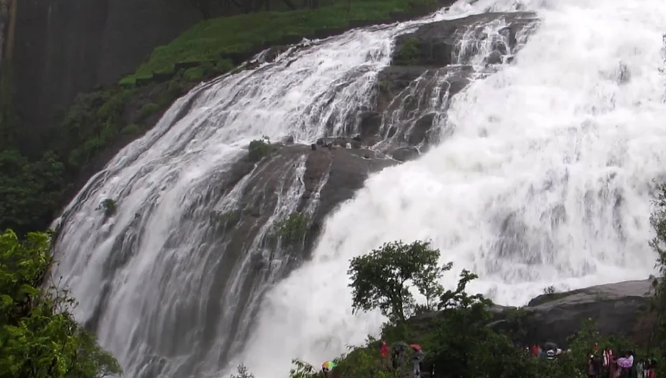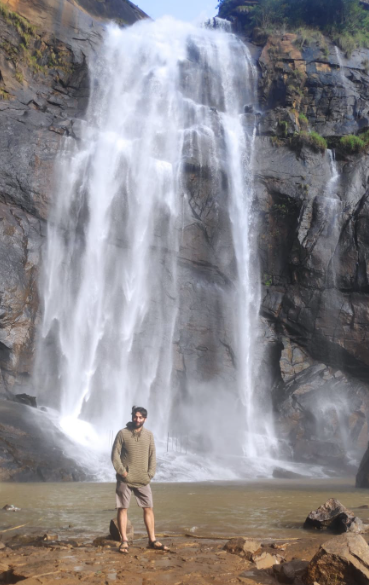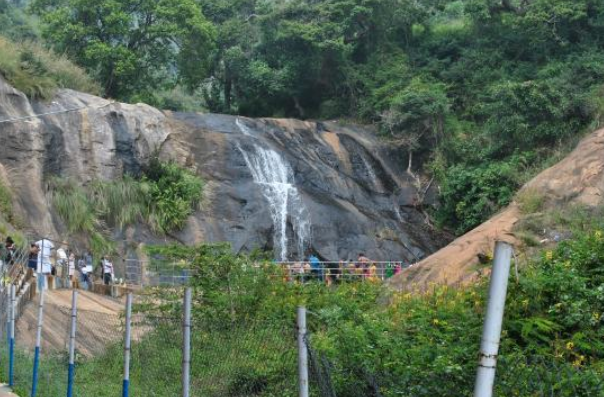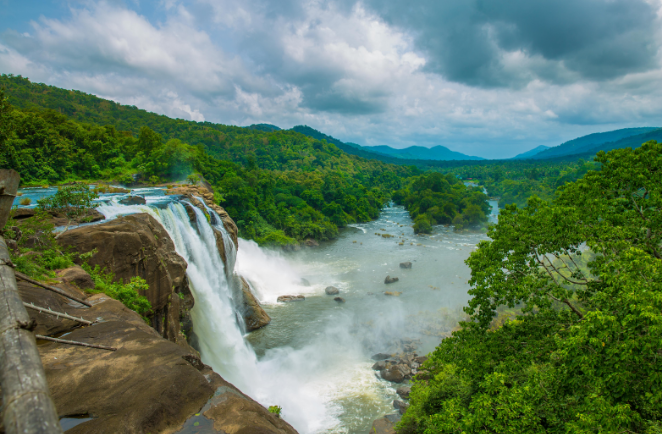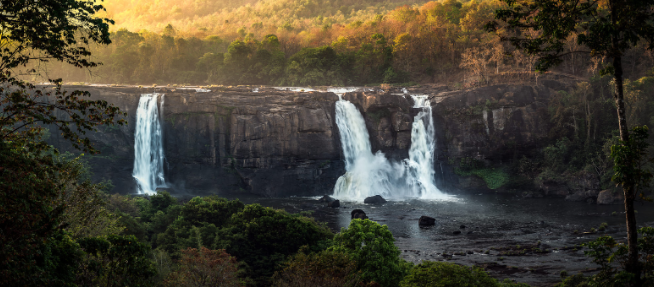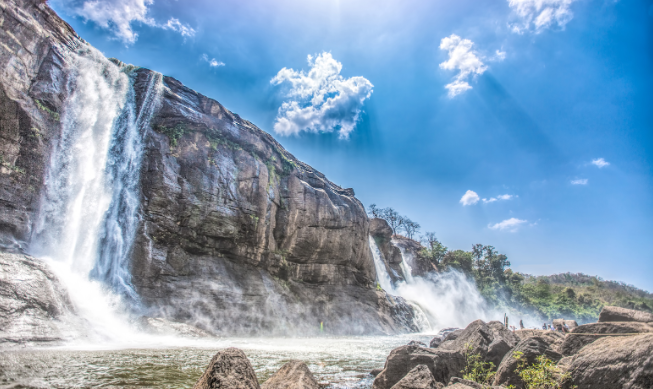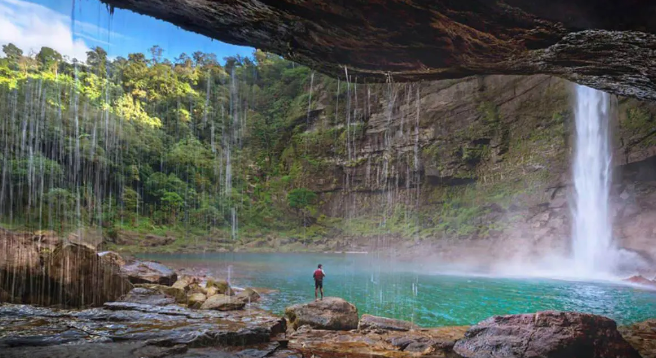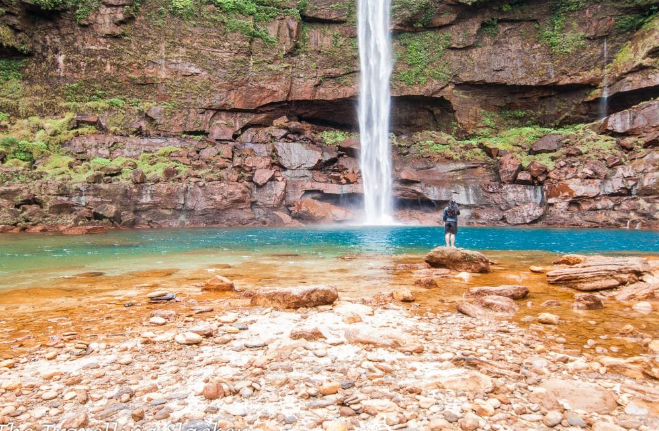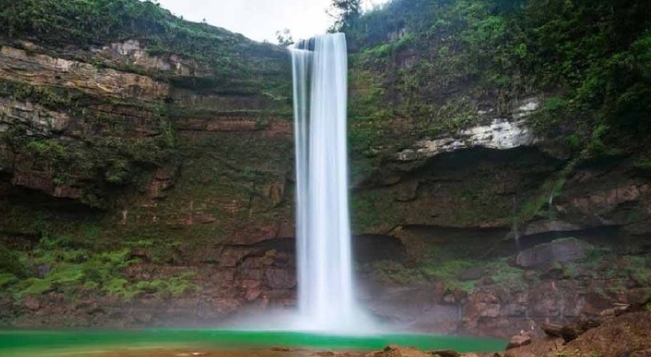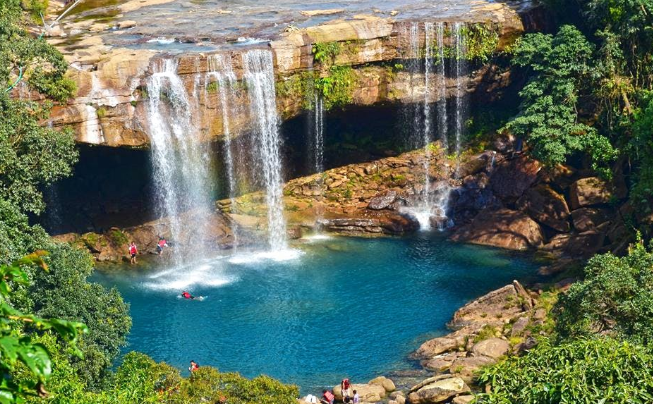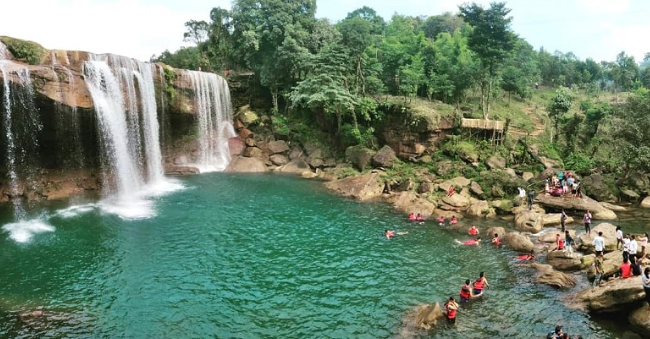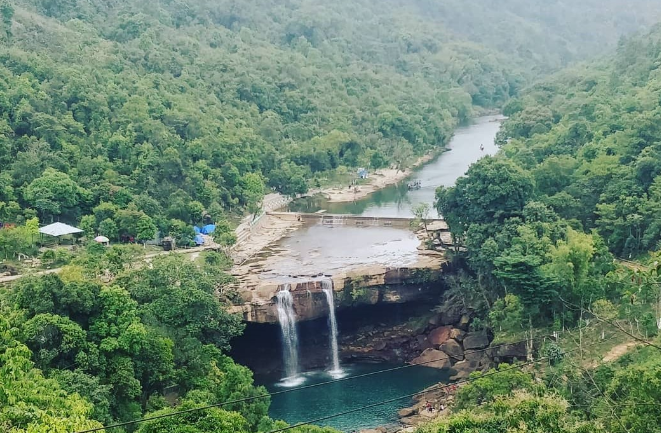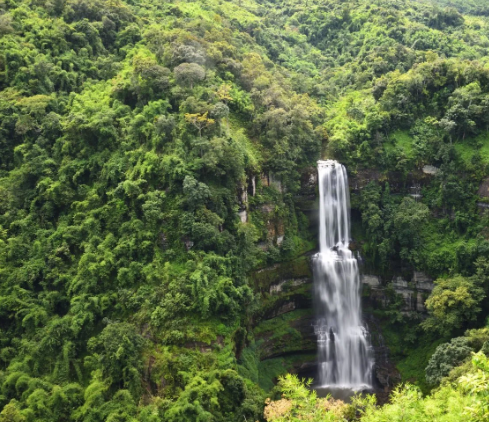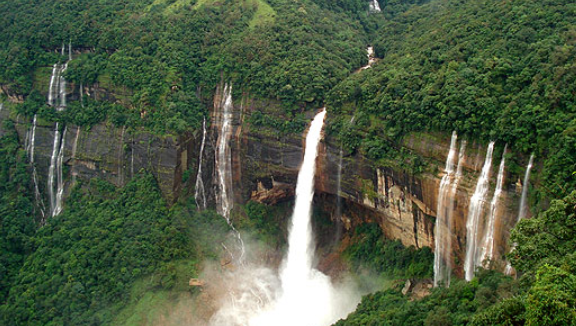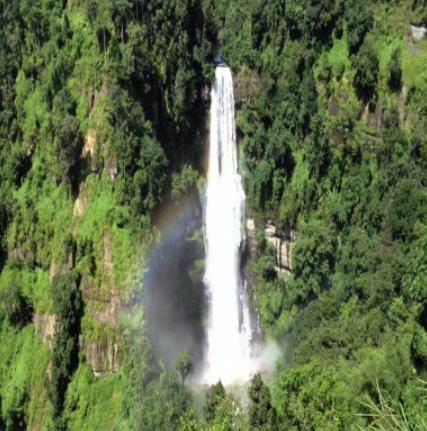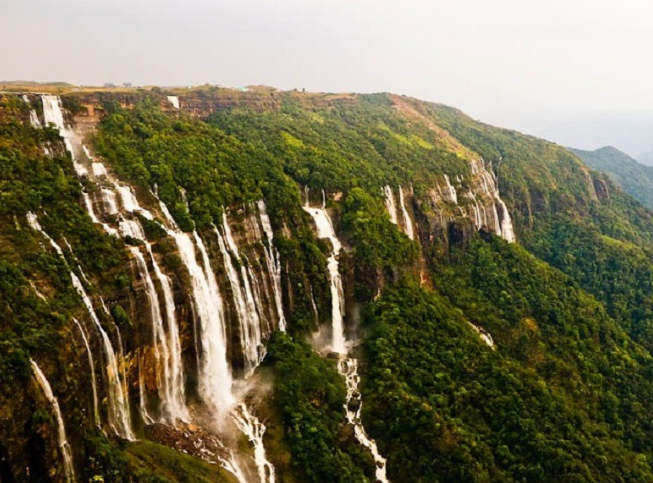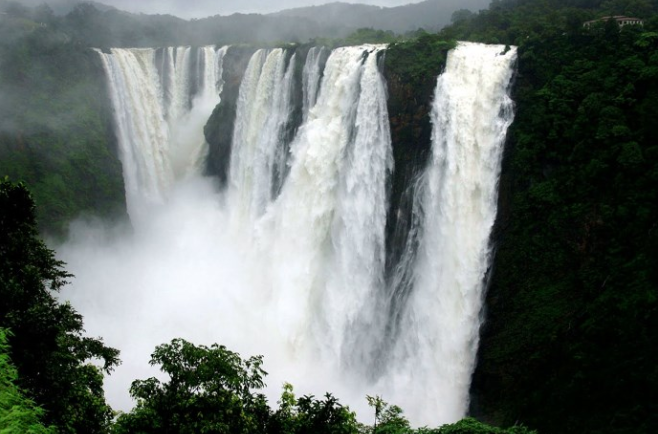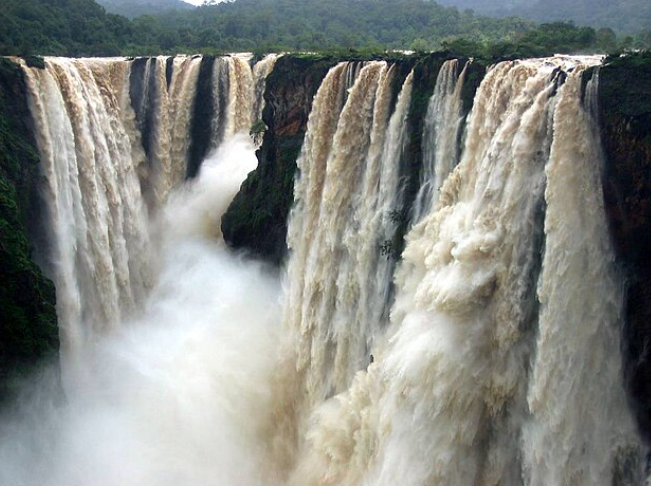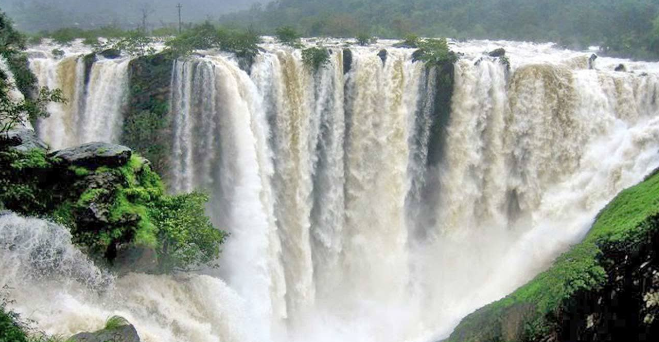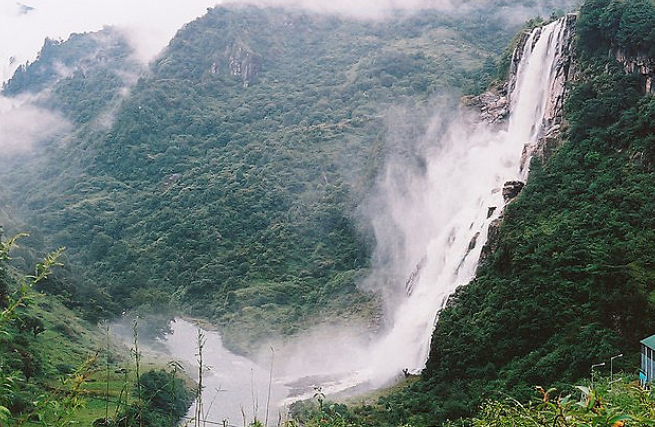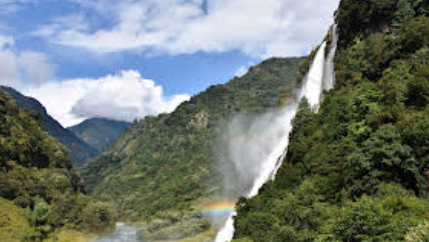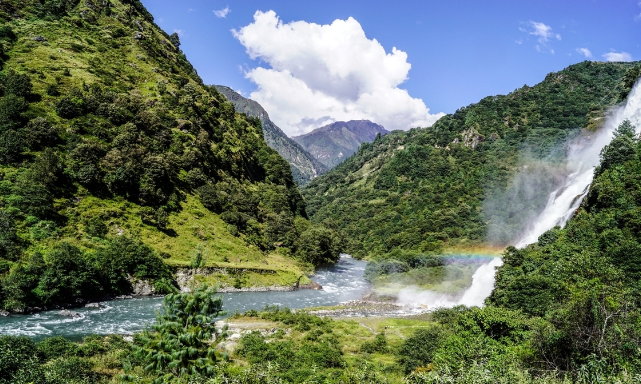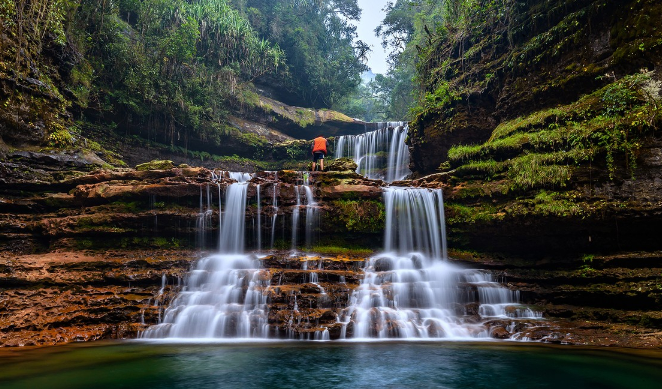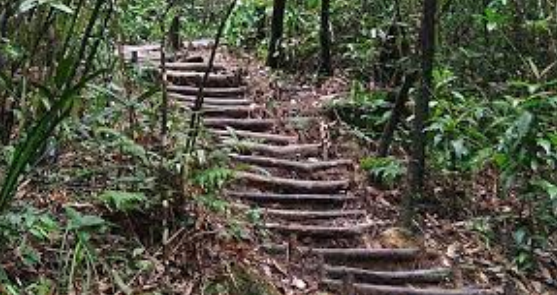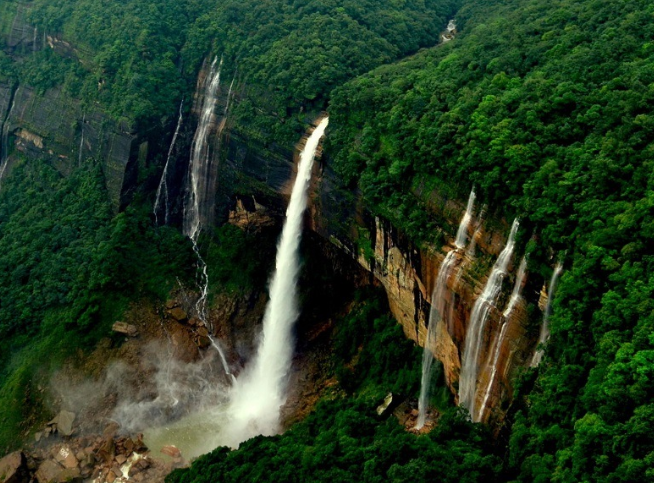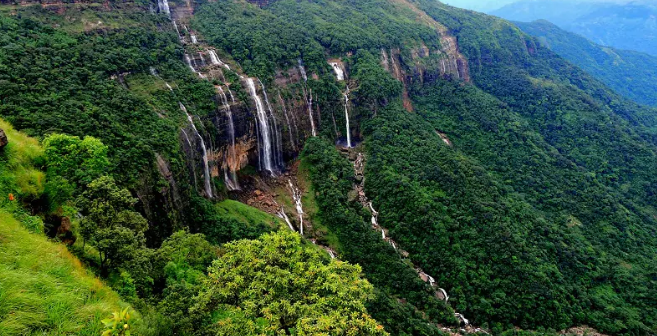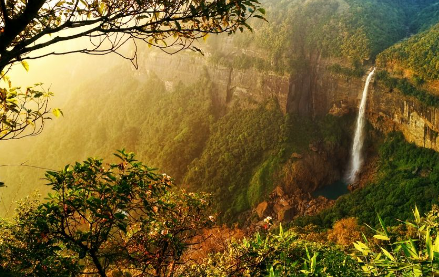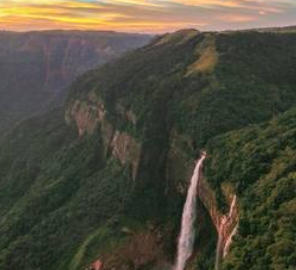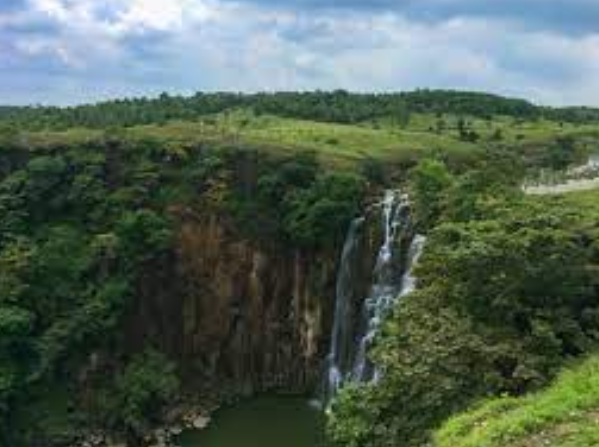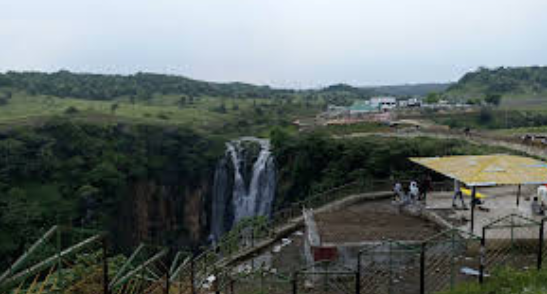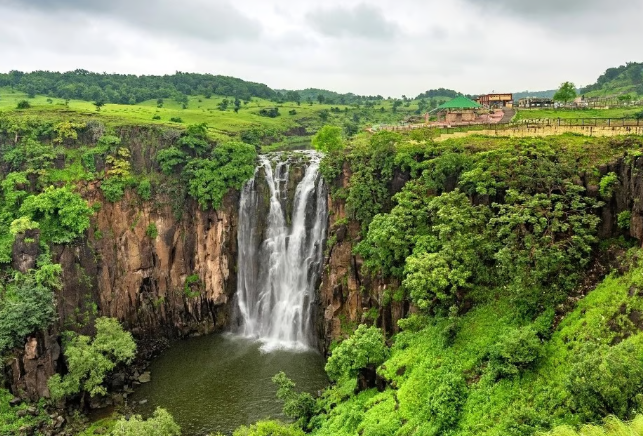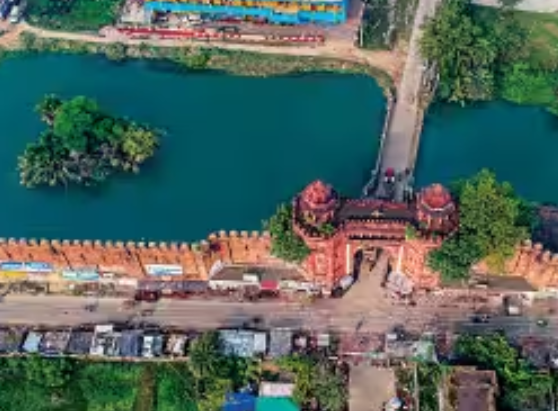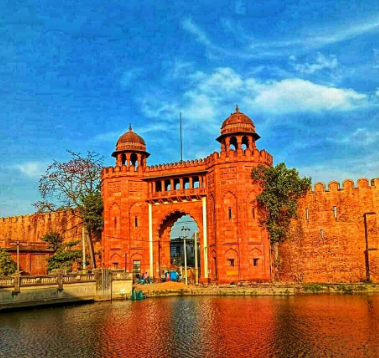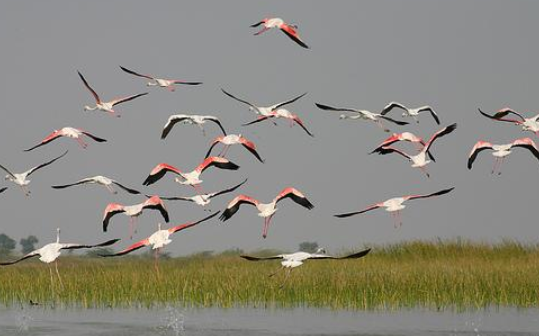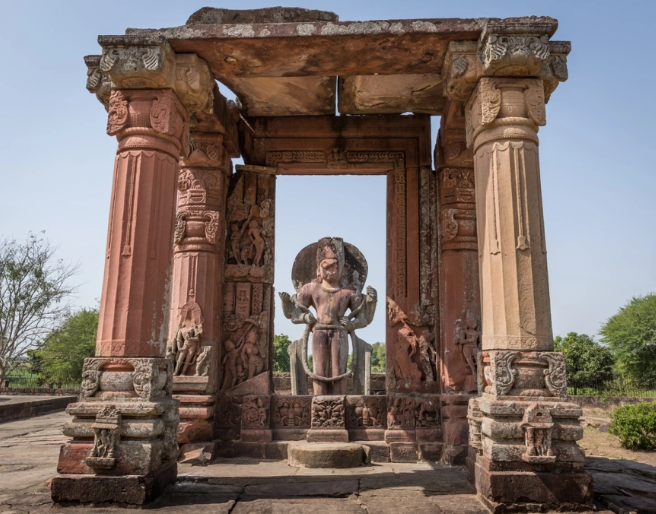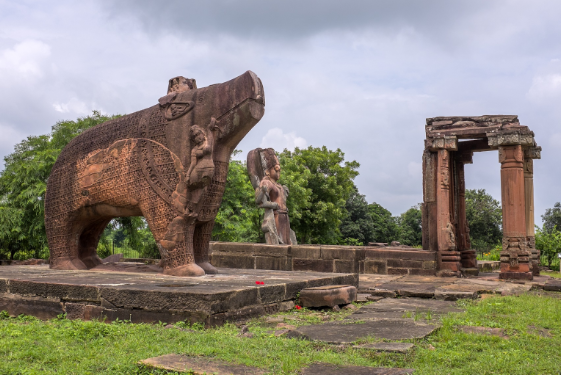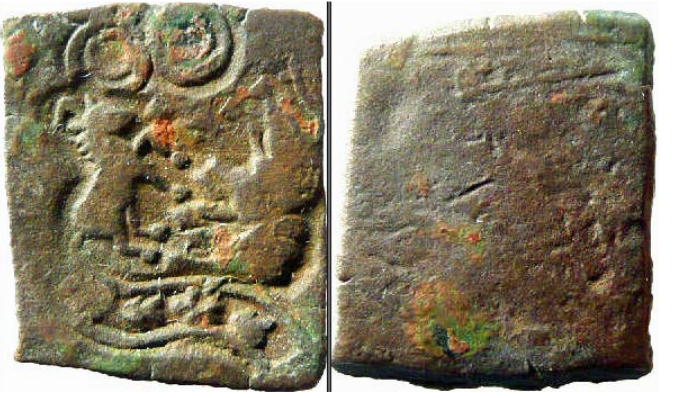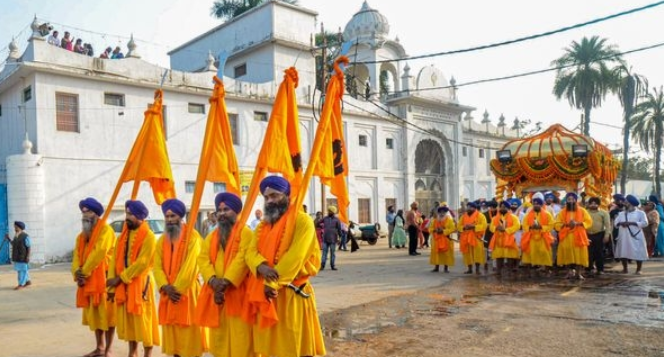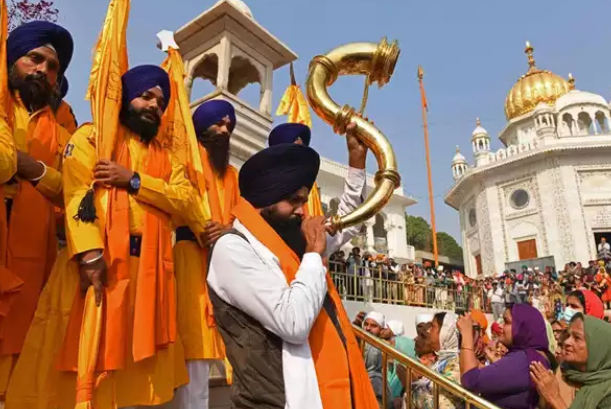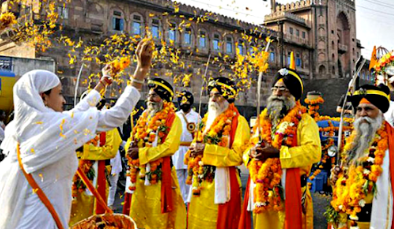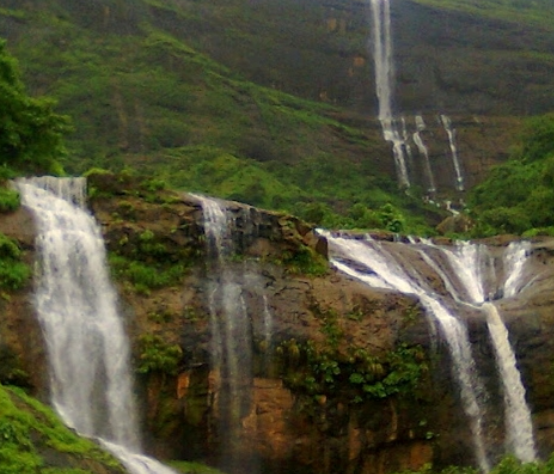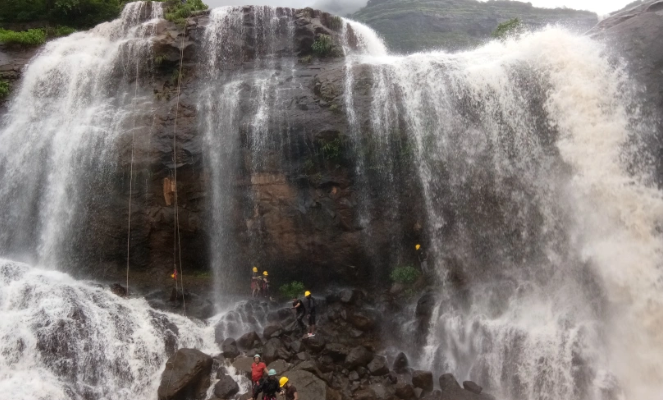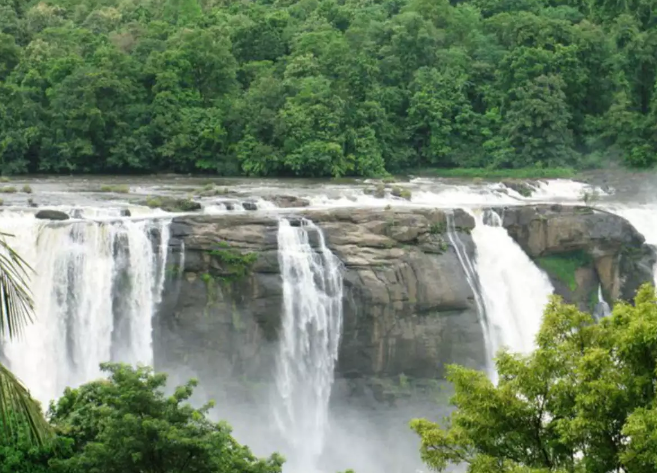
Record(s) found 0
A Famous destination for Mumbai and Pune people. Dense forests, waterfalls, dam alongside lakes, View Points are Major attractions of it.
<p style="box-sizing: border-box; margin-top: 0px; margin-bottom: 1rem; color: rgb(33, 37, 41); font-family: manrope, sans-serif; font-size: 16px; letter-spacing: 0.3px;"> Popular hill station close to Pune and Mumbai, Lonavla is the place to be during monsoons. With lots of waterfalls, lakes and hills around, Lonavala is frequented by all sorts of people, especially hikers and trekkers.</p> <p style="box-sizing: border-box; margin-top: 0px; margin-bottom: 1rem; color: rgb(33, 37, 41); font-family: manrope, sans-serif; font-size: 16px; letter-spacing: 0.3px;"> </p> <p style="box-sizing: border-box; margin-top: 0px; margin-bottom: 1rem; color: rgb(33, 37, 41); font-family: manrope, sans-serif; font-size: 16px; letter-spacing: 0.3px;"> Lonavala, being a part of the Sahyadri hills, offers an alluring and bewitching experience of nature's most gifted region. Surrounded by dense forests, waterfalls, dam alongside lakes, Lonavala is a Good place if you admire nature and want a gateway to having a soulful weekend or a good trip</p>
Dajipur wild life, near Karad is beatiful Wild life and ideal place for Wild life Photographers.
<p> <span style="font-size:16px;"><span style="font-family:arial,helvetica,sans-serif;"><span style="color: rgb(74, 74, 74); white-space: pre-wrap;">Dajipur Wildlife Sanctuary, now known as Radhanagari Wildlife Sanctuary, was declared as 1st wildlife sanctuary in Maharashtra in 1958. The sanctuary was also popular as “Bison Sanctuary”. The latest surveys recorded about 425 species of plants, 47 species of Mammals, 264 species of birds, 59 species of reptiles, and 66 species of butterflies in the sanctuary. The main attraction of the sanctuary is Indian Bison or gaur (Bos gaurus). </span></span></span></p> <p> </p> <p> <span style="font-size:16px;"><span style="font-family:arial,helvetica,sans-serif;"><span style="color: rgb(74, 74, 74); white-space: pre-wrap;">Few Options for Stay and Safari within Sanctuary are present. Even if you dont sight any wildlife, still its worth place for relaxed weekend gateway.</span></span></span></p>
Ambaghat is known as land of waterfall. Ambaghat is known for Heaviest rain in the state, and so, it gives you a series of waterfalls where you can enjoy Monsoon time.
<div style="box-sizing: border-box; color: rgb(68, 68, 68); font-family: Lato, Arial, Helvetica, sans-serif; font-size: 14px;"> <span style="box-sizing: border-box; font-family: "lucida sans unicode", "lucida grande", sans-serif;"> <u style="box-sizing: border-box;">Kerle waterfall</u> is my favourite one. 1.5km away from the main road, in the dense jungle, waterfall is accessible via small trail. being less known and offbeat, this waterfall is completely isolated from crowd and you can witness perfect waterfall moments. before reaching waterfall, you can see complete 360 degree lush green surroundings.</span></div> <div style="box-sizing: border-box; color: rgb(68, 68, 68); font-family: Lato, Arial, Helvetica, sans-serif; font-size: 14px;"> <span style="box-sizing: border-box; font-family: "lucida sans unicode", "lucida grande", sans-serif;"> </span></div> <div style="box-sizing: border-box; color: rgb(68, 68, 68); font-family: Lato, Arial, Helvetica, sans-serif; font-size: 14px;"> <span style="box-sizing: border-box; font-family: "lucida sans unicode", "lucida grande", sans-serif;">Also, 23km from Ambaghat is another Famous <u style="box-sizing: border-box;">Marleshwar Temple and waterfall</u>. this place is rich in history and aorund 1000 steps to be climbed to reach temple. Entry to this waterfall is restricted during monsoon, but glimpse of waterfall from far distance is also pleasant. even, ride from Ambaghat to marleshwar is also another attraction as route goes through green farms, river side and rular area.</span></div> <div style="box-sizing: border-box; color: rgb(68, 68, 68); font-family: Lato, Arial, Helvetica, sans-serif; font-size: 14px;"> <span style="box-sizing: border-box; font-family: "lucida sans unicode", "lucida grande", sans-serif;"> </span></div> <div style="box-sizing: border-box; color: rgb(68, 68, 68); font-family: Lato, Arial, Helvetica, sans-serif; font-size: 14px;"> <span style="box-sizing: border-box; font-family: "lucida sans unicode", "lucida grande", sans-serif;">Distance : 230km from Pune.</span></div> <div style="box-sizing: border-box; color: rgb(68, 68, 68); font-family: Lato, Arial, Helvetica, sans-serif; font-size: 14px;"> <span style="box-sizing: border-box; font-family: "lucida sans unicode", "lucida grande", sans-serif;">Stay : multiple options for stay available.</span></div>
Dudhiware is a special Dual waterfall as seen in picture. it runs as separate 2 streams and it is easy accessible from Main road.
<div style="box-sizing: border-box; color: rgb(68, 68, 68); font-family: Lato, Arial, Helvetica, sans-serif; font-size: 14px;"> <span style="font-size:16px;"><span style="font-family:arial,helvetica,sans-serif;"><span lucida="" sans="" style="box-sizing: border-box;">While going from Pune, once you take left from Kamshet, your feel for monsoon start immediately. Green Rolling hills, cloud covered peaks starts giving you bliss till you reach Dudhiware.</span></span></span></div> <div style="box-sizing: border-box; color: rgb(68, 68, 68); font-family: Lato, Arial, Helvetica, sans-serif; font-size: 14px;"> </div> <div style="box-sizing: border-box; color: rgb(68, 68, 68); font-family: Lato, Arial, Helvetica, sans-serif; font-size: 14px;"> <span style="font-size:16px;"><span style="font-family:arial,helvetica,sans-serif;"><span style="box-sizing: border-box;">Dudhiware is a special Dual waterfall as seen in picture. it runs as separate 2 streams and it is easy accessible from Main road. fwe people go there for waterfall rappelling adventure as well. Apart from that, Waterfall is completely safe to play in. very few people around, no food or dhaba at the base, but multiple food dhaba available on route.</span></span></span></div> <div style="box-sizing: border-box; color: rgb(68, 68, 68); font-family: Lato, Arial, Helvetica, sans-serif; font-size: 14px;"> <span style="font-size:16px;"><span style="font-family:arial,helvetica,sans-serif;"><span style="box-sizing: border-box;"> </span></span></span></div> <div style="box-sizing: border-box; color: rgb(68, 68, 68); font-family: Lato, Arial, Helvetica, sans-serif; font-size: 14px;"> <span style="font-size:16px;"><span style="font-family:arial,helvetica,sans-serif;"><span style="box-sizing: border-box;">Distance: 65km from Pune.</span></span></span></div>
Madheghat waterfall is seasonal , but huge waterfall, situated in the reason of Torna Road.
<div style="box-sizing: border-box; color: rgb(68, 68, 68); font-family: Lato, Arial, Helvetica, sans-serif; font-size: 14px;"> <span style="font-size:16px;"><span style="font-family:arial,helvetica,sans-serif;"><span style="box-sizing: border-box;">In recent time, Madheghat has become very famous as Road condition till that waterfall has improved. road ends to the flat platue on the other side of which Konkan is seen. if you are adventure lover, then you can a trek of Upande ghat to madheghat trek of 3.5 hrs. during trek, you have to cross multiple water streams, River and a dense Jungle. if you want to skip trekking, then feel free to direct land at waterfall with 10 mins of jungle walk.</span></span></span></div> <div style="box-sizing: border-box; color: rgb(68, 68, 68); font-family: Lato, Arial, Helvetica, sans-serif; font-size: 14px;"> <span style="font-size:16px;"><span style="font-family:arial,helvetica,sans-serif;"><span style="box-sizing: border-box;"> </span></span></span></div> <div style="box-sizing: border-box; color: rgb(68, 68, 68); font-family: Lato, Arial, Helvetica, sans-serif; font-size: 14px;"> <span style="font-size:16px;"><span style="font-family:arial,helvetica,sans-serif;"><span style="box-sizing: border-box;">Playing in waterfall is allowed, but it depends on water and rain pouring on specific day. near the parking, 2-3 local dhaba avaialble for food. Expect crown at this waterfall.</span></span></span></div> <div style="box-sizing: border-box; color: rgb(68, 68, 68); font-family: Lato, Arial, Helvetica, sans-serif; font-size: 14px;"> <span style="font-size:16px;"><span style="font-family:arial,helvetica,sans-serif;"><span style="box-sizing: border-box;"> </span></span></span></div> <div style="box-sizing: border-box; color: rgb(68, 68, 68); font-family: Lato, Arial, Helvetica, sans-serif; font-size: 14px;"> <span style="font-size:16px;"><span style="font-family:arial,helvetica,sans-serif;"><span style="box-sizing: border-box;">Distance from Pune : 65km.</span></span></span></div>
Amritkund Waterfall in the region of Talegao, is special waterfall because of it easily access and naturally carved water stream.
<div style="box-sizing: border-box; color: rgb(68, 68, 68); font-family: Lato, Arial, Helvetica, sans-serif; font-size: 14px;"> <span style="font-size:16px;"><span style="font-family:arial,helvetica,sans-serif;"><span lucida="" sans="" style="box-sizing: border-box;">This Route has become very famous for ride as it is close to Pune and resides between Mumbai and Pune. once you take a right turn from Kanhe phata on Pune lonavla highway, series of waterfall start at every 100 mtr. Avoid initial few waterfall as it most of the crowd stops at the initial waterfalls. Go till bendewadi. complete route passes through green farms, parallel to backwater dam and green hills of Sayhadri. </span></span></span></div> <div style="box-sizing: border-box; color: rgb(68, 68, 68); font-family: Lato, Arial, Helvetica, sans-serif; font-size: 14px;"> </div> <div style="box-sizing: border-box; color: rgb(68, 68, 68); font-family: Lato, Arial, Helvetica, sans-serif; font-size: 14px;"> <span style="font-size:16px;"><span style="font-family:arial,helvetica,sans-serif;"><span style="box-sizing: border-box;">This waterfall is very different from others in a way, it is completely safe, it offers very different view of cave, waterfall and you can take special water massage, therapy as well. best part, only 5 mins water through farm to reach waterfall. Expect descent crowd.</span></span></span></div> <div style="box-sizing: border-box; color: rgb(68, 68, 68); font-family: Lato, Arial, Helvetica, sans-serif; font-size: 14px;"> </div> <div style="box-sizing: border-box; color: rgb(68, 68, 68); font-family: Lato, Arial, Helvetica, sans-serif; font-size: 14px;"> <span style="font-size:16px;"><span style="font-family:arial,helvetica,sans-serif;"><span style="box-sizing: border-box;">Distance : 70km from Pune. </span></span></span></div>
Daryaghat waterfall, Junnar is one of the finest location near Pune. not only for its waterfall, but for its Route till base is also wonderful.
<div style="box-sizing: border-box; color: rgb(68, 68, 68); font-family: Lato, Arial, Helvetica, sans-serif; font-size: 14px;"> <span lucida="" sans="" style="box-sizing: border-box;">Its an off beat monsoon destination. Not so known or so popular in tourists. The waterfall and the V-shaped valley are two major attractions in Darya ghat. you will see some tourists, but due to number of waterfalls, you wont find it crowded and can always find your space to get drench. </span></div> <div style="box-sizing: border-box; color: rgb(68, 68, 68); font-family: Lato, Arial, Helvetica, sans-serif; font-size: 14px;"> </div> <div style="box-sizing: border-box; color: rgb(68, 68, 68); font-family: Lato, Arial, Helvetica, sans-serif; font-size: 14px;"> <span style="box-sizing: border-box; font-family: "lucida sans unicode", "lucida grande", sans-serif;">Route : Pune - Manchar - Junnar - Daryaghat. after Junnar, route is very scenic for drive.</span></div> <div style="box-sizing: border-box; color: rgb(68, 68, 68); font-family: Lato, Arial, Helvetica, sans-serif; font-size: 14px;"> </div> <div style="box-sizing: border-box; color: rgb(68, 68, 68); font-family: Lato, Arial, Helvetica, sans-serif; font-size: 14px;"> <span style="box-sizing: border-box; font-family: "lucida sans unicode", "lucida grande", sans-serif;">Total Distance : 120 km from Pune. </span></div>
One of the 30 districts of Karnataka, Hassan has a vibrant and eventful history. In the 3rd Century BC, it was under the reign of the Mouryas of the north. Later, the Kadambas, The Chalukyas, The Gangas, The Hoysalas, and the Vijayanagar empires ruled it.
Formerly known as Dwarasamudra, Halebeedu was the ancient capital of the Hoysalas. A mere 17 km away from Belur, Halebeedu means “ old ruins“. Ruled by the Hoysala dynasty for over 200 years, the rulers built spectacular Hindu and Jain temples. However, In the 14th century, the armies of Alauddin Khilji and Muhammad Tughlak defeated the Hoysalas and raided their empire. They stole the wealth and pillaged the city to the extent that it fell into ruins and never recovered.
A town in the Hassan district, Karnataka, Belur is known for the Chennakeshava temple. The scenic routes, the marvelous temples, and the courteous people are sure to melt anyone's heart. A town in the Hassan district, Karnataka, Belur is known for the Chennakeshava temple. The scenic routes, the marvelous temples, and the courteous people are sure to melt anyone's heart.
<p dir="ltr" style="line-height:1.38;margin-top:0pt;margin-bottom:0pt;"> <span id="docs-internal-guid-869b9ebb-7fff-7eff-6df8-f5972266c962"><span style="font-size: 13pt; font-family: "Open Sans", sans-serif; color: rgb(0, 0, 0); background-color: transparent; font-variant-numeric: normal; font-variant-east-asian: normal; font-variant-alternates: normal; vertical-align: baseline; white-space-collapse: preserve;">Located right along the banks of the Yagachi River, Belur is an undiscovered jewel for travelers. It was once the capital of the mighty Hoysala empire. Here are some places you can explore when visiting Belur.</span></span></p> <p> </p> <h3 dir="ltr" style="line-height: 1.44; margin-top: 0pt; margin-bottom: 0pt; padding: 15pt 0pt;"> <span id="docs-internal-guid-869b9ebb-7fff-7eff-6df8-f5972266c962"><span style="font-size: 16pt; font-family: "Open Sans", sans-serif; color: rgb(0, 0, 0); background-color: transparent; font-weight: 400; font-variant-numeric: normal; font-variant-east-asian: normal; font-variant-alternates: normal; text-decoration-line: underline; text-decoration-skip-ink: none; vertical-align: baseline; white-space-collapse: preserve;">The Chennakeshava Temple</span></span></h3> <p dir="ltr" style="line-height:1.38;margin-top:0pt;margin-bottom:0pt;"> <span id="docs-internal-guid-869b9ebb-7fff-7eff-6df8-f5972266c962"><span style="font-size: 13pt; font-family: "Open Sans", sans-serif; color: rgb(0, 0, 0); background-color: transparent; font-variant-numeric: normal; font-variant-east-asian: normal; font-variant-alternates: normal; vertical-align: baseline; white-space-collapse: preserve;">One of the most sought-after attractions in Belur, </span><span style="font-size: 13.5pt; font-family: Arial, sans-serif; color: rgb(0, 0, 0); background-color: transparent; font-variant-numeric: normal; font-variant-east-asian: normal; font-variant-alternates: normal; vertical-align: baseline; white-space-collapse: preserve;">The Chennakeshava Temple </span><span style="font-size: 13pt; font-family: "Open Sans", sans-serif; color: rgb(0, 0, 0); background-color: transparent; font-variant-numeric: normal; font-variant-east-asian: normal; font-variant-alternates: normal; vertical-align: baseline; white-space-collapse: preserve;">is dedicated to Lord Vijayanarayana, one of the 24 incarnations of Lord Vishnu. Built in the 12th century by King Vishnuvardhana, it was a way to commemorate the victory of the Hoysala dynasty in the Battle of Talakad against the Chola dynasty. The temple depicts various scenes from the Mahabharata and Ramayana in the form of inscriptions and sculptures.</span></span></p> <p dir="ltr" style="line-height:1.38;margin-top:0pt;margin-bottom:0pt;"> <span id="docs-internal-guid-869b9ebb-7fff-7eff-6df8-f5972266c962"><span style="font-size: 13pt; font-family: "Open Sans", sans-serif; color: rgb(0, 0, 0); background-color: transparent; font-variant-numeric: normal; font-variant-east-asian: normal; font-variant-alternates: normal; vertical-align: baseline; white-space-collapse: preserve;"><span style="border:none;display:inline-block;overflow:hidden;width:577px;height:348px;"><img height="348" src="https://lh6.googleusercontent.com/VSfvmSw4oFVpotMKwUDZhtmaEoFoqUIEIs3MjRJ5tVAKA9w1gbVwaEf9YKQc6vZ1GB2N023kTcyCEnWfihPuPxTsIl8jEW1UM29TaHnm5rwm2INgECGIhk4vF1XqwKrCxGI5Yw1SrMYjz23iasQoPdI" style="margin-left:0px;margin-top:0px;" width="577" /></span></span></span></p> <p> </p> <h2 dir="ltr" style="line-height: 1.44; margin-top: 0pt; margin-bottom: 0pt; padding: 15pt 0pt;"> <span id="docs-internal-guid-869b9ebb-7fff-7eff-6df8-f5972266c962"><span style="font-size: 16pt; font-family: "Open Sans", sans-serif; color: rgb(0, 0, 0); background-color: transparent; font-weight: 400; font-variant-numeric: normal; font-variant-east-asian: normal; font-variant-alternates: normal; text-decoration-line: underline; text-decoration-skip-ink: none; vertical-align: baseline; white-space-collapse: preserve;">Veeranarayana Temple</span></span></h2> <p dir="ltr" style="line-height:1.38;margin-top:0pt;margin-bottom:0pt;"> <span id="docs-internal-guid-869b9ebb-7fff-7eff-6df8-f5972266c962"><span style="font-size: 13pt; font-family: "Open Sans", sans-serif; color: rgb(0, 0, 0); background-color: transparent; font-variant-numeric: normal; font-variant-east-asian: normal; font-variant-alternates: normal; vertical-align: baseline; white-space-collapse: preserve;">Famous for its exquisite interiors, this temple was built by King Veera Ballala II. It depicts the various avatars of Lord Vishnu in the form of sculptures and inscriptions. This style of architecture is known as Trikuta (three-shrined temple) wherein The central shrine is dedicated to Lord Narayana, the southern shrine is a big image of Venugopala, and the northern shrine is a tribute to Yoganarasimha.</span><span style="font-size: 16pt; font-family: "Open Sans", sans-serif; color: rgb(0, 0, 0); background-color: transparent; font-variant-numeric: normal; font-variant-east-asian: normal; font-variant-alternates: normal; text-decoration-line: underline; text-decoration-skip-ink: none; vertical-align: baseline; white-space-collapse: preserve;"><span style="border:none;display:inline-block;overflow:hidden;width:461px;height:288px;"><img height="288" src="https://lh6.googleusercontent.com/Hc9TuaslS9HJ7tEdTD3AqHoLRFj_SxQyobzDZRlC1tILG-C4irsaWQTT4aIr5cbS9elRS5h9Y5JtmZsSyMoDBpsQd-NlpOlIXWOpHSrssELxa1tjK75vw6ahkTITofoDQIQ_DXHZAm2wlUpzky3jXCo" style="margin-left:0px;margin-top:0px;" width="461" /></span></span></span></p> <h2 dir="ltr" style="line-height: 1.44; margin-top: 0pt; margin-bottom: 0pt; padding: 15pt 0pt;"> <span id="docs-internal-guid-869b9ebb-7fff-7eff-6df8-f5972266c962"><span style="font-size: 16pt; font-family: "Open Sans", sans-serif; color: rgb(0, 0, 0); background-color: transparent; font-weight: 400; font-variant-numeric: normal; font-variant-east-asian: normal; font-variant-alternates: normal; text-decoration-line: underline; text-decoration-skip-ink: none; vertical-align: baseline; white-space-collapse: preserve;">Kappe Chennigaraya Temple</span></span></h2> <p dir="ltr" style="line-height:1.38;margin-top:0pt;margin-bottom:0pt;"> <span id="docs-internal-guid-869b9ebb-7fff-7eff-6df8-f5972266c962"><span style="font-size: 13pt; font-family: "Open Sans", sans-serif; color: rgb(0, 0, 0); background-color: transparent; font-variant-numeric: normal; font-variant-east-asian: normal; font-variant-alternates: normal; vertical-align: baseline; white-space-collapse: preserve;">Located in the Veeranarayana Temple complex, this temple was constructed by Shantala Devi. This temple is dedicated to Vijayanarayana an incarnation of Lord Vishnu. There are various shrines situated on the premises dedicated to different gods.</span><span style="font-size: 14.5pt; font-family: "Open Sans", sans-serif; color: rgb(0, 0, 0); background-color: transparent; font-variant-numeric: normal; font-variant-east-asian: normal; font-variant-alternates: normal; vertical-align: baseline; white-space-collapse: preserve;"> </span></span></p> <h2 dir="ltr" style="line-height: 1.44; margin-top: 0pt; margin-bottom: 0pt; padding: 15pt 0pt;"> <span id="docs-internal-guid-869b9ebb-7fff-7eff-6df8-f5972266c962"><span style="font-size: 16pt; font-family: "Open Sans", sans-serif; color: rgb(0, 0, 0); background-color: transparent; font-weight: 400; font-variant-numeric: normal; font-variant-east-asian: normal; font-variant-alternates: normal; text-decoration-line: underline; text-decoration-skip-ink: none; vertical-align: baseline; white-space-collapse: preserve;"><span style="border:none;display:inline-block;overflow:hidden;width:602px;height:363px;"><img height="363" src="https://lh6.googleusercontent.com/vhSVDVlrypFrNugYzV0AJsixQiHtP4wKNtG3yv_S3q4povfahl6oqjL98Rlzeb2Cg_ReDmB3csIkZFOtUJrwmcejzJrG4q41WYMImihgXmRbDOmlOEytGKzIWKoqJYqWrfrn_3omsyAPVelbF100lIQ" style="margin-left:0px;margin-top:0px;" width="602" /></span></span></span></h2> <p> </p> <h2 dir="ltr" style="line-height:1.38;margin-top:18pt;margin-bottom:6pt;"> <span id="docs-internal-guid-869b9ebb-7fff-7eff-6df8-f5972266c962"><span style="font-size: 16pt; font-family: "Open Sans", sans-serif; color: rgb(0, 0, 0); background-color: transparent; font-weight: 400; font-variant-numeric: normal; font-variant-east-asian: normal; font-variant-alternates: normal; text-decoration-line: underline; text-decoration-skip-ink: none; vertical-align: baseline; white-space-collapse: preserve;">The Vishnu Samudra</span></span></h2> <p dir="ltr" style="line-height:1.38;margin-top:0pt;margin-bottom:0pt;"> <span id="docs-internal-guid-869b9ebb-7fff-7eff-6df8-f5972266c962"><span style="font-size: 13pt; font-family: "Open Sans", sans-serif; color: rgb(0, 0, 0); background-color: transparent; font-variant-numeric: normal; font-variant-east-asian: normal; font-variant-alternates: normal; vertical-align: baseline; white-space-collapse: preserve;">Constructed during the reign of Narasimha Raya, the water from this tank is considered to be holy and used for rituals till the day.</span></span></p> <p dir="ltr" style="line-height:1.38;margin-top:0pt;margin-bottom:0pt;"> <span id="docs-internal-guid-869b9ebb-7fff-7eff-6df8-f5972266c962"><span style="font-size: 13pt; font-family: "Open Sans", sans-serif; color: rgb(0, 0, 0); background-color: transparent; font-variant-numeric: normal; font-variant-east-asian: normal; font-variant-alternates: normal; vertical-align: baseline; white-space-collapse: preserve;"><span style="border:none;display:inline-block;overflow:hidden;width:602px;height:339px;"><img height="339" src="https://lh6.googleusercontent.com/relVlZlg6PB9P9RSvjrtu8NDjLBZ-tG_VntfLSaFn6hJqlcblSAVFdJ5lfxIY_YG5UfTljDOUq13wYTdq28_9EZbro8AOPV0gQxU9ZkyFL0NRabvM-30KWB48EBSFFxyK05rzwG5XRukG_Z9s5XkluY" style="margin-left:0px;margin-top:0px;" width="602" /></span></span></span></p> <p> </p> <h2 dir="ltr" style="line-height:1.38;margin-top:18pt;margin-bottom:6pt;"> <span id="docs-internal-guid-869b9ebb-7fff-7eff-6df8-f5972266c962"><span style="font-size: 16pt; font-family: "Open Sans", sans-serif; color: rgb(0, 0, 0); background-color: transparent; font-weight: 400; font-variant-numeric: normal; font-variant-east-asian: normal; font-variant-alternates: normal; text-decoration-line: underline; text-decoration-skip-ink: none; vertical-align: baseline; white-space-collapse: preserve;">The Gravity Pillar</span></span></h2> <p dir="ltr" style="line-height:1.38;margin-top:0pt;margin-bottom:0pt;"> <span id="docs-internal-guid-869b9ebb-7fff-7eff-6df8-f5972266c962"><span style="font-size: 13pt; font-family: "Open Sans", sans-serif; color: rgb(0, 0, 0); background-color: transparent; font-variant-numeric: normal; font-variant-east-asian: normal; font-variant-alternates: normal; vertical-align: baseline; white-space-collapse: preserve;">Installed during the reign of King Devaraya in 1414, The Gravity Pillar s a 42 feet tall pillar. It is more commonly known as the Mahasthamba or Kartika Deepotsava Sthamba. This tall structure stands proud even without a base structure. Constructed using a single stone, the only thing keeping it upright is gravity.</span></span></p> <div> <span id="docs-internal-guid-743976d2-7fff-bae7-6a3d-6b183f8701bd"><span style="font-size: 13pt; font-family: "Open Sans", sans-serif; color: rgb(0, 0, 0); background-color: transparent; font-variant-numeric: normal; font-variant-east-asian: normal; font-variant-alternates: normal; vertical-align: baseline; white-space-collapse: preserve;"><span style="border:none;display:inline-block;overflow:hidden;width:517px;height:341px;"><img height="341" src="https://lh6.googleusercontent.com/ulNv-B5phkQjVFZjJ9XM38yfXG7Uqp7WjTl1BA_Bfy4G83Hkf9qAXLIQieUjeUUd5ulj_miocKFqKG9-SZv_bsOEzt2S809NXwyHaaNoOpJ49EOk6E72mqe94lXYn7HMrtq3xeXnFNUVSt9YfV9swwc" style="margin-left:0px;margin-top:0px;" width="517" /></span></span></span></div>
A flourishing port town during the time of Pallavas, Mahabalipuram is akin to a treasure chest for backpackers and travelers alike. Famous for its rock-cut shore temples, this town is bustling with activity that is sure to rejuvenate your senses.
<p dir="ltr" style="line-height:1.38;margin-top:0pt;margin-bottom:0pt;"> <span id="docs-internal-guid-3eae95d2-7fff-4096-ebf1-890037fbfb8f"><span style="font-size: 13pt; font-family: "Open Sans", sans-serif; color: rgb(0, 0, 0); background-color: transparent; font-variant-numeric: normal; font-variant-east-asian: normal; font-variant-alternates: normal; vertical-align: baseline; white-space-collapse: preserve;">The sandy beaches, the rich heritage, and the courteous hospitality of Mahabalipuram leave no room for dissatisfaction. Let us look at the top tourist destinations to explore in this port town.</span></span></p> <p> </p> <h2 dir="ltr" style="line-height:1.38;margin-top:18pt;margin-bottom:6pt;"> <span id="docs-internal-guid-3eae95d2-7fff-4096-ebf1-890037fbfb8f"><span style="font-size: 16pt; font-family: "Open Sans", sans-serif; color: rgb(0, 0, 0); background-color: transparent; font-weight: 400; font-variant-numeric: normal; font-variant-east-asian: normal; font-variant-alternates: normal; text-decoration-line: underline; text-decoration-skip-ink: none; vertical-align: baseline; white-space-collapse: preserve;">The Shore Temple</span></span></h2> <p dir="ltr" style="line-height:1.38;margin-top:0pt;margin-bottom:0pt;"> <span id="docs-internal-guid-3eae95d2-7fff-4096-ebf1-890037fbfb8f"><span style="font-size: 13pt; font-family: "Open Sans", sans-serif; color: rgb(0, 0, 0); background-color: transparent; font-variant-numeric: normal; font-variant-east-asian: normal; font-variant-alternates: normal; vertical-align: baseline; white-space-collapse: preserve;">One of the oldest temples in South India, The Shore Temple was built in the 7th Century. Shortlisted as a UNESCO World Heritage site, this temple perfectly depicts the simple yet royal taste of the Pallava Dynasty. As the name suggests, the temple is located right on the beach so one can relax in the calm environment provided naturally. The temple remains open from 6 AM till 6 PM. Indian citizens are charged an entry fee of INR 10 while foreign visitors must pay INR 340 for entry. Children below the age of 15 enter for free. </span></span></p> <p> </p> <p dir="ltr" style="line-height:1.38;text-align: center;margin-top:0pt;margin-bottom:0pt;"> <span id="docs-internal-guid-3eae95d2-7fff-4096-ebf1-890037fbfb8f"><span style="font-size: 13pt; font-family: "Open Sans", sans-serif; color: rgb(0, 0, 0); background-color: transparent; font-variant-numeric: normal; font-variant-east-asian: normal; font-variant-alternates: normal; vertical-align: baseline; white-space-collapse: preserve;"><span style="border:none;display:inline-block;overflow:hidden;width:454px;height:231px;"><img height="231" src="https://lh6.googleusercontent.com/zMi2gF4jATHat4t2Idba_A5yjDoFVZblMjbtD2VxmQXLucsOXY1GdoFedsE6tRwsRA94oNjo_Ve2t68kMXYuBGBx4d_5xQcJN2UT9PRyLnzz7aWlHDzSxeUBR-JWprgPIiEc-2jaH5hQUbtlmjUxPTA" style="margin-left:0px;margin-top:0px;" width="454" /></span></span></span></p> <p> </p> <h2 dir="ltr" style="line-height:1.38;margin-top:18pt;margin-bottom:6pt;"> <span id="docs-internal-guid-3eae95d2-7fff-4096-ebf1-890037fbfb8f"><span style="font-size: 16pt; font-family: "Open Sans", sans-serif; color: rgb(0, 0, 0); background-color: transparent; font-weight: 400; font-variant-numeric: normal; font-variant-east-asian: normal; font-variant-alternates: normal; text-decoration-line: underline; text-decoration-skip-ink: none; vertical-align: baseline; white-space-collapse: preserve;">The Mahabalipuram Beach</span></span></h2> <p dir="ltr" style="line-height:1.38;margin-top:0pt;margin-bottom:0pt;"> <span id="docs-internal-guid-3eae95d2-7fff-4096-ebf1-890037fbfb8f"><span style="font-size: 13pt; font-family: "Open Sans", sans-serif; color: rgb(0, 0, 0); background-color: transparent; font-variant-numeric: normal; font-variant-east-asian: normal; font-variant-alternates: normal; vertical-align: baseline; white-space-collapse: preserve;">Lying on the shore of the Bay of Bengal, The Mahabalipuram beach is truly an exquisite sight. Many resorts built along the coastline provide an excellent show of true Southern hospitality. This beach houses monuments like a</span><span style="font-size: 13pt; font-family: "Open Sans", sans-serif; color: rgb(33, 37, 41); font-variant-numeric: normal; font-variant-east-asian: normal; font-variant-alternates: normal; vertical-align: baseline; white-space-collapse: preserve;"> crocodile bank with about 5000 crocodiles belonging to 6 different species, a school of art & sculpture, and a snake venom extracting center</span><span style="font-size: 12pt; font-family: Arial, sans-serif; color: rgb(33, 37, 41); font-variant-numeric: normal; font-variant-east-asian: normal; font-variant-alternates: normal; vertical-align: baseline; white-space-collapse: preserve;">.</span></span></p> <p dir="ltr" style="line-height:1.38;text-align: center;margin-top:0pt;margin-bottom:0pt;"> <span id="docs-internal-guid-3eae95d2-7fff-4096-ebf1-890037fbfb8f"><span style="font-size: 12pt; font-family: Arial, sans-serif; color: rgb(33, 37, 41); font-variant-numeric: normal; font-variant-east-asian: normal; font-variant-alternates: normal; vertical-align: baseline; white-space-collapse: preserve;"><span style="border:none;display:inline-block;overflow:hidden;width:479px;height:320px;"><img height="320" src="https://lh5.googleusercontent.com/eeWgz4bZsZMu-E_420s4dEruIBWIZIFXoNeDQ6G1mg236qj_jguQL38U3uiNkBE4n9bSHOBZenYEeoeqc3zZu0f7omkDq94gIuDSb4TuK5wlHHv-FcIoTk6ijHtnCIbtOjLahn_jL4VDUIDtZ3jMT-w" style="margin-left:0px;margin-top:0px;" width="479" /></span></span></span></p> <p> </p> <h2 dir="ltr" style="line-height:1.38;margin-top:18pt;margin-bottom:6pt;"> <span id="docs-internal-guid-3eae95d2-7fff-4096-ebf1-890037fbfb8f"><span style="font-size: 16pt; font-family: "Open Sans", sans-serif; color: rgb(0, 0, 0); background-color: transparent; font-weight: 400; font-variant-numeric: normal; font-variant-east-asian: normal; font-variant-alternates: normal; text-decoration-line: underline; text-decoration-skip-ink: none; vertical-align: baseline; white-space-collapse: preserve;">The Krishna Cave Temple</span></span></h2> <p dir="ltr" style="line-height:1.38;margin-top:0pt;margin-bottom:0pt;"> <span id="docs-internal-guid-3eae95d2-7fff-4096-ebf1-890037fbfb8f"><span style="font-size: 13pt; font-family: "Open Sans", sans-serif; color: rgb(33, 37, 41); font-variant-numeric: normal; font-variant-east-asian: normal; font-variant-alternates: normal; vertical-align: baseline; white-space-collapse: preserve;">An open-air relief dedicated to the might of Lord Krishna, the Krishna cave temple houses various carvings in the monument depicting the story of the Lord lifting Mount Govardhan and his other legendary tales. This temple is said to be one of the most poetic depictions of the lord. In the 16th century, this temple was enclosed within a mandap during the reign of the Vijayanagar Dynasty. </span></span></p> <p dir="ltr" style="line-height:1.38;margin-top:0pt;margin-bottom:0pt;"> <span id="docs-internal-guid-3eae95d2-7fff-4096-ebf1-890037fbfb8f"><span style="font-size: 13pt; font-family: "Open Sans", sans-serif; color: rgb(33, 37, 41); font-variant-numeric: normal; font-variant-east-asian: normal; font-variant-alternates: normal; vertical-align: baseline; white-space-collapse: preserve;"><span style="border:none;display:inline-block;overflow:hidden;width:602px;height:401px;"><img height="401" src="https://lh6.googleusercontent.com/m_MUPVal_EOR_0pgX7B1TFBXM5dYaA6ElpKW9KoFq7tcAZttm39iXL_kYVbDVx4yImiPSOzN4rXXEg-CvHndTOkQEfTwCkiE4J2QfG8SFSNkYEar3ZYonUPhNCkaXUtU62OvI7bpmMlEVGVQhVuQyDk" style="margin-left:0px;margin-top:0px;" width="602" /></span></span></span></p> <p> </p> <h2 dir="ltr" style="line-height:1.38;margin-top:18pt;margin-bottom:6pt;"> <span id="docs-internal-guid-3eae95d2-7fff-4096-ebf1-890037fbfb8f"><span style="font-size: 16pt; font-family: "Open Sans", sans-serif; color: rgb(0, 0, 0); background-color: transparent; font-weight: 400; font-variant-numeric: normal; font-variant-east-asian: normal; font-variant-alternates: normal; text-decoration-line: underline; text-decoration-skip-ink: none; vertical-align: baseline; white-space-collapse: preserve;">The Sri Sthala Sayana Perumal Temple</span></span></h2> <p dir="ltr" style="line-height:1.38;margin-top:0pt;margin-bottom:0pt;"> <span id="docs-internal-guid-3eae95d2-7fff-4096-ebf1-890037fbfb8f"><span style="font-size: 13pt; font-family: "Open Sans", sans-serif; color: rgb(33, 37, 41); font-variant-numeric: normal; font-variant-east-asian: normal; font-variant-alternates: normal; vertical-align: baseline; white-space-collapse: preserve;">Also known as Thirukadalmallai, The Sthalasayana Perumal Temple is one of the 108 Divyadesam dedicated to Lord Vishnu. The annual festival of “Bhoothatazhwar Avata” is celebrated on these premises</span><span style="font-size: 12pt; font-family: Arial, sans-serif; color: rgb(33, 37, 41); font-variant-numeric: normal; font-variant-east-asian: normal; font-variant-alternates: normal; vertical-align: baseline; white-space-collapse: preserve;">. </span><span style="font-size: 13pt; font-family: "Open Sans", sans-serif; color: rgb(33, 37, 41); font-variant-numeric: normal; font-variant-east-asian: normal; font-variant-alternates: normal; vertical-align: baseline; white-space-collapse: preserve;">The temple is open from 7 AM till 12 PM and then from 3 PM till 8 PM. There is no entry fee. </span></span></p> <p> </p> <p dir="ltr" style="line-height:1.38;text-align: center;margin-top:0pt;margin-bottom:0pt;"> <span id="docs-internal-guid-3eae95d2-7fff-4096-ebf1-890037fbfb8f"><span style="font-size: 11pt; font-family: Arial, sans-serif; color: rgb(0, 0, 0); background-color: transparent; font-variant-numeric: normal; font-variant-east-asian: normal; font-variant-alternates: normal; vertical-align: baseline; white-space-collapse: preserve;"><span style="border:none;display:inline-block;overflow:hidden;width:446px;height:235px;"><img height="235" src="https://lh6.googleusercontent.com/JDRTLBmx8JdIdkxPMSsNL4FWeSNcLSkTjXhKLcSib99xPXMkkljRLpeU-IgFaMCpZaFHZMH78d5s1Ywc8aG4BhoH7-XeiZ4ofJiyEnEzpVisVU8I-_Hbmg9ww6uBGk4aBLQJMMu6H7WlkabRgymLPe8" style="margin-left:0px;margin-top:0px;" width="446" /></span></span></span></p> <h2 dir="ltr" style="line-height:1.38;margin-top:18pt;margin-bottom:6pt;"> <span id="docs-internal-guid-3eae95d2-7fff-4096-ebf1-890037fbfb8f"><span style="font-size: 16pt; font-family: "Open Sans", sans-serif; color: rgb(0, 0, 0); background-color: transparent; font-weight: 400; font-variant-numeric: normal; font-variant-east-asian: normal; font-variant-alternates: normal; text-decoration-line: underline; text-decoration-skip-ink: none; vertical-align: baseline; white-space-collapse: preserve;">Arjuna’s Penance</span></span></h2> <p dir="ltr" style="line-height:1.38;margin-top:0pt;margin-bottom:0pt;"> <span id="docs-internal-guid-3eae95d2-7fff-4096-ebf1-890037fbfb8f"><span style="font-size: 13pt; font-family: "Open Sans", sans-serif; color: rgb(33, 37, 41); font-variant-numeric: normal; font-variant-east-asian: normal; font-variant-alternates: normal; vertical-align: baseline; white-space-collapse: preserve;">Also known as 'Descent of the Ganges', Arjuna's Penance is an enormous rock-cut relief, in fact, one of the largest in the whole world. the structure depicts either or both of these two significant and symbolic events of Hindu mythology. Indian citizens are charged an entry fee of INR 10 while foreign visitors are charged INR 250. Children below the age of 15 can enter for free. Photography is free but they charge an extra INR 25 for videography. </span></span></p> <p dir="ltr" style="line-height:1.38;text-align: center;margin-top:0pt;margin-bottom:0pt;"> <span id="docs-internal-guid-3eae95d2-7fff-4096-ebf1-890037fbfb8f"><span style="font-size: 13pt; font-family: "Open Sans", sans-serif; color: rgb(0, 0, 0); background-color: transparent; font-variant-numeric: normal; font-variant-east-asian: normal; font-variant-alternates: normal; vertical-align: baseline; white-space-collapse: preserve;"><span style="border:none;display:inline-block;overflow:hidden;width:457px;height:343px;"><img height="343" src="https://lh3.googleusercontent.com/FzwAWUf0cAy8FKgm2o5UNH7XFHFvyRLWtOAWpdq3i5UX-FVHhJMFbjVw9Ue1K1WT2OwqQflxr-05k4K6ZY26WhQ786rhYut8wsZ_wiwkJ0jS6kt9_gAToYK4l4ChKm3wo2EW_QRMZdne4xud8eRrHpk" style="margin-left:0px;margin-top:0px;" width="457" /></span></span></span></p> <p> <br /> </p> <h2 dir="ltr" style="line-height:1.38;margin-top:18pt;margin-bottom:6pt;"> <span id="docs-internal-guid-3eae95d2-7fff-4096-ebf1-890037fbfb8f"><span style="font-size: 16pt; font-family: "Open Sans", sans-serif; color: rgb(0, 0, 0); background-color: transparent; font-weight: 400; font-variant-numeric: normal; font-variant-east-asian: normal; font-variant-alternates: normal; text-decoration-line: underline; text-decoration-skip-ink: none; vertical-align: baseline; white-space-collapse: preserve;">Sculpture Museum</span></span></h2> <p dir="ltr" style="line-height:1.38;margin-top:0pt;margin-bottom:0pt;"> <span id="docs-internal-guid-3eae95d2-7fff-4096-ebf1-890037fbfb8f"><span style="font-size: 13pt; font-family: "Open Sans", sans-serif; color: rgb(0, 0, 0); background-color: transparent; font-variant-numeric: normal; font-variant-east-asian: normal; font-variant-alternates: normal; vertical-align: baseline; white-space-collapse: preserve;">The sculpture museum preserves various sculptures and artifacts showcasing the rich mythological heritage of Mahabalipuram. They house an extensive collection of over 3000 sculptures. They charge an entry fee of INR 10 per person. </span></span></p> <p dir="ltr" style="line-height:1.38;margin-top:0pt;margin-bottom:0pt;"> <span id="docs-internal-guid-3eae95d2-7fff-4096-ebf1-890037fbfb8f"><span style="font-size: 13pt; font-family: "Open Sans", sans-serif; color: rgb(0, 0, 0); background-color: transparent; font-variant-numeric: normal; font-variant-east-asian: normal; font-variant-alternates: normal; vertical-align: baseline; white-space-collapse: preserve;"><span style="border:none;display:inline-block;overflow:hidden;width:602px;height:409px;"><img height="409" src="https://lh5.googleusercontent.com/4DlQ-Pkm38h8Ovg4tfUsMJGRSXHaeUpqDf7G4kgv2i8vLUt9m8hI5NQ79Fmgso4Ct9W6FVwUGDUMTHX0WbJbiu6MqSBSLbYzQRzUUnTCELBw9XzlJZJM6C_Mhl9bfbhJ_spUvQbevLmDeuZBJE4Hcbc" style="margin-left:0px;margin-top:0px;" width="602" /></span></span></span></p> <div> </div>
Around 60 km away from Kolhapur, on the banks of the river Krishna, lies one of the top pilgrimage places of Maharashtra. The Kidhrapur Kopeshwar Temple is dedicated to Lord Shiva. The construction of the temple started in the 7th Century AD. Due to constant confrontations between the rulers of the region, the renovations of the temple were completed in the 12th Century AD by the Yadava and Shilahara Kings. It is a single temple alongside a small Jain temple in the vicinity. The temple is also known as the Khajuraho of Maharashtra. The name Kopeshwar directly translates to “Wrathful God.”
Also known as the city of ruins, Hampi is a UNESCO World Heritage Site. Hampi was once the capital of the mighty Vijayanagar Empire around 1500 AD. According to some historians, Hampi was the second-largest city in the world at that time. Hampi is an integral part of Karnataka’s tourism and a must-visit place for all. The lush green environment complements the architecture of the city perfectly. An open museum with 100+ locations to explore, Hampi is a dream come true for any tourist. The famous Stone Chariot of Hampi is present on the ₹50 note.
<h1 dir="ltr" style="line-height:1.38;margin-top:20pt;margin-bottom:6pt;"> <span id="docs-internal-guid-2d968d63-7fff-fe8e-4c2c-20dbd7913ecc"><span style="font-size: 20pt; font-family: "Open Sans", sans-serif; color: rgb(0, 0, 0); background-color: transparent; font-variant-numeric: normal; font-variant-east-asian: normal; font-variant-alternates: normal; vertical-align: baseline; white-space-collapse: preserve;">What to explore in Hampi?</span></span></h1> <p dir="ltr" style="line-height:1.38;margin-top:0pt;margin-bottom:0pt;"> <span id="docs-internal-guid-2d968d63-7fff-fe8e-4c2c-20dbd7913ecc"><span style="font-size: 12pt; font-family: "Open Sans", sans-serif; color: rgb(33, 37, 41); font-variant-numeric: normal; font-variant-east-asian: normal; font-variant-alternates: normal; vertical-align: baseline; white-space-collapse: preserve;"> </span><span style="font-size: 13pt; font-family: "Open Sans", sans-serif; color: rgb(33, 37, 41); font-variant-numeric: normal; font-variant-east-asian: normal; font-variant-alternates: normal; vertical-align: baseline; white-space-collapse: preserve;">Located on the banks of the Tungabhadra River, Hampi is famous for its temples. It was declared a UNESCO World Heritage Site in 1986. To preserve the heritage of the place, very minimal modern construction has been allowed on the premises. </span></span></p> <p> </p> <h1 dir="ltr" style="line-height: 1.44; margin-top: 0pt; margin-bottom: 0pt; padding: 0pt 0pt 8pt;"> <span id="docs-internal-guid-2d968d63-7fff-fe8e-4c2c-20dbd7913ecc"><span style="font-size: 18pt; font-family: "Open Sans", sans-serif; color: rgb(51, 51, 51); background-color: transparent; font-weight: 400; font-variant-numeric: normal; font-variant-east-asian: normal; font-variant-alternates: normal; text-decoration-line: underline; text-decoration-skip-ink: none; vertical-align: baseline; white-space-collapse: preserve;">Virupaksha Temple</span></span></h1> <p dir="ltr" style="line-height:1.38;margin-top:0pt;margin-bottom:0pt;"> <span id="docs-internal-guid-2d968d63-7fff-fe8e-4c2c-20dbd7913ecc"><span style="font-size: 13pt; font-family: "Open Sans", sans-serif; color: rgb(33, 37, 41); font-variant-numeric: normal; font-variant-east-asian: normal; font-variant-alternates: normal; vertical-align: baseline; white-space-collapse: preserve;">Built during the 7th century, The Virupaksha temple is located on the banks of the Tungabhadra River. Also known as the Prasanna Virupaksha temple, it is dedicated to one of Lord Shiva’s avatars Lord Virupaksha. The temple follows a very south Indian architectural style visible by the tall towers or gopurams acting as gateways to the inner sanctums</span></span></p> <p> <br /> <br /> </p> <p dir="ltr" style="line-height:1.38;text-align: center;margin-top:0pt;margin-bottom:0pt;"> <span id="docs-internal-guid-2d968d63-7fff-fe8e-4c2c-20dbd7913ecc"><span style="font-size: 11pt; font-family: "Open Sans", sans-serif; color: rgb(0, 0, 0); background-color: transparent; font-variant-numeric: normal; font-variant-east-asian: normal; font-variant-alternates: normal; vertical-align: baseline; white-space-collapse: preserve;"><span style="border:none;display:inline-block;overflow:hidden;width:616px;height:322px;"><img height="322" src="https://lh4.googleusercontent.com/734BcixhJkAst9xnxkPSo3qD1W_fW7Q10j7JP5CuG3dhOkqYptdx-aco7IJue7ytKEcrwRuFpEQKms72qST2HnloltNmUPE1iwOGlt4q3nq7mILPfbqvAfRgMNlkagpNya6dtDuZ4U8V1bPq9-HY8kM" style="margin-left:0px;margin-top:0px;" width="616" /></span></span></span></p> <p dir="ltr" style="line-height:1.38;margin-left: 36pt;margin-top:0pt;margin-bottom:0pt;"> <span id="docs-internal-guid-2d968d63-7fff-fe8e-4c2c-20dbd7913ecc"><span style="font-size: 11pt; font-family: "Open Sans", sans-serif; color: rgb(0, 0, 0); background-color: transparent; font-variant-numeric: normal; font-variant-east-asian: normal; font-variant-alternates: normal; vertical-align: baseline; white-space-collapse: preserve;"> </span></span></p> <p> <br /> <br /> </p> <h1 dir="ltr" style="line-height: 1.44; margin-top: 0pt; margin-bottom: 0pt; padding: 0pt 0pt 8pt;"> <span id="docs-internal-guid-2d968d63-7fff-fe8e-4c2c-20dbd7913ecc"><span style="font-size: 18pt; font-family: "Open Sans", sans-serif; color: rgb(51, 51, 51); font-weight: 400; font-variant-numeric: normal; font-variant-east-asian: normal; font-variant-alternates: normal; text-decoration-line: underline; text-decoration-skip-ink: none; vertical-align: baseline; white-space-collapse: preserve;">Kadalekalu Ganesh</span></span></h1> <p dir="ltr" style="line-height:1.38;margin-top:0pt;margin-bottom:0pt;"> <span id="docs-internal-guid-2d968d63-7fff-fe8e-4c2c-20dbd7913ecc"><span style="font-size: 13pt; font-family: "Open Sans", sans-serif; color: rgb(33, 37, 41); font-variant-numeric: normal; font-variant-east-asian: normal; font-variant-alternates: normal; vertical-align: baseline; white-space-collapse: preserve;">An important religious attraction in Hampi, The temple is located on Hemakuta Hill. it has a huge 15 feet monolithic statue of Lord Ganesha, one of the largest in the world. the belly of the deity is chiseled to look like Kadalekalu (Bengal gram), hence the name. </span></span></p> <p dir="ltr" style="line-height:1.38;text-align: center;margin-top:0pt;margin-bottom:0pt;"> <span id="docs-internal-guid-2d968d63-7fff-fe8e-4c2c-20dbd7913ecc"><span style="font-size: 12pt; font-family: "Open Sans", sans-serif; color: rgb(33, 37, 41); font-variant-numeric: normal; font-variant-east-asian: normal; font-variant-alternates: normal; vertical-align: baseline; white-space-collapse: preserve;"><span style="border:none;display:inline-block;overflow:hidden;width:429px;height:282px;"><img height="282" src="https://lh3.googleusercontent.com/88APyBTfgdQvkx2TOlrOMQrqzWj7kT8JsgJoMUM4F7kFoubpfk4kQ4eapvKzetd-bQY_yFA2db9SSrKj_8A3JVTjbliBRHJ66gEa0ApxC4Da6zACx_tks27aEuO8MnrOvm0X14xtGWvs8BKSAxt_1tM" style="margin-left:0px;margin-top:0px;" width="429" /></span></span></span></p> <h1 dir="ltr" style="line-height: 1.44; margin-top: 0pt; margin-bottom: 0pt; padding: 0pt 0pt 8pt;"> <span id="docs-internal-guid-2d968d63-7fff-fe8e-4c2c-20dbd7913ecc"><span style="font-size: 18pt; font-family: "Open Sans", sans-serif; color: rgb(51, 51, 51); font-weight: 400; font-variant-numeric: normal; font-variant-east-asian: normal; font-variant-alternates: normal; text-decoration-line: underline; text-decoration-skip-ink: none; vertical-align: baseline; white-space-collapse: preserve;">Monolith Bull</span></span></h1> <p dir="ltr" style="line-height:1.38;margin-top:0pt;margin-bottom:0pt;"> <span id="docs-internal-guid-2d968d63-7fff-fe8e-4c2c-20dbd7913ecc"><span style="font-size: 13pt; font-family: "Open Sans", sans-serif; color: rgb(33, 37, 41); font-variant-numeric: normal; font-variant-east-asian: normal; font-variant-alternates: normal; vertical-align: baseline; white-space-collapse: preserve;">Also known as the Yeduru Basavanna, this is a huge monolithic sculpture of a bull. Legends say the bull was the mode of transport that Lord Shiva, Nandi. The sculpture is over 500 years old. </span></span></p> <p> </p> <p dir="ltr" style="line-height:1.38;margin-top:0pt;margin-bottom:0pt;"> <span id="docs-internal-guid-2d968d63-7fff-fe8e-4c2c-20dbd7913ecc"><span style="font-size: 12pt; font-family: "Open Sans", sans-serif; color: rgb(33, 37, 41); font-variant-numeric: normal; font-variant-east-asian: normal; font-variant-alternates: normal; vertical-align: baseline; white-space-collapse: preserve;"><span style="border:none;display:inline-block;overflow:hidden;width:602px;height:416px;"><img height="416" src="https://lh3.googleusercontent.com/CpHmBb81HS6zpNjAXoPvSDbqqKevrHRLJedspNKeATacRpebhNBie019xtnXekMU1iGgv6W6cVR763mNS10vY4ejZNUdwo0SJNgIN0tsQrCQj2ChKxEQryXCAc0O3ETaIcUEd_SwTjit-3IbhAccBv0" style="margin-left:0px;margin-top:0px;" width="602" /></span></span></span></p> <p> </p> <h1 dir="ltr" style="line-height: 1.44; margin-top: 0pt; margin-bottom: 0pt; padding: 0pt 0pt 8pt;"> <span id="docs-internal-guid-2d968d63-7fff-fe8e-4c2c-20dbd7913ecc"><span style="font-size: 18pt; font-family: "Open Sans", sans-serif; color: rgb(51, 51, 51); font-weight: 400; font-variant-numeric: normal; font-variant-east-asian: normal; font-variant-alternates: normal; text-decoration-line: underline; text-decoration-skip-ink: none; vertical-align: baseline; white-space-collapse: preserve;">Hemakuta Hill Temple</span></span></h1> <p dir="ltr" style="line-height:1.38;margin-top:0pt;margin-bottom:0pt;"> <span id="docs-internal-guid-2d968d63-7fff-fe8e-4c2c-20dbd7913ecc"><span style="font-size: 13pt; font-family: "Open Sans", sans-serif; color: rgb(33, 37, 41); font-variant-numeric: normal; font-variant-east-asian: normal; font-variant-alternates: normal; vertical-align: baseline; white-space-collapse: preserve;">Situated on the southern side of Hampi, The Hemakunta Hill houses a temple complex. many of them dedicated to Lord Shiva. Many of these temples were constructed between the 9th and 14th Centuries, making them the oldest and most ancient. the Archaeological Survey of India is currently working on restoring them to their original glory.</span></span></p> <p dir="ltr" style="line-height:1.38;margin-top:0pt;margin-bottom:0pt;"> <span id="docs-internal-guid-2d968d63-7fff-fe8e-4c2c-20dbd7913ecc"><span style="font-size: 12pt; font-family: "Open Sans", sans-serif; color: rgb(33, 37, 41); font-variant-numeric: normal; font-variant-east-asian: normal; font-variant-alternates: normal; vertical-align: baseline; white-space-collapse: preserve;"><span style="border:none;display:inline-block;overflow:hidden;width:602px;height:401px;"><img height="401" src="https://lh3.googleusercontent.com/bcMFx_xFsLTeM6Y4ixdmz9kcQV7vRwchWtsL5RJukaxPGLJPTXjQlhtvQ9ReSADaQ0xr--Yo2J63GAhogICf-lJutJbOzABa4IrHXr7GFJDtcprMezqlB3bqtJvaUnfyYvFsV8mtM7znbLAbgQVO3ho" style="margin-left:0px;margin-top:0px;" width="602" /></span></span></span></p> <p> <br /> </p> <h1 dir="ltr" style="line-height: 1.44; margin-top: 0pt; margin-bottom: 0pt; padding: 0pt 0pt 8pt;"> <span id="docs-internal-guid-2d968d63-7fff-fe8e-4c2c-20dbd7913ecc"><span style="font-size: 18pt; font-family: "Open Sans", sans-serif; color: rgb(51, 51, 51); font-weight: 400; font-variant-numeric: normal; font-variant-east-asian: normal; font-variant-alternates: normal; text-decoration-line: underline; text-decoration-skip-ink: none; vertical-align: baseline; white-space-collapse: preserve;">Hampi Bazaar</span></span></h1> <p dir="ltr" style="line-height:1.38;margin-top:0pt;margin-bottom:0pt;"> <span id="docs-internal-guid-2d968d63-7fff-fe8e-4c2c-20dbd7913ecc"><span style="font-size: 13pt; font-family: "Open Sans", sans-serif; color: rgb(33, 37, 41); font-variant-numeric: normal; font-variant-east-asian: normal; font-variant-alternates: normal; vertical-align: baseline; white-space-collapse: preserve;">Also known as the Virupaksha Bazaar, this is a great place for travelers to purchase souvenirs, trinkets, etc to commemorate their trip. The Hampi Utsav celebrated every November takes place here. </span></span></p> <p dir="ltr" style="line-height:1.38;margin-top:0pt;margin-bottom:0pt;"> <span id="docs-internal-guid-2d968d63-7fff-fe8e-4c2c-20dbd7913ecc"><span style="font-size: 12pt; font-family: "Open Sans", sans-serif; color: rgb(33, 37, 41); font-variant-numeric: normal; font-variant-east-asian: normal; font-variant-alternates: normal; vertical-align: baseline; white-space-collapse: preserve;"><span style="border:none;display:inline-block;overflow:hidden;width:602px;height:189px;"><img height="189" src="https://lh5.googleusercontent.com/DtO67kfjRHyiCbYxG1N9UYCBaPcx5q63A-8pzaDZnLWAcbEwglAWKl_TDhHEnIyhop_CPSK098GnQeUwHERjQmNgBenYsKy8m7auq0IOCYrVr51eN2sNXHamaeDbuqjNPoUjw52T8HvoSh5qIF8AO9I" style="margin-left:0px;margin-top:0px;" width="602" /></span></span></span></p> <p> </p> <h2 dir="ltr" style="line-height:1.38;margin-top:18pt;margin-bottom:6pt;"> <span id="docs-internal-guid-2d968d63-7fff-fe8e-4c2c-20dbd7913ecc"><span style="font-size: 16pt; font-family: "Open Sans", sans-serif; color: rgb(0, 0, 0); background-color: transparent; font-weight: 400; font-variant-numeric: normal; font-variant-east-asian: normal; font-variant-alternates: normal; text-decoration-line: underline; text-decoration-skip-ink: none; vertical-align: baseline; white-space-collapse: preserve;">Stone Chariot</span></span></h2> <p dir="ltr" style="line-height:1.38;margin-top:0pt;margin-bottom:0pt;"> <span id="docs-internal-guid-2d968d63-7fff-fe8e-4c2c-20dbd7913ecc"><span style="font-size: 13pt; font-family: "Open Sans", sans-serif; color: rgb(0, 0, 0); background-color: transparent; font-variant-numeric: normal; font-variant-east-asian: normal; font-variant-alternates: normal; vertical-align: baseline; white-space-collapse: preserve;">The stone chariot is a shrine dedicated to Lord Garuda, Lord Vishnu’s escort. </span><span style="font-size: 13pt; font-family: "Open Sans", sans-serif; font-variant-numeric: normal; font-variant-east-asian: normal; font-variant-alternates: normal; vertical-align: baseline; white-space-collapse: preserve;">Built by King Krishnadevaraya of the Vijayanagara Empire during the 16th century, the chariot is meant to represent the beauty and artistic perfection of the Empire. </span></span></p> <p dir="ltr" style="line-height:1.38;margin-top:0pt;margin-bottom:0pt;"> <span id="docs-internal-guid-2d968d63-7fff-fe8e-4c2c-20dbd7913ecc"><span style="font-size: 13pt; font-family: "Open Sans", sans-serif; font-variant-numeric: normal; font-variant-east-asian: normal; font-variant-alternates: normal; vertical-align: baseline; white-space-collapse: preserve;"><span style="border:none;display:inline-block;overflow:hidden;width:602px;height:451px;"><img height="451" src="https://lh6.googleusercontent.com/AqcUq7Wl4KEdvYiy1tXRsfkMqE5ME-DIENvYjJkajvhshC3hufJr_XzpkqPW5wfVXiIHv7AwWcamh2qnuBBcYRETHBbEnezr2iTuvboIcnKW_zmEXBgsEula9O2YYD1K29nrCsFFQ2_U4ixH9gHT_84" style="margin-left:0px;margin-top:0px;" width="602" /></span></span></span></p> <p> </p>
Located 35 kilometers from Barmer City, the Kiradu Temple is a prominent religious landmark in Rajasthan. This temple complex consists of a cluster of five remarkable temples, all renowned for their exquisite Solanki architectural style. The Kiradu temples, often referred to as the Khajuraho of Rajasthan, are renowned for their rich history and intriguing tales of the supernatural.
Nestled amongst the lush green environment of Karnataka, 23 km from Pattadakal lies the fantastic Badami, a UNESCO World Heritage Site. Badami, formerly the royal capital of the Chalukyas, boasts several remarkable instances of Dravidian architecture that blend elements from both South and North Indian styles. Within the Badami Caves, one can find three Hindu Temples and one Jain Temple, showcasing the religious diversity of the region.
<h2 dir="ltr" style="line-height:1.38;margin-top:18pt;margin-bottom:6pt;"> <span id="docs-internal-guid-6ce3e80c-7fff-e741-b482-bed54717fb78"><span style="font-size: 16pt; font-family: "Open Sans", sans-serif; color: rgb(0, 0, 0); background-color: transparent; font-weight: 400; font-variant-numeric: normal; font-variant-east-asian: normal; font-variant-alternates: normal; text-decoration-line: underline; text-decoration-skip-ink: none; vertical-align: baseline; white-space-collapse: preserve;">Cave Temples</span></span></h2> <p dir="ltr" style="line-height:1.38;margin-top:0pt;margin-bottom:0pt;"> <span id="docs-internal-guid-6ce3e80c-7fff-e741-b482-bed54717fb78"><span style="font-size: 12pt; font-family: "Open Sans", sans-serif; color: rgb(0, 0, 0); background-color: transparent; font-variant-numeric: normal; font-variant-east-asian: normal; font-variant-alternates: normal; vertical-align: baseline; white-space-collapse: preserve;">The Badami Cave Temples comprise a collection of four distinct temples, adorned with exquisite carvings and depictions. The first three temples exhibit intricate sculptures portraying various avatars of Lord Shiva and Lord Vishnu, reflecting the distinct characteristics of the Brahmanical style. The fourth temple is devoted to the revered Jain Tirthankaras. These magnificent temples, crafted from captivating red sandstone, are being considered for inclusion in the prestigious UNESCO World Heritage Sites list.</span></span></p> <p dir="ltr" style="line-height:1.38;text-align: center;margin-top:0pt;margin-bottom:0pt;"> <span id="docs-internal-guid-6ce3e80c-7fff-e741-b482-bed54717fb78"><span style="font-size: 13pt; font-family: "Open Sans", sans-serif; color: rgb(0, 0, 0); background-color: transparent; font-variant-numeric: normal; font-variant-east-asian: normal; font-variant-alternates: normal; vertical-align: baseline; white-space-collapse: preserve;"><span style="border:none;display:inline-block;overflow:hidden;width:535px;height:364px;"><img height="364" src="https://lh4.googleusercontent.com/Tqm_qcy3WaE3yg16R9U4s14fQNNn8LVW23qd7Vgczgwj4zOoWGmX1D6WuYB-5LOOncCOvMm2c-1Spbe0L2gXYQPSS33h-LpKlUOBdNBqVse2hfnpDR_aDm-7Qg3EqJj_ef6VXgAV_kZvgDqJMlfjYKc" style="margin-left:0px;margin-top:0px;" width="535" /></span></span></span></p> <p> </p> <h2 dir="ltr" style="line-height:1.38;margin-top:18pt;margin-bottom:6pt;"> <span id="docs-internal-guid-6ce3e80c-7fff-e741-b482-bed54717fb78"><span style="font-size: 16pt; font-family: "Open Sans", sans-serif; color: rgb(0, 0, 0); background-color: transparent; font-weight: 400; font-variant-numeric: normal; font-variant-east-asian: normal; font-variant-alternates: normal; text-decoration-line: underline; text-decoration-skip-ink: none; vertical-align: baseline; white-space-collapse: preserve;">Badami Fort</span></span></h2> <p dir="ltr" style="line-height:1.38;margin-top:0pt;margin-bottom:0pt;"> <span id="docs-internal-guid-6ce3e80c-7fff-e741-b482-bed54717fb78"><span style="font-size: 13pt; font-family: "Open Sans", sans-serif; color: rgb(0, 0, 0); background-color: transparent; font-variant-numeric: normal; font-variant-east-asian: normal; font-variant-alternates: normal; vertical-align: baseline; white-space-collapse: preserve;">The Badami Fort, originally constructed by Chalukyan King Pulakeshi in 543 AD, stands proudly atop a cliff. It is accompanied by two Shivalaya complexes dating back to the 5th century. Additionally, two watchtowers, one from the 16th century and another from the 14th century, grace the summit of this hill. Having served as the Chalukyan capital from 540 AD to 757 AD, the Badami Fort suffered destruction at the hands of the Pallavas in 642 AD. However, it was later reconstructed by Tipu Sultan during his reign.</span></span></p> <p dir="ltr" style="line-height:1.38;margin-top:0pt;margin-bottom:0pt;"> <span id="docs-internal-guid-6ce3e80c-7fff-e741-b482-bed54717fb78"><span style="font-size: 13pt; font-family: "Open Sans", sans-serif; color: rgb(0, 0, 0); background-color: transparent; font-variant-numeric: normal; font-variant-east-asian: normal; font-variant-alternates: normal; vertical-align: baseline; white-space-collapse: preserve;"><span style="border:none;display:inline-block;overflow:hidden;width:602px;height:285px;"><img height="285" src="https://lh4.googleusercontent.com/jCibKSwfZuzQy27ymBEJf3DywRVSkOAcCmY_mvk978f7gk9pyMS3gzyor_WBGmBjhJnq06k0IanhTXc16UvG_W3wkDsTmGka6fiuziAFIVNbGamgcth1hrcdjVMx1YJLR21OvUSpAxAeJhk8AfMeUPk" style="margin-left:0px;margin-top:0px;" width="602" /></span></span></span></p> <p> </p> <h2 dir="ltr" style="line-height:1.38;margin-top:18pt;margin-bottom:6pt;"> <span id="docs-internal-guid-6ce3e80c-7fff-e741-b482-bed54717fb78"><span style="font-size: 16pt; font-family: "Open Sans", sans-serif; color: rgb(0, 0, 0); background-color: transparent; font-weight: 400; font-variant-numeric: normal; font-variant-east-asian: normal; font-variant-alternates: normal; text-decoration-line: underline; text-decoration-skip-ink: none; vertical-align: baseline; white-space-collapse: preserve;">Aihole</span></span></h2> <p dir="ltr" style="line-height:1.38;margin-top:0pt;margin-bottom:0pt;"> <span id="docs-internal-guid-6ce3e80c-7fff-e741-b482-bed54717fb78"><span style="font-size: 13pt; font-family: "Open Sans", sans-serif; color: rgb(0, 0, 0); background-color: transparent; font-variant-numeric: normal; font-variant-east-asian: normal; font-variant-alternates: normal; vertical-align: baseline; white-space-collapse: preserve;">Nestled in Bagalkot, Karnataka, Aihole is a captivating historical site adorned with over 125 splendid Chalukyan temples and monuments. This remarkable place has been designated as a UNESCO World Heritage site and is enveloped by breathtaking sandstone hills and quaint villages along the banks of the Malaprabha River. Once serving as the capital of the illustrious Chalukya Dynasty, Aihole boasts a collection of more than 100 Hindu and Jain temples, dating back to the 6th to 12th century. Today, Aihole stands as a prominent hub for temple architecture and showcases intricate stonework of extraordinary craftsmanship.</span></span></p> <p> </p> <p dir="ltr" style="line-height:1.38;margin-top:0pt;margin-bottom:0pt;"> <br /> <span id="docs-internal-guid-6ce3e80c-7fff-e741-b482-bed54717fb78"><span style="font-size: 11pt; font-family: Arial, sans-serif; color: rgb(0, 0, 0); background-color: transparent; font-variant-numeric: normal; font-variant-east-asian: normal; font-variant-alternates: normal; vertical-align: baseline; white-space-collapse: preserve;"><span style="border:none;display:inline-block;overflow:hidden;width:602px;height:501px;"><img height="501" src="https://lh4.googleusercontent.com/6-cNydQgNu4vJUPWFKn-ngJySpK5q8lvKYNTpnDZuYmUfgiSZLdNHM6JY40N776xnruDzBxME0TRox_S8nbWxkQh1USbFkUEqPCtFKPP7SS1AgmSnzV7p7tYMbMV2wlk-xV9XYaHQ3bhMuJVwZa5yRY" style="margin-left:0px;margin-top:0px;" width="602" /></span></span></span></p> <p> </p> <h2 dir="ltr" style="line-height:1.38;margin-top:18pt;margin-bottom:6pt;"> <span id="docs-internal-guid-6ce3e80c-7fff-e741-b482-bed54717fb78"><span style="font-size: 16pt; font-family: "Open Sans", sans-serif; color: rgb(0, 0, 0); background-color: transparent; font-weight: 400; font-variant-numeric: normal; font-variant-east-asian: normal; font-variant-alternates: normal; text-decoration-line: underline; text-decoration-skip-ink: none; vertical-align: baseline; white-space-collapse: preserve;">Agastya Lake</span></span></h2> <p dir="ltr" style="line-height:1.38;margin-top:0pt;margin-bottom:0pt;"> <span id="docs-internal-guid-6ce3e80c-7fff-e741-b482-bed54717fb78"><span style="font-size: 13pt; font-family: "Open Sans", sans-serif; color: rgb(0, 0, 0); background-color: transparent; font-variant-numeric: normal; font-variant-east-asian: normal; font-variant-alternates: normal; vertical-align: baseline; white-space-collapse: preserve;">Situated merely one kilometer away from the Badami Bus Station, Agastya Lake holds a significant presence. Revered for its purported healing properties, this enchanting lake offers a panoramic view of the illustrious cave temples of Badami. Standing gracefully on the eastern bank of the lake is the Bhoothnath Temple, crafted from captivating red sandstone. Although there are no boating activities available, locals can often be seen washing their clothes and taking refreshing baths in the lake. </span></span></p> <p dir="ltr" style="line-height:1.38;margin-top:0pt;margin-bottom:0pt;"> <span id="docs-internal-guid-6ce3e80c-7fff-e741-b482-bed54717fb78"><span style="font-size: 13pt; font-family: "Open Sans", sans-serif; color: rgb(0, 0, 0); background-color: transparent; font-variant-numeric: normal; font-variant-east-asian: normal; font-variant-alternates: normal; vertical-align: baseline; white-space-collapse: preserve;"><span style="border:none;display:inline-block;overflow:hidden;width:602px;height:201px;"><img height="201" src="https://lh5.googleusercontent.com/ar5lpZPDL_b-IiGHCZgmyw3sP01yvzkvujcS_mluYPP3u5zLnQQhPKkRHcqld5W-9q_ohfcEcGZUgeTR1QEkkDzj0lVnunD8G5LO8vrIJDX6mU_eGiL0ri_tvOQaqxKVCZtdyVREgCbmpxDHsgI238M" style="margin-left:0px;margin-top:0px;" width="602" /></span></span></span></p> <p> </p> <h2 dir="ltr" style="line-height:1.38;margin-top:18pt;margin-bottom:6pt;"> <span id="docs-internal-guid-6ce3e80c-7fff-e741-b482-bed54717fb78"><span style="font-size: 16pt; font-family: "Open Sans", sans-serif; color: rgb(0, 0, 0); background-color: transparent; font-weight: 400; font-variant-numeric: normal; font-variant-east-asian: normal; font-variant-alternates: normal; text-decoration-line: underline; text-decoration-skip-ink: none; vertical-align: baseline; white-space-collapse: preserve;">Open Air Museum</span></span></h2> <p dir="ltr" style="line-height:1.38;margin-top:0pt;margin-bottom:0pt;"> <span id="docs-internal-guid-6ce3e80c-7fff-e741-b482-bed54717fb78"><span style="font-size: 13pt; font-family: "Open Sans", sans-serif; color: rgb(0, 0, 0); background-color: transparent; font-variant-numeric: normal; font-variant-east-asian: normal; font-variant-alternates: normal; vertical-align: baseline; white-space-collapse: preserve;">Situated at the base of the northern hill, this museum helps in preserving a wide array of discovered artifacts, sculptures, inscriptions, and architectural fragments found in and around Badami. The museum predominantly houses ancient stones, tools, and sculptures, showcasing a diverse collection of architectural elements, inscriptions, hero stones, and carvings dating from the 6th to the 16th century. With four galleries housed within the building, alongside an open gallery on the veranda and an open-air gallery in the front, visitors can explore a wealth of captivating exhibits. The displays predominantly feature sculptures depicting various forms of Lord Shiva, alongside revered deities such as Lord Ganesha. </span></span></p> <p dir="ltr" style="line-height:1.38;text-align: center;margin-top:0pt;margin-bottom:0pt;"> <span id="docs-internal-guid-6ce3e80c-7fff-e741-b482-bed54717fb78"><span style="font-size: 13pt; font-family: "Open Sans", sans-serif; color: rgb(0, 0, 0); background-color: transparent; font-variant-numeric: normal; font-variant-east-asian: normal; font-variant-alternates: normal; vertical-align: baseline; white-space-collapse: preserve;"><span style="border:none;display:inline-block;overflow:hidden;width:458px;height:343px;"><img height="343" src="https://lh4.googleusercontent.com/E5daCY2VRf_Y9xUsB0zzBUO4USx3vOpgIQ4VRpG83bCEpHvBq0fuZ-2EYEJapW0nO4s5EEvJS63rx2-XBEfl-YVjOj9kX9WYSl3Rs07znGykDL3OvoAIP0wzp0hoOZbQzwpssWuUDqOglMPsGzVJ3XM" style="margin-left:0px;margin-top:0px;" width="458" /></span></span></span></p> <div> </div>
Nestled amidst the scenic beauty of the Western Ghats in Kerala, Jatayu Nature Park stands as a testament to the region's rich cultural heritage, breathtaking landscapes, and thrilling adventures. Spanning over 65 acres of lush greenery, this unique park is an enchanting destination that seamlessly combines elements of nature, mythology, and outdoor activities, making it a must-visit place for nature enthusiasts and adventure seekers. Whether you seek adventure, tranquility, or a cultural experience, Jatayu Nature Park stands as a testament to the harmony between human creativity and the beauty of nature.
Built by the Chalukya dynasty, Modhera Sun Temple is a true historical treasure. a hub for spirituality and culture, Modhera offers visitors a glimpse into the glorious past of the reign of the Chalukyas. A fine testament to the architectural finesse of the past, the Modhera Sun temple is located in the Mehsana district of Gujarat. In October 2022 Honorable Prime Minister Shri Narendrabhai Modi Inaugurated Solar powered 3-D Projection Mapping Show and Heritage Lighting at the Temple. Taking a walk around the temple would beckon any tourist to want to stay in this serene atmosphere forever.
Once serving as the capital of the esteemed Chalukya Dynasty, Aihole stands as a city steeped in a glorious and vibrant past. With its profound cultural importance as the birthplace of Hindu temple architecture, it boasts a remarkable collection of over 125 temples scattered throughout its vicinity. Aihole is a true haven for archaeologists, offering a wealth of temples that trace their origins back to the Chalukyan era. The continuous process of excavation and research into Aihole's history keeps unveiling new insights, captivating both scholars and visitors alike. Year after year, thousands of tourists are drawn to the serene and spiritually uplifting ambiance of this captivating city
<h2 dir="ltr" style="line-height:1.38;margin-top:18pt;margin-bottom:6pt;"> <span id="docs-internal-guid-6043c7b4-7fff-a63d-9220-58d6f5c350d6"><span style="font-size: 16pt; font-family: "Open Sans", sans-serif; color: rgb(0, 0, 0); background-color: transparent; font-weight: 400; font-variant-numeric: normal; font-variant-east-asian: normal; font-variant-alternates: normal; text-decoration-line: underline; text-decoration-skip-ink: none; vertical-align: baseline; white-space-collapse: preserve;">Ladh Khan Temple</span></span></h2> <p dir="ltr" style="line-height:1.38;margin-top:0pt;margin-bottom:0pt;"> <span id="docs-internal-guid-6043c7b4-7fff-a63d-9220-58d6f5c350d6"><span style="font-size: 13pt; font-family: "Open Sans", sans-serif; color: rgb(0, 0, 0); background-color: transparent; font-variant-numeric: normal; font-variant-east-asian: normal; font-variant-alternates: normal; vertical-align: baseline; white-space-collapse: preserve;">Constructed by the Chalukyas and later transformed into a residence by a Muslim prince, this magnificent structure stands as a testament to the Chalukyan dynasty's innovative approach to temple architecture. Known by the name of the Prince, this monument showcases the Chalukyan's experimental spirit. Designed in the Panchayat Hall style, the temple features two sanctums. The primary sanctum houses a sacred Shiva Linga and an accompanying Nandi sculpture, while the second sanctum exhibits intricate carvings adorning its outer wall. Devotees and art enthusiasts alike are drawn to this temple throughout the year, appreciating its spiritual significance and the artistic mastery it showcases.</span></span></p> <p> </p> <p dir="ltr" style="line-height:1.38;text-align: center;margin-top:0pt;margin-bottom:0pt;"> <span id="docs-internal-guid-6043c7b4-7fff-a63d-9220-58d6f5c350d6"><span style="font-size: 13pt; font-family: "Open Sans", sans-serif; color: rgb(0, 0, 0); background-color: transparent; font-variant-numeric: normal; font-variant-east-asian: normal; font-variant-alternates: normal; vertical-align: baseline; white-space-collapse: preserve;"><span style="border:none;display:inline-block;overflow:hidden;width:499px;height:332px;"><img height="332" src="https://lh3.googleusercontent.com/WLmrjT0XF3b2TxbVckvHzzlIakR0HRZYvEBSHSz7XtI2dkxAjvScPhNCdVFLjslCzhnN7u93Cu59zfBYCPLPnT94P5F7RQuvkWY-i80ESsKhjtY8COjJtvNH9_W30ybzeyyEuPDSpUOtJCW97lt9iVo" style="margin-left:0px;margin-top:0px;" width="499" /></span></span></span></p> <p> </p> <h2 dir="ltr" style="line-height:1.38;margin-top:18pt;margin-bottom:6pt;"> <span id="docs-internal-guid-6043c7b4-7fff-a63d-9220-58d6f5c350d6"><span style="font-size: 16pt; font-family: "Open Sans", sans-serif; color: rgb(0, 0, 0); background-color: transparent; font-weight: 400; font-variant-numeric: normal; font-variant-east-asian: normal; font-variant-alternates: normal; text-decoration-line: underline; text-decoration-skip-ink: none; vertical-align: baseline; white-space-collapse: preserve;">Durga Temple</span></span></h2> <p dir="ltr" style="line-height:1.38;margin-top:0pt;margin-bottom:0pt;"> <span id="docs-internal-guid-6043c7b4-7fff-a63d-9220-58d6f5c350d6"><span style="font-size: 13pt; font-family: "Open Sans", sans-serif; color: rgb(0, 0, 0); background-color: transparent; font-variant-numeric: normal; font-variant-east-asian: normal; font-variant-alternates: normal; vertical-align: baseline; white-space-collapse: preserve;">Dedicated to Lord Vishnu, this temple stands as the epitome of intricate ornamentation among Aihole's monuments. Contrary to a common misconception, its name is derived from its proximity to a fort or "Durg" rather than being associated with Goddess Durga. Dating back to the Chalukyan era, this temple exemplifies the Dravida architectural style, featuring remarkable carvings that embellish the columns at its entrance. Each year, numerous art enthusiasts are captivated by its allure, drawn to admire the exquisite craftsmanship and rich artistic heritage it encapsulates. The Durga Temple stands out with its semicircular apse, raised platform, and encompassing gallery around the sanctum. An architectural marvel, it is considered the epitome of Aihole's temples. Adjacent to the Durga Temple, you'll find a museum and art gallery within its complex, offering a glimpse into the rich archaeological heritage.</span></span></p> <p dir="ltr" style="line-height:1.38;margin-top:0pt;margin-bottom:0pt;"> <span id="docs-internal-guid-6043c7b4-7fff-a63d-9220-58d6f5c350d6"><span style="font-size: 13pt; font-family: "Open Sans", sans-serif; color: rgb(0, 0, 0); background-color: transparent; font-variant-numeric: normal; font-variant-east-asian: normal; font-variant-alternates: normal; vertical-align: baseline; white-space-collapse: preserve;"><span style="border:none;display:inline-block;overflow:hidden;width:602px;height:451px;"><img height="451" src="https://lh5.googleusercontent.com/9JiA3w0W94kNoRG1i1FMe5wQ5KiGrkjk38BiYrZMVZH0JQWQXAEvlceVDJ47M0oBoEq0HcxxA_xNRuGCtwAecbrBNZhJwQblZ7ekadNCArpcO52cf6n3arH_wAMWdJoIqFFIte8lBYtJo2we-RKkFl0" style="margin-left:0px;margin-top:0px;" width="602" /></span></span></span></p> <p> <br /> <br /> </p> <h2 dir="ltr" style="line-height:1.38;margin-top:18pt;margin-bottom:6pt;"> <span id="docs-internal-guid-6043c7b4-7fff-a63d-9220-58d6f5c350d6"><span style="font-size: 16pt; font-family: "Open Sans", sans-serif; color: rgb(0, 0, 0); background-color: transparent; font-weight: 400; font-variant-numeric: normal; font-variant-east-asian: normal; font-variant-alternates: normal; text-decoration-line: underline; text-decoration-skip-ink: none; vertical-align: baseline; white-space-collapse: preserve;">Meguti Temple</span></span></h2> <p dir="ltr" style="line-height:1.38;margin-top:0pt;margin-bottom:0pt;"> <span id="docs-internal-guid-6043c7b4-7fff-a63d-9220-58d6f5c350d6"><span style="font-size: 13pt; font-family: "Open Sans", sans-serif; color: rgb(0, 0, 0); background-color: transparent; font-variant-numeric: normal; font-variant-east-asian: normal; font-variant-alternates: normal; vertical-align: baseline; white-space-collapse: preserve;">Among the treasures of Aihole, this temple holds the unique distinction of being the sole monument with a confirmed date of construction. Its origins trace back to the year 634 AD, when Ravikeerti, the esteemed Commander and Minister of Pulakesin II, oversaw its creation. Although the temple stands partially in ruins today, it serves as an early testament to the captivating Dravidian style of architecture. Throughout the years, it has undergone renovations, including the addition of a superstructure and a porch adorned with 16 columns, breathing new life into its ancient form.</span></span></p> <p dir="ltr" style="line-height:1.38;margin-top:0pt;margin-bottom:0pt;"> <span id="docs-internal-guid-6043c7b4-7fff-a63d-9220-58d6f5c350d6"><span style="font-size: 13pt; font-family: "Open Sans", sans-serif; color: rgb(0, 0, 0); background-color: transparent; font-variant-numeric: normal; font-variant-east-asian: normal; font-variant-alternates: normal; vertical-align: baseline; white-space-collapse: preserve;"><span style="border:none;display:inline-block;overflow:hidden;width:602px;height:400px;"><img height="400" src="https://lh6.googleusercontent.com/khlO8ntKjPUvQqvao2HQgoOqbuZaSt8mXZj3_MMEgIwWQO8zVHK4lQmS_vSdogiLEPSGQXiff__Qj6RXvEqeDuUEg3Kd6bj71RqAPZuU46LF5DBG06iToowVXpgQzaykbXiaxFMxRJDV271AxXcJsX8" style="margin-left:0px;margin-top:0px;" width="602" /></span></span></span></p> <p> </p> <h2 dir="ltr" style="line-height:1.38;margin-top:18pt;margin-bottom:6pt;"> <span id="docs-internal-guid-6043c7b4-7fff-a63d-9220-58d6f5c350d6"><span style="font-size: 16pt; font-family: "Open Sans", sans-serif; color: rgb(0, 0, 0); background-color: transparent; font-weight: 400; font-variant-numeric: normal; font-variant-east-asian: normal; font-variant-alternates: normal; text-decoration-line: underline; text-decoration-skip-ink: none; vertical-align: baseline; white-space-collapse: preserve;">Ravanphadi Cave</span></span></h2> <p dir="ltr" style="line-height:1.38;margin-top:0pt;margin-bottom:0pt;"> <span id="docs-internal-guid-6043c7b4-7fff-a63d-9220-58d6f5c350d6"><span style="font-size: 13pt; font-family: "Open Sans", sans-serif; color: rgb(0, 0, 0); background-color: transparent; font-variant-numeric: normal; font-variant-east-asian: normal; font-variant-alternates: normal; vertical-align: baseline; white-space-collapse: preserve;">Originating from the 6th century, this rock temple holds a significant place in history. Featuring a vestibule adorned with intricately carved panels on both sides and boasting a triple entrance, it stands as a remarkable architectural marvel. However, its true distinction lies in the exquisite embellishments dedicated to Lord Shiva. Within the sanctum, visitors are captivated by the presence of the awe-inspiring Mahishasuramardhini, the dynamic Dancing Shiva Linga accompanied by Ganesha, and the sapta-matrikas. </span></span></p> <p> </p> <p dir="ltr" style="line-height:1.38;margin-top:0pt;margin-bottom:0pt;"> <span id="docs-internal-guid-6043c7b4-7fff-a63d-9220-58d6f5c350d6"><span style="font-size: 13pt; font-family: "Open Sans", sans-serif; color: rgb(0, 0, 0); background-color: transparent; font-variant-numeric: normal; font-variant-east-asian: normal; font-variant-alternates: normal; vertical-align: baseline; white-space-collapse: preserve;"><span style="border:none;display:inline-block;overflow:hidden;width:602px;height:451px;"><img height="451" src="https://lh6.googleusercontent.com/qziM6x4kaAfNf6WbW49ekPyJo0eBxC1Z1hJ1O5Xit4dEfIYDkyp9xki6Rt14q0ZA--fHEOEEyvEe_MRxZ-h656opS3-Om7AiVmnatpyPYz8qZZ9vRiBFUAqjUL4NrZPgHwu_Y0rwxsfUV1bTDl7pDvA" style="margin-left:0px;margin-top:0px;" width="602" /></span></span></span></p> <p> </p> <h2 dir="ltr" style="line-height:1.38;margin-top:18pt;margin-bottom:6pt;"> <span id="docs-internal-guid-6043c7b4-7fff-a63d-9220-58d6f5c350d6"><span style="font-size: 16pt; font-family: "Open Sans", sans-serif; color: rgb(0, 0, 0); background-color: transparent; font-weight: 400; font-variant-numeric: normal; font-variant-east-asian: normal; font-variant-alternates: normal; text-decoration-line: underline; text-decoration-skip-ink: none; vertical-align: baseline; white-space-collapse: preserve;">Gowda Temples</span></span></h2> <p dir="ltr" style="line-height:1.38;margin-top:0pt;margin-bottom:0pt;"> <span id="docs-internal-guid-6043c7b4-7fff-a63d-9220-58d6f5c350d6"><span style="font-size: 13pt; font-family: "Open Sans", sans-serif; color: rgb(0, 0, 0); background-color: transparent; font-variant-numeric: normal; font-variant-east-asian: normal; font-variant-alternates: normal; vertical-align: baseline; white-space-collapse: preserve;">Constructed during the 12th century, this temple shares architectural similarities with the renowned Ladh Khan temple. Devoted to the worship of Goddess Bhagavathi, it exhibits distinct features that make it stand out. The temple boasts a raised molded base and is supported by 16 pillars, notable for their simplicity devoid of any intricate carvings or embellishments. This minimalist design adds a unique charm to the temple, allowing visitors to appreciate its architectural elegance in its pure form.</span></span></p> <div> </div>
Nestled along the picturesque banks of the Malaprabha River, this remarkable site holds the prestigious title of a UNESCO World Heritage Site. It stands as a remarkable testament to the opulence of Chalukyan architecture, which flourished during the 7th and 8th centuries. Pattadakal, renowned for its exquisitely chiseled temples, showcases the timeless grandeur of this architectural style. Within its vicinity, a cluster of ten major temples captivates visitors with their striking architectural features.
<p dir="ltr" style="line-height:1.38;margin-top:0pt;margin-bottom:0pt;"> <span id="docs-internal-guid-cd2697ef-7fff-3f41-2e82-78dd1dffc13d"><span style="font-size: 13pt; font-family: "Open Sans", sans-serif; color: rgb(0, 0, 0); background-color: transparent; font-variant-numeric: normal; font-variant-east-asian: normal; font-variant-alternates: normal; vertical-align: baseline; white-space-collapse: preserve;">The town of Pattadakal, once documented as "Perti gal" by the renowned geographer Ptolemy around 150 AD, played a significant role as a ceremonial center where kings were crowned and celebrated. What makes Pattadakal truly exceptional is its temple complex, which encompasses architectural styles from both the Dravidian and Aryan traditions, along with a fusion of the two. This blend of influences is a rarity in India, making Pattadakal a truly unique destination.</span></span></p> <p> </p> <h2 dir="ltr" style="line-height: 1.5; margin-top: 0pt; margin-bottom: 0pt; padding: 15pt 0pt;"> <span id="docs-internal-guid-cd2697ef-7fff-3f41-2e82-78dd1dffc13d"><span style="font-size: 16pt; font-family: "Open Sans", sans-serif; color: rgb(0, 0, 0); background-color: transparent; font-weight: 400; font-variant-numeric: normal; font-variant-east-asian: normal; font-variant-alternates: normal; text-decoration-line: underline; text-decoration-skip-ink: none; vertical-align: baseline; white-space-collapse: preserve;">Virupaksha Temple</span></span></h2> <p dir="ltr" style="line-height:1.38;margin-top:0pt;margin-bottom:0pt;"> <span id="docs-internal-guid-cd2697ef-7fff-3f41-2e82-78dd1dffc13d"><span style="font-size: 13pt; font-family: "Open Sans", sans-serif; color: rgb(0, 0, 0); background-color: transparent; font-variant-numeric: normal; font-variant-east-asian: normal; font-variant-alternates: normal; vertical-align: baseline; white-space-collapse: preserve;">Commissioned by Queen Loka Mahadevi, the consort of King Vikramaditya II, following victorious military campaigns in Kancheepuram, this temple stands as a testament to their triumphs. The temple complex features a vast quadrangle, encircled by small cells or shrines, creating a serene and sacred atmosphere. It boasts an imposing main gateway, as well as a smaller gate situated at the rear. Welcoming visitors at the entrance is a Nandimantapa, supported by grand pillars. Inside the temple, the great hall captivates with its awe-inspiring architecture. The roof is gracefully supported by 16 massive square columns, arranged in four rows. These columns are adorned with meticulously crafted depictions from the Puranas, showcasing exquisite artistry. Interestingly, it is believed that the iconic Kailasa Temple at Ellora was modeled after the magnificent Virupaksha Temple, emphasizing its architectural significance and influence.</span></span></p> <p dir="ltr" style="line-height:1.38;margin-top:0pt;margin-bottom:0pt;"> <span id="docs-internal-guid-cd2697ef-7fff-3f41-2e82-78dd1dffc13d"><span style="font-size: 13pt; font-family: "Open Sans", sans-serif; color: rgb(0, 0, 0); background-color: transparent; font-variant-numeric: normal; font-variant-east-asian: normal; font-variant-alternates: normal; vertical-align: baseline; white-space-collapse: preserve;"><span style="border:none;display:inline-block;overflow:hidden;width:602px;height:396px;"><img height="396" src="https://lh4.googleusercontent.com/ZAXrwb4CdMcqyt6Sr8APab33YZLWsTy9rt0vK4NiR9WA-zFZTif9tW10z5vsqHqHh9A3avN1pKYSCo_Ry9VRJbGI8RikzU_xLkn355zcKYHqrPzMQz91VI_D_J-S7a40i8KQahtIDEZhnn31tHPSLNQ" style="margin-left:0px;margin-top:0px;" width="602" /></span></span></span></p> <h2 dir="ltr" style="line-height: 1.5; margin-top: 0pt; margin-bottom: 0pt; padding: 15pt 0pt;"> <span id="docs-internal-guid-cd2697ef-7fff-3f41-2e82-78dd1dffc13d"><span style="font-size: 16pt; font-family: "Open Sans", sans-serif; color: rgb(0, 0, 0); background-color: transparent; font-weight: 400; font-variant-numeric: normal; font-variant-east-asian: normal; font-variant-alternates: normal; text-decoration-line: underline; text-decoration-skip-ink: none; vertical-align: baseline; white-space-collapse: preserve;">Mallikarjuna Temple</span></span></h2> <p dir="ltr" style="line-height:1.38;margin-top:0pt;margin-bottom:0pt;"> <span id="docs-internal-guid-cd2697ef-7fff-3f41-2e82-78dd1dffc13d"><span style="font-size: 13pt; font-family: "Open Sans", sans-serif; color: rgb(0, 0, 0); background-color: transparent; font-variant-numeric: normal; font-variant-east-asian: normal; font-variant-alternates: normal; vertical-align: baseline; white-space-collapse: preserve;">Originally named the Trailokeswara Maha Saila Prasada, the Mallikarjuna Temple was constructed around 740 AD under the patronage of Queen Trailokya Mahadevi. Architecturally resembling a twin of the Virupaksha Temple, it was built alongside it, sharing the same purpose and timeline. The Mallikarjuna Temple stands as a magnificent testament to the artistic vision and devotion of its creators. Within its walls, the temple reveals intricate engravings depicting episodes from the timeless epics of the Ramayana and Mahabharata. These carvings bring to life heroic tales and mythological narratives, adding depth and richness to the temple's interior. </span></span></p> <p> </p> <p dir="ltr" style="line-height:1.38;text-align: center;margin-top:0pt;margin-bottom:0pt;"> <span id="docs-internal-guid-cd2697ef-7fff-3f41-2e82-78dd1dffc13d"><span style="font-size: 13pt; font-family: "Open Sans", sans-serif; color: rgb(0, 0, 0); background-color: transparent; font-variant-numeric: normal; font-variant-east-asian: normal; font-variant-alternates: normal; vertical-align: baseline; white-space-collapse: preserve;"><span style="border:none;display:inline-block;overflow:hidden;width:304px;height:403px;"><img height="403" src="https://lh5.googleusercontent.com/RYNMZgTJmBF58XpP-IwxDfiEt_wMjbBbYCVFW4yZ-SrVVFQ6d06ynp04F5OiEBY-HXwi7mpuCAmgPLjM_4maEhGlRlBQgi5P4YFAKhN97eA5HxMynWxw9vRZg1URjLaNJSRexia6ALA0sdV6R9DS-rc" style="margin-left:0px;margin-top:0px;" width="304" /></span></span></span></p> <p> </p> <h2 dir="ltr" style="line-height: 1.5; margin-top: 0pt; margin-bottom: 0pt; padding: 15pt 0pt;"> <span id="docs-internal-guid-cd2697ef-7fff-3f41-2e82-78dd1dffc13d"><span style="font-size: 16pt; font-family: "Open Sans", sans-serif; color: rgb(0, 0, 0); background-color: transparent; font-weight: 400; font-variant-numeric: normal; font-variant-east-asian: normal; font-variant-alternates: normal; text-decoration-line: underline; text-decoration-skip-ink: none; vertical-align: baseline; white-space-collapse: preserve;">Pattadakal Dance Festival</span></span></h2> <p dir="ltr" style="line-height:1.38;margin-top:0pt;margin-bottom:0pt;"> <span id="docs-internal-guid-cd2697ef-7fff-3f41-2e82-78dd1dffc13d"><span style="font-size: 13pt; font-family: "Open Sans", sans-serif; color: rgb(0, 0, 0); background-color: transparent; font-variant-numeric: normal; font-variant-east-asian: normal; font-variant-alternates: normal; vertical-align: baseline; white-space-collapse: preserve;">Every February, under the gracious sponsorship of the Government of Karnataka, the historic Chalukyan stronghold of Pattadakal comes alive as it plays host to the enchanting Pattadakal Dance Festival, also known as the Chalukya Utsava. This prestigious event takes place at the UNESCO World Heritage site of Pattadakal, attracting talented performers from all corners of the globe who gather here to showcase their artistry.</span></span></p> <p dir="ltr" style="line-height:1.38;text-align: center;margin-top:0pt;margin-bottom:0pt;"> <span id="docs-internal-guid-cd2697ef-7fff-3f41-2e82-78dd1dffc13d"><span style="font-size: 13pt; font-family: "Open Sans", sans-serif; color: rgb(0, 0, 0); background-color: transparent; font-variant-numeric: normal; font-variant-east-asian: normal; font-variant-alternates: normal; vertical-align: baseline; white-space-collapse: preserve;"><span style="border:none;display:inline-block;overflow:hidden;width:487px;height:243px;"><img height="243" src="https://lh6.googleusercontent.com/fCfG9zIDUG8tD30AZvQ2J-CfYuygSa37w0ZJFRYuytWiQGA-xyb0zhzZz4lKgm3FvAYZPDtIS_T-RN0a4dLwuMQQ0kkd2qC_LBbgtsuLk1kKwjtVDbm2EDpIRsCJdAsQVVMIjObNYDwjW7WbPGmTKr8" style="margin-left:0px;margin-top:0px;" width="487" /></span></span></span></p> <div> </div>
The Minakshi Temple, located in the ancient city of Madurai, Tamil Nadu, India, stands as one of the most revered and awe-inspiring temples in the country. With its captivating architecture and rich religious significance, the temple is a symbol of India's cultural heritage and spiritual devotion.
<h1 dir="ltr" style="line-height:1.38;margin-top:20pt;margin-bottom:6pt;"> <span id="docs-internal-guid-12d9b56b-7fff-76cf-e22d-0ad33ece9cf8"><span style="font-size: 20pt; font-family: "Open Sans", sans-serif; color: rgb(0, 0, 0); background-color: transparent; font-variant-numeric: normal; font-variant-east-asian: normal; font-variant-alternates: normal; vertical-align: baseline; white-space-collapse: preserve;">The legend surrounding The Meenakshi Temple</span></span></h1> <p> </p> <p dir="ltr" style="line-height:1.38;margin-top:0pt;margin-bottom:0pt;"> <span id="docs-internal-guid-12d9b56b-7fff-76cf-e22d-0ad33ece9cf8"><span style="font-size: 13pt; font-family: "Open Sans", sans-serif; color: rgb(0, 0, 0); background-color: transparent; font-variant-numeric: normal; font-variant-east-asian: normal; font-variant-alternates: normal; vertical-align: baseline; white-space-collapse: preserve;">According to legends, the temple was built by the king of Gods, Lord Vishnu, while he embarked on a journey to seek redemption for his sins. As he approached the Swayambhu Lingam in Madurai, he experienced a profound sense of relief and liberation. In gratitude, he erected the Meenakshi Amman Temple to mark this sacred spot and express his reverence to the Goddess.</span></span></p> <p> </p> <p dir="ltr" style="line-height:1.38;margin-top:0pt;margin-bottom:0pt;"> <span id="docs-internal-guid-12d9b56b-7fff-76cf-e22d-0ad33ece9cf8"><span style="font-size: 13pt; font-family: "Open Sans", sans-serif; color: rgb(0, 0, 0); background-color: transparent; font-variant-numeric: normal; font-variant-east-asian: normal; font-variant-alternates: normal; vertical-align: baseline; white-space-collapse: preserve;">Another enchanting legend unfolds the tale of how Goddess Parvati emerged as the daughter of King Malayadwaja Pandya, following his devoted prayers to the deity. She was born with three breasts, and it was prophesized that the third breast would disappear when she encountered her destined husband. Named "Tadaatagai," she was groomed to be the wise heir to the kingdom, mastering the 64 sastras and essential disciplines of governance.</span></span></p> <p dir="ltr" style="line-height:1.38;margin-top:0pt;margin-bottom:0pt;"> <span id="docs-internal-guid-12d9b56b-7fff-76cf-e22d-0ad33ece9cf8"><span style="font-size: 13pt; font-family: "Open Sans", sans-serif; color: rgb(0, 0, 0); background-color: transparent; font-variant-numeric: normal; font-variant-east-asian: normal; font-variant-alternates: normal; vertical-align: baseline; white-space-collapse: preserve;"><span style="border:none;display:inline-block;overflow:hidden;width:602px;height:376px;"><img height="376" src="https://lh4.googleusercontent.com/nGb2XySrBmHWFpsnvZ8yiUINBKD4X9cpgWrPqu_-1Dc6VTLQeKwMG4CU4CAVqvHVYzQj-0H3_XzBd6YMJU0E-DGBih8AjJHUzbzdm5qIYZVj9XW8lp7oGP3C8BEfcX7S7g1gpMXCOGYFhY--g0ngroI" style="margin-left:0px;margin-top:0px;" width="602" /></span></span></span></p> <p dir="ltr" style="line-height:1.38;margin-top:0pt;margin-bottom:0pt;"> <span id="docs-internal-guid-12d9b56b-7fff-76cf-e22d-0ad33ece9cf8"><span style="font-size: 13pt; font-family: "Open Sans", sans-serif; color: rgb(0, 0, 0); background-color: transparent; font-variant-numeric: normal; font-variant-east-asian: normal; font-variant-alternates: normal; vertical-align: baseline; white-space-collapse: preserve;">When the time came for her marriage, she embarked on a fierce and victorious conquest, defeating the abodes of Brahma, Vishnu, and the Devas. Upon reaching Shiva's divine abode, Kailasha, she vanquished Shiva's army and even Nandi, his celestial bull. However, upon standing before the great Lord himself, she humbly bowed her head, and at that moment, her third breast vanished, marking the auspicious recognition of Shiva as her destined spouse. Thus, they were united in a grand wedding ceremony, and together, they reigned over the kingdom of Madurai for countless blissful years.</span></span></p> <p dir="ltr" style="line-height:1.38;margin-top:0pt;margin-bottom:0pt;"> <span id="docs-internal-guid-12d9b56b-7fff-76cf-e22d-0ad33ece9cf8"><span style="font-size: 11pt; font-family: Arial, sans-serif; color: rgb(0, 0, 0); background-color: transparent; font-variant-numeric: normal; font-variant-east-asian: normal; font-variant-alternates: normal; vertical-align: baseline; white-space-collapse: preserve;"><span style="border:none;display:inline-block;overflow:hidden;width:502px;height:281px;"><img height="281" src="https://lh5.googleusercontent.com/NAkBdJZh5L9dBzXQpsEDNSpi-gaW102AfmUaC4YBsJyhH5t0AS0p7y9HG2mFWjmErFhevnYqNrTGVtlymAmULjKktnwuk1stJDNkwg3gzDxKKD87LNYh7jnnNyUeKrZFPqzlHo7xORyFB-Zxw2iuRxQ" style="margin-left:0px;margin-top:0px;" width="502" /></span></span></span></p> <div> </div>
The Dwarkadhish Temple, also known as the Jagat Mandir, is an architectural marvel in the Chalukya style, dedicated to Lord Krishna. Its origins can be traced back to the Kingdom of Dwaraka in the Mahabharata. The main shrine, a five-storied structure made of limestone and sand, is truly grand and awe-inspiring. This ancient temple, over 2200 years old, is believed to have been built by Vajranabha, using the land reclaimed from the sea by Lord Krishna.
<p dir="ltr" style="line-height:1.38;margin-top:0pt;margin-bottom:0pt;"> <span id="docs-internal-guid-e1c22f69-7fff-d1a6-6292-367859d8c481"><span style="font-size: 13pt; font-family: "Open Sans", sans-serif; color: rgb(0, 0, 0); background-color: transparent; font-variant-numeric: normal; font-variant-east-asian: normal; font-variant-alternates: normal; vertical-align: baseline; white-space-collapse: preserve;">Inside the temple, visitors can witness intricate sculptural detailing, a testament to the craftsmanship of the ancestral dynasties that once ruled the region. The temple's centerpiece is the magnificent black idol of Lord Krishna. Additionally, there are several other shrines within the temple premises dedicated to Subhadra, Balarama and Revathy, Vasudeva, Rukmini, and many other deities.</span></span></p> <p> </p> <p dir="ltr" style="line-height:1.38;margin-top:0pt;margin-bottom:0pt;"> <span id="docs-internal-guid-e1c22f69-7fff-d1a6-6292-367859d8c481"><span style="font-size: 13pt; font-family: "Open Sans", sans-serif; color: rgb(0, 0, 0); background-color: transparent; font-variant-numeric: normal; font-variant-east-asian: normal; font-variant-alternates: normal; vertical-align: baseline; white-space-collapse: preserve;">Devotees are expected to purify themselves by taking a dip in the holy Gomti river before entering the temple through the Swarg Dwar. One of the most special occasions in the temple's calendar is the eve of Janmashtami when thousands of devotees gather to chant prayers and perform rituals. During this time, the shrine becomes a vibrant and colorful hive of devotion, with an atmosphere that ultimately transforms into inner silence and sanctity.</span></span></p> <p dir="ltr" style="line-height:1.38;margin-top:0pt;margin-bottom:0pt;"> </p> <p dir="ltr" style="line-height:1.38;margin-top:0pt;margin-bottom:0pt;"> </p> <h1 dir="ltr" style="line-height:1.38;margin-top:20pt;margin-bottom:6pt;"> <span id="docs-internal-guid-fd09926e-7fff-46b0-296e-3da27812577c"><span style="font-size: 20pt; font-family: "Open Sans", sans-serif; color: rgb(0, 0, 0); background-color: transparent; font-variant-numeric: normal; font-variant-east-asian: normal; font-variant-alternates: normal; vertical-align: baseline; white-space-collapse: preserve;">Legend of Dwarka</span></span></h1> <p dir="ltr" style="line-height:1.38;margin-top:0pt;margin-bottom:0pt;"> <span id="docs-internal-guid-fd09926e-7fff-46b0-296e-3da27812577c"><span style="font-size: 15pt; font-family: "Open Sans", sans-serif; color: rgb(0, 0, 0); background-color: transparent; font-weight: 700; font-variant-numeric: normal; font-variant-east-asian: normal; font-variant-alternates: normal; vertical-align: baseline; white-space-collapse: preserve;">The Tale of Lord Dwarkadhish's Idol</span></span></p> <p> </p> <p dir="ltr" style="line-height:1.38;margin-top:0pt;margin-bottom:0pt;"> <span id="docs-internal-guid-fd09926e-7fff-46b0-296e-3da27812577c"><span style="font-size: 13pt; font-family: "Open Sans", sans-serif; color: rgb(0, 0, 0); background-color: transparent; font-variant-numeric: normal; font-variant-east-asian: normal; font-variant-alternates: normal; vertical-align: baseline; white-space-collapse: preserve;">In ancient times, there lived a devoted soul named Badana, who journeyed to the temple of Lord Dwarkadhish in Dakor every single day. Touched by her unwavering love and dedication, Lord Dwarkadhish decided to accompany her back to Dakor. When the temple's priest discovered that the idol was missing, he became furious and chased after Badana to reclaim it.</span></span></p> <p> </p> <p dir="ltr" style="line-height:1.38;margin-top:0pt;margin-bottom:0pt;"> <span id="docs-internal-guid-fd09926e-7fff-46b0-296e-3da27812577c"><span style="font-size: 13pt; font-family: "Open Sans", sans-serif; color: rgb(0, 0, 0); background-color: transparent; font-variant-numeric: normal; font-variant-east-asian: normal; font-variant-alternates: normal; vertical-align: baseline; white-space-collapse: preserve;"><span style="border:none;display:inline-block;overflow:hidden;width:602px;height:401px;"><img height="401" src="https://lh4.googleusercontent.com/b9Y77OPwVfTIzgI2XG3tKM-OVpAzFCqki6G44Xpe81Ht8Je8Q34zxmTgYIWvaemaNcY1ZbAZ82bTJZ7rpkoiLMx_cESPA63aZdwejbEU5BnhElqG1LAlLWULzdYsoBRWEj2U22HOA-yoUU3D4upKG0Y" style="margin-left:0px;margin-top:0px;" width="602" /></span></span></span></p> <p> </p> <p dir="ltr" style="line-height:1.38;margin-top:0pt;margin-bottom:0pt;"> <span id="docs-internal-guid-fd09926e-7fff-46b0-296e-3da27812577c"><span style="font-size: 13pt; font-family: "Open Sans", sans-serif; color: rgb(0, 0, 0); background-color: transparent; font-variant-numeric: normal; font-variant-east-asian: normal; font-variant-alternates: normal; vertical-align: baseline; white-space-collapse: preserve;">However, Badana, with her profound faith and wit, managed to persuade the priest by offering gold in exchange for the idol. To everyone's astonishment, when they weighed the idol, it seemed to weigh no more than a nose ring. It was a divine miracle! The Lord had made it clear that all he desired was the love and devotion of his devotees, not material wealth.</span></span></p> <p> </p> <p> </p> <p dir="ltr" style="line-height:1.38;margin-top:0pt;margin-bottom:0pt;"> <span id="docs-internal-guid-fd09926e-7fff-46b0-296e-3da27812577c"><span style="font-size: 13pt; font-family: "Open Sans", sans-serif; color: rgb(0, 0, 0); background-color: transparent; font-variant-numeric: normal; font-variant-east-asian: normal; font-variant-alternates: normal; vertical-align: baseline; white-space-collapse: preserve;">Furthermore, Lord Dwarkadhish assured the priests that they would eventually find a replica of the idol. To this day, the temple in Dwarka enshrines a magnificent idol, a testament to the divine presence and the legend of its sacred journey.</span></span></p> <p> </p> <p> </p> <p dir="ltr" style="line-height:1.38;margin-top:0pt;margin-bottom:0pt;"> <span id="docs-internal-guid-fd09926e-7fff-46b0-296e-3da27812577c"><span style="font-size: 15pt; font-family: "Open Sans", sans-serif; color: rgb(0, 0, 0); background-color: transparent; font-weight: 700; font-variant-numeric: normal; font-variant-east-asian: normal; font-variant-alternates: normal; vertical-align: baseline; white-space-collapse: preserve;">The Legend of Rukmini's Shrine</span></span></p> <p> </p> <p> </p> <p dir="ltr" style="line-height:1.38;margin-top:0pt;margin-bottom:0pt;"> <span id="docs-internal-guid-fd09926e-7fff-46b0-296e-3da27812577c"><span style="font-size: 13pt; font-family: "Open Sans", sans-serif; color: rgb(0, 0, 0); background-color: transparent; font-variant-numeric: normal; font-variant-east-asian: normal; font-variant-alternates: normal; vertical-align: baseline; white-space-collapse: preserve;">The captivating city of Dwarka was said to have been constructed by Lord Krishna on a piece of land reclaimed from the vast sea. During one eventful visit, the renowned sage Durvasa came to the dwelling of Lord Krishna and his beloved wife, Rukmini. Eager to showcase their splendid palace to the sage, they embarked on the journey.</span></span></p> <p> </p> <p> </p> <p dir="ltr" style="line-height:1.38;margin-top:0pt;margin-bottom:0pt;"> <span id="docs-internal-guid-fd09926e-7fff-46b0-296e-3da27812577c"><span style="font-size: 13pt; font-family: "Open Sans", sans-serif; color: rgb(0, 0, 0); background-color: transparent; font-variant-numeric: normal; font-variant-east-asian: normal; font-variant-alternates: normal; vertical-align: baseline; white-space-collapse: preserve;">As they traversed, Rukmini, feeling weary, requested water. In response, Krishna, displaying his divine powers, brought the holy river Ganga to their location by creating a mythical well. However, instead of being impressed, the sage was incensed by this display of power and cursed Rukmini to remain at that very spot forever.</span></span></p> <p> </p> <p dir="ltr" style="line-height:1.38;margin-top:0pt;margin-bottom:0pt;"> <span id="docs-internal-guid-fd09926e-7fff-46b0-296e-3da27812577c"><span style="font-size: 13pt; font-family: "Open Sans", sans-serif; color: rgb(0, 0, 0); background-color: transparent; font-variant-numeric: normal; font-variant-east-asian: normal; font-variant-alternates: normal; vertical-align: baseline; white-space-collapse: preserve;"><span style="border:none;display:inline-block;overflow:hidden;width:602px;height:289px;"><img height="289" src="https://lh4.googleusercontent.com/dXqI4W4aGwtSsDgzALYbTJf_TN15yGgNTp0wUuj12N0aML7vs4a9ikrunzvFpCka-1MLva5gKRJvGaFFCmY8sGn2cpRLrKZ8mk0599hm8ZDOFUOrkiS0kvIxcVpr8gj2azfcJ9xvLRplZyJOJJxYkrQ" style="margin-left:0px;margin-top:0px;" width="602" /></span></span></span></p> <p dir="ltr" style="line-height:1.38;margin-top:0pt;margin-bottom:0pt;"> <span id="docs-internal-guid-fd09926e-7fff-46b0-296e-3da27812577c"><span style="font-size: 13pt; font-family: "Open Sans", sans-serif; color: rgb(0, 0, 0); background-color: transparent; font-variant-numeric: normal; font-variant-east-asian: normal; font-variant-alternates: normal; vertical-align: baseline; white-space-collapse: preserve;">Today, that very place stands as a shrine within the temple, immortalizing the moment of divine grace and reminding all who visit of the eternal bond between Lord Krishna and his devoted wife, Rukmini.</span></span></p> <p> </p> <div> </div> <p> </p>
Nestled in the hallowed town of Puri, the Jagannath Temple, a source of immense pride for India stands tall as a testament to devotion. Constructed in the 11th century by King Indradyumna, this resplendent temple serves as the divine abode of Lord Jagannath, an incarnation of Lord Vishnu. Among Hindus, it holds the highest reverence, earning its esteemed place in the sacred Char Dham Yatra alongside Badrinath, Dwarka, and Rameshwaram. Stepping into the temple complex, one is overwhelmed with the feeling of being embraced by God's own home, surrounded by not only the main shrine's grandeur but also a host of smaller temples.
<p dir="ltr" style="line-height:1.38;margin-top:0pt;margin-bottom:0pt;"> <span id="docs-internal-guid-0383a9b4-7fff-637a-4aa9-36556b1fb39b"><span style="font-size: 13pt; font-family: "Open Sans", sans-serif; color: rgb(0, 0, 0); background-color: transparent; font-variant-numeric: normal; font-variant-east-asian: normal; font-variant-alternates: normal; vertical-align: baseline; white-space-collapse: preserve;">The Jagannath Puri Temple is renowned for its grand and vibrant religious festivals, celebrated with immense pomp and excitement. Among the major festivals that you should witness are:</span></span></p> <p> </p> <p dir="ltr" style="line-height:1.38;margin-top:0pt;margin-bottom:0pt;"> <span id="docs-internal-guid-0383a9b4-7fff-637a-4aa9-36556b1fb39b"><span style="font-size: 13pt; font-family: "Open Sans", sans-serif; color: rgb(0, 0, 0); background-color: transparent; font-weight: 700; font-variant-numeric: normal; font-variant-east-asian: normal; font-variant-alternates: normal; vertical-align: baseline; white-space-collapse: preserve;">1. Puri Rath Yatra: </span><span style="font-size: 13pt; font-family: "Open Sans", sans-serif; color: rgb(0, 0, 0); background-color: transparent; font-variant-numeric: normal; font-variant-east-asian: normal; font-variant-alternates: normal; vertical-align: baseline; white-space-collapse: preserve;">This spectacular festival, also known as the Car Festival or Gundicha Yatra, occurs typically in June or July. The three idols of Jagannath, Balabhadra, and Subhadra are carried in massive chariots or raths from the main street of Puri, Bada Danda, to the Gundicha Temple. After nine days, they are brought back to the Jagannath Temple in a return yatra called Bahuda Yatra. Thousands of devotees throng the streets to catch a glimpse of the adorned deities, making it a breathtaking sight filled with zeal and excitement.</span></span></p> <p dir="ltr" style="line-height:1.38;margin-top:0pt;margin-bottom:0pt;"> <span id="docs-internal-guid-0383a9b4-7fff-637a-4aa9-36556b1fb39b"><span style="font-size: 13pt; font-family: "Open Sans", sans-serif; color: rgb(0, 0, 0); background-color: transparent; font-variant-numeric: normal; font-variant-east-asian: normal; font-variant-alternates: normal; vertical-align: baseline; white-space-collapse: preserve;"><span style="border:none;display:inline-block;overflow:hidden;width:602px;height:401px;"><img height="401" src="https://lh4.googleusercontent.com/MpR9Rc-24etqV0poV5ihpmwsLAGORoKFm4LSbb-XBJSl9-YRmqq331TZCKE5wSigwHmDARmU9KXwmB2Ujx32Eeui3mnLij8W1ch-Rk1efgQRvPkASBr-nrTZNHcrceTAbL9aemWXGJnZ0YXQyboc8Tc" style="margin-left:0px;margin-top:0px;" width="602" /></span></span></span></p> <p dir="ltr" style="line-height:1.38;margin-top:0pt;margin-bottom:0pt;"> <span id="docs-internal-guid-0383a9b4-7fff-637a-4aa9-36556b1fb39b"><span style="font-size: 13pt; font-family: "Open Sans", sans-serif; color: rgb(0, 0, 0); background-color: transparent; font-weight: 700; font-variant-numeric: normal; font-variant-east-asian: normal; font-variant-alternates: normal; vertical-align: baseline; white-space-collapse: preserve;">2. Snana Yatra:</span><span style="font-size: 13pt; font-family: "Open Sans", sans-serif; color: rgb(0, 0, 0); background-color: transparent; font-variant-numeric: normal; font-variant-east-asian: normal; font-variant-alternates: normal; vertical-align: baseline; white-space-collapse: preserve;"> Taking place during May or June, the Snana Yatra involves bathing the deities on the full moon day. The idols are taken out of the temple and processed to the Snana Bedi for the ceremonial bath.</span></span></p> <p dir="ltr" style="line-height:1.38;margin-top:0pt;margin-bottom:0pt;"> <span id="docs-internal-guid-0383a9b4-7fff-637a-4aa9-36556b1fb39b"><span style="font-size: 13pt; font-family: "Open Sans", sans-serif; color: rgb(0, 0, 0); background-color: transparent; font-variant-numeric: normal; font-variant-east-asian: normal; font-variant-alternates: normal; vertical-align: baseline; white-space-collapse: preserve;"><span style="border:none;display:inline-block;overflow:hidden;width:602px;height:369px;"><img height="369" src="https://lh5.googleusercontent.com/GmOSgCLxD2nV-xceR4h_aEViBqsOYmbaDRHD744a9lUZqC84Jmqd4TJcDIc--cHBeOAh5r_TBOygdIAseV-CWezT5ViU_TpRCmZpOstiM8kHM1duK_OnY8jGG7aw9-SNv8LVSxyfGqAEfS1hWwEhL9U" style="margin-left:0px;margin-top:0px;" width="602" /></span></span></span></p> <p dir="ltr" style="line-height:1.38;margin-top:0pt;margin-bottom:0pt;"> <span id="docs-internal-guid-0383a9b4-7fff-637a-4aa9-36556b1fb39b"><span style="font-size: 13pt; font-family: "Open Sans", sans-serif; color: rgb(0, 0, 0); background-color: transparent; font-weight: 700; font-variant-numeric: normal; font-variant-east-asian: normal; font-variant-alternates: normal; vertical-align: baseline; white-space-collapse: preserve;">3. Chandan Yatra: </span><span style="font-size: 13pt; font-family: "Open Sans", sans-serif; color: rgb(0, 0, 0); background-color: transparent; font-variant-numeric: normal; font-variant-east-asian: normal; font-variant-alternates: normal; vertical-align: baseline; white-space-collapse: preserve;">Spanning 21 days in April-May, Chandan Yatra is a cherished festival. During this time, the deities, along with images of Lord Shiva from five Shiva Temples, are taken in a procession to the Narendra tank. There, they are placed in beautifully decorated boats and worshipped.</span></span></p> <p dir="ltr" style="line-height:1.38;margin-top:0pt;margin-bottom:0pt;"> <span id="docs-internal-guid-0383a9b4-7fff-637a-4aa9-36556b1fb39b"><span style="font-size: 13pt; font-family: "Open Sans", sans-serif; color: rgb(0, 0, 0); background-color: transparent; font-variant-numeric: normal; font-variant-east-asian: normal; font-variant-alternates: normal; vertical-align: baseline; white-space-collapse: preserve;"><span style="border:none;display:inline-block;overflow:hidden;width:602px;height:339px;"><img height="339" src="https://lh4.googleusercontent.com/DOJW_xNHXGgiYks6b3F7It09khdXQutZKnPFsVwrgMl7WHFmDoA867g612Y5ZHQXpv5bpPbJVYryVjfBiP3NKfiBwtR6izF1um1B2ymUZnBtuMrmgwuV8j-HUVPft079SgJDCU0FvCuI_RiSfeHyJi4" style="margin-left:0px;margin-top:0px;" width="602" /></span></span></span></p> <p dir="ltr" style="line-height:1.38;margin-top:0pt;margin-bottom:0pt;"> <span id="docs-internal-guid-0383a9b4-7fff-637a-4aa9-36556b1fb39b"><span style="font-size: 13pt; font-family: "Open Sans", sans-serif; color: rgb(0, 0, 0); background-color: transparent; font-weight: 700; font-variant-numeric: normal; font-variant-east-asian: normal; font-variant-alternates: normal; vertical-align: baseline; white-space-collapse: preserve;">4. Dola Yatra: </span><span style="font-size: 13pt; font-family: "Open Sans", sans-serif; color: rgb(0, 0, 0); background-color: transparent; font-variant-numeric: normal; font-variant-east-asian: normal; font-variant-alternates: normal; vertical-align: baseline; white-space-collapse: preserve;">Held in the month of Phalguna, Dola Yatra features the deities being taken in a procession to the Dolavedi, located outside the main temple. Special rituals are performed during this festival.</span></span></p> <p dir="ltr" style="line-height:1.38;margin-top:0pt;margin-bottom:0pt;"> <span id="docs-internal-guid-0383a9b4-7fff-637a-4aa9-36556b1fb39b"><span style="font-size: 13pt; font-family: "Open Sans", sans-serif; color: rgb(0, 0, 0); background-color: transparent; font-variant-numeric: normal; font-variant-east-asian: normal; font-variant-alternates: normal; vertical-align: baseline; white-space-collapse: preserve;"><span style="border:none;display:inline-block;overflow:hidden;width:602px;height:400px;"><img height="400" src="https://lh6.googleusercontent.com/1pNMz4FlCeIlcVDfB6Ut8zlng3PG5zmCPz8jQTJ5YrkPOrQaqTIfVja67xQLVo_GL2tVz8hGP3bLNzQcw50rJNA-XMsk3bwValAIQNtdEPqTz47ll83XLEf_pfPM635eLmbjDUphvX8rxm0gD5Bs8yA" style="margin-left:0px;margin-top:0px;" width="602" /></span></span></span></p> <p> <br /> </p>
A UNESCO World Heritage Site Khajuraho is named after the common date palm - Khajura. This ancient city is known for its magnificent temples and intricate sculptures. The city is located in the Chattarpur district of Madhya Pradesh.
<p dir="ltr" style="line-height:1.38;margin-top:0pt;margin-bottom:0pt;"> <span id="docs-internal-guid-f767f133-7fff-ef10-d932-e073f6a90c27"><span style="font-size: 13pt; font-family: "Open Sans", sans-serif; color: rgb(0, 0, 0); background-color: transparent; font-variant-numeric: normal; font-variant-east-asian: normal; font-variant-alternates: normal; vertical-align: baseline; white-space-collapse: preserve;">Built between 950-1050 AD by the Chandela Dynasty, Khajuraho is home to temples representing various forms of meditation, spiritual teachings, and relationships through exquisite art. The temples showcase Nagara-style architecture with intricate stone carvings. </span></span></p> <p> </p> <h2 dir="ltr" style="line-height: 1.44; margin-top: 0pt; margin-bottom: 0pt; padding: 0pt 0pt 8pt;"> <span id="docs-internal-guid-f767f133-7fff-ef10-d932-e073f6a90c27"><span style="font-size: 16pt; font-family: "Open Sans", sans-serif; color: rgb(51, 51, 51); background-color: transparent; font-weight: 400; font-variant-numeric: normal; font-variant-east-asian: normal; font-variant-alternates: normal; text-decoration-line: underline; text-decoration-skip-ink: none; vertical-align: baseline; white-space-collapse: preserve;">Dulhadev Temple</span></span></h2> <p dir="ltr" style="line-height:1.38;margin-top:0pt;margin-bottom:0pt;"> <span id="docs-internal-guid-f767f133-7fff-ef10-d932-e073f6a90c27"><span style="font-size: 13pt; font-family: "Open Sans", sans-serif; color: rgb(0, 0, 0); background-color: transparent; font-variant-numeric: normal; font-variant-east-asian: normal; font-variant-alternates: normal; vertical-align: baseline; white-space-collapse: preserve;">A temple dedicated to Lord Shiva, this temple houses beautiful Shiva linga and intricately carved statues of apsaras. A statue of Lord Shiva and his wife Parvati can also be found here. </span></span></p> <p dir="ltr" style="line-height:1.38;text-align: center;margin-top:0pt;margin-bottom:0pt;"> <span id="docs-internal-guid-f767f133-7fff-ef10-d932-e073f6a90c27"><span style="font-size: 13pt; font-family: "Open Sans", sans-serif; color: rgb(0, 0, 0); background-color: transparent; font-variant-numeric: normal; font-variant-east-asian: normal; font-variant-alternates: normal; vertical-align: baseline; white-space-collapse: preserve;"><span style="border:none;display:inline-block;overflow:hidden;width:443px;height:284px;"><img height="284" src="https://lh4.googleusercontent.com/m7Ewy_L0HTyZ0uHBYoTTuM_gPWQyiC9zrz2OCxOaIBR2crKZTY2ceGpO3jt3Z08davWlxYALj1qZjjs48rr482nI3OoizSMubfesqqdIxDkEa0dX0Am8vBwdRUX8QUe7poFU3idWMOGDJkf25NQTC48" style="margin-left:0px;margin-top:0px;" width="443" /></span></span></span></p> <p> </p> <h2 dir="ltr" style="line-height: 1.44; margin-top: 0pt; margin-bottom: 0pt; padding: 0pt 0pt 8pt;"> <span id="docs-internal-guid-f767f133-7fff-ef10-d932-e073f6a90c27"><span style="font-size: 16pt; font-family: "Open Sans", sans-serif; color: rgb(0, 0, 0); background-color: transparent; font-weight: 400; font-variant-numeric: normal; font-variant-east-asian: normal; font-variant-alternates: normal; text-decoration-line: underline; text-decoration-skip-ink: none; vertical-align: baseline; white-space-collapse: preserve;">Kandariya Mahadev Temple</span></span></h2> <p dir="ltr" style="line-height:1.38;margin-top:0pt;margin-bottom:0pt;"> <span id="docs-internal-guid-f767f133-7fff-ef10-d932-e073f6a90c27"><span style="font-size: 13pt; font-family: "Open Sans", sans-serif; color: rgb(0, 0, 0); background-color: transparent; font-variant-numeric: normal; font-variant-east-asian: normal; font-variant-alternates: normal; vertical-align: baseline; white-space-collapse: preserve;">Built around 1025 AD, this temple's architecture gives off an aura of grandeur and vibrance. It has an artistically engraved shrine with over 800 images of women. Some of these images are over 3 feet high. This temple is also dedicated to Lord Shiva. </span></span></p> <p dir="ltr" style="line-height:1.38;margin-top:0pt;margin-bottom:0pt;"> <span id="docs-internal-guid-f767f133-7fff-ef10-d932-e073f6a90c27"><span style="font-size: 12pt; font-family: "Open Sans", sans-serif; color: rgb(0, 0, 0); background-color: transparent; font-variant-numeric: normal; font-variant-east-asian: normal; font-variant-alternates: normal; vertical-align: baseline; white-space-collapse: preserve;"><span style="border:none;display:inline-block;overflow:hidden;width:602px;height:272px;"><img height="272" src="https://lh3.googleusercontent.com/3tJDmeEO2BiHNhFB9G-RE2NdKZT4XCtEy5Us9ZqKmxAzR2euHffQo8DF73kD_L9iYQsnQyBF_mrsllLG_MVjNV6zCiPwmuDHO7rcykotvXUM3fypOfHgGpCQHIAEhzarQLkvjg1e1avkwQFEBDo9C4A" style="margin-left:0px;margin-top:0px;" width="602" /></span></span></span></p> <p> </p> <h2 dir="ltr" style="line-height:1.38;margin-top:18pt;margin-bottom:6pt;"> <span id="docs-internal-guid-f767f133-7fff-ef10-d932-e073f6a90c27"><span style="font-size: 16pt; font-family: "Open Sans", sans-serif; color: rgb(0, 0, 0); background-color: transparent; font-weight: 400; font-variant-numeric: normal; font-variant-east-asian: normal; font-variant-alternates: normal; text-decoration-line: underline; text-decoration-skip-ink: none; vertical-align: baseline; white-space-collapse: preserve;">Chitragupta Temple</span></span></h2> <p dir="ltr" style="line-height:1.38;margin-top:0pt;margin-bottom:0pt;"> <span id="docs-internal-guid-f767f133-7fff-ef10-d932-e073f6a90c27"><span style="font-size: 13pt; font-family: "Open Sans", sans-serif; color: rgb(0, 0, 0); background-color: transparent; font-variant-numeric: normal; font-variant-east-asian: normal; font-variant-alternates: normal; vertical-align: baseline; white-space-collapse: preserve;">Dedicated to the God of the Sun, Lord Surya, this temple is home to many sculptures of the divine couple deities Brahma-Brahmani, Shiva- Parvati, Bhairava-Bhairavi, and Lakshmi-Narayana. This temple dates back to the 11th century.</span></span></p> <p dir="ltr" style="line-height:1.38;text-align: center;margin-top:0pt;margin-bottom:0pt;"> <span id="docs-internal-guid-f767f133-7fff-ef10-d932-e073f6a90c27"><span style="font-size: 13pt; font-family: "Open Sans", sans-serif; color: rgb(0, 0, 0); background-color: transparent; font-variant-numeric: normal; font-variant-east-asian: normal; font-variant-alternates: normal; vertical-align: baseline; white-space-collapse: preserve;"><span style="border:none;display:inline-block;overflow:hidden;width:499px;height:259px;"><img height="259" src="https://lh6.googleusercontent.com/74OUIU-zM6TUyrhFh8h-1ndEMCXoGMQabngtKv8F609RkXrn9UuqKNtFi8sFEFW-oYPT6qU_u7oZG4OvRO15D5VTLde9hJlkJISfuxTwmJHOWlK-f3s6ZVOQ1ns3mSDnGg3U5EoAeVCOV2sr0Nd1-i0" style="margin-left:0px;margin-top:0px;" width="499" /></span></span></span></p> <p> </p> <h2 dir="ltr" style="line-height:1.44;background-color:#f5f4f2;margin-top:0pt;margin-bottom:0pt;padding:0pt 0pt 6pt 0pt;"> <span id="docs-internal-guid-f767f133-7fff-ef10-d932-e073f6a90c27"><span style="font-size: 16pt; font-family: "Open Sans", sans-serif; color: rgb(0, 0, 0); background-color: transparent; font-weight: 400; font-variant-numeric: normal; font-variant-east-asian: normal; font-variant-alternates: normal; text-decoration-line: underline; text-decoration-skip-ink: none; vertical-align: baseline; white-space-collapse: preserve;">Panna National Park</span></span></h2> <p dir="ltr" style="line-height:1.38;margin-top:0pt;margin-bottom:0pt;"> <span id="docs-internal-guid-f767f133-7fff-ef10-d932-e073f6a90c27"><span style="font-size: 13pt; font-family: "Open Sans", sans-serif; color: rgb(0, 0, 0); background-color: transparent; font-variant-numeric: normal; font-variant-east-asian: normal; font-variant-alternates: normal; vertical-align: baseline; white-space-collapse: preserve;">96 km away from Khajuraho, Panna National Park is located in the Vindhya Ranges Wild cats, tigers, deer, and antelopes are some of the prominent wild animals that can be found in the park</span></span></p> <h2 dir="ltr" style="line-height:1.38;text-align: center;margin-top:18pt;margin-bottom:6pt;"> <span id="docs-internal-guid-f767f133-7fff-ef10-d932-e073f6a90c27"><span style="font-size: 16pt; font-family: "Open Sans", sans-serif; color: rgb(0, 0, 0); background-color: transparent; font-weight: 400; font-variant-numeric: normal; font-variant-east-asian: normal; font-variant-alternates: normal; text-decoration-line: underline; text-decoration-skip-ink: none; vertical-align: baseline; white-space-collapse: preserve;"><span style="border:none;display:inline-block;overflow:hidden;width:303px;height:378px;"><img height="378" src="https://lh5.googleusercontent.com/GJNURFSyZRVKtxUFVZIpklqn4eoeM_RCzJL1x99K9oAmqHG5NH6Ki9c83VlU6k0mWWVPRNlWYHabCf_fB74Kt3F8JqQByL9g1Bs1OjIL5Oyu8HNS70XtpBjcUYpamb0jMxNj1OlJeU3iI9zPibBQalg" style="margin-left:0px;margin-top:0px;" width="303" /></span></span></span></h2> <p> <br /> </p> <h2 dir="ltr" style="line-height:1.38;margin-top:18pt;margin-bottom:6pt;"> <span id="docs-internal-guid-f767f133-7fff-ef10-d932-e073f6a90c27"><span style="font-size: 16pt; font-family: "Open Sans", sans-serif; color: rgb(0, 0, 0); background-color: transparent; font-weight: 400; font-variant-numeric: normal; font-variant-east-asian: normal; font-variant-alternates: normal; text-decoration-line: underline; text-decoration-skip-ink: none; vertical-align: baseline; white-space-collapse: preserve;">ASI Museum</span></span></h2> <p dir="ltr" style="line-height:1.38;margin-top:0pt;margin-bottom:0pt;"> <span id="docs-internal-guid-f767f133-7fff-ef10-d932-e073f6a90c27"><span style="font-size: 13pt; font-family: "Open Sans", sans-serif; color: rgb(0, 0, 0); background-color: transparent; font-variant-numeric: normal; font-variant-east-asian: normal; font-variant-alternates: normal; vertical-align: baseline; white-space-collapse: preserve;">The museum preserves some amazing sculptures and artifacts. A 12th-century statue of Sambhava Nath is placed in the Jain gallery. </span><span style="font-size: 16pt; font-family: Arial, sans-serif; color: rgb(0, 0, 0); background-color: transparent; font-variant-numeric: normal; font-variant-east-asian: normal; font-variant-alternates: normal; vertical-align: baseline; white-space-collapse: preserve;"><span style="border:none;display:inline-block;overflow:hidden;width:274px;height:181px;"><img height="181" src="https://lh3.googleusercontent.com/aYpmWsjh7uie76XorueOJekstoHJbef9kSt7-uCTNRYH64SB_f-ThGgwdYQ5ksXsFdKniwm0ygO8W-OK1Ag2TCpRrD37n_JncRfagaUdJHQXTHZibGXkSJ2UIgbLn7tiYY35Nh2GGA6twjIATH-ARmM" style="margin-left:0px;margin-top:0px;" width="274" /></span></span></span></p> <div> </div>
Situated in the Gaya District of Bihar, Bodh Gaya holds profound significance as a Buddhist pilgrimage site. Attracting visitors from far and wide, it is most renowned for the Mahabodhi Temple, a sacred place where Gautama Buddha attained enlightenment under the shelter of the Bodhi tree. Recognized as a UNESCO World Heritage Site, Bodh Gaya has garnered support from various foreign countries, including Japan and China, in developing facilities to cater to the needs of Buddhist pilgrims. Throughout the year, the site bustles with pilgrims arriving from India and abroad, eager to pay homage and find solace amidst the monasteries, temples, and remnants of the revered Bodhi Tree.
<p dir="ltr" style="line-height:1.38;margin-top:0pt;margin-bottom:0pt;"> <span id="docs-internal-guid-3f1994ba-7fff-efbd-5e44-75149cd4cb28"><span style="font-size: 13pt; font-family: "Open Sans", sans-serif; color: rgb(0, 0, 0); background-color: transparent; font-variant-numeric: normal; font-variant-east-asian: normal; font-variant-alternates: normal; vertical-align: baseline; white-space-collapse: preserve;">Originally known as Uruwela, this spiritual haven rests near the tranquil river Neranjana. Over the centuries, it has been referred to as Sambodhi, Vajrasana, or Mahabodhi. As one of the four pivotal Buddhist sites, alongside Kushinagar, Lumbini, and Sarnath, Bodh Gaya stands as a testament to the profound legacy of Buddhism and its enduring influence on the world.</span></span></p> <p> </p> <h2 dir="ltr" style="line-height:1.38;margin-top:18pt;margin-bottom:6pt;"> <span id="docs-internal-guid-3f1994ba-7fff-efbd-5e44-75149cd4cb28"><span style="font-size: 16pt; font-family: "Open Sans", sans-serif; color: rgb(0, 0, 0); background-color: transparent; font-weight: 400; font-variant-numeric: normal; font-variant-east-asian: normal; font-variant-alternates: normal; text-decoration-line: underline; text-decoration-skip-ink: none; vertical-align: baseline; white-space-collapse: preserve;">The Great Buddha Statue</span></span></h2> <p dir="ltr" style="line-height:1.38;margin-top:0pt;margin-bottom:0pt;"> <span id="docs-internal-guid-3f1994ba-7fff-efbd-5e44-75149cd4cb28"><span style="font-size: 13pt; font-family: "Open Sans", sans-serif; color: rgb(0, 0, 0); background-color: transparent; font-variant-numeric: normal; font-variant-east-asian: normal; font-variant-alternates: normal; vertical-align: baseline; white-space-collapse: preserve;">The tallest statue of Lord Buddha in India, installed by the XIV Dalai Lama in 1989, portrays a serene meditating Buddha seated atop a colossal lotus. This magnificent sculpture is meticulously crafted from intricately carved sandstone and red granite, symbolizing the deep spiritual significance of the revered figure it represents.</span></span></p> <p dir="ltr" style="line-height:1.38;text-align: center;margin-top:0pt;margin-bottom:0pt;"> <span id="docs-internal-guid-3f1994ba-7fff-efbd-5e44-75149cd4cb28"><span style="font-size: 13pt; font-family: "Open Sans", sans-serif; color: rgb(0, 0, 0); background-color: transparent; font-variant-numeric: normal; font-variant-east-asian: normal; font-variant-alternates: normal; vertical-align: baseline; white-space-collapse: preserve;"><span style="border:none;display:inline-block;overflow:hidden;width:335px;height:250px;"><img height="250" src="https://lh6.googleusercontent.com/5pMRHrRjqEenU1YvuvFYS6zsD5-y4_vpVGu6h17cUH1SL10xgOILzrxPP_848_p2ZFF53eN8Lnu1GT1XLxRLpI1Acg0_lpBXFBDkmL47TABzAGYQuJUaF3KDA2fOzSq_CnOsWWnbEJRK5ZorXwjZcm4" style="margin-left:0px;margin-top:0px;" width="335" /></span></span></span></p> <h2 dir="ltr" style="line-height:1.38;margin-top:18pt;margin-bottom:6pt;"> <span id="docs-internal-guid-3f1994ba-7fff-efbd-5e44-75149cd4cb28"><span style="font-size: 16pt; font-family: "Open Sans", sans-serif; color: rgb(0, 0, 0); background-color: transparent; font-weight: 400; font-variant-numeric: normal; font-variant-east-asian: normal; font-variant-alternates: normal; text-decoration-line: underline; text-decoration-skip-ink: none; vertical-align: baseline; white-space-collapse: preserve;">Mahabodhi Temple</span></span></h2> <p dir="ltr" style="line-height:1.38;margin-top:0pt;margin-bottom:0pt;"> <span id="docs-internal-guid-3f1994ba-7fff-efbd-5e44-75149cd4cb28"><span style="font-size: 13pt; font-family: "Open Sans", sans-serif; color: rgb(0, 0, 0); background-color: transparent; font-variant-numeric: normal; font-variant-east-asian: normal; font-variant-alternates: normal; vertical-align: baseline; white-space-collapse: preserve;">The Mahabodhi Temple has been declared a UNESCO World Heritage Site. As a sacred Buddhist temple, it stands as a poignant reminder of the location where Lord Buddha is said to have attained enlightenment. In the religious history of India, Lord Buddha occupies a significant place, regarded as the 9th and most recent incarnation of Lord Vishnu to have graced the earth. The temple itself sprawls across a vast expanse of 4.8 hectares and soars to an impressive height of 55 meters. To the left of the temple stands the revered Bodhi Tree, believed to be a direct descendant of the very tree under which Lord Gautam Buddha meditated, found enlightenment, and laid down the foundation of his life philosophy.</span></span></p> <p dir="ltr" style="line-height:1.38;margin-top:0pt;margin-bottom:0pt;"> <span id="docs-internal-guid-3f1994ba-7fff-efbd-5e44-75149cd4cb28"><span style="font-size: 13pt; font-family: "Open Sans", sans-serif; color: rgb(0, 0, 0); background-color: transparent; font-variant-numeric: normal; font-variant-east-asian: normal; font-variant-alternates: normal; vertical-align: baseline; white-space-collapse: preserve;">The temple's origins trace back to Emperor Ashoka, who, upon embracing Buddhism, sought solace and inner peace as a respite from the ravages of war and conquests. His original construction of this temple reflects the profound influence of Buddhism and the enduring legacy of Lord Buddha's teachings.</span></span></p> <p dir="ltr" style="line-height:1.38;text-align: center;margin-top:0pt;margin-bottom:0pt;"> <span id="docs-internal-guid-3f1994ba-7fff-efbd-5e44-75149cd4cb28"><span style="font-size: 13pt; font-family: "Open Sans", sans-serif; color: rgb(0, 0, 0); background-color: transparent; font-variant-numeric: normal; font-variant-east-asian: normal; font-variant-alternates: normal; vertical-align: baseline; white-space-collapse: preserve;"><span style="border:none;display:inline-block;overflow:hidden;width:446px;height:445px;"><img height="445" src="https://lh3.googleusercontent.com/Xumry8S0dbyPzxCxtINY3hgL9z0plMS-5GO3-DAN3evcPm7JXdbwJZb9imVYf_Tzt2d-ud38YcRLwV6HIt1S_IbcTlN54G4PRBVph6tlLFyhAKYf7m5RY5AdjqAp88Pl3zEXcGkET4VDS1SsgcRYbAM" style="margin-left:0px;margin-top:0px;" width="446" /></span></span></span></p> <p> </p> <h2 dir="ltr" style="line-height:1.38;margin-top:18pt;margin-bottom:6pt;"> <span id="docs-internal-guid-3f1994ba-7fff-efbd-5e44-75149cd4cb28"><span style="font-size: 16pt; font-family: "Open Sans", sans-serif; color: rgb(0, 0, 0); background-color: transparent; font-weight: 400; font-variant-numeric: normal; font-variant-east-asian: normal; font-variant-alternates: normal; text-decoration-line: underline; text-decoration-skip-ink: none; vertical-align: baseline; white-space-collapse: preserve;">Bodhi Tree</span></span></h2> <p dir="ltr" style="line-height:1.38;margin-top:0pt;margin-bottom:0pt;"> <span id="docs-internal-guid-3f1994ba-7fff-efbd-5e44-75149cd4cb28"><span style="font-size: 13pt; font-family: "Open Sans", sans-serif; color: rgb(0, 0, 0); background-color: transparent; font-variant-numeric: normal; font-variant-east-asian: normal; font-variant-alternates: normal; vertical-align: baseline; white-space-collapse: preserve;">Located approximately 100 kilometers south of Patna in the Indian state of Bihar, the Bodhi Tree holds a place of utmost prominence and reverence in Buddhism due to its rich historical significance. This revered tree marks the very spot where Prince Siddhartha Gautama, the spiritual teacher who would later be known as the Buddha, achieved enlightenment. Legend has it that Prince Siddhartha spent seven days in deep meditation under this sacred tree, leading to his profound awakening. As a testament to this momentous event, a shrine named Animisalocana Cetiya was constructed at the precise location where he sat. In the 7th century, a small temple was also erected close to the Bodhi Tree, further enhancing the sanctity of the surroundings and providing a place for pilgrims and devotees to pay their respects. Today, the Bodhi Tree remains an iconic symbol of spiritual enlightenment and continues to draw countless visitors who seek inspiration and tranquility in this hallowed space.</span></span></p> <p> </p> <p dir="ltr" style="line-height:1.38;text-align: center;margin-top:0pt;margin-bottom:0pt;"> <span id="docs-internal-guid-3f1994ba-7fff-efbd-5e44-75149cd4cb28"><span style="font-size: 13pt; font-family: "Open Sans", sans-serif; color: rgb(0, 0, 0); background-color: transparent; font-variant-numeric: normal; font-variant-east-asian: normal; font-variant-alternates: normal; vertical-align: baseline; white-space-collapse: preserve;"><span style="border:none;display:inline-block;overflow:hidden;width:468px;height:350px;"><img height="350" src="https://lh5.googleusercontent.com/Mj5aRz4qxgQN9ce5qaxppPCCtHxqfTHTiC50o1Bgk3gxjWToMOPya6zVJfCHWhDq_d6D9TWpNL3PAhBcM4RNMZl-iJ0RVLTkogTGx25Ne4aZq11LuxFnwjJVp2hWL7F35rpxEdDikZYf_yzhZzXbb6s" style="margin-left:0px;margin-top:0px;" width="468" /></span></span></span></p> <h2 dir="ltr" style="line-height:1.38;margin-top:18pt;margin-bottom:6pt;"> <span id="docs-internal-guid-3f1994ba-7fff-efbd-5e44-75149cd4cb28"><span style="font-size: 16pt; font-family: "Open Sans", sans-serif; color: rgb(0, 0, 0); background-color: transparent; font-weight: 400; font-variant-numeric: normal; font-variant-east-asian: normal; font-variant-alternates: normal; text-decoration-line: underline; text-decoration-skip-ink: none; vertical-align: baseline; white-space-collapse: preserve;">Tibetan Refugee Market</span></span></h2> <p dir="ltr" style="line-height:1.38;margin-top:0pt;margin-bottom:0pt;"> <span id="docs-internal-guid-3f1994ba-7fff-efbd-5e44-75149cd4cb28"><span style="font-size: 13pt; font-family: "Open Sans", sans-serif; color: rgb(0, 0, 0); background-color: transparent; font-variant-numeric: normal; font-variant-east-asian: normal; font-variant-alternates: normal; vertical-align: baseline; white-space-collapse: preserve;">For the avid shopping enthusiast, this market is an absolute paradise. Here, visitors can find a wide array of winter wear, exquisite handicrafts, charming souvenirs, and much more to indulge their shopping desires.</span></span></p> <p dir="ltr" style="line-height:1.38;margin-top:0pt;margin-bottom:0pt;"> <span id="docs-internal-guid-3f1994ba-7fff-efbd-5e44-75149cd4cb28"><span style="font-size: 13pt; font-family: "Open Sans", sans-serif; color: rgb(0, 0, 0); background-color: transparent; font-variant-numeric: normal; font-variant-east-asian: normal; font-variant-alternates: normal; vertical-align: baseline; white-space-collapse: preserve;"><span style="border:none;display:inline-block;overflow:hidden;width:602px;height:301px;"><img height="301" src="https://lh4.googleusercontent.com/rVbZ620AffArjt_YTqgQS2dHBDRyXuREdLYeZ4nw4k8YLw1-rGDf2XI8oyKhQwS-qitZDw7jsb6K0KnA5FfaqnnVcKQ34xQA-mGY70Y7ta6G2EcfwoWjgBTCAX_qgJi4vzqne4iNtjoZSY43lvNv24Q" style="margin-left:0px;margin-top:0px;" width="602" /></span></span></span></p> <p> </p>
Welcome to Lucknow, the capital and largest city of Uttar Pradesh, nestled on the banks of the enchanting river Gomti. Here, you'll be greeted with a heartwarming note, "Muskuraiyein, kyunki aap Lucknow mein hai" (Smile, because you are in Lucknow). Lucknow is a city that embodies the essence of kebabs and nawabs, boasting a rich tapestry of architecture, history, literature, and culture. Within its boundaries, you'll discover a treasure trove of heritage, where remnants of a vibrant colonial history coexist harmoniously with cutting-edge museums. As the artistic hub of the Awadh region, Lucknow radiates an alluring charm that will leave you captivated. On the other side, New Lucknow embraces a diverse population with a fusion of cultures and boasts a meticulously planned infrastructure. Wide roads, bustling shopping malls, and well-designed parks cater to a variety of entertainment needs. Lucknow is a captivating blend of tradition and modernity, encapsulating the opulence of its glorious past and the simplicity of a contemporary metropolis.
<h2 dir="ltr" style="line-height:1.38;margin-top:18pt;margin-bottom:6pt;"> <span id="docs-internal-guid-ff522d1b-7fff-6ef0-5035-1816c9a6541e"><span style="font-size: 16pt; font-family: "Open Sans", sans-serif; color: rgb(0, 0, 0); background-color: transparent; font-weight: 400; font-variant-numeric: normal; font-variant-east-asian: normal; font-variant-alternates: normal; text-decoration-line: underline; text-decoration-skip-ink: none; vertical-align: baseline; white-space-collapse: preserve;">Bara Imambara</span></span></h2> <p dir="ltr" style="line-height:1.38;margin-top:0pt;margin-bottom:0pt;"> <span id="docs-internal-guid-ff522d1b-7fff-6ef0-5035-1816c9a6541e"><span style="font-size: 13pt; font-family: "Open Sans", sans-serif; color: rgb(0, 0, 0); background-color: transparent; font-variant-numeric: normal; font-variant-east-asian: normal; font-variant-alternates: normal; vertical-align: baseline; white-space-collapse: preserve;">The Imambara, locally known as Bhul Bhulaiya, is renowned for its remarkable maze situated on the upper floor of the monument. This intriguing labyrinth is said to have 1024 ways to enter but only 2 paths to exit, adding to its mystique. Also called Asfi Imambara, it holds great significance as a place of worship for Muslims who gather here annually to celebrate the religious festival of Muharram. The credit for its construction goes to the Nawab of Lucknow, whose name it bears, Nawab Asaf-Ud-Dowlah. The Bara Imambara stands out not only for its religious importance but also for its engineering marvel. It is considered the world's largest structure unsupported by beams, a true testament to Mughal architecture. No wood or metal has been used in its construction. Instead, the entire mosque is crafted using other materials. As you explore further, you'll come across the tomb of Nawab Asaf-Ud-Dowlah, along with his crown, displayed in the central hall, which is said to be the largest vaulted chamber globally. </span></span></p> <p dir="ltr" style="line-height:1.38;margin-top:0pt;margin-bottom:0pt;"> <span id="docs-internal-guid-ff522d1b-7fff-6ef0-5035-1816c9a6541e"><span style="font-size: 13pt; font-family: "Open Sans", sans-serif; color: rgb(0, 0, 0); background-color: transparent; font-variant-numeric: normal; font-variant-east-asian: normal; font-variant-alternates: normal; vertical-align: baseline; white-space-collapse: preserve;"><span style="border:none;display:inline-block;overflow:hidden;width:602px;height:301px;"><img height="301" src="https://lh4.googleusercontent.com/CavZix88XcPzXgbXQYOlVc5EZhy4psX98p5LVKuPy3g1ojyOHVKPRm7Q_xtqBcwxWL1U6A3I2UIkOu6ESssfbdLDKb6fd19FNmxOpkFbPm9BN-JuE56JaO9_Lu8qzebqQnpL_1MtLDdU68BmVJjN_k8" style="margin-left:0px;margin-top:0px;" width="602" /></span></span></span></p> <p> </p> <h2 dir="ltr" style="line-height:1.38;margin-top:18pt;margin-bottom:6pt;"> <span id="docs-internal-guid-ff522d1b-7fff-6ef0-5035-1816c9a6541e"><span style="font-size: 16pt; font-family: "Open Sans", sans-serif; color: rgb(0, 0, 0); background-color: transparent; font-weight: 400; font-variant-numeric: normal; font-variant-east-asian: normal; font-variant-alternates: normal; text-decoration-line: underline; text-decoration-skip-ink: none; vertical-align: baseline; white-space-collapse: preserve;">Chotta Imambara</span></span></h2> <p dir="ltr" style="line-height:1.38;margin-top:0pt;margin-bottom:0pt;"> <span id="docs-internal-guid-ff522d1b-7fff-6ef0-5035-1816c9a6541e"><span style="font-size: 13pt; font-family: "Open Sans", sans-serif; color: rgb(0, 0, 0); background-color: transparent; font-variant-numeric: normal; font-variant-east-asian: normal; font-variant-alternates: normal; vertical-align: baseline; white-space-collapse: preserve;">Also known as the Imambara of Hussainabad, stands as one of the most captivating buildings in the region. Adjacent to the Bara Imambara, this grand monument is a true masterpiece that leaves visitors in awe. Originally constructed in 1838 by Muhammad Ali Shah, the third Nawab of Awadh, the Chhota Imambara served as a congregation hall for Shia Muslims. Besides its religious significance, it also holds a personal touch, as it was intended to be the final resting place for the Nawab himself and his mother, laid to rest beside him. Stepping inside the Imambara during special festivals, particularly Muharram, is a sight to behold. The interior is adorned with exquisite decorations and dazzling chandeliers, earning it the nickname "Palace of Lights" among European visitors and writers who witnessed its splendor during these events. The architecture of the Chhota Imambara is a stunning amalgamation of Charbagh, Indo-Islamic, and Persian designs. Quranic verses elegantly scribed in Islamic calligraphy adorn the exterior walls, adding to their charm and significance. The monument's inner spaces enchant and captivate eager visitors, making it a must-visit destination for anyone seeking the beauty of art and architecture.</span></span></p> <p> </p> <p dir="ltr" style="line-height:1.38;margin-top:0pt;margin-bottom:0pt;"> <span id="docs-internal-guid-ff522d1b-7fff-6ef0-5035-1816c9a6541e"><span style="font-size: 13pt; font-family: "Open Sans", sans-serif; color: rgb(0, 0, 0); background-color: transparent; font-variant-numeric: normal; font-variant-east-asian: normal; font-variant-alternates: normal; vertical-align: baseline; white-space-collapse: preserve;"><span style="border:none;display:inline-block;overflow:hidden;width:602px;height:395px;"><img height="395" src="https://lh5.googleusercontent.com/UgyEhTrSgQhnVcdndmH3ZruWBUQY365A807hzCuxGqFxtfyBiDZEy8763C9OYSuHF4dQYlCB1yvar1pKsuvrkrBU5bZBtKYhQRuU-coc39hhQL-zebx2tTs8NAGTkcz9nuNgYsivxTz4sXRjPrIC2a8" style="margin-left:0px;margin-top:0px;" width="602" /></span></span></span></p> <p> </p> <h2 dir="ltr" style="line-height:1.38;margin-top:18pt;margin-bottom:6pt;"> <span id="docs-internal-guid-ff522d1b-7fff-6ef0-5035-1816c9a6541e"><span style="font-size: 16pt; font-family: "Open Sans", sans-serif; color: rgb(0, 0, 0); background-color: transparent; font-weight: 400; font-variant-numeric: normal; font-variant-east-asian: normal; font-variant-alternates: normal; text-decoration-line: underline; text-decoration-skip-ink: none; vertical-align: baseline; white-space-collapse: preserve;">Marine Drive</span></span></h2> <p dir="ltr" style="line-height:1.38;margin-top:0pt;margin-bottom:0pt;"> <span id="docs-internal-guid-ff522d1b-7fff-6ef0-5035-1816c9a6541e"><span style="font-size: 13pt; font-family: "Open Sans", sans-serif; color: rgb(0, 0, 0); background-color: transparent; font-variant-numeric: normal; font-variant-east-asian: normal; font-variant-alternates: normal; vertical-align: baseline; white-space-collapse: preserve;">Named after the renowned Marine Drive in Mumbai, the Marine Drive in Lucknow is a scenic stretch of road that runs alongside the charming River Gomti in Gomti Nagar. This delightful spot has become a favorite hangout destination for the young crowd. Beyond its popularity as a social hub, people also frequent this location for activities like jogging, cycling, and other recreational pursuits. The path is thoughtfully adorned with benches, inviting visitors to take a moment, sit back, and bask in the tranquil ambiance while enjoying moments of relaxation.</span></span></p> <p dir="ltr" style="line-height:1.38;text-align: center;margin-top:0pt;margin-bottom:0pt;"> <span id="docs-internal-guid-ff522d1b-7fff-6ef0-5035-1816c9a6541e"><span style="font-size: 13pt; font-family: "Open Sans", sans-serif; color: rgb(0, 0, 0); background-color: transparent; font-variant-numeric: normal; font-variant-east-asian: normal; font-variant-alternates: normal; vertical-align: baseline; white-space-collapse: preserve;"><span style="border:none;display:inline-block;overflow:hidden;width:339px;height:205px;"><img height="205" src="https://lh3.googleusercontent.com/z8Q63JE2OOScpfNszfRVcK9SkqDnExcc78LwcsW2SSphmCKTr9kS6U8p4Shz1SY1QW5T2ski186jhphipDdvpghpXWGOmFdOx2bN52EYelpfL35lU4pY1Ktw32ooPfgKUd3FYbo6fNtQHt-dRT2D9jg" style="margin-left:0px;margin-top:0px;" width="339" /></span></span></span></p> <h2 dir="ltr" style="line-height:1.38;margin-top:18pt;margin-bottom:6pt;"> <span id="docs-internal-guid-ff522d1b-7fff-6ef0-5035-1816c9a6541e"><span style="font-size: 16pt; font-family: "Open Sans", sans-serif; color: rgb(0, 0, 0); background-color: transparent; font-weight: 400; font-variant-numeric: normal; font-variant-east-asian: normal; font-variant-alternates: normal; text-decoration-line: underline; text-decoration-skip-ink: none; vertical-align: baseline; white-space-collapse: preserve;">The British Residency</span></span></h2> <p dir="ltr" style="line-height:1.38;margin-top:0pt;margin-bottom:0pt;"> <span id="docs-internal-guid-ff522d1b-7fff-6ef0-5035-1816c9a6541e"><span style="font-size: 13pt; font-family: "Open Sans", sans-serif; color: rgb(0, 0, 0); background-color: transparent; font-variant-numeric: normal; font-variant-east-asian: normal; font-variant-alternates: normal; vertical-align: baseline; white-space-collapse: preserve;">Originally serving as the headquarters for the generals of the British East India Company, the British Residency of Lucknow was a Residential Complex of significance. However, with the outbreak of the 1857 uprising, this once-composed complex witnessed a transformation into a British refugee camp during the revolt. Nowadays, the fort stands in ruins, a poignant reminder of its historical past. Adjacent to it lies a British cemetery, where the graves of the colonizers who lost their lives during the Lucknow siege can be found. These remains and ruins have been safeguarded by the Archaeological Survey of India, preserving the memory of the tumultuous events that unfolded here. As a site of historical importance, the Residency also hosts an evocative light and sound show every evening, allowing visitors to reminisce about the events of the 1857 revolt. This captivating presentation brings to life the narratives of that significant period, allowing visitors to delve into the past and gain deeper insights into the historical significance of the place.</span></span></p> <p dir="ltr" style="line-height:1.38;margin-top:0pt;margin-bottom:0pt;"> <span id="docs-internal-guid-ff522d1b-7fff-6ef0-5035-1816c9a6541e"><span style="font-size: 11pt; font-family: Arial, sans-serif; color: rgb(0, 0, 0); background-color: transparent; font-variant-numeric: normal; font-variant-east-asian: normal; font-variant-alternates: normal; vertical-align: baseline; white-space-collapse: preserve;"><span style="border:none;display:inline-block;overflow:hidden;width:602px;height:323px;"><img height="323" src="https://lh3.googleusercontent.com/fzpQbRudYQYlXgOIrY8tx2c-sMIBAkxyXKe3kwum2i7Mni9uDrD0b1eMIUwd7r17k5df10gin0puZDiwaB4WLTya4IIlPtg2n4jqY1j_-glSbhWBdFfm99xpG7CmnEnVht6rSL73J4oGYv7T1yFgkkg" style="margin-left:0px;margin-top:0px;" width="602" /></span></span></span></p> <p> </p> <h2 dir="ltr" style="line-height:1.38;margin-top:18pt;margin-bottom:6pt;"> <span id="docs-internal-guid-ff522d1b-7fff-6ef0-5035-1816c9a6541e"><span style="font-size: 16pt; font-family: "Open Sans", sans-serif; color: rgb(0, 0, 0); background-color: transparent; font-weight: 400; font-variant-numeric: normal; font-variant-east-asian: normal; font-variant-alternates: normal; text-decoration-line: underline; text-decoration-skip-ink: none; vertical-align: baseline; white-space-collapse: preserve;">Rumi Darwaza</span></span></h2> <p dir="ltr" style="line-height:1.38;margin-top:0pt;margin-bottom:0pt;"> <span id="docs-internal-guid-ff522d1b-7fff-6ef0-5035-1816c9a6541e"><span style="font-size: 13pt; font-family: "Open Sans", sans-serif; color: rgb(0, 0, 0); background-color: transparent; font-variant-numeric: normal; font-variant-east-asian: normal; font-variant-alternates: normal; vertical-align: baseline; white-space-collapse: preserve;">The renowned Rumi Darwaza stands as a magnificent gateway, soaring sixty feet tall in the heart of Lucknow's old city. Positioned between the Bara Imambara and Chota Imambara, it proudly showcases ancient Awadhi architecture. Nawab Asaf-ud-Daula, its creator, designed it as a tribute to the Bab-i-Humayun gateway in Turkey, earning it the moniker "Turkish Gate." Behind the creation of Rumi Darwaza lies a benevolent motive. During the devastating famine of 1748 that struck North India, the compassionate Nawab devised a plan to alleviate hunger and provide his countrymen with sustenance. In exchange for their daily meals, the skilled Awadhi workers were entrusted with the task of constructing the grand Rumi Darwaza, a gesture of charity and pride. The arch of this magnificent gateway serves as a thoroughfare for busy roadways on either side, bustling with activity and noise throughout the day. Despite the wear and tear inflicted by time and continuous traffic, Rumi Darwaza remains resolute, retaining its majestic allure. </span></span></p> <p dir="ltr" style="line-height:1.38;margin-top:0pt;margin-bottom:0pt;"> <span id="docs-internal-guid-ff522d1b-7fff-6ef0-5035-1816c9a6541e"><span style="font-size: 13pt; font-family: "Open Sans", sans-serif; color: rgb(0, 0, 0); background-color: transparent; font-variant-numeric: normal; font-variant-east-asian: normal; font-variant-alternates: normal; vertical-align: baseline; white-space-collapse: preserve;"><span style="border:none;display:inline-block;overflow:hidden;width:602px;height:460px;"><img height="460" src="https://lh6.googleusercontent.com/7FljaGlzBqw2PAYrf1OAazhfL19sODuup9wHjo2V7m74dwt5VuGoWT7y7g7eNcE5MkDSlWpN17AU5EsDYgshCHKjz8X3RwDg9cw5kUkFrWbNGUnlxxLiM8DBTmU8d5tdmp7w9mXNkOehjCEPAPTenT4" style="margin-left:0px;margin-top:0px;" width="602" /></span></span></span></p> <p> <br /> <br /> <br /> </p> <h2 dir="ltr" style="line-height:1.38;margin-top:18pt;margin-bottom:6pt;"> <span id="docs-internal-guid-ff522d1b-7fff-6ef0-5035-1816c9a6541e"><span style="font-size: 16pt; font-family: "Open Sans", sans-serif; color: rgb(0, 0, 0); background-color: transparent; font-weight: 400; font-variant-numeric: normal; font-variant-east-asian: normal; font-variant-alternates: normal; text-decoration-line: underline; text-decoration-skip-ink: none; vertical-align: baseline; white-space-collapse: preserve;">Hazratganj Market</span></span></h2> <p dir="ltr" style="line-height:1.38;margin-top:0pt;margin-bottom:0pt;"> <span id="docs-internal-guid-ff522d1b-7fff-6ef0-5035-1816c9a6541e"><span style="font-size: 13pt; font-family: "Open Sans", sans-serif; color: rgb(0, 0, 0); background-color: transparent; font-variant-numeric: normal; font-variant-east-asian: normal; font-variant-alternates: normal; vertical-align: baseline; white-space-collapse: preserve;">Hazratganj, the bustling central shopping district of Lucknow, boasts a rich and storied history, having undergone a remarkable transformation that beautifully bridges the past and the present. Through this captivating makeover, Hazratganj has retained its status as Lucknow's premier shopping arcade, standing as a vibrant hub of activity and commerce.</span></span></p> <p dir="ltr" style="line-height:1.38;margin-top:0pt;margin-bottom:0pt;"> <span id="docs-internal-guid-ff522d1b-7fff-6ef0-5035-1816c9a6541e"><span style="font-size: 13pt; font-family: "Open Sans", sans-serif; color: rgb(0, 0, 0); background-color: transparent; font-variant-numeric: normal; font-variant-east-asian: normal; font-variant-alternates: normal; vertical-align: baseline; white-space-collapse: preserve;"><span style="border:none;display:inline-block;overflow:hidden;width:602px;height:327px;"><img height="327" src="https://lh3.googleusercontent.com/dXcEAqtTYDYLISJ_kS3sEKAELYBYTfxG_-8Srylo1wpV8ElG1A11u1aWpozXBLK1F1kxq7k9U7qQAkfHy7KjbVsSH9Xa3UAd0XCJ1DISWpMrhkPR8URJfgsP4b-yvH8YNpcfThJPv1ALg22cvKJwdI4" style="margin-left:0px;margin-top:0px;" width="602" /></span></span></span></p> <p> </p>
Nestled in the Malwa region of Madhya Pradesh, Mandu is an exquisite display of architectural brilliance. This captivating city holds a profound significance as a testament to the timeless love shared between Prince Baz Bahadur and Rani Roopmati. Additionally, it boasts the distinction of housing India's oldest erected monument. Mandu's ancient remnants offer a glimpse into a rich history and heritage, leaving visitors mesmerized by its beauty. Palaces, monuments, and expansive lawns grace this captivating place, transporting you back to the regal era of kings and queens. The old palaces, carefully preserved in their ancient splendor, evoke a sense of stepping into an age-old fairytale. The charm of Mandu is truly enchanting, with every corner narrating a story of its glorious past.
<h2 dir="ltr" style="line-height:1.38;margin-top:18pt;margin-bottom:6pt;"> <span id="docs-internal-guid-f27ec0c4-7fff-24b3-c2b8-02a19c8fa7cd"><span style="font-size: 16pt; font-family: "Open Sans", sans-serif; color: rgb(0, 0, 0); background-color: transparent; font-weight: 400; font-variant-numeric: normal; font-variant-east-asian: normal; font-variant-alternates: normal; text-decoration-line: underline; text-decoration-skip-ink: none; vertical-align: baseline; white-space-collapse: preserve;">Rani Rupmati’s Pavillion</span></span></h2> <p dir="ltr" style="line-height:1.38;margin-top:0pt;margin-bottom:0pt;"> <span id="docs-internal-guid-f27ec0c4-7fff-24b3-c2b8-02a19c8fa7cd"><span style="font-size: 13pt; font-family: "Open Sans", sans-serif; color: rgb(0, 0, 0); background-color: transparent; font-variant-numeric: normal; font-variant-east-asian: normal; font-variant-alternates: normal; vertical-align: baseline; white-space-collapse: preserve;">This majestic building was constructed due to the captivating beauty and allure of Rani Rupmati, an exceptionally talented Hindu singer who had captured the heart of Baz Bahadur. Driven by his love for her, Baz Bahadur utilized his influence and riches to create this splendid piece of architecture, a testament to his affection. Its location on the banks of the river Narmada holds a special significance, as Rani Rupmati held such profound admiration for the river that she wouldn't even drink water without gazing upon the Narmada. Even today, this place remains immaculately pristine, preserving the ambiance of yesteryears, as if frozen in time.</span></span></p> <p dir="ltr" style="line-height:1.38;text-align: center;margin-top:0pt;margin-bottom:0pt;"> <span id="docs-internal-guid-f27ec0c4-7fff-24b3-c2b8-02a19c8fa7cd"><span style="font-size: 11pt; font-family: Arial, sans-serif; color: rgb(0, 0, 0); background-color: transparent; font-variant-numeric: normal; font-variant-east-asian: normal; font-variant-alternates: normal; vertical-align: baseline; white-space-collapse: preserve;"><span style="border:none;display:inline-block;overflow:hidden;width:446px;height:239px;"><img height="239" src="https://lh6.googleusercontent.com/gasRiWYieCCCfEgA-2iuSw_7Kk5xAsP7jcxgxHVtu-kl1dDFLnrQWtfX_Qisy36qj8bk973A4ujOJEjudCY3oMmBSnRyK1fJhbOh9UNO19Lux76n5G9VpDyCR_njjkr939vFHth2cpS7o5lJYlaCihM" style="margin-left:0px;margin-top:0px;" width="446" /></span></span></span></p> <h2 dir="ltr" style="line-height:1.38;margin-top:18pt;margin-bottom:6pt;"> <span id="docs-internal-guid-f27ec0c4-7fff-24b3-c2b8-02a19c8fa7cd"><span style="font-size: 16pt; font-family: "Open Sans", sans-serif; color: rgb(0, 0, 0); background-color: transparent; font-weight: 400; font-variant-numeric: normal; font-variant-east-asian: normal; font-variant-alternates: normal; text-decoration-line: underline; text-decoration-skip-ink: none; vertical-align: baseline; white-space-collapse: preserve;">Jahaz Mahal</span></span></h2> <p dir="ltr" style="line-height:1.38;margin-top:0pt;margin-bottom:0pt;"> <span id="docs-internal-guid-f27ec0c4-7fff-24b3-c2b8-02a19c8fa7cd"><span style="font-size: 13pt; font-family: "Open Sans", sans-serif; color: rgb(0, 0, 0); background-color: transparent; font-variant-numeric: normal; font-variant-east-asian: normal; font-variant-alternates: normal; vertical-align: baseline; white-space-collapse: preserve;">Constructed during the reign of Mandu Sultan Ghiyas-ud-din Khilji, who was reputed to have as many as 15,000 women as his consorts, Jahaz Mahal was built in the second half of the 15th century to accommodate the royal harem's women. The name itself is symbolic, with 'Jahaz' meaning a ship and 'Mahal' denoting a palace – a fitting representation of the structure. Surrounded by tranquil pond water, it appears to gently float above the water's surface, creating a mesmerizing sight. </span></span></p> <p dir="ltr" style="line-height:1.38;text-align: justify;margin-top:0pt;margin-bottom:0pt;"> <span id="docs-internal-guid-f27ec0c4-7fff-24b3-c2b8-02a19c8fa7cd"><span style="font-size: 11pt; font-family: "Open Sans", sans-serif; color: rgb(0, 0, 0); background-color: transparent; font-variant-numeric: normal; font-variant-east-asian: normal; font-variant-alternates: normal; vertical-align: baseline; white-space-collapse: preserve;"><span style="border:none;display:inline-block;overflow:hidden;width:602px;height:415px;"><img height="415" src="https://lh6.googleusercontent.com/TIidHHdZeKF1YwO5oiLXe5xZ-Xbhnrjoi27BZdBT0OSZcM_QCzRFzE9szI1YbeZb-qLAho9A8SeEpRlviHqjBDUtRoIwEXqzsiUqcQKLUwsjZ4As1emzpv6TWmdsxPYSEGtUjL9-thYb8-RZ7seawIo" style="margin-left:0px;margin-top:0px;" width="602" /></span></span></span></p> <p> </p> <h2 dir="ltr" style="line-height:1.38;text-align: justify;margin-top:18pt;margin-bottom:6pt;"> <span id="docs-internal-guid-f27ec0c4-7fff-24b3-c2b8-02a19c8fa7cd"><span style="font-size: 16pt; font-family: "Open Sans", sans-serif; color: rgb(0, 0, 0); background-color: transparent; font-weight: 400; font-variant-numeric: normal; font-variant-east-asian: normal; font-variant-alternates: normal; text-decoration-line: underline; text-decoration-skip-ink: none; vertical-align: baseline; white-space-collapse: preserve;">Jami Masjid</span></span></h2> <p dir="ltr" style="line-height:1.38;margin-top:0pt;margin-bottom:0pt;"> <span id="docs-internal-guid-f27ec0c4-7fff-24b3-c2b8-02a19c8fa7cd"><span style="font-size: 13pt; font-family: "Open Sans", sans-serif; color: rgb(0, 0, 0); background-color: transparent; font-variant-numeric: normal; font-variant-east-asian: normal; font-variant-alternates: normal; vertical-align: baseline; white-space-collapse: preserve;">This grand red-stone mosque commands attention from several kilometers away, thanks to the awe-inspiring architectural techniques employed by Hoshang Shah. Seeking inspiration from the 'Omayyed Mosque' in Damascus, Syria, Hoshang Shah embarked on the construction of this magnificent monument. Regrettably, Hoshang Shah could not witness the completion of his ambitious project, as it took a lengthy 49 years to finish and was accomplished under the reign of Mohammed Khilji. Despite its unassuming simplicity, the mosque is hailed as one of the most remarkable and extensive examples of Afghan architecture in India. Its sheer size and artistic beauty leave visitors in awe, a testament to the skill and vision of its creators.</span></span></p> <p dir="ltr" style="line-height:1.38;margin-top:0pt;margin-bottom:0pt;"> <span id="docs-internal-guid-f27ec0c4-7fff-24b3-c2b8-02a19c8fa7cd"><span style="font-size: 13pt; font-family: "Open Sans", sans-serif; color: rgb(0, 0, 0); background-color: transparent; font-variant-numeric: normal; font-variant-east-asian: normal; font-variant-alternates: normal; vertical-align: baseline; white-space-collapse: preserve;"><span style="border:none;display:inline-block;overflow:hidden;width:602px;height:451px;"><img height="451" src="https://lh4.googleusercontent.com/IwNT2O83JzbV-nzclXxFi3SPxVvFtwk9nMQnWB3AHUxbRRLikf_U770jzaENch3c1_SMAh3SnJUn7YPeVLL3R3u71FZjsOcOgZ_v-M1O1jGRdZcd-Trj2W39dLORA5UetPQBPSpi8gFEoh7_PpgmiNE" style="margin-left:0px;margin-top:0px;" width="602" /></span></span></span></p> <p> </p> <h2 dir="ltr" style="line-height:1.38;margin-top:18pt;margin-bottom:6pt;"> <span id="docs-internal-guid-f27ec0c4-7fff-24b3-c2b8-02a19c8fa7cd"><span style="font-size: 16pt; font-family: "Open Sans", sans-serif; color: rgb(0, 0, 0); background-color: transparent; font-weight: 400; font-variant-numeric: normal; font-variant-east-asian: normal; font-variant-alternates: normal; text-decoration-line: underline; text-decoration-skip-ink: none; vertical-align: baseline; white-space-collapse: preserve;">Baz Bahadur</span></span></h2> <p dir="ltr" style="line-height:1.38;margin-top:0pt;margin-bottom:0pt;"> <span id="docs-internal-guid-f27ec0c4-7fff-24b3-c2b8-02a19c8fa7cd"><span style="font-size: 13pt; font-family: "Open Sans", sans-serif; color: rgb(0, 0, 0); background-color: transparent; font-variant-numeric: normal; font-variant-east-asian: normal; font-variant-alternates: normal; vertical-align: baseline; white-space-collapse: preserve;">According to legend, this splendid architectural marvel was built for Baz Bahadur, the final independent ruler of Mandu, even before he ascended to power in the year 1509. Remarkably, this structure not only showcases Islamic architectural influences but also proudly exhibits designs inspired by Rajasthani trends. The fusion of these two distinct styles adds a unique and captivating charm to the edifice, making it a true masterpiece of architectural artistry.</span></span></p> <p> </p> <p dir="ltr" style="line-height:1.38;margin-top:0pt;margin-bottom:0pt;"> <span id="docs-internal-guid-f27ec0c4-7fff-24b3-c2b8-02a19c8fa7cd"><span style="font-size: 13pt; font-family: "Open Sans", sans-serif; color: rgb(0, 0, 0); background-color: transparent; font-variant-numeric: normal; font-variant-east-asian: normal; font-variant-alternates: normal; vertical-align: baseline; white-space-collapse: preserve;"><span style="border:none;display:inline-block;overflow:hidden;width:602px;height:451px;"><img height="451" src="https://lh4.googleusercontent.com/bZJUjWYTLyvie_CDaB-g47aKX02LB8PGSlLYlGoGpzLNnexOzqm3xfLzRoTj_QawRHQI-1o6knm0_5nTIeFwdnztnwekMg6r5nWhh8aIZPbbWy3gpllr-AX4owDd9tgi2T9gNXwn1S2s52lGjyp70V0" style="margin-left:0px;margin-top:0px;" width="602" /></span></span></span></p> <div> </div>
Jodhpur, the second-largest city in Rajasthan and the former capital of the Marwar region is renowned as "the Blue City" due to its mesmerizing blue walls and houses, creating a stunning sight when viewed from above. This city is adorned with exquisite temples, serene lakes, and delightful snacks that tantalize the taste buds of visitors. The main highlight of Jodhpur is the magnificent Mehrangarh Fort, which stands tall as a symbol of its regal past and offers an awe-inspiring experience for tourists. With its rich history, vibrant culture, and architectural splendors, Jodhpur is a captivating destination that beckons travelers from far and wide. The charm of Jodhpur is truly encapsulated within the winding streets of its old city, encircling the majestic Mehrangarh Fort. The area comes alive with a vibrant atmosphere, teeming with hundreds of shops, guesthouses, eateries, and lively vendors, creating a bustling and cheerful ambiance, particularly near the iconic clock tower and Sardar Market.
<p dir="ltr" style="line-height:1.38;margin-top:0pt;margin-bottom:0pt;"> <span id="docs-internal-guid-4468f8aa-7fff-6798-6bb9-b7286bf4336e"><span style="font-size: 13pt; font-family: "Open Sans", sans-serif; color: rgb(0, 0, 0); background-color: transparent; font-variant-numeric: normal; font-variant-east-asian: normal; font-variant-alternates: normal; vertical-align: baseline; white-space-collapse: preserve;">As you venture beyond Mehrangarh, you'll discover the new and modern facets of Jodhpur. Other top attractions, such as the nearby Jaswant Thada and Umaid Bhawan Palace, add to the city's allure and provide visitors with a diverse range of experiences to explore and enjoy. Jodhpur's mix of heritage and modernity makes it a captivating destination with something delightful to offer to every traveler.</span></span></p> <p> </p> <h2 dir="ltr" style="line-height:1.38;margin-top:18pt;margin-bottom:6pt;"> <span id="docs-internal-guid-4468f8aa-7fff-6798-6bb9-b7286bf4336e"><span style="font-size: 16pt; font-family: "Open Sans", sans-serif; color: rgb(0, 0, 0); background-color: transparent; font-weight: 400; font-variant-numeric: normal; font-variant-east-asian: normal; font-variant-alternates: normal; text-decoration-line: underline; text-decoration-skip-ink: none; vertical-align: baseline; white-space-collapse: preserve;">Umaid Bhavan Palace</span></span></h2> <p dir="ltr" style="line-height:1.38;margin-top:0pt;margin-bottom:0pt;"> <span id="docs-internal-guid-4468f8aa-7fff-6798-6bb9-b7286bf4336e"><span style="font-size: 13pt; font-family: "Open Sans", sans-serif; color: rgb(0, 0, 0); background-color: transparent; font-variant-numeric: normal; font-variant-east-asian: normal; font-variant-alternates: normal; vertical-align: baseline; white-space-collapse: preserve;">Renowned as the Best Hotel in the world, Umaid Bhawan Palace is a major tourist attraction in Jodhpur. Beyond its status as a heritage hotel, it also serves as a fascinating museum and serves as the residence of the Royal Family, under the ownership of Raja Gaj Singh. Perched atop Chittar Hill, the palace is often referred to as the Chittar Palace due to its elevated location, offering breathtaking views of Jodhpur. Commissioned in 1929 and completed in 1943, the palace's construction aimed to employ drought and grief-stricken farmers of the region, which contributed to its extended timeline. As a guest at Umaid Bhawan Palace, you'll be treated to unparalleled hospitality, along with heritage walks that reveal the palace's intriguing history. The dining experiences offered here are nothing short of unforgettable, adding to the allure of this opulent destination.</span></span></p> <p dir="ltr" style="line-height:1.38;margin-top:0pt;margin-bottom:0pt;"> <span id="docs-internal-guid-4468f8aa-7fff-6798-6bb9-b7286bf4336e"><span style="font-size: 13pt; font-family: "Open Sans", sans-serif; color: rgb(0, 0, 0); background-color: transparent; font-variant-numeric: normal; font-variant-east-asian: normal; font-variant-alternates: normal; vertical-align: baseline; white-space-collapse: preserve;"><span style="border:none;display:inline-block;overflow:hidden;width:602px;height:357px;"><img height="357" src="https://lh4.googleusercontent.com/z971P34JIACCSPsl2xL30ZOQZGzfURCxU_NZv3OSgf8sxIKHoy_xtgc_kUCq7T5rrX6SIwvgPzD0btPNh7H9n3OAO2E_RlK-Uhgo4MYqBzGGLZpyX9RVFlydBkKB6jlxWCnoPadrE93oJd5IMU_Abxg" style="margin-left:0px;margin-top:0px;" width="602" /></span></span></span></p> <p> </p> <h2 dir="ltr" style="line-height:1.38;margin-top:18pt;margin-bottom:6pt;"> <span id="docs-internal-guid-4468f8aa-7fff-6798-6bb9-b7286bf4336e"><span style="font-size: 16pt; font-family: "Open Sans", sans-serif; color: rgb(0, 0, 0); background-color: transparent; font-weight: 400; font-variant-numeric: normal; font-variant-east-asian: normal; font-variant-alternates: normal; text-decoration-line: underline; text-decoration-skip-ink: none; vertical-align: baseline; white-space-collapse: preserve;">Hanwant Mahal</span></span></h2> <p dir="ltr" style="line-height:1.38;margin-top:0pt;margin-bottom:0pt;"> <span id="docs-internal-guid-4468f8aa-7fff-6798-6bb9-b7286bf4336e"><span style="font-size: 13pt; font-family: "Open Sans", sans-serif; color: rgb(0, 0, 0); background-color: transparent; font-variant-numeric: normal; font-variant-east-asian: normal; font-variant-alternates: normal; vertical-align: baseline; white-space-collapse: preserve;">Located close to Umaid Bhawan Palace in Jodhpur, Hanwant Palace is a luxurious five-star hotel that offers a truly regal dining experience for its guests. Originally serving as the hunting palace for the Rajas, this magnificent Mahal was a favorite retreat for the kings after their hunting expeditions, where they would indulge in sumptuous meals and drinks. Spread across three stories, the palace also hosts dinners in its beautiful garden, adorned with charming flower beds and elegant fountains. The dining experience at Hanwant Palace offers a delectable array of Rajasthani and North Indian cuisine, served in a heritage setting adorned with decor reminiscent of a bygone era. Immerse yourself in the regal ambiance and flavors, as you relish the grandeur of Jodhpur's illustrious past.</span></span></p> <p dir="ltr" style="line-height:1.38;margin-top:0pt;margin-bottom:0pt;"> <span id="docs-internal-guid-4468f8aa-7fff-6798-6bb9-b7286bf4336e"><span style="font-size: 13pt; font-family: "Open Sans", sans-serif; color: rgb(0, 0, 0); background-color: transparent; font-variant-numeric: normal; font-variant-east-asian: normal; font-variant-alternates: normal; vertical-align: baseline; white-space-collapse: preserve;"><span style="border:none;display:inline-block;overflow:hidden;width:602px;height:332px;"><img height="332" src="https://lh3.googleusercontent.com/PZAoaRVMek_-VGffLZeBrodhJeooIgsVHPsH3GVoDiOXoornjYpCxpOk0UULPuFx1e9lps9iXE3erF8eyBk0fIJf15_HVdqleXvsUN0FXyervzpQUuX19Un20Uh0Kon6ihWp-JGo7YcpamApUyRfk-Y" style="margin-left:0px;margin-top:0px;" width="602" /></span></span></span></p> <h2 dir="ltr" style="line-height:1.38;margin-top:18pt;margin-bottom:6pt;"> <span id="docs-internal-guid-4468f8aa-7fff-6798-6bb9-b7286bf4336e"><span style="font-size: 16pt; font-family: "Open Sans", sans-serif; color: rgb(0, 0, 0); background-color: transparent; font-weight: 400; font-variant-numeric: normal; font-variant-east-asian: normal; font-variant-alternates: normal; text-decoration-line: underline; text-decoration-skip-ink: none; vertical-align: baseline; white-space-collapse: preserve;">Sheesh Mahal</span></span></h2> <p dir="ltr" style="line-height:1.38;margin-top:0pt;margin-bottom:0pt;"> <span id="docs-internal-guid-4468f8aa-7fff-6798-6bb9-b7286bf4336e"><span style="font-size: 13pt; font-family: "Open Sans", sans-serif; color: rgb(0, 0, 0); background-color: transparent; font-variant-numeric: normal; font-variant-east-asian: normal; font-variant-alternates: normal; vertical-align: baseline; white-space-collapse: preserve;">Often referred to as the Glass Palace of Jodhpur, this magnificent structure captivates visitors with its lavish display of intricate mirror work, adorning every inch from ceiling to floor. These elaborate mirrors are harmoniously complemented by vibrant plaster paintings of various religious figures, showcasing the strong influence of religion and culture on the art of that era. The decorative panels present a mesmerizing array of deities, including Lord Brahma, Lord Shiva and Parvati, Lord Krishna playing the flute, and Lord Rama, among others. The Hall of Mirrors, as it is aptly named, boasts ceilings and floors adorned with beautifully inlaid mirrors. The addition of blue, green, silver, and gold ornaments suspended from the ceiling, along with a grand European chandelier, further enhances the opulence of this breathtaking hall. Historically, Mehrangarh's Sheesh Mahal served as the bedchamber of Maharaja Ajit Singh, who reigned over Jodhpur from 1679 to 1724. Today, this remarkable architectural gem stands as a testament to the grandeur and artistic brilliance of the past, inviting visitors to immerse themselves in the splendor of its design and craftsmanship.</span></span></p> <p dir="ltr" style="line-height:1.38;margin-top:0pt;margin-bottom:0pt;"> <span id="docs-internal-guid-4468f8aa-7fff-6798-6bb9-b7286bf4336e"><span style="font-size: 13pt; font-family: "Open Sans", sans-serif; color: rgb(0, 0, 0); background-color: transparent; font-variant-numeric: normal; font-variant-east-asian: normal; font-variant-alternates: normal; vertical-align: baseline; white-space-collapse: preserve;"><span style="border:none;display:inline-block;overflow:hidden;width:602px;height:305px;"><img height="305" src="https://lh4.googleusercontent.com/4LJ5tYywIIZKdxO7wcMvLYdiEG3cQOuh4foCb6JoGzZ9GOlGMFAAgh8kHuNyKDfWzTxb7cK9WVxuzEUY4tCFdhlNhP9Zs9EE58kG-LJvJlDKxHX5_zMSoEtL_3PImfXIe2W8aEVaobnihBs1EMH_7mI" style="margin-left:0px;margin-top:0px;" width="602" /></span></span></span></p> <h2 dir="ltr" style="line-height:1.38;margin-top:18pt;margin-bottom:6pt;"> <span id="docs-internal-guid-4468f8aa-7fff-6798-6bb9-b7286bf4336e"><span style="font-size: 16pt; font-family: "Open Sans", sans-serif; color: rgb(0, 0, 0); background-color: transparent; font-weight: 400; font-variant-numeric: normal; font-variant-east-asian: normal; font-variant-alternates: normal; text-decoration-line: underline; text-decoration-skip-ink: none; vertical-align: baseline; white-space-collapse: preserve;">Toorji Ka Jhalra</span></span></h2> <p dir="ltr" style="line-height:1.38;margin-top:0pt;margin-bottom:0pt;"> <span id="docs-internal-guid-4468f8aa-7fff-6798-6bb9-b7286bf4336e"><span style="font-size: 13pt; font-family: "Open Sans", sans-serif; color: rgb(0, 0, 0); background-color: transparent; font-variant-numeric: normal; font-variant-east-asian: normal; font-variant-alternates: normal; vertical-align: baseline; white-space-collapse: preserve;">Dating back to 1740, Toorji Ka Jhalra, also known as the stepwell of Jodhpur, stands as a captivating example of the traditional water management systems of the region. This intricate architectural wonder was commissioned by the queen-consort of Maharaja Abhaya Singh, a testament to the age-old tradition where royal women were entrusted with overseeing public water works. The design and structure of Toorji Ka Jhalra offer a fascinating glimpse into the lifestyle of earlier generations who relied on it as their primary water source. Serving as a local watering hole during its prime, it reflects the essential role it played in the community. Crafted from the renowned rose-red sandstone found in Jodhpur, this 250-year-old stepwell delves over 200 feet deep into the earth. Its grandeur is evident through the intricate carvings that once adorned its walls, featuring dancing elephants, medieval lions, cow waterspouts, and niches depicting various deities. Today, Toorji Ka Jhalra remains a cherished heritage site, inviting visitors to explore its historical significance and admire the skillful craftsmanship of the past.</span></span></p> <p dir="ltr" style="line-height:1.38;text-align: center;margin-top:0pt;margin-bottom:0pt;"> <span id="docs-internal-guid-4468f8aa-7fff-6798-6bb9-b7286bf4336e"><span style="font-size: 13pt; font-family: "Open Sans", sans-serif; color: rgb(0, 0, 0); background-color: transparent; font-variant-numeric: normal; font-variant-east-asian: normal; font-variant-alternates: normal; vertical-align: baseline; white-space-collapse: preserve;"><span style="border:none;display:inline-block;overflow:hidden;width:341px;height:361px;"><img height="361" src="https://lh5.googleusercontent.com/a7EXbHYMWGFRbdUNnBv9Le8kDwR2ZrdmE3xz2ocunEVVn3zPhWyraAlV3B1n_EosvJ2F3I4q1hbpsQBb65QXyQ9caI5KYNVRY6q7eHSOsnUKvHQJGSsXVSs8OzM2Q9Oxe51qIbEiN4mWWZ_vFu1YWaI" style="margin-left:0px;margin-top:0px;" width="341" /></span></span></span></p> <h2 dir="ltr" style="line-height:1.38;margin-top:18pt;margin-bottom:6pt;"> <span id="docs-internal-guid-4468f8aa-7fff-6798-6bb9-b7286bf4336e"><span style="font-size: 16pt; font-family: "Open Sans", sans-serif; color: rgb(0, 0, 0); background-color: transparent; font-weight: 400; font-variant-numeric: normal; font-variant-east-asian: normal; font-variant-alternates: normal; text-decoration-line: underline; text-decoration-skip-ink: none; vertical-align: baseline; white-space-collapse: preserve;">Mehrangarh Fort</span></span></h2> <p dir="ltr" style="line-height:1.38;margin-top:0pt;margin-bottom:0pt;"> <span id="docs-internal-guid-4468f8aa-7fff-6798-6bb9-b7286bf4336e"><span style="font-size: 13pt; font-family: "Open Sans", sans-serif; color: rgb(0, 0, 0); background-color: transparent; font-variant-numeric: normal; font-variant-east-asian: normal; font-variant-alternates: normal; vertical-align: baseline; white-space-collapse: preserve;">Mehrangarh, also known as Mehran Fort, stands as an impressive testament to the past, having been built in 1459 by Rao Jodha. This sprawling fort is celebrated as one of the largest in the country, perched atop a majestic 410 feet-elevated hill and guarded by formidable walls. Recognizable by many, Mehrangarh has found its way into numerous Hollywood and Bollywood productions, featuring in films like The Lion King, The Dark Knight Rises, and the recent Thugs of Hindustan. The entrance to the fort, situated atop the hill, exudes grandeur with its seven gates, each bearing a unique name and purpose. The Victory Gate commemorates Maharaja Man Singh's triumph over the armies of Jaipur and Bikaner, while the other gates like Fateh Gate, Gopal Gate, Bhairon Gate, Dedh Kamgra Gate, Marti Gate, and Loha Gate boast their intriguing histories and protective features, such as cannonball marks and spiked defenses against elephant and animal attacks.</span></span></p> <p dir="ltr" style="line-height:1.38;margin-top:0pt;margin-bottom:0pt;"> <span id="docs-internal-guid-4468f8aa-7fff-6798-6bb9-b7286bf4336e"><span style="font-size: 13pt; font-family: "Open Sans", sans-serif; color: rgb(0, 0, 0); background-color: transparent; font-variant-numeric: normal; font-variant-east-asian: normal; font-variant-alternates: normal; vertical-align: baseline; white-space-collapse: preserve;"><span style="border:none;display:inline-block;overflow:hidden;width:602px;height:401px;"><img height="401" src="https://lh6.googleusercontent.com/3ymhHbkypSnwt_IVeuSQWE5a1cWp8QEcoLR5DJV-GKlM7_n8F8oNkOyvtMJyTe82hb67_BBr9C1nYyeWLphOy9vtOsNHYNlaVsLHGlT8QQLTkDyjrStyBsuUebdVnpO-mfpo5m4t4tvb6Guv8MxWTSc" style="margin-left:0px;margin-top:0px;" width="602" /></span></span></span></p> <p> </p> <h2 dir="ltr" style="line-height:1.38;margin-top:18pt;margin-bottom:6pt;"> <span id="docs-internal-guid-4468f8aa-7fff-6798-6bb9-b7286bf4336e"><span style="font-size: 16pt; font-family: "Open Sans", sans-serif; color: rgb(0, 0, 0); background-color: transparent; font-weight: 400; font-variant-numeric: normal; font-variant-east-asian: normal; font-variant-alternates: normal; text-decoration-line: underline; text-decoration-skip-ink: none; vertical-align: baseline; white-space-collapse: preserve;">Balsamand Lake</span></span></h2> <p dir="ltr" style="line-height:1.38;margin-top:0pt;margin-bottom:0pt;"> <span id="docs-internal-guid-4468f8aa-7fff-6798-6bb9-b7286bf4336e"><span style="font-size: 13pt; font-family: "Open Sans", sans-serif; color: rgb(0, 0, 0); background-color: transparent; font-variant-numeric: normal; font-variant-east-asian: normal; font-variant-alternates: normal; vertical-align: baseline; white-space-collapse: preserve;">Balsamand Lake, renowned for housing the Bal Samand Lake Palace, a splendid heritage hotel, has a rich history dating back to the 12th century. Situated merely 5 km away from Jodhpur, it offers a tranquil escape from the city's hustle and bustle. Originally constructed in 1159 AD by the Gurjara-Pratihara rulers, this picturesque lake was envisioned as a solution to protect Jodhpur from droughts. The visionary behind this artificial water body, Maharaja Sur Singh, earned the esteemed title of Sawai Raja in recognition of his remarkable contribution.</span></span></p> <p dir="ltr" style="line-height:1.38;margin-top:0pt;margin-bottom:0pt;"> <span id="docs-internal-guid-4468f8aa-7fff-6798-6bb9-b7286bf4336e"><span style="font-size: 13pt; font-family: "Open Sans", sans-serif; color: rgb(0, 0, 0); background-color: transparent; font-variant-numeric: normal; font-variant-east-asian: normal; font-variant-alternates: normal; vertical-align: baseline; white-space-collapse: preserve;"><span style="border:none;display:inline-block;overflow:hidden;width:602px;height:301px;"><img height="301" src="https://lh6.googleusercontent.com/kQmxq-dgDeUTCprJzydb3m2tItN42ZHZS_HTzCjRRp5c9HNkthwqP4p2g88kGzydHkpcP1iQyDWIsjX8zZjPIvCENmBfZZg2aKGR4zlAePV8GzLXerA7_nNnbVwv1GQmmXKgqSpgJ6nnes4W2Dx5Grk" style="margin-left:0px;margin-top:0px;" width="602" /></span></span></span></p> <p> </p>
Jaipur, fondly known as the Pink City, proudly serves as the capital of the royal state of Rajasthan. It forms an integral part of the Golden Triangle tourist circuit, alongside Delhi and Agra, making it one of the most sought-after destinations in the country. Rooted in history, Jaipur was under the rule of Rajputs for centuries and underwent planned development in the 17th century AD. Enclosed by walls and adorned with intricately decorated gates, all tinted in a beautiful pink hue, the old city of Jaipur exudes a captivating old-world charm that endears itself to visitors. Home to several UNESCO World Heritage sites, such as Amer Fort and Jantar Mantar, Jaipur boasts an impressive array of magnificent forts, palaces, temples, and museums. With its rich heritage, architectural marvels, and enticing local experiences, Jaipur continues to captivate travelers from far and wide.
<h2 dir="ltr" style="line-height:1.38;margin-top:18pt;margin-bottom:6pt;"> <span id="docs-internal-guid-859ae45b-7fff-dcf8-d6dc-a88fb02dee35"><span style="font-size: 16pt; font-family: "Open Sans", sans-serif; color: rgb(0, 0, 0); background-color: transparent; font-weight: 400; font-variant-numeric: normal; font-variant-east-asian: normal; font-variant-alternates: normal; text-decoration-line: underline; text-decoration-skip-ink: none; vertical-align: baseline; white-space-collapse: preserve;">Amer Fort</span></span></h2> <p dir="ltr" style="line-height:1.38;margin-top:0pt;margin-bottom:0pt;"> <span id="docs-internal-guid-859ae45b-7fff-dcf8-d6dc-a88fb02dee35"><span style="font-size: 13pt; font-family: "Open Sans", sans-serif; color: rgb(0, 0, 0); background-color: transparent; font-variant-numeric: normal; font-variant-east-asian: normal; font-variant-alternates: normal; vertical-align: baseline; white-space-collapse: preserve;">Perched atop a hill near Jaipur, the Amer Fort stands as one of India's most splendid palaces. Also referred to as the Amber Fort, this majestic structure boasts intricate maze-like passages and serpentine staircases, showcasing an architectural marvel of significant historical importance. Merely 11 kilometers from Jaipur, Amer Fort is adorned with pink and yellow sandstone, forming part of an extensive complex. Constructed in 1592 by Maharaja Man Singh I, one of Akbar's most trusted generals, this grand fort served as the principal residence of the Rajput rulers. Its regal charm and historical significance transport visitors to a bygone era, offering an enchanting glimpse into the opulence and magnificence of the past. Amer Fort remains an iconic destination, drawing travelers from far and wide to witness its awe-inspiring beauty and immerse themselves in the rich history it represents.</span></span></p> <p dir="ltr" style="line-height:1.38;text-align: center;margin-top:0pt;margin-bottom:0pt;"> <span id="docs-internal-guid-859ae45b-7fff-dcf8-d6dc-a88fb02dee35"><span style="font-size: 13pt; font-family: "Open Sans", sans-serif; color: rgb(0, 0, 0); background-color: transparent; font-variant-numeric: normal; font-variant-east-asian: normal; font-variant-alternates: normal; vertical-align: baseline; white-space-collapse: preserve;"><span style="border:none;display:inline-block;overflow:hidden;width:429px;height:389px;"><img height="389" src="https://lh5.googleusercontent.com/rwZSZAQrWQxRANT8G3Igr7aQfByEPSOpDdlJ9VglptViggdsoCg8mxUtZwGjxmjb7UJ1XcHuPyiBSIha-qY90fCg53s2iuthnb-CPUuJFG1R23iBTnfx6PxMQS9Rjb182GazApTo3RjGStYfumZuLOU" style="margin-left:0px;margin-top:0px;" width="429" /></span></span></span></p> <p> </p> <h2 dir="ltr" style="line-height:1.38;margin-top:18pt;margin-bottom:6pt;"> <span id="docs-internal-guid-859ae45b-7fff-dcf8-d6dc-a88fb02dee35"><span style="font-size: 16pt; font-family: "Open Sans", sans-serif; color: rgb(0, 0, 0); background-color: transparent; font-weight: 400; font-variant-numeric: normal; font-variant-east-asian: normal; font-variant-alternates: normal; text-decoration-line: underline; text-decoration-skip-ink: none; vertical-align: baseline; white-space-collapse: preserve;">Jaigarh Fort</span></span></h2> <p dir="ltr" style="line-height:1.38;margin-top:0pt;margin-bottom:0pt;"> <span id="docs-internal-guid-859ae45b-7fff-dcf8-d6dc-a88fb02dee35"><span style="font-size: 13pt; font-family: "Open Sans", sans-serif; color: rgb(0, 0, 0); background-color: transparent; font-variant-numeric: normal; font-variant-east-asian: normal; font-variant-alternates: normal; vertical-align: baseline; white-space-collapse: preserve;">Situated atop the 'Cheel ka Teela' hills, stands the grand Jaigarh Fort, a resplendent architectural marvel. In 1726, Sawai Jai Singh II commissioned this magnificent edifice with the purpose of safeguarding the Amer Fort. This majestic fort is not only a symbol of strength but also holds the title of the 'Fort of Victory' as it remained unconquered throughout history. Intriguingly, it is linked to Amer Fort through hidden subterranean passages, adding to its allure and mystery. Jaigarh Fort houses the 'Jaivana,' the world's largest cannon on wheels, showcasing the engineering prowess of its time. From its lofty vantage point, the fort offers a breathtaking view of the enchanting Jaipur city, allowing visitors to immerse themselves in the charm of this historical treasure. A visit to Jaigarh Fort is a journey through time, where the splendor of the past continues to captivate and inspire awe in all who venture within its regal walls.</span></span></p> <p dir="ltr" style="line-height:1.38;margin-top:0pt;margin-bottom:0pt;"> <span id="docs-internal-guid-859ae45b-7fff-dcf8-d6dc-a88fb02dee35"><span style="font-size: 13pt; font-family: "Open Sans", sans-serif; color: rgb(0, 0, 0); background-color: transparent; font-variant-numeric: normal; font-variant-east-asian: normal; font-variant-alternates: normal; vertical-align: baseline; white-space-collapse: preserve;"><span style="border:none;display:inline-block;overflow:hidden;width:602px;height:301px;"><img height="301" src="https://lh3.googleusercontent.com/ivYmX9-Wro3LN1Hy9u8Qpp3cB9mLIktyWgNxPkaEUWN5Xr7nzwJS5VZqTqIjDz9z-Gn7vNCBopPi-IsuCzfDnnUcV-XlQx3gGk60uo4qQhOAh52ejEfjgHWeyyOTZSYipQi-TBRa-spFDzCXjeOcXHs" style="margin-left:0px;margin-top:0px;" width="602" /></span></span></span></p> <p> </p> <h2 dir="ltr" style="line-height:1.38;margin-top:18pt;margin-bottom:6pt;"> <span id="docs-internal-guid-859ae45b-7fff-dcf8-d6dc-a88fb02dee35"><span style="font-size: 16pt; font-family: "Open Sans", sans-serif; color: rgb(0, 0, 0); background-color: transparent; font-weight: 400; font-variant-numeric: normal; font-variant-east-asian: normal; font-variant-alternates: normal; text-decoration-line: underline; text-decoration-skip-ink: none; vertical-align: baseline; white-space-collapse: preserve;">City Palace</span></span></h2> <p dir="ltr" style="line-height:1.38;margin-top:0pt;margin-bottom:0pt;"> <span id="docs-internal-guid-859ae45b-7fff-dcf8-d6dc-a88fb02dee35"><span style="font-size: 13pt; font-family: "Open Sans", sans-serif; color: rgb(0, 0, 0); background-color: transparent; font-variant-numeric: normal; font-variant-east-asian: normal; font-variant-alternates: normal; vertical-align: baseline; white-space-collapse: preserve;">The City Palace, constructed by Maharaja Sawai Jai Singh from 1729 to 1732, spans a vast complex that encompasses one-seventh of the walled city. Once the illustrious seat of the Maharaja of Jaipur, it continues to exude royal grandeur to this day. This opulent palace is a symphony of courtyards, buildings, and lush gardens, featuring prominent structures like the Chandra Mahal and the Mubarak Mahal. Within its walls, a fascinating museum preserves and showcases a treasure trove of unique handcrafted artifacts and other relics belonging to the city's royal heritage.</span></span></p> <p dir="ltr" style="line-height:1.38;margin-top:0pt;margin-bottom:0pt;"> <span id="docs-internal-guid-859ae45b-7fff-dcf8-d6dc-a88fb02dee35"><span style="font-size: 13pt; font-family: "Open Sans", sans-serif; color: rgb(0, 0, 0); background-color: transparent; font-variant-numeric: normal; font-variant-east-asian: normal; font-variant-alternates: normal; vertical-align: baseline; white-space-collapse: preserve;">The facade of the City Palace is a testament to exquisite craftsmanship, boasting a harmonious blend of Mughal and Rajput architectural styles. The outer wall was masterfully constructed by Jai Singh II, while the palace itself has undergone various changes over time, some even dating back to the early 20th century. With three gates gracing its entrance, the Virendra Pol and Udai Pol welcome the public to step into this regal abode and witness the grandeur of Jaipur's storied history. The City Palace stands as a living testament to the glorious past of Rajasthan's royal heritage, inviting visitors to marvel at its magnificence and immerse themselves in a bygone era of splendor and elegance.</span></span></p> <p dir="ltr" style="line-height:1.38;text-align: center;margin-top:0pt;margin-bottom:0pt;"> <span id="docs-internal-guid-859ae45b-7fff-dcf8-d6dc-a88fb02dee35"><span style="font-size: 13pt; font-family: "Open Sans", sans-serif; color: rgb(0, 0, 0); background-color: transparent; font-variant-numeric: normal; font-variant-east-asian: normal; font-variant-alternates: normal; vertical-align: baseline; white-space-collapse: preserve;"><span style="border:none;display:inline-block;overflow:hidden;width:427px;height:381px;"><img height="381" src="https://lh4.googleusercontent.com/5IgS9oA0ak6MVdHOw82OQyRRKlumu9fWuqKMog2b1fmZPsywkypvYJFUqoOUnJnV6txZ0E3Y4_W09DGOqTspV52nNX-MBCV8L4Bvnr6BJElZitQywEnS187rUS4u6vTbWNVuJV3R65mwwVinYjUA7qs" style="margin-left:0px;margin-top:0px;" width="427" /></span></span></span></p> <p> </p> <h2 dir="ltr" style="line-height:1.38;margin-top:18pt;margin-bottom:6pt;"> <span id="docs-internal-guid-859ae45b-7fff-dcf8-d6dc-a88fb02dee35"><span style="font-size: 16pt; font-family: "Open Sans", sans-serif; color: rgb(0, 0, 0); background-color: transparent; font-weight: 400; font-variant-numeric: normal; font-variant-east-asian: normal; font-variant-alternates: normal; text-decoration-line: underline; text-decoration-skip-ink: none; vertical-align: baseline; white-space-collapse: preserve;">Hawa Mahal</span></span></h2> <p dir="ltr" style="line-height:1.38;margin-top:0pt;margin-bottom:0pt;"> <span id="docs-internal-guid-859ae45b-7fff-dcf8-d6dc-a88fb02dee35"><span style="font-size: 13pt; font-family: "Open Sans", sans-serif; color: rgb(0, 0, 0); background-color: transparent; font-variant-numeric: normal; font-variant-east-asian: normal; font-variant-alternates: normal; vertical-align: baseline; white-space-collapse: preserve;">At the bustling intersection of Jaipur's main road, Badi Chaupad stands the imposing Hawa Mahal, a masterpiece commissioned by Maharaja Sawai Pratap Singh in 1799. The name "Hawa Mahal" is derived from its distinct architectural feature – a lattice of small windows that allowed the cool breeze to flow through the palace, providing respite during scorching summer months. The primary purpose behind its construction was to offer the women of the royal household an opportunity to observe the vibrant festivities on the streets while remaining concealed from public view, following local customs. Positioned at the edge of the City Palace Jaipur, Hawa Mahal gracefully extends towards the 'zenana,' creating an enchanting connection between the palace and the world beyond its walls. This exquisite monument stands as a testament to Jaipur's rich history and the ingenious architectural marvels of the past, continuing to captivate visitors with its unique charm and historical significance.</span></span></p> <p dir="ltr" style="line-height:1.38;margin-top:0pt;margin-bottom:0pt;"> <span id="docs-internal-guid-859ae45b-7fff-dcf8-d6dc-a88fb02dee35"><span style="font-size: 13pt; font-family: "Open Sans", sans-serif; color: rgb(0, 0, 0); background-color: transparent; font-variant-numeric: normal; font-variant-east-asian: normal; font-variant-alternates: normal; vertical-align: baseline; white-space-collapse: preserve;"><span style="border:none;display:inline-block;overflow:hidden;width:602px;height:451px;"><img height="451" src="https://lh6.googleusercontent.com/hxuAGy9QhaK-As529SMuTmQqv4BR3LP6-3iDHD3ezO8woHMLZGaMOkRUxHwInmB6C8h384xv-p74hWbK0UulkbbyTlk-HvACdvUoIP0Ykul8dYYH0XhgtU8U8RK8yJ6_unI_T6NJ20yyeaachG_-rHA" style="margin-left:0px;margin-top:0px;" width="602" /></span></span></span></p> <h2 dir="ltr" style="line-height:1.38;margin-top:18pt;margin-bottom:6pt;"> <span id="docs-internal-guid-859ae45b-7fff-dcf8-d6dc-a88fb02dee35"><span style="font-size: 16pt; font-family: "Open Sans", sans-serif; color: rgb(0, 0, 0); background-color: transparent; font-weight: 400; font-variant-numeric: normal; font-variant-east-asian: normal; font-variant-alternates: normal; text-decoration-line: underline; text-decoration-skip-ink: none; vertical-align: baseline; white-space-collapse: preserve;">Jantar Mantar</span></span></h2> <p dir="ltr" style="line-height:1.38;margin-top:0pt;margin-bottom:0pt;"> <span id="docs-internal-guid-859ae45b-7fff-dcf8-d6dc-a88fb02dee35"><span style="font-size: 13pt; font-family: "Open Sans", sans-serif; color: rgb(0, 0, 0); background-color: transparent; font-variant-numeric: normal; font-variant-east-asian: normal; font-variant-alternates: normal; vertical-align: baseline; white-space-collapse: preserve;">Situated in the majestic city of Jaipur, close to the City Palace, Jantar Mantar stands proudly as the world's largest stone astronomical observatory. This historical gem holds immense cultural, heritage, and scientific value, leading to its inclusion on UNESCO's list of World Heritage Sites. Dating back to 1727-33, Raja Sawai Jai Singh was the visionary behind this extraordinary creation, boasting nineteen instruments crafted from stone and brass. The ingenuity of the construction and strategic placement of these instruments enabled observers to track the positions of celestial bodies using the naked eye alone. Even over time, this engineering marvel remains remarkably well-preserved, retaining its functional brilliance just as it did in ancient times. Jantar Mantar stands as a testament to India's rich astronomical heritage, offering a captivating journey into the past and a profound appreciation for the advancements in scientific knowledge made by our ancestors.</span></span></p> <p dir="ltr" style="line-height:1.38;margin-top:0pt;margin-bottom:0pt;"> <span id="docs-internal-guid-859ae45b-7fff-dcf8-d6dc-a88fb02dee35"><span style="font-size: 13pt; font-family: "Open Sans", sans-serif; color: rgb(0, 0, 0); background-color: transparent; font-variant-numeric: normal; font-variant-east-asian: normal; font-variant-alternates: normal; vertical-align: baseline; white-space-collapse: preserve;"><span style="border:none;display:inline-block;overflow:hidden;width:602px;height:388px;"><img height="388" src="https://lh5.googleusercontent.com/KyeN0ZAF_E41h645U9zv0mDwcvra6AWjkogAfNuyCs2P8StAgku2bc-phWJk8iKf4sV1nP0cRyC6lYT5lag2kBpsE7kSkLG5MRYxN1exuR9YRgatbyfwjFBzLtZnKMFEGGKve8a9Tf8qDPjDow6ahoo" style="margin-left:0px;margin-top:0px;" width="602" /></span></span></span></p> <h2 dir="ltr" style="line-height:1.38;margin-top:18pt;margin-bottom:6pt;"> <span id="docs-internal-guid-859ae45b-7fff-dcf8-d6dc-a88fb02dee35"><span style="font-size: 16pt; font-family: "Open Sans", sans-serif; color: rgb(0, 0, 0); background-color: transparent; font-weight: 400; font-variant-numeric: normal; font-variant-east-asian: normal; font-variant-alternates: normal; text-decoration-line: underline; text-decoration-skip-ink: none; vertical-align: baseline; white-space-collapse: preserve;">Johari Bazar</span></span></h2> <p dir="ltr" style="line-height:1.38;margin-top:0pt;margin-bottom:0pt;"> <span id="docs-internal-guid-859ae45b-7fff-dcf8-d6dc-a88fb02dee35"><span style="font-size: 13pt; font-family: "Open Sans", sans-serif; color: rgb(0, 0, 0); background-color: transparent; font-variant-numeric: normal; font-variant-east-asian: normal; font-variant-alternates: normal; vertical-align: baseline; white-space-collapse: preserve;">Adorned in hues of pink, Johari Bazaar stands proudly as Jaipur's oldest market, renowned for its lively atmosphere, delectable cuisine, and exquisite Kundan jewelry. A haven for jewelry enthusiasts, this bustling marketplace offers a dazzling array of Jaipuri jewelry crafted in gold, silver, diamonds, emeralds, and rubies. The very name 'Johari' translates to 'jeweler' in English, embodying the heart and soul of this vibrant marketplace. Wandering through its enchanting labyrinthine lanes, visitors are greeted by compact shops adorned with vibrant apparel, flamboyant juttis, and exuberant lehengas, creating a feast for the senses. Situated at the lively junction of Badi Chaupar and Sanganeri Gate, Johari Bazaar holds a special place in the hearts of those preparing for joyous weddings, as it caters to their desire for opulent adornments and regal jewelry. Day in and day out, Johari Bazaar pulses with vibrant activity, inviting all who visit to experience the true essence of Jaipur's cultural heritage and the allure of its magnificent jewelry craftsmanship.</span></span></p> <p dir="ltr" style="line-height:1.38;margin-top:0pt;margin-bottom:0pt;"> <span id="docs-internal-guid-859ae45b-7fff-dcf8-d6dc-a88fb02dee35"><span style="font-size: 13pt; font-family: "Open Sans", sans-serif; color: rgb(0, 0, 0); background-color: transparent; font-variant-numeric: normal; font-variant-east-asian: normal; font-variant-alternates: normal; vertical-align: baseline; white-space-collapse: preserve;"><span style="border:none;display:inline-block;overflow:hidden;width:602px;height:301px;"><img height="301" src="https://lh6.googleusercontent.com/fv4hhVUsQFpubHocCsrGZrYHmwu7mQmFNDD_BSSswHlAtfuqTRX8FY1mLqX6dVGkVjttFsc5qOnm_MEdjOt3HD1J8cnVZQNQux-1csCXCk6BlrRuEo-fuBsu-g22MO7sZek2UvgeUBYsKvBJlbupl3k" style="margin-left:0px;margin-top:0px;" width="602" /></span></span></span></p> <p> </p> <h2 dir="ltr" style="line-height:1.38;margin-top:18pt;margin-bottom:6pt;"> <span id="docs-internal-guid-859ae45b-7fff-dcf8-d6dc-a88fb02dee35"><span style="font-size: 16pt; font-family: "Open Sans", sans-serif; color: rgb(0, 0, 0); background-color: transparent; font-weight: 400; font-variant-numeric: normal; font-variant-east-asian: normal; font-variant-alternates: normal; text-decoration-line: underline; text-decoration-skip-ink: none; vertical-align: baseline; white-space-collapse: preserve;">Chokhi Dhani</span></span></h2> <p dir="ltr" style="line-height:1.38;margin-top:0pt;margin-bottom:0pt;"> <span id="docs-internal-guid-859ae45b-7fff-dcf8-d6dc-a88fb02dee35"><span style="font-size: 13pt; font-family: "Open Sans", sans-serif; color: rgb(0, 0, 0); background-color: transparent; font-variant-numeric: normal; font-variant-east-asian: normal; font-variant-alternates: normal; vertical-align: baseline; white-space-collapse: preserve;">Chokhi Dhani, a luxurious heritage resort, embodies the essence of Rajasthani village culture and is synonymous with an authentic rural experience. Nestled on the outskirts of the city, along Tonk Road, this village-themed resort offers a tangible glimpse into traditional Rajasthan.</span></span></p> <p dir="ltr" style="line-height:1.38;margin-top:0pt;margin-bottom:0pt;"> <span id="docs-internal-guid-859ae45b-7fff-dcf8-d6dc-a88fb02dee35"><span style="font-size: 13pt; font-family: "Open Sans", sans-serif; color: rgb(0, 0, 0); background-color: transparent; font-variant-numeric: normal; font-variant-east-asian: normal; font-variant-alternates: normal; vertical-align: baseline; white-space-collapse: preserve;">Immerse yourself in the rich tapestry of rural life as you explore the village adorned with ancient artifacts, exquisite handicrafts, vibrant paintings, folklore, and intricate sculptures, all of which showcase the true spirit of Rajasthan. From captivating folk dances and soul-stirring singing performances to delightful camel rides, enchanting puppet shows, mesmerizing acrobatics, fortune-tellers, parrots with predictions, magical displays, and even horse riding – the village ensures a kaleidoscope of unforgettable moments.</span></span></p> <p dir="ltr" style="line-height:1.38;text-align: center;margin-top:0pt;margin-bottom:0pt;"> <span id="docs-internal-guid-859ae45b-7fff-dcf8-d6dc-a88fb02dee35"><span style="font-size: 13pt; font-family: "Open Sans", sans-serif; color: rgb(0, 0, 0); background-color: transparent; font-variant-numeric: normal; font-variant-east-asian: normal; font-variant-alternates: normal; vertical-align: baseline; white-space-collapse: preserve;"><span style="border:none;display:inline-block;overflow:hidden;width:467px;height:341px;"><img height="341" src="https://lh3.googleusercontent.com/Znl065G9ABMeXkl--G0KEgCsuYk8apkC20KspHiRyHVJc43evvLH9QheeFH6edW4SEogjR87YBHCDxvFxp32nWHm1WMM2hpmoIsaP9JrQx3C7E6YBFWlK1YnLhW09nvN-vZ4vurn3yMaRNyxJwC3th4" style="margin-left:0px;margin-top:0px;" width="467" /></span></span></span></p> <p> </p>
The Ajanta and Ellora caves, situated near Aurangabad in Maharashtra, India, are celebrated as prime exemplars of ancient rock-cut cave architecture. Adorned with captivating sculptures, paintings, and frescoes, this complex encompasses Buddhist monasteries, Hindu temples, and Jain shrines. The Ajanta caves, numbering 29, were skillfully crafted between the 2nd century BCE and the 6th century CE. Conversely, the Ellora Caves spread across 34 sites, date back to the period between the 6th and 11th centuries CE. Acknowledged as UNESCO World Heritage Sites, these caves have garnered global acclaim among travelers. Located around 99km north of Aurangabad, the Ajanta Caves primarily consist of Buddhist sanctuaries, serving as serene retreats for Buddhist monks. In contrast, the Ellora Caves, merely 15 km west of Aurangabad, boast a splendid fusion of Hindu, Jain, and Buddhist monuments. These caves, meticulously hand-carved and sponsored by ancient Indian rulers, were nearly concealed by thick forests.
<h2 dir="ltr" style="line-height:1.38;margin-top:18pt;margin-bottom:6pt;"> <span id="docs-internal-guid-3a172af9-7fff-2931-0a0e-08796ec5d992"><span style="font-size: 16pt; font-family: "Open Sans", sans-serif; color: rgb(0, 0, 0); background-color: transparent; font-weight: 400; font-variant-numeric: normal; font-variant-east-asian: normal; font-variant-alternates: normal; text-decoration-line: underline; text-decoration-skip-ink: none; vertical-align: baseline; white-space-collapse: preserve;">Ajanta Caves</span></span></h2> <p dir="ltr" style="line-height:1.38;margin-top:0pt;margin-bottom:0pt;"> <span id="docs-internal-guid-3a172af9-7fff-2931-0a0e-08796ec5d992"><span style="font-size: 13pt; font-family: "Open Sans", sans-serif; color: rgb(0, 0, 0); background-color: transparent; font-variant-numeric: normal; font-variant-east-asian: normal; font-variant-alternates: normal; vertical-align: baseline; white-space-collapse: preserve;">Located approximately 99 km from the town of Aurangabad, the Ajanta Caves now hold a coveted spot on the UNESCO World Heritage Sites list. These caves serve as a remarkable testament to Buddhist culture, artfully portraying their stories through a myriad of sculptures and paintings, offering a captivating glimpse into the world of Jatakas.</span></span></p> <p dir="ltr" style="line-height:1.38;margin-top:0pt;margin-bottom:0pt;"> <span id="docs-internal-guid-3a172af9-7fff-2931-0a0e-08796ec5d992"><span style="font-size: 13pt; font-family: "Open Sans", sans-serif; color: rgb(0, 0, 0); background-color: transparent; font-variant-numeric: normal; font-variant-east-asian: normal; font-variant-alternates: normal; vertical-align: baseline; white-space-collapse: preserve;">Dating back to the period between the 2nd century BCE and 650 CE, the Ajanta Caves comprise a collection of three rock-cut Buddhist caves. Celebrated as prestigious monuments of India, they house an array of exquisite paintings and sculptures that vividly depict the country's rich cultural heritage. Initially serving as retreats for Buddhist monks, the caves emanate the serene essence of Buddhism through their simple yet breathtaking sculptures. The primary cave designs, known as 'Chaityagrihas' and 'viharas,' create a harmonious ambiance for meditation and contemplation.</span></span></p> <p> </p> <p dir="ltr" style="line-height:1.38;margin-top:0pt;margin-bottom:0pt;"> <span id="docs-internal-guid-3a172af9-7fff-2931-0a0e-08796ec5d992"><span style="font-size: 13pt; font-family: "Open Sans", sans-serif; color: rgb(0, 0, 0); background-color: transparent; font-variant-numeric: normal; font-variant-east-asian: normal; font-variant-alternates: normal; vertical-align: baseline; white-space-collapse: preserve;">Within these walls, one can find intricately crafted figurines of Lord Buddha and captivating scenes from traditional Jataka tales. These depictions form the heart and soul of this extraordinary place. For centuries, the caves were enveloped by dense forests, fading away from the public consciousness until a British hunting officer rediscovered them in 1819. </span></span></p> <p> </p> <p dir="ltr" style="line-height:1.38;margin-top:0pt;margin-bottom:0pt;"> <span id="docs-internal-guid-3a172af9-7fff-2931-0a0e-08796ec5d992"><span style="font-size: 11pt; font-family: Arial, sans-serif; color: rgb(0, 0, 0); background-color: transparent; font-variant-numeric: normal; font-variant-east-asian: normal; font-variant-alternates: normal; vertical-align: baseline; white-space-collapse: preserve;"><span style="border:none;display:inline-block;overflow:hidden;width:602px;height:451px;"><img height="451" src="https://lh5.googleusercontent.com/liPQFUOGZdIts28AQ5JpkzinK1AnANS5sW6xcaBqdv9C0Udg8dvKzT_dr1cOjLgjyOAKPA5CUto6ZFqglKbIQ1H0VAunBLVexph4pyd_y5az7PfyRj60NKTW8LTP6mpV4bjc_aEtS3QF2LsiOHaDj2U" style="margin-left:0px;margin-top:0px;" width="602" /></span></span></span></p> <h2 dir="ltr" style="line-height:1.38;margin-top:18pt;margin-bottom:6pt;"> <span id="docs-internal-guid-3a172af9-7fff-2931-0a0e-08796ec5d992"><span style="font-size: 16pt; font-family: "Open Sans", sans-serif; color: rgb(0, 0, 0); background-color: transparent; font-weight: 400; font-variant-numeric: normal; font-variant-east-asian: normal; font-variant-alternates: normal; text-decoration-line: underline; text-decoration-skip-ink: none; vertical-align: baseline; white-space-collapse: preserve;">Kailash Temple</span></span></h2> <p dir="ltr" style="line-height:1.38;margin-top:0pt;margin-bottom:0pt;"> <span id="docs-internal-guid-3a172af9-7fff-2931-0a0e-08796ec5d992"><span style="font-size: 13pt; font-family: "Open Sans", sans-serif; color: rgb(0, 0, 0); background-color: transparent; font-variant-numeric: normal; font-variant-east-asian: normal; font-variant-alternates: normal; vertical-align: baseline; white-space-collapse: preserve;">Among the most renowned attractions within the Ajanta and Ellora Caves is the awe-inspiring Kailash Temple, a colossal monolithic structure of unmatched grandeur. These rock-cut caves adorned with intricate carvings and sculptures represent some of the finest examples of ancient Indian architectural and sculptural brilliance. A visit to this exceptional site is a journey back in time, offering a glimpse into the extraordinary artistic achievements of India's rich history. </span><span style="font-size: 13pt; font-family: "Open Sans", sans-serif; font-variant-numeric: normal; font-variant-east-asian: normal; font-variant-alternates: normal; vertical-align: baseline; white-space-collapse: preserve;">An interesting feature about the temple is that it is a rock-cut temple built from single stone from top to bottom rather than bottom to top like any other ancient rock structure.</span><span style="font-size: 11pt; font-family: Arial, sans-serif; font-variant-numeric: normal; font-variant-east-asian: normal; font-variant-alternates: normal; vertical-align: baseline; white-space-collapse: preserve;"> </span></span></p> <p dir="ltr" style="line-height:1.38;margin-top:0pt;margin-bottom:0pt;"> <span id="docs-internal-guid-3a172af9-7fff-2931-0a0e-08796ec5d992"><span style="font-size: 13pt; font-family: "Open Sans", sans-serif; color: rgb(0, 0, 0); background-color: transparent; font-variant-numeric: normal; font-variant-east-asian: normal; font-variant-alternates: normal; vertical-align: baseline; white-space-collapse: preserve;"><span style="border:none;display:inline-block;overflow:hidden;width:602px;height:400px;"><img height="400" src="https://lh3.googleusercontent.com/bMaumQ6rFXq5P0wdtby6NKj1BD33NK018xshh-bJiR0dh1x3aaf2gNdkACpnXe4U8FDVS8LV_9XK0TCULhAvh-wooiBfNbv8z6vdYziCahQqcUvNwYcS4hHQM5PtOmjwzplR34ymAMYn_9ckYLGhNGw" style="margin-left:0px;margin-top:0px;" width="602" /></span></span></span></p> <p> </p> <h2 dir="ltr" style="line-height: 1.44; margin-top: 0pt; margin-bottom: 0pt; padding: 0pt 0pt 8pt;"> <span id="docs-internal-guid-3a172af9-7fff-2931-0a0e-08796ec5d992"><span style="font-size: 16pt; font-family: "Open Sans", sans-serif; color: rgb(51, 51, 51); background-color: transparent; font-weight: 400; font-variant-numeric: normal; font-variant-east-asian: normal; font-variant-alternates: normal; text-decoration-line: underline; text-decoration-skip-ink: none; vertical-align: baseline; white-space-collapse: preserve;">The Buddhist Caves</span></span></h2> <p dir="ltr" style="line-height:1.38;margin-top:0pt;margin-bottom:0pt;"> <span id="docs-internal-guid-3a172af9-7fff-2931-0a0e-08796ec5d992"><span style="font-size: 13pt; font-family: "Open Sans", sans-serif; color: rgb(0, 0, 0); background-color: transparent; font-variant-numeric: normal; font-variant-east-asian: normal; font-variant-alternates: normal; vertical-align: baseline; white-space-collapse: preserve;">The 12 Buddhist Caves predominantly consist of viharas or monasteries. Within these caves, numerous monastic dwellings showcase intricately carved paintings and sculptures depicting Buddha, Bodhisattvas, and Saints. Among them, the renowned Cave 10, fondly known as the 'Carpenter's Cave,' stands as the most celebrated Buddhist sanctuary. This cave houses a majestic cathedral-like stupa hall, often referred to as chaityas. At its heart lies an impressive 15-foot-high statue of Buddha, commanding admiration and reverence. The Chaitya Hall features a pillared verandah, an elegant gallery hosting two shrines, and a solitary cell. Inside the apsidal part of the cave, a splendid stupa takes form, with a seated 3.3 m high Buddha gracefully posed in the Vyakhyana mudra. This divine representation further enhances the sanctity and spiritual ambiance of the cave, inviting visitors to bask in its tranquil aura and marvel at the timeless artistry etched into the rock.</span></span></p> <p dir="ltr" style="line-height:1.38;margin-top:0pt;margin-bottom:0pt;"> <span id="docs-internal-guid-3a172af9-7fff-2931-0a0e-08796ec5d992"><span style="font-size: 13pt; font-family: "Open Sans", sans-serif; color: rgb(0, 0, 0); background-color: transparent; font-variant-numeric: normal; font-variant-east-asian: normal; font-variant-alternates: normal; vertical-align: baseline; white-space-collapse: preserve;"><span style="border:none;display:inline-block;overflow:hidden;width:512px;height:341px;"><img height="341" src="https://lh5.googleusercontent.com/9Wa4TFaFlHbhemQqr0uaVy09tXL1vH8BFwCOf2LirPsamoH1U8Adti8JZccPADiFh5Ag3h-NivBXEsUDhDZAe3y8ets6hP-y4StaGwxIrw05H_nlQEoDIaHSzNKzumsQNCkD2irqRqJncROmcfCPiZg" style="margin-left:0px;margin-top:0px;" width="512" /></span></span></span></p> <p> </p> <h2 dir="ltr" style="line-height:1.38;margin-top:18pt;margin-bottom:6pt;"> <span id="docs-internal-guid-3a172af9-7fff-2931-0a0e-08796ec5d992"><span style="font-size: 16pt; font-family: "Open Sans", sans-serif; color: rgb(0, 0, 0); background-color: transparent; font-weight: 400; font-variant-numeric: normal; font-variant-east-asian: normal; font-variant-alternates: normal; text-decoration-line: underline; text-decoration-skip-ink: none; vertical-align: baseline; white-space-collapse: preserve;">Jain Caves</span></span></h2> <p dir="ltr" style="line-height:1.38;margin-top:0pt;margin-bottom:0pt;"> <span id="docs-internal-guid-3a172af9-7fff-2931-0a0e-08796ec5d992"><span style="font-size: 13pt; font-family: "Open Sans", sans-serif; color: rgb(0, 0, 0); background-color: transparent; font-variant-numeric: normal; font-variant-east-asian: normal; font-variant-alternates: normal; vertical-align: baseline; white-space-collapse: preserve;">Ellora houses a collection of five Jain caves, dating back to the ninth and tenth centuries AD, each bearing significant historical and religious importance. Among the noteworthy Jain caves are the Indra Sabha (Cave 32), Chhota Kailash (cave 30), and the Jagannath Sabha (Cave 33). The Indra Sabha, marked as Cave 32, is renowned for its grandeur and intricate craftsmanship. Chhota Kailash, Cave 30, is an impressive work of art, drawing admiration for its detailed carvings and religious symbolism. The Jagannath Sabha, cave 33, also holds great significance as a sacred site for Jain followers.</span></span></p> <p dir="ltr" style="line-height:1.38;margin-top:0pt;margin-bottom:0pt;"> <span id="docs-internal-guid-3a172af9-7fff-2931-0a0e-08796ec5d992"><span style="font-size: 13pt; font-family: "Open Sans", sans-serif; color: rgb(0, 0, 0); background-color: transparent; font-variant-numeric: normal; font-variant-east-asian: normal; font-variant-alternates: normal; vertical-align: baseline; white-space-collapse: preserve;">Additionally, cave 34 stands as an unfinished four-pillared hall with a shrine, showcasing the architectural and artistic processes of the time. Furthermore, within Ellora, another notable location called Samvatsarana served as a place where the Tirthankaras delivered sermons after attaining omniscience. This sacred site bears witness to the profound spiritual teachings that have echoed through the centuries, offering a glimpse into the rich spiritual heritage of Jainism.</span></span></p> <p dir="ltr" style="line-height:1.38;margin-top:0pt;margin-bottom:0pt;"> <span id="docs-internal-guid-3a172af9-7fff-2931-0a0e-08796ec5d992"><span style="font-size: 13pt; font-family: "Open Sans", sans-serif; color: rgb(0, 0, 0); background-color: transparent; font-variant-numeric: normal; font-variant-east-asian: normal; font-variant-alternates: normal; vertical-align: baseline; white-space-collapse: preserve;"><span style="border:none;display:inline-block;overflow:hidden;width:602px;height:417px;"><img height="417" src="https://lh5.googleusercontent.com/Ta7oUM0Eb9S8RbymmxZJAUwElY4Mv5s3yYYZ5LJ5EVKVYPcI0GXT4o7uNCTkBt0BH0Fs7CdD5y4Ga5l2sMVLEPneSvioC2sGK8vszwjMPNvIm_FqZGVCavZUKD4xWCGtpqkaA-DcskRnOw6sUFoHLsk" style="margin-left:0px;margin-top:0px;" width="602" /></span></span></span></p> <div> </div>
Varanasi, renowned as Kashi or Benaras, stands as the world's oldest living city and serves as the spiritual capital of India. Embracing its significance in Hinduism, it is counted among the seven holy cities of the faith. Along the western banks of the holy Ganges River, the old city of Varanasi unfolds, with its meandering alleys (galis) inviting visitors to explore on foot, often accompanied by encounters with revered holy cows. Temples abound at every corner, with the Kashi Vishwanath Temple standing as the oldest and most frequented among them, earning the city its title as the abode of Lord Shiva.
<p dir="ltr" style="line-height:1.38;margin-top:0pt;margin-bottom:0pt;"> <span id="docs-internal-guid-79a8ee98-7fff-903d-4ef4-25ac9484467e"><span style="font-size: 13pt; font-family: "Open Sans", sans-serif; color: rgb(0, 0, 0); background-color: transparent; font-variant-numeric: normal; font-variant-east-asian: normal; font-variant-alternates: normal; vertical-align: baseline; white-space-collapse: preserve;">Varanasi holds a unique reputation as a promising place for the ultimate journey, death, believed to grant moksha or liberation from the cycle of life and death. The heart of the city beats vibrantly around its numerous ghats, nearly 80 of them gracing the banks of the Ganges. Prepare to immerse yourself in a sensory experience, embracing the sights, sounds, and smells of this spiritual haven. </span></span></p> <p> </p> <h2 dir="ltr" style="line-height:1.38;margin-top:18pt;margin-bottom:6pt;"> <span id="docs-internal-guid-79a8ee98-7fff-903d-4ef4-25ac9484467e"><span style="font-size: 16pt; font-family: "Open Sans", sans-serif; color: rgb(0, 0, 0); background-color: transparent; font-weight: 400; font-variant-numeric: normal; font-variant-east-asian: normal; font-variant-alternates: normal; text-decoration-line: underline; text-decoration-skip-ink: none; vertical-align: baseline; white-space-collapse: preserve;">The Ganga Aarti</span></span></h2> <p dir="ltr" style="line-height:1.38;margin-top:0pt;margin-bottom:0pt;"> <span id="docs-internal-guid-79a8ee98-7fff-903d-4ef4-25ac9484467e"><span style="font-size: 13pt; font-family: "Open Sans", sans-serif; color: rgb(0, 0, 0); background-color: transparent; font-variant-numeric: normal; font-variant-east-asian: normal; font-variant-alternates: normal; vertical-align: baseline; white-space-collapse: preserve;">The Ganga Aarti is a significant and majestic ritual observed with great splendor every morning and evening along the sacred banks of the Ganges. Taking place at the revered Dashashwamedh Ghat, this divine ceremony bestows a profound sense of spirituality upon the entire surroundings. The Ghat comes alive with a radiant glow, as large brass lamps are lit with oil, casting their warm and celestial light.</span></span></p> <p> </p> <p dir="ltr" style="line-height:1.38;margin-top:0pt;margin-bottom:0pt;"> <span id="docs-internal-guid-79a8ee98-7fff-903d-4ef4-25ac9484467e"><span style="font-size: 13pt; font-family: "Open Sans", sans-serif; color: rgb(0, 0, 0); background-color: transparent; font-variant-numeric: normal; font-variant-east-asian: normal; font-variant-alternates: normal; vertical-align: baseline; white-space-collapse: preserve;">Accompanied by the enchanting chants of the priests reciting holy mantras, the atmosphere vibrates with a sense of devotion that resonates throughout the area. This magnificent spectacle captures the essence of reverence and leaves a lasting impression on all who witness the awe-inspiring Ganga Aarti.</span></span></p> <p dir="ltr" style="line-height:1.38;margin-top:0pt;margin-bottom:0pt;"> <span id="docs-internal-guid-79a8ee98-7fff-903d-4ef4-25ac9484467e"><span style="font-size: 13pt; font-family: "Open Sans", sans-serif; color: rgb(0, 0, 0); background-color: transparent; font-variant-numeric: normal; font-variant-east-asian: normal; font-variant-alternates: normal; vertical-align: baseline; white-space-collapse: preserve;"><span style="border:none;display:inline-block;overflow:hidden;width:602px;height:451px;"><img height="451" src="https://lh5.googleusercontent.com/-F8M1blzrmmDl4jCAFIRzmWx411_p74i9fDlJGUeeFrD6rhvpU7-1YyBszcK3qr_JefWbq-THa0YLe_pKO-ubaufKjjDpTdWFmCzQ0dUGZJuG3YINOvsjryBS4jpGO2dLwLTKCf5QL9bJ-DUHQPjv-c" style="margin-left:0px;margin-top:0px;" width="602" /></span></span></span></p> <p> </p> <h2 dir="ltr" style="line-height:1.38;margin-top:18pt;margin-bottom:6pt;"> <span id="docs-internal-guid-79a8ee98-7fff-903d-4ef4-25ac9484467e"><span style="font-size: 16pt; font-family: "Open Sans", sans-serif; color: rgb(0, 0, 0); background-color: transparent; font-weight: 400; font-variant-numeric: normal; font-variant-east-asian: normal; font-variant-alternates: normal; text-decoration-line: underline; text-decoration-skip-ink: none; vertical-align: baseline; white-space-collapse: preserve;">Kashi Vishvanath Temple</span></span></h2> <p dir="ltr" style="line-height:1.38;margin-top:0pt;margin-bottom:0pt;"> <span id="docs-internal-guid-79a8ee98-7fff-903d-4ef4-25ac9484467e"><span style="font-size: 13pt; font-family: "Open Sans", sans-serif; color: rgb(0, 0, 0); background-color: transparent; font-variant-numeric: normal; font-variant-east-asian: normal; font-variant-alternates: normal; vertical-align: baseline; white-space-collapse: preserve;">Located on the western bank of the sacred Ganges in Varanasi, the Kashi Vishwanath Temple holds a revered position as one of the 12 Jyotirlingas dedicated to Lord Shiva. The primary deity of this majestic temple is Lord Shiva, affectionately known as Vishwanatha or Vishweshwarar, symbolizing his role as 'the ruler of the universe.' Varanasi, renowned as the cultural capital of India, rightfully earns the title of the city of Lord Shiva due to the temple's presence.</span></span></p> <p> </p> <p dir="ltr" style="line-height:1.38;margin-top:0pt;margin-bottom:0pt;"> <span id="docs-internal-guid-79a8ee98-7fff-903d-4ef4-25ac9484467e"><span style="font-size: 13pt; font-family: "Open Sans", sans-serif; color: rgb(0, 0, 0); background-color: transparent; font-variant-numeric: normal; font-variant-east-asian: normal; font-variant-alternates: normal; vertical-align: baseline; white-space-collapse: preserve;">Adorned with 800 kg of gold plating on its towering structure, the Kashi Vishwanath Temple captivates devotees and visitors alike with its divine splendor. To maintain the sanctity of the sacred space, cameras, mobile phones, and electronic devices are not permitted inside and must be securely deposited in lockers outside the temple.</span></span></p> <p> </p> <p dir="ltr" style="line-height:1.38;margin-top:0pt;margin-bottom:0pt;"> <span id="docs-internal-guid-79a8ee98-7fff-903d-4ef4-25ac9484467e"><span style="font-size: 13pt; font-family: "Open Sans", sans-serif; color: rgb(0, 0, 0); background-color: transparent; font-variant-numeric: normal; font-variant-east-asian: normal; font-variant-alternates: normal; vertical-align: baseline; white-space-collapse: preserve;">For foreigners seeking to experience this sacred site, entry is available through Gate number 2, allowing them to bypass the queue of Indian devotees. Additionally, within the temple complex, lies a well named Jnana Vapi, meaning the wisdom well, accessible exclusively to Hindu visitors, further adding to the spiritual aura of this hallowed place.</span></span></p> <p dir="ltr" style="line-height:1.38;margin-top:0pt;margin-bottom:0pt;"> <span id="docs-internal-guid-79a8ee98-7fff-903d-4ef4-25ac9484467e"><span style="font-size: 13pt; font-family: "Open Sans", sans-serif; color: rgb(0, 0, 0); background-color: transparent; font-variant-numeric: normal; font-variant-east-asian: normal; font-variant-alternates: normal; vertical-align: baseline; white-space-collapse: preserve;"><span style="border:none;display:inline-block;overflow:hidden;width:602px;height:339px;"><img height="339" src="https://lh5.googleusercontent.com/YupQMt76d2yfxpnSMAurbnR88PAZJg-eIx70nol7AR6gwnJ_0xfef6WWX_g-Uv3Ipz7WagdSfkhbIUkwLTyr4qvK_EvLjeIdBt40IHJKLbIYr3cyrHRiVrjP8L4KAEcNgpoSeGO7CKs4DOb4YLO7DRA" style="margin-left:0px;margin-top:0px;" width="602" /></span></span></span></p> <p> </p> <h2 dir="ltr" style="line-height: 1.44; margin-top: 0pt; margin-bottom: 0pt; padding: 0pt 0pt 8pt;"> <span id="docs-internal-guid-79a8ee98-7fff-903d-4ef4-25ac9484467e"><span style="font-size: 16pt; font-family: "Open Sans", sans-serif; color: rgb(51, 51, 51); background-color: transparent; font-weight: 400; font-variant-numeric: normal; font-variant-east-asian: normal; font-variant-alternates: normal; text-decoration-line: underline; text-decoration-skip-ink: none; vertical-align: baseline; white-space-collapse: preserve;">Manikarnika Ghat</span></span></h2> <p dir="ltr" style="line-height:1.38;margin-top:0pt;margin-bottom:0pt;"> <span id="docs-internal-guid-79a8ee98-7fff-903d-4ef4-25ac9484467e"><span style="font-size: 13pt; font-family: "Open Sans", sans-serif; color: rgb(0, 0, 0); background-color: transparent; font-variant-numeric: normal; font-variant-east-asian: normal; font-variant-alternates: normal; vertical-align: baseline; white-space-collapse: preserve;">Regarded as a passage to the afterlife, Manikarnika Ghat stands as a profoundly sacred riverfront in India. According to beliefs, spending one's final days at this Ghat and performing the cremation rituals here ensure a tranquil transition to the next realm, bestowing liberation from the eternal cycle of birth and death. The Ghat's significance as a spiritual destination resonates deeply, offering a profound sense of solace to those seeking a serene passage to the beyond.</span></span></p> <p dir="ltr" style="line-height:1.38;margin-top:0pt;margin-bottom:0pt;"> <span id="docs-internal-guid-79a8ee98-7fff-903d-4ef4-25ac9484467e"><span style="font-size: 13pt; font-family: "Open Sans", sans-serif; color: rgb(0, 0, 0); background-color: transparent; font-variant-numeric: normal; font-variant-east-asian: normal; font-variant-alternates: normal; vertical-align: baseline; white-space-collapse: preserve;"><span style="border:none;display:inline-block;overflow:hidden;width:602px;height:451px;"><img height="451" src="https://lh3.googleusercontent.com/nKRTG7IS9z19vyiMZBATjOeqoMBbzuTuKXZA6setMKoc6EmTmzS5I86jvypaG_0umLWeLAUvRZEsGvHrUEVYAp9N8aMAf9w_87B6qhk0bcgVEyW1A8WUbB-T-pB2SYspzu8OSKRfADbXo5rGwH6iFHU" style="margin-left:0px;margin-top:0px;" width="602" /></span></span></span></p> <p> </p> <h2 dir="ltr" style="line-height: 1.44; margin-top: 0pt; margin-bottom: 0pt; padding: 0pt 0pt 8pt;"> <span id="docs-internal-guid-79a8ee98-7fff-903d-4ef4-25ac9484467e"><span style="font-size: 16pt; font-family: "Open Sans", sans-serif; color: rgb(0, 0, 0); background-color: transparent; font-weight: 400; font-variant-numeric: normal; font-variant-east-asian: normal; font-variant-alternates: normal; text-decoration-line: underline; text-decoration-skip-ink: none; vertical-align: baseline; white-space-collapse: preserve;">Dashashwamedh Ghat</span></span></h2> <p dir="ltr" style="line-height:1.38;margin-top:0pt;margin-bottom:0pt;"> <span id="docs-internal-guid-79a8ee98-7fff-903d-4ef4-25ac9484467e"><span style="font-size: 13pt; font-family: "Open Sans", sans-serif; color: rgb(0, 0, 0); background-color: transparent; font-variant-numeric: normal; font-variant-east-asian: normal; font-variant-alternates: normal; vertical-align: baseline; white-space-collapse: preserve;">The name itself signifies its significance as the place where Lord Brahma conducted the Dasa Ashwamedha sacrifice. This sacred ghat holds immense religious importance, serving as a hub for various rituals and ceremonies. For a celestial spectacle amidst the City of Lights, visit Kartik Purnima to witness Dev Deepavali. The grandeur of this festival is mesmerizing, and the ghat becomes a beacon of divine celebration. However, its most renowned feature remains the enchanting Ganga Aarti held every evening, drawing hundreds of visitors daily. Watching this soul-stirring ceremony is an indescribable experience, one that must not be missed during your time in Varanasi. It offers a serene and captivating moment, leaving an everlasting impression on those who partake in its calming ambiance.</span></span></p> <p dir="ltr" style="line-height:1.38;margin-top:0pt;margin-bottom:0pt;"> <span id="docs-internal-guid-79a8ee98-7fff-903d-4ef4-25ac9484467e"><span style="font-size: 13pt; font-family: "Open Sans", sans-serif; color: rgb(0, 0, 0); background-color: transparent; font-variant-numeric: normal; font-variant-east-asian: normal; font-variant-alternates: normal; vertical-align: baseline; white-space-collapse: preserve;"><span style="border:none;display:inline-block;overflow:hidden;width:602px;height:328px;"><img height="328" src="https://lh4.googleusercontent.com/xGUack7LoBSa2rfilbUB-3xkRrf28k1-3sPhunspENWk9apuWzqojYMFY_WRQGEaSCsbD0YqDI2-K8WmJSgw-9672e-COakQw4FGI1sd0ESbeD2LRvb-C596DDMuhDaVcSF-rRRMdihAjg2cpOYcgV0" style="margin-left:0px;margin-top:0px;" width="602" /></span></span></span></p> <p> </p> <h2 dir="ltr" style="line-height:1.38;margin-top:18pt;margin-bottom:6pt;"> <span id="docs-internal-guid-79a8ee98-7fff-903d-4ef4-25ac9484467e"><span style="font-size: 16pt; font-family: "Open Sans", sans-serif; color: rgb(0, 0, 0); background-color: transparent; font-weight: 400; font-variant-numeric: normal; font-variant-east-asian: normal; font-variant-alternates: normal; text-decoration-line: underline; text-decoration-skip-ink: none; vertical-align: baseline; white-space-collapse: preserve;">Mahamandir Ghat</span></span></h2> <p dir="ltr" style="line-height:1.38;margin-top:0pt;margin-bottom:0pt;"> <span id="docs-internal-guid-79a8ee98-7fff-903d-4ef4-25ac9484467e"><span style="font-size: 13pt; font-family: "Open Sans", sans-serif; color: rgb(0, 0, 0); background-color: transparent; font-variant-numeric: normal; font-variant-east-asian: normal; font-variant-alternates: normal; vertical-align: baseline; white-space-collapse: preserve;">In the early 17th century, Maharaja Mann Singh constructed the renowned Manmandir Ghat. This captivating Ghat is celebrated for both a majestic palace commissioned by the Maharaja and an impressive Observatory built in 1710 by Savai Jaisingh II. As you venture to the northern side of the Ghat, you will discover a splendid stone balcony, offering a breathtaking panoramic view of the majestic River Ganga. This vantage point allows visitors to immerse themselves in the beauty and serenity of the flowing waters, creating a mesmerizing experience that captures the essence of this historic location.</span></span></p> <div> </div>
The 'Char Dham Yatra,' also known as “a journey through the four abodes or seats,” is a sacred pilgrimage for Hindus, encompassing four revered religious destinations in India. Many consider it a mandatory undertaking for every Hindu to make at least once in their lifetime. Three of these places hold significance in Shaivite history, while one is of importance to Vaishnavites. The Chardham Yatra comprises the holy sites of Badrinath, Dwarka, Rameshwaram, and Puri, each situated in different parts of the country, symbolizing a spiritual journey across the entire nation. During the summer months, these locations experience relatively minimal activity. However, they are equally cherished and have risen to prominence in different periods, each holding a unique and profound religious significance. Moreover, there is a smaller circuit in Uttarakhand known as the Chota Char Dham, which includes four religious places: Yamunotri, Gangotri, Kedarnath, and Badrinath. This circuit is immensely popular among religious tourists seeking a spiritually enriching experience.
<h1 dir="ltr" style="line-height:1.38;margin-top:20pt;margin-bottom:6pt;"> <span id="docs-internal-guid-33c13991-7fff-0f01-7108-32b303bc5d02"><span style="font-size: 20pt; font-family: "Open Sans", sans-serif; color: rgb(0, 0, 0); background-color: transparent; font-variant-numeric: normal; font-variant-east-asian: normal; font-variant-alternates: normal; vertical-align: baseline; white-space-collapse: preserve;">Badrinath Temple</span></span></h1> <p dir="ltr" style="line-height:1.38;margin-top:0pt;margin-bottom:0pt;"> <span id="docs-internal-guid-33c13991-7fff-0f01-7108-32b303bc5d02"><span style="font-size: 13pt; font-family: "Open Sans", sans-serif; color: rgb(0, 0, 0); background-color: transparent; font-variant-numeric: normal; font-variant-east-asian: normal; font-variant-alternates: normal; vertical-align: baseline; white-space-collapse: preserve;">Badrinath, a sacred town located in the Chamoli district of Uttarakhand, holds the distinction of being the northern leg of the Char Dham Yatra. Nestled at an impressive elevation of 11,204 feet, it sits gracefully beside the flowing waters of the Alaknanda River. The town's significance soared when Lord Vishnu's incarnation performed intense tapasya (meditation) there.</span></span></p> <p> </p> <p dir="ltr" style="line-height:1.38;margin-top:0pt;margin-bottom:0pt;"> <span id="docs-internal-guid-33c13991-7fff-0f01-7108-32b303bc5d02"><span style="font-size: 13pt; font-family: "Open Sans", sans-serif; color: rgb(0, 0, 0); background-color: transparent; font-variant-numeric: normal; font-variant-east-asian: normal; font-variant-alternates: normal; vertical-align: baseline; white-space-collapse: preserve;">The name "Badrinath" derives from the combination of two words - "Badri," which means 'berry,' and "nath," signifying the 'lord of.' This nomenclature originated from the abundance of berry trees that once adorned the area. The majestic Badrinath Temple stands as the focal point of the town, attracting countless devotees from far and wide. While in the past, the journey to Badrinath was primarily undertaken on foot, modern times have witnessed various forms of transportation connecting visitors to this divine destination.</span></span></p> <p> <br /> </p> <p dir="ltr" style="line-height:1.38;margin-top:0pt;margin-bottom:0pt;"> <span id="docs-internal-guid-33c13991-7fff-0f01-7108-32b303bc5d02"><span style="font-size: 13pt; font-family: "Open Sans", sans-serif; color: rgb(0, 0, 0); background-color: transparent; font-variant-numeric: normal; font-variant-east-asian: normal; font-variant-alternates: normal; vertical-align: baseline; white-space-collapse: preserve;"><span style="border:none;display:inline-block;overflow:hidden;width:480px;height:350px;"><img height="350" src="https://lh6.googleusercontent.com/6CeAvJXqw5HAufGcK1-DZpllJ-1T8sgHvkHLif4ig2EHpXzjSJfMor6BIBW0Sk7xYHh0Hlzps-2klvFb11U7uBpNz9lwh8K3mSVbqmEw6eQqsWZRe1QEIjz8d5jBlcndtWmUJJf6SFhH-RC4IHu8Zug" style="margin-left:0px;margin-top:0px;" width="480" /></span></span></span></p> <h2 dir="ltr" style="line-height:1.38;margin-top:18pt;margin-bottom:6pt;"> <span id="docs-internal-guid-33c13991-7fff-0f01-7108-32b303bc5d02"><span style="font-size: 16pt; font-family: "Open Sans", sans-serif; color: rgb(0, 0, 0); background-color: transparent; font-weight: 400; font-variant-numeric: normal; font-variant-east-asian: normal; font-variant-alternates: normal; text-decoration-line: underline; text-decoration-skip-ink: none; vertical-align: baseline; white-space-collapse: preserve;">How to reach Badrinath Temple?</span></span></h2> <p dir="ltr" style="line-height:1.38;margin-top:0pt;margin-bottom:0pt;"> <span id="docs-internal-guid-33c13991-7fff-0f01-7108-32b303bc5d02"><span style="font-size: 13pt; font-family: "Open Sans", sans-serif; color: rgb(0, 0, 0); background-color: transparent; font-variant-numeric: normal; font-variant-east-asian: normal; font-variant-alternates: normal; vertical-align: baseline; white-space-collapse: preserve;">● By air: The nearest airport is </span><span style="font-size: 13pt; font-family: "Open Sans", sans-serif; color: rgb(33, 37, 41); font-variant-numeric: normal; font-variant-east-asian: normal; font-variant-alternates: normal; vertical-align: baseline; white-space-collapse: preserve;">the Jolly Grant Airport in Dehradun, around 317 km away.</span></span></p> <p dir="ltr" style="line-height:1.38;margin-top:0pt;margin-bottom:0pt;"> <span id="docs-internal-guid-33c13991-7fff-0f01-7108-32b303bc5d02"><span style="font-size: 13pt; font-family: "Open Sans", sans-serif; color: rgb(0, 0, 0); background-color: transparent; font-variant-numeric: normal; font-variant-east-asian: normal; font-variant-alternates: normal; vertical-align: baseline; white-space-collapse: preserve;">● By rail: </span><span style="font-size: 13pt; font-family: "Open Sans", sans-serif; color: rgb(33, 37, 41); font-variant-numeric: normal; font-variant-east-asian: normal; font-variant-alternates: normal; vertical-align: baseline; white-space-collapse: preserve;">The nearest railway station is in Rishikesh, 295 km away.</span></span></p> <p dir="ltr" style="line-height:1.38;margin-top:0pt;margin-bottom:0pt;"> <span id="docs-internal-guid-33c13991-7fff-0f01-7108-32b303bc5d02"><span style="font-size: 13pt; font-family: "Open Sans", sans-serif; color: rgb(0, 0, 0); background-color: transparent; font-variant-numeric: normal; font-variant-east-asian: normal; font-variant-alternates: normal; vertical-align: baseline; white-space-collapse: preserve;">● By road: Badrinath is well connected to the national highway. Tourists</span></span></p> <p dir="ltr" style="line-height:1.38;margin-top:0pt;margin-bottom:0pt;"> <span id="docs-internal-guid-33c13991-7fff-0f01-7108-32b303bc5d02"><span style="font-size: 13pt; font-family: "Open Sans", sans-serif; color: rgb(0, 0, 0); background-color: transparent; font-variant-numeric: normal; font-variant-east-asian: normal; font-variant-alternates: normal; vertical-align: baseline; white-space-collapse: preserve;">can charter public or private vehicles to reach there with ease.</span></span></p> <p> </p> <h2 dir="ltr" style="line-height:1.38;margin-top:18pt;margin-bottom:6pt;"> <span id="docs-internal-guid-33c13991-7fff-0f01-7108-32b303bc5d02"><span style="font-size: 16pt; font-family: "Open Sans", sans-serif; color: rgb(0, 0, 0); background-color: transparent; font-weight: 400; font-variant-numeric: normal; font-variant-east-asian: normal; font-variant-alternates: normal; text-decoration-line: underline; text-decoration-skip-ink: none; vertical-align: baseline; white-space-collapse: preserve;">Food and cuisine at Badrinath Temple</span></span></h2> <p dir="ltr" style="line-height:1.38;margin-top:0pt;margin-bottom:0pt;"> <span id="docs-internal-guid-33c13991-7fff-0f01-7108-32b303bc5d02"><span style="font-size: 13pt; font-family: "Open Sans", sans-serif; color: rgb(0, 0, 0); background-color: transparent; font-variant-numeric: normal; font-variant-east-asian: normal; font-variant-alternates: normal; vertical-align: baseline; white-space-collapse: preserve;">Badrinath is a temple town, hence non-vegetarian cuisine and alcohol are prohibited here. Visitors can find cafes serving Chinese food and Indian cuisine. </span></span></p> <p dir="ltr" style="line-height:1.38;margin-top:0pt;margin-bottom:0pt;"> <span id="docs-internal-guid-33c13991-7fff-0f01-7108-32b303bc5d02"><span style="font-size: 13pt; font-family: "Open Sans", sans-serif; color: rgb(0, 0, 0); background-color: transparent; font-variant-numeric: normal; font-variant-east-asian: normal; font-variant-alternates: normal; vertical-align: baseline; white-space-collapse: preserve;"><span style="border:none;display:inline-block;overflow:hidden;width:287px;height:287px;"><img height="287" src="https://lh4.googleusercontent.com/3ulIr0Xvt5QgtU7tsqf1yk30_kXuFx1ZqkFR8RRZMeAue41-U5oVIMdGR8u5fbr2NQGWA8gCGod2ezu9TDFoZdluEved5NNlCZ1KEDNynldhiwLeMxcXpb8dDciwl0lNuxCrifn5jfkDQR2hGw8v5RM" style="margin-left:0px;margin-top:0px;" width="287" /></span></span><span style="font-size: 13pt; font-family: "Open Sans", sans-serif; color: rgb(0, 0, 0); background-color: transparent; font-variant-numeric: normal; font-variant-east-asian: normal; font-variant-alternates: normal; vertical-align: baseline; white-space-collapse: preserve;"><span style="border:none;display:inline-block;overflow:hidden;width:297px;height:193px;"><img height="193" src="https://lh3.googleusercontent.com/fhK7v1g8WFHv3jrxWgmzdAGXIU3S1r6olpECazMbrryyVfH2eSWykOf04PW-16ewPN9Bq_-lUVOxbDRCzr7pFNfGKxzelmD4yY8dnFFM9MIFsSoTs4T5Zvt56hF7SyKXMDUq0D69A5gTQsaE6agoVyQ" style="margin-left:0px;margin-top:0px;" width="297" /></span></span></span></p> <h2 dir="ltr" style="line-height:1.38;margin-top:18pt;margin-bottom:6pt;"> <span id="docs-internal-guid-33c13991-7fff-0f01-7108-32b303bc5d02"><span style="font-size: 16pt; font-family: "Open Sans", sans-serif; color: rgb(0, 0, 0); background-color: transparent; font-weight: 400; font-variant-numeric: normal; font-variant-east-asian: normal; font-variant-alternates: normal; text-decoration-line: underline; text-decoration-skip-ink: none; vertical-align: baseline; white-space-collapse: preserve;">When to visit the Badrinath Temple?</span></span></h2> <p dir="ltr" style="line-height:1.38;margin-top:0pt;margin-bottom:0pt;"> <span id="docs-internal-guid-33c13991-7fff-0f01-7108-32b303bc5d02"><span style="font-size: 13pt; font-family: "Open Sans", sans-serif; color: rgb(33, 37, 41); font-variant-numeric: normal; font-variant-east-asian: normal; font-variant-alternates: normal; vertical-align: baseline; white-space-collapse: preserve;">Badrinath remains closed for six months from November to April. The best time to visit the temple is during the summer season, from May to June. </span></span></p> <p> </p> <h1 dir="ltr" style="line-height:1.38;margin-top:20pt;margin-bottom:6pt;"> <span id="docs-internal-guid-33c13991-7fff-0f01-7108-32b303bc5d02"><span style="font-size: 20pt; font-family: "Open Sans", sans-serif; color: rgb(0, 0, 0); background-color: transparent; font-variant-numeric: normal; font-variant-east-asian: normal; font-variant-alternates: normal; vertical-align: baseline; white-space-collapse: preserve;">Jagannath Temple</span></span></h1> <p dir="ltr" style="line-height:1.38;margin-top:0pt;margin-bottom:0pt;"> <span id="docs-internal-guid-33c13991-7fff-0f01-7108-32b303bc5d02"><span style="font-size: 13pt; font-family: "Open Sans", sans-serif; color: rgb(0, 0, 0); background-color: transparent; font-variant-numeric: normal; font-variant-east-asian: normal; font-variant-alternates: normal; vertical-align: baseline; white-space-collapse: preserve;">Puri, a quaint town in Odisha situated 60 kilometers from the capital city of Bhubaneshwar, serves as the eastern destination of the Char Dham Yatra. Revered as the abode of Lord Vishnu, the Jagannath Temple, dating back to the 12th century, stands as a remarkable tribute to the deity. Its name, derived from 'Jagan' and 'nath,' translates to 'Lord of the Universe,' emphasizing the divine significance it holds.</span></span></p> <p> </p> <p dir="ltr" style="line-height:1.38;margin-top:0pt;margin-bottom:0pt;"> <span id="docs-internal-guid-33c13991-7fff-0f01-7108-32b303bc5d02"><span style="font-size: 13pt; font-family: "Open Sans", sans-serif; color: rgb(0, 0, 0); background-color: transparent; font-variant-numeric: normal; font-variant-east-asian: normal; font-variant-alternates: normal; vertical-align: baseline; white-space-collapse: preserve;">The Jagannath Temple is not only a spiritual center but also a crucial driver of Puri's economy, contributing to a substantial 80% of the town's economic activity. Throughout history, the temple has witnessed invasions by Hindu and Muslim rulers and even endured British colonial rule until India finally gained independence.</span></span></p> <p> </p> <p dir="ltr" style="line-height:1.38;margin-top:0pt;margin-bottom:0pt;"> <span id="docs-internal-guid-33c13991-7fff-0f01-7108-32b303bc5d02"><span style="font-size: 13pt; font-family: "Open Sans", sans-serif; color: rgb(0, 0, 0); background-color: transparent; font-variant-numeric: normal; font-variant-east-asian: normal; font-variant-alternates: normal; vertical-align: baseline; white-space-collapse: preserve;">Additionally, the annual 'Rath Yatra' further highlights the temple's grandeur, attracting devotees from far and wide to participate in this vibrant and festive occasion.</span><span style="font-size: 13pt; font-family: "Open Sans", sans-serif; color: rgb(0, 0, 0); background-color: transparent; font-variant-numeric: normal; font-variant-east-asian: normal; font-variant-alternates: normal; vertical-align: baseline; white-space-collapse: preserve;"><span style="border:none;display:inline-block;overflow:hidden;width:504px;height:408px;"><img height="408" src="https://lh6.googleusercontent.com/PJdrd0D3ZLgarYaLqoDvOg4bI3Ed7eAFEMlk48l-gkcmTdIG_2BpU1_sGqju7ipqBxuC9vFpRRpyIePOyqzyO1lAQWCjFBf_wXk63Pw3JeR3f_2tphA_Mo1mQ0hajO4JszXKbuZcsBo0sI72rOGCJmg" style="margin-left:0px;margin-top:0px;" width="504" /></span></span></span></p> <h2 dir="ltr" style="line-height:1.38;margin-top:18pt;margin-bottom:6pt;"> <span id="docs-internal-guid-33c13991-7fff-0f01-7108-32b303bc5d02"><span style="font-size: 16pt; font-family: "Open Sans", sans-serif; color: rgb(0, 0, 0); background-color: transparent; font-weight: 400; font-variant-numeric: normal; font-variant-east-asian: normal; font-variant-alternates: normal; text-decoration-line: underline; text-decoration-skip-ink: none; vertical-align: baseline; white-space-collapse: preserve;">How to reach Jagganath Temple?</span></span></h2> <p dir="ltr" style="line-height:1.38;margin-top:0pt;margin-bottom:0pt;"> <span id="docs-internal-guid-33c13991-7fff-0f01-7108-32b303bc5d02"><span style="font-size: 13pt; font-family: "Open Sans", sans-serif; color: rgb(0, 0, 0); background-color: transparent; font-variant-numeric: normal; font-variant-east-asian: normal; font-variant-alternates: normal; vertical-align: baseline; white-space-collapse: preserve;">● By air: The nearest airport is the Bhubaneshwar Airport, 68 km</span></span></p> <p dir="ltr" style="line-height:1.38;margin-top:0pt;margin-bottom:0pt;"> <span id="docs-internal-guid-33c13991-7fff-0f01-7108-32b303bc5d02"><span style="font-size: 13pt; font-family: "Open Sans", sans-serif; color: rgb(0, 0, 0); background-color: transparent; font-variant-numeric: normal; font-variant-east-asian: normal; font-variant-alternates: normal; vertical-align: baseline; white-space-collapse: preserve;">away.</span></span></p> <p dir="ltr" style="line-height:1.38;margin-top:0pt;margin-bottom:0pt;"> <span id="docs-internal-guid-33c13991-7fff-0f01-7108-32b303bc5d02"><span style="font-size: 13pt; font-family: "Open Sans", sans-serif; color: rgb(0, 0, 0); background-color: transparent; font-variant-numeric: normal; font-variant-east-asian: normal; font-variant-alternates: normal; vertical-align: baseline; white-space-collapse: preserve;">● By rail: Puri has its own railway station.</span></span></p> <p dir="ltr" style="line-height:1.38;margin-top:0pt;margin-bottom:0pt;"> <span id="docs-internal-guid-33c13991-7fff-0f01-7108-32b303bc5d02"><span style="font-size: 13pt; font-family: "Open Sans", sans-serif; color: rgb(0, 0, 0); background-color: transparent; font-variant-numeric: normal; font-variant-east-asian: normal; font-variant-alternates: normal; vertical-align: baseline; white-space-collapse: preserve;">● By road: Puri is well connected to the national highway. Tourists</span></span></p> <p dir="ltr" style="line-height:1.38;margin-top:0pt;margin-bottom:0pt;"> <span id="docs-internal-guid-33c13991-7fff-0f01-7108-32b303bc5d02"><span style="font-size: 13pt; font-family: "Open Sans", sans-serif; color: rgb(0, 0, 0); background-color: transparent; font-variant-numeric: normal; font-variant-east-asian: normal; font-variant-alternates: normal; vertical-align: baseline; white-space-collapse: preserve;">can charter public or private vehicles to reach there with ease.</span></span></p> <p> </p> <h2 dir="ltr" style="line-height:1.38;margin-top:18pt;margin-bottom:6pt;"> <span id="docs-internal-guid-33c13991-7fff-0f01-7108-32b303bc5d02"><span style="font-size: 16pt; font-family: "Open Sans", sans-serif; color: rgb(0, 0, 0); background-color: transparent; font-weight: 400; font-variant-numeric: normal; font-variant-east-asian: normal; font-variant-alternates: normal; text-decoration-line: underline; text-decoration-skip-ink: none; vertical-align: baseline; white-space-collapse: preserve;">Food and cuisine at Jagganath Temple</span></span></h2> <p dir="ltr" style="line-height:1.38;margin-top:0pt;margin-bottom:0pt;"> <span id="docs-internal-guid-33c13991-7fff-0f01-7108-32b303bc5d02"><span style="font-size: 13pt; font-family: "Open Sans", sans-serif; color: rgb(0, 0, 0); background-color: transparent; font-variant-numeric: normal; font-variant-east-asian: normal; font-variant-alternates: normal; vertical-align: baseline; white-space-collapse: preserve;">Puri is a haven for all culinary enthusiasts. Idli, dahi bara, etc can be</span></span></p> <p dir="ltr" style="line-height:1.38;margin-top:0pt;margin-bottom:0pt;"> <span id="docs-internal-guid-33c13991-7fff-0f01-7108-32b303bc5d02"><span style="font-size: 13pt; font-family: "Open Sans", sans-serif; color: rgb(0, 0, 0); background-color: transparent; font-variant-numeric: normal; font-variant-east-asian: normal; font-variant-alternates: normal; vertical-align: baseline; white-space-collapse: preserve;">found plenty in the local restaurants. The local the lawala near temple</span></span></p> <p dir="ltr" style="line-height:1.38;margin-top:0pt;margin-bottom:0pt;"> <span id="docs-internal-guid-33c13991-7fff-0f01-7108-32b303bc5d02"><span style="font-size: 13pt; font-family: "Open Sans", sans-serif; color: rgb(0, 0, 0); background-color: transparent; font-variant-numeric: normal; font-variant-east-asian: normal; font-variant-alternates: normal; vertical-align: baseline; white-space-collapse: preserve;">serves some delicious local food.</span></span></p> <p dir="ltr" style="line-height:1.38;margin-top:0pt;margin-bottom:0pt;"> <span id="docs-internal-guid-33c13991-7fff-0f01-7108-32b303bc5d02"><span style="font-size: 13pt; font-family: "Open Sans", sans-serif; color: rgb(0, 0, 0); background-color: transparent; font-variant-numeric: normal; font-variant-east-asian: normal; font-variant-alternates: normal; vertical-align: baseline; white-space-collapse: preserve;"><span style="border:none;display:inline-block;overflow:hidden;width:259px;height:194px;"><img height="194" src="https://lh3.googleusercontent.com/UfvaQTYTegpC-DdO6Q6su4ShFhN9fS0aqpSeYKJVAEqSIEDGXb5SkvC79S5_vYy9BfFO1bz0eHqcTVtpK_9lXdt6IAvsi8E60wqpDj98TOaP2w8qU9GNNnA-845xss5qDVMoG5JiTeVfwLXfbF1xCTs" style="margin-left:0px;margin-top:0px;" width="259" /></span></span><span style="font-size: 13pt; font-family: "Open Sans", sans-serif; color: rgb(0, 0, 0); background-color: transparent; font-variant-numeric: normal; font-variant-east-asian: normal; font-variant-alternates: normal; vertical-align: baseline; white-space-collapse: preserve;"><span style="border:none;display:inline-block;overflow:hidden;width:278px;height:179px;"><img height="179" src="https://lh5.googleusercontent.com/HmGV7l_WFU1lz6QARc5S7RFjMaDniD2YFACUGGGUh5dOXIZ2Ja0kYuuot1ZIk93E7AguW3IIot8ZfdTJThUfk3Y0ec66fG6ce5REnPOlnF0FG0SUPH0h4LNkOy19BE3kSmlkfNj5jm4zMekKuq7VkXY" style="margin-left:0px;margin-top:0px;" width="278" /></span></span></span></p> <h2 dir="ltr" style="line-height:1.38;margin-top:18pt;margin-bottom:6pt;"> <span id="docs-internal-guid-33c13991-7fff-0f01-7108-32b303bc5d02"><span style="font-size: 16pt; font-family: "Open Sans", sans-serif; color: rgb(0, 0, 0); background-color: transparent; font-weight: 400; font-variant-numeric: normal; font-variant-east-asian: normal; font-variant-alternates: normal; text-decoration-line: underline; text-decoration-skip-ink: none; vertical-align: baseline; white-space-collapse: preserve;">Mahaprasad </span></span></h2> <p dir="ltr" style="line-height:1.38;margin-top:0pt;margin-bottom:0pt;"> <span id="docs-internal-guid-33c13991-7fff-0f01-7108-32b303bc5d02"><span style="font-size: 13pt; font-family: "Open Sans", sans-serif; color: rgb(0, 0, 0); background-color: transparent; font-variant-numeric: normal; font-variant-east-asian: normal; font-variant-alternates: normal; vertical-align: baseline; white-space-collapse: preserve;">Every single day of the year, the Jagannath Temple prepares a delightful array of fifty-six dishes, featuring rice, dal, and a variety of selected vegetables, all lovingly offered to the Deities. Following prescribed procedures, this delectable food is first presented to Lord Jagannath and then to Goddess Bimala, transforming it into the sacred Mahaprasad. </span></span></p> <p dir="ltr" style="line-height:1.38;text-align: center;margin-top:0pt;margin-bottom:0pt;"> <span id="docs-internal-guid-33c13991-7fff-0f01-7108-32b303bc5d02"><span style="font-size: 13pt; font-family: "Open Sans", sans-serif; color: rgb(0, 0, 0); background-color: transparent; font-variant-numeric: normal; font-variant-east-asian: normal; font-variant-alternates: normal; vertical-align: baseline; white-space-collapse: preserve;"><span style="border:none;display:inline-block;overflow:hidden;width:281px;height:188px;"><img height="188" src="https://lh4.googleusercontent.com/ve2aLW-KAzdKpwMmcHhWkigTdqKbPsNQQeAKmnpodkvNNT-VnJonkZ9lC2nfMfEcpT72WpyP1EFMbifnEU-Hcup_CptPb45zrYeUi32QSCWfijSPv8YkYrwHJmLqs-cby9OrUv7544A6IaD2aAnbBdQ" style="margin-left:0px;margin-top:0px;" width="281" /></span></span></span></p> <h2 dir="ltr" style="line-height:1.38;margin-top:18pt;margin-bottom:6pt;"> <span id="docs-internal-guid-33c13991-7fff-0f01-7108-32b303bc5d02"><span style="font-size: 16pt; font-family: "Open Sans", sans-serif; color: rgb(0, 0, 0); background-color: transparent; font-weight: 400; font-variant-numeric: normal; font-variant-east-asian: normal; font-variant-alternates: normal; text-decoration-line: underline; text-decoration-skip-ink: none; vertical-align: baseline; white-space-collapse: preserve;">When to visit the Jagganath Temple?</span></span></h2> <p dir="ltr" style="line-height:1.38;margin-top:0pt;margin-bottom:0pt;"> <span id="docs-internal-guid-33c13991-7fff-0f01-7108-32b303bc5d02"><span style="font-size: 13pt; font-family: "Open Sans", sans-serif; color: rgb(0, 0, 0); background-color: transparent; font-variant-numeric: normal; font-variant-east-asian: normal; font-variant-alternates: normal; vertical-align: baseline; white-space-collapse: preserve;">The months from May to July mark the monsoon season in Puri, bringing with it heavy rainfall. Interestingly, it is during this time that the major festivals of the Jagannath Puri Temple, such as Rath Yatra, are celebrated.</span></span></p> <p dir="ltr" style="line-height:1.38;margin-top:0pt;margin-bottom:0pt;"> <span id="docs-internal-guid-33c13991-7fff-0f01-7108-32b303bc5d02"><span style="font-size: 13pt; font-family: "Open Sans", sans-serif; color: rgb(0, 0, 0); background-color: transparent; font-variant-numeric: normal; font-variant-east-asian: normal; font-variant-alternates: normal; vertical-align: baseline; white-space-collapse: preserve;"><span style="border:none;display:inline-block;overflow:hidden;width:600px;height:329px;"><img height="329" src="https://lh3.googleusercontent.com/SPYSfuawNUuGIyX6N9iqxvcc_kA_E_h9S4zKhNoqSVptYvbD4ptXNJMDEiuMC18yZfkDET_PFt_6D4H9Fdn9qTpAhVxD-lGsbZhOcMcR7Z0sVRzucW1unTMDmlnKpA5D-Ya2KdNqqwr_ErM-UYPzPw4" style="margin-left:0px;margin-top:0px;" width="600" /></span></span></span></p> <h1 dir="ltr" style="line-height:1.38;margin-top:20pt;margin-bottom:6pt;"> <span id="docs-internal-guid-33c13991-7fff-0f01-7108-32b303bc5d02"><span style="font-size: 20pt; font-family: "Open Sans", sans-serif; color: rgb(0, 0, 0); background-color: transparent; font-variant-numeric: normal; font-variant-east-asian: normal; font-variant-alternates: normal; vertical-align: baseline; white-space-collapse: preserve;">Dwarkadish Temple</span></span></h1> <p dir="ltr" style="line-height:1.38;margin-top:0pt;margin-bottom:0pt;"> <span id="docs-internal-guid-33c13991-7fff-0f01-7108-32b303bc5d02"><span style="font-size: 13pt; font-family: "Open Sans", sans-serif; color: rgb(0, 0, 0); background-color: transparent; font-variant-numeric: normal; font-variant-east-asian: normal; font-variant-alternates: normal; vertical-align: baseline; white-space-collapse: preserve;">Dwarka, Gujarat, is the western culmination of the Char Dham Yatra. Positioned at the farthest point of the Kathiawar peninsula, it holds a prestigious place among the seven most revered cities in the country. Steeped in the legend of Lord Krishna's kingdom, Dwarka is believed to have served as the first capital of Gujarat.</span></span></p> <p> </p> <p dir="ltr" style="line-height:1.38;margin-top:0pt;margin-bottom:0pt;"> <span id="docs-internal-guid-33c13991-7fff-0f01-7108-32b303bc5d02"><span style="font-size: 13pt; font-family: "Open Sans", sans-serif; color: rgb(0, 0, 0); background-color: transparent; font-variant-numeric: normal; font-variant-east-asian: normal; font-variant-alternates: normal; vertical-align: baseline; white-space-collapse: preserve;">At the heart of the city stands the revered Dwarkadhish Temple, constructed approximately 2500 years ago to pay homage to Lord Krishna. Although it faced destruction at one point, the temple was reconstructed in the 16th century, preserving its divine significance. It is widely believed that those who make a pilgrimage to this temple attain "moksha" or liberation, earning the name Mokshapuri, symbolizing a place of ultimate spiritual liberation.</span></span></p> <p dir="ltr" style="line-height:1.38;margin-top:0pt;margin-bottom:0pt;"> <span id="docs-internal-guid-33c13991-7fff-0f01-7108-32b303bc5d02"><span style="font-size: 13pt; font-family: "Open Sans", sans-serif; color: rgb(0, 0, 0); background-color: transparent; font-variant-numeric: normal; font-variant-east-asian: normal; font-variant-alternates: normal; vertical-align: baseline; white-space-collapse: preserve;"><span style="border:none;display:inline-block;overflow:hidden;width:602px;height:401px;"><img height="401" src="https://lh3.googleusercontent.com/bvh0o4mhEmaZ9dry-t6NMdQFSTq1TeZJuN26P70Wm2A64xob4Pk4hdCPNy0YtkcLOks6veXFHHjBV0Wop7OJgRVIh1eWHqoVhEn9fiqDdKlzXxYGwnHfQ_EhyGlnrbDSfeBbc6QIlav2VWvJqezlrwk" style="margin-left:0px;margin-top:0px;" width="602" /></span></span></span></p> <h2 dir="ltr" style="line-height:1.38;margin-top:18pt;margin-bottom:6pt;"> <span id="docs-internal-guid-33c13991-7fff-0f01-7108-32b303bc5d02"><span style="font-size: 16pt; font-family: "Open Sans", sans-serif; color: rgb(0, 0, 0); background-color: transparent; font-weight: 400; font-variant-numeric: normal; font-variant-east-asian: normal; font-variant-alternates: normal; text-decoration-line: underline; text-decoration-skip-ink: none; vertical-align: baseline; white-space-collapse: preserve;">How to reach Dwarka?</span></span></h2> <p dir="ltr" style="line-height:1.38;margin-top:0pt;margin-bottom:0pt;"> <span id="docs-internal-guid-33c13991-7fff-0f01-7108-32b303bc5d02"><span style="font-size: 13pt; font-family: "Open Sans", sans-serif; color: rgb(0, 0, 0); background-color: transparent; font-variant-numeric: normal; font-variant-east-asian: normal; font-variant-alternates: normal; vertical-align: baseline; white-space-collapse: preserve;">● By air: The nearest airport to Dwarka is The Jamnagar Airport, 137 km away.</span></span></p> <p dir="ltr" style="line-height:1.38;margin-top:0pt;margin-bottom:0pt;"> <span id="docs-internal-guid-33c13991-7fff-0f01-7108-32b303bc5d02"><span style="font-size: 13pt; font-family: "Open Sans", sans-serif; color: rgb(0, 0, 0); background-color: transparent; font-variant-numeric: normal; font-variant-east-asian: normal; font-variant-alternates: normal; vertical-align: baseline; white-space-collapse: preserve;">● By rail: Dwarka has its railway station.</span></span></p> <p dir="ltr" style="line-height:1.38;margin-top:0pt;margin-bottom:0pt;"> <span id="docs-internal-guid-33c13991-7fff-0f01-7108-32b303bc5d02"><span style="font-size: 13pt; font-family: "Open Sans", sans-serif; color: rgb(0, 0, 0); background-color: transparent; font-variant-numeric: normal; font-variant-east-asian: normal; font-variant-alternates: normal; vertical-align: baseline; white-space-collapse: preserve;">● By road: Dwarka is well connected to both state and national</span></span></p> <p dir="ltr" style="line-height:1.38;margin-top:0pt;margin-bottom:0pt;"> <span id="docs-internal-guid-33c13991-7fff-0f01-7108-32b303bc5d02"><span style="font-size: 13pt; font-family: "Open Sans", sans-serif; color: rgb(0, 0, 0); background-color: transparent; font-variant-numeric: normal; font-variant-east-asian: normal; font-variant-alternates: normal; vertical-align: baseline; white-space-collapse: preserve;">highways. Individuals can charter public or private vehicles to reach</span></span></p> <p dir="ltr" style="line-height:1.38;margin-top:0pt;margin-bottom:0pt;"> <span id="docs-internal-guid-33c13991-7fff-0f01-7108-32b303bc5d02"><span style="font-size: 13pt; font-family: "Open Sans", sans-serif; color: rgb(0, 0, 0); background-color: transparent; font-variant-numeric: normal; font-variant-east-asian: normal; font-variant-alternates: normal; vertical-align: baseline; white-space-collapse: preserve;">there.</span></span></p> <p dir="ltr" style="line-height:1.38;margin-top:0pt;margin-bottom:0pt;"> <span id="docs-internal-guid-33c13991-7fff-0f01-7108-32b303bc5d02"><span style="font-size: 13pt; font-family: "Open Sans", sans-serif; color: rgb(0, 0, 0); background-color: transparent; font-variant-numeric: normal; font-variant-east-asian: normal; font-variant-alternates: normal; vertical-align: baseline; white-space-collapse: preserve;">● Local commute: Tourists can travel internally in Dwarka by chartering rickshaws or taxis as convenient.</span></span></p> <p> </p> <h2 dir="ltr" style="line-height:1.38;margin-top:18pt;margin-bottom:6pt;"> <span id="docs-internal-guid-33c13991-7fff-0f01-7108-32b303bc5d02"><span style="font-size: 16pt; font-family: "Open Sans", sans-serif; color: rgb(0, 0, 0); background-color: transparent; font-weight: 400; font-variant-numeric: normal; font-variant-east-asian: normal; font-variant-alternates: normal; text-decoration-line: underline; text-decoration-skip-ink: none; vertical-align: baseline; white-space-collapse: preserve;">What to eat in Dwarka?</span></span></h2> <p dir="ltr" style="line-height:1.38;margin-top:0pt;margin-bottom:0pt;"> <span id="docs-internal-guid-33c13991-7fff-0f01-7108-32b303bc5d02"><span style="font-size: 13pt; font-family: "Open Sans", sans-serif; color: rgb(0, 0, 0); background-color: transparent; font-variant-numeric: normal; font-variant-east-asian: normal; font-variant-alternates: normal; vertical-align: baseline; white-space-collapse: preserve;">Dwarka has various restaurants that serve local cuisine like,</span></span></p> <p dir="ltr" style="line-height:1.38;margin-top:0pt;margin-bottom:0pt;"> <span id="docs-internal-guid-33c13991-7fff-0f01-7108-32b303bc5d02"><span style="font-size: 13pt; font-family: "Open Sans", sans-serif; color: rgb(0, 0, 0); background-color: transparent; font-variant-numeric: normal; font-variant-east-asian: normal; font-variant-alternates: normal; vertical-align: baseline; white-space-collapse: preserve;">fafda, gathiya, </span><span style="font-size: 13pt; font-family: "Open Sans", sans-serif; color: rgb(33, 37, 41); font-variant-numeric: normal; font-variant-east-asian: normal; font-variant-alternates: normal; vertical-align: baseline; white-space-collapse: preserve;">Khaman Dhokla, Khandvi, Thepala, Khakhra, Hahdwoh,</span><span style="font-size: 13pt; font-family: "Open Sans", sans-serif; color: rgb(0, 0, 0); background-color: transparent; font-variant-numeric: normal; font-variant-east-asian: normal; font-variant-alternates: normal; vertical-align: baseline; white-space-collapse: preserve;"> etc.</span></span></p> <p dir="ltr" style="line-height:1.38;margin-top:0pt;margin-bottom:0pt;"> <span id="docs-internal-guid-33c13991-7fff-0f01-7108-32b303bc5d02"><span style="font-size: 11pt; font-family: "Open Sans", sans-serif; color: rgb(0, 0, 0); background-color: transparent; font-variant-numeric: normal; font-variant-east-asian: normal; font-variant-alternates: normal; vertical-align: baseline; white-space-collapse: preserve;"><span style="border:none;display:inline-block;overflow:hidden;width:602px;height:439px;"><img height="439" src="https://lh3.googleusercontent.com/ZlpxPuKTeAd9fqoTgO8KUiS203hdVmGtsdTc2ZlIGPNVpe9kpYZi97jLKA_8KA2lsL6E3Pup3v5OzGRnFpqFX4l1WxW8GGpXpWv7_ItZxFSuzVdcdK9OTbHZ_7WYEJS0oXyII9ivpearDVECToVaCQs" style="margin-left:0px;margin-top:0px;" width="602" /></span></span></span></p> <h2 dir="ltr" style="line-height:1.38;margin-top:18pt;margin-bottom:6pt;"> <span id="docs-internal-guid-33c13991-7fff-0f01-7108-32b303bc5d02"><span style="font-size: 16pt; font-family: "Open Sans", sans-serif; color: rgb(0, 0, 0); background-color: transparent; font-weight: 400; font-variant-numeric: normal; font-variant-east-asian: normal; font-variant-alternates: normal; text-decoration-line: underline; text-decoration-skip-ink: none; vertical-align: baseline; white-space-collapse: preserve;">Language</span></span></h2> <p dir="ltr" style="line-height:1.38;margin-top:0pt;margin-bottom:0pt;"> <span id="docs-internal-guid-33c13991-7fff-0f01-7108-32b303bc5d02"><span style="font-size: 13pt; font-family: "Open Sans", sans-serif; color: rgb(0, 0, 0); background-color: transparent; font-variant-numeric: normal; font-variant-east-asian: normal; font-variant-alternates: normal; vertical-align: baseline; white-space-collapse: preserve;">Gujarati is widely spoken in Dwarka but tourists can communicate</span></span></p> <p dir="ltr" style="line-height:1.38;margin-top:0pt;margin-bottom:0pt;"> <span id="docs-internal-guid-33c13991-7fff-0f01-7108-32b303bc5d02"><span style="font-size: 13pt; font-family: "Open Sans", sans-serif; color: rgb(0, 0, 0); background-color: transparent; font-variant-numeric: normal; font-variant-east-asian: normal; font-variant-alternates: normal; vertical-align: baseline; white-space-collapse: preserve;">with locals in English and Hindi.</span></span></p> <p> </p> <h2 dir="ltr" style="line-height:1.38;margin-top:18pt;margin-bottom:6pt;"> <span id="docs-internal-guid-33c13991-7fff-0f01-7108-32b303bc5d02"><span style="font-size: 16pt; font-family: "Open Sans", sans-serif; color: rgb(0, 0, 0); background-color: transparent; font-weight: 400; font-variant-numeric: normal; font-variant-east-asian: normal; font-variant-alternates: normal; text-decoration-line: underline; text-decoration-skip-ink: none; vertical-align: baseline; white-space-collapse: preserve;">When to visit Dwarka?</span></span></h2> <p dir="ltr" style="line-height:1.38;margin-top:0pt;margin-bottom:0pt;"> <span id="docs-internal-guid-33c13991-7fff-0f01-7108-32b303bc5d02"><span style="font-size: 13pt; font-family: "Open Sans", sans-serif; color: rgb(0, 0, 0); background-color: transparent; font-variant-numeric: normal; font-variant-east-asian: normal; font-variant-alternates: normal; vertical-align: baseline; white-space-collapse: preserve;">Dwarka can be visited throughout the year but to avoid hot weather</span></span></p> <p dir="ltr" style="line-height:1.38;margin-top:0pt;margin-bottom:0pt;"> <span id="docs-internal-guid-33c13991-7fff-0f01-7108-32b303bc5d02"><span style="font-size: 13pt; font-family: "Open Sans", sans-serif; color: rgb(0, 0, 0); background-color: transparent; font-variant-numeric: normal; font-variant-east-asian: normal; font-variant-alternates: normal; vertical-align: baseline; white-space-collapse: preserve;">conditions tourists can visit around November to March.</span></span></p> <p> </p> <h1 dir="ltr" style="line-height:1.38;margin-top:20pt;margin-bottom:6pt;"> <span id="docs-internal-guid-33c13991-7fff-0f01-7108-32b303bc5d02"><span style="font-size: 20pt; font-family: "Open Sans", sans-serif; color: rgb(0, 0, 0); background-color: transparent; font-variant-numeric: normal; font-variant-east-asian: normal; font-variant-alternates: normal; vertical-align: baseline; white-space-collapse: preserve;">Rameshwaram Temple</span></span></h1> <p dir="ltr" style="line-height:1.38;margin-top:0pt;margin-bottom:0pt;"> <span id="docs-internal-guid-33c13991-7fff-0f01-7108-32b303bc5d02"><span style="font-size: 13pt; font-family: "Open Sans", sans-serif; color: rgb(0, 0, 0); background-color: transparent; font-variant-numeric: normal; font-variant-east-asian: normal; font-variant-alternates: normal; vertical-align: baseline; white-space-collapse: preserve;">As you embark on your quest for piety, the serene temple town of Rameshwaram in Tamil Nadu marks the southernmost destination of the Char Dham Yatra. What sets this site apart is its unique location, situated on a small island separated from the mainland by the enchanting Pamban Channel.</span></span></p> <p> </p> <p dir="ltr" style="line-height:1.38;margin-top:0pt;margin-bottom:0pt;"> <span id="docs-internal-guid-33c13991-7fff-0f01-7108-32b303bc5d02"><span style="font-size: 13pt; font-family: "Open Sans", sans-serif; color: rgb(0, 0, 0); background-color: transparent; font-variant-numeric: normal; font-variant-east-asian: normal; font-variant-alternates: normal; vertical-align: baseline; white-space-collapse: preserve;">Steeped in Hindu mythology, Rameshwaram holds deep significance as the very place where Lord Rama constructed a bridge to rescue his beloved wife, Sita, from the clutches of Ravana. To seek redemption for the act of slaying Ravana, who was a Brahmin, both Lord Rama and Sita reverently installed a lingam, symbolizing Lord Shiva, for worship at this sacred spot. This act of devotion further sanctified the sanctum of Rameshwaram, making it a site of great spiritual importance.</span><span style="font-size: 13pt; font-family: "Open Sans", sans-serif; color: rgb(0, 0, 0); background-color: transparent; font-variant-numeric: normal; font-variant-east-asian: normal; font-variant-alternates: normal; vertical-align: baseline; white-space-collapse: preserve;"><span style="border:none;display:inline-block;overflow:hidden;width:602px;height:316px;"><img height="316" src="https://lh5.googleusercontent.com/CyRMtImP7EA6QVHmaXQKR5a7CVkvUJfW8FHc6tQ3dqR7MwGGWy9_mu3tSlsMoC8PmTAv1A_nEHJNcQaGyoDxyatSu9fhWRVRgqPFh60YDRCuDxj46Hq1E4b6Blw9wVUJ0__aePIiz7KJs_u-16D7jNk" style="margin-left:0px;margin-top:0px;" width="602" /></span></span></span></p> <h2 dir="ltr" style="line-height:1.38;margin-top:18pt;margin-bottom:6pt;"> <span id="docs-internal-guid-33c13991-7fff-0f01-7108-32b303bc5d02"><span style="font-size: 16pt; font-family: "Open Sans", sans-serif; color: rgb(0, 0, 0); background-color: transparent; font-weight: 400; font-variant-numeric: normal; font-variant-east-asian: normal; font-variant-alternates: normal; text-decoration-line: underline; text-decoration-skip-ink: none; vertical-align: baseline; white-space-collapse: preserve;">How to reach Rameshwaram Temple?</span></span></h2> <ul style="margin-top:0;margin-bottom:0;padding-inline-start:48px;"> <li aria-level="1" dir="ltr" style="list-style-type: disc; font-size: 13pt; font-family: "Open Sans", sans-serif; color: rgb(0, 0, 0); background-color: transparent; font-variant-numeric: normal; font-variant-east-asian: normal; font-variant-alternates: normal; vertical-align: baseline; white-space: pre;"> <p dir="ltr" role="presentation" style="line-height:1.38;margin-top:0pt;margin-bottom:0pt;"> <span id="docs-internal-guid-33c13991-7fff-0f01-7108-32b303bc5d02"><span style="font-size: 13pt; background-color: transparent; font-variant-numeric: normal; font-variant-east-asian: normal; font-variant-alternates: normal; vertical-align: baseline; text-wrap: wrap;">By air: The nearest airport is Madurai Airport, 149 km away.</span></span></p> </li> <li aria-level="1" dir="ltr" style="list-style-type: disc; font-size: 13pt; font-family: "Open Sans", sans-serif; color: rgb(0, 0, 0); background-color: transparent; font-variant-numeric: normal; font-variant-east-asian: normal; font-variant-alternates: normal; vertical-align: baseline; white-space: pre;"> <p dir="ltr" role="presentation" style="line-height:1.38;margin-top:0pt;margin-bottom:0pt;"> <span id="docs-internal-guid-33c13991-7fff-0f01-7108-32b303bc5d02"><span style="font-size: 13pt; background-color: transparent; font-variant-numeric: normal; font-variant-east-asian: normal; font-variant-alternates: normal; vertical-align: baseline; text-wrap: wrap;">By rail: Rameshwaram has its own railway station.</span></span></p> </li> <li aria-level="1" dir="ltr" style="list-style-type: disc; font-size: 13pt; font-family: "Open Sans", sans-serif; color: rgb(0, 0, 0); background-color: transparent; font-variant-numeric: normal; font-variant-east-asian: normal; font-variant-alternates: normal; vertical-align: baseline; white-space: pre;"> <p dir="ltr" role="presentation" style="line-height:1.38;margin-top:0pt;margin-bottom:0pt;"> <span id="docs-internal-guid-33c13991-7fff-0f01-7108-32b303bc5d02"><span style="font-size: 13pt; background-color: transparent; font-variant-numeric: normal; font-variant-east-asian: normal; font-variant-alternates: normal; vertical-align: baseline; text-wrap: wrap;">By road: Rameshwaram is well connected to the national highway. Tourists can charter a public or private bus to reach there with ease.</span></span></p> </li> <li aria-level="1" dir="ltr" style="list-style-type: disc; font-size: 13pt; font-family: "Open Sans", sans-serif; color: rgb(0, 0, 0); background-color: transparent; font-variant-numeric: normal; font-variant-east-asian: normal; font-variant-alternates: normal; vertical-align: baseline; white-space: pre;"> <p dir="ltr" role="presentation" style="line-height:1.38;margin-top:0pt;margin-bottom:0pt;"> <span id="docs-internal-guid-33c13991-7fff-0f01-7108-32b303bc5d02"><span style="font-size: 13pt; background-color: transparent; font-variant-numeric: normal; font-variant-east-asian: normal; font-variant-alternates: normal; vertical-align: baseline; text-wrap: wrap;">Local transport: You can commute internally in Rameshwaram by</span></span></p> </li> </ul> <p dir="ltr" style="line-height:1.38;margin-left: 36pt;margin-top:0pt;margin-bottom:0pt;"> <span id="docs-internal-guid-33c13991-7fff-0f01-7108-32b303bc5d02"><span style="font-size: 13pt; font-family: "Open Sans", sans-serif; color: rgb(0, 0, 0); background-color: transparent; font-variant-numeric: normal; font-variant-east-asian: normal; font-variant-alternates: normal; vertical-align: baseline; white-space-collapse: preserve;">chartering a taxi or rickshaw.</span></span></p> <p> <br /> </p> <h2 dir="ltr" style="line-height:1.38;margin-top:18pt;margin-bottom:6pt;"> <span id="docs-internal-guid-33c13991-7fff-0f01-7108-32b303bc5d02"><span style="font-size: 16pt; font-family: "Open Sans", sans-serif; color: rgb(0, 0, 0); background-color: transparent; font-weight: 400; font-variant-numeric: normal; font-variant-east-asian: normal; font-variant-alternates: normal; text-decoration-line: underline; text-decoration-skip-ink: none; vertical-align: baseline; white-space-collapse: preserve;">When is the best time to visit Rameshwaram Temple?</span></span></h2> <p dir="ltr" style="line-height:1.38;margin-top:0pt;margin-bottom:0pt;"> <span id="docs-internal-guid-33c13991-7fff-0f01-7108-32b303bc5d02"><span style="font-size: 13pt; font-family: "Open Sans", sans-serif; color: rgb(0, 0, 0); background-color: transparent; font-variant-numeric: normal; font-variant-east-asian: normal; font-variant-alternates: normal; vertical-align: baseline; white-space-collapse: preserve;">Rameshwaram Temple can be visited throughout the year but to avoid hot</span></span></p> <p dir="ltr" style="line-height:1.38;margin-top:0pt;margin-bottom:0pt;"> <span id="docs-internal-guid-33c13991-7fff-0f01-7108-32b303bc5d02"><span style="font-size: 13pt; font-family: "Open Sans", sans-serif; color: rgb(0, 0, 0); background-color: transparent; font-variant-numeric: normal; font-variant-east-asian: normal; font-variant-alternates: normal; vertical-align: baseline; white-space-collapse: preserve;">weather conditions tourists can visit around October- April.</span></span></p> <p> <br /> </p> <h2 dir="ltr" style="line-height:1.38;margin-top:18pt;margin-bottom:6pt;"> <span id="docs-internal-guid-33c13991-7fff-0f01-7108-32b303bc5d02"><span style="font-size: 16pt; font-family: "Open Sans", sans-serif; color: rgb(0, 0, 0); background-color: transparent; font-weight: 400; font-variant-numeric: normal; font-variant-east-asian: normal; font-variant-alternates: normal; text-decoration-line: underline; text-decoration-skip-ink: none; vertical-align: baseline; white-space-collapse: preserve;">Language</span></span></h2> <p dir="ltr" style="line-height:1.38;margin-top:0pt;margin-bottom:0pt;"> <span id="docs-internal-guid-33c13991-7fff-0f01-7108-32b303bc5d02"><span style="font-size: 13pt; font-family: "Open Sans", sans-serif; color: rgb(0, 0, 0); background-color: transparent; font-variant-numeric: normal; font-variant-east-asian: normal; font-variant-alternates: normal; vertical-align: baseline; white-space-collapse: preserve;">Tamil is widely spoken here but tourists can communicate</span></span></p> <p dir="ltr" style="line-height:1.38;margin-top:0pt;margin-bottom:0pt;"> <span id="docs-internal-guid-33c13991-7fff-0f01-7108-32b303bc5d02"><span style="font-size: 13pt; font-family: "Open Sans", sans-serif; color: rgb(0, 0, 0); background-color: transparent; font-variant-numeric: normal; font-variant-east-asian: normal; font-variant-alternates: normal; vertical-align: baseline; white-space-collapse: preserve;">with the locals in English and Hindi.</span></span></p> <p> </p> <h2 dir="ltr" style="line-height:1.38;margin-top:18pt;margin-bottom:6pt;"> <span id="docs-internal-guid-33c13991-7fff-0f01-7108-32b303bc5d02"><span style="font-size: 16pt; font-family: "Open Sans", sans-serif; color: rgb(0, 0, 0); background-color: transparent; font-weight: 400; font-variant-numeric: normal; font-variant-east-asian: normal; font-variant-alternates: normal; text-decoration-line: underline; text-decoration-skip-ink: none; vertical-align: baseline; white-space-collapse: preserve;">Food</span></span></h2> <p dir="ltr" style="line-height:1.38;margin-top:0pt;margin-bottom:0pt;"> <span id="docs-internal-guid-33c13991-7fff-0f01-7108-32b303bc5d02"><span style="font-size: 13pt; font-family: "Open Sans", sans-serif; color: rgb(33, 37, 41); font-variant-numeric: normal; font-variant-east-asian: normal; font-variant-alternates: normal; vertical-align: baseline; white-space-collapse: preserve;">Filter Coffee, Rasam, Sambhar, Idli, Vada, Dosa, etc are all must-try delicacies in Rameshwaram. Soft spongy idli steaming hot straight from the stove is served with delicious chutney at various small shops here. </span></span></p> <p dir="ltr" style="line-height:1.38;margin-top:0pt;margin-bottom:0pt;"> <span id="docs-internal-guid-33c13991-7fff-0f01-7108-32b303bc5d02"><span style="font-size: 13pt; font-family: "Open Sans", sans-serif; color: rgb(33, 37, 41); font-variant-numeric: normal; font-variant-east-asian: normal; font-variant-alternates: normal; vertical-align: baseline; white-space-collapse: preserve;"><span style="border:none;display:inline-block;overflow:hidden;width:188px;height:334px;"><img height="334" src="https://lh4.googleusercontent.com/4Pdx3oF1c9vY20PmX2ebyrY53b6m9crV87_eAuO3o4nghwxRLVTnT_AkKmamoxHyYA2GfHcNTuolRxiM3eGrOuFhV9tSDKNJNdkcAFu_OY7GT73tcOcy-iRAX5086S4SauzrFPf_DBc7O7klo1Uoh4U" style="margin-left:0px;margin-top:0px;" width="188" /></span></span><span style="font-size: 13pt; font-family: "Open Sans", sans-serif; color: rgb(33, 37, 41); font-variant-numeric: normal; font-variant-east-asian: normal; font-variant-alternates: normal; vertical-align: baseline; white-space-collapse: preserve;"><span style="border:none;display:inline-block;overflow:hidden;width:376px;height:228px;"><img height="228" src="https://lh4.googleusercontent.com/TFkJjGbv8_FkRnaRc8kJDMZRyG4nFMpovVpElFuIJPFjH7iMfIEQjDFyQndVI8M2n2JFPTgpurByD4O3TR-m3sgKQZpgC2ECHhxLKikzcghr5eT7lK1S6hhV_EBAvSDvXu5sxLvzKA-CHxA8f-sXexY" style="margin-left:0px;margin-top:0px;" width="376" /></span></span></span></p> <div> </div>
The Rameshwaram Temple, also known as the Ramanathaswamy Temple, located in Tamil Nadu, is a captivating fusion of awe-inspiring architecture and profound spiritual significance. Dedicated to Lord Shiva, it holds the distinction of being one of India's 12 Jyotirlinga temples. The temple's architectural splendor is equally enchanting, featuring the world's longest corridor adorned with immaculate carvings on its pillars, truly a feast for the eyes.
<p dir="ltr" style="line-height:1.38;margin-top:0pt;margin-bottom:0pt;"> </p> <p dir="ltr" style="line-height:1.38;margin-top:0pt;margin-bottom:0pt;"> <span id="docs-internal-guid-a2b8a590-7fff-bf9a-40bb-e4b2da25d201"><span style="font-size: 13pt; font-family: "Open Sans", sans-serif; color: rgb(0, 0, 0); background-color: transparent; font-variant-numeric: normal; font-variant-east-asian: normal; font-variant-alternates: normal; vertical-align: baseline; white-space-collapse: preserve;">. Over the centuries, various rulers have contributed to the temple's construction, making it a captivating blend of historical and cultural influences. Inside the temple, you can find two lingams - Ramalingam and Shivalingam. While both hold immense significance, the latter is worshipped first, honoring the words and actions of Lord Rama.</span></span></p> <p> </p> <p dir="ltr" style="line-height:1.38;margin-top:0pt;margin-bottom:0pt;"> <span id="docs-internal-guid-a2b8a590-7fff-bf9a-40bb-e4b2da25d201"><span style="font-size: 13pt; font-family: "Open Sans", sans-serif; color: rgb(0, 0, 0); background-color: transparent; font-variant-numeric: normal; font-variant-east-asian: normal; font-variant-alternates: normal; vertical-align: baseline; white-space-collapse: preserve;">The temple comes alive with daily Abhishkams (ritual bathing) and poojas (offerings) conducted with immense fervor and devotion. It is during festive occasions, however, that the temple truly radiates an absorbing atmosphere. Witnessing these vibrant celebrations is an experience, that fills your heart with a sense of spiritual wonder.</span></span></p> <p> </p> <p dir="ltr" style="line-height:1.38;margin-top:0pt;margin-bottom:3pt;"> <span id="docs-internal-guid-a2b8a590-7fff-bf9a-40bb-e4b2da25d201"><span style="font-size: 26pt; font-family: "Open Sans", sans-serif; color: rgb(0, 0, 0); background-color: transparent; font-weight: 700; font-variant-numeric: normal; font-variant-east-asian: normal; font-variant-alternates: normal; vertical-align: baseline; white-space-collapse: preserve;">History and legends</span></span></p> <p dir="ltr" style="line-height:1.38;margin-top:0pt;margin-bottom:0pt;"> <span id="docs-internal-guid-a2b8a590-7fff-bf9a-40bb-e4b2da25d201"><span style="font-size: 13pt; font-family: "Open Sans", sans-serif; color: rgb(0, 0, 0); background-color: transparent; font-variant-numeric: normal; font-variant-east-asian: normal; font-variant-alternates: normal; vertical-align: baseline; white-space-collapse: preserve;">According to legends, after Lord Rama valiantly vanquished Ravana, a Brahmin, to rescue his beloved wife, Sita, he sought to atone for the perceived sin of killing a Brahmin. Seeking sage guidance, Lord Rama, accompanied by Sita and his brother, Lord Lakshmana, installed and worshipped a lingam to absolve his sins.</span></span></p> <p dir="ltr" style="line-height:1.38;margin-top:0pt;margin-bottom:0pt;"> <span id="docs-internal-guid-a2b8a590-7fff-bf9a-40bb-e4b2da25d201"><span style="font-size: 13pt; font-family: "Open Sans", sans-serif; color: rgb(0, 0, 0); background-color: transparent; font-variant-numeric: normal; font-variant-east-asian: normal; font-variant-alternates: normal; vertical-align: baseline; white-space-collapse: preserve;">According to belief and ancient lore, the town of Dhanushkodi holds a significant place in history as the location where Lord Rama entrusted Lord Hanumana with a divine task. Lord Rama commanded Hanuman to construct a bridge that would enable his mighty army to cross over to Sri Lanka, where the demon king Ravana had held Sita captive. With unwavering dedication, Lord Hanuman fulfilled the divine order, and it was at this very place that the renowned Ram Setu, also known as the Adam's Bridge, was meticulously built by the Vanara Sena.</span></span></p> <p dir="ltr" style="line-height:1.38;text-align: center;margin-top:0pt;margin-bottom:0pt;"> <span id="docs-internal-guid-a2b8a590-7fff-bf9a-40bb-e4b2da25d201"><span style="font-size: 13pt; font-family: "Open Sans", sans-serif; color: rgb(0, 0, 0); background-color: transparent; font-variant-numeric: normal; font-variant-east-asian: normal; font-variant-alternates: normal; vertical-align: baseline; white-space-collapse: preserve;"><span style="border:none;display:inline-block;overflow:hidden;width:438px;height:283px;"><img height="283" src="https://lh3.googleusercontent.com/NC_2-wPnMsy8Iyd7hszurM9ml2PmpjeO7zO7zOG5wOd-N97Ft0kMDtV0J6hE1Axh0rw5mFDqevbTCju4dyvOhM2O6v1uLkHeBSCBMqdeV_tMmh8245aBSb5jM0P2GXH1Xi6deHpE7ISLC7c7Uapxv8s" style="margin-left:0px;margin-top:0px;" width="438" /></span></span></span></p> <p dir="ltr" style="line-height:1.38;margin-top:0pt;margin-bottom:0pt;"> <span id="docs-internal-guid-a2b8a590-7fff-bf9a-40bb-e4b2da25d201"><span style="font-size: 13pt; font-family: "Open Sans", sans-serif; color: rgb(0, 0, 0); background-color: transparent; font-variant-numeric: normal; font-variant-east-asian: normal; font-variant-alternates: normal; vertical-align: baseline; white-space-collapse: preserve;"><span style="border:none;display:inline-block;overflow:hidden;width:600px;height:400px;"><img height="400" src="https://lh4.googleusercontent.com/BX_9-UMtQvQH1S0V47uAVAstyFCStKV8uv3VmMvG8niF5N3VJPPlvStfdjDPsDUMfSFTanXxxOa7Mql78eCE8OrbXN7h2EQoz7PNIPZqS2Yn18A_r515g5LK3qqMuMnP9H4JiQugPLDIIHiNQPZuaJA" style="margin-left:0px;margin-top:0px;" width="600" /></span></span></span></p> <p> </p> <p dir="ltr" style="line-height:1.38;margin-top:0pt;margin-bottom:0pt;"> <span id="docs-internal-guid-a2b8a590-7fff-bf9a-40bb-e4b2da25d201"><span style="font-size: 13pt; font-family: "Open Sans", sans-serif; color: rgb(0, 0, 0); background-color: transparent; font-variant-numeric: normal; font-variant-east-asian: normal; font-variant-alternates: normal; vertical-align: baseline; white-space-collapse: preserve;">Desiring to worship the most giant lingam, Lord Rama entrusted Hanuman with the task of bringing one from the Himalayas. However, as it was taking longer than expected, Sita ingeniously crafted a small lingam, known as Ramalingam, from sand, which remains present in the sanctum to this day. Though Hanuman was initially disheartened that Lord Rama did not worship the lingam brought by him, Lord Rama honored Hanuman's devotion by placing his lingam, named Shivalingam, alongside Ramalingam.</span></span></p> <p dir="ltr" style="line-height:1.38;margin-top:0pt;margin-bottom:0pt;"> <span id="docs-internal-guid-a2b8a590-7fff-bf9a-40bb-e4b2da25d201"><span style="font-size: 13pt; font-family: "Open Sans", sans-serif; color: rgb(0, 0, 0); background-color: transparent; font-variant-numeric: normal; font-variant-east-asian: normal; font-variant-alternates: normal; vertical-align: baseline; white-space-collapse: preserve;"><span style="border:none;display:inline-block;overflow:hidden;width:512px;height:384px;"><img height="384" src="https://lh4.googleusercontent.com/ndla_09w1yKFN0U5SvIud9wZPiP4DF9eketFc0SLNDwzqoAQrwRSoUTz-auOfYJaMRBMBNIwLAvK5xqNd0f-ze7c-inTZFn5uyXCpvXT4FLSJ3f7rJcxKVNihlxGubg0MZ1l5_S3dO4ur-Ld4jeGHk0" style="margin-left:0px;margin-top:0px;" width="512" /></span></span></span></p> <p dir="ltr" style="line-height:1.38;margin-top:0pt;margin-bottom:0pt;"> <span id="docs-internal-guid-a2b8a590-7fff-bf9a-40bb-e4b2da25d201"><span style="font-size: 13pt; font-family: "Open Sans", sans-serif; color: rgb(0, 0, 0); background-color: transparent; font-variant-numeric: normal; font-variant-east-asian: normal; font-variant-alternates: normal; vertical-align: baseline; white-space-collapse: preserve;">Originally, the Rameshwaram Temple was merely a humble shed. Its magnificent present structure is a testament to the efforts of the rulers of the Setupathi dynasty over the centuries. In the seventeenth century, Dalavai Setupati played a crucial role in constructing a portion of the eastern Gopuram. Later, in the late eighteenth century, Muthuramalinga built the world-famous third corridor, known as Chokkatan Mandapam. The Jaffna kings of the Sethupathy dynasty also made commendable contributions to the temple. King Jeyaveera Cinkaiariyan facilitated the shipment of stone blocks from the Koneswaram temple to aid in the temple's renovation, while his successor, Gunaveera Cinkaiariyan, oversaw its structural development.</span></span></p> <p> </p> <h1 dir="ltr" style="line-height:1.38;margin-top:20pt;margin-bottom:6pt;"> <span id="docs-internal-guid-a2b8a590-7fff-bf9a-40bb-e4b2da25d201"><span style="font-size: 20pt; font-family: "Open Sans", sans-serif; color: rgb(0, 0, 0); background-color: transparent; font-variant-numeric: normal; font-variant-east-asian: normal; font-variant-alternates: normal; vertical-align: baseline; white-space-collapse: preserve;">Architecture</span></span></h1> <p dir="ltr" style="line-height:1.38;margin-top:0pt;margin-bottom:0pt;"> <span id="docs-internal-guid-a2b8a590-7fff-bf9a-40bb-e4b2da25d201"><span style="font-size: 13pt; font-family: "Open Sans", sans-serif; color: rgb(0, 0, 0); background-color: transparent; font-variant-numeric: normal; font-variant-east-asian: normal; font-variant-alternates: normal; vertical-align: baseline; white-space-collapse: preserve;">The Rameshwaram Temple boasts a captivating architecture that draws tourists from all corners of the globe. As with many temples in South India, it is enclosed by a high wall, or madil, safeguarding its sanctity from all directions. The impressive dimensions of this wall span approximately 865 feet from east to west and 675 feet from north to south. Within the temple, visitors are greeted by lengthy corridors adorned with colossal colonnades, elevated on five feet high platforms. The second corridor, crafted with sandstone pillars, beams, and ceiling, leads the way through the temple's interior. On the western side lies the third corridor, providing access to the revered Setumadhava shrine. Combined, these corridors extend for an astonishing 3850 feet, proudly holding the distinction of being the longest in the world.</span></span></p> <p> </p> <p dir="ltr" style="line-height:1.38;text-align: center;margin-top:0pt;margin-bottom:0pt;"> <span id="docs-internal-guid-a2b8a590-7fff-bf9a-40bb-e4b2da25d201"><span style="font-size: 13pt; font-family: "Open Sans", sans-serif; color: rgb(0, 0, 0); background-color: transparent; font-variant-numeric: normal; font-variant-east-asian: normal; font-variant-alternates: normal; vertical-align: baseline; white-space-collapse: preserve;"><span style="border:none;display:inline-block;overflow:hidden;width:526px;height:316px;"><img height="316" src="https://lh5.googleusercontent.com/s333NXYE3MxJ9Bd4hx9vdteMs_wGQtf8GB80ZJnApqmDfpLuWypvTJER02MYe1w1OGoVAY8fJn0xZEaPAsRMlB92CwFw1VagbyS_57GmqgEolhSDdJh4lKfr7Rez_-Mu8Vq9fiWMkmmsDZdSQsKACyk" style="margin-left:0px;margin-top:0px;" width="526" /></span></span></span></p> <p> </p> <p dir="ltr" style="line-height:1.38;margin-top:0pt;margin-bottom:0pt;"> <span id="docs-internal-guid-a2b8a590-7fff-bf9a-40bb-e4b2da25d201"><span style="font-size: 13pt; font-family: "Open Sans", sans-serif; color: rgb(0, 0, 0); background-color: transparent; font-variant-numeric: normal; font-variant-east-asian: normal; font-variant-alternates: normal; vertical-align: baseline; white-space-collapse: preserve;">An awe-inspiring sight within the temple precincts is the outer corridor featuring an astounding 1212 outstanding pillars, among which the 53-meter-tall Rajagopuram stands out as a prominent tower. The main halls of the temple, namely Anuppu Mandapam, Sukravara Mandapam, Setupati Mandapam, Kalyana Mandapam, and Nandi Mandapam, add to the architectural grandeur.</span></span></p> <p> </p> <p dir="ltr" style="line-height:1.38;margin-top:0pt;margin-bottom:0pt;"> <span id="docs-internal-guid-a2b8a590-7fff-bf9a-40bb-e4b2da25d201"><span style="font-size: 13pt; font-family: "Open Sans", sans-serif; color: rgb(0, 0, 0); background-color: transparent; font-variant-numeric: normal; font-variant-east-asian: normal; font-variant-alternates: normal; vertical-align: baseline; white-space-collapse: preserve;">Inside the temple, two significant lingams are venerated. The primary deity, Ramalingam, was erected by Sita herself, carrying a profound historical significance. The second lingam, Vishwalingam, holds a story of devotion as it was brought from Kailash by Hanuman. Complementing the spiritual experience, the temple premises house twenty-two tirthas or holy water bodies. Among them, the Agni Theertham holds particular significance, and devotees immerse themselves in these sacred waters to cleanse themselves of sins.</span></span></p> <p> </p> <p dir="ltr" style="line-height:1.38;text-align: center;margin-top:0pt;margin-bottom:0pt;"> <span id="docs-internal-guid-a2b8a590-7fff-bf9a-40bb-e4b2da25d201"><span style="font-size: 11pt; font-family: Arial, sans-serif; color: rgb(0, 0, 0); background-color: transparent; font-variant-numeric: normal; font-variant-east-asian: normal; font-variant-alternates: normal; vertical-align: baseline; white-space-collapse: preserve;"><span style="border:none;display:inline-block;overflow:hidden;width:292px;height:388px;"><img height="388" src="https://lh3.googleusercontent.com/vVJVJWpFK_OSj3Px5AFrYTbZPKCrs8fW1on-uaO_mhuEca0nl58NYLr21pWWVSOMKqJZuXCaMNJMf7D-BV-3Ou_rAyagj036RGb6hbl0RiG9t17yviRFb-GYsWqIkGvgZMIHwD8cPArgUsPm5jUahGs" style="margin-left:0px;margin-top:0px;" width="292" /></span></span></span></p> <p> <br /> <br /> <br /> <br /> <br /> <br /> <br /> </p> <h1 dir="ltr" style="line-height:1.38;margin-top:20pt;margin-bottom:6pt;"> <span id="docs-internal-guid-a2b8a590-7fff-bf9a-40bb-e4b2da25d201"><span style="font-size: 20pt; font-family: "Open Sans", sans-serif; color: rgb(0, 0, 0); background-color: transparent; font-variant-numeric: normal; font-variant-east-asian: normal; font-variant-alternates: normal; vertical-align: baseline; white-space-collapse: preserve;">How to reach Rameshwaram Temple?</span></span></h1> <ul style="margin-top:0;margin-bottom:0;padding-inline-start:48px;"> <li aria-level="1" dir="ltr" style="list-style-type: disc; font-size: 13pt; font-family: "Open Sans", sans-serif; color: rgb(0, 0, 0); background-color: transparent; font-variant-numeric: normal; font-variant-east-asian: normal; font-variant-alternates: normal; vertical-align: baseline; white-space: pre;"> <p dir="ltr" role="presentation" style="line-height:1.38;margin-top:0pt;margin-bottom:0pt;"> <span id="docs-internal-guid-a2b8a590-7fff-bf9a-40bb-e4b2da25d201"><span style="font-size: 13pt; background-color: transparent; font-variant-numeric: normal; font-variant-east-asian: normal; font-variant-alternates: normal; vertical-align: baseline; text-wrap: wrap;">By air: The nearest airport is Madurai Airport, 149 km away.</span></span></p> </li> <li aria-level="1" dir="ltr" style="list-style-type: disc; font-size: 13pt; font-family: "Open Sans", sans-serif; color: rgb(0, 0, 0); background-color: transparent; font-variant-numeric: normal; font-variant-east-asian: normal; font-variant-alternates: normal; vertical-align: baseline; white-space: pre;"> <p dir="ltr" role="presentation" style="line-height:1.38;margin-top:0pt;margin-bottom:0pt;"> <span id="docs-internal-guid-a2b8a590-7fff-bf9a-40bb-e4b2da25d201"><span style="font-size: 13pt; background-color: transparent; font-variant-numeric: normal; font-variant-east-asian: normal; font-variant-alternates: normal; vertical-align: baseline; text-wrap: wrap;">By rail: Rameshwaram has its own railway station.</span></span></p> </li> <li aria-level="1" dir="ltr" style="list-style-type: disc; font-size: 13pt; font-family: "Open Sans", sans-serif; color: rgb(0, 0, 0); background-color: transparent; font-variant-numeric: normal; font-variant-east-asian: normal; font-variant-alternates: normal; vertical-align: baseline; white-space: pre;"> <p dir="ltr" role="presentation" style="line-height:1.38;margin-top:0pt;margin-bottom:0pt;"> <span id="docs-internal-guid-a2b8a590-7fff-bf9a-40bb-e4b2da25d201"><span style="font-size: 13pt; background-color: transparent; font-variant-numeric: normal; font-variant-east-asian: normal; font-variant-alternates: normal; vertical-align: baseline; text-wrap: wrap;">By road: Rameshwaram is well connected to the national highway. Tourists can charter a public or private bus to reach there with ease.</span></span></p> </li> <li aria-level="1" dir="ltr" style="list-style-type: disc; font-size: 13pt; font-family: "Open Sans", sans-serif; color: rgb(0, 0, 0); background-color: transparent; font-variant-numeric: normal; font-variant-east-asian: normal; font-variant-alternates: normal; vertical-align: baseline; white-space: pre;"> <p dir="ltr" role="presentation" style="line-height:1.38;margin-top:0pt;margin-bottom:0pt;"> <span id="docs-internal-guid-a2b8a590-7fff-bf9a-40bb-e4b2da25d201"><span style="font-size: 13pt; background-color: transparent; font-variant-numeric: normal; font-variant-east-asian: normal; font-variant-alternates: normal; vertical-align: baseline; text-wrap: wrap;">Local transport: You can commute internally in Rameshwaram by</span></span></p> </li> </ul> <p dir="ltr" style="line-height:1.38;margin-left: 36pt;margin-top:0pt;margin-bottom:0pt;"> <span id="docs-internal-guid-a2b8a590-7fff-bf9a-40bb-e4b2da25d201"><span style="font-size: 13pt; font-family: "Open Sans", sans-serif; color: rgb(0, 0, 0); background-color: transparent; font-variant-numeric: normal; font-variant-east-asian: normal; font-variant-alternates: normal; vertical-align: baseline; white-space-collapse: preserve;">chartering a taxi or rickshaw.</span></span></p> <p> </p> <p dir="ltr" style="line-height:1.38;margin-top:0pt;margin-bottom:0pt;"> <span id="docs-internal-guid-a2b8a590-7fff-bf9a-40bb-e4b2da25d201"><span style="font-size: 13pt; font-family: "Open Sans", sans-serif; color: rgb(0, 0, 0); background-color: transparent; font-variant-numeric: normal; font-variant-east-asian: normal; font-variant-alternates: normal; vertical-align: baseline; white-space-collapse: preserve;"><span style="border:none;display:inline-block;overflow:hidden;width:602px;height:316px;"><img height="316" src="https://lh5.googleusercontent.com/DXuBypWPozYcx3HRHclrrIN3JHZgIrkvKAxPysYJHKFBjNXQJcMEDRr01jLoBPa8lvsxBsGvZNEwbe-gDto-dLyIfkknmF1TjOmMl8rYp1XIDxeDwBqeOaBsZY-niKeVholb6_RJT_1BP1zsJPhRJ74" style="margin-left:0px;margin-top:0px;" width="602" /></span></span></span></p> <h1 dir="ltr" style="line-height:1.38;margin-top:20pt;margin-bottom:6pt;"> <span id="docs-internal-guid-a2b8a590-7fff-bf9a-40bb-e4b2da25d201"><span style="font-size: 20pt; font-family: "Open Sans", sans-serif; color: rgb(0, 0, 0); background-color: transparent; font-variant-numeric: normal; font-variant-east-asian: normal; font-variant-alternates: normal; vertical-align: baseline; white-space-collapse: preserve;">When is the best time to visit Rameshwaram Temple?</span></span></h1> <p dir="ltr" style="line-height:1.38;margin-top:0pt;margin-bottom:0pt;"> <span id="docs-internal-guid-a2b8a590-7fff-bf9a-40bb-e4b2da25d201"><span style="font-size: 13pt; font-family: "Open Sans", sans-serif; color: rgb(0, 0, 0); background-color: transparent; font-variant-numeric: normal; font-variant-east-asian: normal; font-variant-alternates: normal; vertical-align: baseline; white-space-collapse: preserve;">Rameshwaram Temple can be visited throughout the year but to avoid hot</span></span></p> <p dir="ltr" style="line-height:1.38;margin-top:0pt;margin-bottom:0pt;"> <span id="docs-internal-guid-a2b8a590-7fff-bf9a-40bb-e4b2da25d201"><span style="font-size: 13pt; font-family: "Open Sans", sans-serif; color: rgb(0, 0, 0); background-color: transparent; font-variant-numeric: normal; font-variant-east-asian: normal; font-variant-alternates: normal; vertical-align: baseline; white-space-collapse: preserve;">weather conditions tourists can visit around October- April.</span></span></p> <p> <br /> </p> <h1 dir="ltr" style="line-height:1.38;margin-top:20pt;margin-bottom:6pt;"> <span id="docs-internal-guid-a2b8a590-7fff-bf9a-40bb-e4b2da25d201"><span style="font-size: 20pt; font-family: "Open Sans", sans-serif; color: rgb(0, 0, 0); background-color: transparent; font-variant-numeric: normal; font-variant-east-asian: normal; font-variant-alternates: normal; vertical-align: baseline; white-space-collapse: preserve;">Language</span></span></h1> <p dir="ltr" style="line-height:1.38;margin-top:0pt;margin-bottom:0pt;"> <span id="docs-internal-guid-a2b8a590-7fff-bf9a-40bb-e4b2da25d201"><span style="font-size: 13pt; font-family: "Open Sans", sans-serif; color: rgb(0, 0, 0); background-color: transparent; font-variant-numeric: normal; font-variant-east-asian: normal; font-variant-alternates: normal; vertical-align: baseline; white-space-collapse: preserve;">Tamil is widely spoken here but tourists can communicate</span></span></p> <p dir="ltr" style="line-height:1.38;margin-top:0pt;margin-bottom:0pt;"> <span id="docs-internal-guid-a2b8a590-7fff-bf9a-40bb-e4b2da25d201"><span style="font-size: 13pt; font-family: "Open Sans", sans-serif; color: rgb(0, 0, 0); background-color: transparent; font-variant-numeric: normal; font-variant-east-asian: normal; font-variant-alternates: normal; vertical-align: baseline; white-space-collapse: preserve;">with the locals in English and Hindi.</span></span></p> <p> </p> <h1 dir="ltr" style="line-height:1.38;margin-top:20pt;margin-bottom:6pt;"> <span id="docs-internal-guid-a2b8a590-7fff-bf9a-40bb-e4b2da25d201"><span style="font-size: 20pt; font-family: "Open Sans", sans-serif; color: rgb(0, 0, 0); background-color: transparent; font-variant-numeric: normal; font-variant-east-asian: normal; font-variant-alternates: normal; vertical-align: baseline; white-space-collapse: preserve;">Food</span></span></h1> <p dir="ltr" style="line-height:1.38;margin-top:12pt;margin-bottom:12pt;"> <span id="docs-internal-guid-a2b8a590-7fff-bf9a-40bb-e4b2da25d201"><span style="font-size: 13pt; font-family: "Open Sans", sans-serif; color: rgb(33, 37, 41); font-variant-numeric: normal; font-variant-east-asian: normal; font-variant-alternates: normal; vertical-align: baseline; white-space-collapse: preserve;">Filter Coffee, Rasam, Sambhar, Idli, Vada, Dosa, etc are all must-try delicacies in Rameshwaram. Soft spongy idli steaming hot straight from the stove is served with delicious chutney at various small shops here. </span></span></p> <p dir="ltr" style="line-height:1.38;margin-top:0pt;margin-bottom:0pt;"> <span id="docs-internal-guid-a2b8a590-7fff-bf9a-40bb-e4b2da25d201"><span style="font-size: 13pt; font-family: "Open Sans", sans-serif; color: rgb(33, 37, 41); font-variant-numeric: normal; font-variant-east-asian: normal; font-variant-alternates: normal; vertical-align: baseline; white-space-collapse: preserve;"><span style="border:none;display:inline-block;overflow:hidden;width:600px;height:261px;"><img height="261" src="https://lh6.googleusercontent.com/mWS7Ww2OI6mWFOzLh_JhukLZMESV4dQI3eL9ohFt5ffraVSX8-MY-mabiCZ1-UhbEIClBQ8AeH6lVt3CcKYQDOXXovzVLjllHpgBfWEPhAabw_0GIUMLDFgZjmObfao-JWcsjxej4UQe_rr9QKxVgr4" style="margin-left:0px;margin-top:0px;" width="600" /></span></span></span></p> <div> </div>
Udaipur, recognized as the enchanting "City of Lakes," stands as a captivating jewel among Rajasthan's top tourist destinations. Nestled amidst the breathtaking Aravalli Hills, this city beckons visitors with its mesmerizing water lakes, splendid palaces, rich cultural heritage, and delightful cuisine. As a must-see location, Udaipur offers a unique opportunity to indulge in luxurious experiences, making it one of India's finest luxury destinations.
<h2 dir="ltr" style="line-height:1.38;margin-top:18pt;margin-bottom:6pt;"> <span id="docs-internal-guid-3fc0fd97-7fff-df57-9798-045b0beb7e33"><span style="font-size: 16pt; font-family: "Open Sans", sans-serif; color: rgb(0, 0, 0); background-color: transparent; font-weight: 400; font-variant-numeric: normal; font-variant-east-asian: normal; font-variant-alternates: normal; text-decoration-line: underline; text-decoration-skip-ink: none; vertical-align: baseline; white-space-collapse: preserve;">Lake Pichola</span></span></h2> <p dir="ltr" style="line-height:1.38;margin-top:0pt;margin-bottom:0pt;"> <span id="docs-internal-guid-3fc0fd97-7fff-df57-9798-045b0beb7e33"><span style="font-size: 13pt; font-family: "Open Sans", sans-serif; color: rgb(0, 0, 0); background-color: transparent; font-variant-numeric: normal; font-variant-east-asian: normal; font-variant-alternates: normal; vertical-align: baseline; white-space-collapse: preserve;">Situated at the heart of Udaipur, Rajasthan, Lake Pichola is an exquisitely crafted artificial lake that has captured the hearts of countless visitors. Being the city's oldest and one of its largest lakes, it draws innumerable tourists who seek serenity and beauty. Surrounded by majestic hills, historic structures, and bathing ghats, Lake Pichola is a haven for nature enthusiasts and those yearning for tranquility. A boat ride on its pristine waters, especially during dawn, is an essential part of the experience. As evening sets in, a magical transformation occurs, with the heritage buildings and the glistening water reflecting the sun's golden hues. The enchanting panorama transports visitors to a world of stillness, awakening their romantic spirits in the process.</span></span></p> <p dir="ltr" style="line-height:1.38;text-align: center;margin-top:0pt;margin-bottom:0pt;"> <span id="docs-internal-guid-3fc0fd97-7fff-df57-9798-045b0beb7e33"><span style="font-size: 13pt; font-family: "Open Sans", sans-serif; color: rgb(0, 0, 0); background-color: transparent; font-variant-numeric: normal; font-variant-east-asian: normal; font-variant-alternates: normal; vertical-align: baseline; white-space-collapse: preserve;"><span style="border:none;display:inline-block;overflow:hidden;width:389px;height:283px;"><img height="283" src="https://lh4.googleusercontent.com/Imge3UsD2lxmiO20LqDgS-Qxdw-_8ohRxfdbj6JE8K4Ca45lys38fKxGa5bZnyhOeY72bUwxWVuTdWwHMJZcSmSm4O2IhpDP8dDDVP1Z0oFX7MPpU6gAbaBMrfAUicv41lWUIwtEy3wzoZSyr_Kiq70" style="margin-left:0px;margin-top:0px;" width="389" /></span></span></span></p> <h2 dir="ltr" style="line-height:1.38;margin-top:18pt;margin-bottom:6pt;"> <span id="docs-internal-guid-3fc0fd97-7fff-df57-9798-045b0beb7e33"><span style="font-size: 16pt; font-family: "Open Sans", sans-serif; color: rgb(0, 0, 0); background-color: transparent; font-weight: 400; font-variant-numeric: normal; font-variant-east-asian: normal; font-variant-alternates: normal; text-decoration-line: underline; text-decoration-skip-ink: none; vertical-align: baseline; white-space-collapse: preserve;">City Palace</span></span></h2> <p dir="ltr" style="line-height:1.38;margin-top:0pt;margin-bottom:0pt;"> <span id="docs-internal-guid-3fc0fd97-7fff-df57-9798-045b0beb7e33"><span style="font-size: 13pt; font-family: "Open Sans", sans-serif; color: rgb(0, 0, 0); background-color: transparent; font-variant-numeric: normal; font-variant-east-asian: normal; font-variant-alternates: normal; vertical-align: baseline; white-space-collapse: preserve;">Located on the shores of Lake Pichola, the City Palace stands as the grandest royal complex in all of Rajasthan. This awe-inspiring palace was commissioned by Maharana Uday Singh in 1559 and served as the central seat of power from which the Maharanas governed their kingdom. Over the years, subsequent rulers enhanced the splendor of the palace by adding numerous structures to its opulent layout. Within its magnificent walls, visitors can explore a captivating museum that showcases the finest aspects of Rajput arts and culture. The museum exhibits a rich collection, ranging from vibrant paintings to the distinctive architectural styles typical of Rajasthani palaces. </span></span></p> <p dir="ltr" style="line-height:1.38;text-align: center;margin-top:0pt;margin-bottom:0pt;"> <span id="docs-internal-guid-3fc0fd97-7fff-df57-9798-045b0beb7e33"><span style="font-size: 13pt; font-family: "Open Sans", sans-serif; color: rgb(0, 0, 0); background-color: transparent; font-variant-numeric: normal; font-variant-east-asian: normal; font-variant-alternates: normal; vertical-align: baseline; white-space-collapse: preserve;"><span style="border:none;display:inline-block;overflow:hidden;width:401px;height:292px;"><img height="292" src="https://lh6.googleusercontent.com/hRioFqcay10K0VsRvZsHXOi6X5d5uHUHUaTpHoPVQHg2tXxkLGtjFM7NHyMpypv72jSzcSoXLnHtok1730nldZ3HY-tPFmJlRycynSQSXsylt9X5xMH81bXU9IZzNcy0y2hJ1_1vdGCKacwvgdm-H68" style="margin-left:0px;margin-top:0px;" width="401" /></span></span></span></p> <h2 dir="ltr" style="line-height:1.38;margin-top:18pt;margin-bottom:6pt;"> <span id="docs-internal-guid-3fc0fd97-7fff-df57-9798-045b0beb7e33"><span style="font-size: 16pt; font-family: "Open Sans", sans-serif; color: rgb(0, 0, 0); background-color: transparent; font-weight: 400; font-variant-numeric: normal; font-variant-east-asian: normal; font-variant-alternates: normal; text-decoration-line: underline; text-decoration-skip-ink: none; vertical-align: baseline; white-space-collapse: preserve;">Bagore Ki Haveli</span></span></h2> <p dir="ltr" style="line-height:1.38;margin-top:0pt;margin-bottom:0pt;"> <span id="docs-internal-guid-3fc0fd97-7fff-df57-9798-045b0beb7e33"><span style="font-size: 13pt; font-family: "Open Sans", sans-serif; color: rgb(0, 0, 0); background-color: transparent; font-variant-numeric: normal; font-variant-east-asian: normal; font-variant-alternates: normal; vertical-align: baseline; white-space-collapse: preserve;">Located on the picturesque waterfront of Lake Pichola, this splendid haveli was originally built by Amar Chand Badwa, the Prime Minister of the Mewar Kingdom. With its remarkable architecture boasting over a hundred rooms adorned with intricate mirrors and glass works, Bagore ki Haveli exudes an air of elegance and splendor. The palace's walls are adorned with exquisite paintings and murals from the Mewar era, capturing the essence of Rajasthan's rich history. Among the captivating rooms, the Queen's Chamber stands out, housing two stunning glass and mirror sculptures of peacocks, a true marvel to behold. Throughout the years, the haveli has been meticulously restored and renovated, culminating in its current form as a captivating museum. A major highlight of Bagore ki Haveli is the renowned Dharohar Dance Show, a mesmerizing evening event that offers a captivating display of Rajasthan's culture and folk traditions, leaving visitors enchanted by the vibrant performances.</span></span></p> <p dir="ltr" style="line-height:1.38;margin-top:0pt;margin-bottom:0pt;"> <span id="docs-internal-guid-3fc0fd97-7fff-df57-9798-045b0beb7e33"><span style="font-size: 13pt; font-family: "Open Sans", sans-serif; color: rgb(0, 0, 0); background-color: transparent; font-variant-numeric: normal; font-variant-east-asian: normal; font-variant-alternates: normal; vertical-align: baseline; white-space-collapse: preserve;"><span style="border:none;display:inline-block;overflow:hidden;width:602px;height:401px;"><img height="401" src="https://lh3.googleusercontent.com/4w8D54jgHt2EVHrVY8OlXo7iVgbe5wn-XU35fMszxTM8RqKct_WAiChYmQbRr8PGAuczJdFO-Qdf_ICwbM9vMHJoiJgXlObtrrwC5r5OMUWhV8ziOlRBgrgBjUYyFKe9cQAW_3LKTYbBw7SYhZCWWCk" style="margin-left:0px;margin-top:0px;" width="602" /></span></span></span></p> <p> </p> <h2 dir="ltr" style="line-height:1.38;margin-top:18pt;margin-bottom:6pt;"> <span id="docs-internal-guid-3fc0fd97-7fff-df57-9798-045b0beb7e33"><span style="font-size: 16pt; font-family: "Open Sans", sans-serif; color: rgb(0, 0, 0); background-color: transparent; font-weight: 400; font-variant-numeric: normal; font-variant-east-asian: normal; font-variant-alternates: normal; text-decoration-line: underline; text-decoration-skip-ink: none; vertical-align: baseline; white-space-collapse: preserve;">Sajjangarh Palace</span></span></h2> <p dir="ltr" style="line-height:1.38;margin-top:0pt;margin-bottom:0pt;"> <span id="docs-internal-guid-3fc0fd97-7fff-df57-9798-045b0beb7e33"><span style="font-size: 13pt; font-family: "Open Sans", sans-serif; color: rgb(0, 0, 0); background-color: transparent; font-variant-numeric: normal; font-variant-east-asian: normal; font-variant-alternates: normal; vertical-align: baseline; white-space-collapse: preserve;">This grand palace complex was commissioned by Maharana Sajjan Singh, in 1884, and named after him in honor of his patronage. Originally envisioned as a nine-storeyed astronomical observatory, the palace was designed to meticulously track and analyze the arrival and patterns of monsoon clouds. Its strategic location on the Bansdara Peak, one of the hilltops of Aravalli, provided a perfect vantage point to observe the natural phenomena. Due to this unique purpose, it has earned the popular moniker of the "Monsoon Palace." Additionally, the palace was intended to create employment opportunities for the subjects, reflecting the benevolence of its visionary creator.</span></span></p> <p dir="ltr" style="line-height:1.38;margin-top:0pt;margin-bottom:0pt;"> <span id="docs-internal-guid-3fc0fd97-7fff-df57-9798-045b0beb7e33"><span style="font-size: 13pt; font-family: "Open Sans", sans-serif; color: rgb(0, 0, 0); background-color: transparent; font-variant-numeric: normal; font-variant-east-asian: normal; font-variant-alternates: normal; vertical-align: baseline; white-space-collapse: preserve;"><span style="border:none;display:inline-block;overflow:hidden;width:602px;height:401px;"><img height="401" src="https://lh4.googleusercontent.com/SMZh7__95HyTyJYEk7OtV9m75Mo0EzWw5H_77rmZvqW5HFzC8eJoVOlRkeFspq5ySuJOmKGKJO0OnNOxzJuSx97OWdL18GQzIxKKcC9q7bnvMP8JKL1x21B_qNTtHUFHySyajNPHQVl31JJkx9xxJJ8" style="margin-left:0px;margin-top:0px;" width="602" /></span></span></span></p> <p> </p> <h2 dir="ltr" style="line-height:1.38;margin-top:18pt;margin-bottom:6pt;"> <span id="docs-internal-guid-3fc0fd97-7fff-df57-9798-045b0beb7e33"><span style="font-size: 16pt; font-family: "Open Sans", sans-serif; color: rgb(0, 0, 0); background-color: transparent; font-weight: 400; font-variant-numeric: normal; font-variant-east-asian: normal; font-variant-alternates: normal; text-decoration-line: underline; text-decoration-skip-ink: none; vertical-align: baseline; white-space-collapse: preserve;">Fateh Sagar Lake</span></span></h2> <p dir="ltr" style="line-height:1.38;margin-top:0pt;margin-bottom:0pt;"> <span id="docs-internal-guid-3fc0fd97-7fff-df57-9798-045b0beb7e33"><span style="font-size: 13pt; font-family: "Open Sans", sans-serif; color: rgb(0, 0, 0); background-color: transparent; font-variant-numeric: normal; font-variant-east-asian: normal; font-variant-alternates: normal; vertical-align: baseline; white-space-collapse: preserve;">Fateh Sagar Lake, an artificial lake named in honor of Maharana Fateh Singh of Udaipur and Mewar, graces the northwest region of Udaipur. Its construction dates back to 1687, and it proudly claims the title of the second-largest among the four lakes of the city. The serene waters set against the backdrop of the majestic Aravali Mountains make boating here an absolute must-do activity. Offering various boat options, visitors can choose their preferred vessel and revel in the tranquil ambiance. For those who wish to witness the entirety of Fateh Sagar Lake, a drive along Moti Magri Road provides a fantastic view of the entire expanse. The lake sprawls over one square kilometer and features three distinct islands. The largest of these islands is known as Nehru Park, a delightful retreat with a boat-shaped restaurant and a charming zoo for children, making it a popular choice for picnics. The second island houses a public park adorned with water-jet fountains, providing a refreshing and delightful atmosphere for visitors. Finally, the third island is home to Asia's finest solar observing site, the Udaipur Solar Observatory, a remarkable destination for astronomy enthusiasts. Fateh Sagar Lake offers a blend of natural beauty and intriguing attractions, making it a must-visit destination for travelers seeking both serenity and adventure.</span></span></p> <p dir="ltr" style="line-height:1.38;margin-top:0pt;margin-bottom:0pt;"> <span id="docs-internal-guid-3fc0fd97-7fff-df57-9798-045b0beb7e33"><span style="font-size: 13pt; font-family: "Open Sans", sans-serif; color: rgb(0, 0, 0); background-color: transparent; font-variant-numeric: normal; font-variant-east-asian: normal; font-variant-alternates: normal; vertical-align: baseline; white-space-collapse: preserve;"><span style="border:none;display:inline-block;overflow:hidden;width:602px;height:400px;"><img height="400" src="https://lh6.googleusercontent.com/MPCgX99srstf6GIAm3WDxWSfbe5KyFax9qF08i9qTpuOwlLRFSzAwVKxxh-EuvhM0RCMFpSA-BYtasko53ESwLAnJEMX5sr_lIo7zULt1ty7Bz1LhoqLaJl9TFzSQ7YjeVASI8s1ei71oEXjOC5MMvQ" style="margin-left:0px;margin-top:0px;" width="602" /></span></span></span></p> <h2 dir="ltr" style="line-height:1.38;margin-top:18pt;margin-bottom:6pt;"> <span id="docs-internal-guid-3fc0fd97-7fff-df57-9798-045b0beb7e33"><span style="font-size: 16pt; font-family: "Open Sans", sans-serif; color: rgb(0, 0, 0); background-color: transparent; font-weight: 400; font-variant-numeric: normal; font-variant-east-asian: normal; font-variant-alternates: normal; text-decoration-line: underline; text-decoration-skip-ink: none; vertical-align: baseline; white-space-collapse: preserve;">Saheliyon Ki Bari</span></span></h2> <p dir="ltr" style="line-height:1.38;margin-top:0pt;margin-bottom:0pt;"> <span id="docs-internal-guid-3fc0fd97-7fff-df57-9798-045b0beb7e33"><span style="font-size: 13pt; font-family: "Open Sans", sans-serif; color: rgb(0, 0, 0); background-color: transparent; font-variant-numeric: normal; font-variant-east-asian: normal; font-variant-alternates: normal; vertical-align: baseline; white-space-collapse: preserve;">Saheliyon Ki Bari was designed and dedicated to the maidens who accompanied the Princess after her marriage to Maharana Sangram Singh. Situated on the serene banks of Fateh Sagar Lake, Saheliyon ki Bari stands as a stunning testament to the past. This beautifully landscaped garden captivates visitors with its tall trees, lush green shrubbery, and colorful flower beds. Adding to its allure are the majestic fountains and a splendid lotus pool adorned with marble pavilions and statues. One can enjoy a stroll through this enchanting setting or simply relax while taking in the breathtaking surroundings. Originally reserved exclusively for royal ladies, the garden's gates are now open to the public. The magnificent creation offers a glimpse into the lifestyle of the royal maidens of yesteryears, providing a fascinating experience for all who visit. Saheliyon ki Bari's charm and historical significance make it a must-visit destination for those seeking to immerse themselves in India's rich heritage.</span></span></p> <p dir="ltr" style="line-height:1.38;margin-top:0pt;margin-bottom:0pt;"> <span id="docs-internal-guid-3fc0fd97-7fff-df57-9798-045b0beb7e33"><span style="font-size: 13pt; font-family: "Open Sans", sans-serif; color: rgb(0, 0, 0); background-color: transparent; font-variant-numeric: normal; font-variant-east-asian: normal; font-variant-alternates: normal; vertical-align: baseline; white-space-collapse: preserve;"><span style="border:none;display:inline-block;overflow:hidden;width:602px;height:321px;"><img height="321" src="https://lh3.googleusercontent.com/OoyndRqh6Yy9C73j1D71p8MX21ZV5B_4m9hbMDr-xxuMhpk6jbaaeiZ7hiE5dx1EIm5fm1K-2LXN5j8cDRKgA2WqKypJxWI7DBhFKAWrvTOdLJZbjZKF7V_BBpKoEC1AYB0SShU5mpLcOsDqRx0SQiU" style="margin-left:0px;margin-top:0px;" width="602" /></span></span></span></p> <p> </p> <p dir="ltr" style="line-height:1.38;margin-top:0pt;margin-bottom:0pt;"> </p> <p> <br /> </p> <h1 dir="ltr" style="line-height:1.38;margin-top:20pt;margin-bottom:6pt;"> </h1> <p> </p> <h1 dir="ltr" style="line-height:1.38;margin-top:20pt;margin-bottom:6pt;"> </h1> <p dir="ltr" style="line-height:1.38;margin-top:0pt;margin-bottom:0pt;"> </p>
The Ranakpur Jain Temple, also known as Chaturmukha Dharana Vihara, holds immense significance as one of the five major pilgrimage centers of Jainism. Spanning an impressive 4,500 square yards and comprising 29 halls, this temple is a magnificent marvel of architecture located in the Pali district of Rajasthan, India. Dedicated to Tirthankara Rishabhanatha, the temple is renowned worldwide for its splendid design and has been voted among the top 77 wonders of the world.
<p dir="ltr" style="line-height:1.38;margin-top:0pt;margin-bottom:0pt;"> <span id="docs-internal-guid-302992fb-7fff-5696-8e2c-732bf0f46a0c"><span style="font-size: 13pt; font-family: "Open Sans", sans-serif; color: rgb(0, 0, 0); background-color: transparent; font-variant-numeric: normal; font-variant-east-asian: normal; font-variant-alternates: normal; vertical-align: baseline; white-space-collapse: preserve;">The temple pays homage to Adinath, the first Tirthankar of the current half-cycle, or 'avasarpi', according to Jain cosmology. Its construction was undertaken during the rule of Rana Kumbha, a Rajput monarch, in the 15th century. Dhanna Shah, a local Jain businessman inspired by a divine vision, took on the responsibility of building this grand temple. The architectural style and stone carvings of the Ranakpur Temple draw inspiration from the ancient Mirpur Jain Temple located in Mirpur, Rajasthan.</span></span></p> <p> </p> <p dir="ltr" style="line-height:1.38;margin-top:0pt;margin-bottom:0pt;"> <span id="docs-internal-guid-302992fb-7fff-5696-8e2c-732bf0f46a0c"><span style="font-size: 13pt; font-family: "Open Sans", sans-serif; color: rgb(0, 0, 0); background-color: transparent; font-variant-numeric: normal; font-variant-east-asian: normal; font-variant-alternates: normal; vertical-align: baseline; white-space-collapse: preserve;">The temple's unique 'chaumukha' design with four faces adds to its charm. The intricate stone carvings and stunning architecture have earned it fame throughout India. One of the temple's remarkable features is the color-changing columns, which transition from golden to pale blue as the day progresses. Moreover, each column boasts distinct and intricate designs, ensuring that no two columns in the temple are alike. Within the prayer hall, two large bells produce harmonious sounds, akin to a delightful melody that resonates with the devotees' hearts.</span></span></p> <p> </p> <p dir="ltr" style="line-height:1.38;margin-top:0pt;margin-bottom:0pt;"> <span id="docs-internal-guid-302992fb-7fff-5696-8e2c-732bf0f46a0c"><span style="font-size: 13pt; font-family: "Open Sans", sans-serif; color: rgb(0, 0, 0); background-color: transparent; font-variant-numeric: normal; font-variant-east-asian: normal; font-variant-alternates: normal; vertical-align: baseline; white-space-collapse: preserve;"><span style="border:none;display:inline-block;overflow:hidden;width:602px;height:292px;"><img height="292" src="https://lh4.googleusercontent.com/2s7xI4B08vzgIj_EoJg8B5X4qCmntrFJE6CqMylfNAzSOMRIq78e4JnExNYmIBvMgVEun2nnnJC89ixcMSL5eV5o7l2JWe7KM3ngYLGGS8ISJyRLaf8fwbCx4HyYpHzerRX7gWIljuKbIla_wJcJT4M" style="margin-left:0px;margin-top:0px;" width="602" /></span></span></span></p> <div> </div>
Recently gaining popularity as a tourist attraction, Bangus Valley is a breathtaking destination that offers a glimpse into the sheer beauty of Kashmir. Here, you'll find yourself transported to a different world, far from crowds, modern structures, and bustling populations. This unexplored region of Kashmir remains untouched by the tourist crowd, making it a hidden gem waiting to be discovered. The meadows in Bangus Valley are nestled at an altitude of approximately 10,000 feet and lie about 128 kilometers away from Srinagar.
<p dir="ltr" style="line-height:1.38;margin-top:0pt;margin-bottom:0pt;"> <span id="docs-internal-guid-c35800c8-7fff-f1fe-e2e3-25700e765c37"><span style="font-size: 13pt; font-family: "Open Sans", sans-serif; color: rgb(0, 0, 0); background-color: transparent; font-variant-numeric: normal; font-variant-east-asian: normal; font-variant-alternates: normal; vertical-align: baseline; white-space-collapse: preserve;">The valley is home to two meadows, namely Big Bangus and Small Bangus, each embraced by towering mountains like Chowkibal, Qazinag, and Shamsbery. The entire area falls within the Trans-Himalayan region.</span></span></p> <p> </p> <p dir="ltr" style="line-height:1.38;margin-top:0pt;margin-bottom:0pt;"> <span id="docs-internal-guid-c35800c8-7fff-f1fe-e2e3-25700e765c37"><span style="font-size: 13pt; font-family: "Open Sans", sans-serif; color: rgb(0, 0, 0); background-color: transparent; font-variant-numeric: normal; font-variant-east-asian: normal; font-variant-alternates: normal; vertical-align: baseline; white-space-collapse: preserve;">Picture yourself amidst vast, never-ending grasslands adorned with lush greenery, while a serene forest and a sparkling river dance nearby. Cliffhangers India offers comprehensive tours of Bangus Valley with the best available accommodations. Our knowledgeable guides will lead you through the hidden meadows and forests of Bangus, serving as perfect ambassadors of the valley, being locals themselves.</span></span></p> <p dir="ltr" style="line-height:1.38;margin-top:0pt;margin-bottom:0pt;"> <span id="docs-internal-guid-c35800c8-7fff-f1fe-e2e3-25700e765c37"><span style="font-size: 13pt; font-family: "Open Sans", sans-serif; color: rgb(0, 0, 0); background-color: transparent; font-variant-numeric: normal; font-variant-east-asian: normal; font-variant-alternates: normal; vertical-align: baseline; white-space-collapse: preserve;"><span style="border:none;display:inline-block;overflow:hidden;width:602px;height:339px;"><img height="339" src="https://lh5.googleusercontent.com/VlWA1Fzb41CCUezHY-I6BnrTxinFMNc0mPoOhKk-ZQIlDc1_r9DABFm8cUbHrvjVfm5BH3W6NiLV-66erFFsfacfquwayky4BqGzCX1hWDg_0KEFFXNhjKFKOwWmoTDuqQahGBPSSsJ6QP6GmbU1jMg" style="margin-left:0px;margin-top:0px;" width="602" /></span></span></span></p> <p dir="ltr" style="line-height:1.38;margin-top:0pt;margin-bottom:0pt;"> <span id="docs-internal-guid-c35800c8-7fff-f1fe-e2e3-25700e765c37"><span style="font-size: 13pt; font-family: "Open Sans", sans-serif; color: rgb(0, 0, 0); background-color: transparent; font-variant-numeric: normal; font-variant-east-asian: normal; font-variant-alternates: normal; vertical-align: baseline; white-space-collapse: preserve;">The cozy accommodations provided by Cliffhangers India are nestled amidst nature, offering a tranquil ambiance. These stays are away from roads and markets, allowing you to unwind and immerse yourself in the beauty of nature.</span></span></p> <p> </p> <p dir="ltr" style="line-height:1.38;margin-top:0pt;margin-bottom:0pt;"> <span id="docs-internal-guid-c35800c8-7fff-f1fe-e2e3-25700e765c37"><span style="font-size: 13pt; font-family: "Open Sans", sans-serif; color: rgb(0, 0, 0); background-color: transparent; font-variant-numeric: normal; font-variant-east-asian: normal; font-variant-alternates: normal; vertical-align: baseline; white-space-collapse: preserve;">The journey to Bangus Valley is an experience in itself, as you traverse through picturesque forests and mountain regions, with panoramic views that introduce you to the breathtaking beauty of the valley. Sometimes referred to as Handwara Bangus Valley, it also extends into the Handwara district of Kashmir, making it more accessible and adding to its charm.</span></span></p> <p> <br /> <br /> </p> <p dir="ltr" style="line-height:1.38;margin-top:0pt;margin-bottom:0pt;"> <span id="docs-internal-guid-c35800c8-7fff-f1fe-e2e3-25700e765c37"><span style="font-size: 13pt; font-family: "Open Sans", sans-serif; color: rgb(0, 0, 0); background-color: transparent; font-variant-numeric: normal; font-variant-east-asian: normal; font-variant-alternates: normal; vertical-align: baseline; white-space-collapse: preserve;">Nestled in the far-off reaches of Kashmir, in the enchanting Kupwara district, lies the captivating Bangus Valley. Situated approximately 128 kilometers away from Srinagar, this picturesque destination is easily accessible by road. Interestingly, this remote region shares its border with Pakistan on the other side.</span></span></p> <p dir="ltr" style="line-height:1.38;margin-top:0pt;margin-bottom:0pt;"> <span id="docs-internal-guid-c35800c8-7fff-f1fe-e2e3-25700e765c37"><span style="font-size: 13pt; font-family: "Open Sans", sans-serif; color: rgb(0, 0, 0); background-color: transparent; font-variant-numeric: normal; font-variant-east-asian: normal; font-variant-alternates: normal; vertical-align: baseline; white-space-collapse: preserve;"><span style="border:none;display:inline-block;overflow:hidden;width:602px;height:339px;"><img height="339" src="https://lh5.googleusercontent.com/rKGcPGzJlswTogqceSFTF5Zic8W7-C3UdJv73eBqmWIgDJrWQn9fNCMyeETDaJMY01G5h9jnqRPTOqxL9xlZp8Vw-jFtueSXijpTdF2lPtSiqr8sD5w44UAa3xSvE6jUnIi-_EclZfL2TTs7ahv4v34" style="margin-left:0px;margin-top:0px;" width="602" /></span></span></span></p> <p dir="ltr" style="line-height:1.38;margin-top:0pt;margin-bottom:0pt;"> <span id="docs-internal-guid-c35800c8-7fff-f1fe-e2e3-25700e765c37"><span style="font-size: 13pt; font-family: "Open Sans", sans-serif; color: rgb(0, 0, 0); background-color: transparent; font-variant-numeric: normal; font-variant-east-asian: normal; font-variant-alternates: normal; vertical-align: baseline; white-space-collapse: preserve;">Renowned as the "Paradise on Earth," Kashmir is a beloved tourist destination in India, drawing thousands of visitors each year in search of unparalleled experiences. Among the many treasures of Kashmir, Bangus holds a special place in the hearts of tourists for various reasons. The tranquil and verdant landscape of Bangus is adorned alongside the flowing river Mawri, creating an idyllic setting.</span></span></p> <p> </p> <p dir="ltr" style="line-height:1.38;margin-top:0pt;margin-bottom:0pt;"> <span id="docs-internal-guid-c35800c8-7fff-f1fe-e2e3-25700e765c37"><span style="font-size: 13pt; font-family: "Open Sans", sans-serif; color: rgb(0, 0, 0); background-color: transparent; font-variant-numeric: normal; font-variant-east-asian: normal; font-variant-alternates: normal; vertical-align: baseline; white-space-collapse: preserve;">In recent years, Bangus Valley gained prominence when the Kashmir Valley witnessed unrest in 2016 and 2019, leading to disruptions in mobile services across various districts. During this period, those seeking solace and tranquility flocked to explore the serene beauty of Bangus Valley.</span></span></p> <p> </p> <p dir="ltr" style="line-height:1.38;margin-top:0pt;margin-bottom:0pt;"> <span id="docs-internal-guid-c35800c8-7fff-f1fe-e2e3-25700e765c37"><span style="font-size: 13pt; font-family: "Open Sans", sans-serif; color: rgb(0, 0, 0); background-color: transparent; font-variant-numeric: normal; font-variant-east-asian: normal; font-variant-alternates: normal; vertical-align: baseline; white-space-collapse: preserve;">Located in the northern part of Kashmir's Kupwara district, this valley possesses immense potential for ecotourism. Its breathtaking vistas, rugged terrain, lush grasslands adorned with diverse flora, and meandering streams teeming with trout fish make it an ideal destination for nature lovers and adventurers alike. The distance from Srinagar to Bangus Valley is approximately 128 kilometers, with most of the route passing through scenic national highways and picturesque mountains.</span></span></p> <p dir="ltr" style="line-height:1.38;margin-top:0pt;margin-bottom:0pt;"> <span id="docs-internal-guid-c35800c8-7fff-f1fe-e2e3-25700e765c37"><span style="font-size: 13pt; font-family: "Open Sans", sans-serif; color: rgb(0, 0, 0); background-color: transparent; font-variant-numeric: normal; font-variant-east-asian: normal; font-variant-alternates: normal; vertical-align: baseline; white-space-collapse: preserve;"><span style="border:none;display:inline-block;overflow:hidden;width:602px;height:375px;"><img height="375" src="https://lh3.googleusercontent.com/WAm1_gdUIIsFLYw2mjNmjlW4_JdA-wEXA2CQtDdQO50u1YONhowse6uJ5tZxX16GahlDEiRaT1LdTiP0vjrfEZEoyaRIPRllLXw2Wvk1TOUMexXoiMRUvCyAhoawvUeI0VNsxuNTiZKiLDFT0UkpcA8" style="margin-left:0px;margin-top:0px;" width="602" /></span></span></span></p> <p dir="ltr" style="line-height:1.38;margin-top:0pt;margin-bottom:0pt;"> <span style="background-color: transparent; color: rgb(0, 0, 0); font-family: Arial, sans-serif; font-size: 20pt; font-weight: 700; white-space-collapse: preserve;">How to Reach</span></p> <p dir="ltr" style="line-height:1.38;margin-top:0pt;margin-bottom:0pt;"> <span id="docs-internal-guid-c35800c8-7fff-f1fe-e2e3-25700e765c37"><span style="font-size: 13pt; font-family: "Open Sans", sans-serif; color: rgb(0, 0, 0); background-color: transparent; font-variant-numeric: normal; font-variant-east-asian: normal; font-variant-alternates: normal; vertical-align: baseline; white-space-collapse: preserve;">While in Srinagar, reaching Bangus Valley is not a challenging task, and you have various travel options available. One convenient option is to hire a cab from the airport, as there are no shared or rented taxis available for this particular valley. Booking a private cab ensures a comfortable and hassle-free journey, as there is no airport in Bangus, making Srinagar the closest airport to the valley.</span></span></p> <p> </p> <p dir="ltr" style="line-height:1.38;margin-top:0pt;margin-bottom:0pt;"> <span id="docs-internal-guid-c35800c8-7fff-f1fe-e2e3-25700e765c37"><span style="font-size: 13pt; font-family: "Open Sans", sans-serif; color: rgb(0, 0, 0); background-color: transparent; font-variant-numeric: normal; font-variant-east-asian: normal; font-variant-alternates: normal; vertical-align: baseline; white-space-collapse: preserve;">Alternatively, you can access Bangus Valley through three different routes: one from the Mawer side of Handwara, another from the Rajwar side of Handwara, and a third from Chowkibal, Kupwara.</span></span></p> <p> </p> <p dir="ltr" style="line-height:1.38;margin-top:0pt;margin-bottom:0pt;"> <span id="docs-internal-guid-c35800c8-7fff-f1fe-e2e3-25700e765c37"><span style="font-size: 13pt; font-family: "Open Sans", sans-serif; color: rgb(0, 0, 0); background-color: transparent; font-variant-numeric: normal; font-variant-east-asian: normal; font-variant-alternates: normal; vertical-align: baseline; white-space-collapse: preserve;">If you prefer train travel, you can board a train and make your way to the nearest railway station to Kupwara, which is located 64 kilometers away at Baramulla. From there, you can proceed towards the serene beauty of Bangus Valley, ready to immerse yourself in its enchanting landscapes.</span></span></p> <p dir="ltr" style="line-height:1.38;margin-top:0pt;margin-bottom:0pt;"> <span id="docs-internal-guid-c35800c8-7fff-f1fe-e2e3-25700e765c37"><span style="font-size: 13pt; font-family: "Open Sans", sans-serif; color: rgb(0, 0, 0); background-color: transparent; font-variant-numeric: normal; font-variant-east-asian: normal; font-variant-alternates: normal; vertical-align: baseline; white-space-collapse: preserve;"><span style="border:none;display:inline-block;overflow:hidden;width:602px;height:399px;"><img height="399" src="https://lh5.googleusercontent.com/wy7y4uhfaiPBjSnThMrzwhs_PduN85jODwEfUy_HUpaMsbDb8NtYD6lack4Vg9QQ7j-PCM7KIeVYDAmmbLNwnlwApQxh-1UMiMtsM0jYQp2eQt7409vX4MlZWeUyTcMK9c6HWR2pS6wigh9kFZsfFyc" style="margin-left:0px;margin-top:0px;" width="602" /></span></span></span></p> <p dir="ltr" style="line-height:1.38;margin-top:0pt;margin-bottom:0pt;"> <span id="docs-internal-guid-c35800c8-7fff-f1fe-e2e3-25700e765c37"><span style="font-size: 13pt; font-family: "Open Sans", sans-serif; color: rgb(0, 0, 0); background-color: transparent; font-variant-numeric: normal; font-variant-east-asian: normal; font-variant-alternates: normal; vertical-align: baseline; white-space-collapse: preserve;">The Bangus Valley trek is a short yet captivating journey. Even if you are not an avid trekker, the breathtaking landscape will tempt you to embark on this adventure. As you venture into the depths of the forest and explore the vast, endless meadows of this valley, you'll be enchanted by its beauty. For a truly immersive experience, consider opting for an overnight trek to this enchanting place. Spending silent moments in the valley will undoubtedly bring rejuvenation and peace to your soul.</span></span></p> <p dir="ltr" style="line-height:1.38;text-align: center;margin-top:0pt;margin-bottom:0pt;"> <span id="docs-internal-guid-c35800c8-7fff-f1fe-e2e3-25700e765c37"><span style="font-size: 13pt; font-family: "Open Sans", sans-serif; color: rgb(0, 0, 0); background-color: transparent; font-variant-numeric: normal; font-variant-east-asian: normal; font-variant-alternates: normal; vertical-align: baseline; white-space-collapse: preserve;"><span style="border:none;display:inline-block;overflow:hidden;width:485px;height:273px;"><img height="273" src="https://lh5.googleusercontent.com/xdPcv1_EhlYQ-mHy68uoZnXr2ZfcMiHPED5GYLpGu9JelDrLc83nHVcwbR3OTeWuB5ryExwFkwA9VnA4UTaalZVR02h3Jbjo-JNRUmGlfM69LPk9KPZ_y1CbmZwAQNAxrhdTJibbfhxFcKgAOeQcgQE" style="margin-left:0px;margin-top:0px;" width="485" /></span></span></span></p> <p dir="ltr" style="line-height:1.38;margin-top:0pt;margin-bottom:0pt;"> <span id="docs-internal-guid-c35800c8-7fff-f1fe-e2e3-25700e765c37"><span style="font-size: 13pt; font-family: "Open Sans", sans-serif; color: rgb(0, 0, 0); background-color: transparent; font-variant-numeric: normal; font-variant-east-asian: normal; font-variant-alternates: normal; vertical-align: baseline; white-space-collapse: preserve;">Bangus Valley is a perfect destination for camping enthusiasts. During the summer season, many campers flock to this picturesque valley to spend their nights amidst the lush meadows. Camping facilities are readily available, providing a wonderful opportunity to skip homestays and relish the breathtaking views while staying in well-equipped campsites.</span></span></p> <p dir="ltr" style="line-height:1.38;margin-top:0pt;margin-bottom:0pt;"> <span id="docs-internal-guid-c35800c8-7fff-f1fe-e2e3-25700e765c37"><span style="font-size: 13pt; font-family: "Open Sans", sans-serif; color: rgb(0, 0, 0); background-color: transparent; font-variant-numeric: normal; font-variant-east-asian: normal; font-variant-alternates: normal; vertical-align: baseline; white-space-collapse: preserve;">For your stay in Bangus Valley, you can explore hotels and inns located nearby through various travel apps. At Cliffhangers, we are also here to assist you with accommodation options. Frequent travelers prefer lodging in cities like Srinagar, which serves as a starting point for the road leading to the valley. Reshwari boasts a well-maintained JKTDC guest house with a scenic view of the Mawar River. Additionally, there are other lodges and guest homes available close to the Kupwara district.</span></span></p> <p dir="ltr" style="line-height:1.38;margin-top:0pt;margin-bottom:0pt;"> <span id="docs-internal-guid-c35800c8-7fff-f1fe-e2e3-25700e765c37"><span style="font-size: 13pt; font-family: "Open Sans", sans-serif; color: rgb(0, 0, 0); background-color: transparent; font-variant-numeric: normal; font-variant-east-asian: normal; font-variant-alternates: normal; vertical-align: baseline; white-space-collapse: preserve;"><span style="border:none;display:inline-block;overflow:hidden;width:602px;height:271px;"><img height="271" src="https://lh4.googleusercontent.com/EclJ50sP-xDxr4AioBgZ6RcjKNDOiQHL2urWrGCvHxliogqvWXkV49mgrKuiFneCAS5qz6QeZl89cRbU8VLK3yd4h7R0-x0k7ECVhBaPls6RxoHYwQHdoWp8OnJW42J2p6bRiLC-p0dJ8a3ECA7onYA" style="margin-left:0px;margin-top:0px;" width="602" /></span></span></span></p> <p dir="ltr" style="line-height:1.38;margin-top:0pt;margin-bottom:0pt;"> <span id="docs-internal-guid-c35800c8-7fff-f1fe-e2e3-25700e765c37"><span style="font-size: 13pt; font-family: "Open Sans", sans-serif; color: rgb(0, 0, 0); background-color: transparent; font-variant-numeric: normal; font-variant-east-asian: normal; font-variant-alternates: normal; vertical-align: baseline; white-space-collapse: preserve;">Bangus Valley is a true paradise for nature enthusiasts, offering pristine forests, glistening streams, and breathtaking views of the surrounding mountains. Here are some of the top activities to enjoy in Bangus Valley:</span></span></p> <p> </p> <p dir="ltr" style="line-height:1.38;margin-top:0pt;margin-bottom:0pt;"> <span id="docs-internal-guid-c35800c8-7fff-f1fe-e2e3-25700e765c37"><span style="font-size: 13pt; font-family: "Open Sans", sans-serif; color: rgb(0, 0, 0); background-color: transparent; font-variant-numeric: normal; font-variant-east-asian: normal; font-variant-alternates: normal; vertical-align: baseline; white-space-collapse: preserve;">1. Trekking: Embrace the beauty of the valley through high-altitude trekking trails that offer awe-inspiring views of peaks and valleys. Popular treks like the Bangus Valley Trek and the Lolab Valley Trek lead you through captivating landscapes and remote regions.</span></span></p> <p> </p> <p dir="ltr" style="line-height:1.38;margin-top:0pt;margin-bottom:0pt;"> <span id="docs-internal-guid-c35800c8-7fff-f1fe-e2e3-25700e765c37"><span style="font-size: 13pt; font-family: "Open Sans", sans-serif; color: rgb(0, 0, 0); background-color: transparent; font-variant-numeric: normal; font-variant-east-asian: normal; font-variant-alternates: normal; vertical-align: baseline; white-space-collapse: preserve;">2. Camping: Spend a night under the starry sky at various camping sites available. The Bangus Valley Campsite and the Lolab Valley Campsite offer picturesque surroundings and a chance to connect with nature.</span></span></p> <p> </p> <p dir="ltr" style="line-height:1.38;margin-top:0pt;margin-bottom:0pt;"> <span id="docs-internal-guid-c35800c8-7fff-f1fe-e2e3-25700e765c37"><span style="font-size: 13pt; font-family: "Open Sans", sans-serif; color: rgb(0, 0, 0); background-color: transparent; font-variant-numeric: normal; font-variant-east-asian: normal; font-variant-alternates: normal; vertical-align: baseline; white-space-collapse: preserve;">3. Wildlife Safari: Encounter the diverse wildlife of Bangus Valley, including the Himalayan black bear, snow leopard, and musk deer. Embark on a wildlife safari through dense forests to witness these magnificent creatures in their natural habitat.</span></span></p> <p> </p> <p dir="ltr" style="line-height:1.38;margin-top:0pt;margin-bottom:0pt;"> <span id="docs-internal-guid-c35800c8-7fff-f1fe-e2e3-25700e765c37"><span style="font-size: 13pt; font-family: "Open Sans", sans-serif; color: rgb(0, 0, 0); background-color: transparent; font-variant-numeric: normal; font-variant-east-asian: normal; font-variant-alternates: normal; vertical-align: baseline; white-space-collapse: preserve;">4. Fishing: The streams and rivers flowing through Bangus Valley are home to various fish species, such as trout and mahseer. Try your hand at fishing in these crystal-clear waters, but ensure you obtain the required permits and licenses.</span></span></p> <p> </p> <p dir="ltr" style="line-height:1.38;margin-top:0pt;margin-bottom:0pt;"> <span id="docs-internal-guid-c35800c8-7fff-f1fe-e2e3-25700e765c37"><span style="font-size: 13pt; font-family: "Open Sans", sans-serif; color: rgb(0, 0, 0); background-color: transparent; font-variant-numeric: normal; font-variant-east-asian: normal; font-variant-alternates: normal; vertical-align: baseline; white-space-collapse: preserve;">5. Sightseeing: Explore the beauty of Bangus Valley by visiting its captivating temples and shrines. Additionally, a visit to the neighboring Lolab Valley unveils charming villages and historical sites worth exploring.</span></span></p> <p dir="ltr" style="line-height:1.38;margin-top:0pt;margin-bottom:0pt;"> <span id="docs-internal-guid-c35800c8-7fff-f1fe-e2e3-25700e765c37"><span style="font-size: 13pt; font-family: "Open Sans", sans-serif; color: rgb(0, 0, 0); background-color: transparent; font-variant-numeric: normal; font-variant-east-asian: normal; font-variant-alternates: normal; vertical-align: baseline; white-space-collapse: preserve;"><span style="border:none;display:inline-block;overflow:hidden;width:602px;height:387px;"><img height="387" src="https://lh6.googleusercontent.com/HKCEHWWeL04Adbf0cIv0qNLZ9wJ7XGkGiC5orD8klNr3YGTtjoTAIdbJJgfe2cSHy8_w3FH7cA0qntnPDGSi4g_bWuE_gLVQW_J6p37uZEDxbK1AQtU_naLXT0F2aCiX73N2SJFNqQevcDa7x6JnzkE" style="margin-left:0px;margin-top:0px;" width="602" /></span></span></span></p> <div> </div>
The Kailasha or Kailashanatha Temple stands as a true wonder of ancient architecture, located within cave 16 of the Ellora Caves in Aurangabad, Maharashtra. It holds the distinction of being the largest monolithic rock-cut structure in the world, carved entirely from a single basalt rock sourced from the Charanandri Hills. Its awe-inspiring size, remarkable architectural features, and intricate carvings make it an exceptional marvel among temples in India, captivating the hearts of history and architecture enthusiasts alike. Dating back to the 8th century, this incredible temple was commissioned under the patronage of Krishna I and is dedicated to the Hindu deity Lord Shiva. Its legendary associations add to its mystique, leaving visitors in awe as they witness the immaculate craftsmanship achieved solely through traditional methods on a single rock. Often likened to the Virupaksha Temple in northern Karnataka, the Kailasa Temple took an impressive 18 years to complete and required an astounding 2,00,000 tonnes of rock to be meticulously sculpted into this astonishing engineering feat.
Aurangabad, designated as the Tourism Capital of Maharashtra by the Government in 2010, beckons travelers with a captivating blend of sights and sounds. The city derives its name from its historical association as the former capital of Mughal Emperor Aurangzeb during the 17th century AD. Today, it has evolved into a renowned tourist hub, offering a plethora of attractions to explore.
<h2 dir="ltr" style="line-height:1.38;margin-top:18pt;margin-bottom:6pt;"> <span id="docs-internal-guid-f573fcab-7fff-e2e7-07fc-4c145709b957"><span style="font-size: 16pt; font-family: "Open Sans", sans-serif; color: rgb(0, 0, 0); background-color: transparent; font-weight: 400; font-variant-numeric: normal; font-variant-east-asian: normal; font-variant-alternates: normal; text-decoration-line: underline; text-decoration-skip-ink: none; vertical-align: baseline; white-space-collapse: preserve;">Bibi ka Maqbara</span></span></h2> <p dir="ltr" style="line-height:1.38;margin-top:0pt;margin-bottom:0pt;"> <span id="docs-internal-guid-f573fcab-7fff-e2e7-07fc-4c145709b957"><span style="font-size: 13pt; font-family: "Open Sans", sans-serif; color: rgb(0, 0, 0); background-color: transparent; font-variant-numeric: normal; font-variant-east-asian: normal; font-variant-alternates: normal; vertical-align: baseline; white-space-collapse: preserve;">The Bibi ka Maqbara, a stunning mausoleum, bears a striking resemblance to the iconic Taj Mahal. It stands as a tribute to Rabia-Ul-Daurani, also known as Dilras Banu Begum, who was the beloved wife of Mughal Emperor Aurangzeb. In 1661, Aurangzeb undertook the construction of this magnificent edifice in honor of his late wife's memory. Interestingly, the mausoleum is officially attributed to his son, Azam Shah, who was born in 1653, as a way to commemorate Rabia-Ul-Daurani, who passed away in 1657. The Bibi ka Maqbara showcases exquisite architecture and stands as a symbol of enduring love and respect, drawing visitors from far and wide to witness its grandeur.</span></span></p> <p dir="ltr" style="line-height:1.38;text-align: center;margin-top:0pt;margin-bottom:0pt;"> <span id="docs-internal-guid-f573fcab-7fff-e2e7-07fc-4c145709b957"><span style="font-size: 13pt; font-family: "Open Sans", sans-serif; color: rgb(0, 0, 0); background-color: transparent; font-variant-numeric: normal; font-variant-east-asian: normal; font-variant-alternates: normal; vertical-align: baseline; white-space-collapse: preserve;"><span style="border:none;display:inline-block;overflow:hidden;width:442px;height:220px;"><img height="220" src="https://lh4.googleusercontent.com/yP37ISJxSmjwvYpd_PWflaDV-dSrthdZqz5ESebxneI_bqd0TpgizsmyM7uKgSZf08egfxwVvkR-EcixHEawv961Aufjw9VvomN9zY3VjJEMvx4DjIeM3dep_i8m4rARKJGqATxc88DS3XCt3vaaEYs" style="margin-left:0px;margin-top:0px;" width="442" /></span></span></span></p> <h2 dir="ltr" style="line-height:1.38;margin-top:18pt;margin-bottom:6pt;"> <span id="docs-internal-guid-f573fcab-7fff-e2e7-07fc-4c145709b957"><span style="font-size: 16pt; font-family: "Open Sans", sans-serif; color: rgb(0, 0, 0); background-color: transparent; font-weight: 400; font-variant-numeric: normal; font-variant-east-asian: normal; font-variant-alternates: normal; text-decoration-line: underline; text-decoration-skip-ink: none; vertical-align: baseline; white-space-collapse: preserve;">Ajanta Caves</span></span></h2> <p dir="ltr" style="line-height:1.38;margin-top:0pt;margin-bottom:0pt;"> <span id="docs-internal-guid-f573fcab-7fff-e2e7-07fc-4c145709b957"><span style="font-size: 13pt; font-family: "Open Sans", sans-serif; color: rgb(0, 0, 0); background-color: transparent; font-variant-numeric: normal; font-variant-east-asian: normal; font-variant-alternates: normal; vertical-align: baseline; white-space-collapse: preserve;">The Ajanta Caves comprise a captivating set of three rock-cut Buddhist caves that date back to the period between the 2nd century BC and 650 CE. These caves hold a place of great prestige among India's monuments, as they are adorned with an abundance of stunning paintings and sculptures, depicting the rich cultural heritage of the country. Originally used as a tranquil retreat by Buddhist monks, the caves exude the serene essence of Buddhism through their simple yet awe-inspiring sculptures. The caves primarily feature two basic designs known as 'Chaityagrihas' and 'viharas.' Within these caves, visitors can marvel at the figurines of Lord Buddha and witness captivating scenes from traditional Jataka tales. Once secluded in heavily forested surroundings, the caves eventually faded from social consciousness until they were rediscovered by a British hunting officer in 1819.</span></span></p> <p dir="ltr" style="line-height:1.38;margin-top:0pt;margin-bottom:0pt;"> <span id="docs-internal-guid-f573fcab-7fff-e2e7-07fc-4c145709b957"><span style="font-size: 13pt; font-family: "Open Sans", sans-serif; color: rgb(0, 0, 0); background-color: transparent; font-variant-numeric: normal; font-variant-east-asian: normal; font-variant-alternates: normal; vertical-align: baseline; white-space-collapse: preserve;"><span style="border:none;display:inline-block;overflow:hidden;width:602px;height:451px;"><img height="451" src="https://lh6.googleusercontent.com/Owag3lDPEL9eGfjozWj83L28tAcGWVkDSrqMxQyM-bQ8uFCTD_ec4aZrQuU9ehHO-cxiS-iSYfv-5-VKdgVDr-cczm7aAaBWgkKijaEE4TQnGaT1L_WBOAsWfw5F14whWiu18gHw7k4CVlegRXgIuVc" style="margin-left:0px;margin-top:0px;" width="602" /></span></span></span></p> <p> </p> <h2 dir="ltr" style="line-height:1.38;margin-top:18pt;margin-bottom:6pt;"> <span id="docs-internal-guid-f573fcab-7fff-e2e7-07fc-4c145709b957"><span style="font-size: 16pt; font-family: "Open Sans", sans-serif; color: rgb(0, 0, 0); background-color: transparent; font-weight: 400; font-variant-numeric: normal; font-variant-east-asian: normal; font-variant-alternates: normal; text-decoration-line: underline; text-decoration-skip-ink: none; vertical-align: baseline; white-space-collapse: preserve;">Ellora Caves</span></span></h2> <p dir="ltr" style="line-height:1.38;margin-top:0pt;margin-bottom:0pt;"> <span id="docs-internal-guid-f573fcab-7fff-e2e7-07fc-4c145709b957"><span style="font-size: 13pt; font-family: "Open Sans", sans-serif; color: rgb(0, 0, 0); background-color: transparent; font-variant-numeric: normal; font-variant-east-asian: normal; font-variant-alternates: normal; vertical-align: baseline; white-space-collapse: preserve;">The Ellora Caves form a fascinating rock-cut cave complex with inscriptions dating from the 6th century CE onwards. Situated in the Aurangabad District of Maharashtra, India, this site boasts over 100 caves, all meticulously carved from the basalt cliffs in the Charanandri Hills. Among these caves, 34 are open to the public, offering a glimpse into the rich religious diversity of ancient India. In recognition of their exceptional architecture and historical significance, the Ellora Caves earned a well-deserved spot on the UNESCO World Heritage List in 1983. This prestigious designation cements their importance as a cultural treasure, attracting visitors from far and wide to marvel at the ancient artistry and religious diversity embodied in these magnificent rock-cut caves. The Kailasha or Kailashanatha Temple stands as a true wonder of ancient architecture, located within cave 16 of the Ellora Caves in Aurangabad, Maharashtra. It holds the distinction of being the largest monolithic rock-cut structure in the world, carved entirely from a single basalt rock sourced from the Charanandri Hills. </span></span></p> <p> <br /> </p> <p dir="ltr" style="line-height:1.38;text-align: center;margin-top:0pt;margin-bottom:0pt;"> <span id="docs-internal-guid-f573fcab-7fff-e2e7-07fc-4c145709b957"><span style="font-size: 13pt; font-family: "Open Sans", sans-serif; color: rgb(0, 0, 0); background-color: transparent; font-variant-numeric: normal; font-variant-east-asian: normal; font-variant-alternates: normal; vertical-align: baseline; white-space-collapse: preserve;"><span style="border:none;display:inline-block;overflow:hidden;width:344px;height:342px;"><img height="342" src="https://lh3.googleusercontent.com/WWzf4LPIAtcAE0DbXjlZRI5cA5V5C-p8_Re0c1d8sjWgcADno2WUtcm4wp1DoaWkd4xapj46U5HihYgQJ7kqDSe8czOYBqRVAqwu19F5cvHqNzT4PPLu4iwXAEPTScf11_wVkpCEFw5zrK_Yf7BwfnI" style="margin-left:0px;margin-top:0px;" width="344" /></span></span></span></p> <h2 dir="ltr" style="line-height:1.38;margin-top:18pt;margin-bottom:6pt;"> <span id="docs-internal-guid-f573fcab-7fff-e2e7-07fc-4c145709b957"><span style="font-size: 16pt; font-family: "Open Sans", sans-serif; color: rgb(0, 0, 0); background-color: transparent; font-weight: 400; font-variant-numeric: normal; font-variant-east-asian: normal; font-variant-alternates: normal; text-decoration-line: underline; text-decoration-skip-ink: none; vertical-align: baseline; white-space-collapse: preserve;">Siddharth Garden</span></span></h2> <p dir="ltr" style="line-height:1.38;margin-top:0pt;margin-bottom:0pt;"> <span id="docs-internal-guid-f573fcab-7fff-e2e7-07fc-4c145709b957"><span style="font-size: 13pt; font-family: "Open Sans", sans-serif; color: rgb(0, 0, 0); background-color: transparent; font-variant-numeric: normal; font-variant-east-asian: normal; font-variant-alternates: normal; vertical-align: baseline; white-space-collapse: preserve;">Expanding over a vast expanse, Siddharth Garden impresses visitors with its well-designed layout and lush green landscapes, encompassing both a park and a zoo. Conveniently situated approximately 3 kilometers away from Aurangabad railway station and 4 kilometers from the renowned tourist attraction, Bibi ka Maqbara, the garden offers easy accessibility to travelers and locals alike. Siddharth Garden is a beloved picnic destination for the residents of Aurangabad, drawing numerous visitors to its serene ambiance. The park entices joggers, nature enthusiasts, and photographers, who revel in the beauty of its surroundings. As the sun sets, the garden comes alive with activity, particularly on weekends, when it becomes a bustling hub for people seeking relaxation and enjoyment in the lap of nature.</span></span></p> <p> </p> <h2 dir="ltr" style="line-height:1.38;margin-top:18pt;margin-bottom:6pt;"> <span id="docs-internal-guid-f573fcab-7fff-e2e7-07fc-4c145709b957"><span style="font-size: 16pt; font-family: "Open Sans", sans-serif; color: rgb(0, 0, 0); background-color: transparent; font-weight: 400; font-variant-numeric: normal; font-variant-east-asian: normal; font-variant-alternates: normal; text-decoration-line: underline; text-decoration-skip-ink: none; vertical-align: baseline; white-space-collapse: preserve;"><span style="border:none;display:inline-block;overflow:hidden;width:602px;height:301px;"><img height="301" src="https://lh5.googleusercontent.com/MmzrBoxyNOydXWik6k-gvSRFgTMY5wb1y5PNBrWinn_bcJPrW7k6YUuXZWo8_72DMZrDJhVQRMVgBflFleyXf0HfbKpn9Coix9IBcOCocnBs8bPCuvsMAUI1_FNNLpSltesksBgdzy6uA-n_tMt1wpk" style="margin-left:0px;margin-top:0px;" width="602" /></span></span></span></h2> <h2 dir="ltr" style="line-height:1.38;margin-top:18pt;margin-bottom:6pt;"> <span id="docs-internal-guid-f573fcab-7fff-e2e7-07fc-4c145709b957"><span style="font-size: 16pt; font-family: "Open Sans", sans-serif; color: rgb(0, 0, 0); background-color: transparent; font-weight: 400; font-variant-numeric: normal; font-variant-east-asian: normal; font-variant-alternates: normal; text-decoration-line: underline; text-decoration-skip-ink: none; vertical-align: baseline; white-space-collapse: preserve;">Grineshwar Temple</span></span></h2> <p dir="ltr" style="line-height:1.38;margin-top:0pt;margin-bottom:0pt;"> <span id="docs-internal-guid-f573fcab-7fff-e2e7-07fc-4c145709b957"><span style="font-size: 13pt; font-family: "Open Sans", sans-serif; color: rgb(0, 0, 0); background-color: transparent; font-variant-numeric: normal; font-variant-east-asian: normal; font-variant-alternates: normal; vertical-align: baseline; white-space-collapse: preserve;">Situated in Ellora and designated as a UNESCO World Heritage Site, the Grishneshwar Temple is one of the revered 12 Jyotirlingas in India. Also known as Ghrneshwar or Dhushmeshwar Temple, this sacred shrine in Aurangabad is dedicated to Lord Shiva and holds immense importance as a significant pilgrimage destination. Among the twelve Jyotirlingas, Grishneshwar is the smallest and holds the position of being the last, the 12th Jyotirlinga in India. The temple welcomes all visitors, but upon entering the Garbhagriha (the main sanctum housing the Shiva Linga), men are required to be bare-chested as a mark of respect. One unique feature of this temple is that devotees are allowed to touch the Shiva Linga with their bare hands, which is a privilege not common in all the Jyotirlingas across India. The Grishneshwar Temple offers a spiritually enriching experience, drawing devotees and travelers alike to seek blessings and immerse themselves in its sacred ambiance.</span></span></p> <p dir="ltr" style="line-height:1.38;margin-top:0pt;margin-bottom:0pt;"> <span id="docs-internal-guid-f573fcab-7fff-e2e7-07fc-4c145709b957"><span style="font-size: 13pt; font-family: "Open Sans", sans-serif; color: rgb(0, 0, 0); background-color: transparent; font-variant-numeric: normal; font-variant-east-asian: normal; font-variant-alternates: normal; vertical-align: baseline; white-space-collapse: preserve;"><span style="border:none;display:inline-block;overflow:hidden;width:602px;height:451px;"><img height="451" src="https://lh5.googleusercontent.com/j1IKecm0CO2CTGIZsh7lNAqzo8x_u6_gzmP-GGLuIBT5EM2Tvz7N2X3QrzZznB1E3dQhlNCih0nqRPKZv7-vGbQMkpwZujeqdmzQTYxmVk3qZ7SgaTxXKFdt0LVyCyoebkl76zHlbY28gLxlzqQ05wI" style="margin-left:0px;margin-top:0px;" width="602" /></span></span></span></p> <p> </p> <h2 dir="ltr" style="line-height:1.38;margin-top:18pt;margin-bottom:6pt;"> <span id="docs-internal-guid-f573fcab-7fff-e2e7-07fc-4c145709b957"><span style="font-size: 16pt; font-family: "Open Sans", sans-serif; color: rgb(0, 0, 0); background-color: transparent; font-weight: 400; font-variant-numeric: normal; font-variant-east-asian: normal; font-variant-alternates: normal; text-decoration-line: underline; text-decoration-skip-ink: none; vertical-align: baseline; white-space-collapse: preserve;">Aurangabad Caves</span></span></h2> <p dir="ltr" style="line-height:1.38;margin-top:0pt;margin-bottom:0pt;"> <span id="docs-internal-guid-f573fcab-7fff-e2e7-07fc-4c145709b957"><span style="font-size: 13pt; font-family: "Open Sans", sans-serif; color: rgb(0, 0, 0); background-color: transparent; font-variant-numeric: normal; font-variant-east-asian: normal; font-variant-alternates: normal; vertical-align: baseline; white-space-collapse: preserve;">The breathtaking Aurangabad Caves, primarily Buddhist Viharas, now enjoy the protection of the Archaeological Survey of India. These caves are categorized into three distinct groups based on their location: the First group encompasses Cave 1 to Cave 5, the Second group comprises Cave 6 to Cave 9, and the Third group includes Cave 10 to Cave 12. The first two caves are situated approximately 500 meters apart, while the third cave lies a bit further to the east. The main highlight of the Aurangabad Caves lies in their remarkable sculptures, skillfully carved from the rock. Caves I and III of Aurangabad, along with the final caves at Ajanta, demonstrate striking parallels, indicating their coexistence during ancient times. These sculptures are a captivating testament to the artistry and cultural heritage of the era, leaving visitors in awe of the artistic achievements of the past.</span></span></p> <p dir="ltr" style="line-height:1.38;margin-top:0pt;margin-bottom:0pt;"> <span id="docs-internal-guid-f573fcab-7fff-e2e7-07fc-4c145709b957"><span style="font-size: 13pt; font-family: "Open Sans", sans-serif; color: rgb(0, 0, 0); background-color: transparent; font-variant-numeric: normal; font-variant-east-asian: normal; font-variant-alternates: normal; vertical-align: baseline; white-space-collapse: preserve;"><span style="border:none;display:inline-block;overflow:hidden;width:602px;height:301px;"><img height="301" src="https://lh5.googleusercontent.com/G-0HukaDVIxHKrN-OB_G4PVjcMe5TGNuzbjkF8gklyuKayVvtv9Kbhc1nWtmzxS-xH9gSVbnxUHWTzUHa0_FrE6kPNkLjxbQ38fTyboeLkKGe4Gy5Y2-q6mncI5eSmsaHqQ6oQttIxV2MDYJDD_jj6c" style="margin-left:0px;margin-top:0px;" width="602" /></span></span></span></p> <p> </p> <h2 dir="ltr" style="line-height:1.38;margin-top:18pt;margin-bottom:6pt;"> <span id="docs-internal-guid-f573fcab-7fff-e2e7-07fc-4c145709b957"><span style="font-size: 16pt; font-family: "Open Sans", sans-serif; color: rgb(0, 0, 0); background-color: transparent; font-weight: 400; font-variant-numeric: normal; font-variant-east-asian: normal; font-variant-alternates: normal; text-decoration-line: underline; text-decoration-skip-ink: none; vertical-align: baseline; white-space-collapse: preserve;">Daulatabad Fort</span></span></h2> <p dir="ltr" style="line-height:1.38;margin-top:0pt;margin-bottom:0pt;"> <span id="docs-internal-guid-f573fcab-7fff-e2e7-07fc-4c145709b957"><span style="font-size: 13pt; font-family: "Open Sans", sans-serif; color: rgb(0, 0, 0); background-color: transparent; font-variant-numeric: normal; font-variant-east-asian: normal; font-variant-alternates: normal; vertical-align: baseline; white-space-collapse: preserve;">Situated 15 km away from Aurangabad's main city, Daulatabad Fort stands as an ancient stronghold majestically emerging from lush green surroundings. Revered as one of the 'seven wonders of Maharashtra,' this architectural masterpiece is said to date back to the 12th century. Also known as Devgiri Fort, its most captivating feature is its strategic location, offering a mesmerizing panoramic view of the entire city from its zenith.</span></span></p> <p dir="ltr" style="line-height:1.38;margin-top:0pt;margin-bottom:0pt;"> <span id="docs-internal-guid-f573fcab-7fff-e2e7-07fc-4c145709b957"><span style="font-size: 13pt; font-family: "Open Sans", sans-serif; color: rgb(0, 0, 0); background-color: transparent; font-variant-numeric: normal; font-variant-east-asian: normal; font-variant-alternates: normal; vertical-align: baseline; white-space-collapse: preserve;">To reach the summit, one must ascend approximately 750 steps, but the effort is well worth it as the view from above is truly awe-inspiring. The breathtaking sight of the city spread out below is a rewarding sight that leaves visitors spellbound. Daulatabad Fort is a testament to the rich historical heritage of the region and provides an unforgettable experience for those who venture to explore its grandeur.</span></span></p> <p> </p> <p dir="ltr" style="line-height:1.38;margin-top:0pt;margin-bottom:0pt;"> <span id="docs-internal-guid-f573fcab-7fff-e2e7-07fc-4c145709b957"><span style="font-size: 13pt; font-family: "Open Sans", sans-serif; color: rgb(0, 0, 0); background-color: transparent; font-variant-numeric: normal; font-variant-east-asian: normal; font-variant-alternates: normal; vertical-align: baseline; white-space-collapse: preserve;"><span style="border:none;display:inline-block;overflow:hidden;width:602px;height:361px;"><img height="361" src="https://lh4.googleusercontent.com/f21RHLWgE1MwUqqMRuHr_B1EO4Ra0mPNsm_QRmFWlD7bZIUGUdCpIqjSy-2T2Gw7mQX3JyUt8kc99B8pcDuo5lyv5POok980G88rBsIXOb2V5Tbnp3soqUqP8H3pxYdVkSafCtzZriuw4nfBQGgWd-k" style="margin-left:0px;margin-top:0px;" width="602" /></span></span></span></p> <div> </div>
Nestled in North Sikkim, Yumthang Valley emerges as a heavenly paradise, adorned with natural wonders and picturesque beauty. This enchanting destination boasts a myriad of blooming flowers, majestic mountains, and a tranquil river, earning it the nickname "Yumthang Valley of flowers," akin to its counterpart in Uttarakhand. The breathtaking and magical ambiance of Yumthang Valley makes it an irresistible must-visit place for every traveler. Situated at an elevation of 2,750 meters in North Sikkim, Lachen emerges as a stunning town and stands among the top things to experience during your Yumthang Valley tour. Not only will you be treated to breathtaking views in every direction, but Lachen also serves as a source of inspiration to test your boundaries. It forms the base for exploring Chopta Valley and Gurudongmar Lake, offering a chance to delve into even more awe-inspiring natural wonders.
<p dir="ltr" style="line-height:1.38;margin-top:0pt;margin-bottom:0pt;"> <span id="docs-internal-guid-f728435a-7fff-4982-3d6d-a48c33911c02"><span style="font-size: 13pt; font-family: "Open Sans", sans-serif; color: rgb(0, 0, 0); background-color: transparent; font-variant-numeric: normal; font-variant-east-asian: normal; font-variant-alternates: normal; vertical-align: baseline; white-space-collapse: preserve;">Apart from the scenic beauty and natural wonders, Yumthang Valley offers several other attractions for visitors to explore:</span></span></p> <p> </p> <p dir="ltr" style="line-height:1.38;margin-top:0pt;margin-bottom:0pt;"> <span id="docs-internal-guid-f728435a-7fff-4982-3d6d-a48c33911c02"><span style="font-size: 13pt; font-family: "Open Sans", sans-serif; color: rgb(0, 0, 0); background-color: transparent; font-variant-numeric: normal; font-variant-east-asian: normal; font-variant-alternates: normal; vertical-align: baseline; white-space-collapse: preserve;">1. Yumthang Hot Springs: These natural hot springs are one of the main highlights of the valley. The hot springs are believed to have therapeutic properties and are a popular spot for relaxation.</span></span></p> <p dir="ltr" style="line-height:1.38;text-align: center;margin-top:0pt;margin-bottom:0pt;"> <span id="docs-internal-guid-f728435a-7fff-4982-3d6d-a48c33911c02"><span style="font-size: 13pt; font-family: "Open Sans", sans-serif; color: rgb(0, 0, 0); background-color: transparent; font-variant-numeric: normal; font-variant-east-asian: normal; font-variant-alternates: normal; vertical-align: baseline; white-space-collapse: preserve;"><span style="border:none;display:inline-block;overflow:hidden;width:488px;height:325px;"><img height="325" src="https://lh6.googleusercontent.com/2-61YM_YLOosEnIwVhutBwEyMuohkZQIotkb4_aB1u6aYSE0ams5CqGDoZDj_tzMcratM5CTMy_4j0e5MteOy1s75N7iXZ5O1surfXaGUbFKQGy8V52Xs8mE3Sxv28E5_OX7JwCp8n6NiEZRx7t_ye8" style="margin-left:0px;margin-top:0px;" width="488" /></span></span></span></p> <p dir="ltr" style="line-height:1.38;margin-top:0pt;margin-bottom:0pt;"> <span id="docs-internal-guid-f728435a-7fff-4982-3d6d-a48c33911c02"><span style="font-size: 13pt; font-family: "Open Sans", sans-serif; color: rgb(0, 0, 0); background-color: transparent; font-variant-numeric: normal; font-variant-east-asian: normal; font-variant-alternates: normal; vertical-align: baseline; white-space-collapse: preserve;">2. Shingba Rhododendron Sanctuary: Yumthang Valley is also home to the Shingba Rhododendron Sanctuary, which is a paradise for nature lovers and photographers. During spring, the sanctuary is ablaze with vibrant rhododendron blooms.</span></span></p> <p dir="ltr" style="line-height:1.38;margin-top:0pt;margin-bottom:0pt;"> <span id="docs-internal-guid-f728435a-7fff-4982-3d6d-a48c33911c02"><span style="font-size: 13pt; font-family: "Open Sans", sans-serif; color: rgb(0, 0, 0); background-color: transparent; font-variant-numeric: normal; font-variant-east-asian: normal; font-variant-alternates: normal; vertical-align: baseline; white-space-collapse: preserve;"><span style="border:none;display:inline-block;overflow:hidden;width:602px;height:339px;"><img height="339" src="https://lh3.googleusercontent.com/evAHxwle2y-vMUBYdAclLHi3sAahHlMOjyAJ8zZlKQ2b63IRVdUhi_VFZVlXkb2_jRJ6m0CP4CtZYqsAJZNdhAr8oqjFNHp3ZQcwAJ4dbMlBAeRSjjwZhkvL01JIWPh9RQvO33Gc4npioKd6EH_I2EM" style="margin-left:0px;margin-top:0px;" width="602" /></span></span></span></p> <p dir="ltr" style="line-height:1.38;margin-top:0pt;margin-bottom:0pt;"> <span id="docs-internal-guid-f728435a-7fff-4982-3d6d-a48c33911c02"><span style="font-size: 13pt; font-family: "Open Sans", sans-serif; color: rgb(0, 0, 0); background-color: transparent; font-variant-numeric: normal; font-variant-east-asian: normal; font-variant-alternates: normal; vertical-align: baseline; white-space-collapse: preserve;">3. Yumesamdong (Zero Point): Located about 23 km from Yumthang Valley, Yumesamdong, also known as Zero Point, offers stunning panoramic views of snow-capped mountains and is the last civilian outpost before the Indo-China border.</span></span></p> <p dir="ltr" style="line-height:1.38;margin-top:0pt;margin-bottom:0pt;"> <span id="docs-internal-guid-f728435a-7fff-4982-3d6d-a48c33911c02"><span style="font-size: 13pt; font-family: "Open Sans", sans-serif; color: rgb(0, 0, 0); background-color: transparent; font-variant-numeric: normal; font-variant-east-asian: normal; font-variant-alternates: normal; vertical-align: baseline; white-space-collapse: preserve;"><span style="border:none;display:inline-block;overflow:hidden;width:602px;height:339px;"><img height="339" src="https://lh3.googleusercontent.com/0y0hwXQYe8HFHOEf_hOouZIIBJuRyyDVNpXfkIqZoy-syTbEI6fUUeC1Dw1xB9WU-x0hFGAjX-szZNulAJBF0prrzDjLJVZvcwonWYxUFRAZwKNdjIbTGMAs1scnXCQlh5smVcSUuXUEovDvNhOI9zg" style="margin-left:0px;margin-top:0px;" width="602" /></span></span></span></p> <p dir="ltr" style="line-height:1.38;margin-top:0pt;margin-bottom:0pt;"> <span id="docs-internal-guid-f728435a-7fff-4982-3d6d-a48c33911c02"><span style="font-size: 13pt; font-family: "Open Sans", sans-serif; color: rgb(0, 0, 0); background-color: transparent; font-variant-numeric: normal; font-variant-east-asian: normal; font-variant-alternates: normal; vertical-align: baseline; white-space-collapse: preserve;">4. Lachung: A picturesque village located near Yumthang Valley, Lachung is known for its scenic beauty, apple orchards, and ancient monasteries.</span></span></p> <p dir="ltr" style="line-height:1.38;margin-top:0pt;margin-bottom:0pt;"> <span id="docs-internal-guid-f728435a-7fff-4982-3d6d-a48c33911c02"><span style="font-size: 13pt; font-family: "Open Sans", sans-serif; color: rgb(0, 0, 0); background-color: transparent; font-variant-numeric: normal; font-variant-east-asian: normal; font-variant-alternates: normal; vertical-align: baseline; white-space-collapse: preserve;"><span style="border:none;display:inline-block;overflow:hidden;width:600px;height:400px;"><img height="400" src="https://lh3.googleusercontent.com/qEdt4nlOzsZ6enERn2Fkxs1B9GE-yobgvV3r5OHuidFkkJoOyKzAdtIpYs7yXd3fSdn1NFn85qo93H2Yq2r0VpOa-Hy8LF2WMMlRvx2dAAKlJkhiohoV_mZ-dk_sxPRijoMaW7XgQ5CJwcV1rZrmYCg" style="margin-left:0px;margin-top:0px;" width="600" /></span></span></span></p> <p dir="ltr" style="line-height:1.38;margin-top:0pt;margin-bottom:0pt;"> <span id="docs-internal-guid-f728435a-7fff-4982-3d6d-a48c33911c02"><span style="font-size: 13pt; font-family: "Open Sans", sans-serif; color: rgb(0, 0, 0); background-color: transparent; font-variant-numeric: normal; font-variant-east-asian: normal; font-variant-alternates: normal; vertical-align: baseline; white-space-collapse: preserve;">5. Chopta Valley: Situated at a short distance from Lachen, Chopta Valley is another picturesque valley known for its pristine beauty and tranquil surroundings.</span></span></p> <p dir="ltr" style="line-height:1.38;margin-top:0pt;margin-bottom:0pt;"> <span id="docs-internal-guid-f728435a-7fff-4982-3d6d-a48c33911c02"><span style="font-size: 13pt; font-family: "Open Sans", sans-serif; color: rgb(0, 0, 0); background-color: transparent; font-variant-numeric: normal; font-variant-east-asian: normal; font-variant-alternates: normal; vertical-align: baseline; white-space-collapse: preserve;"><span style="border:none;display:inline-block;overflow:hidden;width:602px;height:309px;"><img height="309" src="https://lh3.googleusercontent.com/oexULspu7kBrgw1TaADEB_JYfP62X2oLK5tqzT7WnAJ7byXQBG4ytrOQUA6mexpTlWWve0osQG4gUZuIRjFzOP7Mjq3r-sUyE0Ju6wq-ESCOa2QCg3sRv4HlVmCT2TUBen1mrGDcvGcxHwVo9s8IpaA" style="margin-left:0px;margin-top:0px;" width="602" /></span></span></span></p> <p dir="ltr" style="line-height:1.38;margin-top:0pt;margin-bottom:0pt;"> <span id="docs-internal-guid-f728435a-7fff-4982-3d6d-a48c33911c02"><span style="font-size: 13pt; font-family: "Open Sans", sans-serif; color: rgb(0, 0, 0); background-color: transparent; font-variant-numeric: normal; font-variant-east-asian: normal; font-variant-alternates: normal; vertical-align: baseline; white-space-collapse: preserve;">6. Gurudongmar Lake: Although not in Yumthang Valley itself, Gurudongmar Lake is a sacred and breathtaking lake situated at a high altitude in North Sikkim. It can be visited as a part of a day trip from Yumthang Valley.</span><span style="font-size: 13pt; font-family: "Open Sans", sans-serif; color: rgb(0, 0, 0); background-color: transparent; font-variant-numeric: normal; font-variant-east-asian: normal; font-variant-alternates: normal; vertical-align: baseline; white-space-collapse: preserve;"><span style="border:none;display:inline-block;overflow:hidden;width:602px;height:281px;"><img height="281" src="https://lh6.googleusercontent.com/c03kCS5utpLNgW8xU-v8CnmYtwHPdL64rSlttC7jfpz_qFhL7tIWAxaR-5oXAuhPpZl2qiFkQ_J0eiIzv4eKzGqa_leq73dy9Y_Hwh3hepHflirhZ2Q59r4tAP8sgpKwtVoLlGHz1yhJ1w8j6i-NVjk" style="margin-left:0px;margin-top:0px;" width="602" /></span></span></span></p> <p> </p> <p dir="ltr" style="line-height:1.38;margin-top:0pt;margin-bottom:0pt;"> <span id="docs-internal-guid-f728435a-7fff-4982-3d6d-a48c33911c02"><span style="font-size: 13pt; font-family: "Open Sans", sans-serif; color: rgb(0, 0, 0); background-color: transparent; font-variant-numeric: normal; font-variant-east-asian: normal; font-variant-alternates: normal; vertical-align: baseline; white-space-collapse: preserve;">7. Thangu Valley: Another beautiful valley close to Yumthang, Thangu is known for its vast meadows, grazing yaks, and mesmerizing views of the surrounding mountains.</span></span></p> <p dir="ltr" style="line-height:1.38;margin-top:0pt;margin-bottom:0pt;"> <span id="docs-internal-guid-f728435a-7fff-4982-3d6d-a48c33911c02"><span style="font-size: 13pt; font-family: "Open Sans", sans-serif; color: rgb(0, 0, 0); background-color: transparent; font-variant-numeric: normal; font-variant-east-asian: normal; font-variant-alternates: normal; vertical-align: baseline; white-space-collapse: preserve;"><span style="border:none;display:inline-block;overflow:hidden;width:602px;height:309px;"><img height="309" src="https://lh3.googleusercontent.com/PpeDTevHPnRQAmBwB0GY4g9MxN_INndLiK1Cr29Tn54d06TL-nx5N8mznboBlKLWkHk8bC8Bbuh6JLtFBYDUwi0R6x21y2ueqgsIhKgRoOHv9Bas9Y9vCMCPn8ZMer5etlIjpB72vI8P4-UA7tPHw9c" style="margin-left:0px;margin-top:0px;" width="602" /></span></span></span></p> <p dir="ltr" style="line-height:1.38;margin-top:0pt;margin-bottom:0pt;"> <span id="docs-internal-guid-f728435a-7fff-4982-3d6d-a48c33911c02"><span style="font-size: 13pt; font-family: "Open Sans", sans-serif; color: rgb(0, 0, 0); background-color: transparent; font-variant-numeric: normal; font-variant-east-asian: normal; font-variant-alternates: normal; vertical-align: baseline; white-space-collapse: preserve;">8. Lachen Monastery: The Lachen Monastery is a serene place of worship that offers insight into the local culture and religious practices.</span></span></p> <p dir="ltr" style="line-height:1.38;text-align: center;margin-top:0pt;margin-bottom:0pt;"> <span id="docs-internal-guid-f728435a-7fff-4982-3d6d-a48c33911c02"><span style="font-size: 13pt; font-family: "Open Sans", sans-serif; color: rgb(0, 0, 0); background-color: transparent; font-variant-numeric: normal; font-variant-east-asian: normal; font-variant-alternates: normal; vertical-align: baseline; white-space-collapse: preserve;"><span style="border:none;display:inline-block;overflow:hidden;width:420px;height:276px;"><img height="276" src="https://lh4.googleusercontent.com/9A8mJQ3ya95WgkjqFMUQDpSZZQEM-BowrLY510cTKslhUpbT6EZcQw-X9DYEViOJ7vvhcpW6p5TaSR4Es3LnWHw10ZPAorSjh9wotFrmk6YRPfbQGwF_WsbnWI-2puVdJI0pF-SXdrjLfFxIdv9VmQs" style="margin-left:0px;margin-top:0px;" width="420" /></span></span></span></p> <p dir="ltr" style="line-height:1.38;margin-top:0pt;margin-bottom:0pt;"> <span id="docs-internal-guid-f728435a-7fff-4982-3d6d-a48c33911c02"><span style="font-size: 13pt; font-family: "Open Sans", sans-serif; color: rgb(0, 0, 0); background-color: transparent; font-variant-numeric: normal; font-variant-east-asian: normal; font-variant-alternates: normal; vertical-align: baseline; white-space-collapse: preserve;">These attractions, combined with the unparalleled beauty of Yumthang Valley, make it a captivating destination for nature lovers and adventure seekers alike.</span></span></p> <h1 dir="ltr" style="line-height:1.38;margin-top:20pt;margin-bottom:6pt;"> <span id="docs-internal-guid-5a17af35-7fff-1e88-37eb-f1b251a31579"><span style="font-size: 20pt; font-family: "Open Sans", sans-serif; color: rgb(0, 0, 0); background-color: transparent; font-variant-numeric: normal; font-variant-east-asian: normal; font-variant-alternates: normal; vertical-align: baseline; white-space-collapse: preserve;">How to Reach</span></span></h1> <p dir="ltr" style="line-height:1.38;margin-top:0pt;margin-bottom:0pt;"> <span id="docs-internal-guid-5a17af35-7fff-1e88-37eb-f1b251a31579"><span style="font-size: 13pt; font-family: "Open Sans", sans-serif; color: rgb(0, 0, 0); background-color: transparent; font-variant-numeric: normal; font-variant-east-asian: normal; font-variant-alternates: normal; vertical-align: baseline; white-space-collapse: preserve;">1. By Road: The most common way to reach Yumthang Valley is by road. You can start by reaching Gangtok, the capital of Sikkim. From Gangtok, you can hire a taxi or take a shared jeep to reach Lachung, which is the nearest town to Yumthang Valley. The journey from Gangtok to Lachung takes around 6-7 hours. Once you reach Lachung, you can hire a local vehicle to visit Yumthang Valley, which is about 25 km away and takes approximately 1-2 hours depending on road conditions.</span></span></p> <p> </p> <p dir="ltr" style="line-height:1.38;margin-top:0pt;margin-bottom:0pt;"> <span id="docs-internal-guid-5a17af35-7fff-1e88-37eb-f1b251a31579"><span style="font-size: 13pt; font-family: "Open Sans", sans-serif; color: rgb(0, 0, 0); background-color: transparent; font-variant-numeric: normal; font-variant-east-asian: normal; font-variant-alternates: normal; vertical-align: baseline; white-space-collapse: preserve;">2. By Air: The nearest airport to Yumthang Valley is Bagdogra Airport near Siliguri, West Bengal. From Bagdogra, you can take a taxi or shared vehicle to reach Gangtok, and then follow the road route mentioned above to reach Yumthang Valley.</span></span></p> <p> </p> <p dir="ltr" style="line-height:1.38;margin-top:0pt;margin-bottom:0pt;"> <span id="docs-internal-guid-5a17af35-7fff-1e88-37eb-f1b251a31579"><span style="font-size: 13pt; font-family: "Open Sans", sans-serif; color: rgb(0, 0, 0); background-color: transparent; font-variant-numeric: normal; font-variant-east-asian: normal; font-variant-alternates: normal; vertical-align: baseline; white-space-collapse: preserve;">3. By Train: The nearest major railway station is New Jalpaiguri (NJP) in West Bengal. From NJP, you can travel to Gangtok and then proceed to Yumthang Valley as described above.</span></span></p> <div> </div> <p dir="ltr" style="line-height:1.38;margin-top:0pt;margin-bottom:0pt;"> <span id="docs-internal-guid-2ca7b91e-7fff-fe2e-1957-30989aed9196"><span style="font-size: 13pt; font-family: "Open Sans", sans-serif; color: rgb(0, 0, 0); background-color: transparent; font-variant-numeric: normal; font-variant-east-asian: normal; font-variant-alternates: normal; vertical-align: baseline; white-space-collapse: preserve;">Permit: It's essential to obtain the necessary permits to visit Yumthang Valley, as it falls under a restricted area. Foreign tourists also require a Protected Area Permit (PAP) to visit North Sikkim.</span></span></p> <div> </div> <div> </div>
A centuries-old tradition, Pattachitra is a form of heritage art practiced in Odisha. Dating back to the 5th Century, Pattachitra translates to “painting/picture on clothe/leaf”. The origins of this art are deeply rooted in the current ruling deity of Odisha, Lord Jagannath, an avatar of Lord Krishna. According to legends, on the full moon day of Jyestha month (May-June), the deities residing in the Jagannath temple are taken for a ritualistic bath. This bath is to help them combat the heated climate at that time of the year. The idols Lord Jagannath, his sister Subhadra and brother Bhalabhadra participate in this ritual. Due to this bath, all three deities develop a fever that lasts 15 days. This fortnight is known as “Anasar”. During Anasar, devotees cannot be granted the darshan of their beloved gods. To be granted the darshan of their lords, these bhakts painted Pattachitra images of Lord Jagannath, Subhadra, and Bhalabadra to replace the idols.
<h1 dir="ltr" style="line-height:1.38;margin-top:20pt;margin-bottom:6pt;"> <span id="docs-internal-guid-30035943-7fff-c572-093b-de0bb0310842"><span style="font-size: 20pt; font-family: "Open Sans", sans-serif; color: rgb(0, 0, 0); background-color: transparent; font-variant-numeric: normal; font-variant-east-asian: normal; font-variant-alternates: normal; vertical-align: baseline; white-space-collapse: preserve;">How are these Pattachitra paintings made?</span></span></h1> <p dir="ltr" style="line-height:1.38;margin-top:0pt;margin-bottom:0pt;"> <span id="docs-internal-guid-30035943-7fff-c572-093b-de0bb0310842"><span style="font-size: 13pt; font-family: "Open Sans", sans-serif; color: rgb(0, 0, 0); background-color: transparent; font-variant-numeric: normal; font-variant-east-asian: normal; font-variant-alternates: normal; vertical-align: baseline; white-space-collapse: preserve;">The first step is preparing the base. The cloth is coated with a soft, white powder and glue made from tamarind seeds making the cloth capable of absorbing and retaining paint. The paints used for these paintings are all produced naturally, </span></span></p> <ol style="margin-top:0;margin-bottom:0;padding-inline-start:48px;"> <li aria-level="1" dir="ltr" style="list-style-type: decimal; font-size: 13pt; font-family: "Open Sans", sans-serif; color: rgb(0, 0, 0); background-color: transparent; font-variant-numeric: normal; font-variant-east-asian: normal; font-variant-alternates: normal; vertical-align: baseline; white-space: pre;"> <p dir="ltr" role="presentation" style="line-height:1.38;margin-top:0pt;margin-bottom:0pt;"> <span id="docs-internal-guid-30035943-7fff-c572-093b-de0bb0310842"><span style="font-size: 13pt; background-color: transparent; font-variant-numeric: normal; font-variant-east-asian: normal; font-variant-alternates: normal; vertical-align: baseline; text-wrap: wrap;">Black: made from lampblack</span></span></p> </li> <li aria-level="1" dir="ltr" style="list-style-type: decimal; font-size: 13pt; font-family: "Open Sans", sans-serif; color: rgb(0, 0, 0); background-color: transparent; font-variant-numeric: normal; font-variant-east-asian: normal; font-variant-alternates: normal; vertical-align: baseline; white-space: pre;"> <p dir="ltr" role="presentation" style="line-height:1.38;margin-top:0pt;margin-bottom:0pt;"> <span id="docs-internal-guid-30035943-7fff-c572-093b-de0bb0310842"><span style="font-size: 13pt; background-color: transparent; font-variant-numeric: normal; font-variant-east-asian: normal; font-variant-alternates: normal; vertical-align: baseline; text-wrap: wrap;">Yellow: made from haritala stone</span></span></p> </li> <li aria-level="1" dir="ltr" style="list-style-type: decimal; font-size: 13pt; font-family: "Open Sans", sans-serif; color: rgb(0, 0, 0); background-color: transparent; font-variant-numeric: normal; font-variant-east-asian: normal; font-variant-alternates: normal; vertical-align: baseline; white-space: pre;"> <p dir="ltr" role="presentation" style="line-height:1.38;margin-top:0pt;margin-bottom:0pt;"> <span id="docs-internal-guid-30035943-7fff-c572-093b-de0bb0310842"><span style="font-size: 13pt; background-color: transparent; font-variant-numeric: normal; font-variant-east-asian: normal; font-variant-alternates: normal; vertical-align: baseline; text-wrap: wrap;">Red: made from shingle stone</span></span></p> </li> <li aria-level="1" dir="ltr" style="list-style-type: decimal; font-size: 13pt; font-family: "Open Sans", sans-serif; color: rgb(0, 0, 0); background-color: transparent; font-variant-numeric: normal; font-variant-east-asian: normal; font-variant-alternates: normal; vertical-align: baseline; white-space: pre;"> <p dir="ltr" role="presentation" style="line-height:1.38;margin-top:0pt;margin-bottom:0pt;"> <span id="docs-internal-guid-30035943-7fff-c572-093b-de0bb0310842"><span style="font-size: 13pt; background-color: transparent; font-variant-numeric: normal; font-variant-east-asian: normal; font-variant-alternates: normal; vertical-align: baseline; text-wrap: wrap;">White: made by crushing boiled and filtered seashells</span></span></p> </li> <li aria-level="1" dir="ltr" style="list-style-type: decimal; font-size: 13pt; font-family: "Open Sans", sans-serif; color: rgb(0, 0, 0); background-color: transparent; font-variant-numeric: normal; font-variant-east-asian: normal; font-variant-alternates: normal; vertical-align: baseline; white-space: pre;"> <p dir="ltr" role="presentation" style="line-height:1.38;margin-top:0pt;margin-bottom:0pt;"> <span id="docs-internal-guid-30035943-7fff-c572-093b-de0bb0310842"><span style="font-size: 13pt; background-color: transparent; font-variant-numeric: normal; font-variant-east-asian: normal; font-variant-alternates: normal; vertical-align: baseline; text-wrap: wrap;">Green: made using leaves</span></span></p> </li> </ol> <p dir="ltr" style="line-height:1.38;margin-top:0pt;margin-bottom:0pt;"> <span id="docs-internal-guid-30035943-7fff-c572-093b-de0bb0310842"><span style="font-size: 13pt; font-family: "Open Sans", sans-serif; color: rgb(0, 0, 0); background-color: transparent; font-variant-numeric: normal; font-variant-east-asian: normal; font-variant-alternates: normal; vertical-align: baseline; white-space-collapse: preserve;">The paintbrushes are usually made using the </span><span style="font-size: 13pt; font-family: "Open Sans", sans-serif; color: rgb(0, 0, 0); font-variant-numeric: normal; font-variant-east-asian: normal; font-variant-alternates: normal; vertical-align: baseline; white-space-collapse: preserve;">root of the keya plant or the hair of a white mouse.</span><span style="font-size: 13pt; font-family: "Open Sans", sans-serif; color: rgb(0, 0, 0); background-color: transparent; font-variant-numeric: normal; font-variant-east-asian: normal; font-variant-alternates: normal; vertical-align: baseline; white-space-collapse: preserve;"><span style="border:none;display:inline-block;overflow:hidden;width:602px;height:332px;"><img height="332" src="https://lh4.googleusercontent.com/xXwe71cmQJeVQNZ12RfaJyTyB_3qA2swjZny34VH13oRoTBfzkWZ5iVFKSk6mSlN-s_UrMRpUWf2SEHHdgz1X3JafbXSuLYBW6Ss9FTx5n27dd-axNtJ76qUGSyHpD0ivd7qAp-_nLUxhSxZv-0XVlg" style="margin-left:0px;margin-top:0px;" width="602" /></span></span></span></p> <p> <br /> </p> <p dir="ltr" style="line-height:1.38;margin-top:0pt;margin-bottom:0pt;"> <span id="docs-internal-guid-30035943-7fff-c572-093b-de0bb0310842"><span style="font-size: 13pt; font-family: "Open Sans", sans-serif; color: rgb(0, 0, 0); background-color: transparent; font-variant-numeric: normal; font-variant-east-asian: normal; font-variant-alternates: normal; vertical-align: baseline; white-space-collapse: preserve;">Traditionally, the border of the painting is always drawn first. After making a rough sketch, the artisan starts painting using the base colors. Once the paint has dried, details are outlined using black paint. When the painting has been completed, it is held over a charcoal fire while being brushed with lacquer. This process makes the painting much more durable. </span></span></p> <p> </p> <p dir="ltr" style="line-height:1.38;margin-top:0pt;margin-bottom:0pt;"> <span id="docs-internal-guid-30035943-7fff-c572-093b-de0bb0310842"><span style="font-size: 13pt; font-family: "Open Sans", sans-serif; color: rgb(0, 0, 0); background-color: transparent; font-variant-numeric: normal; font-variant-east-asian: normal; font-variant-alternates: normal; vertical-align: baseline; white-space-collapse: preserve;">Another form of pattachitra involves painting on palm leaves. The leaves are sundried for two to three months and then soaked in water. After being soaked in water they are treated with a solution of turmeric and water to make them durable. This style is known as Talapatra Chitra. Multiple palm leaves are joined together to form a scroll. </span></span></p> <p> </p> <p dir="ltr" style="line-height:1.38;margin-top:0pt;margin-bottom:0pt;"> <span id="docs-internal-guid-30035943-7fff-c572-093b-de0bb0310842"><span style="font-size: 13pt; font-family: "Open Sans", sans-serif; color: rgb(0, 0, 0); background-color: transparent; font-variant-numeric: normal; font-variant-east-asian: normal; font-variant-alternates: normal; vertical-align: baseline; white-space-collapse: preserve;"><span style="border:none;display:inline-block;overflow:hidden;width:582px;height:357px;"><img height="357" src="https://lh3.googleusercontent.com/Z-67v7FFZ9nOXDWQAib2jKCJXTVH-QUmN7iLp55Kn3OibX3DNfQKFSPY2ufJVm_VyOLNUTQmW5IaHTyfSsHWWxVhRnLi_I_0xwNoROeKHGIWEfp5sjMBnKD1DLdAjVfgvLdjWBf2jHo6coYK--cLL4Q" style="margin-left:0px;margin-top:0px;" width="582" /></span></span></span></p> <p dir="ltr" style="line-height:1.38;margin-top:0pt;margin-bottom:0pt;"> <span id="docs-internal-guid-30035943-7fff-c572-093b-de0bb0310842"><span style="font-size: 13pt; font-family: "Open Sans", sans-serif; color: rgb(0, 0, 0); background-color: transparent; font-variant-numeric: normal; font-variant-east-asian: normal; font-variant-alternates: normal; vertical-align: baseline; white-space-collapse: preserve;">The art of painting pattachitra is passed down from generation to generation. These artisans typically work on one painting for about 3-5 weeks depending on the amount of details incorporated. The artisans usually belong to the </span><span style="font-size: 13pt; font-family: "Open Sans", sans-serif; color: rgb(0, 0, 0); font-variant-numeric: normal; font-variant-east-asian: normal; font-variant-alternates: normal; vertical-align: baseline; white-space-collapse: preserve;">Maharana and Mahapatra castes. </span></span></p> <p> </p> <p dir="ltr" style="line-height:1.38;margin-top:0pt;margin-bottom:0pt;"> <span id="docs-internal-guid-30035943-7fff-c572-093b-de0bb0310842"><span style="font-size: 13pt; font-family: "Open Sans", sans-serif; color: rgb(0, 0, 0); background-color: transparent; font-variant-numeric: normal; font-variant-east-asian: normal; font-variant-alternates: normal; vertical-align: baseline; white-space-collapse: preserve;">The main theme of these paintings revolves around religion. Lord Jagannath, Lord Krishna, Goddess Subhadra, Lord Bhalabhadra, and many more can often be found as the primary subjects of such paintings. Scenes from the Mahabharata and Ramayana are frequently painted by the artisans. The colors also have a certain aura attached to them. For example, black is used to depict mystery, power, and authority. Similarly, red symbolizes love, energy, and power. Many nature-based pattachitra can also be found in the market. </span></span></p> <p> </p> <p dir="ltr" style="line-height:1.38;margin-top:0pt;margin-bottom:0pt;"> <span id="docs-internal-guid-30035943-7fff-c572-093b-de0bb0310842"><span style="font-size: 13pt; font-family: "Open Sans", sans-serif; color: rgb(0, 0, 0); background-color: transparent; font-variant-numeric: normal; font-variant-east-asian: normal; font-variant-alternates: normal; vertical-align: baseline; white-space-collapse: preserve;"><span style="border:none;display:inline-block;overflow:hidden;width:669px;height:391px;"><img height="391" src="https://lh3.googleusercontent.com/N9xhbxr7oj84h2XOCJ5a0vnilo7rA0epulRHCU_DOEduWV_s5H0gYscD6WsbPi6sraOBSsK-hA1tWyNYJVNGgOm2xmLoa17uryyqpL11Op6tpAO07vywf3bhUeYLyHXyEnmwXdHmxjlGgHvVMhSbVvs" style="margin-left:0px;margin-top:0px;" width="669" /></span></span></span></p> <p> <br /> </p> <p dir="ltr" style="line-height:1.38;margin-top:0pt;margin-bottom:0pt;"> <span id="docs-internal-guid-30035943-7fff-c572-093b-de0bb0310842"><span style="font-size: 13pt; font-family: "Open Sans", sans-serif; color: rgb(0, 0, 0); background-color: transparent; font-variant-numeric: normal; font-variant-east-asian: normal; font-variant-alternates: normal; vertical-align: baseline; white-space-collapse: preserve;">Encouraging our artisans is an important aspect of keeping a craft and heritage alive. Let us keep supporting them endlessly. Please feel free to reach out to us for details on where to purchase these timeless art pieces. </span></span></p> <div> </div>
The main allure of Nubra Valley lies in its captivating features, making it a must-visit destination for tourists. One of its major attractions is the renowned Khardongla Pass, the highest motorable road in the world, standing tall at an impressive 18,380 feet. The valley boasts majestic peaks and awe-inspiring glaciers, complemented by enchanting valleys and charming villages. Travelers are drawn to Nubra for various activities and sights that await them. They can explore the ancient Diskit and Samstanling Gonpa monasteries, soak in the rejuvenating Panamik hot springs, and experience the unique double-humped camel safari. Adventurers can indulge in river rafting and trekking amidst the picturesque landscape. For a more relaxing experience, visitors can bask in the warmth of the sun while surrounded by dunes in Hunder.
<p dir="ltr" style="line-height:1.38;margin-top:0pt;margin-bottom:0pt;"> <span id="docs-internal-guid-8a753d4b-7fff-ddf1-79d7-8cd9c9411a9b"><span style="font-size: 13pt; font-family: "Open Sans", sans-serif; color: rgb(0, 0, 0); background-color: transparent; font-variant-numeric: normal; font-variant-east-asian: normal; font-variant-alternates: normal; vertical-align: baseline; white-space-collapse: preserve;">Nubra Valley, often referred to as Ldumra or the valley of orchards and flowers is nestled in the northern region of Ladakh, nestled between the towering Karakoram and Ladakh ranges of the Himalayas. The valley enjoys an average altitude of approximately 10,000 feet above sea level, creating a breathtaking and serene environment for all who venture here.</span></span></p> <p> </p> <p dir="ltr" style="line-height:1.38;margin-top:0pt;margin-bottom:0pt;"> <span id="docs-internal-guid-8a753d4b-7fff-ddf1-79d7-8cd9c9411a9b"><span style="font-size: 13pt; font-family: "Open Sans", sans-serif; color: rgb(0, 0, 0); background-color: transparent; font-variant-numeric: normal; font-variant-east-asian: normal; font-variant-alternates: normal; vertical-align: baseline; white-space-collapse: preserve;">Nubra Valley benefits from a mild climate, which contributes to its fertile soil and lush vegetation, setting it apart from other regions in Ladakh. The area is blessed with abundant growth of shrubs, bushes, and trees, flourishing wherever water sources are found. It is this rich greenery that has earned Nubra its apt name - Ldumra, the valley of orchards/flowers.</span></span></p> <p dir="ltr" style="line-height:1.38;margin-top:0pt;margin-bottom:0pt;"> <span id="docs-internal-guid-8a753d4b-7fff-ddf1-79d7-8cd9c9411a9b"><span style="font-size: 13pt; font-family: "Open Sans", sans-serif; color: rgb(0, 0, 0); background-color: transparent; font-variant-numeric: normal; font-variant-east-asian: normal; font-variant-alternates: normal; vertical-align: baseline; white-space-collapse: preserve;"><span style="border:none;display:inline-block;overflow:hidden;width:602px;height:344px;"><img height="344" src="https://lh6.googleusercontent.com/G0qKuxniwp7XcOACnTvTMZjXCNak_SXv4Cj5JUJok0zQSJZNaYyRm5JAFMLjIWz8uzlC6eAYA91qoYkqLZvZrvzLkD0kbpC4cJTJlTxKFQbWcYbqOeNszX6WAuWDmaVH9G1KSyhhEYP1zup7Y-9ToqE" style="margin-left:0px;margin-top:0px;" width="602" /></span></span></span></p> <p dir="ltr" style="line-height:1.38;margin-top:0pt;margin-bottom:0pt;"> <span id="docs-internal-guid-8a753d4b-7fff-ddf1-79d7-8cd9c9411a9b"><span style="font-size: 13pt; font-family: "Open Sans", sans-serif; color: rgb(0, 0, 0); background-color: transparent; font-variant-numeric: normal; font-variant-east-asian: normal; font-variant-alternates: normal; vertical-align: baseline; white-space-collapse: preserve;">The presence of the Shayok and Siachan rivers adds to the region's charm, as they carve fairly large drainage paths through the landscape. Surrounded by lofty mountains on all sides, Nubra forms a broad and captivating valley. Particularly remarkable is the spot where the two rivers converge, enhancing the valley's allure. This convergence also plays a pivotal role in shaping the central part of Nubra, creating a captivating landscape for all to admire.</span></span></p> <p dir="ltr" style="line-height:1.38;margin-top:0pt;margin-bottom:0pt;"> <span id="docs-internal-guid-8a753d4b-7fff-ddf1-79d7-8cd9c9411a9b"><span style="font-size: 13pt; font-family: "Open Sans", sans-serif; color: rgb(0, 0, 0); background-color: transparent; font-variant-numeric: normal; font-variant-east-asian: normal; font-variant-alternates: normal; vertical-align: baseline; white-space-collapse: preserve;">Diskit serves as the Sub-Division Headquarters of Nubra, and it boasts the impressive Diskit Gonpa perched approximately 200 meters above the village on a rocky mountain spur. This strategic location provides a commanding vantage point, offering a clear view of the entire central part of Nubra.</span></span></p> <p dir="ltr" style="line-height:1.38;text-align: center;margin-top:0pt;margin-bottom:0pt;"> <span id="docs-internal-guid-8a753d4b-7fff-ddf1-79d7-8cd9c9411a9b"><span style="font-size: 13pt; font-family: "Open Sans", sans-serif; color: rgb(0, 0, 0); background-color: transparent; font-variant-numeric: normal; font-variant-east-asian: normal; font-variant-alternates: normal; vertical-align: baseline; white-space-collapse: preserve;"><span style="border:none;display:inline-block;overflow:hidden;width:387px;height:224px;"><img height="224" src="https://lh3.googleusercontent.com/tTJZyKU4pPOcrDc7WOpXhkcU9_bYLxGuJerXoEHtyQcZtfITFeVzRvG8_D-Gn-9rkAyVCgfjEdPkOXTBrVW8GE9ki0sa3m_GkPBgGkSLZy4XXhchc7GY2Wg3etNZ9l7fjLILE8WtVYfRO-MpK0ELNys" style="margin-left:0px;margin-top:0px;" width="387" /></span></span></span></p> <p dir="ltr" style="line-height:1.38;margin-top:0pt;margin-bottom:0pt;"> <span id="docs-internal-guid-8a753d4b-7fff-ddf1-79d7-8cd9c9411a9b"><span style="font-size: 13pt; font-family: "Open Sans", sans-serif; color: rgb(0, 0, 0); background-color: transparent; font-variant-numeric: normal; font-variant-east-asian: normal; font-variant-alternates: normal; vertical-align: baseline; white-space-collapse: preserve;">On the northern side, facing Diskit Gonpa lies the equally significant Samstanling Gonpa. This monastery holds special recreational value due to its placement on a scenic viewpoint at the foothills of the majestic Karakoram ranges. It overlooks the picturesque Tegar and Sumoor villages, surrounded by abundant water sources and lush vegetation.</span></span></p> <p dir="ltr" style="line-height:1.38;margin-top:0pt;margin-bottom:0pt;"> <span id="docs-internal-guid-8a753d4b-7fff-ddf1-79d7-8cd9c9411a9b"><span style="font-size: 13pt; font-family: "Open Sans", sans-serif; color: rgb(0, 0, 0); background-color: transparent; font-variant-numeric: normal; font-variant-east-asian: normal; font-variant-alternates: normal; vertical-align: baseline; white-space-collapse: preserve;"><span style="border:none;display:inline-block;overflow:hidden;width:602px;height:371px;"><img height="371" src="https://lh6.googleusercontent.com/2NAbqMU01InQWWPazrUOj1u083kWzlB-R_jA8y5NhdMUlyyb3lgX3w6k30AI5mp3sNs9BP0S51yJCvEoUk-gFGEhT2LJCAr4vSxcI5Oart2r9Jcu5IfVN4WXrPzp4FlEumtuUbRjZz_u3IZJQgyLYH0" style="margin-left:0px;margin-top:0px;" width="602" /></span></span></span></p> <p> </p> <p dir="ltr" style="line-height:1.38;margin-top:0pt;margin-bottom:0pt;"> <span id="docs-internal-guid-8a753d4b-7fff-ddf1-79d7-8cd9c9411a9b"><span style="font-size: 13pt; font-family: "Open Sans", sans-serif; color: rgb(0, 0, 0); background-color: transparent; font-variant-numeric: normal; font-variant-east-asian: normal; font-variant-alternates: normal; vertical-align: baseline; white-space-collapse: preserve;">The major villages along the traditional silk route include Kardong, Khalsar, Tirit, Sumoor, Tegar, Pinchemik, Tirisha, and Panamik. These villages were crucial stopovers for caravans traveling between Central Asia and Kashmir through the Nubra Valley. Among them, Panamik held the utmost importance as the primary resting place for caravans during their journey.</span></span></p> <p dir="ltr" style="line-height:1.38;margin-top:0pt;margin-bottom:0pt;"> <span id="docs-internal-guid-8a753d4b-7fff-ddf1-79d7-8cd9c9411a9b"><span style="font-size: 13pt; font-family: "Open Sans", sans-serif; color: rgb(0, 0, 0); background-color: transparent; font-variant-numeric: normal; font-variant-east-asian: normal; font-variant-alternates: normal; vertical-align: baseline; white-space-collapse: preserve;">Panamik held a crucial role as the final significant village where caravans would halt and gather necessary supplies before embarking on their journey through the challenging Saseer and Karakoram passes toward Central Asia. The renowned hot spring in Panamik served as a valuable resource for the caravans, providing them with opportunities for bathing, drinking water, and therapeutic benefits, ensuring they were well-prepared for their arduous expedition.</span></span></p> <p dir="ltr" style="line-height:1.38;margin-top:0pt;margin-bottom:0pt;"> <span id="docs-internal-guid-8a753d4b-7fff-ddf1-79d7-8cd9c9411a9b"><span style="font-size: 13pt; font-family: "Open Sans", sans-serif; color: rgb(0, 0, 0); background-color: transparent; font-variant-numeric: normal; font-variant-east-asian: normal; font-variant-alternates: normal; vertical-align: baseline; white-space-collapse: preserve;"><span style="border:none;display:inline-block;overflow:hidden;width:602px;height:371px;"><img height="371" src="https://lh3.googleusercontent.com/cnygmMdQ1jYFcun75D4gqR04Cgng2V_mhA0eVH47Iz2WhPenGtO-nRT8FUqfwYPoYnEVQUbZ7ik7BIu9VK21bgqPCbAHv81FbXs4Re0AiAGaPnpzEsgTrNzdfHUKs8SJ65bzLpceTVDqdtM3441lFQk" style="margin-left:0px;margin-top:0px;" width="602" /></span></span></span></p> <p dir="ltr" style="line-height:1.38;margin-top:0pt;margin-bottom:0pt;"> <span id="docs-internal-guid-8a753d4b-7fff-ddf1-79d7-8cd9c9411a9b"><span style="font-size: 13pt; font-family: "Open Sans", sans-serif; color: rgb(0, 0, 0); background-color: transparent; font-variant-numeric: normal; font-variant-east-asian: normal; font-variant-alternates: normal; vertical-align: baseline; white-space-collapse: preserve;">Even today, Panamik retains its captivating charm and holds great potential as a welcoming destination for travelers. The area surrounding Panamik, including attractions like Iantsa Gonpa and the picturesque Murgi waterfall, complements its scenic beauty and enhances its hospitality. With its alluring landscapes and warm reception, Panamik continues to entice and delight visitors from near and far.</span></span></p> <p dir="ltr" style="line-height:1.38;margin-top:0pt;margin-bottom:0pt;"> </p> <p dir="ltr" style="line-height:1.38;margin-top:0pt;margin-bottom:0pt;"> </p> <h1 dir="ltr" style="line-height:1.38;margin-top:20pt;margin-bottom:6pt;"> <span id="docs-internal-guid-668ca85a-7fff-40eb-d9fb-d31ccd94a3ef"><span style="font-size: 20pt; font-family: Arial, sans-serif; color: rgb(0, 0, 0); background-color: transparent; font-variant-numeric: normal; font-variant-east-asian: normal; font-variant-alternates: normal; vertical-align: baseline; white-space-collapse: preserve;">How to Reach</span></span></h1> <h2 dir="ltr" style="line-height:1.38;margin-top:18pt;margin-bottom:6pt;"> <span id="docs-internal-guid-668ca85a-7fff-40eb-d9fb-d31ccd94a3ef"><span style="font-size: 16pt; font-family: Arial, sans-serif; color: rgb(0, 0, 0); background-color: transparent; font-weight: 400; font-variant-numeric: normal; font-variant-east-asian: normal; font-variant-alternates: normal; text-decoration-line: underline; text-decoration-skip-ink: none; vertical-align: baseline; white-space-collapse: preserve;">By Air</span></span></h2> <p dir="ltr" style="line-height:1.38;margin-top:0pt;margin-bottom:0pt;"> <span id="docs-internal-guid-668ca85a-7fff-40eb-d9fb-d31ccd94a3ef"><span style="font-size: 13pt; font-family: "Open Sans", sans-serif; color: rgb(0, 0, 0); background-color: transparent; font-variant-numeric: normal; font-variant-east-asian: normal; font-variant-alternates: normal; vertical-align: baseline; white-space-collapse: preserve;">The nearest airport is Kushok Bakula Rimpochee Airport (IXL) in Leh. </span></span></p> <h2 dir="ltr" style="line-height:1.38;margin-top:18pt;margin-bottom:6pt;"> <span id="docs-internal-guid-668ca85a-7fff-40eb-d9fb-d31ccd94a3ef"><span style="font-size: 16pt; font-family: Arial, sans-serif; color: rgb(0, 0, 0); background-color: transparent; font-weight: 400; font-variant-numeric: normal; font-variant-east-asian: normal; font-variant-alternates: normal; text-decoration-line: underline; text-decoration-skip-ink: none; vertical-align: baseline; white-space-collapse: preserve;">By Road</span></span></h2> <h2 dir="ltr" style="line-height:1.38;margin-top:18pt;margin-bottom:6pt;"> <span id="docs-internal-guid-668ca85a-7fff-40eb-d9fb-d31ccd94a3ef"><span style="font-size: 13pt; font-family: "Open Sans", sans-serif; color: rgb(0, 0, 0); background-color: transparent; font-weight: 400; font-variant-numeric: normal; font-variant-east-asian: normal; font-variant-alternates: normal; vertical-align: baseline; white-space-collapse: preserve;">Once you arrive in Leh, you have two main options to get to Nubra Valley:</span></span></h2> <p dir="ltr" style="line-height:1.38;margin-top:0pt;margin-bottom:0pt;"> <span id="docs-internal-guid-668ca85a-7fff-40eb-d9fb-d31ccd94a3ef"><span style="font-size: 13pt; font-family: "Open Sans", sans-serif; color: rgb(0, 0, 0); background-color: transparent; font-variant-numeric: normal; font-variant-east-asian: normal; font-variant-alternates: normal; vertical-align: baseline; white-space-collapse: preserve;">Via Khardung La Pass (Highest Motorable Road)</span></span></p> <p dir="ltr" style="line-height:1.38;margin-top:0pt;margin-bottom:0pt;"> <span id="docs-internal-guid-668ca85a-7fff-40eb-d9fb-d31ccd94a3ef"><span style="font-size: 13pt; font-family: "Open Sans", sans-serif; color: rgb(0, 0, 0); background-color: transparent; font-variant-numeric: normal; font-variant-east-asian: normal; font-variant-alternates: normal; vertical-align: baseline; white-space-collapse: preserve;">This is the most popular route and is an experience in itself. However, it's important to note that the pass is open only during the summer months (approximately May to October) when the weather conditions are favorable.</span></span></p> <p dir="ltr" style="line-height:1.38;margin-top:0pt;margin-bottom:0pt;"> <span id="docs-internal-guid-668ca85a-7fff-40eb-d9fb-d31ccd94a3ef"><span style="font-size: 13pt; font-family: "Open Sans", sans-serif; color: rgb(0, 0, 0); background-color: transparent; font-variant-numeric: normal; font-variant-east-asian: normal; font-variant-alternates: normal; vertical-align: baseline; white-space-collapse: preserve;">The road journey from Leh to Nubra Valley via Khardung La Pass is about 140 kilometers and takes around 5-6 hours, depending on road conditions.</span></span></p> <p> <br /> <p dir="ltr" style="line-height:1.38;margin-top:0pt;margin-bottom:0pt;"> <span id="docs-internal-guid-668ca85a-7fff-40eb-d9fb-d31ccd94a3ef"><span style="font-size: 13pt; font-family: "Open Sans", sans-serif; color: rgb(0, 0, 0); background-color: transparent; font-variant-numeric: normal; font-variant-east-asian: normal; font-variant-alternates: normal; vertical-align: baseline; white-space-collapse: preserve;">Via Wari La Pass</span></span></p> </p> <p dir="ltr" style="line-height:1.38;margin-top:0pt;margin-bottom:0pt;"> <span id="docs-internal-guid-668ca85a-7fff-40eb-d9fb-d31ccd94a3ef"><span style="font-size: 13pt; font-family: "Open Sans", sans-serif; color: rgb(0, 0, 0); background-color: transparent; font-variant-numeric: normal; font-variant-east-asian: normal; font-variant-alternates: normal; vertical-align: baseline; white-space-collapse: preserve;">This is an alternative route to Nubra Valley and is less frequented by tourists. It's also open during the summer months but may have less traffic compared to the Khardung La Pass route.</span></span></p> <p dir="ltr" style="line-height:1.38;margin-top:0pt;margin-bottom:0pt;"> <span id="docs-internal-guid-668ca85a-7fff-40eb-d9fb-d31ccd94a3ef"><span style="font-size: 13pt; font-family: "Open Sans", sans-serif; color: rgb(0, 0, 0); background-color: transparent; font-variant-numeric: normal; font-variant-east-asian: normal; font-variant-alternates: normal; vertical-align: baseline; white-space-collapse: preserve;">The road journey via Wari La Pass is approximately 160 kilometers and takes around 7-8 hours.</span></span></p> <h2 dir="ltr" style="line-height:1.38;margin-top:18pt;margin-bottom:6pt;"> <span id="docs-internal-guid-668ca85a-7fff-40eb-d9fb-d31ccd94a3ef"><span style="font-size: 16pt; font-family: Arial, sans-serif; color: rgb(0, 0, 0); background-color: transparent; font-weight: 400; font-variant-numeric: normal; font-variant-east-asian: normal; font-variant-alternates: normal; text-decoration-line: underline; text-decoration-skip-ink: none; vertical-align: baseline; white-space-collapse: preserve;">Permits</span></span></h2> <p dir="ltr" style="line-height:1.38;margin-top:0pt;margin-bottom:0pt;"> <span id="docs-internal-guid-668ca85a-7fff-40eb-d9fb-d31ccd94a3ef"><span style="font-size: 13pt; font-family: "Open Sans", sans-serif; color: rgb(0, 0, 0); background-color: transparent; font-variant-numeric: normal; font-variant-east-asian: normal; font-variant-alternates: normal; vertical-align: baseline; white-space-collapse: preserve;">Ladakh being a sensitive border region requires certain permits for non-residents. These permits can be obtained from the District Commissioner's Office in Leh or online through the official website of the Ladakh administration.</span></span></p> <p> <br /> <div> </div> </p>
Located 50 kilometers south of Aizawl, Hmuifang Tlang stands majestically at an elevation of 1619 meters. This mountain not only offers breathtaking views of the surrounding hills but also boasts stunning cliffs that add to its allure. The area is enveloped by lush forests, teeming with unique flora, including rare orchids, and an abundance of wildlife, especially various bird species, making it a paradise for nature enthusiasts and photographers. Hmuifang Tlang remains adorned with pristine virgin forests, preserved since the days of the Mizo chiefs, adding to the charm of its untouched wilderness. To enhance the experience for tourists, the Department of Tourism has developed the Hmuifang Tourist Resort, strategically situated at the scenic peak of the mountain, allowing visitors to stay amidst the beauty and tranquility of this remarkable place.
<p dir="ltr" style="line-height:1.38;margin-top:0pt;margin-bottom:0pt;"> <span id="docs-internal-guid-6d486442-7fff-d598-ba28-35f82a5620df"><span style="font-size: 13pt; font-family: "Open Sans", sans-serif; color: rgb(0, 0, 0); background-color: transparent; font-variant-numeric: normal; font-variant-east-asian: normal; font-variant-alternates: normal; vertical-align: baseline; white-space-collapse: preserve;">Hmuifang is home to the stunning Hmuifang Mountain, boasting an average elevation of 1619 meters above sea level. This mountain is a treasure trove of virgin forests, carefully preserved since the days of the Mizo chiefs. The grassy patches on the peak of Hmuifang Mountain provide an ideal setting for picnics and outdoor camping. Moreover, the mountain serves as the venue for the annual Anthurium Festival and Thalfavang Kut, both hosted by the Mizoram Department of Tourism.</span></span></p> <p dir="ltr" style="line-height:1.38;margin-top:0pt;margin-bottom:0pt;"> <span id="docs-internal-guid-6d486442-7fff-d598-ba28-35f82a5620df"><span style="font-size: 13pt; font-family: "Open Sans", sans-serif; color: rgb(0, 0, 0); background-color: transparent; font-variant-numeric: normal; font-variant-east-asian: normal; font-variant-alternates: normal; vertical-align: baseline; white-space-collapse: preserve;"><span style="border:none;display:inline-block;overflow:hidden;width:602px;height:451px;"><img height="451" src="https://lh4.googleusercontent.com/AyahrcTeMdg8KcAIseoAaLEZpIB74-obEW0GVdGM3ML1AiVzZGgmIwlLDXS_11Rg0pE5ubkFqS922tJ1iG7MBFu_K3-t78ewuZPoYf00eAxGE_Q5LQZeOwbubmeXsbyV232LbYJ6ekPj7R_lqVXBVNI" style="margin-left:0px;margin-top:0px;" width="602" /></span></span></span></p> <p dir="ltr" style="line-height:1.38;margin-top:0pt;margin-bottom:0pt;"> <span id="docs-internal-guid-6d486442-7fff-d598-ba28-35f82a5620df"><span style="font-size: 13pt; font-family: "Open Sans", sans-serif; color: rgb(0, 0, 0); background-color: transparent; font-variant-numeric: normal; font-variant-east-asian: normal; font-variant-alternates: normal; vertical-align: baseline; white-space-collapse: preserve;">Venturing beyond the mountain, tourists can explore the Mizo villages nestled on the hillsides, including Hmuifang Village, Sumsuih Village, Lamchhip Village, and Charming Village. These picturesque locations offer a glimpse into the hilly rural life and add to the charm of Hmuifang as a tourist destination.</span></span></p> <p> </p> <p dir="ltr" style="line-height:1.38;margin-top:0pt;margin-bottom:0pt;"> <span id="docs-internal-guid-6d486442-7fff-d598-ba28-35f82a5620df"><span style="font-size: 13pt; font-family: "Open Sans", sans-serif; color: rgb(0, 0, 0); background-color: transparent; font-variant-numeric: normal; font-variant-east-asian: normal; font-variant-alternates: normal; vertical-align: baseline; white-space-collapse: preserve;">For nature lovers and adventure seekers, Hmuifang holds immense appeal. The surrounding forests are teeming with captivating flora and fauna, including rare orchids and avifauna, making it a haven for wildlife enthusiasts and photographers. Hiking, mountain biking, and biodiversity trekking are some of the thrilling activities available for tourists to experience the wilderness of Hmuifang.</span></span></p> <p> </p> <p dir="ltr" style="line-height:1.38;margin-top:0pt;margin-bottom:0pt;"> <span id="docs-internal-guid-6d486442-7fff-d598-ba28-35f82a5620df"><span style="font-size: 13pt; font-family: "Open Sans", sans-serif; color: rgb(0, 0, 0); background-color: transparent; font-variant-numeric: normal; font-variant-east-asian: normal; font-variant-alternates: normal; vertical-align: baseline; white-space-collapse: preserve;">The Mizoram Tourism Department plays an active role in promoting tourism in Hmuifang Tlang by organizing the annual Thalfavang Kut festival. This celebration takes place in November, following the harvest season, and showcases various cultural performances, adding to the cultural richness of the destination.</span></span></p> <p dir="ltr" style="line-height:1.38;margin-top:0pt;margin-bottom:0pt;"> <span id="docs-internal-guid-6d486442-7fff-d598-ba28-35f82a5620df"><span style="font-size: 13pt; font-family: "Open Sans", sans-serif; color: rgb(0, 0, 0); background-color: transparent; font-variant-numeric: normal; font-variant-east-asian: normal; font-variant-alternates: normal; vertical-align: baseline; white-space-collapse: preserve;"><span style="border:none;display:inline-block;overflow:hidden;width:602px;height:401px;"><img height="401" src="https://lh5.googleusercontent.com/f6AedbWX_pj3uqnHLXcIXjhuxT8b7_nN4YjsjlQ4hxpAotTX0rSfLYvWGHl-i44KXeP1TcxAgpE8NI7uG1vmSwHFJ8pk9mH7XPU9HQpKnb7C_oIvCEmtmieI7Jrx73-OGaBYEfWfdslWA2TjcCqTOjY" style="margin-left:0px;margin-top:0px;" width="602" /></span></span></span></p> <p dir="ltr" style="line-height:1.38;margin-top:0pt;margin-bottom:0pt;"> <span id="docs-internal-guid-6d486442-7fff-d598-ba28-35f82a5620df"><span style="font-size: 13pt; font-family: "Open Sans", sans-serif; color: rgb(0, 0, 0); background-color: transparent; font-variant-numeric: normal; font-variant-east-asian: normal; font-variant-alternates: normal; vertical-align: baseline; white-space-collapse: preserve;">Hmuifang is indeed a paradise for those seeking adventure and a deeper connection with nature. With its captivating landscapes, cultural festivities, and abundance of outdoor activities, it promises a memorable and fulfilling experience for both national and international tourists.</span></span></p> <p> <br /> <span id="docs-internal-guid-6d486442-7fff-d598-ba28-35f82a5620df"><span style="font-size: 13pt; font-family: "Open Sans", sans-serif; color: rgb(0, 0, 0); background-color: transparent; font-variant-numeric: normal; font-variant-east-asian: normal; font-variant-alternates: normal; vertical-align: baseline; white-space-collapse: preserve;">The Mizo festival of Thalfavang Kut is regularly held in Hmuifang, organized by the Mizoram Tourism Department to promote tourism. During the festival, various traditional Mizo dances, such as Cheraw, Sawlakai, Siktuithiang lam, and Chheihlam, take center stage, showcasing the rich cultural heritage of the region.</span><span style="font-size: 13pt; font-family: "Open Sans", sans-serif; color: rgb(0, 0, 0); background-color: transparent; font-variant-numeric: normal; font-variant-east-asian: normal; font-variant-alternates: normal; vertical-align: baseline; white-space-collapse: preserve;"><span style="border:none;display:inline-block;overflow:hidden;width:602px;height:400px;"><img height="400" src="https://lh6.googleusercontent.com/Sy6KKelaaeVq39e9QMNJcrH5J1kvl3a2aSmFLwEBeOoDjlPKR8q_kdyOvAw9SvtVO4gyLRNq87rFn1jyRQCS3QXbjkZ0ip2-HjZyc5b-BsQivOZaaAIjQ95bgGV-pUNcN-T7y-hX1TG53zo98HBr63k" style="margin-left:0px;margin-top:0px;" width="602" /></span></span></span></p> <p> </p> <h1 dir="ltr" style="line-height:1.38;margin-top:20pt;margin-bottom:6pt;"> <span id="docs-internal-guid-eb9e37c6-7fff-9e60-7501-58141a70af51"><span style="font-size: 20pt; font-family: "Open Sans", sans-serif; color: rgb(0, 0, 0); background-color: transparent; font-variant-numeric: normal; font-variant-east-asian: normal; font-variant-alternates: normal; vertical-align: baseline; white-space-collapse: preserve;">How to reach</span></span></h1> <p dir="ltr" style="line-height:1.38;margin-top:0pt;margin-bottom:0pt;"> <span id="docs-internal-guid-eb9e37c6-7fff-9e60-7501-58141a70af51"><span style="font-size: 13pt; font-family: "Open Sans", sans-serif; color: rgb(0, 0, 0); background-color: transparent; font-variant-numeric: normal; font-variant-east-asian: normal; font-variant-alternates: normal; vertical-align: baseline; white-space-collapse: preserve;">To reach Hmuifang Tlang, you can follow these general steps:</span></span></p> <p> <br /> <p dir="ltr" style="line-height:1.38;margin-top:0pt;margin-bottom:0pt;"> <span id="docs-internal-guid-eb9e37c6-7fff-9e60-7501-58141a70af51"><span style="font-size: 13pt; font-family: "Open Sans", sans-serif; color: rgb(0, 0, 0); background-color: transparent; font-variant-numeric: normal; font-variant-east-asian: normal; font-variant-alternates: normal; vertical-align: baseline; white-space-collapse: preserve;">1. Arrival Point: Your journey to Hmuifang Tlang typically begins at Aizawl, the capital city of Mizoram. You can reach Aizawl by flight, train, or bus.</span></span></p> </p> <p> <br /> <p dir="ltr" style="line-height:1.38;margin-top:0pt;margin-bottom:0pt;"> <span id="docs-internal-guid-eb9e37c6-7fff-9e60-7501-58141a70af51"><span style="font-size: 13pt; font-family: "Open Sans", sans-serif; color: rgb(0, 0, 0); background-color: transparent; font-variant-numeric: normal; font-variant-east-asian: normal; font-variant-alternates: normal; vertical-align: baseline; white-space-collapse: preserve;">2. Aizawl to Sialsuk: From Aizawl, you need to travel to the town of Sialsuk, which is the base for Hmuifang Tlang. Sialsuk is about 60 kilometers away from Aizawl, and you can hire a taxi or take a shared vehicle to reach there.</span></span></p> </p> <p> <br /> <p dir="ltr" style="line-height:1.38;margin-top:0pt;margin-bottom:0pt;"> <span id="docs-internal-guid-eb9e37c6-7fff-9e60-7501-58141a70af51"><span style="font-size: 13pt; font-family: "Open Sans", sans-serif; color: rgb(0, 0, 0); background-color: transparent; font-variant-numeric: normal; font-variant-east-asian: normal; font-variant-alternates: normal; vertical-align: baseline; white-space-collapse: preserve;">3. Sialsuk to Hmuifang Tlang: From Sialsuk, Hmuifang Tlang is around 25 kilometers away. You can hire a local taxi from Sialsuk to reach Hmuifang Tlang. The road leading to Hmuifang Tlang offers scenic views and takes about 1-2 hours to cover, depending on the road conditions.</span></span></p> </p> <div> </div>
Araku Valley, a tranquil hill station situated 115 km away from Vishakhapatnam in Andhra Pradesh, is often hailed as the "Ooty of Andhra Pradesh" due to its captivating beauty and pleasant weather. Nestled amidst the Eastern Ghats, the valley is renowned for its sprawling coffee plantations. The crystal-clear waterfalls, melodious birdsong resonating amidst lush greenery, and the delightful climate offer a unique and refreshing experience for urban dwellers seeking an escape.
<p> <span id="docs-internal-guid-c1682d19-7fff-36ad-a6ce-e7627d158b8b"><span style="font-size: 13pt; font-family: "Open Sans", sans-serif; color: rgb(0, 0, 0); background-color: transparent; font-variant-numeric: normal; font-variant-east-asian: normal; font-variant-alternates: normal; vertical-align: baseline; white-space-collapse: preserve;">Embarking on a train journey to Araku Valley unveils a memorable experience, as you traverse a picturesque landscape adorned with misty hills, charming tunnels, cascading waterfalls, and glistening streams, enhancing your voyage. Alternatively, a road trip through winding roads is equally enticing. The valley is home to tribal communities, and the Tribal Museum stands as a significant attraction, providing valuable insights into their culture and way of life.</span></span></p> <h2 dir="ltr" style="line-height:1.38;margin-top:18pt;margin-bottom:6pt;"> <span id="docs-internal-guid-e3b13a38-7fff-7375-83f5-cbee95cf081b"><span style="font-size: 16pt; font-family: "Open Sans", sans-serif; color: rgb(0, 0, 0); background-color: transparent; font-weight: 400; font-variant-numeric: normal; font-variant-east-asian: normal; font-variant-alternates: normal; text-decoration-line: underline; text-decoration-skip-ink: none; vertical-align: baseline; white-space-collapse: preserve;">Borra Caves</span></span></h2> <p dir="ltr" style="line-height:1.38;margin-top:0pt;margin-bottom:0pt;"> <span id="docs-internal-guid-e3b13a38-7fff-7375-83f5-cbee95cf081b"><span style="font-size: 13pt; font-family: "Open Sans", sans-serif; color: rgb(0, 0, 0); background-color: transparent; font-variant-numeric: normal; font-variant-east-asian: normal; font-variant-alternates: normal; vertical-align: baseline; white-space-collapse: preserve;">Situated in the Ananthagiri hills of Araku Valley, the Araku Valley Borra Caves stand as one of the finest attractions. Among the largest caves in the country, these ancient caverns boast stalactite and stalagmite structures dating back millions of years. Perched at an elevation of 1,400 meters above sea level, the caves offer a mesmerizing experience to visitors. The formations within resemble various figures, including Lord Shiva, Goddess Parvati, a mother with a child, a crocodile, a human brain, and a tiger. A small temple built by the villagers adds to the cultural significance of the place.</span></span></p> <p dir="ltr" style="line-height:1.38;text-align: center;margin-top:0pt;margin-bottom:0pt;"> <span id="docs-internal-guid-e3b13a38-7fff-7375-83f5-cbee95cf081b"><span style="font-size: 13pt; font-family: "Open Sans", sans-serif; color: rgb(0, 0, 0); background-color: transparent; font-variant-numeric: normal; font-variant-east-asian: normal; font-variant-alternates: normal; vertical-align: baseline; white-space-collapse: preserve;"><span style="border:none;display:inline-block;overflow:hidden;width:500px;height:331px;"><img height="331" src="https://lh3.googleusercontent.com/ZsK650Clp_F8mAyMVR1xc_daEjvHOMHAJ0f23v2p4MOHucURFm9ijP5FrrRSnZVywz4paP_c_7S2kdrDdX9Y_eMuHcuF4mZ-n5tnwNDNTy6Itd2YATKaHI97WRSWNqPA2MGz2ATZLOh_D-IHuto_Fu8" style="margin-left:0px;margin-top:0px;" width="500" /></span></span></span></p> <h2 dir="ltr" style="line-height:1.38;margin-top:18pt;margin-bottom:6pt;"> <span id="docs-internal-guid-e3b13a38-7fff-7375-83f5-cbee95cf081b"><span style="font-size: 16pt; font-family: "Open Sans", sans-serif; color: rgb(0, 0, 0); background-color: transparent; font-weight: 400; font-variant-numeric: normal; font-variant-east-asian: normal; font-variant-alternates: normal; text-decoration-line: underline; text-decoration-skip-ink: none; vertical-align: baseline; white-space-collapse: preserve;">Tribal Museum</span></span></h2> <p dir="ltr" style="line-height:1.38;margin-top:0pt;margin-bottom:0pt;"> <span id="docs-internal-guid-e3b13a38-7fff-7375-83f5-cbee95cf081b"><span style="font-size: 13pt; font-family: "Open Sans", sans-serif; color: rgb(0, 0, 0); background-color: transparent; font-variant-numeric: normal; font-variant-east-asian: normal; font-variant-alternates: normal; vertical-align: baseline; white-space-collapse: preserve;">The Tribal Museum is one of the most popular places to visit in Araku Valley. As the valley is home to tribal communities belonging to the Araku tribes, this museum offers valuable insights into their tradition, culture, art, and craftsmanship. Located a stone's throw away from Araku Bus Stop, the museum aims to create awareness about tribal life and heritage. It showcases various artifacts made of clay, hunting tools, kitchen utensils, and tribal jewelry. Visitors can also explore and purchase authentic handmade tribal art at the handicraft stall in the museum.</span></span></p> <p dir="ltr" style="line-height:1.38;margin-top:0pt;margin-bottom:0pt;"> <span id="docs-internal-guid-e3b13a38-7fff-7375-83f5-cbee95cf081b"><span style="font-size: 13pt; font-family: "Open Sans", sans-serif; color: rgb(0, 0, 0); background-color: transparent; font-variant-numeric: normal; font-variant-east-asian: normal; font-variant-alternates: normal; vertical-align: baseline; white-space-collapse: preserve;"><span style="border:none;display:inline-block;overflow:hidden;width:602px;height:376px;"><img height="376" src="https://lh4.googleusercontent.com/gpElOp6DbT-iHaUQDrrYSI4DalC3GvZKgYW14ghPvzq6q2zTsUuv6g-AusadcC64xGfvO7e6JdRt0nVpglolb6KPVOY81sXa8mf0Ybxzr20viq5GOT9vLjIdcoJ41fLWjlno5gFKSGVeASqejcrO6F0" style="margin-left:0px;margin-top:0px;" width="602" /></span></span></span></p> <h2 dir="ltr" style="line-height:1.38;margin-top:18pt;margin-bottom:6pt;"> <span id="docs-internal-guid-e3b13a38-7fff-7375-83f5-cbee95cf081b"><span style="font-size: 16pt; font-family: "Open Sans", sans-serif; color: rgb(0, 0, 0); background-color: transparent; font-weight: 400; font-variant-numeric: normal; font-variant-east-asian: normal; font-variant-alternates: normal; text-decoration-line: underline; text-decoration-skip-ink: none; vertical-align: baseline; white-space-collapse: preserve;">Chaparai Waterfalls</span></span></h2> <p dir="ltr" style="line-height:1.38;margin-top:0pt;margin-bottom:0pt;"> <span id="docs-internal-guid-e3b13a38-7fff-7375-83f5-cbee95cf081b"><span style="font-size: 13pt; font-family: "Open Sans", sans-serif; color: rgb(0, 0, 0); background-color: transparent; font-variant-numeric: normal; font-variant-east-asian: normal; font-variant-alternates: normal; vertical-align: baseline; white-space-collapse: preserve;">Located just 15 km from Araku Valley, Chaparai Waterfalls is easily accessible by road. It is a popular destination for outdoor enthusiasts, offering opportunities for camping and swimming, making it a sought-after spot among the places to visit in Araku Valley. The waterfall is surrounded by breathtaking scenic beauty, creating an unparalleled experience for visitors. Indulge in the delightful street food available here, and don't miss out on trying the famous bamboo chicken, a must-try delicacy during your excursion to Chaparai Waterfalls. Treat yourself to freshly cooked kababs or bhutta (corn), accompanied by a piping hot cup of tea or coffee, as you immerse yourself in the enchanting beauty of nature.</span></span></p> <p dir="ltr" style="line-height:1.38;margin-top:0pt;margin-bottom:0pt;"> <span id="docs-internal-guid-e3b13a38-7fff-7375-83f5-cbee95cf081b"><span style="font-size: 13pt; font-family: "Open Sans", sans-serif; color: rgb(0, 0, 0); background-color: transparent; font-variant-numeric: normal; font-variant-east-asian: normal; font-variant-alternates: normal; vertical-align: baseline; white-space-collapse: preserve;"><span style="border:none;display:inline-block;overflow:hidden;width:602px;height:395px;"><img height="395" src="https://lh5.googleusercontent.com/YpbNb-ZOeQAc2gJpoGvTk73-cHTX6bkkZd3lcP8KXZ-ZNKd5VpgphDupeljT-LdlOWy1ZxziNyGOl9yvOnWi27qyNpyCTBSckAO-nahAh5VgqG76iGyBY5GUksQB9UYWwB0qgkgxxWqEmCed2M6LRGI" style="margin-left:0px;margin-top:0px;" width="602" /></span></span></span></p> <p> </p> <h2 dir="ltr" style="line-height:1.38;margin-top:18pt;margin-bottom:6pt;"> <span id="docs-internal-guid-e3b13a38-7fff-7375-83f5-cbee95cf081b"><span style="font-size: 16pt; font-family: "Open Sans", sans-serif; color: rgb(0, 0, 0); background-color: transparent; font-weight: 400; font-variant-numeric: normal; font-variant-east-asian: normal; font-variant-alternates: normal; text-decoration-line: underline; text-decoration-skip-ink: none; vertical-align: baseline; white-space-collapse: preserve;">Katiki Waterfall</span></span></h2> <p dir="ltr" style="line-height:1.38;margin-top:0pt;margin-bottom:0pt;"> <span id="docs-internal-guid-e3b13a38-7fff-7375-83f5-cbee95cf081b"><span style="font-size: 13pt; font-family: "Open Sans", sans-serif; color: rgb(0, 0, 0); background-color: transparent; font-variant-numeric: normal; font-variant-east-asian: normal; font-variant-alternates: normal; vertical-align: baseline; white-space-collapse: preserve;">Katiki Waterfalls stands as one of the finest waterfalls in Araku Valley, derived its name from Katiki, which adds to its charm. Situated approximately 4 km away from Borra Caves, the waterfall boasts a height of around 50 ft. The mighty Gosthani River serves as its source, creating a picturesque setting with lush greenery and crystal-clear waters in its vicinity. This enchanting spot has become a haven for adventure enthusiasts, offering numerous trekking opportunities that appeal to trek lovers seeking thrilling escapades amidst nature's beauty.</span></span></p> <p dir="ltr" style="line-height:1.38;text-align: center;margin-top:0pt;margin-bottom:0pt;"> <span id="docs-internal-guid-e3b13a38-7fff-7375-83f5-cbee95cf081b"><span style="font-size: 13pt; font-family: "Open Sans", sans-serif; color: rgb(0, 0, 0); background-color: transparent; font-variant-numeric: normal; font-variant-east-asian: normal; font-variant-alternates: normal; vertical-align: baseline; white-space-collapse: preserve;"><span style="border:none;display:inline-block;overflow:hidden;width:369px;height:206px;"><img height="206" src="https://lh5.googleusercontent.com/NY4iN_qF8Fwq4Kp9vw8Dvrq777TldwBiQEO874BWuUHCH6Ymbduyu90-zpJxTna5NH8lm2UqFlkSBG7HMZUQKPMUTxGDF2lg8FnZXOX1oXNgCTAduVJnoohuEHfAqMCEWRK46QacBYJf85R7LcHvl9s" style="margin-left:0px;margin-top:0px;" width="369" /></span></span></span></p> <h2 dir="ltr" style="line-height:1.38;margin-top:18pt;margin-bottom:6pt;"> <span id="docs-internal-guid-e3b13a38-7fff-7375-83f5-cbee95cf081b"><span style="font-size: 16pt; font-family: "Open Sans", sans-serif; color: rgb(0, 0, 0); background-color: transparent; font-weight: 400; font-variant-numeric: normal; font-variant-east-asian: normal; font-variant-alternates: normal; text-decoration-line: underline; text-decoration-skip-ink: none; vertical-align: baseline; white-space-collapse: preserve;">Padmapuram Botanical Garden</span></span></h2> <p dir="ltr" style="line-height:1.38;margin-top:0pt;margin-bottom:0pt;"> <span id="docs-internal-guid-e3b13a38-7fff-7375-83f5-cbee95cf081b"><span style="font-size: 13pt; font-family: "Open Sans", sans-serif; color: rgb(0, 0, 0); background-color: transparent; font-variant-numeric: normal; font-variant-east-asian: normal; font-variant-alternates: normal; vertical-align: baseline; white-space-collapse: preserve;">Originally established in 1942 to supply vegetables to soldiers during the Second World War, Padmapuram Botanical Garden has since transformed into a horticultural nursery cum training center. Plant enthusiasts will be delighted to find a collection of rare species of flowers and trees in the garden. The lush surroundings are adorned with tree houses and stone sculptures, adding to the charm of the place. You can also take a ride on the Araku Express toy train to explore the garden conveniently. Additionally, for a unique experience, you have the option to book tree-top houses, elevated 10 feet above the ground, allowing you to relish the picturesque views from your cottage. Nature lovers seeking places to visit in Araku Valley that cater to their interests should not miss this captivating spot.</span></span></p> <p dir="ltr" style="line-height:1.38;margin-top:0pt;margin-bottom:0pt;"> <span id="docs-internal-guid-e3b13a38-7fff-7375-83f5-cbee95cf081b"><span style="font-size: 13pt; font-family: "Open Sans", sans-serif; color: rgb(0, 0, 0); background-color: transparent; font-variant-numeric: normal; font-variant-east-asian: normal; font-variant-alternates: normal; vertical-align: baseline; white-space-collapse: preserve;"><span style="border:none;display:inline-block;overflow:hidden;width:600px;height:400px;"><img height="400" src="https://lh5.googleusercontent.com/OPPosYqhj-bmAzY8uQWvSKWhxeGHCEPWEC_eUv2JP8EtkzzHHiFmCPzT_UqwpGTtFIj4dp60U26Ju2pVe1YqjwTQNS-_a1SyipwWUkIYvSDku05KSanj1mSX3o5vBBOcPZipgoiw-r5SPbF0nkgKqHE" style="margin-left:0px;margin-top:0px;" width="600" /></span></span></span></p> <p dir="ltr" style="line-height:1.38;margin-top:0pt;margin-bottom:0pt;"> </p> <p dir="ltr" style="line-height:1.38;margin-top:0pt;margin-bottom:0pt;"> </p> <h1 dir="ltr" style="line-height:1.38;margin-top:20pt;margin-bottom:6pt;"> <span id="docs-internal-guid-00db8950-7fff-0909-9fe3-bd758ee0efae"><span style="font-size: 20pt; font-family: "Open Sans", sans-serif; color: rgb(0, 0, 0); background-color: transparent; font-variant-numeric: normal; font-variant-east-asian: normal; font-variant-alternates: normal; vertical-align: baseline; white-space-collapse: preserve;">Shopping and Delights in Araku Valley</span></span></h1> <p> </p> <p dir="ltr" style="line-height:1.38;margin-top:0pt;margin-bottom:0pt;"> <span id="docs-internal-guid-00db8950-7fff-0909-9fe3-bd758ee0efae"><span style="font-size: 13pt; font-family: "Open Sans", sans-serif; color: rgb(0, 0, 0); background-color: transparent; font-variant-numeric: normal; font-variant-east-asian: normal; font-variant-alternates: normal; vertical-align: baseline; white-space-collapse: preserve;">Araku Valley is renowned for its expansive coffee plantations, and no trip to the places to visit in Araku Valley would be complete without indulging in some coffee shopping. Araku coffee, grown and processed organically by the Adivasis, has gained global recognition for its exquisite taste and aroma. Additionally, you'll find a delightful assortment of handmade chocolates in various flavors such as peanut butter, coffee biscuit, coconut, honeydew, and honey with almonds. Among them, the unique coffee-bean chocolates stand out, loved by both kids and adults, making them a perfect souvenir to take back home.</span></span></p> <p> </p> <p dir="ltr" style="line-height:1.38;text-align: center;margin-top:0pt;margin-bottom:0pt;"> <span id="docs-internal-guid-00db8950-7fff-0909-9fe3-bd758ee0efae"><span style="font-size: 13pt; font-family: "Open Sans", sans-serif; color: rgb(0, 0, 0); background-color: transparent; font-variant-numeric: normal; font-variant-east-asian: normal; font-variant-alternates: normal; vertical-align: baseline; white-space-collapse: preserve;"><span style="border:none;display:inline-block;overflow:hidden;width:508px;height:295px;"><img height="295" src="https://lh3.googleusercontent.com/IowQNUBS1sOdfsjxbZPVNky20i2bQMhtnE4BGcRiyzaneqFXuwht5nuEQQH_7w3ICk6s8gDAmioaVWb9SlznSMX_GtpttsET8ccGLDmfm6rXZtfb2CHkH0ZsO9J75HdeEBS613OMtt3fYto5pedOkFo" style="margin-left:0px;margin-top:0px;" width="508" /></span></span></span></p> <p> </p> <p dir="ltr" style="line-height:1.38;margin-top:0pt;margin-bottom:0pt;"> <span id="docs-internal-guid-00db8950-7fff-0909-9fe3-bd758ee0efae"><span style="font-size: 13pt; font-family: "Open Sans", sans-serif; color: rgb(0, 0, 0); background-color: transparent; font-variant-numeric: normal; font-variant-east-asian: normal; font-variant-alternates: normal; vertical-align: baseline; white-space-collapse: preserve;">An essential experience to include in your Araku Valley itinerary is a visit to a strawberry farm. Plucking ripe strawberries and bringing them back is a popular activity in the valley, offering a sweet and memorable experience.</span></span></p> <p> </p> <p dir="ltr" style="line-height:1.38;text-align: center;margin-top:0pt;margin-bottom:0pt;"> <span id="docs-internal-guid-00db8950-7fff-0909-9fe3-bd758ee0efae"><span style="font-size: 13pt; font-family: "Open Sans", sans-serif; color: rgb(0, 0, 0); background-color: transparent; font-variant-numeric: normal; font-variant-east-asian: normal; font-variant-alternates: normal; vertical-align: baseline; white-space-collapse: preserve;"><span style="border:none;display:inline-block;overflow:hidden;width:276px;height:274px;"><img height="274" src="https://lh6.googleusercontent.com/rhjWnLhSY14eOJ1lJ51uDkCEu58OaeHDoDvzhxCZ9ZA592DkhThIxDJfh5dMSYMSgtcWlRb7BOorCqxYNf5wtPl37XUk4bs9EEIDrvajmlOAWWgQu85AemL5o03yYTcfMzo95gTZWNjphJZynz0u7hM" style="margin-left:0px;margin-top:0px;" width="276" /></span></span></span></p> <p> </p> <p dir="ltr" style="line-height:1.38;margin-top:0pt;margin-bottom:0pt;"> <span id="docs-internal-guid-00db8950-7fff-0909-9fe3-bd758ee0efae"><span style="font-size: 13pt; font-family: "Open Sans", sans-serif; color: rgb(0, 0, 0); background-color: transparent; font-variant-numeric: normal; font-variant-east-asian: normal; font-variant-alternates: normal; vertical-align: baseline; white-space-collapse: preserve;">While exploring the mountains of Araku Valley, you'll be enthralled by captivating sightseeing opportunities and numerous outdoor activities. The tranquil ambiance of Araku Valley is sure to soothe your mind and offer a rejuvenating retreat amidst nature's beauty.</span></span></p> <p> </p> <h1 dir="ltr" style="line-height:1.38;margin-top:20pt;margin-bottom:6pt;"> <span id="docs-internal-guid-00db8950-7fff-0909-9fe3-bd758ee0efae"><span style="font-size: 20pt; font-family: "Open Sans", sans-serif; color: rgb(0, 0, 0); background-color: transparent; font-variant-numeric: normal; font-variant-east-asian: normal; font-variant-alternates: normal; vertical-align: baseline; white-space-collapse: preserve;">Travel Tips for Araku Valley</span></span></h1> <p dir="ltr" style="line-height:1.38;margin-top:0pt;margin-bottom:0pt;"> <span id="docs-internal-guid-00db8950-7fff-0909-9fe3-bd758ee0efae"><span style="font-size: 13pt; font-family: "Open Sans", sans-serif; color: rgb(0, 0, 0); background-color: transparent; font-variant-numeric: normal; font-variant-east-asian: normal; font-variant-alternates: normal; vertical-align: baseline; white-space-collapse: preserve;"><span style="border:none;display:inline-block;overflow:hidden;width:602px;height:353px;"><img height="353" src="https://lh3.googleusercontent.com/Ckw0MQZUG435saDht8BOylCr_Wl7d-SuITTSiCNZ6c212SrEdlPdrOAo_llPM_8bAzN8e92opZ-6B4dijWn7whnUeO2CHF_6tvi7BL_JZBhmjy2xC-8CDmfWlgJrNMA30WZwZb7Nv7Te7B5wjWkrhts" style="margin-left:0px;margin-top:0px;" width="602" /></span></span></span></p> <p dir="ltr" style="line-height:1.38;margin-top:0pt;margin-bottom:0pt;"> <span id="docs-internal-guid-00db8950-7fff-0909-9fe3-bd758ee0efae"><span style="font-size: 13pt; font-family: "Open Sans", sans-serif; color: rgb(0, 0, 0); background-color: transparent; font-variant-numeric: normal; font-variant-east-asian: normal; font-variant-alternates: normal; vertical-align: baseline; white-space-collapse: preserve;">To ensure a safe and enjoyable trip to Araku Valley, here are some quick facts to keep in mind:</span></span></p> <p> </p> <p dir="ltr" style="line-height:1.38;margin-top:0pt;margin-bottom:0pt;"> <span id="docs-internal-guid-00db8950-7fff-0909-9fe3-bd758ee0efae"><span style="font-size: 13pt; font-family: "Open Sans", sans-serif; color: rgb(0, 0, 0); background-color: transparent; font-variant-numeric: normal; font-variant-east-asian: normal; font-variant-alternates: normal; vertical-align: baseline; white-space-collapse: preserve;">1. Araku Valley is a Hills & Mountains destination, offering picturesque landscapes and natural beauty.</span></span></p> <p> </p> <p> </p> <p dir="ltr" style="line-height:1.38;margin-top:0pt;margin-bottom:0pt;"> <span id="docs-internal-guid-00db8950-7fff-0909-9fe3-bd758ee0efae"><span style="font-size: 13pt; font-family: "Open Sans", sans-serif; color: rgb(0, 0, 0); background-color: transparent; font-variant-numeric: normal; font-variant-east-asian: normal; font-variant-alternates: normal; vertical-align: baseline; white-space-collapse: preserve;">2. The best time to visit Araku Valley is from September to February, which includes the months of September, October, November, December, January, and February. During this peak season, the weather remains pleasant throughout the day with cooler nights. However, expect a slightly higher number of tourists during this time.</span></span></p> <p> </p> <p> </p> <p dir="ltr" style="line-height:1.38;margin-top:0pt;margin-bottom:0pt;"> <span id="docs-internal-guid-00db8950-7fff-0909-9fe3-bd758ee0efae"><span style="font-size: 13pt; font-family: "Open Sans", sans-serif; color: rgb(0, 0, 0); background-color: transparent; font-variant-numeric: normal; font-variant-east-asian: normal; font-variant-alternates: normal; vertical-align: baseline; white-space-collapse: preserve;">3. The months of March, April, and May experience moderate weather in Araku Valley. If you prefer avoiding large crowds, this period might be a better option for your visit.</span></span></p> <p> </p> <p> </p> <p dir="ltr" style="line-height:1.38;margin-top:0pt;margin-bottom:0pt;"> <span id="docs-internal-guid-00db8950-7fff-0909-9fe3-bd758ee0efae"><span style="font-size: 13pt; font-family: "Open Sans", sans-serif; color: rgb(0, 0, 0); background-color: transparent; font-variant-numeric: normal; font-variant-east-asian: normal; font-variant-alternates: normal; vertical-align: baseline; white-space-collapse: preserve;">4. During the off-season, which is marked by heavy rainfall and occasional landslides, the weather can be unpredictable and less suitable for outdoor activities.</span></span></p> <p> </p> <p> </p> <p dir="ltr" style="line-height:1.38;margin-top:0pt;margin-bottom:0pt;"> <span id="docs-internal-guid-00db8950-7fff-0909-9fe3-bd758ee0efae"><span style="font-size: 13pt; font-family: "Open Sans", sans-serif; color: rgb(0, 0, 0); background-color: transparent; font-variant-numeric: normal; font-variant-east-asian: normal; font-variant-alternates: normal; vertical-align: baseline; white-space-collapse: preserve;">5. The moderate season offers pleasant weather with slightly higher temperatures, making it an attractive time to explore the valley.</span></span></p> <p> </p> <p> </p> <p dir="ltr" style="line-height:1.38;margin-top:0pt;margin-bottom:0pt;"> <span id="docs-internal-guid-00db8950-7fff-0909-9fe3-bd758ee0efae"><span style="font-size: 13pt; font-family: "Open Sans", sans-serif; color: rgb(0, 0, 0); background-color: transparent; font-variant-numeric: normal; font-variant-east-asian: normal; font-variant-alternates: normal; vertical-align: baseline; white-space-collapse: preserve;">6. If you enjoy bustling streets and local festivities, consider visiting during Itika Pongal and Visakha Utsav, which are celebrated in April and January, respectively.</span></span></p> <p dir="ltr" style="line-height:1.38;margin-top:0pt;margin-bottom:0pt;"> <span style="background-color: transparent; color: rgb(0, 0, 0); font-family: "Open Sans", sans-serif; font-size: 20pt; font-weight: 700; white-space-collapse: preserve;">How to Reach Araku Valley</span></p> <p dir="ltr" style="line-height:1.38;margin-top:0pt;margin-bottom:0pt;"> <span style="background-color: transparent; color: rgb(0, 0, 0); font-family: "Open Sans", sans-serif; font-size: 13pt; white-space-collapse: preserve;">Reaching the captivating places in Araku Valley is convenient, with options for roadways or train travel. The journey itself is a delightful experience, especially if you choose the roadways. Winding roads lead you to Araku Valley, allowing you to savor the scenic route. Located 115 km away from Vishakhapatnam, the valley can be reached in approximately 3 hours by train. For those preferring air travel, Vishakhapatnam Airport is the nearest, and from there, you can easily hire a cab to explore the alluring places in Araku Valley.</span></p> <div> </div> <p> </p> <p> </p> <p dir="ltr" style="line-height:1.38;margin-top:0pt;margin-bottom:0pt;"> </p> <p> </p> <p> <br /> </p>
On the 1st of June 1980, the Dibang Valley District was established, having its headquarters at Anini. It was carved out from the Lohit District. The district derives its name from the River Dibang, formed by three major rivers—Dri, Mathun, and Talon—and three smaller rivers—Ahi, Awa, and Emra. Lohit geographically bounds Dibang Valley to the southeast, Lower Dibang Valley to the south, East Siang and Upper Siang to the west, and China to the north and northeast. Covering an extensive area of 9129 square kilometers, it had a population of 8004 as per the 2011 census. However, on the 16th of December 2001, Dibang Valley District underwent a division, resulting in the creation of two separate districts—Upper Dibang Valley District and Lower Dibang Valley District.
<p dir="ltr" style="line-height:1.38;margin-top:0pt;margin-bottom:0pt;"> <span id="docs-internal-guid-6024f416-7fff-0379-9a24-de3f8cd7a375"><span style="font-size: 13pt; font-family: "Open Sans", sans-serif; color: rgb(0, 0, 0); background-color: transparent; font-variant-numeric: normal; font-variant-east-asian: normal; font-variant-alternates: normal; vertical-align: baseline; white-space-collapse: preserve;">Undulating and rugged mountains, breathtaking green valleys, deep gorges, enchanting waterfalls, natural lakes of various sizes, and countless meandering rivers and turbulent streams characterize Dibang Valley's picturesque landscape.</span></span></p> <p> </p> <p dir="ltr" style="line-height:1.38;margin-top:0pt;margin-bottom:0pt;"> <span id="docs-internal-guid-6024f416-7fff-0379-9a24-de3f8cd7a375"><span style="font-size: 13pt; font-family: "Open Sans", sans-serif; color: rgb(0, 0, 0); background-color: transparent; font-variant-numeric: normal; font-variant-east-asian: normal; font-variant-alternates: normal; vertical-align: baseline; white-space-collapse: preserve;">Dibang Valley boasts the lowest population density in India.</span></span></p> <p dir="ltr" style="line-height:1.38;margin-top:0pt;margin-bottom:0pt;"> <span id="docs-internal-guid-6024f416-7fff-0379-9a24-de3f8cd7a375"><span style="font-size: 13pt; font-family: "Open Sans", sans-serif; color: rgb(0, 0, 0); background-color: transparent; font-variant-numeric: normal; font-variant-east-asian: normal; font-variant-alternates: normal; vertical-align: baseline; white-space-collapse: preserve;">The region enjoys a temperate climate, characterized by lush-green mountains, abundant rainfall, lively rivers, dazzling waterfalls, and the melodious sounds of chirping birds.</span></span></p> <p> </p> <p dir="ltr" style="line-height:1.38;margin-top:0pt;margin-bottom:0pt;"> <span id="docs-internal-guid-6024f416-7fff-0379-9a24-de3f8cd7a375"><span style="font-size: 13pt; font-family: "Open Sans", sans-serif; color: rgb(0, 0, 0); background-color: transparent; font-variant-numeric: normal; font-variant-east-asian: normal; font-variant-alternates: normal; vertical-align: baseline; white-space-collapse: preserve;">The area is inhabited by various wild animals, and the Idu hamlets, dressed in vibrant costumes, preserve their ancient customs, traditions, and values. </span></span></p> <p dir="ltr" style="line-height:1.38;margin-top:0pt;margin-bottom:0pt;"> <span id="docs-internal-guid-6024f416-7fff-0379-9a24-de3f8cd7a375"><span style="font-size: 13pt; font-family: "Open Sans", sans-serif; color: rgb(0, 0, 0); background-color: transparent; font-variant-numeric: normal; font-variant-east-asian: normal; font-variant-alternates: normal; vertical-align: baseline; white-space-collapse: preserve;">The Mishmi, also known as Deng, are an ethnic group residing in Tibet and Arunachal Pradesh. Within this group, three tribes stand out – Idu Mishmi, Digaro, and Miju Mishmi. They predominantly inhabit the northeastern region of central Arunachal Pradesh, specifically in the Upper and Lower Dibang Valley.</span></span></p> <p dir="ltr" style="line-height:1.38;text-align: center;margin-top:0pt;margin-bottom:0pt;"> <span id="docs-internal-guid-6024f416-7fff-0379-9a24-de3f8cd7a375"><span style="font-size: 13pt; font-family: "Open Sans", sans-serif; color: rgb(0, 0, 0); background-color: transparent; font-variant-numeric: normal; font-variant-east-asian: normal; font-variant-alternates: normal; vertical-align: baseline; white-space-collapse: preserve;"><span style="border:none;display:inline-block;overflow:hidden;width:414px;height:275px;"><img height="275" src="https://lh4.googleusercontent.com/z1deNsLi5_L8YhPVuXjMs3QnX_UxvdQWaid-EK_fSfFNBoSTmAbkO9jE30gYncY7-Z2XxCWJBMc0XwM2AwIAEBmSogd_V16YKIXtECEUMqZTNWmj921W40LODYkzShCzQint7iN549zAb0wEvrweZtE" style="margin-left:0px;margin-top:0px;" width="414" /></span></span></span></p> <p dir="ltr" style="line-height:1.38;margin-top:0pt;margin-bottom:0pt;"> <span id="docs-internal-guid-6024f416-7fff-0379-9a24-de3f8cd7a375"><span style="font-size: 13pt; font-family: "Open Sans", sans-serif; color: rgb(0, 0, 0); background-color: transparent; font-variant-numeric: normal; font-variant-east-asian: normal; font-variant-alternates: normal; vertical-align: baseline; white-space-collapse: preserve;">For an immersive experience of the tribal lifestyle of the Mishmis, visitors can take a stroll around the village and witness their unique way of life. Additionally, exploring historical landmarks like the Rukmani Nati Fort, Bhismaknagar Fort, and Nijomaghat in the vicinity allows one to delve into the rich history of this captivating place.</span></span></p> <p dir="ltr" style="line-height:1.38;margin-top:0pt;margin-bottom:0pt;"> <span id="docs-internal-guid-6024f416-7fff-0379-9a24-de3f8cd7a375"><span style="font-size: 13pt; font-family: "Open Sans", sans-serif; color: rgb(0, 0, 0); background-color: transparent; font-variant-numeric: normal; font-variant-east-asian: normal; font-variant-alternates: normal; vertical-align: baseline; white-space-collapse: preserve;"><span style="border:none;display:inline-block;overflow:hidden;width:602px;height:335px;"><img height="335" src="https://lh6.googleusercontent.com/05acoqva6Uo7EvQk30pnOKtHbKa5JLLsNcnioh9jx4QqVRhUMV298eU_Tqw9aC7U8peTzXGeDYD9Tx2jNX0E7AfXMoWLWZgHVcbfl2l9nLm4Nqk6bY57C5-uhl5fXn6bl6Vx28JTnpt2ctTTn_XpkcU" style="margin-left:0px;margin-top:0px;" width="602" /></span></span></span></p> <p dir="ltr" style="line-height:1.38;margin-top:0pt;margin-bottom:0pt;"> <span id="docs-internal-guid-6024f416-7fff-0379-9a24-de3f8cd7a375"><span style="font-size: 13pt; font-family: "Open Sans", sans-serif; color: rgb(0, 0, 0); background-color: transparent; font-variant-numeric: normal; font-variant-east-asian: normal; font-variant-alternates: normal; vertical-align: baseline; white-space-collapse: preserve;">Dibang Valley stands as the largest district in Arunachal Pradesh, boasting the lowest population density in all of India. The region enjoys a temperate climate, graced by lush-green mountains, generous rainfall, dynamic rivers, and captivating waterfalls, all harmonized by the delightful melodies of chirping birds. Amidst this serene setting, diverse wild animals roam freely, while the vibrant Idu hamlets reside, adorned in colorful attire, engaged in singing, dancing, and the art of hunting, all steeped in centuries-old customs, traditions, and values. The district's natural wealth extends to its abundant flora and fauna, featuring noteworthy medicinal plants such as Coptis Teeta (Eroh) and Taxux Bacata.</span></span></p> <p dir="ltr" style="line-height:1.38;text-align: center;margin-top:0pt;margin-bottom:0pt;"> <span id="docs-internal-guid-6024f416-7fff-0379-9a24-de3f8cd7a375"><span style="font-size: 13pt; font-family: "Open Sans", sans-serif; color: rgb(0, 0, 0); background-color: transparent; font-variant-numeric: normal; font-variant-east-asian: normal; font-variant-alternates: normal; vertical-align: baseline; white-space-collapse: preserve;"><span style="border:none;display:inline-block;overflow:hidden;width:379px;height:251px;"><img height="251" src="https://lh6.googleusercontent.com/1Skcfz2vOD1ieXiwL9RgCDCZGRTbQCNwFAoU39Ckqv3gMRsINpndlBh0MHHL3adPiz1o3nRU2lERpTudXCKpZ2KrDh2bM3iPrRKjguUpe9Eeh5xlW5BbMrVIy54FbjrDz4SC0HYCKchMpTpOIsOWx9E" style="margin-left:0px;margin-top:0px;" width="379" /></span></span></span></p> <p> </p> <p dir="ltr" style="line-height:1.38;margin-top:0pt;margin-bottom:0pt;"> <span id="docs-internal-guid-6024f416-7fff-0379-9a24-de3f8cd7a375"><span style="font-size: 13pt; font-family: "Open Sans", sans-serif; color: rgb(0, 0, 0); background-color: transparent; font-variant-numeric: normal; font-variant-east-asian: normal; font-variant-alternates: normal; vertical-align: baseline; white-space-collapse: preserve;">Among the local festivities, Reh (1st February) and Ke-Meh-Ha (24th September) hold significant prominence, celebrated with exuberance and zeal every year.</span></span></p> <p dir="ltr" style="line-height:1.38;margin-top:0pt;margin-bottom:0pt;"> <span id="docs-internal-guid-6024f416-7fff-0379-9a24-de3f8cd7a375"><span style="font-size: 13pt; font-family: "Open Sans", sans-serif; color: rgb(0, 0, 0); background-color: transparent; font-variant-numeric: normal; font-variant-east-asian: normal; font-variant-alternates: normal; vertical-align: baseline; white-space-collapse: preserve;"><span style="border:none;display:inline-block;overflow:hidden;width:276px;height:158px;"><img height="158" src="https://lh4.googleusercontent.com/BZ_V2TZDJO5O5lqK5SHNLywY-uX_Frl4jJT9C8qEYpyapkbU4z06bPc_blolm3QJPezPjwSy_tFAX-XpRAuSmr30p_nlsN7mpMGivz8grn0HcT16jpQRXO0Yhyd8VZwSOq7QeGdUsNWzdM2k9U_6AI4" style="margin-left:0px;margin-top:0px;" width="276" /></span></span><span style="font-size: 13pt; font-family: "Open Sans", sans-serif; color: rgb(0, 0, 0); background-color: transparent; font-variant-numeric: normal; font-variant-east-asian: normal; font-variant-alternates: normal; vertical-align: baseline; white-space-collapse: preserve;"><span style="border:none;display:inline-block;overflow:hidden;width:294px;height:163px;"><img height="163" src="https://lh4.googleusercontent.com/jnNpnsUYYpPN85OJM0d-j0epWPghnTcBuVaZ0evWuVr_Lmcous-SJYR2IowSPYI_Fgx2fLPj_PJo2A7uGNH9zEyVq76XvnqUTdPSO-ozIxGc3hM8dSoHnvBeQAgAuZt6VGemdhgxdFGn93pHGPYXo1E" style="margin-left:0px;margin-top:0px;" width="294" /></span></span></span></p> <p dir="ltr" style="line-height:1.38;margin-top:0pt;margin-bottom:0pt;"> <span id="docs-internal-guid-6024f416-7fff-0379-9a24-de3f8cd7a375"><span style="font-size: 13pt; font-family: "Open Sans", sans-serif; color: rgb(0, 0, 0); background-color: transparent; font-variant-numeric: normal; font-variant-east-asian: normal; font-variant-alternates: normal; vertical-align: baseline; white-space-collapse: preserve;">The Dibang Wildlife Sanctuary, situated in the Upper Dibang Valley district, serves as a haven for various rare mammal species, making it a truly remarkable natural sanctuary. Among its inhabitants are the elusive Mishmi takin, red goral, musk deer, red panda, Asiatic black bear, Gongshan, and muntjac, adding to the sanctuary's ecological significance.</span></span></p> <p dir="ltr" style="line-height:1.38;text-align: center;margin-top:0pt;margin-bottom:0pt;"> <span id="docs-internal-guid-6024f416-7fff-0379-9a24-de3f8cd7a375"><span style="font-size: 13pt; font-family: "Open Sans", sans-serif; color: rgb(0, 0, 0); background-color: transparent; font-variant-numeric: normal; font-variant-east-asian: normal; font-variant-alternates: normal; vertical-align: baseline; white-space-collapse: preserve;"><span style="border:none;display:inline-block;overflow:hidden;width:316px;height:316px;"><img height="316" src="https://lh4.googleusercontent.com/s-G3mATzRoepMkYxwgcCscV20a8GjfpQXvnGBX6AcnND4VLKckHUZOeMGTwjRfzLaIJFEk6rOk2n8tdd489QqnkB9Wc11b8UxS4OkRNBRprczQq8WwB_NeVU6UntFNrw2xMB8gWYkzPtMKh9cSmKQTY" style="margin-left:0px;margin-top:0px;" width="316" /></span></span></span></p> <p dir="ltr" style="line-height:1.38;margin-top:0pt;margin-bottom:0pt;"> <span id="docs-internal-guid-6024f416-7fff-0379-9a24-de3f8cd7a375"><span style="font-size: 13pt; font-family: "Open Sans", sans-serif; color: rgb(0, 0, 0); background-color: transparent; font-variant-numeric: normal; font-variant-east-asian: normal; font-variant-alternates: normal; vertical-align: baseline; white-space-collapse: preserve;">For bird enthusiasts, this valley holds a special allure, as it hosts a variety of avian wonders. Birdwatchers may delight in spotting the elusive Sclater's monal and Blyth's tragopan, two rare and captivating bird species that call this sanctuary home.</span></span></p> <p dir="ltr" style="line-height:1.38;margin-top:0pt;margin-bottom:0pt;"> <span id="docs-internal-guid-6024f416-7fff-0379-9a24-de3f8cd7a375"><span style="font-size: 13pt; font-family: "Open Sans", sans-serif; color: rgb(0, 0, 0); background-color: transparent; font-variant-numeric: normal; font-variant-east-asian: normal; font-variant-alternates: normal; vertical-align: baseline; white-space-collapse: preserve;"><span style="border:none;display:inline-block;overflow:hidden;width:220px;height:338px;"><img height="338" src="https://lh3.googleusercontent.com/uqUtBVcBb9iQpapXDEigOv58llE7CjBs-8ccyyiR0h5dBIBA_yCV4f4cUWZKpUcTJeJSR1BtrDkhHM1T5UHwbFkRpZWfaOe_Dr0NJiWi1CjqmFMoY-PeUQ20UafjxCU5e6B-1mC2YQOJXviSgJnlwuk" style="margin-left:0px;margin-top:0px;" width="220" /></span></span><span style="font-size: 13pt; font-family: "Open Sans", sans-serif; color: rgb(0, 0, 0); background-color: transparent; font-variant-numeric: normal; font-variant-east-asian: normal; font-variant-alternates: normal; vertical-align: baseline; white-space-collapse: preserve;"><span style="border:none;display:inline-block;overflow:hidden;width:373px;height:235px;"><img height="235" src="https://lh5.googleusercontent.com/C6St15z7Qwe3wBU-HX9aoys8A4HRqGyKizliO8swOE1iLN3RMMdnDbP1YiuzIQcgmfd-ymMcLbnEeDwm43XxRCi7J8GReFUBSzUm_IXXgZxOi-8cuXCTJCXbB02OwN1jM34-0TRIKkHVznRlvwNxDhA" style="margin-left:0px;margin-top:0px;" width="373" /></span></span></span></p> <p dir="ltr" style="line-height:1.38;margin-top:0pt;margin-bottom:0pt;"> <span id="docs-internal-guid-6024f416-7fff-0379-9a24-de3f8cd7a375"><span style="font-size: 13pt; font-family: "Open Sans", sans-serif; color: rgb(0, 0, 0); background-color: transparent; font-variant-numeric: normal; font-variant-east-asian: normal; font-variant-alternates: normal; vertical-align: baseline; white-space-collapse: preserve;">Notably, in 2009, a groundbreaking discovery was made within the sanctuary. A previously unknown species of flying squirrel was encountered for the first time, and it has since been named the Mishmi Hills giant flying squirrel (Petaurista mishmiensis). The revelation of this new species marked a significant milestone in wildlife exploration. However, its rarity and vulnerability led to its classification as "Near Threatened" by the IUCN in 2016, accentuating the importance of conserving this unique creature and its habitat within the sanctuary.</span></span></p> <p dir="ltr" style="line-height:1.38;margin-top:0pt;margin-bottom:0pt;"> <span id="docs-internal-guid-6024f416-7fff-0379-9a24-de3f8cd7a375"><span style="font-size: 13pt; font-family: "Open Sans", sans-serif; color: rgb(0, 0, 0); background-color: transparent; font-variant-numeric: normal; font-variant-east-asian: normal; font-variant-alternates: normal; vertical-align: baseline; white-space-collapse: preserve;"><span style="border:none;display:inline-block;overflow:hidden;width:491px;height:336px;"><img height="336" src="https://lh6.googleusercontent.com/h1nAamV8sPCXq-FpC65bXLtZBV8S11oB-8m-jtLqcs5olzhw5YmPcyTXaHOZX7HO8rNlhxq3HmT-_InuK7LmXsB_FlOETclmsOhzR2xJf3OogqtunOl8sxhIk4FIMbGu630czTBBPGsXjIuw_vwKC8Q" style="margin-left:0px;margin-top:0px;" width="491" /></span></span></span></p> <div> </div>
The Warwan Valley Trek is an extraordinary high-altitude Trans-Himalayan adventure, considered one of India's most exotic and offbeat treks. Unlike more frequented routes, this trek offers a mesmerizing sense of tranquility and a plethora of natural wonders. As you embark on this journey, you'll traverse through diverse landscapes, from grasslands and wildflower meadows to majestic glaciers and deltas, all while treading on the least explored path.
<p dir="ltr" style="line-height:1.38;margin-top:0pt;margin-bottom:0pt;"> <span id="docs-internal-guid-dfe1e5ef-7fff-5a09-2cff-23081a49d5ad"><span style="font-size: 13pt; font-family: "Open Sans", sans-serif; color: rgb(0, 0, 0); background-color: transparent; font-variant-numeric: normal; font-variant-east-asian: normal; font-variant-alternates: normal; vertical-align: baseline; white-space-collapse: preserve;">Connecting Kargil to Kashmir, the trek spans a vast and contrasting terrain, revealing both the barren yet vibrant mountains of Panikhar and the lush greenery of Warwan Valley. A striking highlight of the trek is crossing a long, approximately 10km stretch of the glacier. This remote valley of Warwan remains untouched by modernity, preserving its traditional and ancient way of life.</span></span></p> <div> <p dir="ltr" style="line-height:1.38;margin-top:0pt;margin-bottom:0pt;"> <span id="docs-internal-guid-b6f7b9d5-7fff-8d33-83ca-e997b85dc384"><span style="font-size: 13pt; font-family: "Open Sans", sans-serif; color: rgb(0, 0, 0); background-color: transparent; font-variant-numeric: normal; font-variant-east-asian: normal; font-variant-alternates: normal; vertical-align: baseline; white-space-collapse: preserve;">The valley offers a tranquil and picturesque landscape, surrounded by snow-capped mountains, meandering rivers, and lush green meadows. Here are some of the attractions and highlights of Warwan Valley:</span></span></p> <br /> <p dir="ltr" style="line-height:1.38;margin-top:0pt;margin-bottom:0pt;"> <span id="docs-internal-guid-b6f7b9d5-7fff-8d33-83ca-e997b85dc384"><span style="font-size: 13pt; font-family: "Open Sans", sans-serif; color: rgb(0, 0, 0); background-color: transparent; font-variant-numeric: normal; font-variant-east-asian: normal; font-variant-alternates: normal; vertical-align: baseline; white-space-collapse: preserve;">1. Nature and Scenic Beauty: Warwan Valley is renowned for its breathtaking natural beauty. The valley is dotted with picturesque landscapes, including pristine meadows, gushing rivers, and dense forests, making it a paradise for nature lovers and photographers.</span></span></p> <p dir="ltr" style="line-height:1.38;text-align: center;margin-top:0pt;margin-bottom:0pt;"> <span id="docs-internal-guid-b6f7b9d5-7fff-8d33-83ca-e997b85dc384"><span style="font-size: 13pt; font-family: "Open Sans", sans-serif; color: rgb(0, 0, 0); background-color: transparent; font-variant-numeric: normal; font-variant-east-asian: normal; font-variant-alternates: normal; vertical-align: baseline; white-space-collapse: preserve;"><span style="border:none;display:inline-block;overflow:hidden;width:360px;height:450px;"><img height="450" src="https://lh3.googleusercontent.com/eJ9YOyYP2pDkUEFJNzt5-B2CjwcpQqR_lOo6i1wnUGamL9DShiSE3VgFrzxO5KDZxctYX9A9x7uhB0eFCSQZo1CZDdBiRLmsMQppn7c9BOEPGmNqJkupx-ww7hIDKoC560SoZ9BZDxltZIz7WUG--TU" style="margin-left:0px;margin-top:0px;" width="360" /></span></span></span></p> <br /> <p dir="ltr" style="line-height:1.38;margin-top:0pt;margin-bottom:0pt;"> <span id="docs-internal-guid-b6f7b9d5-7fff-8d33-83ca-e997b85dc384"><span style="font-size: 13pt; font-family: "Open Sans", sans-serif; color: rgb(0, 0, 0); background-color: transparent; font-variant-numeric: normal; font-variant-east-asian: normal; font-variant-alternates: normal; vertical-align: baseline; white-space-collapse: preserve;">2. Trekking: The region around Warwan Valley offers several trekking opportunities for adventure enthusiasts. The Warwan Valley Trek is a popular trail that takes you through remote villages, verdant meadows, and stunning mountain vistas. Considering the difficult gradient, this trek is best suited for seasoned trekkers or those with excellent physical fitness. Embarking on the Warwan Valley Trek promises a soul-stirring experience, immersing you in the unspoiled beauty of nature and taking you on a journey through time.</span></span></p> <p dir="ltr" style="line-height:1.38;margin-top:0pt;margin-bottom:0pt;"> <span id="docs-internal-guid-b6f7b9d5-7fff-8d33-83ca-e997b85dc384"><span style="font-size: 13pt; font-family: "Open Sans", sans-serif; color: rgb(0, 0, 0); background-color: transparent; font-variant-numeric: normal; font-variant-east-asian: normal; font-variant-alternates: normal; vertical-align: baseline; white-space-collapse: preserve;"><span style="border:none;display:inline-block;overflow:hidden;width:602px;height:328px;"><img height="328" src="https://lh5.googleusercontent.com/b2vMlzeezoLfQSAWy2HmFWNPdLROZQ4gSu-qe3J6slyrSX7f_vpdl2OrgcxHu90WADE_i5VOKEbZUfAmyOHutrY41ThrkmQuTky_vMxNRscyPAKYUrF-agExqEWUE-BUX5YZ4ei5kV0jG2yv3o2yv2o" style="margin-left:0px;margin-top:0px;" width="602" /></span></span></span></p> <br /> <br /> <p dir="ltr" style="line-height:1.38;margin-top:0pt;margin-bottom:0pt;"> <span id="docs-internal-guid-b6f7b9d5-7fff-8d33-83ca-e997b85dc384"><span style="font-size: 13pt; font-family: "Open Sans", sans-serif; color: rgb(0, 0, 0); background-color: transparent; font-variant-numeric: normal; font-variant-east-asian: normal; font-variant-alternates: normal; vertical-align: baseline; white-space-collapse: preserve;">3. Wildlife: Warwan Valley is home to diverse wildlife, including Himalayan wildlife species like ibex, snow leopards, musk deer, and various bird species. Wildlife enthusiasts can enjoy birdwatching and exploring the rich biodiversity of the region.</span></span></p> <p dir="ltr" style="line-height:1.38;margin-top:0pt;margin-bottom:0pt;"> <span id="docs-internal-guid-b6f7b9d5-7fff-8d33-83ca-e997b85dc384"><span style="font-size: 13pt; font-family: "Open Sans", sans-serif; color: rgb(0, 0, 0); background-color: transparent; font-variant-numeric: normal; font-variant-east-asian: normal; font-variant-alternates: normal; vertical-align: baseline; white-space-collapse: preserve;"><span style="border:none;display:inline-block;overflow:hidden;width:305px;height:209px;"><img height="209" src="https://lh3.googleusercontent.com/1lUfzrp_DXibN0QrcJIxASOsfRq35J9sGM-P8H2yMcqp96GeICW3-2zXl2-XFf5tWi6vQfqorkcl_FLy1E9Ryy-bstIsu7_jszaZ9v-g1WVPLwP8MhWOzpbCHstWSI28OV10XFyrxsIqgikhTAdfj9U" style="margin-left:0px;margin-top:0px;" width="305" /></span></span><span style="font-size: 13pt; font-family: "Open Sans", sans-serif; color: rgb(0, 0, 0); background-color: transparent; font-variant-numeric: normal; font-variant-east-asian: normal; font-variant-alternates: normal; vertical-align: baseline; white-space-collapse: preserve;"><span style="border:none;display:inline-block;overflow:hidden;width:277px;height:207px;"><img height="207" src="https://lh4.googleusercontent.com/OgrGGUDfar_CkYJ98uaGMhlkFmtrjl4gUUQfgTtGQfEAvym6j2AoTqwPTzaLu4aBhc-hh8bfsnbziO2kjZaO4uEFBAQPscwrB_jSdl-u9_Dz_Hg82PFtus51noTypRaeJUucSeq-zciax-m_4XjWkaA" style="margin-left:0px;margin-top:0px;" width="277" /></span></span></span></p> <p dir="ltr" style="line-height:1.38;margin-top:0pt;margin-bottom:0pt;"> <span id="docs-internal-guid-b6f7b9d5-7fff-8d33-83ca-e997b85dc384"><span style="font-size: 13pt; font-family: "Open Sans", sans-serif; color: rgb(0, 0, 0); background-color: transparent; font-variant-numeric: normal; font-variant-east-asian: normal; font-variant-alternates: normal; vertical-align: baseline; white-space-collapse: preserve;">4. Religious Sites: The valley is dotted with several ancient temples and shrines. The most prominent among them is the Machail Mata Temple, which attracts pilgrims from different parts of the region during the Machail Yatra.</span></span></p> <p dir="ltr" style="line-height:1.38;margin-top:0pt;margin-bottom:0pt;"> <span id="docs-internal-guid-b6f7b9d5-7fff-8d33-83ca-e997b85dc384"><span style="font-size: 13pt; font-family: "Open Sans", sans-serif; color: rgb(0, 0, 0); background-color: transparent; font-variant-numeric: normal; font-variant-east-asian: normal; font-variant-alternates: normal; vertical-align: baseline; white-space-collapse: preserve;"><span style="border:none;display:inline-block;overflow:hidden;width:602px;height:339px;"><img height="339" src="https://lh3.googleusercontent.com/YVc2TpseFqO6T3l4LXaB1-SgEvD3qkyJjyxxOfSrUb7t4FkFjzUNIhfavtEmzfkYv-b4OlZLR3cz2s2ZGlhbdkxNw_dBD8r28GFrKMJzW5kdROxUXBhg4dk092vZ1Fal0vxlnds_9My_8pvwAO0kyto" style="margin-left:0px;margin-top:0px;" width="602" /></span></span></span></p> <p dir="ltr" style="line-height:1.38;margin-top:0pt;margin-bottom:0pt;"> <span id="docs-internal-guid-b6f7b9d5-7fff-8d33-83ca-e997b85dc384"><span style="font-size: 13pt; font-family: "Open Sans", sans-serif; color: rgb(0, 0, 0); background-color: transparent; font-variant-numeric: normal; font-variant-east-asian: normal; font-variant-alternates: normal; vertical-align: baseline; white-space-collapse: preserve;">5. Culture and Local Life: Warwan Valley offers an opportunity to experience the traditional lifestyle and culture of the local people, who are mainly Gujjar and Bakarwal communities. You can interact with the friendly locals, taste traditional cuisine, and learn about their customs and traditions.</span></span></p> <br /> <p dir="ltr" style="line-height:1.38;margin-top:0pt;margin-bottom:0pt;"> <span id="docs-internal-guid-b6f7b9d5-7fff-8d33-83ca-e997b85dc384"><span style="font-size: 13pt; font-family: "Open Sans", sans-serif; color: rgb(0, 0, 0); background-color: transparent; font-variant-numeric: normal; font-variant-east-asian: normal; font-variant-alternates: normal; vertical-align: baseline; white-space-collapse: preserve;">6. Camping and Photography: The serene and pristine environment of Warwan Valley makes it an excellent destination for camping and photography. Camping under the clear night sky surrounded by stunning landscapes is an unforgettable experience.</span></span></p> <p dir="ltr" style="line-height:1.38;text-align: center;margin-top:0pt;margin-bottom:0pt;"> <span id="docs-internal-guid-b6f7b9d5-7fff-8d33-83ca-e997b85dc384"><span style="font-size: 13pt; font-family: "Open Sans", sans-serif; color: rgb(0, 0, 0); background-color: transparent; font-variant-numeric: normal; font-variant-east-asian: normal; font-variant-alternates: normal; vertical-align: baseline; white-space-collapse: preserve;"><span style="border:none;display:inline-block;overflow:hidden;width:421px;height:240px;"><img height="240" src="https://lh4.googleusercontent.com/ExtctDD_3XKMRzan_8CIHzPlb5uG5Lvid84RtVlRT-JLaYTPXCyys6QQZjSLIWClOAgiAuLusHfuhGL0S1c0LT6gg9Mv_YaROVXfeakO7i9hljuc56peOhPcQHqHZqERFfbfds1HFmMGqrTT_Je0kF0" style="margin-left:0px;margin-top:0px;" width="421" /></span></span></span></p> <p dir="ltr" style="line-height:1.38;margin-top:0pt;margin-bottom:0pt;"> <span id="docs-internal-guid-b6f7b9d5-7fff-8d33-83ca-e997b85dc384"><span style="font-size: 13pt; font-family: "Open Sans", sans-serif; color: rgb(0, 0, 0); background-color: transparent; font-variant-numeric: normal; font-variant-east-asian: normal; font-variant-alternates: normal; vertical-align: baseline; white-space-collapse: preserve;">It's important to note that Warwan Valley is a relatively remote and less-visited destination, and infrastructure might not be as developed as in more popular tourist spots. Therefore, travelers need to be well-prepared, carry necessary supplies, and check the weather conditions before visiting the valley. Additionally, it is advisable to seek local guidance or assistance from a reliable tour operator to make the most of your visit to this offbeat and enchanting destination.</span></span></p> <div> </div> </div> <p> </p>
As you venture into Spiti Valley, you'll be greeted by long winding roads and picturesque valleys that offer mesmerizing views of the cold desert and snow-capped mountains. Situated in Himachal Pradesh, this enchanting valley is surrounded by the mighty Himalayas, creating a stunning and awe-inspiring landscape. At an impressive altitude of 12,500 feet above sea level, Spiti Valley stands as a high-altitude wonder. It is known for its unique climate, receiving only around 250 days of sunshine in a year, which makes it one of the coldest regions in the country. Despite the cold, the valley's rugged beauty and tranquil charm draw travelers seeking unforgettable experiences amidst the grandeur of nature.
<p dir="ltr" style="line-height:1.38;margin-top:0pt;margin-bottom:0pt;"> <span id="docs-internal-guid-117e9099-7fff-8b01-5abe-25025dad8b3a"><span style="font-size: 13pt; font-family: "Open Sans", sans-serif; color: rgb(0, 0, 0); background-color: transparent; font-variant-numeric: normal; font-variant-east-asian: normal; font-variant-alternates: normal; vertical-align: baseline; white-space-collapse: preserve;">Spiti Valley earns its name "The Middle Land" due to its location, serving as a natural divider between India and Tibet. Within this mesmerizing valley, several monasteries grace the landscape. Among them, the magnificent Key Monastery stands out, with its age surpassing a thousand years, and it proudly holds the title of being the largest monastery in all of Spiti.</span></span></p> <p dir="ltr" style="line-height:1.38;margin-top:0pt;margin-bottom:0pt;"> <span id="docs-internal-guid-117e9099-7fff-8b01-5abe-25025dad8b3a"><span style="font-size: 13pt; font-family: "Open Sans", sans-serif; color: rgb(0, 0, 0); background-color: transparent; font-variant-numeric: normal; font-variant-east-asian: normal; font-variant-alternates: normal; vertical-align: baseline; white-space-collapse: preserve;"><span style="border:none;display:inline-block;overflow:hidden;width:602px;height:401px;"><img height="401" src="https://lh5.googleusercontent.com/FeWoPanIY9gBf5lZ1awGIBsWokNS05d20p9Y6gOI1Xh0AsrU1isNXsa0hDQfLOSVC_7TeujnIYoG66j4OK7QjCdOt3TczIfsktggtYehYDcT9exFdXHufbgy6aLYx7LvjVC3S-opEaUutO7dEFE4yXM" style="margin-left:0px;margin-top:0px;" width="602" /></span></span></span></p> <p dir="ltr" style="line-height:1.38;margin-top:0pt;margin-bottom:0pt;"> <span id="docs-internal-guid-117e9099-7fff-8b01-5abe-25025dad8b3a"><span style="font-size: 13pt; font-family: "Open Sans", sans-serif; color: rgb(0, 0, 0); background-color: transparent; font-variant-numeric: normal; font-variant-east-asian: normal; font-variant-alternates: normal; vertical-align: baseline; white-space-collapse: preserve;">With a sparse population, Spiti becomes a haven for adventure enthusiasts. The valley offers a plethora of trekking trails and mountain passes, inviting tourists to embark on thrilling journeys. Notably, Kunzum La presents an unparalleled 360-degree view of the vast Bara-Shigri Glacier, the second-longest glacier in the world. All these exhilarating treks commence from Kaza, Spiti's capital, where you can establish your base camp and set off to explore various peaks, each offering breathtaking panoramic vistas of the majestic Himalayan mountains.</span></span></p> <p dir="ltr" style="line-height:1.38;margin-top:0pt;margin-bottom:0pt;"> <span id="docs-internal-guid-117e9099-7fff-8b01-5abe-25025dad8b3a"><span style="font-size: 13pt; font-family: "Open Sans", sans-serif; color: rgb(0, 0, 0); background-color: transparent; font-variant-numeric: normal; font-variant-east-asian: normal; font-variant-alternates: normal; vertical-align: baseline; white-space-collapse: preserve;">A delightful and easy 1.5-kilometer trek along the Spiti River leads from Dhankar Monastery to Dhankar Lake, offering breathtaking views of the picturesque villages below. Dhankar Lake itself provides a serene retreat where you can unwind amidst the refreshing mountain air, creating a tranquil experience.</span></span></p> <div> <p dir="ltr" style="line-height:1.38;margin-top:0pt;margin-bottom:0pt;"> <span id="docs-internal-guid-d390e243-7fff-ecf1-76b3-072f27244369"><span style="font-size: 13pt; font-family: "Open Sans", sans-serif; color: rgb(0, 0, 0); background-color: transparent; font-variant-numeric: normal; font-variant-east-asian: normal; font-variant-alternates: normal; vertical-align: baseline; white-space-collapse: preserve;">Spiti Valley is a haven for adventure seekers, and one of the top activities that should not be missed is river rafting. The thrilling experience of rafting along the Spiti and Pin rivers, surrounded by snow-capped mountains, hilltop monasteries, and breathtaking views, is nothing short of a lifetime adventure. As you navigate the river's rapids, you can't help but be mesmerized by the serene beauty of the surrounding mountains, making it an unforgettable experience that blends both thrill and tranquility.</span></span></p> <br /> <p dir="ltr" style="line-height:1.38;margin-top:0pt;margin-bottom:0pt;"> <span id="docs-internal-guid-d390e243-7fff-ecf1-76b3-072f27244369"><span style="font-size: 13pt; font-family: "Open Sans", sans-serif; color: rgb(0, 0, 0); background-color: transparent; font-variant-numeric: normal; font-variant-east-asian: normal; font-variant-alternates: normal; vertical-align: baseline; white-space-collapse: preserve;"><span style="border:none;display:inline-block;overflow:hidden;width:602px;height:283px;"><img height="283" src="https://lh5.googleusercontent.com/XR0j50kUTmGv3OgeW8Drer1rw08azjhfX1RS1N_0hmKQ8s5B7ue47ckVCEjtkX9LDHVe-cH4yPWu23tAYuq631iSSN-_SlEos45YscUNdGqvbLCcjaWdPmDJUBU5IX26APMr-9V-e_xOw2Ebn6JxuYg" style="margin-left:0px;margin-top:0px;" width="602" /></span></span></span></p> <p dir="ltr" style="line-height:1.38;margin-top:0pt;margin-bottom:0pt;"> <span id="docs-internal-guid-d390e243-7fff-ecf1-76b3-072f27244369"><span style="font-size: 13pt; font-family: "Open Sans", sans-serif; color: rgb(0, 0, 0); background-color: transparent; font-variant-numeric: normal; font-variant-east-asian: normal; font-variant-alternates: normal; vertical-align: baseline; white-space-collapse: preserve;">Located in the higher reaches of the Himalayas, the Pin Valley National Park serves as a sanctuary for endangered flora and fauna. Within its boundaries, you can encounter rare species such as snow leopards, Siberian ibex, Himalayan snow cocks, Tibetan gazelle, snow partridges, and more. Exploring this natural wonder is an enchanting experience that can keep you captivated for hours, whether you're admiring the breathtaking landscapes or spotting the diverse wildlife.</span></span></p> <br /> <p dir="ltr" style="line-height:1.38;margin-top:0pt;margin-bottom:0pt;"> <span id="docs-internal-guid-d390e243-7fff-ecf1-76b3-072f27244369"><span style="font-size: 13pt; font-family: "Open Sans", sans-serif; color: rgb(0, 0, 0); background-color: transparent; font-variant-numeric: normal; font-variant-east-asian: normal; font-variant-alternates: normal; vertical-align: baseline; white-space-collapse: preserve;">Situated in Kaza, Spiti Valley, Himachal Pradesh, the park welcomes visitors with free entry. To fully enjoy the wonders of Pin Valley National Park, allocate sufficient time for your visit. Its immense attraction and rich biodiversity make it a place worth exploring leisurely and immersing yourself in the splendors of nature.</span></span></p> <p dir="ltr" style="line-height:1.38;margin-top:0pt;margin-bottom:0pt;"> <span id="docs-internal-guid-d390e243-7fff-ecf1-76b3-072f27244369"><span style="font-size: 13pt; font-family: "Open Sans", sans-serif; color: rgb(0, 0, 0); background-color: transparent; font-variant-numeric: normal; font-variant-east-asian: normal; font-variant-alternates: normal; vertical-align: baseline; white-space-collapse: preserve;"><span style="border:none;display:inline-block;overflow:hidden;width:602px;height:376px;"><img height="376" src="https://lh6.googleusercontent.com/2uiTE1rPmT8lxxNp30PhUhasbp8rSJb0rKvaAVYq4GgzjV6v7Z5anErudlm8K3z9w88vO75_nXRxZ5YTeyUApx9Ys8kHGE_MJuWYncoQ5t2oAbKMQ-By3Dwi2SDxkftznaUvG9bqMAXq71nVydkaVJQ" style="margin-left:0px;margin-top:0px;" width="602" /></span></span></span></p> <br /> <p dir="ltr" style="line-height:1.38;margin-top:0pt;margin-bottom:0pt;"> <span id="docs-internal-guid-d390e243-7fff-ecf1-76b3-072f27244369"><span style="font-size: 13pt; font-family: "Open Sans", sans-serif; color: rgb(0, 0, 0); background-color: transparent; font-variant-numeric: normal; font-variant-east-asian: normal; font-variant-alternates: normal; vertical-align: baseline; white-space-collapse: preserve;">Spiti Valley holds immense significance as a religious and cultural hub for Buddhists, adding to its allure as a popular tourist destination. The valley is dotted with numerous Buddhist monasteries, each offering a serene atmosphere for visitors to immerse themselves in. From the intricately designed architecture to the mesmerizing ancient murals adorning the interiors, every sight within these monastic abodes is sure to leave you amazed.</span></span></p> <br /> <p dir="ltr" style="line-height:1.38;margin-top:0pt;margin-bottom:0pt;"> <span id="docs-internal-guid-d390e243-7fff-ecf1-76b3-072f27244369"><span style="font-size: 13pt; font-family: "Open Sans", sans-serif; color: rgb(0, 0, 0); background-color: transparent; font-variant-numeric: normal; font-variant-east-asian: normal; font-variant-alternates: normal; vertical-align: baseline; white-space-collapse: preserve;">Most of the monasteries in Spiti open their doors to tourists early in the morning and close around 5 or 6 in the evening, providing ample time for exploration and contemplation. Among the famous monasteries to visit are Key Monastery, Kungri Monastery, Kardang Monastery, and many more, each holding its unique charm and history.</span></span></p> <br /> <p dir="ltr" style="line-height:1.38;margin-top:0pt;margin-bottom:0pt;"> <span id="docs-internal-guid-d390e243-7fff-ecf1-76b3-072f27244369"><span style="font-size: 13pt; font-family: "Open Sans", sans-serif; color: rgb(0, 0, 0); background-color: transparent; font-variant-numeric: normal; font-variant-east-asian: normal; font-variant-alternates: normal; vertical-align: baseline; white-space-collapse: preserve;">For an even more enriching experience, plan your visit to coincide with the annual three-day Chaam festival, usually held in late July. During this vibrant festival, you can witness captivating masked dances, the spinning of prayer wheels, and ancient rituals, offering a glimpse into the rich cultural heritage of the region. It's an extraordinary opportunity to delve deeper into the spiritual essence of Spiti Valley.</span></span></p> <p dir="ltr" style="line-height:1.38;margin-top:0pt;margin-bottom:0pt;"> <span id="docs-internal-guid-d390e243-7fff-ecf1-76b3-072f27244369"><span style="font-size: 13pt; font-family: "Open Sans", sans-serif; color: rgb(0, 0, 0); background-color: transparent; font-variant-numeric: normal; font-variant-east-asian: normal; font-variant-alternates: normal; vertical-align: baseline; white-space-collapse: preserve;"><span style="border:none;display:inline-block;overflow:hidden;width:602px;height:312px;"><img height="312" src="https://lh5.googleusercontent.com/0V_1P7C-zMs_v6M7CW7sXAIcIIIpkxw315Qn1pqBTe1NgDlDotqYoWKoX0kiUSoOm44MT2qL1VKgd0nCmG01bbRB4isKV-DTGHol97NQStzMzpbCpcqAzRJmTVGbAdMDjQoxKpUH3bKIX62kTDzksks" style="margin-left:0px;margin-top:0px;" width="602" /></span></span></span></p> <p dir="ltr" style="line-height:1.38;margin-top:0pt;margin-bottom:0pt;"> <span id="docs-internal-guid-d390e243-7fff-ecf1-76b3-072f27244369"><span style="font-size: 13pt; font-family: "Open Sans", sans-serif; color: rgb(0, 0, 0); background-color: transparent; font-variant-numeric: normal; font-variant-east-asian: normal; font-variant-alternates: normal; vertical-align: baseline; white-space-collapse: preserve;">Nestled at an altitude of 4,300 meters in the lap of the Himalayas, this lake forms a captivating crescent shape, making it one of the must-see attractions in Spiti Valley. To enhance the experience and add a touch of wonder to your visit, consider camping by the lake, offering you incredible views of the surrounding landscapes. Spending a night under the stars by this enchanting lake is an unforgettable experience that will stay with you forever.</span></span></p> <br /> <p dir="ltr" style="line-height:1.38;margin-top:0pt;margin-bottom:0pt;"> <span id="docs-internal-guid-d390e243-7fff-ecf1-76b3-072f27244369"><span style="font-size: 13pt; font-family: "Open Sans", sans-serif; color: rgb(0, 0, 0); background-color: transparent; font-variant-numeric: normal; font-variant-east-asian: normal; font-variant-alternates: normal; vertical-align: baseline; white-space-collapse: preserve;">For camping at this picturesque location, it's advisable to book your stay in advance, as it is a popular activity among visitors. Depending on the camp retreat you choose, the entry fees range from INR 1,500 and above per person.</span></span></p> <br /> <p dir="ltr" style="line-height:1.38;margin-top:0pt;margin-bottom:0pt;"> <span id="docs-internal-guid-d390e243-7fff-ecf1-76b3-072f27244369"><span style="font-size: 13pt; font-family: "Open Sans", sans-serif; color: rgb(0, 0, 0); background-color: transparent; font-variant-numeric: normal; font-variant-east-asian: normal; font-variant-alternates: normal; vertical-align: baseline; white-space-collapse: preserve;">Located in the Middle Himalayas within the serene Spiti Valley of Himachal Pradesh, this lake provides a tranquil escape amidst the natural beauty of the region.</span></span></p> <br /> <p dir="ltr" style="line-height:1.38;margin-top:0pt;margin-bottom:0pt;"> <span id="docs-internal-guid-d390e243-7fff-ecf1-76b3-072f27244369"><span style="font-size: 13pt; font-family: "Open Sans", sans-serif; color: rgb(0, 0, 0); background-color: transparent; font-variant-numeric: normal; font-variant-east-asian: normal; font-variant-alternates: normal; vertical-align: baseline; white-space-collapse: preserve;">If you plan to camp by the lake, allocate at least a day to witness the mesmerizing colors it exhibits throughout the day. Observing the lake's changing hues adds a touch of magic to your visit, making it an experience you wouldn't want to miss.</span></span></p> <p dir="ltr" style="line-height:1.38;margin-top:0pt;margin-bottom:0pt;"> <span id="docs-internal-guid-d390e243-7fff-ecf1-76b3-072f27244369"><span style="font-size: 13pt; font-family: "Open Sans", sans-serif; color: rgb(0, 0, 0); background-color: transparent; font-variant-numeric: normal; font-variant-east-asian: normal; font-variant-alternates: normal; vertical-align: baseline; white-space-collapse: preserve;"><span style="border:none;display:inline-block;overflow:hidden;width:602px;height:364px;"><img height="364" src="https://lh3.googleusercontent.com/zOxNOjVNo5V4nUFFlv3tJrrRqS4JfLossNGrlXoMnORez2y-uNLz3QVjsjGKi5BdLYm3Gsz2GmBkApZikPvXI8Sck0lbx0cyo1Xwy7ZIw999e0vmC5JO0VngH0WtStoQ8UdmCl4un8UhzaRzDLjCt2Y" style="margin-left:0px;margin-top:0px;" width="602" /></span></span></span></p> <div> </div> </div> <p> </p>
Neora Valley National Park was founded in 1986 and is located in the Kalimpong district of West Bengal. Covering an impressive 88 sq km, it stands as one of the most biodiverse regions in eastern India. The park derives its name from the flowing river Neora that traverses its grounds. Thanks to the dense and lush forest growth, certain areas within the park remain unexplored and difficult to reach. This pristine and untouched environment makes it a thrilling destination for nature enthusiasts and trekkers seeking to delve into its wilderness.
<p dir="ltr" style="line-height:1.38;margin-top:0pt;margin-bottom:0pt;"> <span id="docs-internal-guid-939d110c-7fff-a477-0409-402e2a04248d"><span style="font-size: 13pt; font-family: "Open Sans", sans-serif; color: rgb(33, 37, 41); font-variant-numeric: normal; font-variant-east-asian: normal; font-variant-alternates: normal; vertical-align: baseline; white-space-collapse: preserve;">Neora Valley, also known as the land of the elegant red panda, belongs to a pristine natural habitat that lies undisturbed in hilly terrain. Due to its diverse flora and fauna, it is one of the essential wildlife zones. The park has mixed species of flora that include bamboo, oak, ferns, sal, etc. along with a wide variety of fauna such as Hodgson's Hawk Cuckoo, Jerdon's Baza, Bay Woodpecker, Golden-throated Barbet, and many more. The place is heavenly blessed with an abundance of beauty. The growth here is so enormous that there are even spots where sunlight finds it difficult to touch the ground. The lush green valley and meandering streams make it an exotic location.</span></span></p> <h1 dir="ltr" style="line-height:1.38;margin-top:20pt;margin-bottom:6pt;"> <span id="docs-internal-guid-939d110c-7fff-a477-0409-402e2a04248d"><span style="font-size: 20pt; font-family: "Open Sans", sans-serif; color: rgb(0, 0, 0); background-color: transparent; font-variant-numeric: normal; font-variant-east-asian: normal; font-variant-alternates: normal; vertical-align: baseline; white-space-collapse: preserve;">Trekking</span></span></h1> <p dir="ltr" style="line-height:1.38;margin-top:0pt;margin-bottom:0pt;"> <span id="docs-internal-guid-939d110c-7fff-a477-0409-402e2a04248d"><span style="font-size: 13pt; font-family: "Open Sans", sans-serif; color: rgb(0, 0, 0); background-color: transparent; font-variant-numeric: normal; font-variant-east-asian: normal; font-variant-alternates: normal; vertical-align: baseline; white-space-collapse: preserve;">For all trek enthusiasts, Neora Valley National Park is a true paradise. Accessible from two entry points, Samsing and Lava, the park offers captivating experiences. The Lava trek route spans approximately 25 km, commencing at Zero Point and leading through dense forests into the heart of the Valley. The initial stretch descends until you reach Jaree-Butee, a flat area amidst oak trees. Continuing for 3 km, you'll encounter the scenic camping site at Alubari, nestled beside a tranquil river. Spending a night camping here is a must for a memorable experience.</span></span></p> <p dir="ltr" style="line-height:1.38;margin-top:0pt;margin-bottom:0pt;"> <span id="docs-internal-guid-939d110c-7fff-a477-0409-402e2a04248d"><span style="font-size: 13pt; font-family: "Open Sans", sans-serif; color: rgb(0, 0, 0); background-color: transparent; font-variant-numeric: normal; font-variant-east-asian: normal; font-variant-alternates: normal; vertical-align: baseline; white-space-collapse: preserve;"><span style="border:none;display:inline-block;overflow:hidden;width:602px;height:401px;"><img height="401" src="https://lh4.googleusercontent.com/z0Atrb0FRETiYktYTI8OZHhxDbr97ocUwg2i4bcfK-U4l-5fQgEIlu1WhYbY-_lIdmwwXNqngnsdTIdCQb2d82ojAb5zE5TcTqm8XC7v4Eq6WYe7wbKx5d2Ab0cPQTW-IRjT1s_IOj2HGcn4oviuocU" style="margin-left:0px;margin-top:0px;" width="602" /></span></span></span></p> <p dir="ltr" style="line-height:1.38;margin-top:0pt;margin-bottom:0pt;"> <span id="docs-internal-guid-939d110c-7fff-a477-0409-402e2a04248d"><span style="font-size: 13pt; font-family: "Open Sans", sans-serif; color: rgb(0, 0, 0); background-color: transparent; font-variant-numeric: normal; font-variant-east-asian: normal; font-variant-alternates: normal; vertical-align: baseline; white-space-collapse: preserve;">Trekking through Samsing is equally rewarding, starting from the picturesque village of Suntaley Khola, a mere five kilometers from Samsing. This trail treats you to a mesmerizing array of flora and fauna, showcasing the park's remarkable biodiversity.</span></span></p> <p> </p> <p dir="ltr" style="line-height:1.38;margin-top:0pt;margin-bottom:0pt;"> <span id="docs-internal-guid-939d110c-7fff-a477-0409-402e2a04248d"><span style="font-size: 13pt; font-family: "Open Sans", sans-serif; color: rgb(0, 0, 0); background-color: transparent; font-variant-numeric: normal; font-variant-east-asian: normal; font-variant-alternates: normal; vertical-align: baseline; white-space-collapse: preserve;">The highest point of the park, Rachela, also known as the virgin paradise of North Bengal, stands at an impressive elevation of 9,500 to 10,000 feet above sea level. Trekking to Rachela allows you to immerse yourself in the beauty of the park's evergreen, deciduous, and coniferous vegetation, accentuated by the majestic 300-year-old rhododendron trees. Moreover, this point serves as a meeting place for the borders of Bhutan, India, and Sikkim, adjacent to the legendary 'Silk Route.'</span></span></p> <p dir="ltr" style="line-height:1.38;margin-top:0pt;margin-bottom:0pt;"> <span id="docs-internal-guid-939d110c-7fff-a477-0409-402e2a04248d"><span style="font-size: 13pt; font-family: "Open Sans", sans-serif; color: rgb(0, 0, 0); background-color: transparent; font-variant-numeric: normal; font-variant-east-asian: normal; font-variant-alternates: normal; vertical-align: baseline; white-space-collapse: preserve;"><span style="border:none;display:inline-block;overflow:hidden;width:602px;height:401px;"><img height="401" src="https://lh6.googleusercontent.com/7eaO0pwK_D_a-23yHZ28UZEx7XGK-y-ynk2J34PKmI9iLOm62tjSUaoXDdgL7u0X3hBX8lSnAPGiiOGTsSUUMkGFq5lruN4e9xfW9xsoqlYwn1zWabRfzc7YBBfNEV948Ma4rshN-hOHOraeBzDyqDg" style="margin-left:0px;margin-top:0px;" width="602" /></span></span></span></p> <p dir="ltr" style="line-height:1.38;margin-top:0pt;margin-bottom:0pt;"> <span id="docs-internal-guid-939d110c-7fff-a477-0409-402e2a04248d"><span style="font-size: 13pt; font-family: "Open Sans", sans-serif; color: rgb(0, 0, 0); background-color: transparent; font-variant-numeric: normal; font-variant-east-asian: normal; font-variant-alternates: normal; vertical-align: baseline; white-space-collapse: preserve;">Before embarking on your trekking adventure, remember to obtain permission from the Forest Department. You can secure the necessary permit from the forest offices located in Lava and Samsing.</span></span></p> <p dir="ltr" style="line-height:1.38;margin-top:0pt;margin-bottom:0pt;"> <span id="docs-internal-guid-939d110c-7fff-a477-0409-402e2a04248d"><span style="font-size: 13pt; font-family: "Open Sans", sans-serif; color: rgb(0, 0, 0); background-color: transparent; font-variant-numeric: normal; font-variant-east-asian: normal; font-variant-alternates: normal; vertical-align: baseline; white-space-collapse: preserve;">An entry permit is mandatory to access the park, and it can only be obtained from the Forest Range Office situated at both Lava and Samsing. The issuance process usually takes two to three hours, so it is recommended to begin early to avoid any delays. The permit process commences at 6:00 AM during the summer and spring seasons.</span></span></p> <p> </p> <h1 dir="ltr" style="line-height:1.38;margin-top:20pt;margin-bottom:6pt;"> <span id="docs-internal-guid-939d110c-7fff-a477-0409-402e2a04248d"><span style="font-size: 20pt; font-family: "Open Sans", sans-serif; color: rgb(0, 0, 0); background-color: transparent; font-variant-numeric: normal; font-variant-east-asian: normal; font-variant-alternates: normal; vertical-align: baseline; white-space-collapse: preserve;">How To Reach</span></span></h1> <p dir="ltr" style="line-height:1.38;margin-top:0pt;margin-bottom:0pt;"> <span id="docs-internal-guid-939d110c-7fff-a477-0409-402e2a04248d"><span style="font-size: 13pt; font-family: "Open Sans", sans-serif; color: rgb(0, 0, 0); background-color: transparent; font-variant-numeric: normal; font-variant-east-asian: normal; font-variant-alternates: normal; vertical-align: baseline; white-space-collapse: preserve;">The renowned tourist destination, Neora Valley, is situated 30 km away from Darjeeling railway station. Upon arriving there, you can easily hire a taxi to reach the national park. The nearest town to Neora Valley is Lava, and one of the park entrances, located in the village of Kolakham, is merely 10 km from Lava. Kalimpong, located 34 km away, takes about an hour to reach Lava. Alternatively, you can opt for the route from New Jalpaiguri (NJP) via Gorubathan, which takes approximately 3 hours to reach Lava.</span></span></p> <p dir="ltr" style="line-height:1.38;margin-top:0pt;margin-bottom:0pt;"> <span id="docs-internal-guid-939d110c-7fff-a477-0409-402e2a04248d"><span style="font-size: 13pt; font-family: "Open Sans", sans-serif; color: rgb(0, 0, 0); background-color: transparent; font-variant-numeric: normal; font-variant-east-asian: normal; font-variant-alternates: normal; vertical-align: baseline; white-space-collapse: preserve;"><span style="border:none;display:inline-block;overflow:hidden;width:592px;height:404px;"><img height="404" src="https://lh6.googleusercontent.com/HeP-1HYadqwM6pAdg1E-EU-1Vb1wAQKLIMyJZ2NJlD5pXJCyxNjzONT-C7bgydAeclL-ssXVCcXgdScon9m46mg4LzUryzlADEqEQCQpTHp9asUMMd8d-C7fVFs2kypPVC5M5txUFcHMPAZevlemBjU" style="margin-left:0px;margin-top:0px;" width="592" /></span></span></span></p> <p dir="ltr" style="line-height:1.38;margin-top:0pt;margin-bottom:0pt;"> <span id="docs-internal-guid-939d110c-7fff-a477-0409-402e2a04248d"><span style="font-size: 13pt; font-family: "Open Sans", sans-serif; color: rgb(0, 0, 0); background-color: transparent; font-variant-numeric: normal; font-variant-east-asian: normal; font-variant-alternates: normal; vertical-align: baseline; white-space-collapse: preserve;">Another option is to approach Neora Valley through Samsing, a route often favored by trekkers seeking camping and hiking experiences. The journey from Samsing to Neora Valley takes about 3.5 hours. Moreover, the area is well-connected to other towns and cities like Kolkata, Siliguri, etc., with government and privately-owned buses operating at frequent intervals.</span></span></p> <div> </div>
Situated approximately 25 km south of Kohima, the Dzukou Valley and Japfu Peak offer some of the most awe-inspiring landscapes on the continent. Nagaland is often called the 'Switzerland of the East,' and the Dzukou Valley and Japfu Peak truly live up to this title. For trekking enthusiasts, the Dzukou Valley and Japfu Peak trek is an absolute must. Straddling the borders of Nagaland and Manipur, the renowned Dzukou Valley is a breathtaking sight to witness. Though devoid of trees, during the summer season, the valley comes alive with an abundance of vibrant greenery and flowers. Situated at an elevation of 2452 meters above sea level, some sources suggest that the name "Dzukou" may have originated from the local Angami and Mao dialects, where it means "cold water."
<p dir="ltr" style="line-height:1.38;margin-top:0pt;margin-bottom:0pt;"> <span id="docs-internal-guid-74d12495-7fff-4d03-6e90-899a4d03bb58"><span style="font-size: 13pt; font-family: "Open Sans", sans-serif; color: rgb(0, 0, 0); background-color: transparent; font-variant-numeric: normal; font-variant-east-asian: normal; font-variant-alternates: normal; vertical-align: baseline; white-space-collapse: preserve;">Standing tall at 3048 meters, Japfu Peak is the second-highest peak in Nagaland and serves as the perfect vantage point to behold the heavenly beauty of the Dzukou Valley. Often referred to as the "Valley of Flowers of the East," Dzukou Valley is a breathtaking sight, especially when in full bloom. Nestled at the base of the crater of an ancient volcano, the valley is adorned with an exquisite carpet of diverse grasses and flowers.</span></span></p> <p> </p> <p dir="ltr" style="line-height:1.38;margin-top:0pt;margin-bottom:0pt;"> <span id="docs-internal-guid-74d12495-7fff-4d03-6e90-899a4d03bb58"><span style="font-size: 13pt; font-family: "Open Sans", sans-serif; color: rgb(0, 0, 0); background-color: transparent; font-variant-numeric: normal; font-variant-east-asian: normal; font-variant-alternates: normal; vertical-align: baseline; white-space-collapse: preserve;">Reaching 2600 meters, the highest point in Dzukou Valley offers a wide and panoramic view of the enchanting landscape before you. Sitting atop the hill, one is overwhelmed by the sheer beauty and magnificence of the mesmerizing sight that unfolds in front of your eyes. For nature lovers and adventure seekers alike, exploring the Dzukou Valley and Japfu Peak is a truly unforgettable experience.</span></span></p> <p dir="ltr" style="line-height:1.38;margin-top:0pt;margin-bottom:0pt;"> <span id="docs-internal-guid-74d12495-7fff-4d03-6e90-899a4d03bb58"><span style="font-size: 13pt; font-family: "Open Sans", sans-serif; color: rgb(0, 0, 0); background-color: transparent; font-variant-numeric: normal; font-variant-east-asian: normal; font-variant-alternates: normal; vertical-align: baseline; white-space-collapse: preserve;"><span style="border:none;display:inline-block;overflow:hidden;width:602px;height:401px;"><img height="401" src="https://lh6.googleusercontent.com/nGydAQqRPQTiUsqE2RkNIhI7MiH9qilkokkIdmjkF8gXJSH2Sq6a3igPkxz-1s-Oc98m7G5hIBzVu4Az0DF2nv9sGgSgiTfn4nS44gUm_QcSC9tBmQcnlCsbstMQ2LFklYCkd8hRlp49YG8hqgZLbbU" style="margin-left:0px;margin-top:0px;" width="602" /></span></span></span></p> <p dir="ltr" style="line-height:1.38;margin-top:0pt;margin-bottom:0pt;"> <span id="docs-internal-guid-74d12495-7fff-4d03-6e90-899a4d03bb58"><span style="font-size: 13pt; font-family: "Open Sans", sans-serif; color: rgb(0, 0, 0); background-color: transparent; font-variant-numeric: normal; font-variant-east-asian: normal; font-variant-alternates: normal; vertical-align: baseline; white-space-collapse: preserve;">The nearest airport is located in Dimapur, which has good flight connectivity with Kolkata and Guwahati. From Dimapur, Kohima is approximately 74 km away, and you can reach there by hiring a taxi or taking a state bus.</span></span></p> <p> </p> <p dir="ltr" style="line-height:1.38;margin-top:0pt;margin-bottom:0pt;"> <span id="docs-internal-guid-74d12495-7fff-4d03-6e90-899a4d03bb58"><span style="font-size: 13pt; font-family: "Open Sans", sans-serif; color: rgb(0, 0, 0); background-color: transparent; font-variant-numeric: normal; font-variant-east-asian: normal; font-variant-alternates: normal; vertical-align: baseline; white-space-collapse: preserve;">The closest railway station is in Dimapur, which is well-connected to other major cities in the North-East and the rest of the country. From Dimapur, you can easily hire a cab or take a bus to reach Kohima.</span></span></p> <p> </p> <p dir="ltr" style="line-height:1.38;margin-top:0pt;margin-bottom:0pt;"> <span id="docs-internal-guid-74d12495-7fff-4d03-6e90-899a4d03bb58"><span style="font-size: 13pt; font-family: "Open Sans", sans-serif; color: rgb(0, 0, 0); background-color: transparent; font-variant-numeric: normal; font-variant-east-asian: normal; font-variant-alternates: normal; vertical-align: baseline; white-space-collapse: preserve;">Kohima is connected to Dimapur via NH 39, providing connectivity to other parts of the country. To reach Dzukou Valley for trekking, you can take a shared Tata Sumo from Kohima to either Zakhma Village (20 km) or Vishwema Village (25 km).</span></span></p> <p> <br /> <br /> </p> <p dir="ltr" style="line-height:1.38;margin-top:0pt;margin-bottom:0pt;"> <span id="docs-internal-guid-74d12495-7fff-4d03-6e90-899a4d03bb58"><span style="font-size: 13pt; font-family: "Open Sans", sans-serif; color: rgb(0, 0, 0); background-color: transparent; font-variant-numeric: normal; font-variant-east-asian: normal; font-variant-alternates: normal; vertical-align: baseline; white-space-collapse: preserve;">In ancient times, as the Naga forefathers roamed the land in search of a suitable place to settle and cultivate, they stumbled upon a high valley nestled amidst the mountains. After traversing through dense forests, the sight of an expansive valley with rolling hills brought them a sense of relief. However, their hopes were soon dashed as they discovered that the land was unsuitable for agriculture. They referred to this land as "dull and soulless," which in their local dialect became known as Dzukuo. Despite its challenging agricultural prospects, the Dzukou Valley has now become one of the most captivating tourist attractions in the states of Nagaland and Manipur.</span></span></p> <p dir="ltr" style="line-height:1.38;margin-top:0pt;margin-bottom:0pt;"> <span id="docs-internal-guid-74d12495-7fff-4d03-6e90-899a4d03bb58"><span style="font-size: 13pt; font-family: "Open Sans", sans-serif; color: rgb(0, 0, 0); background-color: transparent; font-variant-numeric: normal; font-variant-east-asian: normal; font-variant-alternates: normal; vertical-align: baseline; white-space-collapse: preserve;"><span style="border:none;display:inline-block;overflow:hidden;width:602px;height:335px;"><img height="335" src="https://lh3.googleusercontent.com/-xUMGoV0L6KGjXaUA74sQfcNgp4603wk7ojoYdZGd2UcqvHtsKicsrWvFLUZOe275HXgcKLHwg5lydmXnAQSn8vCBzxs6JNTElsXebuGoEhGiMPJCTqndAyWKs7EVF0yjkonCuLMGTF7gkc-MVth_k0" style="margin-left:0px;margin-top:0px;" width="602" /></span></span></span></p> <p> </p> <p dir="ltr" style="line-height:1.38;margin-top:0pt;margin-bottom:0pt;"> <span id="docs-internal-guid-74d12495-7fff-4d03-6e90-899a4d03bb58"><span style="font-size: 13pt; font-family: "Open Sans", sans-serif; color: rgb(0, 0, 0); background-color: transparent; font-variant-numeric: normal; font-variant-east-asian: normal; font-variant-alternates: normal; vertical-align: baseline; white-space-collapse: preserve;">Dzukou, a trekker's paradise, offers an unparalleled offbeat adventure experience, distinct from the usual treks in the rocky Himalayan mountains. This destination takes you through dense forests, creating a unique and challenging journey. While some sources may label it as an "easy" trek, the reality is quite different. The ascent is steep, involving traversing slippery tracks through the forest, demanding effort and determination. Nevertheless, the rewards are worth it, with breathtaking views awaiting at the end.</span></span></p> <p dir="ltr" style="line-height:1.38;margin-top:0pt;margin-bottom:0pt;"> <span id="docs-internal-guid-74d12495-7fff-4d03-6e90-899a4d03bb58"><span style="font-size: 13pt; font-family: "Open Sans", sans-serif; color: rgb(0, 0, 0); background-color: transparent; font-variant-numeric: normal; font-variant-east-asian: normal; font-variant-alternates: normal; vertical-align: baseline; white-space-collapse: preserve;"><span style="border:none;display:inline-block;overflow:hidden;width:602px;height:400px;"><img height="400" src="https://lh3.googleusercontent.com/MoY_hyc54DG5ULYk2XyjmoN9c0IX7aAjNlKJ3p-99sIkbiKIv9R13HGTp7iCgkAdwNr8gQErzf6lcfdCeTfAoteS7S7KsVIO9rp60-S8XAUN7fbGo7DK3nBxrMMmc1mNaXPQlXiBlscWErilUJb84FY" style="margin-left:0px;margin-top:0px;" width="602" /></span></span></span></p> <p dir="ltr" style="line-height:1.38;margin-top:0pt;margin-bottom:0pt;"> <span id="docs-internal-guid-74d12495-7fff-4d03-6e90-899a4d03bb58"><span style="font-size: 13pt; font-family: "Open Sans", sans-serif; color: rgb(0, 0, 0); background-color: transparent; font-variant-numeric: normal; font-variant-east-asian: normal; font-variant-alternates: normal; vertical-align: baseline; white-space-collapse: preserve;">The trek covers a distance of around nine kilometers and typically takes about five to six hours to complete. If approaching from the Nagaland side, you have two options: the main route from Viswema or the newer and shorter route from Jakhama. While the Jakhama route may sound appealing, it involves more walking compared to the Viswema trail, where you can reach the starting point of the trek by vehicle. Additionally, the Viswema route is more commonly used, resulting in well-trodden and marked paths, reducing the likelihood of getting off track.</span></span></p> <p dir="ltr" style="line-height:1.38;margin-top:0pt;margin-bottom:0pt;"> <span id="docs-internal-guid-74d12495-7fff-4d03-6e90-899a4d03bb58"><span style="font-size: 13pt; font-family: "Open Sans", sans-serif; color: rgb(0, 0, 0); background-color: transparent; font-variant-numeric: normal; font-variant-east-asian: normal; font-variant-alternates: normal; vertical-align: baseline; white-space-collapse: preserve;">Recognizing the significance of preserving the pristine beauty of Dzukou Valley, the village authorities have implemented an ingenious plan. Before entering the valley, visitors are required to pay a security deposit for any plastic items they carry with them. The deposit is refundable only upon bringing back all plastic items, making Dzukou Valley a designated plastic-free zone!</span></span></p> <p> </p> <p dir="ltr" style="line-height:1.38;margin-top:0pt;margin-bottom:0pt;"> <span id="docs-internal-guid-74d12495-7fff-4d03-6e90-899a4d03bb58"><span style="font-size: 13pt; font-family: "Open Sans", sans-serif; color: rgb(0, 0, 0); background-color: transparent; font-variant-numeric: normal; font-variant-east-asian: normal; font-variant-alternates: normal; vertical-align: baseline; white-space-collapse: preserve;">For those planning to visit the valley from Manipur's side, there's a new route that takes approximately six hours, starting from Mount Tempu in the Senapati district. Whether you choose to enter from Nagaland or Manipur, it is essential to have a local guide accompany you for a safe and enriching experience.</span></span></p> <p dir="ltr" style="line-height:1.38;margin-top:0pt;margin-bottom:0pt;"> <span id="docs-internal-guid-74d12495-7fff-4d03-6e90-899a4d03bb58"><span style="font-size: 13pt; font-family: "Open Sans", sans-serif; color: rgb(0, 0, 0); background-color: transparent; font-variant-numeric: normal; font-variant-east-asian: normal; font-variant-alternates: normal; vertical-align: baseline; white-space-collapse: preserve;"><span style="border:none;display:inline-block;overflow:hidden;width:602px;height:373px;"><img height="373" src="https://lh4.googleusercontent.com/xVtNac26fQYTJTRbgAav0skJ2fbxbQKQcBcqdOVTFopFW978-UnZiwAilrq8jYCqFOR3Z7uR4kHRizfFhePWl7ZtU2fV9qkDYK4_aDy6EHR8gw67YrPSobpoftaQMIfRy1EShXaJidScUyeoYHquQCI" style="margin-left:0px;margin-top:0px;" width="602" /></span></span></span></p> <p> </p> <p dir="ltr" style="line-height:1.38;margin-top:0pt;margin-bottom:0pt;"> <span id="docs-internal-guid-74d12495-7fff-4d03-6e90-899a4d03bb58"><span style="font-size: 13pt; font-family: "Open Sans", sans-serif; color: rgb(0, 0, 0); background-color: transparent; font-variant-numeric: normal; font-variant-east-asian: normal; font-variant-alternates: normal; vertical-align: baseline; white-space-collapse: preserve;">The Dzukou trek is often completed over two days, combining the trek and stay. During your visit, you have accommodation options such as a dormitory (INR 50 per person) or a private room (INR 150). Alternatively, you can pitch your tent. If you prefer a hassle-free experience without worrying about cooking or carrying heavy supplies, the dormitory or private room is an excellent choice. These options provide easy access to meals, blankets, mattresses, and pillows, ensuring a comfortable stay amid the mesmerizing surroundings.</span></span></p> <p> </p>
Nestled amidst the Western Ghats in Tamil Nadu, Kolli Hills stands as a hidden gem waiting to be explored by adventurous travelers and nature enthusiasts. Boasting an elevation of about 1300 meters, this charming hill station offers a refreshing escape from the bustling city life, enveloping visitors in a serene and picturesque ambiance.
<h2 dir="ltr" style="line-height:1.38;margin-top:18pt;margin-bottom:6pt;"> <span id="docs-internal-guid-75a4e716-7fff-e9ba-c1c6-383b6fba1251"><span style="font-size: 16pt; font-family: "Open Sans", sans-serif; color: rgb(0, 0, 0); background-color: transparent; font-weight: 400; font-variant-numeric: normal; font-variant-east-asian: normal; font-variant-alternates: normal; text-decoration-line: underline; text-decoration-skip-ink: none; vertical-align: baseline; white-space-collapse: preserve;">Majestic Landscapes and Verdant Greenery</span></span></h2> <p dir="ltr" style="line-height:1.38;margin-top:0pt;margin-bottom:0pt;"> <span id="docs-internal-guid-75a4e716-7fff-e9ba-c1c6-383b6fba1251"><span style="font-size: 13pt; font-family: "Open Sans", sans-serif; color: rgb(0, 0, 0); background-color: transparent; font-variant-numeric: normal; font-variant-east-asian: normal; font-variant-alternates: normal; vertical-align: baseline; white-space-collapse: preserve;">Kolli Hills, often called the "Mountains of Death" due to its steep and winding roads, surprises visitors with its stunning landscapes and lush greenery. The hills are adorned with cascading waterfalls, mist-covered valleys, and dense forests, creating a mesmerizing panorama at every turn.</span></span></p> <p dir="ltr" style="line-height:1.38;margin-top:0pt;margin-bottom:0pt;"> <span id="docs-internal-guid-75a4e716-7fff-e9ba-c1c6-383b6fba1251"><span style="font-size: 13pt; font-family: "Open Sans", sans-serif; color: rgb(0, 0, 0); background-color: transparent; font-variant-numeric: normal; font-variant-east-asian: normal; font-variant-alternates: normal; vertical-align: baseline; white-space-collapse: preserve;"><span style="border:none;display:inline-block;overflow:hidden;width:600px;height:400px;"><img height="400" src="https://lh4.googleusercontent.com/t6ny4sa5JCQA9OVHKuG_dMH4d4Qv1MFqAvY6nv7ZXycmvYEz7RYyn4bzyq85zodAl2c964DbkpPrOtzaXQAEo_97vfDek15rYnbpG9O84PN9D8nhzDvDfMGAeoYRVl28aMRK_2lnacyKFpnnsDAtn0o" style="margin-left:0px;margin-top:0px;" width="600" /></span></span></span></p> <h2 dir="ltr" style="line-height:1.38;margin-top:18pt;margin-bottom:6pt;"> <span id="docs-internal-guid-75a4e716-7fff-e9ba-c1c6-383b6fba1251"><span style="font-size: 16pt; font-family: "Open Sans", sans-serif; color: rgb(0, 0, 0); background-color: transparent; font-weight: 400; font-variant-numeric: normal; font-variant-east-asian: normal; font-variant-alternates: normal; text-decoration-line: underline; text-decoration-skip-ink: none; vertical-align: baseline; white-space-collapse: preserve;">A Haven for Trekkers</span></span></h2> <p dir="ltr" style="line-height:1.38;margin-top:0pt;margin-bottom:0pt;"> <span id="docs-internal-guid-75a4e716-7fff-e9ba-c1c6-383b6fba1251"><span style="font-size: 13pt; font-family: "Open Sans", sans-serif; color: rgb(0, 0, 0); background-color: transparent; font-variant-numeric: normal; font-variant-east-asian: normal; font-variant-alternates: normal; vertical-align: baseline; white-space-collapse: preserve;">For adventurous souls, Kolli Hills offers an array of thrilling trekking trails that lead to breathtaking viewpoints. The Arapaleeswarar Temple trek is a popular choice, rewarding trekkers with panoramic vistas of the surrounding hills and valleys. The Seekuparai Viewpoint trek is another exciting option, promising a surreal sight of the sunrise amidst the clouds.</span></span></p> <p dir="ltr" style="line-height:1.38;text-align: center;margin-top:0pt;margin-bottom:0pt;"> <span id="docs-internal-guid-75a4e716-7fff-e9ba-c1c6-383b6fba1251"><span style="font-size: 13pt; font-family: "Open Sans", sans-serif; color: rgb(0, 0, 0); background-color: transparent; font-variant-numeric: normal; font-variant-east-asian: normal; font-variant-alternates: normal; vertical-align: baseline; white-space-collapse: preserve;"><span style="border:none;display:inline-block;overflow:hidden;width:314px;height:206px;"><img height="206" src="https://lh6.googleusercontent.com/nl6iYwC03QSGBg-SOQDS6y-tMzYY0EG6lCt3g72qVn6XA3NPJkujnfAnPelEbJRbAIi0rm8fcqBoCfyghRjVcMXI8ldZIOi54vz93EArzV1J12dGAVwXZviajvqvFBawVQKgzrVUZfq9SUMXoOoqCyw" style="margin-left:0px;margin-top:0px;" width="314" /></span></span></span></p> <h2 dir="ltr" style="line-height:1.38;margin-top:18pt;margin-bottom:6pt;"> <span id="docs-internal-guid-75a4e716-7fff-e9ba-c1c6-383b6fba1251"><span style="font-size: 16pt; font-family: "Open Sans", sans-serif; color: rgb(0, 0, 0); background-color: transparent; font-weight: 400; font-variant-numeric: normal; font-variant-east-asian: normal; font-variant-alternates: normal; text-decoration-line: underline; text-decoration-skip-ink: none; vertical-align: baseline; white-space-collapse: preserve;">Ancient Temples and Rich Culture</span></span></h2> <p dir="ltr" style="line-height:1.38;margin-top:0pt;margin-bottom:0pt;"> <span id="docs-internal-guid-75a4e716-7fff-e9ba-c1c6-383b6fba1251"><span style="font-size: 13pt; font-family: "Open Sans", sans-serif; color: rgb(0, 0, 0); background-color: transparent; font-variant-numeric: normal; font-variant-east-asian: normal; font-variant-alternates: normal; vertical-align: baseline; white-space-collapse: preserve;">Kolli Hills is steeped in history and culture, evident through its ancient temples and sacred shrines. The Arapaleeswarar Temple, dedicated to Lord Shiva, is a prominent spiritual attraction. Its intricate carvings and tranquil surroundings provide a sense of divinity and peace. The Ettukai Amman Temple, known for its mystical powers, attracts devotees seeking blessings and solace.</span></span></p> <p dir="ltr" style="line-height:1.38;margin-top:0pt;margin-bottom:0pt;"> <span id="docs-internal-guid-75a4e716-7fff-e9ba-c1c6-383b6fba1251"><span style="font-size: 13pt; font-family: "Open Sans", sans-serif; color: rgb(0, 0, 0); background-color: transparent; font-variant-numeric: normal; font-variant-east-asian: normal; font-variant-alternates: normal; vertical-align: baseline; white-space-collapse: preserve;"><span style="border:none;display:inline-block;overflow:hidden;width:602px;height:316px;"><img height="316" src="https://lh6.googleusercontent.com/BT78Plca0vC4gLms9DmLeWliFQiaQ4FEtVBWupNwOzNSVVAh8KxkT7PWKbWLl3GQ3778tiY_MaFki-Vv4jAIjlOmIBo8wcFcvq5xk0WuKafUW6FGBQcnUE2u3gt2ejavZV9Gdo7D5ELqo1cBS9nzbXs" style="margin-left:0px;margin-top:0px;" width="602" /></span></span></span></p> <h2 dir="ltr" style="line-height:1.38;margin-top:18pt;margin-bottom:6pt;"> <span id="docs-internal-guid-75a4e716-7fff-e9ba-c1c6-383b6fba1251"><span style="font-size: 16pt; font-family: "Open Sans", sans-serif; color: rgb(0, 0, 0); background-color: transparent; font-weight: 400; font-variant-numeric: normal; font-variant-east-asian: normal; font-variant-alternates: normal; text-decoration-line: underline; text-decoration-skip-ink: none; vertical-align: baseline; white-space-collapse: preserve;">Aromatic Plantations</span></span></h2> <p dir="ltr" style="line-height:1.38;margin-top:0pt;margin-bottom:0pt;"> <span id="docs-internal-guid-75a4e716-7fff-e9ba-c1c6-383b6fba1251"><span style="font-size: 13pt; font-family: "Open Sans", sans-serif; color: rgb(0, 0, 0); background-color: transparent; font-variant-numeric: normal; font-variant-east-asian: normal; font-variant-alternates: normal; vertical-align: baseline; white-space-collapse: preserve;">Kolli Hills is renowned for its aromatic plantations, especially the eucalyptus and pineapple farms. Taking a stroll through these fragrant plantations is a delightful experience, rejuvenating both the body and soul.</span></span></p> <p dir="ltr" style="line-height:1.38;text-align: center;margin-top:0pt;margin-bottom:0pt;"> <span id="docs-internal-guid-75a4e716-7fff-e9ba-c1c6-383b6fba1251"><span style="font-size: 13pt; font-family: "Open Sans", sans-serif; color: rgb(0, 0, 0); background-color: transparent; font-variant-numeric: normal; font-variant-east-asian: normal; font-variant-alternates: normal; vertical-align: baseline; white-space-collapse: preserve;"><span style="border:none;display:inline-block;overflow:hidden;width:259px;height:194px;"><img height="194" src="https://lh6.googleusercontent.com/5DU9kYrkgqa8tYIl1O7-KulazeCmCc15rARz3HA_RMaPzbt4VOayBv3lbxIhosSKceKE518d18bW2_JZfDAc__xTTo80HTuBRpeVp5iGF6mQf53lQ-79KdaJEn5VGyTz6GAOJ6GymN0qPbm3TeWCSyI" style="margin-left:0px;margin-top:0px;" width="259" /></span></span></span></p> <h2 dir="ltr" style="line-height:1.38;margin-top:18pt;margin-bottom:6pt;"> <span id="docs-internal-guid-75a4e716-7fff-e9ba-c1c6-383b6fba1251"><span style="font-size: 16pt; font-family: "Open Sans", sans-serif; color: rgb(0, 0, 0); background-color: transparent; font-weight: 400; font-variant-numeric: normal; font-variant-east-asian: normal; font-variant-alternates: normal; text-decoration-line: underline; text-decoration-skip-ink: none; vertical-align: baseline; white-space-collapse: preserve;">Agaya Gangai Waterfalls</span></span></h2> <p dir="ltr" style="line-height:1.38;margin-top:0pt;margin-bottom:0pt;"> <span id="docs-internal-guid-75a4e716-7fff-e9ba-c1c6-383b6fba1251"><span style="font-size: 13pt; font-family: "Open Sans", sans-serif; color: rgb(0, 0, 0); background-color: transparent; font-variant-numeric: normal; font-variant-east-asian: normal; font-variant-alternates: normal; vertical-align: baseline; white-space-collapse: preserve;">The crown jewel of Kolli Hills, Agaya Gangai Waterfalls, cascades from a towering height of 300 feet. Surrounded by a mystical aura, the waterfall forms a natural pool at the bottom, inviting visitors to take a refreshing dip in its calm waters.</span></span></p> <p dir="ltr" style="line-height:1.38;margin-top:0pt;margin-bottom:0pt;"> <span id="docs-internal-guid-75a4e716-7fff-e9ba-c1c6-383b6fba1251"><span style="font-size: 13pt; font-family: "Open Sans", sans-serif; color: rgb(0, 0, 0); background-color: transparent; font-variant-numeric: normal; font-variant-east-asian: normal; font-variant-alternates: normal; vertical-align: baseline; white-space-collapse: preserve;"><span style="border:none;display:inline-block;overflow:hidden;width:602px;height:339px;"><img height="339" src="https://lh6.googleusercontent.com/G6uiR_jVhrKXFoyFe561KHsGTwvriN5IkOQvxRnY8JVMmfKYOjuzeMcQH8ss216EVDYk8DXxHw6T6qmkV-j3wkHbAicgyzn0bh4eNc6xYjbAgX5Cjil-ylYEb_p-TC7csXILfR-S-k-ph91ZxrGT9o0" style="margin-left:0px;margin-top:0px;" width="602" /></span></span></span></p> <h2 dir="ltr" style="line-height:1.38;margin-top:18pt;margin-bottom:6pt;"> <span id="docs-internal-guid-75a4e716-7fff-e9ba-c1c6-383b6fba1251"><span style="font-size: 16pt; font-family: "Open Sans", sans-serif; color: rgb(0, 0, 0); background-color: transparent; font-weight: 400; font-variant-numeric: normal; font-variant-east-asian: normal; font-variant-alternates: normal; text-decoration-line: underline; text-decoration-skip-ink: none; vertical-align: baseline; white-space-collapse: preserve;">Yercaud-Kolli Hills Road</span></span></h2> <p dir="ltr" style="line-height:1.38;margin-top:0pt;margin-bottom:0pt;"> <span id="docs-internal-guid-75a4e716-7fff-e9ba-c1c6-383b6fba1251"><span style="font-size: 13pt; font-family: "Open Sans", sans-serif; color: rgb(0, 0, 0); background-color: transparent; font-variant-numeric: normal; font-variant-east-asian: normal; font-variant-alternates: normal; vertical-align: baseline; white-space-collapse: preserve;">The journey to Kolli Hills itself is an exhilarating experience. The Yercaud-Kolli Hills Road, with its 70 hairpin bends, is a thrilling drive through scenic vistas. As you ascend the hills, be prepared to be mesmerized by the ever-changing landscape.</span></span></p> <p dir="ltr" style="line-height:1.38;text-align: center;margin-top:0pt;margin-bottom:0pt;"> <span id="docs-internal-guid-75a4e716-7fff-e9ba-c1c6-383b6fba1251"><span style="font-size: 13pt; font-family: "Open Sans", sans-serif; color: rgb(0, 0, 0); background-color: transparent; font-variant-numeric: normal; font-variant-east-asian: normal; font-variant-alternates: normal; vertical-align: baseline; white-space-collapse: preserve;"><span style="border:none;display:inline-block;overflow:hidden;width:362px;height:234px;"><img height="234" src="https://lh6.googleusercontent.com/4Y2tbk1GozhDO8lHTai2Gltic-mfuW2GVR5jQzsl2aP73noD2Nw6yYgnHatCe4NdsEdDkYuXczhJ5-9bHSBVjkTrdEb1an46SPgWpDmoQ4P86FvRdvfz_jbNpOgVeXPNFzfk-aVDoCv8PVLEbUZaG4s" style="margin-left:0px;margin-top:0px;" width="362" /></span></span></span></p> <h2 dir="ltr" style="line-height:1.38;margin-top:18pt;margin-bottom:6pt;"> <span id="docs-internal-guid-75a4e716-7fff-e9ba-c1c6-383b6fba1251"><span style="font-size: 16pt; font-family: "Open Sans", sans-serif; color: rgb(0, 0, 0); background-color: transparent; font-weight: 400; font-variant-numeric: normal; font-variant-east-asian: normal; font-variant-alternates: normal; text-decoration-line: underline; text-decoration-skip-ink: none; vertical-align: baseline; white-space-collapse: preserve;">Adventure Sports and Nature Walk</span></span></h2> <p dir="ltr" style="line-height:1.38;margin-top:0pt;margin-bottom:0pt;"> <span id="docs-internal-guid-75a4e716-7fff-e9ba-c1c6-383b6fba1251"><span style="font-size: 13pt; font-family: "Open Sans", sans-serif; color: rgb(0, 0, 0); background-color: transparent; font-variant-numeric: normal; font-variant-east-asian: normal; font-variant-alternates: normal; vertical-align: baseline; white-space-collapse: preserve;">Kolli Hills offers a range of adventure activities like ziplining, rock climbing, and rappelling, making it an ideal destination for adrenaline junkies. Nature walks through the forest trails offer a chance to spot exotic flora and fauna and immerse in the region's natural beauty.</span></span></p> <p> </p>
Nestled amidst the rolling hills of the Western Ghats in Kerala, Munnar is a paradise for nature lovers, offering a breathtaking canvas of lush greenery, pristine lakes, and misty mountains. This idyllic hill station is a perfect blend of tranquility and adventure, making it a must-visit destination for travelers seeking solace and rejuvenation.
<h2 dir="ltr" style="line-height:1.38;margin-top:18pt;margin-bottom:6pt;"> <span id="docs-internal-guid-23efdbac-7fff-70e1-c04f-ed793aa00ddf"><span style="font-size: 16pt; font-family: "Open Sans", sans-serif; color: rgb(0, 0, 0); background-color: transparent; font-weight: 400; font-variant-numeric: normal; font-variant-east-asian: normal; font-variant-alternates: normal; text-decoration-line: underline; text-decoration-skip-ink: none; vertical-align: baseline; white-space-collapse: preserve;">Spectacular Landscapes</span></span></h2> <p dir="ltr" style="line-height:1.38;margin-top:0pt;margin-bottom:0pt;"> <span id="docs-internal-guid-23efdbac-7fff-70e1-c04f-ed793aa00ddf"><span style="font-size: 13pt; font-family: "Open Sans", sans-serif; color: rgb(0, 0, 0); background-color: transparent; font-variant-numeric: normal; font-variant-east-asian: normal; font-variant-alternates: normal; vertical-align: baseline; white-space-collapse: preserve;">Munnar's landscape is nothing short of a masterpiece, adorned with verdant tea plantations, cascading waterfalls, and dense forests. The picturesque valleys and meandering streams add to the charm, creating an awe-inspiring panorama that leaves visitors spellbound.</span></span></p> <p dir="ltr" style="line-height:1.38;text-align: center;margin-top:0pt;margin-bottom:0pt;"> <span id="docs-internal-guid-23efdbac-7fff-70e1-c04f-ed793aa00ddf"><span style="font-size: 13pt; font-family: "Open Sans", sans-serif; color: rgb(0, 0, 0); background-color: transparent; font-variant-numeric: normal; font-variant-east-asian: normal; font-variant-alternates: normal; vertical-align: baseline; white-space-collapse: preserve;"><span style="border:none;display:inline-block;overflow:hidden;width:458px;height:343px;"><img height="343" src="https://lh5.googleusercontent.com/bOoDZFQDU8Zf6IvVglspRBVg0mvKyGCacgZvza5EvHFDOU6oBRT-U84J36ZClG_2Q1Un7GeHWIf3zXPFAmLh9NEG8IYXfPLuMhEBWRr6pbJskpQ8SMBoQQ8Fo13uV7paBkxhscLGNY3WUvl_0Mx0aZM" style="margin-left:0px;margin-top:0px;" width="458" /></span></span></span></p> <h2 dir="ltr" style="line-height:1.38;margin-top:18pt;margin-bottom:6pt;"> <span id="docs-internal-guid-23efdbac-7fff-70e1-c04f-ed793aa00ddf"><span style="font-size: 16pt; font-family: "Open Sans", sans-serif; color: rgb(0, 0, 0); background-color: transparent; font-weight: 400; font-variant-numeric: normal; font-variant-east-asian: normal; font-variant-alternates: normal; text-decoration-line: underline; text-decoration-skip-ink: none; vertical-align: baseline; white-space-collapse: preserve;">Tea Plantations and Gardens</span></span></h2> <p dir="ltr" style="line-height:1.38;margin-top:0pt;margin-bottom:0pt;"> <span id="docs-internal-guid-23efdbac-7fff-70e1-c04f-ed793aa00ddf"><span style="font-size: 13pt; font-family: "Open Sans", sans-serif; color: rgb(0, 0, 0); background-color: transparent; font-variant-numeric: normal; font-variant-east-asian: normal; font-variant-alternates: normal; vertical-align: baseline; white-space-collapse: preserve;">Munnar is renowned for its sprawling tea plantations, which not only add to the scenic beauty but also produce some of the finest tea in the world. Don't miss the chance to visit the tea gardens, learn about the tea-making process, and savor a cup of freshly brewed tea while enjoying the serene surroundings.</span></span></p> <p dir="ltr" style="line-height:1.38;text-align: center;margin-top:0pt;margin-bottom:0pt;"> <span id="docs-internal-guid-23efdbac-7fff-70e1-c04f-ed793aa00ddf"><span style="font-size: 13pt; font-family: "Open Sans", sans-serif; color: rgb(0, 0, 0); background-color: transparent; font-variant-numeric: normal; font-variant-east-asian: normal; font-variant-alternates: normal; vertical-align: baseline; white-space-collapse: preserve;"><span style="border:none;display:inline-block;overflow:hidden;width:503px;height:282px;"><img height="282" src="https://lh4.googleusercontent.com/4jEUTZcvDJ4xzFnxfN2f3wA1zwsWlXtoMeTTxUsVf8BBISkG8rfBKYpGQiCc_XIA-w6YNRcRoZH5DOg0bro9YHxJI7vbu2O3mV4xm8junTUswGEA6NiycgNRavSV_uw1vH7eUqihU0AxR9bktjHPviQ" style="margin-left:0px;margin-top:0px;" width="503" /></span></span></span></p> <h2 dir="ltr" style="line-height:1.38;margin-top:18pt;margin-bottom:6pt;"> <span id="docs-internal-guid-23efdbac-7fff-70e1-c04f-ed793aa00ddf"><span style="font-size: 16pt; font-family: "Open Sans", sans-serif; color: rgb(0, 0, 0); background-color: transparent; font-weight: 400; font-variant-numeric: normal; font-variant-east-asian: normal; font-variant-alternates: normal; text-decoration-line: underline; text-decoration-skip-ink: none; vertical-align: baseline; white-space-collapse: preserve;">Eravikulam National Park</span></span></h2> <p dir="ltr" style="line-height:1.38;margin-top:0pt;margin-bottom:0pt;"> <span id="docs-internal-guid-23efdbac-7fff-70e1-c04f-ed793aa00ddf"><span style="font-size: 13pt; font-family: "Open Sans", sans-serif; color: rgb(0, 0, 0); background-color: transparent; font-variant-numeric: normal; font-variant-east-asian: normal; font-variant-alternates: normal; vertical-align: baseline; white-space-collapse: preserve;">Home to the endangered Nilgiri Tahr, Eravikulam National Park is a biodiversity hotspot that offers a memorable wildlife experience. Embark on a thrilling safari through the lush green slopes, and encounter a variety of fauna, including rare bird species and exotic plants.</span></span></p> <p dir="ltr" style="line-height:1.38;text-align: center;margin-top:0pt;margin-bottom:0pt;"> <span id="docs-internal-guid-23efdbac-7fff-70e1-c04f-ed793aa00ddf"><span style="font-size: 13pt; font-family: "Open Sans", sans-serif; color: rgb(0, 0, 0); background-color: transparent; font-variant-numeric: normal; font-variant-east-asian: normal; font-variant-alternates: normal; vertical-align: baseline; white-space-collapse: preserve;"><span style="border:none;display:inline-block;overflow:hidden;width:602px;height:339px;"><img height="339" src="https://lh4.googleusercontent.com/e6109ZVFHnlJZQ8tlk7ljAWCWVI3ed7WPB8R_RR6mn4a75LBqE-9sd1wGOaf65IgUvgTrDHo55sgy7aKBA_iViUTOyTMd73xIcmvp5eahHfLYLVXDolafMMIDvGXJ4zqB_Ct1zA9VFy6mzDzx9G3GaM" style="margin-left:0px;margin-top:0px;" width="602" /></span></span></span></p> <h2 dir="ltr" style="line-height:1.38;margin-top:18pt;margin-bottom:6pt;"> <span id="docs-internal-guid-23efdbac-7fff-70e1-c04f-ed793aa00ddf"><span style="font-size: 16pt; font-family: "Open Sans", sans-serif; color: rgb(0, 0, 0); background-color: transparent; font-weight: 400; font-variant-numeric: normal; font-variant-east-asian: normal; font-variant-alternates: normal; text-decoration-line: underline; text-decoration-skip-ink: none; vertical-align: baseline; white-space-collapse: preserve;">Echo Point and Top Station</span></span></h2> <p dir="ltr" style="line-height:1.38;margin-top:0pt;margin-bottom:0pt;"> <span id="docs-internal-guid-23efdbac-7fff-70e1-c04f-ed793aa00ddf"><span style="font-size: 13pt; font-family: "Open Sans", sans-serif; color: rgb(0, 0, 0); background-color: transparent; font-variant-numeric: normal; font-variant-east-asian: normal; font-variant-alternates: normal; vertical-align: baseline; white-space-collapse: preserve;">For those seeking adventure and stunning views, Echo Point and Top Station are the places to be. At Echo Point, shout out your heart's desires, and let the mountains echo back your joy. Top Station offers a mesmerizing view of the Western Ghats, blanketed in mist and clouds, creating a magical ambiance.</span></span></p> <p dir="ltr" style="line-height:1.38;margin-top:0pt;margin-bottom:0pt;"> <span id="docs-internal-guid-23efdbac-7fff-70e1-c04f-ed793aa00ddf"><span style="font-size: 13pt; font-family: "Open Sans", sans-serif; color: rgb(0, 0, 0); background-color: transparent; font-variant-numeric: normal; font-variant-east-asian: normal; font-variant-alternates: normal; vertical-align: baseline; white-space-collapse: preserve;"><span style="border:none;display:inline-block;overflow:hidden;width:602px;height:301px;"><img height="301" src="https://lh4.googleusercontent.com/iEJCnGAqBmOmXrptY0ugHimjkDi1YKb_5zvzPZbqIg8tZJGBRK3t91XjN7NKEkNbrel94RE3V5eSePjwR7eLrBSwhyEcITr6g05tfAkBO0Ve_BAAUIoTZw5DAeQOc0XkMxWd0EzFkbS1crsBNHXTd2Y" style="margin-left:0px;margin-top:0px;" width="602" /></span></span></span></p> <h2 dir="ltr" style="line-height:1.38;margin-top:18pt;margin-bottom:6pt;"> <span id="docs-internal-guid-23efdbac-7fff-70e1-c04f-ed793aa00ddf"><span style="font-size: 16pt; font-family: "Open Sans", sans-serif; color: rgb(0, 0, 0); background-color: transparent; font-weight: 400; font-variant-numeric: normal; font-variant-east-asian: normal; font-variant-alternates: normal; text-decoration-line: underline; text-decoration-skip-ink: none; vertical-align: baseline; white-space-collapse: preserve;">Anamudi Peak</span></span></h2> <p dir="ltr" style="line-height:1.38;margin-top:0pt;margin-bottom:0pt;"> <span id="docs-internal-guid-23efdbac-7fff-70e1-c04f-ed793aa00ddf"><span style="font-size: 13pt; font-family: "Open Sans", sans-serif; color: rgb(0, 0, 0); background-color: transparent; font-variant-numeric: normal; font-variant-east-asian: normal; font-variant-alternates: normal; vertical-align: baseline; white-space-collapse: preserve;">As the highest peak in South India, Anamudi Peak is a trekker's delight, offering an exhilarating climb amidst the breathtaking landscapes. The panoramic views from the summit are genuinely awe-inspiring, making the effort of the trek worthwhile.</span></span></p> <p dir="ltr" style="line-height:1.38;text-align: center;margin-top:0pt;margin-bottom:0pt;"> <span id="docs-internal-guid-23efdbac-7fff-70e1-c04f-ed793aa00ddf"><span style="font-size: 13pt; font-family: "Open Sans", sans-serif; color: rgb(0, 0, 0); background-color: transparent; font-variant-numeric: normal; font-variant-east-asian: normal; font-variant-alternates: normal; vertical-align: baseline; white-space-collapse: preserve;"><span style="border:none;display:inline-block;overflow:hidden;width:467px;height:341px;"><img height="341" src="https://lh6.googleusercontent.com/Zb6o5CeTCV4WE-sM9Og_0W4bos7yMzWF5Zzyrv0jD622CGm8mjk1DZO69nbekWuG4pcx59yYZ7-KcR5z2McD2yh5ze6hzq_xqEka6Q6tTSqTw-frJujmg5TfRm3xkGtni6s0qVk4c7777BhARjGEHwA" style="margin-left:0px;margin-top:0px;" width="467" /></span></span></span></p> <h2 dir="ltr" style="line-height:1.38;margin-top:18pt;margin-bottom:6pt;"> <span id="docs-internal-guid-23efdbac-7fff-70e1-c04f-ed793aa00ddf"><span style="font-size: 16pt; font-family: "Open Sans", sans-serif; color: rgb(0, 0, 0); background-color: transparent; font-weight: 400; font-variant-numeric: normal; font-variant-east-asian: normal; font-variant-alternates: normal; text-decoration-line: underline; text-decoration-skip-ink: none; vertical-align: baseline; white-space-collapse: preserve;">Mattupetty Dam and Kundala Lake</span></span></h2> <p dir="ltr" style="line-height:1.38;margin-top:0pt;margin-bottom:0pt;"> <span id="docs-internal-guid-23efdbac-7fff-70e1-c04f-ed793aa00ddf"><span style="font-size: 13pt; font-family: "Open Sans", sans-serif; color: rgb(0, 0, 0); background-color: transparent; font-variant-numeric: normal; font-variant-east-asian: normal; font-variant-alternates: normal; vertical-align: baseline; white-space-collapse: preserve;">The Mattupetty Dam and Kundala Lake are captivating spots where you can unwind and enjoy the tranquility of the waters. Boat rides on the serene lake and picturesque walks along the dam provide a soothing experience for travelers.</span></span></p> <p dir="ltr" style="line-height:1.38;margin-top:0pt;margin-bottom:0pt;"> <span id="docs-internal-guid-23efdbac-7fff-70e1-c04f-ed793aa00ddf"><span style="font-size: 13pt; font-family: "Open Sans", sans-serif; color: rgb(0, 0, 0); background-color: transparent; font-variant-numeric: normal; font-variant-east-asian: normal; font-variant-alternates: normal; vertical-align: baseline; white-space-collapse: preserve;"><span style="border:none;display:inline-block;overflow:hidden;width:602px;height:301px;"><img height="301" src="https://lh4.googleusercontent.com/BUUiJWw0N8TV6lEgb-uxLVl1wPpPmep738TnQVXXRf2LdV5V6D7E0ZAs1YjGXwmq1XZU3HaFHszgUrRLYyAgWsrR0EklPw1Ng1OgRYv45LDTCn9mt7z9_bTibZ-kYXwb03VKHKD6vYO_1FRNqNE7j8g" style="margin-left:0px;margin-top:0px;" width="602" /></span></span></span></p> <h2 dir="ltr" style="line-height:1.38;margin-top:18pt;margin-bottom:6pt;"> <span id="docs-internal-guid-23efdbac-7fff-70e1-c04f-ed793aa00ddf"><span style="font-size: 16pt; font-family: "Open Sans", sans-serif; color: rgb(0, 0, 0); background-color: transparent; font-weight: 400; font-variant-numeric: normal; font-variant-east-asian: normal; font-variant-alternates: normal; text-decoration-line: underline; text-decoration-skip-ink: none; vertical-align: baseline; white-space-collapse: preserve;">Adventure Activities</span></span></h2> <p dir="ltr" style="line-height:1.38;margin-top:0pt;margin-bottom:0pt;"> <span id="docs-internal-guid-23efdbac-7fff-70e1-c04f-ed793aa00ddf"><span style="font-size: 13pt; font-family: "Open Sans", sans-serif; color: rgb(0, 0, 0); background-color: transparent; font-variant-numeric: normal; font-variant-east-asian: normal; font-variant-alternates: normal; vertical-align: baseline; white-space-collapse: preserve;">Munnar also offers a range of adventure activities, including paragliding, rock climbing, and trekking, for thrill-seekers to quench their thirst for adventure.</span></span></p> <p> </p> <h2 dir="ltr" style="line-height:1.38;margin-top:18pt;margin-bottom:6pt;"> <span id="docs-internal-guid-23efdbac-7fff-70e1-c04f-ed793aa00ddf"><span style="font-size: 16pt; font-family: "Open Sans", sans-serif; color: rgb(0, 0, 0); background-color: transparent; font-weight: 400; font-variant-numeric: normal; font-variant-east-asian: normal; font-variant-alternates: normal; text-decoration-line: underline; text-decoration-skip-ink: none; vertical-align: baseline; white-space-collapse: preserve;">Ayurvedic Spas and Wellness</span></span></h2> <p dir="ltr" style="line-height:1.38;margin-top:0pt;margin-bottom:0pt;"> <span id="docs-internal-guid-23efdbac-7fff-70e1-c04f-ed793aa00ddf"><span style="font-size: 13pt; font-family: "Open Sans", sans-serif; color: rgb(0, 0, 0); background-color: transparent; font-variant-numeric: normal; font-variant-east-asian: normal; font-variant-alternates: normal; vertical-align: baseline; white-space-collapse: preserve;">Indulge in an authentic Ayurvedic spa treatment to rejuvenate the mind, body, and soul. Munnar's tranquil ambiance makes it the perfect setting for unwinding and embracing the healing powers of Ayurveda.</span></span></p> <div> </div>
Welcome to Kodaikanal, the "Princess of Hill Stations" nestled amidst the verdant Western Ghats of Tamil Nadu, India. With its breathtaking landscapes, cool climate, and abundant natural beauty, Kodaikanal is a captivating destination that promises an unforgettable travel experience. Let our travel company be your guide as you embark on a memorable journey to this picturesque hill station.
<h2 dir="ltr" style="line-height:1.38;margin-top:18pt;margin-bottom:6pt;"> <span id="docs-internal-guid-9efc78cf-7fff-6f44-55ab-3fc07e843e08"><span style="font-size: 16pt; font-family: "Open Sans", sans-serif; color: rgb(0, 0, 0); background-color: transparent; font-weight: 400; font-variant-numeric: normal; font-variant-east-asian: normal; font-variant-alternates: normal; text-decoration-line: underline; text-decoration-skip-ink: none; vertical-align: baseline; white-space-collapse: preserve;">Discover Nature's Paradise</span></span></h2> <p dir="ltr" style="line-height:1.38;margin-top:0pt;margin-bottom:0pt;"> <span id="docs-internal-guid-9efc78cf-7fff-6f44-55ab-3fc07e843e08"><span style="font-size: 13pt; font-family: "Open Sans", sans-serif; color: rgb(0, 0, 0); background-color: transparent; font-variant-numeric: normal; font-variant-east-asian: normal; font-variant-alternates: normal; vertical-align: baseline; white-space-collapse: preserve;">Surrounded by lush forests, rolling hills, and cascading waterfalls, Kodaikanal is a haven for nature enthusiasts. Stroll through the tranquil Bryant Park, where an array of colorful flowers and ornamental plants create a captivating spectacle. Don't miss a visit to Coaker's Walk, a picturesque path offering panoramic views of the valley below and the distant plains.</span></span></p> <p dir="ltr" style="line-height:1.38;margin-top:0pt;margin-bottom:0pt;"> <span id="docs-internal-guid-9efc78cf-7fff-6f44-55ab-3fc07e843e08"><span style="font-size: 13pt; font-family: "Open Sans", sans-serif; color: rgb(0, 0, 0); background-color: transparent; font-variant-numeric: normal; font-variant-east-asian: normal; font-variant-alternates: normal; vertical-align: baseline; white-space-collapse: preserve;"><span style="border:none;display:inline-block;overflow:hidden;width:602px;height:401px;"><img height="401" src="https://lh4.googleusercontent.com/TmBWB98olV5IFepDgZ3Oj8QNnjtwTNxreK8UHezU3zDJ9sXwTCcPuC2Z654OmPzppPgAEzwEwYhdM6wwU-IqvO94gTTMPkjCEFt1cy_E3oG0T2XyxMWPkpyB3WNa-djBi1EBWbL7Khjk-ssAZV5jFgQ" style="margin-left:0px;margin-top:0px;" width="602" /></span></span></span></p> <h2 dir="ltr" style="line-height:1.38;margin-top:18pt;margin-bottom:6pt;"> <span id="docs-internal-guid-9efc78cf-7fff-6f44-55ab-3fc07e843e08"><span style="font-size: 16pt; font-family: "Open Sans", sans-serif; color: rgb(0, 0, 0); background-color: transparent; font-weight: 400; font-variant-numeric: normal; font-variant-east-asian: normal; font-variant-alternates: normal; text-decoration-line: underline; text-decoration-skip-ink: none; vertical-align: baseline; white-space-collapse: preserve;">Majestic Lakes and Waterfalls</span></span></h2> <p dir="ltr" style="line-height:1.38;margin-top:0pt;margin-bottom:0pt;"> <span id="docs-internal-guid-9efc78cf-7fff-6f44-55ab-3fc07e843e08"><span style="font-size: 13pt; font-family: "Open Sans", sans-serif; color: rgb(0, 0, 0); background-color: transparent; font-variant-numeric: normal; font-variant-east-asian: normal; font-variant-alternates: normal; vertical-align: baseline; white-space-collapse: preserve;">Kodaikanal is home to a stunning collection of lakes and waterfalls. The star attraction, Kodaikanal Lake, is a serene man-made lake where you can enjoy boat rides or simply relax by the water's edge. Silver Cascade, Bear Shola Falls, and Fairy Falls are just a few of the captivating waterfalls that grace this region, providing the perfect backdrop for idyllic pictures and cherished memories.</span></span></p> <p dir="ltr" style="line-height:1.38;margin-top:0pt;margin-bottom:0pt;"> <span id="docs-internal-guid-9efc78cf-7fff-6f44-55ab-3fc07e843e08"><span style="font-size: 13pt; font-family: "Open Sans", sans-serif; color: rgb(0, 0, 0); background-color: transparent; font-variant-numeric: normal; font-variant-east-asian: normal; font-variant-alternates: normal; vertical-align: baseline; white-space-collapse: preserve;"><span style="border:none;display:inline-block;overflow:hidden;width:602px;height:263px;"><img height="263" src="https://lh5.googleusercontent.com/N06NUOV3ML90v9hZV_8Q-VGR_fscJ_PwwgZhr8iPNL0m5xMMYDqsLLXaOv43Gh5xRVBP07uqk8o0K5MlImpE9QjsE31uNoLHSroT5yzlrx0NzIOkphwWxIBNRZSbbayeegnAjm5Z7n-b-XgolsYNrA4" style="margin-left:0px;margin-top:0px;" width="602" /></span></span></span></p> <h2 dir="ltr" style="line-height:1.38;margin-top:18pt;margin-bottom:6pt;"> <span id="docs-internal-guid-9efc78cf-7fff-6f44-55ab-3fc07e843e08"><span style="font-size: 16pt; font-family: "Open Sans", sans-serif; color: rgb(0, 0, 0); background-color: transparent; font-weight: 400; font-variant-numeric: normal; font-variant-east-asian: normal; font-variant-alternates: normal; text-decoration-line: underline; text-decoration-skip-ink: none; vertical-align: baseline; white-space-collapse: preserve;">Thrilling Treks and Adventure</span></span></h2> <p dir="ltr" style="line-height:1.38;margin-top:0pt;margin-bottom:0pt;"> <span id="docs-internal-guid-9efc78cf-7fff-6f44-55ab-3fc07e843e08"><span style="font-size: 13pt; font-family: "Open Sans", sans-serif; color: rgb(0, 0, 0); background-color: transparent; font-variant-numeric: normal; font-variant-east-asian: normal; font-variant-alternates: normal; vertical-align: baseline; white-space-collapse: preserve;">Adventure seekers will find plenty to keep their adrenaline pumping in Kodaikanal. From thrilling treks to the mesmerizing Dolphin's Nose viewpoint, to exploring the dense pine forests and rugged terrains of the Palani Hills, the region offers endless opportunities for exhilarating experiences.</span></span></p> <p dir="ltr" style="line-height:1.38;text-align: center;margin-top:0pt;margin-bottom:0pt;"> <span id="docs-internal-guid-9efc78cf-7fff-6f44-55ab-3fc07e843e08"><span style="font-size: 13pt; font-family: "Open Sans", sans-serif; color: rgb(0, 0, 0); background-color: transparent; font-variant-numeric: normal; font-variant-east-asian: normal; font-variant-alternates: normal; vertical-align: baseline; white-space-collapse: preserve;"><span style="border:none;display:inline-block;overflow:hidden;width:602px;height:401px;"><img height="401" src="https://lh3.googleusercontent.com/SzTz-dXVWBZJAWEgkF-ZBMiiLF-XDfobD0JrAVLRGlyGFMYK5qKOVSoKZunLg95_2Z8L74GUMMVGIWDltS-k1cr-Im7aC39PB7FlyRRmInCf1z21rZBXnuHzhg4OCM9fKWHwjhqYZj9N7V8xfQNVSDk" style="margin-left:0px;margin-top:0px;" width="602" /></span></span></span></p> <h2 dir="ltr" style="line-height:1.38;margin-top:18pt;margin-bottom:6pt;"> <span id="docs-internal-guid-9efc78cf-7fff-6f44-55ab-3fc07e843e08"><span style="font-size: 16pt; font-family: "Open Sans", sans-serif; color: rgb(0, 0, 0); background-color: transparent; font-weight: 400; font-variant-numeric: normal; font-variant-east-asian: normal; font-variant-alternates: normal; text-decoration-line: underline; text-decoration-skip-ink: none; vertical-align: baseline; white-space-collapse: preserve;">Pillar Rocks and Green Valley View</span></span></h2> <p dir="ltr" style="line-height:1.38;margin-top:0pt;margin-bottom:0pt;"> <span id="docs-internal-guid-9efc78cf-7fff-6f44-55ab-3fc07e843e08"><span style="font-size: 13pt; font-family: "Open Sans", sans-serif; color: rgb(0, 0, 0); background-color: transparent; font-variant-numeric: normal; font-variant-east-asian: normal; font-variant-alternates: normal; vertical-align: baseline; white-space-collapse: preserve;">Marvel at nature's grandeur as you gaze upon the Pillar Rocks, an impressive set of three giant rock pillars standing tall amidst the misty landscape. For another breathtaking view, head to Green Valley View (also known as Suicide Point), where the valley stretches out below, and the views are nothing short of spectacular.</span></span></p> <p dir="ltr" style="line-height:1.38;text-align: center;margin-top:0pt;margin-bottom:0pt;"> <span id="docs-internal-guid-9efc78cf-7fff-6f44-55ab-3fc07e843e08"><span style="font-size: 13pt; font-family: "Open Sans", sans-serif; color: rgb(0, 0, 0); background-color: transparent; font-variant-numeric: normal; font-variant-east-asian: normal; font-variant-alternates: normal; vertical-align: baseline; white-space-collapse: preserve;"><span style="border:none;display:inline-block;overflow:hidden;width:417px;height:313px;"><img height="313" src="https://lh6.googleusercontent.com/2zdXhxM64cVH9HPsH1opAmxFwoYk1savBl1MUJ6V3L0FZR1NiEahxS7MBA75KrZP-sbcXIw0-kazk7_lHueSeAlxdbP51QEYpAdv9GlMK1PZXIOmuYP5cxrY2gLuRNJQ3o_XCGfosBGkrGKLfprU0u4" style="margin-left:0px;margin-top:0px;" width="417" /></span></span></span></p> <h2 dir="ltr" style="line-height:1.38;margin-top:18pt;margin-bottom:6pt;"> <span id="docs-internal-guid-9efc78cf-7fff-6f44-55ab-3fc07e843e08"><span style="font-size: 16pt; font-family: "Open Sans", sans-serif; color: rgb(0, 0, 0); background-color: transparent; font-weight: 400; font-variant-numeric: normal; font-variant-east-asian: normal; font-variant-alternates: normal; text-decoration-line: underline; text-decoration-skip-ink: none; vertical-align: baseline; white-space-collapse: preserve;">Cultural Gems</span></span></h2> <p dir="ltr" style="line-height:1.38;margin-top:0pt;margin-bottom:0pt;"> <span id="docs-internal-guid-9efc78cf-7fff-6f44-55ab-3fc07e843e08"><span style="font-size: 13pt; font-family: "Open Sans", sans-serif; color: rgb(0, 0, 0); background-color: transparent; font-variant-numeric: normal; font-variant-east-asian: normal; font-variant-alternates: normal; vertical-align: baseline; white-space-collapse: preserve;">Kodaikanal is not only about natural beauty but also has its fair share of cultural treasures. Visit the Shembaganur Museum of Natural History, which showcases an eclectic collection of flora, fauna, and archaeological artifacts. The La Salette Church, a stunning architectural marvel, is a must-visit for history and architecture enthusiasts.</span></span></p> <p dir="ltr" style="line-height:1.38;text-align: center;margin-top:0pt;margin-bottom:0pt;"> <span id="docs-internal-guid-9efc78cf-7fff-6f44-55ab-3fc07e843e08"><span style="font-size: 13pt; font-family: "Open Sans", sans-serif; color: rgb(0, 0, 0); background-color: transparent; font-variant-numeric: normal; font-variant-east-asian: normal; font-variant-alternates: normal; vertical-align: baseline; white-space-collapse: preserve;"><span style="border:none;display:inline-block;overflow:hidden;width:467px;height:341px;"><img height="341" src="https://lh3.googleusercontent.com/dEZEnjppY_vilbsFePlBihyWXEpCv5q23ANXTQmmDng7JyP0_3_PLAYFlqbzkXArwPWUBbIE9s4wIvBfRD2m1nb1Kz_qXTTfPZU-PRsXCGH_obuX0b5ylR1OHXyH3YCKwmXbekfkci6stfWwAWOPpFQ" style="margin-left:0px;margin-top:0px;" width="467" /></span></span></span></p> <h2 dir="ltr" style="line-height:1.38;margin-top:18pt;margin-bottom:6pt;"> <span id="docs-internal-guid-9efc78cf-7fff-6f44-55ab-3fc07e843e08"><span style="font-size: 16pt; font-family: "Open Sans", sans-serif; color: rgb(0, 0, 0); background-color: transparent; font-weight: 400; font-variant-numeric: normal; font-variant-east-asian: normal; font-variant-alternates: normal; text-decoration-line: underline; text-decoration-skip-ink: none; vertical-align: baseline; white-space-collapse: preserve;">Shopping and Culinary Delights</span></span></h2> <p dir="ltr" style="line-height:1.38;margin-top:0pt;margin-bottom:0pt;"> <span id="docs-internal-guid-9efc78cf-7fff-6f44-55ab-3fc07e843e08"><span style="font-size: 13pt; font-family: "Open Sans", sans-serif; color: rgb(0, 0, 0); background-color: transparent; font-variant-numeric: normal; font-variant-east-asian: normal; font-variant-alternates: normal; vertical-align: baseline; white-space-collapse: preserve;">Explore the bustling bazaars and artisan shops to find unique souvenirs and locally made handicrafts. Treat your taste buds to an array of South Indian delicacies and try the local favorite, "Kodai Pongal." For those with a sweet tooth, don't miss the mouthwatering homemade chocolates, a specialty of the region.</span></span></p> <p dir="ltr" style="line-height:1.38;margin-top:0pt;margin-bottom:0pt;"> <span id="docs-internal-guid-9efc78cf-7fff-6f44-55ab-3fc07e843e08"><span style="font-size: 13pt; font-family: "Open Sans", sans-serif; color: rgb(0, 0, 0); background-color: transparent; font-variant-numeric: normal; font-variant-east-asian: normal; font-variant-alternates: normal; vertical-align: baseline; white-space-collapse: preserve;"><span style="border:none;display:inline-block;overflow:hidden;width:202px;height:271px;"><img height="271" src="https://lh3.googleusercontent.com/fX8qnLQRwwewkTFF9VrPxLE4eYrgb4uh7NraFqk2lrtym3kk3xXRqlKi3J6WRCW2fouEhlQ2SfJrRDt9OyxMFJKlNQ59s_5ZRSvtdSr204Hn9dnOVxR8pzvetN3xPYrNzmnzq3pkZMIg_ihuf2UBa-Y" style="margin-left:0px;margin-top:0px;" width="202" /></span></span><span style="font-size: 13pt; font-family: "Open Sans", sans-serif; color: rgb(0, 0, 0); background-color: transparent; font-variant-numeric: normal; font-variant-east-asian: normal; font-variant-alternates: normal; vertical-align: baseline; white-space-collapse: preserve;"><span style="border:none;display:inline-block;overflow:hidden;width:351px;height:263px;"><img height="263" src="https://lh6.googleusercontent.com/M4YCil_khRMEuLc9qqZ5Nnfg8QpVb-9l49W90BA49NEtL4-_9aEw80MlmKsMDpeXzYZQDBUPWiSoezp_eUi8WAx3bCD1aWxXzgYKeYlwF2I_CV6AxWZdsEKr7-DdcgarIfYgG9MSvStTBSEUWKWR3QQ" style="margin-left:0px;margin-top:0px;" width="351" /></span></span></span></p> <div> </div>
Welcome to Ponmudi, a hidden gem nestled in the mesmerizing Western Ghats of Kerala, India. Known for its lush greenery, mist-covered hills, and enchanting landscapes, Ponmudi is a captivating destination that promises an unforgettable experience for every traveler. Ponmudi, Kerala, is an oasis of tranquility and natural beauty, waiting to be explored. Whether you seek an adrenaline-pumping adventure or a serene retreat, this hill station has something to offer for every traveler.
<h2 dir="ltr" style="line-height:1.38;margin-top:18pt;margin-bottom:6pt;"> <span id="docs-internal-guid-dbccfd36-7fff-0992-6284-8e45a6f48f44"><span style="font-size: 16pt; font-family: "Open Sans", sans-serif; color: rgb(0, 0, 0); background-color: transparent; font-weight: 400; font-variant-numeric: normal; font-variant-east-asian: normal; font-variant-alternates: normal; text-decoration-line: underline; text-decoration-skip-ink: none; vertical-align: baseline; white-space-collapse: preserve;">Spectacular Scenic Beauty</span></span></h2> <p dir="ltr" style="line-height:1.38;margin-top:0pt;margin-bottom:0pt;"> <span id="docs-internal-guid-dbccfd36-7fff-0992-6284-8e45a6f48f44"><span style="font-size: 13pt; font-family: "Open Sans", sans-serif; color: rgb(0, 0, 0); background-color: transparent; font-variant-numeric: normal; font-variant-east-asian: normal; font-variant-alternates: normal; vertical-align: baseline; white-space-collapse: preserve;">Ponmudi boasts breathtaking panoramic views that will leave you awe-inspired. The winding roads leading to the hill station offer glimpses of cascading waterfalls, verdant valleys, and dense forests teeming with wildlife. Be prepared to be greeted by a sea of clouds that caress the peaks, creating a mystical ambiance that is simply mesmerizing.</span></span></p> <p dir="ltr" style="line-height:1.38;margin-top:0pt;margin-bottom:0pt;"> <span id="docs-internal-guid-dbccfd36-7fff-0992-6284-8e45a6f48f44"><span style="font-size: 13pt; font-family: "Open Sans", sans-serif; color: rgb(0, 0, 0); background-color: transparent; font-variant-numeric: normal; font-variant-east-asian: normal; font-variant-alternates: normal; vertical-align: baseline; white-space-collapse: preserve;"><span style="border:none;display:inline-block;overflow:hidden;width:602px;height:376px;"><img height="376" src="https://lh3.googleusercontent.com/pzdbTAuiAIohRsARxDdL85GpxtOqYutmUUEDarlVPQNQc5aQ-ymZ8nHvE88jz_fo9oWenR_7rmaPn29vzf3YvhEaLDLXB1Yngo9L3BhMbvWecIGvHgb6ZgAXHDVz3BPDzZaFMUXtPdo9mcGWjUSqIpo" style="margin-left:0px;margin-top:0px;" width="602" /></span></span></span></p> <h2 dir="ltr" style="line-height:1.38;margin-top:18pt;margin-bottom:6pt;"> <span id="docs-internal-guid-dbccfd36-7fff-0992-6284-8e45a6f48f44"><span style="font-size: 16pt; font-family: "Open Sans", sans-serif; color: rgb(0, 0, 0); background-color: transparent; font-weight: 400; font-variant-numeric: normal; font-variant-east-asian: normal; font-variant-alternates: normal; text-decoration-line: underline; text-decoration-skip-ink: none; vertical-align: baseline; white-space-collapse: preserve;">Nature Treks and Hikes</span></span></h2> <p dir="ltr" style="line-height:1.38;margin-top:0pt;margin-bottom:0pt;"> <span id="docs-internal-guid-dbccfd36-7fff-0992-6284-8e45a6f48f44"><span style="font-size: 13pt; font-family: "Open Sans", sans-serif; color: rgb(0, 0, 0); background-color: transparent; font-variant-numeric: normal; font-variant-east-asian: normal; font-variant-alternates: normal; vertical-align: baseline; white-space-collapse: preserve;">For nature enthusiasts and adventure seekers, Ponmudi is a paradise. Numerous trekking trails cater to different levels of expertise, making it suitable for both beginners and seasoned trekkers. As you traverse the lush trails, you'll encounter an abundance of flora and fauna unique to this region. Keep your camera handy as you might spot exotic bird species and rare wildlife during your journey.</span><span style="font-size: 13pt; font-family: "Open Sans", sans-serif; color: rgb(0, 0, 0); background-color: transparent; font-variant-numeric: normal; font-variant-east-asian: normal; font-variant-alternates: normal; vertical-align: baseline; white-space-collapse: preserve;"><span style="border:none;display:inline-block;overflow:hidden;width:602px;height:339px;"><img height="339" src="https://lh3.googleusercontent.com/YDM8K_9uzx8ZlU07JPTGTKD0kShwbCJgAfdjmwZiIB0m3k1R2g9tW_NWmAp_pHk_dRpVpsa2t2gQmoxFoMeRLWYNfCwHVzg-lprNSJkoZ0ydZbZ9j-Oi_uagfVsuqlBLRd1C9HzirR0rIXNCrwDWWv8" style="margin-left:0px;margin-top:0px;" width="602" /></span></span></span></p> <p> </p> <h2 dir="ltr" style="line-height:1.38;margin-top:18pt;margin-bottom:6pt;"> <span id="docs-internal-guid-dbccfd36-7fff-0992-6284-8e45a6f48f44"><span style="font-size: 16pt; font-family: "Open Sans", sans-serif; color: rgb(0, 0, 0); background-color: transparent; font-weight: 400; font-variant-numeric: normal; font-variant-east-asian: normal; font-variant-alternates: normal; text-decoration-line: underline; text-decoration-skip-ink: none; vertical-align: baseline; white-space-collapse: preserve;">Golden Peak - A Trekker's Delight</span></span></h2> <p dir="ltr" style="line-height:1.38;margin-top:0pt;margin-bottom:0pt;"> <span id="docs-internal-guid-dbccfd36-7fff-0992-6284-8e45a6f48f44"><span style="font-size: 13pt; font-family: "Open Sans", sans-serif; color: rgb(0, 0, 0); background-color: transparent; font-variant-numeric: normal; font-variant-east-asian: normal; font-variant-alternates: normal; vertical-align: baseline; white-space-collapse: preserve;">The crown jewel of Ponmudi is the Golden Peak, which stands tall at an elevation of approximately 1,100 meters. The trek to this pinnacle is a popular activity among visitors. As you conquer the summit, you will be rewarded with a breathtaking view of the surrounding hills and valleys, making the journey well worth the effort.</span></span></p> <p dir="ltr" style="line-height:1.38;text-align: center;margin-top:0pt;margin-bottom:0pt;"> <span id="docs-internal-guid-dbccfd36-7fff-0992-6284-8e45a6f48f44"><span style="font-size: 13pt; font-family: "Open Sans", sans-serif; color: rgb(0, 0, 0); background-color: transparent; font-variant-numeric: normal; font-variant-east-asian: normal; font-variant-alternates: normal; vertical-align: baseline; white-space-collapse: preserve;"><span style="border:none;display:inline-block;overflow:hidden;width:393px;height:224px;"><img height="224" src="https://lh4.googleusercontent.com/VwskMTn0QMaShKxQ163xnOFCHlu_q8wiGgdTuvTi2EvWAmMcKUUOWS0WBd2n7d5dLjsnglWbxsKkZr9QehfjurshYVEh2ZJIba_5elsbMk7NAPzPuBZL8go6Ue216lc9Ud6Nipw5Mv3g30ZSSfQLRCA" style="margin-left:0px;margin-top:0px;" width="393" /></span></span></span></p> <h2 dir="ltr" style="line-height:1.38;margin-top:18pt;margin-bottom:6pt;"> <span id="docs-internal-guid-dbccfd36-7fff-0992-6284-8e45a6f48f44"><span style="font-size: 16pt; font-family: "Open Sans", sans-serif; color: rgb(0, 0, 0); background-color: transparent; font-weight: 400; font-variant-numeric: normal; font-variant-east-asian: normal; font-variant-alternates: normal; text-decoration-line: underline; text-decoration-skip-ink: none; vertical-align: baseline; white-space-collapse: preserve;">Meenmutty Falls</span></span></h2> <p dir="ltr" style="line-height:1.38;margin-top:0pt;margin-bottom:0pt;"> <span id="docs-internal-guid-dbccfd36-7fff-0992-6284-8e45a6f48f44"><span style="font-size: 13pt; font-family: "Open Sans", sans-serif; color: rgb(0, 0, 0); background-color: transparent; font-variant-numeric: normal; font-variant-east-asian: normal; font-variant-alternates: normal; vertical-align: baseline; white-space-collapse: preserve;">No trip to Ponmudi is complete without visiting the majestic Meenmutty Falls. Cascading from a height of over 300 meters, the falls are a sight to behold. The journey to the falls takes you through dense forests, creating an unforgettable experience of being one with nature.</span></span></p> <p dir="ltr" style="line-height:1.38;text-align: center;margin-top:0pt;margin-bottom:0pt;"> <span id="docs-internal-guid-dbccfd36-7fff-0992-6284-8e45a6f48f44"><span style="font-size: 13pt; font-family: "Open Sans", sans-serif; color: rgb(0, 0, 0); background-color: transparent; font-variant-numeric: normal; font-variant-east-asian: normal; font-variant-alternates: normal; vertical-align: baseline; white-space-collapse: preserve;"><span style="border:none;display:inline-block;overflow:hidden;width:460px;height:344px;"><img height="344" src="https://lh5.googleusercontent.com/6sMo6FQ_wvxLch4zK17pGCtilUZwW2vKTtgOh6_OR9ow-yDnIkljaxZlV88GO7KmCAyJK-0FjJJjZ-TWEq5HNjZ47qXvK-SvBniLrTo26GDhmzeGNDqtOTf9fIX5J60FEaHM-7GxWp1xp_LGcaHjrTs" style="margin-left:0px;margin-top:0px;" width="460" /></span></span></span></p> <h2 dir="ltr" style="line-height:1.38;margin-top:18pt;margin-bottom:6pt;"> <span id="docs-internal-guid-dbccfd36-7fff-0992-6284-8e45a6f48f44"><span style="font-size: 16pt; font-family: "Open Sans", sans-serif; color: rgb(0, 0, 0); background-color: transparent; font-weight: 400; font-variant-numeric: normal; font-variant-east-asian: normal; font-variant-alternates: normal; text-decoration-line: underline; text-decoration-skip-ink: none; vertical-align: baseline; white-space-collapse: preserve;">Peppara Wildlife Sanctuary </span></span></h2> <p dir="ltr" style="line-height:1.38;margin-top:0pt;margin-bottom:0pt;"> <span id="docs-internal-guid-dbccfd36-7fff-0992-6284-8e45a6f48f44"><span style="font-size: 13pt; font-family: "Open Sans", sans-serif; color: rgb(0, 0, 0); background-color: transparent; font-variant-numeric: normal; font-variant-east-asian: normal; font-variant-alternates: normal; vertical-align: baseline; white-space-collapse: preserve;">Nature and wildlife enthusiasts will find solace at the Peppara Wildlife Sanctuary. Spread across lush greenery and picturesque landscapes, the sanctuary is home to a diverse array of wildlife, including elephants, deer, wild boars, and various species of birds. A boat ride on the Peppara Dam is an ideal way to witness the beauty of this sanctuary up close.</span></span></p> <p dir="ltr" style="line-height:1.38;margin-top:0pt;margin-bottom:0pt;"> <span id="docs-internal-guid-dbccfd36-7fff-0992-6284-8e45a6f48f44"><span style="font-size: 13pt; font-family: "Open Sans", sans-serif; color: rgb(0, 0, 0); background-color: transparent; font-variant-numeric: normal; font-variant-east-asian: normal; font-variant-alternates: normal; vertical-align: baseline; white-space-collapse: preserve;"><span style="border:none;display:inline-block;overflow:hidden;width:602px;height:451px;"><img height="451" src="https://lh4.googleusercontent.com/tCWb72XdEhIDHKu8XGNJVwnht22oBD4PExIyqGwIHhiCGWskvnsIeS5TINq1JFEAN4v6KN2zW5XaIPlHgRuqhb1dTmFe-fyyl11xtmFdmKB6drhkkamw601JaLFihDmCmha4XoX6-r-Q4Dkauf5lhyQ" style="margin-left:0px;margin-top:0px;" width="602" /></span></span></span></p> <h2 dir="ltr" style="line-height:1.38;margin-top:18pt;margin-bottom:6pt;"> <span id="docs-internal-guid-dbccfd36-7fff-0992-6284-8e45a6f48f44"><span style="font-size: 16pt; font-family: "Open Sans", sans-serif; color: rgb(0, 0, 0); background-color: transparent; font-weight: 400; font-variant-numeric: normal; font-variant-east-asian: normal; font-variant-alternates: normal; text-decoration-line: underline; text-decoration-skip-ink: none; vertical-align: baseline; white-space-collapse: preserve;">Stay Amidst Nature</span></span></h2> <p dir="ltr" style="line-height:1.38;margin-top:0pt;margin-bottom:0pt;"> <span id="docs-internal-guid-dbccfd36-7fff-0992-6284-8e45a6f48f44"><span style="font-size: 13pt; font-family: "Open Sans", sans-serif; color: rgb(0, 0, 0); background-color: transparent; font-variant-numeric: normal; font-variant-east-asian: normal; font-variant-alternates: normal; vertical-align: baseline; white-space-collapse: preserve;">Ponmudi offers a range of accommodation options, from luxurious resorts to cozy cottages, all harmoniously blending with the natural surroundings. Wake up to the sounds of birds chirping and the aroma of fresh mountain air, ensuring a peaceful and rejuvenating stay.</span></span></p> <p dir="ltr" style="line-height:1.38;text-align: center;margin-top:0pt;margin-bottom:0pt;"> <span id="docs-internal-guid-dbccfd36-7fff-0992-6284-8e45a6f48f44"><span style="font-size: 13pt; font-family: "Open Sans", sans-serif; color: rgb(0, 0, 0); background-color: transparent; font-variant-numeric: normal; font-variant-east-asian: normal; font-variant-alternates: normal; vertical-align: baseline; white-space-collapse: preserve;"><span style="border:none;display:inline-block;overflow:hidden;width:403px;height:265px;"><img height="265" src="https://lh5.googleusercontent.com/hcVoOagpirTLfHHcs8vIqOheoXt2NSFLBOORBGdmqxKJ9z40CFwEg1mM4-LHQh2MSs6_k2sv-rboU2IUVxvTYeESfPLXD-KWj_xnryapJJObVCu2coJuPvMws3StrsUKLqzsSNJOc3jhSQU6LGpzFcU" style="margin-left:0px;margin-top:0px;" width="403" /></span></span></span></p> <div> </div>
Nestled amidst the lush Western Ghats of Tamil Nadu, Valparai is a serene hill station that captivates travelers with its pristine natural beauty and tranquil ambiance. This hidden gem is a haven for nature enthusiasts, adventure seekers, and those looking to escape the bustle of city life. With its verdant tea gardens, mist-covered valleys, and diverse wildlife, Valparai promises an unforgettable experience for every traveler.
<h2 dir="ltr" style="line-height:1.38;margin-top:18pt;margin-bottom:6pt;"> <span id="docs-internal-guid-4f08f5b1-7fff-073b-b30a-e373bc60c6dc"><span style="font-size: 16pt; font-family: "Open Sans", sans-serif; color: rgb(0, 0, 0); background-color: transparent; font-weight: 400; font-variant-numeric: normal; font-variant-east-asian: normal; font-variant-alternates: normal; text-decoration-line: underline; text-decoration-skip-ink: none; vertical-align: baseline; white-space-collapse: preserve;">Tranquil Retreat Amidst Nature's Splendor</span></span></h2> <p dir="ltr" style="line-height:1.38;margin-top:0pt;margin-bottom:0pt;"> <span id="docs-internal-guid-4f08f5b1-7fff-073b-b30a-e373bc60c6dc"><span style="font-size: 13pt; font-family: "Open Sans", sans-serif; color: rgb(0, 0, 0); background-color: transparent; font-variant-numeric: normal; font-variant-east-asian: normal; font-variant-alternates: normal; vertical-align: baseline; white-space-collapse: preserve;">Valparai is renowned for its untouched landscapes that paint a picturesque panorama. The hill station is embraced by tea and coffee plantations that sprawl across rolling hills, offering visitors a visual treat that soothes the soul. The cool, misty, year-round climate adds to the charm, creating an inviting atmosphere for leisurely strolls, hiking, and unwinding amidst nature's splendor.</span></span></p> <p dir="ltr" style="line-height:1.38;margin-top:0pt;margin-bottom:0pt;"> <span id="docs-internal-guid-4f08f5b1-7fff-073b-b30a-e373bc60c6dc"><span style="font-size: 13pt; font-family: "Open Sans", sans-serif; color: rgb(0, 0, 0); background-color: transparent; font-variant-numeric: normal; font-variant-east-asian: normal; font-variant-alternates: normal; vertical-align: baseline; white-space-collapse: preserve;"><span style="border:none;display:inline-block;overflow:hidden;width:602px;height:347px;"><img height="347" src="https://lh3.googleusercontent.com/r46krVZrvMNx5jQh_M1_fZVgyAHBtbKY7eHMxibUcDtw6TK42JVkjI0Zliy4Mv2Rj2k8DiPh4W3ny4ZLweY3i0TXs4NGUVPAM-yvgnQtVcZnstaXPNsvZ7D9eFy8TYCon0ENjjkQRfh1RwYCxK08mGQ" style="margin-left:0px;margin-top:0px;" width="602" /></span></span></span></p> <h2 dir="ltr" style="line-height:1.38;margin-top:18pt;margin-bottom:6pt;"> <span id="docs-internal-guid-4f08f5b1-7fff-073b-b30a-e373bc60c6dc"><span style="font-size: 16pt; font-family: "Open Sans", sans-serif; color: rgb(0, 0, 0); background-color: transparent; font-weight: 400; font-variant-numeric: normal; font-variant-east-asian: normal; font-variant-alternates: normal; text-decoration-line: underline; text-decoration-skip-ink: none; vertical-align: baseline; white-space-collapse: preserve;">Tea Gardens and Plantations</span></span></h2> <p dir="ltr" style="line-height:1.38;margin-top:0pt;margin-bottom:0pt;"> <span id="docs-internal-guid-4f08f5b1-7fff-073b-b30a-e373bc60c6dc"><span style="font-size: 13pt; font-family: "Open Sans", sans-serif; color: rgb(0, 0, 0); background-color: transparent; font-variant-numeric: normal; font-variant-east-asian: normal; font-variant-alternates: normal; vertical-align: baseline; white-space-collapse: preserve;">The tea gardens of Valparai are a sight to behold. Miles of manicured tea plantations stretch out like a green carpet, transforming the landscape into a vibrant palette of shades. Visitors have the opportunity to take guided tours through these tea estates, gaining insights into the tea-making process while being surrounded by the heady aroma of fresh leaves.</span></span></p> <p dir="ltr" style="line-height:1.38;text-align: center;margin-top:0pt;margin-bottom:0pt;"> <span id="docs-internal-guid-4f08f5b1-7fff-073b-b30a-e373bc60c6dc"><span style="font-size: 13pt; font-family: "Open Sans", sans-serif; color: rgb(0, 0, 0); background-color: transparent; font-variant-numeric: normal; font-variant-east-asian: normal; font-variant-alternates: normal; vertical-align: baseline; white-space-collapse: preserve;"><span style="border:none;display:inline-block;overflow:hidden;width:372px;height:371px;"><img height="371" src="https://lh4.googleusercontent.com/V_H99o4XXubVoP-oSrdtcVXhvmWP6vmU_q242_-p6k8C-0szm_rIOqz0N5GsSUY73FMf3IiqdeP1cAOxq-s4UY4QeSSoGsj7OGDa7XCqXB8Uvxp_TZn_SxRhcCEIC0Wk_y2O2Cz8AZyL0TMuFDimi54" style="margin-left:0px;margin-top:0px;" width="372" /></span></span></span></p> <h2 dir="ltr" style="line-height:1.38;margin-top:18pt;margin-bottom:6pt;"> <span id="docs-internal-guid-4f08f5b1-7fff-073b-b30a-e373bc60c6dc"><span style="font-size: 16pt; font-family: "Open Sans", sans-serif; color: rgb(0, 0, 0); background-color: transparent; font-weight: 400; font-variant-numeric: normal; font-variant-east-asian: normal; font-variant-alternates: normal; text-decoration-line: underline; text-decoration-skip-ink: none; vertical-align: baseline; white-space-collapse: preserve;">A Haven for Wildlife Enthusiasts</span></span></h2> <p dir="ltr" style="line-height:1.38;margin-top:0pt;margin-bottom:0pt;"> <span id="docs-internal-guid-4f08f5b1-7fff-073b-b30a-e373bc60c6dc"><span style="font-size: 13pt; font-family: "Open Sans", sans-serif; color: rgb(0, 0, 0); background-color: transparent; font-variant-numeric: normal; font-variant-east-asian: normal; font-variant-alternates: normal; vertical-align: baseline; white-space-collapse: preserve;">Valparai is not just about picturesque landscapes; it's also a sanctuary for various wildlife species. The Annamalai Wildlife Sanctuary, part of the Indira Gandhi Wildlife Sanctuary, is home to numerous animals, including elephants, leopards, wild boars, and a rich diversity of birdlife. Nature enthusiasts can indulge in trekking and safaris to get up close to these magnificent creatures and witness their natural habitats.</span></span></p> <p dir="ltr" style="line-height:1.38;text-align: center;margin-top:0pt;margin-bottom:0pt;"> <span id="docs-internal-guid-4f08f5b1-7fff-073b-b30a-e373bc60c6dc"><span style="font-size: 13pt; font-family: "Open Sans", sans-serif; color: rgb(0, 0, 0); background-color: transparent; font-variant-numeric: normal; font-variant-east-asian: normal; font-variant-alternates: normal; vertical-align: baseline; white-space-collapse: preserve;"><span style="border:none;display:inline-block;overflow:hidden;width:423px;height:286px;"><img height="286" src="https://lh6.googleusercontent.com/uSCptU7sbiMCvm__MhmZsvHfAOXHjd1Xqp5AQrcHvvQ0pMVowFrXCDe7TLeI226OIjkmHZAotH9y7FjtBGniGnKlEgxoCBA9XdBuGB1XhYKaoNCBSKTgcBxI06-TckenDzxGEHW_3nNEzP5f_A8qgjk" style="margin-left:0px;margin-top:0px;" width="423" /></span></span></span></p> <h2 dir="ltr" style="line-height:1.38;margin-top:18pt;margin-bottom:6pt;"> <span id="docs-internal-guid-4f08f5b1-7fff-073b-b30a-e373bc60c6dc"><span style="font-size: 16pt; font-family: "Open Sans", sans-serif; color: rgb(0, 0, 0); background-color: transparent; font-weight: 400; font-variant-numeric: normal; font-variant-east-asian: normal; font-variant-alternates: normal; text-decoration-line: underline; text-decoration-skip-ink: none; vertical-align: baseline; white-space-collapse: preserve;">Abyss of Waterfalls</span></span></h2> <p dir="ltr" style="line-height:1.38;margin-top:0pt;margin-bottom:0pt;"> <span id="docs-internal-guid-4f08f5b1-7fff-073b-b30a-e373bc60c6dc"><span style="font-size: 13pt; font-family: "Open Sans", sans-serif; color: rgb(0, 0, 0); background-color: transparent; font-variant-numeric: normal; font-variant-east-asian: normal; font-variant-alternates: normal; vertical-align: baseline; white-space-collapse: preserve;">The hill station boasts a plethora of breathtaking waterfalls that add to the region's allure. Cascading down from the hills, these waterfalls are perfect for both relaxation and adventure. Some must-visit waterfalls include the Chinnakallar Falls, Sholayar Dam Falls, and Monkey Falls. The refreshing spray and the soothing sound of flowing water create an idyllic setting for rejuvenation.</span></span></p> <p dir="ltr" style="line-height:1.38;margin-top:0pt;margin-bottom:0pt;"> <span id="docs-internal-guid-4f08f5b1-7fff-073b-b30a-e373bc60c6dc"><span style="font-size: 13pt; font-family: "Open Sans", sans-serif; color: rgb(0, 0, 0); background-color: transparent; font-variant-numeric: normal; font-variant-east-asian: normal; font-variant-alternates: normal; vertical-align: baseline; white-space-collapse: preserve;"><span style="border:none;display:inline-block;overflow:hidden;width:602px;height:339px;"><img height="339" src="https://lh5.googleusercontent.com/4VCQPqWIkWRcy6WA8yIKDjzozOJIXYxsMPItyq-OprlvyCn5Lmh45V-9ucVDKYpyDZXxhSDctLBAW7aLA5x0iRQMxEBW6Jyem5Ha5jL-jDnBzIK4px6cBx_GAc9GDdlKJDkAZ2GIEinF5v2IxtMUZdY" style="margin-left:0px;margin-top:0px;" width="602" /></span></span></span></p> <h2 dir="ltr" style="line-height:1.38;margin-top:18pt;margin-bottom:6pt;"> <span id="docs-internal-guid-4f08f5b1-7fff-073b-b30a-e373bc60c6dc"><span style="font-size: 16pt; font-family: "Open Sans", sans-serif; color: rgb(0, 0, 0); background-color: transparent; font-weight: 400; font-variant-numeric: normal; font-variant-east-asian: normal; font-variant-alternates: normal; text-decoration-line: underline; text-decoration-skip-ink: none; vertical-align: baseline; white-space-collapse: preserve;">Exploring the Town</span></span></h2> <p> </p> <p dir="ltr" style="line-height:1.38;margin-top:0pt;margin-bottom:0pt;"> <span id="docs-internal-guid-4f08f5b1-7fff-073b-b30a-e373bc60c6dc"><span style="font-size: 13pt; font-family: "Open Sans", sans-serif; color: rgb(0, 0, 0); background-color: transparent; font-variant-numeric: normal; font-variant-east-asian: normal; font-variant-alternates: normal; vertical-align: baseline; white-space-collapse: preserve;">The town of Valparai exudes a unique charm with its colonial-era bungalows, churches, and temples. The Valparai Market is a bustling hub where visitors can explore local produce, handcrafted souvenirs, and traditional spices. The laid-back ambiance of the town offers a perfect contrast to the natural beauty of the surroundings.</span></span></p> <p dir="ltr" style="line-height:1.38;margin-top:0pt;margin-bottom:0pt;"> <span id="docs-internal-guid-4f08f5b1-7fff-073b-b30a-e373bc60c6dc"><span style="font-size: 13pt; font-family: "Open Sans", sans-serif; color: rgb(0, 0, 0); background-color: transparent; font-variant-numeric: normal; font-variant-east-asian: normal; font-variant-alternates: normal; vertical-align: baseline; white-space-collapse: preserve;"><span style="border:none;display:inline-block;overflow:hidden;width:602px;height:401px;"><img height="401" src="https://lh4.googleusercontent.com/SsWrVcnpq_OoeFFjRwUy02jIZooIvRR1TNDwCIZU1WNGjIwSim7aExD3eV9U1aNoEdYQC2cYRe9__eIJ-dUjC88QEkhdZHy8Zjp4pF-VL1PzwmTFauFd3xuWbB17R0y4yj6WKCkRUILhRNa0U8PnXT4" style="margin-left:0px;margin-top:0px;" width="602" /></span></span></span></p> <div> </div>
Nestled amidst the undulating hills of the Eastern Ghats, Ananthagiri in Telangana is a picturesque haven for nature enthusiasts and wanderers seeking a tranquil escape from the bustling city life. This idyllic destination, located just a few hours away from Hyderabad, offers a perfect blend of lush greenery, misty landscapes, and a refreshing climate. Whether you're a solo traveler, a couple looking for a romantic getaway, or a family in search of adventure, Ananthagiri has something to offer for everyone.
<h2 dir="ltr" style="line-height:1.38;margin-top:18pt;margin-bottom:6pt;"> <span id="docs-internal-guid-ec94dae1-7fff-2971-c1b3-f6b73a8cc313"><span style="font-size: 16pt; font-family: "Open Sans", sans-serif; color: rgb(0, 0, 0); background-color: transparent; font-weight: 400; font-variant-numeric: normal; font-variant-east-asian: normal; font-variant-alternates: normal; text-decoration-line: underline; text-decoration-skip-ink: none; vertical-align: baseline; white-space-collapse: preserve;">Breathtaking Landscapes</span></span></h2> <p dir="ltr" style="line-height:1.38;margin-top:0pt;margin-bottom:0pt;"> <span id="docs-internal-guid-ec94dae1-7fff-2971-c1b3-f6b73a8cc313"><span style="font-size: 13pt; font-family: "Open Sans", sans-serif; color: rgb(0, 0, 0); background-color: transparent; font-variant-numeric: normal; font-variant-east-asian: normal; font-variant-alternates: normal; vertical-align: baseline; white-space-collapse: preserve;">Ananthagiri is renowned for its breathtaking landscapes and scenic beauty. The region is blessed with dense forests, cascading waterfalls, and serene lakes that create a mesmerizing ambiance. The Ananthagiri Hills provide panoramic views of the surrounding valleys, while the lush coffee and pepper plantations add a touch of charm to the terrain.</span></span></p> <p dir="ltr" style="line-height:1.38;margin-top:0pt;margin-bottom:0pt;"> <span id="docs-internal-guid-ec94dae1-7fff-2971-c1b3-f6b73a8cc313"><span style="font-size: 13pt; font-family: "Open Sans", sans-serif; color: rgb(0, 0, 0); background-color: transparent; font-variant-numeric: normal; font-variant-east-asian: normal; font-variant-alternates: normal; vertical-align: baseline; white-space-collapse: preserve;"><span style="border:none;display:inline-block;overflow:hidden;width:602px;height:295px;"><img height="295" src="https://lh6.googleusercontent.com/CwUZsphr32qw6Hrmc0xufUX1xW-Jrm_YS0m8LtlTHYZW38evFFpKBk6MXgKBPsJbiKddmWeWLANhYqghSjwKMdAeVTjQckT0kybRpGmW9RWONqAVTgqaBFS1WJ5WxihcFeUggy9mHiHOxVaVubMnejA" style="margin-left:0px;margin-top:0px;" width="602" /></span></span></span></p> <p> </p> <h2 dir="ltr" style="line-height:1.38;margin-top:18pt;margin-bottom:6pt;"> <span id="docs-internal-guid-ec94dae1-7fff-2971-c1b3-f6b73a8cc313"><span style="font-size: 16pt; font-family: "Open Sans", sans-serif; color: rgb(0, 0, 0); background-color: transparent; font-weight: 400; font-variant-numeric: normal; font-variant-east-asian: normal; font-variant-alternates: normal; text-decoration-line: underline; text-decoration-skip-ink: none; vertical-align: baseline; white-space-collapse: preserve;">Katiki Waterfalls</span></span></h2> <p dir="ltr" style="line-height:1.38;margin-top:0pt;margin-bottom:0pt;"> <span id="docs-internal-guid-ec94dae1-7fff-2971-c1b3-f6b73a8cc313"><span style="font-size: 13pt; font-family: "Open Sans", sans-serif; color: rgb(0, 0, 0); background-color: transparent; font-variant-numeric: normal; font-variant-east-asian: normal; font-variant-alternates: normal; vertical-align: baseline; white-space-collapse: preserve;"> A short trek through the verdant woods takes you to the captivating Katiki Waterfalls. The sight of water gushing down from a height amidst the dense forest is a sight to behold.</span></span></p> <p dir="ltr" style="line-height:1.38;margin-top:0pt;margin-bottom:0pt;"> <span id="docs-internal-guid-ec94dae1-7fff-2971-c1b3-f6b73a8cc313"><span style="font-size: 13pt; font-family: "Open Sans", sans-serif; color: rgb(0, 0, 0); background-color: transparent; font-variant-numeric: normal; font-variant-east-asian: normal; font-variant-alternates: normal; vertical-align: baseline; white-space-collapse: preserve;"><span style="border:none;display:inline-block;overflow:hidden;width:602px;height:301px;"><img height="301" src="https://lh6.googleusercontent.com/8SXn_IQ1mdFTHAa1Pun6nLtxfPTefu9gBo0wWF_Jr7UzU0A3WeXN_-2aVeFIHOu9nrgBWkCQN46AusIhjPuyeh4aBiiGs65GVpOfIq7mbvTt_u4jH0VQwsnATu6GIjH4gtLxvuGD9QpDELAFP0rv7eI" style="margin-left:0px;margin-top:0px;" width="602" /></span></span></span></p> <h2 dir="ltr" style="line-height:1.38;margin-top:18pt;margin-bottom:6pt;"> <span id="docs-internal-guid-ec94dae1-7fff-2971-c1b3-f6b73a8cc313"><span style="font-size: 16pt; font-family: "Open Sans", sans-serif; color: rgb(0, 0, 0); background-color: transparent; font-weight: 400; font-variant-numeric: normal; font-variant-east-asian: normal; font-variant-alternates: normal; text-decoration-line: underline; text-decoration-skip-ink: none; vertical-align: baseline; white-space-collapse: preserve;">Bheemuni Paadam Waterfalls</span></span></h2> <p dir="ltr" style="line-height:1.38;margin-top:0pt;margin-bottom:0pt;"> <span id="docs-internal-guid-ec94dae1-7fff-2971-c1b3-f6b73a8cc313"><span style="font-size: 13pt; font-family: "Open Sans", sans-serif; color: rgb(0, 0, 0); background-color: transparent; font-variant-numeric: normal; font-variant-east-asian: normal; font-variant-alternates: normal; vertical-align: baseline; white-space-collapse: preserve;">Accessible through a thrilling trek, these waterfalls are a hidden gem in Ananthagiri. The journey to the falls is an adventure in itself, and the view of the falls surrounded by lush greenery is truly rewarding.</span></span></p> <p dir="ltr" style="line-height:1.38;margin-top:0pt;margin-bottom:0pt;"> <span id="docs-internal-guid-ec94dae1-7fff-2971-c1b3-f6b73a8cc313"><span style="font-size: 13pt; font-family: "Open Sans", sans-serif; color: rgb(0, 0, 0); background-color: transparent; font-variant-numeric: normal; font-variant-east-asian: normal; font-variant-alternates: normal; vertical-align: baseline; white-space-collapse: preserve;"><span style="border:none;display:inline-block;overflow:hidden;width:602px;height:296px;"><img height="296" src="https://lh6.googleusercontent.com/6hcS3Q3ZxfSjJrKPeENMWN9Byb_p4P5_Y5qWmRYI8G-eWd-s1Rj622Wqw0rhNQdcs8qCn4fQ3e6Opd53VLyhvBqwchSzkOyEz5CTwwUYyHcqxY2QLuRhzzNrEcSZbyPv9o5CQ23kViUgTWk5VcJmqjg" style="margin-left:0px;margin-top:0px;" width="602" /></span></span></span></p> <h2 dir="ltr" style="line-height:1.38;margin-top:18pt;margin-bottom:6pt;"> <span id="docs-internal-guid-ec94dae1-7fff-2971-c1b3-f6b73a8cc313"><span style="font-size: 16pt; font-family: "Open Sans", sans-serif; color: rgb(0, 0, 0); background-color: transparent; font-weight: 400; font-variant-numeric: normal; font-variant-east-asian: normal; font-variant-alternates: normal; text-decoration-line: underline; text-decoration-skip-ink: none; vertical-align: baseline; white-space-collapse: preserve;">Tribal Museum </span></span></h2> <p dir="ltr" style="line-height:1.38;margin-top:0pt;margin-bottom:0pt;"> <span id="docs-internal-guid-ec94dae1-7fff-2971-c1b3-f6b73a8cc313"><span style="font-size: 13pt; font-family: "Open Sans", sans-serif; color: rgb(0, 0, 0); background-color: transparent; font-variant-numeric: normal; font-variant-east-asian: normal; font-variant-alternates: normal; vertical-align: baseline; white-space-collapse: preserve;">Delve into the rich culture and heritage of the region by visiting the tribal museum, showcasing artifacts, traditional clothing, and tools used by the indigenous communities.</span></span></p> <p dir="ltr" style="line-height:1.38;text-align: center;margin-top:0pt;margin-bottom:0pt;"> <span id="docs-internal-guid-ec94dae1-7fff-2971-c1b3-f6b73a8cc313"><span style="font-size: 13pt; font-family: "Open Sans", sans-serif; color: rgb(0, 0, 0); background-color: transparent; font-variant-numeric: normal; font-variant-east-asian: normal; font-variant-alternates: normal; vertical-align: baseline; white-space-collapse: preserve;"><span style="border:none;display:inline-block;overflow:hidden;width:405px;height:303px;"><img height="303" src="https://lh3.googleusercontent.com/uJvPhCMAEF8JKijJEtwvOZEret1JnKo2YOFoa8Qv-n0_B9sGeRia8Yf7vKHOo1LjHUMZXcqKkdVkvsJi3jATzIp9V3A9LvQqrXuSTs5iTNpV0YpBI2MDvZw9JJitVRRLghALYaO3rU2MRs3Rb7DGOOM" style="margin-left:0px;margin-top:0px;" width="405" /></span></span></span></p> <h2 dir="ltr" style="line-height:1.38;margin-top:18pt;margin-bottom:6pt;"> <span id="docs-internal-guid-ec94dae1-7fff-2971-c1b3-f6b73a8cc313"><span style="font-size: 16pt; font-family: "Open Sans", sans-serif; color: rgb(0, 0, 0); background-color: transparent; font-weight: 400; font-variant-numeric: normal; font-variant-east-asian: normal; font-variant-alternates: normal; text-decoration-line: underline; text-decoration-skip-ink: none; vertical-align: baseline; white-space-collapse: preserve;">Adventure and Outdoor Activities</span></span></h2> <p dir="ltr" style="line-height:1.38;margin-top:0pt;margin-bottom:0pt;"> <span id="docs-internal-guid-ec94dae1-7fff-2971-c1b3-f6b73a8cc313"><span style="font-size: 13pt; font-family: "Open Sans", sans-serif; color: rgb(0, 0, 0); background-color: transparent; font-variant-numeric: normal; font-variant-east-asian: normal; font-variant-alternates: normal; vertical-align: baseline; white-space-collapse: preserve;">Ananthagiri offers ample opportunities for adventure enthusiasts to indulge in activities like trekking, camping, and nature walks. The trails winding through the hills provide breathtaking vistas, while the cool climate enhances the overall experience.</span></span></p> <p dir="ltr" style="line-height:1.38;margin-top:0pt;margin-bottom:0pt;"> <span id="docs-internal-guid-ec94dae1-7fff-2971-c1b3-f6b73a8cc313"><span style="font-size: 13pt; font-family: "Open Sans", sans-serif; color: rgb(0, 0, 0); background-color: transparent; font-variant-numeric: normal; font-variant-east-asian: normal; font-variant-alternates: normal; vertical-align: baseline; white-space-collapse: preserve;"><span style="border:none;display:inline-block;overflow:hidden;width:602px;height:365px;"><img height="365" src="https://lh5.googleusercontent.com/1tFftZSOUWzeL5wEK_6MJmrZWeSccvb_lb_c69XHtuo81LDxhcAsRHUFULxnV5YcquCHkpGBtghyIr_IAL1pbHX1qW9989Crjw9N0Lam_eIiRfesTWXtPMk3joIbX-zNEKXkNVcjtvqGRRh8azpunzc" style="margin-left:0px;margin-top:0px;" width="602" /></span></span></span></p> <h2 dir="ltr" style="line-height:1.38;margin-top:18pt;margin-bottom:6pt;"> <span id="docs-internal-guid-ec94dae1-7fff-2971-c1b3-f6b73a8cc313"><span style="font-size: 16pt; font-family: "Open Sans", sans-serif; color: rgb(0, 0, 0); background-color: transparent; font-weight: 400; font-variant-numeric: normal; font-variant-east-asian: normal; font-variant-alternates: normal; text-decoration-line: underline; text-decoration-skip-ink: none; vertical-align: baseline; white-space-collapse: preserve;">Local Cuisine and Delicacies</span></span></h2> <p dir="ltr" style="line-height:1.38;margin-top:0pt;margin-bottom:0pt;"> <span id="docs-internal-guid-ec94dae1-7fff-2971-c1b3-f6b73a8cc313"><span style="font-size: 13pt; font-family: "Open Sans", sans-serif; color: rgb(0, 0, 0); background-color: transparent; font-variant-numeric: normal; font-variant-east-asian: normal; font-variant-alternates: normal; vertical-align: baseline; white-space-collapse: preserve;">Savor the local flavors of Ananthagiri with its unique cuisine. Don't miss the chance to relish traditional dishes like Bamboo Chicken, a flavorful preparation cooked in bamboo shoots. The region is also known for its aromatic and freshly brewed coffee.</span></span></p> <p dir="ltr" style="line-height:1.38;margin-top:0pt;margin-bottom:0pt;"> <span id="docs-internal-guid-ec94dae1-7fff-2971-c1b3-f6b73a8cc313"><span style="font-size: 13pt; font-family: "Open Sans", sans-serif; color: rgb(0, 0, 0); background-color: transparent; font-variant-numeric: normal; font-variant-east-asian: normal; font-variant-alternates: normal; vertical-align: baseline; white-space-collapse: preserve;"><span style="border:none;display:inline-block;overflow:hidden;width:278px;height:201px;"><img height="201" src="https://lh6.googleusercontent.com/zYGdonUUI6GjClW1nQgyG91VJUb7QlDg0fGponAYpv48GULjWNXtRTT0o75dooNJU_AUuicOBtq1GHxBuxYsK6iR-DbXgGmXsaoVmxOZp9svdicgrXZtenNhFdcsWCZ8mzxdzoVEFhHWAAuaiUt7uHw" style="margin-left:0px;margin-top:0px;" width="278" /></span></span><span style="font-size: 13pt; font-family: "Open Sans", sans-serif; color: rgb(0, 0, 0); background-color: transparent; font-variant-numeric: normal; font-variant-east-asian: normal; font-variant-alternates: normal; vertical-align: baseline; white-space-collapse: preserve;"><span style="border:none;display:inline-block;overflow:hidden;width:272px;height:204px;"><img height="204" src="https://lh5.googleusercontent.com/0qdlJT1-g8U_Jl1yupZHCOR4fBCHgo2758bpI9jlzcyKeZXq-IrN5MEWDFEowkUKyghuRn7-P5LVHLulMUeAs2XgJfZ3AwQTre1ZvS7c7_sCtfmKhv1jppglWZZJAFwzPEPiBrEYt72t9vvI06NARvQ" style="margin-left:0px;margin-top:0px;" width="272" /></span></span></span></p> <div> </div>
Welcome to Saputara, a picturesque hill station nestled in the heart of Gujarat, India. Known as the "Abode of Serpents," Saputara is a destination that captivates travelers with its stunning landscapes, pleasant climate, and rich cultural heritage. As you embark on a journey to this enchanting hill town, get ready to immerse yourself in a world of natural beauty and rejuvenating experiences. Whether you're seeking solace in nature, adventure on the hills, or an insight into tribal culture, Saputara promises a diverse range of experiences that will leave you rejuvenated and inspired. So pack your bags and embark on a journey to this hidden gem of Gujarat. Let Saputara embrace you with its beauty and charm, creating memories that will last a lifetime.
<h2 dir="ltr" style="line-height:1.38;margin-top:18pt;margin-bottom:6pt;"> <span id="docs-internal-guid-b179a7da-7fff-e6c1-5323-0d6bb8b5d524"><span style="font-size: 16pt; font-family: "Open Sans", sans-serif; color: rgb(0, 0, 0); background-color: transparent; font-weight: 400; font-variant-numeric: normal; font-variant-east-asian: normal; font-variant-alternates: normal; text-decoration-line: underline; text-decoration-skip-ink: none; vertical-align: baseline; white-space-collapse: preserve;">Natural Splendor</span></span></h2> <p dir="ltr" style="line-height:1.38;margin-top:0pt;margin-bottom:0pt;"> <span id="docs-internal-guid-b179a7da-7fff-e6c1-5323-0d6bb8b5d524"><span style="font-size: 13pt; font-family: "Open Sans", sans-serif; color: rgb(0, 0, 0); background-color: transparent; font-variant-numeric: normal; font-variant-east-asian: normal; font-variant-alternates: normal; vertical-align: baseline; white-space-collapse: preserve;">Saputara is a haven for nature enthusiasts, offering a refreshing escape from the hustle and bustle of city life. Surrounded by lush greenery, dense forests, and meandering rivers, this hill station is a paradise for those seeking tranquility and relaxation. The majestic Sahyadri Range serves as a backdrop, creating a picture-perfect setting for leisurely walks, treks, and picnics.</span></span></p> <p dir="ltr" style="line-height:1.38;margin-top:0pt;margin-bottom:0pt;"> <span id="docs-internal-guid-b179a7da-7fff-e6c1-5323-0d6bb8b5d524"><span style="font-size: 13pt; font-family: "Open Sans", sans-serif; color: rgb(0, 0, 0); background-color: transparent; font-variant-numeric: normal; font-variant-east-asian: normal; font-variant-alternates: normal; vertical-align: baseline; white-space-collapse: preserve;"><span style="border:none;display:inline-block;overflow:hidden;width:602px;height:289px;"><img height="289" src="https://lh3.googleusercontent.com/2keml-Wr2gwgpUAuV5IHDDmXnoe7BT3FMKlv4vFGoFyl1y9JgQ70rLAvuIYtT0rYvQdgTKy7dloHG44GabdmXgcaySfWqMvsVHH-ZhwpVibplEfFJ5G_cxY4zSCr4jpV4mGA2_CzAy-A8qL4XwOyMqo" style="margin-left:0px;margin-top:0px;" width="602" /></span></span></span></p> <h2 dir="ltr" style="line-height:1.38;margin-top:18pt;margin-bottom:6pt;"> <span id="docs-internal-guid-b179a7da-7fff-e6c1-5323-0d6bb8b5d524"><span style="font-size: 16pt; font-family: "Open Sans", sans-serif; color: rgb(0, 0, 0); background-color: transparent; font-weight: 400; font-variant-numeric: normal; font-variant-east-asian: normal; font-variant-alternates: normal; text-decoration-line: underline; text-decoration-skip-ink: none; vertical-align: baseline; white-space-collapse: preserve;">Panoramic Views</span></span></h2> <p dir="ltr" style="line-height:1.38;margin-top:0pt;margin-bottom:0pt;"> <span id="docs-internal-guid-b179a7da-7fff-e6c1-5323-0d6bb8b5d524"><span style="font-size: 13pt; font-family: "Open Sans", sans-serif; color: rgb(0, 0, 0); background-color: transparent; font-variant-numeric: normal; font-variant-east-asian: normal; font-variant-alternates: normal; vertical-align: baseline; white-space-collapse: preserve;">One of the highlights of Saputara is the panoramic views it offers. Sunset Point and Sunrise Point are popular vantage points that provide breathtaking vistas of the surrounding hills and valleys. Witness the sky ablaze with hues of orange and pink as the sun sets behind the Sahyadris, creating a mesmerizing scene that will remain etched in your memory.</span></span></p> <p dir="ltr" style="line-height:1.38;text-align: center;margin-top:0pt;margin-bottom:0pt;"> <span id="docs-internal-guid-b179a7da-7fff-e6c1-5323-0d6bb8b5d524"><span style="font-size: 13pt; font-family: "Open Sans", sans-serif; color: rgb(0, 0, 0); background-color: transparent; font-variant-numeric: normal; font-variant-east-asian: normal; font-variant-alternates: normal; vertical-align: baseline; white-space-collapse: preserve;"><span style="border:none;display:inline-block;overflow:hidden;width:492px;height:369px;"><img height="369" src="https://lh5.googleusercontent.com/8tbYtvqAeEXQdQznH2CRDDGx3MFvohjOCPHGiEeajPFhePU96pNtTvy-p17BDln09iPh4TUv6prDW3AvBYlHqBCHHyCfkp5zM_StICaiwI2FzrjTV1DsYPkFGPScqVZS8cs1mpHUVd1xNuyYx9vghBc" style="margin-left:0px;margin-top:0px;" width="492" /></span></span></span></p> <h2 dir="ltr" style="line-height:1.38;margin-top:18pt;margin-bottom:6pt;"> <span id="docs-internal-guid-b179a7da-7fff-e6c1-5323-0d6bb8b5d524"><span style="font-size: 16pt; font-family: "Open Sans", sans-serif; color: rgb(0, 0, 0); background-color: transparent; font-weight: 400; font-variant-numeric: normal; font-variant-east-asian: normal; font-variant-alternates: normal; text-decoration-line: underline; text-decoration-skip-ink: none; vertical-align: baseline; white-space-collapse: preserve;">Lake Serenity</span></span></h2> <p dir="ltr" style="line-height:1.38;margin-top:0pt;margin-bottom:0pt;"> <span id="docs-internal-guid-b179a7da-7fff-e6c1-5323-0d6bb8b5d524"><span style="font-size: 13pt; font-family: "Open Sans", sans-serif; color: rgb(0, 0, 0); background-color: transparent; font-variant-numeric: normal; font-variant-east-asian: normal; font-variant-alternates: normal; vertical-align: baseline; white-space-collapse: preserve;">Saputara Lake, an integral part of the town's landscape, offers a serene retreat for visitors. Enjoy paddle boating or simply sit by the lake, absorbing the peaceful ambiance. The lake's shimmering waters against the backdrop of verdant hills make for an ideal spot to unwind and reconnect with nature.</span></span></p> <p dir="ltr" style="line-height:1.38;text-align: center;margin-top:0pt;margin-bottom:0pt;"> <span id="docs-internal-guid-b179a7da-7fff-e6c1-5323-0d6bb8b5d524"><span style="font-size: 13pt; font-family: "Open Sans", sans-serif; color: rgb(0, 0, 0); background-color: transparent; font-variant-numeric: normal; font-variant-east-asian: normal; font-variant-alternates: normal; vertical-align: baseline; white-space-collapse: preserve;"><span style="border:none;display:inline-block;overflow:hidden;width:426px;height:318px;"><img height="318" src="https://lh5.googleusercontent.com/RzqWcR4XvG-fLWFtp1K64UsP2H-ddubZQJMCrFDFsaXAOdBSwYMvbg1YlshrIJFbHBC-ybqCQRJWQy5iI1rVmU0Gs8gtWFEcL1JKYH2rY0YATw-UWPpZvUnZyB_5J3KyuE8wQnVPguoQUI8r5YhJCDo" style="margin-left:0px;margin-top:0px;" width="426" /></span></span></span></p> <h2 dir="ltr" style="line-height:1.38;margin-top:18pt;margin-bottom:6pt;"> <span id="docs-internal-guid-b179a7da-7fff-e6c1-5323-0d6bb8b5d524"><span style="font-size: 16pt; font-family: "Open Sans", sans-serif; color: rgb(0, 0, 0); background-color: transparent; font-weight: 400; font-variant-numeric: normal; font-variant-east-asian: normal; font-variant-alternates: normal; text-decoration-line: underline; text-decoration-skip-ink: none; vertical-align: baseline; white-space-collapse: preserve;">Cultural Richness</span></span></h2> <p dir="ltr" style="line-height:1.38;margin-top:0pt;margin-bottom:0pt;"> <span id="docs-internal-guid-b179a7da-7fff-e6c1-5323-0d6bb8b5d524"><span style="font-size: 13pt; font-family: "Open Sans", sans-serif; color: rgb(0, 0, 0); background-color: transparent; font-variant-numeric: normal; font-variant-east-asian: normal; font-variant-alternates: normal; vertical-align: baseline; white-space-collapse: preserve;">Beyond its natural beauty, Saputara also boasts a rich cultural tapestry. The tribal communities in the region add to the town's unique charm. Don't miss the opportunity to explore the local tribal museum, which provides insights into the traditional lifestyles, art, and craft of these indigenous groups.</span></span></p> <p dir="ltr" style="line-height:1.38;margin-top:0pt;margin-bottom:0pt;"> <span id="docs-internal-guid-b179a7da-7fff-e6c1-5323-0d6bb8b5d524"><span style="font-size: 13pt; font-family: "Open Sans", sans-serif; color: rgb(0, 0, 0); background-color: transparent; font-variant-numeric: normal; font-variant-east-asian: normal; font-variant-alternates: normal; vertical-align: baseline; white-space-collapse: preserve;"><span style="border:none;display:inline-block;overflow:hidden;width:550px;height:413px;"><img height="413" src="https://lh4.googleusercontent.com/prCDeX3JXCxymg_dMNFkGnOEDCNTkBRUuxlLXmS6FM4rL3YZwn00-htqJgZMuxXBgqgtrQVmwjDD_iFUbSFsAVTNgnUfG8zkFgeFvKmKodboPSlr7-JSnUMKBQcNV0qPJcNVACyMiC03nE8EQKBALzQ" style="margin-left:0px;margin-top:0px;" width="550" /></span></span></span></p> <h2 dir="ltr" style="line-height:1.38;margin-top:18pt;margin-bottom:6pt;"> <span id="docs-internal-guid-b179a7da-7fff-e6c1-5323-0d6bb8b5d524"><span style="font-size: 16pt; font-family: "Open Sans", sans-serif; color: rgb(0, 0, 0); background-color: transparent; font-weight: 400; font-variant-numeric: normal; font-variant-east-asian: normal; font-variant-alternates: normal; text-decoration-line: underline; text-decoration-skip-ink: none; vertical-align: baseline; white-space-collapse: preserve;">Adventure and Activities</span></span></h2> <p dir="ltr" style="line-height:1.38;margin-top:0pt;margin-bottom:0pt;"> <span id="docs-internal-guid-b179a7da-7fff-e6c1-5323-0d6bb8b5d524"><span style="font-size: 13pt; font-family: "Open Sans", sans-serif; color: rgb(0, 0, 0); background-color: transparent; font-variant-numeric: normal; font-variant-east-asian: normal; font-variant-alternates: normal; vertical-align: baseline; white-space-collapse: preserve;">For adventure enthusiasts, Saputara has a host of activities to choose from. Embark on thrilling trekking expeditions to destinations like Governor Hill and Pandava Gufa. The exhilarating ropeway ride to the hilltop promises a bird's-eye view of the surroundings. If you're a wildlife enthusiast, a visit to the Purna Wildlife Sanctuary is a must, offering a chance to spot a diverse range of flora and fauna.</span></span></p> <p dir="ltr" style="line-height:1.38;text-align: center;margin-top:0pt;margin-bottom:0pt;"> <span id="docs-internal-guid-b179a7da-7fff-e6c1-5323-0d6bb8b5d524"><span style="font-size: 13pt; font-family: "Open Sans", sans-serif; color: rgb(0, 0, 0); background-color: transparent; font-variant-numeric: normal; font-variant-east-asian: normal; font-variant-alternates: normal; vertical-align: baseline; white-space-collapse: preserve;"><span style="border:none;display:inline-block;overflow:hidden;width:416px;height:312px;"><img height="312" src="https://lh4.googleusercontent.com/sjAJEksh74GpGolr_2JOg-5jqQsyHwy6r8Xx5l-xjPe6cP6WyGu3F_yOHeJZAxxFHRwjuoTE5jxb3sbaOPh4Jm8C2mZq7QmkwheQjBRDnzuUn96M0XvXC35oMSb0X8FXjxDMmdeyHqByEgWtd3lXrdo" style="margin-left:0px;margin-top:0px;" width="416" /></span></span></span></p> <h2 dir="ltr" style="line-height:1.38;margin-top:18pt;margin-bottom:6pt;"> <span id="docs-internal-guid-b179a7da-7fff-e6c1-5323-0d6bb8b5d524"><span style="font-size: 16pt; font-family: "Open Sans", sans-serif; color: rgb(0, 0, 0); background-color: transparent; font-weight: 400; font-variant-numeric: normal; font-variant-east-asian: normal; font-variant-alternates: normal; text-decoration-line: underline; text-decoration-skip-ink: none; vertical-align: baseline; white-space-collapse: preserve;">Festivals and Celebrations</span></span></h2> <p dir="ltr" style="line-height:1.38;margin-top:0pt;margin-bottom:0pt;"> <span id="docs-internal-guid-b179a7da-7fff-e6c1-5323-0d6bb8b5d524"><span style="font-size: 13pt; font-family: "Open Sans", sans-serif; color: rgb(0, 0, 0); background-color: transparent; font-variant-numeric: normal; font-variant-east-asian: normal; font-variant-alternates: normal; vertical-align: baseline; white-space-collapse: preserve;">Saputara comes alive during its festivals, with the grand celebration of festivals like Dang Durbar and Saputara Monsoon Festival. These events provide a glimpse into the local traditions, music, dance, and cuisine, allowing you to experience the vibrant spirit of the town.</span></span></p> <p dir="ltr" style="line-height:1.38;margin-top:0pt;margin-bottom:0pt;"> <span id="docs-internal-guid-b179a7da-7fff-e6c1-5323-0d6bb8b5d524"><span style="font-size: 13pt; font-family: "Open Sans", sans-serif; color: rgb(0, 0, 0); background-color: transparent; font-variant-numeric: normal; font-variant-east-asian: normal; font-variant-alternates: normal; vertical-align: baseline; white-space-collapse: preserve;"><span style="border:none;display:inline-block;overflow:hidden;width:602px;height:219px;"><img height="219" src="https://lh4.googleusercontent.com/4wsSZ3iEotIVBMADelJHTHUmsazgriKD2Z2USS30V-iJY-ibksiPREiOP70SjLQn_5nIaBqkAGzGM7c9s3XcBHddvZaqKRYPHpFiwlN0tLRhvMKizrpeJ2OcSQ9n4VvHFSR8GAnHi0YdV83vy_FcI0o" style="margin-left:0px;margin-top:0px;" width="602" /></span></span></span></p> <h2 dir="ltr" style="line-height:1.38;margin-top:18pt;margin-bottom:6pt;"> <span id="docs-internal-guid-b179a7da-7fff-e6c1-5323-0d6bb8b5d524"><span style="font-size: 16pt; font-family: "Open Sans", sans-serif; color: rgb(0, 0, 0); background-color: transparent; font-weight: 400; font-variant-numeric: normal; font-variant-east-asian: normal; font-variant-alternates: normal; text-decoration-line: underline; text-decoration-skip-ink: none; vertical-align: baseline; white-space-collapse: preserve;">Shopping and Souvenirs</span></span></h2> <p dir="ltr" style="line-height:1.38;margin-top:0pt;margin-bottom:0pt;"> <span id="docs-internal-guid-b179a7da-7fff-e6c1-5323-0d6bb8b5d524"><span style="font-size: 13pt; font-family: "Open Sans", sans-serif; color: rgb(0, 0, 0); background-color: transparent; font-variant-numeric: normal; font-variant-east-asian: normal; font-variant-alternates: normal; vertical-align: baseline; white-space-collapse: preserve;">Exploring the local markets is an integral part of any travel experience. Saputara's markets offer a range of handicrafts, artifacts, and traditional tribal jewelry, making for perfect souvenirs to take back home and cherish.</span></span></p> <div> </div>
Jyotirlingas symbolize the sacred abodes of Lord Shiva, where he manifests in various forms. The term itself carries profound significance. 'Jyoti' refers to light or radiance, while 'lingam' or 'linga' signifies a divine symbol or image. Therefore, Jyotirlinga translates to the 'Radiant signs of Lord Shiva.' Presently, India is graced with 12 primary Jyotirlingas, each with its unique creation and significance story. These Jyotirlingas are revered by devotees as powerful and spiritually charged places that connect them to the divine essence of Lord Shiva.
<h1 dir="ltr" style="line-height:1.38;margin-top:20pt;margin-bottom:6pt;"> <span id="docs-internal-guid-6c7df317-7fff-96a2-dfc2-8db7249df052"><span style="font-size: 20pt; font-family: "Open Sans", sans-serif; color: rgb(0, 0, 0); background-color: transparent; font-variant-numeric: normal; font-variant-east-asian: normal; font-variant-alternates: normal; vertical-align: baseline; white-space-collapse: preserve;">The Twelve Jyotirlingas</span></span></h1> <h2 dir="ltr" style="line-height:1.38;margin-top:18pt;margin-bottom:6pt;"> <span id="docs-internal-guid-6c7df317-7fff-96a2-dfc2-8db7249df052"><span style="font-size: 16pt; font-family: "Open Sans", sans-serif; color: rgb(0, 0, 0); background-color: transparent; font-variant-numeric: normal; font-variant-east-asian: normal; font-variant-alternates: normal; text-decoration-line: underline; text-decoration-skip-ink: none; vertical-align: baseline; white-space-collapse: preserve;">Somnath, Gujarat</span></span></h2> <p dir="ltr" style="line-height:1.38;margin-top:0pt;margin-bottom:0pt;"> <span id="docs-internal-guid-6c7df317-7fff-96a2-dfc2-8db7249df052"><span style="font-size: 13pt; font-family: "Open Sans", sans-serif; color: rgb(0, 0, 0); background-color: transparent; font-variant-numeric: normal; font-variant-east-asian: normal; font-variant-alternates: normal; vertical-align: baseline; white-space-collapse: preserve;">Situated near Veraval in the Kathiawad district of Gujarat, the Somnath Temple holds the esteemed position of being the first among the 12 Jyotirlingas. This sacred pilgrimage site in Gujarat is deeply revered by devotees across the country. The origin of this Jyotirlinga is accompanied by a fascinating legend. According to the Shiva Purana, the moon, also known as Chandra, was wedded to 27 daughters of Daksha Prajapati. </span></span></p> <p dir="ltr" style="line-height:1.38;text-align: center;margin-top:0pt;margin-bottom:0pt;"> <span id="docs-internal-guid-6c7df317-7fff-96a2-dfc2-8db7249df052"><span style="font-size: 13pt; font-family: "Open Sans", sans-serif; color: rgb(0, 0, 0); background-color: transparent; font-variant-numeric: normal; font-variant-east-asian: normal; font-variant-alternates: normal; vertical-align: baseline; white-space-collapse: preserve;"><span style="border:none;display:inline-block;overflow:hidden;width:411px;height:274px;"><img height="274" src="https://lh4.googleusercontent.com/PMgDCrR0-Ct1hH65aYDo0bo2znnF5z21CNpEa-uGzM75XQBGs89TlekfYeNSRJ6TyHi45IN-ypTcY_ot0FSfTu1dSe9PDJF6cMbEd7n54_1IHYupKCeO75f7OORWtnXNOu2GQNn9ey7JrtoLM6U4WcA" style="margin-left:0px;margin-top:0px;" width="411" /></span></span></span></p> <p dir="ltr" style="line-height:1.38;margin-top:0pt;margin-bottom:0pt;"> <span id="docs-internal-guid-6c7df317-7fff-96a2-dfc2-8db7249df052"><span style="font-size: 13pt; font-family: "Open Sans", sans-serif; color: rgb(0, 0, 0); background-color: transparent; font-variant-numeric: normal; font-variant-east-asian: normal; font-variant-alternates: normal; vertical-align: baseline; white-space-collapse: preserve;">Among them, his affection for Rohini was the strongest, which led to neglect towards his other wives. Observing this partiality, Daksha cursed Chandra, causing him to lose all his radiance and brilliance. Distraught by the curse, Chandra, along with Rohini, sought solace in the holy land of Somnath. There, they fervently worshipped the Sparsa Lingam, seeking Lord Shiva's blessings to restore Chandra's lost beauty and shine. Pleased with their devotion, Lord Shiva granted Chandra's request and took the name Somchandra, choosing to dwell there eternally. Over time, the revered site came to be known as Somnath, in honor of this divine manifestation.</span></span></p> <p dir="ltr" style="line-height:1.38;margin-top:0pt;margin-bottom:0pt;"> <span id="docs-internal-guid-6c7df317-7fff-96a2-dfc2-8db7249df052"><span style="font-size: 13pt; font-family: "Open Sans", sans-serif; color: rgb(0, 0, 0); background-color: transparent; font-variant-numeric: normal; font-variant-east-asian: normal; font-variant-alternates: normal; vertical-align: baseline; white-space-collapse: preserve;"><span style="border:none;display:inline-block;overflow:hidden;width:602px;height:301px;"><img height="301" src="https://lh6.googleusercontent.com/TmROSbLOX78c2iAWSwlYOf3uEmKGyHbYV-VymKLiqhfBvUXFIIot77sBHLtAWM-TlIY9GWZvMjSaeyLsncPzo4XZOpeFbd2S1-M6XNNWT10EQkVsX5B_l7hCUEk8Ja-r_7YNEfh3R2G8doHlPesf-Fo" style="margin-left:0px;margin-top:0px;" width="602" /></span></span></span></p> <h3 dir="ltr" style="line-height:1.38;margin-top:16pt;margin-bottom:4pt;"> <span id="docs-internal-guid-6c7df317-7fff-96a2-dfc2-8db7249df052"><span style="font-size: 16pt; font-family: "Open Sans", sans-serif; color: rgb(0, 0, 0); background-color: transparent; font-weight: 400; font-variant-numeric: normal; font-variant-east-asian: normal; font-variant-alternates: normal; text-decoration-line: underline; text-decoration-skip-ink: none; vertical-align: baseline; white-space-collapse: preserve;">How to reach Somnath Temple?</span></span></h3> <p dir="ltr" style="line-height:1.38;margin-top:0pt;margin-bottom:0pt;"> <span id="docs-internal-guid-6c7df317-7fff-96a2-dfc2-8db7249df052"><span style="font-size: 13pt; font-family: "Open Sans", sans-serif; color: rgb(0, 0, 0); background-color: transparent; font-variant-numeric: normal; font-variant-east-asian: normal; font-variant-alternates: normal; vertical-align: baseline; white-space-collapse: preserve;">● By air: The nearest airport to Somnath is The Diu Airport, 60 km away.</span></span></p> <p dir="ltr" style="line-height:1.38;margin-top:0pt;margin-bottom:0pt;"> <span id="docs-internal-guid-6c7df317-7fff-96a2-dfc2-8db7249df052"><span style="font-size: 13pt; font-family: "Open Sans", sans-serif; color: rgb(0, 0, 0); background-color: transparent; font-variant-numeric: normal; font-variant-east-asian: normal; font-variant-alternates: normal; vertical-align: baseline; white-space-collapse: preserve;">● By rail: Somnath has its railway station.</span></span></p> <p dir="ltr" style="line-height:1.38;margin-top:0pt;margin-bottom:0pt;"> <span id="docs-internal-guid-6c7df317-7fff-96a2-dfc2-8db7249df052"><span style="font-size: 13pt; font-family: "Open Sans", sans-serif; color: rgb(0, 0, 0); background-color: transparent; font-variant-numeric: normal; font-variant-east-asian: normal; font-variant-alternates: normal; vertical-align: baseline; white-space-collapse: preserve;">● By road: Somnath is well connected to state and national</span></span></p> <p dir="ltr" style="line-height:1.38;margin-top:0pt;margin-bottom:0pt;"> <span id="docs-internal-guid-6c7df317-7fff-96a2-dfc2-8db7249df052"><span style="font-size: 13pt; font-family: "Open Sans", sans-serif; color: rgb(0, 0, 0); background-color: transparent; font-variant-numeric: normal; font-variant-east-asian: normal; font-variant-alternates: normal; vertical-align: baseline; white-space-collapse: preserve;">highways. Individuals can charter public or private vehicles to reach</span></span></p> <p dir="ltr" style="line-height:1.38;margin-top:0pt;margin-bottom:0pt;"> <span id="docs-internal-guid-6c7df317-7fff-96a2-dfc2-8db7249df052"><span style="font-size: 13pt; font-family: "Open Sans", sans-serif; color: rgb(0, 0, 0); background-color: transparent; font-variant-numeric: normal; font-variant-east-asian: normal; font-variant-alternates: normal; vertical-align: baseline; white-space-collapse: preserve;">there.</span></span></p> <p dir="ltr" style="line-height:1.38;margin-top:0pt;margin-bottom:0pt;"> <span id="docs-internal-guid-6c7df317-7fff-96a2-dfc2-8db7249df052"><span style="font-size: 13pt; font-family: "Open Sans", sans-serif; color: rgb(0, 0, 0); background-color: transparent; font-variant-numeric: normal; font-variant-east-asian: normal; font-variant-alternates: normal; vertical-align: baseline; white-space-collapse: preserve;">● Local commute: Tourists can travel internally in Somnath by chartering rickshaws or taxis as convenient.</span></span></p> <p> </p> <h3 dir="ltr" style="line-height:1.38;margin-top:16pt;margin-bottom:4pt;"> <span id="docs-internal-guid-6c7df317-7fff-96a2-dfc2-8db7249df052"><span style="font-size: 16pt; font-family: "Open Sans", sans-serif; color: rgb(0, 0, 0); background-color: transparent; font-weight: 400; font-variant-numeric: normal; font-variant-east-asian: normal; font-variant-alternates: normal; text-decoration-line: underline; text-decoration-skip-ink: none; vertical-align: baseline; white-space-collapse: preserve;">What to eat in Somnath?</span></span></h3> <p dir="ltr" style="line-height:1.38;margin-top:0pt;margin-bottom:0pt;"> <span id="docs-internal-guid-6c7df317-7fff-96a2-dfc2-8db7249df052"><span style="font-size: 13pt; font-family: "Open Sans", sans-serif; color: rgb(0, 0, 0); background-color: transparent; font-variant-numeric: normal; font-variant-east-asian: normal; font-variant-alternates: normal; vertical-align: baseline; white-space-collapse: preserve;">Somnath has various restaurants that serve local cuisine like,</span></span></p> <p dir="ltr" style="line-height:1.38;margin-top:0pt;margin-bottom:0pt;"> <span id="docs-internal-guid-6c7df317-7fff-96a2-dfc2-8db7249df052"><span style="font-size: 13pt; font-family: "Open Sans", sans-serif; color: rgb(0, 0, 0); background-color: transparent; font-variant-numeric: normal; font-variant-east-asian: normal; font-variant-alternates: normal; vertical-align: baseline; white-space-collapse: preserve;">fafda, gathiya, </span><span style="font-size: 13pt; font-family: "Open Sans", sans-serif; color: rgb(33, 37, 41); font-variant-numeric: normal; font-variant-east-asian: normal; font-variant-alternates: normal; vertical-align: baseline; white-space-collapse: preserve;">Khaman Dhokla, Khandvi, Thepala, Khakhra, Hahdwoh,</span><span style="font-size: 13pt; font-family: "Open Sans", sans-serif; color: rgb(0, 0, 0); background-color: transparent; font-variant-numeric: normal; font-variant-east-asian: normal; font-variant-alternates: normal; vertical-align: baseline; white-space-collapse: preserve;"> etc.</span></span></p> <p dir="ltr" style="line-height:1.38;margin-top:0pt;margin-bottom:0pt;"> <span id="docs-internal-guid-6c7df317-7fff-96a2-dfc2-8db7249df052"><span style="font-size: 11pt; font-family: "Open Sans", sans-serif; color: rgb(0, 0, 0); background-color: transparent; font-variant-numeric: normal; font-variant-east-asian: normal; font-variant-alternates: normal; vertical-align: baseline; white-space-collapse: preserve;"><span style="border:none;display:inline-block;overflow:hidden;width:602px;height:439px;"><img height="439" src="https://lh4.googleusercontent.com/VtWxSZa_sr6KvLdPbjqNlXTeWO8xCfscNxOTMBcvkRNLRMH8OUkiNX_ZVv_DFPHCKgC90pIw_IUMpKtKBZDuSMNkA6wv0wr7slkHsF2L7-lLLPT2J818LwHiz21y8SBnkRGVNMYgPAPbLmjsDqo0hKU" style="margin-left:0px;margin-top:0px;" width="602" /></span></span></span></p> <h3 dir="ltr" style="line-height:1.38;margin-top:16pt;margin-bottom:4pt;"> <span id="docs-internal-guid-6c7df317-7fff-96a2-dfc2-8db7249df052"><span style="font-size: 16pt; font-family: "Open Sans", sans-serif; color: rgb(0, 0, 0); background-color: transparent; font-weight: 400; font-variant-numeric: normal; font-variant-east-asian: normal; font-variant-alternates: normal; text-decoration-line: underline; text-decoration-skip-ink: none; vertical-align: baseline; white-space-collapse: preserve;">Language</span></span></h3> <p dir="ltr" style="line-height:1.38;margin-top:0pt;margin-bottom:0pt;"> <span id="docs-internal-guid-6c7df317-7fff-96a2-dfc2-8db7249df052"><span style="font-size: 13pt; font-family: "Open Sans", sans-serif; color: rgb(0, 0, 0); background-color: transparent; font-variant-numeric: normal; font-variant-east-asian: normal; font-variant-alternates: normal; vertical-align: baseline; white-space-collapse: preserve;">Gujarati is widely spoken in Somnath but tourists can communicate</span></span></p> <p dir="ltr" style="line-height:1.38;margin-top:0pt;margin-bottom:0pt;"> <span id="docs-internal-guid-6c7df317-7fff-96a2-dfc2-8db7249df052"><span style="font-size: 13pt; font-family: "Open Sans", sans-serif; color: rgb(0, 0, 0); background-color: transparent; font-variant-numeric: normal; font-variant-east-asian: normal; font-variant-alternates: normal; vertical-align: baseline; white-space-collapse: preserve;">with locals in English and Hindi.</span></span></p> <p> </p> <h3 dir="ltr" style="line-height:1.38;margin-top:16pt;margin-bottom:4pt;"> <span id="docs-internal-guid-6c7df317-7fff-96a2-dfc2-8db7249df052"><span style="font-size: 16pt; font-family: "Open Sans", sans-serif; color: rgb(0, 0, 0); background-color: transparent; font-weight: 400; font-variant-numeric: normal; font-variant-east-asian: normal; font-variant-alternates: normal; text-decoration-line: underline; text-decoration-skip-ink: none; vertical-align: baseline; white-space-collapse: preserve;">When to visit Somnath?</span></span></h3> <p dir="ltr" style="line-height:1.38;margin-top:0pt;margin-bottom:0pt;"> <span id="docs-internal-guid-6c7df317-7fff-96a2-dfc2-8db7249df052"><span style="font-size: 13pt; font-family: "Open Sans", sans-serif; color: rgb(0, 0, 0); background-color: transparent; font-variant-numeric: normal; font-variant-east-asian: normal; font-variant-alternates: normal; vertical-align: baseline; white-space-collapse: preserve;">Somnath can be visited throughout the year but to avoid hot weather</span></span></p> <p dir="ltr" style="line-height:1.38;margin-top:0pt;margin-bottom:0pt;"> <span id="docs-internal-guid-6c7df317-7fff-96a2-dfc2-8db7249df052"><span style="font-size: 13pt; font-family: "Open Sans", sans-serif; color: rgb(0, 0, 0); background-color: transparent; font-variant-numeric: normal; font-variant-east-asian: normal; font-variant-alternates: normal; vertical-align: baseline; white-space-collapse: preserve;">conditions tourists can visit around November to March.</span></span></p> <p> </p> <h2 dir="ltr" style="line-height: 1.44; text-align: justify; margin-top: 0pt; margin-bottom: 0pt; padding: 15pt 0pt 8pt;"> <span id="docs-internal-guid-6c7df317-7fff-96a2-dfc2-8db7249df052"><span style="font-size: 16.5pt; font-family: "Open Sans", sans-serif; color: rgb(0, 0, 0); background-color: transparent; font-variant-numeric: normal; font-variant-east-asian: normal; font-variant-alternates: normal; text-decoration-line: underline; text-decoration-skip-ink: none; vertical-align: baseline; white-space-collapse: preserve;">Mallikarjuna, Andhra Pradesh</span></span></h2> <p dir="ltr" style="line-height:1.38;margin-top:0pt;margin-bottom:0pt;"> <span id="docs-internal-guid-6c7df317-7fff-96a2-dfc2-8db7249df052"><span style="font-size: 13pt; font-family: "Open Sans", sans-serif; color: rgb(0, 0, 0); background-color: transparent; font-variant-numeric: normal; font-variant-east-asian: normal; font-variant-alternates: normal; vertical-align: baseline; white-space-collapse: preserve;">The Mallikarjuna Temple stands majestically on the Shri Shaila Mountain, nestled along the banks of the Krishna River in the southern part of Andhra Pradesh. Often referred to as the "Kailash of the South," it ranks among the most significant Shaivite shrines in India. The temple is devoted to the worship of Mallikarjuna, representing Lord Shiva, and Bhramaramba, symbolizing the Devi. As per the Shiva Purana, a captivating tale unfolds, recounting how Lord Ganesha's marriage took place before Kartikeya's, leaving him filled with anger. In his emotional turmoil, Kartikeya retreated to the Kraunch Mountain. Despite the collective efforts of all the Gods to console him, Kartikeya remained resolute in his seclusion. </span></span></p> <h2 dir="ltr" style="line-height: 1.44; margin-left: 36pt; margin-top: 15pt; margin-bottom: 8pt;"> <span id="docs-internal-guid-6c7df317-7fff-96a2-dfc2-8db7249df052"><span style="font-size: 16.5pt; font-family: "Open Sans", sans-serif; color: rgb(0, 0, 0); background-color: transparent; font-variant-numeric: normal; font-variant-east-asian: normal; font-variant-alternates: normal; text-decoration-line: underline; text-decoration-skip-ink: none; vertical-align: baseline; white-space-collapse: preserve;"><span style="border:none;display:inline-block;overflow:hidden;width:532px;height:332px;"><img height="332" src="https://lh4.googleusercontent.com/M-jVtKzS2GwptQ8lMxXZawh-rThwAgSkx1z-GZ3NHijx79SSU6wBBw0---yhcDB3Tmu-_o--O-QH1uo-z3QHA0OdK2AToc_0DqI1AC7yjMBIDGI0QP7gCQjW0DAPP8KYKplOAaqi87zBEo9uKUViH4c" style="margin-left:0px;margin-top:0px;" width="532" /></span></span></span></h2> <p dir="ltr" style="line-height:1.38;margin-top:0pt;margin-bottom:0pt;"> <span id="docs-internal-guid-6c7df317-7fff-96a2-dfc2-8db7249df052"><span style="font-size: 13pt; font-family: "Open Sans", sans-serif; color: rgb(0, 0, 0); background-color: transparent; font-variant-numeric: normal; font-variant-east-asian: normal; font-variant-alternates: normal; vertical-align: baseline; white-space-collapse: preserve;">Unable to bear their son's distress, Lord Shiva and Goddess Parvati embarked on a journey to reach Kartikeya. However, they were met with rejection as Kartikeya turned them away. Witnessing their son's anguish, Shiva and Parvati were deeply pained. In a profound gesture, Lord Shiva assumed the form of a Jyotirlinga and took residence on the mountain, taking on the name Mallikarjuna. The name is derived from "Mallika," representing Parvati, and "Arjuna," another name for Lord Shiva. It is believed among the faithful that even catching a glimpse of this sacred mountain's tip grants liberation from all sins, freeing one from the cycle of life and death. The Mallikarjuna Temple remains a site of great spiritual significance and devotion for countless devotees seeking solace and salvation.</span></span></p> <p dir="ltr" style="line-height:1.38;margin-top:0pt;margin-bottom:0pt;"> <span id="docs-internal-guid-6c7df317-7fff-96a2-dfc2-8db7249df052"><span style="font-size: 13pt; font-family: "Open Sans", sans-serif; color: rgb(0, 0, 0); background-color: transparent; font-variant-numeric: normal; font-variant-east-asian: normal; font-variant-alternates: normal; vertical-align: baseline; white-space-collapse: preserve;"><span style="border:none;display:inline-block;overflow:hidden;width:602px;height:401px;"><img height="401" src="https://lh3.googleusercontent.com/KiTjbjIhlmuxsFkTb6UX89dLy2WyhKSfnstta-kon4CcgYCuNwly9tSeugLIoo9AGDtWciDRU9DYd-MoOViHiHj1F-MFZ0wtghAhOJYiLriTEXPtr1-_AIAlAUr1Y-Gy5KmqJ_YEmxaSd_-IRTk81gU" style="margin-left:0px;margin-top:0px;" width="602" /></span></span></span></p> <p> <br /> </p> <h3 dir="ltr" style="line-height:1.38;margin-top:16pt;margin-bottom:4pt;"> <span id="docs-internal-guid-6c7df317-7fff-96a2-dfc2-8db7249df052"><span style="font-size: 16pt; font-family: "Open Sans", sans-serif; color: rgb(0, 0, 0); background-color: transparent; font-weight: 400; font-variant-numeric: normal; font-variant-east-asian: normal; font-variant-alternates: normal; text-decoration-line: underline; text-decoration-skip-ink: none; vertical-align: baseline; white-space-collapse: preserve;">How to reach Mallikarjuna?</span></span></h3> <p dir="ltr" style="line-height:1.38;margin-top:0pt;margin-bottom:0pt;"> <span id="docs-internal-guid-6c7df317-7fff-96a2-dfc2-8db7249df052"><span style="font-size: 13pt; font-family: "Open Sans", sans-serif; color: rgb(0, 0, 0); background-color: transparent; font-variant-numeric: normal; font-variant-east-asian: normal; font-variant-alternates: normal; vertical-align: baseline; white-space-collapse: preserve;">● By air: The nearest airport to Srisaillam is The Hyderabad Airport, 195 km away.</span></span></p> <p dir="ltr" style="line-height:1.38;margin-top:0pt;margin-bottom:0pt;"> <span id="docs-internal-guid-6c7df317-7fff-96a2-dfc2-8db7249df052"><span style="font-size: 13pt; font-family: "Open Sans", sans-serif; color: rgb(0, 0, 0); background-color: transparent; font-variant-numeric: normal; font-variant-east-asian: normal; font-variant-alternates: normal; vertical-align: baseline; white-space-collapse: preserve;">● By rail: The nearest station to Srisaillam is the Cumbum STation, 60 km away</span></span></p> <p dir="ltr" style="line-height:1.38;margin-top:0pt;margin-bottom:0pt;"> <span id="docs-internal-guid-6c7df317-7fff-96a2-dfc2-8db7249df052"><span style="font-size: 13pt; font-family: "Open Sans", sans-serif; color: rgb(0, 0, 0); background-color: transparent; font-variant-numeric: normal; font-variant-east-asian: normal; font-variant-alternates: normal; vertical-align: baseline; white-space-collapse: preserve;">● By road: Srisaillam is well connected to state and national</span></span></p> <p dir="ltr" style="line-height:1.38;margin-top:0pt;margin-bottom:0pt;"> <span id="docs-internal-guid-6c7df317-7fff-96a2-dfc2-8db7249df052"><span style="font-size: 13pt; font-family: "Open Sans", sans-serif; color: rgb(0, 0, 0); background-color: transparent; font-variant-numeric: normal; font-variant-east-asian: normal; font-variant-alternates: normal; vertical-align: baseline; white-space-collapse: preserve;">highways. Individuals can charter public or private vehicles to reach</span></span></p> <p dir="ltr" style="line-height:1.38;margin-top:0pt;margin-bottom:0pt;"> <span id="docs-internal-guid-6c7df317-7fff-96a2-dfc2-8db7249df052"><span style="font-size: 13pt; font-family: "Open Sans", sans-serif; color: rgb(0, 0, 0); background-color: transparent; font-variant-numeric: normal; font-variant-east-asian: normal; font-variant-alternates: normal; vertical-align: baseline; white-space-collapse: preserve;">there.</span></span></p> <p dir="ltr" style="line-height:1.38;margin-top:0pt;margin-bottom:0pt;"> <span id="docs-internal-guid-6c7df317-7fff-96a2-dfc2-8db7249df052"><span style="font-size: 13pt; font-family: "Open Sans", sans-serif; color: rgb(0, 0, 0); background-color: transparent; font-variant-numeric: normal; font-variant-east-asian: normal; font-variant-alternates: normal; vertical-align: baseline; white-space-collapse: preserve;">● Local commute: Tourists can travel internally in Srisaillam by chartering rickshaws or taxis as convenient.</span></span></p> <p> </p> <h3 dir="ltr" style="line-height:1.38;margin-top:16pt;margin-bottom:4pt;"> <span id="docs-internal-guid-6c7df317-7fff-96a2-dfc2-8db7249df052"><span style="font-size: 16pt; font-family: "Open Sans", sans-serif; color: rgb(0, 0, 0); background-color: transparent; font-weight: 400; font-variant-numeric: normal; font-variant-east-asian: normal; font-variant-alternates: normal; text-decoration-line: underline; text-decoration-skip-ink: none; vertical-align: baseline; white-space-collapse: preserve;">What to eat in Srisaillam?</span></span></h3> <p dir="ltr" style="line-height:1.38;margin-top:0pt;margin-bottom:0pt;"> <span id="docs-internal-guid-6c7df317-7fff-96a2-dfc2-8db7249df052"><span style="font-size: 13pt; font-family: "Open Sans", sans-serif; color: rgb(0, 0, 0); background-color: transparent; font-variant-numeric: normal; font-variant-east-asian: normal; font-variant-alternates: normal; vertical-align: baseline; white-space-collapse: preserve;">Srisaillam is a temple town, hence only vegetarian food can be found here. Visitors can still indulge in South Indian delicacies around the temple. </span></span></p> <p dir="ltr" style="line-height:1.38;margin-top:0pt;margin-bottom:0pt;"> <span id="docs-internal-guid-6c7df317-7fff-96a2-dfc2-8db7249df052"><span style="font-size: 11pt; font-family: "Open Sans", sans-serif; color: rgb(0, 0, 0); background-color: transparent; font-variant-numeric: normal; font-variant-east-asian: normal; font-variant-alternates: normal; vertical-align: baseline; white-space-collapse: preserve;"><span style="border:none;display:inline-block;overflow:hidden;width:602px;height:281px;"><img height="281" src="https://lh5.googleusercontent.com/oflWMXFoNomuvm-qdO8kWUgDITfF0dKH6OWjndtXsmJptauA8R37ctB9nYtKnuXi8o19Fd5Ihk0mR0B5DxfImWG5i2tWHMSbxCkcPk9uHhpglGCfWgiK2hpLpvyAPPB12cNipHP70UxOGwx_z_ifUko" style="margin-left:0px;margin-top:0px;" width="602" /></span></span></span></p> <h3 dir="ltr" style="line-height:1.38;margin-top:16pt;margin-bottom:4pt;"> <span id="docs-internal-guid-6c7df317-7fff-96a2-dfc2-8db7249df052"><span style="font-size: 16pt; font-family: "Open Sans", sans-serif; color: rgb(0, 0, 0); background-color: transparent; font-weight: 400; font-variant-numeric: normal; font-variant-east-asian: normal; font-variant-alternates: normal; text-decoration-line: underline; text-decoration-skip-ink: none; vertical-align: baseline; white-space-collapse: preserve;">Language</span></span></h3> <p dir="ltr" style="line-height:1.38;margin-top:0pt;margin-bottom:0pt;"> <span id="docs-internal-guid-6c7df317-7fff-96a2-dfc2-8db7249df052"><span style="font-size: 13pt; font-family: "Open Sans", sans-serif; color: rgb(0, 0, 0); background-color: transparent; font-variant-numeric: normal; font-variant-east-asian: normal; font-variant-alternates: normal; vertical-align: baseline; white-space-collapse: preserve;">Hindi is widely spoken here but tourists can communicate</span></span></p> <p dir="ltr" style="line-height:1.38;margin-top:0pt;margin-bottom:0pt;"> <span id="docs-internal-guid-6c7df317-7fff-96a2-dfc2-8db7249df052"><span style="font-size: 13pt; font-family: "Open Sans", sans-serif; color: rgb(0, 0, 0); background-color: transparent; font-variant-numeric: normal; font-variant-east-asian: normal; font-variant-alternates: normal; vertical-align: baseline; white-space-collapse: preserve;">with locals in English.</span></span></p> <p> </p> <h3 dir="ltr" style="line-height:1.38;margin-top:16pt;margin-bottom:4pt;"> <span id="docs-internal-guid-6c7df317-7fff-96a2-dfc2-8db7249df052"><span style="font-size: 16pt; font-family: "Open Sans", sans-serif; color: rgb(0, 0, 0); background-color: transparent; font-weight: 400; font-variant-numeric: normal; font-variant-east-asian: normal; font-variant-alternates: normal; text-decoration-line: underline; text-decoration-skip-ink: none; vertical-align: baseline; white-space-collapse: preserve;">When to visit Srisaillam?</span></span></h3> <p dir="ltr" style="line-height:1.38;margin-top:0pt;margin-bottom:0pt;"> <span id="docs-internal-guid-6c7df317-7fff-96a2-dfc2-8db7249df052"><span style="font-size: 13pt; font-family: "Open Sans", sans-serif; color: rgb(0, 0, 0); background-color: transparent; font-variant-numeric: normal; font-variant-east-asian: normal; font-variant-alternates: normal; vertical-align: baseline; white-space-collapse: preserve;">Srisaillam can be visited throughout the year but to avoid hot weather</span></span></p> <p dir="ltr" style="line-height:1.38;margin-top:0pt;margin-bottom:0pt;"> <span id="docs-internal-guid-6c7df317-7fff-96a2-dfc2-8db7249df052"><span style="font-size: 13pt; font-family: "Open Sans", sans-serif; color: rgb(0, 0, 0); background-color: transparent; font-variant-numeric: normal; font-variant-east-asian: normal; font-variant-alternates: normal; vertical-align: baseline; white-space-collapse: preserve;">conditions tourists can visit around November to March.</span></span></p> <p> </p> <h1 dir="ltr" style="line-height:1.38;margin-top:20pt;margin-bottom:6pt;"> <span id="docs-internal-guid-6c7df317-7fff-96a2-dfc2-8db7249df052"><span style="font-size: 20pt; font-family: "Open Sans", sans-serif; color: rgb(0, 0, 0); background-color: transparent; font-variant-numeric: normal; font-variant-east-asian: normal; font-variant-alternates: normal; vertical-align: baseline; white-space-collapse: preserve;">Kedarnath, Uttarakhand</span></span></h1> <p dir="ltr" style="line-height:1.38;margin-top:0pt;margin-bottom:0pt;"> <span id="docs-internal-guid-6c7df317-7fff-96a2-dfc2-8db7249df052"><span style="font-size: 13pt; font-family: "Open Sans", sans-serif; color: rgb(0, 0, 0); background-color: transparent; font-variant-numeric: normal; font-variant-east-asian: normal; font-variant-alternates: normal; vertical-align: baseline; white-space-collapse: preserve;">Located on the majestic Rudra Himalaya Range, approximately 12,000 feet above sea level, the Kedarnath Temple stands as one of India's most sacred pilgrimage destinations. Nestled on Kedar Mountain, it lies around 150 miles away from Hardwar. This revered temple houses the sacred Jyotirlinga, which is accessible to devotees for only six months each year.</span></span></p> <p> <br /> </p> <p dir="ltr" style="line-height:1.38;margin-top:0pt;margin-bottom:0pt;"> <span id="docs-internal-guid-6c7df317-7fff-96a2-dfc2-8db7249df052"><span style="font-size: 13pt; font-family: "Open Sans", sans-serif; color: rgb(0, 0, 0); background-color: transparent; font-variant-numeric: normal; font-variant-east-asian: normal; font-variant-alternates: normal; vertical-align: baseline; white-space-collapse: preserve;">A customary tradition observed by pilgrims heading to Kedarnath is to first visit Yamunotri and Gangotri, fetching holy water from these places to offer at Kedarnath as part of their devotion. The ancient legends narrate a tale wherein Lord Shiva was immensely pleased by the intense penance of Nara and Narayana, both incarnations of Lord Vishnu. In response to their devotion, Lord Shiva chose to take up eternal residence in Kedarnath, manifesting as the Jyotirlinga enshrined in the temple.</span></span></p> <p> </p> <h3 dir="ltr" style="line-height:1.38;margin-top:16pt;margin-bottom:4pt;"> <span id="docs-internal-guid-6c7df317-7fff-96a2-dfc2-8db7249df052"><span style="font-size: 16pt; font-family: "Open Sans", sans-serif; color: rgb(0, 0, 0); background-color: transparent; font-weight: 400; font-variant-numeric: normal; font-variant-east-asian: normal; font-variant-alternates: normal; text-decoration-line: underline; text-decoration-skip-ink: none; vertical-align: baseline; white-space-collapse: preserve;">How to reach Kedarnath?</span></span></h3> <p dir="ltr" style="line-height:1.38;margin-top:0pt;margin-bottom:0pt;"> <span id="docs-internal-guid-6c7df317-7fff-96a2-dfc2-8db7249df052"><span style="font-size: 13pt; font-family: "Open Sans", sans-serif; color: rgb(0, 0, 0); background-color: transparent; font-variant-numeric: normal; font-variant-east-asian: normal; font-variant-alternates: normal; vertical-align: baseline; white-space-collapse: preserve;">● By air: The nearest airport to Kedarnath is The Dehradun Airport, 110 km away.</span></span></p> <p dir="ltr" style="line-height:1.38;margin-top:0pt;margin-bottom:0pt;"> <span id="docs-internal-guid-6c7df317-7fff-96a2-dfc2-8db7249df052"><span style="font-size: 13pt; font-family: "Open Sans", sans-serif; color: rgb(0, 0, 0); background-color: transparent; font-variant-numeric: normal; font-variant-east-asian: normal; font-variant-alternates: normal; vertical-align: baseline; white-space-collapse: preserve;">● By rail: The nearest station to Kedarnath is the Rishikesh Station, 216 km away</span></span></p> <p dir="ltr" style="line-height:1.38;margin-top:0pt;margin-bottom:0pt;"> <span id="docs-internal-guid-6c7df317-7fff-96a2-dfc2-8db7249df052"><span style="font-size: 13pt; font-family: "Open Sans", sans-serif; color: rgb(0, 0, 0); background-color: transparent; font-variant-numeric: normal; font-variant-east-asian: normal; font-variant-alternates: normal; vertical-align: baseline; white-space-collapse: preserve;">● By road: Kedarnath is well connected to state and national</span></span></p> <p dir="ltr" style="line-height:1.38;margin-top:0pt;margin-bottom:0pt;"> <span id="docs-internal-guid-6c7df317-7fff-96a2-dfc2-8db7249df052"><span style="font-size: 13pt; font-family: "Open Sans", sans-serif; color: rgb(0, 0, 0); background-color: transparent; font-variant-numeric: normal; font-variant-east-asian: normal; font-variant-alternates: normal; vertical-align: baseline; white-space-collapse: preserve;">highways. Individuals can charter public or private vehicles to reach</span></span></p> <p dir="ltr" style="line-height:1.38;margin-top:0pt;margin-bottom:0pt;"> <span id="docs-internal-guid-6c7df317-7fff-96a2-dfc2-8db7249df052"><span style="font-size: 13pt; font-family: "Open Sans", sans-serif; color: rgb(0, 0, 0); background-color: transparent; font-variant-numeric: normal; font-variant-east-asian: normal; font-variant-alternates: normal; vertical-align: baseline; white-space-collapse: preserve;">there.</span></span></p> <p> </p> <h3 dir="ltr" style="line-height:1.38;margin-top:16pt;margin-bottom:4pt;"> <span id="docs-internal-guid-6c7df317-7fff-96a2-dfc2-8db7249df052"><span style="font-size: 16pt; font-family: "Open Sans", sans-serif; color: rgb(0, 0, 0); background-color: transparent; font-weight: 400; font-variant-numeric: normal; font-variant-east-asian: normal; font-variant-alternates: normal; text-decoration-line: underline; text-decoration-skip-ink: none; vertical-align: baseline; white-space-collapse: preserve;">What to eat in Kedarnath?</span></span></h3> <p dir="ltr" style="line-height:1.38;margin-top:0pt;margin-bottom:0pt;"> <span id="docs-internal-guid-6c7df317-7fff-96a2-dfc2-8db7249df052"><span style="font-size: 13pt; font-family: "Open Sans", sans-serif; color: rgb(0, 0, 0); background-color: transparent; font-variant-numeric: normal; font-variant-east-asian: normal; font-variant-alternates: normal; vertical-align: baseline; white-space-collapse: preserve;">Kedarnath is a temple town, hence only vegetarian food can be found here. Local cuisines such as Garhwali and Kumaino can be found here easily. </span></span></p> <p dir="ltr" style="line-height:1.38;text-align: center;margin-top:0pt;margin-bottom:0pt;"> <span id="docs-internal-guid-6c7df317-7fff-96a2-dfc2-8db7249df052"><span style="font-size: 13pt; font-family: "Open Sans", sans-serif; color: rgb(0, 0, 0); background-color: transparent; font-variant-numeric: normal; font-variant-east-asian: normal; font-variant-alternates: normal; vertical-align: baseline; white-space-collapse: preserve;"><span style="border:none;display:inline-block;overflow:hidden;width:351px;height:264px;"><img height="264" src="https://lh5.googleusercontent.com/fLoKRgE6n5FIwLaBAjxQjIRVDBPIUE66_oxzubM-F0HGIYLNaq2JcZQrmj2VWLKXm91E1PKGtieG2fOojqXspB98C-95mwzvvjCPJgtfKBJ85P0YltcWdPbLrNWfs7JZ75lmv1mNMJH4pDO5xe3b3jA" style="margin-left:0px;margin-top:0px;" width="351" /></span></span></span></p> <p> </p> <h3 dir="ltr" style="line-height:1.38;margin-top:16pt;margin-bottom:4pt;"> <span id="docs-internal-guid-6c7df317-7fff-96a2-dfc2-8db7249df052"><span style="font-size: 16pt; font-family: "Open Sans", sans-serif; color: rgb(0, 0, 0); background-color: transparent; font-weight: 400; font-variant-numeric: normal; font-variant-east-asian: normal; font-variant-alternates: normal; text-decoration-line: underline; text-decoration-skip-ink: none; vertical-align: baseline; white-space-collapse: preserve;">Language</span></span></h3> <p dir="ltr" style="line-height:1.38;margin-top:0pt;margin-bottom:0pt;"> <span id="docs-internal-guid-6c7df317-7fff-96a2-dfc2-8db7249df052"><span style="font-size: 13pt; font-family: "Open Sans", sans-serif; color: rgb(0, 0, 0); background-color: transparent; font-variant-numeric: normal; font-variant-east-asian: normal; font-variant-alternates: normal; vertical-align: baseline; white-space-collapse: preserve;">Hindi is widely spoken here but tourists can communicate</span></span></p> <p dir="ltr" style="line-height:1.38;margin-top:0pt;margin-bottom:0pt;"> <span id="docs-internal-guid-6c7df317-7fff-96a2-dfc2-8db7249df052"><span style="font-size: 13pt; font-family: "Open Sans", sans-serif; color: rgb(0, 0, 0); background-color: transparent; font-variant-numeric: normal; font-variant-east-asian: normal; font-variant-alternates: normal; vertical-align: baseline; white-space-collapse: preserve;">with locals in English.</span></span></p> <p> </p> <h3 dir="ltr" style="line-height:1.38;margin-top:16pt;margin-bottom:4pt;"> <span id="docs-internal-guid-6c7df317-7fff-96a2-dfc2-8db7249df052"><span style="font-size: 16pt; font-family: "Open Sans", sans-serif; color: rgb(0, 0, 0); background-color: transparent; font-weight: 400; font-variant-numeric: normal; font-variant-east-asian: normal; font-variant-alternates: normal; text-decoration-line: underline; text-decoration-skip-ink: none; vertical-align: baseline; white-space-collapse: preserve;">When to visit Kedarnath?</span></span></h3> <p dir="ltr" style="line-height:1.38;margin-top:0pt;margin-bottom:0pt;"> <span id="docs-internal-guid-6c7df317-7fff-96a2-dfc2-8db7249df052"><span style="font-size: 13pt; font-family: "Open Sans", sans-serif; color: rgb(33, 37, 41); font-variant-numeric: normal; font-variant-east-asian: normal; font-variant-alternates: normal; vertical-align: baseline; white-space-collapse: preserve;">The best time to visit Kedarnath is between September to October and May to June when the snow has melted and there is no rainfall. </span></span></p> <p> </p> <h1 dir="ltr" style="line-height:1.38;margin-top:20pt;margin-bottom:6pt;"> <span id="docs-internal-guid-6c7df317-7fff-96a2-dfc2-8db7249df052"><span style="font-size: 20pt; font-family: "Open Sans", sans-serif; color: rgb(0, 0, 0); background-color: transparent; font-variant-numeric: normal; font-variant-east-asian: normal; font-variant-alternates: normal; vertical-align: baseline; white-space-collapse: preserve;">Mahakaleshwar, Madhya Pradesh</span></span></h1> <p dir="ltr" style="line-height:1.38;margin-top:0pt;margin-bottom:0pt;"> <span id="docs-internal-guid-6c7df317-7fff-96a2-dfc2-8db7249df052"><span style="font-size: 13pt; font-family: "Open Sans", sans-serif; color: rgb(0, 0, 0); background-color: transparent; font-variant-numeric: normal; font-variant-east-asian: normal; font-variant-alternates: normal; vertical-align: baseline; white-space-collapse: preserve;">Situated on the serene banks of the Kshipra River, within the dense Mahakal forest in Ujjain, Madhya Pradesh, the Mahakaleshwar Temple holds great significance as one of the Jyotirlingas in Central India. This sacred pilgrimage site is steeped in numerous captivating legends that explain its divine origin. According to the ancient Puranas, a five-year-old boy named Shrikar was deeply inspired by the unwavering devotion of King Chandrasena of Ujjain towards Lord Shiva. Driven by an intense desire to emulate the king's reverence, Shrikar began worshipping a stone as Lord Shiva. Despite the attempts of many people to dissuade him, the boy's devotion only intensified with time. </span></span></p> <p dir="ltr" style="line-height:1.38;text-align: center;margin-top:0pt;margin-bottom:0pt;"> <span id="docs-internal-guid-6c7df317-7fff-96a2-dfc2-8db7249df052"><span style="font-size: 13pt; font-family: "Open Sans", sans-serif; color: rgb(0, 0, 0); background-color: transparent; font-variant-numeric: normal; font-variant-east-asian: normal; font-variant-alternates: normal; vertical-align: baseline; white-space-collapse: preserve;"><span style="border:none;display:inline-block;overflow:hidden;width:337px;height:294px;"><img height="294" src="https://lh6.googleusercontent.com/YkfLdzXCzg8XCSivbTvD94ridKHtAkgtYduB3DdbmeqoW0_fITNR8WMx_zBtClqSjJYGJx351U8r13icZaI7RadlPc5dpDEc5ct-pfmZnvYAoPemJ9o4sHLua0tPtL9GKddI2Y649KsWKJzCAMarsmQ" style="margin-left:0px;margin-top:0px;" width="337" /></span></span></span></p> <p dir="ltr" style="line-height:1.38;margin-top:0pt;margin-bottom:0pt;"> <span id="docs-internal-guid-6c7df317-7fff-96a2-dfc2-8db7249df052"><span style="font-size: 13pt; font-family: "Open Sans", sans-serif; color: rgb(0, 0, 0); background-color: transparent; font-variant-numeric: normal; font-variant-east-asian: normal; font-variant-alternates: normal; vertical-align: baseline; white-space-collapse: preserve;">Impressed by Shrikar's unyielding faith, Lord Shiva chose to reveal himself in the form of a Jyotirlinga and took up residence in the serene Mahakal forest. The Mahakaleshwar Temple holds another significant position among Hindus as one of the seven "Mukti-Sthal," sanctified places capable of granting liberation to humankind. Devotees flock to this sacred site seeking spiritual emancipation and divine blessings. The temple's peaceful ambiance and historical significance make it an integral part of Central India's spiritual heritage.</span></span></p> <p dir="ltr" style="line-height:1.38;margin-top:0pt;margin-bottom:0pt;"> <span id="docs-internal-guid-6c7df317-7fff-96a2-dfc2-8db7249df052"><span style="font-size: 11pt; font-family: Arial, sans-serif; color: rgb(0, 0, 0); background-color: transparent; font-variant-numeric: normal; font-variant-east-asian: normal; font-variant-alternates: normal; vertical-align: baseline; white-space-collapse: preserve;"><span style="border:none;display:inline-block;overflow:hidden;width:602px;height:340px;"><img height="340" src="https://lh6.googleusercontent.com/DZ8svfMFf_Z7_3qP5Yy3ja3WhafrBklVuLevXGBAGXAoFLDLZJemAdR2JLZyeU7sveRtfPz1zCrBNYlpgC-32No2FyNEdnPcD_0xdfBzZnLhd72OGA44KCDIQC7VE2lmVgzMdryuOfKk4Cckc_XGk-0" style="margin-left:0px;margin-top:0px;" width="602" /></span></span></span></p> <p> </p> <h3 dir="ltr" style="line-height:1.38;margin-top:16pt;margin-bottom:4pt;"> <span id="docs-internal-guid-6c7df317-7fff-96a2-dfc2-8db7249df052"><span style="font-size: 16pt; font-family: "Open Sans", sans-serif; color: rgb(0, 0, 0); background-color: transparent; font-weight: 400; font-variant-numeric: normal; font-variant-east-asian: normal; font-variant-alternates: normal; text-decoration-line: underline; text-decoration-skip-ink: none; vertical-align: baseline; white-space-collapse: preserve;">How to reach Ujjain?</span></span></h3> <p dir="ltr" style="line-height:1.38;margin-top:0pt;margin-bottom:0pt;"> <span id="docs-internal-guid-6c7df317-7fff-96a2-dfc2-8db7249df052"><span style="font-size: 13pt; font-family: "Open Sans", sans-serif; color: rgb(0, 0, 0); background-color: transparent; font-variant-numeric: normal; font-variant-east-asian: normal; font-variant-alternates: normal; vertical-align: baseline; white-space-collapse: preserve;">● By air: The nearest airport to Ujjain is The </span><span style="font-size: 13pt; font-family: "Open Sans", sans-serif; color: rgb(33, 37, 41); font-variant-numeric: normal; font-variant-east-asian: normal; font-variant-alternates: normal; vertical-align: baseline; white-space-collapse: preserve;">Devi Ahilya Bai Holkar</span><span style="font-size: 13pt; font-family: "Open Sans", sans-serif; color: rgb(0, 0, 0); background-color: transparent; font-variant-numeric: normal; font-variant-east-asian: normal; font-variant-alternates: normal; vertical-align: baseline; white-space-collapse: preserve;"> Airport, Indore, 55 km away.</span></span></p> <p dir="ltr" style="line-height:1.38;margin-top:0pt;margin-bottom:0pt;"> <span id="docs-internal-guid-6c7df317-7fff-96a2-dfc2-8db7249df052"><span style="font-size: 13pt; font-family: "Open Sans", sans-serif; color: rgb(0, 0, 0); background-color: transparent; font-variant-numeric: normal; font-variant-east-asian: normal; font-variant-alternates: normal; vertical-align: baseline; white-space-collapse: preserve;">● By rail: Ujjain has its railway station. </span></span></p> <p dir="ltr" style="line-height:1.38;margin-top:0pt;margin-bottom:0pt;"> <span id="docs-internal-guid-6c7df317-7fff-96a2-dfc2-8db7249df052"><span style="font-size: 13pt; font-family: "Open Sans", sans-serif; color: rgb(0, 0, 0); background-color: transparent; font-variant-numeric: normal; font-variant-east-asian: normal; font-variant-alternates: normal; vertical-align: baseline; white-space-collapse: preserve;">● By road: Ujjain is well connected to state and national</span></span></p> <p dir="ltr" style="line-height:1.38;margin-top:0pt;margin-bottom:0pt;"> <span id="docs-internal-guid-6c7df317-7fff-96a2-dfc2-8db7249df052"><span style="font-size: 13pt; font-family: "Open Sans", sans-serif; color: rgb(0, 0, 0); background-color: transparent; font-variant-numeric: normal; font-variant-east-asian: normal; font-variant-alternates: normal; vertical-align: baseline; white-space-collapse: preserve;">highways. Individuals can charter public or private vehicles to reach</span></span></p> <p dir="ltr" style="line-height:1.38;margin-top:0pt;margin-bottom:0pt;"> <span id="docs-internal-guid-6c7df317-7fff-96a2-dfc2-8db7249df052"><span style="font-size: 13pt; font-family: "Open Sans", sans-serif; color: rgb(0, 0, 0); background-color: transparent; font-variant-numeric: normal; font-variant-east-asian: normal; font-variant-alternates: normal; vertical-align: baseline; white-space-collapse: preserve;">there.</span></span></p> <p dir="ltr" style="line-height:1.38;margin-top:0pt;margin-bottom:0pt;"> <span id="docs-internal-guid-6c7df317-7fff-96a2-dfc2-8db7249df052"><span style="font-size: 13pt; font-family: "Open Sans", sans-serif; color: rgb(0, 0, 0); background-color: transparent; font-variant-numeric: normal; font-variant-east-asian: normal; font-variant-alternates: normal; vertical-align: baseline; white-space-collapse: preserve;">● Local commute: Tourists can travel internally in Ujjain by chartering rickshaws or taxis as convenient.</span></span></p> <p> <br /> </p> <h3 dir="ltr" style="line-height:1.38;margin-top:16pt;margin-bottom:4pt;"> <span id="docs-internal-guid-6c7df317-7fff-96a2-dfc2-8db7249df052"><span style="font-size: 16pt; font-family: "Open Sans", sans-serif; color: rgb(0, 0, 0); background-color: transparent; font-weight: 400; font-variant-numeric: normal; font-variant-east-asian: normal; font-variant-alternates: normal; text-decoration-line: underline; text-decoration-skip-ink: none; vertical-align: baseline; white-space-collapse: preserve;">What to eat in Ujjain?</span></span></h3> <p dir="ltr" style="line-height:1.38;margin-top:0pt;margin-bottom:0pt;"> <span id="docs-internal-guid-6c7df317-7fff-96a2-dfc2-8db7249df052"><span style="font-size: 13pt; font-family: "Open Sans", sans-serif; color: rgb(0, 0, 0); background-color: transparent; font-variant-numeric: normal; font-variant-east-asian: normal; font-variant-alternates: normal; vertical-align: baseline; white-space-collapse: preserve;">Ujjain restaurants primarily serve vegetarian food. Only a few places serve non-vegetarian cuisine. </span></span></p> <p dir="ltr" style="line-height:1.38;text-align: center;margin-top:0pt;margin-bottom:0pt;"> <span id="docs-internal-guid-6c7df317-7fff-96a2-dfc2-8db7249df052"><span style="font-size: 13pt; font-family: "Open Sans", sans-serif; color: rgb(0, 0, 0); background-color: transparent; font-variant-numeric: normal; font-variant-east-asian: normal; font-variant-alternates: normal; vertical-align: baseline; white-space-collapse: preserve;"><span style="border:none;display:inline-block;overflow:hidden;width:447px;height:406px;"><img height="406" src="https://lh3.googleusercontent.com/xz7ZUpC8VK7GZTQSdrrEjeywZH1Pt1AkMWI19yMn-CQDpVUIpZsRYgo7YbpKfxt26td58KuNdbUR3j5pxkQSVbzCR7s1ZQbxE21E83DnJ0VcaOmO5OQJgaz-jtsDCVxMjPkx04GyHQkxgqbpQPNQsUs" style="margin-left:0px;margin-top:0px;" width="447" /></span></span></span></p> <p> </p> <h3 dir="ltr" style="line-height:1.38;margin-top:16pt;margin-bottom:4pt;"> <span id="docs-internal-guid-6c7df317-7fff-96a2-dfc2-8db7249df052"><span style="font-size: 16pt; font-family: "Open Sans", sans-serif; color: rgb(0, 0, 0); background-color: transparent; font-weight: 400; font-variant-numeric: normal; font-variant-east-asian: normal; font-variant-alternates: normal; text-decoration-line: underline; text-decoration-skip-ink: none; vertical-align: baseline; white-space-collapse: preserve;">Language</span></span></h3> <p dir="ltr" style="line-height:1.38;margin-top:0pt;margin-bottom:0pt;"> <span id="docs-internal-guid-6c7df317-7fff-96a2-dfc2-8db7249df052"><span style="font-size: 13pt; font-family: "Open Sans", sans-serif; color: rgb(0, 0, 0); background-color: transparent; font-variant-numeric: normal; font-variant-east-asian: normal; font-variant-alternates: normal; vertical-align: baseline; white-space-collapse: preserve;">Hindi is widely spoken here but tourists can communicate</span></span></p> <p dir="ltr" style="line-height:1.38;margin-top:0pt;margin-bottom:0pt;"> <span id="docs-internal-guid-6c7df317-7fff-96a2-dfc2-8db7249df052"><span style="font-size: 13pt; font-family: "Open Sans", sans-serif; color: rgb(0, 0, 0); background-color: transparent; font-variant-numeric: normal; font-variant-east-asian: normal; font-variant-alternates: normal; vertical-align: baseline; white-space-collapse: preserve;">with locals in English.</span></span></p> <p> </p> <h3 dir="ltr" style="line-height:1.38;margin-top:16pt;margin-bottom:4pt;"> <span id="docs-internal-guid-6c7df317-7fff-96a2-dfc2-8db7249df052"><span style="font-size: 16pt; font-family: "Open Sans", sans-serif; color: rgb(0, 0, 0); background-color: transparent; font-weight: 400; font-variant-numeric: normal; font-variant-east-asian: normal; font-variant-alternates: normal; text-decoration-line: underline; text-decoration-skip-ink: none; vertical-align: baseline; white-space-collapse: preserve;">When to visit Ujjain?</span></span></h3> <p dir="ltr" style="line-height:1.38;margin-top:0pt;margin-bottom:0pt;"> <span id="docs-internal-guid-6c7df317-7fff-96a2-dfc2-8db7249df052"><span style="font-size: 13pt; font-family: "Open Sans", sans-serif; color: rgb(0, 0, 0); background-color: transparent; font-variant-numeric: normal; font-variant-east-asian: normal; font-variant-alternates: normal; vertical-align: baseline; white-space-collapse: preserve;">Ujjain can be visited throughout the year but to avoid hot weather</span></span></p> <p dir="ltr" style="line-height:1.38;margin-top:0pt;margin-bottom:0pt;"> <span id="docs-internal-guid-6c7df317-7fff-96a2-dfc2-8db7249df052"><span style="font-size: 13pt; font-family: "Open Sans", sans-serif; color: rgb(0, 0, 0); background-color: transparent; font-variant-numeric: normal; font-variant-east-asian: normal; font-variant-alternates: normal; vertical-align: baseline; white-space-collapse: preserve;">conditions tourists can visit around November to March.</span></span></p> <p> </p> <h1 dir="ltr" style="line-height: 1.44; text-align: justify; margin-top: 0pt; margin-bottom: 0pt; padding: 15pt 0pt 8pt;"> <span id="docs-internal-guid-6c7df317-7fff-96a2-dfc2-8db7249df052"><span style="font-size: 20pt; font-family: "Open Sans", sans-serif; color: rgb(0, 0, 0); background-color: transparent; font-variant-numeric: normal; font-variant-east-asian: normal; font-variant-alternates: normal; vertical-align: baseline; white-space-collapse: preserve;">Omkareshwar, Madhya Pradesh</span></span></h1> <p dir="ltr" style="line-height:1.38;margin-top:0pt;margin-bottom:0pt;"> <span id="docs-internal-guid-6c7df317-7fff-96a2-dfc2-8db7249df052"><span style="font-size: 13pt; font-family: "Open Sans", sans-serif; color: rgb(0, 0, 0); background-color: transparent; font-variant-numeric: normal; font-variant-east-asian: normal; font-variant-alternates: normal; vertical-align: baseline; white-space-collapse: preserve;">Situated on the island of Shivapuri in the Narmada River, Madhya Pradesh, the Omkareshwar Temple holds profound reverence as one of the revered Jyotirlingas. The name "Omkareshwar" signifies the "Lord of Omkara" or the Lord of the Om Sound.</span></span></p> <p dir="ltr" style="line-height:1.38;margin-top:0pt;margin-bottom:0pt;"> <span id="docs-internal-guid-6c7df317-7fff-96a2-dfc2-8db7249df052"><span style="font-size: 13pt; font-family: "Open Sans", sans-serif; color: rgb(0, 0, 0); background-color: transparent; font-variant-numeric: normal; font-variant-east-asian: normal; font-variant-alternates: normal; vertical-align: baseline; white-space-collapse: preserve;"><span style="border:none;display:inline-block;overflow:hidden;width:602px;height:345px;"><img height="345" src="https://lh5.googleusercontent.com/K2QW3n-SxI36TiuUEZ1liUdC0VvMvpJ-KJJSXFSK1DxlpnCjKnnS5DOA1f1kpXaqS_K7hL3LJcJsOfPP9kQR8O0AyduHbuk0FhT3tkssDOZbGpswXV31lz28o8X1N6iVSlrYiuVxU17yYfu4UrYQZZw" style="margin-left:0px;margin-top:0px;" width="602" /></span></span></span></p> <p dir="ltr" style="line-height:1.38;margin-top:0pt;margin-bottom:0pt;"> <span id="docs-internal-guid-6c7df317-7fff-96a2-dfc2-8db7249df052"><span style="font-size: 13pt; font-family: "Open Sans", sans-serif; color: rgb(0, 0, 0); background-color: transparent; font-variant-numeric: normal; font-variant-east-asian: normal; font-variant-alternates: normal; vertical-align: baseline; white-space-collapse: preserve;">According to ancient Hindu scriptures, a great war broke out between the Devas (Gods) and the Danavas (Demons), resulting in a victory for the Danavas. The defeat was a significant blow to the Devas, who then turned to fervent prayers to Lord Shiva for assistance. Responding to their earnest devotion, Lord Shiva manifested in the form of the Omkareshwar Jyotirlinga and vanquished the Danavas, restoring victory to the Devas.</span></span></p> <p> </p> <p dir="ltr" style="line-height:1.38;margin-top:0pt;margin-bottom:0pt;"> <span id="docs-internal-guid-6c7df317-7fff-96a2-dfc2-8db7249df052"><span style="font-size: 13pt; font-family: "Open Sans", sans-serif; color: rgb(0, 0, 0); background-color: transparent; font-variant-numeric: normal; font-variant-east-asian: normal; font-variant-alternates: normal; vertical-align: baseline; white-space-collapse: preserve;">Due to this divine intervention and the triumph over adversity, this sacred site is profoundly esteemed by Hindus. Pilgrims from far and wide visit the Omkareshwar Temple to seek blessings, immerse in spirituality, and pay homage to the mighty Lord of the Om Sound.</span></span></p> <p dir="ltr" style="line-height:1.38;margin-top:0pt;margin-bottom:0pt;"> <span id="docs-internal-guid-6c7df317-7fff-96a2-dfc2-8db7249df052"><span style="font-size: 11pt; font-family: Arial, sans-serif; color: rgb(0, 0, 0); background-color: transparent; font-variant-numeric: normal; font-variant-east-asian: normal; font-variant-alternates: normal; vertical-align: baseline; white-space-collapse: preserve;"><span style="border:none;display:inline-block;overflow:hidden;width:602px;height:341px;"><img height="341" src="https://lh3.googleusercontent.com/WE1mR3gLShAAK0-ZPsmDVScoJxEakzYshiEyH_UMrmqeav6UE33kGGKf6nGTxSvf0CM9xBFNTjGYsN8PWUU8ccBdB5lBeA_0dpSLhAzP2JwR8QHNP4k1lbK5wwJT4Me5LDzQGFAXN7l6tIPyy6hh5Yc" style="margin-left:0px;margin-top:0px;" width="602" /></span></span></span></p> <h3 dir="ltr" style="line-height:1.38;margin-top:16pt;margin-bottom:4pt;"> <span id="docs-internal-guid-6c7df317-7fff-96a2-dfc2-8db7249df052"><span style="font-size: 16pt; font-family: "Open Sans", sans-serif; color: rgb(0, 0, 0); background-color: transparent; font-weight: 400; font-variant-numeric: normal; font-variant-east-asian: normal; font-variant-alternates: normal; text-decoration-line: underline; text-decoration-skip-ink: none; vertical-align: baseline; white-space-collapse: preserve;">How to reach Shivpuri?</span></span></h3> <p dir="ltr" style="line-height:1.38;margin-top:0pt;margin-bottom:0pt;"> <span id="docs-internal-guid-6c7df317-7fff-96a2-dfc2-8db7249df052"><span style="font-size: 13pt; font-family: "Open Sans", sans-serif; color: rgb(0, 0, 0); background-color: transparent; font-variant-numeric: normal; font-variant-east-asian: normal; font-variant-alternates: normal; vertical-align: baseline; white-space-collapse: preserve;">● By air: The nearest airport to Shivpuri is The </span><span style="font-size: 13pt; font-family: "Open Sans", sans-serif; color: rgb(33, 37, 41); font-variant-numeric: normal; font-variant-east-asian: normal; font-variant-alternates: normal; vertical-align: baseline; white-space-collapse: preserve;">Gwalior </span><span style="font-size: 13pt; font-family: "Open Sans", sans-serif; color: rgb(0, 0, 0); background-color: transparent; font-variant-numeric: normal; font-variant-east-asian: normal; font-variant-alternates: normal; vertical-align: baseline; white-space-collapse: preserve;">Airport, 116 km away.</span></span></p> <p dir="ltr" style="line-height:1.38;margin-top:0pt;margin-bottom:0pt;"> <span id="docs-internal-guid-6c7df317-7fff-96a2-dfc2-8db7249df052"><span style="font-size: 13pt; font-family: "Open Sans", sans-serif; color: rgb(0, 0, 0); background-color: transparent; font-variant-numeric: normal; font-variant-east-asian: normal; font-variant-alternates: normal; vertical-align: baseline; white-space-collapse: preserve;">● By rail: The nearest railway station is the Jhansi Junction, 100 km away. </span></span></p> <p dir="ltr" style="line-height:1.38;margin-top:0pt;margin-bottom:0pt;"> <span id="docs-internal-guid-6c7df317-7fff-96a2-dfc2-8db7249df052"><span style="font-size: 13pt; font-family: "Open Sans", sans-serif; color: rgb(0, 0, 0); background-color: transparent; font-variant-numeric: normal; font-variant-east-asian: normal; font-variant-alternates: normal; vertical-align: baseline; white-space-collapse: preserve;">● By road: Shivpuri is well connected to state and national</span></span></p> <p dir="ltr" style="line-height:1.38;margin-top:0pt;margin-bottom:0pt;"> <span id="docs-internal-guid-6c7df317-7fff-96a2-dfc2-8db7249df052"><span style="font-size: 13pt; font-family: "Open Sans", sans-serif; color: rgb(0, 0, 0); background-color: transparent; font-variant-numeric: normal; font-variant-east-asian: normal; font-variant-alternates: normal; vertical-align: baseline; white-space-collapse: preserve;">highways. Individuals can charter public or private vehicles to reach</span></span></p> <p dir="ltr" style="line-height:1.38;margin-top:0pt;margin-bottom:0pt;"> <span id="docs-internal-guid-6c7df317-7fff-96a2-dfc2-8db7249df052"><span style="font-size: 13pt; font-family: "Open Sans", sans-serif; color: rgb(0, 0, 0); background-color: transparent; font-variant-numeric: normal; font-variant-east-asian: normal; font-variant-alternates: normal; vertical-align: baseline; white-space-collapse: preserve;">there.</span></span></p> <p dir="ltr" style="line-height:1.38;margin-top:0pt;margin-bottom:0pt;"> <span id="docs-internal-guid-6c7df317-7fff-96a2-dfc2-8db7249df052"><span style="font-size: 13pt; font-family: "Open Sans", sans-serif; color: rgb(0, 0, 0); background-color: transparent; font-variant-numeric: normal; font-variant-east-asian: normal; font-variant-alternates: normal; vertical-align: baseline; white-space-collapse: preserve;">● Local commute: Tourists can travel internally in Shivpuri by chartering rickshaws or taxis as convenient.</span></span></p> <p> </p> <h3 dir="ltr" style="line-height:1.38;margin-top:16pt;margin-bottom:4pt;"> <span id="docs-internal-guid-6c7df317-7fff-96a2-dfc2-8db7249df052"><span style="font-size: 16pt; font-family: "Open Sans", sans-serif; color: rgb(0, 0, 0); background-color: transparent; font-weight: 400; font-variant-numeric: normal; font-variant-east-asian: normal; font-variant-alternates: normal; text-decoration-line: underline; text-decoration-skip-ink: none; vertical-align: baseline; white-space-collapse: preserve;">What to eat in Shivpuri?</span></span></h3> <p dir="ltr" style="line-height:1.38;margin-top:0pt;margin-bottom:0pt;"> <span id="docs-internal-guid-6c7df317-7fff-96a2-dfc2-8db7249df052"><span style="font-size: 13pt; font-family: "Open Sans", sans-serif; color: rgb(33, 37, 41); font-variant-numeric: normal; font-variant-east-asian: normal; font-variant-alternates: normal; vertical-align: baseline; white-space-collapse: preserve;">Shivpuri is famous for its delicacies like Kebabs, Kopra Pak, Malpua, and Bhutte ki Kees.</span></span></p> <p> </p> <p dir="ltr" style="line-height:1.38;margin-top:0pt;margin-bottom:0pt;"> <span id="docs-internal-guid-6c7df317-7fff-96a2-dfc2-8db7249df052"><span style="font-size: 11pt; font-family: "Open Sans", sans-serif; color: rgb(0, 0, 0); background-color: transparent; font-variant-numeric: normal; font-variant-east-asian: normal; font-variant-alternates: normal; vertical-align: baseline; white-space-collapse: preserve;"><span style="border:none;display:inline-block;overflow:hidden;width:288px;height:231px;"><img height="231" src="https://lh4.googleusercontent.com/EraKV88QTNEYvEGbrDcpfyEsUQHmKRvIOukCNVyZ2q9noaXkqTMjX99o-z1KIKycB_KruwGR0VVjaCk2ExjuciIXfyCgbNbHTZ2JnV0qNn1i91gXrsmngepC6hdnBcntmBULGBEPfk_p0jU7XH7nuxE" style="margin-left:0px;margin-top:0px;" width="288" /></span></span><span style="font-size: 11pt; font-family: "Open Sans", sans-serif; color: rgb(0, 0, 0); background-color: transparent; font-variant-numeric: normal; font-variant-east-asian: normal; font-variant-alternates: normal; vertical-align: baseline; white-space-collapse: preserve;"><span style="border:none;display:inline-block;overflow:hidden;width:301px;height:241px;"><img height="241" src="https://lh4.googleusercontent.com/zqXhT5jgt0SQKYfGmQAa1NyJ2Wbz3Q6pTuxNhMe3zv_9IftzvLLsFH7VVoG7wDGDAlDjHO2Hcmd3uzrHVfZn-oCO1zMddTguZq41iz3JAVpfbU2mru4DJRP_NcRiHxanqhZxJXfDbeiZGlU5xZe8TJ8" style="margin-left:0px;margin-top:0px;" width="301" /></span></span></span></p> <h3 dir="ltr" style="line-height:1.38;margin-top:16pt;margin-bottom:4pt;"> <span id="docs-internal-guid-6c7df317-7fff-96a2-dfc2-8db7249df052"><span style="font-size: 16pt; font-family: "Open Sans", sans-serif; color: rgb(0, 0, 0); background-color: transparent; font-weight: 400; font-variant-numeric: normal; font-variant-east-asian: normal; font-variant-alternates: normal; text-decoration-line: underline; text-decoration-skip-ink: none; vertical-align: baseline; white-space-collapse: preserve;">Language</span></span></h3> <p dir="ltr" style="line-height:1.38;margin-top:0pt;margin-bottom:0pt;"> <span id="docs-internal-guid-6c7df317-7fff-96a2-dfc2-8db7249df052"><span style="font-size: 13pt; font-family: "Open Sans", sans-serif; color: rgb(0, 0, 0); background-color: transparent; font-variant-numeric: normal; font-variant-east-asian: normal; font-variant-alternates: normal; vertical-align: baseline; white-space-collapse: preserve;">Hindi is widely spoken here but tourists can communicate</span></span></p> <p dir="ltr" style="line-height:1.38;margin-top:0pt;margin-bottom:0pt;"> <span id="docs-internal-guid-6c7df317-7fff-96a2-dfc2-8db7249df052"><span style="font-size: 13pt; font-family: "Open Sans", sans-serif; color: rgb(0, 0, 0); background-color: transparent; font-variant-numeric: normal; font-variant-east-asian: normal; font-variant-alternates: normal; vertical-align: baseline; white-space-collapse: preserve;">with locals in English.</span></span></p> <p> </p> <h3 dir="ltr" style="line-height:1.38;margin-top:16pt;margin-bottom:4pt;"> <span id="docs-internal-guid-6c7df317-7fff-96a2-dfc2-8db7249df052"><span style="font-size: 16pt; font-family: "Open Sans", sans-serif; color: rgb(0, 0, 0); background-color: transparent; font-weight: 400; font-variant-numeric: normal; font-variant-east-asian: normal; font-variant-alternates: normal; text-decoration-line: underline; text-decoration-skip-ink: none; vertical-align: baseline; white-space-collapse: preserve;">When to visit Shivpuri?</span></span></h3> <p dir="ltr" style="line-height:1.38;margin-top:0pt;margin-bottom:0pt;"> <span id="docs-internal-guid-6c7df317-7fff-96a2-dfc2-8db7249df052"><span style="font-size: 13pt; font-family: "Open Sans", sans-serif; color: rgb(0, 0, 0); background-color: transparent; font-variant-numeric: normal; font-variant-east-asian: normal; font-variant-alternates: normal; vertical-align: baseline; white-space-collapse: preserve;">Shivpuri can be visited throughout the year but to avoid hot weather</span></span></p> <p dir="ltr" style="line-height:1.38;margin-top:0pt;margin-bottom:0pt;"> <span id="docs-internal-guid-6c7df317-7fff-96a2-dfc2-8db7249df052"><span style="font-size: 13pt; font-family: "Open Sans", sans-serif; color: rgb(0, 0, 0); background-color: transparent; font-variant-numeric: normal; font-variant-east-asian: normal; font-variant-alternates: normal; vertical-align: baseline; white-space-collapse: preserve;">conditions tourists can visit around November to March.</span></span></p> <p> </p> <h1 dir="ltr" style="line-height: 1.44; text-align: justify; margin-top: 0pt; margin-bottom: 0pt; padding: 15pt 0pt 8pt;"> <span id="docs-internal-guid-6c7df317-7fff-96a2-dfc2-8db7249df052"><span style="font-size: 20pt; font-family: "Open Sans", sans-serif; color: rgb(0, 0, 0); background-color: transparent; font-variant-numeric: normal; font-variant-east-asian: normal; font-variant-alternates: normal; vertical-align: baseline; white-space-collapse: preserve;">Baidyanath , Jharkhand</span></span></h1> <p dir="ltr" style="line-height:1.38;margin-top:0pt;margin-bottom:0pt;"> <span id="docs-internal-guid-6c7df317-7fff-96a2-dfc2-8db7249df052"><span style="font-size: 13pt; font-family: "Open Sans", sans-serif; color: rgb(0, 0, 0); background-color: transparent; font-variant-numeric: normal; font-variant-east-asian: normal; font-variant-alternates: normal; vertical-align: baseline; white-space-collapse: preserve;">The Vaidyanath Temple, also referred to as Vaijnath or Baidyanath, graces the town of Deogarh in the Santal Parganas region of Jharkhand. This revered temple holds a significant place among the Jyotirlinga shrines, and devout worshippers believe that sincere prayers at this sacred site alleviate one from worries and miseries. The belief is that worshipping this Jyotirlinga leads to attaining moksha or salvation.</span></span></p> <p dir="ltr" style="line-height:1.38;margin-top:0pt;margin-bottom:0pt;"> <span id="docs-internal-guid-6c7df317-7fff-96a2-dfc2-8db7249df052"><span style="font-size: 13pt; font-family: "Open Sans", sans-serif; color: rgb(0, 0, 0); background-color: transparent; font-variant-numeric: normal; font-variant-east-asian: normal; font-variant-alternates: normal; vertical-align: baseline; white-space-collapse: preserve;"><span style="border:none;display:inline-block;overflow:hidden;width:602px;height:335px;"><img height="335" src="https://lh6.googleusercontent.com/Yww5nGM0fYaV6oK0ti3zHDWZtqy08ZibYI7KqsXUJPOzTV80cyjHR3BILU6ziChgWb2PjOYXSLUwxvF-J47FoFpcEuxCZw63DzGTzmabVC6TqGJ2nxmRZHhg7jIJa24ScCqcf_Gufc_RNwnltzjSfFo" style="margin-left:0px;margin-top:0px;" width="602" /></span></span></span></p> <p dir="ltr" style="line-height:1.38;margin-top:0pt;margin-bottom:0pt;"> <span id="docs-internal-guid-6c7df317-7fff-96a2-dfc2-8db7249df052"><span style="font-size: 13pt; font-family: "Open Sans", sans-serif; color: rgb(0, 0, 0); background-color: transparent; font-variant-numeric: normal; font-variant-east-asian: normal; font-variant-alternates: normal; vertical-align: baseline; white-space-collapse: preserve;">An ancient legend narrates the tale of the demon king Ravana, who fervently meditated and sought Lord Shiva's presence to make his kingdom, Sri Lanka, invincible. In his ambition, Ravana attempted to carry Mount Kailash, but Lord Shiva effortlessly crushed it. Pleading for penance, Ravana was granted one of the twelve Jyotirlingas on the condition that once placed on the ground, it would remain rooted there for eternity.</span></span></p> <p> </p> <p dir="ltr" style="line-height:1.38;margin-top:0pt;margin-bottom:0pt;"> <span id="docs-internal-guid-6c7df317-7fff-96a2-dfc2-8db7249df052"><span style="font-size: 13pt; font-family: "Open Sans", sans-serif; color: rgb(0, 0, 0); background-color: transparent; font-variant-numeric: normal; font-variant-east-asian: normal; font-variant-alternates: normal; vertical-align: baseline; white-space-collapse: preserve;">As Ravana endeavored to transport the Jyotirlinga to Sri Lanka, Lord Varuna entered his body, causing an urgent need for relief. In that moment, Lord Vishnu assumed the form of a lad and offered to hold the lingam temporarily. However, inadvertently, Vishnu placed the Jyotirlinga on the ground, and it instantly became rooted to the spot. As an act of penance, Ravana severed nine of his heads. Lord Shiva revived him and skillfully reattached the heads to his body, akin to a vaidya (physician), bestowing the name "Vaidyanath" upon this Jyotirlinga, signifying the Lord's role as the divine healer. This legend further enhances the sacredness and reverence accorded to the Vaidyanath Temple by its devotees.</span></span></p> <p dir="ltr" style="line-height:1.38;margin-top:0pt;margin-bottom:0pt;"> <span id="docs-internal-guid-6c7df317-7fff-96a2-dfc2-8db7249df052"><span style="font-size: 13pt; font-family: "Open Sans", sans-serif; color: rgb(0, 0, 0); background-color: transparent; font-variant-numeric: normal; font-variant-east-asian: normal; font-variant-alternates: normal; vertical-align: baseline; white-space-collapse: preserve;"><span style="border:none;display:inline-block;overflow:hidden;width:558px;height:303px;"><img height="303" src="https://lh5.googleusercontent.com/ZV--hRXoisaMjAfNrfQFIuX6l7psB66cw5ifL7BfwT3DSEaIL9uEUz1eqOoUdAbAE-tzr4LguKepCCK4JilHSGRSKxg54uU0T9RqKUUUkJtzHkUSyAq49flUkKf8MtTYpEq_rSgFdHyX5hfTaXsf6u8" style="margin-left:0px;margin-top:0px;" width="558" /></span></span></span></p> <p> </p> <h3 dir="ltr" style="line-height:1.38;margin-top:16pt;margin-bottom:4pt;"> <span id="docs-internal-guid-6c7df317-7fff-96a2-dfc2-8db7249df052"><span style="font-size: 16pt; font-family: "Open Sans", sans-serif; color: rgb(0, 0, 0); background-color: transparent; font-weight: 400; font-variant-numeric: normal; font-variant-east-asian: normal; font-variant-alternates: normal; text-decoration-line: underline; text-decoration-skip-ink: none; vertical-align: baseline; white-space-collapse: preserve;">How to reach Deogarh?</span></span></h3> <p dir="ltr" style="line-height:1.38;margin-top:0pt;margin-bottom:0pt;"> <span id="docs-internal-guid-6c7df317-7fff-96a2-dfc2-8db7249df052"><span style="font-size: 13pt; font-family: "Open Sans", sans-serif; color: rgb(0, 0, 0); background-color: transparent; font-variant-numeric: normal; font-variant-east-asian: normal; font-variant-alternates: normal; vertical-align: baseline; white-space-collapse: preserve;">● By air: The nearest airport to Deogarh is </span><span style="font-size: 13pt; font-family: "Open Sans", sans-serif; color: rgb(33, 37, 41); font-variant-numeric: normal; font-variant-east-asian: normal; font-variant-alternates: normal; vertical-align: baseline; white-space-collapse: preserve;">The Loknayak Jai Prakash Narayan International Airport</span><span style="font-size: 13pt; font-family: "Open Sans", sans-serif; color: rgb(0, 0, 0); background-color: transparent; font-variant-numeric: normal; font-variant-east-asian: normal; font-variant-alternates: normal; vertical-align: baseline; white-space-collapse: preserve;"> 175 km away.</span></span></p> <p dir="ltr" style="line-height:1.38;margin-top:0pt;margin-bottom:0pt;"> <span id="docs-internal-guid-6c7df317-7fff-96a2-dfc2-8db7249df052"><span style="font-size: 13pt; font-family: "Open Sans", sans-serif; color: rgb(0, 0, 0); background-color: transparent; font-variant-numeric: normal; font-variant-east-asian: normal; font-variant-alternates: normal; vertical-align: baseline; white-space-collapse: preserve;">● By rail: The nearest railway station is the </span><span style="font-size: 13pt; font-family: "Open Sans", sans-serif; color: rgb(33, 37, 41); font-variant-numeric: normal; font-variant-east-asian: normal; font-variant-alternates: normal; vertical-align: baseline; white-space-collapse: preserve;">Baidyanath Dham,7</span><span style="font-size: 12pt; font-family: Arial, sans-serif; color: rgb(33, 37, 41); font-variant-numeric: normal; font-variant-east-asian: normal; font-variant-alternates: normal; vertical-align: baseline; white-space-collapse: preserve;"> </span><span style="font-size: 13pt; font-family: "Open Sans", sans-serif; color: rgb(0, 0, 0); background-color: transparent; font-variant-numeric: normal; font-variant-east-asian: normal; font-variant-alternates: normal; vertical-align: baseline; white-space-collapse: preserve;"> km away. </span></span></p> <p dir="ltr" style="line-height:1.38;margin-top:0pt;margin-bottom:0pt;"> <span id="docs-internal-guid-6c7df317-7fff-96a2-dfc2-8db7249df052"><span style="font-size: 13pt; font-family: "Open Sans", sans-serif; color: rgb(0, 0, 0); background-color: transparent; font-variant-numeric: normal; font-variant-east-asian: normal; font-variant-alternates: normal; vertical-align: baseline; white-space-collapse: preserve;">● By road: Deogarh is well connected to state and national</span></span></p> <p dir="ltr" style="line-height:1.38;margin-top:0pt;margin-bottom:0pt;"> <span id="docs-internal-guid-6c7df317-7fff-96a2-dfc2-8db7249df052"><span style="font-size: 13pt; font-family: "Open Sans", sans-serif; color: rgb(0, 0, 0); background-color: transparent; font-variant-numeric: normal; font-variant-east-asian: normal; font-variant-alternates: normal; vertical-align: baseline; white-space-collapse: preserve;">highways. Individuals can charter public or private vehicles to reach</span></span></p> <p dir="ltr" style="line-height:1.38;margin-top:0pt;margin-bottom:0pt;"> <span id="docs-internal-guid-6c7df317-7fff-96a2-dfc2-8db7249df052"><span style="font-size: 13pt; font-family: "Open Sans", sans-serif; color: rgb(0, 0, 0); background-color: transparent; font-variant-numeric: normal; font-variant-east-asian: normal; font-variant-alternates: normal; vertical-align: baseline; white-space-collapse: preserve;">there.</span></span></p> <p dir="ltr" style="line-height:1.38;margin-top:0pt;margin-bottom:0pt;"> <span id="docs-internal-guid-6c7df317-7fff-96a2-dfc2-8db7249df052"><span style="font-size: 13pt; font-family: "Open Sans", sans-serif; color: rgb(0, 0, 0); background-color: transparent; font-variant-numeric: normal; font-variant-east-asian: normal; font-variant-alternates: normal; vertical-align: baseline; white-space-collapse: preserve;">● Local commute: Tourists can travel internally in Deogarh by chartering rickshaws or taxis as convenient.</span></span></p> <p> </p> <h3 dir="ltr" style="line-height:1.38;margin-top:16pt;margin-bottom:4pt;"> <span id="docs-internal-guid-6c7df317-7fff-96a2-dfc2-8db7249df052"><span style="font-size: 16pt; font-family: "Open Sans", sans-serif; color: rgb(0, 0, 0); background-color: transparent; font-weight: 400; font-variant-numeric: normal; font-variant-east-asian: normal; font-variant-alternates: normal; text-decoration-line: underline; text-decoration-skip-ink: none; vertical-align: baseline; white-space-collapse: preserve;">What to eat in Deogarh?</span></span></h3> <p dir="ltr" style="line-height:1.38;margin-top:0pt;margin-bottom:0pt;"> <span id="docs-internal-guid-6c7df317-7fff-96a2-dfc2-8db7249df052"><span style="font-size: 13pt; font-family: "Open Sans", sans-serif; color: rgb(0, 0, 0); background-color: transparent; font-variant-numeric: normal; font-variant-east-asian: normal; font-variant-alternates: normal; vertical-align: baseline; white-space-collapse: preserve;">Deogarh</span><span style="font-size: 13pt; font-family: "Open Sans", sans-serif; color: rgb(33, 37, 41); font-variant-numeric: normal; font-variant-east-asian: normal; font-variant-alternates: normal; vertical-align: baseline; white-space-collapse: preserve;"> is famous for its delicacies like Bamboo shoots, Rugra, Kanda, Mahua, Arsa Roti, Dubhni Roti and much more.</span></span></p> <p> </p> <p dir="ltr" style="line-height:1.38;margin-top:0pt;margin-bottom:0pt;"> <span id="docs-internal-guid-6c7df317-7fff-96a2-dfc2-8db7249df052"><span style="font-size: 11pt; font-family: "Open Sans", sans-serif; color: rgb(0, 0, 0); background-color: transparent; font-variant-numeric: normal; font-variant-east-asian: normal; font-variant-alternates: normal; vertical-align: baseline; white-space-collapse: preserve;"><span style="border:none;display:inline-block;overflow:hidden;width:250px;height:238px;"><img height="238" src="https://lh3.googleusercontent.com/i-JzzyWC9osVEN3y1D2hkUybO9TyLpqmDdWqXEQC1cB5iWk7OJdqHF10i09KqEALI2gRzCG7SSfaZvM7mxyGLCKYErPlLDV_vi1UJEpPBea5BfdKgxw7-Eq9Fz7vMqfezCAF_jdn7AklRTSoa_3bRmM" style="margin-left:0px;margin-top:0px;" width="250" /></span></span><span style="font-size: 11pt; font-family: "Open Sans", sans-serif; color: rgb(0, 0, 0); background-color: transparent; font-variant-numeric: normal; font-variant-east-asian: normal; font-variant-alternates: normal; vertical-align: baseline; white-space-collapse: preserve;"><span style="border:none;display:inline-block;overflow:hidden;width:331px;height:249px;"><img height="249" src="https://lh5.googleusercontent.com/s2kRV9iHFDk9_FDyA63G-13-iXHYKZ2dr0BTcWOOUYIiALRa8U2bVj1AySXKsiNar4Q1YJEj_oUdPpFJsbj-Bw1sCcN7Svjpcx2TyJ7wINqf_lCB6TX8KZQF3X6uVw9nkEMF0-gJedCi7btGLE00Oeo" style="margin-left:0px;margin-top:0px;" width="331" /></span></span></span></p> <h3 dir="ltr" style="line-height:1.38;margin-top:16pt;margin-bottom:4pt;"> <span id="docs-internal-guid-6c7df317-7fff-96a2-dfc2-8db7249df052"><span style="font-size: 16pt; font-family: "Open Sans", sans-serif; color: rgb(0, 0, 0); background-color: transparent; font-weight: 400; font-variant-numeric: normal; font-variant-east-asian: normal; font-variant-alternates: normal; text-decoration-line: underline; text-decoration-skip-ink: none; vertical-align: baseline; white-space-collapse: preserve;">Language</span></span></h3> <p dir="ltr" style="line-height:1.38;margin-top:0pt;margin-bottom:0pt;"> <span id="docs-internal-guid-6c7df317-7fff-96a2-dfc2-8db7249df052"><span style="font-size: 13pt; font-family: "Open Sans", sans-serif; color: rgb(0, 0, 0); background-color: transparent; font-variant-numeric: normal; font-variant-east-asian: normal; font-variant-alternates: normal; vertical-align: baseline; white-space-collapse: preserve;">Hindi is widely spoken here but tourists can communicate</span></span></p> <p dir="ltr" style="line-height:1.38;margin-top:0pt;margin-bottom:0pt;"> <span id="docs-internal-guid-6c7df317-7fff-96a2-dfc2-8db7249df052"><span style="font-size: 13pt; font-family: "Open Sans", sans-serif; color: rgb(0, 0, 0); background-color: transparent; font-variant-numeric: normal; font-variant-east-asian: normal; font-variant-alternates: normal; vertical-align: baseline; white-space-collapse: preserve;">with locals in English.</span></span></p> <p> </p> <h3 dir="ltr" style="line-height:1.38;margin-top:16pt;margin-bottom:4pt;"> <span id="docs-internal-guid-6c7df317-7fff-96a2-dfc2-8db7249df052"><span style="font-size: 16pt; font-family: "Open Sans", sans-serif; color: rgb(0, 0, 0); background-color: transparent; font-weight: 400; font-variant-numeric: normal; font-variant-east-asian: normal; font-variant-alternates: normal; text-decoration-line: underline; text-decoration-skip-ink: none; vertical-align: baseline; white-space-collapse: preserve;">When to visit Deogarh?</span></span></h3> <p dir="ltr" style="line-height:1.38;margin-top:0pt;margin-bottom:0pt;"> <span id="docs-internal-guid-6c7df317-7fff-96a2-dfc2-8db7249df052"><span style="font-size: 13pt; font-family: "Open Sans", sans-serif; color: rgb(0, 0, 0); background-color: transparent; font-variant-numeric: normal; font-variant-east-asian: normal; font-variant-alternates: normal; vertical-align: baseline; white-space-collapse: preserve;">Deogarh can be visited throughout the year but to avoid hot weather</span></span></p> <p dir="ltr" style="line-height:1.38;margin-top:0pt;margin-bottom:0pt;"> <span id="docs-internal-guid-6c7df317-7fff-96a2-dfc2-8db7249df052"><span style="font-size: 13pt; font-family: "Open Sans", sans-serif; color: rgb(0, 0, 0); background-color: transparent; font-variant-numeric: normal; font-variant-east-asian: normal; font-variant-alternates: normal; vertical-align: baseline; white-space-collapse: preserve;">conditions tourists can visit around October to March.</span></span></p> <p> </p> <h1 dir="ltr" style="line-height: 1.44; margin-top: 0pt; margin-bottom: 0pt; padding: 15pt 0pt 8pt;"> <span id="docs-internal-guid-6c7df317-7fff-96a2-dfc2-8db7249df052"><span style="font-size: 20pt; font-family: "Open Sans", sans-serif; color: rgb(0, 0, 0); background-color: transparent; font-variant-numeric: normal; font-variant-east-asian: normal; font-variant-alternates: normal; vertical-align: baseline; white-space-collapse: preserve;"> Bhimashankar Jyotirlinga, Maharashtra</span></span></h1> <p dir="ltr" style="line-height:1.38;margin-top:0pt;margin-bottom:0pt;"> <span id="docs-internal-guid-6c7df317-7fff-96a2-dfc2-8db7249df052"><span style="font-size: 13pt; font-family: "Open Sans", sans-serif; color: rgb(0, 0, 0); background-color: transparent; font-variant-numeric: normal; font-variant-east-asian: normal; font-variant-alternates: normal; vertical-align: baseline; white-space-collapse: preserve;">The Bhimashankar Temple is nestled in the picturesque Sahyadri region of Pune, Maharashtra. Gracefully situated on the banks of the Bhima River, the temple is believed to be the very source of this sacred river. The legend behind the existence of this revered Jyotirlinga is intricately linked to the tale of Bhima, the son of Kumbhakarna. Upon learning of his lineage as the son of Kumbhakarna, who was vanquished by Lord Vishnu in his incarnation as Lord Ram, Bhima vowed to avenge his father's demise. Engaging in deep penance, he sought to please Lord Brahma, who granted him immense power. With this newfound strength, Bhima unleashed chaos and destruction upon the world. He even defeated Kamrupeshwar, a staunch devotee of Lord Shiva, and imprisoned him.</span></span></p> <p> </p> <p dir="ltr" style="line-height:1.38;margin-top:0pt;margin-bottom:0pt;"> <span id="docs-internal-guid-6c7df317-7fff-96a2-dfc2-8db7249df052"><span style="font-size: 13pt; font-family: "Open Sans", sans-serif; color: rgb(0, 0, 0); background-color: transparent; font-variant-numeric: normal; font-variant-east-asian: normal; font-variant-alternates: normal; vertical-align: baseline; white-space-collapse: preserve;"><span style="border:none;display:inline-block;overflow:hidden;width:602px;height:339px;"><img height="339" src="https://lh6.googleusercontent.com/Ugk2REgeLJ3zbpwA_Yloz2foujFqxM24HBTLmLXEr86XvrU13Qp-icDQaiBFxM19qIF78kXOd5_70rLyMnl1Hm0_dfAyDDaazb-Cjvs-e766CURiT8S9eHlE4v5v9UEZ9Am7w4xbfF5sFlDHXBI_7EA" style="margin-left:0px;margin-top:0px;" width="602" /></span></span></span></p> <p dir="ltr" style="line-height:1.38;margin-top:0pt;margin-bottom:0pt;"> <span id="docs-internal-guid-6c7df317-7fff-96a2-dfc2-8db7249df052"><span style="font-size: 13pt; font-family: "Open Sans", sans-serif; color: rgb(0, 0, 0); background-color: transparent; font-variant-numeric: normal; font-variant-east-asian: normal; font-variant-alternates: normal; vertical-align: baseline; white-space-collapse: preserve;">The divine deities, witnessing the turmoil caused by Bhima, beseeched Lord Shiva to descend to Earth and put an end to his tyranny. A fierce battle ensued between Lord Shiva and Bhima, ultimately resulting in the demon's defeat and destruction. In response to the Gods' request, Lord Shiva chose to make that very place his divine abode, manifesting himself as the Bhimashankar Jyotirlinga. As a testament to the intense battle, it is believed that the sweat that poured from Lord Shiva's body after the encounter formed the Bhima River. This sacred temple, surrounded by natural beauty and steeped in ancient mythology, continues to be a cherished destination for devotees seeking blessings and spiritual solace.</span></span></p> <p dir="ltr" style="line-height:1.38;text-align: center;margin-top:0pt;margin-bottom:0pt;"> <span id="docs-internal-guid-6c7df317-7fff-96a2-dfc2-8db7249df052"><span style="font-size: 13pt; font-family: "Open Sans", sans-serif; color: rgb(0, 0, 0); background-color: transparent; font-variant-numeric: normal; font-variant-east-asian: normal; font-variant-alternates: normal; vertical-align: baseline; white-space-collapse: preserve;"><span style="border:none;display:inline-block;overflow:hidden;width:394px;height:296px;"><img height="296" src="https://lh4.googleusercontent.com/KcqxswgA8EMijmE-GomGTzjz320HdBwGAd3rtTIr3FvTG4NqercvOQQ4zXPY50Rqux-WPUFDpJ2h2ykZ9iFuBGonoVPt7GAdAHh09xNYliPUsD_yMrCS0GJwZrUNzjYCDb0grgw0xbLw_62r2KlYLxc" style="margin-left:0px;margin-top:0px;" width="394" /></span></span></span></p> <h3 dir="ltr" style="line-height:1.38;margin-top:16pt;margin-bottom:4pt;"> <span id="docs-internal-guid-6c7df317-7fff-96a2-dfc2-8db7249df052"><span style="font-size: 16pt; font-family: "Open Sans", sans-serif; color: rgb(0, 0, 0); background-color: transparent; font-weight: 400; font-variant-numeric: normal; font-variant-east-asian: normal; font-variant-alternates: normal; text-decoration-line: underline; text-decoration-skip-ink: none; vertical-align: baseline; white-space-collapse: preserve;">How to reach Pune?</span></span></h3> <p dir="ltr" style="line-height:1.38;margin-top:0pt;margin-bottom:0pt;"> <span id="docs-internal-guid-6c7df317-7fff-96a2-dfc2-8db7249df052"><span style="font-size: 13pt; font-family: "Open Sans", sans-serif; color: rgb(0, 0, 0); background-color: transparent; font-variant-numeric: normal; font-variant-east-asian: normal; font-variant-alternates: normal; vertical-align: baseline; white-space-collapse: preserve;">● By air: Pune has its airport. </span></span></p> <p dir="ltr" style="line-height:1.38;margin-top:0pt;margin-bottom:0pt;"> <span id="docs-internal-guid-6c7df317-7fff-96a2-dfc2-8db7249df052"><span style="font-size: 13pt; font-family: "Open Sans", sans-serif; color: rgb(0, 0, 0); background-color: transparent; font-variant-numeric: normal; font-variant-east-asian: normal; font-variant-alternates: normal; vertical-align: baseline; white-space-collapse: preserve;">● By rail: Pune has its railway station.</span></span></p> <p dir="ltr" style="line-height:1.38;margin-top:0pt;margin-bottom:0pt;"> <span id="docs-internal-guid-6c7df317-7fff-96a2-dfc2-8db7249df052"><span style="font-size: 13pt; font-family: "Open Sans", sans-serif; color: rgb(0, 0, 0); background-color: transparent; font-variant-numeric: normal; font-variant-east-asian: normal; font-variant-alternates: normal; vertical-align: baseline; white-space-collapse: preserve;">● By road: Pune is well connected to state and national</span></span></p> <p dir="ltr" style="line-height:1.38;margin-top:0pt;margin-bottom:0pt;"> <span id="docs-internal-guid-6c7df317-7fff-96a2-dfc2-8db7249df052"><span style="font-size: 13pt; font-family: "Open Sans", sans-serif; color: rgb(0, 0, 0); background-color: transparent; font-variant-numeric: normal; font-variant-east-asian: normal; font-variant-alternates: normal; vertical-align: baseline; white-space-collapse: preserve;">highways. Individuals can charter public or private vehicles to reach</span></span></p> <p dir="ltr" style="line-height:1.38;margin-top:0pt;margin-bottom:0pt;"> <span id="docs-internal-guid-6c7df317-7fff-96a2-dfc2-8db7249df052"><span style="font-size: 13pt; font-family: "Open Sans", sans-serif; color: rgb(0, 0, 0); background-color: transparent; font-variant-numeric: normal; font-variant-east-asian: normal; font-variant-alternates: normal; vertical-align: baseline; white-space-collapse: preserve;">there.</span></span></p> <p dir="ltr" style="line-height:1.38;margin-top:0pt;margin-bottom:0pt;"> <span id="docs-internal-guid-6c7df317-7fff-96a2-dfc2-8db7249df052"><span style="font-size: 13pt; font-family: "Open Sans", sans-serif; color: rgb(0, 0, 0); background-color: transparent; font-variant-numeric: normal; font-variant-east-asian: normal; font-variant-alternates: normal; vertical-align: baseline; white-space-collapse: preserve;">● Local commute: Tourists can travel internally in Pune by chartering rickshaws or taxis as convenient.</span></span></p> <p> </p> <h3 dir="ltr" style="line-height:1.38;margin-top:16pt;margin-bottom:4pt;"> <span id="docs-internal-guid-6c7df317-7fff-96a2-dfc2-8db7249df052"><span style="font-size: 16pt; font-family: "Open Sans", sans-serif; color: rgb(0, 0, 0); background-color: transparent; font-weight: 400; font-variant-numeric: normal; font-variant-east-asian: normal; font-variant-alternates: normal; text-decoration-line: underline; text-decoration-skip-ink: none; vertical-align: baseline; white-space-collapse: preserve;">What to eat in Pune?</span></span></h3> <p dir="ltr" style="line-height:1.38;margin-top:0pt;margin-bottom:0pt;"> <span id="docs-internal-guid-6c7df317-7fff-96a2-dfc2-8db7249df052"><span style="font-size: 13pt; font-family: "Open Sans", sans-serif; color: rgb(0, 0, 0); background-color: transparent; font-variant-numeric: normal; font-variant-east-asian: normal; font-variant-alternates: normal; vertical-align: baseline; white-space-collapse: preserve;">Pune</span><span style="font-size: 13pt; font-family: "Open Sans", sans-serif; color: rgb(33, 37, 41); font-variant-numeric: normal; font-variant-east-asian: normal; font-variant-alternates: normal; vertical-align: baseline; white-space-collapse: preserve;"> is famous for its delicacies like Misal Paav, Bhel Puri, Pav Bhaji, Pithla Bhakri, Vada Paav, Poha, Dabeli and Puran Poli. </span></span></p> <p> </p> <p dir="ltr" style="line-height:1.38;margin-top:0pt;margin-bottom:0pt;"> <span id="docs-internal-guid-6c7df317-7fff-96a2-dfc2-8db7249df052"><span style="font-size: 11pt; font-family: "Open Sans", sans-serif; color: rgb(0, 0, 0); background-color: transparent; font-variant-numeric: normal; font-variant-east-asian: normal; font-variant-alternates: normal; vertical-align: baseline; white-space-collapse: preserve;"><span style="border:none;display:inline-block;overflow:hidden;width:288px;height:288px;"><img height="288" src="https://lh3.googleusercontent.com/9nwiQ88Bb_ror_DezRverNuIJjmjAm270KdSw1BdCkBNWUbV9T5-tJiNbSeIGL5CrxU8Hm1qiW3Bte1QMx8nOBQ4D3pItf9qAJh-n6DT4cqtJ7unHKfUeDItwYpHzoyIgumLExC0E0Nctlog7_QZTng" style="margin-left:0px;margin-top:0px;" width="288" /></span></span><span style="font-size: 11pt; font-family: "Open Sans", sans-serif; color: rgb(0, 0, 0); background-color: transparent; font-variant-numeric: normal; font-variant-east-asian: normal; font-variant-alternates: normal; vertical-align: baseline; white-space-collapse: preserve;"><span style="border:none;display:inline-block;overflow:hidden;width:291px;height:291px;"><img height="291" src="https://lh6.googleusercontent.com/34F5Naji1y88MreTRbzcqZ81CyaCljZRYQgMeqC9_4RwKiCj1hpCmFFNla_eMaPHiI-b7mR-ULpiEHdNGoDEQCFfHhvBR0MLm7CycOyOtsfmOUt4BGN9755Z6mODBaFexXiEM7tHI4wsEiJvt3cEBHE" style="margin-left:0px;margin-top:0px;" width="291" /></span></span></span></p> <h3 dir="ltr" style="line-height:1.38;margin-top:16pt;margin-bottom:4pt;"> <span id="docs-internal-guid-6c7df317-7fff-96a2-dfc2-8db7249df052"><span style="font-size: 16pt; font-family: "Open Sans", sans-serif; color: rgb(0, 0, 0); background-color: transparent; font-weight: 400; font-variant-numeric: normal; font-variant-east-asian: normal; font-variant-alternates: normal; text-decoration-line: underline; text-decoration-skip-ink: none; vertical-align: baseline; white-space-collapse: preserve;">Language</span></span></h3> <p dir="ltr" style="line-height:1.38;margin-top:0pt;margin-bottom:0pt;"> <span id="docs-internal-guid-6c7df317-7fff-96a2-dfc2-8db7249df052"><span style="font-size: 13pt; font-family: "Open Sans", sans-serif; color: rgb(0, 0, 0); background-color: transparent; font-variant-numeric: normal; font-variant-east-asian: normal; font-variant-alternates: normal; vertical-align: baseline; white-space-collapse: preserve;">Marathi is widely spoken here but tourists can communicate with locals in English and Hindi.</span></span></p> <p> </p> <h3 dir="ltr" style="line-height:1.38;margin-top:16pt;margin-bottom:4pt;"> <span id="docs-internal-guid-6c7df317-7fff-96a2-dfc2-8db7249df052"><span style="font-size: 16pt; font-family: "Open Sans", sans-serif; color: rgb(0, 0, 0); background-color: transparent; font-weight: 400; font-variant-numeric: normal; font-variant-east-asian: normal; font-variant-alternates: normal; text-decoration-line: underline; text-decoration-skip-ink: none; vertical-align: baseline; white-space-collapse: preserve;">When to visit Pune?</span></span></h3> <p dir="ltr" style="line-height:1.38;margin-top:0pt;margin-bottom:0pt;"> <span id="docs-internal-guid-6c7df317-7fff-96a2-dfc2-8db7249df052"><span style="font-size: 13pt; font-family: "Open Sans", sans-serif; color: rgb(0, 0, 0); background-color: transparent; font-variant-numeric: normal; font-variant-east-asian: normal; font-variant-alternates: normal; vertical-align: baseline; white-space-collapse: preserve;">Pune can be visited throughout the year but to avoid hot weather</span></span></p> <p dir="ltr" style="line-height:1.38;margin-top:0pt;margin-bottom:0pt;"> <span id="docs-internal-guid-6c7df317-7fff-96a2-dfc2-8db7249df052"><span style="font-size: 13pt; font-family: "Open Sans", sans-serif; color: rgb(0, 0, 0); background-color: transparent; font-variant-numeric: normal; font-variant-east-asian: normal; font-variant-alternates: normal; vertical-align: baseline; white-space-collapse: preserve;">conditions tourists can visit around July to February.</span></span></p> <p> </p> <h1 dir="ltr" style="line-height: 1.44; margin-top: 0pt; margin-bottom: 0pt; padding: 15pt 0pt 8pt;"> <span id="docs-internal-guid-6c7df317-7fff-96a2-dfc2-8db7249df052"><span style="font-size: 20pt; font-family: "Open Sans", sans-serif; color: rgb(0, 0, 0); background-color: transparent; font-variant-numeric: normal; font-variant-east-asian: normal; font-variant-alternates: normal; vertical-align: baseline; white-space-collapse: preserve;">Rameshwar, Tamil Nadu</span></span></h1> <p dir="ltr" style="line-height:1.38;margin-top:0pt;margin-bottom:0pt;"> <span id="docs-internal-guid-6c7df317-7fff-96a2-dfc2-8db7249df052"><span style="font-size: 13pt; font-family: "Open Sans", sans-serif; color: rgb(0, 0, 0); background-color: transparent; font-variant-numeric: normal; font-variant-east-asian: normal; font-variant-alternates: normal; vertical-align: baseline; white-space-collapse: preserve;">The Rameshwar Temple, the southernmost of the 12 Jyotirlingas, stands proudly on the island of Rameshwaram, just off the Sethu coast in Tamil Nadu. Renowned for its awe-inspiring architecture, particularly the long ornate corridors, towering structures, and 36 sacred theerthams (holy water bodies), this temple has been a revered pilgrimage center, often compared to the sanctity of Banaras.</span></span></p> <p dir="ltr" style="line-height:1.38;margin-top:0pt;margin-bottom:0pt;"> <span id="docs-internal-guid-6c7df317-7fff-96a2-dfc2-8db7249df052"><span style="font-size: 13pt; font-family: "Open Sans", sans-serif; color: rgb(0, 0, 0); background-color: transparent; font-variant-numeric: normal; font-variant-east-asian: normal; font-variant-alternates: normal; vertical-align: baseline; white-space-collapse: preserve;"><span style="border:none;display:inline-block;overflow:hidden;width:602px;height:376px;"><img height="376" src="https://lh3.googleusercontent.com/KPdBv1BO18OhJwZmr6CucwVQBXtGt3AFgGnPWrLWsuK8tTh4GhK_htn5HMaYcX2EgLYGTCPh9Km1tlk5SFjdrtHBEsZUNzG9m_J1UVKiXg1H-g5NkgM_bMwjju6cXXXvxDpNbXIeBNYjCdW2Y8NzYL0" style="margin-left:0px;margin-top:0px;" width="602" /></span></span></span></p> <p> </p> <p dir="ltr" style="line-height:1.38;margin-top:0pt;margin-bottom:0pt;"> <span id="docs-internal-guid-6c7df317-7fff-96a2-dfc2-8db7249df052"><span style="font-size: 13pt; font-family: "Open Sans", sans-serif; color: rgb(0, 0, 0); background-color: transparent; font-variant-numeric: normal; font-variant-east-asian: normal; font-variant-alternates: normal; vertical-align: baseline; white-space-collapse: preserve;">This Jyotirlinga holds a close association with the epic Ramayana, particularly with Lord Ram's triumphant return from Sri Lanka. According to the legend, while on his way to Sri Lanka, Lord Ram made a stop at Rameshwaram and went to the seashore to quench his thirst. At that moment, a celestial proclamation echoed: "You are drinking water without worshipping me." In response, Lord Ram crafted a linga out of sand, worshipping it and seeking its blessings to vanquish Ravana.</span></span></p> <p> </p> <p dir="ltr" style="line-height:1.38;margin-top:0pt;margin-bottom:0pt;"> <span id="docs-internal-guid-6c7df317-7fff-96a2-dfc2-8db7249df052"><span style="font-size: 13pt; font-family: "Open Sans", sans-serif; color: rgb(0, 0, 0); background-color: transparent; font-variant-numeric: normal; font-variant-east-asian: normal; font-variant-alternates: normal; vertical-align: baseline; white-space-collapse: preserve;">Upon this act of profound devotion, Lord Shiva, moved by Ram's reverence, appeared before him in the form of a Jyotirlinga, taking residence at that sacred spot for eternity. Since then, the Rameshwar Temple has remained a site of great significance, drawing devotees from far and wide to seek blessings and reflect on the divine connection between Lord Ram and Lord Shiva.</span></span></p> <p> </p> <p dir="ltr" style="line-height:1.38;text-align: center;margin-top:0pt;margin-bottom:0pt;"> <span id="docs-internal-guid-6c7df317-7fff-96a2-dfc2-8db7249df052"><span style="font-size: 13pt; font-family: "Open Sans", sans-serif; color: rgb(0, 0, 0); background-color: transparent; font-variant-numeric: normal; font-variant-east-asian: normal; font-variant-alternates: normal; vertical-align: baseline; white-space-collapse: preserve;"><span style="border:none;display:inline-block;overflow:hidden;width:260px;height:347px;"><img height="347" src="https://lh5.googleusercontent.com/EcAPlx8nCE6GXRa0jRPfGRLgaJiX0_7Wu1ThZrOt-wFRwgsrjShwuXqo7hmMureCA2ICXsLYQ0hGsaUh_hSJwQvjgLpldHqI6J8BqzXSJY7ZQ2N2CqDnsnZsDInJTP9-7uyDaOtb90vhRJ6_nxcmE1k" style="margin-left:0px;margin-top:0px;" width="260" /></span></span></span></p> <h2 dir="ltr" style="line-height:1.38;margin-top:18pt;margin-bottom:6pt;"> <span id="docs-internal-guid-6c7df317-7fff-96a2-dfc2-8db7249df052"><span style="font-size: 16pt; font-family: "Open Sans", sans-serif; color: rgb(0, 0, 0); background-color: transparent; font-weight: 400; font-variant-numeric: normal; font-variant-east-asian: normal; font-variant-alternates: normal; text-decoration-line: underline; text-decoration-skip-ink: none; vertical-align: baseline; white-space-collapse: preserve;">How to reach Rameshwaram Temple?</span></span></h2> <ul style="margin-top:0;margin-bottom:0;padding-inline-start:48px;"> <li aria-level="1" dir="ltr" style="list-style-type: disc; font-size: 13pt; font-family: "Open Sans", sans-serif; color: rgb(0, 0, 0); background-color: transparent; font-variant-numeric: normal; font-variant-east-asian: normal; font-variant-alternates: normal; vertical-align: baseline; white-space: pre;"> <p dir="ltr" role="presentation" style="line-height:1.38;margin-top:0pt;margin-bottom:0pt;"> <span id="docs-internal-guid-6c7df317-7fff-96a2-dfc2-8db7249df052"><span style="font-size: 13pt; background-color: transparent; font-variant-numeric: normal; font-variant-east-asian: normal; font-variant-alternates: normal; vertical-align: baseline; text-wrap: wrap;">By air: The nearest airport is Madurai Airport, 149 km away.</span></span></p> </li> <li aria-level="1" dir="ltr" style="list-style-type: disc; font-size: 13pt; font-family: "Open Sans", sans-serif; color: rgb(0, 0, 0); background-color: transparent; font-variant-numeric: normal; font-variant-east-asian: normal; font-variant-alternates: normal; vertical-align: baseline; white-space: pre;"> <p dir="ltr" role="presentation" style="line-height:1.38;margin-top:0pt;margin-bottom:0pt;"> <span id="docs-internal-guid-6c7df317-7fff-96a2-dfc2-8db7249df052"><span style="font-size: 13pt; background-color: transparent; font-variant-numeric: normal; font-variant-east-asian: normal; font-variant-alternates: normal; vertical-align: baseline; text-wrap: wrap;">By rail: Rameshwaram has its own railway station.</span></span></p> </li> <li aria-level="1" dir="ltr" style="list-style-type: disc; font-size: 13pt; font-family: "Open Sans", sans-serif; color: rgb(0, 0, 0); background-color: transparent; font-variant-numeric: normal; font-variant-east-asian: normal; font-variant-alternates: normal; vertical-align: baseline; white-space: pre;"> <p dir="ltr" role="presentation" style="line-height:1.38;margin-top:0pt;margin-bottom:0pt;"> <span id="docs-internal-guid-6c7df317-7fff-96a2-dfc2-8db7249df052"><span style="font-size: 13pt; background-color: transparent; font-variant-numeric: normal; font-variant-east-asian: normal; font-variant-alternates: normal; vertical-align: baseline; text-wrap: wrap;">By road: Rameshwaram is well connected to the national highway. Tourists can charter a public or private bus to reach there with ease.</span></span></p> </li> <li aria-level="1" dir="ltr" style="list-style-type: disc; font-size: 13pt; font-family: "Open Sans", sans-serif; color: rgb(0, 0, 0); background-color: transparent; font-variant-numeric: normal; font-variant-east-asian: normal; font-variant-alternates: normal; vertical-align: baseline; white-space: pre;"> <p dir="ltr" role="presentation" style="line-height:1.38;margin-top:0pt;margin-bottom:0pt;"> <span id="docs-internal-guid-6c7df317-7fff-96a2-dfc2-8db7249df052"><span style="font-size: 13pt; background-color: transparent; font-variant-numeric: normal; font-variant-east-asian: normal; font-variant-alternates: normal; vertical-align: baseline; text-wrap: wrap;">Local transport: You can commute internally in Rameshwaram by</span></span></p> </li> </ul> <p dir="ltr" style="line-height:1.38;margin-left: 36pt;margin-top:0pt;margin-bottom:0pt;"> <span id="docs-internal-guid-6c7df317-7fff-96a2-dfc2-8db7249df052"><span style="font-size: 13pt; font-family: "Open Sans", sans-serif; color: rgb(0, 0, 0); background-color: transparent; font-variant-numeric: normal; font-variant-east-asian: normal; font-variant-alternates: normal; vertical-align: baseline; white-space-collapse: preserve;">chartering a taxi or rickshaw.</span></span></p> <h2 dir="ltr" style="line-height:1.38;margin-top:18pt;margin-bottom:6pt;"> <span id="docs-internal-guid-6c7df317-7fff-96a2-dfc2-8db7249df052"><span style="font-size: 16pt; font-family: "Open Sans", sans-serif; color: rgb(0, 0, 0); background-color: transparent; font-weight: 400; font-variant-numeric: normal; font-variant-east-asian: normal; font-variant-alternates: normal; text-decoration-line: underline; text-decoration-skip-ink: none; vertical-align: baseline; white-space-collapse: preserve;">When is the best time to visit Rameshwaram Temple?</span></span></h2> <p dir="ltr" style="line-height:1.38;margin-top:0pt;margin-bottom:0pt;"> <span id="docs-internal-guid-6c7df317-7fff-96a2-dfc2-8db7249df052"><span style="font-size: 13pt; font-family: "Open Sans", sans-serif; color: rgb(0, 0, 0); background-color: transparent; font-variant-numeric: normal; font-variant-east-asian: normal; font-variant-alternates: normal; vertical-align: baseline; white-space-collapse: preserve;">Rameshwaram Temple can be visited throughout the year but to avoid hot</span></span></p> <p dir="ltr" style="line-height:1.38;margin-top:0pt;margin-bottom:0pt;"> <span id="docs-internal-guid-6c7df317-7fff-96a2-dfc2-8db7249df052"><span style="font-size: 13pt; font-family: "Open Sans", sans-serif; color: rgb(0, 0, 0); background-color: transparent; font-variant-numeric: normal; font-variant-east-asian: normal; font-variant-alternates: normal; vertical-align: baseline; white-space-collapse: preserve;">weather conditions tourists can visit around October- April.</span></span></p> <p> <br /> </p> <h2 dir="ltr" style="line-height:1.38;margin-top:18pt;margin-bottom:6pt;"> <span id="docs-internal-guid-6c7df317-7fff-96a2-dfc2-8db7249df052"><span style="font-size: 16pt; font-family: "Open Sans", sans-serif; color: rgb(0, 0, 0); background-color: transparent; font-weight: 400; font-variant-numeric: normal; font-variant-east-asian: normal; font-variant-alternates: normal; text-decoration-line: underline; text-decoration-skip-ink: none; vertical-align: baseline; white-space-collapse: preserve;">Language</span></span></h2> <p dir="ltr" style="line-height:1.38;margin-top:0pt;margin-bottom:0pt;"> <span id="docs-internal-guid-6c7df317-7fff-96a2-dfc2-8db7249df052"><span style="font-size: 13pt; font-family: "Open Sans", sans-serif; color: rgb(0, 0, 0); background-color: transparent; font-variant-numeric: normal; font-variant-east-asian: normal; font-variant-alternates: normal; vertical-align: baseline; white-space-collapse: preserve;">Tamil is widely spoken here but tourists can communicate</span></span></p> <p dir="ltr" style="line-height:1.38;margin-top:0pt;margin-bottom:0pt;"> <span id="docs-internal-guid-6c7df317-7fff-96a2-dfc2-8db7249df052"><span style="font-size: 13pt; font-family: "Open Sans", sans-serif; color: rgb(0, 0, 0); background-color: transparent; font-variant-numeric: normal; font-variant-east-asian: normal; font-variant-alternates: normal; vertical-align: baseline; white-space-collapse: preserve;">with the locals in English and Hindi.</span></span></p> <p> </p> <h2 dir="ltr" style="line-height:1.38;margin-top:18pt;margin-bottom:6pt;"> <span id="docs-internal-guid-6c7df317-7fff-96a2-dfc2-8db7249df052"><span style="font-size: 16pt; font-family: "Open Sans", sans-serif; color: rgb(0, 0, 0); background-color: transparent; font-weight: 400; font-variant-numeric: normal; font-variant-east-asian: normal; font-variant-alternates: normal; text-decoration-line: underline; text-decoration-skip-ink: none; vertical-align: baseline; white-space-collapse: preserve;">Food</span></span></h2> <p dir="ltr" style="line-height:1.38;margin-top:12pt;margin-bottom:12pt;"> <span id="docs-internal-guid-6c7df317-7fff-96a2-dfc2-8db7249df052"><span style="font-size: 13pt; font-family: "Open Sans", sans-serif; color: rgb(33, 37, 41); font-variant-numeric: normal; font-variant-east-asian: normal; font-variant-alternates: normal; vertical-align: baseline; white-space-collapse: preserve;">Filter Coffee, Rasam, Sambhar, Idli, Vada, Dosa, etc are all must-try delicacies in Rameshwaram. Soft spongy idli steaming hot straight from the stove is served with delicious chutney at various small shops here. </span></span></p> <p dir="ltr" style="line-height:1.38;margin-top:0pt;margin-bottom:0pt;"> <span id="docs-internal-guid-6c7df317-7fff-96a2-dfc2-8db7249df052"><span style="font-size: 13pt; font-family: "Open Sans", sans-serif; color: rgb(33, 37, 41); font-variant-numeric: normal; font-variant-east-asian: normal; font-variant-alternates: normal; vertical-align: baseline; white-space-collapse: preserve;"><span style="border:none;display:inline-block;overflow:hidden;width:602px;height:451px;"><img height="451" src="https://lh5.googleusercontent.com/LdMZ4n4MtvnYJmTKUEo4XA_A83J0bv-_uq7STFrK3asQcxSYl-dpPgev6wqC1M_WfjzSFyAdRNVoJhHTZCuNJiR_MM729Z6ww3VxGmWZemrfjC3voP4iU7yVjdIjC_mF654oPsXwOoCb5RSi_f_3owE" style="margin-left:0px;margin-top:0px;" width="602" /></span></span></span></p> <p> <br /> <br /> <br /> </p> <h1 dir="ltr" style="line-height: 1.44; text-align: justify; margin-top: 0pt; margin-bottom: 0pt; padding: 15pt 0pt 8pt;"> <span id="docs-internal-guid-6c7df317-7fff-96a2-dfc2-8db7249df052"><span style="font-size: 20pt; font-family: "Open Sans", sans-serif; color: rgb(0, 0, 0); background-color: transparent; font-variant-numeric: normal; font-variant-east-asian: normal; font-variant-alternates: normal; vertical-align: baseline; white-space-collapse: preserve;">Nageshwar Jyotirlinga, Gujarat</span></span></h1> <p dir="ltr" style="line-height:1.38;margin-top:0pt;margin-bottom:0pt;"> <span id="docs-internal-guid-6c7df317-7fff-96a2-dfc2-8db7249df052"><span style="font-size: 13pt; font-family: "Open Sans", sans-serif; color: rgb(0, 0, 0); background-color: transparent; font-variant-numeric: normal; font-variant-east-asian: normal; font-variant-alternates: normal; vertical-align: baseline; white-space-collapse: preserve;">The Nageshwar Temple, also known as Nagnath Temple, is situated on the route between Gomati Dwarka and Bait Dwarka Island, along the Saurashtra coast in Gujarat. This revered Jyotirlinga holds profound significance as it symbolizes protection from all forms of poison. Devotees believe that worshipping at this temple grants liberation from all poisons.</span></span></p> <p dir="ltr" style="line-height:1.38;margin-top:0pt;margin-bottom:0pt;"> <span id="docs-internal-guid-6c7df317-7fff-96a2-dfc2-8db7249df052"><span style="font-size: 13pt; font-family: "Open Sans", sans-serif; color: rgb(0, 0, 0); background-color: transparent; font-variant-numeric: normal; font-variant-east-asian: normal; font-variant-alternates: normal; vertical-align: baseline; white-space-collapse: preserve;"><span style="border:none;display:inline-block;overflow:hidden;width:602px;height:353px;"><img height="353" src="https://lh3.googleusercontent.com/z0z9fP-RkIE21WHQYvWzE_EEaI0VBW9tPEQoUihURZju9MnZ7EZXlkncDI8fO22fZdcBWbtXS1JJTTLGdze2Q3I-iXEVVF0NN-H3q4WdMeRXQ4KF2g-1jejph8kdyhtXw4ScnWWkgikO30TO9u9yQiM" style="margin-left:0px;margin-top:0px;" width="602" /></span></span></span></p> <p dir="ltr" style="line-height:1.38;margin-top:0pt;margin-bottom:0pt;"> <span id="docs-internal-guid-6c7df317-7fff-96a2-dfc2-8db7249df052"><span style="font-size: 13pt; font-family: "Open Sans", sans-serif; color: rgb(0, 0, 0); background-color: transparent; font-variant-numeric: normal; font-variant-east-asian: normal; font-variant-alternates: normal; vertical-align: baseline; white-space-collapse: preserve;">According to the sacred Shiva Purana, the tale unfolds with a devotee of Lord Shiva named Supriya, who was captured by the demon Daaruka. Along with many others, Supriya was held captive in Daaruka's capital known as Daarukavana. Despite their dire circumstances, Supriya offered counsel to her fellow prisoners, encouraging them to chant "Aum Namaha Shivaya." This act enraged Daaruka, who rushed to attack and kill Supriya.</span></span></p> <p> </p> <p dir="ltr" style="line-height:1.38;margin-top:0pt;margin-bottom:0pt;"> <span id="docs-internal-guid-6c7df317-7fff-96a2-dfc2-8db7249df052"><span style="font-size: 13pt; font-family: "Open Sans", sans-serif; color: rgb(0, 0, 0); background-color: transparent; font-variant-numeric: normal; font-variant-east-asian: normal; font-variant-alternates: normal; vertical-align: baseline; white-space-collapse: preserve;">In response to the intense devotion of Supriya and the plea for help, Lord Shiva manifested before the demon and put an end to his tyranny, ensuring the safety and freedom of the captives. It was through this divine intervention that the Nageshwar Jyotirlinga was established, becoming a beacon of protection and solace for devotees seeking refuge from poisons, both physical and metaphorical. The Nageshwar Temple stands as a sacred place of worship and reverence, inspiring devotion and spiritual upliftment among its visitors.</span></span></p> <p dir="ltr" style="line-height:1.38;margin-top:0pt;margin-bottom:0pt;"> <span id="docs-internal-guid-6c7df317-7fff-96a2-dfc2-8db7249df052"><span style="font-size: 11pt; font-family: Arial, sans-serif; color: rgb(0, 0, 0); background-color: transparent; font-variant-numeric: normal; font-variant-east-asian: normal; font-variant-alternates: normal; vertical-align: baseline; white-space-collapse: preserve;"><span style="border:none;display:inline-block;overflow:hidden;width:602px;height:451px;"><img height="451" src="https://lh6.googleusercontent.com/-r8Fm2GY9EyDA9rLa5qfTGPKfEOYuKUEltyqP-gwFFQcfx-ulhJOJtearB5vYofNZzWefk2XRn0k4h3Ne6iJLRm10N41pIq0D0VNv07_-rjnFZMS9Y_d9Dt34jOKo2t65r6_cDKTVDMEWEK1DOuFPnI" style="margin-left:0px;margin-top:0px;" width="602" /></span></span></span></p> <p> <br /> </p> <h2 dir="ltr" style="line-height:1.38;margin-top:18pt;margin-bottom:6pt;"> <span id="docs-internal-guid-6c7df317-7fff-96a2-dfc2-8db7249df052"><span style="font-size: 16pt; font-family: "Open Sans", sans-serif; color: rgb(0, 0, 0); background-color: transparent; font-weight: 400; font-variant-numeric: normal; font-variant-east-asian: normal; font-variant-alternates: normal; text-decoration-line: underline; text-decoration-skip-ink: none; vertical-align: baseline; white-space-collapse: preserve;">How to reach Dwarka?</span></span></h2> <p dir="ltr" style="line-height:1.38;margin-top:0pt;margin-bottom:0pt;"> <span id="docs-internal-guid-6c7df317-7fff-96a2-dfc2-8db7249df052"><span style="font-size: 13pt; font-family: "Open Sans", sans-serif; color: rgb(0, 0, 0); background-color: transparent; font-variant-numeric: normal; font-variant-east-asian: normal; font-variant-alternates: normal; vertical-align: baseline; white-space-collapse: preserve;">● By air: The nearest airport to Dwarka is The Jamnagar Airport, 137 km away.</span></span></p> <p dir="ltr" style="line-height:1.38;margin-top:0pt;margin-bottom:0pt;"> <span id="docs-internal-guid-6c7df317-7fff-96a2-dfc2-8db7249df052"><span style="font-size: 13pt; font-family: "Open Sans", sans-serif; color: rgb(0, 0, 0); background-color: transparent; font-variant-numeric: normal; font-variant-east-asian: normal; font-variant-alternates: normal; vertical-align: baseline; white-space-collapse: preserve;">● By rail: Dwarka has its railway station.</span></span></p> <p dir="ltr" style="line-height:1.38;margin-top:0pt;margin-bottom:0pt;"> <span id="docs-internal-guid-6c7df317-7fff-96a2-dfc2-8db7249df052"><span style="font-size: 13pt; font-family: "Open Sans", sans-serif; color: rgb(0, 0, 0); background-color: transparent; font-variant-numeric: normal; font-variant-east-asian: normal; font-variant-alternates: normal; vertical-align: baseline; white-space-collapse: preserve;">● By road: Dwarka is well connected to both state and national</span></span></p> <p dir="ltr" style="line-height:1.38;margin-top:0pt;margin-bottom:0pt;"> <span id="docs-internal-guid-6c7df317-7fff-96a2-dfc2-8db7249df052"><span style="font-size: 13pt; font-family: "Open Sans", sans-serif; color: rgb(0, 0, 0); background-color: transparent; font-variant-numeric: normal; font-variant-east-asian: normal; font-variant-alternates: normal; vertical-align: baseline; white-space-collapse: preserve;">highways. Individuals can charter public or private vehicles to reach</span></span></p> <p dir="ltr" style="line-height:1.38;margin-top:0pt;margin-bottom:0pt;"> <span id="docs-internal-guid-6c7df317-7fff-96a2-dfc2-8db7249df052"><span style="font-size: 13pt; font-family: "Open Sans", sans-serif; color: rgb(0, 0, 0); background-color: transparent; font-variant-numeric: normal; font-variant-east-asian: normal; font-variant-alternates: normal; vertical-align: baseline; white-space-collapse: preserve;">there.</span></span></p> <p dir="ltr" style="line-height:1.38;margin-top:0pt;margin-bottom:0pt;"> <span id="docs-internal-guid-6c7df317-7fff-96a2-dfc2-8db7249df052"><span style="font-size: 13pt; font-family: "Open Sans", sans-serif; color: rgb(0, 0, 0); background-color: transparent; font-variant-numeric: normal; font-variant-east-asian: normal; font-variant-alternates: normal; vertical-align: baseline; white-space-collapse: preserve;">● Local commute: Tourists can travel internally in Dwarka by chartering rickshaws or taxis as convenient.</span></span></p> <p> </p> <h2 dir="ltr" style="line-height:1.38;margin-top:18pt;margin-bottom:6pt;"> <span id="docs-internal-guid-6c7df317-7fff-96a2-dfc2-8db7249df052"><span style="font-size: 16pt; font-family: "Open Sans", sans-serif; color: rgb(0, 0, 0); background-color: transparent; font-weight: 400; font-variant-numeric: normal; font-variant-east-asian: normal; font-variant-alternates: normal; text-decoration-line: underline; text-decoration-skip-ink: none; vertical-align: baseline; white-space-collapse: preserve;">What to eat in Dwarka?</span></span></h2> <p dir="ltr" style="line-height:1.38;margin-top:0pt;margin-bottom:0pt;"> <span id="docs-internal-guid-6c7df317-7fff-96a2-dfc2-8db7249df052"><span style="font-size: 13pt; font-family: "Open Sans", sans-serif; color: rgb(0, 0, 0); background-color: transparent; font-variant-numeric: normal; font-variant-east-asian: normal; font-variant-alternates: normal; vertical-align: baseline; white-space-collapse: preserve;">Dwarka has various restaurants that serve local cuisine like, fafda, gathiya, </span><span style="font-size: 13pt; font-family: "Open Sans", sans-serif; color: rgb(33, 37, 41); font-variant-numeric: normal; font-variant-east-asian: normal; font-variant-alternates: normal; vertical-align: baseline; white-space-collapse: preserve;">Khaman Dhokla, Khandvi, Thepala, Khakhra, Hahdwoh,</span><span style="font-size: 13pt; font-family: "Open Sans", sans-serif; color: rgb(0, 0, 0); background-color: transparent; font-variant-numeric: normal; font-variant-east-asian: normal; font-variant-alternates: normal; vertical-align: baseline; white-space-collapse: preserve;"> etc.</span></span></p> <p dir="ltr" style="line-height:1.38;margin-top:0pt;margin-bottom:0pt;"> <span id="docs-internal-guid-6c7df317-7fff-96a2-dfc2-8db7249df052"><span style="font-size: 11pt; font-family: "Open Sans", sans-serif; color: rgb(0, 0, 0); background-color: transparent; font-variant-numeric: normal; font-variant-east-asian: normal; font-variant-alternates: normal; vertical-align: baseline; white-space-collapse: preserve;"><span style="border:none;display:inline-block;overflow:hidden;width:602px;height:439px;"><img height="439" src="https://lh4.googleusercontent.com/VtWxSZa_sr6KvLdPbjqNlXTeWO8xCfscNxOTMBcvkRNLRMH8OUkiNX_ZVv_DFPHCKgC90pIw_IUMpKtKBZDuSMNkA6wv0wr7slkHsF2L7-lLLPT2J818LwHiz21y8SBnkRGVNMYgPAPbLmjsDqo0hKU" style="margin-left:0px;margin-top:0px;" width="602" /></span></span></span></p> <h2 dir="ltr" style="line-height:1.38;margin-top:18pt;margin-bottom:6pt;"> <span id="docs-internal-guid-6c7df317-7fff-96a2-dfc2-8db7249df052"><span style="font-size: 16pt; font-family: "Open Sans", sans-serif; color: rgb(0, 0, 0); background-color: transparent; font-weight: 400; font-variant-numeric: normal; font-variant-east-asian: normal; font-variant-alternates: normal; text-decoration-line: underline; text-decoration-skip-ink: none; vertical-align: baseline; white-space-collapse: preserve;">Language</span></span></h2> <p dir="ltr" style="line-height:1.38;margin-top:0pt;margin-bottom:0pt;"> <span id="docs-internal-guid-6c7df317-7fff-96a2-dfc2-8db7249df052"><span style="font-size: 13pt; font-family: "Open Sans", sans-serif; color: rgb(0, 0, 0); background-color: transparent; font-variant-numeric: normal; font-variant-east-asian: normal; font-variant-alternates: normal; vertical-align: baseline; white-space-collapse: preserve;">Gujarati is widely spoken in Dwarka but tourists can communicate</span></span></p> <p dir="ltr" style="line-height:1.38;margin-top:0pt;margin-bottom:0pt;"> <span id="docs-internal-guid-6c7df317-7fff-96a2-dfc2-8db7249df052"><span style="font-size: 13pt; font-family: "Open Sans", sans-serif; color: rgb(0, 0, 0); background-color: transparent; font-variant-numeric: normal; font-variant-east-asian: normal; font-variant-alternates: normal; vertical-align: baseline; white-space-collapse: preserve;">with locals in English and Hindi.</span></span></p> <p> </p> <h2 dir="ltr" style="line-height:1.38;margin-top:18pt;margin-bottom:6pt;"> <span id="docs-internal-guid-6c7df317-7fff-96a2-dfc2-8db7249df052"><span style="font-size: 16pt; font-family: "Open Sans", sans-serif; color: rgb(0, 0, 0); background-color: transparent; font-weight: 400; font-variant-numeric: normal; font-variant-east-asian: normal; font-variant-alternates: normal; text-decoration-line: underline; text-decoration-skip-ink: none; vertical-align: baseline; white-space-collapse: preserve;">When to visit Dwarka?</span></span></h2> <p dir="ltr" style="line-height:1.38;margin-top:0pt;margin-bottom:0pt;"> <span id="docs-internal-guid-6c7df317-7fff-96a2-dfc2-8db7249df052"><span style="font-size: 13pt; font-family: "Open Sans", sans-serif; color: rgb(0, 0, 0); background-color: transparent; font-variant-numeric: normal; font-variant-east-asian: normal; font-variant-alternates: normal; vertical-align: baseline; white-space-collapse: preserve;">Dwarka can be visited throughout the year but to avoid hot weather</span></span></p> <p dir="ltr" style="line-height:1.38;margin-top:0pt;margin-bottom:0pt;"> <span id="docs-internal-guid-6c7df317-7fff-96a2-dfc2-8db7249df052"><span style="font-size: 13pt; font-family: "Open Sans", sans-serif; color: rgb(0, 0, 0); background-color: transparent; font-variant-numeric: normal; font-variant-east-asian: normal; font-variant-alternates: normal; vertical-align: baseline; white-space-collapse: preserve;">conditions tourists can visit around November to March.</span></span></p> <p> </p> <h1 dir="ltr" style="line-height: 1.44; text-align: justify; margin-top: 0pt; margin-bottom: 0pt; padding: 15pt 0pt 8pt;"> <span id="docs-internal-guid-6c7df317-7fff-96a2-dfc2-8db7249df052"><span style="font-size: 20pt; font-family: "Open Sans", sans-serif; color: rgb(0, 0, 0); background-color: transparent; font-variant-numeric: normal; font-variant-east-asian: normal; font-variant-alternates: normal; vertical-align: baseline; white-space-collapse: preserve;">Kashi Vishwanath, Varanasi</span></span></h1> <p dir="ltr" style="line-height:1.38;margin-top:0pt;margin-bottom:0pt;"> <span id="docs-internal-guid-6c7df317-7fff-96a2-dfc2-8db7249df052"><span style="font-size: 13pt; font-family: "Open Sans", sans-serif; color: rgb(0, 0, 0); background-color: transparent; font-variant-numeric: normal; font-variant-east-asian: normal; font-variant-alternates: normal; vertical-align: baseline; white-space-collapse: preserve;">The Kashi Vishwanath Temple holds its sacred abode in the heart of the most revered site in the world - Kashi, also known as Varanasi. Amidst the bustling lanes of this holy city, the temple stands as a spiritual beacon for countless devotees. While the Ghats and the flowing Ganges hold immense significance in Varanasi, it is the Shivalinga within the Kashi Vishwanath Temple that remains the central focus of devotion for pilgrims.</span></span></p> <p dir="ltr" style="line-height:1.38;margin-top:0pt;margin-bottom:0pt;"> <span id="docs-internal-guid-6c7df317-7fff-96a2-dfc2-8db7249df052"><span style="font-size: 13pt; font-family: "Open Sans", sans-serif; color: rgb(0, 0, 0); background-color: transparent; font-variant-numeric: normal; font-variant-east-asian: normal; font-variant-alternates: normal; vertical-align: baseline; white-space-collapse: preserve;"><span style="border:none;display:inline-block;overflow:hidden;width:602px;height:455px;"><img height="455" src="https://lh3.googleusercontent.com/sQ0dBMFgGjDYm4AfnspTix__SVQdBHhHHv67DnD2PWaMY3uSY47W2TfSi-waJHHaXOqAhlPN6bnAH3YGIZncdkbSvEbBkyjMpqdnUq_zb3Po5zOfNUDdoGJFu1agyyxdFImWTiyLPvaMCYypL3T0Fu4" style="margin-left:0px;margin-top:0px;" width="602" /></span></span></span></p> <p dir="ltr" style="line-height:1.38;margin-top:0pt;margin-bottom:0pt;"> <span id="docs-internal-guid-6c7df317-7fff-96a2-dfc2-8db7249df052"><span style="font-size: 13pt; font-family: "Open Sans", sans-serif; color: rgb(0, 0, 0); background-color: transparent; font-variant-numeric: normal; font-variant-east-asian: normal; font-variant-alternates: normal; vertical-align: baseline; white-space-collapse: preserve;">According to ancient beliefs, Varanasi is the hallowed ground where the first Jyotirlinga asserted its supremacy over other gods, piercing the earth's crust and ascending towards the heavens. The temple is regarded as the dearest to Lord Shiva, and the faithful believe that those who breathe their last in this divine city attain liberation. Many hold the conviction that Lord Shiva himself resides here, bestowing salvation and bliss upon devotees.</span></span></p> <p> </p> <p dir="ltr" style="line-height:1.38;margin-top:0pt;margin-bottom:0pt;"> <span id="docs-internal-guid-6c7df317-7fff-96a2-dfc2-8db7249df052"><span style="font-size: 13pt; font-family: "Open Sans", sans-serif; color: rgb(0, 0, 0); background-color: transparent; font-variant-numeric: normal; font-variant-east-asian: normal; font-variant-alternates: normal; vertical-align: baseline; white-space-collapse: preserve;">Throughout its history, the Kashi Vishwanath Temple has seen numerous reconstructions, yet it has consistently retained its utmost significance. Despite the passage of time, the temple stands as a timeless testament to unwavering devotion, drawing countless souls seeking solace, spiritual upliftment, and ultimate liberation.</span></span></p> <p dir="ltr" style="line-height:1.38;margin-top:0pt;margin-bottom:0pt;"> <span id="docs-internal-guid-6c7df317-7fff-96a2-dfc2-8db7249df052"><span style="font-size: 13pt; font-family: "Open Sans", sans-serif; color: rgb(0, 0, 0); background-color: transparent; font-variant-numeric: normal; font-variant-east-asian: normal; font-variant-alternates: normal; vertical-align: baseline; white-space-collapse: preserve;"><span style="border:none;display:inline-block;overflow:hidden;width:602px;height:451px;"><img height="451" src="https://lh3.googleusercontent.com/4XzurkTzainYNF4uTWRhide21BNQQdxo0ukJAg8dL--5NtMpVTg2epFk_n_wCEG8MFRGd3ixA9zmXjQ2s6MNqiYxqIdfB950e1dyrJmgsZa2RD369ccGbbFB43yrKmezopRm8T0w-5oN_OmmOVqI2fY" style="margin-left:0px;margin-top:0px;" width="602" /></span></span></span></p> <h2 dir="ltr" style="line-height:1.38;margin-top:18pt;margin-bottom:6pt;"> <span id="docs-internal-guid-6c7df317-7fff-96a2-dfc2-8db7249df052"><span style="font-size: 16pt; font-family: "Open Sans", sans-serif; color: rgb(0, 0, 0); background-color: transparent; font-weight: 400; font-variant-numeric: normal; font-variant-east-asian: normal; font-variant-alternates: normal; text-decoration-line: underline; text-decoration-skip-ink: none; vertical-align: baseline; white-space-collapse: preserve;">How to reach Varanasi?</span></span></h2> <p dir="ltr" style="line-height:1.38;margin-top:0pt;margin-bottom:0pt;"> <span id="docs-internal-guid-6c7df317-7fff-96a2-dfc2-8db7249df052"><span style="font-size: 13pt; font-family: "Open Sans", sans-serif; color: rgb(0, 0, 0); background-color: transparent; font-variant-numeric: normal; font-variant-east-asian: normal; font-variant-alternates: normal; vertical-align: baseline; white-space-collapse: preserve;">● By air: Varanasi has its airport. </span></span></p> <p dir="ltr" style="line-height:1.38;margin-top:0pt;margin-bottom:0pt;"> <span id="docs-internal-guid-6c7df317-7fff-96a2-dfc2-8db7249df052"><span style="font-size: 13pt; font-family: "Open Sans", sans-serif; color: rgb(0, 0, 0); background-color: transparent; font-variant-numeric: normal; font-variant-east-asian: normal; font-variant-alternates: normal; vertical-align: baseline; white-space-collapse: preserve;">● By rail: Varanasi has its railway station.</span></span></p> <p dir="ltr" style="line-height:1.38;margin-top:0pt;margin-bottom:0pt;"> <span id="docs-internal-guid-6c7df317-7fff-96a2-dfc2-8db7249df052"><span style="font-size: 13pt; font-family: "Open Sans", sans-serif; color: rgb(0, 0, 0); background-color: transparent; font-variant-numeric: normal; font-variant-east-asian: normal; font-variant-alternates: normal; vertical-align: baseline; white-space-collapse: preserve;">● By road: Varanasi is well connected to both state and national</span></span></p> <p dir="ltr" style="line-height:1.38;margin-top:0pt;margin-bottom:0pt;"> <span id="docs-internal-guid-6c7df317-7fff-96a2-dfc2-8db7249df052"><span style="font-size: 13pt; font-family: "Open Sans", sans-serif; color: rgb(0, 0, 0); background-color: transparent; font-variant-numeric: normal; font-variant-east-asian: normal; font-variant-alternates: normal; vertical-align: baseline; white-space-collapse: preserve;">highways. Individuals can charter public or private vehicles to reach</span></span></p> <p dir="ltr" style="line-height:1.38;margin-top:0pt;margin-bottom:0pt;"> <span id="docs-internal-guid-6c7df317-7fff-96a2-dfc2-8db7249df052"><span style="font-size: 13pt; font-family: "Open Sans", sans-serif; color: rgb(0, 0, 0); background-color: transparent; font-variant-numeric: normal; font-variant-east-asian: normal; font-variant-alternates: normal; vertical-align: baseline; white-space-collapse: preserve;">there.</span></span></p> <p dir="ltr" style="line-height:1.38;margin-top:0pt;margin-bottom:0pt;"> <span id="docs-internal-guid-6c7df317-7fff-96a2-dfc2-8db7249df052"><span style="font-size: 13pt; font-family: "Open Sans", sans-serif; color: rgb(0, 0, 0); background-color: transparent; font-variant-numeric: normal; font-variant-east-asian: normal; font-variant-alternates: normal; vertical-align: baseline; white-space-collapse: preserve;">● Local commute: Tourists can travel internally in Varanasi by chartering rickshaws or taxis as convenient.</span></span></p> <p> </p> <h2 dir="ltr" style="line-height:1.38;margin-top:18pt;margin-bottom:6pt;"> <span id="docs-internal-guid-6c7df317-7fff-96a2-dfc2-8db7249df052"><span style="font-size: 16pt; font-family: "Open Sans", sans-serif; color: rgb(0, 0, 0); background-color: transparent; font-weight: 400; font-variant-numeric: normal; font-variant-east-asian: normal; font-variant-alternates: normal; text-decoration-line: underline; text-decoration-skip-ink: none; vertical-align: baseline; white-space-collapse: preserve;">What to eat in Varanasi?</span></span></h2> <p dir="ltr" style="line-height:1.38;margin-top:0pt;margin-bottom:0pt;"> <span id="docs-internal-guid-6c7df317-7fff-96a2-dfc2-8db7249df052"><span style="font-size: 13pt; font-family: "Open Sans", sans-serif; color: rgb(0, 0, 0); background-color: transparent; font-variant-numeric: normal; font-variant-east-asian: normal; font-variant-alternates: normal; vertical-align: baseline; white-space-collapse: preserve;">Varanasi has various restaurants that serve local cuisine like Thandai, paan, bati chokha, tamatar chaat, etc.</span></span></p> <p dir="ltr" style="line-height:1.38;margin-top:0pt;margin-bottom:0pt;"> <span id="docs-internal-guid-6c7df317-7fff-96a2-dfc2-8db7249df052"><span style="font-size: 11pt; font-family: "Open Sans", sans-serif; color: rgb(0, 0, 0); background-color: transparent; font-variant-numeric: normal; font-variant-east-asian: normal; font-variant-alternates: normal; vertical-align: baseline; white-space-collapse: preserve;"><span style="border:none;display:inline-block;overflow:hidden;width:242px;height:197px;"><img height="197" src="https://lh4.googleusercontent.com/HzExNYPfHdAbdV7MMik2zIgeo5f-rXSejjfYidVANSZQdGvGkUwGLzkKtdYhpXeNi23vUTBwXS9d7R8ap6QRhf3fLUuRL9mr7_9yRFTjUhowLlkrYKdK2VPQX6CD8eXnh80ims5ADCIXjYcQeQGu1us" style="margin-left:0px;margin-top:0px;" width="242" /></span></span><span style="font-size: 11pt; font-family: "Open Sans", sans-serif; color: rgb(0, 0, 0); background-color: transparent; font-variant-numeric: normal; font-variant-east-asian: normal; font-variant-alternates: normal; vertical-align: baseline; white-space-collapse: preserve;"><span style="border:none;display:inline-block;overflow:hidden;width:292px;height:202px;"><img height="202" src="https://lh3.googleusercontent.com/_z43dNthQ9M4mEbCfZ-OWcJ9VayKOEywHs-fGMpVoIZMaq3bfX9JlBDXD2lnwM-cCgZFGcNmX9DuJooUkK_8Qmm8tCLGiX9Xglnmysd6dWqJt2A6qcLc_7QOw5X9JW2C8PnbDE-P3ZMKTBgbsmTr7Ho" style="margin-left:0px;margin-top:0px;" width="292" /></span></span></span></p> <h2 dir="ltr" style="line-height:1.38;margin-top:18pt;margin-bottom:6pt;"> <span id="docs-internal-guid-6c7df317-7fff-96a2-dfc2-8db7249df052"><span style="font-size: 16pt; font-family: "Open Sans", sans-serif; color: rgb(0, 0, 0); background-color: transparent; font-weight: 400; font-variant-numeric: normal; font-variant-east-asian: normal; font-variant-alternates: normal; text-decoration-line: underline; text-decoration-skip-ink: none; vertical-align: baseline; white-space-collapse: preserve;">Language</span></span></h2> <p dir="ltr" style="line-height:1.38;margin-top:0pt;margin-bottom:0pt;"> <span id="docs-internal-guid-6c7df317-7fff-96a2-dfc2-8db7249df052"><span style="font-size: 13pt; font-family: "Open Sans", sans-serif; color: rgb(0, 0, 0); background-color: transparent; font-variant-numeric: normal; font-variant-east-asian: normal; font-variant-alternates: normal; vertical-align: baseline; white-space-collapse: preserve;">Hindi is widely spoken in Varanasi but tourists can communicate</span></span></p> <p dir="ltr" style="line-height:1.38;margin-top:0pt;margin-bottom:0pt;"> <span id="docs-internal-guid-6c7df317-7fff-96a2-dfc2-8db7249df052"><span style="font-size: 13pt; font-family: "Open Sans", sans-serif; color: rgb(0, 0, 0); background-color: transparent; font-variant-numeric: normal; font-variant-east-asian: normal; font-variant-alternates: normal; vertical-align: baseline; white-space-collapse: preserve;">with locals in English. </span></span></p> <p> </p> <h2 dir="ltr" style="line-height:1.38;margin-top:18pt;margin-bottom:6pt;"> <span id="docs-internal-guid-6c7df317-7fff-96a2-dfc2-8db7249df052"><span style="font-size: 16pt; font-family: "Open Sans", sans-serif; color: rgb(0, 0, 0); background-color: transparent; font-weight: 400; font-variant-numeric: normal; font-variant-east-asian: normal; font-variant-alternates: normal; text-decoration-line: underline; text-decoration-skip-ink: none; vertical-align: baseline; white-space-collapse: preserve;">When to visit Varanasi?</span></span></h2> <p dir="ltr" style="line-height:1.38;margin-top:0pt;margin-bottom:0pt;"> <span id="docs-internal-guid-6c7df317-7fff-96a2-dfc2-8db7249df052"><span style="font-size: 13pt; font-family: "Open Sans", sans-serif; color: rgb(0, 0, 0); background-color: transparent; font-variant-numeric: normal; font-variant-east-asian: normal; font-variant-alternates: normal; vertical-align: baseline; white-space-collapse: preserve;">Varanasi can be visited throughout the year but to avoid hot weather</span></span></p> <p dir="ltr" style="line-height:1.38;margin-top:0pt;margin-bottom:0pt;"> <span id="docs-internal-guid-6c7df317-7fff-96a2-dfc2-8db7249df052"><span style="font-size: 13pt; font-family: "Open Sans", sans-serif; color: rgb(0, 0, 0); background-color: transparent; font-variant-numeric: normal; font-variant-east-asian: normal; font-variant-alternates: normal; vertical-align: baseline; white-space-collapse: preserve;">conditions tourists can visit around November to February.</span></span></p> <p> </p> <h1 dir="ltr" style="line-height: 1.44; text-align: justify; margin-top: 0pt; margin-bottom: 0pt; padding: 15pt 0pt 8pt;"> <span id="docs-internal-guid-6c7df317-7fff-96a2-dfc2-8db7249df052"><span style="font-size: 20pt; font-family: "Open Sans", sans-serif; color: rgb(0, 0, 0); background-color: transparent; font-variant-numeric: normal; font-variant-east-asian: normal; font-variant-alternates: normal; vertical-align: baseline; white-space-collapse: preserve;">Trimbakeshwar Jyotirlinga, Nasik</span></span></h1> <p dir="ltr" style="line-height:1.38;margin-top:0pt;margin-bottom:0pt;"> <span id="docs-internal-guid-6c7df317-7fff-96a2-dfc2-8db7249df052"><span style="font-size: 13pt; font-family: "Open Sans", sans-serif; color: rgb(0, 0, 0); background-color: transparent; font-variant-numeric: normal; font-variant-east-asian: normal; font-variant-alternates: normal; vertical-align: baseline; white-space-collapse: preserve;">The Trimbakeshwar Temple is situated approximately 30 kilometers away from Nasik in Maharashtra, near the picturesque Brahmagiri mountain from where the holy river Godavari gracefully flows. This temple holds a unique significance as it is considered to be the source of the sacred Godavari River, known as "Gautami Ganga," one of the most revered rivers in South India.</span></span></p> <p dir="ltr" style="line-height:1.38;margin-top:0pt;margin-bottom:0pt;"> <span id="docs-internal-guid-6c7df317-7fff-96a2-dfc2-8db7249df052"><span style="font-size: 13pt; font-family: "Open Sans", sans-serif; color: rgb(0, 0, 0); background-color: transparent; font-variant-numeric: normal; font-variant-east-asian: normal; font-variant-alternates: normal; vertical-align: baseline; white-space-collapse: preserve;"><span style="border:none;display:inline-block;overflow:hidden;width:602px;height:401px;"><img height="401" src="https://lh5.googleusercontent.com/e9LS4xGqdtkJkjS7w0mT2_APIgbF4j74kYWuk-v3jqNnjrMYxlFCgtKIo6rSnlxMLSLRGA-ZlANn_-EsNNgkSwaqpZe8Oq8Is0ajbXZhA3XjRa6zJdbvs735TlGdwJTu8JWGpJaKElaZLvKzhVAEpB8" style="margin-left:0px;margin-top:0px;" width="602" /></span></span></span></p> <p dir="ltr" style="line-height:1.38;margin-top:0pt;margin-bottom:0pt;"> <span id="docs-internal-guid-6c7df317-7fff-96a2-dfc2-8db7249df052"><span style="font-size: 13pt; font-family: "Open Sans", sans-serif; color: rgb(0, 0, 0); background-color: transparent; font-variant-numeric: normal; font-variant-east-asian: normal; font-variant-alternates: normal; vertical-align: baseline; white-space-collapse: preserve;">As per the sacred Shiva Purana, it was the earnest plea of the River Godavari, along with Gautam Rishi and all the other celestial deities, that led Lord Shiva to choose this place as his divine abode, taking on the name Trimbakeshwar. Gautam Rishi had been blessed by Varuna with a pit from which he received an unending supply of grains and food. The other Gods grew envious of him and devised a plan to send a cow into his granary, causing the accidental death of the cow by Gautam Rishi. Seeking purification of the premises, Gautam Rishi beseeched Lord Shiva for help.</span></span></p> <p> </p> <p dir="ltr" style="line-height:1.38;margin-top:0pt;margin-bottom:0pt;"> <span id="docs-internal-guid-6c7df317-7fff-96a2-dfc2-8db7249df052"><span style="font-size: 13pt; font-family: "Open Sans", sans-serif; color: rgb(0, 0, 0); background-color: transparent; font-variant-numeric: normal; font-variant-east-asian: normal; font-variant-alternates: normal; vertical-align: baseline; white-space-collapse: preserve;">In response to the request, Lord Shiva directed the holy Ganga to flow through the land, purifying it. Praises were sung in honor of the Lord, who then manifested himself in the form of the Trimbakeshwar Jyotirlinga, residing beside the sacred Ganga. Hindus deeply believe that this Jyotirlinga in Maharashtra has the power to fulfill the desires of all who seek its divine blessings. The Trimbakeshwar Temple continues to be a cherished destination for devotees seeking fulfillment, spiritual solace, and the grace of Lord Shiva.</span></span></p> <p dir="ltr" style="line-height:1.38;margin-top:0pt;margin-bottom:0pt;"> <span id="docs-internal-guid-6c7df317-7fff-96a2-dfc2-8db7249df052"><span style="font-size: 13pt; font-family: "Open Sans", sans-serif; color: rgb(0, 0, 0); background-color: transparent; font-variant-numeric: normal; font-variant-east-asian: normal; font-variant-alternates: normal; vertical-align: baseline; white-space-collapse: preserve;"><span style="border:none;display:inline-block;overflow:hidden;width:602px;height:401px;"><img height="401" src="https://lh3.googleusercontent.com/SnfHa_lwjhLNaLiMeBDeXUrlMbsFqDhXN8SXtNwZD6aAKsghp5ey6OX2tx-BYQhrKb-E1Jsgi3oM_iVhJN8kvk4h36u8OZqWMp8Q-g-P5NWmctKb1ENHdQG4qseLJcDUNcVlDISEYsjD35DRTJ1iH6s" style="margin-left:0px;margin-top:0px;" width="602" /></span></span></span></p> <h3 dir="ltr" style="line-height:1.38;margin-top:16pt;margin-bottom:4pt;"> <span id="docs-internal-guid-6c7df317-7fff-96a2-dfc2-8db7249df052"><span style="font-size: 16pt; font-family: "Open Sans", sans-serif; color: rgb(0, 0, 0); background-color: transparent; font-weight: 400; font-variant-numeric: normal; font-variant-east-asian: normal; font-variant-alternates: normal; text-decoration-line: underline; text-decoration-skip-ink: none; vertical-align: baseline; white-space-collapse: preserve;">How to reach Nasik?</span></span></h3> <p dir="ltr" style="line-height:1.38;margin-top:0pt;margin-bottom:0pt;"> <span id="docs-internal-guid-6c7df317-7fff-96a2-dfc2-8db7249df052"><span style="font-size: 13pt; font-family: "Open Sans", sans-serif; color: rgb(0, 0, 0); background-color: transparent; font-variant-numeric: normal; font-variant-east-asian: normal; font-variant-alternates: normal; vertical-align: baseline; white-space-collapse: preserve;">● By air: The nearest airport to Nasik is </span><span style="font-size: 13pt; font-family: "Open Sans", sans-serif; color: rgb(33, 37, 41); font-variant-numeric: normal; font-variant-east-asian: normal; font-variant-alternates: normal; vertical-align: baseline; white-space-collapse: preserve;">Mumbai's Chatrapati Shivaji International airport, 130 km away. </span></span></p> <p dir="ltr" style="line-height:1.38;margin-top:0pt;margin-bottom:0pt;"> <span id="docs-internal-guid-6c7df317-7fff-96a2-dfc2-8db7249df052"><span style="font-size: 13pt; font-family: "Open Sans", sans-serif; color: rgb(0, 0, 0); background-color: transparent; font-variant-numeric: normal; font-variant-east-asian: normal; font-variant-alternates: normal; vertical-align: baseline; white-space-collapse: preserve;">● By rail: Nasik has its railway station.</span></span></p> <p dir="ltr" style="line-height:1.38;margin-top:0pt;margin-bottom:0pt;"> <span id="docs-internal-guid-6c7df317-7fff-96a2-dfc2-8db7249df052"><span style="font-size: 13pt; font-family: "Open Sans", sans-serif; color: rgb(0, 0, 0); background-color: transparent; font-variant-numeric: normal; font-variant-east-asian: normal; font-variant-alternates: normal; vertical-align: baseline; white-space-collapse: preserve;">● By road: Nasik is well connected to state and national</span></span></p> <p dir="ltr" style="line-height:1.38;margin-top:0pt;margin-bottom:0pt;"> <span id="docs-internal-guid-6c7df317-7fff-96a2-dfc2-8db7249df052"><span style="font-size: 13pt; font-family: "Open Sans", sans-serif; color: rgb(0, 0, 0); background-color: transparent; font-variant-numeric: normal; font-variant-east-asian: normal; font-variant-alternates: normal; vertical-align: baseline; white-space-collapse: preserve;">highways. Individuals can charter public or private vehicles to reach</span></span></p> <p dir="ltr" style="line-height:1.38;margin-top:0pt;margin-bottom:0pt;"> <span id="docs-internal-guid-6c7df317-7fff-96a2-dfc2-8db7249df052"><span style="font-size: 13pt; font-family: "Open Sans", sans-serif; color: rgb(0, 0, 0); background-color: transparent; font-variant-numeric: normal; font-variant-east-asian: normal; font-variant-alternates: normal; vertical-align: baseline; white-space-collapse: preserve;">there.</span></span></p> <p dir="ltr" style="line-height:1.38;margin-top:0pt;margin-bottom:0pt;"> <span id="docs-internal-guid-6c7df317-7fff-96a2-dfc2-8db7249df052"><span style="font-size: 13pt; font-family: "Open Sans", sans-serif; color: rgb(0, 0, 0); background-color: transparent; font-variant-numeric: normal; font-variant-east-asian: normal; font-variant-alternates: normal; vertical-align: baseline; white-space-collapse: preserve;">● Local commute: Tourists can travel internally in Pune by chartering rickshaws or taxis as convenient.</span></span></p> <p> </p> <h3 dir="ltr" style="line-height:1.38;margin-top:16pt;margin-bottom:4pt;"> <span id="docs-internal-guid-6c7df317-7fff-96a2-dfc2-8db7249df052"><span style="font-size: 16pt; font-family: "Open Sans", sans-serif; color: rgb(0, 0, 0); background-color: transparent; font-weight: 400; font-variant-numeric: normal; font-variant-east-asian: normal; font-variant-alternates: normal; text-decoration-line: underline; text-decoration-skip-ink: none; vertical-align: baseline; white-space-collapse: preserve;">What to eat in Nasik?</span></span></h3> <p dir="ltr" style="line-height:1.38;margin-top:0pt;margin-bottom:0pt;"> <span id="docs-internal-guid-6c7df317-7fff-96a2-dfc2-8db7249df052"><span style="font-size: 13pt; font-family: "Open Sans", sans-serif; color: rgb(0, 0, 0); background-color: transparent; font-variant-numeric: normal; font-variant-east-asian: normal; font-variant-alternates: normal; vertical-align: baseline; white-space-collapse: preserve;">Nasik</span><span style="font-size: 13pt; font-family: "Open Sans", sans-serif; color: rgb(33, 37, 41); font-variant-numeric: normal; font-variant-east-asian: normal; font-variant-alternates: normal; vertical-align: baseline; white-space-collapse: preserve;"> is famous for its delicacies like Misal Paav, Bhel Puri, Pav Bhaji, Pithla Bhakri, Vada Paav, Poha, Dabeli, thukpa, etc.</span></span></p> <p dir="ltr" style="line-height:1.38;margin-top:0pt;margin-bottom:0pt;"> <span id="docs-internal-guid-6c7df317-7fff-96a2-dfc2-8db7249df052"><span style="font-size: 13pt; font-family: "Open Sans", sans-serif; color: rgb(33, 37, 41); font-variant-numeric: normal; font-variant-east-asian: normal; font-variant-alternates: normal; vertical-align: baseline; white-space-collapse: preserve;"><span style="border:none;display:inline-block;overflow:hidden;width:300px;height:203px;"><img height="203" src="https://lh4.googleusercontent.com/BGznsylnX40cARfgcWNWAFwEj1fO_WahHmXMeNTrZxL_C_bCnsL6UwHEp_SB3BMndpO3ECe3Qv9o_9ZuVsbLQ-FuWo3Eqir6vix8ijFctA3W8jiGOTvLR0eBCFGLHe28qOh7D9sBXyNtTn6khd3KRxY" style="margin-left:0px;margin-top:0px;" width="300" /></span></span><span style="font-size: 13pt; font-family: "Open Sans", sans-serif; color: rgb(33, 37, 41); font-variant-numeric: normal; font-variant-east-asian: normal; font-variant-alternates: normal; vertical-align: baseline; white-space-collapse: preserve;"> </span><span style="font-size: 13pt; font-family: "Open Sans", sans-serif; color: rgb(33, 37, 41); font-variant-numeric: normal; font-variant-east-asian: normal; font-variant-alternates: normal; vertical-align: baseline; white-space-collapse: preserve;"><span style="border:none;display:inline-block;overflow:hidden;width:279px;height:208px;"><img height="208" src="https://lh6.googleusercontent.com/2ZbTfn113tDttPvEneljqWdl4TWx0NV2WCGTZ68dTEmJWSi152Cn264_QKz9kRieBkNPy-_CeI9harxdFbMyofT2jtdoU2ofOOic4nQSsi4hHkL0oZnAcBsZqA_9U4W1DZzgtPqPfNOSXqEPpSUYGwQ" style="margin-left:0px;margin-top:0px;" width="279" /></span></span></span></p> <p> <br /> </p> <h3 dir="ltr" style="line-height:1.38;margin-top:16pt;margin-bottom:4pt;"> <span id="docs-internal-guid-6c7df317-7fff-96a2-dfc2-8db7249df052"><span style="font-size: 16pt; font-family: "Open Sans", sans-serif; color: rgb(0, 0, 0); background-color: transparent; font-weight: 400; font-variant-numeric: normal; font-variant-east-asian: normal; font-variant-alternates: normal; text-decoration-line: underline; text-decoration-skip-ink: none; vertical-align: baseline; white-space-collapse: preserve;">Language</span></span></h3> <p dir="ltr" style="line-height:1.38;margin-top:0pt;margin-bottom:0pt;"> <span id="docs-internal-guid-6c7df317-7fff-96a2-dfc2-8db7249df052"><span style="font-size: 13pt; font-family: "Open Sans", sans-serif; color: rgb(0, 0, 0); background-color: transparent; font-variant-numeric: normal; font-variant-east-asian: normal; font-variant-alternates: normal; vertical-align: baseline; white-space-collapse: preserve;">Marathi is widely spoken here but tourists can communicate with locals in English and Hindi.</span></span></p> <p> </p> <h3 dir="ltr" style="line-height:1.38;margin-top:16pt;margin-bottom:4pt;"> <span id="docs-internal-guid-6c7df317-7fff-96a2-dfc2-8db7249df052"><span style="font-size: 16pt; font-family: "Open Sans", sans-serif; color: rgb(0, 0, 0); background-color: transparent; font-weight: 400; font-variant-numeric: normal; font-variant-east-asian: normal; font-variant-alternates: normal; text-decoration-line: underline; text-decoration-skip-ink: none; vertical-align: baseline; white-space-collapse: preserve;">When to visit Nasik?</span></span></h3> <p dir="ltr" style="line-height:1.38;margin-top:0pt;margin-bottom:0pt;"> <span id="docs-internal-guid-6c7df317-7fff-96a2-dfc2-8db7249df052"><span style="font-size: 13pt; font-family: "Open Sans", sans-serif; color: rgb(0, 0, 0); background-color: transparent; font-variant-numeric: normal; font-variant-east-asian: normal; font-variant-alternates: normal; vertical-align: baseline; white-space-collapse: preserve;">Nasik can be visited throughout the year but to avoid hot weather</span></span></p> <p dir="ltr" style="line-height:1.38;margin-top:0pt;margin-bottom:0pt;"> <span id="docs-internal-guid-6c7df317-7fff-96a2-dfc2-8db7249df052"><span style="font-size: 13pt; font-family: "Open Sans", sans-serif; color: rgb(0, 0, 0); background-color: transparent; font-variant-numeric: normal; font-variant-east-asian: normal; font-variant-alternates: normal; vertical-align: baseline; white-space-collapse: preserve;">conditions tourists can visit around July to February.</span></span></p> <p> </p> <h1 dir="ltr" style="line-height: 1.44; text-align: justify; margin-top: 0pt; margin-bottom: 0pt; padding: 15pt 0pt 8pt;"> <span id="docs-internal-guid-6c7df317-7fff-96a2-dfc2-8db7249df052"><span style="font-size: 20pt; font-family: "Open Sans", sans-serif; color: rgb(0, 0, 0); background-color: transparent; font-variant-numeric: normal; font-variant-east-asian: normal; font-variant-alternates: normal; vertical-align: baseline; white-space-collapse: preserve;">Ghrishneshwar Jyotirlinga, Aurangabad</span></span></h1> <p dir="ltr" style="line-height:1.38;margin-top:0pt;margin-bottom:0pt;"> <span id="docs-internal-guid-6c7df317-7fff-96a2-dfc2-8db7249df052"><span style="font-size: 13pt; font-family: "Open Sans", sans-serif; color: rgb(0, 0, 0); background-color: transparent; font-variant-numeric: normal; font-variant-east-asian: normal; font-variant-alternates: normal; vertical-align: baseline; white-space-collapse: preserve;">The Ghrishneshwar Jyotirlinga finds its sacred abode in the village of Verul, located around 20 kilometers from Daulatabad, near Aurangabad in Maharashtra. In close proximity to this temple stands the renowned tourist attraction of Ajanta & Ellora caves. The temple was constructed by Ahilyabai Holkar, who also rebuilt the Kashi Vishwanath Temple in Varanasi. The Ghrishneshwar Temple is known by various other names like Kusumeswarar, Ghushmeswara, Grushmeswara, and Grishneswara.</span></span></p> <p> </p> <p dir="ltr" style="line-height:1.38;margin-top:0pt;margin-bottom:0pt;"> <span id="docs-internal-guid-6c7df317-7fff-96a2-dfc2-8db7249df052"><span style="font-size: 13pt; font-family: "Open Sans", sans-serif; color: rgb(0, 0, 0); background-color: transparent; font-variant-numeric: normal; font-variant-east-asian: normal; font-variant-alternates: normal; vertical-align: baseline; white-space-collapse: preserve;">According to the sacred Shiva Purana, the temple's legend is intertwined with the tale of Sudharm and Sudeha, a couple residing on the Devagiri Mountain. Struggling with childlessness, Sudeha, in her desperation, arranged for her sister Ghushma to marry Sudharm. Eventually, Ghushma bore a son, bringing immense joy to her, but also arousing jealousy in Sudeha's heart. Driven by envy, Sudeha heartlessly threw the child into a lake where Ghushma used to perform rituals and discharge 101 lingams.</span></span></p> <p dir="ltr" style="line-height:1.38;margin-top:0pt;margin-bottom:0pt;"> <span id="docs-internal-guid-6c7df317-7fff-96a2-dfc2-8db7249df052"><span style="font-size: 13pt; font-family: "Open Sans", sans-serif; color: rgb(0, 0, 0); background-color: transparent; font-variant-numeric: normal; font-variant-east-asian: normal; font-variant-alternates: normal; vertical-align: baseline; white-space-collapse: preserve;"><span style="border:none;display:inline-block;overflow:hidden;width:602px;height:305px;"><img height="305" src="https://lh4.googleusercontent.com/4o9m2vR4h9r028C1kNrMquNByr26M_x6UAgOfaMxchzoDygBuGOjFvub-jNWFkQGecXglglzE2yNJ2gYAJU-FDqu_cEN-EjT-ebTYGmlyVsmNnZPgnijxrJTk6gWWeCele7e8ZfZ3vMNosMJGO8sNbk" style="margin-left:0px;margin-top:0px;" width="602" /></span></span></span></p> <p dir="ltr" style="line-height:1.38;margin-top:0pt;margin-bottom:0pt;"> <span id="docs-internal-guid-6c7df317-7fff-96a2-dfc2-8db7249df052"><span style="font-size: 13pt; font-family: "Open Sans", sans-serif; color: rgb(0, 0, 0); background-color: transparent; font-variant-numeric: normal; font-variant-east-asian: normal; font-variant-alternates: normal; vertical-align: baseline; white-space-collapse: preserve;">In her anguish, Ghushma fervently prayed to Lord Shiva, seeking his divine intervention. Pleased by her devotion, Lord Shiva restored her son and revealed to her the truth about her sister's cruel actions. Upon Sudharm's request, Lord Shiva, in the form of the Jyotirlinga, manifested himself and took on the name Ghushmeshwar, granting solace and blessings to those who seek his divine presence.</span></span></p> <p> </p> <p dir="ltr" style="line-height:1.38;margin-top:0pt;margin-bottom:0pt;"> <span id="docs-internal-guid-6c7df317-7fff-96a2-dfc2-8db7249df052"><span style="font-size: 13pt; font-family: "Open Sans", sans-serif; color: rgb(0, 0, 0); background-color: transparent; font-variant-numeric: normal; font-variant-east-asian: normal; font-variant-alternates: normal; vertical-align: baseline; white-space-collapse: preserve;">Since then, the Ghrishneshwar Temple has remained a site of profound significance and devotion, drawing pilgrims from near and far to seek the grace and blessings of Lord Shiva in his sacred form of Ghushmeshwar Jyotirlinga.</span></span></p> <p dir="ltr" style="line-height:1.38;text-align: center;margin-top:0pt;margin-bottom:0pt;"> <span id="docs-internal-guid-6c7df317-7fff-96a2-dfc2-8db7249df052"><span style="font-size: 13pt; font-family: "Open Sans", sans-serif; color: rgb(0, 0, 0); background-color: transparent; font-variant-numeric: normal; font-variant-east-asian: normal; font-variant-alternates: normal; vertical-align: baseline; white-space-collapse: preserve;"><span style="border:none;display:inline-block;overflow:hidden;width:461px;height:307px;"><img height="307" src="https://lh5.googleusercontent.com/XcwGON2QHhD0vf7V0ri1lCNaiQQ4aDmOBykYBdFnz6Y2w04SeAdI6pG-3GGwv_VGKOhd5Rmw0Odh3PBAcTY-X39Le7egA0erRmW2Hj-1VbpiYlJIyyG0abP3Ejeg2VdFPnM0UxZwEyHtfCH8VX7NKIQ" style="margin-left:0px;margin-top:0px;" width="461" /></span></span></span></p> <h2 dir="ltr" style="line-height:1.38;margin-top:18pt;margin-bottom:6pt;"> <span id="docs-internal-guid-6c7df317-7fff-96a2-dfc2-8db7249df052"><span style="font-size: 16pt; font-family: "Open Sans", sans-serif; color: rgb(0, 0, 0); background-color: transparent; font-weight: 400; font-variant-numeric: normal; font-variant-east-asian: normal; font-variant-alternates: normal; text-decoration-line: underline; text-decoration-skip-ink: none; vertical-align: baseline; white-space-collapse: preserve;">How to reach Aurangabad?</span></span></h2> <p dir="ltr" style="line-height:1.38;margin-top:0pt;margin-bottom:0pt;"> <span id="docs-internal-guid-6c7df317-7fff-96a2-dfc2-8db7249df052"><span style="font-size: 13pt; font-family: "Open Sans", sans-serif; color: rgb(0, 0, 0); background-color: transparent; font-variant-numeric: normal; font-variant-east-asian: normal; font-variant-alternates: normal; vertical-align: baseline; white-space-collapse: preserve;">● By Air: Aurangabad has its airport</span></span></p> <p dir="ltr" style="line-height:1.38;margin-top:0pt;margin-bottom:0pt;"> <span id="docs-internal-guid-6c7df317-7fff-96a2-dfc2-8db7249df052"><span style="font-size: 13pt; font-family: "Open Sans", sans-serif; color: rgb(0, 0, 0); background-color: transparent; font-variant-numeric: normal; font-variant-east-asian: normal; font-variant-alternates: normal; vertical-align: baseline; white-space-collapse: preserve;">● By rail: Aurangabad has its railway station</span></span></p> <p dir="ltr" style="line-height:1.38;margin-top:0pt;margin-bottom:0pt;"> <span id="docs-internal-guid-6c7df317-7fff-96a2-dfc2-8db7249df052"><span style="font-size: 13pt; font-family: "Open Sans", sans-serif; color: rgb(0, 0, 0); background-color: transparent; font-variant-numeric: normal; font-variant-east-asian: normal; font-variant-alternates: normal; vertical-align: baseline; white-space-collapse: preserve;">● By road: Aurangabad is well connected to the national</span></span></p> <p dir="ltr" style="line-height:1.38;margin-top:0pt;margin-bottom:0pt;"> <span id="docs-internal-guid-6c7df317-7fff-96a2-dfc2-8db7249df052"><span style="font-size: 13pt; font-family: "Open Sans", sans-serif; color: rgb(0, 0, 0); background-color: transparent; font-variant-numeric: normal; font-variant-east-asian: normal; font-variant-alternates: normal; vertical-align: baseline; white-space-collapse: preserve;">highway. Tourists can charter public or private vehicles to reach</span></span></p> <p dir="ltr" style="line-height:1.38;margin-top:0pt;margin-bottom:0pt;"> <span id="docs-internal-guid-6c7df317-7fff-96a2-dfc2-8db7249df052"><span style="font-size: 13pt; font-family: "Open Sans", sans-serif; color: rgb(0, 0, 0); background-color: transparent; font-variant-numeric: normal; font-variant-east-asian: normal; font-variant-alternates: normal; vertical-align: baseline; white-space-collapse: preserve;">there with ease.</span></span></p> <p dir="ltr" style="line-height:1.38;margin-top:0pt;margin-bottom:0pt;"> <span id="docs-internal-guid-6c7df317-7fff-96a2-dfc2-8db7249df052"><span style="font-size: 13pt; font-family: "Open Sans", sans-serif; color: rgb(0, 0, 0); background-color: transparent; font-variant-numeric: normal; font-variant-east-asian: normal; font-variant-alternates: normal; vertical-align: baseline; white-space-collapse: preserve;">● Local transport: You can commute internally by chartering a taxi or</span></span></p> <p dir="ltr" style="line-height:1.38;margin-top:0pt;margin-bottom:0pt;"> <span id="docs-internal-guid-6c7df317-7fff-96a2-dfc2-8db7249df052"><span style="font-size: 13pt; font-family: "Open Sans", sans-serif; color: rgb(0, 0, 0); background-color: transparent; font-variant-numeric: normal; font-variant-east-asian: normal; font-variant-alternates: normal; vertical-align: baseline; white-space-collapse: preserve;">rickshaw.</span></span></p> <p> </p> <h2 dir="ltr" style="line-height:1.38;margin-top:18pt;margin-bottom:6pt;"> <span id="docs-internal-guid-6c7df317-7fff-96a2-dfc2-8db7249df052"><span style="font-size: 16pt; font-family: "Open Sans", sans-serif; color: rgb(0, 0, 0); background-color: transparent; font-weight: 400; font-variant-numeric: normal; font-variant-east-asian: normal; font-variant-alternates: normal; text-decoration-line: underline; text-decoration-skip-ink: none; vertical-align: baseline; white-space-collapse: preserve;">Food </span></span></h2> <p> </p> <p dir="ltr" style="line-height:1.38;margin-top:0pt;margin-bottom:0pt;"> <span id="docs-internal-guid-6c7df317-7fff-96a2-dfc2-8db7249df052"><span style="font-size: 13pt; font-family: "Open Sans", sans-serif; color: rgb(0, 0, 0); background-color: transparent; font-variant-numeric: normal; font-variant-east-asian: normal; font-variant-alternates: normal; vertical-align: baseline; white-space-collapse: preserve;">Visitors will find the flavors of North India and Hyderabadi cuisine like</span></span></p> <p dir="ltr" style="line-height:1.38;margin-top:0pt;margin-bottom:0pt;"> <span id="docs-internal-guid-6c7df317-7fff-96a2-dfc2-8db7249df052"><span style="font-size: 13pt; font-family: "Open Sans", sans-serif; color: rgb(0, 0, 0); background-color: transparent; font-variant-numeric: normal; font-variant-east-asian: normal; font-variant-alternates: normal; vertical-align: baseline; white-space-collapse: preserve;">kebabs, biryani, etc, very easily.</span></span></p> <p dir="ltr" style="line-height:1.38;margin-top:0pt;margin-bottom:0pt;"> <span id="docs-internal-guid-6c7df317-7fff-96a2-dfc2-8db7249df052"><span style="font-size: 13pt; font-family: "Open Sans", sans-serif; color: rgb(0, 0, 0); background-color: transparent; font-variant-numeric: normal; font-variant-east-asian: normal; font-variant-alternates: normal; vertical-align: baseline; white-space-collapse: preserve;"><span style="border:none;display:inline-block;overflow:hidden;width:256px;height:255px;"><img height="255" src="https://lh5.googleusercontent.com/GF5lEq1x7XKeNU9sWperxItMd7T_QHMVwr3teR1FU0PPIGXQ35DXnuj2lBLJ5Lk0wdvX_lwSSAK9g0X408A_R8BwQwx70hpC_ECOGKGAunmu5ynov9U4bQigjgiH9zvHAhJSfOj5g2AiTVoTWw58pGE" style="margin-left:0px;margin-top:0px;" width="256" /></span></span><span style="font-size: 13pt; font-family: "Open Sans", sans-serif; color: rgb(0, 0, 0); background-color: transparent; font-variant-numeric: normal; font-variant-east-asian: normal; font-variant-alternates: normal; vertical-align: baseline; white-space-collapse: preserve;"><span style="border:none;display:inline-block;overflow:hidden;width:321px;height:214px;"><img height="214" src="https://lh3.googleusercontent.com/1mao_2OZiX5KPtXJgXXL5XvWBZSxKlGhR9T-MZP6B2iIEKU595946FB40oshksDvXmkL7ySQ6yZ_M8CM2X1XtJRxg39W8iQKufoUYkH4CwA-0Gz-QyPD6R4W6CnmyEKdZMDfWfqncN9wZCrQLJXjFHE" style="margin-left:0px;margin-top:0px;" width="321" /></span></span></span></p> <h2 dir="ltr" style="line-height:1.38;margin-top:18pt;margin-bottom:6pt;"> <span id="docs-internal-guid-6c7df317-7fff-96a2-dfc2-8db7249df052"><span style="font-size: 16pt; font-family: "Open Sans", sans-serif; color: rgb(0, 0, 0); background-color: transparent; font-weight: 400; font-variant-numeric: normal; font-variant-east-asian: normal; font-variant-alternates: normal; text-decoration-line: underline; text-decoration-skip-ink: none; vertical-align: baseline; white-space-collapse: preserve;">Language</span></span></h2> <p dir="ltr" style="line-height:1.38;margin-top:0pt;margin-bottom:0pt;"> <span id="docs-internal-guid-6c7df317-7fff-96a2-dfc2-8db7249df052"><span style="font-size: 13pt; font-family: "Open Sans", sans-serif; color: rgb(0, 0, 0); background-color: transparent; font-variant-numeric: normal; font-variant-east-asian: normal; font-variant-alternates: normal; vertical-align: baseline; white-space-collapse: preserve;">Marathi is widely spoken here but tourists can communicate with the locals in English as well.</span></span></p> <p> </p> <h2 dir="ltr" style="line-height:1.38;margin-top:18pt;margin-bottom:6pt;"> <span id="docs-internal-guid-6c7df317-7fff-96a2-dfc2-8db7249df052"><span style="font-size: 16pt; font-family: "Open Sans", sans-serif; color: rgb(0, 0, 0); background-color: transparent; font-weight: 400; font-variant-numeric: normal; font-variant-east-asian: normal; font-variant-alternates: normal; text-decoration-line: underline; text-decoration-skip-ink: none; vertical-align: baseline; white-space-collapse: preserve;">When is the best time to visit Aurangabad?</span></span></h2> <p dir="ltr" style="line-height:1.38;margin-top:0pt;margin-bottom:0pt;"> <span id="docs-internal-guid-6c7df317-7fff-96a2-dfc2-8db7249df052"><span style="font-size: 13pt; font-family: "Open Sans", sans-serif; color: rgb(0, 0, 0); background-color: transparent; font-variant-numeric: normal; font-variant-east-asian: normal; font-variant-alternates: normal; vertical-align: baseline; white-space-collapse: preserve;">June to March are the best months to visit Aurangabad to avoid</span></span></p> <p dir="ltr" style="line-height:1.38;margin-top:0pt;margin-bottom:0pt;"> <span id="docs-internal-guid-6c7df317-7fff-96a2-dfc2-8db7249df052"><span style="font-size: 13pt; font-family: "Open Sans", sans-serif; color: rgb(0, 0, 0); background-color: transparent; font-variant-numeric: normal; font-variant-east-asian: normal; font-variant-alternates: normal; vertical-align: baseline; white-space-collapse: preserve;">the hot weather.</span></span></p> <div> </div>
A historical town located on the banks of river Betwa in Madhya Pradesh, Orchha was Founded in 1501 by Bundela Rajput Chief. Famed to be known as the city of palaces, Orchha means 'a hidden place'. It was the capital of one of the most powerful dynasties, the Bundelas. Many paintings, murals, frescos, and cenotaphs were constructed in this city as a tribute to its rulers.
<h2 dir="ltr" style="line-height: 1.44; margin-top: 0pt; margin-bottom: 0pt; padding: 0pt 0pt 8pt;"> <span id="docs-internal-guid-4d82cc30-7fff-40c4-e899-dbea3f191952"><span style="font-size: 16pt; font-family: "Open Sans", sans-serif; color: rgb(51, 51, 51); font-weight: 400; font-variant-numeric: normal; font-variant-east-asian: normal; font-variant-alternates: normal; text-decoration-line: underline; text-decoration-skip-ink: none; vertical-align: baseline; white-space-collapse: preserve;">Jehangir Mahal</span></span></h2> <p dir="ltr" style="line-height:1.38;margin-top:0pt;margin-bottom:0pt;"> <span id="docs-internal-guid-4d82cc30-7fff-40c4-e899-dbea3f191952"><span style="font-size: 13pt; font-family: "Open Sans", sans-serif; color: rgb(33, 37, 41); font-variant-numeric: normal; font-variant-east-asian: normal; font-variant-alternates: normal; vertical-align: baseline; white-space-collapse: preserve;">Originally designed as a fortress and stronghold for the Mughals to establish better authority over the Bundela region, this palace was constructed in 1598 under the guidance of Bharath Bhushan, following his victory over Vir Deo Singh of Bundela. This architectural gem stands as a remarkable testament to Mughal design. The domes adhere to the distinct Timurid style. The grand gateways, also known as Iwans, boast impressive proportions to accommodate the passage of war elephants. </span></span></p> <p dir="ltr" style="line-height:1.38;text-align: center;margin-top:0pt;margin-bottom:0pt;"> <span id="docs-internal-guid-4d82cc30-7fff-40c4-e899-dbea3f191952"><span style="font-size: 13pt; font-family: "Open Sans", sans-serif; color: rgb(33, 37, 41); font-variant-numeric: normal; font-variant-east-asian: normal; font-variant-alternates: normal; vertical-align: baseline; white-space-collapse: preserve;"><span style="border:none;display:inline-block;overflow:hidden;width:525px;height:351px;"><img height="351" src="https://lh4.googleusercontent.com/2loDyRd1701DOOFvyRGYrtYzHRj3QCS1VFcfzROgEovz99LquV_H-fUMwQRACONp3CeRvuxTg8wYUNLVNaKoxwKxMwMcr6Ty84STpIRAUdHhGksYld8L96drdDLLhBTLyNCsbf_Iqdir3xHv0BO1wjw" style="margin-left:0px;margin-top:0px;" width="525" /></span></span></span></p> <p> </p> <h2 dir="ltr" style="line-height: 1.44; margin-top: 0pt; margin-bottom: 0pt; padding: 0pt 0pt 8pt;"> <span id="docs-internal-guid-4d82cc30-7fff-40c4-e899-dbea3f191952"><span style="font-size: 16pt; font-family: "Open Sans", sans-serif; color: rgb(51, 51, 51); font-weight: 400; font-variant-numeric: normal; font-variant-east-asian: normal; font-variant-alternates: normal; text-decoration-line: underline; text-decoration-skip-ink: none; vertical-align: baseline; white-space-collapse: preserve;">Ram Raja Temple</span></span></h2> <p dir="ltr" style="line-height:1.38;margin-top:0pt;margin-bottom:0pt;"> <span id="docs-internal-guid-4d82cc30-7fff-40c4-e899-dbea3f191952"><span style="font-size: 13pt; font-family: "Open Sans", sans-serif; color: rgb(33, 37, 41); font-variant-numeric: normal; font-variant-east-asian: normal; font-variant-alternates: normal; vertical-align: baseline; white-space-collapse: preserve;">The Ram temple has a fascinating history. The idols that were originally going to be placed at the Grand Chaturbhuj Temple, were placed here instead. Interestingly, once the idols were placed on the earth, they could not be moved. This divine phenomenon sanctified the site, leading to the construction of a temple. The Ram Raja Temple showcases a tranquil architectural style, graced with a marble courtyard and vibrant walls that add to its allure.</span></span></p> <p dir="ltr" style="line-height:1.38;margin-top:0pt;margin-bottom:0pt;"> <span id="docs-internal-guid-4d82cc30-7fff-40c4-e899-dbea3f191952"><span style="font-size: 10.5pt; font-family: "Open Sans", sans-serif; color: rgb(33, 37, 41); font-variant-numeric: normal; font-variant-east-asian: normal; font-variant-alternates: normal; vertical-align: baseline; white-space-collapse: preserve;"><span style="border:none;display:inline-block;overflow:hidden;width:570px;height:379px;"><img height="379" src="https://lh5.googleusercontent.com/YHZUy_CPsHPmxXuTEVs9w3OxoeuQ8EJoSUSwjpxzTI3bgkIMaFvu3gsqDJhi-SOYq5G9aC8dVRW-P_NcPQxqnghAFtoA8rJsIvbgh2auRv4JlbeCRt974FTJrRdtahcTU11Pgy7gk5je0AsRdMabdXE" style="margin-left:0px;margin-top:0px;" width="570" /></span></span></span></p> <h1 dir="ltr" style="line-height: 1.44; margin-top: 0pt; margin-bottom: 0pt; padding: 0pt 0pt 8pt;"> </h1> <h1 dir="ltr" style="line-height: 1.44; margin-top: 0pt; margin-bottom: 0pt; padding: 0pt 0pt 8pt;"> <span id="docs-internal-guid-4d82cc30-7fff-40c4-e899-dbea3f191952"><span style="font-size: 16pt; font-family: "Open Sans", sans-serif; color: rgb(51, 51, 51); font-weight: 400; font-variant-numeric: normal; font-variant-east-asian: normal; font-variant-alternates: normal; text-decoration-line: underline; text-decoration-skip-ink: none; vertical-align: baseline; white-space-collapse: preserve;">Lakshminarayan Temple</span></span></h1> <p dir="ltr" style="line-height:1.38;margin-top:0pt;margin-bottom:0pt;"> <span id="docs-internal-guid-4d82cc30-7fff-40c4-e899-dbea3f191952"><span style="font-size: 13pt; font-family: "Open Sans", sans-serif; color: rgb(33, 37, 41); font-variant-numeric: normal; font-variant-east-asian: normal; font-variant-alternates: normal; vertical-align: baseline; white-space-collapse: preserve;">The Laxminarayan temple was constructed with a blend of fort and temple architecture in mind. It has stunning murals depicting mythological, spiritual, and secular themes. The temple has a path that directly connects it to the Ram Raja Temple. </span></span></p> <p> </p> <p dir="ltr" style="line-height:1.38;margin-top:0pt;margin-bottom:0pt;"> <span id="docs-internal-guid-4d82cc30-7fff-40c4-e899-dbea3f191952"><span style="font-size: 13pt; font-family: "Open Sans", sans-serif; color: rgb(33, 37, 41); font-variant-numeric: normal; font-variant-east-asian: normal; font-variant-alternates: normal; vertical-align: baseline; white-space-collapse: preserve;"><span style="border:none;display:inline-block;overflow:hidden;width:586px;height:390px;"><img height="390" src="https://lh6.googleusercontent.com/0KNXdC6uBmy0UD9VEKBa4EBaQKqNzITEU4wq2h0zI3FHggAIcXtakmDZzXdR4oMREd1fxve2JH1rQ5NpLWGMz8MditPJ4NQmn2DDqUl1tsE2rh6kxBklKTimBwYbW53APFY26lxEiK54J3Gzq31zFuQ" style="margin-left:0px;margin-top:0px;" width="586" /></span></span></span></p> <p> </p> <h2 dir="ltr" style="line-height: 1.44; margin-top: 0pt; margin-bottom: 0pt; padding: 0pt 0pt 8pt;"> <span id="docs-internal-guid-4d82cc30-7fff-40c4-e899-dbea3f191952"><span style="font-size: 16pt; font-family: "Open Sans", sans-serif; color: rgb(51, 51, 51); font-weight: 400; font-variant-numeric: normal; font-variant-east-asian: normal; font-variant-alternates: normal; text-decoration-line: underline; text-decoration-skip-ink: none; vertical-align: baseline; white-space-collapse: preserve;">Phool Bagh</span></span></h2> <p dir="ltr" style="line-height:1.38;margin-top:0pt;margin-bottom:0pt;"> <span id="docs-internal-guid-4d82cc30-7fff-40c4-e899-dbea3f191952"><span style="font-size: 13pt; font-family: "Open Sans", sans-serif; color: rgb(33, 37, 41); font-variant-numeric: normal; font-variant-east-asian: normal; font-variant-alternates: normal; vertical-align: baseline; white-space-collapse: preserve;">A garden complex reflecting the aesthetic choices of the Bundelas, the phool bagh of Orchha has multiple fountains culminating in an 8-pillared palace pavilion. This garden was used as a summer retreat by the kings of Orchha. built as a memorial for Prince Dinman Hardaul who had committed suicide to prove his innocence to his big brother, the fountains here have a very intricate working. </span></span></p> <p dir="ltr" style="line-height:1.38;text-align: center;margin-top:0pt;margin-bottom:0pt;"> <span id="docs-internal-guid-4d82cc30-7fff-40c4-e899-dbea3f191952"><span style="font-size: 13pt; font-family: "Open Sans", sans-serif; color: rgb(33, 37, 41); font-variant-numeric: normal; font-variant-east-asian: normal; font-variant-alternates: normal; vertical-align: baseline; white-space-collapse: preserve;"><span style="border:none;display:inline-block;overflow:hidden;width:494px;height:266px;"><img height="266" src="https://lh4.googleusercontent.com/WvLPUIIX6sS-WK3iA9emg_XuoP6Sbw3t1h5Liu4SSCb_d870QnDJlrAbF_ycZhPj9zyuKPEnKn1mfy2jbllGn7m9jFS4rnSBlJYZkAAwzgdN4LQ8mvUdCYFHA9f-sDAt5rBB07nbokJjq-t6SpUW_Y8" style="margin-left:0px;margin-top:0px;" width="494" /></span></span></span></p> <p> <br /> </p> <h1 dir="ltr" style="line-height: 1.44; margin-top: 0pt; margin-bottom: 0pt; padding: 0pt 0pt 8pt;"> <span id="docs-internal-guid-4d82cc30-7fff-40c4-e899-dbea3f191952"><span style="font-size: 16pt; font-family: "Open Sans", sans-serif; color: rgb(51, 51, 51); font-weight: 400; font-variant-numeric: normal; font-variant-east-asian: normal; font-variant-alternates: normal; text-decoration-line: underline; text-decoration-skip-ink: none; vertical-align: baseline; white-space-collapse: preserve;">Chaturbhuj Temple</span></span></h1> <p dir="ltr" style="line-height:1.38;margin-top:0pt;margin-bottom:0pt;"> <span id="docs-internal-guid-4d82cc30-7fff-40c4-e899-dbea3f191952"><span style="font-size: 13pt; font-family: "Open Sans", sans-serif; color: rgb(33, 37, 41); font-variant-numeric: normal; font-variant-east-asian: normal; font-variant-alternates: normal; vertical-align: baseline; white-space-collapse: preserve;">Constructed in 875 AD during the reign of the Gurjara Pratihara dynasty, this temple is dedicated to Lord Vishnu. The name means the one with four arms directly referencing various Hindu mythological texts that call Lord Vishnu Chaturbhuj. </span></span></p> <p dir="ltr" style="line-height:1.38;margin-top:0pt;margin-bottom:0pt;"> <span id="docs-internal-guid-4d82cc30-7fff-40c4-e899-dbea3f191952"><span style="font-size: 13pt; font-family: "Open Sans", sans-serif; color: rgb(33, 37, 41); font-variant-numeric: normal; font-variant-east-asian: normal; font-variant-alternates: normal; vertical-align: baseline; white-space-collapse: preserve;"><span style="border:none;display:inline-block;overflow:hidden;width:602px;height:481px;"><img height="481" src="https://lh3.googleusercontent.com/6bI6Tm_6cuw10zxFjEIYBMSneZbK7TI4yA2_erFUYkmUtSj7wuSUaTpOvhAF50MXunxTdaRAiK1C9XLpPs2-Nyp1DVh9bAI1sfzKqoQryaT44qAPbrvhi2e0x9YlLql2onXzD1dd_yJUdQ8PmaAZSsc" style="margin-left:0px;margin-top:0px;" width="602" /></span></span></span></p> <p> </p> <h2 dir="ltr" style="line-height: 1.44; margin-top: 0pt; margin-bottom: 0pt; padding: 0pt 0pt 8pt;"> </h2> <h2 dir="ltr" style="line-height: 1.44; margin-top: 0pt; margin-bottom: 0pt; padding: 0pt 0pt 8pt;"> </h2> <h2 dir="ltr" style="line-height: 1.44; margin-top: 0pt; margin-bottom: 0pt; padding: 0pt 0pt 8pt;"> </h2> <h2 dir="ltr" style="line-height: 1.44; margin-top: 0pt; margin-bottom: 0pt; padding: 0pt 0pt 8pt;"> </h2> <h2 dir="ltr" style="line-height: 1.44; margin-top: 0pt; margin-bottom: 0pt; padding: 0pt 0pt 8pt;"> <span id="docs-internal-guid-4d82cc30-7fff-40c4-e899-dbea3f191952"><span style="font-size: 16pt; font-family: "Open Sans", sans-serif; color: rgb(51, 51, 51); font-weight: 400; font-variant-numeric: normal; font-variant-east-asian: normal; font-variant-alternates: normal; text-decoration-line: underline; text-decoration-skip-ink: none; vertical-align: baseline; white-space-collapse: preserve;">Raja Mahal</span></span></h2> <p dir="ltr" style="line-height:1.38;margin-top:0pt;margin-bottom:0pt;"> <span id="docs-internal-guid-4d82cc30-7fff-40c4-e899-dbea3f191952"><span style="font-size: 13pt; font-family: "Open Sans", sans-serif; color: rgb(33, 37, 41); font-variant-numeric: normal; font-variant-east-asian: normal; font-variant-alternates: normal; vertical-align: baseline; white-space-collapse: preserve;">Built in the 17th century, this palace served as a residence for the Kings of Orchha. This palace has retained its beauty so well that it transports the visitor to the 17th-century Orchha. </span></span></p> <p dir="ltr" style="line-height:1.38;margin-top:0pt;margin-bottom:0pt;"> <span id="docs-internal-guid-4d82cc30-7fff-40c4-e899-dbea3f191952"><span style="font-size: 13pt; font-family: "Open Sans", sans-serif; color: rgb(33, 37, 41); font-variant-numeric: normal; font-variant-east-asian: normal; font-variant-alternates: normal; vertical-align: baseline; white-space-collapse: preserve;"><span style="border:none;display:inline-block;overflow:hidden;width:610px;height:370px;"><img height="370" src="https://lh5.googleusercontent.com/XhmHb6Poy4hzj0X6xqmLkq21qu-Rn4DzxB3KZctO45BHJhA6cFW7Um3eNEygxtkyuQ2u3f6J3J9n5lf639YGoJ-2Rzu1aPJLcwIOhwQjNXeRLoeCffQ9CVYewDeCI6WzKEY3nh1-0Umo-PypSWnTdVk" style="margin-left:0px;margin-top:0px;" width="610" /></span></span></span></p> <p> </p> <h2 dir="ltr" style="line-height: 1.44; margin-top: 0pt; margin-bottom: 0pt; padding: 0pt 0pt 8pt;"> <span id="docs-internal-guid-4d82cc30-7fff-40c4-e899-dbea3f191952"><span style="font-size: 15pt; font-family: "Open Sans", sans-serif; color: rgb(51, 51, 51); font-weight: 400; font-variant-numeric: normal; font-variant-east-asian: normal; font-variant-alternates: normal; text-decoration-line: underline; text-decoration-skip-ink: none; vertical-align: baseline; white-space-collapse: preserve;">Cenotaphs</span></span></h2> <p dir="ltr" style="line-height:1.38;margin-top:0pt;margin-bottom:0pt;"> <span id="docs-internal-guid-4d82cc30-7fff-40c4-e899-dbea3f191952"><span style="font-size: 13pt; font-family: "Open Sans", sans-serif; color: rgb(33, 37, 41); font-variant-numeric: normal; font-variant-east-asian: normal; font-variant-alternates: normal; vertical-align: baseline; white-space-collapse: preserve;">Also known as chattris, they are a set of royal tombs of the rulers of Orchha. Situated on the banks of the Betwa River, the best view of these tombs is from a narrow bridge on the opposite side of the river. The water reflects the tombs, giving a perfectly symmetrical look for photographs. </span></span></p> <p dir="ltr" style="line-height:1.38;margin-top:0pt;margin-bottom:0pt;"> <span id="docs-internal-guid-4d82cc30-7fff-40c4-e899-dbea3f191952"><span style="font-size: 13pt; font-family: "Open Sans", sans-serif; color: rgb(33, 37, 41); font-variant-numeric: normal; font-variant-east-asian: normal; font-variant-alternates: normal; vertical-align: baseline; white-space-collapse: preserve;"><span style="border:none;display:inline-block;overflow:hidden;width:602px;height:193px;"><img height="193" src="https://lh4.googleusercontent.com/8p2fHIB9XjQpwbd49N-2o7PeN6JJ0_X8WKybZaTURPaklqS-VncUizsn-AiYceBODkpkVHYs5kLq4kIFOI-oMNhZbxm6iADh8e6MFoUDUI1sxS8D5jriQsHCHT-orvfrbGw0ON1iB5Vollac2gzM2ok" style="margin-left:0px;margin-top:0px;" width="602" /></span></span></span></p> <p> </p>
The Hornbill Festival is an annual cultural extravaganza held in the Indian state of Nagaland. This vibrant and colorful festival takes place from December 1st to 10th every year in Kisama, a beautiful village located near the capital city of Kohima. Named after the hornbill bird, which is revered in Naga culture and folklore, the festival showcases the rich heritage, traditions, and diversity of the Naga tribes.
<p dir="ltr" style="line-height:1.38;margin-top:0pt;margin-bottom:0pt;"> <span id="docs-internal-guid-1dd1f125-7fff-a472-e02e-280666ba7b47"><span style="font-size: 13pt; font-family: "Open Sans", sans-serif; color: rgb(0, 0, 0); background-color: transparent; font-variant-numeric: normal; font-variant-east-asian: normal; font-variant-alternates: normal; vertical-align: baseline; white-space-collapse: preserve;">The Hornbill Festival was first launched in 2000 by the Government of Nagaland to promote inter-tribal harmony and preserve the unique cultural identity of the Naga people. It has since become one of the most significant festivals in the region, attracting thousands of visitors from across the country and around the world.</span></span></p> <p dir="ltr" style="line-height:1.38;text-align: center;margin-top:0pt;margin-bottom:0pt;"> <span id="docs-internal-guid-1dd1f125-7fff-a472-e02e-280666ba7b47"><span style="font-size: 13pt; font-family: "Open Sans", sans-serif; color: rgb(0, 0, 0); background-color: transparent; font-variant-numeric: normal; font-variant-east-asian: normal; font-variant-alternates: normal; vertical-align: baseline; white-space-collapse: preserve;"><span style="border:none;display:inline-block;overflow:hidden;width:472px;height:346px;"><img height="346" src="https://lh5.googleusercontent.com/NQR2D2KdsG9ZbaYkrHRs8b0rPIrsmzq1L-ZVj1DbWOQkZSNZCmH24llGmkM1l317EHiGbD3HLXGuAv8fCuh0H_Pg6VmM6rxjN6obJYEd_jLJTRq8Ku-N1dpOKptTJ5TgR_mKOVxB5SktsGIrCs1WHVQ" style="margin-left:0px;margin-top:0px;" width="472" /></span></span></span></p> <p dir="ltr" style="line-height:1.38;margin-top:0pt;margin-bottom:0pt;"> <span id="docs-internal-guid-1dd1f125-7fff-a472-e02e-280666ba7b47"><span style="font-size: 13pt; font-family: "Open Sans", sans-serif; color: rgb(0, 0, 0); background-color: transparent; font-variant-numeric: normal; font-variant-east-asian: normal; font-variant-alternates: normal; vertical-align: baseline; white-space-collapse: preserve;">The festival is a melting pot of traditional Naga arts, crafts, music, dance, and culinary delights. Each of the major Naga tribes—Angami, Ao, Chakhesang, Chang, Khiamniungan, Konyak, Lotha, Phom, Pochury, Rengma, Sangtam, Sumi, and Yimchunger—showcases their distinct cultural expressions during the event.</span></span></p> <p dir="ltr" style="line-height:1.38;text-align: center;margin-top:0pt;margin-bottom:0pt;"> <span id="docs-internal-guid-1dd1f125-7fff-a472-e02e-280666ba7b47"><span style="font-size: 13pt; font-family: "Open Sans", sans-serif; color: rgb(0, 0, 0); background-color: transparent; font-variant-numeric: normal; font-variant-east-asian: normal; font-variant-alternates: normal; vertical-align: baseline; white-space-collapse: preserve;"><span style="border:none;display:inline-block;overflow:hidden;width:305px;height:305px;"><img height="305" src="https://lh4.googleusercontent.com/IvpQDaMza1qz8WlToeQG7HygaxiEBP4Z1g56xiir5084v9JSspHGEmJVo2NEEdO1Qa-ndAvPr2iExaqEy_4R_lPXYi7w8UDPvT540wcj1y8MTc4PQ26YSq1riTvFJ8rFHsF-cUrJmcyWwUnATte6Uk8" style="margin-left:0px;margin-top:0px;" width="305" /></span></span></span></p> <p dir="ltr" style="line-height:1.38;margin-top:0pt;margin-bottom:0pt;"> <span id="docs-internal-guid-1dd1f125-7fff-a472-e02e-280666ba7b47"><span style="font-size: 13pt; font-family: "Open Sans", sans-serif; color: rgb(0, 0, 0); background-color: transparent; font-variant-numeric: normal; font-variant-east-asian: normal; font-variant-alternates: normal; vertical-align: baseline; white-space-collapse: preserve;">The festival features traditional Naga dance performances, music, and folk songs, giving visitors a unique opportunity to witness the cultural diversity of the Naga tribes.</span></span></p> <p> </p> <p dir="ltr" style="line-height:1.38;margin-top:0pt;margin-bottom:0pt;"> <span id="docs-internal-guid-1dd1f125-7fff-a472-e02e-280666ba7b47"><span style="font-size: 13pt; font-family: "Open Sans", sans-serif; color: rgb(0, 0, 0); background-color: transparent; font-variant-numeric: normal; font-variant-east-asian: normal; font-variant-alternates: normal; vertical-align: baseline; white-space-collapse: preserve;">Traditional Naga sports and games are a significant part of the festival, with competitions in activities like archery, wrestling, tug-of-war, and more.</span></span></p> <p dir="ltr" style="line-height:1.38;margin-top:0pt;margin-bottom:0pt;"> <span id="docs-internal-guid-1dd1f125-7fff-a472-e02e-280666ba7b47"><span style="font-size: 13pt; font-family: "Open Sans", sans-serif; color: rgb(0, 0, 0); background-color: transparent; font-variant-numeric: normal; font-variant-east-asian: normal; font-variant-alternates: normal; vertical-align: baseline; white-space-collapse: preserve;"><span style="border:none;display:inline-block;overflow:hidden;width:602px;height:339px;"><img height="339" src="https://lh4.googleusercontent.com/VespgSt-B2Ye6JioItCBXDC6_lGdoZ7V4DvQ7otyHX5I08FWtvvSb1E3hpvdEDyHMvPAWmZY5M6TQladZT5IQ1GMiDLP2YGIhLb6fu4JMAGhR3sQ_F1tbxsFDrQ_LV_dOttXbeuNQskpERe3V-b3TKs" style="margin-left:0px;margin-top:0px;" width="602" /></span></span></span></p> <p dir="ltr" style="line-height:1.38;margin-top:0pt;margin-bottom:0pt;"> <span id="docs-internal-guid-1dd1f125-7fff-a472-e02e-280666ba7b47"><span style="font-size: 13pt; font-family: "Open Sans", sans-serif; color: rgb(0, 0, 0); background-color: transparent; font-variant-numeric: normal; font-variant-east-asian: normal; font-variant-alternates: normal; vertical-align: baseline; white-space-collapse: preserve;"> The festival serves as a platform for local artisans to display and sell their handicrafts, handlooms, and traditional Naga textiles, providing economic opportunities while preserving traditional skills.</span></span></p> <p dir="ltr" style="line-height:1.38;margin-top:0pt;margin-bottom:0pt;"> <span id="docs-internal-guid-1dd1f125-7fff-a472-e02e-280666ba7b47"><span style="font-size: 13pt; font-family: "Open Sans", sans-serif; color: rgb(0, 0, 0); background-color: transparent; font-variant-numeric: normal; font-variant-east-asian: normal; font-variant-alternates: normal; vertical-align: baseline; white-space-collapse: preserve;"><span style="border:none;display:inline-block;overflow:hidden;width:602px;height:375px;"><img height="375" src="https://lh6.googleusercontent.com/5guFcYwQdCefRm867GUa7XBEUc9y6-nS4_ucq-8yNMKSTZdVRKMEK04w0zuN6cxKPG9dHNo-KRxmL0sHhw4_sxUodaitpU8yf83YDUfeXGHucFfXtfEEeONk4O_H_ETa_9ATKhfueG5Bmfes3kQyKAA" style="margin-left:0px;margin-top:0px;" width="602" /></span></span></span></p> <p dir="ltr" style="line-height:1.38;margin-top:0pt;margin-bottom:0pt;"> <span id="docs-internal-guid-1dd1f125-7fff-a472-e02e-280666ba7b47"><span style="font-size: 13pt; font-family: "Open Sans", sans-serif; color: rgb(0, 0, 0); background-color: transparent; font-variant-numeric: normal; font-variant-east-asian: normal; font-variant-alternates: normal; vertical-align: baseline; white-space-collapse: preserve;">Naga cuisine is known for its distinct flavors and use of indigenous ingredients. The festival offers a wide range of Naga delicacies, allowing visitors to savor the authentic flavors of the region.</span></span></p> <p dir="ltr" style="line-height:1.38;text-align: center;margin-top:0pt;margin-bottom:0pt;"> <span id="docs-internal-guid-1dd1f125-7fff-a472-e02e-280666ba7b47"><span style="font-size: 13pt; font-family: "Open Sans", sans-serif; color: rgb(0, 0, 0); background-color: transparent; font-variant-numeric: normal; font-variant-east-asian: normal; font-variant-alternates: normal; vertical-align: baseline; white-space-collapse: preserve;"><span style="border:none;display:inline-block;overflow:hidden;width:602px;height:339px;"><img height="339" src="https://lh3.googleusercontent.com/fqUIIc-TOJWda2P5zZ2r0CbuZoZMDAZFhv2Bi-FlPKHNxfjiMna6M9zByrgLTcXjVrhKkLlqskGmnk4eQtbvsYltxSfdrPyckoUyU6Q1YsEieiv6x2xFHh56Y7lY7Qd5MUOYKkWxaJxjfFi4Gg38-8w" style="margin-left:0px;margin-top:0px;" width="602" /></span></span></span></p> <p> </p> <p dir="ltr" style="line-height:1.38;margin-top:0pt;margin-bottom:0pt;"> <span id="docs-internal-guid-1dd1f125-7fff-a472-e02e-280666ba7b47"><span style="font-size: 13pt; font-family: "Open Sans", sans-serif; color: rgb(0, 0, 0); background-color: transparent; font-variant-numeric: normal; font-variant-east-asian: normal; font-variant-alternates: normal; vertical-align: baseline; white-space-collapse: preserve;">As part of the festivities, the "Miss Nagaland" beauty pageant is held, providing a platform for young Naga women to showcase their talents and cultural pride.</span></span></p> <p dir="ltr" style="line-height:1.38;text-align: center;margin-top:0pt;margin-bottom:0pt;"> <span id="docs-internal-guid-1dd1f125-7fff-a472-e02e-280666ba7b47"><span style="font-size: 13pt; font-family: "Open Sans", sans-serif; color: rgb(0, 0, 0); background-color: transparent; font-variant-numeric: normal; font-variant-east-asian: normal; font-variant-alternates: normal; vertical-align: baseline; white-space-collapse: preserve;"><span style="border:none;display:inline-block;overflow:hidden;width:602px;height:348px;"><img height="348" src="https://lh3.googleusercontent.com/vTJ45TFf24vpEzoWoeMJwP8OnWDUQjCn20hCkHLhPOkdA3kPq1L-N5lmMYnetsYIBQ-EWvQSpmD7R7_TzHF9h9_MPadzJpd523MRsC5iZuk0dm921FA_LiRiACLchvTLUXBqUv-8S4bAykyHtJubCKk" style="margin-left:0px;margin-top:0px;" width="602" /></span></span></span></p> <p dir="ltr" style="line-height:1.38;margin-top:0pt;margin-bottom:0pt;"> <span id="docs-internal-guid-1dd1f125-7fff-a472-e02e-280666ba7b47"><span style="font-size: 13pt; font-family: "Open Sans", sans-serif; color: rgb(0, 0, 0); background-color: transparent; font-variant-numeric: normal; font-variant-east-asian: normal; font-variant-alternates: normal; vertical-align: baseline; white-space-collapse: preserve;">The Hornbill Festival recreates a Naga tribal village, giving visitors a glimpse into the traditional way of life, with huts representing each major tribe and showcasing their customs.</span></span></p> <p> </p> <p dir="ltr" style="line-height:1.38;margin-top:0pt;margin-bottom:0pt;"> <span id="docs-internal-guid-1dd1f125-7fff-a472-e02e-280666ba7b47"><span style="font-size: 13pt; font-family: "Open Sans", sans-serif; color: rgb(0, 0, 0); background-color: transparent; font-variant-numeric: normal; font-variant-east-asian: normal; font-variant-alternates: normal; vertical-align: baseline; white-space-collapse: preserve;">The Hornbill Festival has not only become a major tourism attraction but also plays a vital role in promoting cultural exchange, understanding, and unity among the various Naga tribes. It's a celebration of heritage, identity, and the vibrant spirit of the Naga people.</span></span></p> <h1 dir="ltr" style="line-height:1.38;margin-top:20pt;margin-bottom:6pt;"> <span id="docs-internal-guid-1dd1f125-7fff-a472-e02e-280666ba7b47"><span style="font-size: 20pt; font-family: "Open Sans", sans-serif; color: rgb(0, 0, 0); background-color: transparent; font-variant-numeric: normal; font-variant-east-asian: normal; font-variant-alternates: normal; vertical-align: baseline; white-space-collapse: preserve;">When does it take place?</span></span></h1> <p dir="ltr" style="line-height:1.38;margin-top:0pt;margin-bottom:0pt;"> <span id="docs-internal-guid-1dd1f125-7fff-a472-e02e-280666ba7b47"><span style="font-size: 13pt; font-family: "Open Sans", sans-serif; color: rgb(0, 0, 0); background-color: transparent; font-variant-numeric: normal; font-variant-east-asian: normal; font-variant-alternates: normal; vertical-align: baseline; white-space-collapse: preserve;">The Hornbill Festival takes place annually from December 1st to December 10th. This ten-day festival is held in Kisama, a village near the capital city of Kohima in the Indian state of Nagaland. </span></span></p> <p dir="ltr" style="line-height:1.38;margin-top:0pt;margin-bottom:0pt;"> <span id="docs-internal-guid-1dd1f125-7fff-a472-e02e-280666ba7b47"><span style="font-size: 13pt; font-family: "Open Sans", sans-serif; color: rgb(0, 0, 0); background-color: transparent; font-variant-numeric: normal; font-variant-east-asian: normal; font-variant-alternates: normal; vertical-align: baseline; white-space-collapse: preserve;"><span style="border:none;display:inline-block;overflow:hidden;width:602px;height:293px;"><img height="293" src="https://lh6.googleusercontent.com/VgGGKhovLDYmOGgZD13ljETmi2efQTEfEhUP6EEHyiJ5UMARhsdq0ebfqaK079jqG_AiZ21eE-bYnpToGCHXvhq1kI_J9tLToMMuz6GyyfEuYkYoNeAG1er9HVi_Bsgvjwj-Sf4U5JGLAXuPlpxm3kk" style="margin-left:0px;margin-top:0px;" width="602" /></span></span></span></p> <h1 dir="ltr" style="line-height:1.38;margin-top:20pt;margin-bottom:6pt;"> <span id="docs-internal-guid-1dd1f125-7fff-a472-e02e-280666ba7b47"><span style="font-size: 20pt; font-family: "Open Sans", sans-serif; color: rgb(0, 0, 0); background-color: transparent; font-variant-numeric: normal; font-variant-east-asian: normal; font-variant-alternates: normal; vertical-align: baseline; white-space-collapse: preserve;">How to Reach Kisama</span></span></h1> <p dir="ltr" style="line-height:1.38;margin-top:0pt;margin-bottom:0pt;"> <span id="docs-internal-guid-1dd1f125-7fff-a472-e02e-280666ba7b47"><span style="font-size: 13pt; font-family: "Open Sans", sans-serif; color: rgb(0, 0, 0); background-color: transparent; font-variant-numeric: normal; font-variant-east-asian: normal; font-variant-alternates: normal; vertical-align: baseline; white-space-collapse: preserve;">Kisama is a place of cultural significance and is one of the most vibrant and celebrated festivals in Northeast India. The name "Kisama" holds a special place in the hearts of the Naga people, as it serves as the festival ground for this grand event. Within Kisama, there's a specially constructed Kisama Heritage Village, designed to resemble a traditional Naga village. This village serves as the main venue for the Hornbill Festival, where various Naga tribes set up their stalls, showcasing their distinct cultures, traditional handicrafts, clothing, and lifestyle. Visitors can explore the huts, interact with the locals, participate in cultural events, and learn about the Naga way of life.</span></span></p> <p> </p> <h2 dir="ltr" style="line-height:1.38;margin-top:18pt;margin-bottom:6pt;"> <span id="docs-internal-guid-1dd1f125-7fff-a472-e02e-280666ba7b47"><span style="font-size: 16pt; font-family: "Open Sans", sans-serif; color: rgb(0, 0, 0); background-color: transparent; font-weight: 400; font-variant-numeric: normal; font-variant-east-asian: normal; font-variant-alternates: normal; text-decoration-line: underline; text-decoration-skip-ink: none; vertical-align: baseline; white-space-collapse: preserve;">By Air</span></span></h2> <p dir="ltr" style="line-height:1.38;margin-top:0pt;margin-bottom:0pt;"> <span id="docs-internal-guid-1dd1f125-7fff-a472-e02e-280666ba7b47"><span style="font-size: 13pt; font-family: "Open Sans", sans-serif; color: rgb(0, 0, 0); background-color: transparent; font-variant-numeric: normal; font-variant-east-asian: normal; font-variant-alternates: normal; vertical-align: baseline; white-space-collapse: preserve;">The nearest major airport is Dimapur Airport (DMU), which is well-connected to major Indian cities. Once you land at Dimapur, you can hire a taxi or take a bus to Kohima, which is approximately 70-75 kilometers away. From Kohima, you can further travel to Kisama.</span></span></p> <h2 dir="ltr" style="line-height:1.38;margin-top:18pt;margin-bottom:6pt;"> <span id="docs-internal-guid-1dd1f125-7fff-a472-e02e-280666ba7b47"><span style="font-size: 16pt; font-family: "Open Sans", sans-serif; color: rgb(0, 0, 0); background-color: transparent; font-weight: 400; font-variant-numeric: normal; font-variant-east-asian: normal; font-variant-alternates: normal; text-decoration-line: underline; text-decoration-skip-ink: none; vertical-align: baseline; white-space-collapse: preserve;">By Rail</span></span></h2> <p dir="ltr" style="line-height:1.38;margin-top:0pt;margin-bottom:0pt;"> <span id="docs-internal-guid-1dd1f125-7fff-a472-e02e-280666ba7b47"><span style="font-size: 13pt; font-family: "Open Sans", sans-serif; color: rgb(0, 0, 0); background-color: transparent; font-variant-numeric: normal; font-variant-east-asian: normal; font-variant-alternates: normal; vertical-align: baseline; white-space-collapse: preserve;">Dimapur also has a railway station (DMV) that is connected to the Indian railway network. From Dimapur, you can take a taxi or bus to Kohima and then proceed to Kisama.</span></span></p> <h2 dir="ltr" style="line-height:1.38;margin-top:18pt;margin-bottom:6pt;"> <span id="docs-internal-guid-1dd1f125-7fff-a472-e02e-280666ba7b47"><span style="font-size: 16pt; font-family: "Open Sans", sans-serif; color: rgb(0, 0, 0); background-color: transparent; font-weight: 400; font-variant-numeric: normal; font-variant-east-asian: normal; font-variant-alternates: normal; text-decoration-line: underline; text-decoration-skip-ink: none; vertical-align: baseline; white-space-collapse: preserve;">By Road</span></span></h2> <p dir="ltr" style="line-height:1.38;margin-top:0pt;margin-bottom:0pt;"> <span id="docs-internal-guid-1dd1f125-7fff-a472-e02e-280666ba7b47"><span style="font-size: 13pt; font-family: "Open Sans", sans-serif; color: rgb(0, 0, 0); background-color: transparent; font-variant-numeric: normal; font-variant-east-asian: normal; font-variant-alternates: normal; vertical-align: baseline; white-space-collapse: preserve;">Kohima is accessible by road from neighboring states. The road network is the primary means of transportation to Nagaland. You can take a bus or hire a taxi from major nearby cities like Guwahati in Assam or Imphal in Manipur to reach Kohima. Once in Kohima, you can hire local transportation to get to Kisama.</span></span></p> <div> </div>
The Ziro Music Festival, held annually in the picturesque valley of Ziro in the northeastern Indian state of Arunachal Pradesh, is a celebration of music, culture, and nature like no other. Set against the stunning backdrop of the Eastern Himalayas, this unique music festival has gained international recognition for its focus on indie music, local culture, and the breathtaking beauty of the region.
<p dir="ltr" style="line-height:1.38;margin-top:0pt;margin-bottom:0pt;"> <span id="docs-internal-guid-34936da9-7fff-0edf-d4e8-9982f74b26f0"><span style="font-size: 13pt; font-family: "Open Sans", sans-serif; color: rgb(0, 0, 0); background-color: transparent; font-variant-numeric: normal; font-variant-east-asian: normal; font-variant-alternates: normal; vertical-align: baseline; white-space-collapse: preserve;">Ziro, a small town situated at an elevation of approximately 5,000 feet, is known for its lush green landscapes, rolling hills, and vibrant indigenous culture. The festival takes place in the Ziro Valley, which is home to the Apatani tribe. The valley is surrounded by imposing mountains, adding to the surreal atmosphere of the event. The cool and pleasant climate during the festival, typically held in September, makes it an ideal time to visit.</span></span></p> <p> </p> <p dir="ltr" style="line-height:1.38;margin-top:0pt;margin-bottom:0pt;"> <span id="docs-internal-guid-34936da9-7fff-0edf-d4e8-9982f74b26f0"><span style="font-size: 13pt; font-family: "Open Sans", sans-serif; color: rgb(0, 0, 0); background-color: transparent; font-variant-numeric: normal; font-variant-east-asian: normal; font-variant-alternates: normal; vertical-align: baseline; white-space-collapse: preserve;">The Ziro Music Festival is a haven for music enthusiasts, particularly those who appreciate independent and alternative sounds. The festival features a diverse lineup of artists, both national and international, spanning various genres such as indie rock, folk, electronic, blues, and more. From renowned bands to emerging talents, the festival showcases a mix of established and promising acts. </span></span></p> <p dir="ltr" style="line-height:1.38;margin-top:0pt;margin-bottom:0pt;"> <span id="docs-internal-guid-34936da9-7fff-0edf-d4e8-9982f74b26f0"><span style="font-size: 13pt; font-family: "Open Sans", sans-serif; color: rgb(0, 0, 0); background-color: transparent; font-variant-numeric: normal; font-variant-east-asian: normal; font-variant-alternates: normal; vertical-align: baseline; white-space-collapse: preserve;"><span style="border:none;display:inline-block;overflow:hidden;width:602px;height:401px;"><img height="401" src="https://lh3.googleusercontent.com/CNrkt4s4txdwZaNRKqenLsAXtCLBh0Ge4orncAENvBEPT-ABoT0owQ5e4f8qXgyxnB0lezrrEUwm3Qu0rFYNgCscqDHSGzoGS591F9lcJCP3Qfm5vvEGNh1AqLjnVI6Cn_jSiIQLl9xv8Kpxftget_c" style="margin-left:0px;margin-top:0px;" width="602" /></span></span></span></p> <p dir="ltr" style="line-height:1.38;margin-top:0pt;margin-bottom:0pt;"> <span id="docs-internal-guid-34936da9-7fff-0edf-d4e8-9982f74b26f0"><span style="font-size: 13pt; font-family: "Open Sans", sans-serif; color: rgb(0, 0, 0); background-color: transparent; font-variant-numeric: normal; font-variant-east-asian: normal; font-variant-alternates: normal; vertical-align: baseline; white-space-collapse: preserve;">One of the most unique aspects of the Ziro Music Festival is its emphasis on local culture. In addition to the music performances, the festival offers a glimpse into the rich heritage of the Apatani tribe and other indigenous communities of the region. Attendees have the opportunity to interact with the locals, learn about their traditional customs, sample authentic local cuisine, and witness traditional dance and music performances. This cultural exchange adds depth and authenticity to the overall festival experience.</span></span></p> <p dir="ltr" style="line-height:1.38;margin-top:0pt;margin-bottom:0pt;"> <span id="docs-internal-guid-34936da9-7fff-0edf-d4e8-9982f74b26f0"><span style="font-size: 13pt; font-family: "Open Sans", sans-serif; color: rgb(0, 0, 0); background-color: transparent; font-variant-numeric: normal; font-variant-east-asian: normal; font-variant-alternates: normal; vertical-align: baseline; white-space-collapse: preserve;"><span style="border:none;display:inline-block;overflow:hidden;width:602px;height:401px;"><img height="401" src="https://lh4.googleusercontent.com/hi_LPwhNIEALKh1NYT4WtVMP7-yYqZVto_TJhotSSP1sDzKyLXmoQv7fgD9HOcErF-0VSA8nm-FZnykTZWl8oZIzOW_9B15gXsKz_GtHH1Pw5h3RksQL7V0kspd0Zd0yPJ4eEzSSZ-A02scn9YZeX-o" style="margin-left:0px;margin-top:0px;" width="602" /></span></span></span></p> <p dir="ltr" style="line-height:1.38;margin-top:0pt;margin-bottom:0pt;"> <span id="docs-internal-guid-34936da9-7fff-0edf-d4e8-9982f74b26f0"><span style="font-size: 13pt; font-family: "Open Sans", sans-serif; color: rgb(0, 0, 0); background-color: transparent; font-variant-numeric: normal; font-variant-east-asian: normal; font-variant-alternates: normal; vertical-align: baseline; white-space-collapse: preserve;">The Ziro Music Festival takes pride in its eco-friendly approach. The organizers are committed to minimizing the environmental impact of the event. This includes waste management initiatives, recycling efforts, and encouraging attendees to respect the natural beauty of the area. The festival also aims to support the local economy by involving the community in various aspects of the event, from catering to handicrafts.</span></span></p> <p dir="ltr" style="line-height:1.38;text-align: center;margin-top:0pt;margin-bottom:0pt;"> <span id="docs-internal-guid-34936da9-7fff-0edf-d4e8-9982f74b26f0"><span style="font-size: 13pt; font-family: "Open Sans", sans-serif; color: rgb(0, 0, 0); background-color: transparent; font-variant-numeric: normal; font-variant-east-asian: normal; font-variant-alternates: normal; vertical-align: baseline; white-space-collapse: preserve;"><span style="border:none;display:inline-block;overflow:hidden;width:414px;height:310px;"><img height="310" src="https://lh3.googleusercontent.com/hIDU5RvS0B9fYlpdW3W0W9jaZ7X8S8xpCBlTKwbg2nK5HuhVf-lSB2botgO8hM94lEav5EUJOBMEm0f-bdNjoUBivzyTjwAiGIpk5UccdJXiSVDks9bc30LBay0M2IYt3JOkcvAgHSP_dkEpQJ2ZFr8" style="margin-left:0px;margin-top:0px;" width="414" /></span></span></span></p> <p dir="ltr" style="line-height:1.38;margin-top:0pt;margin-bottom:0pt;"> <span id="docs-internal-guid-34936da9-7fff-0edf-d4e8-9982f74b26f0"><span style="font-size: 13pt; font-family: "Open Sans", sans-serif; color: rgb(0, 0, 0); background-color: transparent; font-variant-numeric: normal; font-variant-east-asian: normal; font-variant-alternates: normal; vertical-align: baseline; white-space-collapse: preserve;">The Ziro Music Festival offers much more than just music. It's a journey through a lesser-explored part of India, a chance to connect with nature and local traditions, and an opportunity to discover new and emerging musical talents. The serene surroundings, the warm hospitality of the local people, and the sheer enthusiasm of the attendees create an atmosphere that is both magical and unforgettable.</span></span></p> <p dir="ltr" style="line-height:1.38;margin-top:0pt;margin-bottom:0pt;"> <span id="docs-internal-guid-34936da9-7fff-0edf-d4e8-9982f74b26f0"><span style="font-size: 13pt; font-family: "Open Sans", sans-serif; color: rgb(0, 0, 0); background-color: transparent; font-variant-numeric: normal; font-variant-east-asian: normal; font-variant-alternates: normal; vertical-align: baseline; white-space-collapse: preserve;"><span style="border:none;display:inline-block;overflow:hidden;width:614px;height:330px;"><img height="330" src="https://lh3.googleusercontent.com/0l4-g2H2SQebWtf1EMvBddhqYGnmNKKwAp0tBPmHQPygZyYd6eIp4m6bTVCv4QLkuY7-18KtB0HQGMqBrsK2u2gyegZ53-cqfQ4NEBMALI6J4kwmwR1genkDzPhGpcl0Y5PEBBmKOBT-fAGvol_TZQI" style="margin-left:0px;margin-top:0px;" width="614" /></span></span></span></p> <p dir="ltr" style="line-height:1.38;margin-top:0pt;margin-bottom:0pt;"> <span id="docs-internal-guid-34936da9-7fff-0edf-d4e8-9982f74b26f0"><span style="font-size: 13pt; font-family: "Open Sans", sans-serif; color: rgb(0, 0, 0); background-color: transparent; font-variant-numeric: normal; font-variant-east-asian: normal; font-variant-alternates: normal; vertical-align: baseline; white-space-collapse: preserve;">For those seeking an escape from the usual music festival scene and an adventure in the Himalayan foothills, the Ziro Music Festival in Arunachal Pradesh is an experience that promises to leave a lasting impression—a harmonious blend of music, culture, and nature that captures the essence of this enchanting region.</span></span></p> <p> </p> <h1 dir="ltr" style="line-height:1.38;margin-top:20pt;margin-bottom:6pt;"> <span id="docs-internal-guid-34936da9-7fff-0edf-d4e8-9982f74b26f0"><span style="font-size: 20pt; font-family: "Open Sans", sans-serif; color: rgb(0, 0, 0); background-color: transparent; font-variant-numeric: normal; font-variant-east-asian: normal; font-variant-alternates: normal; vertical-align: baseline; white-space-collapse: preserve;">How did the Ziro Music Festival start?</span></span></h1> <p dir="ltr" style="line-height:1.38;margin-top:0pt;margin-bottom:0pt;"> <span id="docs-internal-guid-34936da9-7fff-0edf-d4e8-9982f74b26f0"><span style="font-size: 13pt; font-family: "Open Sans", sans-serif; color: rgb(0, 0, 0); background-color: transparent; font-variant-numeric: normal; font-variant-east-asian: normal; font-variant-alternates: normal; vertical-align: baseline; white-space-collapse: preserve;">The passion for music among the people of North-East India, especially the Apatani tribe, is widely recognized. The desire to channel this innate love for music gave rise to the Ziro Festival in 2012, a creation that emerged from the collaborative efforts of Bobby Hano and Anup Kutty, the guitarist of Menwhopause.</span></span></p> <p dir="ltr" style="line-height:1.38;margin-top:0pt;margin-bottom:0pt;"> <span id="docs-internal-guid-34936da9-7fff-0edf-d4e8-9982f74b26f0"><span style="font-size: 13pt; font-family: "Open Sans", sans-serif; color: rgb(0, 0, 0); background-color: transparent; font-variant-numeric: normal; font-variant-east-asian: normal; font-variant-alternates: normal; vertical-align: baseline; white-space-collapse: preserve;"><span style="border:none;display:inline-block;overflow:hidden;width:602px;height:329px;"><img height="329" src="https://lh4.googleusercontent.com/UuU8u_Myu0Td9cUc0ODAimOeaY0-5cG9IkMcDQ9PlgwC-E9nELmWF08bcvaA0fs8hbd0drgclOGe5r4njEw4Di7mjQVzoN_7iocFQe83blh71UG5ud1xCSCpA4Cdp8zsR4TTcRARt5ME8_fhBYLnMSI" style="margin-left:0px;margin-top:0px;" width="602" /></span></span></span></p> <h1 dir="ltr" style="line-height:1.38;margin-top:20pt;margin-bottom:6pt;"> <span id="docs-internal-guid-34936da9-7fff-0edf-d4e8-9982f74b26f0"><span style="font-size: 20pt; font-family: "Open Sans", sans-serif; color: rgb(0, 0, 0); background-color: transparent; font-variant-numeric: normal; font-variant-east-asian: normal; font-variant-alternates: normal; vertical-align: baseline; white-space-collapse: preserve;">When does the Ziro Music Festival take place?</span></span></h1> <p dir="ltr" style="line-height:1.38;margin-top:0pt;margin-bottom:0pt;"> <span id="docs-internal-guid-34936da9-7fff-0edf-d4e8-9982f74b26f0"><span style="font-size: 13pt; font-family: "Open Sans", sans-serif; color: rgb(0, 0, 0); background-color: transparent; font-variant-numeric: normal; font-variant-east-asian: normal; font-variant-alternates: normal; vertical-align: baseline; white-space-collapse: preserve;">The Ziro Music Festival typically takes place in September. The specific dates for each year's festival may vary, so it's advisable to check the official website or reliable event listings closer to the time you're planning to attend.</span></span></p> <p> </p> <p dir="ltr" style="line-height:1.38;text-align: center;margin-top:0pt;margin-bottom:0pt;"> <span id="docs-internal-guid-34936da9-7fff-0edf-d4e8-9982f74b26f0"><span style="font-size: 13pt; font-family: "Open Sans", sans-serif; color: rgb(0, 0, 0); background-color: transparent; font-variant-numeric: normal; font-variant-east-asian: normal; font-variant-alternates: normal; vertical-align: baseline; white-space-collapse: preserve;"><span style="border:none;display:inline-block;overflow:hidden;width:461px;height:297px;"><img height="297" src="https://lh3.googleusercontent.com/O9VCJy2NWKL_gKbh6btrd29Sd97KrrsKdFSBodFXTIifFjCgbZpqXKEDCpHjoYVKi2OgqyMZu55mVovm9eoMmBlOqlaRcW8XQCAHce-sqfiD-k_PFrxgo9AnSj4RC4MjRjV_cXGV3n4acZYt4N6bXeY" style="margin-left:0px;margin-top:0px;" width="461" /></span></span></span></p> <h1 dir="ltr" style="line-height:1.38;margin-top:20pt;margin-bottom:6pt;"> <span id="docs-internal-guid-34936da9-7fff-0edf-d4e8-9982f74b26f0"><span style="font-size: 20pt; font-family: "Open Sans", sans-serif; color: rgb(0, 0, 0); background-color: transparent; font-variant-numeric: normal; font-variant-east-asian: normal; font-variant-alternates: normal; vertical-align: baseline; white-space-collapse: preserve;">How to reach Ziro</span></span></h1> <h2 dir="ltr" style="line-height:1.38;margin-top:18pt;margin-bottom:6pt;"> <span id="docs-internal-guid-34936da9-7fff-0edf-d4e8-9982f74b26f0"><span style="font-size: 16pt; font-family: "Open Sans", sans-serif; color: rgb(0, 0, 0); background-color: transparent; font-weight: 400; font-variant-numeric: normal; font-variant-east-asian: normal; font-variant-alternates: normal; text-decoration-line: underline; text-decoration-skip-ink: none; vertical-align: baseline; white-space-collapse: preserve;">By Air</span></span></h2> <p dir="ltr" style="line-height:1.38;margin-top:0pt;margin-bottom:0pt;"> <span id="docs-internal-guid-34936da9-7fff-0edf-d4e8-9982f74b26f0"><span style="font-size: 13pt; font-family: "Open Sans", sans-serif; color: rgb(0, 0, 0); background-color: transparent; font-variant-numeric: normal; font-variant-east-asian: normal; font-variant-alternates: normal; vertical-align: baseline; white-space-collapse: preserve;"> The nearest major airport is Lilabari Airport (IXI) in North Lakhimpur, Assam. From Lilabari, you can hire a taxi or take a bus to Ziro, which is approximately 120 kilometers away.</span></span></p> <h2 dir="ltr" style="line-height:1.38;margin-top:18pt;margin-bottom:6pt;"> <span id="docs-internal-guid-34936da9-7fff-0edf-d4e8-9982f74b26f0"><span style="font-size: 16pt; font-family: "Open Sans", sans-serif; color: rgb(0, 0, 0); background-color: transparent; font-weight: 400; font-variant-numeric: normal; font-variant-east-asian: normal; font-variant-alternates: normal; text-decoration-line: underline; text-decoration-skip-ink: none; vertical-align: baseline; white-space-collapse: preserve;">By Rail</span></span></h2> <p dir="ltr" style="line-height:1.38;margin-top:0pt;margin-bottom:0pt;"> <span id="docs-internal-guid-34936da9-7fff-0edf-d4e8-9982f74b26f0"><span style="font-size: 13pt; font-family: "Open Sans", sans-serif; color: rgb(0, 0, 0); background-color: transparent; font-variant-numeric: normal; font-variant-east-asian: normal; font-variant-alternates: normal; vertical-align: baseline; white-space-collapse: preserve;">The nearest major railway station is North Lakhimpur (NLP), which is around 110 kilometers from Ziro. From North Lakhimpur, you can hire a taxi or take a bus to reach Ziro.</span></span></p> <h2 dir="ltr" style="line-height:1.38;margin-top:18pt;margin-bottom:6pt;"> <span id="docs-internal-guid-34936da9-7fff-0edf-d4e8-9982f74b26f0"><span style="font-size: 16pt; font-family: "Open Sans", sans-serif; color: rgb(0, 0, 0); background-color: transparent; font-weight: 400; font-variant-numeric: normal; font-variant-east-asian: normal; font-variant-alternates: normal; text-decoration-line: underline; text-decoration-skip-ink: none; vertical-align: baseline; white-space-collapse: preserve;">By Road</span></span></h2> <p dir="ltr" style="line-height:1.38;margin-top:0pt;margin-bottom:0pt;"> <span id="docs-internal-guid-34936da9-7fff-0edf-d4e8-9982f74b26f0"><span style="font-size: 13pt; font-family: "Open Sans", sans-serif; color: rgb(0, 0, 0); background-color: transparent; font-variant-numeric: normal; font-variant-east-asian: normal; font-variant-alternates: normal; vertical-align: baseline; white-space-collapse: preserve;">Ziro is well-connected by road to several towns and cities in Arunachal Pradesh, including Itanagar, the state capital. You can take a bus from Itanagar or hire a taxi to reach Ziro. The road journey offers beautiful views of the landscapes, but be prepared for winding mountain roads.</span></span></p> <p dir="ltr" style="line-height:1.38;margin-top:0pt;margin-bottom:0pt;"> <span id="docs-internal-guid-34936da9-7fff-0edf-d4e8-9982f74b26f0"><span style="font-size: 13pt; font-family: "Open Sans", sans-serif; color: rgb(0, 0, 0); background-color: transparent; font-variant-numeric: normal; font-variant-east-asian: normal; font-variant-alternates: normal; vertical-align: baseline; white-space-collapse: preserve;"> </span></span></p> <div> </div>
Fagli, a traditional and exuberant festival celebrated in the charming state of Himachal Pradesh, India, is a captivating showcase of the rich cultural heritage and vibrant spirit of the region. This festival, primarily observed in the Kinnaur district of Himachal Pradesh, marks the end of the winter season and welcomes the arrival of spring with colorful fervor.
<p dir="ltr" style="line-height:1.38;margin-top:0pt;margin-bottom:0pt;"> <span id="docs-internal-guid-942386a9-7fff-0be1-8d18-dec0f49bf16a"><span style="font-size: 13pt; font-family: "Open Sans", sans-serif; color: rgb(0, 0, 0); background-color: transparent; font-variant-numeric: normal; font-variant-east-asian: normal; font-variant-alternates: normal; vertical-align: baseline; white-space-collapse: preserve;">Celebrated with immense enthusiasm and participation from the local communities, Fagli holds deep cultural significance. The festival usually takes place in February, a time when the hills and valleys of Himachal Pradesh are covered in a blanket of snow, creating a stunning backdrop for the festivities.</span></span></p> <p> </p> <p dir="ltr" style="line-height:1.38;margin-top:0pt;margin-bottom:0pt;"> <span id="docs-internal-guid-942386a9-7fff-0be1-8d18-dec0f49bf16a"><span style="font-size: 13pt; font-family: "Open Sans", sans-serif; color: rgb(0, 0, 0); background-color: transparent; font-variant-numeric: normal; font-variant-east-asian: normal; font-variant-alternates: normal; vertical-align: baseline; white-space-collapse: preserve;">One of the most captivating aspects of the Fagli festival is the traditional masked dance performances. Locals adorn intricate masks representing various deities, animals, and mythological characters. The dances are a visual spectacle and carry symbolic meanings, often portraying stories from local folklore and mythology.</span></span></p> <p dir="ltr" style="line-height:1.38;text-align: center;margin-top:0pt;margin-bottom:0pt;"> <span id="docs-internal-guid-942386a9-7fff-0be1-8d18-dec0f49bf16a"><span style="font-size: 13pt; font-family: "Open Sans", sans-serif; color: rgb(0, 0, 0); background-color: transparent; font-variant-numeric: normal; font-variant-east-asian: normal; font-variant-alternates: normal; vertical-align: baseline; white-space-collapse: preserve;"><span style="border:none;display:inline-block;overflow:hidden;width:644px;height:362px;"><img height="362" src="https://lh6.googleusercontent.com/C2nNx8i9Tb_r8n2VKiLUZ4ZfJYr4n9uIBBmf67OTdofDPXFtj9Kz_0UU2T0w9Em973Dzs27KMs-qZtaN2ekjgOoeHV421jJTUYzw97dTGp8guIJVGagSH7uz8RASl1iCxVw8nNCwYCwiFaHTzhmePSU" style="margin-left:0px;margin-top:0px;" width="644" /></span></span></span></p> <p dir="ltr" style="line-height:1.38;margin-top:0pt;margin-bottom:0pt;"> <span id="docs-internal-guid-942386a9-7fff-0be1-8d18-dec0f49bf16a"><span style="font-size: 13pt; font-family: "Open Sans", sans-serif; color: rgb(0, 0, 0); background-color: transparent; font-variant-numeric: normal; font-variant-east-asian: normal; font-variant-alternates: normal; vertical-align: baseline; white-space-collapse: preserve;">Fagli is also marked by bonfires, which play a central role in the celebrations. The local community gathers around these bonfires, singing traditional songs and performing dances. Processions through the streets add to the lively atmosphere, with people dressed in their finest formal attire, creating a vibrant and colorful spectacle.</span></span></p> <p> </p> <p dir="ltr" style="line-height:1.38;margin-top:0pt;margin-bottom:0pt;"> <span id="docs-internal-guid-942386a9-7fff-0be1-8d18-dec0f49bf16a"><span style="font-size: 13pt; font-family: "Open Sans", sans-serif; color: rgb(0, 0, 0); background-color: transparent; font-variant-numeric: normal; font-variant-east-asian: normal; font-variant-alternates: normal; vertical-align: baseline; white-space-collapse: preserve;">Fagli is a time when the community comes together, strengthening bonds among families and friends. It's a celebration of unity, with people setting aside their differences and embracing the joyous spirit of the festival. Elders pass down stories and traditions to the younger generation during this time, ensuring the preservation of their unique cultural heritage.</span></span></p> <p dir="ltr" style="line-height:1.38;margin-top:0pt;margin-bottom:0pt;"> <span id="docs-internal-guid-942386a9-7fff-0be1-8d18-dec0f49bf16a"><span style="font-size: 13pt; font-family: "Open Sans", sans-serif; color: rgb(0, 0, 0); background-color: transparent; font-variant-numeric: normal; font-variant-east-asian: normal; font-variant-alternates: normal; vertical-align: baseline; white-space-collapse: preserve;"><span style="border:none;display:inline-block;overflow:hidden;width:602px;height:353px;"><img height="353" src="https://lh6.googleusercontent.com/nGuVDaRtBFr_rrZczEYuWD7HvWx_R7cqWlSYCAHBev0TseU3xeX3y7UDrQs0hbpESKKZYOnY42O9MoNb_-xo8MpFTwTrPLtVuVoZw0pBAMKIB5zx-aPPHYWGyoJSWo2_lkMHxSTyksXXZd1cmwmtyWM" style="margin-left:0px;margin-top:0px;" width="602" /></span></span></span></p> <p dir="ltr" style="line-height:1.38;margin-top:0pt;margin-bottom:0pt;"> <span id="docs-internal-guid-942386a9-7fff-0be1-8d18-dec0f49bf16a"><span style="font-size: 13pt; font-family: "Open Sans", sans-serif; color: rgb(0, 0, 0); background-color: transparent; font-variant-numeric: normal; font-variant-east-asian: normal; font-variant-alternates: normal; vertical-align: baseline; white-space-collapse: preserve;">Fagli also holds agricultural significance, as it marks the beginning of the preparation for the upcoming sowing season. It is a time when farmers seek blessings for a fruitful harvest from the deities they worship.</span></span></p> <p dir="ltr" style="line-height:1.38;margin-top:0pt;margin-bottom:0pt;"> <span id="docs-internal-guid-942386a9-7fff-0be1-8d18-dec0f49bf16a"><span style="font-size: 13pt; font-family: "Open Sans", sans-serif; color: rgb(0, 0, 0); background-color: transparent; font-variant-numeric: normal; font-variant-east-asian: normal; font-variant-alternates: normal; vertical-align: baseline; white-space-collapse: preserve;"><span style="border:none;display:inline-block;overflow:hidden;width:602px;height:451px;"><img height="451" src="https://lh5.googleusercontent.com/Et2pxtrjK0pJ50gNC0zDmvu5nMfSCYGu6G66JR3nPiUuMECC9h0KpAXDjWH2DW43TXJtEthoRv7TrbcR_eJbJ2-dOE4f-2eg-VkPbjAeLteSrVU2CiXFt-iZ-SlG6X0MNU2H_yNkcOj8HukE2LchShA" style="margin-left:0px;margin-top:0px;" width="602" /></span></span></span></p> <p dir="ltr" style="line-height:1.38;margin-top:0pt;margin-bottom:0pt;"> <span id="docs-internal-guid-942386a9-7fff-0be1-8d18-dec0f49bf16a"><span style="font-size: 13pt; font-family: "Open Sans", sans-serif; color: rgb(0, 0, 0); background-color: transparent; font-variant-numeric: normal; font-variant-east-asian: normal; font-variant-alternates: normal; vertical-align: baseline; white-space-collapse: preserve;">As with many festivals in Himachal Pradesh, Fagli has religious undertones. It's a time to seek the blessings of local deities for the well-being of the community and to express gratitude for the bounties of nature.</span></span></p> <p> </p> <p dir="ltr" style="line-height:1.38;margin-top:0pt;margin-bottom:0pt;"> <span id="docs-internal-guid-942386a9-7fff-0be1-8d18-dec0f49bf16a"><span style="font-size: 13pt; font-family: "Open Sans", sans-serif; color: rgb(0, 0, 0); background-color: transparent; font-variant-numeric: normal; font-variant-east-asian: normal; font-variant-alternates: normal; vertical-align: baseline; white-space-collapse: preserve;">The Fagli festival is a captivating blend of cultural, religious, and social celebrations that showcase the unique charm of Himachali traditions. It's an opportunity for locals and visitors alike to immerse themselves in the vibrant culture of Himachal Pradesh, witnessing firsthand the spirit of joy, unity, and reverence that defines this beautiful festival.</span></span></p> <p dir="ltr" style="line-height:1.38;margin-top:0pt;margin-bottom:0pt;"> <span id="docs-internal-guid-942386a9-7fff-0be1-8d18-dec0f49bf16a"><span style="font-size: 13pt; font-family: "Open Sans", sans-serif; color: rgb(0, 0, 0); background-color: transparent; font-variant-numeric: normal; font-variant-east-asian: normal; font-variant-alternates: normal; vertical-align: baseline; white-space-collapse: preserve;"><span style="border:none;display:inline-block;overflow:hidden;width:602px;height:451px;"><img height="451" src="https://lh5.googleusercontent.com/2IAlSki6SdcnQ8CBsDrwGuLzI2CuSH6LrFjKkHapnKlA3rA87WP_qHnBpN9_AqT1KE56H8Gf6TMg8e60-DU2hQREgH0ToC9jkNl0LcqmS-60C7Sx-5SQa4b_5H2OpCUWKJ3BJ2zF86De39UZKYovtOg" style="margin-left:0px;margin-top:0px;" width="602" /></span></span></span></p> <h1 dir="ltr" style="line-height:1.38;margin-top:20pt;margin-bottom:6pt;"> <span id="docs-internal-guid-942386a9-7fff-0be1-8d18-dec0f49bf16a"><span style="font-size: 20pt; font-family: "Open Sans", sans-serif; color: rgb(0, 0, 0); background-color: transparent; font-variant-numeric: normal; font-variant-east-asian: normal; font-variant-alternates: normal; vertical-align: baseline; white-space-collapse: preserve;">When does the Fagli Festival take place?</span></span></h1> <p dir="ltr" style="line-height:1.38;margin-top:0pt;margin-bottom:0pt;"> <span id="docs-internal-guid-942386a9-7fff-0be1-8d18-dec0f49bf16a"><span style="font-size: 13pt; font-family: "Open Sans", sans-serif; color: rgb(0, 0, 0); background-color: transparent; font-variant-numeric: normal; font-variant-east-asian: normal; font-variant-alternates: normal; vertical-align: baseline; white-space-collapse: preserve;">The Fagli festival in Himachal Pradesh is typically celebrated in February. However, the exact dates can vary from year to year based on the local lunar calendar and specific regional traditions. </span></span></p> <p> </p> <h1 dir="ltr" style="line-height:1.38;margin-top:20pt;margin-bottom:6pt;"> <span id="docs-internal-guid-942386a9-7fff-0be1-8d18-dec0f49bf16a"><span style="font-size: 20pt; font-family: "Open Sans", sans-serif; color: rgb(0, 0, 0); background-color: transparent; font-variant-numeric: normal; font-variant-east-asian: normal; font-variant-alternates: normal; vertical-align: baseline; white-space-collapse: preserve;">How to Reach Fagli</span></span></h1> <h2 dir="ltr" style="line-height:1.38;margin-top:18pt;margin-bottom:6pt;"> <span id="docs-internal-guid-942386a9-7fff-0be1-8d18-dec0f49bf16a"><span style="font-size: 16pt; font-family: "Open Sans", sans-serif; color: rgb(0, 0, 0); background-color: transparent; font-weight: 400; font-variant-numeric: normal; font-variant-east-asian: normal; font-variant-alternates: normal; text-decoration-line: underline; text-decoration-skip-ink: none; vertical-align: baseline; white-space-collapse: preserve;">By Air</span></span></h2> <p dir="ltr" style="line-height:1.38;margin-top:0pt;margin-bottom:0pt;"> <span id="docs-internal-guid-942386a9-7fff-0be1-8d18-dec0f49bf16a"><span style="font-size: 13pt; font-family: "Open Sans", sans-serif; color: rgb(0, 0, 0); background-color: transparent; font-variant-numeric: normal; font-variant-east-asian: normal; font-variant-alternates: normal; vertical-align: baseline; white-space-collapse: preserve;">The nearest major airport to Fagli is the Shimla Airport (Jubbarhatti Airport), which is approximately 240 kilometers away.</span></span></p> <h2 dir="ltr" style="line-height:1.38;margin-top:18pt;margin-bottom:6pt;"> <span id="docs-internal-guid-942386a9-7fff-0be1-8d18-dec0f49bf16a"><span style="font-size: 16pt; font-family: "Open Sans", sans-serif; color: rgb(0, 0, 0); background-color: transparent; font-weight: 400; font-variant-numeric: normal; font-variant-east-asian: normal; font-variant-alternates: normal; text-decoration-line: underline; text-decoration-skip-ink: none; vertical-align: baseline; white-space-collapse: preserve;">By Rail</span></span></h2> <p dir="ltr" style="line-height:1.38;margin-top:0pt;margin-bottom:0pt;"> <span id="docs-internal-guid-942386a9-7fff-0be1-8d18-dec0f49bf16a"><span style="font-size: 13pt; font-family: "Open Sans", sans-serif; color: rgb(0, 0, 0); background-color: transparent; font-variant-numeric: normal; font-variant-east-asian: normal; font-variant-alternates: normal; vertical-align: baseline; white-space-collapse: preserve;">The closest major railway station is Chandigarh Railway Station, which is about 270 kilometers away. </span></span></p> <h2 dir="ltr" style="line-height:1.38;margin-top:18pt;margin-bottom:6pt;"> <span id="docs-internal-guid-942386a9-7fff-0be1-8d18-dec0f49bf16a"><span style="font-size: 16pt; font-family: "Open Sans", sans-serif; color: rgb(0, 0, 0); background-color: transparent; font-weight: 400; font-variant-numeric: normal; font-variant-east-asian: normal; font-variant-alternates: normal; text-decoration-line: underline; text-decoration-skip-ink: none; vertical-align: baseline; white-space-collapse: preserve;">By Road</span></span></h2> <p dir="ltr" style="line-height:1.38;margin-top:0pt;margin-bottom:0pt;"> <span id="docs-internal-guid-942386a9-7fff-0be1-8d18-dec0f49bf16a"><span style="font-size: 13pt; font-family: "Open Sans", sans-serif; color: rgb(0, 0, 0); background-color: transparent; font-variant-numeric: normal; font-variant-east-asian: normal; font-variant-alternates: normal; vertical-align: baseline; white-space-collapse: preserve;">Fagli is around 230 kilometers from Shimla. Visitors can hire a taxi or use local buses to travel from Shimla to Fagli. </span></span></p> <div> </div>
The Wari festival, also known as Wari Yatra, is a significant religious and cultural event that takes place in Pune. It holds deep historical and spiritual significance. This festival is an annual pilgrimage that celebrates the life and teachings of the revered saint Tukaram Maharaj, a prominent figure in the Bhakti movement, which emphasizes devotion to a personal god.
<p dir="ltr" style="line-height:1.38;margin-top:0pt;margin-bottom:0pt;"> <span id="docs-internal-guid-e28b3bb8-7fff-4792-273a-c8bd6a191588"><span style="font-size: 13pt; font-family: "Open Sans", sans-serif; color: rgb(0, 0, 0); background-color: transparent; font-variant-numeric: normal; font-variant-east-asian: normal; font-variant-alternates: normal; vertical-align: baseline; white-space-collapse: preserve;">The Wari festival has its roots in the 13th century when Saint Dnyaneshwar wrote his commentary on the Bhagavad Gita in the Marathi language, making spiritual teachings more accessible to the masses. This paved the way for other saints like Tukaram Maharaj, who continued to spread the message of devotion, love, and the importance of connecting with the divine.</span></span></p> <p dir="ltr" style="line-height:1.38;margin-top:0pt;margin-bottom:0pt;"> <span id="docs-internal-guid-e28b3bb8-7fff-4792-273a-c8bd6a191588"><span style="font-size: 13pt; font-family: "Open Sans", sans-serif; color: rgb(0, 0, 0); background-color: transparent; font-variant-numeric: normal; font-variant-east-asian: normal; font-variant-alternates: normal; vertical-align: baseline; white-space-collapse: preserve;"><span style="border:none;display:inline-block;overflow:hidden;width:602px;height:347px;"><img height="347" src="https://lh4.googleusercontent.com/MfowziJVoa1oXLte5ZgvJSWF4JMeHzr0woXXS4qcKeQ5yBAIVjHAo66RoHZcklwMLzp_jbZS_6WLKBOXL2Bc3K_PQRCBnLr9rir2x2YrinpIkYph0vB_bOZYE_pZcpemG1Szs1eoRjDnrGhv3cuyp_E" style="margin-left:0px;margin-top:0px;" width="602" /></span></span></span></p> <p> </p> <p dir="ltr" style="line-height:1.38;margin-top:0pt;margin-bottom:0pt;"> <span id="docs-internal-guid-e28b3bb8-7fff-4792-273a-c8bd6a191588"><span style="font-size: 13pt; font-family: "Open Sans", sans-serif; color: rgb(0, 0, 0); background-color: transparent; font-variant-numeric: normal; font-variant-east-asian: normal; font-variant-alternates: normal; vertical-align: baseline; white-space-collapse: preserve;">The Wari pilgrimage usually lasts for 21 days, commencing in the Hindu month of Ashadha (June-July) on the auspicious day of "Ashadhi Ekadashi." Devotees, known as "Warkaris," start their journey from the Dehu village, the birthplace of Tukaram Maharaj, and walk a distance of approximately 250 kilometers to reach the holy town of Pandharpur, where Tukaram Maharaj attained Samadhi (spiritual liberation). The Warkaris traverse this distance on foot, singing devotional hymns and carrying the 'Palkhis' (palanquins) containing the padukas (footprints) of Saint Tukaram and his contemporary saint, Dnyaneshwar.</span></span></p> <p dir="ltr" style="line-height:1.38;text-align: center;margin-top:0pt;margin-bottom:0pt;"> <span id="docs-internal-guid-e28b3bb8-7fff-4792-273a-c8bd6a191588"><span style="font-size: 13pt; font-family: "Open Sans", sans-serif; color: rgb(0, 0, 0); background-color: transparent; font-variant-numeric: normal; font-variant-east-asian: normal; font-variant-alternates: normal; vertical-align: baseline; white-space-collapse: preserve;"><span style="border:none;display:inline-block;overflow:hidden;width:344px;height:458px;"><img height="458" src="https://lh4.googleusercontent.com/M3TeDxJaxipDRZPzacayWM93SPqQOCXfpPdyPB4pUdaiOJ94_2yw4tFYqz0FuqHjUNxzqn24Wh-QXLvp5D0ig5bv9qnOf0dmVJCVTWA4JjiwAEl7B9_gIwB4uUsUsxlQ6-Mfzj_xq4mGHFAe-50WXoo" style="margin-left:0px;margin-top:0px;" width="344" /></span></span></span></p> <p dir="ltr" style="line-height:1.38;margin-top:0pt;margin-bottom:0pt;"> <span id="docs-internal-guid-e28b3bb8-7fff-4792-273a-c8bd6a191588"><span style="font-size: 13pt; font-family: "Open Sans", sans-serif; color: rgb(0, 0, 0); background-color: transparent; font-variant-numeric: normal; font-variant-east-asian: normal; font-variant-alternates: normal; vertical-align: baseline; white-space-collapse: preserve;">The Wari Yatra is not just a physical journey but a spiritual one. It signifies the devotees' commitment to a life of devotion and adherence to the values propagated by Tukaram Maharaj. The pilgrimage fosters a sense of unity, humility, and selfless service among the participants. It's a way for people to leave behind their worldly attachments and focus on their inner spiritual journey, seeking divine blessings and guidance.</span></span></p> <p> </p> <p dir="ltr" style="line-height:1.38;margin-top:0pt;margin-bottom:0pt;"> <span id="docs-internal-guid-e28b3bb8-7fff-4792-273a-c8bd6a191588"><span style="font-size: 13pt; font-family: "Open Sans", sans-serif; color: rgb(0, 0, 0); background-color: transparent; font-variant-numeric: normal; font-variant-east-asian: normal; font-variant-alternates: normal; vertical-align: baseline; white-space-collapse: preserve;">The Wari festival is a vibrant display of Maharashtra's rich culture and tradition. Devotees from various walks of life, irrespective of caste, creed, or social status, come together to participate in this procession. The air is filled with the melodious sound of bhajans (devotional songs) and abhangas (devotional poems) praising the saints. Local communities often set up stalls along the route to provide food, water, and other essentials to the Warkaris, exemplifying the spirit of selfless service and hospitality.</span></span></p> <p dir="ltr" style="line-height:1.38;margin-top:0pt;margin-bottom:0pt;"> <span id="docs-internal-guid-e28b3bb8-7fff-4792-273a-c8bd6a191588"><span style="font-size: 13pt; font-family: "Open Sans", sans-serif; color: rgb(0, 0, 0); background-color: transparent; font-variant-numeric: normal; font-variant-east-asian: normal; font-variant-alternates: normal; vertical-align: baseline; white-space-collapse: preserve;"><span style="border:none;display:inline-block;overflow:hidden;width:602px;height:401px;"><img height="401" src="https://lh3.googleusercontent.com/qA89m464nBmn1DoV_z0EqYqXZ1HnVf1BeEkLukonXwlg64_VaJiVRU5pC4lxLnuky1FqOEEiL93dtF6MhryZiLR4qyKvtlx_Lxh9r6ifyXmBKia4hFD6SkRcwlVNw1rwbA7iYHSdsaJFsn58BFRvdgE" style="margin-left:0px;margin-top:0px;" width="602" /></span></span></span></p> <p dir="ltr" style="line-height:1.38;margin-top:0pt;margin-bottom:0pt;"> <span id="docs-internal-guid-e28b3bb8-7fff-4792-273a-c8bd6a191588"><span style="font-size: 13pt; font-family: "Open Sans", sans-serif; color: rgb(0, 0, 0); background-color: transparent; font-variant-numeric: normal; font-variant-east-asian: normal; font-variant-alternates: normal; vertical-align: baseline; white-space-collapse: preserve;">The Wari festival in Pune is not just a religious event; it's a cultural phenomenon that embodies devotion, unity, and the pursuit of spiritual growth. It serves as a reminder of the timeless teachings of saints like Tukaram Maharaj, promoting love, compassion, and the importance of leading a righteous life. The Wari Yatra continues to be an integral part of Maharashtra's cultural tapestry, attracting thousands of devotees each year, and showcasing the enduring legacy of these revered saints.</span></span></p> <p> </p> <h1 dir="ltr" style="line-height:1.38;margin-top:20pt;margin-bottom:6pt;"> <span id="docs-internal-guid-e28b3bb8-7fff-4792-273a-c8bd6a191588"><span style="font-size: 20pt; font-family: "Open Sans", sans-serif; color: rgb(0, 0, 0); background-color: transparent; font-variant-numeric: normal; font-variant-east-asian: normal; font-variant-alternates: normal; vertical-align: baseline; white-space-collapse: preserve;">When does The Wari Festival take place?</span></span></h1> <p dir="ltr" style="line-height:1.38;margin-top:0pt;margin-bottom:0pt;"> <span id="docs-internal-guid-e28b3bb8-7fff-4792-273a-c8bd6a191588"><span style="font-size: 13pt; font-family: "Open Sans", sans-serif; color: rgb(0, 0, 0); background-color: transparent; font-variant-numeric: normal; font-variant-east-asian: normal; font-variant-alternates: normal; vertical-align: baseline; white-space-collapse: preserve;">The Wari festival, also known as Wari Yatra, takes place annually in the month of Ashadha (June-July) in the Hindu calendar. It starts on the auspicious day of "Ashadhi Ekadashi," which is the eleventh day of the bright fortnight (Shukla Paksha) of the Ashadha month. The festival typically lasts for 21 days. </span></span></p> <p> </p> <h1 dir="ltr" style="line-height:1.38;margin-top:20pt;margin-bottom:6pt;"> <span id="docs-internal-guid-e28b3bb8-7fff-4792-273a-c8bd6a191588"><span style="font-size: 20pt; font-family: "Open Sans", sans-serif; color: rgb(0, 0, 0); background-color: transparent; font-variant-numeric: normal; font-variant-east-asian: normal; font-variant-alternates: normal; vertical-align: baseline; white-space-collapse: preserve;">How to reach Pune?</span></span></h1> <h2 dir="ltr" style="line-height:1.38;margin-top:18pt;margin-bottom:6pt;"> <span id="docs-internal-guid-e28b3bb8-7fff-4792-273a-c8bd6a191588"><span style="font-size: 16pt; font-family: "Open Sans", sans-serif; color: rgb(0, 0, 0); background-color: transparent; font-weight: 400; font-variant-numeric: normal; font-variant-east-asian: normal; font-variant-alternates: normal; text-decoration-line: underline; text-decoration-skip-ink: none; vertical-align: baseline; white-space-collapse: preserve;">By Air</span></span></h2> <p dir="ltr" style="line-height:1.38;margin-top:0pt;margin-bottom:0pt;"> <span id="docs-internal-guid-e28b3bb8-7fff-4792-273a-c8bd6a191588"><span style="font-size: 13pt; font-family: "Open Sans", sans-serif; color: rgb(0, 0, 0); background-color: transparent; font-variant-numeric: normal; font-variant-east-asian: normal; font-variant-alternates: normal; vertical-align: baseline; white-space-collapse: preserve;">Pune has its own international airport, Pune International Airport. </span></span></p> <h2 dir="ltr" style="line-height:1.38;margin-top:18pt;margin-bottom:6pt;"> <span id="docs-internal-guid-e28b3bb8-7fff-4792-273a-c8bd6a191588"><span style="font-size: 16pt; font-family: "Open Sans", sans-serif; color: rgb(0, 0, 0); background-color: transparent; font-weight: 400; font-variant-numeric: normal; font-variant-east-asian: normal; font-variant-alternates: normal; text-decoration-line: underline; text-decoration-skip-ink: none; vertical-align: baseline; white-space-collapse: preserve;">By rail</span></span></h2> <p dir="ltr" style="line-height:1.38;margin-top:0pt;margin-bottom:0pt;"> <span id="docs-internal-guid-e28b3bb8-7fff-4792-273a-c8bd6a191588"><span style="font-size: 13pt; font-family: "Open Sans", sans-serif; color: rgb(0, 0, 0); background-color: transparent; font-variant-numeric: normal; font-variant-east-asian: normal; font-variant-alternates: normal; vertical-align: baseline; white-space-collapse: preserve;">Pune Junction is the primary railway station. </span></span></p> <p> </p> <h2 dir="ltr" style="line-height:1.38;margin-top:18pt;margin-bottom:6pt;"> <span id="docs-internal-guid-e28b3bb8-7fff-4792-273a-c8bd6a191588"><span style="font-size: 16pt; font-family: "Open Sans", sans-serif; color: rgb(0, 0, 0); background-color: transparent; font-weight: 400; font-variant-numeric: normal; font-variant-east-asian: normal; font-variant-alternates: normal; text-decoration-line: underline; text-decoration-skip-ink: none; vertical-align: baseline; white-space-collapse: preserve;">By Road</span></span></h2> <p dir="ltr" style="line-height:1.38;margin-top:0pt;margin-bottom:0pt;"> <span id="docs-internal-guid-e28b3bb8-7fff-4792-273a-c8bd6a191588"><span style="font-size: 13pt; font-family: "Open Sans", sans-serif; color: rgb(0, 0, 0); background-color: transparent; font-variant-numeric: normal; font-variant-east-asian: normal; font-variant-alternates: normal; vertical-align: baseline; white-space-collapse: preserve;">Pune is well-connected by road, and you can reach Pune from nearby cities and states via highways. </span></span></p> <div> </div>
Navratri, a vibrant and joyful festival celebrated with immense fervor in the state of Gujarat, is a time of great cultural significance and spiritual devotion. The word "Navratri" translates to "Nine Nights," during which people celebrate the divine feminine energy, symbolized by Goddess Durga. This festival holds a special place in the hearts of the Gujarati community, as it not only highlights the rich traditions and customs of the region but also brings people together in a spirit of unity and merriment.
<p dir="ltr" style="line-height:1.38;margin-top:0pt;margin-bottom:0pt;"> <span id="docs-internal-guid-8b11b1ba-7fff-9812-6838-df6b144b9114"><span style="font-size: 13pt; font-family: "Open Sans", sans-serif; color: rgb(0, 0, 0); background-color: transparent; font-variant-numeric: normal; font-variant-east-asian: normal; font-variant-alternates: normal; vertical-align: baseline; white-space-collapse: preserve;">Navratri typically falls in September or October, with the exact dates determined by the lunar calendar. The festival is celebrated over nine nights and ten days, culminating on the tenth day with Dussehra (also known as Vijaya Dashami). Each night is dedicated to the worship of a specific form of Goddess Durga, with various rituals and traditions associated with each day.</span></span></p> <p dir="ltr" style="line-height:1.38;margin-top:0pt;margin-bottom:0pt;"> <span id="docs-internal-guid-8b11b1ba-7fff-9812-6838-df6b144b9114"><span style="font-size: 13pt; font-family: "Open Sans", sans-serif; color: rgb(0, 0, 0); background-color: transparent; font-variant-numeric: normal; font-variant-east-asian: normal; font-variant-alternates: normal; vertical-align: baseline; white-space-collapse: preserve;"><span style="border:none;display:inline-block;overflow:hidden;width:602px;height:401px;"><img height="401" src="https://lh3.googleusercontent.com/n44g-nAzAyal1DWwjLnGvZMO4dPRAXkc_kH_GpvqQ9DX8yCRQpSKI9RYr26xD6TSOijh-KWYqslIr1r7Z2X-MmG68ftRdrGCjigUGjUQR_GXnu0_zJenWbjusTV8Wb44ZScqzTGH1YVWecQSTSiS6O4" style="margin-left:0px;margin-top:0px;" width="602" /></span></span></span></p> <p dir="ltr" style="line-height:1.38;margin-top:0pt;margin-bottom:0pt;"> <span id="docs-internal-guid-8b11b1ba-7fff-9812-6838-df6b144b9114"><span style="font-size: 13pt; font-family: "Open Sans", sans-serif; color: rgb(0, 0, 0); background-color: transparent; font-variant-numeric: normal; font-variant-east-asian: normal; font-variant-alternates: normal; vertical-align: baseline; white-space-collapse: preserve;">One of the most iconic aspects of Navratri in Gujarat is the colorful and energetic folk dance known as Garba. People, dressed in traditional attire, gather in large circles and dance to the rhythmic beats of traditional music, typically accompanied by singing. This dance is a celebration of life and the victory of good over evil. As the nights progress, the fervor of the dance and the music intensifies, creating an electrifying atmosphere that transcends age, gender, and background.</span></span></p> <p dir="ltr" style="line-height:1.38;text-align: center;margin-top:0pt;margin-bottom:0pt;"> <span id="docs-internal-guid-8b11b1ba-7fff-9812-6838-df6b144b9114"><span style="font-size: 13pt; font-family: "Open Sans", sans-serif; color: rgb(0, 0, 0); background-color: transparent; font-variant-numeric: normal; font-variant-east-asian: normal; font-variant-alternates: normal; vertical-align: baseline; white-space-collapse: preserve;"><span style="border:none;display:inline-block;overflow:hidden;width:469px;height:262px;"><img height="262" src="https://lh6.googleusercontent.com/vawM1LtfCwHsfk6jX-U8oAhgWWlYEEO1pDZVOglAMl7drM1qarUANSDPlJcaEK_kruVVaBeK7Q5JL5AOIp90HM-kJoFE4y-RrEJV2zjdt-DC--feqyUl3vrxX2NK6xVIgrTLKfKAQS5fyWVphPbhGyE" style="margin-left:0px;margin-top:0px;" width="469" /></span></span></span></p> <p dir="ltr" style="line-height:1.38;margin-top:0pt;margin-bottom:0pt;"> <span id="docs-internal-guid-8b11b1ba-7fff-9812-6838-df6b144b9114"><span style="font-size: 13pt; font-family: "Open Sans", sans-serif; color: rgb(0, 0, 0); background-color: transparent; font-variant-numeric: normal; font-variant-east-asian: normal; font-variant-alternates: normal; vertical-align: baseline; white-space-collapse: preserve;">Another popular dance during Navratri is the Dandiya Raas. Participants use small, colorful sticks called dandiyas as they engage in a joyful dance with their partners, creating a mesmerizing display of coordination and enthusiasm.</span></span></p> <p> </p> <p dir="ltr" style="line-height:1.38;margin-top:0pt;margin-bottom:0pt;"> <span id="docs-internal-guid-8b11b1ba-7fff-9812-6838-df6b144b9114"><span style="font-size: 13pt; font-family: "Open Sans", sans-serif; color: rgb(0, 0, 0); background-color: transparent; font-variant-numeric: normal; font-variant-east-asian: normal; font-variant-alternates: normal; vertical-align: baseline; white-space-collapse: preserve;">Throughout Navratri, numerous temples in Gujarat witness an influx of devotees who come to seek the blessings of Goddess Durga. Elaborate decorations, beautiful idols, and special pujas (ritual prayers) characterize the temple atmosphere. Many devotees observe fasts during these nine days, seeking spiritual purification and enlightenment. Navratri is dedicated to the worship of the divine feminine, often personified as Goddess Durga or her various manifestations. Each of the nine nights is associated with a different form of the goddess, representing different qualities and aspects of the divine. Devotees seek blessings, strength, and guidance from the divine mother during this period.</span></span></p> <p dir="ltr" style="line-height:1.38;margin-top:0pt;margin-bottom:0pt;"> <span id="docs-internal-guid-8b11b1ba-7fff-9812-6838-df6b144b9114"><span style="font-size: 13pt; font-family: "Open Sans", sans-serif; color: rgb(0, 0, 0); background-color: transparent; font-variant-numeric: normal; font-variant-east-asian: normal; font-variant-alternates: normal; vertical-align: baseline; white-space-collapse: preserve;"><span style="border:none;display:inline-block;overflow:hidden;width:602px;height:451px;"><img height="451" src="https://lh6.googleusercontent.com/1SS1ADka_v6d1mTTQaAB21AEGcUBBan4IgeCye9WWDqnLlCx6r-uGSe6vjZfx7KD8wzRV7RSoO7nsMDydEJHXi4iSwb3rLKE91LCJBs7hg3Z7J7APmdI79D_zJFYTjCFfavZEEZgg_tn6oFORVSvrJE" style="margin-left:0px;margin-top:0px;" width="602" /></span></span></span></p> <p dir="ltr" style="line-height:1.38;margin-top:0pt;margin-bottom:0pt;"> <span id="docs-internal-guid-8b11b1ba-7fff-9812-6838-df6b144b9114"><span style="font-size: 13pt; font-family: "Open Sans", sans-serif; color: rgb(0, 0, 0); background-color: transparent; font-variant-numeric: normal; font-variant-east-asian: normal; font-variant-alternates: normal; vertical-align: baseline; white-space-collapse: preserve;">One of the most remarkable aspects of Navratri in Gujarat is the sense of unity it fosters among people from diverse backgrounds. Irrespective of age, caste, or social status, everyone comes together to celebrate this festival with unbridled joy. Navratri transcends boundaries and becomes a reflection of the rich cultural tapestry that defines the state of Gujarat.</span></span></p> <p> </p> <p dir="ltr" style="line-height:1.38;margin-top:0pt;margin-bottom:0pt;"> <span id="docs-internal-guid-8b11b1ba-7fff-9812-6838-df6b144b9114"><span style="font-size: 13pt; font-family: "Open Sans", sans-serif; color: rgb(0, 0, 0); background-color: transparent; font-variant-numeric: normal; font-variant-east-asian: normal; font-variant-alternates: normal; vertical-align: baseline; white-space-collapse: preserve;">Navratri celebrations are held in many cities of Gujarat. Everyone is allowed to participate as it is an open celebration. These celebrations take place on huge outdoor grounds where various artists sing the garba live. These venues also feature many local food stalls. The organizers partner with various local businesses and artists to help boost their sales and credibility. Some common food that can be found at Garba venues includes khichu. Dhokla, idli, pizza, vadapav etc. </span></span></p> <p dir="ltr" style="line-height:1.38;margin-top:0pt;margin-bottom:0pt;"> <span id="docs-internal-guid-8b11b1ba-7fff-9812-6838-df6b144b9114"><span style="font-size: 13pt; font-family: "Open Sans", sans-serif; color: rgb(0, 0, 0); background-color: transparent; font-variant-numeric: normal; font-variant-east-asian: normal; font-variant-alternates: normal; vertical-align: baseline; white-space-collapse: preserve;"><span style="border:none;display:inline-block;overflow:hidden;width:602px;height:401px;"><img height="401" src="https://lh5.googleusercontent.com/OONZcxt87CwHjbQDt1t18nW5Rj81SuV0VK_vlnMToc9R_3YX3dQ0Ku64DrfZ3W7DL_YTpEdUB-oNxAewInok6-LY7ZpaxkciDBovi_YYqDI1rVXrJqbAxtEPQ7zgYuP7PRlin9haNaGyo2YZv15gYgI" style="margin-left:0px;margin-top:0px;" width="602" /></span></span></span></p> <p dir="ltr" style="line-height:1.38;margin-top:0pt;margin-bottom:0pt;"> <span id="docs-internal-guid-8b11b1ba-7fff-9812-6838-df6b144b9114"><span style="font-size: 13pt; font-family: "Open Sans", sans-serif; color: rgb(0, 0, 0); background-color: transparent; font-variant-numeric: normal; font-variant-east-asian: normal; font-variant-alternates: normal; vertical-align: baseline; white-space-collapse: preserve;">The festival concludes with the celebration of Dussehra, commemorating the victory of Lord Rama over the demon king Ravana. It signifies the triumph of righteousness and the vanquishing of evil forces. Effigies of Ravana, along with his associates, are burnt in large open grounds, marking the symbolic end of negativity and the dawn of a new beginning.</span></span></p> <p dir="ltr" style="line-height:1.38;margin-top:0pt;margin-bottom:0pt;"> <span id="docs-internal-guid-8b11b1ba-7fff-9812-6838-df6b144b9114"><span style="font-size: 13pt; font-family: "Open Sans", sans-serif; color: rgb(0, 0, 0); background-color: transparent; font-variant-numeric: normal; font-variant-east-asian: normal; font-variant-alternates: normal; vertical-align: baseline; white-space-collapse: preserve;"><span style="border:none;display:inline-block;overflow:hidden;width:602px;height:335px;"><img height="335" src="https://lh6.googleusercontent.com/dU28S7IaZP_u3buImCdT6aMWb7hwP_y2fjFe2IC5HzNdgpt-AeVON2jadKi8R_OIgRdOjI1nKpgx9mrZd4QXhdCm6pS4IdUiZjBocNlp0a2ixlkZHx2JOK60Q9iWkWnnXjLCTmqo_nDzhwA6IuS1QXk" style="margin-left:0px;margin-top:0px;" width="602" /></span></span></span></p> <p> </p> <h1 dir="ltr" style="line-height:1.38;margin-top:20pt;margin-bottom:6pt;"> <span id="docs-internal-guid-8b11b1ba-7fff-9812-6838-df6b144b9114"><span style="font-size: 20pt; font-family: "Open Sans", sans-serif; color: rgb(0, 0, 0); background-color: transparent; font-variant-numeric: normal; font-variant-east-asian: normal; font-variant-alternates: normal; vertical-align: baseline; white-space-collapse: preserve;">When does Navratri take place?</span></span></h1> <p dir="ltr" style="line-height:1.38;margin-top:0pt;margin-bottom:0pt;"> <span id="docs-internal-guid-8b11b1ba-7fff-9812-6838-df6b144b9114"><span style="font-size: 13pt; font-family: "Open Sans", sans-serif; color: rgb(0, 0, 0); background-color: transparent; font-variant-numeric: normal; font-variant-east-asian: normal; font-variant-alternates: normal; vertical-align: baseline; white-space-collapse: preserve;">Navratri takes place for nine nights and ten days, with the dates varying each year based on the Hindu lunar calendar. The festival usually occurs in September or October, specifically during the bright fortnight of the month of Ashwin (Ashwayuja) according to the Hindu calendar.</span></span></p> <p> </p> <p dir="ltr" style="line-height:1.38;margin-top:0pt;margin-bottom:0pt;"> <span id="docs-internal-guid-8b11b1ba-7fff-9812-6838-df6b144b9114"><span style="font-size: 13pt; font-family: "Open Sans", sans-serif; color: rgb(0, 0, 0); background-color: transparent; font-variant-numeric: normal; font-variant-east-asian: normal; font-variant-alternates: normal; vertical-align: baseline; white-space-collapse: preserve;">The exact dates of Navratri change annually, as they are based on the lunar cycle. It begins on the first day of the bright half of Ashwin and ends on the tenth day, which is celebrated as Vijaya Dashami or Dussehra. The festival typically falls around this time, but the specific dates for Navratri may vary from year to year. It's advisable to check the Hindu calendar or local calendars to determine the exact dates for Navratri in a given year.</span></span></p> <p dir="ltr" style="line-height:1.38;margin-top:0pt;margin-bottom:0pt;"> <span id="docs-internal-guid-8b11b1ba-7fff-9812-6838-df6b144b9114"><span style="font-size: 13pt; font-family: "Open Sans", sans-serif; color: rgb(0, 0, 0); background-color: transparent; font-variant-numeric: normal; font-variant-east-asian: normal; font-variant-alternates: normal; vertical-align: baseline; white-space-collapse: preserve;"><span style="border:none;display:inline-block;overflow:hidden;width:602px;height:336px;"><img height="336" src="https://lh6.googleusercontent.com/6LATbCxs8WCj5va7nHc5-4Ae5CcqcMjpF0Jtygz45VQ-G6G6omPqBspqdr8wqGChjRIN6whips3NuSbkpHHPAfym1prdYzz6SOA8UPPn2KL6XBMdJKLyuhjUm7RXcpZMaxEK7NqVq9tcfsYZ7xNUlR4" style="margin-left:0px;margin-top:0px;" width="602" /></span></span></span></p> <div> </div>
The Aranmula Boat Race stands as a testament to the rich cultural heritage and communal harmony of the Indian state of Kerala. As the oldest boat race festival in Kerala, it holds a special place in the hearts of the people, showcasing the fusion of tradition, sport, and spirituality. This unique event takes place annually on the Pampa River, near the Aranmula Parthasarathy Temple, and draws thousands of spectators from across the world.
<p dir="ltr" style="line-height:1.38;margin-top:0pt;margin-bottom:0pt;"> <span id="docs-internal-guid-6be379d1-7fff-c18b-1c31-3881c38eb2db"><span style="font-size: 13pt; font-family: "Open Sans", sans-serif; color: rgb(0, 0, 0); background-color: transparent; font-variant-numeric: normal; font-variant-east-asian: normal; font-variant-alternates: normal; vertical-align: baseline; white-space-collapse: preserve;">Originating from the legend of Lord Krishna's journey down the river Pampa, the Aranmula Boat Race is deeply steeped in mythology and spirituality. The festival typically coincides with the annual harvest festival of Onam, adding a touch of festivity and joy to the event. It's a day when the river comes alive with vibrantly decorated snake boats, each rowed by a team of nearly a hundred oarsmen, all moving in rhythmic harmony to the beating of traditional drums and the chanting of boat songs.</span></span></p> <p> </p> <p dir="ltr" style="line-height:1.38;margin-top:0pt;margin-bottom:0pt;"> <span id="docs-internal-guid-6be379d1-7fff-c18b-1c31-3881c38eb2db"><span style="font-size: 13pt; font-family: "Open Sans", sans-serif; color: rgb(0, 0, 0); background-color: transparent; font-variant-numeric: normal; font-variant-east-asian: normal; font-variant-alternates: normal; vertical-align: baseline; white-space-collapse: preserve;">The star attraction of the Aranmula Boat Race is the iconic snake boat, locally known as the "Palliyodam". These boats, usually about 100 feet long, are meticulously crafted from a single log of wood, showcasing the remarkable craftsmanship of the local artisans. The boats are elaborately decorated with colorful silk umbrellas, flags, and ornamental designs, creating a visual spectacle that is as much a feast for the eyes as a display of skill.</span></span></p> <p dir="ltr" style="line-height:1.38;margin-top:0pt;margin-bottom:0pt;"> <span id="docs-internal-guid-6be379d1-7fff-c18b-1c31-3881c38eb2db"><span style="font-size: 13pt; font-family: "Open Sans", sans-serif; color: rgb(0, 0, 0); background-color: transparent; font-variant-numeric: normal; font-variant-east-asian: normal; font-variant-alternates: normal; vertical-align: baseline; white-space-collapse: preserve;"><span style="border:none;display:inline-block;overflow:hidden;width:602px;height:339px;"><img height="339" src="https://lh6.googleusercontent.com/S9nXgknd5mIq_IT6o6gjUKTocOupLpVhXhlLWtb279OEQxNBGn48ATaVnkpJhxIec_Su2zrhlPTO7jhIQimuNE-KNefPGseCskvDE6qbPi7meUgaRKGokhUkcxI3nvDg0qm1s8FfitqFsV6XwQK222g" style="margin-left:0px;margin-top:0px;" width="602" /></span></span></span></p> <p dir="ltr" style="line-height:1.38;margin-top:0pt;margin-bottom:0pt;"> <span id="docs-internal-guid-6be379d1-7fff-c18b-1c31-3881c38eb2db"><span style="font-size: 13pt; font-family: "Open Sans", sans-serif; color: rgb(0, 0, 0); background-color: transparent; font-variant-numeric: normal; font-variant-east-asian: normal; font-variant-alternates: normal; vertical-align: baseline; white-space-collapse: preserve;">The boat race isn't just about competition; it's a celebration of unity, discipline, and community spirit. The rowers, who are mainly from the villages surrounding Aranmula, practice for months to perfect their coordination and strength. The camaraderie among the team members is palpable as they synchronize their movements, demonstrating the importance of teamwork and shared effort. Each boat is guided by a skilled helmsman who steers the massive vessel, ensuring it glides smoothly through the waters.</span></span></p> <p> </p> <p dir="ltr" style="line-height:1.38;margin-top:0pt;margin-bottom:0pt;"> <span id="docs-internal-guid-6be379d1-7fff-c18b-1c31-3881c38eb2db"><span style="font-size: 13pt; font-family: "Open Sans", sans-serif; color: rgb(0, 0, 0); background-color: transparent; font-variant-numeric: normal; font-variant-east-asian: normal; font-variant-alternates: normal; vertical-align: baseline; white-space-collapse: preserve;">The Aranmula Boat Race is more than a sport; it's a cultural extravaganza that captures the essence of Kerala's traditions. Beyond the race itself, the festival features various cultural programs, including traditional music, dance performances, and arts and crafts exhibitions. Spectators are treated to a sensory experience that engages them not only with the excitement of the race but also with the colors, sounds, and flavors of Kerala's rich heritage.</span></span></p> <p dir="ltr" style="line-height:1.38;margin-top:0pt;margin-bottom:0pt;"> <span id="docs-internal-guid-6be379d1-7fff-c18b-1c31-3881c38eb2db"><span style="font-size: 13pt; font-family: "Open Sans", sans-serif; color: rgb(0, 0, 0); background-color: transparent; font-variant-numeric: normal; font-variant-east-asian: normal; font-variant-alternates: normal; vertical-align: baseline; white-space-collapse: preserve;"><span style="border:none;display:inline-block;overflow:hidden;width:602px;height:349px;"><img height="349" src="https://lh5.googleusercontent.com/JDrn5qMLPFJYXYeGsnhxuPVl0GhaVdWjID8iDwL0PGZQDAQ4h7MK8R_hzbophhNkursuLSAltWUemL_oZqpc7qVxNqFNb2IQyZRit4-dOIRRnJMERBxi98u-p-Un6_-6EceOewD3SCGuVx-M4aUQVGs" style="margin-left:0px;margin-top:0px;" width="602" /></span></span></span></p> <p dir="ltr" style="line-height:1.38;margin-top:0pt;margin-bottom:0pt;"> <span id="docs-internal-guid-6be379d1-7fff-c18b-1c31-3881c38eb2db"><span style="font-size: 13pt; font-family: "Open Sans", sans-serif; color: rgb(0, 0, 0); background-color: transparent; font-variant-numeric: normal; font-variant-east-asian: normal; font-variant-alternates: normal; vertical-align: baseline; white-space-collapse: preserve;">In recent years, the Aranmula Boat Race has gained international recognition, attracting tourists and enthusiasts from around the globe. The Kerala Tourism Department has played an active role in promoting the event as a way to showcase the state's unique culture and heritage. This attention has brought greater visibility to the race and encouraged preserving the traditional art of boat-making and rowing techniques.</span></span></p> <p> </p> <p dir="ltr" style="line-height:1.38;margin-top:0pt;margin-bottom:0pt;"> <span id="docs-internal-guid-6be379d1-7fff-c18b-1c31-3881c38eb2db"><span style="font-size: 13pt; font-family: "Open Sans", sans-serif; color: rgb(0, 0, 0); background-color: transparent; font-variant-numeric: normal; font-variant-east-asian: normal; font-variant-alternates: normal; vertical-align: baseline; white-space-collapse: preserve;">The Aranmula Boat Race is a testament to the enduring spirit of Kerala's people, honoring their heritage, promoting unity, and sharing their vibrant culture with the world. As this age-old tradition continues to flourish, it serves as a reminder of the importance of preserving and celebrating cultural heritage in an ever-changing world.</span></span></p> <p> </p> <h1 dir="ltr" style="line-height:1.38;margin-top:20pt;margin-bottom:6pt;"> <span id="docs-internal-guid-6be379d1-7fff-c18b-1c31-3881c38eb2db"><span style="font-size: 20pt; font-family: "Open Sans", sans-serif; color: rgb(0, 0, 0); background-color: transparent; font-variant-numeric: normal; font-variant-east-asian: normal; font-variant-alternates: normal; vertical-align: baseline; white-space-collapse: preserve;">When does the Aranmula Boat Festival take place?</span></span></h1> <p dir="ltr" style="line-height:1.38;margin-top:0pt;margin-bottom:0pt;"> <span id="docs-internal-guid-6be379d1-7fff-c18b-1c31-3881c38eb2db"><span style="font-size: 13pt; font-family: "Open Sans", sans-serif; color: rgb(0, 0, 0); background-color: transparent; font-variant-numeric: normal; font-variant-east-asian: normal; font-variant-alternates: normal; vertical-align: baseline; white-space-collapse: preserve;">The Aranmula Boat Festival is traditionally held annually during the Onam festival season in Kerala, India. Onam is a significant harvest festival celebrated by the people of Kerala and usually falls in the Malayalam month of Chingam, which corresponds to August-September in the Gregorian calendar.</span></span></p> <p> </p> <p dir="ltr" style="line-height:1.38;margin-top:0pt;margin-bottom:0pt;"> <span id="docs-internal-guid-6be379d1-7fff-c18b-1c31-3881c38eb2db"><span style="font-size: 13pt; font-family: "Open Sans", sans-serif; color: rgb(0, 0, 0); background-color: transparent; font-variant-numeric: normal; font-variant-east-asian: normal; font-variant-alternates: normal; vertical-align: baseline; white-space-collapse: preserve;">The exact date of the Aranmula Boat Festival varies each year based on the Malayalam calendar and the position of the moon. It typically takes place on the Uthrittathi Nakshatra, which is a specific astrological alignment according to the Malayalam calendar. This auspicious day is believed to have a connection to the legend of Lord Krishna's journey down the Pampa River.</span></span></p> <p dir="ltr" style="line-height:1.38;margin-top:0pt;margin-bottom:0pt;"> <span id="docs-internal-guid-6be379d1-7fff-c18b-1c31-3881c38eb2db"><span style="font-size: 13pt; font-family: "Open Sans", sans-serif; color: rgb(0, 0, 0); background-color: transparent; font-variant-numeric: normal; font-variant-east-asian: normal; font-variant-alternates: normal; vertical-align: baseline; white-space-collapse: preserve;"><span style="border:none;display:inline-block;overflow:hidden;width:602px;height:339px;"><img height="339" src="https://lh3.googleusercontent.com/42dB00rWb1uFXXp0X2Twj4MR_NMcaD44MkZP0BykPpJT6fSrKyl4XI4uwd0Dl7zJ5SsAVFcLApJ9g7LsVIG61MBNveCrT0G_uLuODKRU0zu7vqkJDVwpSWIb0dYV6UrcuPc1k9ueE_qFaBXqrpcoaAA" style="margin-left:0px;margin-top:0px;" width="602" /></span></span></span></p> <h1 dir="ltr" style="line-height:1.38;margin-top:20pt;margin-bottom:6pt;"> <span id="docs-internal-guid-6be379d1-7fff-c18b-1c31-3881c38eb2db"><span style="font-size: 20pt; font-family: "Open Sans", sans-serif; color: rgb(0, 0, 0); background-color: transparent; font-variant-numeric: normal; font-variant-east-asian: normal; font-variant-alternates: normal; vertical-align: baseline; white-space-collapse: preserve;">How to reach Aranmula?</span></span></h1> <p dir="ltr" style="line-height:1.38;margin-top:0pt;margin-bottom:0pt;"> <span id="docs-internal-guid-6be379d1-7fff-c18b-1c31-3881c38eb2db"><span style="font-size: 13pt; font-family: "Open Sans", sans-serif; color: rgb(0, 0, 0); background-color: transparent; font-variant-numeric: normal; font-variant-east-asian: normal; font-variant-alternates: normal; vertical-align: baseline; white-space-collapse: preserve;">Reaching the Pampa River, specifically for the Aranmula Boat Race, involves traveling to the town of Aranmula in the Pathanamthitta district of Kerala, India. Here are the general steps to reach the Pampa River and Aranmula:</span></span></p> <p> </p> <h2 dir="ltr" style="line-height:1.38;margin-top:18pt;margin-bottom:6pt;"> <span id="docs-internal-guid-6be379d1-7fff-c18b-1c31-3881c38eb2db"><span style="font-size: 16pt; font-family: "Open Sans", sans-serif; color: rgb(0, 0, 0); background-color: transparent; font-weight: 400; font-variant-numeric: normal; font-variant-east-asian: normal; font-variant-alternates: normal; text-decoration-line: underline; text-decoration-skip-ink: none; vertical-align: baseline; white-space-collapse: preserve;">By Air</span></span></h2> <p dir="ltr" style="line-height:1.38;margin-top:0pt;margin-bottom:0pt;"> <span id="docs-internal-guid-6be379d1-7fff-c18b-1c31-3881c38eb2db"><span style="font-size: 13pt; font-family: "Open Sans", sans-serif; color: rgb(0, 0, 0); background-color: transparent; font-variant-numeric: normal; font-variant-east-asian: normal; font-variant-alternates: normal; vertical-align: baseline; white-space-collapse: preserve;">The nearest major airport to Aranmula is the Trivandrum International Airport (Thiruvananthapuram),113 kilometers away. </span></span></p> <p> </p> <h2 dir="ltr" style="line-height:1.38;margin-top:18pt;margin-bottom:6pt;"> <span id="docs-internal-guid-6be379d1-7fff-c18b-1c31-3881c38eb2db"><span style="font-size: 16pt; font-family: "Open Sans", sans-serif; color: rgb(0, 0, 0); background-color: transparent; font-weight: 400; font-variant-numeric: normal; font-variant-east-asian: normal; font-variant-alternates: normal; text-decoration-line: underline; text-decoration-skip-ink: none; vertical-align: baseline; white-space-collapse: preserve;">By Rail</span></span></h2> <p dir="ltr" style="line-height:1.38;margin-top:0pt;margin-bottom:0pt;"> <span id="docs-internal-guid-6be379d1-7fff-c18b-1c31-3881c38eb2db"><span style="font-size: 13pt; font-family: "Open Sans", sans-serif; color: rgb(0, 0, 0); background-color: transparent; font-variant-numeric: normal; font-variant-east-asian: normal; font-variant-alternates: normal; vertical-align: baseline; white-space-collapse: preserve;">Chengannur Railway Station is the nearest railway station to Aranmula, located around 10 kilometers away. From there, you can take a taxi, auto-rickshaw, or bus to reach Aranmula.</span></span></p> <h2 dir="ltr" style="line-height:1.38;margin-top:18pt;margin-bottom:6pt;"> <span id="docs-internal-guid-6be379d1-7fff-c18b-1c31-3881c38eb2db"><span style="font-size: 16pt; font-family: "Open Sans", sans-serif; color: rgb(0, 0, 0); background-color: transparent; font-weight: 400; font-variant-numeric: normal; font-variant-east-asian: normal; font-variant-alternates: normal; text-decoration-line: underline; text-decoration-skip-ink: none; vertical-align: baseline; white-space-collapse: preserve;">By Road</span></span></h2> <p dir="ltr" style="line-height:1.38;margin-top:0pt;margin-bottom:0pt;"> <span id="docs-internal-guid-6be379d1-7fff-c18b-1c31-3881c38eb2db"><span style="font-size: 13pt; font-family: "Open Sans", sans-serif; color: rgb(0, 0, 0); background-color: transparent; font-variant-numeric: normal; font-variant-east-asian: normal; font-variant-alternates: normal; vertical-align: baseline; white-space-collapse: preserve;">Aranmula is well-connected by road to major cities and towns in Kerala. You can use private or state-run buses, hire a taxi, or drive your vehicle to reach Aranmula.</span></span></p> <p dir="ltr" style="line-height:1.38;text-align: center;margin-top:0pt;margin-bottom:0pt;"> <span id="docs-internal-guid-6be379d1-7fff-c18b-1c31-3881c38eb2db"><span style="font-size: 13pt; font-family: "Open Sans", sans-serif; color: rgb(0, 0, 0); background-color: transparent; font-variant-numeric: normal; font-variant-east-asian: normal; font-variant-alternates: normal; vertical-align: baseline; white-space-collapse: preserve;"><span style="border:none;display:inline-block;overflow:hidden;width:397px;height:397px;"><img height="397" src="https://lh5.googleusercontent.com/NfWo-BwCtQQSG03RI-xTvC8MbzqArPsJgM3f34dngZJXwzaRYzM0sQ94HvqTZ8UOJdC66QA2xQBAgUNszgTngG8fBwFEQMaXYQQBjr2xbJiybN7TV_UaSa7aNiJk9T1lvK45HAMMzU2GxwGa7Z3MnUo" style="margin-left:0px;margin-top:0px;" width="397" /></span></span></span></p> <div> </div>
The Bihu Festival is a vibrant and cherished cultural celebration that originates in the northeastern state of Assam, India. This unique festival holds immense significance for the people of Assam, reflecting their agricultural heritage, traditional customs, and the joyous spirit of unity. Bihu is not just a festival; it's a way of life for the Assamese people.
<h1 dir="ltr" style="line-height:1.38;margin-top:20pt;margin-bottom:6pt;"> <span id="docs-internal-guid-f9003ace-7fff-e950-5b6e-bc47fe9be493"><span style="font-size: 20pt; font-family: "Open Sans", sans-serif; color: rgb(0, 0, 0); background-color: transparent; font-variant-numeric: normal; font-variant-east-asian: normal; font-variant-alternates: normal; vertical-align: baseline; white-space-collapse: preserve;">The Three Bihus</span></span></h1> <p> </p> <p dir="ltr" style="line-height:1.38;margin-top:0pt;margin-bottom:0pt;"> <span id="docs-internal-guid-f9003ace-7fff-e950-5b6e-bc47fe9be493"><span style="font-size: 13pt; font-family: "Open Sans", sans-serif; color: rgb(0, 0, 0); background-color: transparent; font-variant-numeric: normal; font-variant-east-asian: normal; font-variant-alternates: normal; vertical-align: baseline; white-space-collapse: preserve;">Bihu is a series of three festivals that mark different stages of the agricultural calendar in Assam:</span></span></p> <p> </p> <h2 dir="ltr" style="line-height:1.38;margin-top:18pt;margin-bottom:6pt;"> <span id="docs-internal-guid-f9003ace-7fff-e950-5b6e-bc47fe9be493"><span style="font-size: 16pt; font-family: "Open Sans", sans-serif; color: rgb(0, 0, 0); background-color: transparent; font-weight: 400; font-variant-numeric: normal; font-variant-east-asian: normal; font-variant-alternates: normal; text-decoration-line: underline; text-decoration-skip-ink: none; vertical-align: baseline; white-space-collapse: preserve;">Rongali Bihu (Bohag Bihu) </span></span></h2> <p dir="ltr" style="line-height:1.38;margin-top:0pt;margin-bottom:0pt;"> <span id="docs-internal-guid-f9003ace-7fff-e950-5b6e-bc47fe9be493"><span style="font-size: 13pt; font-family: "Open Sans", sans-serif; color: rgb(0, 0, 0); background-color: transparent; font-variant-numeric: normal; font-variant-east-asian: normal; font-variant-alternates: normal; vertical-align: baseline; white-space-collapse: preserve;">This is the most widely celebrated Bihu and occurs during mid-April, coinciding with the Assamese New Year and the arrival of the spring season. Rongali Bihu marks the beginning of the Assamese agricultural year and is a time of vibrant merriment. People clean and decorate their homes, wear traditional attire, perform Bihu dance and music, and share delicious traditional foods.</span></span></p> <p dir="ltr" style="line-height:1.38;margin-top:0pt;margin-bottom:0pt;"> <span id="docs-internal-guid-f9003ace-7fff-e950-5b6e-bc47fe9be493"><span style="font-size: 13pt; font-family: "Open Sans", sans-serif; color: rgb(0, 0, 0); background-color: transparent; font-variant-numeric: normal; font-variant-east-asian: normal; font-variant-alternates: normal; vertical-align: baseline; white-space-collapse: preserve;"><span style="border:none;display:inline-block;overflow:hidden;width:602px;height:395px;"><img height="395" src="https://lh4.googleusercontent.com/zN5kcwSTECHPus9ubBWXJQze_HD8EkrT4U1FNWAROGthqspFMvnZVmrqE5YronzrS6aM-DexxUmTx797BCm-Gp4QhVUDuz56Q1mERBNZBsHJhVlYEP-PAG4Rmei_759AMAIO-UTWFgzYkG64dEBj9Qs" style="margin-left:0px;margin-top:0px;" width="602" /></span></span></span></p> <h2 dir="ltr" style="line-height:1.38;margin-top:18pt;margin-bottom:6pt;"> <span id="docs-internal-guid-f9003ace-7fff-e950-5b6e-bc47fe9be493"><span style="font-size: 16pt; font-family: "Open Sans", sans-serif; color: rgb(0, 0, 0); background-color: transparent; font-weight: 400; font-variant-numeric: normal; font-variant-east-asian: normal; font-variant-alternates: normal; text-decoration-line: underline; text-decoration-skip-ink: none; vertical-align: baseline; white-space-collapse: preserve;">Kongali Bihu (Kati Bihu)</span></span></h2> <p dir="ltr" style="line-height:1.38;margin-top:0pt;margin-bottom:0pt;"> <span id="docs-internal-guid-f9003ace-7fff-e950-5b6e-bc47fe9be493"><span style="font-size: 13pt; font-family: "Open Sans", sans-serif; color: rgb(0, 0, 0); background-color: transparent; font-variant-numeric: normal; font-variant-east-asian: normal; font-variant-alternates: normal; vertical-align: baseline; white-space-collapse: preserve;">This Bihu falls in mid-October, during the Kharif harvesting season. It is a more solemn affair, focusing on prayers for a bountiful harvest. People light earthen lamps in their fields, worship the Tulsi (Holy Basil) plant, and perform various rituals seeking blessings for their crops.</span></span></p> <p dir="ltr" style="line-height:1.38;margin-top:0pt;margin-bottom:0pt;"> <span id="docs-internal-guid-f9003ace-7fff-e950-5b6e-bc47fe9be493"><span style="font-size: 13pt; font-family: "Open Sans", sans-serif; color: rgb(0, 0, 0); background-color: transparent; font-variant-numeric: normal; font-variant-east-asian: normal; font-variant-alternates: normal; vertical-align: baseline; white-space-collapse: preserve;"><span style="border:none;display:inline-block;overflow:hidden;width:602px;height:335px;"><img height="335" src="https://lh6.googleusercontent.com/4WG07v_hT-f57xjy33XrPBRUPR7hGjP47PHmdOrci_JXnAc4GHAv-A_xQOMTduB8QuVhj-2ihKUQLr10Mtt_C5VTdt9uI1Y1CUNncouiwSeL_RQMhDe5kV_bzLevfDmr9pBRibEPxoxZBQ0KRnmFPF0" style="margin-left:0px;margin-top:0px;" width="602" /></span></span></span></p> <h2 dir="ltr" style="line-height:1.38;margin-top:18pt;margin-bottom:6pt;"> <span id="docs-internal-guid-f9003ace-7fff-e950-5b6e-bc47fe9be493"><span style="font-size: 16pt; font-family: "Open Sans", sans-serif; color: rgb(0, 0, 0); background-color: transparent; font-weight: 400; font-variant-numeric: normal; font-variant-east-asian: normal; font-variant-alternates: normal; text-decoration-line: underline; text-decoration-skip-ink: none; vertical-align: baseline; white-space-collapse: preserve;">Bhogali Bihu (Magh Bihu)</span></span></h2> <p dir="ltr" style="line-height:1.38;margin-top:0pt;margin-bottom:0pt;"> <span id="docs-internal-guid-f9003ace-7fff-e950-5b6e-bc47fe9be493"><span style="font-size: 13pt; font-family: "Open Sans", sans-serif; color: rgb(0, 0, 0); background-color: transparent; font-variant-numeric: normal; font-variant-east-asian: normal; font-variant-alternates: normal; vertical-align: baseline; white-space-collapse: preserve;">This is the harvest festival celebrated in mid-January, marking the end of the harvest season. Bhogali Bihu is particularly known for its feasting and merriment. People build large community bonfires called "Meji" and gather around them, sharing traditional foods like rice cakes called "pithas," and indulging in folk games and music.</span></span></p> <p dir="ltr" style="line-height:1.38;text-align: center;margin-top:0pt;margin-bottom:0pt;"> <span id="docs-internal-guid-f9003ace-7fff-e950-5b6e-bc47fe9be493"><span style="font-size: 13pt; font-family: "Open Sans", sans-serif; color: rgb(0, 0, 0); background-color: transparent; font-variant-numeric: normal; font-variant-east-asian: normal; font-variant-alternates: normal; vertical-align: baseline; white-space-collapse: preserve;"><span style="border:none;display:inline-block;overflow:hidden;width:492px;height:340px;"><img height="340" src="https://lh3.googleusercontent.com/9fZx2XKIiFClmyY3VZNBwPUhQqLHELSRzQNuh62siro3j7PB8cPEtmAassw5J-TLiY94ZqM_Jr6tCnaA_HCld9sS-hWLMzhrJ38m2Kt7XQ207ybG2HiWozi34ocpHQGlX_cZ0BpMRiipEExp1BLI-dA" style="margin-left:0px;margin-top:0px;" width="492" /></span></span></span></p> <p> <br /> </p> <p dir="ltr" style="line-height:1.38;margin-top:0pt;margin-bottom:0pt;"> <span id="docs-internal-guid-f9003ace-7fff-e950-5b6e-bc47fe9be493"><span style="font-size: 13pt; font-family: "Open Sans", sans-serif; color: rgb(0, 0, 0); background-color: transparent; font-variant-numeric: normal; font-variant-east-asian: normal; font-variant-alternates: normal; vertical-align: baseline; white-space-collapse: preserve;">Bihu is characterized by several customs and traditions that emphasize community bonding, respect for elders, and the joy of life. The Bihu dance, known as "Bihu Naas," is a lively and energetic dance performed by men and women in colorful traditional attire. It symbolizes youthful vitality and celebrates the joy of life. Traditional musical instruments like the dhol (drum), pepa (buffalo hornpipe), and taal (cymbals) accompany the dance.</span></span></p> <p dir="ltr" style="line-height:1.38;margin-top:0pt;margin-bottom:0pt;"> <span id="docs-internal-guid-f9003ace-7fff-e950-5b6e-bc47fe9be493"><span style="font-size: 13pt; font-family: "Open Sans", sans-serif; color: rgb(0, 0, 0); background-color: transparent; font-variant-numeric: normal; font-variant-east-asian: normal; font-variant-alternates: normal; vertical-align: baseline; white-space-collapse: preserve;"><span style="border:none;display:inline-block;overflow:hidden;width:602px;height:332px;"><img height="332" src="https://lh4.googleusercontent.com/ejQ0K_F7g_RHvcnXJlNWeIY6pfxDWoRiAtEo__BGCzWXVcxZG8g23OLEb8lDGjtDaKurqxCbofozR5a2sCfEncq4aCLrT7GkdAIXlovknqQLmInwoykMJ4gOiLipg09Pl0lpv68T7Mey7AZvDX-u_vA" style="margin-left:0px;margin-top:0px;" width="602" /></span></span></span></p> <p dir="ltr" style="line-height:1.38;margin-top:0pt;margin-bottom:0pt;"> <span id="docs-internal-guid-f9003ace-7fff-e950-5b6e-bc47fe9be493"><span style="font-size: 13pt; font-family: "Open Sans", sans-serif; color: rgb(0, 0, 0); background-color: transparent; font-variant-numeric: normal; font-variant-east-asian: normal; font-variant-alternates: normal; vertical-align: baseline; white-space-collapse: preserve;">Another integral part of Bihu is the "Meji" (bonfire), which holds spiritual and cultural significance. People offer prayers to the fire, seeking prosperity and the eradication of negative energies.</span></span></p> <p dir="ltr" style="line-height:1.38;text-align: center;margin-top:0pt;margin-bottom:0pt;"> <span id="docs-internal-guid-f9003ace-7fff-e950-5b6e-bc47fe9be493"><span style="font-size: 13pt; font-family: "Open Sans", sans-serif; color: rgb(0, 0, 0); background-color: transparent; font-variant-numeric: normal; font-variant-east-asian: normal; font-variant-alternates: normal; vertical-align: baseline; white-space-collapse: preserve;"><span style="border:none;display:inline-block;overflow:hidden;width:485px;height:273px;"><img height="273" src="https://lh4.googleusercontent.com/Yad0u8FIyMLzsmMZtieK83S4y3SmH6SxsERDYT4p58pgAHtEDMUOk0Zbz5_baf0yldahFBiNsep3CJFi3Ry0XTvkA-JXLQxOsnYulZZLwynPFHH2Li3MaL1ivQE44s79Zj1emzIxiJyJD4nZn863kI4" style="margin-left:0px;margin-top:0px;" width="485" /></span></span></span></p> <p dir="ltr" style="line-height:1.38;margin-top:0pt;margin-bottom:0pt;"> <span id="docs-internal-guid-f9003ace-7fff-e950-5b6e-bc47fe9be493"><span style="font-size: 13pt; font-family: "Open Sans", sans-serif; color: rgb(0, 0, 0); background-color: transparent; font-variant-numeric: normal; font-variant-east-asian: normal; font-variant-alternates: normal; vertical-align: baseline; white-space-collapse: preserve;">Bihu is not just a festival but a powerful symbol of Assamese identity. It transcends religion and is celebrated by people of all faiths in Assam. It represents the unity and diversity of the region, bringing together people from different backgrounds to celebrate their shared cultural heritage.</span></span></p> <p dir="ltr" style="line-height:1.38;margin-top:0pt;margin-bottom:0pt;"> <span id="docs-internal-guid-f9003ace-7fff-e950-5b6e-bc47fe9be493"><span style="font-size: 13pt; font-family: "Open Sans", sans-serif; color: rgb(0, 0, 0); background-color: transparent; font-variant-numeric: normal; font-variant-east-asian: normal; font-variant-alternates: normal; vertical-align: baseline; white-space-collapse: preserve;">Bihu remains an enduring symbol of Assamese life, evolving while preserving its cultural essence. In contemporary times, urban areas often witness the spectacle of Bihu dance performances on stages, a testament to its popularity. However, in many rural villages, the tradition of 'Mukoli Bihu' thrives, taking place in open fields, under the shade of fig trees, or along riverbanks. This form of Bihu, although relatively modern, has strong roots in tradition.</span></span></p> <p dir="ltr" style="line-height:1.38;margin-top:0pt;margin-bottom:0pt;"> <span id="docs-internal-guid-f9003ace-7fff-e950-5b6e-bc47fe9be493"><span style="font-size: 13pt; font-family: "Open Sans", sans-serif; color: rgb(0, 0, 0); background-color: transparent; font-variant-numeric: normal; font-variant-east-asian: normal; font-variant-alternates: normal; vertical-align: baseline; white-space-collapse: preserve;"><span style="border:none;display:inline-block;overflow:hidden;width:602px;height:336px;"><img height="336" src="https://lh6.googleusercontent.com/khyvMf3mgreiKq_JXH2rA1OGrdGShcOny-_g0Yz1iuFijebwVaJmeC1mUrjf8W5Iuxx0k81GTHd5vJwexDFRTUA4ZOrs2PucfOjtlbYSIfm0pr4e0Pbc-IzyNJ780IclHWNrN7hvidJEtrf_WxIt5d8" style="margin-left:0px;margin-top:0px;" width="602" /></span></span></span></p> <p dir="ltr" style="line-height:1.38;margin-top:0pt;margin-bottom:0pt;"> <span id="docs-internal-guid-f9003ace-7fff-e950-5b6e-bc47fe9be493"><span style="font-size: 13pt; font-family: "Open Sans", sans-serif; color: rgb(0, 0, 0); background-color: transparent; font-variant-numeric: normal; font-variant-east-asian: normal; font-variant-alternates: normal; vertical-align: baseline; white-space-collapse: preserve;">Interestingly, the stage Bihu we see today emerged in Betiani of Golaghat back in 1929. It gradually expanded its reach, spreading to Dergaon in 1935, Sibsagar in 1941, and ultimately finding its way to the Latasil playground in 1952. This marked a significant turning point in the history of Bihu, as it embraced a new platform and paved the way for a fresh chapter in its evolution.</span></span></p> <p> <br /> </p> <h1 dir="ltr" style="line-height:1.38;margin-top:20pt;margin-bottom:6pt;"> <span id="docs-internal-guid-f9003ace-7fff-e950-5b6e-bc47fe9be493"><span style="font-size: 20pt; font-family: "Open Sans", sans-serif; color: rgb(0, 0, 0); background-color: transparent; font-variant-numeric: normal; font-variant-east-asian: normal; font-variant-alternates: normal; vertical-align: baseline; white-space-collapse: preserve;">When does the Bihu festival take place?</span></span></h1> <p> </p> <h2 dir="ltr" style="line-height:1.38;margin-top:18pt;margin-bottom:6pt;"> <span id="docs-internal-guid-f9003ace-7fff-e950-5b6e-bc47fe9be493"><span style="font-size: 16pt; font-family: "Open Sans", sans-serif; color: rgb(0, 0, 0); background-color: transparent; font-weight: 400; font-variant-numeric: normal; font-variant-east-asian: normal; font-variant-alternates: normal; text-decoration-line: underline; text-decoration-skip-ink: none; vertical-align: baseline; white-space-collapse: preserve;">Rongali Bihu (Bohag Bihu)</span></span></h2> <p dir="ltr" style="line-height:1.38;margin-top:0pt;margin-bottom:0pt;"> <span id="docs-internal-guid-f9003ace-7fff-e950-5b6e-bc47fe9be493"><span style="font-size: 13pt; font-family: "Open Sans", sans-serif; color: rgb(0, 0, 0); background-color: transparent; font-variant-numeric: normal; font-variant-east-asian: normal; font-variant-alternates: normal; vertical-align: baseline; white-space-collapse: preserve;">This is the most widely celebrated Bihu and occurs around mid-April, usually from the 14th to the 15th of the month. It coincides with the Assamese New Year and the arrival of the spring season.</span></span></p> <p> </p> <h2 dir="ltr" style="line-height:1.38;margin-top:18pt;margin-bottom:6pt;"> <span id="docs-internal-guid-f9003ace-7fff-e950-5b6e-bc47fe9be493"><span style="font-size: 16pt; font-family: "Open Sans", sans-serif; color: rgb(0, 0, 0); background-color: transparent; font-weight: 400; font-variant-numeric: normal; font-variant-east-asian: normal; font-variant-alternates: normal; text-decoration-line: underline; text-decoration-skip-ink: none; vertical-align: baseline; white-space-collapse: preserve;">Kongali Bihu (Kati Bihu)</span></span></h2> <p dir="ltr" style="line-height:1.38;margin-top:0pt;margin-bottom:0pt;"> <span id="docs-internal-guid-f9003ace-7fff-e950-5b6e-bc47fe9be493"><span style="font-size: 13pt; font-family: "Open Sans", sans-serif; color: rgb(0, 0, 0); background-color: transparent; font-variant-numeric: normal; font-variant-east-asian: normal; font-variant-alternates: normal; vertical-align: baseline; white-space-collapse: preserve;">This Bihu falls in mid-October, typically around the 18th and 19th of the month. It is observed during the Kharif harvesting season and is a more subdued and contemplative festival.</span></span></p> <p> </p> <h2 dir="ltr" style="line-height:1.38;margin-top:18pt;margin-bottom:6pt;"> <span id="docs-internal-guid-f9003ace-7fff-e950-5b6e-bc47fe9be493"><span style="font-size: 16pt; font-family: "Open Sans", sans-serif; color: rgb(0, 0, 0); background-color: transparent; font-weight: 400; font-variant-numeric: normal; font-variant-east-asian: normal; font-variant-alternates: normal; text-decoration-line: underline; text-decoration-skip-ink: none; vertical-align: baseline; white-space-collapse: preserve;">Bhogali Bihu (Magh Bihu)</span></span></h2> <p dir="ltr" style="line-height:1.38;margin-top:0pt;margin-bottom:0pt;"> <span id="docs-internal-guid-f9003ace-7fff-e950-5b6e-bc47fe9be493"><span style="font-size: 13pt; font-family: "Open Sans", sans-serif; color: rgb(0, 0, 0); background-color: transparent; font-variant-numeric: normal; font-variant-east-asian: normal; font-variant-alternates: normal; vertical-align: baseline; white-space-collapse: preserve;">This harvest festival is celebrated around mid-January, specifically on the 14th and 15th of the month. It marks the end of the harvest season and is known for its feasting and merriment.</span></span></p> <p> </p> <p dir="ltr" style="line-height:1.38;text-align: center;margin-top:0pt;margin-bottom:0pt;"> <span id="docs-internal-guid-f9003ace-7fff-e950-5b6e-bc47fe9be493"><span style="font-size: 13pt; font-family: "Open Sans", sans-serif; color: rgb(0, 0, 0); background-color: transparent; font-variant-numeric: normal; font-variant-east-asian: normal; font-variant-alternates: normal; vertical-align: baseline; white-space-collapse: preserve;"><span style="border:none;display:inline-block;overflow:hidden;width:489px;height:318px;"><img height="318" src="https://lh6.googleusercontent.com/xyVCh5nDuzGtKplim1SSy5OSid4mHCzyla4D8FyebKVT186xEqOfuSeEnF0wwHAtcTP2Lc6jqxawHeM6NUGFN_qyd9hOrI3MwbhocOM508t31Y5jgtJP8SlLEzVHcTXJ8iSZBGf4b05uBNm4OWozIM0" style="margin-left:0px;margin-top:0px;" width="489" /></span></span></span></p> <div> </div>
Holi, also known as the Festival of Colors, is a vibrant and joyous Hindu festival celebrated primarily in India and Nepal. It usually falls in March, marking the arrival of spring. The festival is a time of exuberant festivities, where people come together to play with colored powders, and water balloons, and engage in lively music and dance. Holi holds cultural and religious significance, symbolizing the victory of good over evil and the arrival of a new season. It encourages unity, forgiveness, and the breaking down of social barriers. Families and friends gather to exchange warm wishes, and sweets, and revel in the riot of colors that fill the air.
<h1 dir="ltr" style="line-height:1.38;margin-top:20pt;margin-bottom:6pt;"> <span id="docs-internal-guid-813a3c6a-7fff-2847-61ae-d80906654696"><span style="font-size: 20pt; font-family: Arial, sans-serif; color: rgb(0, 0, 0); background-color: transparent; font-variant-numeric: normal; font-variant-east-asian: normal; font-variant-alternates: normal; vertical-align: baseline; white-space-collapse: preserve;">Bhasm Holi in Banaras</span></span></h1> <p dir="ltr" style="line-height:1.38;margin-top:0pt;margin-bottom:0pt;"> <span id="docs-internal-guid-813a3c6a-7fff-2847-61ae-d80906654696"><span style="font-size: 13pt; font-family: "Open Sans", sans-serif; font-variant-numeric: normal; font-variant-east-asian: normal; font-variant-alternates: normal; vertical-align: baseline; white-space-collapse: preserve;"><span style="border:none;display:inline-block;overflow:hidden;width:602px;height:291px;"><img height="291" src="https://lh3.googleusercontent.com/hVWNSZ2qxV35mJkO_dukQ9hqoixAug17jrBVvTlAoyc2PY0LvWcVVPkczd-_dEgP6vGmQu3SaStAG_fd42Lep-H22yZXXKqv3sgehgjLS_IdYOfZgdgWeiO9yViC0t7f7joTeKEyU2gTmgmfE3wQkFY" style="margin-left:0px;margin-top:0px;" width="602" /></span></span></span></p> <p> </p> <p dir="ltr" style="line-height:1.38;margin-top:0pt;margin-bottom:0pt;"> <span id="docs-internal-guid-813a3c6a-7fff-2847-61ae-d80906654696"><span style="font-size: 13pt; font-family: "Open Sans", sans-serif; font-variant-numeric: normal; font-variant-east-asian: normal; font-variant-alternates: normal; vertical-align: baseline; white-space-collapse: preserve;">Bhasm Holi is more subdued, and intimate, and carries profound symbolic meanings.</span></span></p> <p> </p> <p dir="ltr" style="line-height:1.38;margin-top:0pt;margin-bottom:0pt;"> <span id="docs-internal-guid-813a3c6a-7fff-2847-61ae-d80906654696"><span style="font-size: 13pt; font-family: "Open Sans", sans-serif; font-variant-numeric: normal; font-variant-east-asian: normal; font-variant-alternates: normal; vertical-align: baseline; white-space-collapse: preserve;">The celebration of Bhasm Holi is primarily associated with the Sri Kashi Vishwanath Temple, one of the holiest sites for Hindus dedicated to Lord Shiva. The event usually takes place within the temple premises, attracting both devotees and tourists who seek to experience the blend of devotion and cultural uniqueness that Banaras offers.</span></span></p> <p> </p> <p dir="ltr" style="line-height:1.38;margin-top:0pt;margin-bottom:0pt;"> <span id="docs-internal-guid-813a3c6a-7fff-2847-61ae-d80906654696"><span style="font-size: 13pt; font-family: "Open Sans", sans-serif; font-variant-numeric: normal; font-variant-east-asian: normal; font-variant-alternates: normal; vertical-align: baseline; white-space-collapse: preserve;">The ash used in this celebration is usually the remnants of sacred fires from the cremation ghats along the Ganges River, a practice deeply associated with the cycle of life and death in Hinduism. These ashes hold immense spiritual significance, as they symbolize the transient nature of life and the ultimate goal of liberation.</span></span></p> <p dir="ltr" style="line-height:1.38;margin-top:0pt;margin-bottom:0pt;"> <span id="docs-internal-guid-813a3c6a-7fff-2847-61ae-d80906654696"><span style="font-size: 13pt; font-family: "Open Sans", sans-serif; font-variant-numeric: normal; font-variant-east-asian: normal; font-variant-alternates: normal; vertical-align: baseline; white-space-collapse: preserve;"><span style="border:none;display:inline-block;overflow:hidden;width:602px;height:317px;"><img height="317" src="https://lh6.googleusercontent.com/ec_IRDbTSWQB2hWgLrdkplSQ1zptOQgY31n5KY45l2b8MeujVFrM917jBTpRy3_WGN3-wGkrNKBfCMECVlTKjsJ7_78-0Jb87F1u-wmdBH7CNylePdrtahemyyPw76R-zy-e8Tuirf8L64E6jQVPH-I" style="margin-left:0px;margin-top:0px;" width="602" /></span></span></span></p> <p dir="ltr" style="line-height:1.38;margin-top:0pt;margin-bottom:0pt;"> <span id="docs-internal-guid-813a3c6a-7fff-2847-61ae-d80906654696"><span style="font-size: 13pt; font-family: "Open Sans", sans-serif; font-variant-numeric: normal; font-variant-east-asian: normal; font-variant-alternates: normal; vertical-align: baseline; white-space-collapse: preserve;">Participants apply the ashes on their bodies, marking their foreheads with a symbolic third eye or "tripundra," signifying spiritual awakening and connection to the divine. This practice is accompanied by prayers, chants, and hymns that create an atmosphere of deep introspection and devotion.</span></span></p> <p> </p> <p dir="ltr" style="line-height:1.38;margin-top:0pt;margin-bottom:0pt;"> <span id="docs-internal-guid-813a3c6a-7fff-2847-61ae-d80906654696"><span style="font-size: 13pt; font-family: "Open Sans", sans-serif; font-variant-numeric: normal; font-variant-east-asian: normal; font-variant-alternates: normal; vertical-align: baseline; white-space-collapse: preserve;">Bhasm Holi offers participants a unique opportunity to reflect on the impermanence of worldly existence and the pursuit of higher consciousness. The use of ashes from the cremation grounds serves as a powerful reminder of the cyclical nature of life and death, encouraging individuals to detach from material desires and focus on their spiritual journey.</span></span></p> <p dir="ltr" style="line-height:1.38;margin-top:0pt;margin-bottom:0pt;"> <span id="docs-internal-guid-813a3c6a-7fff-2847-61ae-d80906654696"><span style="font-size: 13pt; font-family: "Open Sans", sans-serif; font-variant-numeric: normal; font-variant-east-asian: normal; font-variant-alternates: normal; vertical-align: baseline; white-space-collapse: preserve;"><span style="border:none;display:inline-block;overflow:hidden;width:602px;height:331px;"><img height="331" src="https://lh6.googleusercontent.com/jGch-UZ8ysI_0kfwWus1TMISptujtzBspZHzcrE3P6E_bGK3ifz5H8flSPm4XaZsUoHbXBuGL8qqFR_0BmJu0Y7NBqDf0nFelEAiLvU10ytpawRB7jL0uHmYhYV1COIDWYZgxQlj-p9-nwoaYUQhWY8" style="margin-left:0px;margin-top:0px;" width="602" /></span></span></span></p> <h1 dir="ltr" style="line-height:1.38;margin-top:20pt;margin-bottom:6pt;"> <span id="docs-internal-guid-813a3c6a-7fff-2847-61ae-d80906654696"><span style="font-size: 20pt; font-family: Arial, sans-serif; color: rgb(0, 0, 0); background-color: transparent; font-variant-numeric: normal; font-variant-east-asian: normal; font-variant-alternates: normal; vertical-align: baseline; white-space-collapse: preserve;">Pushkar Holi in Rajasthan</span></span></h1> <p dir="ltr" style="line-height:1.38;margin-top:0pt;margin-bottom:0pt;"> <span id="docs-internal-guid-813a3c6a-7fff-2847-61ae-d80906654696"><span style="font-size: 13pt; font-family: "Open Sans", sans-serif; font-variant-numeric: normal; font-variant-east-asian: normal; font-variant-alternates: normal; vertical-align: baseline; white-space-collapse: preserve;"><span style="border:none;display:inline-block;overflow:hidden;width:540px;height:360px;"><img height="360" src="https://lh4.googleusercontent.com/9hmgdlNJyDQGi6iLwEX7H2oHtxc7inVpmv9suo3jFXjoU_LzIqOJ8-hwMu5fPWWmhvHihXhgqFLnLssD19gn8D3wT5rgv5JgSjjBI1yNPfzs4Aei3iCcS3Zn7Eyvv_iZL7aNJNr0NdMHW8q7K-JDWvk" style="margin-left:0px;margin-top:0px;" width="540" /></span></span></span></p> <p dir="ltr" style="line-height:1.38;margin-top:0pt;margin-bottom:0pt;"> <span id="docs-internal-guid-813a3c6a-7fff-2847-61ae-d80906654696"><span style="font-size: 13pt; font-family: "Open Sans", sans-serif; font-variant-numeric: normal; font-variant-east-asian: normal; font-variant-alternates: normal; vertical-align: baseline; white-space-collapse: preserve;">Pushkar Holi, also known as the Pushkar Fair or Pushkar Mela, combines the exuberance of Holi, the festival of colors, with the cultural extravaganza of a traditional fair. </span></span></p> <p dir="ltr" style="line-height:1.38;margin-top:0pt;margin-bottom:0pt;"> <span id="docs-internal-guid-813a3c6a-7fff-2847-61ae-d80906654696"><span style="font-size: 13pt; font-family: "Open Sans", sans-serif; font-variant-numeric: normal; font-variant-east-asian: normal; font-variant-alternates: normal; vertical-align: baseline; white-space-collapse: preserve;">The origins of Pushkar Holi can be traced back to Hindu mythology. The story of Prahlad and Holika, where Prahlad's devotion to Lord Vishnu saved him from the fire while Holika was consumed, forms the basis of the Holi celebration. Pushkar Holi is celebrated in the month of Phalguna (February-March), corresponding with the Holi festival observed throughout India. The duration of the celebration usually extends for a few days, culminating on the day of the full moon, known as Purnima. The festivities coincide with the Pushkar Fair, enhancing the overall cultural experience.</span></span></p> <p> </p> <p dir="ltr" style="line-height:1.38;margin-top:0pt;margin-bottom:0pt;"> <span id="docs-internal-guid-813a3c6a-7fff-2847-61ae-d80906654696"><span style="font-size: 13pt; font-family: "Open Sans", sans-serif; font-variant-numeric: normal; font-variant-east-asian: normal; font-variant-alternates: normal; text-decoration-line: underline; text-decoration-skip-ink: none; vertical-align: baseline; white-space-collapse: preserve;">Color Play</span><span style="font-size: 13pt; font-family: "Open Sans", sans-serif; font-variant-numeric: normal; font-variant-east-asian: normal; font-variant-alternates: normal; vertical-align: baseline; white-space-collapse: preserve;">: The festival is marked by the joyful throwing of vibrant colored powders and water on friends, family, and even strangers. This aspect of Pushkar Holi resonates with the broader Holi tradition celebrated across India.</span></span></p> <p dir="ltr" style="line-height:1.38;margin-top:0pt;margin-bottom:0pt;"> <span id="docs-internal-guid-813a3c6a-7fff-2847-61ae-d80906654696"><span style="font-size: 13pt; font-family: "Open Sans", sans-serif; font-variant-numeric: normal; font-variant-east-asian: normal; font-variant-alternates: normal; vertical-align: baseline; white-space-collapse: preserve;"><span style="border:none;display:inline-block;overflow:hidden;width:602px;height:284px;"><img height="284" src="https://lh6.googleusercontent.com/0xx_2z0sQaxGU_AlfT-10oSIvY9r7A673YBRyBLzpyilZrp5I3LMEjO2L7BR0rFJwykYQNAlKQSahXjgk9O6w1AqzATYEANwnNiFGLYWaarLuTEe4Z3KAXcBWIWxZlFXPDzSpY02yZ5PWuMA_frOdrc" style="margin-left:0px;margin-top:0px;" width="602" /></span></span><span style="font-size: 13pt; font-family: "Open Sans", sans-serif; font-variant-numeric: normal; font-variant-east-asian: normal; font-variant-alternates: normal; vertical-align: baseline; white-space-collapse: preserve;"> </span></span></p> <p dir="ltr" style="line-height:1.38;margin-top:0pt;margin-bottom:0pt;"> <span id="docs-internal-guid-813a3c6a-7fff-2847-61ae-d80906654696"><span style="font-size: 13pt; font-family: "Open Sans", sans-serif; font-variant-numeric: normal; font-variant-east-asian: normal; font-variant-alternates: normal; text-decoration-line: underline; text-decoration-skip-ink: none; vertical-align: baseline; white-space-collapse: preserve;">Cultural Performances:</span><span style="font-size: 13pt; font-family: "Open Sans", sans-serif; font-variant-numeric: normal; font-variant-east-asian: normal; font-variant-alternates: normal; vertical-align: baseline; white-space-collapse: preserve;"> The Pushkar Fair showcases an array of cultural performances, including traditional Rajasthani music, dance, and puppet shows. This provides a platform for both local and visiting artists to showcase their talents.</span></span></p> <p dir="ltr" style="line-height:1.38;text-align: center;margin-top:0pt;margin-bottom:0pt;"> <span id="docs-internal-guid-813a3c6a-7fff-2847-61ae-d80906654696"><span style="font-size: 13pt; font-family: "Open Sans", sans-serif; font-variant-numeric: normal; font-variant-east-asian: normal; font-variant-alternates: normal; vertical-align: baseline; white-space-collapse: preserve;"><span style="border:none;display:inline-block;overflow:hidden;width:494px;height:363px;"><img height="363" src="https://lh3.googleusercontent.com/r6uCNJW2n3nzMWxV5fPG1hhkVhTKNjgBgl9XdWslb5GijxzFrjZOGPgr5k9qmx41sQRc4XljVr3ImQhAKI6UXri79Om0js_Q18c9sFl-sAgDNnNZg7HkmnQ-VyAiVxj0QtwxGpVCQ1atj4stDKCd-WQ" style="margin-left:0px;margin-top:0px;" width="494" /></span></span></span></p> <p dir="ltr" style="line-height:1.38;margin-top:0pt;margin-bottom:0pt;"> <span id="docs-internal-guid-813a3c6a-7fff-2847-61ae-d80906654696"><span style="font-size: 13pt; font-family: "Open Sans", sans-serif; font-variant-numeric: normal; font-variant-east-asian: normal; font-variant-alternates: normal; text-decoration-line: underline; text-decoration-skip-ink: none; vertical-align: baseline; white-space-collapse: preserve;">Camel Fair</span><span style="font-size: 13pt; font-family: "Open Sans", sans-serif; font-variant-numeric: normal; font-variant-east-asian: normal; font-variant-alternates: normal; vertical-align: baseline; white-space-collapse: preserve;">: A distinctive aspect of Pushkar Holi is the inclusion of a massive camel fair. This fair brings together traders, farmers, and villagers who gather to buy and sell livestock, primarily camels. The fair also features camel races, beauty contests, and various competitions, adding a unique twist to the festival.</span></span></p> <p dir="ltr" style="line-height:1.38;margin-top:0pt;margin-bottom:0pt;"> <span id="docs-internal-guid-813a3c6a-7fff-2847-61ae-d80906654696"><span style="font-size: 13pt; font-family: "Open Sans", sans-serif; font-variant-numeric: normal; font-variant-east-asian: normal; font-variant-alternates: normal; vertical-align: baseline; white-space-collapse: preserve;"><span style="border:none;display:inline-block;overflow:hidden;width:602px;height:339px;"><img height="339" src="https://lh3.googleusercontent.com/vhApO3UhfKpkubEsM0UWj6fGm6LD2xhnJnpF1UiRTgE-_R9TCSsYFcrlt_LdqpAvP5rUgLBJhzPr70_pCmLiJNuCRJewy-oMNNGgEpX8JDw_6lm9hUJ6oncCQmBtAf2wq1RwkH-YRF81eruzG__7H-Y" style="margin-left:0px;margin-top:0px;" width="602" /></span></span></span></p> <p dir="ltr" style="line-height:1.38;margin-top:0pt;margin-bottom:0pt;"> <span id="docs-internal-guid-813a3c6a-7fff-2847-61ae-d80906654696"><span style="font-size: 13pt; font-family: "Open Sans", sans-serif; font-variant-numeric: normal; font-variant-east-asian: normal; font-variant-alternates: normal; vertical-align: baseline; white-space-collapse: preserve;">Amidst the vibrant festivities, the town's spiritual aura remains intact. Devotees take ritual baths in the sacred Pushkar Lake and visit the Brahma Temple, believed to be one of the few temples dedicated to Lord Brahma, the creator god in Hinduism.</span></span></p> <p> </p> <h1 dir="ltr" style="line-height:1.38;margin-top:20pt;margin-bottom:6pt;"> <span id="docs-internal-guid-813a3c6a-7fff-2847-61ae-d80906654696"><span style="font-size: 20pt; font-family: Arial, sans-serif; color: rgb(0, 0, 0); background-color: transparent; font-variant-numeric: normal; font-variant-east-asian: normal; font-variant-alternates: normal; vertical-align: baseline; white-space-collapse: preserve;">Vrindavan Holi in Uttar Pradesh</span></span></h1> <p dir="ltr" style="line-height:1.38;margin-top:0pt;margin-bottom:0pt;"> <span id="docs-internal-guid-813a3c6a-7fff-2847-61ae-d80906654696"><span style="font-size: 13pt; font-family: "Open Sans", sans-serif; font-variant-numeric: normal; font-variant-east-asian: normal; font-variant-alternates: normal; vertical-align: baseline; white-space-collapse: preserve;"><span style="border:none;display:inline-block;overflow:hidden;width:602px;height:269px;"><img height="269" src="https://lh6.googleusercontent.com/KxLLzbmr0vNirVZ-BbtbmbFx8MxK5vqBPn-ghGcpkIyskqngZKskQ9TOYm2qIJcVzSuSNGUBa-wsWfhCNSOZ7YGKXI0jMTGl14liztRhH5pLotvxTNictPQrio-oc3qXXY-PvW_oC_JLbH_FMkCpCz4" style="margin-left:0px;margin-top:0px;" width="602" /></span></span></span></p> <p dir="ltr" style="line-height:1.38;margin-top:0pt;margin-bottom:0pt;"> <span id="docs-internal-guid-813a3c6a-7fff-2847-61ae-d80906654696"><span style="font-size: 13pt; font-family: "Open Sans", sans-serif; font-variant-numeric: normal; font-variant-east-asian: normal; font-variant-alternates: normal; vertical-align: baseline; white-space-collapse: preserve;">Vrindavan Holi is a kaleidoscopic extravaganza that combines the joy of spring with religious devotion. Also known as the "Festival of Colors," Vrindavan Holi usually takes place in March, during the Phalguna Purnima (full moon) according to the Hindu calendar. </span></span></p> <p> </p> <p dir="ltr" style="line-height:1.38;margin-top:0pt;margin-bottom:0pt;"> <span id="docs-internal-guid-813a3c6a-7fff-2847-61ae-d80906654696"><span style="font-size: 13pt; font-family: "Open Sans", sans-serif; font-variant-numeric: normal; font-variant-east-asian: normal; font-variant-alternates: normal; vertical-align: baseline; white-space-collapse: preserve;">Vrindavan is a town steeped in Hindu mythology and spirituality. It is considered the sacred land where Lord Krishna, an incarnation of the god Vishnu, spent his early years and engaged in playful activities. The most famous of these activities was his playful use of colors with his companions, which is believed to have laid the foundation for the modern Holi celebration. This tradition of playful color-throwing continues to be the centerpiece of Vrindavan Holi.</span></span></p> <p dir="ltr" style="line-height:1.38;margin-top:0pt;margin-bottom:0pt;"> <span id="docs-internal-guid-813a3c6a-7fff-2847-61ae-d80906654696"><span style="font-size: 13pt; font-family: "Open Sans", sans-serif; font-variant-numeric: normal; font-variant-east-asian: normal; font-variant-alternates: normal; vertical-align: baseline; white-space-collapse: preserve;"><span style="border:none;display:inline-block;overflow:hidden;width:602px;height:449px;"><img height="449" src="https://lh4.googleusercontent.com/VFrnGuptuD0MzQyflCC_CCaa_2sHZQv2-2_J-77kQxIem1UJ7_pWcLBp-pUFjfPNDXNEb9x4InzOO6mCWqYHdncFR5AdshvZGNyqhTrgNCmxO1VA423kIjkBYEYmfUfbUfmWxxUQqmnRyEyuzejyvns" style="margin-left:0px;margin-top:0px;" width="602" /></span></span></span></p> <p dir="ltr" style="line-height:1.38;margin-top:0pt;margin-bottom:0pt;"> <span id="docs-internal-guid-813a3c6a-7fff-2847-61ae-d80906654696"><span style="font-size: 13pt; font-family: "Open Sans", sans-serif; font-variant-numeric: normal; font-variant-east-asian: normal; font-variant-alternates: normal; vertical-align: baseline; white-space-collapse: preserve;">The town becomes a riot of colors and joy as people of all ages come together to participate in the festivities. The celebration spans multiple days, with each day having its unique customs and rituals:</span></span></p> <p> </p> <p dir="ltr" style="line-height:1.38;margin-top:0pt;margin-bottom:0pt;"> <span id="docs-internal-guid-813a3c6a-7fff-2847-61ae-d80906654696"><span style="font-size: 13pt; font-family: "Open Sans", sans-serif; font-variant-numeric: normal; font-variant-east-asian: normal; font-variant-alternates: normal; text-decoration-line: underline; text-decoration-skip-ink: none; vertical-align: baseline; white-space-collapse: preserve;">Lathmar Holi</span><span style="font-size: 13pt; font-family: "Open Sans", sans-serif; font-variant-numeric: normal; font-variant-east-asian: normal; font-variant-alternates: normal; vertical-align: baseline; white-space-collapse: preserve;">: The festivities often begin with "Lathmar Holi," where women playfully hit men with sticks (lathis) and men shield themselves. This playful reenactment of the story of Lord Krishna and the milkmaids (gopis) adds a fun and flirtatious element to the celebration.</span></span></p> <p dir="ltr" style="line-height:1.38;margin-top:0pt;margin-bottom:0pt;"> <span id="docs-internal-guid-813a3c6a-7fff-2847-61ae-d80906654696"><span style="font-size: 13pt; font-family: "Open Sans", sans-serif; font-variant-numeric: normal; font-variant-east-asian: normal; font-variant-alternates: normal; vertical-align: baseline; white-space-collapse: preserve;"><span style="border:none;display:inline-block;overflow:hidden;width:602px;height:381px;"><img height="381" src="https://lh4.googleusercontent.com/n7iMyXw0KanHC-vyA9i7Sxwh-cnhkuXbhPouM61wVWQXwSAw79jL-7jEAmwp_QSmwCpigOBuvKwuB5cmmJJpfYQN6Tp2mBGS--QnLCeST9yOiXdDK1HnnU7SVVw0rtsUgJaO0m7WqVEOFgC8aIFr8V4" style="margin-left:0px;margin-top:0px;" width="602" /></span></span></span></p> <p dir="ltr" style="line-height:1.38;margin-top:0pt;margin-bottom:0pt;"> <span id="docs-internal-guid-813a3c6a-7fff-2847-61ae-d80906654696"><span style="font-size: 13pt; font-family: "Open Sans", sans-serif; font-variant-numeric: normal; font-variant-east-asian: normal; font-variant-alternates: normal; text-decoration-line: underline; text-decoration-skip-ink: none; vertical-align: baseline; white-space-collapse: preserve;">Holika Dahan:</span><span style="font-size: 13pt; font-family: "Open Sans", sans-serif; font-variant-numeric: normal; font-variant-east-asian: normal; font-variant-alternates: normal; vertical-align: baseline; white-space-collapse: preserve;"> On the eve of Holi, a bonfire is lit to symbolize the victory of good over evil. This event commemorates the legend of Prahlad and Holika from Hindu mythology.</span></span></p> <p dir="ltr" style="line-height:1.38;margin-top:0pt;margin-bottom:0pt;"> <span id="docs-internal-guid-813a3c6a-7fff-2847-61ae-d80906654696"><span style="font-size: 13pt; font-family: "Open Sans", sans-serif; font-variant-numeric: normal; font-variant-east-asian: normal; font-variant-alternates: normal; vertical-align: baseline; white-space-collapse: preserve;"><span style="border:none;display:inline-block;overflow:hidden;width:602px;height:383px;"><img height="383" src="https://lh3.googleusercontent.com/TBxnyH0uaRvRoSjktz3MG4kDOfIbKmJx-zDGJQJZjLpFgLqyAkMOPkxh-HRY27kplE2Uts-DEtXANHIk6vB-su0aLz9zi6q-sH0K4c-VOGMJ1X7J_BRlwDuwPPczaKiB7CvVBvnDqgkjr58Hko09_N8" style="margin-left:0px;margin-top:0px;" width="602" /></span></span></span></p> <p dir="ltr" style="line-height:1.38;margin-top:0pt;margin-bottom:0pt;"> <span id="docs-internal-guid-813a3c6a-7fff-2847-61ae-d80906654696"><span style="font-size: 13pt; font-family: "Open Sans", sans-serif; font-variant-numeric: normal; font-variant-east-asian: normal; font-variant-alternates: normal; text-decoration-line: underline; text-decoration-skip-ink: none; vertical-align: baseline; white-space-collapse: preserve;">Rangwali Holi:</span><span style="font-size: 13pt; font-family: "Open Sans", sans-serif; font-variant-numeric: normal; font-variant-east-asian: normal; font-variant-alternates: normal; vertical-align: baseline; white-space-collapse: preserve;"> The main day of the celebration involves the famous "Rangwali Holi," where people enthusiastically throw colored powders and water at each other. The atmosphere becomes a riot of colors, and participants revel in the joyous spirit of the festival. Music, dance, and traditional sweets further enhance the festive mood.</span></span></p> <p> </p> <p dir="ltr" style="line-height:1.38;margin-top:0pt;margin-bottom:0pt;"> <span id="docs-internal-guid-813a3c6a-7fff-2847-61ae-d80906654696"><span style="font-size: 13pt; font-family: "Open Sans", sans-serif; font-variant-numeric: normal; font-variant-east-asian: normal; font-variant-alternates: normal; text-decoration-line: underline; text-decoration-skip-ink: none; vertical-align: baseline; white-space-collapse: preserve;">Banke Bihari Temple Holi:</span><span style="font-size: 13pt; font-family: "Open Sans", sans-serif; font-variant-numeric: normal; font-variant-east-asian: normal; font-variant-alternates: normal; vertical-align: baseline; white-space-collapse: preserve;"> The Banke Bihari Temple in Vrindavan is renowned for its unique Holi celebrations. Devotees and visitors gather here to witness the "Phoolon wali Holi," where flowers are thrown instead of colored powders. This gentle and fragrant version of Holi reflects the devotion and reverence associated with the festival.</span></span></p> <p dir="ltr" style="line-height:1.38;margin-top:0pt;margin-bottom:0pt;"> <span id="docs-internal-guid-813a3c6a-7fff-2847-61ae-d80906654696"><span style="font-size: 13pt; font-family: "Open Sans", sans-serif; font-variant-numeric: normal; font-variant-east-asian: normal; font-variant-alternates: normal; vertical-align: baseline; white-space-collapse: preserve;"><span style="border:none;display:inline-block;overflow:hidden;width:602px;height:401px;"><img height="401" src="https://lh4.googleusercontent.com/DJjndG_Q4HJ30Wv1tKBZy-IavjlHwqJ1imlNnEN81vznoPWBFyxBsWiEIdVNnfTlXUKkVbklyhFrOkN_Ah-u-dMfYzl3ER9THvs7xaHoLmUUzDu7gWdy498suD_pit5Lqjixnji7FGE9csOEQqL8c1E" style="margin-left:0px;margin-top:0px;" width="602" /></span></span></span></p> <p> </p>
The Kite Flying Festival in Ahmedabad, also known as Uttarayan, is a vibrant and joyous celebration that takes place annually on January 14th. This iconic festival holds immense cultural significance in the state of Gujarat, India, and has garnered attention and participation from people around the world. The festival marks the transition of the sun into the zodiac sign of Capricorn, signifying the end of winter and the onset of warmer days. Hence, this festival is also known as Makarsankranti.
<p dir="ltr" style="line-height:1.38;margin-top:0pt;margin-bottom:0pt;"> <span id="docs-internal-guid-fbc30cd1-7fff-f0ea-cd7f-a761578bff8c"><span style="font-size: 13pt; font-family: "Open Sans", sans-serif; color: rgb(0, 0, 0); background-color: transparent; font-variant-numeric: normal; font-variant-east-asian: normal; font-variant-alternates: normal; vertical-align: baseline; white-space-collapse: preserve;">The origins of the Kite Flying Festival trace back centuries, with references to kite flying found in ancient texts and folklore. Traditionally, the festival has agricultural significance, symbolizing the harvest season and the reawakening of nature. The practice of flying kites during Uttarayan is believed to bring good luck and prosperity to the participants. Over time, the festival has evolved into a symbol of unity, joy, and cultural pride.</span></span></p> <p> </p> <p dir="ltr" style="line-height:1.38;margin-top:0pt;margin-bottom:0pt;"> <span id="docs-internal-guid-fbc30cd1-7fff-f0ea-cd7f-a761578bff8c"><span style="font-size: 13pt; font-family: "Open Sans", sans-serif; color: rgb(0, 0, 0); background-color: transparent; font-variant-numeric: normal; font-variant-east-asian: normal; font-variant-alternates: normal; vertical-align: baseline; white-space-collapse: preserve;">Preparations for the Kite Flying Festival begin weeks in advance, as markets become adorned with colorful kites of all shapes and sizes. Residents stock up on kites, strings, and vibrant colored threads to engage in friendly kite battles. Kite enthusiasts engage in crafting intricate designs and patterns on their kites, showcasing their creativity and dedication. Many households start preparing delicacies such as til ladoo, chikki, chavanu, etc. </span></span></p> <p dir="ltr" style="line-height:1.38;text-align: center;margin-top:0pt;margin-bottom:0pt;"> <span id="docs-internal-guid-fbc30cd1-7fff-f0ea-cd7f-a761578bff8c"><span style="font-size: 13pt; font-family: "Open Sans", sans-serif; color: rgb(0, 0, 0); background-color: transparent; font-variant-numeric: normal; font-variant-east-asian: normal; font-variant-alternates: normal; vertical-align: baseline; white-space-collapse: preserve;"><span style="border:none;display:inline-block;overflow:hidden;width:492px;height:335px;"><img height="335" src="https://lh6.googleusercontent.com/Ba1_YcdZZ9rAx6-WhZUPxoHDmey4EO6cFOvRRjoOBsQ7MixGBpX0JnIslXRiN_EIUYHWLjiLHDp4cenPJ9JGgBQo1cqS5kluIB299yfEnAZDhzFXZvB4gDmYZky9z3cw8nJJVXslxEJ7e0ncX02jKUg" style="margin-left:0px;margin-top:0px;" width="492" /></span></span></span></p> <p dir="ltr" style="line-height:1.38;margin-top:0pt;margin-bottom:0pt;"> <span id="docs-internal-guid-fbc30cd1-7fff-f0ea-cd7f-a761578bff8c"><span style="font-size: 13pt; font-family: "Open Sans", sans-serif; color: rgb(0, 0, 0); background-color: transparent; font-variant-numeric: normal; font-variant-east-asian: normal; font-variant-alternates: normal; vertical-align: baseline; white-space-collapse: preserve;">On the day of Uttarayan, the cityscape of Ahmedabad transforms into a sea of colorful kites, with the sky being a canvas for artistic expression. From dawn until dusk, the skies are dotted with kites of various hues, shapes, and sizes, as participants compete in friendly kite-flying duels. Skilled kite flyers expertly maneuver their kites to cut the strings of their opponents' kites, claiming victory as the defeated kites gracefully float away.</span></span></p> <p dir="ltr" style="line-height:1.38;margin-top:0pt;margin-bottom:0pt;"> <span id="docs-internal-guid-fbc30cd1-7fff-f0ea-cd7f-a761578bff8c"><span style="font-size: 13pt; font-family: "Open Sans", sans-serif; color: rgb(0, 0, 0); background-color: transparent; font-variant-numeric: normal; font-variant-east-asian: normal; font-variant-alternates: normal; vertical-align: baseline; white-space-collapse: preserve;"><span style="border:none;display:inline-block;overflow:hidden;width:602px;height:340px;"><img height="340" src="https://lh5.googleusercontent.com/EVfvktla59KXAZcbkfb52J6bdcB6dUHVsF98F0X7_O-ld_u1BZJ-gFpJ4ezCmzEwbiE1NGNrJiN-3myStjRvz9_CfOo9mFaKm57TEJnVLTLnGNCQSJKr1TImRcg1E8QMhkIYqDDfS400wsOg9dgwqGA" style="margin-left:0px;margin-top:0px;" width="602" /></span></span></span></p> <p dir="ltr" style="line-height:1.38;margin-top:0pt;margin-bottom:0pt;"> <span id="docs-internal-guid-fbc30cd1-7fff-f0ea-cd7f-a761578bff8c"><span style="font-size: 13pt; font-family: "Open Sans", sans-serif; color: rgb(0, 0, 0); background-color: transparent; font-variant-numeric: normal; font-variant-east-asian: normal; font-variant-alternates: normal; vertical-align: baseline; white-space-collapse: preserve;">The lively atmosphere is accompanied by traditional music, cultural performances, and a variety of local delicacies that are enjoyed by families and friends who gather on rooftops and open spaces to partake in the festivities. The spirit of camaraderie and competition is palpable, as people of all ages come together to celebrate this cherished tradition.</span></span></p> <p dir="ltr" style="line-height:1.38;margin-top:0pt;margin-bottom:0pt;"> <span id="docs-internal-guid-fbc30cd1-7fff-f0ea-cd7f-a761578bff8c"><span style="font-size: 13pt; font-family: "Open Sans", sans-serif; color: rgb(0, 0, 0); background-color: transparent; font-variant-numeric: normal; font-variant-east-asian: normal; font-variant-alternates: normal; vertical-align: baseline; white-space-collapse: preserve;"><span style="border:none;display:inline-block;overflow:hidden;width:602px;height:356px;"><img height="356" src="https://lh6.googleusercontent.com/Kq3ikcAjBoifbjfKZ3qejgvtEchE2oacKjPqheIVTqoRdEACPmPIxxDiGg4qmQizzFYulCUB_2Bkoa2doqX2Kt-vmiINho-paDmy6lMN2kVxVXhgKs7aM3Vslr7QMDk23xioTjL6LXckYT5fib9IZgM" style="margin-left:0px;margin-top:0px;" width="602" /></span></span></span></p> <p dir="ltr" style="line-height:1.38;margin-top:0pt;margin-bottom:0pt;"> <span id="docs-internal-guid-fbc30cd1-7fff-f0ea-cd7f-a761578bff8c"><span style="font-size: 13pt; font-family: "Open Sans", sans-serif; color: rgb(0, 0, 0); background-color: transparent; font-variant-numeric: normal; font-variant-east-asian: normal; font-variant-alternates: normal; vertical-align: baseline; white-space-collapse: preserve;">Beyond the exhilarating kite battles, the Kite Flying Festival in Ahmedabad holds a deeper meaning. It symbolizes the triumph of good over evil, as well as the unity of communities. Kite flying requires collaboration and teamwork, which fosters a sense of togetherness and harmony among people from different walks of life. The festival transcends cultural and social boundaries, bringing people together in a shared celebration of life, hope, and optimism.</span></span></p> <p> </p> <p dir="ltr" style="line-height:1.38;margin-top:0pt;margin-bottom:0pt;"> <span id="docs-internal-guid-fbc30cd1-7fff-f0ea-cd7f-a761578bff8c"><span style="font-size: 13pt; font-family: "Open Sans", sans-serif; color: rgb(0, 0, 0); background-color: transparent; font-variant-numeric: normal; font-variant-east-asian: normal; font-variant-alternates: normal; vertical-align: baseline; white-space-collapse: preserve;">The festivities extend into the following day as well in Ahmedabad, which is a distinct and specific celebration for the city.</span></span></p> <p dir="ltr" style="line-height:1.38;text-align: center;margin-top:0pt;margin-bottom:0pt;"> <span id="docs-internal-guid-fbc30cd1-7fff-f0ea-cd7f-a761578bff8c"><span style="font-size: 13pt; font-family: "Open Sans", sans-serif; color: rgb(0, 0, 0); background-color: transparent; font-variant-numeric: normal; font-variant-east-asian: normal; font-variant-alternates: normal; vertical-align: baseline; white-space-collapse: preserve;"><span style="border:none;display:inline-block;overflow:hidden;width:480px;height:480px;"><img height="480" src="https://lh4.googleusercontent.com/oSsY_NA4QiemhMwAhiTKVL3ouE1hYhnyxC3NqtXKJsr9hgpFVkHS2j3Dyg49PQh-RH0Y8lBnfui6OyxIZ1hNr6MYWBH6fC68hQuJZ7GG_zi6WeVga9T6--CyDL9ZGXdKB3qlwsKsYIG3cUXprQPLcGc" style="margin-left:0px;margin-top:0px;" width="480" /></span></span></span></p> <p dir="ltr" style="line-height:1.38;margin-top:0pt;margin-bottom:0pt;"> <span id="docs-internal-guid-fbc30cd1-7fff-f0ea-cd7f-a761578bff8c"><span style="font-size: 13pt; font-family: "Open Sans", sans-serif; color: rgb(0, 0, 0); background-color: transparent; font-variant-numeric: normal; font-variant-east-asian: normal; font-variant-alternates: normal; vertical-align: baseline; white-space-collapse: preserve;">The Kite Flying Festival in Ahmedabad, Uttarayan, is an extraordinary celebration that encapsulates the essence of Gujarat's rich cultural heritage. With its roots deeply intertwined in tradition, the festival has evolved into a modern spectacle of colors, camaraderie, and creativity. As kites take flight against the backdrop of the sun-drenched sky, the people of Ahmedabad and beyond continue to uphold this age-old tradition, reaffirming the spirit of unity and joy that makes this festival truly special.</span></span></p> <p> </p> <h1 dir="ltr" style="line-height:1.38;margin-top:20pt;margin-bottom:6pt;"> <span id="docs-internal-guid-fbc30cd1-7fff-f0ea-cd7f-a761578bff8c"><span style="font-size: 20pt; font-family: Arial, sans-serif; color: rgb(0, 0, 0); background-color: transparent; font-variant-numeric: normal; font-variant-east-asian: normal; font-variant-alternates: normal; vertical-align: baseline; white-space-collapse: preserve;">When does Uttarayan take place?</span></span></h1> <p dir="ltr" style="line-height:1.38;margin-top:0pt;margin-bottom:0pt;"> <span id="docs-internal-guid-fbc30cd1-7fff-f0ea-cd7f-a761578bff8c"><span style="font-size: 13pt; font-family: "Open Sans", sans-serif; color: rgb(0, 0, 0); background-color: transparent; font-variant-numeric: normal; font-variant-east-asian: normal; font-variant-alternates: normal; vertical-align: baseline; white-space-collapse: preserve;">The festival typically takes place on 14 and 15 January every year. The festivities last from dusk till dawn, while everyone indulges themselves in various activities. </span></span></p> <p dir="ltr" style="line-height:1.38;margin-top:0pt;margin-bottom:0pt;"> <span id="docs-internal-guid-fbc30cd1-7fff-f0ea-cd7f-a761578bff8c"><span style="font-size: 13pt; font-family: "Open Sans", sans-serif; color: rgb(0, 0, 0); background-color: transparent; font-variant-numeric: normal; font-variant-east-asian: normal; font-variant-alternates: normal; vertical-align: baseline; white-space-collapse: preserve;"><span style="border:none;display:inline-block;overflow:hidden;width:602px;height:317px;"><img height="317" src="https://lh4.googleusercontent.com/wbVSAb1rRyw0Y7rSLHopa0nTnGKFL-huw_PMU3sUA3-tsrWAblx1gS18MyQxhEzJ3s7HIeJCelDqheOgkPVBw9yKIOyS4W1BeaOHeACJbTz0w36yny_osLD1OS4UrOk7Q7DNpmUqyrFXYM1IAS4Vg0w" style="margin-left:0px;margin-top:0px;" width="602" /></span></span></span></p> <h1 dir="ltr" style="line-height:1.38;margin-top:20pt;margin-bottom:6pt;"> <span id="docs-internal-guid-fbc30cd1-7fff-f0ea-cd7f-a761578bff8c"><span style="font-size: 20pt; font-family: Arial, sans-serif; color: rgb(0, 0, 0); background-color: transparent; font-variant-numeric: normal; font-variant-east-asian: normal; font-variant-alternates: normal; vertical-align: baseline; white-space-collapse: preserve;">How to reach Ahmedabad?</span></span></h1> <h2 dir="ltr" style="line-height:1.38;margin-top:18pt;margin-bottom:6pt;"> <span id="docs-internal-guid-fbc30cd1-7fff-f0ea-cd7f-a761578bff8c"><span style="font-size: 16pt; font-family: Arial, sans-serif; color: rgb(0, 0, 0); background-color: transparent; font-weight: 400; font-variant-numeric: normal; font-variant-east-asian: normal; font-variant-alternates: normal; text-decoration-line: underline; text-decoration-skip-ink: none; vertical-align: baseline; white-space-collapse: preserve;">By Air</span></span></h2> <p dir="ltr" style="line-height:1.38;margin-top:0pt;margin-bottom:0pt;"> <span id="docs-internal-guid-fbc30cd1-7fff-f0ea-cd7f-a761578bff8c"><span style="font-size: 13pt; font-family: "Open Sans", sans-serif; color: rgb(0, 0, 0); background-color: transparent; font-variant-numeric: normal; font-variant-east-asian: normal; font-variant-alternates: normal; vertical-align: baseline; white-space-collapse: preserve;">Ahmedabad has an international airport, Sardar Vallabhbhai Patel International Airport (IATA: AMD). </span></span></p> <h2 dir="ltr" style="line-height:1.38;margin-top:18pt;margin-bottom:6pt;"> <span id="docs-internal-guid-fbc30cd1-7fff-f0ea-cd7f-a761578bff8c"><span style="font-size: 16pt; font-family: Arial, sans-serif; color: rgb(0, 0, 0); background-color: transparent; font-weight: 400; font-variant-numeric: normal; font-variant-east-asian: normal; font-variant-alternates: normal; text-decoration-line: underline; text-decoration-skip-ink: none; vertical-align: baseline; white-space-collapse: preserve;">By Train</span></span></h2> <p dir="ltr" style="line-height:1.38;margin-top:0pt;margin-bottom:0pt;"> <span id="docs-internal-guid-fbc30cd1-7fff-f0ea-cd7f-a761578bff8c"><span style="font-size: 13pt; font-family: "Open Sans", sans-serif; color: rgb(0, 0, 0); background-color: transparent; font-variant-numeric: normal; font-variant-east-asian: normal; font-variant-alternates: normal; vertical-align: baseline; white-space-collapse: preserve;">Ahmedabad is a significant railway junction and is well-connected to major cities across India. </span></span></p> <h2 dir="ltr" style="line-height:1.38;margin-top:18pt;margin-bottom:6pt;"> <span id="docs-internal-guid-fbc30cd1-7fff-f0ea-cd7f-a761578bff8c"><span style="font-size: 16pt; font-family: Arial, sans-serif; color: rgb(0, 0, 0); background-color: transparent; font-weight: 400; font-variant-numeric: normal; font-variant-east-asian: normal; font-variant-alternates: normal; text-decoration-line: underline; text-decoration-skip-ink: none; vertical-align: baseline; white-space-collapse: preserve;">By Road</span></span></h2> <p dir="ltr" style="line-height:1.38;margin-top:0pt;margin-bottom:0pt;"> <span id="docs-internal-guid-fbc30cd1-7fff-f0ea-cd7f-a761578bff8c"><span style="font-size: 13pt; font-family: "Open Sans", sans-serif; color: rgb(0, 0, 0); background-color: transparent; font-variant-numeric: normal; font-variant-east-asian: normal; font-variant-alternates: normal; vertical-align: baseline; white-space-collapse: preserve;">Ahmedabad is well-connected to various highways. Tourists </span></span></p> <p> <br /> </p>
Losar is a significant festival celebrated by the Monpa community in Tawang, a picturesque town located in the northeastern state of Arunachal Pradesh, India. Tawang is renowned for its stunning landscapes, Tibetan Buddhist monasteries, and rich cultural heritage. Losar, which means "New Year" in the Monpa language, marks the beginning of the Tibetan lunar calendar and is observed with great enthusiasm and reverence.
<p dir="ltr" style="line-height:1.38;margin-top:0pt;margin-bottom:0pt;"> <span id="docs-internal-guid-6e2d040a-7fff-e64a-1b83-d855db0a3678"><span style="font-size: 13pt; font-family: "Open Sans", sans-serif; color: rgb(0, 0, 0); background-color: transparent; font-variant-numeric: normal; font-variant-east-asian: normal; font-variant-alternates: normal; vertical-align: baseline; white-space-collapse: preserve;">Losar holds immense cultural and spiritual significance for the Monpa people, who are primarily adherents of Tibetan Buddhism. The festival typically falls in either January or February, depending on the lunar calendar. It is a time of renewal, reflection, and unity within the community. Losar is not only a New Year celebration but also an opportunity to pay homage to deities, ancestors, and nature.</span></span></p> <p> </p> <p dir="ltr" style="line-height:1.38;margin-top:0pt;margin-bottom:0pt;"> <span id="docs-internal-guid-6e2d040a-7fff-e64a-1b83-d855db0a3678"><span style="font-size: 13pt; font-family: "Open Sans", sans-serif; color: rgb(0, 0, 0); background-color: transparent; font-variant-numeric: normal; font-variant-east-asian: normal; font-variant-alternates: normal; vertical-align: baseline; white-space-collapse: preserve;">Losar is a blend of religious rituals, social gatherings, and traditional performances. The festivities often begin with visits to monasteries, where Monpas offer prayers, light butter lamps, and receive blessings from the monks. Cham dances, which are intricate masked performances depicting Buddhist teachings and legends, are an integral part of the celebrations. These dances not only entertain but also educate the audience about Buddhist philosophy and ethics.</span></span></p> <p dir="ltr" style="line-height:1.38;text-align: center;margin-top:0pt;margin-bottom:0pt;"> <span id="docs-internal-guid-6e2d040a-7fff-e64a-1b83-d855db0a3678"><span style="font-size: 13pt; font-family: "Open Sans", sans-serif; color: rgb(0, 0, 0); background-color: transparent; font-variant-numeric: normal; font-variant-east-asian: normal; font-variant-alternates: normal; vertical-align: baseline; white-space-collapse: preserve;"><span style="border:none;display:inline-block;overflow:hidden;width:519px;height:376px;"><img height="376" src="https://lh6.googleusercontent.com/cZJUlMDF6iKNCdkwHl9AAY_y_HJTJ0NJDmYx-paZXLoZtmvmMeN-B3ZKZvPC3aLUp3Q_CXvKRTnQVQm1sqIVKAZ_H3LHDrRPYNGO1pMe-DFQvZmMmkSBqt2DOOD2Cs1ShLZhf_2fNcuMUj0CPrLbOaQ" style="margin-left:0px;margin-top:0px;" width="519" /></span></span></span></p> <p dir="ltr" style="line-height:1.38;margin-top:0pt;margin-bottom:0pt;"> <span id="docs-internal-guid-6e2d040a-7fff-e64a-1b83-d855db0a3678"><span style="font-size: 13pt; font-family: "Open Sans", sans-serif; color: rgb(0, 0, 0); background-color: transparent; font-variant-numeric: normal; font-variant-east-asian: normal; font-variant-alternates: normal; vertical-align: baseline; white-space-collapse: preserve;">Preparations for Losar begin well in advance. Houses are cleaned and adorned with colorful decorations. Elaborate feasts are prepared, featuring traditional Monpa cuisine and special delicacies. One of the most famous dishes is "Khapse," a deep-fried pastry often intricately shaped and symbolizing various auspicious elements.</span></span></p> <p dir="ltr" style="line-height:1.38;margin-top:0pt;margin-bottom:0pt;"> <span id="docs-internal-guid-6e2d040a-7fff-e64a-1b83-d855db0a3678"><span style="font-size: 13pt; font-family: "Open Sans", sans-serif; color: rgb(0, 0, 0); background-color: transparent; font-variant-numeric: normal; font-variant-east-asian: normal; font-variant-alternates: normal; vertical-align: baseline; white-space-collapse: preserve;"><span style="border:none;display:inline-block;overflow:hidden;width:602px;height:316px;"><img height="316" src="https://lh4.googleusercontent.com/E-h_BfGfW5hn9q4MTj-urjMtEoI0Y9vzuiucTsornWGmr1BRPW5CMrvS9vj6pQuyUqKULXHhpCN-Me3KlwbjPN_GcE76M0TC2wO70K40axe1n9V1_ofOrrf4hGPs4Ug4tDFubd8ro4wK3Syp4BnlIiQ" style="margin-left:0px;margin-top:0px;" width="602" /></span></span></span></p> <p dir="ltr" style="line-height:1.38;margin-top:0pt;margin-bottom:0pt;"> <span id="docs-internal-guid-6e2d040a-7fff-e64a-1b83-d855db0a3678"><span style="font-size: 13pt; font-family: "Open Sans", sans-serif; color: rgb(0, 0, 0); background-color: transparent; font-variant-numeric: normal; font-variant-east-asian: normal; font-variant-alternates: normal; vertical-align: baseline; white-space-collapse: preserve;">The festival is marked by specific rituals that symbolize various aspects of life and spirituality. One such custom is the "Lama Losar," where the head lama of a monastery performs rituals to dispel negative energies and usher in positivity for the coming year. Another vital tradition is the "Gutor" ceremony, where a massive effigy made of dough and other materials is created to represent the negative forces and then ceremonially destroyed, symbolizing the triumph of good over evil.</span></span></p> <p dir="ltr" style="line-height:1.38;margin-top:0pt;margin-bottom:0pt;"> <span id="docs-internal-guid-6e2d040a-7fff-e64a-1b83-d855db0a3678"><span style="font-size: 13pt; font-family: "Open Sans", sans-serif; color: rgb(0, 0, 0); background-color: transparent; font-variant-numeric: normal; font-variant-east-asian: normal; font-variant-alternates: normal; vertical-align: baseline; white-space-collapse: preserve;"><span style="border:none;display:inline-block;overflow:hidden;width:600px;height:400px;"><img height="400" src="https://lh4.googleusercontent.com/CgDI9Uqr1A0sz-ld5_sOGIaDjwDFaJ-RBXs6m4kkPty3SdP9dx1yu8NCvpcrhQks7aOAxa81kwqyMBwYmn0QiflYI4KCzIcAoRimqKZzDldlOa5Wib2_uO2XhLoVtGcistI1r1gnqhcpAAAFoIDeKVo" style="margin-left:0px;margin-top:0px;" width="600" /></span></span></span></p> <p dir="ltr" style="line-height:1.38;margin-top:0pt;margin-bottom:0pt;"> <span id="docs-internal-guid-6e2d040a-7fff-e64a-1b83-d855db0a3678"><span style="font-size: 13pt; font-family: "Open Sans", sans-serif; color: rgb(0, 0, 0); background-color: transparent; font-variant-numeric: normal; font-variant-east-asian: normal; font-variant-alternates: normal; vertical-align: baseline; white-space-collapse: preserve;">Losar is a time when families come together, relatives visit one another, and friendships are strengthened. It serves as a platform for the Monpa community to maintain their cultural identity and pass down their traditions to the younger generations. In recent years, Losar celebrations have also attracted tourists and researchers interested in experiencing the rich culture and traditions of Tawang.</span></span></p> <p dir="ltr" style="line-height:1.38;margin-top:0pt;margin-bottom:0pt;"> <span id="docs-internal-guid-6e2d040a-7fff-e64a-1b83-d855db0a3678"><span style="font-size: 13pt; font-family: "Open Sans", sans-serif; color: rgb(0, 0, 0); background-color: transparent; font-variant-numeric: normal; font-variant-east-asian: normal; font-variant-alternates: normal; vertical-align: baseline; white-space-collapse: preserve;"><span style="border:none;display:inline-block;overflow:hidden;width:602px;height:363px;"><img height="363" src="https://lh3.googleusercontent.com/qMxZqUSBXXu2QXF-eWEm7t70HC8qXtBvRmD89wkg0T-9oEcxfssYPFF71jRejpDZA4wH82PutzEKiwv-MW7JiXYCMNHIEwVruhoEgB29ElzIKtet3caw5x0E8ajOiIXSf_HnR-T2AXhxE9lZqix7B4g" style="margin-left:0px;margin-top:0px;" width="602" /></span></span></span></p> <p dir="ltr" style="line-height:1.38;margin-top:0pt;margin-bottom:0pt;"> <span id="docs-internal-guid-6e2d040a-7fff-e64a-1b83-d855db0a3678"><span style="font-size: 13pt; font-family: "Open Sans", sans-serif; color: rgb(0, 0, 0); background-color: transparent; font-variant-numeric: normal; font-variant-east-asian: normal; font-variant-alternates: normal; vertical-align: baseline; white-space-collapse: preserve;">In recent times, there have been efforts to preserve and promote Monpa culture and traditions, as they face the challenges of modernization and cultural assimilation. Losar continues to play a vital role in maintaining the unique identity of the Monpa people and in fostering a sense of belonging among the community members.</span></span></p> <p> </p> <p dir="ltr" style="line-height:1.38;margin-top:0pt;margin-bottom:0pt;"> <span id="docs-internal-guid-6e2d040a-7fff-e64a-1b83-d855db0a3678"><span style="font-size: 13pt; font-family: "Open Sans", sans-serif; color: rgb(0, 0, 0); background-color: transparent; font-variant-numeric: normal; font-variant-east-asian: normal; font-variant-alternates: normal; vertical-align: baseline; white-space-collapse: preserve;">Losar in Tawang is much more than a simple New Year celebration. It is a profound and vibrant expression of the Monpa people's spiritual beliefs, cultural heritage, and community cohesion. The festival's rituals, customs, and festivities are a testament to the enduring traditions of the region and serve as a bridge between the past, present, and future of the Monpa community in Tawang.</span></span></p> <p> <br /> </p> <h1 dir="ltr" style="line-height:1.38;margin-top:20pt;margin-bottom:6pt;"> <span id="docs-internal-guid-6e2d040a-7fff-e64a-1b83-d855db0a3678"><span style="font-size: 20pt; font-family: "Open Sans", sans-serif; color: rgb(0, 0, 0); background-color: transparent; font-variant-numeric: normal; font-variant-east-asian: normal; font-variant-alternates: normal; vertical-align: baseline; white-space-collapse: preserve;">When does the Losar Festival take place?</span></span></h1> <p dir="ltr" style="line-height:1.38;margin-top:0pt;margin-bottom:0pt;"> <span id="docs-internal-guid-6e2d040a-7fff-e64a-1b83-d855db0a3678"><span style="font-size: 13pt; font-family: "Open Sans", sans-serif; color: rgb(0, 0, 0); background-color: transparent; font-variant-numeric: normal; font-variant-east-asian: normal; font-variant-alternates: normal; vertical-align: baseline; white-space-collapse: preserve;">Losar, the Tibetan New Year festival, is celebrated on different dates each year, as it follows the lunar calendar rather than the Gregorian calendar. The exact date of Losar varies from year to year and can fall anytime between January and March. It typically occurs around the same time as the Chinese New Year and other Lunar New Year celebrations in the region.</span></span></p> <p dir="ltr" style="line-height:1.38;margin-top:0pt;margin-bottom:0pt;"> <span id="docs-internal-guid-6e2d040a-7fff-e64a-1b83-d855db0a3678"><span style="font-size: 13pt; font-family: "Open Sans", sans-serif; color: rgb(0, 0, 0); background-color: transparent; font-variant-numeric: normal; font-variant-east-asian: normal; font-variant-alternates: normal; vertical-align: baseline; white-space-collapse: preserve;"><span style="border:none;display:inline-block;overflow:hidden;width:602px;height:441px;"><img height="441" src="https://lh6.googleusercontent.com/y2OSSDHb7I_1YYEnIi4_mo5sgCeDi4Hl3k5V5Hsyru4K3OkDA_HnNZEj5nsKqqcz7WYgMDocUXwbBarc-TEF8c6vb2m3dwLky3ru4qRHK5V6uZdkD_i2Om-fPCnpyj2EkrLEaE4Sayei4vC39GxvzPI" style="margin-left:0px;margin-top:0px;" width="602" /></span></span></span></p> <h1 dir="ltr" style="line-height:1.38;margin-top:20pt;margin-bottom:6pt;"> <span id="docs-internal-guid-6e2d040a-7fff-e64a-1b83-d855db0a3678"><span style="font-size: 20pt; font-family: "Open Sans", sans-serif; color: rgb(0, 0, 0); background-color: transparent; font-variant-numeric: normal; font-variant-east-asian: normal; font-variant-alternates: normal; vertical-align: baseline; white-space-collapse: preserve;">How to Reach Tawang</span></span></h1> <h2 dir="ltr" style="line-height:1.38;margin-top:18pt;margin-bottom:6pt;"> <span id="docs-internal-guid-6e2d040a-7fff-e64a-1b83-d855db0a3678"><span style="font-size: 16pt; font-family: "Open Sans", sans-serif; color: rgb(0, 0, 0); background-color: transparent; font-weight: 400; font-variant-numeric: normal; font-variant-east-asian: normal; font-variant-alternates: normal; text-decoration-line: underline; text-decoration-skip-ink: none; vertical-align: baseline; white-space-collapse: preserve;">By Air</span></span></h2> <p dir="ltr" style="line-height:1.38;margin-top:0pt;margin-bottom:0pt;"> <span id="docs-internal-guid-6e2d040a-7fff-e64a-1b83-d855db0a3678"><span style="font-size: 13pt; font-family: "Open Sans", sans-serif; color: rgb(0, 0, 0); background-color: transparent; font-variant-numeric: normal; font-variant-east-asian: normal; font-variant-alternates: normal; vertical-align: baseline; white-space-collapse: preserve;">The nearest airport to Tawang is Tezpur Airport (Salonibari Airport) in Tezpur, Assam.</span></span></p> <p> </p> <h2 dir="ltr" style="line-height:1.38;margin-top:18pt;margin-bottom:6pt;"> <span id="docs-internal-guid-6e2d040a-7fff-e64a-1b83-d855db0a3678"><span style="font-size: 16pt; font-family: "Open Sans", sans-serif; color: rgb(0, 0, 0); background-color: transparent; font-weight: 400; font-variant-numeric: normal; font-variant-east-asian: normal; font-variant-alternates: normal; text-decoration-line: underline; text-decoration-skip-ink: none; vertical-align: baseline; white-space-collapse: preserve;">By Rail</span></span></h2> <p dir="ltr" style="line-height:1.38;margin-top:0pt;margin-bottom:0pt;"> <span id="docs-internal-guid-6e2d040a-7fff-e64a-1b83-d855db0a3678"><span style="font-size: 13pt; font-family: "Open Sans", sans-serif; color: rgb(0, 0, 0); background-color: transparent; font-variant-numeric: normal; font-variant-east-asian: normal; font-variant-alternates: normal; vertical-align: baseline; white-space-collapse: preserve;">Tawang has its own railway station. </span></span></p> <h2 dir="ltr" style="line-height:1.38;margin-top:18pt;margin-bottom:6pt;"> <span id="docs-internal-guid-6e2d040a-7fff-e64a-1b83-d855db0a3678"><span style="font-size: 16pt; font-family: "Open Sans", sans-serif; color: rgb(0, 0, 0); background-color: transparent; font-weight: 400; font-variant-numeric: normal; font-variant-east-asian: normal; font-variant-alternates: normal; text-decoration-line: underline; text-decoration-skip-ink: none; vertical-align: baseline; white-space-collapse: preserve;">By Road</span></span></h2> <p dir="ltr" style="line-height:1.38;margin-top:0pt;margin-bottom:0pt;"> <span id="docs-internal-guid-6e2d040a-7fff-e64a-1b83-d855db0a3678"><span style="font-size: 13pt; font-family: "Open Sans", sans-serif; color: rgb(0, 0, 0); background-color: transparent; font-variant-numeric: normal; font-variant-east-asian: normal; font-variant-alternates: normal; vertical-align: baseline; white-space-collapse: preserve;">Tawang is well connected by road, but the journey involves navigating through challenging mountain roads. </span></span></p> <p> </p>
Durga Puja, the much-celebrated festival in West Bengal, India, holds a special place in the hearts of Bengalis and is renowned worldwide for its grandeur, fervor, and cultural significance. This annual festival, dedicated to Goddess Durga, is observed with immense enthusiasm, elaborate rituals, artistic decorations, and vibrant processions.
<p dir="ltr" style="line-height:1.38;margin-top:0pt;margin-bottom:0pt;"> <span id="docs-internal-guid-0188a50b-7fff-6ef1-b848-4269884dd96d"><span style="font-size: 13pt; font-family: "Open Sans", sans-serif; color: rgb(0, 0, 0); background-color: transparent; font-variant-numeric: normal; font-variant-east-asian: normal; font-variant-alternates: normal; vertical-align: baseline; white-space-collapse: preserve;">Durga Puja, the much-celebrated festival in West Bengal, India, holds a special place in the hearts of Bengalis and is renowned worldwide for its grandeur, fervor, and cultural significance. This annual festival, dedicated to Goddess Durga, is observed with immense enthusiasm, elaborate rituals, artistic decorations, and vibrant processions.</span></span></p> <div> </div>
The Poi Sangken festival, also known as Sangken, is a vibrant and significant cultural celebration observed in the northeastern Indian state of Arunachal Pradesh. This festival, rich in traditions and spiritual symbolism, holds great importance for the people of the region, especially among the Theravada Buddhist community.
<p dir="ltr" style="line-height:1.38;margin-top:0pt;margin-bottom:0pt;"> <span id="docs-internal-guid-049ee1ff-7fff-dbe2-2a99-c87ebe6b343b"><span style="font-size: 13pt; font-family: "Open Sans", sans-serif; color: rgb(0, 0, 0); background-color: transparent; font-variant-numeric: normal; font-variant-east-asian: normal; font-variant-alternates: normal; vertical-align: baseline; white-space-collapse: preserve;">The festival is observed within the Theravada Buddhist community, primarily among the Khamti tribe in Arunachal Pradesh. The festivities commence with a ceremonial offering of water to Lord Buddha. Following this ritual, people engage in joyful water-based activities, akin to the Holi celebrations in other regions of India. However, in this case, the focus is solely on using pure water, devoid of colors. This unique celebration brings individuals together, transcending any differences, as they unite in playful interactions, dancing, and merriment. Various local delicacies like pehak, chura sabji, etc are enjoyed by all. </span></span></p> <p dir="ltr" style="line-height:1.38;margin-top:0pt;margin-bottom:0pt;"> <span id="docs-internal-guid-049ee1ff-7fff-dbe2-2a99-c87ebe6b343b"><span style="font-size: 13pt; font-family: "Open Sans", sans-serif; color: rgb(0, 0, 0); background-color: transparent; font-variant-numeric: normal; font-variant-east-asian: normal; font-variant-alternates: normal; vertical-align: baseline; white-space-collapse: preserve;"><span style="border:none;display:inline-block;overflow:hidden;width:557px;height:249px;"><img height="249" src="https://lh3.googleusercontent.com/eUJVZqOy3I5suLYXZYvh41iDiF3W9GFCATOQZC1_9uEnMQuS4cul1D0CnkOq6yFXxYnMrwNKGG2oHPTEpa4RxdjAEWzakV7tksD5bZYXwLEJHPjj9GW9IGYjk70edPtN3RoBq5F0G626AJAR-7ODV-o" style="margin-left:0px;margin-top:0px;" width="557" /></span></span></span></p> <p dir="ltr" style="line-height:1.38;margin-top:0pt;margin-bottom:0pt;"> <span id="docs-internal-guid-049ee1ff-7fff-dbe2-2a99-c87ebe6b343b"><span style="font-size: 13pt; font-family: "Open Sans", sans-serif; color: rgb(0, 0, 0); background-color: transparent; font-variant-numeric: normal; font-variant-east-asian: normal; font-variant-alternates: normal; vertical-align: baseline; white-space-collapse: preserve;">One notable location where this festival unfolds at a grand scale is the vicinity of the Golden Pagoda near Namsai. This breathtaking setting serves as the backdrop for the festival's vibrant proceedings. Diverse tribes converge at this site, showcasing their cultural dances and awe-inspiring performances.</span></span></p> <p dir="ltr" style="line-height:1.38;margin-top:0pt;margin-bottom:0pt;"> <span id="docs-internal-guid-049ee1ff-7fff-dbe2-2a99-c87ebe6b343b"><span style="font-size: 13pt; font-family: "Open Sans", sans-serif; color: rgb(0, 0, 0); background-color: transparent; font-variant-numeric: normal; font-variant-east-asian: normal; font-variant-alternates: normal; vertical-align: baseline; white-space-collapse: preserve;"><span style="border:none;display:inline-block;overflow:hidden;width:602px;height:265px;"><img height="265" src="https://lh6.googleusercontent.com/INBGUlM13DbWfke7hrNoz3KsYynwkW3INjMUfoNaHf8NMluCaj3qUVv0ZS-sIJrd0MzTrqyaBFRG9ZWQwz_S2rWojXwiQNFZCPf10cqESa_feEjovAFbqWeMAgI9ZmzTd7m-Tk4BZXEBKi4ZJKYaVFc" style="margin-left:0px;margin-top:0px;" width="602" /></span></span></span></p> <p dir="ltr" style="line-height:1.38;margin-top:0pt;margin-bottom:0pt;"> <span id="docs-internal-guid-049ee1ff-7fff-dbe2-2a99-c87ebe6b343b"><span style="font-size: 13pt; font-family: "Open Sans", sans-serif; color: rgb(0, 0, 0); background-color: transparent; font-variant-numeric: normal; font-variant-east-asian: normal; font-variant-alternates: normal; vertical-align: baseline; white-space-collapse: preserve;">It coincides with the traditional New Year celebrations of the Theravada Buddhist countries such as Thailand, Myanmar, Cambodia, and Laos. The word "Sangken" is believed to be derived from the Sanskrit word "Sankranti," meaning transition or change. The festival marks the transition from the old year to the new and is a time for spiritual renewal, purification, and the cleansing of one's past sins.</span></span></p> <p> </p> <p dir="ltr" style="line-height:1.38;margin-top:0pt;margin-bottom:0pt;"> <span id="docs-internal-guid-049ee1ff-7fff-dbe2-2a99-c87ebe6b343b"><span style="font-size: 13pt; font-family: "Open Sans", sans-serif; color: rgb(0, 0, 0); background-color: transparent; font-variant-numeric: normal; font-variant-east-asian: normal; font-variant-alternates: normal; vertical-align: baseline; white-space-collapse: preserve;">Poi Sangken is usually celebrated in April, which corresponds to the Theravada Buddhist month of "Tagu." The festival typically spans three days, during which the community comes together to partake in various rituals and festivities.</span></span></p> <p dir="ltr" style="line-height:1.38;margin-top:0pt;margin-bottom:0pt;"> <span id="docs-internal-guid-049ee1ff-7fff-dbe2-2a99-c87ebe6b343b"><span style="font-size: 13pt; font-family: "Open Sans", sans-serif; color: rgb(0, 0, 0); background-color: transparent; font-variant-numeric: normal; font-variant-east-asian: normal; font-variant-alternates: normal; vertical-align: baseline; white-space-collapse: preserve;"><span style="border:none;display:inline-block;overflow:hidden;width:602px;height:292px;"><img height="292" src="https://lh6.googleusercontent.com/eb1BOFpOKECF-KPjEQwo8u4sSS3c9p46oIdy5MQfN5o6v38H2OhIK_5plNrmucE2UsRpIxOUQtqBoPj3Dathg-czDewui5eBg6erZ--MdVtIZh6pqJDnlBv8opZrR2eTZA_NIU54GxONzBcNrizksHc" style="margin-left:0px;margin-top:0px;" width="602" /></span></span></span></p> <p dir="ltr" style="line-height:1.38;margin-top:0pt;margin-bottom:0pt;"> <span id="docs-internal-guid-049ee1ff-7fff-dbe2-2a99-c87ebe6b343b"><span style="font-size: 13pt; font-family: "Open Sans", sans-serif; color: rgb(0, 0, 0); background-color: transparent; font-variant-numeric: normal; font-variant-east-asian: normal; font-variant-alternates: normal; vertical-align: baseline; white-space-collapse: preserve;">The most distinctive feature of Poi Sangken is the joyful water festival. Water symbolizes purification and renewal, and during this festival, people engage in playful water fights. Water is poured over Buddha statues, senior citizens, and even friends and family members as a symbolic gesture of cleansing the past and starting anew.</span></span></p> <p> </p> <p dir="ltr" style="line-height:1.38;margin-top:0pt;margin-bottom:0pt;"> <span id="docs-internal-guid-049ee1ff-7fff-dbe2-2a99-c87ebe6b343b"><span style="font-size: 13pt; font-family: "Open Sans", sans-serif; color: rgb(0, 0, 0); background-color: transparent; font-variant-numeric: normal; font-variant-east-asian: normal; font-variant-alternates: normal; vertical-align: baseline; white-space-collapse: preserve;">Theravada Buddhist monks play a central role in the festival. Special prayers, sermons, and religious ceremonies are conducted at temples and monasteries. People offer the monks food, alms, and other offerings and seek blessings for the coming year.</span></span></p> <p dir="ltr" style="line-height:1.38;text-align: center;margin-top:0pt;margin-bottom:0pt;"> <span id="docs-internal-guid-049ee1ff-7fff-dbe2-2a99-c87ebe6b343b"><span style="font-size: 13pt; font-family: "Open Sans", sans-serif; color: rgb(0, 0, 0); background-color: transparent; font-variant-numeric: normal; font-variant-east-asian: normal; font-variant-alternates: normal; vertical-align: baseline; white-space-collapse: preserve;"><span style="border:none;display:inline-block;overflow:hidden;width:434px;height:309px;"><img height="309" src="https://lh6.googleusercontent.com/caGbZA5RzRyG3of_b3nXpzoTQYK1AUCyhpOPsWC-NadE4JITANAQFXGGvRmI2TM2Ny64aFDCdfHNnhdc0VtG9UbqmaHrCpAUqtyEWnr8r5z1RyCZEf-1kH9p-u3djSvSXWK6O1hkYRICzqZrX1sOM7M" style="margin-left:0px;margin-top:0px;" width="434" /></span></span></span></p> <p dir="ltr" style="line-height:1.38;margin-top:0pt;margin-bottom:0pt;"> <span id="docs-internal-guid-049ee1ff-7fff-dbe2-2a99-c87ebe6b343b"><span style="font-size: 13pt; font-family: "Open Sans", sans-serif; color: rgb(0, 0, 0); background-color: transparent; font-variant-numeric: normal; font-variant-east-asian: normal; font-variant-alternates: normal; vertical-align: baseline; white-space-collapse: preserve;">Elaborate processions are an integral part of Poi Sangken. Images of Lord Buddha are carried in processions through the streets, accompanied by traditional music and dances. These processions showcase the cultural diversity and heritage of the region. People dress in formal attire during the festival. Colorful and intricate costumes, adorned with traditional jewelry, are worn as a way to honor the cultural heritage of the community.</span></span></p> <p dir="ltr" style="line-height:1.38;margin-top:0pt;margin-bottom:0pt;"> <span id="docs-internal-guid-049ee1ff-7fff-dbe2-2a99-c87ebe6b343b"><span style="font-size: 13pt; font-family: "Open Sans", sans-serif; color: rgb(0, 0, 0); background-color: transparent; font-variant-numeric: normal; font-variant-east-asian: normal; font-variant-alternates: normal; vertical-align: baseline; white-space-collapse: preserve;"><span style="border:none;display:inline-block;overflow:hidden;width:602px;height:213px;"><img height="213" src="https://lh5.googleusercontent.com/ZLuq0Zn7K6_vQ386P8YBesF4t2kTFvEIVMO4toaBv1Pd5DWt2oVDunCu-acJhixh5Hnbr9b536kirdvwQrKNOntKc8U0vzRLNAn_RV4xnkk205_dYN-jhV-bfe4nqB-AgNZJu-RBfIoSHqOx4lFDF1w" style="margin-left:0px;margin-top:0px;" width="602" /></span></span></span></p> <p dir="ltr" style="line-height:1.38;margin-top:0pt;margin-bottom:0pt;"> <span id="docs-internal-guid-049ee1ff-7fff-dbe2-2a99-c87ebe6b343b"><span style="font-size: 13pt; font-family: "Open Sans", sans-serif; color: rgb(0, 0, 0); background-color: transparent; font-variant-numeric: normal; font-variant-east-asian: normal; font-variant-alternates: normal; vertical-align: baseline; white-space-collapse: preserve;">The festival is also marked by communal feasting, where families and friends come together to share traditional dishes. This fosters a sense of unity and togetherness within the community.</span></span></p> <p> </p> <p dir="ltr" style="line-height:1.38;margin-top:0pt;margin-bottom:0pt;"> <span id="docs-internal-guid-049ee1ff-7fff-dbe2-2a99-c87ebe6b343b"><span style="font-size: 13pt; font-family: "Open Sans", sans-serif; color: rgb(0, 0, 0); background-color: transparent; font-variant-numeric: normal; font-variant-east-asian: normal; font-variant-alternates: normal; vertical-align: baseline; white-space-collapse: preserve;">Poi Sangken reflects the cultural diversity and unity among the people of Arunachal Pradesh. The festival brings together various ethnic groups, each with their unique customs and traditions, under a common umbrella of celebration and spirituality.</span></span></p> <p dir="ltr" style="line-height:1.38;margin-top:0pt;margin-bottom:0pt;"> <span id="docs-internal-guid-049ee1ff-7fff-dbe2-2a99-c87ebe6b343b"><span style="font-size: 13pt; font-family: "Open Sans", sans-serif; color: rgb(0, 0, 0); background-color: transparent; font-variant-numeric: normal; font-variant-east-asian: normal; font-variant-alternates: normal; vertical-align: baseline; white-space-collapse: preserve;"><span style="border:none;display:inline-block;overflow:hidden;width:602px;height:357px;"><img height="357" src="https://lh4.googleusercontent.com/C5PTbYk3q9El0Fde6QxzH80INElJaC2iEoQ2ytPJd3BqHXTfjRq8fQ2UrT-K0cboL4ocUQVrKbMlddklAfczLjwym5hdy-ltE5Lp4g7Zmxi8Ocvpfjzj2QBRReyBf7qxe8kfUGrdnel6iB4bb0OjSE4" style="margin-left:0px;margin-top:0px;" width="602" /></span></span></span></p> <p dir="ltr" style="line-height:1.38;margin-top:0pt;margin-bottom:0pt;"> <span id="docs-internal-guid-049ee1ff-7fff-dbe2-2a99-c87ebe6b343b"><span style="font-size: 13pt; font-family: "Open Sans", sans-serif; color: rgb(0, 0, 0); background-color: transparent; font-variant-numeric: normal; font-variant-east-asian: normal; font-variant-alternates: normal; vertical-align: baseline; white-space-collapse: preserve;">While Poi Sangken remains deeply rooted in its traditional aspects, it has also evolved with time. Contemporary elements such as cultural performances, art exhibitions, and sports events have been integrated into the festival, creating a blend of the old and the new. This ensures that the festival continues to resonate with the younger generations while preserving its cultural essence.</span></span></p> <h2 dir="ltr" style="line-height:1.38;margin-top:18pt;margin-bottom:6pt;"> <span id="docs-internal-guid-049ee1ff-7fff-dbe2-2a99-c87ebe6b343b"><span style="font-size: 16pt; font-family: "Open Sans", sans-serif; color: rgb(0, 0, 0); background-color: transparent; font-weight: 400; font-variant-numeric: normal; font-variant-east-asian: normal; font-variant-alternates: normal; text-decoration-line: underline; text-decoration-skip-ink: none; vertical-align: baseline; white-space-collapse: preserve;">When does Poi Sangken take place?</span></span></h2> <p dir="ltr" style="line-height:1.38;margin-top:0pt;margin-bottom:0pt;"> <span id="docs-internal-guid-049ee1ff-7fff-dbe2-2a99-c87ebe6b343b"><span style="font-size: 13pt; font-family: "Open Sans", sans-serif; color: rgb(0, 0, 0); background-color: transparent; font-variant-numeric: normal; font-variant-east-asian: normal; font-variant-alternates: normal; vertical-align: baseline; white-space-collapse: preserve;">The Poi Sangken festival typically takes place in April. It is celebrated over three days, usually during the middle of April. The exact dates may vary from year to year, as they are determined based on the Theravada Buddhist lunar calendar. </span></span></p> <div> </div>
Dussehra, also known as Vijayadashami, is one of the most significant Hindu festivals celebrated across India, marking the victory of good over evil. In the city of Mysore, Karnataka, Dussehra takes on a unique and extravagant form, showcasing the rich cultural heritage and history of the region. The Mysore Dussehra, renowned for its grandeur and magnificence, has become a major attraction for tourists and locals alike.
<p dir="ltr" style="line-height:1.38;margin-top:0pt;margin-bottom:0pt;"> <span id="docs-internal-guid-23be74cf-7fff-d172-abbe-93893a6e7651"><span style="font-size: 13pt; font-family: "Open Sans", sans-serif; color: rgb(0, 0, 0); background-color: transparent; font-variant-numeric: normal; font-variant-east-asian: normal; font-variant-alternates: normal; vertical-align: baseline; white-space-collapse: preserve;">Mysore Dussehra is rooted in the city's historical connections to the Vijayanagara Empire and the Wadiyars, the royal family of Mysore. The festival holds special significance in the city's cultural fabric as it commemorates the triumph of the goddess Chamundeshwari (an incarnation of the goddess Durga) over the demon Mahishasura. This victory symbolizes the victory of righteousness over evil forces.</span></span></p> <p> </p> <p dir="ltr" style="line-height:1.38;margin-top:0pt;margin-bottom:0pt;"> <span id="docs-internal-guid-23be74cf-7fff-d172-abbe-93893a6e7651"><span style="font-size: 13pt; font-family: "Open Sans", sans-serif; color: rgb(0, 0, 0); background-color: transparent; font-variant-numeric: normal; font-variant-east-asian: normal; font-variant-alternates: normal; vertical-align: baseline; white-space-collapse: preserve;">The Mysore Dussehra celebrations span ten days, culminating on the day of Vijayadashami. The festivities commence with the royal family performing a special puja (prayer ritual) to Goddess Chamundeshwari at the Chamundeshwari Temple atop Chamundi Hill. The temple, dedicated to the goddess, holds immense religious and cultural significance.</span></span></p> <p> </p> <p dir="ltr" style="line-height:1.38;margin-top:0pt;margin-bottom:0pt;"> <span id="docs-internal-guid-23be74cf-7fff-d172-abbe-93893a6e7651"><span style="font-size: 13pt; font-family: "Open Sans", sans-serif; color: rgb(0, 0, 0); background-color: transparent; font-variant-numeric: normal; font-variant-east-asian: normal; font-variant-alternates: normal; vertical-align: baseline; white-space-collapse: preserve;">One of the highlights of Mysore Dussehra is the grand procession or "Jumbo Savari." This procession features an elaborately decorated elephant carrying the idol of Goddess Chamundeshwari, accompanied by traditional music, dance, and cultural performances. The procession travels through the streets of Mysore, attracting thousands of spectators who come to witness the spectacle.</span></span></p> <p dir="ltr" style="line-height:1.38;margin-top:0pt;margin-bottom:0pt;"> <span id="docs-internal-guid-23be74cf-7fff-d172-abbe-93893a6e7651"><span style="font-size: 13pt; font-family: "Open Sans", sans-serif; color: rgb(0, 0, 0); background-color: transparent; font-variant-numeric: normal; font-variant-east-asian: normal; font-variant-alternates: normal; vertical-align: baseline; white-space-collapse: preserve;"><span style="border:none;display:inline-block;overflow:hidden;width:602px;height:360px;"><img height="360" src="https://lh6.googleusercontent.com/T7saM8c6aVb3BR3rpTVsC6FniOHknajZVA4R9JdueHa8jyG6nOxsVf5K2vu3OmOtNzveVJfPH3uHT7DDPbz8De-UhnCnDH4jgZArXF2Af-HKejlzyZ_NlLoscM_XcEEQDIDJNRnzXWeB18m9OZzgZ18" style="margin-left:0px;margin-top:0px;" width="602" /></span></span></span></p> <p dir="ltr" style="line-height:1.38;margin-top:0pt;margin-bottom:0pt;"> <span id="docs-internal-guid-23be74cf-7fff-d172-abbe-93893a6e7651"><span style="font-size: 13pt; font-family: "Open Sans", sans-serif; color: rgb(0, 0, 0); background-color: transparent; font-variant-numeric: normal; font-variant-east-asian: normal; font-variant-alternates: normal; vertical-align: baseline; white-space-collapse: preserve;">The Mysore Palace, an architectural marvel that stands as a testament to the city's regal heritage, plays a central role in the Dussehra celebrations. The palace is illuminated with thousands of lights, transforming it into a mesmerizing sight during the nights of the festival. The lighting ceremony is a key attraction, drawing tourists and locals alike to witness the palace bathed in a radiant glow.</span></span></p> <p dir="ltr" style="line-height:1.38;margin-top:0pt;margin-bottom:0pt;"> <span id="docs-internal-guid-23be74cf-7fff-d172-abbe-93893a6e7651"><span style="font-size: 13pt; font-family: "Open Sans", sans-serif; color: rgb(0, 0, 0); background-color: transparent; font-variant-numeric: normal; font-variant-east-asian: normal; font-variant-alternates: normal; vertical-align: baseline; white-space-collapse: preserve;"><span style="border:none;display:inline-block;overflow:hidden;width:602px;height:401px;"><img height="401" src="https://lh3.googleusercontent.com/ylgtGX6Jx06h59OuBqP9Rc9wgKkj-_TESJiHAsmVuy40VeGecA5UHOIR2CGCp7kAF2HONFGwSVooLrebFNjMyNI-znZvILMqz79--7eJ_DDlpZEN_MAFO7MWNQLZsI9JQthAYe7cKKjMA6BOceOls3A" style="margin-left:0px;margin-top:0px;" width="602" /></span></span></span></p> <p dir="ltr" style="line-height:1.38;margin-top:0pt;margin-bottom:0pt;"> <span id="docs-internal-guid-23be74cf-7fff-d172-abbe-93893a6e7651"><span style="font-size: 13pt; font-family: "Open Sans", sans-serif; color: rgb(0, 0, 0); background-color: transparent; font-variant-numeric: normal; font-variant-east-asian: normal; font-variant-alternates: normal; vertical-align: baseline; white-space-collapse: preserve;">Throughout the ten-day festival, Mysore becomes a hub of cultural activities. Traditional music and dance performances, folk art exhibitions, and craft fairs showcase the artistic and cultural diversity of Karnataka. These events provide a platform for local artisans, performers, and craftsmen to showcase their talents and connect with a wider audience.</span></span></p> <p> </p> <p dir="ltr" style="line-height:1.38;margin-top:0pt;margin-bottom:0pt;"> <span id="docs-internal-guid-23be74cf-7fff-d172-abbe-93893a6e7651"><span style="font-size: 13pt; font-family: "Open Sans", sans-serif; color: rgb(0, 0, 0); background-color: transparent; font-variant-numeric: normal; font-variant-east-asian: normal; font-variant-alternates: normal; vertical-align: baseline; white-space-collapse: preserve;">The Mysore Dussehra celebrations have gained international recognition, attracting tourists from around the world. The blend of religious fervor, historical significance, and cultural festivities makes it a unique experience that offers insights into India's rich heritage and traditions.</span></span></p> <p dir="ltr" style="line-height:1.38;text-align: center;margin-top:0pt;margin-bottom:0pt;"> <span id="docs-internal-guid-23be74cf-7fff-d172-abbe-93893a6e7651"><span style="font-size: 13pt; font-family: "Open Sans", sans-serif; color: rgb(0, 0, 0); background-color: transparent; font-variant-numeric: normal; font-variant-east-asian: normal; font-variant-alternates: normal; vertical-align: baseline; white-space-collapse: preserve;"><span style="border:none;display:inline-block;overflow:hidden;width:464px;height:221px;"><img height="221" src="https://lh6.googleusercontent.com/iFRVda6AaaBEeGgOnOEIr139Khhx5BZNny3U4D4Nc04zeyk1U9OasaXI_Jbi1ozCnQyfGNRnoLBOfrV8HyodwqLZ52Df-dzq-Tv7ZfGfl28WmCS1_nvZcWlO0YVHESj0zRuO5-hNSyItY-5h0JTQuUI" style="margin-left:0px;margin-top:0px;" width="464" /></span></span></span></p> <p dir="ltr" style="line-height:1.38;margin-top:0pt;margin-bottom:0pt;"> <span id="docs-internal-guid-23be74cf-7fff-d172-abbe-93893a6e7651"><span style="font-size: 13pt; font-family: "Open Sans", sans-serif; color: rgb(0, 0, 0); background-color: transparent; font-variant-numeric: normal; font-variant-east-asian: normal; font-variant-alternates: normal; vertical-align: baseline; white-space-collapse: preserve;">Dussehra celebrations in Mysore are a spectacular showcase of grandeur and tradition, blending religious devotion, historical significance, and cultural vibrancy. The festival not only honors the victory of good over evil but also serves as a platform to celebrate the city's heritage and foster a sense of community among people from all walks of life. It's a time when Mysore comes alive with colors, lights, music and a shared spirit of celebration.</span></span></p> <p dir="ltr" style="line-height:1.38;margin-top:0pt;margin-bottom:0pt;"> <span id="docs-internal-guid-23be74cf-7fff-d172-abbe-93893a6e7651"><span style="font-size: 13pt; font-family: "Open Sans", sans-serif; color: rgb(0, 0, 0); background-color: transparent; font-variant-numeric: normal; font-variant-east-asian: normal; font-variant-alternates: normal; vertical-align: baseline; white-space-collapse: preserve;"><span style="border:none;display:inline-block;overflow:hidden;width:602px;height:376px;"><img height="376" src="https://lh6.googleusercontent.com/JZCO3X_5cCgStwtYOqIuRaF9xfOpAX6_RiMmV7zvXGLHWfiSFtIs2Sq6a927ofhPurxaavPiAEsaN5zlTjh4dSA49BWXbjZQewOO63AgHWJYgXqmb3wEi_9q32OcJrvICWh5qXPGACwiHWQru4Ged9o" style="margin-left:0px;margin-top:0px;" width="602" /></span></span></span></p> <h1 dir="ltr" style="line-height:1.38;margin-top:20pt;margin-bottom:6pt;"> <span id="docs-internal-guid-23be74cf-7fff-d172-abbe-93893a6e7651"><span style="font-size: 20pt; font-family: "Open Sans", sans-serif; color: rgb(0, 0, 0); background-color: transparent; font-variant-numeric: normal; font-variant-east-asian: normal; font-variant-alternates: normal; vertical-align: baseline; white-space-collapse: preserve;">When does Dussehra take place?</span></span></h1> <p dir="ltr" style="line-height:1.38;margin-top:0pt;margin-bottom:0pt;"> <span id="docs-internal-guid-23be74cf-7fff-d172-abbe-93893a6e7651"><span style="font-size: 13pt; font-family: "Open Sans", sans-serif; color: rgb(0, 0, 0); background-color: transparent; font-variant-numeric: normal; font-variant-east-asian: normal; font-variant-alternates: normal; vertical-align: baseline; white-space-collapse: preserve;">In general, Dussehra is typically between September and October. </span></span></p> <h1 dir="ltr" style="line-height:1.38;margin-top:20pt;margin-bottom:6pt;"> <span id="docs-internal-guid-23be74cf-7fff-d172-abbe-93893a6e7651"><span style="font-size: 20pt; font-family: "Open Sans", sans-serif; color: rgb(0, 0, 0); background-color: transparent; font-variant-numeric: normal; font-variant-east-asian: normal; font-variant-alternates: normal; vertical-align: baseline; white-space-collapse: preserve;">How to reach Mysore?</span></span></h1> <h2 dir="ltr" style="line-height:1.38;margin-top:18pt;margin-bottom:6pt;"> <span id="docs-internal-guid-23be74cf-7fff-d172-abbe-93893a6e7651"><span style="font-size: 16pt; font-family: "Open Sans", sans-serif; color: rgb(0, 0, 0); background-color: transparent; font-weight: 400; font-variant-numeric: normal; font-variant-east-asian: normal; font-variant-alternates: normal; text-decoration-line: underline; text-decoration-skip-ink: none; vertical-align: baseline; white-space-collapse: preserve;">By Air</span></span></h2> <p dir="ltr" style="line-height:1.38;margin-top:0pt;margin-bottom:0pt;"> <span id="docs-internal-guid-23be74cf-7fff-d172-abbe-93893a6e7651"><span style="font-size: 13pt; font-family: "Open Sans", sans-serif; color: rgb(0, 0, 0); background-color: transparent; font-variant-numeric: normal; font-variant-east-asian: normal; font-variant-alternates: normal; vertical-align: baseline; white-space-collapse: preserve;">The nearest major airport to Mysore is the Kempegowda International Airport (BLR) in Bangalore, 170 kilometers away. </span></span></p> <h2 dir="ltr" style="line-height:1.38;margin-top:18pt;margin-bottom:6pt;"> <span id="docs-internal-guid-23be74cf-7fff-d172-abbe-93893a6e7651"><span style="font-size: 16pt; font-family: "Open Sans", sans-serif; color: rgb(0, 0, 0); background-color: transparent; font-weight: 400; font-variant-numeric: normal; font-variant-east-asian: normal; font-variant-alternates: normal; text-decoration-line: underline; text-decoration-skip-ink: none; vertical-align: baseline; white-space-collapse: preserve;">By Rail</span></span></h2> <p dir="ltr" style="line-height:1.38;margin-top:0pt;margin-bottom:0pt;"> <span id="docs-internal-guid-23be74cf-7fff-d172-abbe-93893a6e7651"><span style="font-size: 13pt; font-family: "Open Sans", sans-serif; color: rgb(0, 0, 0); background-color: transparent; font-variant-numeric: normal; font-variant-east-asian: normal; font-variant-alternates: normal; vertical-align: baseline; white-space-collapse: preserve;">Mysore has its railway station, known as Mysore Junction (MYS).</span></span></p> <h2 dir="ltr" style="line-height:1.38;margin-top:18pt;margin-bottom:6pt;"> <span id="docs-internal-guid-23be74cf-7fff-d172-abbe-93893a6e7651"><span style="font-size: 16pt; font-family: "Open Sans", sans-serif; color: rgb(0, 0, 0); background-color: transparent; font-weight: 400; font-variant-numeric: normal; font-variant-east-asian: normal; font-variant-alternates: normal; text-decoration-line: underline; text-decoration-skip-ink: none; vertical-align: baseline; white-space-collapse: preserve;">By Road</span></span></h2> <p dir="ltr" style="line-height:1.38;margin-top:0pt;margin-bottom:0pt;"> <span id="docs-internal-guid-23be74cf-7fff-d172-abbe-93893a6e7651"><span style="font-size: 13pt; font-family: "Open Sans", sans-serif; color: rgb(0, 0, 0); background-color: transparent; font-variant-numeric: normal; font-variant-east-asian: normal; font-variant-alternates: normal; vertical-align: baseline; white-space-collapse: preserve;">Mysore has a well-developed network of roads, and you can reach the city by bus as well. </span></span></p> <p> </p>
Diwali is celebrated throughout India, but the Diwali of Ayodhya holds a unique charm. This city is revered as the birthplace and later the ruling kingdom of Lord Rama. Each year, in honor of his triumphant return alongside his wife Sita and brother Lakshman, the banks of the Sarayu River are adorned with an abundance of diyas (clay lamps). A magnificent aarti (religious ritual) takes place, followed by the setting adrift of these lamps on the river's gentle current. In an impressive spectacle, a grand light and laser show illuminated the city before last year's Diwali festivities commenced.
<p dir="ltr" style="line-height:1.38;margin-top:0pt;margin-bottom:0pt;"> <span id="docs-internal-guid-dfddd81b-7fff-eda1-1637-35f95e010c72"><span style="font-size: 13pt; font-family: "Open Sans", sans-serif; color: rgb(0, 0, 0); background-color: transparent; font-variant-numeric: normal; font-variant-east-asian: normal; font-variant-alternates: normal; vertical-align: baseline; white-space-collapse: preserve;">Diwali celebrations symbolize the victory of good over evil and light over darkness. Many devotees light up lamps to show Lord Rama the way home. Each house is adorned with magnificent lights. Children burst crackers in celebration of Lord Rama’s return. </span></span></p> <p> </p> <p dir="ltr" style="line-height:1.38;margin-top:0pt;margin-bottom:0pt;"> <span id="docs-internal-guid-dfddd81b-7fff-eda1-1637-35f95e010c72"><span style="font-size: 13pt; font-family: "Open Sans", sans-serif; color: rgb(0, 0, 0); background-color: transparent; font-variant-numeric: normal; font-variant-east-asian: normal; font-variant-alternates: normal; vertical-align: baseline; white-space-collapse: preserve;">Ayodhya's Diwali stands apart from celebrations across the rest of the country, primarily because it is the sacred birthplace of Lord Ram.</span><span style="font-size: 13pt; font-family: "Open Sans", sans-serif; color: rgb(0, 0, 0); background-color: transparent; font-variant-numeric: normal; font-variant-east-asian: normal; font-variant-alternates: normal; vertical-align: baseline; white-space-collapse: preserve;"><span style="border:none;display:inline-block;overflow:hidden;width:602px;height:393px;"><img height="393" src="https://lh5.googleusercontent.com/ux2V8KBz0_I2vfxBupBaS9ytSqsAVEdYfdKe00FyQ176TqBFjo09aiChqQSXpNmfpGMMv_A-JUNSoLjdeq1KkYJdZKtPPFLjGbOAU5IvE-6dj3anynPFGnvxOkrm8NGSdD5qgaVoQhvdHCY2_weBOyY" style="margin-left:0px;margin-top:0px;" width="602" /></span></span></span></p> <p dir="ltr" style="line-height:1.38;margin-top:0pt;margin-bottom:0pt;"> <span id="docs-internal-guid-dfddd81b-7fff-eda1-1637-35f95e010c72"><span style="font-size: 13pt; font-family: "Open Sans", sans-serif; color: rgb(0, 0, 0); background-color: transparent; font-variant-numeric: normal; font-variant-east-asian: normal; font-variant-alternates: normal; vertical-align: baseline; white-space-collapse: preserve;">The city, adorned with numerous temples, ghats, and exquisite edifices, presents an irresistible allure, particularly during festive occasions. "The Ram Janmabhoomi temple, Hanuman Garhi temple, Kanak Bhawan temple, Nageshwarnath temple, Treta ke Thakur temple along the ghat, and the Madhuri Kunja mandir are essential places to visit. </span></span></p> <p> </p> <p dir="ltr" style="line-height:1.38;margin-top:0pt;margin-bottom:0pt;"> <span id="docs-internal-guid-dfddd81b-7fff-eda1-1637-35f95e010c72"><span style="font-size: 13pt; font-family: "Open Sans", sans-serif; color: rgb(0, 0, 0); background-color: transparent; font-variant-numeric: normal; font-variant-east-asian: normal; font-variant-alternates: normal; vertical-align: baseline; white-space-collapse: preserve;">Fashioned resembling a fortress and reachable via a staircase consisting of seventy-six steps, this Hanuman Garhi temple from the 10th century is</span></span></p> <p dir="ltr" style="line-height:1.38;margin-top:0pt;margin-bottom:0pt;"> <span id="docs-internal-guid-dfddd81b-7fff-eda1-1637-35f95e010c72"><span style="font-size: 13pt; font-family: "Open Sans", sans-serif; color: rgb(0, 0, 0); background-color: transparent; font-variant-numeric: normal; font-variant-east-asian: normal; font-variant-alternates: normal; vertical-align: baseline; white-space-collapse: preserve;"> nestled at the heart of the sacred town. </span></span></p> <p dir="ltr" style="line-height:1.38;margin-top:0pt;margin-bottom:0pt;"> <span id="docs-internal-guid-dfddd81b-7fff-eda1-1637-35f95e010c72"><span style="font-size: 13pt; font-family: "Open Sans", sans-serif; color: rgb(0, 0, 0); background-color: transparent; font-variant-numeric: normal; font-variant-east-asian: normal; font-variant-alternates: normal; vertical-align: baseline; white-space-collapse: preserve;"><span style="border:none;display:inline-block;overflow:hidden;width:556px;height:348px;"><img height="348" src="https://lh3.googleusercontent.com/NYurTzoy-LwnFBhlTpl4nWLIW4pJhzMws-PmkhTYb2FEsL4CXYxXb-URg0zaSpJCmdQZ462Zpm-Kj5-4iKhL5p1CP3MCADRiLxftdAQsY0O2NNRK4OSJwBkIsJFN2fcsrsgmORQ-zrr10tbUCZ5DQU4" style="margin-left:0px;margin-top:0px;" width="556" /></span></span></span></p> <p dir="ltr" style="line-height:1.38;margin-top:0pt;margin-bottom:0pt;"> <span id="docs-internal-guid-dfddd81b-7fff-eda1-1637-35f95e010c72"><span style="font-size: 13pt; font-family: "Open Sans", sans-serif; color: rgb(0, 0, 0); background-color: transparent; font-variant-numeric: normal; font-variant-east-asian: normal; font-variant-alternates: normal; vertical-align: baseline; white-space-collapse: preserve;">The focal point of the activity is the Sarayu River, where the riverbank comes to life with illumination on Diwali. Numerous priests gather to perform puja and aarti, after which the river becomes a spectacle of thousands of floating diyas, casting their radiance upon the water. The atmosphere resonates with chants of 'Jai Siya Ram.' The panoramic puja and aarti of the river distinguish Ayodhya's celebration from all other cities.</span></span></p> <p dir="ltr" style="line-height:1.38;margin-top:0pt;margin-bottom:0pt;"> <span id="docs-internal-guid-dfddd81b-7fff-eda1-1637-35f95e010c72"><span style="font-size: 13pt; font-family: "Open Sans", sans-serif; color: rgb(0, 0, 0); background-color: transparent; font-variant-numeric: normal; font-variant-east-asian: normal; font-variant-alternates: normal; vertical-align: baseline; white-space-collapse: preserve;"><span style="border:none;display:inline-block;overflow:hidden;width:602px;height:283px;"><img height="283" src="https://lh6.googleusercontent.com/wn7IJa9sNtmGK4XXp0IAf_JmiiFDls0zrYbT7L8JD2lEcypb61l019Cih13Z7ZcXpispyKekDnxj-uBGcF1ZmW1IGxG30ecx6FkqjZG4oc_0ZHL8Xi9yRnae7MBk1scnl7QJWim1k4z6Suzi_SI6LAo" style="margin-left:0px;margin-top:0px;" width="602" /></span></span></span></p> <p dir="ltr" style="line-height:1.38;margin-top:0pt;margin-bottom:0pt;"> <span id="docs-internal-guid-dfddd81b-7fff-eda1-1637-35f95e010c72"><span style="font-size: 13pt; font-family: "Open Sans", sans-serif; color: rgb(0, 0, 0); background-color: transparent; font-variant-numeric: normal; font-variant-east-asian: normal; font-variant-alternates: normal; vertical-align: baseline; white-space-collapse: preserve;">Diwali and Ayodhya are intertwined in their significance as they both reflect the rich cultural and religious tapestry of India. Diwali's celebration of light, goodness, and prosperity is deeply rooted in the legend of Lord Rama's return to Ayodhya after he triumphed over evil. Ayodhya, in turn, serves as the sacred backdrop for the birth and adventures of Lord Rama, embodying the values and beliefs that Diwali celebrates.</span></span></p> <p> </p> <h1 dir="ltr" style="line-height:1.38;margin-top:20pt;margin-bottom:6pt;"> <span id="docs-internal-guid-dfddd81b-7fff-eda1-1637-35f95e010c72"><span style="font-size: 20pt; font-family: "Open Sans", sans-serif; color: rgb(0, 0, 0); background-color: transparent; font-variant-numeric: normal; font-variant-east-asian: normal; font-variant-alternates: normal; vertical-align: baseline; white-space-collapse: preserve;">When is Diwali celebrated?</span></span></h1> <p dir="ltr" style="line-height:1.38;margin-top:0pt;margin-bottom:0pt;"> <span id="docs-internal-guid-dfddd81b-7fff-eda1-1637-35f95e010c72"><span style="font-size: 13pt; font-family: "Open Sans", sans-serif; color: rgb(0, 0, 0); background-color: transparent; font-variant-numeric: normal; font-variant-east-asian: normal; font-variant-alternates: normal; vertical-align: baseline; white-space-collapse: preserve;">Diwali is celebrated on the 15th day of Kartik, the Hindu month. It usually falls between October and November, depending on the lunar calendar. The exact date of Diwali varies from year to year. </span></span></p> <h1 dir="ltr" style="line-height:1.38;margin-top:20pt;margin-bottom:6pt;"> <span id="docs-internal-guid-dfddd81b-7fff-eda1-1637-35f95e010c72"><span style="font-size: 20pt; font-family: "Open Sans", sans-serif; color: rgb(0, 0, 0); background-color: transparent; font-variant-numeric: normal; font-variant-east-asian: normal; font-variant-alternates: normal; vertical-align: baseline; white-space-collapse: preserve;">How to reach Ayodhya?</span></span></h1> <h2 dir="ltr" style="line-height:1.38;margin-top:18pt;margin-bottom:6pt;"> <span id="docs-internal-guid-dfddd81b-7fff-eda1-1637-35f95e010c72"><span style="font-size: 16pt; font-family: "Open Sans", sans-serif; color: rgb(0, 0, 0); background-color: transparent; font-weight: 400; font-variant-numeric: normal; font-variant-east-asian: normal; font-variant-alternates: normal; text-decoration-line: underline; text-decoration-skip-ink: none; vertical-align: baseline; white-space-collapse: preserve;">By Air</span></span></h2> <p dir="ltr" style="line-height:1.38;margin-top:0pt;margin-bottom:0pt;"> <span id="docs-internal-guid-dfddd81b-7fff-eda1-1637-35f95e010c72"><span style="font-size: 13pt; font-family: "Open Sans", sans-serif; color: rgb(0, 0, 0); background-color: transparent; font-variant-numeric: normal; font-variant-east-asian: normal; font-variant-alternates: normal; vertical-align: baseline; white-space-collapse: preserve;">The nearest airport to Ayodhya is the Faizabad Airport (also known as Ayodhya Airport). </span></span></p> <h2 dir="ltr" style="line-height:1.38;margin-top:18pt;margin-bottom:6pt;"> <span id="docs-internal-guid-dfddd81b-7fff-eda1-1637-35f95e010c72"><span style="font-size: 16pt; font-family: "Open Sans", sans-serif; color: rgb(0, 0, 0); background-color: transparent; font-weight: 400; font-variant-numeric: normal; font-variant-east-asian: normal; font-variant-alternates: normal; text-decoration-line: underline; text-decoration-skip-ink: none; vertical-align: baseline; white-space-collapse: preserve;">By Train</span></span></h2> <p dir="ltr" style="line-height:1.38;margin-top:0pt;margin-bottom:0pt;"> <span id="docs-internal-guid-dfddd81b-7fff-eda1-1637-35f95e010c72"><span style="font-size: 13pt; font-family: "Open Sans", sans-serif; color: rgb(0, 0, 0); background-color: transparent; font-variant-numeric: normal; font-variant-east-asian: normal; font-variant-alternates: normal; vertical-align: baseline; white-space-collapse: preserve;">Ayodhya has its own railway station.</span></span></p> <h2 dir="ltr" style="line-height:1.38;margin-top:18pt;margin-bottom:6pt;"> <span id="docs-internal-guid-dfddd81b-7fff-eda1-1637-35f95e010c72"><span style="font-size: 16pt; font-family: "Open Sans", sans-serif; color: rgb(0, 0, 0); background-color: transparent; font-weight: 400; font-variant-numeric: normal; font-variant-east-asian: normal; font-variant-alternates: normal; text-decoration-line: underline; text-decoration-skip-ink: none; vertical-align: baseline; white-space-collapse: preserve;">By Road</span></span></h2> <p dir="ltr" style="line-height:1.38;margin-top:0pt;margin-bottom:0pt;"> <span id="docs-internal-guid-dfddd81b-7fff-eda1-1637-35f95e010c72"><span style="font-size: 13pt; font-family: "Open Sans", sans-serif; color: rgb(0, 0, 0); background-color: transparent; font-variant-numeric: normal; font-variant-east-asian: normal; font-variant-alternates: normal; vertical-align: baseline; white-space-collapse: preserve;">Ayodhya is well-connected by road and can be accessed through various highways. </span></span></p> <div> </div>
Rani ki Vaav, also known as the Queen's Stepwell, is a stunning ancient architectural marvel located in the town of Patan in the Indian state of Gujarat. It is one of the most well-preserved and grandest step-wells in India and was inscribed as a UNESCO World Heritage Site in 2014. Visitors today can explore Rani ki Vaav, taking a step back in time and appreciating the brilliance of ancient Indian engineering and artistry. The site is not only a testament to the advanced engineering skills of the period but also reflects the cultural and religious sensibilities of the time. The new RS 100 note shows Rani ki Vaav on its back.
<h1 dir="ltr" style="line-height:1.38;margin-top:20pt;margin-bottom:6pt;"> <span id="docs-internal-guid-a1b1da98-7fff-3e32-ad63-d9098cd4a5f7"><span style="font-size: 20pt; font-family: "Open Sans", sans-serif; color: rgb(0, 0, 0); background-color: transparent; font-variant-numeric: normal; font-variant-east-asian: normal; font-variant-alternates: normal; vertical-align: baseline; white-space-collapse: preserve;">The Patola Heritage</span></span></h1> <p dir="ltr" style="line-height:1.38;margin-top:0pt;margin-bottom:0pt;"> <span id="docs-internal-guid-a1b1da98-7fff-3e32-ad63-d9098cd4a5f7"><span style="font-size: 13pt; font-family: "Open Sans", sans-serif; color: rgb(0, 0, 0); background-color: transparent; font-variant-numeric: normal; font-variant-east-asian: normal; font-variant-alternates: normal; vertical-align: baseline; white-space-collapse: preserve;">The Patola silk saree, hailing from Patan, is a lavish and intricate masterpiece crafted through the double ikat weaving technique. Meticulously woven from silk threads, the saree showcases mesmerizing patterns and designs achieved by dyeing the threads with natural colors. Its radiant hues, daring geometric motifs, and exquisite detailing have won the hearts of saree enthusiasts worldwide, making it a highly coveted and treasured garment.</span></span></p> <p> </p> <p dir="ltr" style="line-height:1.38;margin-top:0pt;margin-bottom:0pt;"> <span id="docs-internal-guid-a1b1da98-7fff-3e32-ad63-d9098cd4a5f7"><span style="font-size: 13pt; font-family: "Open Sans", sans-serif; color: rgb(0, 0, 0); background-color: transparent; font-variant-numeric: normal; font-variant-east-asian: normal; font-variant-alternates: normal; vertical-align: baseline; white-space-collapse: preserve;">Worn predominantly on momentous occasions like weddings and formal gatherings, the Patola silk saree stands as a splendid emblem of India's cultural heritage and artisanal brilliance. Its allure stems from the amalgamation of traditional craftsmanship and the rich, vibrant essence of its cultural origins.</span></span></p> <p dir="ltr" style="line-height:1.38;margin-top:0pt;margin-bottom:0pt;"> <span id="docs-internal-guid-a1b1da98-7fff-3e32-ad63-d9098cd4a5f7"><span style="font-size: 13pt; font-family: "Open Sans", sans-serif; color: rgb(0, 0, 0); background-color: transparent; font-variant-numeric: normal; font-variant-east-asian: normal; font-variant-alternates: normal; vertical-align: baseline; white-space-collapse: preserve;"><span style="border:none;display:inline-block;overflow:hidden;width:602px;height:481px;"><img height="481" src="https://lh3.googleusercontent.com/OFnbRRFxa_8EhbTT_nT_nMH2wT7W97QMwXcdixT_iVyqTuHw82Y0LQlezCpxNdMONrnWXyVKPUKS8SuMfXsWygk5RrErr9DXCiqPPJFEEEYmKC5aLpAr19tMpJs_lVmy2iNHhExxHgX5dJ2SFSqltmk" style="margin-left:0px;margin-top:0px;" width="602" /></span></span></span></p> <p> </p> <h1 dir="ltr" style="line-height:1.38;margin-top:20pt;margin-bottom:6pt;"> <span id="docs-internal-guid-a1b1da98-7fff-3e32-ad63-d9098cd4a5f7"><span style="font-size: 20pt; font-family: "Open Sans", sans-serif; color: rgb(0, 0, 0); background-color: transparent; font-variant-numeric: normal; font-variant-east-asian: normal; font-variant-alternates: normal; vertical-align: baseline; white-space-collapse: preserve;">How to reach Rani ki vaav?</span></span></h1> <p dir="ltr" style="line-height:1.38;margin-top:0pt;margin-bottom:0pt;"> <span id="docs-internal-guid-a1b1da98-7fff-3e32-ad63-d9098cd4a5f7"><span style="font-size: 13pt; font-family: "Open Sans", sans-serif; color: rgb(0, 0, 0); background-color: transparent; font-variant-numeric: normal; font-variant-east-asian: normal; font-variant-alternates: normal; vertical-align: baseline; white-space-collapse: preserve;">● By air: The nearest airport to Patan is The Ahmedabad Airport, 125</span></span></p> <p dir="ltr" style="line-height:1.38;margin-top:0pt;margin-bottom:0pt;"> <span id="docs-internal-guid-a1b1da98-7fff-3e32-ad63-d9098cd4a5f7"><span style="font-size: 13pt; font-family: "Open Sans", sans-serif; color: rgb(0, 0, 0); background-color: transparent; font-variant-numeric: normal; font-variant-east-asian: normal; font-variant-alternates: normal; vertical-align: baseline; white-space-collapse: preserve;">km away.</span></span></p> <p dir="ltr" style="line-height:1.38;margin-top:0pt;margin-bottom:0pt;"> <span id="docs-internal-guid-a1b1da98-7fff-3e32-ad63-d9098cd4a5f7"><span style="font-size: 13pt; font-family: "Open Sans", sans-serif; color: rgb(0, 0, 0); background-color: transparent; font-variant-numeric: normal; font-variant-east-asian: normal; font-variant-alternates: normal; vertical-align: baseline; white-space-collapse: preserve;">● By rail: Patan has its own railway station. </span></span></p> <p dir="ltr" style="line-height:1.38;margin-top:0pt;margin-bottom:0pt;"> <span id="docs-internal-guid-a1b1da98-7fff-3e32-ad63-d9098cd4a5f7"><span style="font-size: 13pt; font-family: "Open Sans", sans-serif; color: rgb(0, 0, 0); background-color: transparent; font-variant-numeric: normal; font-variant-east-asian: normal; font-variant-alternates: normal; vertical-align: baseline; white-space-collapse: preserve;">● By road: Patan is well connected to both state and national</span></span></p> <p dir="ltr" style="line-height:1.38;margin-top:0pt;margin-bottom:0pt;"> <span id="docs-internal-guid-a1b1da98-7fff-3e32-ad63-d9098cd4a5f7"><span style="font-size: 13pt; font-family: "Open Sans", sans-serif; color: rgb(0, 0, 0); background-color: transparent; font-variant-numeric: normal; font-variant-east-asian: normal; font-variant-alternates: normal; vertical-align: baseline; white-space-collapse: preserve;">highways. Individuals can charter public or private vehicles to reach</span></span></p> <p dir="ltr" style="line-height:1.38;margin-top:0pt;margin-bottom:0pt;"> <span id="docs-internal-guid-a1b1da98-7fff-3e32-ad63-d9098cd4a5f7"><span style="font-size: 13pt; font-family: "Open Sans", sans-serif; color: rgb(0, 0, 0); background-color: transparent; font-variant-numeric: normal; font-variant-east-asian: normal; font-variant-alternates: normal; vertical-align: baseline; white-space-collapse: preserve;">there.</span></span></p> <p dir="ltr" style="line-height:1.38;margin-top:0pt;margin-bottom:0pt;"> <span id="docs-internal-guid-a1b1da98-7fff-3e32-ad63-d9098cd4a5f7"><span style="font-size: 13pt; font-family: "Open Sans", sans-serif; color: rgb(0, 0, 0); background-color: transparent; font-variant-numeric: normal; font-variant-east-asian: normal; font-variant-alternates: normal; vertical-align: baseline; white-space-collapse: preserve;">● Local commute: Tourists can travel internally in Patan by</span></span></p> <p dir="ltr" style="line-height:1.38;margin-top:0pt;margin-bottom:0pt;"> <span id="docs-internal-guid-a1b1da98-7fff-3e32-ad63-d9098cd4a5f7"><span style="font-size: 13pt; font-family: "Open Sans", sans-serif; color: rgb(0, 0, 0); background-color: transparent; font-variant-numeric: normal; font-variant-east-asian: normal; font-variant-alternates: normal; vertical-align: baseline; white-space-collapse: preserve;">chartering rickshaws or taxis as convenient.</span></span></p> <p dir="ltr" style="line-height:1.38;text-align: center;margin-top:0pt;margin-bottom:0pt;"> <span id="docs-internal-guid-a1b1da98-7fff-3e32-ad63-d9098cd4a5f7"><span style="font-size: 11pt; font-family: "Open Sans", sans-serif; color: rgb(0, 0, 0); background-color: transparent; font-variant-numeric: normal; font-variant-east-asian: normal; font-variant-alternates: normal; vertical-align: baseline; white-space-collapse: preserve;"><span style="border:none;display:inline-block;overflow:hidden;width:384px;height:217px;"><img height="217" src="https://lh3.googleusercontent.com/_VIukBpABrPCr_XaVdItKy2Q1HEeYF5becKrfaEim7eyVoiDLGzTzfS_SIPHFpOJSaKV4JBq3RXAbOYrvHeHY6-TkEa-ipKUutnHQIHSl3RjUN3m5Jnv0yC18ObV89DBAxxdied3QQD1zeta7NB3-jA" style="margin-left:0px;margin-top:0px;" width="384" /></span></span></span></p> <div> </div>
Champaner, located in the Indian state of Gujarat, is a historically and culturally significant city that holds the vestiges of a glorious past. The city is renowned for its archaeological heritage and has been recognized as a UNESCO World Heritage Site since 2004. Champaner stands as a testament to the rich historical legacy of India. Its architectural marvels, combined with the natural beauty of Pavagadh Hill, create an awe-inspiring destination for history enthusiasts, architecture lovers, and spiritual seekers alike.
<p dir="ltr" style="line-height:1.38;margin-top:0pt;margin-bottom:0pt;"> <span id="docs-internal-guid-a0a08d2b-7fff-bc24-b11d-bbfe5f524737"><span style="font-size: 13pt; font-family: "Open Sans", sans-serif; color: rgb(0, 0, 0); background-color: transparent; font-variant-numeric: normal; font-variant-east-asian: normal; font-variant-alternates: normal; vertical-align: baseline; white-space-collapse: preserve;">The Pavagadh Hill, a prominent site in Champaner, is home to the Kalika Mata Temple, an ancient Hindu shrine that attracts pilgrims and tourists alike. The temple's location atop the hill offers breathtaking panoramic views of the surrounding landscape.</span></span></p> <p> </p> <h2 dir="ltr" style="line-height:1.38;margin-top:18pt;margin-bottom:6pt;"> <span id="docs-internal-guid-a0a08d2b-7fff-bc24-b11d-bbfe5f524737"><span style="font-size: 16pt; font-family: "Open Sans", sans-serif; color: rgb(0, 0, 0); background-color: transparent; font-weight: 400; font-variant-numeric: normal; font-variant-east-asian: normal; font-variant-alternates: normal; text-decoration-line: underline; text-decoration-skip-ink: none; vertical-align: baseline; white-space-collapse: preserve;">The Champaner-Pavagadh Archaeological Park</span></span></h2> <p dir="ltr" style="line-height:1.38;margin-top:0pt;margin-bottom:0pt;"> <span id="docs-internal-guid-a0a08d2b-7fff-bc24-b11d-bbfe5f524737"><span style="font-size: 13pt; font-family: "Open Sans", sans-serif; color: rgb(0, 0, 0); background-color: transparent; font-variant-numeric: normal; font-variant-east-asian: normal; font-variant-alternates: normal; vertical-align: baseline; white-space-collapse: preserve;">The entire ensemble of historical sites and monuments in Champaner, along with the nearby Pavagadh Hill, forms the Champaner-Pavagadh Archaeological Park. This park is a treasure trove of well-preserved historical structures, making it a significant archaeological site in India. Its recognition as a UNESCO World Heritage Site has helped protect and conserve these invaluable remnants of history.</span></span></p> <p dir="ltr" style="line-height:1.38;margin-top:0pt;margin-bottom:0pt;"> <span id="docs-internal-guid-a0a08d2b-7fff-bc24-b11d-bbfe5f524737"><span style="font-size: 13pt; font-family: "Open Sans", sans-serif; color: rgb(0, 0, 0); background-color: transparent; font-variant-numeric: normal; font-variant-east-asian: normal; font-variant-alternates: normal; vertical-align: baseline; white-space-collapse: preserve;"><span style="border:none;display:inline-block;overflow:hidden;width:612px;height:222px;"><img height="222" src="https://lh6.googleusercontent.com/4G3zXJEuxONWVMKcDvbJJt71EYH67tryI3_8dWz7U7SIlMlXSW5p2FvJQzo86aOXjgM5wqLNWSRTudd1YsOazrz901ooEpzuIiPmyg7AEe80Hc4Wi2PVMkF110SE9beleG-_l8EEHBuvVmx1wjHz7sA" style="margin-left:0px;margin-top:0px;" width="612" /></span></span></span></p> <p dir="ltr" style="line-height:1.38;margin-top:0pt;margin-bottom:0pt;"> <span id="docs-internal-guid-a0a08d2b-7fff-bc24-b11d-bbfe5f524737"><span style="font-size: 13pt; font-family: "Open Sans", sans-serif; color: rgb(0, 0, 0); background-color: transparent; font-variant-numeric: normal; font-variant-east-asian: normal; font-variant-alternates: normal; vertical-align: baseline; white-space-collapse: preserve;">Efforts have been made by the Archaeological Survey of India to safeguard and preserve Champaner's architectural treasures. Tourism has also been promoted to showcase the city's historical and cultural heritage to a wider audience. Visitors can explore the ancient ruins, soak in the architectural brilliance, and get a glimpse of the bygone era when Champaner was at its zenith.</span></span></p> <p> </p> <h1 dir="ltr" style="line-height:1.38;margin-top:20pt;margin-bottom:6pt;"> <span id="docs-internal-guid-a0a08d2b-7fff-bc24-b11d-bbfe5f524737"><span style="font-size: 20pt; font-family: "Open Sans", sans-serif; color: rgb(0, 0, 0); background-color: transparent; font-variant-numeric: normal; font-variant-east-asian: normal; font-variant-alternates: normal; vertical-align: baseline; white-space-collapse: preserve;">How to reach Champaner?</span></span></h1> <p dir="ltr" style="line-height:1.38;margin-top:0pt;margin-bottom:0pt;"> <span id="docs-internal-guid-a0a08d2b-7fff-bc24-b11d-bbfe5f524737"><span style="font-size: 13pt; font-family: "Open Sans", sans-serif; color: rgb(0, 0, 0); background-color: transparent; font-variant-numeric: normal; font-variant-east-asian: normal; font-variant-alternates: normal; vertical-align: baseline; white-space-collapse: preserve;">● By air: The nearest airport to Champaner is The Vadodara Airport, 95</span></span></p> <p dir="ltr" style="line-height:1.38;margin-top:0pt;margin-bottom:0pt;"> <span id="docs-internal-guid-a0a08d2b-7fff-bc24-b11d-bbfe5f524737"><span style="font-size: 13pt; font-family: "Open Sans", sans-serif; color: rgb(0, 0, 0); background-color: transparent; font-variant-numeric: normal; font-variant-east-asian: normal; font-variant-alternates: normal; vertical-align: baseline; white-space-collapse: preserve;">km away.</span></span></p> <p dir="ltr" style="line-height:1.38;margin-top:0pt;margin-bottom:0pt;"> <span id="docs-internal-guid-a0a08d2b-7fff-bc24-b11d-bbfe5f524737"><span style="font-size: 13pt; font-family: "Open Sans", sans-serif; color: rgb(0, 0, 0); background-color: transparent; font-variant-numeric: normal; font-variant-east-asian: normal; font-variant-alternates: normal; vertical-align: baseline; white-space-collapse: preserve;">● By rail: Champaner has its railway station. </span></span></p> <p dir="ltr" style="line-height:1.38;margin-top:0pt;margin-bottom:0pt;"> <span id="docs-internal-guid-a0a08d2b-7fff-bc24-b11d-bbfe5f524737"><span style="font-size: 13pt; font-family: "Open Sans", sans-serif; color: rgb(0, 0, 0); background-color: transparent; font-variant-numeric: normal; font-variant-east-asian: normal; font-variant-alternates: normal; vertical-align: baseline; white-space-collapse: preserve;">● By road: Champaner is well connected to both state and national</span></span></p> <p dir="ltr" style="line-height:1.38;margin-top:0pt;margin-bottom:0pt;"> <span id="docs-internal-guid-a0a08d2b-7fff-bc24-b11d-bbfe5f524737"><span style="font-size: 13pt; font-family: "Open Sans", sans-serif; color: rgb(0, 0, 0); background-color: transparent; font-variant-numeric: normal; font-variant-east-asian: normal; font-variant-alternates: normal; vertical-align: baseline; white-space-collapse: preserve;">highways. Individuals can charter public or private vehicles to reach</span></span></p> <p dir="ltr" style="line-height:1.38;margin-top:0pt;margin-bottom:0pt;"> <span id="docs-internal-guid-a0a08d2b-7fff-bc24-b11d-bbfe5f524737"><span style="font-size: 13pt; font-family: "Open Sans", sans-serif; color: rgb(0, 0, 0); background-color: transparent; font-variant-numeric: normal; font-variant-east-asian: normal; font-variant-alternates: normal; vertical-align: baseline; white-space-collapse: preserve;">there.</span></span></p> <p dir="ltr" style="line-height:1.38;margin-top:0pt;margin-bottom:0pt;"> <span id="docs-internal-guid-a0a08d2b-7fff-bc24-b11d-bbfe5f524737"><span style="font-size: 13pt; font-family: "Open Sans", sans-serif; color: rgb(0, 0, 0); background-color: transparent; font-variant-numeric: normal; font-variant-east-asian: normal; font-variant-alternates: normal; vertical-align: baseline; white-space-collapse: preserve;">● Local commute: Tourists can travel internally in Champaner by</span></span></p> <p dir="ltr" style="line-height:1.38;margin-top:0pt;margin-bottom:0pt;"> <span id="docs-internal-guid-a0a08d2b-7fff-bc24-b11d-bbfe5f524737"><span style="font-size: 13pt; font-family: "Open Sans", sans-serif; color: rgb(0, 0, 0); background-color: transparent; font-variant-numeric: normal; font-variant-east-asian: normal; font-variant-alternates: normal; vertical-align: baseline; white-space-collapse: preserve;">chartering rickshaws or taxis as convenient.</span></span></p> <p dir="ltr" style="line-height:1.38;text-align: center;margin-top:0pt;margin-bottom:0pt;"> <span id="docs-internal-guid-a0a08d2b-7fff-bc24-b11d-bbfe5f524737"><span style="font-size: 11pt; font-family: "Open Sans", sans-serif; color: rgb(0, 0, 0); background-color: transparent; font-variant-numeric: normal; font-variant-east-asian: normal; font-variant-alternates: normal; vertical-align: baseline; white-space-collapse: preserve;"><span style="border:none;display:inline-block;overflow:hidden;width:409px;height:409px;"><img height="409" src="https://lh5.googleusercontent.com/8vB4ZWLaFFuLq3abqD741feyxfOWxiysBc92MsKg2q-ZSVsAiX7YoU8Myu6jVkMS3dnr2lzkF4kfcq-Wt56W4jLNyHhrzczKZSGg5T8dy14Ud3mL14q0OR1vHNsn8wfsOcPtZPNI5JTTe6_YqqVUoZ0" style="margin-left:0px;margin-top:0px;" width="409" /></span></span></span></p> <div> </div>
The Konark Sun Temple is a UNESCO World Heritage site Situated on the northeastern corner of Puri, Odisha. There is a dedicated archaeological museum inside the temple complex. The temple is built in the form of a “Rath” (chariot) being pulled by seven horses. It houses three deities dedicated to the Sun God each on three different sides of the temple which catch the direct rays of sun in the morning, afternoon, and evening. The idol in the temple was believed to float mid-air due to the arrangement of the magnets at the top of the temple. These magnets were later removed due to the disturbance they caused to coastal voyages. An interesting aspect of this site is its presence on the ₹10 note.
<h1 dir="ltr" style="line-height:1.38;margin-top:20pt;margin-bottom:6pt;"> <span id="docs-internal-guid-b19486fa-7fff-9a4f-c75a-02c2551ed236"><span style="font-size: 20pt; font-family: Arial, sans-serif; color: rgb(0, 0, 0); background-color: transparent; font-variant-numeric: normal; font-variant-east-asian: normal; font-variant-alternates: normal; vertical-align: baseline; white-space-collapse: preserve;">How to reach Konark Temple?</span></span></h1> <ul style="margin-top:0;margin-bottom:0;padding-inline-start:48px;"> <li aria-level="1" dir="ltr" style="list-style-type: disc; font-size: 13pt; font-family: "Open Sans", sans-serif; color: rgb(33, 37, 41); background-color: transparent; font-variant-numeric: normal; font-variant-east-asian: normal; font-variant-alternates: normal; vertical-align: baseline; white-space: pre;"> <p dir="ltr" role="presentation" style="line-height:1.38;margin-top:0pt;margin-bottom:0pt;"> <span id="docs-internal-guid-b19486fa-7fff-9a4f-c75a-02c2551ed236"><span style="font-size: 13pt; font-variant-numeric: normal; font-variant-east-asian: normal; font-variant-alternates: normal; vertical-align: baseline; text-wrap: wrap;">By air: The nearest airport is the Bhubaneshwar Airport, 60 km away. </span></span></p> </li> <li aria-level="1" dir="ltr" style="list-style-type: disc; font-size: 13pt; font-family: "Open Sans", sans-serif; color: rgb(33, 37, 41); background-color: transparent; font-variant-numeric: normal; font-variant-east-asian: normal; font-variant-alternates: normal; vertical-align: baseline; white-space: pre;"> <p dir="ltr" role="presentation" style="line-height:1.38;margin-top:0pt;margin-bottom:0pt;"> <span id="docs-internal-guid-b19486fa-7fff-9a4f-c75a-02c2551ed236"><span style="font-size: 13pt; font-variant-numeric: normal; font-variant-east-asian: normal; font-variant-alternates: normal; vertical-align: baseline; text-wrap: wrap;">By rail: Puri is the nearest railway junction to Konark, 35 km away. </span></span></p> </li> <li aria-level="1" dir="ltr" style="list-style-type: disc; font-size: 13pt; font-family: "Open Sans", sans-serif; color: rgb(33, 37, 41); background-color: transparent; font-variant-numeric: normal; font-variant-east-asian: normal; font-variant-alternates: normal; vertical-align: baseline; white-space: pre;"> <p dir="ltr" role="presentation" style="line-height:1.38;margin-top:0pt;margin-bottom:0pt;"> <span id="docs-internal-guid-b19486fa-7fff-9a4f-c75a-02c2551ed236"><span style="font-size: 13pt; font-variant-numeric: normal; font-variant-east-asian: normal; font-variant-alternates: normal; vertical-align: baseline; text-wrap: wrap;">By road: Konark is well connected to the national highway. Tourists can charter public or private vehicles to reach there with ease.</span></span></p> </li> </ul> <p dir="ltr" style="line-height:1.38;margin-top:0pt;margin-bottom:0pt;"> <span id="docs-internal-guid-b19486fa-7fff-9a4f-c75a-02c2551ed236"><span style="font-size: 13pt; font-family: "Open Sans", sans-serif; color: rgb(33, 37, 41); font-variant-numeric: normal; font-variant-east-asian: normal; font-variant-alternates: normal; vertical-align: baseline; white-space-collapse: preserve;"><span style="border:none;display:inline-block;overflow:hidden;width:628px;height:239px;"><img height="239" src="https://lh5.googleusercontent.com/fnfm38uS5XAKiARY8tDv5jIECRAdZV500_QLP3VTL8Ho9GeHw-ldxAmrwHRWsx4pNUYZJSDD9UTKuOusL5zpZPC2lxY7WdyEMC-Wa-5a4awGZWMIaVkskFRIov_-wBk1qsB0P8EvhuyDz7KYRAd92SM" style="margin-left:0px;margin-top:0px;" width="628" /></span></span></span></p> <p> <br /> </p>
The Pangi Valley in Chamba district, Himachal Pradesh, is a tranquil and secluded region, home to a tribal community comprising only 17,600 people. Situated at elevations ranging from 7000 ft to 11000 ft above sea level, this area boasts breathtaking natural beauty. However, despite its scenic charm, the valley remains underdeveloped and somewhat concealed due to its remote location, characterized by uneven roads and limited resources, encompassing an extensive area of 1600 km sq. Surrounded by majestic snow-capped peaks and rugged terrain, Pangi Valley becomes an adventurer's paradise, attracting those who relish trekking and exploration.
<h1 dir="ltr" style="line-height:1.38;margin-top:20pt;margin-bottom:6pt;"> <span id="docs-internal-guid-7621a716-7fff-af8d-5a7e-ffa88872da04"><span style="font-size: 20pt; font-family: "Open Sans", sans-serif; color: rgb(0, 0, 0); background-color: transparent; font-variant-numeric: normal; font-variant-east-asian: normal; font-variant-alternates: normal; vertical-align: baseline; white-space-collapse: preserve;">Exploration</span></span></h1> <h2 dir="ltr" style="line-height:1.38;margin-top:18pt;margin-bottom:6pt;"> <span id="docs-internal-guid-7621a716-7fff-af8d-5a7e-ffa88872da04"><span style="font-size: 16pt; font-family: "Open Sans", sans-serif; color: rgb(0, 0, 0); background-color: transparent; font-weight: 400; font-variant-numeric: normal; font-variant-east-asian: normal; font-variant-alternates: normal; text-decoration-line: underline; text-decoration-skip-ink: none; vertical-align: baseline; white-space-collapse: preserve;">Uncharted wilderness</span></span></h2> <p dir="ltr" style="line-height:1.38;margin-top:0pt;margin-bottom:0pt;"> <span id="docs-internal-guid-7621a716-7fff-af8d-5a7e-ffa88872da04"><span style="font-size: 13pt; font-family: "Open Sans", sans-serif; color: rgb(0, 0, 0); background-color: transparent; font-variant-numeric: normal; font-variant-east-asian: normal; font-variant-alternates: normal; vertical-align: baseline; white-space-collapse: preserve;">One of the key assets facilitating tourism and easy access is the Saach Pass, a mountain pass towering at 14500 ft. This pass provides a well-constructed roadway for travelers, allowing them to visit the valley. However, it is only operational from June to October, as heavy snowfall renders it inaccessible during the remaining months. </span></span></p> <p dir="ltr" style="line-height:1.38;text-align: center;margin-top:0pt;margin-bottom:0pt;"> <span id="docs-internal-guid-7621a716-7fff-af8d-5a7e-ffa88872da04"><span style="font-size: 13pt; font-family: "Open Sans", sans-serif; color: rgb(0, 0, 0); background-color: transparent; font-variant-numeric: normal; font-variant-east-asian: normal; font-variant-alternates: normal; vertical-align: baseline; white-space-collapse: preserve;"><span style="border:none;display:inline-block;overflow:hidden;width:408px;height:328px;"><img height="328" src="https://lh4.googleusercontent.com/OR8WR1YUL97cZQPmkFSfivHYirdhq5TbHq9B9US-YCHu8aJPs6jhD1aHq3_TtXv3_eeFEh7svIBUeM335fHFht5iBgDbVmSX4xil-qLyrjX0D5UVuvnrQ5FCBSAZVRgqBCrAabeCAxzy_gOykuwPpxg" style="margin-left:0px;margin-top:0px;" width="408" /></span></span></span></p> <h2 dir="ltr" style="line-height:1.38;margin-top:18pt;margin-bottom:6pt;"> <span id="docs-internal-guid-7621a716-7fff-af8d-5a7e-ffa88872da04"><span style="font-size: 16pt; font-family: "Open Sans", sans-serif; color: rgb(0, 0, 0); background-color: transparent; font-weight: 400; font-variant-numeric: normal; font-variant-east-asian: normal; font-variant-alternates: normal; text-decoration-line: underline; text-decoration-skip-ink: none; vertical-align: baseline; white-space-collapse: preserve;">Vibrance of the culture</span></span></h2> <p dir="ltr" style="line-height:1.38;margin-top:0pt;margin-bottom:0pt;"> <span id="docs-internal-guid-7621a716-7fff-af8d-5a7e-ffa88872da04"><span style="font-size: 13pt; font-family: "Open Sans", sans-serif; color: rgb(0, 0, 0); background-color: transparent; font-variant-numeric: normal; font-variant-east-asian: normal; font-variant-alternates: normal; vertical-align: baseline; white-space-collapse: preserve;">One of the most cherished and exclusive festivals in the valley is the Jukaru festival, which involves the entire population. Lasting for the entire month of February, it serves as both a farewell to the winter season and a heartfelt expression of gratitude to their deities. The festival features mesmerizing dance performances, and soul-stirring music, and showcases the valley's enriching and unparalleled culture.</span></span></p> <p dir="ltr" style="line-height:1.38;margin-top:0pt;margin-bottom:0pt;"> <span id="docs-internal-guid-7621a716-7fff-af8d-5a7e-ffa88872da04"><span style="font-size: 13pt; font-family: "Open Sans", sans-serif; color: rgb(0, 0, 0); background-color: transparent; font-variant-numeric: normal; font-variant-east-asian: normal; font-variant-alternates: normal; vertical-align: baseline; white-space-collapse: preserve;"><span style="border:none;display:inline-block;overflow:hidden;width:602px;height:336px;"><img height="336" src="https://lh4.googleusercontent.com/pGxwL1kksMETifE6tBmGINept4MY3aObDUeHeJC7_-P-9c26DZh79jpSH4UiWdd5lo-28K8luBwns6-BrLyNLHjx1m8gWJHS4dbQhnHup6CCWfcJro-JNaGqar2fq3tCE0leyKLFZYqzmyGSY1KSsQU" style="margin-left:0px;margin-top:0px;" width="602" /></span></span></span></p> <p dir="ltr" style="line-height:1.38;margin-top:0pt;margin-bottom:0pt;"> <span id="docs-internal-guid-7621a716-7fff-af8d-5a7e-ffa88872da04"><span style="font-size: 13pt; font-family: "Open Sans", sans-serif; color: rgb(0, 0, 0); background-color: transparent; font-variant-numeric: normal; font-variant-east-asian: normal; font-variant-alternates: normal; vertical-align: baseline; white-space-collapse: preserve;">Another renowned celebration is the Phool Yatra or Phulaich, held for four days in October and November. This festival honors the goddesses Kupha and Dehant Nag and marks the onset of the closing season in the valley. Like the Jukaru festival, Phool Yatra is celebrated with exuberant music, vibrant dance, and other joyful festivities, making it a significant event in the valley's calendar.</span></span></p> <p dir="ltr" style="line-height:1.38;margin-top:0pt;margin-bottom:0pt;"> <span id="docs-internal-guid-7621a716-7fff-af8d-5a7e-ffa88872da04"><span style="font-size: 13pt; font-family: "Open Sans", sans-serif; color: rgb(0, 0, 0); background-color: transparent; font-variant-numeric: normal; font-variant-east-asian: normal; font-variant-alternates: normal; vertical-align: baseline; white-space-collapse: preserve;"><span style="border:none;display:inline-block;overflow:hidden;width:602px;height:339px;"><img height="339" src="https://lh4.googleusercontent.com/_-xYg02dA2PUvDP_z6-YLQ-rKB29A1NfJtPVTN6UMAt-QrbmOheCgqRd-P9hJdMDdeQ6Gdz-WDvY-2CzB8aqAC72bwMlgrvrh6Tpd2yL_H2Tr-fGwmCuqVKrBOsHqXf5VrZdkLKg3YPgN5klM4OKH-M" style="margin-left:0px;margin-top:0px;" width="602" /></span></span></span></p> <p> </p> <h2 dir="ltr" style="line-height:1.38;margin-top:18pt;margin-bottom:6pt;"> <span id="docs-internal-guid-7621a716-7fff-af8d-5a7e-ffa88872da04"><span style="font-size: 16pt; font-family: "Open Sans", sans-serif; color: rgb(0, 0, 0); background-color: transparent; font-weight: 400; font-variant-numeric: normal; font-variant-east-asian: normal; font-variant-alternates: normal; text-decoration-line: underline; text-decoration-skip-ink: none; vertical-align: baseline; white-space-collapse: preserve;">Spirituality</span></span></h2> <p dir="ltr" style="line-height:1.38;margin-top:0pt;margin-bottom:0pt;"> <span id="docs-internal-guid-7621a716-7fff-af8d-5a7e-ffa88872da04"><span style="font-size: 13pt; font-family: "Open Sans", sans-serif; color: rgb(0, 0, 0); background-color: transparent; font-variant-numeric: normal; font-variant-east-asian: normal; font-variant-alternates: normal; vertical-align: baseline; white-space-collapse: preserve;">One of the main attractions in Killar is the famous and historically significant Det Nag Temple. The Det Nag Temple draws numerous tourists seeking tranquility amid the valley's peaceful ambiance and its spiritual aura enhanced by the surrounding natural beauty. Another notable destination is the Mindhal Devi temple, located about 12 km away from Killar in the Mindhal village, known for its exquisite wood carvings and its significance as a resting place for pilgrims praying for bountiful crops and prosperity.</span></span></p> <p dir="ltr" style="line-height:1.38;margin-top:0pt;margin-bottom:0pt;"> <span id="docs-internal-guid-7621a716-7fff-af8d-5a7e-ffa88872da04"><span style="font-size: 13pt; font-family: "Open Sans", sans-serif; color: rgb(0, 0, 0); background-color: transparent; font-variant-numeric: normal; font-variant-east-asian: normal; font-variant-alternates: normal; vertical-align: baseline; white-space-collapse: preserve;"><span style="border:none;display:inline-block;overflow:hidden;width:602px;height:339px;"><img height="339" src="https://lh4.googleusercontent.com/6o4GslrnVvXGWD2j2iE-Mpcbssapd6wzfd_ItMbEtugQ81wfwg4_5Yy6YPoa2dtYimWRC_8mHUtOLPd-LlaoR00UKZtsSHyAFrsd-UfAGU3bEcud4xYgTY3IQXBDPw_6CzVkdOlurmqWctVh2DaVfBg" style="margin-left:0px;margin-top:0px;" width="602" /></span></span></span></p> <p> </p> <h2 dir="ltr" style="line-height:1.38;margin-top:18pt;margin-bottom:6pt;"> <span id="docs-internal-guid-7621a716-7fff-af8d-5a7e-ffa88872da04"><span style="font-size: 16pt; font-family: "Open Sans", sans-serif; color: rgb(0, 0, 0); background-color: transparent; font-weight: 400; font-variant-numeric: normal; font-variant-east-asian: normal; font-variant-alternates: normal; text-decoration-line: underline; text-decoration-skip-ink: none; vertical-align: baseline; white-space-collapse: preserve;">Adventure activities</span></span></h2> <p dir="ltr" style="line-height:1.38;margin-top:0pt;margin-bottom:0pt;"> <span id="docs-internal-guid-7621a716-7fff-af8d-5a7e-ffa88872da04"><span style="font-size: 13pt; font-family: "Open Sans", sans-serif; color: rgb(0, 0, 0); background-color: transparent; font-variant-numeric: normal; font-variant-east-asian: normal; font-variant-alternates: normal; vertical-align: baseline; white-space-collapse: preserve;">Dharwas holds the distinction of being the largest village in the picturesque Pangi Valley. Situated close to Killar, this village lies along a trekking trail and is renowned for its splendid natural water spring, known as Tilmili. The spring is revered for its water, which is believed to be rich in minerals and was even frequented by the King of Chamba for drinking water. Dharwas sits at an elevation of 8000 ft above sea level and is located just 9 km away from Killar. adventurous trekkers can embark on a 9 km trek from Killar to reach Dharwas. </span></span></p> <p> </p> <p dir="ltr" style="line-height:1.38;text-align: center;margin-top:0pt;margin-bottom:0pt;"> <span id="docs-internal-guid-7621a716-7fff-af8d-5a7e-ffa88872da04"><span style="font-size: 13pt; font-family: "Open Sans", sans-serif; color: rgb(0, 0, 0); background-color: transparent; font-variant-numeric: normal; font-variant-east-asian: normal; font-variant-alternates: normal; vertical-align: baseline; white-space-collapse: preserve;"><span style="border:none;display:inline-block;overflow:hidden;width:485px;height:295px;"><img height="295" src="https://lh6.googleusercontent.com/-7TlxwjLdt5_LbBkILIqWZZ6EN-j4rITUMkkhKB6ttpXHse3jArAGlxZvivcA0jVJCPutzUufH95B_6ePMeKTDpAmh1sdekGiDk3Ov7tL-ebagVKLP30VCSbBPpTmPpauMbmLr_PqJTuAgNoUywY_cg" style="margin-left:0px;margin-top:0px;" width="485" /></span></span></span></p> <p> </p> <h1 dir="ltr" style="line-height:1.38;margin-top:20pt;margin-bottom:6pt;"> <span id="docs-internal-guid-7621a716-7fff-af8d-5a7e-ffa88872da04"><span style="font-size: 20pt; font-family: "Open Sans", sans-serif; color: rgb(0, 0, 0); background-color: transparent; font-variant-numeric: normal; font-variant-east-asian: normal; font-variant-alternates: normal; vertical-align: baseline; white-space-collapse: preserve;">How to reach </span></span></h1> <p dir="ltr" style="line-height:1.38;margin-top:0pt;margin-bottom:0pt;"> <span id="docs-internal-guid-7621a716-7fff-af8d-5a7e-ffa88872da04"><span style="font-size: 13pt; font-family: "Open Sans", sans-serif; color: rgb(0, 0, 0); background-color: transparent; font-variant-numeric: normal; font-variant-east-asian: normal; font-variant-alternates: normal; vertical-align: baseline; white-space-collapse: preserve;">Pangi Valley primarily relies on road connections, but during Spring or Winter, there is a limited option to reach the valley via helicopter, though availability is not guaranteed. Throughout most of the year, the valley remains inaccessible to tourists due to heavy snowfall and the risk of avalanches. Even during the open months, the roads can be perilous. The shortest route is through Saach Pass, traveling from Chumba and Churah, covering an approximate distance of 170 km from Killar and about 130 km from Keylong. </span></span></p> <p> </p> <p dir="ltr" style="line-height:1.38;margin-top:0pt;margin-bottom:0pt;"> <span id="docs-internal-guid-7621a716-7fff-af8d-5a7e-ffa88872da04"><span style="font-size: 13pt; font-family: "Open Sans", sans-serif; color: rgb(0, 0, 0); background-color: transparent; font-variant-numeric: normal; font-variant-east-asian: normal; font-variant-alternates: normal; vertical-align: baseline; white-space-collapse: preserve;">Alternatively, one can access Pangi Valley via railways, air, or road. The closest railway station is located in Pathankot, and the nearest airport is in Gaggal, Kangra District. There are three road routes available to reach the valley. The first option is from Manali to Killar, the second is from Jammu to Kistwar to Killar, and the third is from Chamba to Killar via the Saach Pass.</span></span></p> <p dir="ltr" style="line-height:1.38;text-align: center;margin-top:0pt;margin-bottom:0pt;"> <span id="docs-internal-guid-7621a716-7fff-af8d-5a7e-ffa88872da04"><span style="font-size: 13pt; font-family: "Open Sans", sans-serif; color: rgb(0, 0, 0); background-color: transparent; font-variant-numeric: normal; font-variant-east-asian: normal; font-variant-alternates: normal; text-decoration-line: underline; text-decoration-skip-ink: none; vertical-align: baseline; white-space-collapse: preserve;"><span style="border:none;display:inline-block;overflow:hidden;width:488px;height:275px;"><img height="275" src="https://lh3.googleusercontent.com/b5lD31nnDm2T5b52Ik_a3eDfm4F2uq68RyJyaZeFvgN9jXQtbuDTGj_DjzvTZo9JUo4H1ht5ZEAvSKnCaB6x5_yH-mMwOh3YXCsmT235C9Z927PHrfRDw1cVZvCIRHFnt0StI4UryCzB9Q4rpdzzyz0" style="margin-left:0px;margin-top:0px;" width="488" /></span></span></span></p> <p> </p>
Nestled in the verdant heartland of Karnataka, the picturesque village of Mattur stands as a living testament to timeless Indian traditions and culture. Located on the banks of the pristine Tunga River, this tranquil village has earned the moniker "Sanskrit Village" for its unique commitment to preserving and propagating the ancient language of Sanskrit, alongside other aspects of traditional Indian life.
<p dir="ltr" style="line-height:1.38;margin-top:0pt;margin-bottom:0pt;"> <span id="docs-internal-guid-1c52788a-7fff-bd62-d3a4-4809c9c6e573"><span style="font-size: 13pt; font-family: "Open Sans", sans-serif; color: rgb(0, 0, 0); background-color: transparent; font-variant-numeric: normal; font-variant-east-asian: normal; font-variant-alternates: normal; font-variant-position: normal; vertical-align: baseline; white-space-collapse: preserve;">At first glance, Mattur appears frozen in time, with its charming streets flanked by traditional houses adorned with intricate woodwork. The unhurried pace of life here starkly contrasts the bustling modern world. It's a place where the echoes of tradition reverberate through daily life, providing a window into India's rich cultural heritage.</span></span></p> <p dir="ltr" style="line-height:1.38;margin-top:0pt;margin-bottom:0pt;"> <span id="docs-internal-guid-1c52788a-7fff-bd62-d3a4-4809c9c6e573"><span style="font-size: 13pt; font-family: "Open Sans", sans-serif; color: rgb(0, 0, 0); background-color: transparent; font-variant-numeric: normal; font-variant-east-asian: normal; font-variant-alternates: normal; font-variant-position: normal; vertical-align: baseline; white-space-collapse: preserve;"><span style="border:none;display:inline-block;overflow:hidden;width:587px;height:294px;"><img height="294" src="https://lh5.googleusercontent.com/PYRkz4j5fpPjPo4vBZhsHn6NJhIzmJfeJZZVoa_LlqRXThMT38Utdqg1dk3q79VMY7AOhXXOuoAVgvFOjr8TiwRv6ZgbX4G47j8BxUwcGzai_AuzQcuOPCiZdPZlf4dNszagXvVdI7850RMMl7aGBYI" style="margin-left:0px;margin-top:0px;" width="587" /></span></span></span></p> <p dir="ltr" style="line-height:1.38;margin-top:0pt;margin-bottom:0pt;"> <span id="docs-internal-guid-1c52788a-7fff-bd62-d3a4-4809c9c6e573"><span style="font-size: 13pt; font-family: "Open Sans", sans-serif; color: rgb(0, 0, 0); background-color: transparent; font-variant-numeric: normal; font-variant-east-asian: normal; font-variant-alternates: normal; font-variant-position: normal; vertical-align: baseline; white-space-collapse: preserve;">One of the most captivating aspects of Mattur is its unwavering dedication to Sanskrit. Inhabitants of this village predominantly communicate in Sanskrit, not just as a ceremonial relic but as a living, spoken language. Children in Mattur learn Sanskrit as their first language, and the village holds classes where people from across India and the world come to study and immerse themselves in the language. This commitment has not only preserved Sanskrit but also attracted scholars, linguists, and enthusiasts who are drawn to Mattur's unique linguistic heritage.</span></span></p> <p> </p> <p dir="ltr" style="line-height:1.38;margin-top:0pt;margin-bottom:0pt;"> <span id="docs-internal-guid-1c52788a-7fff-bd62-d3a4-4809c9c6e573"><span style="font-size: 13pt; font-family: "Open Sans", sans-serif; color: rgb(0, 0, 0); background-color: transparent; font-variant-numeric: normal; font-variant-east-asian: normal; font-variant-alternates: normal; font-variant-position: normal; vertical-align: baseline; white-space-collapse: preserve;">Beyond its linguistic treasures, Mattur offers visitors a serene and immersive experience in rural Indian life. The village is dotted with temples and cultural centers where age-old rituals and traditions are practiced with devotion. Festivals here are celebrated with grandeur, and the air is filled with the sweet sounds of classical music and Vedic chants.</span></span></p> <p dir="ltr" style="line-height:1.38;margin-top:0pt;margin-bottom:0pt;"> <span id="docs-internal-guid-1c52788a-7fff-bd62-d3a4-4809c9c6e573"><span style="font-size: 13pt; font-family: "Open Sans", sans-serif; color: rgb(0, 0, 0); background-color: transparent; font-variant-numeric: normal; font-variant-east-asian: normal; font-variant-alternates: normal; font-variant-position: normal; vertical-align: baseline; white-space-collapse: preserve;"><span style="border:none;display:inline-block;overflow:hidden;width:602px;height:451px;"><img height="451" src="https://lh4.googleusercontent.com/cHOttud6Lrej03E8N5UlODZWI25GDpE3vuizcgksLd34NheyUJyiCY1OLj-FT8Jnvpd_BveBCUjqNJJZsB47d-zto1uDLCdphIGtmZaiozCCA7xoq694jqTl6RgkhDY6v70XRJyW_tGP00pNd6dThxI" style="margin-left:0px;margin-top:0px;" width="602" /></span></span></span></p> <p dir="ltr" style="line-height:1.38;margin-top:0pt;margin-bottom:0pt;"> <span id="docs-internal-guid-1c52788a-7fff-bd62-d3a4-4809c9c6e573"><span style="font-size: 13pt; font-family: "Open Sans", sans-serif; color: rgb(0, 0, 0); background-color: transparent; font-variant-numeric: normal; font-variant-east-asian: normal; font-variant-alternates: normal; font-variant-position: normal; vertical-align: baseline; white-space-collapse: preserve;">The lush surroundings of Mattur provide a beautiful backdrop for nature enthusiasts and photographers. The Tunga River offers opportunities for serene boat rides, and the nearby Western Ghats invite trekkers and adventurers to explore their lush trails and pristine landscapes.</span></span></p> <p> </p> <p dir="ltr" style="line-height:1.38;margin-top:0pt;margin-bottom:0pt;"> <span id="docs-internal-guid-1c52788a-7fff-bd62-d3a4-4809c9c6e573"><span style="font-size: 13pt; font-family: "Open Sans", sans-serif; color: rgb(0, 0, 0); background-color: transparent; font-variant-numeric: normal; font-variant-east-asian: normal; font-variant-alternates: normal; font-variant-position: normal; vertical-align: baseline; white-space-collapse: preserve;">Hospitality is ingrained in the village's ethos, and visitors are often welcomed into the homes of the locals to savor traditional Kannadiga cuisine and experience the warmth of Mattur's people.</span></span></p> <p> </p> <p dir="ltr" style="line-height:1.38;margin-top:0pt;margin-bottom:0pt;"> <span id="docs-internal-guid-1c52788a-7fff-bd62-d3a4-4809c9c6e573"><span style="font-size: 13pt; font-family: "Open Sans", sans-serif; color: rgb(0, 0, 0); background-color: transparent; font-variant-numeric: normal; font-variant-east-asian: normal; font-variant-alternates: normal; font-variant-position: normal; vertical-align: baseline; white-space-collapse: preserve;">Mattur serves as a living bridge between the past and the present, demonstrating how ancient traditions can thrive in today's world. Visiting this quaint village is like stepping back in time and experiencing the enduring essence of India's cultural and linguistic heritage. It's a place where tradition isn't just preserved; it's a way of life that continues to inspire and captivate all who venture here.</span></span></p> <p dir="ltr" style="line-height:1.38;margin-top:0pt;margin-bottom:0pt;"> <span id="docs-internal-guid-1c52788a-7fff-bd62-d3a4-4809c9c6e573"><span style="font-size: 13pt; font-family: "Open Sans", sans-serif; color: rgb(0, 0, 0); background-color: transparent; font-variant-numeric: normal; font-variant-east-asian: normal; font-variant-alternates: normal; font-variant-position: normal; vertical-align: baseline; white-space-collapse: preserve;"><span style="border:none;display:inline-block;overflow:hidden;width:623px;height:312px;"><img height="312" src="https://lh4.googleusercontent.com/LjvvF4o6kzZY4FoUg2deGovSX5QyIIJE-i3CNLX2hUeUkxpQ4UDQqcCbCnR0VFjV7b-5jnixKnk1_sHa3O2X_g45I1YoYZYuVSVkHGqdtmFiFy2C3jSukuzvhbgVdhsSLUZin8FAiqA0oG8fuNF8Fgo" style="margin-left:0px;margin-top:0px;" width="623" /></span></span></span></p> <p> </p> <h1 dir="ltr" style="line-height:1.38;margin-top:20pt;margin-bottom:6pt;"> <span id="docs-internal-guid-1c52788a-7fff-bd62-d3a4-4809c9c6e573"><span style="font-size: 20pt; font-family: "Open Sans", sans-serif; color: rgb(0, 0, 0); background-color: transparent; font-variant-numeric: normal; font-variant-east-asian: normal; font-variant-alternates: normal; font-variant-position: normal; vertical-align: baseline; white-space-collapse: preserve;">How to reach Mattur?</span></span></h1> <h2 dir="ltr" style="line-height:1.38;margin-top:18pt;margin-bottom:6pt;"> <span id="docs-internal-guid-1c52788a-7fff-bd62-d3a4-4809c9c6e573"><span style="font-size: 16pt; font-family: "Open Sans", sans-serif; color: rgb(0, 0, 0); background-color: transparent; font-weight: 400; font-variant-numeric: normal; font-variant-east-asian: normal; font-variant-alternates: normal; font-variant-position: normal; text-decoration-line: underline; text-decoration-skip-ink: none; vertical-align: baseline; white-space-collapse: preserve;">By Air</span></span></h2> <p dir="ltr" style="line-height:1.38;margin-top:0pt;margin-bottom:0pt;"> <span id="docs-internal-guid-1c52788a-7fff-bd62-d3a4-4809c9c6e573"><span style="font-size: 13pt; font-family: "Open Sans", sans-serif; color: rgb(0, 0, 0); background-color: transparent; font-variant-numeric: normal; font-variant-east-asian: normal; font-variant-alternates: normal; font-variant-position: normal; vertical-align: baseline; white-space-collapse: preserve;">The nearest airport to Mattur is the Mangalore International Airport, 190 kilometers away. </span></span></p> <h2 dir="ltr" style="line-height:1.38;margin-top:18pt;margin-bottom:6pt;"> <span id="docs-internal-guid-1c52788a-7fff-bd62-d3a4-4809c9c6e573"><span style="font-size: 16pt; font-family: "Open Sans", sans-serif; color: rgb(0, 0, 0); background-color: transparent; font-weight: 400; font-variant-numeric: normal; font-variant-east-asian: normal; font-variant-alternates: normal; font-variant-position: normal; text-decoration-line: underline; text-decoration-skip-ink: none; vertical-align: baseline; white-space-collapse: preserve;">By Train</span></span></h2> <p dir="ltr" style="line-height:1.38;margin-top:0pt;margin-bottom:0pt;"> <span id="docs-internal-guid-1c52788a-7fff-bd62-d3a4-4809c9c6e573"><span style="font-size: 13pt; font-family: "Open Sans", sans-serif; color: rgb(0, 0, 0); background-color: transparent; font-variant-numeric: normal; font-variant-east-asian: normal; font-variant-alternates: normal; font-variant-position: normal; vertical-align: baseline; white-space-collapse: preserve;">The closest major railway station to Mattur is Shimoga Railway Station, 8 km away. </span></span></p> <h2 dir="ltr" style="line-height:1.38;margin-top:18pt;margin-bottom:6pt;"> <span id="docs-internal-guid-1c52788a-7fff-bd62-d3a4-4809c9c6e573"><span style="font-size: 16pt; font-family: "Open Sans", sans-serif; color: rgb(0, 0, 0); background-color: transparent; font-weight: 400; font-variant-numeric: normal; font-variant-east-asian: normal; font-variant-alternates: normal; font-variant-position: normal; text-decoration-line: underline; text-decoration-skip-ink: none; vertical-align: baseline; white-space-collapse: preserve;">By Road</span></span></h2> <p dir="ltr" style="line-height:1.38;margin-top:0pt;margin-bottom:0pt;"> <span id="docs-internal-guid-1c52788a-7fff-bd62-d3a4-4809c9c6e573"><span style="font-size: 13pt; font-family: "Open Sans", sans-serif; color: rgb(0, 0, 0); background-color: transparent; font-variant-numeric: normal; font-variant-east-asian: normal; font-variant-alternates: normal; font-variant-position: normal; vertical-align: baseline; white-space-collapse: preserve;">Mattur is very well connected by roadways to major cities. Visitors can charter private vehicles and public transport to reach there. </span></span></p> <div> </div>
Nestled in the heart of the Indian state of Maharashtra lies Shani Shingnapur, a village that stands as a testament to unwavering faith and a unique tradition. This unassuming village has captured the imagination of people far and wide due to its remarkable features – its houses and buildings have no doors or locks. Why? Because the villagers believe that Lord Shani, the deity associated with the planet Saturn, protects their homes and possessions.
<p dir="ltr" style="line-height:1.38;margin-top:0pt;margin-bottom:0pt;"> <span id="docs-internal-guid-d1b03f4c-7fff-fdde-b369-2b989b1dcb9b"><span style="font-size: 13pt; font-family: "Open Sans", sans-serif; color: rgb(0, 0, 0); background-color: transparent; font-variant-numeric: normal; font-variant-east-asian: normal; font-variant-alternates: normal; font-variant-position: normal; vertical-align: baseline; white-space-collapse: preserve;">Shani Shingnapur's claim to fame is its open-air temple dedicated to Lord Shani, one of the most revered deities in Hindu mythology. The temple complex stands as a simple yet profound testament to the devotion of the villagers. Lord Shani is believed to be the guardian of the village, safeguarding it from evil forces and theft. This faith in the deity's protective powers is so strong that residents do not lock their doors, and crime rates in the village are astonishingly low.</span></span></p> <p> </p> <p dir="ltr" style="line-height:1.38;margin-top:0pt;margin-bottom:0pt;"> <span id="docs-internal-guid-d1b03f4c-7fff-fdde-b369-2b989b1dcb9b"><span style="font-size: 13pt; font-family: "Open Sans", sans-serif; color: rgb(0, 0, 0); background-color: transparent; font-variant-numeric: normal; font-variant-east-asian: normal; font-variant-alternates: normal; font-variant-position: normal; vertical-align: baseline; white-space-collapse: preserve;">The centerpiece of Shani Shingnapur is the imposing black stone idol of Lord Shani, standing over five feet tall. Devotees flock to the temple from all corners of India, seeking Lord Shani's blessings and remedies for the malefic effects of Saturn, which is believed to influence one's life. The temple sees a surge of visitors, especially on Saturdays, which are considered auspicious for Lord Shani.</span></span></p> <p dir="ltr" style="line-height:1.38;margin-top:0pt;margin-bottom:0pt;"> <span id="docs-internal-guid-d1b03f4c-7fff-fdde-b369-2b989b1dcb9b"><span style="font-size: 13pt; font-family: "Open Sans", sans-serif; color: rgb(0, 0, 0); background-color: transparent; font-variant-numeric: normal; font-variant-east-asian: normal; font-variant-alternates: normal; font-variant-position: normal; vertical-align: baseline; white-space-collapse: preserve;"><span style="border:none;display:inline-block;overflow:hidden;width:602px;height:451px;"><img height="451" src="https://lh5.googleusercontent.com/35xTe2MBA00-fxaqQOLManwg_LWyFlmoGNe5nOW3NNEaBl322qffb5yVvTE5tEXn3llaM4kj2PV0rBOoGz6bVBX0hXYDYTcTHvyWVKhWBotsBqvFlq11i2pfweIBIU5vAY5ZJkdwj4AbzNpSsXR5hWE" style="margin-left:0px;margin-top:0px;" width="602" /></span></span></span></p> <p dir="ltr" style="line-height:1.38;margin-top:0pt;margin-bottom:0pt;"> <span id="docs-internal-guid-d1b03f4c-7fff-fdde-b369-2b989b1dcb9b"><span style="font-size: 13pt; font-family: "Open Sans", sans-serif; color: rgb(0, 0, 0); background-color: transparent; font-variant-numeric: normal; font-variant-east-asian: normal; font-variant-alternates: normal; font-variant-position: normal; vertical-align: baseline; white-space-collapse: preserve;">The rituals and practices at the temple are deeply rooted in tradition. Devotees offer oil, black gram, and flowers to Lord Shani as a mark of their devotion. The temple also holds a unique ceremony called "Shani Prakshalana," during which the deity is bathed with water mixed with various ingredients, amidst the chanting of sacred hymns.</span></span></p> <p> </p> <p dir="ltr" style="line-height:1.38;margin-top:0pt;margin-bottom:0pt;"> <span id="docs-internal-guid-d1b03f4c-7fff-fdde-b369-2b989b1dcb9b"><span style="font-size: 13pt; font-family: "Open Sans", sans-serif; color: rgb(0, 0, 0); background-color: transparent; font-variant-numeric: normal; font-variant-east-asian: normal; font-variant-alternates: normal; font-variant-position: normal; vertical-align: baseline; white-space-collapse: preserve;">Shani Shingnapur's significance extends beyond its religious and architectural uniqueness. It serves as a symbol of communal harmony, as devotees from different walks of life, castes, and creeds come together to pay homage to Lord Shani. The village is a testament to the age-old Indian belief in the coexistence of diverse faiths and traditions.</span></span></p> <p> </p> <p dir="ltr" style="line-height:1.38;margin-top:0pt;margin-bottom:0pt;"> <span id="docs-internal-guid-d1b03f4c-7fff-fdde-b369-2b989b1dcb9b"><span style="font-size: 13pt; font-family: "Open Sans", sans-serif; color: rgb(0, 0, 0); background-color: transparent; font-variant-numeric: normal; font-variant-east-asian: normal; font-variant-alternates: normal; font-variant-position: normal; vertical-align: baseline; white-space-collapse: preserve;">While Shani Shingnapur is predominantly known for its spiritual ambiance, the surrounding region also offers glimpses of rural Maharashtra's natural beauty. Lush fields, rural landscapes, and serene lakes provide opportunities for a tranquil retreat from the hustle and bustle of city life.</span></span></p> <p dir="ltr" style="line-height:1.38;margin-top:0pt;margin-bottom:0pt;"> <span id="docs-internal-guid-d1b03f4c-7fff-fdde-b369-2b989b1dcb9b"><span style="font-size: 13pt; font-family: "Open Sans", sans-serif; color: rgb(0, 0, 0); background-color: transparent; font-variant-numeric: normal; font-variant-east-asian: normal; font-variant-alternates: normal; font-variant-position: normal; vertical-align: baseline; white-space-collapse: preserve;"><span style="border:none;display:inline-block;overflow:hidden;width:602px;height:339px;"><img height="339" src="https://lh6.googleusercontent.com/g3ljc_2gpcPfabbSXVRP9B5avgpCBl5HkUhTVPAeg3rAolFjP4uVoOfyLKgRyPi3Rb3NA2lprxiMHDfbMlzju4b8fssivJHzLPsyMRACAxtGXUj-_nB_afiRg7XDw2rsbu31HldZgVKR0a1AE2SCUt0" style="margin-left:0px;margin-top:0px;" width="602" /></span></span></span></p> <p dir="ltr" style="line-height:1.38;margin-top:0pt;margin-bottom:0pt;"> <span id="docs-internal-guid-d1b03f4c-7fff-fdde-b369-2b989b1dcb9b"><span style="font-size: 13pt; font-family: "Open Sans", sans-serif; color: rgb(0, 0, 0); background-color: transparent; font-variant-numeric: normal; font-variant-east-asian: normal; font-variant-alternates: normal; font-variant-position: normal; vertical-align: baseline; white-space-collapse: preserve;">In a world where locks and security systems are ubiquitous, Shani Shingnapur stands out as a place where trust in the divine transcends the need for physical security. It's a village where faith in Lord Shani has not only protected homes but has also woven a unique tapestry of culture, spirituality, and tradition that continues to captivate the hearts of all who visit.</span></span></p> <p> </p> <h1 dir="ltr" style="line-height:1.38;margin-top:20pt;margin-bottom:6pt;"> <span id="docs-internal-guid-d1b03f4c-7fff-fdde-b369-2b989b1dcb9b"><span style="font-size: 20pt; font-family: "Open Sans", sans-serif; color: rgb(0, 0, 0); background-color: transparent; font-variant-numeric: normal; font-variant-east-asian: normal; font-variant-alternates: normal; font-variant-position: normal; vertical-align: baseline; white-space-collapse: preserve;">How to reach Shani Shingnapur</span></span></h1> <h2 dir="ltr" style="line-height:1.38;margin-top:18pt;margin-bottom:6pt;"> <span id="docs-internal-guid-d1b03f4c-7fff-fdde-b369-2b989b1dcb9b"><span style="font-size: 16pt; font-family: "Open Sans", sans-serif; color: rgb(0, 0, 0); background-color: transparent; font-weight: 400; font-variant-numeric: normal; font-variant-east-asian: normal; font-variant-alternates: normal; font-variant-position: normal; text-decoration-line: underline; text-decoration-skip-ink: none; vertical-align: baseline; white-space-collapse: preserve;">By Air</span></span></h2> <p dir="ltr" style="line-height:1.38;margin-top:0pt;margin-bottom:0pt;"> <span id="docs-internal-guid-d1b03f4c-7fff-fdde-b369-2b989b1dcb9b"><span style="font-size: 13pt; font-family: "Open Sans", sans-serif; color: rgb(0, 0, 0); background-color: transparent; font-variant-numeric: normal; font-variant-east-asian: normal; font-variant-alternates: normal; font-variant-position: normal; vertical-align: baseline; white-space-collapse: preserve;">The nearest airport to Shani Shingnapur is the Aurangabad Airport, 87 kilometers away.</span></span></p> <h2 dir="ltr" style="line-height:1.38;margin-top:18pt;margin-bottom:6pt;"> <span id="docs-internal-guid-d1b03f4c-7fff-fdde-b369-2b989b1dcb9b"><span style="font-size: 16pt; font-family: "Open Sans", sans-serif; color: rgb(0, 0, 0); background-color: transparent; font-weight: 400; font-variant-numeric: normal; font-variant-east-asian: normal; font-variant-alternates: normal; font-variant-position: normal; text-decoration-line: underline; text-decoration-skip-ink: none; vertical-align: baseline; white-space-collapse: preserve;">By Train</span></span></h2> <p dir="ltr" style="line-height:1.38;margin-top:0pt;margin-bottom:0pt;"> <span id="docs-internal-guid-d1b03f4c-7fff-fdde-b369-2b989b1dcb9b"><span style="font-size: 13pt; font-family: "Open Sans", sans-serif; color: rgb(0, 0, 0); background-color: transparent; font-variant-numeric: normal; font-variant-east-asian: normal; font-variant-alternates: normal; font-variant-position: normal; vertical-align: baseline; white-space-collapse: preserve;">The closest railway station to Shani Shingnapur is the Shrirampur Railway Station, 35 kilometers away.</span></span></p> <h2 dir="ltr" style="line-height:1.38;margin-top:18pt;margin-bottom:6pt;"> <span id="docs-internal-guid-d1b03f4c-7fff-fdde-b369-2b989b1dcb9b"><span style="font-size: 16pt; font-family: "Open Sans", sans-serif; color: rgb(0, 0, 0); background-color: transparent; font-weight: 400; font-variant-numeric: normal; font-variant-east-asian: normal; font-variant-alternates: normal; font-variant-position: normal; text-decoration-line: underline; text-decoration-skip-ink: none; vertical-align: baseline; white-space-collapse: preserve;">By Road</span></span></h2> <p dir="ltr" style="line-height:1.38;margin-top:0pt;margin-bottom:0pt;"> <span id="docs-internal-guid-d1b03f4c-7fff-fdde-b369-2b989b1dcb9b"><span style="font-size: 13pt; font-family: "Open Sans", sans-serif; color: rgb(0, 0, 0); background-color: transparent; font-variant-numeric: normal; font-variant-east-asian: normal; font-variant-alternates: normal; font-variant-position: normal; vertical-align: baseline; white-space-collapse: preserve;">Shani Shingnapur is very well connected by roadways to major cities. Visitors can charter private vehicles and public transport to reach there. </span></span></p> <p> </p>
Nestled amidst the lush green hills of Meghalaya, Kongthong is a quaint village that has earned its unique reputation as the "Whistling Village of India." Located in the East Khasi Hills district, this picturesque settlement is renowned for its extraordinary language, where instead of using conventional names, villagers communicate through melodious whistles.
<p dir="ltr" style="line-height:1.38;margin-top:0pt;margin-bottom:0pt;"> <span id="docs-internal-guid-5099b037-7fff-033d-27ab-f4c783f203ec"><span style="font-size: 13pt; font-family: "Open Sans", sans-serif; color: rgb(0, 0, 0); background-color: transparent; font-variant-numeric: normal; font-variant-east-asian: normal; font-variant-alternates: normal; font-variant-position: normal; vertical-align: baseline; white-space-collapse: preserve;">Kongthong's whistling language, known as "Jingrwai Lawbei," has been passed down through generations and holds a special place in the cultural heritage of the Khasi people. It is believed to have originated as a form of communication for long-distance signaling or to coordinate activities in the dense forests surrounding the village.</span></span></p> <p dir="ltr" style="line-height:1.38;margin-top:0pt;margin-bottom:0pt;"> <span id="docs-internal-guid-5099b037-7fff-033d-27ab-f4c783f203ec"><span style="font-size: 13pt; font-family: "Open Sans", sans-serif; color: rgb(0, 0, 0); background-color: transparent; font-variant-numeric: normal; font-variant-east-asian: normal; font-variant-alternates: normal; font-variant-position: normal; vertical-align: baseline; white-space-collapse: preserve;"><span style="border:none;display:inline-block;overflow:hidden;width:602px;height:351px;"><img height="351" src="https://lh3.googleusercontent.com/p_cWNAWR4bib8iFY_lK6q747mc3D6wF2Q28fxZmCN5nRkJImfHCWeshnFzA2aXvrsmaGWmkYsPEItx5M8IGiV1NwgWvdyeJMqlspZBfejftrUQ6dHGz46oi_2ewyqptg3SQCg556nDjeVGoyqN0W5Tg" style="margin-left:0px;margin-top:0px;" width="602" /></span></span></span></p> <p dir="ltr" style="line-height:1.38;margin-top:0pt;margin-bottom:0pt;"> <span id="docs-internal-guid-5099b037-7fff-033d-27ab-f4c783f203ec"><span style="font-size: 13pt; font-family: "Open Sans", sans-serif; color: rgb(0, 0, 0); background-color: transparent; font-variant-numeric: normal; font-variant-east-asian: normal; font-variant-alternates: normal; font-variant-position: normal; vertical-align: baseline; white-space-collapse: preserve;">The practice of assigning a specific tune to each individual is unique to Kongthong, with each person receiving their distinct melody at birth. This whistling language is so intricately woven into the fabric of the community that it serves as a fundamental part of their identity.</span></span></p> <p> </p> <h1 dir="ltr" style="line-height:1.38;margin-top:20pt;margin-bottom:6pt;"> <span id="docs-internal-guid-5099b037-7fff-033d-27ab-f4c783f203ec"><span style="font-size: 20pt; font-family: "Open Sans", sans-serif; color: rgb(0, 0, 0); background-color: transparent; font-variant-numeric: normal; font-variant-east-asian: normal; font-variant-alternates: normal; font-variant-position: normal; vertical-align: baseline; white-space-collapse: preserve;">The Whistling Language</span></span></h1> <p> </p> <p dir="ltr" style="line-height:1.38;margin-top:0pt;margin-bottom:0pt;"> <span id="docs-internal-guid-5099b037-7fff-033d-27ab-f4c783f203ec"><span style="font-size: 13pt; font-family: "Open Sans", sans-serif; color: rgb(0, 0, 0); background-color: transparent; font-variant-numeric: normal; font-variant-east-asian: normal; font-variant-alternates: normal; font-variant-position: normal; vertical-align: baseline; white-space-collapse: preserve;">Jingrwai Lawbei is a complex and nuanced form of communication. It encompasses a range of whistles that can convey a variety of emotions, messages, and even nuanced details about the environment or situations. The villagers are adept at distinguishing between the different whistles, allowing them to have conversations that might be completely incomprehensible to an outsider.</span></span></p> <p> </p> <p dir="ltr" style="line-height:1.38;margin-top:0pt;margin-bottom:0pt;"> <span id="docs-internal-guid-5099b037-7fff-033d-27ab-f4c783f203ec"><span style="font-size: 13pt; font-family: "Open Sans", sans-serif; color: rgb(0, 0, 0); background-color: transparent; font-variant-numeric: normal; font-variant-east-asian: normal; font-variant-alternates: normal; font-variant-position: normal; vertical-align: baseline; white-space-collapse: preserve;">To initiate a conversation, a person emits a sequence of melodious whistles that mimic the intended message. The receiver, who recognizes the sender's unique tune, responds in kind. This back-and-forth exchange is reminiscent of a musical duet, with each member of the conversation taking turns to contribute to the melody.</span></span></p> <p dir="ltr" style="line-height:1.38;margin-top:0pt;margin-bottom:0pt;"> <span id="docs-internal-guid-5099b037-7fff-033d-27ab-f4c783f203ec"><span style="font-size: 11pt; font-family: "Open Sans", sans-serif; color: rgb(0, 0, 0); background-color: transparent; font-variant-numeric: normal; font-variant-east-asian: normal; font-variant-alternates: normal; font-variant-position: normal; vertical-align: baseline; white-space-collapse: preserve;"><span style="border:none;display:inline-block;overflow:hidden;width:602px;height:356px;"><img height="356" src="https://lh4.googleusercontent.com/-2lgav5L8Eh7exsSCmL34ddQh7SVYCY8Uqx3OYVEVNW5MdJctkxvbn99H1Js1nEBsI9jvovectQ1FgfyiGZxiftcdBuXzvS_458XE3LYrVo1o4gbRn4SwH3lF4HJy94yAp_vyLqu0BiruBog3LWKtVs" style="margin-left:0px;margin-top:0px;" width="602" /></span></span></span></p> <p> </p> <p dir="ltr" style="line-height:1.38;margin-top:0pt;margin-bottom:0pt;"> <span id="docs-internal-guid-5099b037-7fff-033d-27ab-f4c783f203ec"><span style="font-size: 13pt; font-family: "Open Sans", sans-serif; color: rgb(0, 0, 0); background-color: transparent; font-variant-numeric: normal; font-variant-east-asian: normal; font-variant-alternates: normal; font-variant-position: normal; vertical-align: baseline; white-space-collapse: preserve;">In recent years, there has been a growing interest in preserving and documenting this fascinating whistling language. Researchers and linguists from various parts of the world have visited Kongthong to study and record Jingrwai Lawbei, recognizing it as a vital aspect of India's rich linguistic diversity.</span></span></p> <p> </p> <p dir="ltr" style="line-height:1.38;margin-top:0pt;margin-bottom:0pt;"> <span id="docs-internal-guid-5099b037-7fff-033d-27ab-f4c783f203ec"><span style="font-size: 13pt; font-family: "Open Sans", sans-serif; color: rgb(0, 0, 0); background-color: transparent; font-variant-numeric: normal; font-variant-east-asian: normal; font-variant-alternates: normal; font-variant-position: normal; vertical-align: baseline; white-space-collapse: preserve;">Kongthong's unique cultural heritage has started to attract tourists who are eager to witness and experience the whistling language. Visitors have the opportunity to engage with the villagers, learn about their traditions, and even attempt to communicate through whistling themselves. This cultural exchange has not only contributed to the local economy but has also fostered a sense of pride and appreciation for their distinctive way of life.</span></span></p> <p> <br /> </p> <p dir="ltr" style="line-height:1.38;margin-top:0pt;margin-bottom:0pt;"> <span id="docs-internal-guid-5099b037-7fff-033d-27ab-f4c783f203ec"><span style="font-size: 13pt; font-family: "Open Sans", sans-serif; color: rgb(0, 0, 0); background-color: transparent; font-variant-numeric: normal; font-variant-east-asian: normal; font-variant-alternates: normal; font-variant-position: normal; vertical-align: baseline; white-space-collapse: preserve;">Kongthong stands as a living testament to the incredible diversity of human languages and the innovative ways in which communities adapt to their surroundings. The whistling language of Jingrwai Lawbei is not only a means of communication but a cherished cultural heritage that binds the people of Kongthong together. As efforts to document and preserve this unique tradition continue, the Whistling Village of India remains an enchanting destination for those eager to explore the hidden treasures of Meghalaya's cultural landscape.</span></span></p> <p> </p> <h1 dir="ltr" style="line-height:1.38;margin-top:20pt;margin-bottom:6pt;"> <span id="docs-internal-guid-5099b037-7fff-033d-27ab-f4c783f203ec"><span style="font-size: 20pt; font-family: "Open Sans", sans-serif; color: rgb(0, 0, 0); background-color: transparent; font-variant-numeric: normal; font-variant-east-asian: normal; font-variant-alternates: normal; font-variant-position: normal; vertical-align: baseline; white-space-collapse: preserve;">How to reach Kongthong village</span></span></h1> <p> </p> <h2 dir="ltr" style="line-height:1.38;margin-top:18pt;margin-bottom:6pt;"> <span id="docs-internal-guid-5099b037-7fff-033d-27ab-f4c783f203ec"><span style="font-size: 16pt; font-family: "Open Sans", sans-serif; color: rgb(0, 0, 0); background-color: transparent; font-weight: 400; font-variant-numeric: normal; font-variant-east-asian: normal; font-variant-alternates: normal; font-variant-position: normal; text-decoration-line: underline; text-decoration-skip-ink: none; vertical-align: baseline; white-space-collapse: preserve;">By Air</span></span></h2> <p dir="ltr" style="line-height:1.38;margin-top:0pt;margin-bottom:0pt;"> <span id="docs-internal-guid-5099b037-7fff-033d-27ab-f4c783f203ec"><span style="font-size: 13pt; font-family: "Open Sans", sans-serif; color: rgb(0, 0, 0); background-color: transparent; font-variant-numeric: normal; font-variant-east-asian: normal; font-variant-alternates: normal; font-variant-position: normal; vertical-align: baseline; white-space-collapse: preserve;">The nearest airport to Shillong is Shillong Airport (Umroi Airport). A more convenient option is to fly to Lokpriya Gopinath Bordoloi International Airport in Guwahati, Assam, 100 kilometers away.</span></span></p> <p> </p> <h2 dir="ltr" style="line-height:1.38;margin-top:18pt;margin-bottom:6pt;"> <span id="docs-internal-guid-5099b037-7fff-033d-27ab-f4c783f203ec"><span style="font-size: 16pt; font-family: "Open Sans", sans-serif; color: rgb(0, 0, 0); background-color: transparent; font-weight: 400; font-variant-numeric: normal; font-variant-east-asian: normal; font-variant-alternates: normal; font-variant-position: normal; text-decoration-line: underline; text-decoration-skip-ink: none; vertical-align: baseline; white-space-collapse: preserve;">By Train</span></span></h2> <p dir="ltr" style="line-height:1.38;margin-top:0pt;margin-bottom:0pt;"> <span id="docs-internal-guid-5099b037-7fff-033d-27ab-f4c783f203ec"><span style="font-size: 13pt; font-family: "Open Sans", sans-serif; color: rgb(0, 0, 0); background-color: transparent; font-variant-numeric: normal; font-variant-east-asian: normal; font-variant-alternates: normal; font-variant-position: normal; vertical-align: baseline; white-space-collapse: preserve;">The nearest major railway station to Shillong is Guwahati Railway Station in Assam.</span></span></p> <p> </p> <h2 dir="ltr" style="line-height:1.38;margin-top:18pt;margin-bottom:6pt;"> <span id="docs-internal-guid-5099b037-7fff-033d-27ab-f4c783f203ec"><span style="font-size: 16pt; font-family: "Open Sans", sans-serif; color: rgb(0, 0, 0); background-color: transparent; font-weight: 400; font-variant-numeric: normal; font-variant-east-asian: normal; font-variant-alternates: normal; font-variant-position: normal; text-decoration-line: underline; text-decoration-skip-ink: none; vertical-align: baseline; white-space-collapse: preserve;">By Road</span></span></h2> <p dir="ltr" style="line-height:1.38;margin-top:0pt;margin-bottom:0pt;"> <span id="docs-internal-guid-5099b037-7fff-033d-27ab-f4c783f203ec"><span style="font-size: 13pt; font-family: "Open Sans", sans-serif; color: rgb(0, 0, 0); background-color: transparent; font-variant-numeric: normal; font-variant-east-asian: normal; font-variant-alternates: normal; font-variant-position: normal; vertical-align: baseline; white-space-collapse: preserve;">Shillong is well-connected by road, and you can drive or take a bus from various nearby cities, including Guwahati (Assam), which is the most common starting point.</span></span></p> <p> </p>
Nestled in the mystical state of Assam, lies a village shrouded in an air of enigma and mystery – Mayong. Renowned as the "Black Magic Village of India," Mayong has long been a place of fascination for those intrigued by the arcane and the supernatural. Steeped in ancient folklore and rich cultural history, this village has earned a reputation for its association with occult practices, mysticism, and a deep-rooted belief in the mystical arts.
<p dir="ltr" style="line-height:1.38;margin-top:0pt;margin-bottom:0pt;"> <span id="docs-internal-guid-2b00d843-7fff-689c-67fd-dfda2b814d14"><span style="font-size: 13pt; font-family: "Open Sans", sans-serif; color: rgb(0, 0, 0); background-color: transparent; font-variant-numeric: normal; font-variant-east-asian: normal; font-variant-alternates: normal; font-variant-position: normal; vertical-align: baseline; white-space-collapse: preserve;">Mayong's history dates back over a thousand years, and its association with black magic and the esoteric arts has been a prominent aspect of its cultural fabric. According to legend, the village's name, 'Mayong', is believed to have originated from the Sanskrit word 'Maya' which means 'illusion'. This suggests a deep connection to the world of the supernatural.</span></span></p> <p> </p> <p dir="ltr" style="line-height:1.38;margin-top:0pt;margin-bottom:0pt;"> <span id="docs-internal-guid-2b00d843-7fff-689c-67fd-dfda2b814d14"><span style="font-size: 13pt; font-family: "Open Sans", sans-serif; color: rgb(0, 0, 0); background-color: transparent; font-variant-numeric: normal; font-variant-east-asian: normal; font-variant-alternates: normal; font-variant-position: normal; vertical-align: baseline; white-space-collapse: preserve;">Mayong has been known as a hub for practitioners of black magic, where ancient occult knowledge and practices have been passed down through generations. It is said that the village was once a center for the study of tantra and mantra, forms of esoteric rituals and incantations that delve into the hidden powers of the universe. This knowledge was guarded closely and transmitted from teacher to disciple in secrecy.</span></span></p> <p dir="ltr" style="line-height:1.38;margin-top:0pt;margin-bottom:0pt;"> <span id="docs-internal-guid-2b00d843-7fff-689c-67fd-dfda2b814d14"><span style="font-size: 13pt; font-family: "Open Sans", sans-serif; color: rgb(0, 0, 0); background-color: transparent; font-variant-numeric: normal; font-variant-east-asian: normal; font-variant-alternates: normal; font-variant-position: normal; vertical-align: baseline; white-space-collapse: preserve;"><span style="border:none;display:inline-block;overflow:hidden;width:602px;height:364px;"><img height="364" src="https://lh5.googleusercontent.com/GLfNiVs-AdXPhwTiqomYzNfQa0BzFMBlQmEbNnOb7jSzztql4MZ0mAcmlCG2YD9YJuLeHpgVmMStmhTY4syrcJc5v9Mb59t49K0zLK7kHqlcwUp9Y4SHSe3MOH_wrAkSWNHgFoNhVLsGAVRRSRBVNFw" style="margin-left:0px;margin-top:0px;" width="602" /></span></span></span></p> <p dir="ltr" style="line-height:1.38;margin-top:0pt;margin-bottom:0pt;"> <span id="docs-internal-guid-2b00d843-7fff-689c-67fd-dfda2b814d14"><span style="font-size: 13pt; font-family: "Open Sans", sans-serif; color: rgb(0, 0, 0); background-color: transparent; font-variant-numeric: normal; font-variant-east-asian: normal; font-variant-alternates: normal; font-variant-position: normal; vertical-align: baseline; white-space-collapse: preserve;">The village is steeped in legends that narrate extraordinary feats accomplished through the power of black magic. Stories of people being transformed into animals, or of objects being enchanted, are common folklore in Mayong. These tales have only added to the village's mystique, drawing curious visitors and researchers seeking to unravel the truth behind these extraordinary claims.</span></span></p> <p> </p> <p dir="ltr" style="line-height:1.38;margin-top:0pt;margin-bottom:0pt;"> <span id="docs-internal-guid-2b00d843-7fff-689c-67fd-dfda2b814d14"><span style="font-size: 13pt; font-family: "Open Sans", sans-serif; color: rgb(0, 0, 0); background-color: transparent; font-variant-numeric: normal; font-variant-east-asian: normal; font-variant-alternates: normal; font-variant-position: normal; vertical-align: baseline; white-space-collapse: preserve;">Mayong's cultural heritage is intertwined with its reputation for black magic. The practices are deeply ingrained in the local festivals and rituals, reflecting a harmonious blend of spirituality and the supernatural. These customs provide a unique insight into the beliefs and practices that have shaped the identity of Mayong.</span></span></p> <p dir="ltr" style="line-height:1.38;margin-top:0pt;margin-bottom:0pt;"> <span id="docs-internal-guid-2b00d843-7fff-689c-67fd-dfda2b814d14"><span style="font-size: 13pt; font-family: "Open Sans", sans-serif; color: rgb(0, 0, 0); background-color: transparent; font-variant-numeric: normal; font-variant-east-asian: normal; font-variant-alternates: normal; font-variant-position: normal; vertical-align: baseline; white-space-collapse: preserve;"><span style="border:none;display:inline-block;overflow:hidden;width:602px;height:336px;"><img height="336" src="https://lh5.googleusercontent.com/ByKKLOVifFSPQrOqLVgbYfhbszt1B9kJbs86hbh2SemrcrWLeD5b9KwwyVpyonR_Ps1CNCcBMqk35PwiILJuZE8J-Fzmq-6cb6JK7bY9GQat_VDRcQwYIVtDqZX_5pBLe5djsnH4pMUz6lDRObrZ2Cc" style="margin-left:0px;margin-top:0px;" width="602" /></span></span></span></p> <p> </p> <p dir="ltr" style="line-height:1.38;margin-top:0pt;margin-bottom:0pt;"> <span id="docs-internal-guid-2b00d843-7fff-689c-67fd-dfda2b814d14"><span style="font-size: 13pt; font-family: "Open Sans", sans-serif; color: rgb(0, 0, 0); background-color: transparent; font-variant-numeric: normal; font-variant-east-asian: normal; font-variant-alternates: normal; font-variant-position: normal; vertical-align: baseline; white-space-collapse: preserve;">In recent years, there has been a concerted effort to preserve the cultural heritage and ancient knowledge of Mayong. The Mayong Central Museum and Emporium, established by the Government of Assam, serves as a repository of artifacts, manuscripts, and exhibits that showcase the mystical traditions of the village. This initiative not only preserves the legacy of Mayong but also promotes awareness and understanding of its unique cultural heritage.</span></span></p> <p> </p> <p dir="ltr" style="line-height:1.38;margin-top:0pt;margin-bottom:0pt;"> <span id="docs-internal-guid-2b00d843-7fff-689c-67fd-dfda2b814d14"><span style="font-size: 13pt; font-family: "Open Sans", sans-serif; color: rgb(0, 0, 0); background-color: transparent; font-variant-numeric: normal; font-variant-east-asian: normal; font-variant-alternates: normal; font-variant-position: normal; vertical-align: baseline; white-space-collapse: preserve;">Mayong, the Black Magic Village of India, stands as a testament to the enduring allure of the mystical and the unknown. Its history, steeped in ancient traditions and enigmatic practices, continues to captivate the imagination of those who seek to understand the depths of human belief in the supernatural. While modernity encroaches upon this ancient village, efforts to preserve its rich heritage ensure that the legacy of Mayong endures, offering a window into a world where magic and reality converge.</span></span></p> <p dir="ltr" style="line-height:1.38;margin-top:0pt;margin-bottom:0pt;"> <span id="docs-internal-guid-2b00d843-7fff-689c-67fd-dfda2b814d14"><span style="font-size: 11pt; font-family: "Open Sans", sans-serif; color: rgb(0, 0, 0); background-color: transparent; font-variant-numeric: normal; font-variant-east-asian: normal; font-variant-alternates: normal; font-variant-position: normal; vertical-align: baseline; white-space-collapse: preserve;"><span style="border:none;display:inline-block;overflow:hidden;width:602px;height:451px;"><img height="451" src="https://lh4.googleusercontent.com/gr_RrqUp7rq5eAOJzByC-OOunSiVVAmE9UovS5A-KpHjAbjz0dRz0o0vYiE1GWX2Vdk3Bdpt6UHruMm6p6pAodZ2x6-gipGXBq4Gite8asd9bUuRaJ-covqovLMTdepqp58QNqnCT-6HYqR1aWKsLuw" style="margin-left:0px;margin-top:0px;" width="602" /></span></span></span></p> <h1 dir="ltr" style="line-height:1.38;margin-top:20pt;margin-bottom:6pt;"> <span id="docs-internal-guid-2b00d843-7fff-689c-67fd-dfda2b814d14"><span style="font-size: 20pt; font-family: "Open Sans", sans-serif; color: rgb(0, 0, 0); background-color: transparent; font-variant-numeric: normal; font-variant-east-asian: normal; font-variant-alternates: normal; font-variant-position: normal; vertical-align: baseline; white-space-collapse: preserve;">How to reach Mayong</span></span></h1> <h2 dir="ltr" style="line-height:1.38;margin-top:18pt;margin-bottom:6pt;"> <span id="docs-internal-guid-2b00d843-7fff-689c-67fd-dfda2b814d14"><span style="font-size: 16pt; font-family: "Open Sans", sans-serif; color: rgb(0, 0, 0); background-color: transparent; font-weight: 400; font-variant-numeric: normal; font-variant-east-asian: normal; font-variant-alternates: normal; font-variant-position: normal; text-decoration-line: underline; text-decoration-skip-ink: none; vertical-align: baseline; white-space-collapse: preserve;">By Air</span></span></h2> <p dir="ltr" style="line-height:1.38;margin-top:0pt;margin-bottom:0pt;"> <span id="docs-internal-guid-2b00d843-7fff-689c-67fd-dfda2b814d14"><span style="font-size: 13pt; font-family: "Open Sans", sans-serif; color: rgb(0, 0, 0); background-color: transparent; font-variant-numeric: normal; font-variant-east-asian: normal; font-variant-alternates: normal; font-variant-position: normal; vertical-align: baseline; white-space-collapse: preserve;">The nearest airport to Mayong is the Lokpriya Gopinath Bordoloi International Airport (IATA: GAU) in Guwahati, 80 kilometers away. </span></span></p> <p> </p> <h2 dir="ltr" style="line-height:1.38;margin-top:18pt;margin-bottom:6pt;"> <span id="docs-internal-guid-2b00d843-7fff-689c-67fd-dfda2b814d14"><span style="font-size: 16pt; font-family: "Open Sans", sans-serif; color: rgb(0, 0, 0); background-color: transparent; font-weight: 400; font-variant-numeric: normal; font-variant-east-asian: normal; font-variant-alternates: normal; font-variant-position: normal; text-decoration-line: underline; text-decoration-skip-ink: none; vertical-align: baseline; white-space-collapse: preserve;">By Train</span></span></h2> <p dir="ltr" style="line-height:1.38;margin-top:0pt;margin-bottom:0pt;"> <span id="docs-internal-guid-2b00d843-7fff-689c-67fd-dfda2b814d14"><span style="font-size: 13pt; font-family: "Open Sans", sans-serif; color: rgb(0, 0, 0); background-color: transparent; font-variant-numeric: normal; font-variant-east-asian: normal; font-variant-alternates: normal; font-variant-position: normal; vertical-align: baseline; white-space-collapse: preserve;">The nearest major railway station is Guwahati Railway Station, 80 kilometers away.</span></span></p> <p> </p> <h2 dir="ltr" style="line-height:1.38;margin-top:18pt;margin-bottom:6pt;"> <span id="docs-internal-guid-2b00d843-7fff-689c-67fd-dfda2b814d14"><span style="font-size: 16pt; font-family: "Open Sans", sans-serif; color: rgb(0, 0, 0); background-color: transparent; font-weight: 400; font-variant-numeric: normal; font-variant-east-asian: normal; font-variant-alternates: normal; font-variant-position: normal; text-decoration-line: underline; text-decoration-skip-ink: none; vertical-align: baseline; white-space-collapse: preserve;">By Road</span></span></h2> <p dir="ltr" style="line-height:1.38;margin-top:0pt;margin-bottom:0pt;"> <span id="docs-internal-guid-2b00d843-7fff-689c-67fd-dfda2b814d14"><span style="font-size: 13pt; font-family: "Open Sans", sans-serif; color: rgb(0, 0, 0); background-color: transparent; font-variant-numeric: normal; font-variant-east-asian: normal; font-variant-alternates: normal; font-variant-position: normal; vertical-align: baseline; white-space-collapse: preserve;">Mayong is well-connected by road. You can hire a taxi from Guwahati or any nearby town.</span></span></p> <div> </div>
Mawlynnong, also known as God’s own Garden, is located in the Indian state of Meghalaya, and has earned the coveted title of "Cleanest Village in Asia." It was awarded this title back in 2003. Nestled in the northeastern region of the country, this picturesque village has garnered international recognition for its exceptional cleanliness, eco-conscious practices, and sustainable way of life.
<p dir="ltr" style="line-height:1.38;margin-top:0pt;margin-bottom:0pt;"> <span id="docs-internal-guid-390e3cd2-7fff-3f04-bcec-b479c26a698f"><span style="font-size: 13pt; font-family: "Open Sans", sans-serif; color: rgb(0, 0, 0); background-color: transparent; font-variant-numeric: normal; font-variant-east-asian: normal; font-variant-alternates: normal; font-variant-position: normal; vertical-align: baseline; white-space-collapse: preserve;">Situated approximately 90 kilometers from the state capital Shillong, Mawlynnong is perched on the edge of the Indo-Bangladesh border. The village is surrounded by lush greenery, rolling hills, and the glistening waters of the Umngot River. Its pristine location offers visitors an idyllic escape from the hustle and bustle of urban life.</span></span></p> <p> </p> <p dir="ltr" style="line-height:1.38;margin-top:0pt;margin-bottom:0pt;"> <span id="docs-internal-guid-390e3cd2-7fff-3f04-bcec-b479c26a698f"><span style="font-size: 13pt; font-family: "Open Sans", sans-serif; color: rgb(0, 0, 0); background-color: transparent; font-variant-numeric: normal; font-variant-east-asian: normal; font-variant-alternates: normal; font-variant-position: normal; vertical-align: baseline; white-space-collapse: preserve;">Mawlynnong's commitment to cleanliness is evident from the moment one steps foot in the village. The community members take immense pride in keeping their surroundings spotless. Streets are swept daily, and the entire village is free of litter and waste. Every household actively participates in maintaining the cleanliness of public areas, demonstrating a collective sense of responsibility towards the environment.</span></span></p> <p> </p> <p dir="ltr" style="line-height:1.38;margin-top:0pt;margin-bottom:0pt;"> <span id="docs-internal-guid-390e3cd2-7fff-3f04-bcec-b479c26a698f"><span style="font-size: 13pt; font-family: "Open Sans", sans-serif; color: rgb(0, 0, 0); background-color: transparent; font-variant-numeric: normal; font-variant-east-asian: normal; font-variant-alternates: normal; font-variant-position: normal; vertical-align: baseline; white-space-collapse: preserve;">One of the notable features of Mawlynnong is the ubiquitous presence of bamboo dustbins. These eco-friendly receptacles are strategically placed throughout the village, encouraging residents and visitors alike to dispose of waste responsibly. The use of bamboo, a readily available and renewable resource, reflects the village's sustainable approach to environmental conservation.</span></span></p> <p dir="ltr" style="line-height:1.38;margin-top:0pt;margin-bottom:0pt;"> <span id="docs-internal-guid-390e3cd2-7fff-3f04-bcec-b479c26a698f"><span style="font-size: 13pt; font-family: "Open Sans", sans-serif; color: rgb(0, 0, 0); background-color: transparent; font-variant-numeric: normal; font-variant-east-asian: normal; font-variant-alternates: normal; font-variant-position: normal; vertical-align: baseline; white-space-collapse: preserve;"><span style="border:none;display:inline-block;overflow:hidden;width:602px;height:401px;"><img height="401" src="https://lh3.googleusercontent.com/qOaqzDbLkvn5YkxtGbwet1UBCkAoQ6CTxTOsYRDq-32fp3WWouCxCS7HHorkXEQzINu5S2d0akVswg7xuK64blQ_IXu0LaThbvabVuLMTrIFnbP45Qm1d0IzlgI5j8FdnZf0-ML9gV61OM-Tvz83iAk" style="margin-left:0px;margin-top:0px;" width="602" /></span></span></span></p> <p dir="ltr" style="line-height:1.38;margin-top:0pt;margin-bottom:0pt;"> <span id="docs-internal-guid-390e3cd2-7fff-3f04-bcec-b479c26a698f"><span style="font-size: 13pt; font-family: "Open Sans", sans-serif; color: rgb(0, 0, 0); background-color: transparent; font-variant-numeric: normal; font-variant-east-asian: normal; font-variant-alternates: normal; font-variant-position: normal; vertical-align: baseline; white-space-collapse: preserve;">Mawlynnong is also renowned for its awe-inspiring living root bridges, which are a testament to the harmonious relationship between humans and nature. These bridges are crafted by training the roots of rubber trees to grow and interweave across rivers, creating natural, durable pathways. The villagers meticulously maintain these bridges, preserving them for generations to come.</span></span></p> <p> </p> <p dir="ltr" style="line-height:1.38;margin-top:0pt;margin-bottom:0pt;"> <span id="docs-internal-guid-390e3cd2-7fff-3f04-bcec-b479c26a698f"><span style="font-size: 13pt; font-family: "Open Sans", sans-serif; color: rgb(0, 0, 0); background-color: transparent; font-variant-numeric: normal; font-variant-east-asian: normal; font-variant-alternates: normal; font-variant-position: normal; vertical-align: baseline; white-space-collapse: preserve;"><span style="border:none;display:inline-block;overflow:hidden;width:602px;height:324px;"><img height="324" src="https://lh5.googleusercontent.com/NCqZujN32R8d8I5nqQgqINOXqkG79dw5kuPuf3aDeU9-UD0o42RPloUUeC9_LADIl875_-pYnMN75VYioGcaY1LqrrlHKtx7wpva-NOxA7PzgBF3RgW6TGqqclPfYGvxDlxBfh6D913WyaGZERO7OvY" style="margin-left:0px;margin-top:0px;" width="602" /></span></span><span style="font-size: 13pt; font-family: "Open Sans", sans-serif; color: rgb(0, 0, 0); background-color: transparent; font-variant-numeric: normal; font-variant-east-asian: normal; font-variant-alternates: normal; font-variant-position: normal; vertical-align: baseline; white-space-collapse: preserve;">The success of Mawlynnong's cleanliness initiatives hinges on the active involvement of every member of the community. Regular clean-up drives, awareness campaigns, and workshops on waste management are organized to foster a culture of cleanliness. This collective effort has not only kept the village pristine but has also instilled a sense of pride among its residents.</span></span></p> <p> </p> <p dir="ltr" style="line-height:1.38;margin-top:0pt;margin-bottom:0pt;"> <span id="docs-internal-guid-390e3cd2-7fff-3f04-bcec-b479c26a698f"><span style="font-size: 13pt; font-family: "Open Sans", sans-serif; color: rgb(0, 0, 0); background-color: transparent; font-variant-numeric: normal; font-variant-east-asian: normal; font-variant-alternates: normal; font-variant-position: normal; vertical-align: baseline; white-space-collapse: preserve;">The recognition of Mawlynnong as the cleanest village in India has attracted a steady stream of tourists eager to witness its unique beauty and environmental ethos. To ensure sustainable tourism, the village has implemented measures to limit the ecological impact of visitors, including waste disposal and conservation efforts.</span></span></p> <p> </p> <p dir="ltr" style="line-height:1.38;margin-top:0pt;margin-bottom:0pt;"> <span id="docs-internal-guid-390e3cd2-7fff-3f04-bcec-b479c26a698f"><span style="font-size: 13pt; font-family: "Open Sans", sans-serif; color: rgb(0, 0, 0); background-color: transparent; font-variant-numeric: normal; font-variant-east-asian: normal; font-variant-alternates: normal; font-variant-position: normal; vertical-align: baseline; white-space-collapse: preserve;">Mawlynnong serves as an inspiring example of what can be achieved through community-driven environmental stewardship. Its commitment to cleanliness, sustainable practices, and responsible tourism has not only earned it national acclaim but also serves as a beacon of hope for communities around the world seeking to preserve the natural beauty of their surroundings. Mawlynnong stands as a testament to the potential for positive change when communities come together with a shared vision of environmental well-being.</span></span></p> <p dir="ltr" style="line-height:1.38;margin-top:0pt;margin-bottom:0pt;"> <span id="docs-internal-guid-390e3cd2-7fff-3f04-bcec-b479c26a698f"><span style="font-size: 13pt; font-family: "Open Sans", sans-serif; color: rgb(0, 0, 0); background-color: transparent; font-variant-numeric: normal; font-variant-east-asian: normal; font-variant-alternates: normal; font-variant-position: normal; vertical-align: baseline; white-space-collapse: preserve;"><span style="border:none;display:inline-block;overflow:hidden;width:602px;height:301px;"><img height="301" src="https://lh5.googleusercontent.com/eyk4fUgOArcYUKHprjZHHA79y7UCv4kcLn9Cm8FIGrwk1W-Vc6OG7L-QXmnNi-89WkEKyKdNXJmln7fNkVrBQ-fcHvOXs4RbG6GDfaDS4PAWBih62iy8N-DM5lgmMLD9rCiF3dxg04jVxQP-C1YhMn0" style="margin-left:0px;margin-top:0px;" width="602" /></span></span></span></p> <h1 dir="ltr" style="line-height:1.38;margin-top:20pt;margin-bottom:6pt;"> <span id="docs-internal-guid-390e3cd2-7fff-3f04-bcec-b479c26a698f"><span style="font-size: 20pt; font-family: "Open Sans", sans-serif; color: rgb(0, 0, 0); background-color: transparent; font-variant-numeric: normal; font-variant-east-asian: normal; font-variant-alternates: normal; font-variant-position: normal; vertical-align: baseline; white-space-collapse: preserve;">How to reach</span></span></h1> <p dir="ltr"> </p> <h2 dir="ltr" style="line-height:1.38;margin-top:18pt;margin-bottom:6pt;"> <span id="docs-internal-guid-a6550bf3-7fff-679d-ded1-ebfe2de82066"><span style="font-size: 16pt; font-family: "Open Sans", sans-serif; color: rgb(0, 0, 0); background-color: transparent; font-weight: 400; font-variant-numeric: normal; font-variant-east-asian: normal; font-variant-alternates: normal; font-variant-position: normal; text-decoration-line: underline; text-decoration-skip-ink: none; vertical-align: baseline; white-space-collapse: preserve;">By Air</span></span></h2> <p dir="ltr" style="line-height:1.38;margin-top:0pt;margin-bottom:0pt;"> <span id="docs-internal-guid-a6550bf3-7fff-679d-ded1-ebfe2de82066"><span style="font-size: 13pt; font-family: "Open Sans", sans-serif; color: rgb(0, 0, 0); background-color: transparent; font-variant-numeric: normal; font-variant-east-asian: normal; font-variant-alternates: normal; font-variant-position: normal; vertical-align: baseline; white-space-collapse: preserve;">The nearest major airport is the Shillong Airport (Umroi Airport), approximately 90 kilometers away. </span></span></p> <h2 dir="ltr" style="line-height:1.38;margin-top:18pt;margin-bottom:6pt;"> <span id="docs-internal-guid-a6550bf3-7fff-679d-ded1-ebfe2de82066"><span style="font-size: 16pt; font-family: "Open Sans", sans-serif; color: rgb(0, 0, 0); background-color: transparent; font-weight: 400; font-variant-numeric: normal; font-variant-east-asian: normal; font-variant-alternates: normal; font-variant-position: normal; text-decoration-line: underline; text-decoration-skip-ink: none; vertical-align: baseline; white-space-collapse: preserve;">By Road</span></span></h2> <p dir="ltr" style="line-height:1.38;margin-top:0pt;margin-bottom:0pt;"> <span id="docs-internal-guid-a6550bf3-7fff-679d-ded1-ebfe2de82066"><span style="font-size: 13pt; font-family: "Open Sans", sans-serif; color: rgb(0, 0, 0); background-color: transparent; font-variant-numeric: normal; font-variant-east-asian: normal; font-variant-alternates: normal; font-variant-position: normal; vertical-align: baseline; white-space-collapse: preserve;">You can reach Mawlynnong by road from Shillong, which is the capital of Meghalaya. Shillong is well-connected by road to Guwahati in Assam and other major cities in the region.</span></span></p> <div> </div>
Nestled in the heart of Rajasthan, Kuldhara stands as a haunting testament to a mysterious past. Once a thriving settlement, this village now lies in ruins, shrouded in enigma and surrounded by legends. Its abandoned streets and dilapidated structures whisper tales of an ancient exodus, leaving visitors captivated by its eerie charm.
<p dir="ltr" style="line-height:1.38;margin-top:0pt;margin-bottom:0pt;"> <span id="docs-internal-guid-29b92b3e-7fff-ab48-168b-229fc3e68ff3"><span style="font-size: 13pt; font-family: "Open Sans", sans-serif; color: rgb(0, 0, 0); background-color: transparent; font-variant-numeric: normal; font-variant-east-asian: normal; font-variant-alternates: normal; font-variant-position: normal; vertical-align: baseline; white-space-collapse: preserve;">Kuldhara is believed to have been established in the 13th century and was once a prosperous village inhabited by the Paliwal Brahmins. Its strategic location, near the ruins of the Kuldhara Fort, facilitated trade and commerce along the Silk Route. However, a sudden and inexplicable event in the early 19th century would forever alter the destiny of Kuldhara.</span></span></p> <p> </p> <p dir="ltr" style="line-height:1.38;margin-top:0pt;margin-bottom:0pt;"> <span id="docs-internal-guid-29b92b3e-7fff-ab48-168b-229fc3e68ff3"><span style="font-size: 13pt; font-family: "Open Sans", sans-serif; color: rgb(0, 0, 0); background-color: transparent; font-variant-numeric: normal; font-variant-east-asian: normal; font-variant-alternates: normal; font-variant-position: normal; vertical-align: baseline; white-space-collapse: preserve;">Legend has it that overnight, the entire population of Kuldhara and nearby villages vanished without a trace. The reasons for this mass exodus remain shrouded in mystery. Some say it was due to unjust taxation by a tyrannical ruler, while others claim it was to escape the advances of a powerful minister. Whatever the cause, the village was left abandoned, never to be inhabited again.</span></span></p> <p> </p> <p dir="ltr" style="line-height:1.38;margin-top:0pt;margin-bottom:0pt;"> <span id="docs-internal-guid-29b92b3e-7fff-ab48-168b-229fc3e68ff3"><span style="font-size: 13pt; font-family: "Open Sans", sans-serif; color: rgb(0, 0, 0); background-color: transparent; font-variant-numeric: normal; font-variant-east-asian: normal; font-variant-alternates: normal; font-variant-position: normal; vertical-align: baseline; white-space-collapse: preserve;">Today, wandering through the desolate lanes of Kuldhara offers a haunting glimpse into the village's past glory. Crumbling mud-brick homes, dilapidated temples, and remnants of an advanced water conservation system stand as silent witnesses to the passage of time. Each stone seems to echo the stories of a once-vibrant community.</span></span></p> <p dir="ltr" style="line-height:1.38;margin-top:0pt;margin-bottom:0pt;"> <span id="docs-internal-guid-29b92b3e-7fff-ab48-168b-229fc3e68ff3"><span style="font-size: 13pt; font-family: "Open Sans", sans-serif; color: rgb(0, 0, 0); background-color: transparent; font-variant-numeric: normal; font-variant-east-asian: normal; font-variant-alternates: normal; font-variant-position: normal; vertical-align: baseline; white-space-collapse: preserve;"><span style="border:none;display:inline-block;overflow:hidden;width:563px;height:315px;"><img height="315" src="https://lh4.googleusercontent.com/PB8sEiFczTuSIV6gQc1rxTEhSfRKhE3zDZb1SJDSr9VrmDpx6rdk3ehf8unOIo3fGn7zqacDSagHBmMaID5LK2l9D4L7_UNPflKGqu4jtW6NA87dFmMtuEKrR7-PMbI_rNkbSIpD1mIkcAox6tHprEs" style="margin-left:0px;margin-top:0px;" width="563" /></span></span></span></p> <p dir="ltr" style="line-height:1.38;margin-top:0pt;margin-bottom:0pt;"> <span id="docs-internal-guid-29b92b3e-7fff-ab48-168b-229fc3e68ff3"><span style="font-size: 13pt; font-family: "Open Sans", sans-serif; color: rgb(0, 0, 0); background-color: transparent; font-variant-numeric: normal; font-variant-east-asian: normal; font-variant-alternates: normal; font-variant-position: normal; vertical-align: baseline; white-space-collapse: preserve;">The aura of mystery surrounding Kuldhara has given rise to various local legends and supernatural tales. Many believe that the village is haunted, and eerie occurrences have been reported by those brave enough to venture there after dark. This paranormal reputation only adds to the mystique of this forsaken settlement.</span></span></p> <p> </p> <p dir="ltr" style="line-height:1.38;margin-top:0pt;margin-bottom:0pt;"> <span id="docs-internal-guid-29b92b3e-7fff-ab48-168b-229fc3e68ff3"><span style="font-size: 13pt; font-family: "Open Sans", sans-serif; color: rgb(0, 0, 0); background-color: transparent; font-variant-numeric: normal; font-variant-east-asian: normal; font-variant-alternates: normal; font-variant-position: normal; vertical-align: baseline; white-space-collapse: preserve;">Recognizing the historical and cultural significance of Kuldhara, the Archaeological Survey of India (ASI) has taken measures to preserve and protect the village. Efforts have been made to stabilize the existing structures and ensure that future generations can continue to experience the unique atmosphere of Kuldhara.</span></span></p> <p> </p> <p dir="ltr" style="line-height:1.38;margin-top:0pt;margin-bottom:0pt;"> <span id="docs-internal-guid-29b92b3e-7fff-ab48-168b-229fc3e68ff3"><span style="font-size: 13pt; font-family: "Open Sans", sans-serif; color: rgb(0, 0, 0); background-color: transparent; font-variant-numeric: normal; font-variant-east-asian: normal; font-variant-alternates: normal; font-variant-position: normal; vertical-align: baseline; white-space-collapse: preserve;">Kuldhara stands as a popular tourist destination, drawing history enthusiasts, explorers, and those intrigued by the paranormal. Its abandoned streets serve as a canvas for artists, photographers, and filmmakers seeking to capture the essence of a forgotten era.</span></span></p> <p dir="ltr" style="line-height:1.38;margin-top:0pt;margin-bottom:0pt;"> <span id="docs-internal-guid-29b92b3e-7fff-ab48-168b-229fc3e68ff3"><span style="font-size: 13pt; font-family: "Open Sans", sans-serif; color: rgb(0, 0, 0); background-color: transparent; font-variant-numeric: normal; font-variant-east-asian: normal; font-variant-alternates: normal; font-variant-position: normal; vertical-align: baseline; white-space-collapse: preserve;"><span style="border:none;display:inline-block;overflow:hidden;width:602px;height:339px;"><img height="339" src="https://lh6.googleusercontent.com/yxWNdQRtPObSY0P0RLLvYyYtd7w3dGC9P6VAONx8WRhBoIPViyI5AMijjIe5rfzTYVlWdMd8LCqRHkeEGKEhIfio_QhnqJV636OUjkcxhFV7KnAX1G7stScaoNdcJiuuus5gmEKfcUkIxjpyZZercjY" style="margin-left:0px;margin-top:0px;" width="602" /></span></span></span></p> <p dir="ltr" style="line-height:1.38;margin-top:0pt;margin-bottom:0pt;"> <span id="docs-internal-guid-29b92b3e-7fff-ab48-168b-229fc3e68ff3"><span style="font-size: 13pt; font-family: "Open Sans", sans-serif; color: rgb(0, 0, 0); background-color: transparent; font-variant-numeric: normal; font-variant-east-asian: normal; font-variant-alternates: normal; font-variant-position: normal; vertical-align: baseline; white-space-collapse: preserve;">Kuldhara remains a riddle wrapped in the sands of time. Its abandoned walls and empty streets hold within them the echoes of a once-thriving community, now lost to history. Visiting Kuldhara offers a poignant and thought-provoking experience, inviting contemplation on the impermanence of even the most enduring civilizations. This enigmatic village stands as a poignant reminder of the mysteries that still lie hidden within the ancient landscapes of Rajasthan.</span></span></p> <p> <br /> </p> <h1 dir="ltr" style="line-height:1.38;margin-top:20pt;margin-bottom:6pt;"> <span id="docs-internal-guid-29b92b3e-7fff-ab48-168b-229fc3e68ff3"><span style="font-size: 20pt; font-family: "Open Sans", sans-serif; color: rgb(0, 0, 0); background-color: transparent; font-variant-numeric: normal; font-variant-east-asian: normal; font-variant-alternates: normal; font-variant-position: normal; vertical-align: baseline; white-space-collapse: preserve;">How to Reach</span></span></h1> <h2 dir="ltr" style="line-height:1.38;margin-top:18pt;margin-bottom:6pt;"> <span id="docs-internal-guid-29b92b3e-7fff-ab48-168b-229fc3e68ff3"><span style="font-size: 16pt; font-family: "Open Sans", sans-serif; color: rgb(0, 0, 0); background-color: transparent; font-weight: 400; font-variant-numeric: normal; font-variant-east-asian: normal; font-variant-alternates: normal; font-variant-position: normal; text-decoration-line: underline; text-decoration-skip-ink: none; vertical-align: baseline; white-space-collapse: preserve;">By Air</span></span></h2> <p dir="ltr" style="line-height:1.38;margin-top:0pt;margin-bottom:0pt;"> <span id="docs-internal-guid-29b92b3e-7fff-ab48-168b-229fc3e68ff3"><span style="font-size: 13pt; font-family: "Open Sans", sans-serif; color: rgb(0, 0, 0); background-color: transparent; font-variant-numeric: normal; font-variant-east-asian: normal; font-variant-alternates: normal; font-variant-position: normal; vertical-align: baseline; white-space-collapse: preserve;">The nearest airport to Kuldhara is Jaisalmer Airport (JSA), approximately 16 kilometers away.</span></span></p> <h2 dir="ltr" style="line-height:1.38;margin-top:18pt;margin-bottom:6pt;"> <span id="docs-internal-guid-29b92b3e-7fff-ab48-168b-229fc3e68ff3"><span style="font-size: 16pt; font-family: "Open Sans", sans-serif; color: rgb(0, 0, 0); background-color: transparent; font-weight: 400; font-variant-numeric: normal; font-variant-east-asian: normal; font-variant-alternates: normal; font-variant-position: normal; text-decoration-line: underline; text-decoration-skip-ink: none; vertical-align: baseline; white-space-collapse: preserve;">By Train</span></span></h2> <p dir="ltr" style="line-height:1.38;margin-top:0pt;margin-bottom:0pt;"> <span id="docs-internal-guid-29b92b3e-7fff-ab48-168b-229fc3e68ff3"><span style="font-size: 13pt; font-family: "Open Sans", sans-serif; color: rgb(0, 0, 0); background-color: transparent; font-variant-numeric: normal; font-variant-east-asian: normal; font-variant-alternates: normal; font-variant-position: normal; vertical-align: baseline; white-space-collapse: preserve;">The closest railway station to Kuldhara is the Jaisalmer Railway Station.</span></span></p> <h2 dir="ltr" style="line-height:1.38;margin-top:18pt;margin-bottom:6pt;"> <span id="docs-internal-guid-29b92b3e-7fff-ab48-168b-229fc3e68ff3"><span style="font-size: 16pt; font-family: "Open Sans", sans-serif; color: rgb(0, 0, 0); background-color: transparent; font-weight: 400; font-variant-numeric: normal; font-variant-east-asian: normal; font-variant-alternates: normal; font-variant-position: normal; text-decoration-line: underline; text-decoration-skip-ink: none; vertical-align: baseline; white-space-collapse: preserve;">By Road</span></span></h2> <p dir="ltr" style="line-height:1.38;margin-top:0pt;margin-bottom:0pt;"> <span id="docs-internal-guid-29b92b3e-7fff-ab48-168b-229fc3e68ff3"><span style="font-size: 13pt; font-family: "Open Sans", sans-serif; color: rgb(0, 0, 0); background-color: transparent; font-variant-numeric: normal; font-variant-east-asian: normal; font-variant-alternates: normal; font-variant-position: normal; vertical-align: baseline; white-space-collapse: preserve;">Kuldhara is well-connected by road to major towns and cities in Rajasthan. You can hire a taxi or use a private vehicle to reach Kuldhara. </span></span></p> <div> </div>
Nestled in the northeastern state of Nagaland, Longwa is a unique village that straddles the international border between India and Myanmar. What sets Longwa apart is its fascinating cultural and geopolitical distinction—the residents of this village hold dual citizenship, living in both India and Myanmar. This unusual circumstance has endowed Longwa with a distinct identity, making it a subject of intrigue for travelers and cultural enthusiasts.
<p dir="ltr" style="line-height:1.38;margin-top:0pt;margin-bottom:0pt;"> <span id="docs-internal-guid-1b310408-7fff-0476-e541-d63e48f0a10a"><span style="font-size: 13pt; font-family: "Open Sans", sans-serif; color: rgb(0, 0, 0); background-color: transparent; font-variant-numeric: normal; font-variant-east-asian: normal; font-variant-alternates: normal; font-variant-position: normal; vertical-align: baseline; white-space-collapse: preserve;">Longwa is situated in the Mon district of Nagaland, adjacent to the Patkai mountain range. Its location is marked by its border-crossing nature, with one-half of the village falling within India's territory and the other half extending into Myanmar. This geographical peculiarity makes Longwa an embodiment of cross-border living.</span></span></p> <p> </p> <p dir="ltr" style="line-height:1.38;margin-top:0pt;margin-bottom:0pt;"> <span id="docs-internal-guid-1b310408-7fff-0476-e541-d63e48f0a10a"><span style="font-size: 13pt; font-family: "Open Sans", sans-serif; color: rgb(0, 0, 0); background-color: transparent; font-variant-numeric: normal; font-variant-east-asian: normal; font-variant-alternates: normal; font-variant-position: normal; vertical-align: baseline; white-space-collapse: preserve;">The unique aspect of Longwa lies in its residents' dual citizenship. The Angh, or chief, of Longwa village, as well as many other residents, possess the privilege of living freely on both sides of the international border. This exceptional arrangement stems from the historic autonomy enjoyed by Naga tribes, which allowed them to move across territorial lines without restriction.</span></span></p> <p> </p> <p dir="ltr" style="line-height:1.38;margin-top:0pt;margin-bottom:0pt;"> <span id="docs-internal-guid-1b310408-7fff-0476-e541-d63e48f0a10a"><span style="font-size: 13pt; font-family: "Open Sans", sans-serif; color: rgb(0, 0, 0); background-color: transparent; font-variant-numeric: normal; font-variant-east-asian: normal; font-variant-alternates: normal; font-variant-position: normal; vertical-align: baseline; white-space-collapse: preserve;">The inhabitants of Longwa belong primarily to the Konyak Naga tribe, known for their rich cultural heritage and distinctive traditional attire. Visitors to Longwa have the opportunity to witness age-old customs and traditions, including the intricate tattooing and headhunting practices that were once central to Konyak culture.</span></span></p> <p dir="ltr" style="line-height:1.38;text-align: center;margin-top:0pt;margin-bottom:0pt;"> <span id="docs-internal-guid-1b310408-7fff-0476-e541-d63e48f0a10a"><span style="font-size: 13pt; font-family: "Open Sans", sans-serif; color: rgb(0, 0, 0); background-color: transparent; font-variant-numeric: normal; font-variant-east-asian: normal; font-variant-alternates: normal; font-variant-position: normal; vertical-align: baseline; white-space-collapse: preserve;"><span style="border:none;display:inline-block;overflow:hidden;width:460px;height:306px;"><img height="306" src="https://lh6.googleusercontent.com/WLSBdxA9w6Rmz74e3sOw1YAfLb6AdZb4Vz8aZhosXJCI4ZoLHS2oXeJh5goQ3C5KluggAjWXennA_zIGZd5X988Xz7AVEYlDdAqHYMQM2IxZlU6RXZDXDRaT0Ua8sLyGRMjkBkYI7ocKNtlF8TNbWDE" style="margin-left:0px;margin-top:0px;" width="460" /></span></span></span></p> <p dir="ltr" style="line-height:1.38;margin-top:0pt;margin-bottom:0pt;"> <span id="docs-internal-guid-1b310408-7fff-0476-e541-d63e48f0a10a"><span style="font-size: 13pt; font-family: "Open Sans", sans-serif; color: rgb(0, 0, 0); background-color: transparent; font-variant-numeric: normal; font-variant-east-asian: normal; font-variant-alternates: normal; font-variant-position: normal; vertical-align: baseline; white-space-collapse: preserve;">Longwa's architecture is emblematic of its unique cross-border identity. The Angh's residence, also known as the "Morung," straddles the border, with one-half of the structure located in India and the other in Myanmar. This architectural marvel stands as a tangible representation of the dual citizenship that the residents enjoy.</span></span></p> <p> </p> <p dir="ltr" style="line-height:1.38;margin-top:0pt;margin-bottom:0pt;"> <span id="docs-internal-guid-1b310408-7fff-0476-e541-d63e48f0a10a"><span style="font-size: 13pt; font-family: "Open Sans", sans-serif; color: rgb(0, 0, 0); background-color: transparent; font-variant-numeric: normal; font-variant-east-asian: normal; font-variant-alternates: normal; font-variant-position: normal; vertical-align: baseline; white-space-collapse: preserve;">Apart from its cultural significance, Longwa offers breathtaking natural beauty. The lush green surroundings, mist-covered hills, and verdant forests provide a picturesque backdrop for exploring the village and its surroundings. Visitors can also embark on treks to nearby vantage points for panoramic views of the landscape.</span></span></p> <p> </p> <p dir="ltr" style="line-height:1.38;margin-top:0pt;margin-bottom:0pt;"> <span id="docs-internal-guid-1b310408-7fff-0476-e541-d63e48f0a10a"><span style="font-size: 13pt; font-family: "Open Sans", sans-serif; color: rgb(0, 0, 0); background-color: transparent; font-variant-numeric: normal; font-variant-east-asian: normal; font-variant-alternates: normal; font-variant-position: normal; vertical-align: baseline; white-space-collapse: preserve;">While Longwa's dual citizenship status has garnered international interest, it also brings challenges related to governance and development. Efforts are underway to preserve the village's cultural heritage while addressing the infrastructural needs of its residents, further emphasizing Longwa's status as a living testament to the coexistence of diverse cultures.</span></span></p> <p dir="ltr" style="line-height:1.38;margin-top:0pt;margin-bottom:0pt;"> <span id="docs-internal-guid-1b310408-7fff-0476-e541-d63e48f0a10a"><span style="font-size: 13pt; font-family: "Open Sans", sans-serif; color: rgb(0, 0, 0); background-color: transparent; font-variant-numeric: normal; font-variant-east-asian: normal; font-variant-alternates: normal; font-variant-position: normal; vertical-align: baseline; white-space-collapse: preserve;"><span style="border:none;display:inline-block;overflow:hidden;width:602px;height:451px;"><img height="451" src="https://lh4.googleusercontent.com/M32YAyDuvfUT-JhEmqSWBHLWFrztDXavCcC3jGr8LUmDcBopVZ4wYmC1vopPvVxRIA2txZPft-6SpimHGkJq7FWkanAFGXdtiQaXeE_l-Dwf8mHjg1L6HdDh1mn35bB8VAF5-5z3_SWtJJ1CSNtc4lU" style="margin-left:0px;margin-top:0px;" width="602" /></span></span></span></p> <p dir="ltr" style="line-height:1.38;margin-top:0pt;margin-bottom:0pt;"> <span id="docs-internal-guid-1b310408-7fff-0476-e541-d63e48f0a10a"><span style="font-size: 13pt; font-family: "Open Sans", sans-serif; color: rgb(0, 0, 0); background-color: transparent; font-variant-numeric: normal; font-variant-east-asian: normal; font-variant-alternates: normal; font-variant-position: normal; vertical-align: baseline; white-space-collapse: preserve;">Longwa stands as a testament to the complex tapestry of cultural diversity and geopolitical nuances that define India's northeastern region. With its dual citizenship, rich cultural heritage, and stunning natural beauty, Longwa offers a unique and enriching experience for travelers seeking to explore the less-explored corners of India. This village, perched on the border of two nations, continues to captivate visitors with its captivating blend of tradition and modernity.</span></span></p> <p> </p> <h1 dir="ltr" style="line-height:1.38;margin-top:20pt;margin-bottom:6pt;"> <span id="docs-internal-guid-1b310408-7fff-0476-e541-d63e48f0a10a"><span style="font-size: 20pt; font-family: "Open Sans", sans-serif; color: rgb(0, 0, 0); background-color: transparent; font-variant-numeric: normal; font-variant-east-asian: normal; font-variant-alternates: normal; font-variant-position: normal; vertical-align: baseline; white-space-collapse: preserve;">How to Reach</span></span></h1> <h2 dir="ltr" style="line-height:1.38;margin-top:18pt;margin-bottom:6pt;"> <span id="docs-internal-guid-1b310408-7fff-0476-e541-d63e48f0a10a"><span style="font-size: 16pt; font-family: "Open Sans", sans-serif; color: rgb(0, 0, 0); background-color: transparent; font-weight: 400; font-variant-numeric: normal; font-variant-east-asian: normal; font-variant-alternates: normal; font-variant-position: normal; text-decoration-line: underline; text-decoration-skip-ink: none; vertical-align: baseline; white-space-collapse: preserve;">By Air</span></span></h2> <p dir="ltr" style="line-height:1.38;margin-top:0pt;margin-bottom:0pt;"> <span id="docs-internal-guid-1b310408-7fff-0476-e541-d63e48f0a10a"><span style="font-size: 13pt; font-family: "Open Sans", sans-serif; color: rgb(0, 0, 0); background-color: transparent; font-variant-numeric: normal; font-variant-east-asian: normal; font-variant-alternates: normal; font-variant-position: normal; vertical-align: baseline; white-space-collapse: preserve;">The nearest airport to Longwa is Dimapur Airport (DMU), approximately 320 kilometers away. </span></span></p> <h2 dir="ltr" style="line-height:1.38;margin-top:18pt;margin-bottom:6pt;"> <span id="docs-internal-guid-1b310408-7fff-0476-e541-d63e48f0a10a"><span style="font-size: 16pt; font-family: "Open Sans", sans-serif; color: rgb(0, 0, 0); background-color: transparent; font-weight: 400; font-variant-numeric: normal; font-variant-east-asian: normal; font-variant-alternates: normal; font-variant-position: normal; text-decoration-line: underline; text-decoration-skip-ink: none; vertical-align: baseline; white-space-collapse: preserve;">By Road</span></span></h2> <p dir="ltr" style="line-height:1.38;margin-top:0pt;margin-bottom:0pt;"> <span id="docs-internal-guid-1b310408-7fff-0476-e541-d63e48f0a10a"><span style="font-size: 13pt; font-family: "Open Sans", sans-serif; color: rgb(0, 0, 0); background-color: transparent; font-variant-numeric: normal; font-variant-east-asian: normal; font-variant-alternates: normal; font-variant-position: normal; vertical-align: baseline; white-space-collapse: preserve;">After arriving in Mon Town, tourists can hire a local taxi or shared cab to Longwa. </span></span></p> <p> </p>
Nestled amidst the lush greenery of Kerala, Kodinhi is a small village that has gained worldwide attention for a truly extraordinary phenomenon - an unusually high number of twins born within its boundaries. Dubbed as the "Village of Twins," Kodinhi has become a subject of fascination for researchers, scientists, and curious visitors alike.
<p dir="ltr" style="line-height:1.38;margin-top:0pt;margin-bottom:0pt;"> <span id="docs-internal-guid-8b80a894-7fff-8562-e139-30903f813497"><span style="font-size: 13pt; font-family: "Open Sans", sans-serif; color: rgb(0, 0, 0); background-color: transparent; font-variant-numeric: normal; font-variant-east-asian: normal; font-variant-alternates: normal; font-variant-position: normal; vertical-align: baseline; white-space-collapse: preserve;">Kodinhi's claim to fame lies in its remarkable demographic anomaly. With a population of approximately 2,000 families, the village boasts an unusually high number of twins. It is estimated that there are over 400 pairs of twins living in Kodinhi, making it one of the highest twin-populated regions in the world.</span></span></p> <p dir="ltr" style="line-height:1.38;margin-top:0pt;margin-bottom:0pt;"> <span id="docs-internal-guid-8b80a894-7fff-8562-e139-30903f813497"><span style="font-size: 13pt; font-family: "Open Sans", sans-serif; color: rgb(0, 0, 0); background-color: transparent; font-variant-numeric: normal; font-variant-east-asian: normal; font-variant-alternates: normal; font-variant-position: normal; vertical-align: baseline; white-space-collapse: preserve;"><span style="border:none;display:inline-block;overflow:hidden;width:572px;height:422px;"><img height="422" src="https://lh6.googleusercontent.com/lKh2wuLErlN05IP_ye8ybdulPwbRwp8XcZ3qORLig96IwTABibp7eCd4eqCkXyV5o5_8tCBiqP9G3_-9SkKWdKJ5Wep0dOdn0E0WN9LFhGGVFcgaPr6_KIWduNn1VTrCs_OSkixI0WSxgnA97Z3fedY" style="margin-left:0px;margin-top:0px;" width="572" /></span></span></span></p> <p dir="ltr" style="line-height:1.38;margin-top:0pt;margin-bottom:0pt;"> <span id="docs-internal-guid-8b80a894-7fff-8562-e139-30903f813497"><span style="font-size: 13pt; font-family: "Open Sans", sans-serif; color: rgb(0, 0, 0); background-color: transparent; font-variant-numeric: normal; font-variant-east-asian: normal; font-variant-alternates: normal; font-variant-position: normal; vertical-align: baseline; white-space-collapse: preserve;">The twin phenomenon in Kodinhi has sparked immense interest among geneticists, sociologists, and researchers from around the globe. Numerous studies have been conducted to unravel the mystery behind this extraordinary occurrence, leading to various theories, including genetic predisposition and dietary habits unique to the region.</span></span></p> <p> </p> <p dir="ltr" style="line-height:1.38;margin-top:0pt;margin-bottom:0pt;"> <span id="docs-internal-guid-8b80a894-7fff-8562-e139-30903f813497"><span style="font-size: 13pt; font-family: "Open Sans", sans-serif; color: rgb(0, 0, 0); background-color: transparent; font-variant-numeric: normal; font-variant-east-asian: normal; font-variant-alternates: normal; font-variant-position: normal; vertical-align: baseline; white-space-collapse: preserve;">Within the community of Kodinhi, the occurrence of twins is often viewed as a blessing and is celebrated as a unique facet of their cultural identity. Local customs and traditions reflect the special significance attributed to twins, and they are often considered a source of good fortune for their families.</span></span></p> <p dir="ltr" style="line-height:1.38;text-align: center;margin-top:0pt;margin-bottom:0pt;"> <span id="docs-internal-guid-8b80a894-7fff-8562-e139-30903f813497"><span style="font-size: 13pt; font-family: "Open Sans", sans-serif; color: rgb(0, 0, 0); background-color: transparent; font-variant-numeric: normal; font-variant-east-asian: normal; font-variant-alternates: normal; font-variant-position: normal; vertical-align: baseline; white-space-collapse: preserve;"><span style="border:none;display:inline-block;overflow:hidden;width:478px;height:315px;"><img height="315" src="https://lh6.googleusercontent.com/GCDZWLzfM1MezTtNHdz5tXS_Zsyh3GZPEuEqXUivRM3XNuhDYHg3vY7DG9fJQIULapiqzj9CvOnObCRJdkqe3S-gSg1rqCGT89O_bdtna326MCDAY2zWR83kH0AxTYLN8m7-RmX1IEwRVCg0dNu3Nfw" style="margin-left:0px;margin-top:0px;" width="478" /></span></span></span></p> <p dir="ltr" style="line-height:1.38;margin-top:0pt;margin-bottom:0pt;"> <span id="docs-internal-guid-8b80a894-7fff-8562-e139-30903f813497"><span style="font-size: 13pt; font-family: "Open Sans", sans-serif; color: rgb(0, 0, 0); background-color: transparent; font-variant-numeric: normal; font-variant-east-asian: normal; font-variant-alternates: normal; font-variant-position: normal; vertical-align: baseline; white-space-collapse: preserve;">The prevalence of twins in Kodinhi has prompted extensive medical research to uncover the underlying genetic factors. This curiosity has led to advancements in the field of genetics and reproductive studies, as scientists seek to understand and potentially harness the genetic predispositions associated with twin births.</span></span></p> <p> </p> <p dir="ltr" style="line-height:1.38;margin-top:0pt;margin-bottom:0pt;"> <span id="docs-internal-guid-8b80a894-7fff-8562-e139-30903f813497"><span style="font-size: 13pt; font-family: "Open Sans", sans-serif; color: rgb(0, 0, 0); background-color: transparent; font-variant-numeric: normal; font-variant-east-asian: normal; font-variant-alternates: normal; font-variant-position: normal; vertical-align: baseline; white-space-collapse: preserve;">Kodinhi's fame as the "Village of Twins" has attracted a steady stream of tourists and curious visitors eager to witness this remarkable phenomenon firsthand. The village has become a unique destination for cultural exchange, where visitors have the opportunity to interact with families and gain insights into the local way of life.</span></span></p> <p dir="ltr" style="line-height:1.38;text-align: center;margin-top:0pt;margin-bottom:0pt;"> <span id="docs-internal-guid-8b80a894-7fff-8562-e139-30903f813497"><span style="font-size: 13pt; font-family: "Open Sans", sans-serif; color: rgb(0, 0, 0); background-color: transparent; font-variant-numeric: normal; font-variant-east-asian: normal; font-variant-alternates: normal; font-variant-position: normal; vertical-align: baseline; white-space-collapse: preserve;"><span style="border:none;display:inline-block;overflow:hidden;width:248px;height:247px;"><img height="247" src="https://lh5.googleusercontent.com/OfNRtdT5RAQ7rX93QKfmpBgxlYpmxws1wAtaQmpNUKc7pGk00oh2e_adnURNdro9I0vmXTywqv-yvsZOS-279r-0RMJpvcwPSd--tVe08Y29CzBbh8GDI0yRdUZ-ppryQMiZCxL_EiAWOkd-b7tqLDo" style="margin-left:0px;margin-top:0px;" width="248" /></span></span></span></p> <p dir="ltr" style="line-height:1.38;text-align: center;margin-top:0pt;margin-bottom:0pt;"> <span id="docs-internal-guid-8b80a894-7fff-8562-e139-30903f813497"><span style="font-size: 13pt; font-family: "Open Sans", sans-serif; color: rgb(0, 0, 0); background-color: transparent; font-variant-numeric: normal; font-variant-east-asian: normal; font-variant-alternates: normal; font-variant-position: normal; vertical-align: baseline; white-space-collapse: preserve;"><span style="border:none;display:inline-block;overflow:hidden;width:451px;height:338px;"><img height="338" src="https://lh5.googleusercontent.com/mou9seJBfB4rqoDeOhcK9_B6yCeXkVveQ8uJH7TwR7iZIeRk8kCI_uvkiBsFWpJwELqqx3Zm7vW7AvLSL4IVY3_-HPyXCBVJm3C-fuP-dNgLfkqqOgNr7IC76qvtgRnzyK1DlpdepZcszbJMhGfoikk" style="margin-left:0px;margin-top:0px;" width="451" /></span></span></span></p> <p dir="ltr" style="line-height:1.38;margin-top:0pt;margin-bottom:0pt;"> <span id="docs-internal-guid-8b80a894-7fff-8562-e139-30903f813497"><span style="font-size: 13pt; font-family: "Open Sans", sans-serif; color: rgb(0, 0, 0); background-color: transparent; font-variant-numeric: normal; font-variant-east-asian: normal; font-variant-alternates: normal; font-variant-position: normal; vertical-align: baseline; white-space-collapse: preserve;">The village takes great pride in its identity as the "Village of Twins," and efforts have been made to preserve and promote this aspect of its cultural heritage. Celebratory events and festivals are organized to honor twins and highlight their special role in the community.</span></span></p> <p> </p> <p dir="ltr" style="line-height:1.38;margin-top:0pt;margin-bottom:0pt;"> <span id="docs-internal-guid-8b80a894-7fff-8562-e139-30903f813497"><span style="font-size: 13pt; font-family: "Open Sans", sans-serif; color: rgb(0, 0, 0); background-color: transparent; font-variant-numeric: normal; font-variant-east-asian: normal; font-variant-alternates: normal; font-variant-position: normal; vertical-align: baseline; white-space-collapse: preserve;">Kodinhi stands as a living testament to the enigmatic beauty of human diversity. The prevalence of twins in this quaint village has not only fascinated scientists and researchers but has also fostered a sense of unity and pride among its residents. As Kodinhi continues to captivate the world with its extraordinary demographic anomaly, it remains a symbol of the intricate wonders that exist within the fabric of human existence.</span></span></p> <p> </p> <h1 dir="ltr" style="line-height:1.38;margin-top:20pt;margin-bottom:6pt;"> <span id="docs-internal-guid-8b80a894-7fff-8562-e139-30903f813497"><span style="font-size: 20pt; font-family: "Open Sans", sans-serif; color: rgb(0, 0, 0); background-color: transparent; font-variant-numeric: normal; font-variant-east-asian: normal; font-variant-alternates: normal; font-variant-position: normal; vertical-align: baseline; white-space-collapse: preserve;">How to reach</span></span></h1> <h2 dir="ltr" style="line-height:1.38;margin-top:18pt;margin-bottom:6pt;"> <span id="docs-internal-guid-8b80a894-7fff-8562-e139-30903f813497"><span style="font-size: 16pt; font-family: "Open Sans", sans-serif; color: rgb(0, 0, 0); background-color: transparent; font-weight: 400; font-variant-numeric: normal; font-variant-east-asian: normal; font-variant-alternates: normal; font-variant-position: normal; text-decoration-line: underline; text-decoration-skip-ink: none; vertical-align: baseline; white-space-collapse: preserve;">By Air</span></span></h2> <p dir="ltr" style="line-height:1.38;margin-top:0pt;margin-bottom:0pt;"> <span id="docs-internal-guid-8b80a894-7fff-8562-e139-30903f813497"><span style="font-size: 13pt; font-family: "Open Sans", sans-serif; color: rgb(0, 0, 0); background-color: transparent; font-variant-numeric: normal; font-variant-east-asian: normal; font-variant-alternates: normal; font-variant-position: normal; vertical-align: baseline; white-space-collapse: preserve;">The nearest major airport is the Calicut International Airport (CCJ), approximately 25 kilometers away.</span></span></p> <h2 dir="ltr" style="line-height:1.38;margin-top:18pt;margin-bottom:6pt;"> <span id="docs-internal-guid-8b80a894-7fff-8562-e139-30903f813497"><span style="font-size: 16pt; font-family: "Open Sans", sans-serif; color: rgb(0, 0, 0); background-color: transparent; font-weight: 400; font-variant-numeric: normal; font-variant-east-asian: normal; font-variant-alternates: normal; font-variant-position: normal; text-decoration-line: underline; text-decoration-skip-ink: none; vertical-align: baseline; white-space-collapse: preserve;">By Train</span></span></h2> <p dir="ltr" style="line-height:1.38;margin-top:0pt;margin-bottom:0pt;"> <span id="docs-internal-guid-8b80a894-7fff-8562-e139-30903f813497"><span style="font-size: 13pt; font-family: "Open Sans", sans-serif; color: rgb(0, 0, 0); background-color: transparent; font-variant-numeric: normal; font-variant-east-asian: normal; font-variant-alternates: normal; font-variant-position: normal; vertical-align: baseline; white-space-collapse: preserve;">The closest railway station to Kodinhi is the Tirur Railway Station, approximately 25 kilometers away.</span></span></p> <p> </p> <h2 dir="ltr" style="line-height:1.38;margin-top:18pt;margin-bottom:6pt;"> <span id="docs-internal-guid-8b80a894-7fff-8562-e139-30903f813497"><span style="font-size: 16pt; font-family: "Open Sans", sans-serif; color: rgb(0, 0, 0); background-color: transparent; font-weight: 400; font-variant-numeric: normal; font-variant-east-asian: normal; font-variant-alternates: normal; font-variant-position: normal; text-decoration-line: underline; text-decoration-skip-ink: none; vertical-align: baseline; white-space-collapse: preserve;">By Road</span></span></h2> <p dir="ltr" style="line-height:1.38;margin-top:0pt;margin-bottom:0pt;"> <span id="docs-internal-guid-8b80a894-7fff-8562-e139-30903f813497"><span style="font-size: 13pt; font-family: "Open Sans", sans-serif; color: rgb(0, 0, 0); background-color: transparent; font-variant-numeric: normal; font-variant-east-asian: normal; font-variant-alternates: normal; font-variant-position: normal; vertical-align: baseline; white-space-collapse: preserve;">Kodinhi is well-connected by road. You can hire a taxi, use a ridesharing service, or use public transportation like buses from nearby towns and cities.</span></span></p> <div> </div>
Hiware, a small village nestled in the Ahmednagar district of Maharashtra, India, has gained widespread recognition as the "Village of Millionaires." This title is not a testament to extravagant wealth or opulence, but rather an acknowledgment of the remarkable transformation the village underwent due to its focus on sustainable development, community-driven initiatives, and meticulous planning. Hiware stands as a shining example of how proactive measures can lead to economic prosperity, social well-being, and environmental sustainability.
<p dir="ltr" style="line-height:1.38;margin-top:0pt;margin-bottom:0pt;"> <span id="docs-internal-guid-676a3733-7fff-f16c-de1c-62f8563b82af"><span style="font-size: 13pt; font-family: "Open Sans", sans-serif; color: rgb(0, 0, 0); background-color: transparent; font-variant-numeric: normal; font-variant-east-asian: normal; font-variant-alternates: normal; font-variant-position: normal; vertical-align: baseline; white-space-collapse: preserve;">Hiware's journey toward prosperity began in the late 1990s when it was grappling with issues such as water scarcity, poverty, and migration. The village faced a crisis that was common in many rural areas of India at the time. However, the visionary leadership of its sarpanch (village head) and the collective efforts of the community marked the turning point in Hiware's history.</span></span></p> <p> </p> <p dir="ltr" style="line-height:1.38;margin-top:0pt;margin-bottom:0pt;"> <span id="docs-internal-guid-676a3733-7fff-f16c-de1c-62f8563b82af"><span style="font-size: 13pt; font-family: "Open Sans", sans-serif; color: rgb(0, 0, 0); background-color: transparent; font-variant-numeric: normal; font-variant-east-asian: normal; font-variant-alternates: normal; font-variant-position: normal; vertical-align: baseline; white-space-collapse: preserve;">One of the pivotal steps in Hiware's transformation was its emphasis on water conservation and management. The village implemented a comprehensive watershed management program, which included building check dams, percolation tanks, and contour trenches. These measures ensured that rainwater was effectively harvested and stored, leading to a significant increase in groundwater levels.</span></span></p> <p> </p> <p dir="ltr" style="line-height:1.38;margin-top:0pt;margin-bottom:0pt;"> <span id="docs-internal-guid-676a3733-7fff-f16c-de1c-62f8563b82af"><span style="font-size: 13pt; font-family: "Open Sans", sans-serif; color: rgb(0, 0, 0); background-color: transparent; font-variant-numeric: normal; font-variant-east-asian: normal; font-variant-alternates: normal; font-variant-position: normal; vertical-align: baseline; white-space-collapse: preserve;">With the improved water supply, Hiware saw a resurgence in agriculture. The villagers adopted sustainable farming practices, diversified their crops, and incorporated organic farming techniques. This led to increased agricultural productivity and reduced dependency on erratic monsoons.</span></span></p> <p dir="ltr" style="line-height:1.38;margin-top:0pt;margin-bottom:0pt;"> <span id="docs-internal-guid-676a3733-7fff-f16c-de1c-62f8563b82af"><span style="font-size: 13pt; font-family: "Open Sans", sans-serif; color: rgb(0, 0, 0); background-color: transparent; font-variant-numeric: normal; font-variant-east-asian: normal; font-variant-alternates: normal; font-variant-position: normal; vertical-align: baseline; white-space-collapse: preserve;"><span style="border:none;display:inline-block;overflow:hidden;width:562px;height:374px;"><img height="374" src="https://lh5.googleusercontent.com/WWdfo9cChkTEkMyvariMt7i1V-eYlpTA63qN2xKrmlk-aRQShTHg6a8wDzMgsl--iQL38FIK0yb8YluXFMccfxCEjPY6uj3CKf90IdD4S6q9Qojkwb1z9HLW7kwEnQAV9ZYUsoGlpDMHxbHliWTzUIU" style="margin-left:0px;margin-top:0px;" width="562" /></span></span></span></p> <p dir="ltr" style="line-height:1.38;margin-top:0pt;margin-bottom:0pt;"> <span id="docs-internal-guid-676a3733-7fff-f16c-de1c-62f8563b82af"><span style="font-size: 13pt; font-family: "Open Sans", sans-serif; color: rgb(0, 0, 0); background-color: transparent; font-variant-numeric: normal; font-variant-east-asian: normal; font-variant-alternates: normal; font-variant-position: normal; vertical-align: baseline; white-space-collapse: preserve;">Hiware also focused on the development of livestock farming, which played a crucial role in the economic upliftment of the village. By providing training and support to the farmers, Hiware managed to enhance the quality of livestock and increase the income generated from animal husbandry.</span></span></p> <p> </p> <p dir="ltr" style="line-height:1.38;margin-top:0pt;margin-bottom:0pt;"> <span id="docs-internal-guid-676a3733-7fff-f16c-de1c-62f8563b82af"><span style="font-size: 13pt; font-family: "Open Sans", sans-serif; color: rgb(0, 0, 0); background-color: transparent; font-variant-numeric: normal; font-variant-east-asian: normal; font-variant-alternates: normal; font-variant-position: normal; vertical-align: baseline; white-space-collapse: preserve;">Recognizing the importance of women's empowerment, Hiware initiated programs to enhance the status and participation of women in various aspects of village life. This included initiatives for skill development, self-help groups, and education. Additionally, the village placed a strong emphasis on education, leading to a significant increase in literacy rates.</span></span></p> <p> </p> <p dir="ltr" style="line-height:1.38;margin-top:0pt;margin-bottom:0pt;"> <span id="docs-internal-guid-676a3733-7fff-f16c-de1c-62f8563b82af"><span style="font-size: 13pt; font-family: "Open Sans", sans-serif; color: rgb(0, 0, 0); background-color: transparent; font-variant-numeric: normal; font-variant-east-asian: normal; font-variant-alternates: normal; font-variant-position: normal; vertical-align: baseline; white-space-collapse: preserve;">As Hiware's agriculture and livestock sectors thrived, the village also explored opportunities for economic diversification. Small-scale industries and cottage enterprises were established, providing employment and additional income sources for the villagers.</span></span></p> <p> </p> <p dir="ltr" style="line-height:1.38;margin-top:0pt;margin-bottom:0pt;"> <span id="docs-internal-guid-676a3733-7fff-f16c-de1c-62f8563b82af"><span style="font-size: 13pt; font-family: "Open Sans", sans-serif; color: rgb(0, 0, 0); background-color: transparent; font-variant-numeric: normal; font-variant-east-asian: normal; font-variant-alternates: normal; font-variant-position: normal; vertical-align: baseline; white-space-collapse: preserve;">Crucial to Hiware's success was the active participation of the entire community in decision-making processes. Regular village meetings were held to discuss and plan initiatives, ensuring that the benefits of development were equitable and reached all sections of society.</span></span></p> <p dir="ltr" style="line-height:1.38;margin-top:0pt;margin-bottom:0pt;"> <span id="docs-internal-guid-676a3733-7fff-f16c-de1c-62f8563b82af"><span style="font-size: 13pt; font-family: "Open Sans", sans-serif; color: rgb(0, 0, 0); background-color: transparent; font-variant-numeric: normal; font-variant-east-asian: normal; font-variant-alternates: normal; font-variant-position: normal; vertical-align: baseline; white-space-collapse: preserve;"><span style="border:none;display:inline-block;overflow:hidden;width:602px;height:339px;"><img height="339" src="https://lh5.googleusercontent.com/Dp8cvpFYuJooEj3hBfdm7K60BKtsRgVrKxiHLRkXyOWlHl8m5Z9WWKuqhqVeDQHKYtOQVQGB8C5y-jxxoPsEhqVeL6IPhTd436wmjdR7F1T-6hJ918amZPzrb28F7cXesCowyuc8wD3NLkEde8Mv5ig" style="margin-left:0px;margin-top:0px;" width="602" /></span></span></span></p> <p dir="ltr" style="line-height:1.38;margin-top:0pt;margin-bottom:0pt;"> <span id="docs-internal-guid-676a3733-7fff-f16c-de1c-62f8563b82af"><span style="font-size: 13pt; font-family: "Open Sans", sans-serif; color: rgb(0, 0, 0); background-color: transparent; font-variant-numeric: normal; font-variant-east-asian: normal; font-variant-alternates: normal; font-variant-position: normal; vertical-align: baseline; white-space-collapse: preserve;">Hiware demonstrated a deep commitment to environmental sustainability. The village banned the use of chemical fertilizers and pesticides, opting for eco-friendly alternatives. Reforestation efforts were also undertaken, contributing to a greener and healthier environment.</span></span></p> <p> </p> <p dir="ltr" style="line-height:1.38;margin-top:0pt;margin-bottom:0pt;"> <span id="docs-internal-guid-676a3733-7fff-f16c-de1c-62f8563b82af"><span style="font-size: 13pt; font-family: "Open Sans", sans-serif; color: rgb(0, 0, 0); background-color: transparent; font-variant-numeric: normal; font-variant-east-asian: normal; font-variant-alternates: normal; font-variant-position: normal; vertical-align: baseline; white-space-collapse: preserve;">Hiware's remarkable journey from a struggling village to a prosperous community is a testament to the power of collective action, visionary leadership, and a commitment to sustainable development. It serves as an inspiration not only for other rural communities in India but also for regions globally facing similar challenges. Hiware stands as a living example of how holistic planning and a strong sense of community can pave the way for a brighter, more prosperous future.</span></span></p> <h1 dir="ltr" style="line-height:1.38;margin-top:20pt;margin-bottom:6pt;"> <span id="docs-internal-guid-676a3733-7fff-f16c-de1c-62f8563b82af"><span style="font-size: 20pt; font-family: "Open Sans", sans-serif; color: rgb(0, 0, 0); background-color: transparent; font-variant-numeric: normal; font-variant-east-asian: normal; font-variant-alternates: normal; font-variant-position: normal; vertical-align: baseline; white-space-collapse: preserve;">How to Reach</span></span></h1> <h2 dir="ltr" style="line-height:1.38;margin-top:18pt;margin-bottom:6pt;"> <span id="docs-internal-guid-676a3733-7fff-f16c-de1c-62f8563b82af"><span style="font-size: 16pt; font-family: "Open Sans", sans-serif; color: rgb(0, 0, 0); background-color: transparent; font-weight: 400; font-variant-numeric: normal; font-variant-east-asian: normal; font-variant-alternates: normal; font-variant-position: normal; text-decoration-line: underline; text-decoration-skip-ink: none; vertical-align: baseline; white-space-collapse: preserve;">By Air</span></span></h2> <p dir="ltr" style="line-height:1.38;margin-top:0pt;margin-bottom:0pt;"> <span id="docs-internal-guid-676a3733-7fff-f16c-de1c-62f8563b82af"><span style="font-size: 13pt; font-family: "Open Sans", sans-serif; color: rgb(0, 0, 0); background-color: transparent; font-variant-numeric: normal; font-variant-east-asian: normal; font-variant-alternates: normal; font-variant-position: normal; vertical-align: baseline; white-space-collapse: preserve;">The nearest major airport to Hiware is Pune International Airport (PNQ), approximately 167 kilometers away.</span></span></p> <h2 dir="ltr" style="line-height:1.38;margin-top:18pt;margin-bottom:6pt;"> <span id="docs-internal-guid-676a3733-7fff-f16c-de1c-62f8563b82af"><span style="font-size: 16pt; font-family: "Open Sans", sans-serif; color: rgb(0, 0, 0); background-color: transparent; font-weight: 400; font-variant-numeric: normal; font-variant-east-asian: normal; font-variant-alternates: normal; font-variant-position: normal; text-decoration-line: underline; text-decoration-skip-ink: none; vertical-align: baseline; white-space-collapse: preserve;">By Train</span></span></h2> <p dir="ltr" style="line-height:1.38;margin-top:0pt;margin-bottom:0pt;"> <span id="docs-internal-guid-676a3733-7fff-f16c-de1c-62f8563b82af"><span style="font-size: 13pt; font-family: "Open Sans", sans-serif; color: rgb(0, 0, 0); background-color: transparent; font-variant-numeric: normal; font-variant-east-asian: normal; font-variant-alternates: normal; font-variant-position: normal; vertical-align: baseline; white-space-collapse: preserve;">The nearest railway station to Hiware is Ahmednagar Railway Station, approximately 65 kilometers away.</span></span></p> <h2 dir="ltr" style="line-height:1.38;margin-top:18pt;margin-bottom:6pt;"> <span id="docs-internal-guid-676a3733-7fff-f16c-de1c-62f8563b82af"><span style="font-size: 16pt; font-family: "Open Sans", sans-serif; color: rgb(0, 0, 0); background-color: transparent; font-weight: 400; font-variant-numeric: normal; font-variant-east-asian: normal; font-variant-alternates: normal; font-variant-position: normal; text-decoration-line: underline; text-decoration-skip-ink: none; vertical-align: baseline; white-space-collapse: preserve;">By Road</span></span></h2> <p dir="ltr" style="line-height:1.38;margin-top:0pt;margin-bottom:0pt;"> <span id="docs-internal-guid-676a3733-7fff-f16c-de1c-62f8563b82af"><span style="font-size: 13pt; font-family: "Open Sans", sans-serif; color: rgb(0, 0, 0); background-color: transparent; font-variant-numeric: normal; font-variant-east-asian: normal; font-variant-alternates: normal; font-variant-position: normal; vertical-align: baseline; white-space-collapse: preserve;">Hiware is well-connected by road. You can use private vehicles or public transport options like buses to reach the village. </span></span></p> <p dir="ltr" style="line-height:1.38;text-align: center;margin-top:0pt;margin-bottom:0pt;"> <span id="docs-internal-guid-676a3733-7fff-f16c-de1c-62f8563b82af"><span style="font-size: 13pt; font-family: "Open Sans", sans-serif; color: rgb(0, 0, 0); background-color: transparent; font-variant-numeric: normal; font-variant-east-asian: normal; font-variant-alternates: normal; font-variant-position: normal; vertical-align: baseline; white-space-collapse: preserve;"><span style="border:none;display:inline-block;overflow:hidden;width:444px;height:348px;"><img height="348" src="https://lh5.googleusercontent.com/zj_UCrkkh6jwM8mXV19S8v6fJGhOfAiL-aWuK-aZb7mTLql2C5haL00XGRlHtzdpcnSZ3wQlAWDWujTDLzVQ66K_MEtfB8u1umWEaJF0S-Ef1tPCOVBZ_asDaDREZ1l2Ka3ts2qCRtPcoNL_fxROSGA" style="margin-left:0px;margin-top:0px;" width="444" /></span></span></span></p> <div> </div>
Jambur is the ancestral home of the Siddi communities, people of African origin. Historical records suggest that they initially arrived in India during the 7th century, with additional arrivals during the Arab invasion. Among them were sailors, merchants, and individuals brought to India as slaves. Today, these Siddi communities consider India their home, having lost their African languages. When you visit Jambur, you'll find them conversing in fluent Gujarati. According to reports, they are direct descendants of the Bantu Tribe, many of whom were brought to India as slaves by the Portuguese.
<p dir="ltr" style="line-height:1.38;margin-top:0pt;margin-bottom:0pt;"> <span id="docs-internal-guid-7bc00df9-7fff-54f8-0bb4-d50a173d91e6"><span style="font-size: 13pt; font-family: "Open Sans", sans-serif; color: rgb(0, 0, 0); background-color: transparent; font-variant-numeric: normal; font-variant-east-asian: normal; font-variant-alternates: normal; font-variant-position: normal; vertical-align: baseline; white-space-collapse: preserve;">Initially referred to as Abyssinian and Persian, those who ascended in social status earned the title of Siddi. Etymologically, "Siddi" is believed to have roots in the Arabic term "Sayyid/Sayed," signifying master. Notably, the Siddi community adheres to strict endogamy, leading to the preservation of their unique African features. This practice has contributed to their distinctive appearance. Despite this, they predominantly follow Gujarati traditions and have largely abandoned their ancestral customs.</span></span></p> <p> </p> <p dir="ltr" style="line-height:1.38;margin-top:0pt;margin-bottom:0pt;"> <span id="docs-internal-guid-7bc00df9-7fff-54f8-0bb4-d50a173d91e6"><span style="font-size: 13pt; font-family: "Open Sans", sans-serif; color: rgb(0, 0, 0); background-color: transparent; font-variant-numeric: normal; font-variant-east-asian: normal; font-variant-alternates: normal; font-variant-position: normal; vertical-align: baseline; white-space-collapse: preserve;">Jambur's cultural diversity is a living testament to its unique history. The village is home to descendants of African traders, who have preserved their distinct cultural practices and traditions over the centuries. These include vibrant dance forms, melodic music, and a rich oral tradition that narrates tales of their forebears.</span></span></p> <p> </p> <p dir="ltr" style="line-height:1.38;margin-top:0pt;margin-bottom:0pt;"> <span id="docs-internal-guid-7bc00df9-7fff-54f8-0bb4-d50a173d91e6"><span style="font-size: 13pt; font-family: "Open Sans", sans-serif; color: rgb(0, 0, 0); background-color: transparent; font-variant-numeric: normal; font-variant-east-asian: normal; font-variant-alternates: normal; font-variant-position: normal; vertical-align: baseline; white-space-collapse: preserve;">The rhythmic beats of African drums reverberate through Jambur, providing a vivid display of the village's musical heritage. Traditional dance forms, characterized by energetic movements and colorful attire, play a central role in community celebrations and gatherings.</span></span></p> <p dir="ltr" style="line-height:1.38;text-align: center;margin-top:0pt;margin-bottom:0pt;"> <span id="docs-internal-guid-7bc00df9-7fff-54f8-0bb4-d50a173d91e6"><span style="font-size: 13pt; font-family: "Open Sans", sans-serif; color: rgb(0, 0, 0); background-color: transparent; font-variant-numeric: normal; font-variant-east-asian: normal; font-variant-alternates: normal; font-variant-position: normal; vertical-align: baseline; white-space-collapse: preserve;"><span style="border:none;display:inline-block;overflow:hidden;width:514px;height:435px;"><img height="435" src="https://lh4.googleusercontent.com/gh0kEWu0LMA2m3S5fNN9OTKVKY30r41J8Nwe2iYBWlziv3LL9_GtqnQHC3yir6fp4ZlnlUTjZOsp3YBsPYTUjlOQthQjtY7KwgWOQiL-K32y6Rru6-UGZHQTfA_ZDj-Gvmq7DoIotl_j_emBqEVyyl4" style="margin-left:0px;margin-top:0px;" width="514" /></span></span></span></p> <p dir="ltr" style="line-height:1.38;margin-top:0pt;margin-bottom:0pt;"> <span id="docs-internal-guid-7bc00df9-7fff-54f8-0bb4-d50a173d91e6"><span style="font-size: 13pt; font-family: "Open Sans", sans-serif; color: rgb(0, 0, 0); background-color: transparent; font-variant-numeric: normal; font-variant-east-asian: normal; font-variant-alternates: normal; font-variant-position: normal; vertical-align: baseline; white-space-collapse: preserve;">The spirit of unity and community is deeply ingrained in the fabric of Jambur. Residents take pride in preserving their cultural legacy, passing down traditions from one generation to the next. Festivals and ceremonies serve as occasions for communal celebrations, strengthening the bonds that tie the villagers together.</span></span></p> <p> </p> <p dir="ltr" style="line-height:1.38;margin-top:0pt;margin-bottom:0pt;"> <span id="docs-internal-guid-7bc00df9-7fff-54f8-0bb4-d50a173d91e6"><span style="font-size: 13pt; font-family: "Open Sans", sans-serif; color: rgb(0, 0, 0); background-color: transparent; font-variant-numeric: normal; font-variant-east-asian: normal; font-variant-alternates: normal; font-variant-position: normal; vertical-align: baseline; white-space-collapse: preserve;">Efforts have been made to conserve and promote Jambur's unique cultural heritage. Local initiatives and collaborations with cultural organizations have helped document and showcase the village's history, traditions, and artistic expressions to a wider audience.</span></span></p> <p dir="ltr" style="line-height:1.38;margin-top:0pt;margin-bottom:0pt;"> <span id="docs-internal-guid-7bc00df9-7fff-54f8-0bb4-d50a173d91e6"><span style="font-size: 13pt; font-family: "Open Sans", sans-serif; color: rgb(0, 0, 0); background-color: transparent; font-variant-numeric: normal; font-variant-east-asian: normal; font-variant-alternates: normal; font-variant-position: normal; vertical-align: baseline; white-space-collapse: preserve;"><span style="border:none;display:inline-block;overflow:hidden;width:602px;height:371px;"><img height="371" src="https://lh4.googleusercontent.com/lswWFhLcrZ1mwb_xLligNWXl_2irj1Eehsem2yKkkwmDYrqmDcvNb0KJ6DKeV5Byu2ds0gZbXEqjdBetTjfwB9gyXko405gqqeVwheecP4N5i9NKWMdrO7qxoZWO2BZ5KkEFlkb18HTt34DKDRhncbg" style="margin-left:0px;margin-top:0px;" width="602" /></span></span></span></p> <p dir="ltr" style="line-height:1.38;margin-top:0pt;margin-bottom:0pt;"> <span id="docs-internal-guid-7bc00df9-7fff-54f8-0bb4-d50a173d91e6"><span style="font-size: 13pt; font-family: "Open Sans", sans-serif; color: rgb(0, 0, 0); background-color: transparent; font-variant-numeric: normal; font-variant-east-asian: normal; font-variant-alternates: normal; font-variant-position: normal; vertical-align: baseline; white-space-collapse: preserve;">Jambur's significance as an African Village in Gujarat has attracted visitors and researchers alike. Tourists are drawn to the village to experience its distinctive culture and learn about the intertwined histories of India and Africa. Educational programs and cultural exchanges have further raised awareness about Jambur's heritage.</span></span></p> <p> </p> <p dir="ltr" style="line-height:1.38;margin-top:0pt;margin-bottom:0pt;"> <span id="docs-internal-guid-7bc00df9-7fff-54f8-0bb4-d50a173d91e6"><span style="font-size: 13pt; font-family: "Open Sans", sans-serif; color: rgb(0, 0, 0); background-color: transparent; font-variant-numeric: normal; font-variant-east-asian: normal; font-variant-alternates: normal; font-variant-position: normal; vertical-align: baseline; white-space-collapse: preserve;">Jambur, the "African Village in Gujarat," is a living testament to the enduring connections between continents and cultures. Its vibrant traditions, preserved over generations, serve as a reminder of the rich tapestry of human history. The village stands as an inspiration for embracing diversity, fostering cultural understanding, and cherishing the shared legacy of humanity.</span></span></p> <p> </p> <h1 dir="ltr" style="line-height:1.38;margin-top:20pt;margin-bottom:6pt;"> <span id="docs-internal-guid-7bc00df9-7fff-54f8-0bb4-d50a173d91e6"><span style="font-size: 20pt; font-family: "Open Sans", sans-serif; color: rgb(0, 0, 0); background-color: transparent; font-variant-numeric: normal; font-variant-east-asian: normal; font-variant-alternates: normal; font-variant-position: normal; vertical-align: baseline; white-space-collapse: preserve;">How to Reach</span></span></h1> <h2 dir="ltr" style="line-height:1.38;margin-top:18pt;margin-bottom:6pt;"> <span id="docs-internal-guid-7bc00df9-7fff-54f8-0bb4-d50a173d91e6"><span style="font-size: 16pt; font-family: "Open Sans", sans-serif; color: rgb(0, 0, 0); background-color: transparent; font-weight: 400; font-variant-numeric: normal; font-variant-east-asian: normal; font-variant-alternates: normal; font-variant-position: normal; text-decoration-line: underline; text-decoration-skip-ink: none; vertical-align: baseline; white-space-collapse: preserve;">By Air</span></span></h2> <p dir="ltr" style="line-height:1.38;margin-top:0pt;margin-bottom:0pt;"> <span id="docs-internal-guid-7bc00df9-7fff-54f8-0bb4-d50a173d91e6"><span style="font-size: 13pt; font-family: "Open Sans", sans-serif; color: rgb(0, 0, 0); background-color: transparent; font-variant-numeric: normal; font-variant-east-asian: normal; font-variant-alternates: normal; font-variant-position: normal; vertical-align: baseline; white-space-collapse: preserve;">The nearest major airport to Jambur is Diu Airport, approximately 71 kilometers away.</span></span></p> <h2 dir="ltr" style="line-height:1.38;margin-top:18pt;margin-bottom:6pt;"> <span id="docs-internal-guid-7bc00df9-7fff-54f8-0bb4-d50a173d91e6"><span style="font-size: 16pt; font-family: "Open Sans", sans-serif; color: rgb(0, 0, 0); background-color: transparent; font-weight: 400; font-variant-numeric: normal; font-variant-east-asian: normal; font-variant-alternates: normal; font-variant-position: normal; text-decoration-line: underline; text-decoration-skip-ink: none; vertical-align: baseline; white-space-collapse: preserve;">By Train</span></span></h2> <p dir="ltr" style="line-height:1.38;margin-top:0pt;margin-bottom:0pt;"> <span id="docs-internal-guid-7bc00df9-7fff-54f8-0bb4-d50a173d91e6"><span style="font-size: 13pt; font-family: "Open Sans", sans-serif; color: rgb(0, 0, 0); background-color: transparent; font-variant-numeric: normal; font-variant-east-asian: normal; font-variant-alternates: normal; font-variant-position: normal; vertical-align: baseline; white-space-collapse: preserve;">The nearest railway station to Jambur is Ankleshwar Junction Railway Station, approximately 27 kilometers away. </span></span></p> <h2 dir="ltr" style="line-height:1.38;margin-top:18pt;margin-bottom:6pt;"> <span id="docs-internal-guid-7bc00df9-7fff-54f8-0bb4-d50a173d91e6"><span style="font-size: 16pt; font-family: "Open Sans", sans-serif; color: rgb(0, 0, 0); background-color: transparent; font-weight: 400; font-variant-numeric: normal; font-variant-east-asian: normal; font-variant-alternates: normal; font-variant-position: normal; text-decoration-line: underline; text-decoration-skip-ink: none; vertical-align: baseline; white-space-collapse: preserve;">By Road</span></span></h2> <p dir="ltr" style="line-height:1.38;margin-top:0pt;margin-bottom:0pt;"> <span id="docs-internal-guid-7bc00df9-7fff-54f8-0bb4-d50a173d91e6"><span style="font-size: 13pt; font-family: "Open Sans", sans-serif; color: rgb(0, 0, 0); background-color: transparent; font-variant-numeric: normal; font-variant-east-asian: normal; font-variant-alternates: normal; font-variant-position: normal; vertical-align: baseline; white-space-collapse: preserve;">Jambur is well-connected by road. You can use private vehicles or public transport options like buses to reach the village.</span></span></p> <p dir="ltr" style="line-height:1.38;margin-top:0pt;margin-bottom:0pt;"> <span id="docs-internal-guid-7bc00df9-7fff-54f8-0bb4-d50a173d91e6"><span style="font-size: 13pt; font-family: "Open Sans", sans-serif; color: rgb(0, 0, 0); background-color: transparent; font-variant-numeric: normal; font-variant-east-asian: normal; font-variant-alternates: normal; font-variant-position: normal; vertical-align: baseline; white-space-collapse: preserve;"><span style="border:none;display:inline-block;overflow:hidden;width:602px;height:401px;"><img height="401" src="https://lh3.googleusercontent.com/shA6Gl0W6k3Q4qY__ZjpZJ9PIrvltzc3EvS8QnrZr3i9mkXT7HAAjOPTGgHToR31dFIA4_5VQD-Ro38hNjC-WI6AOeJ-j_atwB1EXYCTM_3Sg1dibr0QvjqHVKiqZPtMEag00-ZZkyhshz6aLGky6Yw" style="margin-left:0px;margin-top:0px;" width="602" /></span></span></span></p> <div> </div>
Piplantri, a quaint village nestled in the Rajsamand district of Rajasthan, India, has gained international acclaim for its unique and heartwarming tradition of celebrating the birth of female children. This remarkable practice involves planting trees in honor of every girl born in the village, effectively intertwining the concepts of environmental sustainability and gender equality. The Piplantri model has not only transformed the landscape of the village but has also become a beacon of hope and inspiration for communities worldwide.
<p dir="ltr" style="line-height:1.38;margin-top:0pt;margin-bottom:0pt;"> <span id="docs-internal-guid-b10eda22-7fff-5a59-d804-79d06c64697a"><span style="font-size: 13pt; font-family: "Open Sans", sans-serif; color: rgb(0, 0, 0); background-color: transparent; font-variant-numeric: normal; font-variant-east-asian: normal; font-variant-alternates: normal; font-variant-position: normal; vertical-align: baseline; white-space-collapse: preserve;">The inception of the Piplantri tradition dates back to 2006, when the village Sarpanch (head) Shyam Sundar Paliwal, in collaboration with the local community, initiated this groundbreaking practice. At its core, the tradition symbolizes a powerful blend of environmental conservation and women's empowerment.</span></span></p> <p> </p> <p dir="ltr" style="line-height:1.38;margin-top:0pt;margin-bottom:0pt;"> <span id="docs-internal-guid-b10eda22-7fff-5a59-d804-79d06c64697a"><span style="font-size: 13pt; font-family: "Open Sans", sans-serif; color: rgb(0, 0, 0); background-color: transparent; font-variant-numeric: normal; font-variant-east-asian: normal; font-variant-alternates: normal; font-variant-position: normal; vertical-align: baseline; white-space-collapse: preserve;">For every female child born, the village collectively plants 111 trees, a symbolic number representing the sacred bond between the girl and nature. This process involves active participation from the entire community, from elders to children, creating a sense of unity and purpose.</span></span></p> <p dir="ltr" style="line-height:1.38;margin-top:0pt;margin-bottom:0pt;"> <span id="docs-internal-guid-b10eda22-7fff-5a59-d804-79d06c64697a"><span style="font-size: 13pt; font-family: "Open Sans", sans-serif; color: rgb(0, 0, 0); background-color: transparent; font-variant-numeric: normal; font-variant-east-asian: normal; font-variant-alternates: normal; font-variant-position: normal; vertical-align: baseline; white-space-collapse: preserve;"><span style="border:none;display:inline-block;overflow:hidden;width:602px;height:335px;"><img height="335" src="https://lh5.googleusercontent.com/Thdm2OouO-dbnBKMGL_Ul-E8tbkb6lcmGaVjuld9pt5EvfYQ-xm_jA6aszA7qz15xpMBwN2ZoNjNCtUL5Lhzshks9_mAsnZjcWqBNm2-R4L8R5IsqZYsHjnej7Mw6cvkA-QVrNmsOr1hRbgDCXCl0Ss" style="margin-left:0px;margin-top:0px;" width="602" /></span></span></span></p> <p dir="ltr" style="line-height:1.38;margin-top:0pt;margin-bottom:0pt;"> <span id="docs-internal-guid-b10eda22-7fff-5a59-d804-79d06c64697a"><span style="font-size: 13pt; font-family: "Open Sans", sans-serif; color: rgb(0, 0, 0); background-color: transparent; font-variant-numeric: normal; font-variant-east-asian: normal; font-variant-alternates: normal; font-variant-position: normal; vertical-align: baseline; white-space-collapse: preserve;">The entire village actively engages in the tree-planting process, with families contributing to the initiative by donating a certain amount of money, which is then used to purchase saplings. This communal involvement fosters a sense of shared responsibility and strengthens social bonds.</span></span></p> <p> </p> <p dir="ltr" style="line-height:1.38;margin-top:0pt;margin-bottom:0pt;"> <span id="docs-internal-guid-b10eda22-7fff-5a59-d804-79d06c64697a"><span style="font-size: 13pt; font-family: "Open Sans", sans-serif; color: rgb(0, 0, 0); background-color: transparent; font-variant-numeric: normal; font-variant-east-asian: normal; font-variant-alternates: normal; font-variant-position: normal; vertical-align: baseline; white-space-collapse: preserve;">Over the years, Piplantri has witnessed a remarkable transformation in its landscape. Lush greenery now surrounds the village, providing benefits such as improved air quality, increased biodiversity, and a heightened sense of well-being for the residents. The tradition of tree planting serves as a powerful metaphor for the nurturing and growth of both the girl child and the environment. It sends a resounding message that female children are equally valued and cherished, countering age-old gender biases prevalent in many parts of India.</span></span></p> <p> </p> <p dir="ltr" style="line-height:1.38;margin-top:0pt;margin-bottom:0pt;"> <span id="docs-internal-guid-b10eda22-7fff-5a59-d804-79d06c64697a"><span style="font-size: 13pt; font-family: "Open Sans", sans-serif; color: rgb(0, 0, 0); background-color: transparent; font-variant-numeric: normal; font-variant-east-asian: normal; font-variant-alternates: normal; font-variant-position: normal; vertical-align: baseline; white-space-collapse: preserve;">To ensure the future well-being of the girl, the community collectively contributes a certain amount of money for her in a fixed deposit account. This financial support, coupled with education and skill development initiatives, lays the foundation for her self-reliance and independence. Piplantri has also been successful in raising awareness about the importance of gender equality and environmental conservation. The village has become a model for neighboring communities, inspiring them to adopt similar practices.</span></span></p> <p dir="ltr" style="line-height:1.38;margin-top:0pt;margin-bottom:0pt;"> <span id="docs-internal-guid-b10eda22-7fff-5a59-d804-79d06c64697a"><span style="font-size: 13pt; font-family: "Open Sans", sans-serif; color: rgb(0, 0, 0); background-color: transparent; font-variant-numeric: normal; font-variant-east-asian: normal; font-variant-alternates: normal; font-variant-position: normal; vertical-align: baseline; white-space-collapse: preserve;"><span style="border:none;display:inline-block;overflow:hidden;width:602px;height:348px;"><img height="348" src="https://lh4.googleusercontent.com/zQUMWZJjk6ajzfxD5Benlrtw21oHWiu39_FmQkB13LGvt1fnlReqNwEqNWfnLC6OxSBcIrzDaBOoo1dNV3VCZwW4RsWAVAW70nrNjH-HSNmsXgYgmcX7tS_7aAR0zmv4qrmRtdTDiYwFi8wOpL_WWnc" style="margin-left:0px;margin-top:0px;" width="602" /></span></span></span></p> <p dir="ltr" style="line-height:1.38;margin-top:0pt;margin-bottom:0pt;"> <span id="docs-internal-guid-b10eda22-7fff-5a59-d804-79d06c64697a"><span style="font-size: 13pt; font-family: "Open Sans", sans-serif; color: rgb(0, 0, 0); background-color: transparent; font-variant-numeric: normal; font-variant-east-asian: normal; font-variant-alternates: normal; font-variant-position: normal; vertical-align: baseline; white-space-collapse: preserve;">Piplantri's extraordinary initiative has garnered widespread acclaim, both nationally and internationally. It has been featured in documentaries, news reports, and academic studies, showcasing the village's innovative approach to addressing social and environmental challenges.</span></span></p> <p> </p> <p dir="ltr" style="line-height:1.38;margin-top:0pt;margin-bottom:0pt;"> <span id="docs-internal-guid-b10eda22-7fff-5a59-d804-79d06c64697a"><span style="font-size: 13pt; font-family: "Open Sans", sans-serif; color: rgb(0, 0, 0); background-color: transparent; font-variant-numeric: normal; font-variant-east-asian: normal; font-variant-alternates: normal; font-variant-position: normal; vertical-align: baseline; white-space-collapse: preserve;">Piplantri stands as a shining example of how a small community's concerted efforts can lead to transformative change. By intertwining the celebration of female births with tree planting, the village has created a legacy that resonates far beyond its boundaries. Piplantri serves as an inspiration for communities worldwide, reminding us that the simple act of planting a tree can sow the seeds of empowerment, equality, and environmental stewardship.</span></span></p> <p> </p> <h1 dir="ltr" style="line-height:1.38;margin-top:20pt;margin-bottom:6pt;"> <span id="docs-internal-guid-b10eda22-7fff-5a59-d804-79d06c64697a"><span style="font-size: 20pt; font-family: "Open Sans", sans-serif; color: rgb(0, 0, 0); background-color: transparent; font-variant-numeric: normal; font-variant-east-asian: normal; font-variant-alternates: normal; font-variant-position: normal; vertical-align: baseline; white-space-collapse: preserve;">How to Reach</span></span></h1> <h2 dir="ltr" style="line-height:1.38;margin-top:18pt;margin-bottom:6pt;"> <span id="docs-internal-guid-b10eda22-7fff-5a59-d804-79d06c64697a"><span style="font-size: 16pt; font-family: "Open Sans", sans-serif; color: rgb(0, 0, 0); background-color: transparent; font-weight: 400; font-variant-numeric: normal; font-variant-east-asian: normal; font-variant-alternates: normal; font-variant-position: normal; text-decoration-line: underline; text-decoration-skip-ink: none; vertical-align: baseline; white-space-collapse: preserve;">By Air</span></span></h2> <p dir="ltr" style="line-height:1.38;margin-top:0pt;margin-bottom:0pt;"> <span id="docs-internal-guid-b10eda22-7fff-5a59-d804-79d06c64697a"><span style="font-size: 13pt; font-family: "Open Sans", sans-serif; color: rgb(0, 0, 0); background-color: transparent; font-variant-numeric: normal; font-variant-east-asian: normal; font-variant-alternates: normal; font-variant-position: normal; vertical-align: baseline; white-space-collapse: preserve;">The nearest major airport to Piplantri is the Maharana Pratap Airport in Udaipur, approximately 65 kilometers away. </span></span></p> <h2 dir="ltr" style="line-height:1.38;margin-top:18pt;margin-bottom:6pt;"> <span id="docs-internal-guid-b10eda22-7fff-5a59-d804-79d06c64697a"><span style="font-size: 16pt; font-family: "Open Sans", sans-serif; color: rgb(0, 0, 0); background-color: transparent; font-weight: 400; font-variant-numeric: normal; font-variant-east-asian: normal; font-variant-alternates: normal; font-variant-position: normal; text-decoration-line: underline; text-decoration-skip-ink: none; vertical-align: baseline; white-space-collapse: preserve;">By Train</span></span></h2> <p dir="ltr" style="line-height:1.38;margin-top:0pt;margin-bottom:0pt;"> <span id="docs-internal-guid-b10eda22-7fff-5a59-d804-79d06c64697a"><span style="font-size: 13pt; font-family: "Open Sans", sans-serif; color: rgb(0, 0, 0); background-color: transparent; font-variant-numeric: normal; font-variant-east-asian: normal; font-variant-alternates: normal; font-variant-position: normal; vertical-align: baseline; white-space-collapse: preserve;">The nearest railway station is Rajsamand Railway Station, 20 kilometers from Piplantri.</span></span></p> <h2 dir="ltr" style="line-height:1.38;margin-top:18pt;margin-bottom:6pt;"> <span id="docs-internal-guid-b10eda22-7fff-5a59-d804-79d06c64697a"><span style="font-size: 16pt; font-family: "Open Sans", sans-serif; color: rgb(0, 0, 0); background-color: transparent; font-weight: 400; font-variant-numeric: normal; font-variant-east-asian: normal; font-variant-alternates: normal; font-variant-position: normal; text-decoration-line: underline; text-decoration-skip-ink: none; vertical-align: baseline; white-space-collapse: preserve;">By Road</span></span></h2> <p dir="ltr" style="line-height:1.38;margin-top:0pt;margin-bottom:0pt;"> <span id="docs-internal-guid-b10eda22-7fff-5a59-d804-79d06c64697a"><span style="font-size: 13pt; font-family: "Open Sans", sans-serif; color: rgb(0, 0, 0); background-color: transparent; font-variant-numeric: normal; font-variant-east-asian: normal; font-variant-alternates: normal; font-variant-position: normal; vertical-align: baseline; white-space-collapse: preserve;">Piplantri is well-connected by road to various cities and towns in Rajasthan. You can use private or public transportation to reach Piplantri. </span></span></p> <div> </div>
Nestled amidst the picturesque landscapes of Maharashtra's Sahyadri mountain range, Bhilar is a charming village that has earned the endearing title of the "Village of Books." Unlike conventional libraries or literary festivals, Bhilar has taken a unique approach to promoting reading and literature by transforming itself into an open-air library. This innovative concept has not only made Bhilar a haven for book lovers but also a thriving literary destination that captivates the hearts of visitors.
<p dir="ltr" style="line-height:1.38;margin-top:0pt;margin-bottom:0pt;"> <span id="docs-internal-guid-0a41eccb-7fff-29b2-7605-5318e46201a1"><span style="font-size: 13pt; font-family: "Open Sans", sans-serif; color: rgb(0, 0, 0); background-color: transparent; font-variant-numeric: normal; font-variant-east-asian: normal; font-variant-alternates: normal; font-variant-position: normal; vertical-align: baseline; white-space-collapse: preserve;">The concept of the Bhilar Village of Books was initiated in 2017 by the Maharashtra government in collaboration with various local organizations, aiming to promote literacy, encourage reading habits, and showcase regional literature in an engaging and immersive manner. Here's what makes Bhilar a literary paradise:</span></span></p> <p> </p> <p dir="ltr" style="line-height:1.38;margin-top:0pt;margin-bottom:0pt;"> <span id="docs-internal-guid-0a41eccb-7fff-29b2-7605-5318e46201a1"><span style="font-size: 13pt; font-family: "Open Sans", sans-serif; color: rgb(0, 0, 0); background-color: transparent; font-variant-numeric: normal; font-variant-east-asian: normal; font-variant-alternates: normal; font-variant-position: normal; vertical-align: baseline; white-space-collapse: preserve;">Bhilar's unique charm lies in its streets, which are adorned with brightly colored bookshelves filled with books of diverse genres. Visitors are encouraged to browse through these shelves, pick up a book that piques their interest, and read at their leisure. The Village of Books proudly showcases the works of local authors and regional literature. This initiative not only preserves Maharashtra's rich literary heritage but also provides a platform for aspiring writers to gain recognition.</span></span></p> <p> </p> <p dir="ltr" style="line-height:1.38;margin-top:0pt;margin-bottom:0pt;"> <span id="docs-internal-guid-0a41eccb-7fff-29b2-7605-5318e46201a1"><span style="font-size: 13pt; font-family: "Open Sans", sans-serif; color: rgb(0, 0, 0); background-color: transparent; font-variant-numeric: normal; font-variant-east-asian: normal; font-variant-alternates: normal; font-variant-position: normal; vertical-align: baseline; white-space-collapse: preserve;">Bhilar earned the title of the "Village of Books" through an innovative initiative to promote reading and literacy. The village transformed itself by establishing numerous open-air libraries and book stalls, creating an environment conducive to learning and intellectual exploration. This initiative was a concerted effort by the local community and authorities to make books more accessible to residents and visitors alike. The collective dedication to fostering a culture of reading and knowledge-sharing led to Bhilar's recognition as a unique and inspiring destination for bibliophiles. </span></span></p> <p> </p> <p dir="ltr" style="line-height:1.38;margin-top:0pt;margin-bottom:0pt;"> <span id="docs-internal-guid-0a41eccb-7fff-29b2-7605-5318e46201a1"><span style="font-size: 13pt; font-family: "Open Sans", sans-serif; color: rgb(0, 0, 0); background-color: transparent; font-variant-numeric: normal; font-variant-east-asian: normal; font-variant-alternates: normal; font-variant-position: normal; vertical-align: baseline; white-space-collapse: preserve;">The entire village is involved in the project, with many families contributing their books to the public shelves. This collective effort creates a sense of community and shared love for literature. In addition to the street-side bookshelves, Bhilar also boasts book-themed attractions like book-shaped benches and reading spaces, making it an ideal place to lose oneself in the world of words.</span></span></p> <p dir="ltr" style="line-height:1.38;margin-top:0pt;margin-bottom:0pt;"> <span id="docs-internal-guid-0a41eccb-7fff-29b2-7605-5318e46201a1"><span style="font-size: 13pt; font-family: "Open Sans", sans-serif; color: rgb(0, 0, 0); background-color: transparent; font-variant-numeric: normal; font-variant-east-asian: normal; font-variant-alternates: normal; font-variant-position: normal; vertical-align: baseline; white-space-collapse: preserve;"><span style="border:none;display:inline-block;overflow:hidden;width:602px;height:339px;"><img height="339" src="https://lh6.googleusercontent.com/cICbxNoYojWK0IWguJluFRCK2zadmYEQb3AikU7SjCaUWDI5WNAImcXyCQlIyikltT4PzBvVEfjyypAmlubYwNff3q4oMhdBtU5KsbeIcr5mYw0nY5NBO-r3bL4mdtEiZfko_-oDHp5BaByUPcvR3CI" style="margin-left:0px;margin-top:0px;" width="602" /></span></span></span></p> <p dir="ltr" style="line-height:1.38;margin-top:0pt;margin-bottom:0pt;"> <span id="docs-internal-guid-0a41eccb-7fff-29b2-7605-5318e46201a1"><span style="font-size: 13pt; font-family: "Open Sans", sans-serif; color: rgb(0, 0, 0); background-color: transparent; font-variant-numeric: normal; font-variant-east-asian: normal; font-variant-alternates: normal; font-variant-position: normal; vertical-align: baseline; white-space-collapse: preserve;">The Village of Books hosts literary events, book readings, and workshops, attracting bibliophiles, writers, and tourists from all over India. These events create a vibrant literary atmosphere and promote interaction among enthusiasts.</span></span></p> <p> </p> <p dir="ltr" style="line-height:1.38;margin-top:0pt;margin-bottom:0pt;"> <span id="docs-internal-guid-0a41eccb-7fff-29b2-7605-5318e46201a1"><span style="font-size: 13pt; font-family: "Open Sans", sans-serif; color: rgb(0, 0, 0); background-color: transparent; font-variant-numeric: normal; font-variant-east-asian: normal; font-variant-alternates: normal; font-variant-position: normal; vertical-align: baseline; white-space-collapse: preserve;">Bhilar is a unique and enchanting destination that celebrates the joy of reading, fosters community involvement, and preserves the cultural heritage of literature. It serves as an inspiration for communities worldwide, demonstrating how literature can transform a village into a living, breathing library where the streets themselves tell stories. Whether you're a passionate reader or simply seeking a serene and culturally rich getaway, Bhilar promises an unforgettable experience that will leave you with a deeper appreciation for the written word.</span></span></p> <p dir="ltr" style="line-height:1.38;margin-top:0pt;margin-bottom:0pt;"> <span id="docs-internal-guid-0a41eccb-7fff-29b2-7605-5318e46201a1"><span style="font-size: 13pt; font-family: "Open Sans", sans-serif; color: rgb(0, 0, 0); background-color: transparent; font-variant-numeric: normal; font-variant-east-asian: normal; font-variant-alternates: normal; font-variant-position: normal; vertical-align: baseline; white-space-collapse: preserve;"><span style="border:none;display:inline-block;overflow:hidden;width:602px;height:401px;"><img height="401" src="https://lh3.googleusercontent.com/zMzLv7W_znP5J_h1tbZMeLxeJfG6WuzF9jZffqBPbLrtAMiUHvXsDEJQHHjBcn9Llnp2bob-S77nZdtbwQxoLwYwmllFDcj0RowTsIlY1JRgyzh1sCFn66WOeN-H2aQY-CDLWAbgO1lNVNBwJhxxLd0" style="margin-left:0px;margin-top:0px;" width="602" /></span></span></span></p> <p dir="ltr" style="line-height:1.38;margin-top:0pt;margin-bottom:0pt;"> <span id="docs-internal-guid-0a41eccb-7fff-29b2-7605-5318e46201a1"><span style="font-size: 13pt; font-family: "Open Sans", sans-serif; color: rgb(0, 0, 0); background-color: transparent; font-variant-numeric: normal; font-variant-east-asian: normal; font-variant-alternates: normal; font-variant-position: normal; vertical-align: baseline; white-space-collapse: preserve;">One notable story that showcases the village's commitment to literature revolves around Shashikant Bhilare, an agriculture science degree holder. During his daughter's wedding, he broke with tradition and gifted all the guests a special wedding goodie bag, each containing two of his favorite books. This gesture not only celebrated the joyous occasion but also underscored the village's deep-seated appreciation for the written word. It exemplifies how Bhilar has become a place where books play a central role in community life, fostering a culture of learning and intellectual exploration.</span></span></p> <p> </p> <h1 dir="ltr" style="line-height:1.38;margin-top:20pt;margin-bottom:6pt;"> <span id="docs-internal-guid-0a41eccb-7fff-29b2-7605-5318e46201a1"><span style="font-size: 20pt; font-family: Arial, sans-serif; color: rgb(0, 0, 0); background-color: transparent; font-variant-numeric: normal; font-variant-east-asian: normal; font-variant-alternates: normal; font-variant-position: normal; vertical-align: baseline; white-space-collapse: preserve;">How to Reach</span></span></h1> <h2 dir="ltr" style="line-height:1.38;margin-top:18pt;margin-bottom:6pt;"> <span id="docs-internal-guid-0a41eccb-7fff-29b2-7605-5318e46201a1"><span style="font-size: 16pt; font-family: Arial, sans-serif; color: rgb(0, 0, 0); background-color: transparent; font-weight: 400; font-variant-numeric: normal; font-variant-east-asian: normal; font-variant-alternates: normal; font-variant-position: normal; text-decoration-line: underline; text-decoration-skip-ink: none; vertical-align: baseline; white-space-collapse: preserve;">By Air</span></span></h2> <p dir="ltr" style="line-height:1.38;margin-top:0pt;margin-bottom:0pt;"> <span id="docs-internal-guid-0a41eccb-7fff-29b2-7605-5318e46201a1"><span style="font-size: 13pt; font-family: "Open Sans", sans-serif; color: rgb(0, 0, 0); background-color: transparent; font-variant-numeric: normal; font-variant-east-asian: normal; font-variant-alternates: normal; font-variant-position: normal; vertical-align: baseline; white-space-collapse: preserve;">The nearest major airport to Bhilar is Pune International Airport, approximately 130 kilometers away. </span></span></p> <h2 dir="ltr" style="line-height:1.38;margin-top:18pt;margin-bottom:6pt;"> <span id="docs-internal-guid-0a41eccb-7fff-29b2-7605-5318e46201a1"><span style="font-size: 16pt; font-family: Arial, sans-serif; color: rgb(0, 0, 0); background-color: transparent; font-weight: 400; font-variant-numeric: normal; font-variant-east-asian: normal; font-variant-alternates: normal; font-variant-position: normal; text-decoration-line: underline; text-decoration-skip-ink: none; vertical-align: baseline; white-space-collapse: preserve;">By Train</span></span></h2> <p dir="ltr" style="line-height:1.38;margin-top:0pt;margin-bottom:0pt;"> <span id="docs-internal-guid-0a41eccb-7fff-29b2-7605-5318e46201a1"><span style="font-size: 13pt; font-family: "Open Sans", sans-serif; color: rgb(0, 0, 0); background-color: transparent; font-variant-numeric: normal; font-variant-east-asian: normal; font-variant-alternates: normal; font-variant-position: normal; vertical-align: baseline; white-space-collapse: preserve;">The nearest railway station to Bhilar is Satara Railway Station, 50 kilometers from the village. </span></span></p> <h2 dir="ltr" style="line-height:1.38;margin-top:18pt;margin-bottom:6pt;"> <span id="docs-internal-guid-0a41eccb-7fff-29b2-7605-5318e46201a1"><span style="font-size: 16pt; font-family: Arial, sans-serif; color: rgb(0, 0, 0); background-color: transparent; font-weight: 400; font-variant-numeric: normal; font-variant-east-asian: normal; font-variant-alternates: normal; font-variant-position: normal; text-decoration-line: underline; text-decoration-skip-ink: none; vertical-align: baseline; white-space-collapse: preserve;">By Road</span></span></h2> <p dir="ltr" style="line-height:1.38;margin-top:0pt;margin-bottom:0pt;"> <span id="docs-internal-guid-0a41eccb-7fff-29b2-7605-5318e46201a1"><span style="font-size: 13pt; font-family: "Open Sans", sans-serif; color: rgb(0, 0, 0); background-color: transparent; font-variant-numeric: normal; font-variant-east-asian: normal; font-variant-alternates: normal; font-variant-position: normal; vertical-align: baseline; white-space-collapse: preserve;">Bhilar is well-connected by road to various cities and towns in Maharashtra. You can use private or public transportation to reach Bhilar. </span></span></p> <div> </div>
Yuksum, nestled in the picturesque state of Sikkim, India, is a village steeped in history and culture. Known as the "Origin of Sikkim," Yuksum holds great significance in the annals of the state's history as it was here that the first Chogyal (king) of Sikkim was consecrated in the early 17th century. This quaint village, surrounded by lush forests and towering mountains, has not only played a pivotal role in shaping Sikkim's history but also stands as a testament to the rich heritage of the region.
<p dir="ltr" style="line-height:1.38;margin-top:0pt;margin-bottom:0pt;"> <span id="docs-internal-guid-9b5d1ea7-7fff-cc86-ee32-80a6cce9d3e1"><span style="font-size: 13pt; font-family: "Open Sans", sans-serif; color: rgb(0, 0, 0); background-color: transparent; font-variant-numeric: normal; font-variant-east-asian: normal; font-variant-alternates: normal; font-variant-position: normal; vertical-align: baseline; white-space-collapse: preserve;">Yuksum's historical importance can be traced back to 1642 when three Tibetan monks, Lhatsun Namkha Jigme, Kathog Rigzin Chenpo, and Ngadak Sempa Chenpo, selected this serene hamlet to anoint Phuntsog Namgyal as the first Chogyal of Sikkim. The ritual, known as the "coronation ceremony," marked the formal establishment of the Kingdom of Sikkim. The sacred stone on which the ceremony took place, known as the Norbugang Chorten, still stands as a testament to this momentous event.</span></span></p> <p> </p> <p dir="ltr" style="line-height:1.38;margin-top:0pt;margin-bottom:0pt;"> <span id="docs-internal-guid-9b5d1ea7-7fff-cc86-ee32-80a6cce9d3e1"><span style="font-size: 13pt; font-family: "Open Sans", sans-serif; color: rgb(0, 0, 0); background-color: transparent; font-variant-numeric: normal; font-variant-east-asian: normal; font-variant-alternates: normal; font-variant-position: normal; vertical-align: baseline; white-space-collapse: preserve;">Yuksum is also closely associated with the foundation of the Dubdi Monastery, which was constructed in 1701 by Chogyal Phuntsog Namgyal's second son, Tensung Namgyal. This makes Dubdi Monastery one of the oldest in Sikkim and a significant spiritual center in the region.</span></span></p> <p> </p> <p dir="ltr" style="line-height:1.38;margin-top:0pt;margin-bottom:0pt;"> <span id="docs-internal-guid-9b5d1ea7-7fff-cc86-ee32-80a6cce9d3e1"><span style="font-size: 13pt; font-family: "Open Sans", sans-serif; color: rgb(0, 0, 0); background-color: transparent; font-variant-numeric: normal; font-variant-east-asian: normal; font-variant-alternates: normal; font-variant-position: normal; vertical-align: baseline; white-space-collapse: preserve;">Apart from its historical significance, Yuksum is known for its breathtaking natural beauty. Situated at an altitude of approximately 1,780 meters (5,840 feet), the village is surrounded by dense forests of oak, rhododendron, and magnolia. The majestic Kangchendzonga, the third-highest mountain in the world, looms large in the background, providing a stunning backdrop to the village.</span></span></p> <p dir="ltr" style="line-height:1.38;margin-top:0pt;margin-bottom:0pt;"> <span id="docs-internal-guid-9b5d1ea7-7fff-cc86-ee32-80a6cce9d3e1"><span style="font-size: 13pt; font-family: "Open Sans", sans-serif; color: rgb(0, 0, 0); background-color: transparent; font-variant-numeric: normal; font-variant-east-asian: normal; font-variant-alternates: normal; font-variant-position: normal; vertical-align: baseline; white-space-collapse: preserve;"><span style="border:none;display:inline-block;overflow:hidden;width:600px;height:400px;"><img height="400" src="https://lh4.googleusercontent.com/5Tasb-o7vfTvXkfP-nyTLAHGZ6BgjA76Lwp7M4SePQJoAsPNerBwaApO-hELvSrV5oBzOADTFJkwJXKoE42IA6vSizhIaeJcwpKEYg2sB_Xtn_-kcfO-6nOleIfBpP0IQRXdeUUEW6qjvchCOKoUS3A" style="margin-left:0px;margin-top:0px;" width="600" /></span></span></span></p> <p dir="ltr" style="line-height:1.38;margin-top:0pt;margin-bottom:0pt;"> <span id="docs-internal-guid-9b5d1ea7-7fff-cc86-ee32-80a6cce9d3e1"><span style="font-size: 13pt; font-family: "Open Sans", sans-serif; color: rgb(0, 0, 0); background-color: transparent; font-variant-numeric: normal; font-variant-east-asian: normal; font-variant-alternates: normal; font-variant-position: normal; vertical-align: baseline; white-space-collapse: preserve;">Yuksum also serves as the starting point for treks to some of Sikkim's most renowned destinations, including Dzongri and Goecha La. These treks offer adventure enthusiasts the opportunity to traverse through rhododendron-laden trails, past sparkling streams, and into alpine meadows with awe-inspiring views of the Himalayas.</span></span></p> <p> </p> <p dir="ltr" style="line-height:1.38;margin-top:0pt;margin-bottom:0pt;"> <span id="docs-internal-guid-9b5d1ea7-7fff-cc86-ee32-80a6cce9d3e1"><span style="font-size: 13pt; font-family: "Open Sans", sans-serif; color: rgb(0, 0, 0); background-color: transparent; font-variant-numeric: normal; font-variant-east-asian: normal; font-variant-alternates: normal; font-variant-position: normal; vertical-align: baseline; white-space-collapse: preserve;">The village of Yuksum is a melting pot of cultures, with influences from Tibet, Bhutan, and Nepal. The local population, primarily comprising the Bhutia community, is known for their warm hospitality and distinctive way of life. Traditional dances, music, and festivals like Losar and Pang Lhabsol are celebrated with great fervor, providing visitors with a taste of the vibrant local culture.</span></span></p> <p dir="ltr" style="line-height:1.38;margin-top:0pt;margin-bottom:0pt;"> <span id="docs-internal-guid-9b5d1ea7-7fff-cc86-ee32-80a6cce9d3e1"><span style="font-size: 13pt; font-family: "Open Sans", sans-serif; color: rgb(0, 0, 0); background-color: transparent; font-variant-numeric: normal; font-variant-east-asian: normal; font-variant-alternates: normal; font-variant-position: normal; vertical-align: baseline; white-space-collapse: preserve;"><span style="border:none;display:inline-block;overflow:hidden;width:602px;height:257px;"><img height="257" src="https://lh4.googleusercontent.com/0BMcF69K0JD20rwjSK0zfoT_T_ETyLUAYB_7atZlyxIRyHRL2lT5fhpSEeikwTOAuf9KTiK44q3T4xM2VvxEqYy22xg16qZbFt43SqZcR4feNvMOIcLZaFePoAKFgIQXWKhc3Dy4BsEen0ExfWxViuE" style="margin-left:0px;margin-top:0px;" width="602" /></span></span></span></p> <p dir="ltr" style="line-height:1.38;margin-top:0pt;margin-bottom:0pt;"> <span id="docs-internal-guid-9b5d1ea7-7fff-cc86-ee32-80a6cce9d3e1"><span style="font-size: 13pt; font-family: "Open Sans", sans-serif; color: rgb(0, 0, 0); background-color: transparent; font-variant-numeric: normal; font-variant-east-asian: normal; font-variant-alternates: normal; font-variant-position: normal; vertical-align: baseline; white-space-collapse: preserve;">Yuksum, often referred to as the "Gateway to Kangchendzonga," is a place where history, nature, and culture converge in a mesmerizing blend. Its historical significance as the birthplace of Sikkim, coupled with its natural beauty and cultural richness, makes it a must-visit destination for travelers seeking a deeper understanding of Sikkim's heritage. For those looking to embark on a journey that encapsulates the essence of this enchanting state, Yuksum is an ideal starting point.</span></span></p> <p> </p> <h1 dir="ltr" style="line-height:1.38;margin-top:20pt;margin-bottom:6pt;"> <span id="docs-internal-guid-9b5d1ea7-7fff-cc86-ee32-80a6cce9d3e1"><span style="font-size: 20pt; font-family: "Open Sans", sans-serif; color: rgb(0, 0, 0); background-color: transparent; font-variant-numeric: normal; font-variant-east-asian: normal; font-variant-alternates: normal; font-variant-position: normal; vertical-align: baseline; white-space-collapse: preserve;">How to Reach</span></span></h1> <h2 dir="ltr" style="line-height:1.38;margin-top:18pt;margin-bottom:6pt;"> <span id="docs-internal-guid-9b5d1ea7-7fff-cc86-ee32-80a6cce9d3e1"><span style="font-size: 16pt; font-family: "Open Sans", sans-serif; color: rgb(0, 0, 0); background-color: transparent; font-weight: 400; font-variant-numeric: normal; font-variant-east-asian: normal; font-variant-alternates: normal; font-variant-position: normal; text-decoration-line: underline; text-decoration-skip-ink: none; vertical-align: baseline; white-space-collapse: preserve;">By Air</span></span></h2> <p dir="ltr" style="line-height:1.38;margin-top:0pt;margin-bottom:0pt;"> <span id="docs-internal-guid-9b5d1ea7-7fff-cc86-ee32-80a6cce9d3e1"><span style="font-size: 13pt; font-family: "Open Sans", sans-serif; color: rgb(0, 0, 0); background-color: transparent; font-variant-numeric: normal; font-variant-east-asian: normal; font-variant-alternates: normal; font-variant-position: normal; vertical-align: baseline; white-space-collapse: preserve;">The nearest airport to Yuksum is Bagdogra Airport (IXB) in West Bengal. </span></span></p> <p> </p> <h2 dir="ltr" style="line-height:1.38;margin-top:18pt;margin-bottom:6pt;"> <span id="docs-internal-guid-9b5d1ea7-7fff-cc86-ee32-80a6cce9d3e1"><span style="font-size: 16pt; font-family: "Open Sans", sans-serif; color: rgb(0, 0, 0); background-color: transparent; font-weight: 400; font-variant-numeric: normal; font-variant-east-asian: normal; font-variant-alternates: normal; font-variant-position: normal; text-decoration-line: underline; text-decoration-skip-ink: none; vertical-align: baseline; white-space-collapse: preserve;">By Rail</span></span></h2> <p dir="ltr" style="line-height:1.38;margin-top:0pt;margin-bottom:0pt;"> <span id="docs-internal-guid-9b5d1ea7-7fff-cc86-ee32-80a6cce9d3e1"><span style="font-size: 13pt; font-family: "Open Sans", sans-serif; color: rgb(0, 0, 0); background-color: transparent; font-variant-numeric: normal; font-variant-east-asian: normal; font-variant-alternates: normal; font-variant-position: normal; vertical-align: baseline; white-space-collapse: preserve;">The nearest major railway station is New Jalpaiguri Railway Station in West Bengal. </span></span></p> <p dir="ltr" style="line-height:1.38;margin-top:0pt;margin-bottom:0pt;"> <span id="docs-internal-guid-9b5d1ea7-7fff-cc86-ee32-80a6cce9d3e1"><span style="font-size: 13pt; font-family: "Open Sans", sans-serif; color: rgb(0, 0, 0); background-color: transparent; font-variant-numeric: normal; font-variant-east-asian: normal; font-variant-alternates: normal; font-variant-position: normal; vertical-align: baseline; white-space-collapse: preserve;"><span style="border:none;display:inline-block;overflow:hidden;width:602px;height:365px;"><img height="365" src="https://lh4.googleusercontent.com/EwCiDZBUJcPbnqBZoQJ-l9f-pr38dvl2PrthDs21fNgC0pWjqYZrrhyy1P-R3tq_zrrj55PJL4IOXVCNeto_EM3M7-TdRAIKufmwQhnwX62NZ65VNFDcsXs4TXgbP8PdmFkXTBXYqhwn7pPqC8tauHs" style="margin-left:0px;margin-top:0px;" width="602" /></span></span></span></p> <div> </div>
Situated in the Anjaw district of Arunachal Pradesh, Kaho stands as the first Indian village along the Chinese border. This quaint settlement is home to 66 residents, all of whom belong to the Meyer tribe, comprising only 14 families. Nestled within the Kibithoo block, this village is one of seven in the region, with the scenic river Lohit flowing through its midst.
<p dir="ltr" style="line-height:1.38;margin-top:0pt;margin-bottom:0pt;"> <span id="docs-internal-guid-3795cfc0-7fff-74a1-6b86-da8913d57ec5"><span style="font-size: 13pt; font-family: "Open Sans", sans-serif; color: rgb(0, 0, 0); background-color: transparent; font-variant-numeric: normal; font-variant-east-asian: normal; font-variant-alternates: normal; font-variant-position: normal; vertical-align: baseline; white-space-collapse: preserve;">The historical significance of Kaho remains largely unknown to many. Few are aware of how its inhabitants played a vital role in Indian history, particularly during the Indo-China War of 1962. Kaho not only withstood the onslaught of the Chinese forces in that pivotal year but also extended crucial support to the Indian armed forces during the conflict. This courageous act is a testament to the resilience and unity of the village's populace.</span></span></p> <p> </p> <p dir="ltr" style="line-height:1.38;margin-top:0pt;margin-bottom:0pt;"> <span id="docs-internal-guid-3795cfc0-7fff-74a1-6b86-da8913d57ec5"><span style="font-size: 13pt; font-family: "Open Sans", sans-serif; color: rgb(0, 0, 0); background-color: transparent; font-variant-numeric: normal; font-variant-east-asian: normal; font-variant-alternates: normal; font-variant-position: normal; vertical-align: baseline; white-space-collapse: preserve;">As per the 2011 census, Kaho boasts a population of merely 65 residents, with a literacy rate of 64.15%. A documentary is in the works, focusing on this village and its inhabitants who belong to the Meyor tribe. The Meyor tribe is a small community primarily concentrated in the Kibithoo and Walong circles of the district. Like the Mishmis, the Meyors practice animism but have also embraced Mahayana Buddhism.</span></span></p> <p dir="ltr" style="line-height:1.38;margin-top:0pt;margin-bottom:0pt;"> <span id="docs-internal-guid-3795cfc0-7fff-74a1-6b86-da8913d57ec5"><span style="font-size: 13pt; font-family: "Open Sans", sans-serif; color: rgb(0, 0, 0); background-color: transparent; font-variant-numeric: normal; font-variant-east-asian: normal; font-variant-alternates: normal; font-variant-position: normal; vertical-align: baseline; white-space-collapse: preserve;"><span style="border:none;display:inline-block;overflow:hidden;width:602px;height:365px;"><img height="365" src="https://lh5.googleusercontent.com/Zdsqh0Hqnn-AoqT03OgXG2nRpZgu0t9ZeQ6vLD0JJW0be5MZ8y-p5fdbaM7JkrbE3nKv1JbWcoPeg3Om-JEQGKh3szUwN4FVgs78To-w3bhpQprHG7Vl3enQOcKPc79pWG0pHqtT943JPIWVOKJbpIA" style="margin-left:0px;margin-top:0px;" width="602" /></span></span></span></p> <p dir="ltr" style="line-height:1.38;margin-top:0pt;margin-bottom:0pt;"> <span id="docs-internal-guid-3795cfc0-7fff-74a1-6b86-da8913d57ec5"><span style="font-size: 13pt; font-family: "Open Sans", sans-serif; color: rgb(0, 0, 0); background-color: transparent; font-variant-numeric: normal; font-variant-east-asian: normal; font-variant-alternates: normal; font-variant-position: normal; vertical-align: baseline; white-space-collapse: preserve;">Kaho is known as the "First Village of India" due to its location in the easternmost part of the country. This geographical positioning allows Kaho to be the first place in India where the sun's rays touch the land each morning. As a result, visitors to Kaho have the unique opportunity to witness the very first sunrise in India, making it a notable and special designation for the village.</span></span></p> <p> </p> <p dir="ltr" style="line-height:1.38;margin-top:0pt;margin-bottom:0pt;"> <span id="docs-internal-guid-3795cfc0-7fff-74a1-6b86-da8913d57ec5"><span style="font-size: 13pt; font-family: "Open Sans", sans-serif; color: rgb(0, 0, 0); background-color: transparent; font-variant-numeric: normal; font-variant-east-asian: normal; font-variant-alternates: normal; font-variant-position: normal; vertical-align: baseline; white-space-collapse: preserve;">Kaho-Dong is renowned for its breathtaking natural beauty and rich local culture. The village is a hidden gem off the beaten path, providing a genuine and immersive experience for travelers. While there are no hotels or resorts available, visitors can opt for a few homestays, offering a chance to connect with the local community and enjoy their warm hospitality. The people of Kaho are known for their friendliness and inclusiveness, making it a welcoming destination for all.</span></span></p> <p> </p> <p dir="ltr" style="line-height:1.38;margin-top:0pt;margin-bottom:0pt;"> <span id="docs-internal-guid-3795cfc0-7fff-74a1-6b86-da8913d57ec5"><span style="font-size: 13pt; font-family: "Open Sans", sans-serif; color: rgb(0, 0, 0); background-color: transparent; font-variant-numeric: normal; font-variant-east-asian: normal; font-variant-alternates: normal; font-variant-position: normal; vertical-align: baseline; white-space-collapse: preserve;">Kaho is one of seven villages within the Kibithoo block, bisected by the Lohit River. In the tumultuous year of 1962, this village stood firm against a Chinese assault. Its brave residents provided invaluable assistance to outnumbered Indian soldiers.</span></span></p> <p> </p> <p dir="ltr" style="line-height:1.38;margin-top:0pt;margin-bottom:0pt;"> <span id="docs-internal-guid-3795cfc0-7fff-74a1-6b86-da8913d57ec5"><span style="font-size: 13pt; font-family: "Open Sans", sans-serif; color: rgb(0, 0, 0); background-color: transparent; font-variant-numeric: normal; font-variant-east-asian: normal; font-variant-alternates: normal; font-variant-position: normal; vertical-align: baseline; white-space-collapse: preserve;"><span style="border:none;display:inline-block;overflow:hidden;width:602px;height:339px;"><img height="339" src="https://lh6.googleusercontent.com/gO5Grxi5Qupt35xVSYOcs_vidy8nsnsef6uBJhF6zXggTEUXWfVvyYVWsPhAZajZTXonL-248lYIk-dPORnGLpjTAQuNZZjCTc4jnvfeDu8pK-scQopzslSdiq3Zy6eacJWwkSKukfGWl5V6BcakaRU" style="margin-left:0px;margin-top:0px;" width="602" /></span></span></span></p> <h1 dir="ltr" style="line-height:1.38;margin-top:20pt;margin-bottom:6pt;"> <span id="docs-internal-guid-3795cfc0-7fff-74a1-6b86-da8913d57ec5"><span style="font-size: 20pt; font-family: Arial, sans-serif; color: rgb(0, 0, 0); background-color: transparent; font-variant-numeric: normal; font-variant-east-asian: normal; font-variant-alternates: normal; font-variant-position: normal; vertical-align: baseline; white-space-collapse: preserve;">How to Reach</span></span></h1> <h2 dir="ltr" style="line-height:1.38;margin-top:18pt;margin-bottom:6pt;"> <span id="docs-internal-guid-3795cfc0-7fff-74a1-6b86-da8913d57ec5"><span style="font-size: 16pt; font-family: Arial, sans-serif; color: rgb(0, 0, 0); background-color: transparent; font-weight: 400; font-variant-numeric: normal; font-variant-east-asian: normal; font-variant-alternates: normal; font-variant-position: normal; text-decoration-line: underline; text-decoration-skip-ink: none; vertical-align: baseline; white-space-collapse: preserve;">By Air</span></span></h2> <p dir="ltr" style="line-height:1.38;margin-top:0pt;margin-bottom:0pt;"> <span id="docs-internal-guid-3795cfc0-7fff-74a1-6b86-da8913d57ec5"><span style="font-size: 13pt; font-family: "Open Sans", sans-serif; color: rgb(0, 0, 0); background-color: transparent; font-variant-numeric: normal; font-variant-east-asian: normal; font-variant-alternates: normal; font-variant-position: normal; vertical-align: baseline; white-space-collapse: preserve;">The nearest airport to Kaho is Dibrugarh Airport in Assam. </span></span></p> <h2 dir="ltr" style="line-height:1.38;margin-top:18pt;margin-bottom:6pt;"> <span id="docs-internal-guid-3795cfc0-7fff-74a1-6b86-da8913d57ec5"><span style="font-size: 16pt; font-family: Arial, sans-serif; color: rgb(0, 0, 0); background-color: transparent; font-weight: 400; font-variant-numeric: normal; font-variant-east-asian: normal; font-variant-alternates: normal; font-variant-position: normal; text-decoration-line: underline; text-decoration-skip-ink: none; vertical-align: baseline; white-space-collapse: preserve;">By Train</span></span></h2> <p dir="ltr" style="line-height:1.38;margin-top:0pt;margin-bottom:0pt;"> <span id="docs-internal-guid-3795cfc0-7fff-74a1-6b86-da8913d57ec5"><span style="font-size: 13pt; font-family: "Open Sans", sans-serif; color: rgb(0, 0, 0); background-color: transparent; font-variant-numeric: normal; font-variant-east-asian: normal; font-variant-alternates: normal; font-variant-position: normal; vertical-align: baseline; white-space-collapse: preserve;">The nearest major railway station is Tinsukia Junction in Assam. </span></span></p> <h2 dir="ltr" style="line-height:1.38;margin-top:18pt;margin-bottom:6pt;"> <span id="docs-internal-guid-3795cfc0-7fff-74a1-6b86-da8913d57ec5"><span style="font-size: 16pt; font-family: Arial, sans-serif; color: rgb(0, 0, 0); background-color: transparent; font-weight: 400; font-variant-numeric: normal; font-variant-east-asian: normal; font-variant-alternates: normal; font-variant-position: normal; text-decoration-line: underline; text-decoration-skip-ink: none; vertical-align: baseline; white-space-collapse: preserve;">By Road</span></span></h2> <p dir="ltr" style="line-height:1.38;margin-top:0pt;margin-bottom:0pt;"> <span id="docs-internal-guid-3795cfc0-7fff-74a1-6b86-da8913d57ec5"><span style="font-size: 13pt; font-family: "Open Sans", sans-serif; color: rgb(0, 0, 0); background-color: transparent; font-variant-numeric: normal; font-variant-east-asian: normal; font-variant-alternates: normal; font-variant-position: normal; vertical-align: baseline; white-space-collapse: preserve;">Kaho is connected to Tezu by road, and the journey takes approximately 4-5 hours, covering a distance of about 175 kilometers. </span></span></p> <p dir="ltr" style="line-height:1.38;text-align: center;margin-top:0pt;margin-bottom:0pt;"> <span id="docs-internal-guid-3795cfc0-7fff-74a1-6b86-da8913d57ec5"><span style="font-size: 13pt; font-family: "Open Sans", sans-serif; color: rgb(0, 0, 0); background-color: transparent; font-variant-numeric: normal; font-variant-east-asian: normal; font-variant-alternates: normal; font-variant-position: normal; vertical-align: baseline; white-space-collapse: preserve;"><span style="border:none;display:inline-block;overflow:hidden;width:457px;height:343px;"><img height="343" src="https://lh4.googleusercontent.com/0yF3neKqNOfcMN0Xo7yGiRtXm-qMqUNILKSTq4U5HoAPIp5cdUC9j0F0FUeUjnSqrbYgFQZXdCDnE-XtK1PjPRtHhAE8LwlWKofu_6tk3feI_Eag9qBSRu0zYtUL01fMZ5Cf2qK6tc5f0Y8XftPR7-U" style="margin-left:0px;margin-top:0px;" width="457" /></span></span></span></p> <div> </div>
Madhubani art, also known as Mithila painting, is an ancient and captivating form of folk art that originates from the Mithila region of Bihar, India. This unique art form is characterized by its intricate detailing, vibrant colors, and distinctive patterns, which tell stories of mythology, daily life, and cultural beliefs. Madhubani art holds a special place in India's rich artistic heritage, showcasing the creativity and ingenuity of the people of Bihar.
<p dir="ltr" style="line-height:1.38;margin-top:0pt;margin-bottom:0pt;"> <span id="docs-internal-guid-9cb85c60-7fff-f249-1690-bc41289e86ea"><span style="font-size: 13pt; font-family: "Open Sans", sans-serif; color: rgb(0, 0, 0); background-color: transparent; font-variant-numeric: normal; font-variant-east-asian: normal; font-variant-alternates: normal; font-variant-position: normal; vertical-align: baseline; white-space-collapse: preserve;">Madhubani art dates back thousands of years and has been passed down through generations within families in the Mithila region. Historically, Madhubani art was used to decorate the walls and floors of homes during auspicious occasions, such as weddings, festivals, and rituals. It was also a way for women to express themselves, as the art was traditionally practiced by women in the region.</span></span></p> <p dir="ltr" style="line-height:1.38;margin-top:0pt;margin-bottom:0pt;"> <span id="docs-internal-guid-9cb85c60-7fff-f249-1690-bc41289e86ea"><span style="font-size: 13pt; font-family: "Open Sans", sans-serif; color: rgb(0, 0, 0); background-color: transparent; font-variant-numeric: normal; font-variant-east-asian: normal; font-variant-alternates: normal; font-variant-position: normal; vertical-align: baseline; white-space-collapse: preserve;"><span style="border:none;display:inline-block;overflow:hidden;width:602px;height:441px;"><img height="441" src="https://lh4.googleusercontent.com/FRj3ORlAlrY5hxxV8zM2IM3g5EhVgKdF9qAUaxWQSbbM7yOqaRmKR5JiUbiuXmLSExowzU7gcdCDaYN-qigtzEvsE4skG-2KRpkINVpm3h1fcGge44_Qcs41CHR-4cH2tYB99KZC4vEw8mqClQa-GMA" style="margin-left:0px;margin-top:0px;" width="602" /></span></span></span></p> <p dir="ltr" style="line-height:1.38;margin-top:0pt;margin-bottom:0pt;"> <span id="docs-internal-guid-9cb85c60-7fff-f249-1690-bc41289e86ea"><span style="font-size: 13pt; font-family: "Open Sans", sans-serif; color: rgb(0, 0, 0); background-color: transparent; font-variant-numeric: normal; font-variant-east-asian: normal; font-variant-alternates: normal; font-variant-position: normal; vertical-align: baseline; white-space-collapse: preserve;">Madhubani art is characterized by its two main styles: Bharni and Kachni. The Bharni style involves filling in the colors, while the Kachni style involves fine lines and patterns. Themes in Madhubani art range from Hindu deities like Lord Krishna, Lord Rama, and Goddess Durga, to scenes from daily life, flora, fauna, and geometric patterns. The art is often rich with symbolism and spiritual significance, and every element within a painting has a story to tell.</span></span></p> <p> </p> <p dir="ltr" style="line-height:1.38;margin-top:0pt;margin-bottom:0pt;"> <span id="docs-internal-guid-9cb85c60-7fff-f249-1690-bc41289e86ea"><span style="font-size: 13pt; font-family: "Open Sans", sans-serif; color: rgb(0, 0, 0); background-color: transparent; font-variant-numeric: normal; font-variant-east-asian: normal; font-variant-alternates: normal; font-variant-position: normal; vertical-align: baseline; white-space-collapse: preserve;">In the mid-20th century, Madhubani art gained recognition beyond its local context, thanks to the efforts of artists like Sita Devi and Ganga Devi. Their artworks were showcased in national and international exhibitions, bringing the intricate beauty of Madhubani art to a global audience. Today, Madhubani artists are celebrated for their contributions to the art world, and their works are cherished by collectors and enthusiasts worldwide.</span></span></p> <p dir="ltr" style="line-height:1.38;margin-top:0pt;margin-bottom:0pt;"> <span id="docs-internal-guid-9cb85c60-7fff-f249-1690-bc41289e86ea"><span style="font-size: 13pt; font-family: "Open Sans", sans-serif; color: rgb(0, 0, 0); background-color: transparent; font-variant-numeric: normal; font-variant-east-asian: normal; font-variant-alternates: normal; font-variant-position: normal; vertical-align: baseline; white-space-collapse: preserve;"><span style="border:none;display:inline-block;overflow:hidden;width:602px;height:447px;"><img height="447" src="https://lh5.googleusercontent.com/iNuJoDwffD1KMo-lYLANKEibW7FoHMidkoBpSR6Kshrsv5t4X1r_CM3909uB6H1-5-xYs02Dr92HzNuSmoJYXNlPByGO1cQwj05d-L4nwj_mg1P-qipwySZtSyMK2PdGgIlJ7VQO6E-T90WDVpJcJtU" style="margin-left:0px;margin-top:0px;" width="602" /></span></span></span></p> <p> </p> <p dir="ltr" style="line-height:1.38;margin-top:0pt;margin-bottom:0pt;"> <span id="docs-internal-guid-9cb85c60-7fff-f249-1690-bc41289e86ea"><span style="font-size: 13pt; font-family: "Open Sans", sans-serif; color: rgb(0, 0, 0); background-color: transparent; font-variant-numeric: normal; font-variant-east-asian: normal; font-variant-alternates: normal; font-variant-position: normal; vertical-align: baseline; white-space-collapse: preserve;">Madhubani, the namesake town of this unique art form, is a cultural epicenter in Bihar. The town is not only a hub for Madhubani art but also a place where you can experience the living culture and heritage of the Mithila region. Visitors to Madhubani can explore workshops, galleries, and markets where artists create and sell their works. The town's vibrant atmosphere is a testament to the enduring legacy of this art form.</span></span></p> <p dir="ltr" style="line-height:1.38;margin-top:0pt;margin-bottom:0pt;"> <span id="docs-internal-guid-9cb85c60-7fff-f249-1690-bc41289e86ea"><span style="font-size: 13pt; font-family: "Open Sans", sans-serif; color: rgb(0, 0, 0); background-color: transparent; font-variant-numeric: normal; font-variant-east-asian: normal; font-variant-alternates: normal; font-variant-position: normal; vertical-align: baseline; white-space-collapse: preserve;"><span style="border:none;display:inline-block;overflow:hidden;width:602px;height:488px;"><img height="488" src="https://lh6.googleusercontent.com/eo3OcuJt59laoINHck3ua_YyE3fGRMD-Tv0qQhkuc7b6dmmsDevKj9RV3oPOi_f3AiYLObUGb80R8N-4Fs3bqM6U_SIefB045XGXin0IhJW-Dc-FFpcIHZG0DYMQMT3jFMeRsoWyX75OFxrL0W4W8Tw" style="margin-left:0px;margin-top:0px;" width="602" /></span></span></span></p> <p> <br /> </p> <p dir="ltr" style="line-height:1.38;margin-top:0pt;margin-bottom:0pt;"> <span id="docs-internal-guid-9cb85c60-7fff-f249-1690-bc41289e86ea"><span style="font-size: 13pt; font-family: "Open Sans", sans-serif; color: rgb(0, 0, 0); background-color: transparent; font-variant-numeric: normal; font-variant-east-asian: normal; font-variant-alternates: normal; font-variant-position: normal; vertical-align: baseline; white-space-collapse: preserve;">Legend has it that the origins of Madhubani art trace back to the wedding of Lord Ram and Sita. King Janak, Sita's father, summoned the people of his Mithila town to adorn it lavishly for the occasion. The townspeople, using natural colors, crafted intricate and beautiful designs not only on walls but also in courtyards. This artistic endeavor marked the birth of what is now known as Mithila art or Madhubani art.</span></span></p> <p> <br /> </p> <h1 dir="ltr" style="line-height:1.38;margin-top:20pt;margin-bottom:6pt;"> <span id="docs-internal-guid-9cb85c60-7fff-f249-1690-bc41289e86ea"><span style="font-size: 20pt; font-family: Arial, sans-serif; color: rgb(0, 0, 0); background-color: transparent; font-variant-numeric: normal; font-variant-east-asian: normal; font-variant-alternates: normal; font-variant-position: normal; vertical-align: baseline; white-space-collapse: preserve;">The different styles of Madhubani paintings</span></span></h1> <h2 dir="ltr" style="line-height:1.38;margin-top:18pt;margin-bottom:6pt;"> <span id="docs-internal-guid-9cb85c60-7fff-f249-1690-bc41289e86ea"><span style="font-size: 16pt; font-family: Arial, sans-serif; color: rgb(0, 0, 0); background-color: transparent; font-weight: 400; font-variant-numeric: normal; font-variant-east-asian: normal; font-variant-alternates: normal; font-variant-position: normal; text-decoration-line: underline; text-decoration-skip-ink: none; vertical-align: baseline; white-space-collapse: preserve;">Bharni</span></span></h2> <p dir="ltr" style="line-height:1.38;margin-top:0pt;margin-bottom:0pt;"> <span id="docs-internal-guid-9cb85c60-7fff-f249-1690-bc41289e86ea"><span style="font-size: 13pt; font-family: "Open Sans", sans-serif; color: rgb(0, 0, 0); background-color: transparent; font-variant-numeric: normal; font-variant-east-asian: normal; font-variant-alternates: normal; font-variant-position: normal; vertical-align: baseline; white-space-collapse: preserve;">The Bharni style of Mithila art is characterized by its vibrant use of colors and an elaborate filling of the surface with intricate patterns. In Bharni paintings, the entire surface is filled with detailed motifs and designs, often depicting natural elements like animals, birds, flowers, and mythological figures. This style radiates an exuberant energy through its abundance of patterns and colors.</span></span></p> <p dir="ltr" style="line-height:1.38;margin-top:0pt;margin-bottom:0pt;"> <span id="docs-internal-guid-9cb85c60-7fff-f249-1690-bc41289e86ea"><span style="font-size: 13pt; font-family: "Open Sans", sans-serif; color: rgb(0, 0, 0); background-color: transparent; font-variant-numeric: normal; font-variant-east-asian: normal; font-variant-alternates: normal; font-variant-position: normal; vertical-align: baseline; white-space-collapse: preserve;"><span style="border:none;display:inline-block;overflow:hidden;width:411px;height:555px;"><img height="555" src="https://lh4.googleusercontent.com/xgvkRo_580ZoO9Xdg7ZU1q0MmUq7wZmlWNhEyGrMxLfIdmNAnosK-5TWKyyFKmYdNOmGjtTXevurVtCq9iTGjPf3LzqPuZBNMgcCs1OeFhPzjLSSlRTxSlxTPhpnQVE0VQfoa7zDOlvRMdiUnE-KqEs" style="margin-left:0px;margin-top:0px;" width="411" /></span></span></span></p> <h2 dir="ltr" style="line-height:1.38;margin-top:18pt;margin-bottom:6pt;"> <span id="docs-internal-guid-9cb85c60-7fff-f249-1690-bc41289e86ea"><span style="font-size: 16pt; font-family: Arial, sans-serif; color: rgb(0, 0, 0); background-color: transparent; font-weight: 400; font-variant-numeric: normal; font-variant-east-asian: normal; font-variant-alternates: normal; font-variant-position: normal; text-decoration-line: underline; text-decoration-skip-ink: none; vertical-align: baseline; white-space-collapse: preserve;">Katchni</span></span></h2> <h2 dir="ltr" style="line-height:1.38;margin-top:18pt;margin-bottom:6pt;"> <span id="docs-internal-guid-9cb85c60-7fff-f249-1690-bc41289e86ea"><span style="font-size: 13pt; font-family: "Open Sans", sans-serif; color: rgb(0, 0, 0); background-color: transparent; font-weight: 400; font-variant-numeric: normal; font-variant-east-asian: normal; font-variant-alternates: normal; font-variant-position: normal; vertical-align: baseline; white-space-collapse: preserve;">Katchni style emphasizes fine lines and delicate shading. The focus here is on creating intricate outlines and textures using fine lines and cross-hatching. The visual effect of Katchni paintings is akin to a finely detailed tapestry, with motifs meticulously etched into the canvas. This style is especially known for its emphasis on lines and patterns, resulting in an almost mesmerizing visual texture.</span></span></h2> <p dir="ltr" style="line-height:1.38;margin-top:0pt;margin-bottom:0pt;"> <span id="docs-internal-guid-9cb85c60-7fff-f249-1690-bc41289e86ea"><span style="font-size: 13pt; font-family: "Open Sans", sans-serif; color: rgb(0, 0, 0); background-color: transparent; font-variant-numeric: normal; font-variant-east-asian: normal; font-variant-alternates: normal; font-variant-position: normal; vertical-align: baseline; white-space-collapse: preserve;"><span style="border:none;display:inline-block;overflow:hidden;width:533px;height:400px;"><img height="400" src="https://lh3.googleusercontent.com/K3QrgnY8n_nLKlQ9yCgGQKL70H5AF8Zbe06NDWOfEk5Oo_MB8GAwxOXqAHZpm2ZE62MKO8J-WxOxsUyxYZEzwlTYJFv1DcfLIZNmnIrUgiF3INfa6XfY85C-kihuvMBTJO0HLq7F1IIjLbeHeGu_PlI" style="margin-left:0px;margin-top:0px;" width="533" /></span></span></span></p> <h2 dir="ltr" style="line-height:1.38;margin-top:18pt;margin-bottom:6pt;"> <span id="docs-internal-guid-9cb85c60-7fff-f249-1690-bc41289e86ea"><span style="font-size: 16pt; font-family: Arial, sans-serif; color: rgb(0, 0, 0); background-color: transparent; font-weight: 400; font-variant-numeric: normal; font-variant-east-asian: normal; font-variant-alternates: normal; font-variant-position: normal; text-decoration-line: underline; text-decoration-skip-ink: none; vertical-align: baseline; white-space-collapse: preserve;">Tantrik</span></span></h2> <p dir="ltr" style="line-height:1.38;margin-top:0pt;margin-bottom:0pt;"> <span id="docs-internal-guid-9cb85c60-7fff-f249-1690-bc41289e86ea"><span style="font-size: 13pt; font-family: "Open Sans", sans-serif; color: rgb(0, 0, 0); background-color: transparent; font-variant-numeric: normal; font-variant-east-asian: normal; font-variant-alternates: normal; font-variant-position: normal; vertical-align: baseline; white-space-collapse: preserve;">Tantrik style delves into the mystical and spiritual aspects of Mithila art. It often incorporates symbols and motifs with deep spiritual significance, intertwining them with the mythological and everyday elements. This style is a reflection of the spiritual beliefs and rituals of the region, infusing the artwork with a sense of the sacred.</span></span></p> <p dir="ltr" style="line-height:1.38;margin-top:0pt;margin-bottom:0pt;"> <span id="docs-internal-guid-9cb85c60-7fff-f249-1690-bc41289e86ea"><span style="font-size: 13pt; font-family: "Open Sans", sans-serif; color: rgb(0, 0, 0); background-color: transparent; font-variant-numeric: normal; font-variant-east-asian: normal; font-variant-alternates: normal; font-variant-position: normal; vertical-align: baseline; white-space-collapse: preserve;"><span style="border:none;display:inline-block;overflow:hidden;width:350px;height:350px;"><img height="350" src="https://lh5.googleusercontent.com/Lyo4dTSxPTMgHLCsqakT8ZRt62ho3LndXokUIYNDlzQD7nCfHSNDgq7XQegPNcoAUmUMJaV-FKRGiOtxidvy46ZQDHrdQDeqMnSxJOqX7o3EjEzcTeNhAUAgDuuuPiZXNmYeRV4Msw5WIrIrxaZzJzA" style="margin-left:0px;margin-top:0px;" width="350" /></span></span></span></p> <h2 dir="ltr" style="line-height:1.38;margin-top:18pt;margin-bottom:6pt;"> <span id="docs-internal-guid-9cb85c60-7fff-f249-1690-bc41289e86ea"><span style="font-size: 16pt; font-family: Arial, sans-serif; color: rgb(0, 0, 0); background-color: transparent; font-weight: 400; font-variant-numeric: normal; font-variant-east-asian: normal; font-variant-alternates: normal; font-variant-position: normal; text-decoration-line: underline; text-decoration-skip-ink: none; vertical-align: baseline; white-space-collapse: preserve;">Godna</span></span></h2> <p dir="ltr" style="line-height:1.38;margin-top:0pt;margin-bottom:0pt;"> <span id="docs-internal-guid-9cb85c60-7fff-f249-1690-bc41289e86ea"><span style="font-size: 13pt; font-family: "Open Sans", sans-serif; color: rgb(0, 0, 0); background-color: transparent; font-variant-numeric: normal; font-variant-east-asian: normal; font-variant-alternates: normal; font-variant-position: normal; vertical-align: baseline; white-space-collapse: preserve;">Godna style draws its inspiration from the tattoo art of the region. It features bold, bold lines and intricate patterns similar to those found in traditional tattoos. Godna paintings often depict geometric shapes and motifs that echo the visual language of body art. This style showcases a unique blend of traditional art forms and everyday practices.</span></span></p> <p dir="ltr" style="line-height:1.38;text-align: center;margin-top:0pt;margin-bottom:0pt;"> <span id="docs-internal-guid-9cb85c60-7fff-f249-1690-bc41289e86ea"><span style="font-size: 13pt; font-family: "Open Sans", sans-serif; color: rgb(0, 0, 0); background-color: transparent; font-variant-numeric: normal; font-variant-east-asian: normal; font-variant-alternates: normal; font-variant-position: normal; vertical-align: baseline; white-space-collapse: preserve;"><span style="border:none;display:inline-block;overflow:hidden;width:468px;height:296px;"><img height="296" src="https://lh6.googleusercontent.com/Gg9YjQmotBUdQPddnXkH0lizRifxCFVdFUv-XRCidaVxVv8ejxq-nyljGpehmKO_T2T3GGwz8fZJTJkidGQeDBafH_zY2RMIX_q_VxoPUJVxcJ3OS-kb0SMbtbehlWBwrwIdHiyT5_Qurhka4IAgXKU" style="margin-left:0px;margin-top:0px;" width="468" /></span></span></span></p> <h2 dir="ltr" style="line-height:1.38;margin-top:18pt;margin-bottom:6pt;"> <span id="docs-internal-guid-9cb85c60-7fff-f249-1690-bc41289e86ea"><span style="font-size: 16pt; font-family: Arial, sans-serif; color: rgb(0, 0, 0); background-color: transparent; font-weight: 400; font-variant-numeric: normal; font-variant-east-asian: normal; font-variant-alternates: normal; font-variant-position: normal; text-decoration-line: underline; text-decoration-skip-ink: none; vertical-align: baseline; white-space-collapse: preserve;">Kohbar</span></span></h2> <p dir="ltr" style="line-height:1.38;margin-top:0pt;margin-bottom:0pt;"> <span id="docs-internal-guid-9cb85c60-7fff-f249-1690-bc41289e86ea"><span style="font-size: 13pt; font-family: "Open Sans", sans-serif; color: rgb(0, 0, 0); background-color: transparent; font-variant-numeric: normal; font-variant-east-asian: normal; font-variant-alternates: normal; font-variant-position: normal; vertical-align: baseline; white-space-collapse: preserve;"> Kohbar style is closely associated with auspicious occasions like weddings and celebrations. It is characterized by its depictions of ceremonial scenes and narratives. Kohbar paintings often depict wedding rituals, marital life, and fertility symbols. The intricate detailing and symbolic elements in Kohbar art offer a glimpse into the cultural and social fabric of Mithila society.</span></span></p> <p dir="ltr" style="line-height:1.38;margin-top:0pt;margin-bottom:0pt;"> <span id="docs-internal-guid-9cb85c60-7fff-f249-1690-bc41289e86ea"><span style="font-size: 13pt; font-family: "Open Sans", sans-serif; color: rgb(0, 0, 0); background-color: transparent; font-variant-numeric: normal; font-variant-east-asian: normal; font-variant-alternates: normal; font-variant-position: normal; vertical-align: baseline; white-space-collapse: preserve;"><span style="border:none;display:inline-block;overflow:hidden;width:602px;height:383px;"><img height="383" src="https://lh3.googleusercontent.com/94hpOPbQvj5w_09gRJa72gYvvFWo6JKZllcDv4zszIU825xBA_na2JSii_w8ncFBcCp_hCA9ia1RBO8qHA4p9K3A1hLo4nysYCBvZR_WNoe_4V0BDn4S5l225RRCSIyE4QdhtLG6IxoLveDFicF5FIE" style="margin-left:0px;margin-top:0px;" width="602" /></span></span></span></p> <p> </p>
Gond art is a captivating form of traditional Indian tribal art that hails from the indigenous Gond communities of Madhya Pradesh, a central state in India. Rich in symbolism, color, and intricate detailing, Gond art reflects the deep connection that these tribal communities have with their surroundings, mythology, and spirituality.
<p dir="ltr" style="line-height:1.38;margin-top:0pt;margin-bottom:0pt;"> <span id="docs-internal-guid-3bdfd076-7fff-d624-3af9-1b57f8006044"><span style="font-size: 13pt; font-family: "Open Sans", sans-serif; color: rgb(0, 0, 0); background-color: transparent; font-variant-numeric: normal; font-variant-east-asian: normal; font-variant-alternates: normal; font-variant-position: normal; vertical-align: baseline; white-space-collapse: preserve;">Gond art finds its roots in the Gondi tribe's way of life, beliefs, and stories. The Gond people, who inhabit the forests and hills of central India, have an intimate relationship with nature, and this is beautifully reflected in their art. Originally, Gond art was practiced on the walls of homes to invoke protection and blessings from the deities and spirits. Over time, it has evolved into a distinct art form, transitioning from walls to canvases and paper.</span></span></p> <p> </p> <p dir="ltr" style="line-height:1.38;margin-top:0pt;margin-bottom:0pt;"> <span id="docs-internal-guid-3bdfd076-7fff-d624-3af9-1b57f8006044"><span style="font-size: 13pt; font-family: "Open Sans", sans-serif; color: rgb(0, 0, 0); background-color: transparent; font-variant-numeric: normal; font-variant-east-asian: normal; font-variant-alternates: normal; font-variant-position: normal; vertical-align: baseline; white-space-collapse: preserve;">The hallmark of Gond art is its use of vibrant colors, intricate patterns, and imaginative depictions. Nature takes center stage in Gond art, with animals, birds, trees, and other natural elements dominating the motifs. The Gond artists skillfully use lines and dots to create dynamic compositions that often blend the real and the mythical. Every stroke and dot in Gond art has a story to tell, making it a visual language that connects the observer with the tribal culture's narratives.</span></span></p> <p dir="ltr" style="line-height:1.38;margin-top:0pt;margin-bottom:0pt;"> <span id="docs-internal-guid-3bdfd076-7fff-d624-3af9-1b57f8006044"><span style="font-size: 13pt; font-family: "Open Sans", sans-serif; color: rgb(0, 0, 0); background-color: transparent; font-variant-numeric: normal; font-variant-east-asian: normal; font-variant-alternates: normal; font-variant-position: normal; vertical-align: baseline; white-space-collapse: preserve;"><span style="border:none;display:inline-block;overflow:hidden;width:602px;height:419px;"><img height="419" src="https://lh3.googleusercontent.com/IsKE58KijnDxzr3hFyJpIVRmKW-n3hv3A4cF2B-Et_IINLU2XV9tzr7NdXI-WFr8ey1tLKpIE51l4PIfoKyTjo330GPTFtz1iEkFmaKvUTaPlbBy05HCyBGHaZhUgz_v4bPZGD78cexKIBPAtQDPKrQ" style="margin-left:0px;margin-top:0px;" width="602" /></span></span></span></p> <p dir="ltr" style="line-height:1.38;margin-top:0pt;margin-bottom:0pt;"> <span id="docs-internal-guid-3bdfd076-7fff-d624-3af9-1b57f8006044"><span style="font-size: 13pt; font-family: "Open Sans", sans-serif; color: rgb(0, 0, 0); background-color: transparent; font-variant-numeric: normal; font-variant-east-asian: normal; font-variant-alternates: normal; font-variant-position: normal; vertical-align: baseline; white-space-collapse: preserve;">Gond art often revolves around mythology, folklore, and everyday life themes. It encapsulates the Gondi people's beliefs, rituals, and their harmonious coexistence with nature. Stories of gods, goddesses, spirits, and mythical creatures are intricately woven into the art, giving it a spiritual essence. The Tree of Life, a recurring motif in Gond art, symbolizes the interconnectedness of all life forms and represents the Gond worldview.</span></span></p> <p> </p> <p dir="ltr" style="line-height:1.38;margin-top:0pt;margin-bottom:0pt;"> <span id="docs-internal-guid-3bdfd076-7fff-d624-3af9-1b57f8006044"><span style="font-size: 13pt; font-family: "Open Sans", sans-serif; color: rgb(0, 0, 0); background-color: transparent; font-variant-numeric: normal; font-variant-east-asian: normal; font-variant-alternates: normal; font-variant-position: normal; vertical-align: baseline; white-space-collapse: preserve;">In recent years, Gond art has gained recognition on both national and international platforms. The intricacy and uniqueness of the art form have led to collaborations with contemporary artists, designers, and even fashion houses. However, as the world changes, so does the context of Gond art. Some artists have adapted their style to encompass modern issues, subtly incorporating concerns like environmental conservation and social change into their traditional narratives.</span></span></p> <p dir="ltr" style="line-height:1.38;margin-top:0pt;margin-bottom:0pt;"> <span id="docs-internal-guid-3bdfd076-7fff-d624-3af9-1b57f8006044"><span style="font-size: 13pt; font-family: "Open Sans", sans-serif; color: rgb(0, 0, 0); background-color: transparent; font-variant-numeric: normal; font-variant-east-asian: normal; font-variant-alternates: normal; font-variant-position: normal; vertical-align: baseline; white-space-collapse: preserve;"><span style="border:none;display:inline-block;overflow:hidden;width:600px;height:280px;"><img height="280" src="https://lh5.googleusercontent.com/VK1xNVV8TfIEOpInbYEjtKBfVEhpyBZUbYhhOu78AJ5su9E5Tk36FxjEdCRfo20G_p4lPuFBZ0V7zbE4iCXvjcR1JlLTwVpUVcjF19CeAHkp9SX2nc4fkhDytDPBf3vSnluq5yHXfRJxxuhkVlr-gr4" style="margin-left:0px;margin-top:0px;" width="600" /></span></span></span></p> <p dir="ltr" style="line-height:1.38;margin-top:0pt;margin-bottom:0pt;"> <span id="docs-internal-guid-3bdfd076-7fff-d624-3af9-1b57f8006044"><span style="font-size: 13pt; font-family: "Open Sans", sans-serif; color: rgb(0, 0, 0); background-color: transparent; font-variant-numeric: normal; font-variant-east-asian: normal; font-variant-alternates: normal; font-variant-position: normal; vertical-align: baseline; white-space-collapse: preserve;">Gond art not only celebrates the artistic skills of the Gondi people but also provides a medium for preserving their rich cultural heritage. It serves as a bridge between generations, passing down stories and traditions that might otherwise be lost in the fast-paced modern world. Furthermore, the popularity of Gond art has brought economic empowerment to the Gond artists, offering them a livelihood and recognition for their exceptional creativity.</span></span></p> <p dir="ltr" style="line-height:1.38;text-align: center;margin-top:0pt;margin-bottom:0pt;"> <span id="docs-internal-guid-3bdfd076-7fff-d624-3af9-1b57f8006044"><span style="font-size: 13pt; font-family: "Open Sans", sans-serif; color: rgb(0, 0, 0); background-color: transparent; font-variant-numeric: normal; font-variant-east-asian: normal; font-variant-alternates: normal; font-variant-position: normal; vertical-align: baseline; white-space-collapse: preserve;"><span style="border:none;display:inline-block;overflow:hidden;width:402px;height:249px;"><img height="249" src="https://lh6.googleusercontent.com/tdyR7XAF2hDpy0KjDOlO1mapSjv3iI9BCC6g_9YmB79iJ_G5l_e2gcNorqFZRT1HPJvd3lP_32AqzjnYvPacZFu2FvrPDgwjMaZ7ZCLgTRZWZ2DyOz1o179coNe0YaeBWnWh3anv59UTReTiwyPT4IE" style="margin-left:0px;margin-top:0px;" width="402" /></span></span></span></p> <p dir="ltr" style="line-height:1.38;margin-top:0pt;margin-bottom:0pt;"> <span id="docs-internal-guid-3bdfd076-7fff-d624-3af9-1b57f8006044"><span style="font-size: 13pt; font-family: "Open Sans", sans-serif; color: rgb(0, 0, 0); background-color: transparent; font-variant-numeric: normal; font-variant-east-asian: normal; font-variant-alternates: normal; font-variant-position: normal; vertical-align: baseline; white-space-collapse: preserve;">Gond art is not just a form of creative expression but a living testament to the Gondi people's cultural identity and deep-rooted connections with their surroundings. It is a reminder of the diversity and beauty that thrive in the lesser-explored corners of India, and an example of how art can transcend boundaries to tell stories that resonate with people worldwide.</span></span></p> <div> </div>
Thangka painting is a unique and intricate form of traditional Buddhist art that holds deep spiritual and cultural significance. Originating in the Himalayan regions of Tibet, Nepal, Bhutan, and parts of India, Thangka paintings are characterized by their vibrant colors, intricate details, and rich symbolism. These intricate artworks typically depict deities, Buddhas, mandalas, and various aspects of Buddhist cosmology.
<p dir="ltr" style="line-height:1.38;margin-top:0pt;margin-bottom:0pt;"> <span id="docs-internal-guid-1e28c33c-7fff-a550-5f1d-39c83dbc76e0"><span style="font-size: 13pt; font-family: "Open Sans", sans-serif; color: rgb(0, 0, 0); background-color: transparent; font-variant-numeric: normal; font-variant-east-asian: normal; font-variant-alternates: normal; font-variant-position: normal; vertical-align: baseline; white-space-collapse: preserve;">Thangka painting is a revered devotional tradition where depictions of Buddhist deities are meticulously crafted onto scrolls. Originally intended to accrue divine merit and facilitate teaching and meditation, these historical artworks played a pivotal role as visual aids.</span></span></p> <p> </p> <p dir="ltr" style="line-height:1.38;margin-top:0pt;margin-bottom:0pt;"> <span id="docs-internal-guid-1e28c33c-7fff-a550-5f1d-39c83dbc76e0"><span style="font-size: 13pt; font-family: "Open Sans", sans-serif; color: rgb(0, 0, 0); background-color: transparent; font-variant-numeric: normal; font-variant-east-asian: normal; font-variant-alternates: normal; font-variant-position: normal; vertical-align: baseline; white-space-collapse: preserve;">Emerging in the seventh century from Nepal, this tradition gradually spread to encompass the Himalayan region, notably finding prominence in Tibet (now the Tibet Autonomous Region). Buddhist teachers who traversed distant lands would impart their wisdom regarding Buddha's life and teachings, using these painted scrolls to complement their lectures. Thangka paintings, in essence, act as intermediaries bridging the gap between the mortal and divine realms. When consecrated in shrines or domestic altars, they are believed to house the very essence of the deity depicted. Moreover, they assume a vital role in public religious ceremonies, often commissioned as vehicles for cultivating spiritual merit. Furthermore, they serve as guides and catalysts for enhancing meditative practices.</span></span></p> <p dir="ltr" style="line-height:1.38;text-align: center;margin-top:0pt;margin-bottom:0pt;"> <span id="docs-internal-guid-1e28c33c-7fff-a550-5f1d-39c83dbc76e0"><span style="font-size: 13pt; font-family: "Open Sans", sans-serif; color: rgb(0, 0, 0); background-color: transparent; font-variant-numeric: normal; font-variant-east-asian: normal; font-variant-alternates: normal; font-variant-position: normal; vertical-align: baseline; white-space-collapse: preserve;"><span style="border:none;display:inline-block;overflow:hidden;width:453px;height:453px;"><img height="453" src="https://lh3.googleusercontent.com/aYhds7VgpOL77R2NfzLejGsTjXtE1fMk36yx26DUBpPO4dsrbNOgl6n9x4Qq1XvJ78WD4vLmpXo_28Zu_RhARpGLyK1o0fi3QQ5cyhZ98J8RbMFy0lmOUZP1eKRSPOwyaoh8YXdsq7tT1OiK1hg7d9A" style="margin-left:0px;margin-top:0px;" width="453" /></span></span></span></p> <p dir="ltr" style="line-height:1.38;margin-top:0pt;margin-bottom:0pt;"> <span id="docs-internal-guid-1e28c33c-7fff-a550-5f1d-39c83dbc76e0"><span style="font-size: 13pt; font-family: "Open Sans", sans-serif; color: rgb(0, 0, 0); background-color: transparent; font-variant-numeric: normal; font-variant-east-asian: normal; font-variant-alternates: normal; font-variant-position: normal; vertical-align: baseline; white-space-collapse: preserve;">Derived from India's pata paintings and practices involving the creation of ritual mandalas on the ground, thangkas evolved to be executed on woven canvas, typically fashioned from cotton. These canvases are equipped with bamboo-cane rods affixed to their lower edges, facilitating easy rolling. Generally rectangular, the canvas is attached to a bamboo frame, which is then stretched across a wooden framework. This canvas undergoes repeated washing and scrubbing before receiving treatments of chalk, gesso (animal glue), and a foundational pigment. Subsequently, a distemper-glue concoction is applied and polished using porcelain or glass to achieve smoothness. The deity's contours and the composition's framework are outlined using charcoal or pencil, adhering to the strictures of iconography and iconometry based on grids. These initial sketches are then brushed over with fine strokes before being meticulously painted. The palette of colors utilized is sourced from vegetable and mineral pigments, blended with lime and gluten for application.</span></span></p> <p dir="ltr" style="line-height:1.38;margin-top:0pt;margin-bottom:0pt;"> <span id="docs-internal-guid-1e28c33c-7fff-a550-5f1d-39c83dbc76e0"><span style="font-size: 13pt; font-family: "Open Sans", sans-serif; color: rgb(0, 0, 0); background-color: transparent; font-variant-numeric: normal; font-variant-east-asian: normal; font-variant-alternates: normal; font-variant-position: normal; vertical-align: baseline; white-space-collapse: preserve;"><span style="border:none;display:inline-block;overflow:hidden;width:602px;height:388px;"><img height="388" src="https://lh5.googleusercontent.com/XVthGeyri73_4PH6BXB1XH4kD18t8kz3OtzsbpG3H2bZaNWuF1-eYxVej90pGfXQKy_upVW3jobdDDPMMDsz0fAGkMuhTXv1KuxPZNCPuBxik9a-NK8eO28zFdLJxEnF3mny0ZQRR1gBRpjIDpoIFKQ" style="margin-left:0px;margin-top:0px;" width="602" /></span></span></span></p> <p dir="ltr" style="line-height:1.38;margin-top:0pt;margin-bottom:0pt;"> <span id="docs-internal-guid-1e28c33c-7fff-a550-5f1d-39c83dbc76e0"><span style="font-size: 13pt; font-family: "Open Sans", sans-serif; color: rgb(0, 0, 0); background-color: transparent; font-variant-numeric: normal; font-variant-east-asian: normal; font-variant-alternates: normal; font-variant-position: normal; vertical-align: baseline; white-space-collapse: preserve;">Dating back to the 15th century, the Four Mandalas of the Vajravali Series exemplify this tradition. Crafted using gouache on cotton, these artworks provide a glimpse into the evolution of the practice.</span></span></p> <p> </p> <p dir="ltr" style="line-height:1.38;margin-top:0pt;margin-bottom:0pt;"> <span id="docs-internal-guid-1e28c33c-7fff-a550-5f1d-39c83dbc76e0"><span style="font-size: 13pt; font-family: "Open Sans", sans-serif; color: rgb(0, 0, 0); background-color: transparent; font-variant-numeric: normal; font-variant-east-asian: normal; font-variant-alternates: normal; font-variant-position: normal; vertical-align: baseline; white-space-collapse: preserve;">Acknowledging the passage of time, the tradition has undergone significant transformation. Although certain monasteries continue to impart thangka painting skills to lamas, the landscape has shifted to encompass artisans who, having received training in the art, now create these works for both religious and commercial purposes. This evolution is underscored by the introduction of acrylic paints and synthetic fabrics into the process. Consequently, thangka paintings have transcended their role as solely revered objects and have emerged as decorative items, extending their influence beyond the spiritual realm.</span></span></p> <p dir="ltr" style="line-height:1.38;margin-top:0pt;margin-bottom:3pt;"> <span id="docs-internal-guid-1e28c33c-7fff-a550-5f1d-39c83dbc76e0"><span style="font-size: 13pt; font-family: "Open Sans", sans-serif; color: rgb(0, 0, 0); background-color: transparent; font-weight: 700; font-variant-numeric: normal; font-variant-east-asian: normal; font-variant-alternates: normal; font-variant-position: normal; text-decoration-line: underline; text-decoration-skip-ink: none; vertical-align: baseline; white-space-collapse: preserve;"><span style="border:none;display:inline-block;overflow:hidden;width:602px;height:388px;"><img height="388" src="https://lh5.googleusercontent.com/RHnlxkWPPPqnPqHK3EURgXSMffd-fNAv0nE3-GsuO2qgwF26gjZliqmbCy-LPLYvO7wRYSiA-0oPtAGS-pxksOjiCqx384ts4rc_786DwLzxIwgkUHXMLDFhX9DwOwwMuRnKUtbge8afavLIYCEtxoY" style="margin-left:0px;margin-top:0px;" width="602" /></span></span></span></p> <div> </div>
Patoda art, often referred to as "Patoda Pati," is a form of traditional scroll painting that originates from Patan and its surrounding areas. This distinctive art form is characterized by its vibrant colors, intricate detailing, and storytelling narrative. The paintings are typically created on cloth or paper and depict a range of subjects, including religious stories, mythological tales, and scenes from everyday life.
<p dir="ltr" style="line-height:1.38;margin-top:0pt;margin-bottom:0pt;"> <span id="docs-internal-guid-f409aff2-7fff-7899-5c87-a9371c7a0631"><span style="font-size: 13pt; font-family: "Open Sans", sans-serif; color: rgb(0, 0, 0); background-color: transparent; font-variant-numeric: normal; font-variant-east-asian: normal; font-variant-alternates: normal; font-variant-position: normal; vertical-align: baseline; white-space-collapse: preserve;">At first, Patola fabric was exclusively reserved for royalty, serving as attire for elite individuals. Gradually, its utility expanded to encompass the creation of saris, spanning lengths ranging from 5 to 9 yards and widths spanning 45" to 54". Patola is held in high esteem for its auspicious nature, believed to bestow good luck and fend off malevolent forces when draped during significant occasions. It's not uncommon for Patola to be displayed in homes, often framed, as a protective charm. Beyond its conventional purpose, Patola fabric has found its way into contemporary fashion, serving as material for clothing items like scarves and bedspreads. This evolution showcases the adaptability of Patola, seamlessly transitioning from its traditional roots to contemporary applications.</span></span></p> <p> </p> <p dir="ltr" style="line-height:1.38;margin-top:0pt;margin-bottom:0pt;"> <span id="docs-internal-guid-f409aff2-7fff-7899-5c87-a9371c7a0631"><span style="font-size: 13pt; font-family: "Open Sans", sans-serif; color: rgb(0, 0, 0); background-color: transparent; font-variant-numeric: normal; font-variant-east-asian: normal; font-variant-alternates: normal; font-variant-position: normal; vertical-align: baseline; white-space-collapse: preserve;">The tie and dye process occurs directly on the yarn before weaving, signifying that the design remains within the craftsman's imagination until it unfolds on the woven cloth. This intricate technique involves the pre-determination of designs on both warp and weft yarns, a practice known as double Ikat. This demands a heightened level of creativity, forethought, concentration, and skill.</span></span></p> <p dir="ltr" style="line-height:1.38;margin-top:0pt;margin-bottom:0pt;"> <span id="docs-internal-guid-f409aff2-7fff-7899-5c87-a9371c7a0631"><span style="font-size: 13pt; font-family: "Open Sans", sans-serif; color: rgb(0, 0, 0); background-color: transparent; font-variant-numeric: normal; font-variant-east-asian: normal; font-variant-alternates: normal; font-variant-position: normal; vertical-align: baseline; white-space-collapse: preserve;"><span style="border:none;display:inline-block;overflow:hidden;width:602px;height:401px;"><img height="401" src="https://lh5.googleusercontent.com/B_yMPOAmP0UIZNrSju3xyR91UMFPWSUuKztG98wdcuSeKMYiuZ8smJ18nHbnoetFEQEKSNan2Yn-7v1oVGaATFhInyPByc_jLr9lxJqtZQznfTuhN6wSbV49xPDUbHQp_p2FVxyGAkIm--KXkWlrqak" style="margin-left:0px;margin-top:0px;" width="602" /></span></span></span></p> <p dir="ltr" style="line-height:1.38;margin-top:0pt;margin-bottom:0pt;"> <span id="docs-internal-guid-f409aff2-7fff-7899-5c87-a9371c7a0631"><span style="font-size: 13pt; font-family: "Open Sans", sans-serif; color: rgb(0, 0, 0); background-color: transparent; font-variant-numeric: normal; font-variant-east-asian: normal; font-variant-alternates: normal; font-variant-position: normal; vertical-align: baseline; white-space-collapse: preserve;">Traditionally, Patola holds deep auspicious significance within select Gujarati communities, including the Nagar Brahmins, Jains, Vohra Muslims, and Kutchi Bhatias. During weddings, families often adorn themselves with Patola fabric, symbolizing prosperity, religious devotion, and adherence to traditional values. This garment represents prestige and is often exchanged as a precious bridal gift, believed to carry luck. This belief is manifest when the groom drapes it around his shoulders or places it on the horse he rides during the wedding procession. Patola fabric is also carefully passed down through generations as cherished heirlooms. When worn during the Simanta or Agharni ceremonies, which occur in the seventh month of pregnancy, Patola is believed to bestow blessings, shield against malevolent forces, and safeguard the wearer from misfortune.</span></span></p> <p dir="ltr" style="line-height:1.38;margin-top:0pt;margin-bottom:0pt;"> <span id="docs-internal-guid-f409aff2-7fff-7899-5c87-a9371c7a0631"><span style="font-size: 13pt; font-family: "Open Sans", sans-serif; color: rgb(0, 0, 0); background-color: transparent; font-variant-numeric: normal; font-variant-east-asian: normal; font-variant-alternates: normal; font-variant-position: normal; vertical-align: baseline; white-space-collapse: preserve;"><span style="border:none;display:inline-block;overflow:hidden;width:560px;height:376px;"><img height="376" src="https://lh4.googleusercontent.com/4EVvBD3krobEHkITXL3DJo8lXI4ajrlZN_VZU9fvzMfIBWl5CqGsTIVeiRfBHWhGa1eI4-SaNwVHo4rwjyvvSXUNJXzWvhWpzHTND76JfQL-f6wa0YLlLE7iV_H-WnYtsa4CvMGSmD0H274hZ_9m0UU" style="margin-left:0px;margin-top:0px;" width="560" /></span></span></span></p> <p dir="ltr" style="line-height:1.38;margin-top:0pt;margin-bottom:0pt;"> <span id="docs-internal-guid-f409aff2-7fff-7899-5c87-a9371c7a0631"><span style="font-size: 13pt; font-family: "Open Sans", sans-serif; color: rgb(0, 0, 0); background-color: transparent; font-variant-numeric: normal; font-variant-east-asian: normal; font-variant-alternates: normal; font-variant-position: normal; vertical-align: baseline; white-space-collapse: preserve;">In Tenganan, located on the island of Bali, fragments of Patola are regarded as magical and are employed in healing ceremonies alongside locally woven Geringsing, another double Ikat textile. This fabric held prominence as a major export item to Indonesia and Malaysia. The renown and reverence for Patola expanded, elevating it to a symbol of authority and power. Its attributes even extended to notions of protection, healing, and enchantment. Notably, it functioned as a visual marker of social standing and economic affluence.</span></span></p> <p> </p> <p dir="ltr" style="line-height:1.38;margin-top:0pt;margin-bottom:0pt;"> <span id="docs-internal-guid-f409aff2-7fff-7899-5c87-a9371c7a0631"><span style="font-size: 13pt; font-family: "Open Sans", sans-serif; color: rgb(0, 0, 0); background-color: transparent; font-variant-numeric: normal; font-variant-east-asian: normal; font-variant-alternates: normal; font-variant-position: normal; vertical-align: baseline; white-space-collapse: preserve;">The motifs found within Patola fabric draw inspiration from both nature and local architecture. Intricate designs featured on the carved stone panels of the 11th-century Rani ki Vav (Queens' stepped well) in Patan have contributed to the ornate patterns adorning this fabric.</span></span></p> <p dir="ltr" style="line-height:1.38;margin-top:0pt;margin-bottom:0pt;"> <span id="docs-internal-guid-f409aff2-7fff-7899-5c87-a9371c7a0631"><span style="font-size: 13pt; font-family: "Open Sans", sans-serif; color: rgb(0, 0, 0); background-color: transparent; font-variant-numeric: normal; font-variant-east-asian: normal; font-variant-alternates: normal; font-variant-position: normal; vertical-align: baseline; white-space-collapse: preserve;">Patola sarees are meticulously crafted using a unique double ikat weaving technique, wherein both the warp and weft threads undergo tie-dyeing prior to the weaving process. This distinctive method results in a symmetrical pattern visible on both sides of the fabric, giving the original patola its characteristic dual-faced design.</span></span></p> <p> </p> <p dir="ltr" style="line-height:1.38;margin-top:0pt;margin-bottom:0pt;"> <span id="docs-internal-guid-f409aff2-7fff-7899-5c87-a9371c7a0631"><span style="font-size: 13pt; font-family: "Open Sans", sans-serif; color: rgb(0, 0, 0); background-color: transparent; font-variant-numeric: normal; font-variant-east-asian: normal; font-variant-alternates: normal; font-variant-position: normal; vertical-align: baseline; white-space-collapse: preserve;">The intricate process of creating an authentic Patola spans approximately three months, reflecting the time-intensive craftsmanship involved. These exquisite creations start at a base cost of approximately 1.5 lakhs, reflecting the high level of skill and effort invested in their production.</span></span></p> <p dir="ltr" style="line-height:1.38;margin-top:0pt;margin-bottom:0pt;"> <span id="docs-internal-guid-f409aff2-7fff-7899-5c87-a9371c7a0631"><span style="font-size: 13pt; font-family: "Open Sans", sans-serif; color: rgb(0, 0, 0); background-color: transparent; font-variant-numeric: normal; font-variant-east-asian: normal; font-variant-alternates: normal; font-variant-position: normal; vertical-align: baseline; white-space-collapse: preserve;"><span style="border:none;display:inline-block;overflow:hidden;width:602px;height:401px;"><img height="401" src="https://lh6.googleusercontent.com/_tf4sxcVr2lzIVgy43nSOD3pj266FdNNym8zo3B13SSI8KOOqrfswPhNU_3sbAIhhRIbhJyzLX9awfpgJJSCIBLOakS1POH2t9gyGI1Dk092N_xqlxm35oQJIcNPzkhevMupyKAtIeHz8kvmK8ngX7M" style="margin-left:0px;margin-top:0px;" width="602" /></span></span></span></p> <p dir="ltr" style="line-height:1.38;margin-top:0pt;margin-bottom:0pt;"> <span id="docs-internal-guid-f409aff2-7fff-7899-5c87-a9371c7a0631"><span style="font-size: 13pt; font-family: "Open Sans", sans-serif; color: rgb(0, 0, 0); background-color: transparent; font-variant-numeric: normal; font-variant-east-asian: normal; font-variant-alternates: normal; font-variant-position: normal; vertical-align: baseline; white-space-collapse: preserve;">Regrettably, the tradition of crafting original Patola sarees is on the decline, with only a handful—around 4-5—families in Patan continuing this ancient art form. This scarcity highlights the urgent need to preserve this beautiful and culturally significant craft. Dedicated art enthusiasts are working tirelessly to ensure the survival and continuation of this precious heritage of India.</span></span></p> <p> </p> <p dir="ltr" style="line-height:1.38;margin-top:0pt;margin-bottom:0pt;"> <span id="docs-internal-guid-f409aff2-7fff-7899-5c87-a9371c7a0631"><span style="font-size: 13pt; font-family: "Open Sans", sans-serif; color: rgb(0, 0, 0); background-color: transparent; font-variant-numeric: normal; font-variant-east-asian: normal; font-variant-alternates: normal; font-variant-position: normal; vertical-align: baseline; white-space-collapse: preserve;">Patola patterns exhibit a distinctive pixel-like and geometric quality. Commonly seen in Patola saris worn by Gujarati women are designs such as the elephant (kunjar), flower (phul), girl (nari), and parrot (popat). Among these, the elephant and tiger motifs hold particular auspicious significance. The Pan Bhaat, known as the Leaf Design, stands out as one of the most recurring patterns. This motif is deeply rooted in India's heritage, tracing its origins back to artifacts found in the pottery of the Indus Valley civilization.</span></span></p> <p dir="ltr" style="line-height:1.38;margin-top:0pt;margin-bottom:0pt;"> <span id="docs-internal-guid-f409aff2-7fff-7899-5c87-a9371c7a0631"><span style="font-size: 13pt; font-family: "Open Sans", sans-serif; color: rgb(0, 0, 0); background-color: transparent; font-variant-numeric: normal; font-variant-east-asian: normal; font-variant-alternates: normal; font-variant-position: normal; vertical-align: baseline; white-space-collapse: preserve;"><span style="border:none;display:inline-block;overflow:hidden;width:602px;height:219px;"><img height="219" src="https://lh3.googleusercontent.com/DI77OZnaXBh3fJgOC9472Yy5hrW1rtxy1i9WahvBVxMFvRA7kZSrAiZxUIXRI99MCaGGJC8ZdfHZOTmz5fhykEUvyXDsik4dZAtTlxXShK5mBIwr0rXm56dAPbQTf0N5Wx_lrKB-8Zne9yWlKLtDVvY" style="margin-left:0px;margin-top:0px;" width="602" /></span></span></span></p> <div> </div>
Bani Thani art, a captivating facet of Rajasthan's artistic heritage, showcases the epitome of grace and refinement that prevailed in the royal courts of the region. This unique style of painting originated in the princely state of Kishangarh, Rajasthan, during the 18th century, and has since captured the imagination of art enthusiasts worldwide.
<p dir="ltr" style="line-height:1.38;margin-top:0pt;margin-bottom:0pt;"> <span id="docs-internal-guid-62c0979a-7fff-57d6-4139-4823e54fba9f"><span style="font-size: 13pt; font-family: "Open Sans", sans-serif; color: rgb(0, 0, 0); background-color: transparent; font-variant-numeric: normal; font-variant-east-asian: normal; font-variant-alternates: normal; font-variant-position: normal; vertical-align: baseline; white-space-collapse: preserve;">Bani Thani art stands as a captivating testament to the artistic heritage of Rajasthan, India. This exquisite style of painting originated in the princely courts of the region, reflecting the cultural and aesthetic refinement that prevailed in the royal circles.</span></span></p> <p> </p> <p dir="ltr" style="line-height:1.38;margin-top:0pt;margin-bottom:0pt;"> <span id="docs-internal-guid-62c0979a-7fff-57d6-4139-4823e54fba9f"><span style="font-size: 13pt; font-family: "Open Sans", sans-serif; color: rgb(0, 0, 0); background-color: transparent; font-variant-numeric: normal; font-variant-east-asian: normal; font-variant-alternates: normal; font-variant-position: normal; vertical-align: baseline; white-space-collapse: preserve;">The term "Bani Thani" literally translates to "lady from Bani," and this art form is recognized for its portrayal of women with remarkable beauty and elegance. Emerging in the 18th century in the royal court of Kishangarh, Rajasthan, Bani Thani paintings capture the aesthetic preferences of the time, characterized by elongated eyes, curvaceous features, and intricate jewelry.</span></span></p> <p> </p> <p dir="ltr" style="line-height:1.38;margin-top:0pt;margin-bottom:0pt;"> <span id="docs-internal-guid-62c0979a-7fff-57d6-4139-4823e54fba9f"><span style="font-size: 13pt; font-family: "Open Sans", sans-serif; color: rgb(0, 0, 0); background-color: transparent; font-variant-numeric: normal; font-variant-east-asian: normal; font-variant-alternates: normal; font-variant-position: normal; vertical-align: baseline; white-space-collapse: preserve;">Bani Thani art isn't merely about visual appeal; it carries subtle symbolism. The graceful women depicted in these paintings are often associated with the divine. Their intricate jewelry, elaborate hairstyles, and vibrant clothing reflect not only the opulence of the era but also the status and prestige of the subject. The elevated eyebrows and distinctive eyes serve to enhance the allure and charm of the portrayed figures.</span></span></p> <p dir="ltr" style="line-height:1.38;margin-top:0pt;margin-bottom:0pt;"> <span id="docs-internal-guid-62c0979a-7fff-57d6-4139-4823e54fba9f"><span style="font-size: 13pt; font-family: "Open Sans", sans-serif; color: rgb(0, 0, 0); background-color: transparent; font-variant-numeric: normal; font-variant-east-asian: normal; font-variant-alternates: normal; font-variant-position: normal; vertical-align: baseline; white-space-collapse: preserve;"><span style="border:none;display:inline-block;overflow:hidden;width:595px;height:337px;"><img height="337" src="https://lh5.googleusercontent.com/lRHrViR_z2tXeO6psBxgAji5npZ1S1wYCRL4abBCgZAMqEkv4pBXeal8r_prMv84jzeq8gqyaO39Z0LtK9PB57UnEej40fOJfNfrwiPNUqEtBl9GaqD3OxEHmReZFD9e_M7Gpk7jpIVHwU_lOGt5duU" style="margin-left:0px;margin-top:0px;" width="595" /></span></span></span></p> <p dir="ltr" style="line-height:1.38;margin-top:0pt;margin-bottom:0pt;"> <span id="docs-internal-guid-62c0979a-7fff-57d6-4139-4823e54fba9f"><span style="font-size: 13pt; font-family: "Open Sans", sans-serif; color: rgb(0, 0, 0); background-color: transparent; font-variant-numeric: normal; font-variant-east-asian: normal; font-variant-alternates: normal; font-variant-position: normal; vertical-align: baseline; white-space-collapse: preserve;">Bani Thani art holds significance beyond its aesthetics. These paintings provide insights into the cultural mores, fashion, and artistic preferences of the Rajput courts during the 18th century. The style's elegance and beauty have made it enduringly popular, with modern iterations and adaptations still finding their way into contemporary art and design.</span></span></p> <p> </p> <p dir="ltr" style="line-height:1.38;margin-top:0pt;margin-bottom:0pt;"> <span id="docs-internal-guid-62c0979a-7fff-57d6-4139-4823e54fba9f"><span style="font-size: 13pt; font-family: "Open Sans", sans-serif; color: rgb(0, 0, 0); background-color: transparent; font-variant-numeric: normal; font-variant-east-asian: normal; font-variant-alternates: normal; font-variant-position: normal; vertical-align: baseline; white-space-collapse: preserve;">Today, Bani Thani art remains an integral part of Rajasthan's cultural identity. It is celebrated through exhibitions, cultural events, and efforts to preserve traditional art forms. As a bridge between the past and present, Bani Thani paintings continue to captivate art enthusiasts, serving as a reminder of Rajasthan's rich artistic heritage and the timeless allure of its royal courts.</span></span></p> <p dir="ltr" style="line-height:1.38;margin-top:0pt;margin-bottom:0pt;"> <span id="docs-internal-guid-62c0979a-7fff-57d6-4139-4823e54fba9f"><span style="font-size: 13pt; font-family: "Open Sans", sans-serif; color: rgb(0, 0, 0); background-color: transparent; font-variant-numeric: normal; font-variant-east-asian: normal; font-variant-alternates: normal; font-variant-position: normal; vertical-align: baseline; white-space-collapse: preserve;"><span style="border:none;display:inline-block;overflow:hidden;width:602px;height:401px;"><img height="401" src="https://lh6.googleusercontent.com/90WH7nIkRYet00rOd2G_O76JFRSb44t8nr9qB8Lk99Xcp8AN4ClFN7sqMUGFM_IiT-_uOVKdZn4aEWjppmj_plcFd5pjN5svjACLIlAXWs9cZWAWFZmAXK3ef30Ny4pNwguP-ysTBCngljG9JRsIP-M" style="margin-left:0px;margin-top:0px;" width="602" /></span></span></span></p> <div> </div>
Tanjore paintings, also known as Thanjavur paintings, are a splendid testament to the rich artistic heritage of Tamil Nadu. These distinctive artworks are characterized by their intricate detailing, vibrant colors, and the use of precious materials that give them a unique and opulent appeal. Originating in the town of Thanjavur (Tanjore) in Tamil Nadu, these paintings have transcended time and continue to enchant art enthusiasts and connoisseurs alike.
<p dir="ltr" style="line-height:1.38;margin-top:0pt;margin-bottom:0pt;"> <span id="docs-internal-guid-d5a19a33-7fff-2740-6465-ba0a1050b97d"><span style="font-size: 13pt; font-family: "Open Sans", sans-serif; color: rgb(0, 0, 0); background-color: transparent; font-variant-numeric: normal; font-variant-east-asian: normal; font-variant-alternates: normal; font-variant-position: normal; vertical-align: baseline; white-space-collapse: preserve;">Distinguished by their exquisite craftsmanship, Tanjore paintings often feature deities, mythological scenes, and religious narratives from Hindu epics like the Ramayana and Mahabharata. The hallmark of a Tanjore painting lies not only in its subject matter but also in the intricate embellishments that adorn the artwork. Gold leaf, semi-precious stones, and vibrant pigments are used to lend an aura of grandeur to the paintings, capturing the viewer's attention and imagination.</span></span></p> <p dir="ltr" style="line-height:1.38;text-align: center;margin-top:0pt;margin-bottom:0pt;"> <span id="docs-internal-guid-d5a19a33-7fff-2740-6465-ba0a1050b97d"><span style="font-size: 13pt; font-family: "Open Sans", sans-serif; color: rgb(0, 0, 0); background-color: transparent; font-variant-numeric: normal; font-variant-east-asian: normal; font-variant-alternates: normal; font-variant-position: normal; vertical-align: baseline; white-space-collapse: preserve;"><span style="border:none;display:inline-block;overflow:hidden;width:408px;height:508px;"><img height="508" src="https://lh5.googleusercontent.com/0La4Fl9Yel1CL4IvuKhyGXTgpxtAaQVJqXyDdoXerhAesnvPstIkG2nNaWLd8IFyVH1guPesdh_vZCjn6nyMA1DRnvKUVmrlsAJmaTOUHcKGLewme7eFMzSwDxxRubHidZU0AmFtWR1KjSoIJ59sSHc" style="margin-left:0px;margin-top:0px;" width="408" /></span></span></span></p> <p dir="ltr" style="line-height:1.38;margin-top:0pt;margin-bottom:0pt;"> <span id="docs-internal-guid-d5a19a33-7fff-2740-6465-ba0a1050b97d"><span style="font-size: 13pt; font-family: "Open Sans", sans-serif; color: rgb(0, 0, 0); background-color: transparent; font-variant-numeric: normal; font-variant-east-asian: normal; font-variant-alternates: normal; font-variant-position: normal; vertical-align: baseline; white-space-collapse: preserve;">The creation of a Tanjore painting is a meticulous process that involves multiple steps. A wooden base is initially prepared, over which a sketch of the chosen subject is drawn. This sketch serves as the framework for the intricate detailing that follows. The next phase involves the application of gold foil or gold leaf on select portions of the painting, lending a radiant luster to the artwork. The use of vibrant, bold colors further enhances the visual impact, creating a harmonious blend of hues that tell a story.</span></span></p> <p dir="ltr" style="line-height:1.38;margin-top:0pt;margin-bottom:0pt;"> <span id="docs-internal-guid-d5a19a33-7fff-2740-6465-ba0a1050b97d"><span style="font-size: 13pt; font-family: "Open Sans", sans-serif; color: rgb(0, 0, 0); background-color: transparent; font-variant-numeric: normal; font-variant-east-asian: normal; font-variant-alternates: normal; font-variant-position: normal; vertical-align: baseline; white-space-collapse: preserve;"><span style="border:none;display:inline-block;overflow:hidden;width:602px;height:420px;"><img height="420" src="https://lh4.googleusercontent.com/0kyQNVGEZHxuzgDxmu7-fePm7Gea3OZicasCfVxcoz29Iot7xFb_phSpXzc_ovtopdXPnbCc2d94die3ABA3SyIrtF04xWre-1dgRlOcbw_wQnI3hCr8BPBVDJsOl2bFVfW4n-0hPq4HL0T0iQalx80" style="margin-left:0px;margin-top:0px;" width="602" /></span></span></span></p> <p dir="ltr" style="line-height:1.38;margin-top:0pt;margin-bottom:0pt;"> <span id="docs-internal-guid-d5a19a33-7fff-2740-6465-ba0a1050b97d"><span style="font-size: 13pt; font-family: "Open Sans", sans-serif; color: rgb(0, 0, 0); background-color: transparent; font-variant-numeric: normal; font-variant-east-asian: normal; font-variant-alternates: normal; font-variant-position: normal; vertical-align: baseline; white-space-collapse: preserve;">Tanjore paintings are not merely decorative items; they hold deep religious and cultural significance. Often found in temples, homes, and art galleries, these paintings serve as a visual representation of devotion and spirituality. The figures depicted are not mere images; they embody stories of gods, goddesses, and revered characters, inspiring reverence and contemplation.</span></span></p> <p> </p> <p dir="ltr" style="line-height:1.38;margin-top:0pt;margin-bottom:0pt;"> <span id="docs-internal-guid-d5a19a33-7fff-2740-6465-ba0a1050b97d"><span style="font-size: 13pt; font-family: "Open Sans", sans-serif; color: rgb(0, 0, 0); background-color: transparent; font-variant-numeric: normal; font-variant-east-asian: normal; font-variant-alternates: normal; font-variant-position: normal; vertical-align: baseline; white-space-collapse: preserve;">Over the years, Tanjore paintings have evolved to incorporate contemporary subjects while preserving their traditional essence. Artists continue to contribute their skills and creativity to this remarkable art form, adapting it to modern tastes without compromising its core characteristics.</span></span></p> <p dir="ltr" style="line-height:1.38;text-align: center;margin-top:0pt;margin-bottom:0pt;"> <span id="docs-internal-guid-d5a19a33-7fff-2740-6465-ba0a1050b97d"><span style="font-size: 13pt; font-family: "Open Sans", sans-serif; color: rgb(0, 0, 0); background-color: transparent; font-variant-numeric: normal; font-variant-east-asian: normal; font-variant-alternates: normal; font-variant-position: normal; vertical-align: baseline; white-space-collapse: preserve;"><span style="border:none;display:inline-block;overflow:hidden;width:393px;height:252px;"><img height="252" src="https://lh4.googleusercontent.com/czfgUCCHovPtgV2EwluxNPex610ov22BlgU7Hk20b-vGDlYLODTdn5cYYUsIygcW6H0jEeLUB3AqF8yzTErx8znMVD_MM1bBjDEOXnXd73Xm2dksHh4dL_VaSGbc11iHmXPqWBhQhergK7D8sS3p__4" style="margin-left:0px;margin-top:0px;" width="393" /></span></span></span></p> <p dir="ltr" style="line-height:1.38;margin-top:0pt;margin-bottom:0pt;"> <span id="docs-internal-guid-d5a19a33-7fff-2740-6465-ba0a1050b97d"><span style="font-size: 13pt; font-family: "Open Sans", sans-serif; color: rgb(0, 0, 0); background-color: transparent; font-variant-numeric: normal; font-variant-east-asian: normal; font-variant-alternates: normal; font-variant-position: normal; vertical-align: baseline; white-space-collapse: preserve;">Tanjore paintings stand as a living tribute to Tamil Nadu's artistic legacy, evoking a sense of awe with their intricate beauty and rich symbolism. These artworks transcend time, carrying within them the echoes of ancient stories and the enduring spirit of artistic expression that continues to thrive in the heart of Tamil Nadu.</span></span></p> <p dir="ltr" style="line-height:1.38;text-align: center;margin-top:0pt;margin-bottom:0pt;"> <span id="docs-internal-guid-d5a19a33-7fff-2740-6465-ba0a1050b97d"><span style="font-size: 13pt; font-family: "Open Sans", sans-serif; color: rgb(0, 0, 0); background-color: transparent; font-variant-numeric: normal; font-variant-east-asian: normal; font-variant-alternates: normal; font-variant-position: normal; vertical-align: baseline; white-space-collapse: preserve;"><span style="border:none;display:inline-block;overflow:hidden;width:420px;height:487px;"><img height="487" src="https://lh3.googleusercontent.com/moEaUrZyrq3N84tr5JTVFD0BiSG34BFA94HSuX8cq22MnumEGnkJXkESKgS-vYaBW36kV2Qz4zscRO1bnFvJrvKXEegoxQBecnyhsFTamv2czJjONRvEcr0IWYhNP2yKaDEtY38iabaLkbcH2CnKc4o" style="margin-left:0px;margin-top:0px;" width="420" /></span></span></span></p> <div> </div>
Nestled in the heart of Maharashtra, India, Warli art stands as a testament to the enduring cultural heritage of the region. This age-old form of tribal art has captivated art enthusiasts and cultural aficionados with its simplistic yet profound depictions of rural life, folklore, and spirituality. Rooted in the indigenous Warli community, this art form showcases the connection between nature, humanity, and the divine in an eloquent and minimalistic manner.
<p dir="ltr" style="line-height:1.38;margin-top:0pt;margin-bottom:0pt;"> <span id="docs-internal-guid-35a36468-7fff-0b31-5ee5-45de984a7c31"><span style="font-size: 13pt; font-family: "Open Sans", sans-serif; color: rgb(0, 0, 0); background-color: transparent; font-variant-numeric: normal; font-variant-east-asian: normal; font-variant-alternates: normal; font-variant-position: normal; vertical-align: baseline; white-space-collapse: preserve;">Characterized by its minimalistic and symbolic style, Warli art employs basic geometric shapes like circles, triangles, and lines to create intricate compositions that narrate stories and traditions passed down through generations. The use of these elementary forms not only highlights the simplicity of rural life but also reflects the harmony that exists between humans and their environment.</span></span></p> <p dir="ltr" style="line-height:1.38;text-align: center;margin-top:0pt;margin-bottom:0pt;"> <span id="docs-internal-guid-35a36468-7fff-0b31-5ee5-45de984a7c31"><span style="font-size: 13pt; font-family: "Open Sans", sans-serif; color: rgb(0, 0, 0); background-color: transparent; font-variant-numeric: normal; font-variant-east-asian: normal; font-variant-alternates: normal; font-variant-position: normal; vertical-align: baseline; white-space-collapse: preserve;"><span style="border:none;display:inline-block;overflow:hidden;width:552px;height:379px;"><img height="379" src="https://lh6.googleusercontent.com/nIwPw0Y-5BwOFAIDz1rJvN0qVY0nMxAyR0nWWmWH_YL-7ktyNc0cmuNLILkB2rhuIG-ErA2WyWJgvThDLzCLKdsXOIFlaxdqdd_WM5gdbvEGvrSUTntd8xz7t1nuqDM6GWsI93GsZG81qyYF-t0MpME" style="margin-left:0px;margin-top:0px;" width="552" /></span></span></span></p> <p dir="ltr" style="line-height:1.38;margin-top:0pt;margin-bottom:0pt;"> <span id="docs-internal-guid-35a36468-7fff-0b31-5ee5-45de984a7c31"><span style="font-size: 13pt; font-family: "Open Sans", sans-serif; color: rgb(0, 0, 0); background-color: transparent; font-variant-numeric: normal; font-variant-east-asian: normal; font-variant-alternates: normal; font-variant-position: normal; vertical-align: baseline; white-space-collapse: preserve;">Traditionally, Warli art adorned the walls of the Warli tribes' humble dwellings, serving as a visual language that communicated their way of life. The scenes depicted often revolve around daily activities, communal celebrations, and the symbiotic relationship between humans and nature. These art pieces also hold glimpses of sacred rituals and ceremonies, acting as visual representations of the community's spiritual beliefs.</span></span></p> <p dir="ltr" style="line-height:1.38;text-align: center;margin-top:0pt;margin-bottom:0pt;"> <span id="docs-internal-guid-35a36468-7fff-0b31-5ee5-45de984a7c31"><span style="font-size: 13pt; font-family: "Open Sans", sans-serif; color: rgb(0, 0, 0); background-color: transparent; font-variant-numeric: normal; font-variant-east-asian: normal; font-variant-alternates: normal; font-variant-position: normal; vertical-align: baseline; white-space-collapse: preserve;"><span style="border:none;display:inline-block;overflow:hidden;width:318px;height:291px;"><img height="291" src="https://lh5.googleusercontent.com/HusZGm9arGeqpqdY7KdrS_YkwpkRTld-408qXnUBYOTMcdc5ukjMMOwHr6jXdiBLa62SnwP5Dg8fWJnxvV1qmbP1F52KzIn86mk1uI9DuESK7JlVrcY-LpnvqO6husXx5lltd3yPXzyeleckrG2E36k" style="margin-left:0px;margin-top:0px;" width="318" /></span></span></span></p> <p dir="ltr" style="line-height:1.38;margin-top:0pt;margin-bottom:0pt;"> <span id="docs-internal-guid-35a36468-7fff-0b31-5ee5-45de984a7c31"><span style="font-size: 13pt; font-family: "Open Sans", sans-serif; color: rgb(0, 0, 0); background-color: transparent; font-variant-numeric: normal; font-variant-east-asian: normal; font-variant-alternates: normal; font-variant-position: normal; vertical-align: baseline; white-space-collapse: preserve;">The color palette of Warli art is generally dominated by white pigment, created from rice paste, juxtaposed against a dark background, which could be made from cow dung mixed with mud. This monochromatic contrast enhances the visual impact of the artwork and adds an aura of antiquity to the paintings.</span></span></p> <p dir="ltr" style="line-height:1.38;margin-top:0pt;margin-bottom:0pt;"> <span id="docs-internal-guid-35a36468-7fff-0b31-5ee5-45de984a7c31"><span style="font-size: 13pt; font-family: "Open Sans", sans-serif; color: rgb(0, 0, 0); background-color: transparent; font-variant-numeric: normal; font-variant-east-asian: normal; font-variant-alternates: normal; font-variant-position: normal; vertical-align: baseline; white-space-collapse: preserve;"><span style="border:none;display:inline-block;overflow:hidden;width:602px;height:380px;"><img height="380" src="https://lh6.googleusercontent.com/ogR5DW_ct_7accqw7tEQi6wN55LCfPz9LdKKqbRAmauTsxLKvyylT1aa8rbuDaT9gCb1qZY5DsEf-fFYRe_DorVOA3Vjxr5DYkA-kEIW8m7g7Xy5rw5CKV3V0O3le1o4yZKyaL4-CqDOVVA8Xf250Og" style="margin-left:0px;margin-top:0px;" width="602" /></span></span></span></p> <p dir="ltr" style="line-height:1.38;margin-top:0pt;margin-bottom:0pt;"> <span id="docs-internal-guid-35a36468-7fff-0b31-5ee5-45de984a7c31"><span style="font-size: 13pt; font-family: "Open Sans", sans-serif; color: rgb(0, 0, 0); background-color: transparent; font-variant-numeric: normal; font-variant-east-asian: normal; font-variant-alternates: normal; font-variant-position: normal; vertical-align: baseline; white-space-collapse: preserve;">Warli art has not only preserved the history and ethos of the Warli community but has also gained recognition on a global scale. Modern artists have found inspiration in the simplistic elegance of this tribal art form, adapting it to various mediums such as canvas, textiles, and pottery. This adaptation has not only kept the art form alive but has also allowed it to evolve, bridging the gap between tradition and contemporary expression.</span></span></p> <p dir="ltr" style="line-height:1.38;margin-top:0pt;margin-bottom:0pt;"> <span id="docs-internal-guid-35a36468-7fff-0b31-5ee5-45de984a7c31"><span style="font-size: 13pt; font-family: "Open Sans", sans-serif; color: rgb(0, 0, 0); background-color: transparent; font-variant-numeric: normal; font-variant-east-asian: normal; font-variant-alternates: normal; font-variant-position: normal; vertical-align: baseline; white-space-collapse: preserve;"><span style="border:none;display:inline-block;overflow:hidden;width:602px;height:256px;"><img height="256" src="https://lh6.googleusercontent.com/9WFcatuzec5XswJlFQWX1lYrNpeUfMkJ6P9h89V7ONZSB2n2McW08fb_xEzCXu1XAp4tAOV157WV-lqi5_8M7mvRLi8NWQ59Mklr8NJpDIIexdqGBzS25EWfm4LVLGZl06ftE1qUOpPHs57v1zWTKHY" style="margin-left:0px;margin-top:0px;" width="602" /></span></span></span></p> <p dir="ltr" style="line-height:1.38;margin-top:0pt;margin-bottom:0pt;"> <span id="docs-internal-guid-35a36468-7fff-0b31-5ee5-45de984a7c31"><span style="font-size: 13pt; font-family: "Open Sans", sans-serif; color: rgb(0, 0, 0); background-color: transparent; font-variant-numeric: normal; font-variant-east-asian: normal; font-variant-alternates: normal; font-variant-position: normal; vertical-align: baseline; white-space-collapse: preserve;">As Maharashtra's cultural gem, Warli art serves as a bridge connecting the past and present, offering insights into the cultural narrative of a community that values simplicity, harmony, and a deep connection with nature. Its unassuming lines and shapes carry stories that transcend time, reminding us of the profound beauty that can emerge from the most basic of artistic forms.</span></span></p> <div> </div>
Nestled in the picturesque landscapes of Jammu & Kashmir, Basohli painting is a radiant gem in India's rich artistic tapestry. Originating in the small town of Basohli, this distinctive style of painting is a harmonious blend of mythology, vibrant colors, and intricate detailing. With its roots dating back to the 17th century, Basohli painting captures the essence of the region's culture, legends, and creativity in a mesmerizing visual form.
<p dir="ltr" style="line-height:1.38;margin-top:0pt;margin-bottom:0pt;"> <span id="docs-internal-guid-fda572f4-7fff-f1cb-cf1f-9e7b57841ca0"><span style="font-size: 13pt; font-family: "Open Sans", sans-serif; color: rgb(0, 0, 0); background-color: transparent; font-variant-numeric: normal; font-variant-east-asian: normal; font-variant-alternates: normal; font-variant-position: normal; vertical-align: baseline; white-space-collapse: preserve;">Characterized by its bold and intense color palette, Basohli paintings are a burst of hues that enthrall the viewer's senses. Vivid shades of red, green, blue, and gold are expertly juxtaposed to create captivating compositions that depict mythological narratives and tales from Hindu epics like the Ramayana and Mahabharata. The colors not only convey the emotional depth of the stories but also evoke a sense of drama and energy.</span></span></p> <p> </p> <p dir="ltr" style="line-height:1.38;margin-top:0pt;margin-bottom:0pt;"> <span id="docs-internal-guid-fda572f4-7fff-f1cb-cf1f-9e7b57841ca0"><span style="font-size: 13pt; font-family: "Open Sans", sans-serif; color: rgb(0, 0, 0); background-color: transparent; font-variant-numeric: normal; font-variant-east-asian: normal; font-variant-alternates: normal; font-variant-position: normal; vertical-align: baseline; white-space-collapse: preserve;">The intricate detailing and exquisite ornamentation are hallmarks of Basohli painting. Elaborate patterns, delicate jewelry, and finely rendered facial expressions give life to the characters portrayed on the canvas. The elongated eyes, stylized features, and sinuous lines contribute to the unique aesthetic of this art form, setting it apart from other traditional Indian painting styles.</span></span></p> <p dir="ltr" style="line-height:1.38;text-align: center;margin-top:0pt;margin-bottom:0pt;"> <span id="docs-internal-guid-fda572f4-7fff-f1cb-cf1f-9e7b57841ca0"><span style="font-size: 13pt; font-family: "Open Sans", sans-serif; color: rgb(0, 0, 0); background-color: transparent; font-variant-numeric: normal; font-variant-east-asian: normal; font-variant-alternates: normal; font-variant-position: normal; vertical-align: baseline; white-space-collapse: preserve;"><span style="border:none;display:inline-block;overflow:hidden;width:411px;height:278px;"><img height="278" src="https://lh6.googleusercontent.com/nRGTzDyByNtUkc-Tod905mePm5mMzgTGxbE-vGqV87lvg8XiFWKgZ3bupZ2M2CxznOlmA8s_RxFq_0Jy98at8Yt47e_AYOLDksfSCTWCXY5BHpQvOMY6ncqupQpE86yHBXu9nB3QEoxrNGyupxczjT4" style="margin-left:0px;margin-top:0px;" width="411" /></span></span></span></p> <p dir="ltr" style="line-height:1.38;margin-top:0pt;margin-bottom:0pt;"> <span id="docs-internal-guid-fda572f4-7fff-f1cb-cf1f-9e7b57841ca0"><span style="font-size: 13pt; font-family: "Open Sans", sans-serif; color: rgb(0, 0, 0); background-color: transparent; font-variant-numeric: normal; font-variant-east-asian: normal; font-variant-alternates: normal; font-variant-position: normal; vertical-align: baseline; white-space-collapse: preserve;">One of the distinct features of Basohli painting is the use of a flat perspective, often with a central figure dominating the composition. This distinctive approach creates a dynamic visual impact, allowing the characters to emerge prominently against vibrant backgrounds. The scenes come alive with a sense of movement and emotion, transporting viewers to the mythological realms they portray.</span></span></p> <p dir="ltr" style="line-height:1.38;text-align: center;margin-top:0pt;margin-bottom:0pt;"> <span id="docs-internal-guid-fda572f4-7fff-f1cb-cf1f-9e7b57841ca0"><span style="font-size: 13pt; font-family: "Open Sans", sans-serif; color: rgb(0, 0, 0); background-color: transparent; font-variant-numeric: normal; font-variant-east-asian: normal; font-variant-alternates: normal; font-variant-position: normal; vertical-align: baseline; white-space-collapse: preserve;"><span style="border:none;display:inline-block;overflow:hidden;width:396px;height:274px;"><img height="274" src="https://lh3.googleusercontent.com/DtYlaE0teItDKA62Z1DNew3FSmeSd1B2-wHRAfZ2AyQQr361n2B_5ZMKH1d2GnnTossdB9AbjybeJEb6qwcToiyl1AacyjGpJpVzVR_YGriM69nVVNJIpviiMUUwDy3P62oc7vU4bUoR0aLh7WM1xuI" style="margin-left:0px;margin-top:0px;" width="396" /></span></span></span></p> <p dir="ltr" style="line-height:1.38;margin-top:0pt;margin-bottom:0pt;"> <span id="docs-internal-guid-fda572f4-7fff-f1cb-cf1f-9e7b57841ca0"><span style="font-size: 13pt; font-family: "Open Sans", sans-serif; color: rgb(0, 0, 0); background-color: transparent; font-variant-numeric: normal; font-variant-east-asian: normal; font-variant-alternates: normal; font-variant-position: normal; vertical-align: baseline; white-space-collapse: preserve;">Basohli painting's rich legacy has left an indelible mark on the artistic heritage of India. While it emerged as a courtly art during the reign of Raja Kirpal Pal, it has transcended its origins to influence subsequent artistic movements and contemporary expressions. Its essence can be seen in the works of modern artists who draw inspiration from its vibrant color schemes, stylized figures, and narrative storytelling.</span></span></p> <p dir="ltr" style="line-height:1.38;margin-top:0pt;margin-bottom:0pt;"> <span id="docs-internal-guid-fda572f4-7fff-f1cb-cf1f-9e7b57841ca0"><span style="font-size: 13pt; font-family: "Open Sans", sans-serif; color: rgb(0, 0, 0); background-color: transparent; font-variant-numeric: normal; font-variant-east-asian: normal; font-variant-alternates: normal; font-variant-position: normal; vertical-align: baseline; white-space-collapse: preserve;"><span style="border:none;display:inline-block;overflow:hidden;width:602px;height:383px;"><img height="383" src="https://lh6.googleusercontent.com/wqobrsJGwy8jyYpCh3LMcWldqhO6yuccwlQArCx-XZhMoyhJeQeCoRkJmpLW5CRcVZzy8nrY2euzjuezZ47Jh1fJlXNgGJO8al1cUGCeLWmnS9KJCR0Rh4eEhZXzc6DuuS32JoDs4sSuHuBVmXEn2EA" style="margin-left:0px;margin-top:0px;" width="602" /></span></span></span></p> <p dir="ltr" style="line-height:1.38;margin-top:0pt;margin-bottom:0pt;"> <span id="docs-internal-guid-fda572f4-7fff-f1cb-cf1f-9e7b57841ca0"><span style="font-size: 13pt; font-family: "Open Sans", sans-serif; color: rgb(0, 0, 0); background-color: transparent; font-variant-numeric: normal; font-variant-east-asian: normal; font-variant-alternates: normal; font-variant-position: normal; vertical-align: baseline; white-space-collapse: preserve;">As an artistic treasure from the land of Jammu & Kashmir, Basohli painting stands as a testament to the region's creativity, cultural depth, and ability to blend mythology and artistry. Its enduring allure continues to captivate art enthusiasts and connoisseurs, allowing the stories of gods, goddesses, and epic tales to come alive on the canvas, invoking a sense of awe and wonder.</span></span></p> <p> </p>
Known as the Pearl of Western India, Mount Abu is a perfect getaway destination for those seeking some tranquility away from the hustle-bustle of city life. Nestled in the Aravalli Range, Mount Abu offers a unique mixture of greenery and modernity. The cultural heritage of this hill station is sure to leave all visitors stunned. Whether you are a nature enthusiast or looking for a spiritual retreat, this destination is perfect for all adventurers.
<h2 dir="ltr" style="line-height:1.38;margin-top:18pt;margin-bottom:6pt;"> <span id="docs-internal-guid-23abff68-7fff-6dd5-834c-cecf7ff69669"><span style="font-size: 16pt; font-family: "Open Sans", sans-serif; color: rgb(0, 0, 0); background-color: transparent; font-weight: 400; font-variant-numeric: normal; font-variant-east-asian: normal; font-variant-alternates: normal; font-variant-position: normal; text-decoration-line: underline; text-decoration-skip-ink: none; vertical-align: baseline; white-space-collapse: preserve;">Natural Marvels</span></span></h2> <p dir="ltr" style="line-height:1.38;margin-top:0pt;margin-bottom:0pt;"> <span id="docs-internal-guid-23abff68-7fff-6dd5-834c-cecf7ff69669"><span style="font-size: 13pt; font-family: "Open Sans", sans-serif; color: rgb(0, 0, 0); background-color: transparent; font-variant-numeric: normal; font-variant-east-asian: normal; font-variant-alternates: normal; font-variant-position: normal; vertical-align: baseline; white-space-collapse: preserve;">Nakki Lake, located in the center of Mount Abu, is believed to be carved by the gods using their nails. The sunset at Honeymoon Point is a sight to behold. The trek to reach Guru Shikhar, the highest mountain peak in Rajasthan, is a spectacular route for adventurers. </span></span></p> <p dir="ltr" style="line-height:1.38;margin-top:0pt;margin-bottom:0pt;"> <span id="docs-internal-guid-23abff68-7fff-6dd5-834c-cecf7ff69669"><span style="font-size: 13pt; font-family: "Open Sans", sans-serif; color: rgb(0, 0, 0); background-color: transparent; font-variant-numeric: normal; font-variant-east-asian: normal; font-variant-alternates: normal; font-variant-position: normal; vertical-align: baseline; white-space-collapse: preserve;"><span style="border:none;display:inline-block;overflow:hidden;width:602px;height:339px;"><img height="339" src="https://lh5.googleusercontent.com/Dvc9RkXPitUt6MxdsrjBAt-uTgorYOnPy5MZ-jG2IglVQ_phLu9qmyhQFXwuCb2BpCWsaiWA-eElQUcDQlxRsxo5eZhz6vhx6XEoKtXAk-aVD-Hqqwen2dk4YYVOoC7hODVeMEDp-eK6YYmz5G_ox1M" style="margin-left:0px;margin-top:0px;" width="602" /></span></span></span></p> <h2 dir="ltr" style="line-height:1.38;margin-top:18pt;margin-bottom:6pt;"> <span id="docs-internal-guid-23abff68-7fff-6dd5-834c-cecf7ff69669"><span style="font-size: 16pt; font-family: "Open Sans", sans-serif; color: rgb(0, 0, 0); background-color: transparent; font-weight: 400; font-variant-numeric: normal; font-variant-east-asian: normal; font-variant-alternates: normal; font-variant-position: normal; text-decoration-line: underline; text-decoration-skip-ink: none; vertical-align: baseline; white-space-collapse: preserve;">Spirituality</span></span></h2> <p dir="ltr" style="line-height:1.38;margin-top:0pt;margin-bottom:0pt;"> <span id="docs-internal-guid-23abff68-7fff-6dd5-834c-cecf7ff69669"><span style="font-size: 13pt; font-family: "Open Sans", sans-serif; color: rgb(0, 0, 0); background-color: transparent; font-variant-numeric: normal; font-variant-east-asian: normal; font-variant-alternates: normal; font-variant-position: normal; vertical-align: baseline; white-space-collapse: preserve;">The Dilwara Jain Temple and The Adhar Devi Temple are must-visit destinations for a peaceful and spiritual time. Visitors have to climb 365 stairs to reach The Adhar Devi Temple. The spiritual center of Mount Abu, the Brahma Kumari Peace Park is perfect for meditation. </span></span></p> <p dir="ltr" style="line-height:1.38;margin-top:0pt;margin-bottom:0pt;"> <span id="docs-internal-guid-23abff68-7fff-6dd5-834c-cecf7ff69669"><span style="font-size: 13pt; font-family: "Open Sans", sans-serif; color: rgb(0, 0, 0); background-color: transparent; font-variant-numeric: normal; font-variant-east-asian: normal; font-variant-alternates: normal; font-variant-position: normal; vertical-align: baseline; white-space-collapse: preserve;"><span style="border:none;display:inline-block;overflow:hidden;width:602px;height:340px;"><img height="340" src="https://lh3.googleusercontent.com/9TEYwSSRCHbeaQOSFK0ys75FqeetU6FCV1SYZUbjwgqh03iS2Ci79wVH3LpSRQjUufm12B5FIDZsdpTjs9YGdYjZqj6Sk9qkVmAsgQCrwZSIEe1h0vtUlyrVeUA8w0tmJu4o5Bj6RDQY4XsZzxtKkvA" style="margin-left:0px;margin-top:0px;" width="602" /></span></span></span></p> <h2 dir="ltr" style="line-height:1.38;margin-top:18pt;margin-bottom:6pt;"> <span id="docs-internal-guid-23abff68-7fff-6dd5-834c-cecf7ff69669"><span style="font-size: 16pt; font-family: "Open Sans", sans-serif; color: rgb(0, 0, 0); background-color: transparent; font-weight: 400; font-variant-numeric: normal; font-variant-east-asian: normal; font-variant-alternates: normal; font-variant-position: normal; text-decoration-line: underline; text-decoration-skip-ink: none; vertical-align: baseline; white-space-collapse: preserve;">Wildlife </span></span></h2> <p dir="ltr" style="line-height:1.38;margin-top:0pt;margin-bottom:0pt;"> <span id="docs-internal-guid-23abff68-7fff-6dd5-834c-cecf7ff69669"><span style="font-size: 13pt; font-family: "Open Sans", sans-serif; color: rgb(0, 0, 0); background-color: transparent; font-variant-numeric: normal; font-variant-east-asian: normal; font-variant-alternates: normal; font-variant-position: normal; vertical-align: baseline; white-space-collapse: preserve;">The Mount Abu Wildlife Sanctuary is home to various flora and fauna such as the leopard, Sambar, and wild boar.</span><span style="font-size: 11pt; font-family: Arial, sans-serif; color: rgb(0, 0, 0); background-color: transparent; font-variant-numeric: normal; font-variant-east-asian: normal; font-variant-alternates: normal; font-variant-position: normal; vertical-align: baseline; white-space-collapse: preserve;"><span style="border:none;display:inline-block;overflow:hidden;width:463px;height:309px;"><img height="309" src="https://lh3.googleusercontent.com/e-D7waiLFlCzSXmH4yIOvVp8Px0xIQ5yaDY4XFdD_SdS4rPDWuvoej-KNo5zbf5c5k-McIjqYs6fdWoh5W4wJjWTuOui4PyFsPmPhYL13mkLhd1iqLK86L5MWQI1gzPnHk_TgOMgBQXak05JgN9AJBM" style="margin-left:0px;margin-top:0px;" width="463" /></span></span></span></p> <p> </p> <h1 dir="ltr" style="line-height:1.38;margin-top:20pt;margin-bottom:6pt;"> <span id="docs-internal-guid-23abff68-7fff-6dd5-834c-cecf7ff69669"><span style="font-size: 20pt; font-family: "Open Sans", sans-serif; color: rgb(0, 0, 0); background-color: transparent; font-variant-numeric: normal; font-variant-east-asian: normal; font-variant-alternates: normal; font-variant-position: normal; vertical-align: baseline; white-space-collapse: preserve;">How to reach </span></span></h1> <p dir="ltr" style="line-height:1.38;margin-top:0pt;margin-bottom:0pt;"> <span id="docs-internal-guid-23abff68-7fff-6dd5-834c-cecf7ff69669"><span style="font-size: 13pt; font-family: "Open Sans", sans-serif; color: rgb(0, 0, 0); background-color: transparent; font-variant-numeric: normal; font-variant-east-asian: normal; font-variant-alternates: normal; font-variant-position: normal; text-decoration-line: underline; text-decoration-skip-ink: none; vertical-align: baseline; white-space-collapse: preserve;">By air: </span><span style="font-size: 13pt; font-family: "Open Sans", sans-serif; color: rgb(0, 0, 0); background-color: transparent; font-variant-numeric: normal; font-variant-east-asian: normal; font-variant-alternates: normal; font-variant-position: normal; vertical-align: baseline; white-space-collapse: preserve;">The nearest airport to Mount Abu is Maharana Pratap Airport, Udaipur, approximately 185 kilometers away. </span></span></p> <p dir="ltr" style="line-height:1.38;margin-top:0pt;margin-bottom:0pt;"> <span id="docs-internal-guid-23abff68-7fff-6dd5-834c-cecf7ff69669"><span style="font-size: 13pt; font-family: "Open Sans", sans-serif; color: rgb(0, 0, 0); background-color: transparent; font-variant-numeric: normal; font-variant-east-asian: normal; font-variant-alternates: normal; font-variant-position: normal; text-decoration-line: underline; text-decoration-skip-ink: none; vertical-align: baseline; white-space-collapse: preserve;">By rail: </span><span style="font-size: 13pt; font-family: "Open Sans", sans-serif; color: rgb(0, 0, 0); background-color: transparent; font-variant-numeric: normal; font-variant-east-asian: normal; font-variant-alternates: normal; font-variant-position: normal; vertical-align: baseline; white-space-collapse: preserve;">The nearest railway station is the Abu Road Railway Station. </span></span></p> <p dir="ltr" style="line-height:1.38;margin-top:0pt;margin-bottom:0pt;"> <span id="docs-internal-guid-23abff68-7fff-6dd5-834c-cecf7ff69669"><span style="font-size: 13pt; font-family: "Open Sans", sans-serif; color: rgb(0, 0, 0); background-color: transparent; font-variant-numeric: normal; font-variant-east-asian: normal; font-variant-alternates: normal; font-variant-position: normal; text-decoration-line: underline; text-decoration-skip-ink: none; vertical-align: baseline; white-space-collapse: preserve;">By road: </span><span style="font-size: 13pt; font-family: "Open Sans", sans-serif; color: rgb(0, 0, 0); background-color: transparent; font-variant-numeric: normal; font-variant-east-asian: normal; font-variant-alternates: normal; font-variant-position: normal; vertical-align: baseline; white-space-collapse: preserve;">Mount Abu is well connected to the major cities of Rajasthan via state buses and private vehicles alike. </span></span></p> <div> </div>
Tucked away in the pristine embrace of Uttarakhand, India, Chakrata stands as a hidden gem, inviting wanderers to discover its untouched beauty and tranquil charm. Nestled in the laps of the majestic Himalayas, this picturesque hill station offers a sanctuary of serenity and natural grandeur, away from the hustle and bustle of urban life.
<p dir="ltr" style="line-height:1.38;margin-top:0pt;margin-bottom:0pt;"> <span id="docs-internal-guid-0b32aa58-7fff-b470-11fb-7160cda886e4"><span style="font-size: 13pt; font-family: "Open Sans", sans-serif; color: rgb(0, 0, 0); background-color: transparent; font-variant-numeric: normal; font-variant-east-asian: normal; font-variant-alternates: normal; font-variant-position: normal; vertical-align: baseline; white-space-collapse: preserve;">Chakrata's allure lies in its unspoiled landscapes and tranquil ambiance. With dense forests, rolling hills, and panoramic vistas, the town is a haven for nature enthusiasts and adventure seekers alike. The whispering pine trees, glistening streams, and the occasional glimpse of the snow-capped peaks create a surreal setting that resonates with peace and rejuvenation.</span></span></p> <p> <br /> </p> <h1 dir="ltr" style="line-height:1.38;margin-top:20pt;margin-bottom:6pt;"> <span id="docs-internal-guid-0b32aa58-7fff-b470-11fb-7160cda886e4"><span style="font-size: 20pt; font-family: "Open Sans", sans-serif; color: rgb(0, 0, 0); background-color: transparent; font-variant-numeric: normal; font-variant-east-asian: normal; font-variant-alternates: normal; font-variant-position: normal; vertical-align: baseline; white-space-collapse: preserve;">Attractions</span></span></h1> <p dir="ltr" style="line-height:1.38;margin-top:0pt;margin-bottom:0pt;"> <span id="docs-internal-guid-0b32aa58-7fff-b470-11fb-7160cda886e4"><span style="font-size: 13pt; font-family: "Open Sans", sans-serif; color: rgb(0, 0, 0); background-color: transparent; font-variant-numeric: normal; font-variant-east-asian: normal; font-variant-alternates: normal; font-variant-position: normal; vertical-align: baseline; white-space-collapse: preserve;">For those drawn to outdoor adventures, Chakrata offers an array of opportunities. Trekking trails wind through its verdant terrains, leading explorers to breathtaking viewpoints like the Tiger Falls, where cascading water tumbles down a cliff in a mesmerizing display of nature's power. The Deoban region beckons with its dense forests, and the expansive clearings provide spellbinding views of the surrounding valleys and mountains.</span></span></p> <p dir="ltr" style="line-height:1.38;margin-top:0pt;margin-bottom:0pt;"> <span id="docs-internal-guid-0b32aa58-7fff-b470-11fb-7160cda886e4"><span style="font-size: 13pt; font-family: "Open Sans", sans-serif; color: rgb(0, 0, 0); background-color: transparent; font-variant-numeric: normal; font-variant-east-asian: normal; font-variant-alternates: normal; font-variant-position: normal; vertical-align: baseline; white-space-collapse: preserve;"><span style="border:none;display:inline-block;overflow:hidden;width:602px;height:336px;"><img height="336" src="https://lh3.googleusercontent.com/OB8Y6iqW5MvKIOGmsqnAqBI5SL2bjDXT27tDKnQH-G6RN3PWr6Mytg2L3jjx_0tkUMoKL-2_pLwKP6_D_Hayu1-hyodRGZnQQtRyNrGXqmabglRuXYWOx6T1ro9I7DaJCApv28447N0u4VDlxkcOW_o" style="margin-left:0px;margin-top:0px;" width="602" /></span></span></span></p> <p dir="ltr" style="line-height:1.38;margin-top:0pt;margin-bottom:0pt;"> <span id="docs-internal-guid-0b32aa58-7fff-b470-11fb-7160cda886e4"><span style="font-size: 13pt; font-family: "Open Sans", sans-serif; color: rgb(0, 0, 0); background-color: transparent; font-variant-numeric: normal; font-variant-east-asian: normal; font-variant-alternates: normal; font-variant-position: normal; vertical-align: baseline; white-space-collapse: preserve;">Chilmiri Neck, perched at an elevation of around 2,200 meters, serves as an idyllic picnic spot and an observation point. It's a place where the wind whispers stories of the Himalayan landscape, and the panoramic view extends far beyond the horizon. Nestled amidst verdant deodar forests, the highest peak in Chakrata offers a mesmerizing vantage point. It provides an ideal setting for witnessing both sunrise and sunset, as the sun gracefully sets behind the layers of majestic mountain peaks. From this vantage, one can feast their eyes on the awe-inspiring Himalayan Peaks - Bandarpoonch, Rohini, and Swarg, creating a truly enchanting vista.</span></span></p> <p dir="ltr" style="line-height:1.38;text-align: center;margin-top:0pt;margin-bottom:0pt;"> <span id="docs-internal-guid-0b32aa58-7fff-b470-11fb-7160cda886e4"><span style="font-size: 13pt; font-family: "Open Sans", sans-serif; color: rgb(0, 0, 0); background-color: transparent; font-variant-numeric: normal; font-variant-east-asian: normal; font-variant-alternates: normal; font-variant-position: normal; vertical-align: baseline; white-space-collapse: preserve;"><span style="border:none;display:inline-block;overflow:hidden;width:456px;height:264px;"><img height="264" src="https://lh5.googleusercontent.com/1vY-4Xa5i6su43RZ-Rr2KewQbQFce1Q22dPL0Vf-K-r2X3x4uG4DTAdjDB2Nhm2y_t_ZzszE00dai6DGSvJ97TyUL6O_p-r_JpwyuzNqlmTlodhSWKHmLbLZx0LZSU0O2yDtcJQkhb8bJwb6TUa3bvY" style="margin-left:0px;margin-top:0px;" width="456" /></span></span></span></p> <p dir="ltr" style="line-height:1.38;margin-top:0pt;margin-bottom:0pt;"> <span id="docs-internal-guid-0b32aa58-7fff-b470-11fb-7160cda886e4"><span style="font-size: 13pt; font-family: "Open Sans", sans-serif; color: rgb(0, 0, 0); background-color: transparent; font-variant-numeric: normal; font-variant-east-asian: normal; font-variant-alternates: normal; font-variant-position: normal; vertical-align: baseline; white-space-collapse: preserve;">Chakrata also embraces its history and culture with the ancient Lakhamandal Temple, a site steeped in mythology and spiritual significance. With its intricate carvings and serene ambiance, the temple offers visitors a glimpse into the region's rich cultural tapestry.</span></span></p> <p dir="ltr" style="line-height:1.38;margin-top:0pt;margin-bottom:0pt;"> <span id="docs-internal-guid-0b32aa58-7fff-b470-11fb-7160cda886e4"><span style="font-size: 13pt; font-family: "Open Sans", sans-serif; color: rgb(0, 0, 0); background-color: transparent; font-variant-numeric: normal; font-variant-east-asian: normal; font-variant-alternates: normal; font-variant-position: normal; vertical-align: baseline; white-space-collapse: preserve;"><span style="border:none;display:inline-block;overflow:hidden;width:602px;height:451px;"><img height="451" src="https://lh6.googleusercontent.com/84pkd41X7pRTNS-Rc6os-PDaw2calFOvEkUhCDXpwTJGbTmLZdPuuuIzSMazhn22Qh9QvA2uert3TXZkvP_DEq2-PlpydArBde-zsqJSNjfrex4oNd4eKyYQgMh1-AgtbsTI1PPpMgy6it-cvaN_-3Y" style="margin-left:0px;margin-top:0px;" width="602" /></span></span></span></p> <p dir="ltr" style="line-height:1.38;margin-top:0pt;margin-bottom:0pt;"> <span id="docs-internal-guid-0b32aa58-7fff-b470-11fb-7160cda886e4"><span style="font-size: 13pt; font-family: "Open Sans", sans-serif; color: rgb(0, 0, 0); background-color: transparent; font-variant-numeric: normal; font-variant-east-asian: normal; font-variant-alternates: normal; font-variant-position: normal; vertical-align: baseline; white-space-collapse: preserve;">The appeal of Chakrata lies not only in its scenic splendor but also in its peaceful and undisturbed atmosphere. Away from the commercialism that often accompanies tourist destinations, Chakrata allows travelers to reconnect with themselves and nature. Accommodations ranging from rustic lodges to charming guesthouses offer a comfortable stay that complements the simplicity of the surroundings.</span></span></p> <p dir="ltr" style="line-height:1.38;margin-top:0pt;margin-bottom:0pt;"> <span id="docs-internal-guid-0b32aa58-7fff-b470-11fb-7160cda886e4"><span style="font-size: 13pt; font-family: "Open Sans", sans-serif; color: rgb(0, 0, 0); background-color: transparent; font-variant-numeric: normal; font-variant-east-asian: normal; font-variant-alternates: normal; font-variant-position: normal; vertical-align: baseline; white-space-collapse: preserve;"><span style="border:none;display:inline-block;overflow:hidden;width:602px;height:409px;"><img height="409" src="https://lh6.googleusercontent.com/VKDTz0vQBHycaapXsBrbjpzuRKAwuTzM9byrJL6kw4n3tUsPZ4Ncca2k3oSnnQMbqdOLNsz6s1jbJcOpDJYDbnDSntv_GHqvTAZFRzjxrNpAdlgGtOEYrNZJMOMiXUu8kgJi103HD1R0FEr9zbBzgrE" style="margin-left:0px;margin-top:0px;" width="602" /></span></span></span></p> <p dir="ltr" style="line-height:1.38;margin-top:0pt;margin-bottom:0pt;"> <span id="docs-internal-guid-0b32aa58-7fff-b470-11fb-7160cda886e4"><span style="font-size: 13pt; font-family: "Open Sans", sans-serif; color: rgb(0, 0, 0); background-color: transparent; font-variant-numeric: normal; font-variant-east-asian: normal; font-variant-alternates: normal; font-variant-position: normal; vertical-align: baseline; white-space-collapse: preserve;">Kansar Meadows is a picturesque haven for nature enthusiasts and trekkers alike. Situated in the heart of the Himalayan region, these lush meadows offer panoramic views of the surrounding peaks and a chance to immerse oneself in the unspoiled beauty of the mountains. The meadows are adorned with a vibrant carpet of wildflowers during the blooming season, painting the landscape with a riot of colors. This idyllic retreat provides a perfect setting for camping, birdwatching, or simply unwinding amidst nature's tranquility. </span></span></p> <p> </p> <h1 dir="ltr" style="line-height:1.38;margin-top:20pt;margin-bottom:6pt;"> <span id="docs-internal-guid-0b32aa58-7fff-b470-11fb-7160cda886e4"><span style="font-size: 20pt; font-family: "Open Sans", sans-serif; color: rgb(0, 0, 0); background-color: transparent; font-variant-numeric: normal; font-variant-east-asian: normal; font-variant-alternates: normal; font-variant-position: normal; vertical-align: baseline; white-space-collapse: preserve;">How to Reach</span></span></h1> <h2 dir="ltr" style="line-height:1.38;margin-top:18pt;margin-bottom:6pt;"> <span id="docs-internal-guid-0b32aa58-7fff-b470-11fb-7160cda886e4"><span style="font-size: 16pt; font-family: "Open Sans", sans-serif; color: rgb(0, 0, 0); background-color: transparent; font-weight: 400; font-variant-numeric: normal; font-variant-east-asian: normal; font-variant-alternates: normal; font-variant-position: normal; text-decoration-line: underline; text-decoration-skip-ink: none; vertical-align: baseline; white-space-collapse: preserve;">By Air</span></span></h2> <p dir="ltr" style="line-height:1.38;margin-top:0pt;margin-bottom:0pt;"> <span id="docs-internal-guid-0b32aa58-7fff-b470-11fb-7160cda886e4"><span style="font-size: 13pt; font-family: "Open Sans", sans-serif; color: rgb(0, 0, 0); background-color: transparent; font-variant-numeric: normal; font-variant-east-asian: normal; font-variant-alternates: normal; font-variant-position: normal; vertical-align: baseline; white-space-collapse: preserve;">The nearest major airport to Chakrata is the Jolly Grant Airport in Dehradun, 125 kilometers away.</span></span></p> <h2 dir="ltr" style="line-height:1.38;margin-top:18pt;margin-bottom:6pt;"> <span id="docs-internal-guid-0b32aa58-7fff-b470-11fb-7160cda886e4"><span style="font-size: 16pt; font-family: "Open Sans", sans-serif; color: rgb(0, 0, 0); background-color: transparent; font-weight: 400; font-variant-numeric: normal; font-variant-east-asian: normal; font-variant-alternates: normal; font-variant-position: normal; text-decoration-line: underline; text-decoration-skip-ink: none; vertical-align: baseline; white-space-collapse: preserve;">By Train</span></span></h2> <p dir="ltr" style="line-height:1.38;margin-top:0pt;margin-bottom:0pt;"> <span id="docs-internal-guid-0b32aa58-7fff-b470-11fb-7160cda886e4"><span style="font-size: 13pt; font-family: "Open Sans", sans-serif; color: rgb(0, 0, 0); background-color: transparent; font-variant-numeric: normal; font-variant-east-asian: normal; font-variant-alternates: normal; font-variant-position: normal; vertical-align: baseline; white-space-collapse: preserve;">Dehradun is the closest railway station to Chakrata.</span></span></p> <h2 dir="ltr" style="line-height:1.38;margin-top:18pt;margin-bottom:6pt;"> <span id="docs-internal-guid-0b32aa58-7fff-b470-11fb-7160cda886e4"><span style="font-size: 16pt; font-family: "Open Sans", sans-serif; color: rgb(0, 0, 0); background-color: transparent; font-weight: 400; font-variant-numeric: normal; font-variant-east-asian: normal; font-variant-alternates: normal; font-variant-position: normal; text-decoration-line: underline; text-decoration-skip-ink: none; vertical-align: baseline; white-space-collapse: preserve;">By Road</span></span></h2> <p dir="ltr" style="line-height:1.38;margin-top:0pt;margin-bottom:0pt;"> <span id="docs-internal-guid-0b32aa58-7fff-b470-11fb-7160cda886e4"><span style="font-size: 13pt; font-family: "Open Sans", sans-serif; color: rgb(0, 0, 0); background-color: transparent; font-variant-numeric: normal; font-variant-east-asian: normal; font-variant-alternates: normal; font-variant-position: normal; vertical-align: baseline; white-space-collapse: preserve;">Chakrata is accessible by road from various cities in Uttarakhand and neighboring states. </span></span></p> <p> </p>
Nestled in the serene landscapes of Himachal Pradesh, Jibhi is a quaint and relatively lesser-known village that exudes natural beauty and tranquility. Situated in the Banjar Valley, this charming destination offers a perfect escape for travelers seeking solace amidst the majestic Himalayas. Here's a detailed write-up on Jibhi, providing insights into its scenic beauty, attractions, and cultural significance.
<p dir="ltr" style="line-height:1.38;margin-top:0pt;margin-bottom:0pt;"> <span id="docs-internal-guid-699dcd5e-7fff-ec16-cef0-33126531d114"><span style="font-size: 13pt; font-family: "Open Sans", sans-serif; color: rgb(0, 0, 0); background-color: transparent; font-variant-numeric: normal; font-variant-east-asian: normal; font-variant-alternates: normal; font-variant-position: normal; vertical-align: baseline; white-space-collapse: preserve;">For adventure seekers, Jibhi offers an array of activities. Treks through dense forests and alpine meadows lead to hidden waterfalls and pristine lakes. The popular Serolsar Lake trek is a must-try for those seeking a moderate trekking experience. Additionally, the region provides ample opportunities for trout fishing, making it a haven for angling enthusiasts.</span></span></p> <p dir="ltr" style="line-height:1.38;margin-top:0pt;margin-bottom:0pt;"> <span id="docs-internal-guid-699dcd5e-7fff-ec16-cef0-33126531d114"><span style="font-size: 13pt; font-family: "Open Sans", sans-serif; color: rgb(0, 0, 0); background-color: transparent; font-variant-numeric: normal; font-variant-east-asian: normal; font-variant-alternates: normal; font-variant-position: normal; vertical-align: baseline; white-space-collapse: preserve;"><span style="border:none;display:inline-block;overflow:hidden;width:602px;height:317px;"><img height="317" src="https://lh4.googleusercontent.com/ufH6yr1D3R3fYAHUQWe_gStNihq525enVV6Mvj_Xn8fvAPVYnKyazebSxgjp8VIN2zII1vh3A4ivXS4k6MgTXwKlB-0eQLHIr3AWQ0Pd3ciCQPZo-a-B2T546fMvymWht5R4GCEB_1QIIYSyRkwNgW8" style="margin-left:0px;margin-top:0px;" width="602" /></span></span></span></p> <p dir="ltr" style="line-height:1.38;margin-top:0pt;margin-bottom:0pt;"> <span id="docs-internal-guid-699dcd5e-7fff-ec16-cef0-33126531d114"><span style="font-size: 13pt; font-family: "Open Sans", sans-serif; color: rgb(0, 0, 0); background-color: transparent; font-variant-numeric: normal; font-variant-east-asian: normal; font-variant-alternates: normal; font-variant-position: normal; vertical-align: baseline; white-space-collapse: preserve;">The village is inhabited by a warm and welcoming community of locals who primarily belong to the Kullu region. Their rich cultural heritage is reflected in their customs, cuisine, and traditional attire. Travelers have the opportunity to engage with the locals, gaining insights into their way of life and age-old traditions.</span></span></p> <p> </p> <p dir="ltr" style="line-height:1.38;text-align: center;margin-top:0pt;margin-bottom:0pt;"> <span id="docs-internal-guid-699dcd5e-7fff-ec16-cef0-33126531d114"><span style="font-size: 13pt; font-family: "Open Sans", sans-serif; color: rgb(0, 0, 0); background-color: transparent; font-variant-numeric: normal; font-variant-east-asian: normal; font-variant-alternates: normal; font-variant-position: normal; vertical-align: baseline; white-space-collapse: preserve;"><span style="border:none;display:inline-block;overflow:hidden;width:400px;height:300px;"><img height="300" src="https://lh4.googleusercontent.com/K5WXgHDB9zcjxTWTllYZJm4472BS0gck0cwSZRYXhbams-s9SiGtZQjRkmsHBBY9gqfgzxED5ReS8vvM-HaisgAumvHbe0Wx6VMaGJakG1hgkXXXHFuoFbfk2MB849XGrRoUtMWSIFdo35kVP92UL_U" style="margin-left:0px;margin-top:0px;" width="400" /></span></span></span></p> <p dir="ltr" style="line-height:1.38;margin-top:0pt;margin-bottom:0pt;"> <span id="docs-internal-guid-699dcd5e-7fff-ec16-cef0-33126531d114"><span style="font-size: 13pt; font-family: "Open Sans", sans-serif; color: rgb(0, 0, 0); background-color: transparent; font-variant-numeric: normal; font-variant-east-asian: normal; font-variant-alternates: normal; font-variant-position: normal; vertical-align: baseline; white-space-collapse: preserve;">Accommodation options in Jibhi range from cozy guesthouses and homestays to camping sites that allow visitors to immerse themselves in the natural surroundings. Many properties offer stunning views of the surrounding mountains and forests, enhancing the overall experience.</span></span></p> <p dir="ltr" style="line-height:1.38;margin-top:0pt;margin-bottom:0pt;"> <span id="docs-internal-guid-699dcd5e-7fff-ec16-cef0-33126531d114"><span style="font-size: 13pt; font-family: "Open Sans", sans-serif; color: rgb(0, 0, 0); background-color: transparent; font-variant-numeric: normal; font-variant-east-asian: normal; font-variant-alternates: normal; font-variant-position: normal; vertical-align: baseline; white-space-collapse: preserve;"><span style="border:none;display:inline-block;overflow:hidden;width:602px;height:399px;"><img height="399" src="https://lh5.googleusercontent.com/E1x1lHvvGHp_BdRNQZ1yJA4oTmhlI0rtURR5wbRlFppClLSfq6B5cQpevmUuBWk4M1jtGYv8FDJPNrnHFbv0Ax9JC5gWMAGDw2ffhbanUmlNhg3fbYJsqTMGxsoAYcolyKG4aI1gzShiAcPJL4ZRf5c" style="margin-left:0px;margin-top:0px;" width="602" /></span></span></span></p> <h2 dir="ltr" style="line-height:1.38;margin-top:18pt;margin-bottom:6pt;"> <span id="docs-internal-guid-699dcd5e-7fff-ec16-cef0-33126531d114"><span style="font-size: 16pt; font-family: "Open Sans", sans-serif; color: rgb(0, 0, 0); background-color: transparent; font-weight: 400; font-variant-numeric: normal; font-variant-east-asian: normal; font-variant-alternates: normal; font-variant-position: normal; text-decoration-line: underline; text-decoration-skip-ink: none; vertical-align: baseline; white-space-collapse: preserve;">Jibhi Waterfalls</span></span></h2> <p dir="ltr" style="line-height:1.38;margin-top:0pt;margin-bottom:0pt;"> <span id="docs-internal-guid-699dcd5e-7fff-ec16-cef0-33126531d114"><span style="font-size: 13pt; font-family: "Open Sans", sans-serif; color: rgb(0, 0, 0); background-color: transparent; font-variant-numeric: normal; font-variant-east-asian: normal; font-variant-alternates: normal; font-variant-position: normal; vertical-align: baseline; white-space-collapse: preserve;">Nestled in Himachal Pradesh, Jibhi Waterfalls offer a serene escape. The cascading water against lush greenery creates a picturesque sight. Ideal for nature lovers and photographers, it's a tranquil spot for a refreshing break.</span></span></p> <p dir="ltr" style="line-height:1.38;margin-top:0pt;margin-bottom:0pt;"> <span id="docs-internal-guid-699dcd5e-7fff-ec16-cef0-33126531d114"><span style="font-size: 13pt; font-family: "Open Sans", sans-serif; color: rgb(0, 0, 0); background-color: transparent; font-variant-numeric: normal; font-variant-east-asian: normal; font-variant-alternates: normal; font-variant-position: normal; vertical-align: baseline; white-space-collapse: preserve;"><span style="border:none;display:inline-block;overflow:hidden;width:602px;height:401px;"><img height="401" src="https://lh5.googleusercontent.com/UaLI8y5xDZrFqDaCDC5KTOfZlr7NxHNjBZvJCHblbq29styhyouCHeLKO1puYGTpirngwiuAYl9ulAxJW3dHw3guUnRCUY-ALZV0PKw1rVQp8dOac_bbX-rrIqHQPXo-cDCZHTOKjcXXaRAQeGlrC2o" style="margin-left:0px;margin-top:0px;" width="602" /></span></span></span></p> <h2 dir="ltr" style="line-height:1.38;margin-top:18pt;margin-bottom:6pt;"> <span id="docs-internal-guid-699dcd5e-7fff-ec16-cef0-33126531d114"><span style="font-size: 16pt; font-family: "Open Sans", sans-serif; color: rgb(0, 0, 0); background-color: transparent; font-weight: 400; font-variant-numeric: normal; font-variant-east-asian: normal; font-variant-alternates: normal; font-variant-position: normal; text-decoration-line: underline; text-decoration-skip-ink: none; vertical-align: baseline; white-space-collapse: preserve;">Jalori Pass</span></span></h2> <p dir="ltr" style="line-height:1.38;margin-top:0pt;margin-bottom:0pt;"> <span id="docs-internal-guid-699dcd5e-7fff-ec16-cef0-33126531d114"><span style="font-size: 13pt; font-family: "Open Sans", sans-serif; color: rgb(0, 0, 0); background-color: transparent; font-variant-numeric: normal; font-variant-east-asian: normal; font-variant-alternates: normal; font-variant-position: normal; vertical-align: baseline; white-space-collapse: preserve;">At 10,800 feet, Jalori Pass in Kullu district is a gateway to Tirthan Valley. Trekkers flock here for panoramic views and trekking routes. In winter, it's a snowy wonderland; in summer, a riot of colorful blooms.</span></span></p> <p dir="ltr" style="line-height:1.38;text-align: center;margin-top:0pt;margin-bottom:0pt;"> <span id="docs-internal-guid-699dcd5e-7fff-ec16-cef0-33126531d114"><span style="font-size: 13pt; font-family: "Open Sans", sans-serif; color: rgb(0, 0, 0); background-color: transparent; font-variant-numeric: normal; font-variant-east-asian: normal; font-variant-alternates: normal; font-variant-position: normal; vertical-align: baseline; white-space-collapse: preserve;"><span style="border:none;display:inline-block;overflow:hidden;width:429px;height:309px;"><img height="309" src="https://lh6.googleusercontent.com/DC9R3GeR8ircoC19utx_P_X5CythBkmB9WfmkOfOmg0yDAqpZ0eN7TDmRZwdrAkYnghywRqnNApx7WiGH7EzOGDzLShorb5rmt-noDL5eAjNrzOJSREBu3sJ6Zrj-o_pXLIesyOZhFRt0U_bJFiLql0" style="margin-left:0px;margin-top:0px;" width="429" /></span></span></span></p> <h2 dir="ltr" style="line-height:1.38;margin-top:18pt;margin-bottom:6pt;"> <span id="docs-internal-guid-699dcd5e-7fff-ec16-cef0-33126531d114"><span style="font-size: 16pt; font-family: "Open Sans", sans-serif; color: rgb(0, 0, 0); background-color: transparent; font-weight: 400; font-variant-numeric: normal; font-variant-east-asian: normal; font-variant-alternates: normal; font-variant-position: normal; text-decoration-line: underline; text-decoration-skip-ink: none; vertical-align: baseline; white-space-collapse: preserve;">Serolsar Lake</span></span></h2> <p dir="ltr" style="line-height:1.38;margin-top:0pt;margin-bottom:0pt;"> <span id="docs-internal-guid-699dcd5e-7fff-ec16-cef0-33126531d114"><span style="font-size: 13pt; font-family: "Open Sans", sans-serif; color: rgb(0, 0, 0); background-color: transparent; font-variant-numeric: normal; font-variant-east-asian: normal; font-variant-alternates: normal; font-variant-position: normal; vertical-align: baseline; white-space-collapse: preserve;">Hidden near Jalori Pass, Serolsar Lake is a gem in the woods. The trek itself is enchanting, leading to a shimmering lake mirroring the surrounding beauty. A small temple adds to its sacred charm.</span></span></p> <p> </p> <h2 dir="ltr" style="line-height:1.38;margin-top:18pt;margin-bottom:6pt;"> <span id="docs-internal-guid-699dcd5e-7fff-ec16-cef0-33126531d114"><span style="font-size: 16pt; font-family: "Open Sans", sans-serif; color: rgb(0, 0, 0); background-color: transparent; font-weight: 400; font-variant-numeric: normal; font-variant-east-asian: normal; font-variant-alternates: normal; font-variant-position: normal; text-decoration-line: underline; text-decoration-skip-ink: none; vertical-align: baseline; white-space-collapse: preserve;">Raghupur Fort</span></span></h2> <p dir="ltr" style="line-height:1.38;margin-top:0pt;margin-bottom:0pt;"> <span id="docs-internal-guid-699dcd5e-7fff-ec16-cef0-33126531d114"><span style="font-size: 13pt; font-family: "Open Sans", sans-serif; color: rgb(0, 0, 0); background-color: transparent; font-variant-numeric: normal; font-variant-east-asian: normal; font-variant-alternates: normal; font-variant-position: normal; vertical-align: baseline; white-space-collapse: preserve;">Perched on a hill, Raghupur Fort offers historical intrigue and stunning views. The trek is a blend of history and nature, promising a rewarding journey.</span></span></p> <p dir="ltr" style="line-height:1.38;margin-top:0pt;margin-bottom:0pt;"> <span id="docs-internal-guid-699dcd5e-7fff-ec16-cef0-33126531d114"><span style="font-size: 13pt; font-family: "Open Sans", sans-serif; color: rgb(0, 0, 0); background-color: transparent; font-variant-numeric: normal; font-variant-east-asian: normal; font-variant-alternates: normal; font-variant-position: normal; vertical-align: baseline; white-space-collapse: preserve;"><span style="border:none;display:inline-block;overflow:hidden;width:602px;height:451px;"><img height="451" src="https://lh3.googleusercontent.com/eQNpsazZh4C2vteJ_rKCNx1N3fwng5wcUHU1YRmzxxKTNsFewaqRkRTTvyTbFGaK7WFbwbiCtU4kkroyByD-LCzp46HJsgcGBp9kIGvQNFEEss0OfqYJbAQb9qt_nx9QK8HN9WdqbojrdP7v9b8c8Qk" style="margin-left:0px;margin-top:0px;" width="602" /></span></span></span></p> <h2 dir="ltr" style="line-height:1.38;margin-top:18pt;margin-bottom:6pt;"> <span id="docs-internal-guid-699dcd5e-7fff-ec16-cef0-33126531d114"><span style="font-size: 16pt; font-family: "Open Sans", sans-serif; color: rgb(0, 0, 0); background-color: transparent; font-weight: 400; font-variant-numeric: normal; font-variant-east-asian: normal; font-variant-alternates: normal; font-variant-position: normal; text-decoration-line: underline; text-decoration-skip-ink: none; vertical-align: baseline; white-space-collapse: preserve;">Great Himalayan National Park</span></span></h2> <p dir="ltr" style="line-height:1.38;margin-top:0pt;margin-bottom:0pt;"> <span id="docs-internal-guid-699dcd5e-7fff-ec16-cef0-33126531d114"><span style="font-size: 13pt; font-family: "Open Sans", sans-serif; color: rgb(0, 0, 0); background-color: transparent; font-variant-numeric: normal; font-variant-east-asian: normal; font-variant-alternates: normal; font-variant-position: normal; vertical-align: baseline; white-space-collapse: preserve;">A UNESCO site, it's a biodiverse haven in Himachal. Trek through forests and meadows to witness the Himalayan splendor and rare wildlife.</span></span></p> <p> </p> <h2 dir="ltr" style="line-height:1.38;margin-top:18pt;margin-bottom:6pt;"> <span id="docs-internal-guid-699dcd5e-7fff-ec16-cef0-33126531d114"><span style="font-size: 16pt; font-family: "Open Sans", sans-serif; color: rgb(0, 0, 0); background-color: transparent; font-weight: 400; font-variant-numeric: normal; font-variant-east-asian: normal; font-variant-alternates: normal; font-variant-position: normal; text-decoration-line: underline; text-decoration-skip-ink: none; vertical-align: baseline; white-space-collapse: preserve;">Shringa Rishi Temple</span></span></h2> <p dir="ltr" style="line-height:1.38;margin-top:0pt;margin-bottom:0pt;"> <span id="docs-internal-guid-699dcd5e-7fff-ec16-cef0-33126531d114"><span style="font-size: 13pt; font-family: "Open Sans", sans-serif; color: rgb(0, 0, 0); background-color: transparent; font-variant-numeric: normal; font-variant-east-asian: normal; font-variant-alternates: normal; font-variant-position: normal; vertical-align: baseline; white-space-collapse: preserve;">This ancient temple in Banjar Valley is a spiritual retreat. The blend of Himachali and Kullu architecture, along with serene surroundings, offers solace in the Himalayan embrace.</span></span></p> <p> </p> <h1 dir="ltr" style="line-height:1.38;margin-top:20pt;margin-bottom:6pt;"> <span id="docs-internal-guid-699dcd5e-7fff-ec16-cef0-33126531d114"><span style="font-size: 20pt; font-family: "Open Sans", sans-serif; color: rgb(0, 0, 0); background-color: transparent; font-variant-numeric: normal; font-variant-east-asian: normal; font-variant-alternates: normal; font-variant-position: normal; vertical-align: baseline; white-space-collapse: preserve;">How to reach</span></span></h1> <h2 dir="ltr" style="line-height:1.38;margin-top:18pt;margin-bottom:6pt;"> <span id="docs-internal-guid-699dcd5e-7fff-ec16-cef0-33126531d114"><span style="font-size: 16pt; font-family: "Open Sans", sans-serif; color: rgb(0, 0, 0); background-color: transparent; font-weight: 400; font-variant-numeric: normal; font-variant-east-asian: normal; font-variant-alternates: normal; font-variant-position: normal; text-decoration-line: underline; text-decoration-skip-ink: none; vertical-align: baseline; white-space-collapse: preserve;">By Air</span></span></h2> <p dir="ltr" style="line-height:1.38;margin-top:0pt;margin-bottom:0pt;"> <span id="docs-internal-guid-699dcd5e-7fff-ec16-cef0-33126531d114"><span style="font-size: 13pt; font-family: "Open Sans", sans-serif; color: rgb(0, 0, 0); background-color: transparent; font-variant-numeric: normal; font-variant-east-asian: normal; font-variant-alternates: normal; font-variant-position: normal; vertical-align: baseline; white-space-collapse: preserve;">The nearest airport to Jibhi is Bhuntar Airport (Kullu-Manali Airport), approximately 60 kilometers away.</span></span></p> <h2 dir="ltr" style="line-height:1.38;margin-top:18pt;margin-bottom:6pt;"> <span id="docs-internal-guid-699dcd5e-7fff-ec16-cef0-33126531d114"><span style="font-size: 16pt; font-family: "Open Sans", sans-serif; color: rgb(0, 0, 0); background-color: transparent; font-weight: 400; font-variant-numeric: normal; font-variant-east-asian: normal; font-variant-alternates: normal; font-variant-position: normal; text-decoration-line: underline; text-decoration-skip-ink: none; vertical-align: baseline; white-space-collapse: preserve;">By Rail</span></span></h2> <p dir="ltr" style="line-height:1.38;margin-top:0pt;margin-bottom:0pt;"> <span id="docs-internal-guid-699dcd5e-7fff-ec16-cef0-33126531d114"><span style="font-size: 13pt; font-family: "Open Sans", sans-serif; color: rgb(0, 0, 0); background-color: transparent; font-variant-numeric: normal; font-variant-east-asian: normal; font-variant-alternates: normal; font-variant-position: normal; vertical-align: baseline; white-space-collapse: preserve;">The nearest major railway station to Jibhi is Joginder Nagar Railway Station, about 145 kilometers away.</span></span></p> <div> </div>
Chikhaldhara, a hidden gem in the heart of Maharashtra, is a tranquil hill station renowned for its natural beauty, vibrant flora and fauna, and cultural richness. Located in the Amravati district, this picturesque destination offers a serene escape from the hustle and bustle of city life. Let's embark on a journey through the captivating landscapes and unique attractions that define Chikhaldhara.
<p dir="ltr" style="line-height:1.38;margin-top:0pt;margin-bottom:0pt;"> <span id="docs-internal-guid-808a8772-7fff-a581-01fb-929e6ef65f25"><span style="font-size: 13pt; font-family: "Open Sans", sans-serif; color: rgb(0, 0, 0); background-color: transparent; font-variant-numeric: normal; font-variant-east-asian: normal; font-variant-alternates: normal; font-variant-position: normal; vertical-align: baseline; white-space-collapse: preserve;">Perched atop the Satpura Range, Chikhaldhara stands at an elevation of 1,118 meters, providing breathtaking panoramic views of the surrounding hills, valleys, and dense forests. Lush greenery, cascading waterfalls, and pristine lakes create a postcard-worthy backdrop that leaves visitors spellbound. The monsoons transform this region into a verdant paradise, making it an ideal destination for nature lovers and photographers.</span></span></p> <p> </p> <p dir="ltr" style="line-height:1.38;margin-top:0pt;margin-bottom:0pt;"> <span id="docs-internal-guid-808a8772-7fff-a581-01fb-929e6ef65f25"><span style="font-size: 13pt; font-family: "Open Sans", sans-serif; color: rgb(0, 0, 0); background-color: transparent; font-variant-numeric: normal; font-variant-east-asian: normal; font-variant-alternates: normal; font-variant-position: normal; vertical-align: baseline; white-space-collapse: preserve;">Chikhaldhara offers a range of attractions that cater to various interests:</span></span></p> <p> </p> <h2 dir="ltr" style="line-height:1.38;margin-top:18pt;margin-bottom:6pt;"> <span id="docs-internal-guid-808a8772-7fff-a581-01fb-929e6ef65f25"><span style="font-size: 16pt; font-family: "Open Sans", sans-serif; color: rgb(0, 0, 0); background-color: transparent; font-weight: 400; font-variant-numeric: normal; font-variant-east-asian: normal; font-variant-alternates: normal; font-variant-position: normal; text-decoration-line: underline; text-decoration-skip-ink: none; vertical-align: baseline; white-space-collapse: preserve;">Bhimkund</span></span></h2> <p dir="ltr" style="line-height:1.38;margin-top:0pt;margin-bottom:0pt;"> <span id="docs-internal-guid-808a8772-7fff-a581-01fb-929e6ef65f25"><span style="font-size: 13pt; font-family: "Open Sans", sans-serif; color: rgb(0, 0, 0); background-color: transparent; font-variant-numeric: normal; font-variant-east-asian: normal; font-variant-alternates: normal; font-variant-position: normal; vertical-align: baseline; white-space-collapse: preserve;">This sacred pool is steeped in mythology and is believed to be the spot where Bhima, a character from the Indian epic Mahabharata, washed his hands.</span></span></p> <p dir="ltr" style="line-height:1.38;margin-top:0pt;margin-bottom:0pt;"> <span id="docs-internal-guid-808a8772-7fff-a581-01fb-929e6ef65f25"><span style="font-size: 13pt; font-family: "Open Sans", sans-serif; color: rgb(0, 0, 0); background-color: transparent; font-variant-numeric: normal; font-variant-east-asian: normal; font-variant-alternates: normal; font-variant-position: normal; vertical-align: baseline; white-space-collapse: preserve;"><span style="border:none;display:inline-block;overflow:hidden;width:602px;height:328px;"><img height="328" src="https://lh6.googleusercontent.com/WzDGplAqxcReZpyCV9U-vPCGUo4pnnMV-22itRFWrMj3v2h7Um3qOEUeydRehykwirhVg3YJEWOwNwlWW6ecCHULFq4s4xL6VG5OwB6k0hQI6hYzuOmsiET9sePN6rTlttPOlt9rb3ZgyNNp5YhDFhY" style="margin-left:0px;margin-top:0px;" width="602" /></span></span></span></p> <h2 dir="ltr" style="line-height:1.38;margin-top:18pt;margin-bottom:6pt;"> <span id="docs-internal-guid-808a8772-7fff-a581-01fb-929e6ef65f25"><span style="font-size: 16pt; font-family: "Open Sans", sans-serif; color: rgb(0, 0, 0); background-color: transparent; font-weight: 400; font-variant-numeric: normal; font-variant-east-asian: normal; font-variant-alternates: normal; font-variant-position: normal; text-decoration-line: underline; text-decoration-skip-ink: none; vertical-align: baseline; white-space-collapse: preserve;">Panchbol Point</span></span></h2> <p dir="ltr" style="line-height:1.38;margin-top:0pt;margin-bottom:0pt;"> <span id="docs-internal-guid-808a8772-7fff-a581-01fb-929e6ef65f25"><span style="font-size: 13pt; font-family: "Open Sans", sans-serif; color: rgb(0, 0, 0); background-color: transparent; font-variant-numeric: normal; font-variant-east-asian: normal; font-variant-alternates: normal; font-variant-position: normal; vertical-align: baseline; white-space-collapse: preserve;">Named after the five hills that surround it, this viewpoint provides stunning vistas of the valley and is a popular spot for watching sunsets.</span></span></p> <p dir="ltr" style="line-height:1.38;margin-top:0pt;margin-bottom:0pt;"> <span id="docs-internal-guid-808a8772-7fff-a581-01fb-929e6ef65f25"><span style="font-size: 13pt; font-family: "Open Sans", sans-serif; color: rgb(0, 0, 0); background-color: transparent; font-variant-numeric: normal; font-variant-east-asian: normal; font-variant-alternates: normal; font-variant-position: normal; vertical-align: baseline; white-space-collapse: preserve;"><span style="border:none;display:inline-block;overflow:hidden;width:602px;height:391px;"><img height="391" src="https://lh4.googleusercontent.com/oFK9j_5JW90XDBL-tgU0ZW8-1iRzW6YGvXLN2i_09Lezr9OKCGgXmciGUVYVuSszxWuyWzGy699hWWxCfTyBZlGtRH0clDnxJYASoe8s9p6npPyvL7A1VKFSF9juQ274EGyIX0DYGbavqS_ThiNfmeQ" style="margin-left:0px;margin-top:0px;" width="602" /></span></span></span></p> <h2 dir="ltr" style="line-height:1.38;margin-top:18pt;margin-bottom:6pt;"> <span id="docs-internal-guid-808a8772-7fff-a581-01fb-929e6ef65f25"><span style="font-size: 16pt; font-family: "Open Sans", sans-serif; color: rgb(0, 0, 0); background-color: transparent; font-weight: 400; font-variant-numeric: normal; font-variant-east-asian: normal; font-variant-alternates: normal; font-variant-position: normal; text-decoration-line: underline; text-decoration-skip-ink: none; vertical-align: baseline; white-space-collapse: preserve;">Melghat Tiger Reserve</span></span></h2> <p dir="ltr" style="line-height:1.38;margin-top:0pt;margin-bottom:0pt;"> <span id="docs-internal-guid-808a8772-7fff-a581-01fb-929e6ef65f25"><span style="font-size: 13pt; font-family: "Open Sans", sans-serif; color: rgb(0, 0, 0); background-color: transparent; font-variant-numeric: normal; font-variant-east-asian: normal; font-variant-alternates: normal; font-variant-position: normal; vertical-align: baseline; white-space-collapse: preserve;">Located nearby, this reserve is home to a diverse range of wildlife, including tigers, leopards, and various species of deer. Safari tours offer a chance to spot these majestic creatures in their natural habitat.</span></span></p> <p dir="ltr" style="line-height:1.38;text-align: center;margin-top:0pt;margin-bottom:0pt;"> <span id="docs-internal-guid-808a8772-7fff-a581-01fb-929e6ef65f25"><span style="font-size: 13pt; font-family: "Open Sans", sans-serif; color: rgb(0, 0, 0); background-color: transparent; font-variant-numeric: normal; font-variant-east-asian: normal; font-variant-alternates: normal; font-variant-position: normal; vertical-align: baseline; white-space-collapse: preserve;"><span style="border:none;display:inline-block;overflow:hidden;width:430px;height:285px;"><img height="285" src="https://lh3.googleusercontent.com/BXOsyHuQYTAvdtB2vyWnx5_QSFZmMiTBdEjLnum4Mgy559YRTMwiKdZCNhYM_I4-bDG8BhDRxIxc5VGxOju2gSFtFkGgfr8n_TqL80kAK1vIX3Oa5CBpAtOW-CK0GaxQGOgD04dgZrS2N1IWnn05UgM" style="margin-left:0px;margin-top:0px;" width="430" /></span></span></span></p> <h2 dir="ltr" style="line-height:1.38;margin-top:18pt;margin-bottom:6pt;"> <span id="docs-internal-guid-808a8772-7fff-a581-01fb-929e6ef65f25"><span style="font-size: 16pt; font-family: "Open Sans", sans-serif; color: rgb(0, 0, 0); background-color: transparent; font-weight: 400; font-variant-numeric: normal; font-variant-east-asian: normal; font-variant-alternates: normal; font-variant-position: normal; text-decoration-line: underline; text-decoration-skip-ink: none; vertical-align: baseline; white-space-collapse: preserve;">Gawilgadh Fort</span></span></h2> <p dir="ltr" style="line-height:1.38;margin-top:0pt;margin-bottom:0pt;"> <span id="docs-internal-guid-808a8772-7fff-a581-01fb-929e6ef65f25"><span style="font-size: 13pt; font-family: "Open Sans", sans-serif; color: rgb(0, 0, 0); background-color: transparent; font-variant-numeric: normal; font-variant-east-asian: normal; font-variant-alternates: normal; font-variant-position: normal; vertical-align: baseline; white-space-collapse: preserve;">History enthusiasts can explore this ancient fort, which stands as a testament to the region's rich past. The fort offers remarkable views of the surrounding landscape.</span></span></p> <p dir="ltr" style="line-height:1.38;margin-top:0pt;margin-bottom:0pt;"> <span id="docs-internal-guid-808a8772-7fff-a581-01fb-929e6ef65f25"><span style="font-size: 13pt; font-family: "Open Sans", sans-serif; color: rgb(0, 0, 0); background-color: transparent; font-variant-numeric: normal; font-variant-east-asian: normal; font-variant-alternates: normal; font-variant-position: normal; vertical-align: baseline; white-space-collapse: preserve;"><span style="border:none;display:inline-block;overflow:hidden;width:602px;height:396px;"><img height="396" src="https://lh5.googleusercontent.com/n9e7-EdRP_rwsUxEd0THseyJHvi-zpMcjCuFJ1nrmk8_y5g8JAbmovxVFPH5toGdljH_7drKaQ1UyMxHleJmFLEoZIVN8EfkbcXgAXmIm63bSEzBRNoZiWhTdbceo4xRKfnU8qQBKRxwSREYf9BkNgU" style="margin-left:0px;margin-top:0px;" width="602" /></span></span></span></p> <h2 dir="ltr" style="line-height:1.38;margin-top:18pt;margin-bottom:6pt;"> <span id="docs-internal-guid-808a8772-7fff-a581-01fb-929e6ef65f25"><span style="font-size: 16pt; font-family: "Open Sans", sans-serif; color: rgb(0, 0, 0); background-color: transparent; font-weight: 400; font-variant-numeric: normal; font-variant-east-asian: normal; font-variant-alternates: normal; font-variant-position: normal; text-decoration-line: underline; text-decoration-skip-ink: none; vertical-align: baseline; white-space-collapse: preserve;">Hariken Point</span></span></h2> <p dir="ltr" style="line-height:1.38;margin-top:0pt;margin-bottom:0pt;"> <span id="docs-internal-guid-808a8772-7fff-a581-01fb-929e6ef65f25"><span style="font-size: 13pt; font-family: "Open Sans", sans-serif; color: rgb(0, 0, 0); background-color: transparent; font-variant-numeric: normal; font-variant-east-asian: normal; font-variant-alternates: normal; font-variant-position: normal; vertical-align: baseline; white-space-collapse: preserve;">Another viewpoint, Hariken Point offers panoramic views of the sunrise. It's an excellent place to start your day amidst nature's splendor.</span></span></p> <p dir="ltr" style="line-height:1.38;text-align: center;margin-top:0pt;margin-bottom:0pt;"> <span id="docs-internal-guid-808a8772-7fff-a581-01fb-929e6ef65f25"><span style="font-size: 13pt; font-family: "Open Sans", sans-serif; color: rgb(0, 0, 0); background-color: transparent; font-variant-numeric: normal; font-variant-east-asian: normal; font-variant-alternates: normal; font-variant-position: normal; vertical-align: baseline; white-space-collapse: preserve;"><span style="border:none;display:inline-block;overflow:hidden;width:526px;height:377px;"><img height="377" src="https://lh6.googleusercontent.com/OB_8TwL7e8oLGOmwtqqZzWLhxlQr_Lrf2ahQZv37qPeMhhUAclDDQeBlOzwcYuHxsoC7LyMSPluoL9c_z3mF-x07dDUOf3cei5J4bN-BydJcwGV2iB9Cs-7NQ4e_cbqO9HSa2jBJ84yodKkIuGpXj6Q" style="margin-left:0px;margin-top:0px;" width="526" /></span></span></span></p> <h2 dir="ltr" style="line-height:1.38;margin-top:18pt;margin-bottom:6pt;"> <span id="docs-internal-guid-808a8772-7fff-a581-01fb-929e6ef65f25"><span style="font-size: 16pt; font-family: "Open Sans", sans-serif; color: rgb(0, 0, 0); background-color: transparent; font-weight: 400; font-variant-numeric: normal; font-variant-east-asian: normal; font-variant-alternates: normal; font-variant-position: normal; text-decoration-line: underline; text-decoration-skip-ink: none; vertical-align: baseline; white-space-collapse: preserve;">Cultural Charm</span></span></h2> <p dir="ltr" style="line-height:1.38;margin-top:0pt;margin-bottom:0pt;"> <span id="docs-internal-guid-808a8772-7fff-a581-01fb-929e6ef65f25"><span style="font-size: 13pt; font-family: "Open Sans", sans-serif; color: rgb(0, 0, 0); background-color: transparent; font-variant-numeric: normal; font-variant-east-asian: normal; font-variant-alternates: normal; font-variant-position: normal; vertical-align: baseline; white-space-collapse: preserve;">Chikhaldhara is inhabited by the indigenous Korku tribe, and their rich culture is an integral part of the region's identity. Visitors can interact with the locals, experience their traditional dances and music, and gain insight into their way of life. The region's cuisine is a delightful fusion of local flavors, featuring dishes like the spicy Saoji cuisine, made from a special blend of spices.</span></span></p> <p dir="ltr" style="line-height:1.38;text-align: center;margin-top:0pt;margin-bottom:0pt;"> <span id="docs-internal-guid-808a8772-7fff-a581-01fb-929e6ef65f25"><span style="font-size: 13pt; font-family: "Open Sans", sans-serif; color: rgb(0, 0, 0); background-color: transparent; font-variant-numeric: normal; font-variant-east-asian: normal; font-variant-alternates: normal; font-variant-position: normal; vertical-align: baseline; white-space-collapse: preserve;"><span style="border:none;display:inline-block;overflow:hidden;width:480px;height:270px;"><img height="270" src="https://lh4.googleusercontent.com/578mqqSK0jmAoXFucp-RYfXdAfwHukYRK9fzpnIOQRtspvWtHTBPuSaBS3tgwdWmECb0WgQ3RUW1Y0cR7t2XgCI09Y2KjEujAiqSKtiGUlcmzxO2RqK4nAvAFg9TlzI1tm6JawavT5P55GJco5abe_k" style="margin-left:0px;margin-top:0px;" width="480" /></span></span></span></p> <p dir="ltr" style="line-height:1.38;margin-top:0pt;margin-bottom:0pt;"> <span id="docs-internal-guid-808a8772-7fff-a581-01fb-929e6ef65f25"><span style="font-size: 13pt; font-family: "Open Sans", sans-serif; color: rgb(0, 0, 0); background-color: transparent; font-variant-numeric: normal; font-variant-east-asian: normal; font-variant-alternates: normal; font-variant-position: normal; vertical-align: baseline; white-space-collapse: preserve;">Chikhaldhara offers a range of accommodation options, including resorts, hotels, and guesthouses. Many of these establishments are designed to provide panoramic views of the surrounding hills, enhancing the overall experience.</span></span></p> <p> </p> <p dir="ltr" style="line-height:1.38;margin-top:0pt;margin-bottom:0pt;"> <span id="docs-internal-guid-808a8772-7fff-a581-01fb-929e6ef65f25"><span style="font-size: 13pt; font-family: "Open Sans", sans-serif; color: rgb(0, 0, 0); background-color: transparent; font-variant-numeric: normal; font-variant-east-asian: normal; font-variant-alternates: normal; font-variant-position: normal; vertical-align: baseline; white-space-collapse: preserve;">Chikhaldhara is a serene hill station that beckons travelers with its natural beauty, cultural richness, and a peaceful ambiance that's perfect for relaxation and rejuvenation. Whether you're an adventure enthusiast, nature lover, history buff, or seeking a tranquil retreat, Chikhaldhara promises an unforgettable journey into the heart of Maharashtra's pristine landscapes.</span></span></p> <p> </p> <h1 dir="ltr" style="line-height:1.38;margin-top:20pt;margin-bottom:6pt;"> <span id="docs-internal-guid-808a8772-7fff-a581-01fb-929e6ef65f25"><span style="font-size: 20pt; font-family: "Open Sans", sans-serif; color: rgb(0, 0, 0); background-color: transparent; font-variant-numeric: normal; font-variant-east-asian: normal; font-variant-alternates: normal; font-variant-position: normal; vertical-align: baseline; white-space-collapse: preserve;">How to reach</span></span></h1> <h2 dir="ltr" style="line-height:1.38;margin-top:18pt;margin-bottom:6pt;"> <span id="docs-internal-guid-808a8772-7fff-a581-01fb-929e6ef65f25"><span style="font-size: 16pt; font-family: "Open Sans", sans-serif; color: rgb(0, 0, 0); background-color: transparent; font-weight: 400; font-variant-numeric: normal; font-variant-east-asian: normal; font-variant-alternates: normal; font-variant-position: normal; text-decoration-line: underline; text-decoration-skip-ink: none; vertical-align: baseline; white-space-collapse: preserve;">By Air</span></span></h2> <p dir="ltr" style="line-height:1.38;margin-top:0pt;margin-bottom:0pt;"> <span id="docs-internal-guid-808a8772-7fff-a581-01fb-929e6ef65f25"><span style="font-size: 13pt; font-family: "Open Sans", sans-serif; color: rgb(0, 0, 0); background-color: transparent; font-variant-numeric: normal; font-variant-east-asian: normal; font-variant-alternates: normal; font-variant-position: normal; vertical-align: baseline; white-space-collapse: preserve;">The nearest airport to Chikhaldhara is Dr. Babasaheb Ambedkar International Airport in Nagpur, approximately 230 kilometers away.</span></span></p> <h2 dir="ltr" style="line-height:1.38;margin-top:18pt;margin-bottom:6pt;"> <span id="docs-internal-guid-808a8772-7fff-a581-01fb-929e6ef65f25"><span style="font-size: 16pt; font-family: "Open Sans", sans-serif; color: rgb(0, 0, 0); background-color: transparent; font-weight: 400; font-variant-numeric: normal; font-variant-east-asian: normal; font-variant-alternates: normal; font-variant-position: normal; text-decoration-line: underline; text-decoration-skip-ink: none; vertical-align: baseline; white-space-collapse: preserve;">By Rail</span></span></h2> <p dir="ltr" style="line-height:1.38;margin-top:0pt;margin-bottom:0pt;"> <span id="docs-internal-guid-808a8772-7fff-a581-01fb-929e6ef65f25"><span style="font-size: 13pt; font-family: "Open Sans", sans-serif; color: rgb(0, 0, 0); background-color: transparent; font-variant-numeric: normal; font-variant-east-asian: normal; font-variant-alternates: normal; font-variant-position: normal; vertical-align: baseline; white-space-collapse: preserve;">The nearest major railway station to Chikhaldhara is Amravati Railway Station, which is approximately 100 kilometers away.</span></span></p> <h2 dir="ltr" style="line-height:1.38;margin-top:18pt;margin-bottom:6pt;"> <span id="docs-internal-guid-808a8772-7fff-a581-01fb-929e6ef65f25"><span style="font-size: 16pt; font-family: "Open Sans", sans-serif; color: rgb(0, 0, 0); background-color: transparent; font-weight: 400; font-variant-numeric: normal; font-variant-east-asian: normal; font-variant-alternates: normal; font-variant-position: normal; text-decoration-line: underline; text-decoration-skip-ink: none; vertical-align: baseline; white-space-collapse: preserve;">By Road</span></span></h2> <p dir="ltr" style="line-height:1.38;margin-top:0pt;margin-bottom:0pt;"> <span id="docs-internal-guid-808a8772-7fff-a581-01fb-929e6ef65f25"><span style="font-size: 13pt; font-family: "Open Sans", sans-serif; color: rgb(0, 0, 0); background-color: transparent; font-variant-numeric: normal; font-variant-east-asian: normal; font-variant-alternates: normal; font-variant-position: normal; vertical-align: baseline; white-space-collapse: preserve;">There are regular bus services to Chikhaldhara.</span></span></p> <div> </div>
Halflong, also known as Haflong, is a charming hill station nestled in the picturesque state of Assam, India. Situated in the Dima Hasao district of Assam, Halflong is a hidden gem that offers a tranquil escape from the hustle and bustle of urban life. This quaint town is known for its lush green landscapes, serene ambiance, and unique blend of cultures.
<p dir="ltr" style="line-height:1.38;margin-top:0pt;margin-bottom:0pt;"> <span id="docs-internal-guid-7b7601fc-7fff-aa75-0809-ebace7d2f98c"><span style="font-size: 13pt; font-family: "Open Sans", sans-serif; color: rgb(0, 0, 0); background-color: transparent; font-variant-numeric: normal; font-variant-east-asian: normal; font-variant-alternates: normal; font-variant-position: normal; vertical-align: baseline; white-space-collapse: preserve;">Halflong is renowned for its breathtaking natural beauty. The town is situated at an altitude of approximately 1,000 meters (3,300 feet) above sea level, which contributes to its cool and pleasant climate throughout the year. The surrounding hills are adorned with verdant tea gardens, dense forests, and cascading waterfalls, making it a haven for nature enthusiasts and photographers. The Borail Range, which encircles Halflong, adds to the town's picturesque allure.</span></span></p> <p dir="ltr" style="line-height:1.38;margin-top:0pt;margin-bottom:0pt;"> <span id="docs-internal-guid-7b7601fc-7fff-aa75-0809-ebace7d2f98c"><span style="font-size: 13pt; font-family: "Open Sans", sans-serif; color: rgb(0, 0, 0); background-color: transparent; font-variant-numeric: normal; font-variant-east-asian: normal; font-variant-alternates: normal; font-variant-position: normal; vertical-align: baseline; white-space-collapse: preserve;"><span style="border:none;display:inline-block;overflow:hidden;width:548px;height:318px;"><img height="318" src="https://lh3.googleusercontent.com/vwZAFkt6S4wGJqH6virGtcg61AGwOaYbhxZgcEBfQtbF2mMbFf_gfZG_wYMTfpAhdTYT0TtVmZq7VXiI8Ril2BK6ycSwsgZf5i0PFXd0xLWMi5LZKoIu_uUOk-KE5iot1YT38Sc3PMSV006uh7AhUL4" style="margin-left:0px;margin-top:0px;" width="548" /></span></span></span></p> <p dir="ltr" style="line-height:1.38;margin-top:0pt;margin-bottom:0pt;"> <span id="docs-internal-guid-7b7601fc-7fff-aa75-0809-ebace7d2f98c"><span style="font-size: 13pt; font-family: "Open Sans", sans-serif; color: rgb(0, 0, 0); background-color: transparent; font-variant-numeric: normal; font-variant-east-asian: normal; font-variant-alternates: normal; font-variant-position: normal; vertical-align: baseline; white-space-collapse: preserve;">Assam is famous for its tea, and Halflong is no exception. The region boasts several tea estates that produce some of the finest tea in India. A visit to these tea gardens is a must for anyone interested in learning about the tea-making process, from plucking the leaves to the final packaging. You can also enjoy a relaxing cup of Assam tea while taking in the panoramic views of the tea plantations.</span></span></p> <p dir="ltr" style="line-height:1.38;margin-top:0pt;margin-bottom:0pt;"> <span id="docs-internal-guid-7b7601fc-7fff-aa75-0809-ebace7d2f98c"><span style="font-size: 13pt; font-family: "Open Sans", sans-serif; color: rgb(0, 0, 0); background-color: transparent; font-variant-numeric: normal; font-variant-east-asian: normal; font-variant-alternates: normal; font-variant-position: normal; vertical-align: baseline; white-space-collapse: preserve;"><span style="border:none;display:inline-block;overflow:hidden;width:602px;height:415px;"><img height="415" src="https://lh6.googleusercontent.com/9kxf6AlSrVEffwqehYiWEvCE-zprpo87G_RQJyHKY7IfrKYvDYOxtOfIXbQ6IuYT0GbbjnCWZznaZ3LyeoIQOYH7RNz9YVSPO7KYpdq7kyaccaxTCW5ouxkAw88-L3fXng8EgWwQ8fUNYKx1HeE8p9U" style="margin-left:0px;margin-top:0px;" width="602" /></span></span></span></p> <p dir="ltr" style="line-height:1.38;margin-top:0pt;margin-bottom:0pt;"> <span id="docs-internal-guid-7b7601fc-7fff-aa75-0809-ebace7d2f98c"><span style="font-size: 13pt; font-family: "Open Sans", sans-serif; color: rgb(0, 0, 0); background-color: transparent; font-variant-numeric: normal; font-variant-east-asian: normal; font-variant-alternates: normal; font-variant-position: normal; vertical-align: baseline; white-space-collapse: preserve;">Halflong is a melting pot of cultures. It is inhabited by various indigenous communities, including the Dimasa, Hmar, and Jeme Naga tribes. This diversity is reflected in the town's culture, festivals, and cuisine. The vibrant and colorful festivals celebrated here, such as the Bushu Dima festival of the Dimasa tribe, provide a unique opportunity to witness the rich cultural heritage of the region.</span></span></p> <p> </p> <p dir="ltr" style="line-height:1.38;margin-top:0pt;margin-bottom:0pt;"> <span id="docs-internal-guid-7b7601fc-7fff-aa75-0809-ebace7d2f98c"><span style="font-size: 13pt; font-family: "Open Sans", sans-serif; color: rgb(0, 0, 0); background-color: transparent; font-variant-numeric: normal; font-variant-east-asian: normal; font-variant-alternates: normal; font-variant-position: normal; vertical-align: baseline; white-space-collapse: preserve;">Halflong offers a range of tourist attractions to explore. </span></span></p> <p> </p> <h2 dir="ltr" style="line-height:1.38;margin-top:18pt;margin-bottom:6pt;"> <span id="docs-internal-guid-7b7601fc-7fff-aa75-0809-ebace7d2f98c"><span style="font-size: 16pt; font-family: "Open Sans", sans-serif; color: rgb(0, 0, 0); background-color: transparent; font-weight: 400; font-variant-numeric: normal; font-variant-east-asian: normal; font-variant-alternates: normal; font-variant-position: normal; vertical-align: baseline; white-space-collapse: preserve;">Maibong</span></span></h2> <p dir="ltr" style="line-height:1.38;margin-top:0pt;margin-bottom:0pt;"> <span id="docs-internal-guid-7b7601fc-7fff-aa75-0809-ebace7d2f98c"><span style="font-size: 13pt; font-family: "Open Sans", sans-serif; color: rgb(0, 0, 0); background-color: transparent; font-variant-numeric: normal; font-variant-east-asian: normal; font-variant-alternates: normal; font-variant-position: normal; vertical-align: baseline; white-space-collapse: preserve;">A historical site with ancient ruins and stone carvings, Maibong is a place of historical significance and natural beauty.</span></span></p> <p dir="ltr" style="line-height:1.38;margin-top:0pt;margin-bottom:0pt;"> <span id="docs-internal-guid-7b7601fc-7fff-aa75-0809-ebace7d2f98c"><span style="font-size: 13pt; font-family: "Open Sans", sans-serif; color: rgb(0, 0, 0); background-color: transparent; font-variant-numeric: normal; font-variant-east-asian: normal; font-variant-alternates: normal; font-variant-position: normal; vertical-align: baseline; white-space-collapse: preserve;"><span style="border:none;display:inline-block;overflow:hidden;width:602px;height:451px;"><img height="451" src="https://lh5.googleusercontent.com/RYtbauUtV1P-y4wyW5S7x5R_5-lgn0ZOrUPCZayEnQy589GDlfL1zFESUzmUdHeg64scm7HJRvsaLbi_wFTAiuUP0MAvQfpLjhY8d9V5CX_dL6xVbHqqtkaFxiyureBnede3DTwWVdvC_DUq5OjMM5k" style="margin-left:0px;margin-top:0px;" width="602" /></span></span></span></p> <h2 dir="ltr" style="line-height:1.38;margin-top:18pt;margin-bottom:6pt;"> <span id="docs-internal-guid-7b7601fc-7fff-aa75-0809-ebace7d2f98c"><span style="font-size: 16pt; font-family: "Open Sans", sans-serif; color: rgb(0, 0, 0); background-color: transparent; font-weight: 400; font-variant-numeric: normal; font-variant-east-asian: normal; font-variant-alternates: normal; font-variant-position: normal; vertical-align: baseline; white-space-collapse: preserve;">Jatinga</span></span></h2> <p dir="ltr" style="line-height:1.38;margin-top:0pt;margin-bottom:0pt;"> <span id="docs-internal-guid-7b7601fc-7fff-aa75-0809-ebace7d2f98c"><span style="font-size: 13pt; font-family: "Open Sans", sans-serif; color: rgb(0, 0, 0); background-color: transparent; font-variant-numeric: normal; font-variant-east-asian: normal; font-variant-alternates: normal; font-variant-position: normal; vertical-align: baseline; white-space-collapse: preserve;">Known as the "Valley of Death," Jatinga is famous for a mysterious phenomenon where birds are known to commit mass suicide during certain months. It's a place of scientific curiosity and intrigue.</span></span></p> <p> </p> <h2 dir="ltr" style="line-height:1.38;margin-top:18pt;margin-bottom:6pt;"> <span id="docs-internal-guid-7b7601fc-7fff-aa75-0809-ebace7d2f98c"><span style="font-size: 16pt; font-family: "Open Sans", sans-serif; color: rgb(0, 0, 0); background-color: transparent; font-weight: 400; font-variant-numeric: normal; font-variant-east-asian: normal; font-variant-alternates: normal; font-variant-position: normal; vertical-align: baseline; white-space-collapse: preserve;">Haflong Lake</span></span></h2> <p dir="ltr" style="line-height:1.38;margin-top:0pt;margin-bottom:0pt;"> <span id="docs-internal-guid-7b7601fc-7fff-aa75-0809-ebace7d2f98c"><span style="font-size: 13pt; font-family: "Open Sans", sans-serif; color: rgb(0, 0, 0); background-color: transparent; font-variant-numeric: normal; font-variant-east-asian: normal; font-variant-alternates: normal; font-variant-position: normal; vertical-align: baseline; white-space-collapse: preserve;">A serene lake surrounded by hills, ideal for boating and picnics. It's a great spot to enjoy the peaceful ambiance.</span></span></p> <p dir="ltr" style="line-height:1.38;margin-top:0pt;margin-bottom:0pt;"> <span id="docs-internal-guid-7b7601fc-7fff-aa75-0809-ebace7d2f98c"><span style="font-size: 13pt; font-family: "Open Sans", sans-serif; color: rgb(0, 0, 0); background-color: transparent; font-variant-numeric: normal; font-variant-east-asian: normal; font-variant-alternates: normal; font-variant-position: normal; vertical-align: baseline; white-space-collapse: preserve;"><span style="border:none;display:inline-block;overflow:hidden;width:548px;height:318px;"><img height="318" src="https://lh5.googleusercontent.com/DsMp08jPYkch3ryri4B1SXL5AiSFKOQ4obkkOxty820PoDoTkwC2u9NnVsImrt1gGPxsbf-GfEQYqU2uM8eY16HUJdPSuQHJyfRV2z_4M3pRwG1lAaehAyA3CG_wkp9L0ODyKi9jKxomtrtbs4Mw9Qc" style="margin-left:0px;margin-top:0px;" width="548" /></span></span></span></p> <h2 dir="ltr" style="line-height:1.38;margin-top:18pt;margin-bottom:6pt;"> <span id="docs-internal-guid-7b7601fc-7fff-aa75-0809-ebace7d2f98c"><span style="font-size: 16pt; font-family: "Open Sans", sans-serif; color: rgb(0, 0, 0); background-color: transparent; font-weight: 400; font-variant-numeric: normal; font-variant-east-asian: normal; font-variant-alternates: normal; font-variant-position: normal; vertical-align: baseline; white-space-collapse: preserve;">Hot Water Springs</span></span></h2> <p dir="ltr" style="line-height:1.38;margin-top:0pt;margin-bottom:0pt;"> <span id="docs-internal-guid-7b7601fc-7fff-aa75-0809-ebace7d2f98c"><span style="font-size: 13pt; font-family: "Open Sans", sans-serif; color: rgb(0, 0, 0); background-color: transparent; font-variant-numeric: normal; font-variant-east-asian: normal; font-variant-alternates: normal; font-variant-position: normal; vertical-align: baseline; white-space-collapse: preserve;">Nearby hot water springs offer a relaxing experience and are believed to have therapeutic properties.</span></span></p> <p> </p> <p dir="ltr" style="line-height:1.38;margin-top:0pt;margin-bottom:0pt;"> <span id="docs-internal-guid-7b7601fc-7fff-aa75-0809-ebace7d2f98c"><span style="font-size: 13pt; font-family: "Open Sans", sans-serif; color: rgb(0, 0, 0); background-color: transparent; font-variant-numeric: normal; font-variant-east-asian: normal; font-variant-alternates: normal; font-variant-position: normal; vertical-align: baseline; white-space-collapse: preserve;">For adventure seekers, Halflong provides opportunities for trekking and hiking in the surrounding hills. The trails lead you through dense forests, and remote villages, and offer panoramic views of the landscape. The region is also suitable for bird watching, making it a paradise for ornithologists.</span></span></p> <p> </p> <p dir="ltr" style="line-height:1.38;margin-top:0pt;margin-bottom:0pt;"> <span id="docs-internal-guid-7b7601fc-7fff-aa75-0809-ebace7d2f98c"><span style="font-size: 13pt; font-family: "Open Sans", sans-serif; color: rgb(0, 0, 0); background-color: transparent; font-variant-numeric: normal; font-variant-east-asian: normal; font-variant-alternates: normal; font-variant-position: normal; vertical-align: baseline; white-space-collapse: preserve;">Halflong is a hidden treasure in Assam, offering a delightful blend of natural beauty, cultural diversity, and adventure. Whether you're seeking a peaceful getaway, a glimpse into tribal culture, or a rendezvous with nature, Halflong has something to offer every traveler. It's a destination that promises a refreshing and rejuvenating experience amidst the lap of nature.</span></span></p> <p dir="ltr" style="line-height:1.38;margin-top:0pt;margin-bottom:0pt;"> </p> <p dir="ltr" style="line-height:1.38;margin-top:0pt;margin-bottom:0pt;"> </p> <h1 dir="ltr" style="line-height:1.38;margin-top:20pt;margin-bottom:6pt;"> <span id="docs-internal-guid-41baff55-7fff-6cc5-86c1-a99ead99240e"><span style="font-size: 20pt; font-family: "Open Sans", sans-serif; color: rgb(0, 0, 0); background-color: transparent; font-variant-numeric: normal; font-variant-east-asian: normal; font-variant-alternates: normal; font-variant-position: normal; vertical-align: baseline; white-space-collapse: preserve;">How to Reach</span></span></h1> <h2 dir="ltr" style="line-height:1.38;margin-top:18pt;margin-bottom:6pt;"> <span id="docs-internal-guid-41baff55-7fff-6cc5-86c1-a99ead99240e"><span style="font-size: 16pt; font-family: "Open Sans", sans-serif; color: rgb(0, 0, 0); background-color: transparent; font-weight: 400; font-variant-numeric: normal; font-variant-east-asian: normal; font-variant-alternates: normal; font-variant-position: normal; text-decoration-line: underline; text-decoration-skip-ink: none; vertical-align: baseline; white-space-collapse: preserve;">By Air</span></span></h2> <p dir="ltr" style="line-height:1.38;margin-top:0pt;margin-bottom:0pt;"> <span id="docs-internal-guid-41baff55-7fff-6cc5-86c1-a99ead99240e"><span style="font-size: 13pt; font-family: "Open Sans", sans-serif; color: rgb(0, 0, 0); background-color: transparent; font-variant-numeric: normal; font-variant-east-asian: normal; font-variant-alternates: normal; font-variant-position: normal; vertical-align: baseline; white-space-collapse: preserve;">The nearest airport is Silchar Airport, approximately 90 kilometers away. </span></span></p> <h2 dir="ltr" style="line-height:1.38;margin-top:18pt;margin-bottom:6pt;"> <span id="docs-internal-guid-41baff55-7fff-6cc5-86c1-a99ead99240e"><span style="font-size: 16pt; font-family: "Open Sans", sans-serif; color: rgb(0, 0, 0); background-color: transparent; font-weight: 400; font-variant-numeric: normal; font-variant-east-asian: normal; font-variant-alternates: normal; font-variant-position: normal; text-decoration-line: underline; text-decoration-skip-ink: none; vertical-align: baseline; white-space-collapse: preserve;">By Train</span></span></h2> <p dir="ltr" style="line-height:1.38;margin-top:0pt;margin-bottom:0pt;"> <span id="docs-internal-guid-41baff55-7fff-6cc5-86c1-a99ead99240e"><span style="font-size: 13pt; font-family: "Open Sans", sans-serif; color: rgb(0, 0, 0); background-color: transparent; font-variant-numeric: normal; font-variant-east-asian: normal; font-variant-alternates: normal; font-variant-position: normal; vertical-align: baseline; white-space-collapse: preserve;">The nearest major railway station to Haflong is Lumding Junction</span></span></p> <h2 dir="ltr" style="line-height:1.38;margin-top:18pt;margin-bottom:6pt;"> <span id="docs-internal-guid-41baff55-7fff-6cc5-86c1-a99ead99240e"><span style="font-size: 16pt; font-family: "Open Sans", sans-serif; color: rgb(0, 0, 0); background-color: transparent; font-weight: 400; font-variant-numeric: normal; font-variant-east-asian: normal; font-variant-alternates: normal; font-variant-position: normal; text-decoration-line: underline; text-decoration-skip-ink: none; vertical-align: baseline; white-space-collapse: preserve;">By Road</span></span></h2> <p dir="ltr" style="line-height:1.38;margin-top:0pt;margin-bottom:0pt;"> <span id="docs-internal-guid-41baff55-7fff-6cc5-86c1-a99ead99240e"><span style="font-size: 13pt; font-family: "Open Sans", sans-serif; color: rgb(0, 0, 0); background-color: transparent; font-variant-numeric: normal; font-variant-east-asian: normal; font-variant-alternates: normal; font-variant-position: normal; vertical-align: baseline; white-space-collapse: preserve;">Haflong is well-connected by road to major cities in Assam. </span></span></p> <div> </div> <div> </div>
Mechuka, nestled in the pristine landscapes of Arunachal Pradesh, is a remote and enchanting destination that remains relatively unexplored by mainstream tourism. Situated in the West Siang district of Arunachal Pradesh, Mechuka is a hidden gem that offers a unique blend of natural beauty, rich culture, and adventure.
<p dir="ltr" style="line-height:1.38;margin-top:0pt;margin-bottom:0pt;"> <span id="docs-internal-guid-8d9d47e1-7fff-4788-2868-2babf536e54c"><span style="font-size: 13pt; font-family: "Open Sans", sans-serif; color: rgb(0, 0, 0); background-color: transparent; font-variant-numeric: normal; font-variant-east-asian: normal; font-variant-alternates: normal; font-variant-position: normal; vertical-align: baseline; white-space-collapse: preserve;">Mechuka is renowned for its breathtaking natural beauty. Surrounded by towering mountains, dense forests, and meandering rivers, it is a paradise for nature enthusiasts and adventure seekers. The Siyom River flows through the valley, adding to the picturesque charm of the region. The landscape is dominated by lush greenery, making it a serene and peaceful haven for those seeking respite from urban life.</span></span></p> <p> </p> <p dir="ltr" style="line-height:1.38;margin-top:0pt;margin-bottom:0pt;"> <span id="docs-internal-guid-8d9d47e1-7fff-4788-2868-2babf536e54c"><span style="font-size: 13pt; font-family: "Open Sans", sans-serif; color: rgb(0, 0, 0); background-color: transparent; font-variant-numeric: normal; font-variant-east-asian: normal; font-variant-alternates: normal; font-variant-position: normal; vertical-align: baseline; white-space-collapse: preserve;">One of Mechuka's unique aspects is its remote location. The town is situated close to the Indo-China border and was, until recently, restricted to foreign tourists. This remoteness has helped preserve the pristine environment and the traditional way of life of the indigenous communities that inhabit the region.</span></span></p> <p dir="ltr" style="line-height:1.38;margin-top:0pt;margin-bottom:0pt;"> <span id="docs-internal-guid-8d9d47e1-7fff-4788-2868-2babf536e54c"><span style="font-size: 13pt; font-family: "Open Sans", sans-serif; color: rgb(0, 0, 0); background-color: transparent; font-variant-numeric: normal; font-variant-east-asian: normal; font-variant-alternates: normal; font-variant-position: normal; vertical-align: baseline; white-space-collapse: preserve;"><span style="border:none;display:inline-block;overflow:hidden;width:602px;height:429px;"><img height="429" src="https://lh4.googleusercontent.com/MQUrixJNHoiLk6Niqhb6JOBUyb3v7jSNDdzLPJ9iiwADXZhD9wcTtLNLgFpj6KDa2rPJ4_2Ab6ags9NdkHOggKlnoHR5B0QjX1phDLegGPtn8nicBhdhTFTLd0pB73zYQPkucjA_8POdbuAaJhCD8Ss" style="margin-left:0px;margin-top:0px;" width="602" /></span></span></span></p> <p dir="ltr" style="line-height:1.38;margin-top:0pt;margin-bottom:0pt;"> <span id="docs-internal-guid-8d9d47e1-7fff-4788-2868-2babf536e54c"><span style="font-size: 13pt; font-family: "Open Sans", sans-serif; color: rgb(0, 0, 0); background-color: transparent; font-variant-numeric: normal; font-variant-east-asian: normal; font-variant-alternates: normal; font-variant-position: normal; vertical-align: baseline; white-space-collapse: preserve;">Mechuka is home to several indigenous tribes, including the Memba and the Ramo. The local culture is vibrant and deeply rooted in traditions. Visitors have the opportunity to immerse themselves in the local way of life, witness traditional festivals, and interact with the friendly and hospitable residents. The Mechuka Valley is dotted with ancient monasteries, chortens, and prayer flags, reflecting the strong influence of Buddhism in the region.</span></span></p> <p> </p> <p dir="ltr" style="line-height:1.38;margin-top:0pt;margin-bottom:0pt;"> <span id="docs-internal-guid-8d9d47e1-7fff-4788-2868-2babf536e54c"><span style="font-size: 13pt; font-family: "Open Sans", sans-serif; color: rgb(0, 0, 0); background-color: transparent; font-variant-numeric: normal; font-variant-east-asian: normal; font-variant-alternates: normal; font-variant-position: normal; vertical-align: baseline; white-space-collapse: preserve;">Unlike conventional tourist destinations, Mechuka doesn't boast hotels or resorts. Instead, visitors are welcomed into the homes of the locals through homestays. These traditional wooden houses offer an authentic experience, allowing guests to immerse themselves in the village's rich culture and bask in the genuine warmth of the villagers. Each home is adorned with a unique coat of paint, showcasing the individuality and artistic flair of its inhabitants.</span></span></p> <p> </p> <p dir="ltr" style="line-height:1.38;margin-top:0pt;margin-bottom:0pt;"> <span id="docs-internal-guid-8d9d47e1-7fff-4788-2868-2babf536e54c"><span style="font-size: 13pt; font-family: "Open Sans", sans-serif; color: rgb(0, 0, 0); background-color: transparent; font-variant-numeric: normal; font-variant-east-asian: normal; font-variant-alternates: normal; font-variant-position: normal; vertical-align: baseline; white-space-collapse: preserve;">The town's vibrancy is a visual treat, with every home exhibiting a different, carefully chosen hue. This kaleidoscope of colors adds a distinct charm to Mechuka's landscape. The locals, known for their affable nature, extend a warm welcome that often leaves visitors speechless, forging connections that go beyond mere hospitality.</span></span></p> <h2 dir="ltr" style="line-height:1.38;margin-top:18pt;margin-bottom:6pt;"> <span id="docs-internal-guid-8d9d47e1-7fff-4788-2868-2babf536e54c"><span style="font-size: 16pt; font-family: "Open Sans", sans-serif; color: rgb(0, 0, 0); background-color: transparent; font-weight: 400; font-variant-numeric: normal; font-variant-east-asian: normal; font-variant-alternates: normal; font-variant-position: normal; vertical-align: baseline; white-space-collapse: preserve;">Mechuka Gompa</span></span></h2> <p dir="ltr" style="line-height:1.38;margin-top:0pt;margin-bottom:0pt;"> <span id="docs-internal-guid-8d9d47e1-7fff-4788-2868-2babf536e54c"><span style="font-size: 13pt; font-family: "Open Sans", sans-serif; color: rgb(0, 0, 0); background-color: transparent; font-variant-numeric: normal; font-variant-east-asian: normal; font-variant-alternates: normal; font-variant-position: normal; vertical-align: baseline; white-space-collapse: preserve;">This ancient Buddhist monastery is a spiritual and architectural marvel. Perched atop a hill, it offers panoramic views of the valley below.</span></span></p> <p dir="ltr" style="line-height:1.38;margin-top:0pt;margin-bottom:0pt;"> <span id="docs-internal-guid-8d9d47e1-7fff-4788-2868-2babf536e54c"><span style="font-size: 13pt; font-family: "Open Sans", sans-serif; color: rgb(0, 0, 0); background-color: transparent; font-variant-numeric: normal; font-variant-east-asian: normal; font-variant-alternates: normal; font-variant-position: normal; vertical-align: baseline; white-space-collapse: preserve;"><span style="border:none;display:inline-block;overflow:hidden;width:602px;height:451px;"><img height="451" src="https://lh5.googleusercontent.com/TfvktVLgE1mT9BWXDq2-YtAGeV4_xszQCBBbYbcun68qpc3iyWpwHdFeGWz3M1h-AHLf4WbrYTJg-beKK792uyjXj0JYF3b70tXp5ed4TI2T3WvoU7U9KFt2zD-fv_0FA3A3tENKyoXBdj476TpJ7_o" style="margin-left:0px;margin-top:0px;" width="602" /></span></span></span></p> <h2 dir="ltr" style="line-height:1.38;margin-top:18pt;margin-bottom:6pt;"> <span id="docs-internal-guid-8d9d47e1-7fff-4788-2868-2babf536e54c"><span style="font-size: 16pt; font-family: "Open Sans", sans-serif; color: rgb(0, 0, 0); background-color: transparent; font-weight: 400; font-variant-numeric: normal; font-variant-east-asian: normal; font-variant-alternates: normal; font-variant-position: normal; vertical-align: baseline; white-space-collapse: preserve;">Dorjeeling</span></span></h2> <p dir="ltr" style="line-height:1.38;margin-top:0pt;margin-bottom:0pt;"> <span id="docs-internal-guid-8d9d47e1-7fff-4788-2868-2babf536e54c"><span style="font-size: 13pt; font-family: "Open Sans", sans-serif; color: rgb(0, 0, 0); background-color: transparent; font-variant-numeric: normal; font-variant-east-asian: normal; font-variant-alternates: normal; font-variant-position: normal; vertical-align: baseline; white-space-collapse: preserve;">A nearby village known for its potato farms, Dorjeeling is an excellent place to explore the rural way of life and indulge in some fresh local produce.</span></span></p> <h2 dir="ltr" style="line-height:1.38;margin-top:18pt;margin-bottom:6pt;"> <span id="docs-internal-guid-8d9d47e1-7fff-4788-2868-2babf536e54c"><span style="font-size: 16pt; font-family: "Open Sans", sans-serif; color: rgb(0, 0, 0); background-color: transparent; font-weight: 400; font-variant-numeric: normal; font-variant-east-asian: normal; font-variant-alternates: normal; font-variant-position: normal; vertical-align: baseline; white-space-collapse: preserve;">Samten Yongcha Monastery</span></span></h2> <p dir="ltr" style="line-height:1.38;margin-top:0pt;margin-bottom:0pt;"> <span id="docs-internal-guid-8d9d47e1-7fff-4788-2868-2babf536e54c"><span style="font-size: 13pt; font-family: "Open Sans", sans-serif; color: rgb(0, 0, 0); background-color: transparent; font-variant-numeric: normal; font-variant-east-asian: normal; font-variant-alternates: normal; font-variant-position: normal; vertical-align: baseline; white-space-collapse: preserve;">Located amidst lush green hills, this 400-year-old monastery is known for its serene ambiance and intricate Tibetan architecture.</span></span></p> <p dir="ltr" style="line-height:1.38;margin-top:0pt;margin-bottom:0pt;"> <span id="docs-internal-guid-8d9d47e1-7fff-4788-2868-2babf536e54c"><span style="font-size: 13pt; font-family: "Open Sans", sans-serif; color: rgb(0, 0, 0); background-color: transparent; font-variant-numeric: normal; font-variant-east-asian: normal; font-variant-alternates: normal; font-variant-position: normal; vertical-align: baseline; white-space-collapse: preserve;"><span style="border:none;display:inline-block;overflow:hidden;width:602px;height:401px;"><img height="401" src="https://lh6.googleusercontent.com/ZdL75tfbU5zXwyaAE48iL8DoDajlzY0o9dcp2fp61OJ7osHp8bCSv1D7xDzvxj340tNXnLA-16m7SXq-5jmJr3xmAQQQEm4QEKqQs8UsSpnbCiqrXIYpzUsbCQeLsRh6eKcrw-w1L9mCMlqsG_iT8zs" style="margin-left:0px;margin-top:0px;" width="602" /></span></span></span></p> <h2 dir="ltr" style="line-height:1.38;margin-top:18pt;margin-bottom:6pt;"> <span id="docs-internal-guid-8d9d47e1-7fff-4788-2868-2babf536e54c"><span style="font-size: 16pt; font-family: "Open Sans", sans-serif; color: rgb(0, 0, 0); background-color: transparent; font-weight: 400; font-variant-numeric: normal; font-variant-east-asian: normal; font-variant-alternates: normal; font-variant-position: normal; vertical-align: baseline; white-space-collapse: preserve;">Gorichen Peak</span></span></h2> <p dir="ltr" style="line-height:1.38;margin-top:0pt;margin-bottom:0pt;"> <span id="docs-internal-guid-8d9d47e1-7fff-4788-2868-2babf536e54c"><span style="font-size: 13pt; font-family: "Open Sans", sans-serif; color: rgb(0, 0, 0); background-color: transparent; font-variant-numeric: normal; font-variant-east-asian: normal; font-variant-alternates: normal; font-variant-position: normal; vertical-align: baseline; white-space-collapse: preserve;">For trekkers and adventure enthusiasts, the Gorichen Peak offers a challenging trek with stunning views of the Himalayas.</span></span></p> <p dir="ltr" style="line-height:1.38;text-align: center;margin-top:0pt;margin-bottom:0pt;"> <span id="docs-internal-guid-8d9d47e1-7fff-4788-2868-2babf536e54c"><span style="font-size: 13pt; font-family: "Open Sans", sans-serif; color: rgb(0, 0, 0); background-color: transparent; font-variant-numeric: normal; font-variant-east-asian: normal; font-variant-alternates: normal; font-variant-position: normal; vertical-align: baseline; white-space-collapse: preserve;"><span style="border:none;display:inline-block;overflow:hidden;width:357px;height:238px;"><img height="238" src="https://lh6.googleusercontent.com/X-SkseCmXr4Yg-6zdMGdozKd8NNZDtwYLK_2QttWVsHqCpZLQ-A0pbUWv69bM02HEAf08HepbBPiYhHMhx5nrEnOm99pvOvGcWwHwivJgxWLalHOop4JXMOBufniNNA9DWewIHlN2K4ZPfnT15WI7EU" style="margin-left:0px;margin-top:0px;" width="357" /></span></span></span></p> <p> <br /> </p> <h2 dir="ltr" style="line-height:1.38;margin-top:18pt;margin-bottom:6pt;"> <span id="docs-internal-guid-8d9d47e1-7fff-4788-2868-2babf536e54c"><span style="font-size: 16pt; font-family: Arial, sans-serif; color: rgb(0, 0, 0); background-color: transparent; font-weight: 400; font-variant-numeric: normal; font-variant-east-asian: normal; font-variant-alternates: normal; font-variant-position: normal; text-decoration-line: underline; text-decoration-skip-ink: none; vertical-align: baseline; white-space-collapse: preserve;">Lamang Border</span></span></h2> <p dir="ltr" style="line-height:1.38;margin-top:0pt;margin-bottom:0pt;"> <span id="docs-internal-guid-8d9d47e1-7fff-4788-2868-2babf536e54c"><span style="font-size: 13pt; font-family: "Open Sans", sans-serif; color: rgb(0, 0, 0); background-color: transparent; font-variant-numeric: normal; font-variant-east-asian: normal; font-variant-alternates: normal; font-variant-position: normal; vertical-align: baseline; white-space-collapse: preserve;">Situated nearby, Lamang Border offers a unique opportunity to witness the frontier where India meets China. The breathtaking views and the significance of this border make it an intriguing visit for those interested in geopolitics and international boundaries.</span></span></p> <p dir="ltr" style="line-height:1.38;text-align: center;margin-top:0pt;margin-bottom:0pt;"> <span id="docs-internal-guid-8d9d47e1-7fff-4788-2868-2babf536e54c"><span style="font-size: 13pt; font-family: "Open Sans", sans-serif; color: rgb(0, 0, 0); background-color: transparent; font-variant-numeric: normal; font-variant-east-asian: normal; font-variant-alternates: normal; font-variant-position: normal; vertical-align: baseline; white-space-collapse: preserve;"><span style="border:none;display:inline-block;overflow:hidden;width:406px;height:405px;"><img height="405" src="https://lh4.googleusercontent.com/L07diVtmJeTFX0z72eO1QrrkKQ49uygtqe34V4Ck3WTcTDB8MQCtIKKAfGvE8cmalif8JclelXS46bfeMoYVe83UaQl-f8LFsHmfSVzsgGpEhX31AcOm_psqjULgFzmPEfj5z7F0q5WJfcAnNT0rDDk" style="margin-left:0px;margin-top:0px;" width="406" /></span></span></span></p> <h2 dir="ltr" style="line-height:1.38;margin-top:18pt;margin-bottom:6pt;"> <span id="docs-internal-guid-8d9d47e1-7fff-4788-2868-2babf536e54c"><span style="font-size: 16pt; font-family: Arial, sans-serif; color: rgb(0, 0, 0); background-color: transparent; font-weight: 400; font-variant-numeric: normal; font-variant-east-asian: normal; font-variant-alternates: normal; font-variant-position: normal; text-decoration-line: underline; text-decoration-skip-ink: none; vertical-align: baseline; white-space-collapse: preserve;">Guru Nanak Taposthan</span></span></h2> <p dir="ltr" style="line-height:1.38;margin-top:0pt;margin-bottom:0pt;"> <span id="docs-internal-guid-8d9d47e1-7fff-4788-2868-2babf536e54c"><span style="font-size: 13pt; font-family: "Open Sans", sans-serif; color: rgb(0, 0, 0); background-color: transparent; font-variant-numeric: normal; font-variant-east-asian: normal; font-variant-alternates: normal; font-variant-position: normal; vertical-align: baseline; white-space-collapse: preserve;">A place of spiritual reverence, Guru Nanak Taposthan is associated with Guru Nanak Dev, the founder of Sikhism. It is believed that Guru Nanak Dev meditated at this spot during his journey through the Himalayas. The serenity and spiritual aura of this place draw devotees and seekers from far and wide.</span></span></p> <h2 dir="ltr" style="line-height:1.38;margin-top:18pt;margin-bottom:6pt;"> <span id="docs-internal-guid-8d9d47e1-7fff-4788-2868-2babf536e54c"><span style="font-size: 16pt; font-family: Arial, sans-serif; color: rgb(0, 0, 0); background-color: transparent; font-weight: 400; font-variant-numeric: normal; font-variant-east-asian: normal; font-variant-alternates: normal; font-variant-position: normal; text-decoration-line: underline; text-decoration-skip-ink: none; vertical-align: baseline; white-space-collapse: preserve;">Hanuman Camp</span></span></h2> <p dir="ltr" style="line-height:1.38;margin-top:0pt;margin-bottom:0pt;"> <span id="docs-internal-guid-8d9d47e1-7fff-4788-2868-2babf536e54c"><span style="font-size: 13pt; font-family: "Open Sans", sans-serif; color: rgb(0, 0, 0); background-color: transparent; font-variant-numeric: normal; font-variant-east-asian: normal; font-variant-alternates: normal; font-variant-position: normal; vertical-align: baseline; white-space-collapse: preserve;"> Nestled amidst picturesque surroundings, Hanuman Camp is a haven for nature lovers and adventure enthusiasts. Surrounded by lush greenery and overlooking the serene River Siyom, it's an ideal spot for camping, allowing visitors to unwind and soak in the natural beauty of Mechuka.</span></span></p> <p> </p> <p dir="ltr" style="line-height:1.38;margin-top:0pt;margin-bottom:0pt;"> <span id="docs-internal-guid-8d9d47e1-7fff-4788-2868-2babf536e54c"><span style="font-size: 13pt; font-family: "Open Sans", sans-serif; color: rgb(0, 0, 0); background-color: transparent; font-variant-numeric: normal; font-variant-east-asian: normal; font-variant-alternates: normal; font-variant-position: normal; vertical-align: baseline; white-space-collapse: preserve;"><span style="border:none;display:inline-block;overflow:hidden;width:602px;height:431px;"><img height="431" src="https://lh3.googleusercontent.com/W4QIqvDSv0SKSCyrW7Toxw1VhNegj3rlY9dl49X5a5IFyx8KeHMvPFOMu357v2-kOmcbB_xv9GovWAlbMAummP2YjsiIA14hqmeYRL_9jCtduv5HUyiUTYrGwKw5s_4JfHMTrqfDgzbVc9xwAltJzpc" style="margin-left:0px;margin-top:0px;" width="602" /></span></span></span></p> <p dir="ltr" style="line-height:1.38;margin-top:0pt;margin-bottom:0pt;"> <span id="docs-internal-guid-8d9d47e1-7fff-4788-2868-2babf536e54c"><span style="font-size: 13pt; font-family: "Open Sans", sans-serif; color: rgb(0, 0, 0); background-color: transparent; font-variant-numeric: normal; font-variant-east-asian: normal; font-variant-alternates: normal; font-variant-position: normal; vertical-align: baseline; white-space-collapse: preserve;">Mechuka is a hidden treasure for travelers seeking an offbeat and immersive experience in the lap of nature and culture. Its remote location, stunning landscapes, rich culture, and opportunities for adventure make it a destination worth exploring for those who yearn for an authentic and unspoiled travel experience.</span></span></p> <div> <h1 dir="ltr" style="line-height:1.38;margin-top:20pt;margin-bottom:6pt;"> <span id="docs-internal-guid-d1755660-7fff-73f6-9bbb-4f43040ee23e"><span style="font-size: 20pt; font-family: "Open Sans", sans-serif; color: rgb(0, 0, 0); background-color: transparent; font-variant-numeric: normal; font-variant-east-asian: normal; font-variant-alternates: normal; font-variant-position: normal; vertical-align: baseline; white-space-collapse: preserve;">How to Reach</span></span></h1> <h2 dir="ltr" style="line-height:1.38;margin-top:18pt;margin-bottom:6pt;"> <span id="docs-internal-guid-d1755660-7fff-73f6-9bbb-4f43040ee23e"><span style="font-size: 16pt; font-family: "Open Sans", sans-serif; color: rgb(0, 0, 0); background-color: transparent; font-weight: 400; font-variant-numeric: normal; font-variant-east-asian: normal; font-variant-alternates: normal; font-variant-position: normal; text-decoration-line: underline; text-decoration-skip-ink: none; vertical-align: baseline; white-space-collapse: preserve;">By Air</span></span></h2> <p dir="ltr" style="line-height:1.38;margin-top:0pt;margin-bottom:0pt;"> <span id="docs-internal-guid-d1755660-7fff-73f6-9bbb-4f43040ee23e"><span style="font-size: 13pt; font-family: "Open Sans", sans-serif; color: rgb(0, 0, 0); background-color: transparent; font-variant-numeric: normal; font-variant-east-asian: normal; font-variant-alternates: normal; font-variant-position: normal; vertical-align: baseline; white-space-collapse: preserve;">Dibrugarh Airport (Mohanbari Airport) in Assam is the closest airport to Mechuka. It is approximately 200-220 kilometers away.</span></span></p> <h2 dir="ltr" style="line-height:1.38;margin-top:18pt;margin-bottom:6pt;"> <span id="docs-internal-guid-d1755660-7fff-73f6-9bbb-4f43040ee23e"><span style="font-size: 16pt; font-family: "Open Sans", sans-serif; color: rgb(0, 0, 0); background-color: transparent; font-weight: 400; font-variant-numeric: normal; font-variant-east-asian: normal; font-variant-alternates: normal; font-variant-position: normal; text-decoration-line: underline; text-decoration-skip-ink: none; vertical-align: baseline; white-space-collapse: preserve;">By Road</span></span></h2> <p dir="ltr" style="line-height:1.38;margin-top:0pt;margin-bottom:0pt;"> <span id="docs-internal-guid-d1755660-7fff-73f6-9bbb-4f43040ee23e"><span style="font-size: 13pt; font-family: "Open Sans", sans-serif; color: rgb(0, 0, 0); background-color: transparent; font-variant-numeric: normal; font-variant-east-asian: normal; font-variant-alternates: normal; font-variant-position: normal; vertical-align: baseline; white-space-collapse: preserve;">The road journey to Mechuka from Along takes around 8-10 hours, depending on road conditions.</span></span></p> <br /> <br /> <br /> <h2 dir="ltr" style="line-height:1.38;margin-top:18pt;margin-bottom:6pt;"> <span id="docs-internal-guid-d1755660-7fff-73f6-9bbb-4f43040ee23e"><span style="font-size: 16pt; font-family: "Open Sans", sans-serif; color: rgb(0, 0, 0); background-color: transparent; font-weight: 400; font-variant-numeric: normal; font-variant-east-asian: normal; font-variant-alternates: normal; font-variant-position: normal; text-decoration-line: underline; text-decoration-skip-ink: none; vertical-align: baseline; white-space-collapse: preserve;">Permit Requirements</span></span></h2> <p dir="ltr" style="line-height:1.38;margin-top:0pt;margin-bottom:0pt;"> <span id="docs-internal-guid-d1755660-7fff-73f6-9bbb-4f43040ee23e"><span style="font-size: 13pt; font-family: "Open Sans", sans-serif; color: rgb(0, 0, 0); background-color: transparent; font-variant-numeric: normal; font-variant-east-asian: normal; font-variant-alternates: normal; font-variant-position: normal; vertical-align: baseline; white-space-collapse: preserve;">Arunachal Pradesh requires visitors to obtain an Inner Line Permit (ILP) to enter the state. You can obtain the permit from the Deputy Commissioner's Office in the respective district, online through the Arunachal Pradesh e-ILP portal, or from designated facilitation centers.</span></span></p> <div> </div> </div> <p> </p>
Nestled in the southwestern state of Karnataka, Gokarna is a picturesque town renowned for its serene beaches, ancient temples, and captivating landscapes. This tranquil destination offers a unique blend of spiritual charm and natural beauty, making it a favored spot for both pilgrims and beach enthusiasts.
<p dir="ltr" style="line-height:1.38;margin-top:0pt;margin-bottom:0pt;"> <span id="docs-internal-guid-74b007b8-7fff-156f-a31d-4ddc51a116c9"><span style="font-size: 13pt; font-family: "Open Sans", sans-serif; color: rgb(0, 0, 0); background-color: transparent; font-variant-numeric: normal; font-variant-east-asian: normal; font-variant-alternates: normal; font-variant-position: normal; vertical-align: baseline; white-space-collapse: preserve;">While Gokarna's beaches are known for their natural beauty and serene atmosphere, one of the most enchanting phenomena that occasionally occurs is bioluminescence. This mesmerizing event is caused by tiny, bioluminescent organisms, often a type of phytoplankton, which emit light when disturbed. When conditions are right, particularly on moonless nights and in relatively calm waters, the waves can light up with a gentle, otherworldly glow, creating a truly magical and memorable experience for beachgoers.</span></span></p> <p> </p> <p dir="ltr" style="line-height:1.38;margin-top:0pt;margin-bottom:0pt;"> <span id="docs-internal-guid-74b007b8-7fff-156f-a31d-4ddc51a116c9"><span style="font-size: 13pt; font-family: "Open Sans", sans-serif; color: rgb(0, 0, 0); background-color: transparent; font-variant-numeric: normal; font-variant-east-asian: normal; font-variant-alternates: normal; font-variant-position: normal; vertical-align: baseline; white-space-collapse: preserve;">The Mahabaleshvara Temple, dedicated to Lord Shiva, stands as the largest and most frequented temple in the town. Its origins trace back to the 4th century CE, showcasing the distinctive Dravidian style of architecture.</span></span></p> <p> </p> <p dir="ltr" style="line-height:1.38;margin-top:0pt;margin-bottom:0pt;"> <span id="docs-internal-guid-74b007b8-7fff-156f-a31d-4ddc51a116c9"><span style="font-size: 13pt; font-family: "Open Sans", sans-serif; color: rgb(0, 0, 0); background-color: transparent; font-variant-numeric: normal; font-variant-east-asian: normal; font-variant-alternates: normal; font-variant-position: normal; vertical-align: baseline; white-space-collapse: preserve;">Keep in mind that bioluminescence is a natural occurrence and is not guaranteed to happen every night. It's often unpredictable and can be more prevalent during certain seasons or under specific environmental conditions. If you're fortunate enough to witness bioluminescence during your visit to Gokarna, it's an experience you're likely to remember for a lifetime. Remember to be mindful of the delicate marine ecosystem and avoid excessive disturbance to the water to preserve this unique natural wonder.</span></span></p> <p> <br /> </p> <h1 dir="ltr" style="line-height:1.38;margin-top:20pt;margin-bottom:6pt;"> <span id="docs-internal-guid-74b007b8-7fff-156f-a31d-4ddc51a116c9"><span style="font-size: 20pt; font-family: Arial, sans-serif; color: rgb(0, 0, 0); background-color: transparent; font-variant-numeric: normal; font-variant-east-asian: normal; font-variant-alternates: normal; font-variant-position: normal; vertical-align: baseline; white-space-collapse: preserve;">Beaches of Gokarna</span></span></h1> <h2 dir="ltr" style="line-height:1.38;margin-top:18pt;margin-bottom:6pt;"> <span id="docs-internal-guid-74b007b8-7fff-156f-a31d-4ddc51a116c9"><span style="font-size: 16pt; font-family: Arial, sans-serif; color: rgb(0, 0, 0); background-color: transparent; font-weight: 400; font-variant-numeric: normal; font-variant-east-asian: normal; font-variant-alternates: normal; font-variant-position: normal; text-decoration-line: underline; text-decoration-skip-ink: none; vertical-align: baseline; white-space-collapse: preserve;">Kudle Beach</span></span></h2> <p dir="ltr" style="line-height:1.38;margin-top:0pt;margin-bottom:0pt;"> <span id="docs-internal-guid-74b007b8-7fff-156f-a31d-4ddc51a116c9"><span style="font-size: 13pt; font-family: "Open Sans", sans-serif; color: rgb(0, 0, 0); background-color: transparent; font-variant-numeric: normal; font-variant-east-asian: normal; font-variant-alternates: normal; font-variant-position: normal; vertical-align: baseline; white-space-collapse: preserve;">Among the most popular, Kudle Beach is a crescent-shaped expanse of golden sand, framed by lush hills on one side and the Arabian Sea on the other. It's perfect for a relaxing day by the shore, with an array of beach shacks serving fresh seafood and refreshing beverages.</span></span></p> <p dir="ltr" style="line-height:1.38;margin-top:0pt;margin-bottom:0pt;"> <span id="docs-internal-guid-74b007b8-7fff-156f-a31d-4ddc51a116c9"><span style="font-size: 13pt; font-family: "Open Sans", sans-serif; color: rgb(0, 0, 0); background-color: transparent; font-variant-numeric: normal; font-variant-east-asian: normal; font-variant-alternates: normal; font-variant-position: normal; vertical-align: baseline; white-space-collapse: preserve;"><span style="border:none;display:inline-block;overflow:hidden;width:602px;height:339px;"><img height="339" src="https://lh7-us.googleusercontent.com/1nAdYD6Up3mvW1HGsGfXKY44aMSKgDNMHVlT6zDxjRQsD7659ER3pnQn29arEvrXw4imjJCzmTliTuvbBG_QTN-bedYCP__YhiT8hqTUl1dXqY_3pASqrCFeYVz7tyNGd-atV9O9cppjAYV8BFU7z30" style="margin-left:0px;margin-top:0px;" width="602" /></span></span></span></p> <h2 dir="ltr" style="line-height:1.38;margin-top:18pt;margin-bottom:6pt;"> <span id="docs-internal-guid-74b007b8-7fff-156f-a31d-4ddc51a116c9"><span style="font-size: 16pt; font-family: Arial, sans-serif; color: rgb(0, 0, 0); background-color: transparent; font-weight: 400; font-variant-numeric: normal; font-variant-east-asian: normal; font-variant-alternates: normal; font-variant-position: normal; text-decoration-line: underline; text-decoration-skip-ink: none; vertical-align: baseline; white-space-collapse: preserve;">Om Beach</span></span></h2> <p dir="ltr" style="line-height:1.38;margin-top:0pt;margin-bottom:0pt;"> <span id="docs-internal-guid-74b007b8-7fff-156f-a31d-4ddc51a116c9"><span style="font-size: 13pt; font-family: "Open Sans", sans-serif; color: rgb(0, 0, 0); background-color: transparent; font-variant-numeric: normal; font-variant-east-asian: normal; font-variant-alternates: normal; font-variant-position: normal; vertical-align: baseline; white-space-collapse: preserve;">Shaped like the auspicious Om symbol from Hinduism, this beach is not only a visual marvel but also a hub for water sports. Activities like banana boat rides, parasailing, and jet-skiing draw adventure seekers here.</span></span></p> <p dir="ltr" style="line-height:1.38;text-align: center;margin-top:0pt;margin-bottom:0pt;"> <span id="docs-internal-guid-74b007b8-7fff-156f-a31d-4ddc51a116c9"><span style="font-size: 13pt; font-family: "Open Sans", sans-serif; color: rgb(0, 0, 0); background-color: transparent; font-variant-numeric: normal; font-variant-east-asian: normal; font-variant-alternates: normal; font-variant-position: normal; vertical-align: baseline; white-space-collapse: preserve;"><span style="border:none;display:inline-block;overflow:hidden;width:319px;height:318px;"><img height="318" src="https://lh7-us.googleusercontent.com/x196s2N4OgY4Wd7K0n-BYTN6zbx6SFBJU-8m29kiD4yum5rikmalcyeDumBtlNiyN3xqHCFT-tleQcm5To3QfLzivUbxEiP68A2T_wtI_-9IOaQE4z5XdO50pEEa3bp31WmLn7fDCQVYwWGBHXBd5KM" style="margin-left:0px;margin-top:0px;" width="319" /></span></span></span></p> <h2 dir="ltr" style="line-height:1.38;margin-top:18pt;margin-bottom:6pt;"> <span id="docs-internal-guid-74b007b8-7fff-156f-a31d-4ddc51a116c9"><span style="font-size: 16pt; font-family: Arial, sans-serif; color: rgb(0, 0, 0); background-color: transparent; font-weight: 400; font-variant-numeric: normal; font-variant-east-asian: normal; font-variant-alternates: normal; font-variant-position: normal; text-decoration-line: underline; text-decoration-skip-ink: none; vertical-align: baseline; white-space-collapse: preserve;">Half Moon Beach</span><span style="font-size: 16pt; font-family: Arial, sans-serif; color: rgb(0, 0, 0); background-color: transparent; font-weight: 400; font-variant-numeric: normal; font-variant-east-asian: normal; font-variant-alternates: normal; font-variant-position: normal; vertical-align: baseline; white-space-collapse: preserve;"> </span></span></h2> <p dir="ltr" style="line-height:1.38;margin-top:0pt;margin-bottom:0pt;"> <span id="docs-internal-guid-74b007b8-7fff-156f-a31d-4ddc51a116c9"><span style="font-size: 13pt; font-family: "Open Sans", sans-serif; color: rgb(0, 0, 0); background-color: transparent; font-variant-numeric: normal; font-variant-east-asian: normal; font-variant-alternates: normal; font-variant-position: normal; vertical-align: baseline; white-space-collapse: preserve;">Accessible only by boat or a scenic trek, Half Moon Beach is a haven for those seeking solitude and a closer communion with nature. Surrounded by verdant cliffs, it offers a more secluded beach experience.</span></span></p> <p dir="ltr" style="line-height:1.38;text-align: center;margin-top:0pt;margin-bottom:0pt;"> <span id="docs-internal-guid-74b007b8-7fff-156f-a31d-4ddc51a116c9"><span style="font-size: 13pt; font-family: "Open Sans", sans-serif; color: rgb(0, 0, 0); background-color: transparent; font-variant-numeric: normal; font-variant-east-asian: normal; font-variant-alternates: normal; font-variant-position: normal; vertical-align: baseline; white-space-collapse: preserve;"><span style="border:none;display:inline-block;overflow:hidden;width:414px;height:276px;"><img height="276" src="https://lh7-us.googleusercontent.com/6uOs-7MMjaIOv8jOaTO1zoQMfwM7lXqJpGSSnCjx75Ll37r3eyNyCAQqEwTPMAfeRz8MmARqjUWir_MUuF0mkIQM86rjxRFhDmWbppFh5I84jEqMitKHgDMteCEOo6cxyxPADXsb50qPT2y02Pj411A" style="margin-left:0px;margin-top:0px;" width="414" /></span></span></span></p> <h2 dir="ltr" style="line-height:1.38;margin-top:18pt;margin-bottom:6pt;"> <span id="docs-internal-guid-74b007b8-7fff-156f-a31d-4ddc51a116c9"><span style="font-size: 16pt; font-family: Arial, sans-serif; color: rgb(0, 0, 0); background-color: transparent; font-weight: 400; font-variant-numeric: normal; font-variant-east-asian: normal; font-variant-alternates: normal; font-variant-position: normal; text-decoration-line: underline; text-decoration-skip-ink: none; vertical-align: baseline; white-space-collapse: preserve;">Paradise Beach</span></span></h2> <p dir="ltr" style="line-height:1.38;margin-top:0pt;margin-bottom:0pt;"> <span id="docs-internal-guid-74b007b8-7fff-156f-a31d-4ddc51a116c9"><span style="font-size: 13pt; font-family: "Open Sans", sans-serif; color: rgb(0, 0, 0); background-color: transparent; font-variant-numeric: normal; font-variant-east-asian: normal; font-variant-alternates: normal; font-variant-position: normal; vertical-align: baseline; white-space-collapse: preserve;">As the name suggests, Paradise Beach is a relatively unspoiled stretch of coastline that can be reached via a short boat ride. It's an excellent spot for those seeking a quieter, more idyllic beach setting.</span></span></p> <p dir="ltr" style="line-height:1.38;margin-top:0pt;margin-bottom:0pt;"> <span id="docs-internal-guid-74b007b8-7fff-156f-a31d-4ddc51a116c9"><span style="font-size: 13pt; font-family: "Open Sans", sans-serif; color: rgb(0, 0, 0); background-color: transparent; font-variant-numeric: normal; font-variant-east-asian: normal; font-variant-alternates: normal; font-variant-position: normal; vertical-align: baseline; white-space-collapse: preserve;"><span style="border:none;display:inline-block;overflow:hidden;width:602px;height:371px;"><img height="371" src="https://lh7-us.googleusercontent.com/vILfXwCRBsh-XmMiTEyWSUcWaqaUuBLwdKTOJTjJ-xLyIr7JSPGdPShook_8lIvAiMLAMlTgX1NX6VfjBUgubFC-0A-kivTpNF7XR5NDjoZRlzV4rBxrxS5F7bkkHLMFVBj9miU44tZAmrpgISOJ35Q" style="margin-left:0px;margin-top:0px;" width="602" /></span></span></span></p> <h1 dir="ltr" style="line-height:1.38;margin-top:20pt;margin-bottom:6pt;"> <span id="docs-internal-guid-74b007b8-7fff-156f-a31d-4ddc51a116c9"><span style="font-size: 20pt; font-family: Arial, sans-serif; color: rgb(0, 0, 0); background-color: transparent; font-variant-numeric: normal; font-variant-east-asian: normal; font-variant-alternates: normal; font-variant-position: normal; vertical-align: baseline; white-space-collapse: preserve;">Beach Trekking in Gokarna</span></span></h1> <p dir="ltr" style="line-height:1.38;margin-top:0pt;margin-bottom:0pt;"> <span id="docs-internal-guid-74b007b8-7fff-156f-a31d-4ddc51a116c9"><span style="font-size: 13pt; font-family: "Open Sans", sans-serif; color: rgb(0, 0, 0); background-color: transparent; font-variant-numeric: normal; font-variant-east-asian: normal; font-variant-alternates: normal; font-variant-position: normal; vertical-align: baseline; white-space-collapse: preserve;">One of the most exhilarating experiences in Gokarna is the beach trek, which connects all the major beaches along a scenic coastal trail. This trek is not only a physical adventure but also a journey through some of the most breathtaking scenery Karnataka has to offer. </span></span></p> <p> </p> <h2 dir="ltr" style="line-height:1.38;margin-top:18pt;margin-bottom:6pt;"> <span id="docs-internal-guid-74b007b8-7fff-156f-a31d-4ddc51a116c9"><span style="font-size: 16pt; font-family: Arial, sans-serif; color: rgb(0, 0, 0); background-color: transparent; font-weight: 400; font-variant-numeric: normal; font-variant-east-asian: normal; font-variant-alternates: normal; font-variant-position: normal; text-decoration-line: underline; text-decoration-skip-ink: none; vertical-align: baseline; white-space-collapse: preserve;">Route of the Beach Trek</span></span></h2> <p> </p> <p dir="ltr" style="line-height:1.38;margin-top:0pt;margin-bottom:0pt;"> <span id="docs-internal-guid-74b007b8-7fff-156f-a31d-4ddc51a116c9"><span style="font-size: 13pt; font-family: "Open Sans", sans-serif; color: rgb(0, 0, 0); background-color: transparent; font-variant-numeric: normal; font-variant-east-asian: normal; font-variant-alternates: normal; font-variant-position: normal; vertical-align: baseline; white-space-collapse: preserve;">Starting from Gokarna town, the trek typically follows this route:</span></span></p> <p> </p> <ol style="margin-top:0;margin-bottom:0;padding-inline-start:48px;"> <li aria-level="1" dir="ltr" style="list-style-type: decimal; font-size: 13pt; font-family: "Open Sans", sans-serif; color: rgb(0, 0, 0); background-color: transparent; font-variant-numeric: normal; font-variant-east-asian: normal; font-variant-alternates: normal; font-variant-position: normal; vertical-align: baseline; white-space: pre;"> <p dir="ltr" role="presentation" style="line-height:1.38;margin-top:0pt;margin-bottom:0pt;"> <span id="docs-internal-guid-74b007b8-7fff-156f-a31d-4ddc51a116c9"><span style="font-size: 13pt; background-color: transparent; font-variant-numeric: normal; font-variant-east-asian: normal; font-variant-alternates: normal; font-variant-position: normal; text-decoration-line: underline; text-decoration-skip-ink: none; vertical-align: baseline; text-wrap: wrap;">Gokarna Beach to Kudle Beach:</span><span style="font-size: 13pt; background-color: transparent; font-variant-numeric: normal; font-variant-east-asian: normal; font-variant-alternates: normal; font-variant-position: normal; vertical-align: baseline; text-wrap: wrap;"> The trek commences at Gokarna Beach, leading you through a series of rocky terrain and lush hills, eventually descending to the soft sands of Kudle Beach. The journey offers stunning views of the Arabian Sea.</span></span></p> </li> </ol> <p> </p> <ol start="2" style="margin-top:0;margin-bottom:0;padding-inline-start:48px;"> <li aria-level="1" dir="ltr" style="list-style-type: decimal; font-size: 13pt; font-family: "Open Sans", sans-serif; color: rgb(0, 0, 0); background-color: transparent; font-variant-numeric: normal; font-variant-east-asian: normal; font-variant-alternates: normal; font-variant-position: normal; vertical-align: baseline; white-space: pre;"> <p dir="ltr" role="presentation" style="line-height:1.38;margin-top:0pt;margin-bottom:0pt;"> <span id="docs-internal-guid-74b007b8-7fff-156f-a31d-4ddc51a116c9"><span style="font-size: 13pt; background-color: transparent; font-variant-numeric: normal; font-variant-east-asian: normal; font-variant-alternates: normal; font-variant-position: normal; text-decoration-line: underline; text-decoration-skip-ink: none; vertical-align: baseline; text-wrap: wrap;">Kudle Beach to Om Beach:</span><span style="font-size: 13pt; background-color: transparent; font-variant-numeric: normal; font-variant-east-asian: normal; font-variant-alternates: normal; font-variant-position: normal; vertical-align: baseline; text-wrap: wrap;"> From Kudle, the trail hugs the coastline, providing panoramic views of the vast expanse of the ocean. This stretch is the most challenging part of the trek, navigating through rocky terrain and inclines.</span></span></p> </li> </ol> <p> </p> <ol start="3" style="margin-top:0;margin-bottom:0;padding-inline-start:48px;"> <li aria-level="1" dir="ltr" style="list-style-type: decimal; font-size: 13pt; font-family: "Open Sans", sans-serif; color: rgb(0, 0, 0); background-color: transparent; font-variant-numeric: normal; font-variant-east-asian: normal; font-variant-alternates: normal; font-variant-position: normal; vertical-align: baseline; white-space: pre;"> <p dir="ltr" role="presentation" style="line-height:1.38;margin-top:0pt;margin-bottom:0pt;"> <span id="docs-internal-guid-74b007b8-7fff-156f-a31d-4ddc51a116c9"><span style="font-size: 13pt; background-color: transparent; font-variant-numeric: normal; font-variant-east-asian: normal; font-variant-alternates: normal; font-variant-position: normal; text-decoration-line: underline; text-decoration-skip-ink: none; vertical-align: baseline; text-wrap: wrap;">Om Beach to Half Moon Beach:</span><span style="font-size: 13pt; background-color: transparent; font-variant-numeric: normal; font-variant-east-asian: normal; font-variant-alternates: normal; font-variant-position: normal; vertical-align: baseline; text-wrap: wrap;"> The path from Om Beach to Half Moon Beach leads you along the cliffs, offering breathtaking vistas of the Arabian Sea. This section of the trek is particularly serene, with the rhythmic crash of waves accompanying your footsteps.</span></span></p> </li> </ol> <p> </p> <ol start="4" style="margin-top:0;margin-bottom:0;padding-inline-start:48px;"> <li aria-level="1" dir="ltr" style="list-style-type: decimal; font-size: 13pt; font-family: "Open Sans", sans-serif; color: rgb(0, 0, 0); background-color: transparent; font-variant-numeric: normal; font-variant-east-asian: normal; font-variant-alternates: normal; font-variant-position: normal; vertical-align: baseline; white-space: pre;"> <p dir="ltr" role="presentation" style="line-height:1.38;margin-top:0pt;margin-bottom:0pt;"> <span id="docs-internal-guid-74b007b8-7fff-156f-a31d-4ddc51a116c9"><span style="font-size: 13pt; background-color: transparent; font-variant-numeric: normal; font-variant-east-asian: normal; font-variant-alternates: normal; font-variant-position: normal; text-decoration-line: underline; text-decoration-skip-ink: none; vertical-align: baseline; text-wrap: wrap;">Half Moon Beach to Paradise Beach:</span><span style="font-size: 13pt; background-color: transparent; font-variant-numeric: normal; font-variant-east-asian: normal; font-variant-alternates: normal; font-variant-position: normal; vertical-align: baseline; text-wrap: wrap;"> The final leg of the trek involves crossing a small hill and descending onto Paradise Beach. This stretch is relatively straightforward, and you'll be rewarded with the secluded beauty of Paradise Beach once you arrive.</span></span></p> </li> </ol> <p> </p> <h1 dir="ltr" style="line-height:1.38;margin-top:20pt;margin-bottom:6pt;"> <span id="docs-internal-guid-74b007b8-7fff-156f-a31d-4ddc51a116c9"><span style="font-size: 20pt; font-family: Arial, sans-serif; color: rgb(0, 0, 0); background-color: transparent; font-variant-numeric: normal; font-variant-east-asian: normal; font-variant-alternates: normal; font-variant-position: normal; vertical-align: baseline; white-space-collapse: preserve;">How to Reach</span></span></h1> <h2 dir="ltr" style="line-height:1.38;margin-top:18pt;margin-bottom:6pt;"> <span id="docs-internal-guid-74b007b8-7fff-156f-a31d-4ddc51a116c9"><span style="font-size: 16pt; font-family: Arial, sans-serif; color: rgb(0, 0, 0); background-color: transparent; font-weight: 400; font-variant-numeric: normal; font-variant-east-asian: normal; font-variant-alternates: normal; font-variant-position: normal; text-decoration-line: underline; text-decoration-skip-ink: none; vertical-align: baseline; white-space-collapse: preserve;">By Air</span></span></h2> <p dir="ltr" style="line-height:1.38;margin-top:0pt;margin-bottom:0pt;"> <span id="docs-internal-guid-74b007b8-7fff-156f-a31d-4ddc51a116c9"><span style="font-size: 13pt; font-family: "Open Sans", sans-serif; color: rgb(0, 0, 0); background-color: transparent; font-variant-numeric: normal; font-variant-east-asian: normal; font-variant-alternates: normal; font-variant-position: normal; vertical-align: baseline; white-space-collapse: preserve;">The closest airport to Gokarna is the Dabolim Airport in Goa, approximately 140 kilometers away. </span></span></p> <h2 dir="ltr" style="line-height:1.38;margin-top:18pt;margin-bottom:6pt;"> <span id="docs-internal-guid-74b007b8-7fff-156f-a31d-4ddc51a116c9"><span style="font-size: 16pt; font-family: Arial, sans-serif; color: rgb(0, 0, 0); background-color: transparent; font-weight: 400; font-variant-numeric: normal; font-variant-east-asian: normal; font-variant-alternates: normal; font-variant-position: normal; text-decoration-line: underline; text-decoration-skip-ink: none; vertical-align: baseline; white-space-collapse: preserve;">By Train</span></span></h2> <p dir="ltr" style="line-height:1.38;margin-top:0pt;margin-bottom:0pt;"> <span id="docs-internal-guid-74b007b8-7fff-156f-a31d-4ddc51a116c9"><span style="font-size: 13pt; font-family: "Open Sans", sans-serif; color: rgb(0, 0, 0); background-color: transparent; font-variant-numeric: normal; font-variant-east-asian: normal; font-variant-alternates: normal; font-variant-position: normal; vertical-align: baseline; white-space-collapse: preserve;">The closest railway station to Gokarna is Gokarna Road (GOK), which is around 10 kilometers from the town.</span></span></p> <h2 dir="ltr" style="line-height:1.38;margin-top:18pt;margin-bottom:6pt;"> <span id="docs-internal-guid-74b007b8-7fff-156f-a31d-4ddc51a116c9"><span style="font-size: 16pt; font-family: Arial, sans-serif; color: rgb(0, 0, 0); background-color: transparent; font-weight: 400; font-variant-numeric: normal; font-variant-east-asian: normal; font-variant-alternates: normal; font-variant-position: normal; text-decoration-line: underline; text-decoration-skip-ink: none; vertical-align: baseline; white-space-collapse: preserve;">By Road</span></span></h2> <p dir="ltr" style="line-height:1.38;margin-top:0pt;margin-bottom:0pt;"> <span id="docs-internal-guid-74b007b8-7fff-156f-a31d-4ddc51a116c9"><span style="font-size: 13pt; font-family: "Open Sans", sans-serif; color: rgb(0, 0, 0); background-color: transparent; font-variant-numeric: normal; font-variant-east-asian: normal; font-variant-alternates: normal; font-variant-position: normal; vertical-align: baseline; white-space-collapse: preserve;">Gokarna is well-connected by road. There are regular bus services from major cities in Karnataka</span></span></p> <p dir="ltr" style="line-height:1.38;margin-top:0pt;margin-bottom:0pt;"> </p> <div> </div>
Nestled on the picturesque coastline of Karnataka, Malpe Beach is a hidden gem waiting to be explored by nature enthusiasts and beach lovers alike. Located near the coastal town of Malpe, this pristine stretch of shoreline offers not only its unique charm but also serves as the gateway to the mesmerizing Saint Mary Island.
<p dir="ltr" style="line-height:1.38;margin-top:0pt;margin-bottom:0pt;"> <span id="docs-internal-guid-4fb6805b-7fff-4609-fdbf-b34dc2dd0011"><span style="font-size: 13pt; font-family: "Open Sans", sans-serif; color: rgb(0, 0, 0); background-color: transparent; font-variant-numeric: normal; font-variant-east-asian: normal; font-variant-alternates: normal; font-variant-position: normal; vertical-align: baseline; white-space-collapse: preserve;">Malpe Beach, with its golden sands and clear waters, provides the perfect setting for a tranquil retreat. Here, the gentle lull of the Arabian Sea meets the lush greenery of palm trees swaying in the coastal breeze, creating an idyllic scene for visitors seeking respite from the hustle and bustle of everyday life.</span></span></p> <p> </p> <p dir="ltr" style="line-height:1.38;margin-top:0pt;margin-bottom:0pt;"> <span id="docs-internal-guid-4fb6805b-7fff-4609-fdbf-b34dc2dd0011"><span style="font-size: 13pt; font-family: "Open Sans", sans-serif; color: rgb(0, 0, 0); background-color: transparent; font-variant-numeric: normal; font-variant-east-asian: normal; font-variant-alternates: normal; font-variant-position: normal; vertical-align: baseline; white-space-collapse: preserve;">Beachgoers can relax on the soft sands, soak up the tropical sun, and enjoy the soothing sounds of the waves. The shallow waters make it an excellent spot for swimming and wading, and the beach is well-suited for strolls along the shoreline. As the sun sets, the horizon transforms into a canvas of vibrant colors, making Malpe Beach a romantic spot for evening walks and sunsets.</span></span></p> <p> </p> <p dir="ltr" style="line-height:1.38;margin-top:0pt;margin-bottom:0pt;"> <span id="docs-internal-guid-4fb6805b-7fff-4609-fdbf-b34dc2dd0011"><span style="font-size: 13pt; font-family: "Open Sans", sans-serif; color: rgb(0, 0, 0); background-color: transparent; font-variant-numeric: normal; font-variant-east-asian: normal; font-variant-alternates: normal; font-variant-position: normal; vertical-align: baseline; white-space-collapse: preserve;">One of the most enchanting aspects of Malpe Beach is its proximity to Saint Mary Island. Just a short boat ride away, this island is renowned for its unique geological formations and pristine beaches.</span></span></p> <p dir="ltr" style="line-height:1.38;margin-top:0pt;margin-bottom:0pt;"> <span id="docs-internal-guid-4fb6805b-7fff-4609-fdbf-b34dc2dd0011"><span style="font-size: 13pt; font-family: "Open Sans", sans-serif; color: rgb(0, 0, 0); background-color: transparent; font-variant-numeric: normal; font-variant-east-asian: normal; font-variant-alternates: normal; font-variant-position: normal; vertical-align: baseline; white-space-collapse: preserve;"><span style="border:none;display:inline-block;overflow:hidden;width:602px;height:303px;"><img height="303" src="https://lh7-us.googleusercontent.com/1p8sZy1oDlT-BgNVFvNZv8p4UTONmuXs_JPs14jMJdQdpNDuFAA6SA0FSuiR_2aPpRA5VPzULOSQHsbesZlH2RuOuiMrDN6lyjNgPO0nek-60AOegCGJQbitH7MqTwJ0fQI6l0d4OLx-jU77M5y-mm0" style="margin-left:0px;margin-top:0px;" width="602" /></span></span></span></p> <p dir="ltr" style="line-height:1.38;margin-top:0pt;margin-bottom:0pt;"> <span id="docs-internal-guid-4fb6805b-7fff-4609-fdbf-b34dc2dd0011"><span style="font-size: 13pt; font-family: "Open Sans", sans-serif; color: rgb(0, 0, 0); background-color: transparent; font-variant-numeric: normal; font-variant-east-asian: normal; font-variant-alternates: normal; font-variant-position: normal; vertical-align: baseline; white-space-collapse: preserve;">Saint Mary Island is a geological wonderland, featuring hexagonal basaltic rock formations that resemble giant, naturally formed pillars. These remarkable structures are a sight to behold and provide a striking contrast to the sandy shores.</span></span></p> <p> </p> <p dir="ltr" style="line-height:1.38;margin-top:0pt;margin-bottom:0pt;"> <span id="docs-internal-guid-4fb6805b-7fff-4609-fdbf-b34dc2dd0011"><span style="font-size: 13pt; font-family: "Open Sans", sans-serif; color: rgb(0, 0, 0); background-color: transparent; font-variant-numeric: normal; font-variant-east-asian: normal; font-variant-alternates: normal; font-variant-position: normal; vertical-align: baseline; white-space-collapse: preserve;">The waters surrounding Saint Mary Island are exceptionally clear, making it an ideal spot for snorkeling and exploring vibrant underwater ecosystems. Snorkelers can witness colorful marine life and coral formations beneath the surface. The island boasts secluded beaches with soft, white sands, offering a serene and untouched environment. It's an excellent place to unwind, sunbathe, and revel in the unspoiled natural beauty.</span></span></p> <p dir="ltr" style="line-height:1.38;margin-top:0pt;margin-bottom:0pt;"> <span id="docs-internal-guid-4fb6805b-7fff-4609-fdbf-b34dc2dd0011"><span style="font-size: 13pt; font-family: "Open Sans", sans-serif; color: rgb(0, 0, 0); background-color: transparent; font-variant-numeric: normal; font-variant-east-asian: normal; font-variant-alternates: normal; font-variant-position: normal; vertical-align: baseline; white-space-collapse: preserve;"><span style="border:none;display:inline-block;overflow:hidden;width:602px;height:451px;"><img height="451" src="https://lh7-us.googleusercontent.com/LUjV8zfvZ8dhRsrbHqR8axKgmmC9tdM4E7Z4mW-P3JWdt5ftGH6JEMQ88GoxfZFWM4esLCtE0FmZFRcAYPrjc1oYKVNoxyOjfCaGBIob8PRv3yuXp6947nU9DiJHgQcZcguVKy1ldKpEk6sosmPf01Y" style="margin-left:0px;margin-top:0px;" width="602" /></span></span></span></p> <p dir="ltr" style="line-height:1.38;margin-top:0pt;margin-bottom:0pt;"> <span id="docs-internal-guid-4fb6805b-7fff-4609-fdbf-b34dc2dd0011"><span style="font-size: 13pt; font-family: "Open Sans", sans-serif; color: rgb(0, 0, 0); background-color: transparent; font-variant-numeric: normal; font-variant-east-asian: normal; font-variant-alternates: normal; font-variant-position: normal; vertical-align: baseline; white-space-collapse: preserve;">Several boat operators offer tours from Malpe Beach to Saint Mary Island, providing an opportunity to witness the island's beauty up close. These tours often include stops for swimming and exploration. Both Malpe Beach and Saint Mary Island offer stunning photo opportunities. From the dramatic rock formations to the breathtaking sunsets, photographers will find themselves in a constant state of inspiration.</span></span></p> <p dir="ltr" style="line-height:1.38;margin-top:0pt;margin-bottom:0pt;"> <span id="docs-internal-guid-4fb6805b-7fff-4609-fdbf-b34dc2dd0011"><span style="font-size: 13pt; font-family: "Open Sans", sans-serif; color: rgb(0, 0, 0); background-color: transparent; font-variant-numeric: normal; font-variant-east-asian: normal; font-variant-alternates: normal; font-variant-position: normal; vertical-align: baseline; white-space-collapse: preserve;">Malpe Beach and its connection to Saint Mary Island offer a harmonious blend of natural beauty, adventure, and relaxation. Whether you're seeking solitude on an isolated island or simply want to bask in the serenity of a pristine shoreline, Malpe Beach and Saint Mary Island provide an unforgettable coastal experience in Karnataka.</span></span></p> <p dir="ltr" style="line-height:1.38;margin-top:0pt;margin-bottom:0pt;"> <span id="docs-internal-guid-4fb6805b-7fff-4609-fdbf-b34dc2dd0011"><span style="font-size: 13pt; font-family: "Open Sans", sans-serif; color: rgb(0, 0, 0); background-color: transparent; font-variant-numeric: normal; font-variant-east-asian: normal; font-variant-alternates: normal; font-variant-position: normal; vertical-align: baseline; white-space-collapse: preserve;"><span style="border:none;display:inline-block;overflow:hidden;width:602px;height:401px;"><img height="401" src="https://lh7-us.googleusercontent.com/4pHx6V2DV46XUb0WAlc2Xxz37B1dMQS-a-PGzJvc1vonzMOQ9zd6HuaU2Fk_T8_E-SX-TnueutdVad5rPxXaKZKcuvl6CRfazc9wJ6zBE6maZH1mtP_dvqc5uwyDlBIpVoGXhg14HjANjyZM4D658_g" style="margin-left:0px;margin-top:0px;" width="602" /></span></span></span></p> <h1 dir="ltr" style="line-height:1.38;margin-top:20pt;margin-bottom:6pt;"> <span id="docs-internal-guid-4fb6805b-7fff-4609-fdbf-b34dc2dd0011"><span style="font-size: 20pt; font-family: "Open Sans", sans-serif; color: rgb(0, 0, 0); background-color: transparent; font-variant-numeric: normal; font-variant-east-asian: normal; font-variant-alternates: normal; font-variant-position: normal; vertical-align: baseline; white-space-collapse: preserve;">How to reach</span></span></h1> <h2 dir="ltr" style="line-height:1.38;margin-top:18pt;margin-bottom:6pt;"> <span id="docs-internal-guid-4fb6805b-7fff-4609-fdbf-b34dc2dd0011"><span style="font-size: 16pt; font-family: Arial, sans-serif; color: rgb(0, 0, 0); background-color: transparent; font-weight: 400; font-variant-numeric: normal; font-variant-east-asian: normal; font-variant-alternates: normal; font-variant-position: normal; text-decoration-line: underline; text-decoration-skip-ink: none; vertical-align: baseline; white-space-collapse: preserve;">By Air</span></span></h2> <p dir="ltr" style="line-height:1.38;margin-top:0pt;margin-bottom:0pt;"> <span id="docs-internal-guid-4fb6805b-7fff-4609-fdbf-b34dc2dd0011"><span style="font-size: 13pt; font-family: "Open Sans", sans-serif; color: rgb(0, 0, 0); background-color: transparent; font-variant-numeric: normal; font-variant-east-asian: normal; font-variant-alternates: normal; font-variant-position: normal; vertical-align: baseline; white-space-collapse: preserve;">The nearest airport to Malpe Beach is the Mangalore International Airport, approximately 66 kilometers away.</span></span></p> <h2 dir="ltr" style="line-height:1.38;margin-top:18pt;margin-bottom:6pt;"> <span id="docs-internal-guid-4fb6805b-7fff-4609-fdbf-b34dc2dd0011"><span style="font-size: 16pt; font-family: Arial, sans-serif; color: rgb(0, 0, 0); background-color: transparent; font-weight: 400; font-variant-numeric: normal; font-variant-east-asian: normal; font-variant-alternates: normal; font-variant-position: normal; text-decoration-line: underline; text-decoration-skip-ink: none; vertical-align: baseline; white-space-collapse: preserve;">By Train</span></span></h2> <p dir="ltr" style="line-height:1.38;margin-top:0pt;margin-bottom:0pt;"> <span id="docs-internal-guid-4fb6805b-7fff-4609-fdbf-b34dc2dd0011"><span style="font-size: 13pt; font-family: "Open Sans", sans-serif; color: rgb(0, 0, 0); background-color: transparent; font-variant-numeric: normal; font-variant-east-asian: normal; font-variant-alternates: normal; font-variant-position: normal; vertical-align: baseline; white-space-collapse: preserve;">The closest railway station to Malpe Beach is the Udupi Railway Station, 10 kilometers away. </span></span></p> <h2 dir="ltr" style="line-height:1.38;margin-top:18pt;margin-bottom:6pt;"> <span id="docs-internal-guid-4fb6805b-7fff-4609-fdbf-b34dc2dd0011"><span style="font-size: 16pt; font-family: Arial, sans-serif; color: rgb(0, 0, 0); background-color: transparent; font-weight: 400; font-variant-numeric: normal; font-variant-east-asian: normal; font-variant-alternates: normal; font-variant-position: normal; text-decoration-line: underline; text-decoration-skip-ink: none; vertical-align: baseline; white-space-collapse: preserve;">By Road</span></span></h2> <p dir="ltr" style="line-height:1.38;margin-top:0pt;margin-bottom:0pt;"> <span id="docs-internal-guid-4fb6805b-7fff-4609-fdbf-b34dc2dd0011"><span style="font-size: 13pt; font-family: "Open Sans", sans-serif; color: rgb(0, 0, 0); background-color: transparent; font-variant-numeric: normal; font-variant-east-asian: normal; font-variant-alternates: normal; font-variant-position: normal; vertical-align: baseline; white-space-collapse: preserve;">Malpe Beach is well-connected by road. You can take a bus to Udupi, which is a major town nearby. From there, you can hire a taxi or take a local bus to reach Malpe Beach.</span></span></p> <h2 dir="ltr" style="line-height:1.38;margin-top:18pt;margin-bottom:6pt;"> <span id="docs-internal-guid-4fb6805b-7fff-4609-fdbf-b34dc2dd0011"><span style="font-size: 16pt; font-family: Arial, sans-serif; color: rgb(0, 0, 0); background-color: transparent; font-weight: 400; font-variant-numeric: normal; font-variant-east-asian: normal; font-variant-alternates: normal; font-variant-position: normal; text-decoration-line: underline; text-decoration-skip-ink: none; vertical-align: baseline; white-space-collapse: preserve;">Boat to Saint Mary Island</span></span></h2> <p dir="ltr" style="line-height:1.38;margin-top:0pt;margin-bottom:0pt;"> <span id="docs-internal-guid-4fb6805b-7fff-4609-fdbf-b34dc2dd0011"><span style="font-size: 13pt; font-family: "Open Sans", sans-serif; color: rgb(0, 0, 0); background-color: transparent; font-variant-numeric: normal; font-variant-east-asian: normal; font-variant-alternates: normal; font-variant-position: normal; vertical-align: baseline; white-space-collapse: preserve;">If you're planning to visit Saint Mary Island, you can take a boat from Malpe Beach. The boat ride to the island is a popular activity, and it also offers scenic views of the coastline.</span></span></p> <div> </div>
Gopalpur Beach, nestled on the eastern coast of India in the state of Odisha, is a hidden treasure that combines natural beauty with a rich cultural heritage. This picturesque beach is renowned for its pristine shores, gentle waves, and serene ambiance, making it an ideal destination for relaxation and exploration.
<p dir="ltr" style="line-height:1.38;margin-top:0pt;margin-bottom:0pt;"> <span id="docs-internal-guid-08632acf-7fff-aec3-e579-5a70f364e560"><span style="font-size: 13pt; font-family: "Open Sans", sans-serif; color: rgb(0, 0, 0); background-color: transparent; font-variant-numeric: normal; font-variant-east-asian: normal; font-variant-alternates: normal; font-variant-position: normal; vertical-align: baseline; white-space-collapse: preserve;">Situated approximately 16 kilometers away from the city of Berhampur, Gopalpur Beach is easily accessible by road, rail, and air. The nearest major airport is Biju Patnaik International Airport in Bhubaneswar, which is well-connected to major cities in India.</span></span></p> <p> </p> <p dir="ltr" style="line-height:1.38;margin-top:0pt;margin-bottom:0pt;"> <span id="docs-internal-guid-08632acf-7fff-aec3-e579-5a70f364e560"><span style="font-size: 13pt; font-family: "Open Sans", sans-serif; color: rgb(0, 0, 0); background-color: transparent; font-variant-numeric: normal; font-variant-east-asian: normal; font-variant-alternates: normal; font-variant-position: normal; vertical-align: baseline; white-space-collapse: preserve;">Gopalpur Beach boasts a stunning coastline that stretches for miles, adorned with soft, golden sands and lined with swaying palm trees. The Bay of Bengal gently kisses the shore, creating a tranquil environment for visitors. The serene waters and the gentle waves make it suitable for swimming, sunbathing, and beach sports.</span></span></p> <p dir="ltr" style="line-height:1.38;margin-top:0pt;margin-bottom:0pt;"> <span id="docs-internal-guid-08632acf-7fff-aec3-e579-5a70f364e560"><span style="font-size: 13pt; font-family: "Open Sans", sans-serif; color: rgb(0, 0, 0); background-color: transparent; font-variant-numeric: normal; font-variant-east-asian: normal; font-variant-alternates: normal; font-variant-position: normal; vertical-align: baseline; white-space-collapse: preserve;"><span style="border:none;display:inline-block;overflow:hidden;width:570px;height:427px;"><img height="427" src="https://lh7-us.googleusercontent.com/CJ0hXwMx_AU8GoJlqo5t8L0fR7BDXWfrYFrG56lYvI3k36w1fdtIzsQJLRAtzAVI_NLA_vg_SJo1Xrfc2MTxrOEyAAB6a8pvjKosEm4abQMwBtQ-hOjuYU9i95bfgzyOfPB3loNHtfL8ZSxfWiGTIGc" style="margin-left:0px;margin-top:0px;" width="570" /></span></span></span></p> <p dir="ltr" style="line-height:1.38;margin-top:0pt;margin-bottom:0pt;"> <span id="docs-internal-guid-08632acf-7fff-aec3-e579-5a70f364e560"><span style="font-size: 13pt; font-family: "Open Sans", sans-serif; color: rgb(0, 0, 0); background-color: transparent; font-variant-numeric: normal; font-variant-east-asian: normal; font-variant-alternates: normal; font-variant-position: normal; vertical-align: baseline; white-space-collapse: preserve;">Apart from its natural beauty, Gopalpur also carries historical importance. In the early 20th century, it served as a major trading port for British merchants, dealing in goods like silk and spices. The remnants of that era's old jetty and walls still stand as silent witnesses to its vibrant past.</span></span></p> <p> </p> <p dir="ltr" style="line-height:1.38;margin-top:0pt;margin-bottom:0pt;"> <span id="docs-internal-guid-08632acf-7fff-aec3-e579-5a70f364e560"><span style="font-size: 13pt; font-family: "Open Sans", sans-serif; color: rgb(0, 0, 0); background-color: transparent; font-variant-numeric: normal; font-variant-east-asian: normal; font-variant-alternates: normal; font-variant-position: normal; vertical-align: baseline; white-space-collapse: preserve;">Gopalpur Beach offers an array of water sports activities, including jet skiing, parasailing, and banana boat rides, for those seeking an adrenaline rush. Engage with the local fishing community and experience their way of life by participating in traditional fishing activities.</span></span></p> <p> </p> <p dir="ltr" style="line-height:1.38;margin-top:0pt;margin-bottom:0pt;"> <span id="docs-internal-guid-08632acf-7fff-aec3-e579-5a70f364e560"><span style="font-size: 13pt; font-family: "Open Sans", sans-serif; color: rgb(0, 0, 0); background-color: transparent; font-variant-numeric: normal; font-variant-east-asian: normal; font-variant-alternates: normal; font-variant-position: normal; vertical-align: baseline; white-space-collapse: preserve;">Located nearby, this sanctuary is known for the mass nesting of Olive Ridley turtles. Witnessing this natural phenomenon can be a once-in-a-lifetime experience. Climb the Gopalpur Lighthouse for a panoramic view of the coastline and the surrounding area. Explore the local markets for unique handicrafts, seashell jewelry, and traditional Odia textiles.</span></span></p> <p dir="ltr" style="line-height:1.38;margin-top:0pt;margin-bottom:0pt;"> <span id="docs-internal-guid-08632acf-7fff-aec3-e579-5a70f364e560"><span style="font-size: 13pt; font-family: "Open Sans", sans-serif; color: rgb(0, 0, 0); background-color: transparent; font-variant-numeric: normal; font-variant-east-asian: normal; font-variant-alternates: normal; font-variant-position: normal; vertical-align: baseline; white-space-collapse: preserve;"><span style="border:none;display:inline-block;overflow:hidden;width:602px;height:257px;"><img height="257" src="https://lh7-us.googleusercontent.com/QlM4gPKilZgR1GeBvSIQkNKDy5C0kIxt1v5oec39e8D4LiqDHYzlR-vhQgCLPGAnMu3rB3g2xwMVBm8JKarykpjtdQFdolOOzXOAHNLzaLd6yK3G5lYjSgxI8IFAyy16vsu485PLnENsIiDk8Fpfc4M" style="margin-left:0px;margin-top:0px;" width="602" /></span></span></span></p> <p dir="ltr" style="line-height:1.38;margin-top:0pt;margin-bottom:0pt;"> <span id="docs-internal-guid-08632acf-7fff-aec3-e579-5a70f364e560"><span style="font-size: 13pt; font-family: "Open Sans", sans-serif; color: rgb(0, 0, 0); background-color: transparent; font-variant-numeric: normal; font-variant-east-asian: normal; font-variant-alternates: normal; font-variant-position: normal; vertical-align: baseline; white-space-collapse: preserve;">Gopalpur offers a range of accommodation options, from budget-friendly guesthouses to luxurious beach resorts. Many of these establishments provide stunning sea views and direct access to the beach.</span></span></p> <p> </p> <p dir="ltr" style="line-height:1.38;margin-top:0pt;margin-bottom:0pt;"> <span id="docs-internal-guid-08632acf-7fff-aec3-e579-5a70f364e560"><span style="font-size: 13pt; font-family: "Open Sans", sans-serif; color: rgb(0, 0, 0); background-color: transparent; font-variant-numeric: normal; font-variant-east-asian: normal; font-variant-alternates: normal; font-variant-position: normal; vertical-align: baseline; white-space-collapse: preserve;">Gopalpur Beach, with its serene coastline, historical significance, and rich cultural heritage, stands as a testament to the natural beauty of Odisha's coastline. Whether you seek relaxation, adventure, or a cultural experience, Gopalpur Beach has something for every traveler, making it a must-visit destination in Eastern India.</span></span></p> <p dir="ltr" style="line-height:1.38;margin-top:0pt;margin-bottom:0pt;"> <span id="docs-internal-guid-08632acf-7fff-aec3-e579-5a70f364e560"><span style="font-size: 13pt; font-family: "Open Sans", sans-serif; color: rgb(0, 0, 0); background-color: transparent; font-variant-numeric: normal; font-variant-east-asian: normal; font-variant-alternates: normal; font-variant-position: normal; vertical-align: baseline; white-space-collapse: preserve;"><span style="border:none;display:inline-block;overflow:hidden;width:602px;height:339px;"><img alt="Gopalpur Tourism (2023) - Odisha > Top Places, Travel Guide | Holidify" height="339" src="https://lh7-us.googleusercontent.com/DcxX3dVnhJ2mMb8Qklno_Xw60aEe_oGSSZ391iRzKx--Y6Am8U2-kKBdpNC-KtGq_cg8wpI6xZBqrDByhMktVlt_YoUT13VtjKxik-_QmSb5EhYXN6vVFIgmn2VySIYOjhnL7yTrVkhzVFrFGfs9cQI" style="margin-left:0px;margin-top:0px;" width="602" /></span></span></span></p> <h1 dir="ltr" style="line-height:1.38;margin-top:20pt;margin-bottom:6pt;"> <span id="docs-internal-guid-08632acf-7fff-aec3-e579-5a70f364e560"><span style="font-size: 20pt; font-family: "Open Sans", sans-serif; color: rgb(0, 0, 0); background-color: transparent; font-variant-numeric: normal; font-variant-east-asian: normal; font-variant-alternates: normal; font-variant-position: normal; vertical-align: baseline; white-space-collapse: preserve;">How to Reach</span></span></h1> <h2 dir="ltr" style="line-height:1.38;margin-top:18pt;margin-bottom:6pt;"> <span id="docs-internal-guid-08632acf-7fff-aec3-e579-5a70f364e560"><span style="font-size: 16pt; font-family: "Open Sans", sans-serif; color: rgb(0, 0, 0); background-color: transparent; font-weight: 400; font-variant-numeric: normal; font-variant-east-asian: normal; font-variant-alternates: normal; font-variant-position: normal; text-decoration-line: underline; text-decoration-skip-ink: none; vertical-align: baseline; white-space-collapse: preserve;">By Air</span></span></h2> <p dir="ltr" style="line-height:1.38;margin-top:0pt;margin-bottom:0pt;"> <span id="docs-internal-guid-08632acf-7fff-aec3-e579-5a70f364e560"><span style="font-size: 13pt; font-family: "Open Sans", sans-serif; color: rgb(0, 0, 0); background-color: transparent; font-variant-numeric: normal; font-variant-east-asian: normal; font-variant-alternates: normal; font-variant-position: normal; vertical-align: baseline; white-space-collapse: preserve;">The nearest major airport is Biju Patnaik International Airport (BBI) in Bhubaneswar, approximately 175 kilometers away from Gopalpur Beach.</span></span></p> <h2 dir="ltr" style="line-height:1.38;margin-top:18pt;margin-bottom:6pt;"> <span id="docs-internal-guid-08632acf-7fff-aec3-e579-5a70f364e560"><span style="font-size: 16pt; font-family: "Open Sans", sans-serif; color: rgb(0, 0, 0); background-color: transparent; font-weight: 400; font-variant-numeric: normal; font-variant-east-asian: normal; font-variant-alternates: normal; font-variant-position: normal; text-decoration-line: underline; text-decoration-skip-ink: none; vertical-align: baseline; white-space-collapse: preserve;">By Train</span></span></h2> <p dir="ltr" style="line-height:1.38;margin-top:0pt;margin-bottom:0pt;"> <span id="docs-internal-guid-08632acf-7fff-aec3-e579-5a70f364e560"><span style="font-size: 13pt; font-family: "Open Sans", sans-serif; color: rgb(0, 0, 0); background-color: transparent; font-variant-numeric: normal; font-variant-east-asian: normal; font-variant-alternates: normal; font-variant-position: normal; vertical-align: baseline; white-space-collapse: preserve;">The nearest railway station to Gopalpur Beach is Berhampur Railway Station (BAM). It is well connected to major cities in India.</span></span></p> <h2 dir="ltr" style="line-height:1.38;margin-top:18pt;margin-bottom:6pt;"> <span id="docs-internal-guid-08632acf-7fff-aec3-e579-5a70f364e560"><span style="font-size: 16pt; font-family: "Open Sans", sans-serif; color: rgb(0, 0, 0); background-color: transparent; font-weight: 400; font-variant-numeric: normal; font-variant-east-asian: normal; font-variant-alternates: normal; font-variant-position: normal; text-decoration-line: underline; text-decoration-skip-ink: none; vertical-align: baseline; white-space-collapse: preserve;">By Road</span></span></h2> <p dir="ltr" style="line-height:1.38;margin-top:0pt;margin-bottom:0pt;"> <span id="docs-internal-guid-08632acf-7fff-aec3-e579-5a70f364e560"><span style="font-size: 13pt; font-family: "Open Sans", sans-serif; color: rgb(0, 0, 0); background-color: transparent; font-variant-numeric: normal; font-variant-east-asian: normal; font-variant-alternates: normal; font-variant-position: normal; vertical-align: baseline; white-space-collapse: preserve;">Gopalpur Beach is well-connected by road. You can take a bus or hire a taxi from nearby cities like Berhampur, Bhubaneswar, or other major towns in Odisha.</span></span></p> <div> </div>
Padubiri Beach, nestled along the picturesque coastline of Kerala, is a hidden gem known for its serene beauty and pristine waters. Situated in the southern part of the state, this beach offers a tranquil escape from the hustle and bustle of city life, making it a favored destination for both locals and tourists alike.
<p dir="ltr" style="line-height:1.38;margin-top:0pt;margin-bottom:0pt;"> <span id="docs-internal-guid-19f8b0d5-7fff-14b7-d9da-aa06c918d471"><span style="font-size: 13pt; font-family: "Open Sans", sans-serif; color: rgb(0, 0, 0); background-color: transparent; font-variant-numeric: normal; font-variant-east-asian: normal; font-variant-alternates: normal; font-variant-position: normal; vertical-align: baseline; white-space-collapse: preserve;">The beach is renowned for its golden sands that stretch as far as the eye can see, meeting the clear, azure waters of the Arabian Sea. Surrounded by lush greenery and swaying palm trees, Padubiri Beach provides a breathtaking backdrop for relaxation and leisure.</span></span></p> <p> </p> <p dir="ltr" style="line-height:1.38;margin-top:0pt;margin-bottom:0pt;"> <span id="docs-internal-guid-19f8b0d5-7fff-14b7-d9da-aa06c918d471"><span style="font-size: 13pt; font-family: "Open Sans", sans-serif; color: rgb(0, 0, 0); background-color: transparent; font-variant-numeric: normal; font-variant-east-asian: normal; font-variant-alternates: normal; font-variant-position: normal; vertical-align: baseline; white-space-collapse: preserve;">What sets Padubiri Beach apart is its prestigious Blue Flag certification. This globally recognized eco-label is awarded to beaches and marinas that meet stringent environmental, safety, and cleanliness standards. The Blue Flag status assures visitors of a high-quality beach experience, emphasizing sustainable tourism practices and a commitment to preserving the natural environment.</span></span></p> <p> </p> <p dir="ltr" style="line-height:1.38;margin-top:0pt;margin-bottom:0pt;"> <span id="docs-internal-guid-19f8b0d5-7fff-14b7-d9da-aa06c918d471"><span style="font-size: 13pt; font-family: "Open Sans", sans-serif; color: rgb(0, 0, 0); background-color: transparent; font-variant-numeric: normal; font-variant-east-asian: normal; font-variant-alternates: normal; font-variant-position: normal; vertical-align: baseline; white-space-collapse: preserve;">Padubiri Beach boasts well-maintained facilities, including clean restrooms, waste disposal units, and designated areas for picnicking. The local authorities have taken commendable steps to ensure the beach remains litter-free, providing an enjoyable and hygienic experience for all.</span></span></p> <p dir="ltr" style="line-height:1.38;margin-top:0pt;margin-bottom:0pt;"> <span id="docs-internal-guid-19f8b0d5-7fff-14b7-d9da-aa06c918d471"><span style="font-size: 13pt; font-family: "Open Sans", sans-serif; color: rgb(0, 0, 0); background-color: transparent; font-variant-numeric: normal; font-variant-east-asian: normal; font-variant-alternates: normal; font-variant-position: normal; vertical-align: baseline; white-space-collapse: preserve;"><span style="border:none;display:inline-block;overflow:hidden;width:602px;height:343px;"><img height="343" src="https://lh7-us.googleusercontent.com/qaySBYz42C1QfWy1sHBdEwlCSi9kEmevtfZTzyON1GDulqThxV2kiqQDUj9LlNg_N6QfSCIG6vqR4l0mlvKx243o6v-AtLWoO8Nf9AXvmYRRukBiRXKvpuutLgWx_SMu2mUq5U-QY47hzxPWm7RpDJ0" style="margin-left:0px;margin-top:0px;" width="602" /></span></span></span></p> <p dir="ltr" style="line-height:1.38;margin-top:0pt;margin-bottom:0pt;"> <span id="docs-internal-guid-19f8b0d5-7fff-14b7-d9da-aa06c918d471"><span style="font-size: 13pt; font-family: "Open Sans", sans-serif; color: rgb(0, 0, 0); background-color: transparent; font-variant-numeric: normal; font-variant-east-asian: normal; font-variant-alternates: normal; font-variant-position: normal; vertical-align: baseline; white-space-collapse: preserve;">For those seeking adventure, Padubiri Beach offers an array of water sports and recreational activities. From thrilling jet-ski rides to leisurely beach volleyball matches, there's something for everyone. The beach is also a favored spot for anglers, where they can try their hand at fishing and experience the thrill of the catch.</span></span></p> <p> </p> <p dir="ltr" style="line-height:1.38;margin-top:0pt;margin-bottom:0pt;"> <span id="docs-internal-guid-19f8b0d5-7fff-14b7-d9da-aa06c918d471"><span style="font-size: 13pt; font-family: "Open Sans", sans-serif; color: rgb(0, 0, 0); background-color: transparent; font-variant-numeric: normal; font-variant-east-asian: normal; font-variant-alternates: normal; font-variant-position: normal; vertical-align: baseline; white-space-collapse: preserve;">One of the most captivating features of Padubiri Beach is the awe-inspiring sunsets that paint the sky with hues of red, orange, and purple. Watching the sun dip below the horizon is a truly magical experience that leaves visitors in absolute wonder.</span></span></p> <p> </p> <p dir="ltr" style="line-height:1.38;margin-top:0pt;margin-bottom:0pt;"> <span id="docs-internal-guid-19f8b0d5-7fff-14b7-d9da-aa06c918d471"><span style="font-size: 13pt; font-family: "Open Sans", sans-serif; color: rgb(0, 0, 0); background-color: transparent; font-variant-numeric: normal; font-variant-east-asian: normal; font-variant-alternates: normal; font-variant-position: normal; vertical-align: baseline; white-space-collapse: preserve;">In addition to its Blue Flag status, Padubiri Beach is actively involved in various conservation initiatives. These efforts aim to protect the fragile marine ecosystem, promote responsible tourism, and ensure the beach remains a haven of natural beauty for generations to come.</span></span></p> <p dir="ltr" style="line-height:1.38;margin-top:0pt;margin-bottom:0pt;"> <span id="docs-internal-guid-19f8b0d5-7fff-14b7-d9da-aa06c918d471"><span style="font-size: 13pt; font-family: "Open Sans", sans-serif; color: rgb(0, 0, 0); background-color: transparent; font-variant-numeric: normal; font-variant-east-asian: normal; font-variant-alternates: normal; font-variant-position: normal; vertical-align: baseline; white-space-collapse: preserve;"><span style="border:none;display:inline-block;overflow:hidden;width:602px;height:316px;"><img height="316" src="https://lh7-us.googleusercontent.com/q7uklaHrQwQXS3ahH8nLTPp6Q5IowYUutLOaeUUqi9BNVtXktWrWw4R9Nn8lFgfEtBmMD_rybAUmx2ZOIFtv3P18S9wJ6o_NaDWey7wceMckTSO-FVVGUjZtyGGUQ7HCWO2MAeXIUnvRDz7xrIcSHZU" style="margin-left:0px;margin-top:0px;" width="602" /></span></span></span></p> <p dir="ltr" style="line-height:1.38;margin-top:0pt;margin-bottom:0pt;"> <span id="docs-internal-guid-19f8b0d5-7fff-14b7-d9da-aa06c918d471"><span style="font-size: 13pt; font-family: "Open Sans", sans-serif; color: rgb(0, 0, 0); background-color: transparent; font-variant-numeric: normal; font-variant-east-asian: normal; font-variant-alternates: normal; font-variant-position: normal; vertical-align: baseline; white-space-collapse: preserve;">Padubiri Beach in Kerala is a testament to the harmonious coexistence of natural splendor and responsible tourism. With its Blue Flag status and commitment to sustainability, it stands as a shining example of how breathtaking beauty and environmental conservation can go hand in hand, offering visitors an unforgettable experience while preserving the integrity of this coastal paradise.</span></span></p> <p> <br /> </p> <h1 dir="ltr" style="line-height:1.38;margin-top:20pt;margin-bottom:6pt;"> <span id="docs-internal-guid-19f8b0d5-7fff-14b7-d9da-aa06c918d471"><span style="font-size: 20pt; font-family: "Open Sans", sans-serif; color: rgb(0, 0, 0); background-color: transparent; font-variant-numeric: normal; font-variant-east-asian: normal; font-variant-alternates: normal; font-variant-position: normal; vertical-align: baseline; white-space-collapse: preserve;">How to Reach</span></span></h1> <h2 dir="ltr" style="line-height:1.38;margin-top:18pt;margin-bottom:6pt;"> <span id="docs-internal-guid-19f8b0d5-7fff-14b7-d9da-aa06c918d471"><span style="font-size: 16pt; font-family: "Open Sans", sans-serif; color: rgb(0, 0, 0); background-color: transparent; font-weight: 400; font-variant-numeric: normal; font-variant-east-asian: normal; font-variant-alternates: normal; font-variant-position: normal; text-decoration-line: underline; text-decoration-skip-ink: none; vertical-align: baseline; white-space-collapse: preserve;">By Air</span></span></h2> <p dir="ltr" style="line-height:1.38;margin-top:0pt;margin-bottom:0pt;"> <span id="docs-internal-guid-19f8b0d5-7fff-14b7-d9da-aa06c918d471"><span style="font-size: 13pt; font-family: "Open Sans", sans-serif; color: rgb(0, 0, 0); background-color: transparent; font-variant-numeric: normal; font-variant-east-asian: normal; font-variant-alternates: normal; font-variant-position: normal; vertical-align: baseline; white-space-collapse: preserve;">The nearest airport to Padubiri Beach is Trivandrum International Airport (Thiruvananthapuram International Airport), approximately 70-80 kilometers away. </span></span></p> <h2 dir="ltr" style="line-height:1.38;margin-top:18pt;margin-bottom:6pt;"> <span id="docs-internal-guid-19f8b0d5-7fff-14b7-d9da-aa06c918d471"><span style="font-size: 16pt; font-family: "Open Sans", sans-serif; color: rgb(0, 0, 0); background-color: transparent; font-weight: 400; font-variant-numeric: normal; font-variant-east-asian: normal; font-variant-alternates: normal; font-variant-position: normal; text-decoration-line: underline; text-decoration-skip-ink: none; vertical-align: baseline; white-space-collapse: preserve;">By Train</span></span></h2> <p dir="ltr" style="line-height:1.38;margin-top:0pt;margin-bottom:0pt;"> <span id="docs-internal-guid-19f8b0d5-7fff-14b7-d9da-aa06c918d471"><span style="font-size: 13pt; font-family: "Open Sans", sans-serif; color: rgb(0, 0, 0); background-color: transparent; font-variant-numeric: normal; font-variant-east-asian: normal; font-variant-alternates: normal; font-variant-position: normal; vertical-align: baseline; white-space-collapse: preserve;">The nearest major railway station is Thiruvananthapuram Central Railway Station, which is well-connected to major cities in India. </span></span></p> <h2 dir="ltr" style="line-height:1.38;margin-top:18pt;margin-bottom:6pt;"> <span id="docs-internal-guid-19f8b0d5-7fff-14b7-d9da-aa06c918d471"><span style="font-size: 16pt; font-family: "Open Sans", sans-serif; color: rgb(0, 0, 0); background-color: transparent; font-weight: 400; font-variant-numeric: normal; font-variant-east-asian: normal; font-variant-alternates: normal; font-variant-position: normal; text-decoration-line: underline; text-decoration-skip-ink: none; vertical-align: baseline; white-space-collapse: preserve;">By Road</span></span></h2> <p dir="ltr" style="line-height:1.38;margin-top:0pt;margin-bottom:0pt;"> <span id="docs-internal-guid-19f8b0d5-7fff-14b7-d9da-aa06c918d471"><span style="font-size: 13pt; font-family: "Open Sans", sans-serif; color: rgb(0, 0, 0); background-color: transparent; font-variant-numeric: normal; font-variant-east-asian: normal; font-variant-alternates: normal; font-variant-position: normal; vertical-align: baseline; white-space-collapse: preserve;">Padubiri Beach is well-connected to various major cities in Kerala. Visitors can charter private or public vehicles to reach the destination. </span></span></p> <p dir="ltr" style="line-height:1.38;margin-top:0pt;margin-bottom:0pt;"> <span id="docs-internal-guid-19f8b0d5-7fff-14b7-d9da-aa06c918d471"><span style="font-size: 13pt; font-family: "Open Sans", sans-serif; color: rgb(0, 0, 0); background-color: transparent; font-variant-numeric: normal; font-variant-east-asian: normal; font-variant-alternates: normal; font-variant-position: normal; vertical-align: baseline; white-space-collapse: preserve;"><span style="border:none;display:inline-block;overflow:hidden;width:602px;height:339px;"><img height="339" src="https://lh7-us.googleusercontent.com/tYt6NKIA8JXBWFXvMP6ywpWbOEXczqNifsKDWI5a578A_Ni-X2qAjDKG7uOGz5586er8cUOG6gcmfzdhcXIUA8MKk0Rk1z3VvVIFWWs-TxHHo0Jesy5OhXfwJ8q6Fn0d4-HMAENP1pArHIuiff9O3cw" style="margin-left:0px;margin-top:0px;" width="602" /></span></span></span></p> <div> </div>
Nestled in the southern part of Kerala, Poovar Island is a tranquil paradise where the emerald backwaters meet the Arabian Sea. This idyllic destination offers a unique blend of pristine beaches, lush greenery, and enchanting mangrove forests, making it a must-visit for nature enthusiasts and those seeking a peaceful retreat.
<p dir="ltr" style="line-height:1.38;margin-top:0pt;margin-bottom:0pt;"> <span id="docs-internal-guid-8295de05-7fff-de97-fa63-f20ad7285518"><span style="font-size: 13pt; font-family: "Open Sans", sans-serif; color: rgb(0, 0, 0); background-color: transparent; font-variant-numeric: normal; font-variant-east-asian: normal; font-variant-alternates: normal; font-variant-position: normal; vertical-align: baseline; white-space-collapse: preserve;">Poovar Island is renowned for its unspoiled natural beauty. The golden sands of the beach are gently lapped by the waves of the Arabian Sea, creating a picturesque setting that is nothing short of breathtaking. Towering coconut palms sway in the coastal breeze, providing a perfect backdrop for relaxation and tranquility.</span></span></p> <p> </p> <p dir="ltr" style="line-height:1.38;margin-top:0pt;margin-bottom:0pt;"> <span id="docs-internal-guid-8295de05-7fff-de97-fa63-f20ad7285518"><span style="font-size: 13pt; font-family: "Open Sans", sans-serif; color: rgb(0, 0, 0); background-color: transparent; font-variant-numeric: normal; font-variant-east-asian: normal; font-variant-alternates: normal; font-variant-position: normal; vertical-align: baseline; white-space-collapse: preserve;">One of the most enchanting experiences at Poovar Island is the mangrove boat ride. Visitors embark on a serene journey through the winding waterways, surrounded by dense mangrove forests. The boat glides silently, allowing guests to immerse themselves in the untouched beauty of this unique ecosystem. The rich biodiversity of the mangroves is a sight to behold, with various species of birds and marine life thriving in this delicate habitat.</span></span></p> <p dir="ltr" style="line-height:1.38;margin-top:0pt;margin-bottom:0pt;"> <span id="docs-internal-guid-8295de05-7fff-de97-fa63-f20ad7285518"><span style="font-size: 13pt; font-family: "Open Sans", sans-serif; color: rgb(0, 0, 0); background-color: transparent; font-variant-numeric: normal; font-variant-east-asian: normal; font-variant-alternates: normal; font-variant-position: normal; vertical-align: baseline; white-space-collapse: preserve;"><span style="border:none;display:inline-block;overflow:hidden;width:602px;height:451px;"><img height="451" src="https://lh7-us.googleusercontent.com/tvS-eakom2k6V-LAMc2K9ign6LMrcUpMxK1Z4T_trNb-AjNQnm5QlYoWcCxg4AEsv4-LG_0O4upXaLg1Tx7gKzU4ia1obl0kKPUXYFEi9kJd9lrrTfglh5LbvT1H0PELCFSAaiNZ3Kb0x8OLQKKAKAs" style="margin-left:0px;margin-top:0px;" width="602" /></span></span></span></p> <p dir="ltr" style="line-height:1.38;margin-top:0pt;margin-bottom:0pt;"> <span id="docs-internal-guid-8295de05-7fff-de97-fa63-f20ad7285518"><span style="font-size: 13pt; font-family: "Open Sans", sans-serif; color: rgb(0, 0, 0); background-color: transparent; font-variant-numeric: normal; font-variant-east-asian: normal; font-variant-alternates: normal; font-variant-position: normal; vertical-align: baseline; white-space-collapse: preserve;">Poovar Island is a shining example of eco-tourism done right. The local authorities have taken commendable steps to preserve the fragile ecosystem of the mangroves. Strict regulations are in place to ensure that visitors can enjoy the beauty of the area without causing harm to the environment. This commitment to conservation has earned Poovar Island recognition and accolades from environmentalists and nature lovers worldwide.</span></span></p> <p> </p> <p dir="ltr" style="line-height:1.38;margin-top:0pt;margin-bottom:0pt;"> <span id="docs-internal-guid-8295de05-7fff-de97-fa63-f20ad7285518"><span style="font-size: 13pt; font-family: "Open Sans", sans-serif; color: rgb(0, 0, 0); background-color: transparent; font-variant-numeric: normal; font-variant-east-asian: normal; font-variant-alternates: normal; font-variant-position: normal; vertical-align: baseline; white-space-collapse: preserve;">One of the unique features of Poovar Island is the availability of floating cottages. These charming accommodations allow guests to stay right on the water, offering a truly immersive experience in nature. Waking up to the gentle sounds of the sea and the sight of the mangroves swaying in the morning light is a memory that guests cherish forever.</span></span></p> <p> </p> <p dir="ltr" style="line-height:1.38;margin-top:0pt;margin-bottom:0pt;"> <span id="docs-internal-guid-8295de05-7fff-de97-fa63-f20ad7285518"><span style="font-size: 13pt; font-family: "Open Sans", sans-serif; color: rgb(0, 0, 0); background-color: transparent; font-variant-numeric: normal; font-variant-east-asian: normal; font-variant-alternates: normal; font-variant-position: normal; vertical-align: baseline; white-space-collapse: preserve;">For those seeking rejuvenation and holistic well-being, Poovar Island offers Ayurvedic spa and wellness treatments. Trained therapists provide traditional Ayurvedic massages and therapies, using natural herbs and oils to promote relaxation and healing.</span></span></p> <p dir="ltr" style="line-height:1.38;margin-top:0pt;margin-bottom:0pt;"> <span id="docs-internal-guid-8295de05-7fff-de97-fa63-f20ad7285518"><span style="font-size: 13pt; font-family: "Open Sans", sans-serif; color: rgb(0, 0, 0); background-color: transparent; font-variant-numeric: normal; font-variant-east-asian: normal; font-variant-alternates: normal; font-variant-position: normal; vertical-align: baseline; white-space-collapse: preserve;"><span style="border:none;display:inline-block;overflow:hidden;width:602px;height:376px;"><img height="376" src="https://lh7-us.googleusercontent.com/NRlRgSPTI_U0kB7Qj9JCy4IqTtb5p6GcvRuWPiwLbPJxgw6RvgoSiczCDO2Hlxn97MkNceZ45nESOw6yaU8a3vjSibzXlGBs504cI98SutXj6I69aJ_2xy5J_kPh2GOgmq7Sw3_caYydy5-7OAfn2bc" style="margin-left:0px;margin-top:0px;" width="602" /></span></span></span></p> <p dir="ltr" style="line-height:1.38;margin-top:0pt;margin-bottom:0pt;"> <span id="docs-internal-guid-8295de05-7fff-de97-fa63-f20ad7285518"><span style="font-size: 13pt; font-family: "Open Sans", sans-serif; color: rgb(0, 0, 0); background-color: transparent; font-variant-numeric: normal; font-variant-east-asian: normal; font-variant-alternates: normal; font-variant-position: normal; vertical-align: baseline; white-space-collapse: preserve;">The nearby coastal villages provide an opportunity to interact with the local community and gain insight into their way of life. Visitors can experience the warmth and hospitality of the villagers, and perhaps even participate in cultural activities and events.</span></span></p> <p> </p> <p dir="ltr" style="line-height:1.38;margin-top:0pt;margin-bottom:0pt;"> <span id="docs-internal-guid-8295de05-7fff-de97-fa63-f20ad7285518"><span style="font-size: 13pt; font-family: "Open Sans", sans-serif; color: rgb(0, 0, 0); background-color: transparent; font-variant-numeric: normal; font-variant-east-asian: normal; font-variant-alternates: normal; font-variant-position: normal; vertical-align: baseline; white-space-collapse: preserve;">The sunsets at Poovar Island are nothing short of magical. As the sun dips below the horizon, the sky is painted with vibrant hues of orange, pink, and gold, creating a breathtaking panorama that leaves visitors in absolute awe.</span></span></p> <p dir="ltr" style="line-height:1.38;text-align: center;margin-top:0pt;margin-bottom:0pt;"> <span id="docs-internal-guid-8295de05-7fff-de97-fa63-f20ad7285518"><span style="font-size: 13pt; font-family: "Open Sans", sans-serif; color: rgb(0, 0, 0); background-color: transparent; font-variant-numeric: normal; font-variant-east-asian: normal; font-variant-alternates: normal; font-variant-position: normal; vertical-align: baseline; white-space-collapse: preserve;"><span style="border:none;display:inline-block;overflow:hidden;width:440px;height:331px;"><img height="331" src="https://lh7-us.googleusercontent.com/or3oRAMe-GSGOAHfWcmAENlD4iwct0AyhQE-tf0uRRnaKv4gfxQeXRkMxuC8mh06bvJWgxDr5s_8iuiof3rPZvePhZTYqr68HqfouQkdSRqq1mjGfyiCS3UjeoNv1k39-40PB8DKTqSIZLXdvWjVfZE" style="margin-left:0px;margin-top:0px;" width="440" /></span></span></span></p> <p dir="ltr" style="line-height:1.38;margin-top:0pt;margin-bottom:0pt;"> <span id="docs-internal-guid-8295de05-7fff-de97-fa63-f20ad7285518"><span style="font-size: 13pt; font-family: "Open Sans", sans-serif; color: rgb(0, 0, 0); background-color: transparent; font-variant-numeric: normal; font-variant-east-asian: normal; font-variant-alternates: normal; font-variant-position: normal; vertical-align: baseline; white-space-collapse: preserve;">Poovar Island is a testament to the beauty and diversity of Kerala's coastal treasures. With its mangrove boat rides, eco-conscious practices, and immersive natural experiences, it stands as a shining example of how tourism and conservation can harmoniously coexist. A visit to Poovar Island is an unforgettable journey into the heart of nature's splendor, leaving a lasting impression on all who have the privilege to experience it.</span></span></p> <p> </p> <h1 dir="ltr" style="line-height:1.38;margin-top:20pt;margin-bottom:6pt;"> <span id="docs-internal-guid-8295de05-7fff-de97-fa63-f20ad7285518"><span style="font-size: 20pt; font-family: "Open Sans", sans-serif; color: rgb(0, 0, 0); background-color: transparent; font-variant-numeric: normal; font-variant-east-asian: normal; font-variant-alternates: normal; font-variant-position: normal; vertical-align: baseline; white-space-collapse: preserve;">How to Reach</span></span></h1> <h2 dir="ltr" style="line-height:1.38;margin-top:18pt;margin-bottom:6pt;"> <span id="docs-internal-guid-8295de05-7fff-de97-fa63-f20ad7285518"><span style="font-size: 16pt; font-family: "Open Sans", sans-serif; color: rgb(0, 0, 0); background-color: transparent; font-weight: 400; font-variant-numeric: normal; font-variant-east-asian: normal; font-variant-alternates: normal; font-variant-position: normal; text-decoration-line: underline; text-decoration-skip-ink: none; vertical-align: baseline; white-space-collapse: preserve;">By Air</span></span></h2> <p dir="ltr" style="line-height:1.38;margin-top:0pt;margin-bottom:0pt;"> <span id="docs-internal-guid-8295de05-7fff-de97-fa63-f20ad7285518"><span style="font-size: 13pt; font-family: "Open Sans", sans-serif; color: rgb(0, 0, 0); background-color: transparent; font-variant-numeric: normal; font-variant-east-asian: normal; font-variant-alternates: normal; font-variant-position: normal; vertical-align: baseline; white-space-collapse: preserve;">The nearest airport to Poovar Island is Trivandrum International Airport (Thiruvananthapuram International Airport), approximately 30-35 kilometers away. </span></span></p> <h2 dir="ltr" style="line-height:1.38;margin-top:18pt;margin-bottom:6pt;"> <span id="docs-internal-guid-8295de05-7fff-de97-fa63-f20ad7285518"><span style="font-size: 16pt; font-family: "Open Sans", sans-serif; color: rgb(0, 0, 0); background-color: transparent; font-weight: 400; font-variant-numeric: normal; font-variant-east-asian: normal; font-variant-alternates: normal; font-variant-position: normal; text-decoration-line: underline; text-decoration-skip-ink: none; vertical-align: baseline; white-space-collapse: preserve;">By Train</span></span></h2> <p dir="ltr" style="line-height:1.38;margin-top:0pt;margin-bottom:0pt;"> <span id="docs-internal-guid-8295de05-7fff-de97-fa63-f20ad7285518"><span style="font-size: 13pt; font-family: "Open Sans", sans-serif; color: rgb(0, 0, 0); background-color: transparent; font-variant-numeric: normal; font-variant-east-asian: normal; font-variant-alternates: normal; font-variant-position: normal; vertical-align: baseline; white-space-collapse: preserve;">The nearest major railway station is Thiruvananthapuram Central Railway Station, 30 kilometers away. </span></span></p> <h2 dir="ltr" style="line-height:1.38;margin-top:18pt;margin-bottom:6pt;"> <span id="docs-internal-guid-8295de05-7fff-de97-fa63-f20ad7285518"><span style="font-size: 16pt; font-family: "Open Sans", sans-serif; color: rgb(0, 0, 0); background-color: transparent; font-weight: 400; font-variant-numeric: normal; font-variant-east-asian: normal; font-variant-alternates: normal; font-variant-position: normal; text-decoration-line: underline; text-decoration-skip-ink: none; vertical-align: baseline; white-space-collapse: preserve;">By Road</span></span></h2> <p dir="ltr" style="line-height:1.38;margin-top:0pt;margin-bottom:0pt;"> <span id="docs-internal-guid-8295de05-7fff-de97-fa63-f20ad7285518"><span style="font-size: 13pt; font-family: "Open Sans", sans-serif; color: rgb(0, 0, 0); background-color: transparent; font-variant-numeric: normal; font-variant-east-asian: normal; font-variant-alternates: normal; font-variant-position: normal; vertical-align: baseline; white-space-collapse: preserve;">Poovar is well-connected by road. You can take a bus or hire a taxi from nearby cities. </span></span></p> <div> </div>
Lonar Lake, situated in the Buldhana district of Maharashtra, is one of the most unique geographical wonders in India. What sets Lonar Lake apart is its origin — it is the only hyper-velocity impact crater in basaltic rock anywhere on Earth, believed to have been created around 52,000 ± 6,000 years ago. This geological marvel is often referred to as Lonar Crater. It was recently declared a Ramsar site in 2020.
<p dir="ltr" style="line-height:1.38;margin-top:0pt;margin-bottom:0pt;"> <span id="docs-internal-guid-93738f60-7fff-f1d0-1118-8640080ebaef"><span style="font-size: 13pt; font-family: "Open Sans", sans-serif; color: rgb(0, 0, 0); background-color: transparent; font-variant-numeric: normal; font-variant-east-asian: normal; font-variant-alternates: normal; font-variant-position: normal; vertical-align: baseline; white-space-collapse: preserve;">The Lonar Crater is the result of a high-velocity meteorite impact, forming a nearly perfectly circular depression with a diameter of about 1.8 kilometers. The impact led to the creation of a lake within the crater, making it one of only four known hyper-velocity impact craters in basaltic rock anywhere on Earth.</span></span></p> <p> </p> <p dir="ltr" style="line-height:1.38;margin-top:0pt;margin-bottom:0pt;"> <span id="docs-internal-guid-93738f60-7fff-f1d0-1118-8640080ebaef"><span style="font-size: 13pt; font-family: "Open Sans", sans-serif; color: rgb(0, 0, 0); background-color: transparent; font-variant-numeric: normal; font-variant-east-asian: normal; font-variant-alternates: normal; font-variant-position: normal; vertical-align: baseline; white-space-collapse: preserve;">The lake is known for its unique ecology and geological significance. The water in the lake is both saline and alkaline, and the surrounding area is rich in various minerals. The geological aspects of Lonar Lake have attracted the attention of scientists and researchers from around the world.</span></span></p> <p dir="ltr" style="line-height:1.38;margin-top:0pt;margin-bottom:0pt;"> <span id="docs-internal-guid-93738f60-7fff-f1d0-1118-8640080ebaef"><span style="font-size: 13pt; font-family: "Open Sans", sans-serif; color: rgb(0, 0, 0); background-color: transparent; font-variant-numeric: normal; font-variant-east-asian: normal; font-variant-alternates: normal; font-variant-position: normal; vertical-align: baseline; white-space-collapse: preserve;"><span style="border:none;display:inline-block;overflow:hidden;width:602px;height:401px;"><img height="401" src="https://lh7-us.googleusercontent.com/24D0LAQweV8Ykxk3it6oThiKku3SYc62YxGYiPDtdGBV_Vr_Yrt0bCCGZpqyAlltFbWzFSV9l7Wq9gpVzH_SQ5RapnA7xdLAMs-HnDR5N5o9Y2vFyb7lG6wgCsxm9izaRIhARhR6ZqD52mWwL_MuQCA" style="margin-left:0px;margin-top:0px;" width="602" /></span></span></span></p> <p dir="ltr" style="line-height:1.38;margin-top:0pt;margin-bottom:0pt;"> <span id="docs-internal-guid-93738f60-7fff-f1d0-1118-8640080ebaef"><span style="font-size: 13pt; font-family: "Open Sans", sans-serif; color: rgb(0, 0, 0); background-color: transparent; font-variant-numeric: normal; font-variant-east-asian: normal; font-variant-alternates: normal; font-variant-position: normal; vertical-align: baseline; white-space-collapse: preserve;">Despite its high alkalinity, Lonar Lake supports a variety of flora and fauna. The lake and its surroundings are a haven for birdwatchers, attracting numerous migratory and resident bird species. The presence of diverse plant life around the lake adds to its ecological richness.</span></span></p> <p> </p> <p dir="ltr" style="line-height:1.38;margin-top:0pt;margin-bottom:0pt;"> <span id="docs-internal-guid-93738f60-7fff-f1d0-1118-8640080ebaef"><span style="font-size: 13pt; font-family: "Open Sans", sans-serif; color: rgb(0, 0, 0); background-color: transparent; font-variant-numeric: normal; font-variant-east-asian: normal; font-variant-alternates: normal; font-variant-position: normal; vertical-align: baseline; white-space-collapse: preserve;">The area surrounding Lonar Lake is not only a geological marvel but also a place of cultural and historical significance. There are ancient temples around the lake, such as the Daitya Sudan Temple dedicated to Lord Vishnu, which reflects the rich history of the region.</span></span></p> <p dir="ltr" style="line-height:1.38;margin-top:0pt;margin-bottom:0pt;"> <span id="docs-internal-guid-93738f60-7fff-f1d0-1118-8640080ebaef"><span style="font-size: 13pt; font-family: "Open Sans", sans-serif; color: rgb(0, 0, 0); background-color: transparent; font-variant-numeric: normal; font-variant-east-asian: normal; font-variant-alternates: normal; font-variant-position: normal; vertical-align: baseline; white-space-collapse: preserve;"><span style="border:none;display:inline-block;overflow:hidden;width:602px;height:451px;"><img height="451" src="https://lh7-us.googleusercontent.com/9oywT23WbndrYM0A-qSWubvRjM_5Y2AtSieGfw4cpqyHKln_YH1X55iK7fp9qdenqWJMaE4KT1-cXxZ4HgNHtkaLq-q3NZskYCH2Ys0nUVyzTHCBmgkWv8td1SAY_FlicNV-R6Tcw6GA9EtspWgr-hY" style="margin-left:0px;margin-top:0px;" width="602" /></span></span></span></p> <p dir="ltr" style="line-height:1.38;margin-top:0pt;margin-bottom:0pt;"> <span id="docs-internal-guid-93738f60-7fff-f1d0-1118-8640080ebaef"><span style="font-size: 13pt; font-family: "Open Sans", sans-serif; color: rgb(0, 0, 0); background-color: transparent; font-variant-numeric: normal; font-variant-east-asian: normal; font-variant-alternates: normal; font-variant-position: normal; vertical-align: baseline; white-space-collapse: preserve;">Lonar Lake has become a popular tourist destination, drawing nature enthusiasts, photographers, and history buffs alike. Visitors can explore the crater rim, take a dip in the lake, or observe the various species of birds that inhabit the area. The temples in the vicinity provide a glimpse into the historical and architectural aspects of the region.</span></span></p> <p> </p> <p dir="ltr" style="line-height:1.38;margin-top:0pt;margin-bottom:0pt;"> <span id="docs-internal-guid-93738f60-7fff-f1d0-1118-8640080ebaef"><span style="font-size: 13pt; font-family: "Open Sans", sans-serif; color: rgb(0, 0, 0); background-color: transparent; font-variant-numeric: normal; font-variant-east-asian: normal; font-variant-alternates: normal; font-variant-position: normal; vertical-align: baseline; white-space-collapse: preserve;">The nearest town to Lonar is Buldhana, and the lake is accessible by road. Aurangabad, known for the UNESCO World Heritage Sites of Ajanta and Ellora Caves, is the nearest major city with good connectivity.</span></span></p> <p dir="ltr" style="line-height:1.38;margin-top:0pt;margin-bottom:0pt;"> <span id="docs-internal-guid-93738f60-7fff-f1d0-1118-8640080ebaef"><span style="font-size: 13pt; font-family: "Open Sans", sans-serif; color: rgb(0, 0, 0); background-color: transparent; font-variant-numeric: normal; font-variant-east-asian: normal; font-variant-alternates: normal; font-variant-position: normal; vertical-align: baseline; white-space-collapse: preserve;"><span style="border:none;display:inline-block;overflow:hidden;width:602px;height:339px;"><img height="339" src="https://lh7-us.googleusercontent.com/M5OFaeFDDhOMrBRqYtxYSMuNYmi2VvivjRIdoBzswrN7tIglQIBuh0gF4-C91oGXfeRMvX6yReiWThJ4awu3XwYvhqWLkjJfa-CpzLZbjlqp6JgelNrmYyx6_AwOqhjcsL7eEKuTKQYaIe7hTt8aUf4" style="margin-left:0px;margin-top:0px;" width="602" /></span></span></span></p> <p dir="ltr" style="line-height:1.38;margin-top:0pt;margin-bottom:0pt;"> <span id="docs-internal-guid-93738f60-7fff-f1d0-1118-8640080ebaef"><span style="font-size: 13pt; font-family: "Open Sans", sans-serif; color: rgb(0, 0, 0); background-color: transparent; font-variant-numeric: normal; font-variant-east-asian: normal; font-variant-alternates: normal; font-variant-position: normal; vertical-align: baseline; white-space-collapse: preserve;">Lonar Lake stands as a testament to the dynamic processes that shape our planet. Its geological, ecological, and historical significance makes it a unique destination for those seeking a blend of natural wonders and cultural exploration. Whether one is interested in geology, biodiversity, or cultural heritage, Lonar Lake offers a fascinating journey into the Earth's past and the wonders it holds.</span></span></p> <h1 dir="ltr" style="line-height:1.38;margin-top:20pt;margin-bottom:6pt;"> <span id="docs-internal-guid-93738f60-7fff-f1d0-1118-8640080ebaef"><span style="font-size: 20pt; font-family: "Open Sans", sans-serif; color: rgb(0, 0, 0); background-color: transparent; font-variant-numeric: normal; font-variant-east-asian: normal; font-variant-alternates: normal; font-variant-position: normal; vertical-align: baseline; white-space-collapse: preserve;">How to Reach</span></span></h1> <h2 dir="ltr" style="line-height:1.38;margin-top:18pt;margin-bottom:6pt;"> <span id="docs-internal-guid-93738f60-7fff-f1d0-1118-8640080ebaef"><span style="font-size: 16pt; font-family: "Open Sans", sans-serif; color: rgb(0, 0, 0); background-color: transparent; font-weight: 400; font-variant-numeric: normal; font-variant-east-asian: normal; font-variant-alternates: normal; font-variant-position: normal; text-decoration-line: underline; text-decoration-skip-ink: none; vertical-align: baseline; white-space-collapse: preserve;">By Air</span></span></h2> <p dir="ltr" style="line-height:1.38;margin-top:0pt;margin-bottom:0pt;"> <span id="docs-internal-guid-93738f60-7fff-f1d0-1118-8640080ebaef"><span style="font-size: 13pt; font-family: "Open Sans", sans-serif; color: rgb(0, 0, 0); background-color: transparent; font-variant-numeric: normal; font-variant-east-asian: normal; font-variant-alternates: normal; font-variant-position: normal; vertical-align: baseline; white-space-collapse: preserve;">The nearest airport to Lonar Lake is Aurangabad Airport, approximately 90 kilometers away. </span></span></p> <h2 dir="ltr" style="line-height:1.38;margin-top:18pt;margin-bottom:6pt;"> <span id="docs-internal-guid-93738f60-7fff-f1d0-1118-8640080ebaef"><span style="font-size: 16pt; font-family: "Open Sans", sans-serif; color: rgb(0, 0, 0); background-color: transparent; font-weight: 400; font-variant-numeric: normal; font-variant-east-asian: normal; font-variant-alternates: normal; font-variant-position: normal; text-decoration-line: underline; text-decoration-skip-ink: none; vertical-align: baseline; white-space-collapse: preserve;">By Rail</span></span></h2> <p dir="ltr" style="line-height:1.38;margin-top:0pt;margin-bottom:0pt;"> <span id="docs-internal-guid-93738f60-7fff-f1d0-1118-8640080ebaef"><span style="font-size: 13pt; font-family: "Open Sans", sans-serif; color: rgb(0, 0, 0); background-color: transparent; font-variant-numeric: normal; font-variant-east-asian: normal; font-variant-alternates: normal; font-variant-position: normal; vertical-align: baseline; white-space-collapse: preserve;">The nearest railway station is in Malkapur, about 90 kilometers from Lonar. </span></span></p> <h2 dir="ltr" style="line-height:1.38;margin-top:18pt;margin-bottom:6pt;"> <span id="docs-internal-guid-93738f60-7fff-f1d0-1118-8640080ebaef"><span style="font-size: 16pt; font-family: "Open Sans", sans-serif; color: rgb(0, 0, 0); background-color: transparent; font-weight: 400; font-variant-numeric: normal; font-variant-east-asian: normal; font-variant-alternates: normal; font-variant-position: normal; text-decoration-line: underline; text-decoration-skip-ink: none; vertical-align: baseline; white-space-collapse: preserve;">By Road</span></span></h2> <p dir="ltr" style="line-height:1.38;margin-top:0pt;margin-bottom:0pt;"> <span id="docs-internal-guid-93738f60-7fff-f1d0-1118-8640080ebaef"><span style="font-size: 13pt; font-family: "Open Sans", sans-serif; color: rgb(0, 0, 0); background-color: transparent; font-variant-numeric: normal; font-variant-east-asian: normal; font-variant-alternates: normal; font-variant-position: normal; vertical-align: baseline; white-space-collapse: preserve;">Lonar Lake is well-connected by road to nearby cities. Various state-run and private buses operate between the lake and major cities in Maharashtra and nearby states. </span></span></p> <p dir="ltr" style="line-height:1.38;margin-top:0pt;margin-bottom:0pt;"> <span id="docs-internal-guid-93738f60-7fff-f1d0-1118-8640080ebaef"><span style="font-size: 13pt; font-family: "Open Sans", sans-serif; color: rgb(0, 0, 0); background-color: transparent; font-variant-numeric: normal; font-variant-east-asian: normal; font-variant-alternates: normal; font-variant-position: normal; vertical-align: baseline; white-space-collapse: preserve;"><span style="border:none;display:inline-block;overflow:hidden;width:602px;height:339px;"><img height="339" src="https://lh7-us.googleusercontent.com/9nhnMW5vfARs6zmyvJfDRW1mDMhXytIOfRW2VdDO4QIe6ti3XEFGFp43Y5-1FCnJVJsEiS5CKR4XKOn32Y86k8TB9nhAmXpXTuSerlMJrJg6ywfgbtxlVVBeV3g8RBsXx4lvyTen4qvYvf98zNjmq1g" style="margin-left:0px;margin-top:0px;" width="602" /></span></span></span></p> <div> </div>
Puri Beach, nestled along the Bay of Bengal on the eastern coast of India, is a jewel in the crown of Odisha's coastal beauty. Known for its golden sands, rolling waves, and spiritual aura, this beach is not only a place of natural allure but also a significant pilgrimage site due to its proximity to the famous Jagannath Temple.
<p dir="ltr" style="line-height:1.38;margin-top:0pt;margin-bottom:0pt;"> <span id="docs-internal-guid-8fc38c80-7fff-ccd9-9453-c25ff861f5d2"><span style="font-size: 13pt; font-family: "Open Sans", sans-serif; color: rgb(0, 0, 0); background-color: transparent; font-variant-numeric: normal; font-variant-east-asian: normal; font-variant-alternates: normal; font-variant-position: normal; vertical-align: baseline; white-space-collapse: preserve;">Situated in the town of Puri, Odisha, the beach is easily accessible by various modes of transportation. Puri is well-connected by road and rail, and the nearest airport is Biju Patnaik International Airport in Bhubaneswar, approximately 60 kilometers away.</span></span></p> <p dir="ltr" style="line-height:1.38;margin-top:0pt;margin-bottom:0pt;"> <span id="docs-internal-guid-8fc38c80-7fff-ccd9-9453-c25ff861f5d2"><span style="font-size: 13pt; font-family: "Open Sans", sans-serif; color: rgb(0, 0, 0); background-color: transparent; font-variant-numeric: normal; font-variant-east-asian: normal; font-variant-alternates: normal; font-variant-position: normal; vertical-align: baseline; white-space-collapse: preserve;"><span style="border:none;display:inline-block;overflow:hidden;width:602px;height:451px;"><img height="451" src="https://lh7-us.googleusercontent.com/feRR23iMXsew50v0FSYZ8vu9TMAp0DOiuUvcEAJGSJmw0Bi9nbt3Ab0zElIMYYMVz718-5jgalnsd_HIg5tIArzbTC7SnB33C_DVBjzGqIjOSw2Scdycg4PTAHlXoZ_BYYAJdqxsiwPdo8S0YE9eC6M" style="margin-left:0px;margin-top:0px;" width="602" /></span></span></span></p> <p dir="ltr" style="line-height:1.38;margin-top:0pt;margin-bottom:0pt;"> <span id="docs-internal-guid-8fc38c80-7fff-ccd9-9453-c25ff861f5d2"><span style="font-size: 13pt; font-family: "Open Sans", sans-serif; color: rgb(0, 0, 0); background-color: transparent; font-variant-numeric: normal; font-variant-east-asian: normal; font-variant-alternates: normal; font-variant-position: normal; vertical-align: baseline; white-space-collapse: preserve;">Puri Beach is renowned for its vast expanse of soft, golden sands that stretch for miles along the coastline. The rhythmic ebb and flow of the Bay of Bengal's waves create a mesmerizing melody that invites visitors to unwind and soak in the tranquil ambiance.</span></span></p> <p> </p> <p dir="ltr" style="line-height:1.38;margin-top:0pt;margin-bottom:0pt;"> <span id="docs-internal-guid-8fc38c80-7fff-ccd9-9453-c25ff861f5d2"><span style="font-size: 13pt; font-family: "Open Sans", sans-serif; color: rgb(0, 0, 0); background-color: transparent; font-variant-numeric: normal; font-variant-east-asian: normal; font-variant-alternates: normal; font-variant-position: normal; vertical-align: baseline; white-space-collapse: preserve;">Adjacent to the beach stands the sacred Jagannath Temple, an important Hindu pilgrimage site. Devotees flock here to seek the blessings of Lord Jagannath, his brother Balabhadra, and his sister Subhadra. The beach holds a spiritual aura that resonates with the temple's sanctity, making it a place of introspection and devotion for many.</span></span></p> <p dir="ltr" style="line-height:1.38;margin-top:0pt;margin-bottom:0pt;"> <span id="docs-internal-guid-8fc38c80-7fff-ccd9-9453-c25ff861f5d2"><span style="font-size: 13pt; font-family: "Open Sans", sans-serif; color: rgb(0, 0, 0); background-color: transparent; font-variant-numeric: normal; font-variant-east-asian: normal; font-variant-alternates: normal; font-variant-position: normal; vertical-align: baseline; white-space-collapse: preserve;"><span style="border:none;display:inline-block;overflow:hidden;width:602px;height:361px;"><img height="361" src="https://lh7-us.googleusercontent.com/ksP2MIh4CP2-yzd1zZTTS4Wb5Tia34R3k6cTyp2qM_yUHS3xRnNmtxdQuRqrN1tCovSw8Vk6-aNJgRtl7fU9hjI2VAq_6Rw3YF5viMonasv_hlbsUGDJ8M2GFy06b6iuy4T7wyRKJnCtv8NM86R7eno" style="margin-left:0px;margin-top:0px;" width="602" /></span></span></span></p> <p dir="ltr" style="line-height:1.38;margin-top:0pt;margin-bottom:0pt;"> <span id="docs-internal-guid-8fc38c80-7fff-ccd9-9453-c25ff861f5d2"><span style="font-size: 13pt; font-family: "Open Sans", sans-serif; color: rgb(0, 0, 0); background-color: transparent; font-variant-numeric: normal; font-variant-east-asian: normal; font-variant-alternates: normal; font-variant-position: normal; vertical-align: baseline; white-space-collapse: preserve;">Puri Beach offers spectacular views of both sunrise and sunset. The sight of the sun painting the sky in vibrant hues is a surreal experience that captivates every visitor. Adventure enthusiasts can indulge in a variety of water sports like swimming, surfing, and beach volleyball. There are also opportunities for camel and horseback rides along the shore.</span></span></p> <p> </p> <p dir="ltr" style="line-height:1.38;margin-top:0pt;margin-bottom:0pt;"> <span id="docs-internal-guid-8fc38c80-7fff-ccd9-9453-c25ff861f5d2"><span style="font-size: 13pt; font-family: "Open Sans", sans-serif; color: rgb(0, 0, 0); background-color: transparent; font-variant-numeric: normal; font-variant-east-asian: normal; font-variant-alternates: normal; font-variant-position: normal; vertical-align: baseline; white-space-collapse: preserve;">The beach is lined with local vendors and markets where visitors can shop for traditional Odia handicrafts, seashell jewelry, and vibrant textiles. Puri Beach is famous for its sand art. Local artists create intricate and awe-inspiring sculptures out of sand, showcasing their talent and creativity.</span></span></p> <p dir="ltr" style="line-height:1.38;margin-top:0pt;margin-bottom:0pt;"> <span id="docs-internal-guid-8fc38c80-7fff-ccd9-9453-c25ff861f5d2"><span style="font-size: 13pt; font-family: "Open Sans", sans-serif; color: rgb(0, 0, 0); background-color: transparent; font-variant-numeric: normal; font-variant-east-asian: normal; font-variant-alternates: normal; font-variant-position: normal; vertical-align: baseline; white-space-collapse: preserve;"><span style="border:none;display:inline-block;overflow:hidden;width:602px;height:353px;"><img height="353" src="https://lh7-us.googleusercontent.com/2yviIgzNKnG-fDQrz0rmu7BAfF9i55HH_a3s5kI43nac3EiYiWiuFaNd0S_dbtht4DogzuO67ua5INDQsUZBBjm-FIyR__h-9IYFXRfrFIiCqM1XqWNGpiY62x9cI1sKwHCBRYRuklqEcvKkJbx7A6Q" style="margin-left:0px;margin-top:0px;" width="602" /></span></span></span></p> <p dir="ltr" style="line-height:1.38;margin-top:0pt;margin-bottom:0pt;"> <span id="docs-internal-guid-8fc38c80-7fff-ccd9-9453-c25ff861f5d2"><span style="font-size: 13pt; font-family: "Open Sans", sans-serif; color: rgb(0, 0, 0); background-color: transparent; font-variant-numeric: normal; font-variant-east-asian: normal; font-variant-alternates: normal; font-variant-position: normal; vertical-align: baseline; white-space-collapse: preserve;">Puri offers a wide range of accommodation options, from budget-friendly guesthouses to luxurious beachfront resorts, ensuring a comfortable stay for every traveler. Puri Beach, with its harmonious blend of natural beauty and spiritual significance, is a place that appeals to both the seeker of serenity and the devout pilgrim. Whether you seek solace in the waves or enlightenment in the temple, Puri Beach offers a unique and enriching experience that lingers in the heart long after the visit.</span></span></p> <p dir="ltr" style="line-height:1.38;text-align: center;margin-top:0pt;margin-bottom:0pt;"> <span id="docs-internal-guid-8fc38c80-7fff-ccd9-9453-c25ff861f5d2"><span style="font-size: 13pt; font-family: "Open Sans", sans-serif; color: rgb(0, 0, 0); background-color: transparent; font-variant-numeric: normal; font-variant-east-asian: normal; font-variant-alternates: normal; font-variant-position: normal; vertical-align: baseline; white-space-collapse: preserve;"><span style="border:none;display:inline-block;overflow:hidden;width:476px;height:317px;"><img height="317" src="https://lh7-us.googleusercontent.com/lHqkJXYzrXlAyR7T6TX4X7G3nMH4q8ieCMShk6AGqHcH92PWlRd7gHJdlED7kWxR7Weqf_R9i7zU_v1X4xcP51DSTMMswvstzEBgUFDfUCPyHBVC7n8b0dbAdSKf5D0o7iJaUwrtSKx4j9OSQSBoFvI" style="margin-left:0px;margin-top:0px;" width="476" /></span></span></span></p> <h1 dir="ltr" style="line-height:1.38;margin-top:20pt;margin-bottom:6pt;"> <span id="docs-internal-guid-8fc38c80-7fff-ccd9-9453-c25ff861f5d2"><span style="font-size: 20pt; font-family: "Open Sans", sans-serif; color: rgb(0, 0, 0); background-color: transparent; font-variant-numeric: normal; font-variant-east-asian: normal; font-variant-alternates: normal; font-variant-position: normal; vertical-align: baseline; white-space-collapse: preserve;">How to Reach</span></span></h1> <h2 dir="ltr" style="line-height:1.38;margin-top:18pt;margin-bottom:6pt;"> <span id="docs-internal-guid-8fc38c80-7fff-ccd9-9453-c25ff861f5d2"><span style="font-size: 16pt; font-family: "Open Sans", sans-serif; color: rgb(0, 0, 0); background-color: transparent; font-weight: 400; font-variant-numeric: normal; font-variant-east-asian: normal; font-variant-alternates: normal; font-variant-position: normal; text-decoration-line: underline; text-decoration-skip-ink: none; vertical-align: baseline; white-space-collapse: preserve;">By Air</span></span></h2> <p dir="ltr" style="line-height:1.38;margin-top:0pt;margin-bottom:0pt;"> <span id="docs-internal-guid-8fc38c80-7fff-ccd9-9453-c25ff861f5d2"><span style="font-size: 13pt; font-family: "Open Sans", sans-serif; color: rgb(0, 0, 0); background-color: transparent; font-variant-numeric: normal; font-variant-east-asian: normal; font-variant-alternates: normal; font-variant-position: normal; vertical-align: baseline; white-space-collapse: preserve;">The nearest major airport is Biju Patnaik International Airport in Bhubaneswar, approximately 60 kilometers away from Puri.</span></span></p> <h2 dir="ltr" style="line-height:1.38;margin-top:18pt;margin-bottom:6pt;"> <span id="docs-internal-guid-8fc38c80-7fff-ccd9-9453-c25ff861f5d2"><span style="font-size: 16pt; font-family: "Open Sans", sans-serif; color: rgb(0, 0, 0); background-color: transparent; font-weight: 400; font-variant-numeric: normal; font-variant-east-asian: normal; font-variant-alternates: normal; font-variant-position: normal; text-decoration-line: underline; text-decoration-skip-ink: none; vertical-align: baseline; white-space-collapse: preserve;">By Train</span></span></h2> <p dir="ltr" style="line-height:1.38;margin-top:0pt;margin-bottom:0pt;"> <span id="docs-internal-guid-8fc38c80-7fff-ccd9-9453-c25ff861f5d2"><span style="font-size: 13pt; font-family: "Open Sans", sans-serif; color: rgb(0, 0, 0); background-color: transparent; font-variant-numeric: normal; font-variant-east-asian: normal; font-variant-alternates: normal; font-variant-position: normal; vertical-align: baseline; white-space-collapse: preserve;">The nearest railway station to Puri is Puri Railway Station It is well connected to major cities in India.</span></span></p> <h2 dir="ltr" style="line-height:1.38;margin-top:18pt;margin-bottom:6pt;"> <span id="docs-internal-guid-8fc38c80-7fff-ccd9-9453-c25ff861f5d2"><span style="font-size: 16pt; font-family: "Open Sans", sans-serif; color: rgb(0, 0, 0); background-color: transparent; font-weight: 400; font-variant-numeric: normal; font-variant-east-asian: normal; font-variant-alternates: normal; font-variant-position: normal; text-decoration-line: underline; text-decoration-skip-ink: none; vertical-align: baseline; white-space-collapse: preserve;">By Road</span></span></h2> <p dir="ltr" style="line-height:1.38;margin-top:0pt;margin-bottom:0pt;"> <span id="docs-internal-guid-8fc38c80-7fff-ccd9-9453-c25ff861f5d2"><span style="font-size: 13pt; font-family: "Open Sans", sans-serif; color: rgb(0, 0, 0); background-color: transparent; font-variant-numeric: normal; font-variant-east-asian: normal; font-variant-alternates: normal; font-variant-position: normal; vertical-align: baseline; white-space-collapse: preserve;">Puri is well-connected by road. You can take a bus or hire a taxi from nearby cities like Bhubaneswar, Cuttack, or other major towns in Odisha. The National Highway 316 connects Puri to Bhubaneswar.</span></span></p> <p dir="ltr" style="line-height:1.38;margin-top:0pt;margin-bottom:0pt;"> <span id="docs-internal-guid-8fc38c80-7fff-ccd9-9453-c25ff861f5d2"><span style="font-size: 13pt; font-family: "Open Sans", sans-serif; color: rgb(0, 0, 0); background-color: transparent; font-variant-numeric: normal; font-variant-east-asian: normal; font-variant-alternates: normal; font-variant-position: normal; vertical-align: baseline; white-space-collapse: preserve;"><span style="border:none;display:inline-block;overflow:hidden;width:602px;height:321px;"><img height="321" src="https://lh7-us.googleusercontent.com/tP8BQKeimrqCEWwxSMmzkwsnx8RA8sXKKfRCFkWfYcyV4vPlgXiVAPKvtlRGuefo5NfatT9AxziOAMxE4N57ryoj90lzuXaEPZwc1_Y_wikc7wUjD0MR-jkwn7HXksUcmSWxnK0zMiZ4seBbGajFmw4" style="margin-left:0px;margin-top:0px;" width="602" /></span></span></span></p> <div> </div>
Marina Beach is a renowned natural landmark and a cultural hub located in Chennai, Tamil Nadu, India. It holds a special place in the hearts of locals and visitors alike and stands as one of the longest urban beaches in the world, stretching for approximately 13 kilometers along the Bay of Bengal. Situated in the eastern part of Chennai, Marina Beach runs parallel to the city's historic Napier Bridge. It extends from near Fort St. George in the north to Besant Nagar in the south, offering breathtaking views of the Bay of Bengal.
<p dir="ltr" style="line-height:1.38;margin-top:0pt;margin-bottom:0pt;"> <span id="docs-internal-guid-82d2b176-7fff-a247-02ea-f069959c4003"><span style="font-size: 13pt; font-family: "Open Sans", sans-serif; color: rgb(0, 0, 0); background-color: transparent; font-variant-numeric: normal; font-variant-east-asian: normal; font-variant-alternates: normal; font-variant-position: normal; vertical-align: baseline; white-space-collapse: preserve;">Marina Beach is steeped in history and has witnessed several pivotal moments in Chennai's past. The beach is flanked by significant landmarks such as Fort St. George, the Senate House, and the Chepauk Palace, which are architectural relics of colonial rule.</span></span></p> <p> </p> <p dir="ltr" style="line-height:1.38;margin-top:0pt;margin-bottom:0pt;"> <span id="docs-internal-guid-82d2b176-7fff-a247-02ea-f069959c4003"><span style="font-size: 13pt; font-family: "Open Sans", sans-serif; color: rgb(0, 0, 0); background-color: transparent; font-variant-numeric: normal; font-variant-east-asian: normal; font-variant-alternates: normal; font-variant-position: normal; vertical-align: baseline; white-space-collapse: preserve;">The beach is a bustling activity center, drawing people from all walks of life. It is a popular destination for both tourists and locals, providing a vibrant atmosphere where families, joggers, tourists, and vendors come together. The promenade is lined with food stalls, ice cream vendors, and local artisans, creating a lively and colorful ambiance.</span></span></p> <p> </p> <p dir="ltr" style="line-height:1.38;margin-top:0pt;margin-bottom:0pt;"> <span id="docs-internal-guid-82d2b176-7fff-a247-02ea-f069959c4003"><span style="font-size: 13pt; font-family: "Open Sans", sans-serif; color: rgb(0, 0, 0); background-color: transparent; font-variant-numeric: normal; font-variant-east-asian: normal; font-variant-alternates: normal; font-variant-position: normal; vertical-align: baseline; white-space-collapse: preserve;">Besides its scenic beauty, Marina Beach offers a range of activities and attractions. The beach features several notable memorials and statues, including the Mahatma Gandhi Memorial, which pays tribute to the father of the nation, and the Anna Memorial, dedicated to former Chief Minister C.N. Annadurai.</span></span></p> <p dir="ltr" style="line-height:1.38;margin-top:0pt;margin-bottom:0pt;"> <span id="docs-internal-guid-82d2b176-7fff-a247-02ea-f069959c4003"><span style="font-size: 13pt; font-family: "Open Sans", sans-serif; color: rgb(0, 0, 0); background-color: transparent; font-variant-numeric: normal; font-variant-east-asian: normal; font-variant-alternates: normal; font-variant-position: normal; vertical-align: baseline; white-space-collapse: preserve;"><span style="border:none;display:inline-block;overflow:hidden;width:600px;height:436px;"><img height="436" src="https://lh7-us.googleusercontent.com/y18DApqYQ-sOpBBxOhir0IqR2pFWWNxCjtOb31xDP1JOH0-N4Wj5DIfljQOyTIPRdb6rk4BY5I3_MtiDYWkItDRy8nyILl0I2rYJ5cFJRHJXh8p8MwqHQmW9QpuR0QgWnWi-sJkZWRepVnFepGKPv0U" style="margin-left:0px;margin-top:0px;" width="600" /></span></span></span></p> <p dir="ltr" style="line-height:1.38;margin-top:0pt;margin-bottom:0pt;"> <span id="docs-internal-guid-82d2b176-7fff-a247-02ea-f069959c4003"><span style="font-size: 13pt; font-family: "Open Sans", sans-serif; color: rgb(0, 0, 0); background-color: transparent; font-variant-numeric: normal; font-variant-east-asian: normal; font-variant-alternates: normal; font-variant-position: normal; vertical-align: baseline; white-space-collapse: preserve;">At the southern end of the beach stands the historic lighthouse, which provides a panoramic view of the coastline and the city. It's a popular spot for visitors seeking a bird's-eye view of Chennai. Marina Beach is a hub for various water sports activities like swimming and windsurfing. Additionally, the beach is a favorite spot for picnics, beach volleyball, and cricket.</span></span></p> <p> </p> <p dir="ltr" style="line-height:1.38;margin-top:0pt;margin-bottom:0pt;"> <span id="docs-internal-guid-82d2b176-7fff-a247-02ea-f069959c4003"><span style="font-size: 13pt; font-family: "Open Sans", sans-serif; color: rgb(0, 0, 0); background-color: transparent; font-variant-numeric: normal; font-variant-east-asian: normal; font-variant-alternates: normal; font-variant-position: normal; vertical-align: baseline; white-space-collapse: preserve;">The beach is renowned for its spectacular views of both the sunrise and sunset, making it a serene destination for morning walkers and evening strollers. Marina Beach is often the site of various cultural and religious festivals, drawing large crowds for celebrations and processions.</span></span></p> <p> </p> <p dir="ltr" style="line-height:1.38;margin-top:0pt;margin-bottom:0pt;"> <span id="docs-internal-guid-82d2b176-7fff-a247-02ea-f069959c4003"><span style="font-size: 13pt; font-family: "Open Sans", sans-serif; color: rgb(0, 0, 0); background-color: transparent; font-variant-numeric: normal; font-variant-east-asian: normal; font-variant-alternates: normal; font-variant-position: normal; vertical-align: baseline; white-space-collapse: preserve;">The beach also serves as an essential natural ecosystem, providing a habitat for a diverse range of marine life. Efforts have been made to protect and preserve this fragile ecosystem, and conservation initiatives are ongoing.</span></span></p> <p dir="ltr" style="line-height:1.38;margin-top:0pt;margin-bottom:0pt;"> <span id="docs-internal-guid-82d2b176-7fff-a247-02ea-f069959c4003"><span style="font-size: 13pt; font-family: "Open Sans", sans-serif; color: rgb(0, 0, 0); background-color: transparent; font-variant-numeric: normal; font-variant-east-asian: normal; font-variant-alternates: normal; font-variant-position: normal; vertical-align: baseline; white-space-collapse: preserve;"><span style="border:none;display:inline-block;overflow:hidden;width:602px;height:339px;"><img height="339" src="https://lh7-us.googleusercontent.com/Lv18XE2BdxRVl0nnJTy4aRXiS1QdXUJ1lM7WpllXz2-CYBBJ9p9dZOpmQfbT81B0n1TLof2CmNG0glEms35xba8CzptFNAgF5X6JlvFmd6MTHWtkaueEAII6nvlXt7crqB8G1-6DohI3NhBYubctiSo" style="margin-left:0px;margin-top:0px;" width="602" /></span></span></span></p> <p dir="ltr" style="line-height:1.38;margin-top:0pt;margin-bottom:0pt;"> <span id="docs-internal-guid-82d2b176-7fff-a247-02ea-f069959c4003"><span style="font-size: 13pt; font-family: "Open Sans", sans-serif; color: rgb(0, 0, 0); background-color: transparent; font-variant-numeric: normal; font-variant-east-asian: normal; font-variant-alternates: normal; font-variant-position: normal; vertical-align: baseline; white-space-collapse: preserve;">Like many urban beaches, Marina Beach faces challenges such as pollution and erosion. Local authorities and environmental organizations have taken steps to combat these issues through cleanup initiatives and sustainable development projects.</span></span></p> <p> </p> <p dir="ltr" style="line-height:1.38;margin-top:0pt;margin-bottom:0pt;"> <span id="docs-internal-guid-82d2b176-7fff-a247-02ea-f069959c4003"><span style="font-size: 13pt; font-family: "Open Sans", sans-serif; color: rgb(0, 0, 0); background-color: transparent; font-variant-numeric: normal; font-variant-east-asian: normal; font-variant-alternates: normal; font-variant-position: normal; vertical-align: baseline; white-space-collapse: preserve;">Marina Beach, with its blend of history, culture, and natural beauty, stands as an iconic symbol of Chennai's identity. It serves as a testament to the city's rich heritage and its dynamic, vibrant present. The beach continues to be a cherished destination for residents and tourists alike, offering a place of respite, recreation, and reflection in the heart of the bustling city.</span></span></p> <p> </p> <h1 dir="ltr" style="line-height:1.38;margin-top:20pt;margin-bottom:6pt;"> <span id="docs-internal-guid-82d2b176-7fff-a247-02ea-f069959c4003"><span style="font-size: 20pt; font-family: "Open Sans", sans-serif; color: rgb(0, 0, 0); background-color: transparent; font-variant-numeric: normal; font-variant-east-asian: normal; font-variant-alternates: normal; font-variant-position: normal; vertical-align: baseline; white-space-collapse: preserve;">How to Reach</span></span></h1> <h2 dir="ltr" style="line-height:1.38;margin-top:18pt;margin-bottom:6pt;"> <span id="docs-internal-guid-82d2b176-7fff-a247-02ea-f069959c4003"><span style="font-size: 16pt; font-family: "Open Sans", sans-serif; color: rgb(0, 0, 0); background-color: transparent; font-weight: 400; font-variant-numeric: normal; font-variant-east-asian: normal; font-variant-alternates: normal; font-variant-position: normal; text-decoration-line: underline; text-decoration-skip-ink: none; vertical-align: baseline; white-space-collapse: preserve;">By Air</span></span></h2> <p dir="ltr" style="line-height:1.38;margin-top:0pt;margin-bottom:0pt;"> <span id="docs-internal-guid-82d2b176-7fff-a247-02ea-f069959c4003"><span style="font-size: 13pt; font-family: "Open Sans", sans-serif; color: rgb(0, 0, 0); background-color: transparent; font-variant-numeric: normal; font-variant-east-asian: normal; font-variant-alternates: normal; font-variant-position: normal; vertical-align: baseline; white-space-collapse: preserve;">The nearest airport is the Chennai International Airport, which is the nearest airport to Marina Beach.</span></span></p> <h2 dir="ltr" style="line-height:1.38;margin-top:18pt;margin-bottom:6pt;"> <span id="docs-internal-guid-82d2b176-7fff-a247-02ea-f069959c4003"><span style="font-size: 16pt; font-family: "Open Sans", sans-serif; color: rgb(0, 0, 0); background-color: transparent; font-weight: 400; font-variant-numeric: normal; font-variant-east-asian: normal; font-variant-alternates: normal; font-variant-position: normal; text-decoration-line: underline; text-decoration-skip-ink: none; vertical-align: baseline; white-space-collapse: preserve;">By Train</span></span></h2> <p dir="ltr" style="line-height:1.38;margin-top:0pt;margin-bottom:0pt;"> <span id="docs-internal-guid-82d2b176-7fff-a247-02ea-f069959c4003"><span style="font-size: 13pt; font-family: "Open Sans", sans-serif; color: rgb(0, 0, 0); background-color: transparent; font-variant-numeric: normal; font-variant-east-asian: normal; font-variant-alternates: normal; font-variant-position: normal; vertical-align: baseline; white-space-collapse: preserve;">If you are arriving by train, Chennai Central Railway Station and Chennai Egmore Railway Station are the major railway terminals in the city.</span></span></p> <h2 dir="ltr" style="line-height:1.38;margin-top:18pt;margin-bottom:6pt;"> <span id="docs-internal-guid-82d2b176-7fff-a247-02ea-f069959c4003"><span style="font-size: 16pt; font-family: "Open Sans", sans-serif; color: rgb(0, 0, 0); background-color: transparent; font-weight: 400; font-variant-numeric: normal; font-variant-east-asian: normal; font-variant-alternates: normal; font-variant-position: normal; text-decoration-line: underline; text-decoration-skip-ink: none; vertical-align: baseline; white-space-collapse: preserve;">By Road</span></span></h2> <p dir="ltr" style="line-height:1.38;margin-top:0pt;margin-bottom:0pt;"> <span id="docs-internal-guid-82d2b176-7fff-a247-02ea-f069959c4003"><span style="font-size: 13pt; font-family: "Open Sans", sans-serif; color: rgb(0, 0, 0); background-color: transparent; font-variant-numeric: normal; font-variant-east-asian: normal; font-variant-alternates: normal; font-variant-position: normal; vertical-align: baseline; white-space-collapse: preserve;">Chennai has an extensive bus network, and you can take a city bus to reach Marina Beach. </span></span></p> <p dir="ltr" style="line-height:1.38;margin-top:0pt;margin-bottom:0pt;"> <span id="docs-internal-guid-82d2b176-7fff-a247-02ea-f069959c4003"><span style="font-size: 13pt; font-family: "Open Sans", sans-serif; color: rgb(0, 0, 0); background-color: transparent; font-variant-numeric: normal; font-variant-east-asian: normal; font-variant-alternates: normal; font-variant-position: normal; vertical-align: baseline; white-space-collapse: preserve;"><span style="border:none;display:inline-block;overflow:hidden;width:602px;height:333px;"><img height="333" src="https://lh7-us.googleusercontent.com/oOIyBtft5U__IqCHeVEr6Y-bcYN6nbF-DH4_Uu38xTaa6ZjyO58EljfcOuXB2yXqmr3cggvEc-yCedfHb3WK66OPviK3w6xooRo4E5jYPY7stj8yMRYrGe7dlBVFKzyE8H7M5EMiMy8J3Gw5ktlQMOc" style="margin-left:0px;margin-top:0px;" width="602" /></span></span></span></p> <div> </div>
Rock Beach, also known as Promenade Beach, is one of the most iconic and beloved attractions in the charming coastal town of Pondicherry, India. This picturesque stretch of coastline is renowned for its unique blend of natural beauty, cultural significance, and vibrant atmosphere.
<p dir="ltr" style="line-height:1.38;margin-top:0pt;margin-bottom:0pt;"> <span id="docs-internal-guid-d5aa51c1-7fff-61c6-44d7-f50817cf6a73"><span style="font-size: 13pt; font-family: "Open Sans", sans-serif; color: rgb(0, 0, 0); background-color: transparent; font-variant-numeric: normal; font-variant-east-asian: normal; font-variant-alternates: normal; font-variant-position: normal; vertical-align: baseline; white-space-collapse: preserve;">Situated in the heart of Pondicherry, Rock Beach is easily accessible from various parts of the town. It runs along the eastern edge of the French Quarter, a historic district known for its colonial architecture and serene ambiance. Visitors can reach Rock Beach by foot, bicycle, or auto-rickshaw, and it's a popular spot for leisurely strolls, especially during the early morning and late evening.</span></span></p> <p dir="ltr" style="line-height:1.38;margin-top:0pt;margin-bottom:0pt;"> <span id="docs-internal-guid-d5aa51c1-7fff-61c6-44d7-f50817cf6a73"><span style="font-size: 13pt; font-family: "Open Sans", sans-serif; color: rgb(0, 0, 0); background-color: transparent; font-variant-numeric: normal; font-variant-east-asian: normal; font-variant-alternates: normal; font-variant-position: normal; vertical-align: baseline; white-space-collapse: preserve;"><span style="border:none;display:inline-block;overflow:hidden;width:602px;height:401px;"><img height="401" src="https://lh7-us.googleusercontent.com/N6pcQvbIA_s7IE-VvQWEdVms0Oafh4C8pbAO10GBYz_nCiGGxGVuIK2sgnxzTZbnLI5QvmtsBhOqXOxb3qQGDrXcMvRmuct0s68b1Ua1NM0IKQo8O_Lc3s4ASNgiZcZKGSat2YnPow1S4eNhTL7i5aE" style="margin-left:0px;margin-top:0px;" width="602" /></span></span></span></p> <p dir="ltr" style="line-height:1.38;margin-top:0pt;margin-bottom:0pt;"> <span id="docs-internal-guid-d5aa51c1-7fff-61c6-44d7-f50817cf6a73"><span style="font-size: 13pt; font-family: "Open Sans", sans-serif; color: rgb(0, 0, 0); background-color: transparent; font-variant-numeric: normal; font-variant-east-asian: normal; font-variant-alternates: normal; font-variant-position: normal; vertical-align: baseline; white-space-collapse: preserve;">Rock Beach is characterized by its coarse, golden sands interspersed with intriguing rock formations, which lend the beach its name. The crashing waves of the Bay of Bengal provide a soothing soundtrack, and the sight of the sea stretching out into the horizon is truly mesmerizing. The beach offers a serene and tranquil environment, making it an ideal spot for relaxation and contemplation.</span></span></p> <p> </p> <p dir="ltr" style="line-height:1.38;margin-top:0pt;margin-bottom:0pt;"> <span id="docs-internal-guid-d5aa51c1-7fff-61c6-44d7-f50817cf6a73"><span style="font-size: 13pt; font-family: "Open Sans", sans-serif; color: rgb(0, 0, 0); background-color: transparent; font-variant-numeric: normal; font-variant-east-asian: normal; font-variant-alternates: normal; font-variant-position: normal; vertical-align: baseline; white-space-collapse: preserve;">A long promenade runs parallel to Rock Beach, offering a scenic pathway for pedestrians. Lined with well-manicured gardens, neatly trimmed hedges, and quaint street lamps, the promenade is a delightful place to take a leisurely stroll, jog, or simply sit and soak in the surroundings. There are also several benches along the promenade where visitors can relax and enjoy the view.</span></span></p> <p dir="ltr" style="line-height:1.38;margin-top:0pt;margin-bottom:0pt;"> <span id="docs-internal-guid-d5aa51c1-7fff-61c6-44d7-f50817cf6a73"><span style="font-size: 13pt; font-family: "Open Sans", sans-serif; color: rgb(0, 0, 0); background-color: transparent; font-variant-numeric: normal; font-variant-east-asian: normal; font-variant-alternates: normal; font-variant-position: normal; vertical-align: baseline; white-space-collapse: preserve;"><span style="border:none;display:inline-block;overflow:hidden;width:602px;height:401px;"><img height="401" src="https://lh7-us.googleusercontent.com/c0-AX8eZcgxe_txyblLdXlWPdKliLd1hUr3tZlikuL2G9Kc1t4c2gKiCUgp_-n5GggKKH8zrt0ZdAv0ig8J1mCL8ud8bbwtv2LSsg2noIzCVS_c3wQE_-k-VDb8Xdt1GZfeRCGpFfP_RKqBCl11UePU" style="margin-left:0px;margin-top:0px;" width="602" /></span></span></span></p> <p> </p> <p dir="ltr" style="line-height:1.38;margin-top:0pt;margin-bottom:0pt;"> <span id="docs-internal-guid-d5aa51c1-7fff-61c6-44d7-f50817cf6a73"><span style="font-size: 13pt; font-family: "Open Sans", sans-serif; color: rgb(0, 0, 0); background-color: transparent; font-variant-numeric: normal; font-variant-east-asian: normal; font-variant-alternates: normal; font-variant-position: normal; vertical-align: baseline; white-space-collapse: preserve;">Rock Beach holds immense cultural importance for the residents of Pondicherry. The beachfront area is home to several statues and monuments, including one of Mahatma Gandhi, commemorating his visit to the town. Additionally, there is a French War Memorial dedicated to soldiers who lost their lives during World War I. These monuments add to the historical and cultural significance of the area.</span></span></p> <p> </p> <p dir="ltr" style="line-height:1.38;margin-top:0pt;margin-bottom:0pt;"> <span id="docs-internal-guid-d5aa51c1-7fff-61c6-44d7-f50817cf6a73"><span style="font-size: 13pt; font-family: "Open Sans", sans-serif; color: rgb(0, 0, 0); background-color: transparent; font-variant-numeric: normal; font-variant-east-asian: normal; font-variant-alternates: normal; font-variant-position: normal; vertical-align: baseline; white-space-collapse: preserve;">While swimming is not recommended due to strong currents, Rock Beach offers various other activities. Visitors can engage in beach volleyball, build sandcastles, or simply unwind with a good book. The beach also hosts various events and festivals throughout the year, ranging from cultural performances to art exhibitions.</span></span></p> <p dir="ltr" style="line-height:1.38;margin-top:0pt;margin-bottom:0pt;"> <span id="docs-internal-guid-d5aa51c1-7fff-61c6-44d7-f50817cf6a73"><span style="font-size: 13pt; font-family: "Open Sans", sans-serif; color: rgb(0, 0, 0); background-color: transparent; font-variant-numeric: normal; font-variant-east-asian: normal; font-variant-alternates: normal; font-variant-position: normal; vertical-align: baseline; white-space-collapse: preserve;"><span style="border:none;display:inline-block;overflow:hidden;width:602px;height:313px;"><img height="313" src="https://lh7-us.googleusercontent.com/NZxNPkwceDCidvIBAfkLgAf2hAGmnCN0lmbUieuW2Kh3lGv58gESp8BorppIxB7htN2ONy_rQ81HmNALxhPV86H_iATxS_t6hp-tUNzguxMVPvMkuuo2MYf8DhSTm63nPSmAFAz84EDm9_fLeEohMY8" style="margin-left:0px;margin-top:0px;" width="602" /></span></span></span></p> <p dir="ltr" style="line-height:1.38;margin-top:0pt;margin-bottom:0pt;"> <span id="docs-internal-guid-d5aa51c1-7fff-61c6-44d7-f50817cf6a73"><span style="font-size: 13pt; font-family: "Open Sans", sans-serif; color: rgb(0, 0, 0); background-color: transparent; font-variant-numeric: normal; font-variant-east-asian: normal; font-variant-alternates: normal; font-variant-position: normal; vertical-align: baseline; white-space-collapse: preserve;">Numerous vendors and stalls along the promenade offer a variety of local handicrafts, souvenirs, and street food. This presents an excellent opportunity for visitors to indulge in the local culture and take home a piece of Pondicherry.</span></span></p> <p> </p> <p dir="ltr" style="line-height:1.38;margin-top:0pt;margin-bottom:0pt;"> <span id="docs-internal-guid-d5aa51c1-7fff-61c6-44d7-f50817cf6a73"><span style="font-size: 13pt; font-family: "Open Sans", sans-serif; color: rgb(0, 0, 0); background-color: transparent; font-variant-numeric: normal; font-variant-east-asian: normal; font-variant-alternates: normal; font-variant-position: normal; vertical-align: baseline; white-space-collapse: preserve;">One of the most enchanting experiences at Rock Beach is witnessing the spectacular sunset over the Bay of Bengal. As the sun descends, casting hues of orange and pink across the sky, the entire beachfront comes alive with awe-struck onlookers. This daily spectacle is a must-see for anyone visiting Pondicherry.</span></span></p> <p dir="ltr" style="line-height:1.38;margin-top:0pt;margin-bottom:0pt;"> <span id="docs-internal-guid-d5aa51c1-7fff-61c6-44d7-f50817cf6a73"><span style="font-size: 13pt; font-family: "Open Sans", sans-serif; color: rgb(0, 0, 0); background-color: transparent; font-variant-numeric: normal; font-variant-east-asian: normal; font-variant-alternates: normal; font-variant-position: normal; vertical-align: baseline; white-space-collapse: preserve;"><span style="border:none;display:inline-block;overflow:hidden;width:602px;height:377px;"><img height="377" src="https://lh7-us.googleusercontent.com/4Ysgz9OpZxImneVZ1q-u3dIB0bXknYqLTFJD6q7bCo64XCEjbPIFihDVv7qwEzlKGqw8GxtaG8mq3VNXBWqfZclJvYjImQkfTq-9sJwbHzFBOHbkAa58poetl1h0ri7nyePq0wpHZEwzrmWN4N9wepw" style="margin-left:0px;margin-top:0px;" width="602" /></span></span></span></p> <p dir="ltr" style="line-height:1.38;margin-top:0pt;margin-bottom:0pt;"> <span id="docs-internal-guid-d5aa51c1-7fff-61c6-44d7-f50817cf6a73"><span style="font-size: 13pt; font-family: "Open Sans", sans-serif; color: rgb(0, 0, 0); background-color: transparent; font-variant-numeric: normal; font-variant-east-asian: normal; font-variant-alternates: normal; font-variant-position: normal; vertical-align: baseline; white-space-collapse: preserve;">Rock Beach in Pondicherry is a captivating destination that seamlessly combines natural beauty, cultural significance, and recreational opportunities. Whether you're seeking a peaceful retreat for introspection or a lively spot to soak in the local atmosphere, Rock Beach offers something for everyone. Its timeless charm continues to draw visitors from all walks of life, making it a true gem on the southeastern coast of India.</span></span></p> <p> </p> <h1 dir="ltr" style="line-height:1.38;margin-top:20pt;margin-bottom:6pt;"> <span id="docs-internal-guid-d5aa51c1-7fff-61c6-44d7-f50817cf6a73"><span style="font-size: 20pt; font-family: "Open Sans", sans-serif; color: rgb(0, 0, 0); background-color: transparent; font-variant-numeric: normal; font-variant-east-asian: normal; font-variant-alternates: normal; font-variant-position: normal; vertical-align: baseline; white-space-collapse: preserve;">How to Reach</span></span></h1> <h2 dir="ltr" style="line-height:1.38;margin-top:18pt;margin-bottom:6pt;"> <span id="docs-internal-guid-d5aa51c1-7fff-61c6-44d7-f50817cf6a73"><span style="font-size: 16pt; font-family: "Open Sans", sans-serif; color: rgb(0, 0, 0); background-color: transparent; font-weight: 400; font-variant-numeric: normal; font-variant-east-asian: normal; font-variant-alternates: normal; font-variant-position: normal; text-decoration-line: underline; text-decoration-skip-ink: none; vertical-align: baseline; white-space-collapse: preserve;">By Air</span></span></h2> <p dir="ltr" style="line-height:1.38;margin-top:0pt;margin-bottom:0pt;"> <span id="docs-internal-guid-d5aa51c1-7fff-61c6-44d7-f50817cf6a73"><span style="font-size: 13pt; font-family: "Open Sans", sans-serif; color: rgb(0, 0, 0); background-color: transparent; font-variant-numeric: normal; font-variant-east-asian: normal; font-variant-alternates: normal; font-variant-position: normal; vertical-align: baseline; white-space-collapse: preserve;">Pondicherry has its own airport. </span></span></p> <h2 dir="ltr" style="line-height:1.38;margin-top:18pt;margin-bottom:6pt;"> <span id="docs-internal-guid-d5aa51c1-7fff-61c6-44d7-f50817cf6a73"><span style="font-size: 16pt; font-family: "Open Sans", sans-serif; color: rgb(0, 0, 0); background-color: transparent; font-weight: 400; font-variant-numeric: normal; font-variant-east-asian: normal; font-variant-alternates: normal; font-variant-position: normal; text-decoration-line: underline; text-decoration-skip-ink: none; vertical-align: baseline; white-space-collapse: preserve;">By Train</span></span></h2> <p dir="ltr" style="line-height:1.38;margin-top:0pt;margin-bottom:0pt;"> <span id="docs-internal-guid-d5aa51c1-7fff-61c6-44d7-f50817cf6a73"><span style="font-size: 13pt; font-family: "Open Sans", sans-serif; color: rgb(0, 0, 0); background-color: transparent; font-variant-numeric: normal; font-variant-east-asian: normal; font-variant-alternates: normal; font-variant-position: normal; vertical-align: baseline; white-space-collapse: preserve;">Pondicherry has its own railway station. </span></span></p> <h2 dir="ltr" style="line-height:1.38;margin-top:18pt;margin-bottom:6pt;"> <span id="docs-internal-guid-d5aa51c1-7fff-61c6-44d7-f50817cf6a73"><span style="font-size: 16pt; font-family: "Open Sans", sans-serif; color: rgb(0, 0, 0); background-color: transparent; font-weight: 400; font-variant-numeric: normal; font-variant-east-asian: normal; font-variant-alternates: normal; font-variant-position: normal; text-decoration-line: underline; text-decoration-skip-ink: none; vertical-align: baseline; white-space-collapse: preserve;">By Bus</span></span></h2> <p dir="ltr" style="line-height:1.38;margin-top:0pt;margin-bottom:0pt;"> <span id="docs-internal-guid-d5aa51c1-7fff-61c6-44d7-f50817cf6a73"><span style="font-size: 13pt; font-family: "Open Sans", sans-serif; color: rgb(0, 0, 0); background-color: transparent; font-variant-numeric: normal; font-variant-east-asian: normal; font-variant-alternates: normal; font-variant-position: normal; vertical-align: baseline; white-space-collapse: preserve;">Pondicherry is well-connected by road to various cities in South India. Both state-run and private buses operate regular services to and from Pondicherry. You can check schedules and book tickets through various online platforms or at the local bus terminals.</span></span></p> <div> </div>
Tucked away on the scenic Kerala coastline, Cherai Beach is a secret paradise that enchants visitors with its unspoiled shores, serene waters, and lively local scene. Positioned approximately 25 kilometers from Kochi, this peaceful strip of sand is celebrated for its calm atmosphere and awe-inspiring vistas of the Arabian Sea.
<p dir="ltr" style="line-height:1.38;margin-top:0pt;margin-bottom:0pt;"> <span id="docs-internal-guid-6a91847a-7fff-4888-a6fa-f6d5483acf4d"><span style="font-size: 13pt; font-family: "Open Sans", sans-serif; color: rgb(0, 0, 0); background-color: transparent; font-variant-numeric: normal; font-variant-east-asian: normal; font-variant-alternates: normal; font-variant-position: normal; vertical-align: baseline; white-space-collapse: preserve;">Perched on Vypin Island, Cherai Beach stretches for a magnificent 10 kilometers, fringed by swaying coconut palms and verdant foliage. Its gradual descent into the sea renders it a perfect haven for both swimmers and waders.</span></span></p> <p> <br /> </p> <p dir="ltr" style="line-height:1.38;margin-top:0pt;margin-bottom:0pt;"> <span id="docs-internal-guid-6a91847a-7fff-4888-a6fa-f6d5483acf4d"><span style="font-size: 13pt; font-family: "Open Sans", sans-serif; color: rgb(0, 0, 0); background-color: transparent; font-variant-numeric: normal; font-variant-east-asian: normal; font-variant-alternates: normal; font-variant-position: normal; vertical-align: baseline; white-space-collapse: preserve;">Cherai Beach is celebrated for its tranquility, making it a perfect escape for those seeking respite from the hustle and bustle of city life. The gentle waves, soft sands, and cool sea breeze create an atmosphere conducive to relaxation, meditation, and introspection.</span></span></p> <p> </p> <p dir="ltr" style="line-height:1.38;margin-top:0pt;margin-bottom:0pt;"> <span id="docs-internal-guid-6a91847a-7fff-4888-a6fa-f6d5483acf4d"><span style="font-size: 13pt; font-family: "Open Sans", sans-serif; color: rgb(0, 0, 0); background-color: transparent; font-variant-numeric: normal; font-variant-east-asian: normal; font-variant-alternates: normal; font-variant-position: normal; vertical-align: baseline; white-space-collapse: preserve;">One of the distinctive features of Cherai Beach is the presence of a lagoon bordering the beach on the northern side. This serene waterbody, separated from the Arabian Sea by a narrow sandbar, is an ideal spot for birdwatching and enjoying scenic boat rides. The beachfront is adorned with traditional Chinese fishing nets, adding a touch of rustic charm to the landscape. Witnessing the local fishermen ply their trade using these ancient techniques is an intriguing cultural experience.</span></span></p> <p dir="ltr" style="line-height:1.38;margin-top:0pt;margin-bottom:0pt;"> <span id="docs-internal-guid-6a91847a-7fff-4888-a6fa-f6d5483acf4d"><span style="font-size: 13pt; font-family: "Open Sans", sans-serif; color: rgb(0, 0, 0); background-color: transparent; font-variant-numeric: normal; font-variant-east-asian: normal; font-variant-alternates: normal; font-variant-position: normal; vertical-align: baseline; white-space-collapse: preserve;"><span style="border:none;display:inline-block;overflow:hidden;width:602px;height:332px;"><img height="332" src="https://lh7-us.googleusercontent.com/cpmpa-aac-_ThMhXvP_mcuoitjBiiyTeuF7nXkYnHmMk65SfM4Qml1G9lQKD-43G4MZvzyFEjfktadyKaHvqDjkLUxmGw2vg6dlg-E15yx2_79cVLNywGIrtlxkZC4sRUoP43PUzW-S8G3_lIpgAKr8" style="margin-left:0px;margin-top:0px;" width="602" /></span></span></span></p> <p dir="ltr" style="line-height:1.38;margin-top:0pt;margin-bottom:0pt;"> <span id="docs-internal-guid-6a91847a-7fff-4888-a6fa-f6d5483acf4d"><span style="font-size: 13pt; font-family: "Open Sans", sans-serif; color: rgb(0, 0, 0); background-color: transparent; font-variant-numeric: normal; font-variant-east-asian: normal; font-variant-alternates: normal; font-variant-position: normal; vertical-align: baseline; white-space-collapse: preserve;">Cherai Beach offers a range of water-based activities for the adventurous traveler. From jet-skiing and speed boating to parasailing and surfing, there are ample opportunities to indulge in thrilling experiences against the backdrop of the azure sea.</span></span></p> <p> </p> <p dir="ltr" style="line-height:1.38;margin-top:0pt;margin-bottom:0pt;"> <span id="docs-internal-guid-6a91847a-7fff-4888-a6fa-f6d5483acf4d"><span style="font-size: 13pt; font-family: "Open Sans", sans-serif; color: rgb(0, 0, 0); background-color: transparent; font-variant-numeric: normal; font-variant-east-asian: normal; font-variant-alternates: normal; font-variant-position: normal; vertical-align: baseline; white-space-collapse: preserve;">One of the highlights of visiting Cherai Beach is the chance to witness playful dolphins in their natural habitat. Several local operators offer boat tours that take visitors out to sea for a chance to see these magnificent creatures. Cherai Beach offers a range of accommodation options, from budget-friendly guesthouses to luxurious beach resorts. Additionally, the area boasts restaurants, cafes, and shops where visitors can procure essentials and souvenirs.</span></span></p> <p dir="ltr" style="line-height:1.38;margin-top:0pt;margin-bottom:0pt;"> <span id="docs-internal-guid-6a91847a-7fff-4888-a6fa-f6d5483acf4d"><span style="font-size: 13pt; font-family: "Open Sans", sans-serif; color: rgb(0, 0, 0); background-color: transparent; font-variant-numeric: normal; font-variant-east-asian: normal; font-variant-alternates: normal; font-variant-position: normal; vertical-align: baseline; white-space-collapse: preserve;"><span style="border:none;display:inline-block;overflow:hidden;width:602px;height:401px;"><img height="401" src="https://lh7-us.googleusercontent.com/C4OwXQ1xBGCtnc1nCmUG9arHIiWHOCEm1Nm3xztEWB4eGQReAcZU23KqvSvFeaneJx3qnSHWKllFyh6ZbKtOViu7-0zrP2Zp4yFMDsreQsn9NwGIdWgNTN2RcxwQd6PrZU2JuW9jmdoCLbnY-IFPc0M" style="margin-left:0px;margin-top:0px;" width="602" /></span></span></span></p> <p dir="ltr" style="line-height:1.38;margin-top:0pt;margin-bottom:0pt;"> <span id="docs-internal-guid-6a91847a-7fff-4888-a6fa-f6d5483acf4d"><span style="font-size: 13pt; font-family: "Open Sans", sans-serif; color: rgb(0, 0, 0); background-color: transparent; font-variant-numeric: normal; font-variant-east-asian: normal; font-variant-alternates: normal; font-variant-position: normal; vertical-align: baseline; white-space-collapse: preserve;">Cherai Beach stands as a testament to Kerala's natural beauty and rich cultural heritage. Its tranquil shores, vibrant local life, and abundance of activities make it an ideal destination for travelers seeking a blend of relaxation and adventure.</span></span></p> <h1 dir="ltr" style="line-height:1.38;margin-top:20pt;margin-bottom:6pt;"> <span id="docs-internal-guid-6a91847a-7fff-4888-a6fa-f6d5483acf4d"><span style="font-size: 20pt; font-family: "Open Sans", sans-serif; color: rgb(0, 0, 0); background-color: transparent; font-variant-numeric: normal; font-variant-east-asian: normal; font-variant-alternates: normal; font-variant-position: normal; vertical-align: baseline; white-space-collapse: preserve;">How to Reach</span></span></h1> <h2 dir="ltr" style="line-height:1.38;margin-top:18pt;margin-bottom:6pt;"> <span id="docs-internal-guid-6a91847a-7fff-4888-a6fa-f6d5483acf4d"><span style="font-size: 16pt; font-family: "Open Sans", sans-serif; color: rgb(0, 0, 0); background-color: transparent; font-weight: 400; font-variant-numeric: normal; font-variant-east-asian: normal; font-variant-alternates: normal; font-variant-position: normal; text-decoration-line: underline; text-decoration-skip-ink: none; vertical-align: baseline; white-space-collapse: preserve;">By Air</span></span></h2> <p dir="ltr" style="line-height:1.38;margin-top:0pt;margin-bottom:0pt;"> <span id="docs-internal-guid-6a91847a-7fff-4888-a6fa-f6d5483acf4d"><span style="font-size: 13pt; font-family: "Open Sans", sans-serif; color: rgb(0, 0, 0); background-color: transparent; font-variant-numeric: normal; font-variant-east-asian: normal; font-variant-alternates: normal; font-variant-position: normal; vertical-align: baseline; white-space-collapse: preserve;">The nearest major airport to Cherai Beach is Cochin International Airport, approximately 30 kilometers away. </span></span></p> <h2 dir="ltr" style="line-height:1.38;margin-top:18pt;margin-bottom:6pt;"> <span id="docs-internal-guid-6a91847a-7fff-4888-a6fa-f6d5483acf4d"><span style="font-size: 16pt; font-family: "Open Sans", sans-serif; color: rgb(0, 0, 0); background-color: transparent; font-weight: 400; font-variant-numeric: normal; font-variant-east-asian: normal; font-variant-alternates: normal; font-variant-position: normal; text-decoration-line: underline; text-decoration-skip-ink: none; vertical-align: baseline; white-space-collapse: preserve;">By Train</span></span></h2> <p dir="ltr" style="line-height:1.38;margin-top:0pt;margin-bottom:0pt;"> <span id="docs-internal-guid-6a91847a-7fff-4888-a6fa-f6d5483acf4d"><span style="font-size: 13pt; font-family: "Open Sans", sans-serif; color: rgb(0, 0, 0); background-color: transparent; font-variant-numeric: normal; font-variant-east-asian: normal; font-variant-alternates: normal; font-variant-position: normal; vertical-align: baseline; white-space-collapse: preserve;">The nearest railway station to Cherai Beach is Aluva Railway Station, about 23 kilometers away.</span></span></p> <h2 dir="ltr" style="line-height:1.38;margin-top:18pt;margin-bottom:6pt;"> <span id="docs-internal-guid-6a91847a-7fff-4888-a6fa-f6d5483acf4d"><span style="font-size: 16pt; font-family: "Open Sans", sans-serif; color: rgb(0, 0, 0); background-color: transparent; font-weight: 400; font-variant-numeric: normal; font-variant-east-asian: normal; font-variant-alternates: normal; font-variant-position: normal; text-decoration-line: underline; text-decoration-skip-ink: none; vertical-align: baseline; white-space-collapse: preserve;">By Road</span></span></h2> <p dir="ltr" style="line-height:1.38;margin-top:0pt;margin-bottom:0pt;"> <span id="docs-internal-guid-6a91847a-7fff-4888-a6fa-f6d5483acf4d"><span style="font-size: 13pt; font-family: "Open Sans", sans-serif; color: rgb(0, 0, 0); background-color: transparent; font-variant-numeric: normal; font-variant-east-asian: normal; font-variant-alternates: normal; font-variant-position: normal; vertical-align: baseline; white-space-collapse: preserve;">Cherai Beach is well-connected by road and is easily accessible from various parts of Kerala. </span></span></p> <div> </div>
Nestled along the Arabian Sea, Shangumugham Beach stands as a serene testament to the natural beauty of Kerala. Located in Trivandrum, the capital city of the state, this beach is not only a popular destination for locals seeking respite but also a favored spot for tourists yearning for a tranquil retreat.
<p> <span id="docs-internal-guid-01712199-7fff-9790-a303-42d608df4d7e"><span style="font-size: 11pt; font-family: "Open Sans", sans-serif; color: rgb(0, 0, 0); background-color: transparent; font-variant-numeric: normal; font-variant-east-asian: normal; font-variant-alternates: normal; font-variant-position: normal; vertical-align: baseline; white-space-collapse: preserve;"><span style="border:none;display:inline-block;overflow:hidden;width:602px;height:301px;"><img height="301" src="https://lh7-us.googleusercontent.com/dXHBwntYGuomjL4R5tEzgWWGBciHJqYklIg6Y7ofqK7-BnZ_W1iZgZ-sUtEJ_QxY9AgdXaUp-8gRzPMntWjpZgW90r78k8zzAcxYnDEcxcWPI8Waf2l1g56RIkBtk9vuwDKTecbgWGZCxnaR2Up6-nA" style="margin-left:0px;margin-top:0px;" width="602" /></span></span></span></p>
Nestled along the eastern coast of India, Rishikonda Beach stands as a pristine jewel in the state of Andhra Pradesh. Known for its golden sands, clear azure waters, and lush greenery, this beach is a haven for nature enthusiasts, adventure seekers, and those yearning for a tranquil retreat. Awarded the blue flag status in 2020, a solar plant was also set up here to help better the environmental status of our country.
<p dir="ltr" style="line-height:1.38;margin-top:0pt;margin-bottom:0pt;"> <span id="docs-internal-guid-2b97fc1a-7fff-2f52-05d9-b34aa768f212"><span style="font-size: 13pt; font-family: "Open Sans", sans-serif; color: rgb(0, 0, 0); background-color: transparent; font-variant-numeric: normal; font-variant-east-asian: normal; font-variant-alternates: normal; font-variant-position: normal; vertical-align: baseline; white-space-collapse: preserve;">Situated just 8 kilometers from the bustling city of Visakhapatnam, Rishikonda Beach offers a convenient escape from urban life. Easily reachable by road, it is a mere 30-minute drive from the heart of Visakhapatnam. The well-paved roads leading to the beach provide a scenic journey, bordered by coconut groves and verdant hillsides.</span></span></p> <p> </p> <p dir="ltr" style="line-height:1.38;margin-top:0pt;margin-bottom:0pt;"> <span id="docs-internal-guid-2b97fc1a-7fff-2f52-05d9-b34aa768f212"><span style="font-size: 13pt; font-family: "Open Sans", sans-serif; color: rgb(0, 0, 0); background-color: transparent; font-variant-numeric: normal; font-variant-east-asian: normal; font-variant-alternates: normal; font-variant-position: normal; vertical-align: baseline; white-space-collapse: preserve;">Rishikonda's natural beauty is nothing short of enchanting. The beach boasts a unique topography, with a crescent-shaped shoreline flanked by lush hills on one side and the Bay of Bengal on the other. The golden sands, gently caressed by the sea breeze, offer a perfect canvas for leisurely strolls, beach games, or simply basking in the sun's warm embrace.</span></span></p> <p dir="ltr" style="line-height:1.38;margin-top:0pt;margin-bottom:0pt;"> <span id="docs-internal-guid-2b97fc1a-7fff-2f52-05d9-b34aa768f212"><span style="font-size: 13pt; font-family: "Open Sans", sans-serif; color: rgb(0, 0, 0); background-color: transparent; font-variant-numeric: normal; font-variant-east-asian: normal; font-variant-alternates: normal; font-variant-position: normal; vertical-align: baseline; white-space-collapse: preserve;"><span style="border:none;display:inline-block;overflow:hidden;width:602px;height:321px;"><img height="321" src="https://lh7-us.googleusercontent.com/zZyAi-AizcDcvqdFcyJAkNMfM4O8wqkEZ5AOlifS8a6tiuWaHAwPAMJbqsgxIMsg3eSuoVO936qk4n9X5mOPXSBQC_n1-1NUNy4-6_MyWU7wlzr8BmgNyXSy0C_rALLi98BaHCbnVOiE3wQhrKX8k7Q" style="margin-left:0px;margin-top:0px;" width="602" /></span></span></span></p> <p dir="ltr" style="line-height:1.38;margin-top:0pt;margin-bottom:0pt;"> <span id="docs-internal-guid-2b97fc1a-7fff-2f52-05d9-b34aa768f212"><span style="font-size: 13pt; font-family: "Open Sans", sans-serif; color: rgb(0, 0, 0); background-color: transparent; font-variant-numeric: normal; font-variant-east-asian: normal; font-variant-alternates: normal; font-variant-position: normal; vertical-align: baseline; white-space-collapse: preserve;">For adventure enthusiasts, Rishikonda Beach is a playground of possibilities. The calm and shallow waters of the Bay of Bengal create an ideal setting for a range of water sports. From jet skiing and windsurfing to parasailing and banana boat rides, there's no shortage of thrilling activities to indulge in. Trained instructors and well-maintained equipment ensure a safe and enjoyable experience for all.</span></span></p> <p dir="ltr" style="line-height:1.38;margin-top:0pt;margin-bottom:0pt;"> <span id="docs-internal-guid-2b97fc1a-7fff-2f52-05d9-b34aa768f212"><span style="font-size: 13pt; font-family: "Open Sans", sans-serif; color: rgb(0, 0, 0); background-color: transparent; font-variant-numeric: normal; font-variant-east-asian: normal; font-variant-alternates: normal; font-variant-position: normal; vertical-align: baseline; white-space-collapse: preserve;"><span style="border:none;display:inline-block;overflow:hidden;width:602px;height:301px;"><img height="301" src="https://lh7-us.googleusercontent.com/AW48WWOJDArcKiW6SxaDnP7_MHsAdM5gni3Cx1swHK_AxzTrP0i9kpBVEFu6cp32ag3WAJ1vMDzqLILFQcz6QBal1nDYETLjx37WeTgp06DuaCK7f6RMi--GOty4nCwLbmWw2pTbdsVEmhFklGz_CNs" style="margin-left:0px;margin-top:0px;" width="602" /></span></span></span></p> <p dir="ltr" style="line-height:1.38;margin-top:0pt;margin-bottom:0pt;"> <span id="docs-internal-guid-2b97fc1a-7fff-2f52-05d9-b34aa768f212"><span style="font-size: 13pt; font-family: "Open Sans", sans-serif; color: rgb(0, 0, 0); background-color: transparent; font-variant-numeric: normal; font-variant-east-asian: normal; font-variant-alternates: normal; font-variant-position: normal; vertical-align: baseline; white-space-collapse: preserve;">The surrounding area is rich in biodiversity, with a variety of coastal flora and fauna. The beach is fringed with swaying palm trees, providing ample shade and a picturesque backdrop. Birdwatchers will delight in the sight of seagulls, pelicans, and other migratory birds that frequent the shoreline, especially during the winter months.</span></span></p> <p> </p> <p dir="ltr" style="line-height:1.38;margin-top:0pt;margin-bottom:0pt;"> <span id="docs-internal-guid-2b97fc1a-7fff-2f52-05d9-b34aa768f212"><span style="font-size: 13pt; font-family: "Open Sans", sans-serif; color: rgb(0, 0, 0); background-color: transparent; font-variant-numeric: normal; font-variant-east-asian: normal; font-variant-alternates: normal; font-variant-position: normal; vertical-align: baseline; white-space-collapse: preserve;">The mornings at Rishikonda Beach are nothing short of magical. As the sun rises over the horizon, painting the sky with hues of orange and pink, the entire beachfront comes alive with a serene, romantic ambiance. This daily spectacle is a must-experience, leaving visitors with memories that linger long after they've left the beach.</span></span></p> <p dir="ltr" style="line-height:1.38;margin-top:0pt;margin-bottom:0pt;"> <span id="docs-internal-guid-2b97fc1a-7fff-2f52-05d9-b34aa768f212"><span style="font-size: 13pt; font-family: "Open Sans", sans-serif; color: rgb(0, 0, 0); background-color: transparent; font-variant-numeric: normal; font-variant-east-asian: normal; font-variant-alternates: normal; font-variant-position: normal; vertical-align: baseline; white-space-collapse: preserve;"><span style="border:none;display:inline-block;overflow:hidden;width:602px;height:451px;"><img height="451" src="https://lh7-us.googleusercontent.com/FM7ePGRDpxwPUVwamKLMYPQ_ZpxKUGI8737tM6VHNfgVU5Ya3DwUDpiLm8ez40i-h__PzhxEw9mf9uoxhRt8QZrDHw9QhrSuQ2QFBEVbCVm21JKldjfhgglcBMj8ELWaOcZE0Hb07oeTLc_rtiD3vmY" style="margin-left:0px;margin-top:0px;" width="602" /></span></span></span></p> <p dir="ltr" style="line-height:1.38;margin-top:0pt;margin-bottom:0pt;"> <span id="docs-internal-guid-2b97fc1a-7fff-2f52-05d9-b34aa768f212"><span style="font-size: 13pt; font-family: "Open Sans", sans-serif; color: rgb(0, 0, 0); background-color: transparent; font-variant-numeric: normal; font-variant-east-asian: normal; font-variant-alternates: normal; font-variant-position: normal; vertical-align: baseline; white-space-collapse: preserve;">While Rishikonda Beach is generally safe, it's advisable to exercise caution while swimming due to occasional strong currents. Lifeguards are stationed at various points along the beach to ensure the safety of visitors. </span></span></p> <p> </p> <p dir="ltr" style="line-height:1.38;margin-top:0pt;margin-bottom:0pt;"> <span id="docs-internal-guid-2b97fc1a-7fff-2f52-05d9-b34aa768f212"><span style="font-size: 13pt; font-family: "Open Sans", sans-serif; color: rgb(0, 0, 0); background-color: transparent; font-variant-numeric: normal; font-variant-east-asian: normal; font-variant-alternates: normal; font-variant-position: normal; vertical-align: baseline; white-space-collapse: preserve;">Rishikonda Beach in Andhra Pradesh offers a perfect blend of natural beauty, adventure, and relaxation. Whether you seek an adrenaline rush or a tranquil escape from the city, this coastal haven has something for everyone. Its serene charm and vibrant atmosphere make it a must-visit destination for anyone exploring the coastal wonders of India.</span></span></p> <p dir="ltr" style="line-height:1.38;margin-top:0pt;margin-bottom:0pt;"> <span id="docs-internal-guid-2b97fc1a-7fff-2f52-05d9-b34aa768f212"><span style="font-size: 13pt; font-family: "Open Sans", sans-serif; color: rgb(0, 0, 0); background-color: transparent; font-variant-numeric: normal; font-variant-east-asian: normal; font-variant-alternates: normal; font-variant-position: normal; vertical-align: baseline; white-space-collapse: preserve;"><span style="border:none;display:inline-block;overflow:hidden;width:602px;height:401px;"><img height="401" src="https://lh7-us.googleusercontent.com/acwW3BfHpIxoBt4J4aDEbCeaByVYrSePXGchGf-UE3Xqp20aPZft_PCvkgf6442AGuht6MQ53RMXgeZ-hAA4zLGPkj63nRiu3ii10uNe68GNTevmhOx3Td-uaQJYwTys4XgM5X1BKUxGc-PjT5NoGnU" style="margin-left:0px;margin-top:0px;" width="602" /></span></span></span></p> <h1 dir="ltr" style="line-height:1.38;margin-top:20pt;margin-bottom:6pt;"> <span id="docs-internal-guid-2b97fc1a-7fff-2f52-05d9-b34aa768f212"><span style="font-size: 20pt; font-family: "Open Sans", sans-serif; color: rgb(0, 0, 0); background-color: transparent; font-variant-numeric: normal; font-variant-east-asian: normal; font-variant-alternates: normal; font-variant-position: normal; vertical-align: baseline; white-space-collapse: preserve;">How to Reach</span></span></h1> <h2 dir="ltr" style="line-height:1.38;margin-top:18pt;margin-bottom:6pt;"> <span id="docs-internal-guid-2b97fc1a-7fff-2f52-05d9-b34aa768f212"><span style="font-size: 16pt; font-family: "Open Sans", sans-serif; color: rgb(0, 0, 0); background-color: transparent; font-weight: 400; font-variant-numeric: normal; font-variant-east-asian: normal; font-variant-alternates: normal; font-variant-position: normal; text-decoration-line: underline; text-decoration-skip-ink: none; vertical-align: baseline; white-space-collapse: preserve;">By Air</span></span></h2> <p dir="ltr" style="line-height:1.38;margin-top:0pt;margin-bottom:0pt;"> <span id="docs-internal-guid-2b97fc1a-7fff-2f52-05d9-b34aa768f212"><span style="font-size: 13pt; font-family: "Open Sans", sans-serif; color: rgb(0, 0, 0); background-color: transparent; font-variant-numeric: normal; font-variant-east-asian: normal; font-variant-alternates: normal; font-variant-position: normal; vertical-align: baseline; white-space-collapse: preserve;">The nearest airport to Rishikonda Beach is Visakhapatnam International Airport, approximately 23 kilometers away. </span></span></p> <h2 dir="ltr" style="line-height:1.38;margin-top:18pt;margin-bottom:6pt;"> <span id="docs-internal-guid-2b97fc1a-7fff-2f52-05d9-b34aa768f212"><span style="font-size: 16pt; font-family: "Open Sans", sans-serif; color: rgb(0, 0, 0); background-color: transparent; font-weight: 400; font-variant-numeric: normal; font-variant-east-asian: normal; font-variant-alternates: normal; font-variant-position: normal; text-decoration-line: underline; text-decoration-skip-ink: none; vertical-align: baseline; white-space-collapse: preserve;">By Train</span></span></h2> <p dir="ltr" style="line-height:1.38;margin-top:0pt;margin-bottom:0pt;"> <span id="docs-internal-guid-2b97fc1a-7fff-2f52-05d9-b34aa768f212"><span style="font-size: 13pt; font-family: "Open Sans", sans-serif; color: rgb(0, 0, 0); background-color: transparent; font-variant-numeric: normal; font-variant-east-asian: normal; font-variant-alternates: normal; font-variant-position: normal; vertical-align: baseline; white-space-collapse: preserve;">Visakhapatnam Junction is the main railway station in the area. </span></span></p> <div> </div>
Nestled along the pristine coastline of Karnataka, Murudeshwar stands as a testament to the harmonious blend of spirituality, natural beauty, and architectural grandeur. This quaint town, adorned with sacred temples and breathtaking landscapes, beckons travelers seeking a serene retreat and a glimpse into the rich cultural tapestry of South India.
<p dir="ltr" style="line-height:1.38;margin-top:0pt;margin-bottom:0pt;"> <span id="docs-internal-guid-bf544309-7fff-0322-7119-58282d839171"><span style="font-size: 13pt; font-family: "Open Sans", sans-serif; color: rgb(0, 0, 0); background-color: transparent; font-variant-numeric: normal; font-variant-east-asian: normal; font-variant-alternates: normal; font-variant-position: normal; vertical-align: baseline; white-space-collapse: preserve;">At the heart of Murudeshwar is the iconic Murudeshwar Temple, dedicated to Lord Shiva. The temple is renowned for its towering Shiva statue, standing at a staggering height of 123 feet (37 meters), making it the second-largest Shiva statue in the world. The statue, set against the backdrop of the Arabian Sea, creates a mesmerizing sight that captivates visitors.</span></span></p> <p> </p> <p dir="ltr" style="line-height:1.38;margin-top:0pt;margin-bottom:0pt;"> <span id="docs-internal-guid-bf544309-7fff-0322-7119-58282d839171"><span style="font-size: 13pt; font-family: "Open Sans", sans-serif; color: rgb(0, 0, 0); background-color: transparent; font-variant-numeric: normal; font-variant-east-asian: normal; font-variant-alternates: normal; font-variant-position: normal; vertical-align: baseline; white-space-collapse: preserve;">The temple complex, adorned with intricate carvings and vibrant sculptures, includes a towering Raja Gopuram that welcomes devotees and tourists alike. The sanctum sanctorum houses a Lingam believed to be a piece of the original Atma Linga.</span></span></p> <p dir="ltr" style="line-height:1.38;margin-top:0pt;margin-bottom:0pt;"> <span id="docs-internal-guid-bf544309-7fff-0322-7119-58282d839171"><span style="font-size: 13pt; font-family: "Open Sans", sans-serif; color: rgb(0, 0, 0); background-color: transparent; font-variant-numeric: normal; font-variant-east-asian: normal; font-variant-alternates: normal; font-variant-position: normal; vertical-align: baseline; white-space-collapse: preserve;"><span style="border:none;display:inline-block;overflow:hidden;width:602px;height:451px;"><img height="451" src="https://lh7-us.googleusercontent.com/8nAZY0GKizLttqGZZbb1e10k2MkjU55TmrvoWXbTe-21Eo-5wOClUhQB6a4cPT_m2a8k_0HC6VMJZq_0Og6d2KUVby1YIlZZ-883HqzrrQeyC6haz4Vvl2nd-l8meFn3KQD9Vq7NC8melET3B9ty0h4" style="margin-left:0px;margin-top:0px;" width="602" /></span></span></span></p> <p dir="ltr" style="line-height:1.38;margin-top:0pt;margin-bottom:0pt;"> <span id="docs-internal-guid-bf544309-7fff-0322-7119-58282d839171"><span style="font-size: 13pt; font-family: "Open Sans", sans-serif; color: rgb(0, 0, 0); background-color: transparent; font-variant-numeric: normal; font-variant-east-asian: normal; font-variant-alternates: normal; font-variant-position: normal; vertical-align: baseline; white-space-collapse: preserve;">Surrounding the temple, the azure waters of the Arabian Sea add a sense of tranquility to the spiritual ambiance. Pilgrims and visitors often find solace in the rhythmic sound of the waves against the rocky shoreline.</span></span></p> <p> </p> <p dir="ltr" style="line-height:1.38;margin-top:0pt;margin-bottom:0pt;"> <span id="docs-internal-guid-bf544309-7fff-0322-7119-58282d839171"><span style="font-size: 13pt; font-family: "Open Sans", sans-serif; color: rgb(0, 0, 0); background-color: transparent; font-variant-numeric: normal; font-variant-east-asian: normal; font-variant-alternates: normal; font-variant-position: normal; vertical-align: baseline; white-space-collapse: preserve;">The town is also home to the Murudeshwar Fort, a historic structure that adds a layer of antiquity to the region. The fort, built by the Vijayanagar Empire, offers panoramic views of the surrounding landscape and the temple. Murudeshwar Beach, with its golden sands and serene atmosphere, provides a perfect setting for relaxation and introspection. The beach offers stunning views of the temple and the colossal Shiva statue, creating a picturesque backdrop for those seeking a tranquil escape.</span></span></p> <p dir="ltr" style="line-height:1.38;margin-top:0pt;margin-bottom:0pt;"> <span id="docs-internal-guid-bf544309-7fff-0322-7119-58282d839171"><span style="font-size: 13pt; font-family: "Open Sans", sans-serif; color: rgb(0, 0, 0); background-color: transparent; font-variant-numeric: normal; font-variant-east-asian: normal; font-variant-alternates: normal; font-variant-position: normal; vertical-align: baseline; white-space-collapse: preserve;"><span style="border:none;display:inline-block;overflow:hidden;width:602px;height:393px;"><img height="393" src="https://lh7-us.googleusercontent.com/_-OmuiMoYZbXW4204T0R1_i46-t-f4J3ODLbVwf-EZLx7FxqzjzfIYYfzaYiEl5N8Uu-4GzR7qAlR6fJpp5MzCMp4k1v3VNTm4qHH8aLmN-LD_C0VR9HbcKEXeeg5Mfhn-UpwkbHmTs6aiLp2kDn9ms" style="margin-left:0px;margin-top:0px;" width="602" /></span></span></span></p> <p dir="ltr" style="line-height:1.38;margin-top:0pt;margin-bottom:0pt;"> <span id="docs-internal-guid-bf544309-7fff-0322-7119-58282d839171"><span style="font-size: 13pt; font-family: "Open Sans", sans-serif; color: rgb(0, 0, 0); background-color: transparent; font-variant-numeric: normal; font-variant-east-asian: normal; font-variant-alternates: normal; font-variant-position: normal; vertical-align: baseline; white-space-collapse: preserve;">Netrani Island, also called Pigeon Island, near Murudeshwar in Karnataka, is a hotspot for water sports. Famous for its vibrant coral reefs, the island attracts snorkelers and divers. With crystal-clear waters, it offers excellent underwater visibility. Visitors can explore diverse marine life through scuba diving and snorkeling, making it an ideal day trip from Murudeshwar for beginners and experienced enthusiasts.</span></span></p> <p dir="ltr" style="line-height:1.38;margin-top:0pt;margin-bottom:0pt;"> <span id="docs-internal-guid-bf544309-7fff-0322-7119-58282d839171"><span style="font-size: 13pt; font-family: "Open Sans", sans-serif; color: rgb(0, 0, 0); background-color: transparent; font-variant-numeric: normal; font-variant-east-asian: normal; font-variant-alternates: normal; font-variant-position: normal; vertical-align: baseline; white-space-collapse: preserve;"><span style="border:none;display:inline-block;overflow:hidden;width:602px;height:339px;"><img height="339" src="https://lh7-us.googleusercontent.com/6w0IyQcUkpznm-sJUpGz0bWmPOvkGmkSFPAz0uPOveJZOPkJ7aQOlXwsGiWQN1zJ1evbQE4ZIVtWRGkFd7Hw2qCTCjHCr-hzJJyklzpyhINzj-6QlN1qGKhY2NTZrX0ZHwAsC33Dy0aqSUuhdjMDoQc" style="margin-left:0px;margin-top:0px;" width="602" /></span></span></span></p> <p dir="ltr" style="line-height:1.38;margin-top:0pt;margin-bottom:0pt;"> <span id="docs-internal-guid-bf544309-7fff-0322-7119-58282d839171"><span style="font-size: 13pt; font-family: "Open Sans", sans-serif; color: rgb(0, 0, 0); background-color: transparent; font-variant-numeric: normal; font-variant-east-asian: normal; font-variant-alternates: normal; font-variant-position: normal; vertical-align: baseline; white-space-collapse: preserve;">Murudeshwar, with its spiritual sanctuaries, historical landmarks, and scenic beauty, invites travelers to embark on a journey of cultural enrichment and tranquility. Whether you seek divine blessings, historical insights, or simply a peaceful retreat by the sea, Murudeshwar unfolds as a destination that seamlessly marries spirituality with the sublime beauty of the Karnataka coastline.</span></span></p> <p dir="ltr" style="line-height:1.38;margin-top:0pt;margin-bottom:0pt;"> <span id="docs-internal-guid-bf544309-7fff-0322-7119-58282d839171"><span style="font-size: 13pt; font-family: "Open Sans", sans-serif; color: rgb(0, 0, 0); background-color: transparent; font-variant-numeric: normal; font-variant-east-asian: normal; font-variant-alternates: normal; font-variant-position: normal; vertical-align: baseline; white-space-collapse: preserve;"><span style="border:none;display:inline-block;overflow:hidden;width:602px;height:401px;"><img height="401" src="https://lh7-us.googleusercontent.com/WZjv3gsycev5wNYoeLRC8mV7mRav2YHcnM2hcbMX0i1MJfABKl9EBHPONl1Sb3TX4KW1-VXtUs3Z1xmISARBmN6I1Wh5pkyaemnJi12KHgAzo1Yu5t9BbrYCgofzS5LAiume_DqDIHTO77_7TyUOA4M" style="margin-left:0px;margin-top:0px;" width="602" /></span></span></span></p> <h1 dir="ltr" style="line-height:1.38;margin-top:20pt;margin-bottom:6pt;"> <span id="docs-internal-guid-bf544309-7fff-0322-7119-58282d839171"><span style="font-size: 20pt; font-family: "Open Sans", sans-serif; color: rgb(0, 0, 0); background-color: transparent; font-variant-numeric: normal; font-variant-east-asian: normal; font-variant-alternates: normal; font-variant-position: normal; vertical-align: baseline; white-space-collapse: preserve;">How to Reach</span></span></h1> <h2 dir="ltr" style="line-height:1.38;margin-top:18pt;margin-bottom:6pt;"> <span id="docs-internal-guid-bf544309-7fff-0322-7119-58282d839171"><span style="font-size: 16pt; font-family: "Open Sans", sans-serif; color: rgb(0, 0, 0); background-color: transparent; font-weight: 400; font-variant-numeric: normal; font-variant-east-asian: normal; font-variant-alternates: normal; font-variant-position: normal; text-decoration-line: underline; text-decoration-skip-ink: none; vertical-align: baseline; white-space-collapse: preserve;">By Air</span></span></h2> <p dir="ltr" style="line-height:1.38;margin-top:0pt;margin-bottom:0pt;"> <span id="docs-internal-guid-bf544309-7fff-0322-7119-58282d839171"><span style="font-size: 13pt; font-family: "Open Sans", sans-serif; color: rgb(0, 0, 0); background-color: transparent; font-variant-numeric: normal; font-variant-east-asian: normal; font-variant-alternates: normal; font-variant-position: normal; vertical-align: baseline; white-space-collapse: preserve;">The nearest airport to Murudeshwar is the Mangalore International Airport (IXE), which is approximately 153 kilometers away.</span></span></p> <h2 dir="ltr" style="line-height:1.38;margin-top:18pt;margin-bottom:6pt;"> <span id="docs-internal-guid-bf544309-7fff-0322-7119-58282d839171"><span style="font-size: 16pt; font-family: "Open Sans", sans-serif; color: rgb(0, 0, 0); background-color: transparent; font-weight: 400; font-variant-numeric: normal; font-variant-east-asian: normal; font-variant-alternates: normal; font-variant-position: normal; text-decoration-line: underline; text-decoration-skip-ink: none; vertical-align: baseline; white-space-collapse: preserve;">By Rail</span></span></h2> <p dir="ltr" style="line-height:1.38;margin-top:0pt;margin-bottom:0pt;"> <span id="docs-internal-guid-bf544309-7fff-0322-7119-58282d839171"><span style="font-size: 13pt; font-family: "Open Sans", sans-serif; color: rgb(0, 0, 0); background-color: transparent; font-variant-numeric: normal; font-variant-east-asian: normal; font-variant-alternates: normal; font-variant-position: normal; vertical-align: baseline; white-space-collapse: preserve;">Murudeshwar has its own railway station</span></span></p> <h2 dir="ltr" style="line-height:1.38;margin-top:18pt;margin-bottom:6pt;"> <span id="docs-internal-guid-bf544309-7fff-0322-7119-58282d839171"><span style="font-size: 16pt; font-family: "Open Sans", sans-serif; color: rgb(0, 0, 0); background-color: transparent; font-weight: 400; font-variant-numeric: normal; font-variant-east-asian: normal; font-variant-alternates: normal; font-variant-position: normal; text-decoration-line: underline; text-decoration-skip-ink: none; vertical-align: baseline; white-space-collapse: preserve;">By Road</span></span></h2> <p dir="ltr" style="line-height:1.38;margin-top:0pt;margin-bottom:0pt;"> <span id="docs-internal-guid-bf544309-7fff-0322-7119-58282d839171"><span style="font-size: 13pt; font-family: "Open Sans", sans-serif; color: rgb(0, 0, 0); background-color: transparent; font-variant-numeric: normal; font-variant-east-asian: normal; font-variant-alternates: normal; font-variant-position: normal; vertical-align: baseline; white-space-collapse: preserve;">Murudeshwar is well-connected by road to nearby cities. </span></span></p> <p dir="ltr" style="line-height:1.38;margin-top:0pt;margin-bottom:0pt;"> <span id="docs-internal-guid-bf544309-7fff-0322-7119-58282d839171"><span style="font-size: 13pt; font-family: "Open Sans", sans-serif; color: rgb(0, 0, 0); background-color: transparent; font-variant-numeric: normal; font-variant-east-asian: normal; font-variant-alternates: normal; font-variant-position: normal; vertical-align: baseline; white-space-collapse: preserve;"><span style="border:none;display:inline-block;overflow:hidden;width:602px;height:371px;"><img height="371" src="https://lh7-us.googleusercontent.com/aJrC-3d170O2FVpPBHdevyLiVYb29Xp6MC5d4i5R-3iPybAEiG7Q4Pi0aiOgmk6fi3G2ug9cjWMYZ8-jhAJ64KoVKPbcoIep85JT7Io079JmFK2oC-joGqIlTCCdBpvjVGTd0BDwo6paOENUfZ507OE" style="margin-left:0px;margin-top:0px;" width="602" /></span></span></span></p> <div> </div>
Nestled amidst the enchanting landscapes of Arunachal Pradesh, the Golden Pagoda in Namsai stands as a radiant symbol of spiritual enlightenment and architectural grace. Also known as Kongmu Kham, this revered Buddhist temple is a harmonious blend of serene surroundings, cultural richness, and the golden hues that adorn its sacred edifice.
<p dir="ltr" style="line-height:1.38;margin-top:0pt;margin-bottom:0pt;"> <span id="docs-internal-guid-ec0ef0ea-7fff-4dfe-886a-f4a3b5aa4696"><span style="font-size: 13pt; font-family: "Open Sans", sans-serif; color: rgb(0, 0, 0); background-color: transparent; font-variant-numeric: normal; font-variant-east-asian: normal; font-variant-alternates: normal; font-variant-position: normal; vertical-align: baseline; white-space-collapse: preserve;">The Golden Pagoda is a striking structure that glistens in the sunlight, owing its resplendent appearance to the golden color that covers its exterior. This architectural marvel is a testament to the artistic prowess and religious devotion that converge in the heart of Arunachal Pradesh.</span></span></p> <p> </p> <p dir="ltr" style="line-height:1.38;margin-top:0pt;margin-bottom:0pt;"> <span id="docs-internal-guid-ec0ef0ea-7fff-4dfe-886a-f4a3b5aa4696"><span style="font-size: 13pt; font-family: "Open Sans", sans-serif; color: rgb(0, 0, 0); background-color: transparent; font-variant-numeric: normal; font-variant-east-asian: normal; font-variant-alternates: normal; font-variant-position: normal; vertical-align: baseline; white-space-collapse: preserve;">Within the temple premises, visitors can find sacred relics and artifacts, contributing to the sanctity of the place. The serene ambiance and the golden glow of the pagoda create an atmosphere conducive to meditation and reflection.</span></span></p> <p dir="ltr" style="line-height:1.38;margin-top:0pt;margin-bottom:0pt;"> <span id="docs-internal-guid-ec0ef0ea-7fff-4dfe-886a-f4a3b5aa4696"><span style="font-size: 13pt; font-family: "Open Sans", sans-serif; color: rgb(0, 0, 0); background-color: transparent; font-variant-numeric: normal; font-variant-east-asian: normal; font-variant-alternates: normal; font-variant-position: normal; vertical-align: baseline; white-space-collapse: preserve;"><span style="border:none;display:inline-block;overflow:hidden;width:602px;height:451px;"><img height="451" src="https://lh7-us.googleusercontent.com/scfldg6ouDERr5L33kTcfR_b9Sz-uoH2thInOEwWNG1v2WIy08Y4pU_GF55mDhL9d9mMe6qsXDN_pDLsVlAqMZaub_00FGBCSjchJYqMsu9kSWgkT7pHAm8SXjphjHX9hYUUbq-wvHpL5nDLUkmADlg" style="margin-left:0px;margin-top:0px;" width="602" /></span></span></span></p> <p dir="ltr" style="line-height:1.38;margin-top:0pt;margin-bottom:0pt;"> <span id="docs-internal-guid-ec0ef0ea-7fff-4dfe-886a-f4a3b5aa4696"><span style="font-size: 13pt; font-family: "Open Sans", sans-serif; color: rgb(0, 0, 0); background-color: transparent; font-variant-numeric: normal; font-variant-east-asian: normal; font-variant-alternates: normal; font-variant-position: normal; vertical-align: baseline; white-space-collapse: preserve;">The Golden Pagoda is a significant pilgrimage site for Buddhists, reflecting the rich Buddhist heritage of the region. The temple serves as a spiritual sanctuary, attracting devotees and travelers seeking solace and divine connection.</span></span></p> <p> </p> <p dir="ltr" style="line-height:1.38;margin-top:0pt;margin-bottom:0pt;"> <span id="docs-internal-guid-ec0ef0ea-7fff-4dfe-886a-f4a3b5aa4696"><span style="font-size: 13pt; font-family: "Open Sans", sans-serif; color: rgb(0, 0, 0); background-color: transparent; font-variant-numeric: normal; font-variant-east-asian: normal; font-variant-alternates: normal; font-variant-position: normal; vertical-align: baseline; white-space-collapse: preserve;">The pagoda's golden exterior symbolizes enlightenment, a core tenet of Buddhism. The radiant structure serves as a visual metaphor for the pursuit of spiritual awakening and the illumination of the mind.</span></span></p> <p> </p> <p dir="ltr" style="line-height:1.38;margin-top:0pt;margin-bottom:0pt;"> <span id="docs-internal-guid-ec0ef0ea-7fff-4dfe-886a-f4a3b5aa4696"><span style="font-size: 13pt; font-family: "Open Sans", sans-serif; color: rgb(0, 0, 0); background-color: transparent; font-variant-numeric: normal; font-variant-east-asian: normal; font-variant-alternates: normal; font-variant-position: normal; vertical-align: baseline; white-space-collapse: preserve;">Namsai, where the Golden Pagoda is situated, is surrounded by the lush greenery of Arunachal Pradesh, creating a picturesque setting for this sacred haven. The tranquil environment adds to the sense of serenity and introspection that visitors experience.</span></span></p> <p> <br /> </p> <p dir="ltr" style="line-height:1.38;margin-top:0pt;margin-bottom:0pt;"> <span id="docs-internal-guid-ec0ef0ea-7fff-4dfe-886a-f4a3b5aa4696"><span style="font-size: 13pt; font-family: "Open Sans", sans-serif; color: rgb(0, 0, 0); background-color: transparent; font-variant-numeric: normal; font-variant-east-asian: normal; font-variant-alternates: normal; font-variant-position: normal; vertical-align: baseline; white-space-collapse: preserve;">For those seeking a spiritual retreat, the Golden Pagoda offers a tranquil escape from the hustle and bustle of daily life. The peaceful surroundings and the gleaming pagoda create an ideal environment for meditation and contemplation. Beyond its spiritual significance, the Golden Pagoda provides an opportunity for cultural exploration. Visitors can witness Buddhist rituals, experience the local way of life, and appreciate the intricate details of the temple's architecture.</span></span></p> <p> </p> <p dir="ltr" style="line-height:1.38;margin-top:0pt;margin-bottom:0pt;"> <span id="docs-internal-guid-ec0ef0ea-7fff-4dfe-886a-f4a3b5aa4696"><span style="font-size: 13pt; font-family: "Open Sans", sans-serif; color: rgb(0, 0, 0); background-color: transparent; font-variant-numeric: normal; font-variant-east-asian: normal; font-variant-alternates: normal; font-variant-position: normal; vertical-align: baseline; white-space-collapse: preserve;">Kongmu Kham, expressed in the Tai-Khamti language, stands as a Thai/Burmese-inspired Buddhist sanctuary inaugurated in 2010. It holds significant appeal for followers of Theravada Buddhism and the Khamti tribe, particularly during their festive occasion, Poi Sangken.</span></span></p> <p dir="ltr" style="line-height:1.38;margin-top:0pt;margin-bottom:0pt;"> <span id="docs-internal-guid-ec0ef0ea-7fff-4dfe-886a-f4a3b5aa4696"><span style="font-size: 13pt; font-family: "Open Sans", sans-serif; color: rgb(0, 0, 0); background-color: transparent; font-variant-numeric: normal; font-variant-east-asian: normal; font-variant-alternates: normal; font-variant-position: normal; vertical-align: baseline; white-space-collapse: preserve;"><span style="border:none;display:inline-block;overflow:hidden;width:602px;height:339px;"><img height="339" src="https://lh7-us.googleusercontent.com/sCmkV7JgFn7iyJuXmRgqwExU-Y3md2uX-qhghFvI6aUMT2WXKmK0nix0vQ7ik6pB46q_jn0u3FkMDmfsHoru5ss9KbU-f0_ed2VQ1oshMvxpyQalM5EREi-Xg4f8ljCKfN4BUEno60Cjywvv9oEbcgs" style="margin-left:0px;margin-top:0px;" width="602" /></span></span></span></p> <p dir="ltr" style="line-height:1.38;margin-top:0pt;margin-bottom:0pt;"> <span id="docs-internal-guid-ec0ef0ea-7fff-4dfe-886a-f4a3b5aa4696"><span style="font-size: 13pt; font-family: "Open Sans", sans-serif; color: rgb(0, 0, 0); background-color: transparent; font-variant-numeric: normal; font-variant-east-asian: normal; font-variant-alternates: normal; font-variant-position: normal; vertical-align: baseline; white-space-collapse: preserve;">The Golden Pagoda in Namsai, Arunachal Pradesh, stands not only as a testament to Buddhist spirituality but also as a radiant jewel in the crown of India's cultural and religious diversity. Its golden facade, set against the backdrop of Arunachal's natural beauty, beckons travelers to experience a tranquil blend of divine serenity and architectural grandeur in the heart of the northeastern frontier.</span></span></p> <p> </p> <h1 dir="ltr" style="line-height:1.38;margin-top:20pt;margin-bottom:6pt;"> <span id="docs-internal-guid-ec0ef0ea-7fff-4dfe-886a-f4a3b5aa4696"><span style="font-size: 20pt; font-family: "Open Sans", sans-serif; color: rgb(0, 0, 0); background-color: transparent; font-variant-numeric: normal; font-variant-east-asian: normal; font-variant-alternates: normal; font-variant-position: normal; vertical-align: baseline; white-space-collapse: preserve;">How to Reach</span></span></h1> <h2 dir="ltr" style="line-height:1.38;margin-top:18pt;margin-bottom:6pt;"> <span id="docs-internal-guid-ec0ef0ea-7fff-4dfe-886a-f4a3b5aa4696"><span style="font-size: 16pt; font-family: "Open Sans", sans-serif; color: rgb(0, 0, 0); background-color: transparent; font-weight: 400; font-variant-numeric: normal; font-variant-east-asian: normal; font-variant-alternates: normal; font-variant-position: normal; text-decoration-line: underline; text-decoration-skip-ink: none; vertical-align: baseline; white-space-collapse: preserve;">By Air</span></span></h2> <p dir="ltr" style="line-height:1.38;margin-top:0pt;margin-bottom:0pt;"> <span id="docs-internal-guid-ec0ef0ea-7fff-4dfe-886a-f4a3b5aa4696"><span style="font-size: 13pt; font-family: "Open Sans", sans-serif; color: rgb(0, 0, 0); background-color: transparent; font-variant-numeric: normal; font-variant-east-asian: normal; font-variant-alternates: normal; font-variant-position: normal; vertical-align: baseline; white-space-collapse: preserve;">The nearest airport is Dibrugarh Airport in Assam, and the town is accessible by road from nearby cities.</span></span></p> <h2 dir="ltr" style="line-height:1.38;margin-top:18pt;margin-bottom:6pt;"> <span id="docs-internal-guid-ec0ef0ea-7fff-4dfe-886a-f4a3b5aa4696"><span style="font-size: 16pt; font-family: "Open Sans", sans-serif; color: rgb(0, 0, 0); background-color: transparent; font-weight: 400; font-variant-numeric: normal; font-variant-east-asian: normal; font-variant-alternates: normal; font-variant-position: normal; text-decoration-line: underline; text-decoration-skip-ink: none; vertical-align: baseline; white-space-collapse: preserve;">By Rail</span></span></h2> <p dir="ltr" style="line-height:1.38;margin-top:0pt;margin-bottom:0pt;"> <span id="docs-internal-guid-ec0ef0ea-7fff-4dfe-886a-f4a3b5aa4696"><span style="font-size: 13pt; font-family: "Open Sans", sans-serif; color: rgb(0, 0, 0); background-color: transparent; font-variant-numeric: normal; font-variant-east-asian: normal; font-variant-alternates: normal; font-variant-position: normal; vertical-align: baseline; white-space-collapse: preserve;">Namsai has its own railway station</span></span></p> <h2 dir="ltr" style="line-height:1.38;margin-top:18pt;margin-bottom:6pt;"> <span id="docs-internal-guid-ec0ef0ea-7fff-4dfe-886a-f4a3b5aa4696"><span style="font-size: 16pt; font-family: "Open Sans", sans-serif; color: rgb(0, 0, 0); background-color: transparent; font-weight: 400; font-variant-numeric: normal; font-variant-east-asian: normal; font-variant-alternates: normal; font-variant-position: normal; text-decoration-line: underline; text-decoration-skip-ink: none; vertical-align: baseline; white-space-collapse: preserve;">By Road</span></span></h2> <p dir="ltr" style="line-height:1.38;margin-top:0pt;margin-bottom:0pt;"> <span id="docs-internal-guid-ec0ef0ea-7fff-4dfe-886a-f4a3b5aa4696"><span style="font-size: 13pt; font-family: "Open Sans", sans-serif; color: rgb(0, 0, 0); background-color: transparent; font-variant-numeric: normal; font-variant-east-asian: normal; font-variant-alternates: normal; font-variant-position: normal; vertical-align: baseline; white-space-collapse: preserve;">Namsai is well-connected by road, and visitors can reach the Golden Pagoda by various modes of transportation. </span></span></p> <p dir="ltr" style="line-height:1.38;margin-top:0pt;margin-bottom:0pt;"> <span id="docs-internal-guid-ec0ef0ea-7fff-4dfe-886a-f4a3b5aa4696"><span style="font-size: 13pt; font-family: "Open Sans", sans-serif; color: rgb(0, 0, 0); background-color: transparent; font-variant-numeric: normal; font-variant-east-asian: normal; font-variant-alternates: normal; font-variant-position: normal; vertical-align: baseline; white-space-collapse: preserve;"><span style="border:none;display:inline-block;overflow:hidden;width:602px;height:339px;"><img height="339" src="https://lh7-us.googleusercontent.com/2Faidr96J5B7SLDBfjKnnzk8ncHoCXdoux-CX5xg4KaMi2bHvdRjX4cUCxvNRCJYplXjKhlWm4s0rtJlBP9PayK5WIY3vQTGWwFlP5atB_psMz_SR5hncLjBud48pZfAZVGqXs7ApMzF32deTv3qEbE" style="margin-left:0px;margin-top:0px;" width="602" /></span></span></span></p> <div> </div>
Raigad, situated in the state of Maharashtra, holds historical significance as the erstwhile capital of the Maratha Empire. The district is renowned for its rich history, cultural heritage, and scenic landscapes.
<p dir="ltr" style="line-height:1.38;margin-top:0pt;margin-bottom:0pt;"> <span id="docs-internal-guid-2fc4831f-7fff-97df-27d2-c144fac4abd4"><span style="font-size: 13pt; font-family: "Open Sans", sans-serif; color: rgb(0, 0, 0); background-color: transparent; font-variant-numeric: normal; font-variant-east-asian: normal; font-variant-alternates: normal; font-variant-position: normal; vertical-align: baseline; white-space-collapse: preserve;">Raigad Fort, perched atop a hill, was the capital of Chhatrapati Shivaji Maharaj, the founder of the Maratha Empire. The fort served as the seat of power and governance during his reign. The Maratha ruler was crowned here in 1674, and the fort played a crucial role in the history of Maharashtra.</span></span></p> <p> </p> <p dir="ltr" style="line-height:1.38;margin-top:0pt;margin-bottom:0pt;"> <span id="docs-internal-guid-2fc4831f-7fff-97df-27d2-c144fac4abd4"><span style="font-size: 13pt; font-family: "Open Sans", sans-serif; color: rgb(0, 0, 0); background-color: transparent; font-variant-numeric: normal; font-variant-east-asian: normal; font-variant-alternates: normal; font-variant-position: normal; vertical-align: baseline; white-space-collapse: preserve;">The Raigad Fort, also known as the Gibraltar of the East, is a major attraction. The fortifications, including Maha Darwaja (the main entrance), the market, and the majestic Raigad Ropeway, add to the historical charm. Visitors can experience a sense of the Maratha era while exploring the fort complex. For those seeking a panoramic view of the surroundings and a convenient way to reach the fort, the Raigad Ropeway is a popular choice. It offers a thrilling journey and breathtaking views of the landscape.</span></span></p> <p dir="ltr" style="line-height:1.38;margin-top:0pt;margin-bottom:0pt;"> <span id="docs-internal-guid-2fc4831f-7fff-97df-27d2-c144fac4abd4"><span style="font-size: 13pt; font-family: "Open Sans", sans-serif; color: rgb(0, 0, 0); background-color: transparent; font-variant-numeric: normal; font-variant-east-asian: normal; font-variant-alternates: normal; font-variant-position: normal; vertical-align: baseline; white-space-collapse: preserve;"><span style="border:none;display:inline-block;overflow:hidden;width:602px;height:401px;"><img height="401" src="https://lh7-us.googleusercontent.com/9PkNuueRHjCZWu2nMxVUU7Ma0lHjqtnLBK-exn24aTXk_U0Mdueku7u3KbiEk1NbWmVTtZBDfnHfnvVbO1sInts0I18gbxlNgZgqzRg0AyVkfY99a2MSCcApBh9UcBtPhONEYiNSboMGe8-Awuf15ng" style="margin-left:0px;margin-top:0px;" width="602" /></span></span></span></p> <p dir="ltr" style="line-height:1.38;margin-top:0pt;margin-bottom:0pt;"> <span id="docs-internal-guid-2fc4831f-7fff-97df-27d2-c144fac4abd4"><span style="font-size: 13pt; font-family: "Open Sans", sans-serif; color: rgb(0, 0, 0); background-color: transparent; font-variant-numeric: normal; font-variant-east-asian: normal; font-variant-alternates: normal; font-variant-position: normal; vertical-align: baseline; white-space-collapse: preserve;">Situated atop the fort, the Jijamata Palace is a key attraction. Named after Shivaji's mother, Jijabai, the palace offers insights into the royal lifestyle with its architecture and artifacts.</span></span></p> <p> </p> <p dir="ltr" style="line-height:1.38;margin-top:0pt;margin-bottom:0pt;"> <span id="docs-internal-guid-2fc4831f-7fff-97df-27d2-c144fac4abd4"><span style="font-size: 13pt; font-family: "Open Sans", sans-serif; color: rgb(0, 0, 0); background-color: transparent; font-variant-numeric: normal; font-variant-east-asian: normal; font-variant-alternates: normal; font-variant-position: normal; vertical-align: baseline; white-space-collapse: preserve;">Near the fort lies the Ganga Sagar Lake, a serene water body surrounded by lush greenery. Visitors often take a moment to enjoy the tranquility and natural beauty. The Maha Darwaja, or main entrance of the fort, is a grand structure that leaves a lasting impression. The fortifications and design showcase the strategic brilliance of the Maratha architecture.</span></span></p> <p> </p> <p dir="ltr" style="line-height:1.38;margin-top:0pt;margin-bottom:0pt;"> <span id="docs-internal-guid-2fc4831f-7fff-97df-27d2-c144fac4abd4"><span style="font-size: 13pt; font-family: "Open Sans", sans-serif; color: rgb(0, 0, 0); background-color: transparent; font-variant-numeric: normal; font-variant-east-asian: normal; font-variant-alternates: normal; font-variant-position: normal; vertical-align: baseline; white-space-collapse: preserve;">Raigad Fort is a trekkers' favorite, especially during the monsoon, offering misty hills and scenic landscapes. Despite potential disruptions, it transforms into a beautiful destination in foggy weather, ideal for trekkers.</span></span></p> <p> </p> <p dir="ltr" style="line-height:1.38;margin-top:0pt;margin-bottom:0pt;"> <span id="docs-internal-guid-2fc4831f-7fff-97df-27d2-c144fac4abd4"><span style="font-size: 13pt; font-family: "Open Sans", sans-serif; color: rgb(0, 0, 0); background-color: transparent; font-variant-numeric: normal; font-variant-east-asian: normal; font-variant-alternates: normal; font-variant-position: normal; vertical-align: baseline; white-space-collapse: preserve;">Structurally, the mostly ruined fort features the Queen's Quarters, Public Durbar, Watch Towers, Darwazas, water tanks, and temples. Noteworthy structures include the colossal Maha Darwaja, Palkhi Darwaja, and granary chambers. The fort houses a striking statue of Chhatrapati Shivaji Maharaj and the Samadhi tomb near the market, adding historical significance.</span></span></p> <p> </p> <p dir="ltr" style="line-height:1.38;margin-top:0pt;margin-bottom:0pt;"> <span id="docs-internal-guid-2fc4831f-7fff-97df-27d2-c144fac4abd4"><span style="font-size: 13pt; font-family: "Open Sans", sans-serif; color: rgb(0, 0, 0); background-color: transparent; font-variant-numeric: normal; font-variant-east-asian: normal; font-variant-alternates: normal; font-variant-position: normal; vertical-align: baseline; white-space-collapse: preserve;"><span style="border:none;display:inline-block;overflow:hidden;width:602px;height:451px;"><img height="451" src="https://lh7-us.googleusercontent.com/r8qvRXLQCUQy1bK_B9CKCAAVgxN-VQqag574ATTG3Uc9vJEf5qB60ED44lLlGwFsxMmlqCKBGOai-zYz0OUGpDBDreXyN2ECJaIDYNGPI2bhp1iWjxgIIPnyX6wkX-ZQpFXCrQkktjgj2W_YMiFwn2Q" style="margin-left:0px;margin-top:0px;" width="602" /></span></span></span></p> <p dir="ltr" style="line-height:1.38;margin-top:0pt;margin-bottom:0pt;"> <span id="docs-internal-guid-2fc4831f-7fff-97df-27d2-c144fac4abd4"><span style="font-size: 13pt; font-family: "Open Sans", sans-serif; color: rgb(0, 0, 0); background-color: transparent; font-variant-numeric: normal; font-variant-east-asian: normal; font-variant-alternates: normal; font-variant-position: normal; vertical-align: baseline; white-space-collapse: preserve;">Raigad in Maharashtra is a captivating destination for history enthusiasts, offering a glimpse into the Maratha Empire's glory. The combination of historical sites, natural beauty, and a sense of the region's cultural heritage makes it a compelling destination for those interested in India's rich past.</span></span></p> <p> </p> <h1 dir="ltr" style="line-height:1.38;margin-top:20pt;margin-bottom:6pt;"> <span id="docs-internal-guid-2fc4831f-7fff-97df-27d2-c144fac4abd4"><span style="font-size: 20pt; font-family: "Open Sans", sans-serif; color: rgb(0, 0, 0); background-color: transparent; font-variant-numeric: normal; font-variant-east-asian: normal; font-variant-alternates: normal; font-variant-position: normal; vertical-align: baseline; white-space-collapse: preserve;">How to Reach</span></span></h1> <h2 dir="ltr" style="line-height:1.38;margin-top:18pt;margin-bottom:6pt;"> <span id="docs-internal-guid-2fc4831f-7fff-97df-27d2-c144fac4abd4"><span style="font-size: 16pt; font-family: "Open Sans", sans-serif; color: rgb(0, 0, 0); background-color: transparent; font-weight: 400; font-variant-numeric: normal; font-variant-east-asian: normal; font-variant-alternates: normal; font-variant-position: normal; text-decoration-line: underline; text-decoration-skip-ink: none; vertical-align: baseline; white-space-collapse: preserve;">By Air</span></span></h2> <p dir="ltr" style="line-height:1.38;margin-top:0pt;margin-bottom:0pt;"> <span id="docs-internal-guid-2fc4831f-7fff-97df-27d2-c144fac4abd4"><span style="font-size: 13pt; font-family: "Open Sans", sans-serif; color: rgb(0, 0, 0); background-color: transparent; font-variant-numeric: normal; font-variant-east-asian: normal; font-variant-alternates: normal; font-variant-position: normal; vertical-align: baseline; white-space-collapse: preserve;">The nearest airport is Pune Airport, approximately 114 kilometers away. </span></span></p> <h2 dir="ltr" style="line-height:1.38;margin-top:18pt;margin-bottom:6pt;"> <span id="docs-internal-guid-2fc4831f-7fff-97df-27d2-c144fac4abd4"><span style="font-size: 16pt; font-family: "Open Sans", sans-serif; color: rgb(0, 0, 0); background-color: transparent; font-weight: 400; font-variant-numeric: normal; font-variant-east-asian: normal; font-variant-alternates: normal; font-variant-position: normal; text-decoration-line: underline; text-decoration-skip-ink: none; vertical-align: baseline; white-space-collapse: preserve;">By Rail</span></span></h2> <p dir="ltr" style="line-height:1.38;margin-top:0pt;margin-bottom:0pt;"> <span id="docs-internal-guid-2fc4831f-7fff-97df-27d2-c144fac4abd4"><span style="font-size: 13pt; font-family: "Open Sans", sans-serif; color: rgb(0, 0, 0); background-color: transparent; font-variant-numeric: normal; font-variant-east-asian: normal; font-variant-alternates: normal; font-variant-position: normal; vertical-align: baseline; white-space-collapse: preserve;">The nearest railway station is Mangaon railway station, about 68 kilometers away. </span></span></p> <h2 dir="ltr" style="line-height:1.38;margin-top:18pt;margin-bottom:6pt;"> <span id="docs-internal-guid-2fc4831f-7fff-97df-27d2-c144fac4abd4"><span style="font-size: 16pt; font-family: "Open Sans", sans-serif; color: rgb(0, 0, 0); background-color: transparent; font-weight: 400; font-variant-numeric: normal; font-variant-east-asian: normal; font-variant-alternates: normal; font-variant-position: normal; text-decoration-line: underline; text-decoration-skip-ink: none; vertical-align: baseline; white-space-collapse: preserve;">By Road</span></span></h2> <p dir="ltr" style="line-height:1.38;margin-top:0pt;margin-bottom:0pt;"> <span id="docs-internal-guid-2fc4831f-7fff-97df-27d2-c144fac4abd4"><span style="font-size: 13pt; font-family: "Open Sans", sans-serif; color: rgb(0, 0, 0); background-color: transparent; font-variant-numeric: normal; font-variant-east-asian: normal; font-variant-alternates: normal; font-variant-position: normal; vertical-align: baseline; white-space-collapse: preserve;">Raigad is well-connected by road from major cities like Mumbai and Pune. </span></span></p> <p dir="ltr" style="line-height:1.38;margin-top:0pt;margin-bottom:0pt;"> <span id="docs-internal-guid-2fc4831f-7fff-97df-27d2-c144fac4abd4"><span style="font-size: 13pt; font-family: "Open Sans", sans-serif; color: rgb(0, 0, 0); background-color: transparent; font-variant-numeric: normal; font-variant-east-asian: normal; font-variant-alternates: normal; font-variant-position: normal; vertical-align: baseline; white-space-collapse: preserve;"><span style="border:none;display:inline-block;overflow:hidden;width:467px;height:341px;"><img height="341" src="https://lh7-us.googleusercontent.com/ByLbczxM36_CE_P7GkFLtU7Q3u-kUhkKIfoiDy8Mq7zthreusw831tIt1KIiIpnZo9kEvjdj5f3jHuE_YT7-FdUJkChMidnz2PcFypEtd3bOTJ6pN-RABdOzHkS2BbwclKryLvO-_BQXTJmiA7zQgS8" style="margin-left:0px;margin-top:0px;" width="467" /></span></span></span></p> <div> </div>
Nestled in the heart of Andhra Pradesh, the ancient town of Lepakshi unveils a remarkable treasure trove of history and artistry, notably exemplified by the renowned Veerabhadra Temple. This architectural marvel stands as a testament to the grandeur of the Vijayanagar Empire and serves as a pilgrimage site, drawing devotees and history enthusiasts alike.
<p dir="ltr" style="line-height:1.38;margin-top:0pt;margin-bottom:0pt;"> <span id="docs-internal-guid-9cae2c03-7fff-bf01-956d-0649943735a3"><span style="font-size: 13pt; font-family: "Open Sans", sans-serif; color: rgb(0, 0, 0); background-color: transparent; font-variant-numeric: normal; font-variant-east-asian: normal; font-variant-alternates: normal; font-variant-position: normal; vertical-align: baseline; white-space-collapse: preserve;">The Lepakshi Temple, dedicated to Veerabhadra, a fierce form of Lord Shiva, was built in the 16th century during the Vijayanagar period. Legend has it that the temple is the location where Lord Shiva, in his Virabhadra avatar, destroyed the yajna (sacrificial ritual) of Daksha, an event depicted in various stunning sculptures adorning the temple's pillars and walls.</span></span></p> <p> </p> <p dir="ltr" style="line-height:1.38;margin-top:0pt;margin-bottom:0pt;"> <span id="docs-internal-guid-9cae2c03-7fff-bf01-956d-0649943735a3"><span style="font-size: 13pt; font-family: "Open Sans", sans-serif; color: rgb(0, 0, 0); background-color: transparent; font-variant-numeric: normal; font-variant-east-asian: normal; font-variant-alternates: normal; font-variant-position: normal; vertical-align: baseline; white-space-collapse: preserve;">The temple is a prime example of Vijayanagar architecture, known for its intricate carvings, sprawling halls, and colossal pillars. The style is characterized by ornate sculptures, friezes, and the use of bright colors. One of the most fascinating features of Lepakshi Temple is the "hanging pillar" in the main hall. Among the seventy pillars supporting the structure, one pillar appears to be hanging without any support, leaving visitors astounded by the architectural ingenuity.</span></span></p> <p dir="ltr" style="line-height:1.38;margin-top:0pt;margin-bottom:0pt;"> <span id="docs-internal-guid-9cae2c03-7fff-bf01-956d-0649943735a3"><span style="font-size: 13pt; font-family: "Open Sans", sans-serif; color: rgb(0, 0, 0); background-color: transparent; font-variant-numeric: normal; font-variant-east-asian: normal; font-variant-alternates: normal; font-variant-position: normal; vertical-align: baseline; white-space-collapse: preserve;"><span style="border:none;display:inline-block;overflow:hidden;width:602px;height:339px;"><img height="339" src="https://lh7-us.googleusercontent.com/XC5zfkC_IKjiFOZ3ikH7UvLLmbCWBgCnTek_LwDHDKIABvVZ7nnYFcUEPANEJvB492L--hFstDbYTOS2IyPVobonynpuhEzER-ZSC5jzsVav63Vf5aL8Czv7vdin3nET4YyM5V6CIS5LTEnf6iuw80U" style="margin-left:0px;margin-top:0px;" width="602" /></span></span></span></p> <p dir="ltr" style="line-height:1.38;margin-top:0pt;margin-bottom:0pt;"> <span id="docs-internal-guid-9cae2c03-7fff-bf01-956d-0649943735a3"><span style="font-size: 13pt; font-family: "Open Sans", sans-serif; color: rgb(0, 0, 0); background-color: transparent; font-variant-numeric: normal; font-variant-east-asian: normal; font-variant-alternates: normal; font-variant-position: normal; vertical-align: baseline; white-space-collapse: preserve;">The temple boasts a series of mesmerizing mural paintings depicting mythological narratives, celestial beings, and scenes from the royal court. These vibrant frescoes, though faded over time, still offer glimpses into the artistic prowess of the Vijayanagar era. Adjacent to the main temple, there is a colossal monolithic Nandi (bull), a magnificent sculpture that captures the essence of devotion and artistic brilliance. This monolithic Nandi is among the largest in India.</span></span></p> <p dir="ltr" style="line-height:1.38;text-align: center;margin-top:0pt;margin-bottom:0pt;"> <span id="docs-internal-guid-9cae2c03-7fff-bf01-956d-0649943735a3"><span style="font-size: 13pt; font-family: "Open Sans", sans-serif; color: rgb(0, 0, 0); background-color: transparent; font-variant-numeric: normal; font-variant-east-asian: normal; font-variant-alternates: normal; font-variant-position: normal; vertical-align: baseline; white-space-collapse: preserve;"><span style="border:none;display:inline-block;overflow:hidden;width:414px;height:324px;"><img height="324" src="https://lh7-us.googleusercontent.com/xXEHeaUQ1uNqmV_Y8psazu6UUmGiFJDbcXR9sqRhPSvyEDfpdrORCGOCyvNWhqR1LZw-o2qkW6ruDp_J7FH_FtlPSc12BmfF49HnDYA7EfS4wMgfjlRiZj46o_LVvk1RmkY89EUwCgFyFS-UhgStIZc" style="margin-left:0px;margin-top:0px;" width="414" /></span></span></span></p> <p dir="ltr" style="line-height:1.38;margin-top:0pt;margin-bottom:0pt;"> <span id="docs-internal-guid-9cae2c03-7fff-bf01-956d-0649943735a3"><span style="font-size: 13pt; font-family: "Open Sans", sans-serif; color: rgb(0, 0, 0); background-color: transparent; font-variant-numeric: normal; font-variant-east-asian: normal; font-variant-alternates: normal; font-variant-position: normal; vertical-align: baseline; white-space-collapse: preserve;">The Natya Mantapa, or the dance hall, showcases finely carved pillars with intricate detailing. The hall is believed to be the venue for cultural performances and celebrations during the Vijayanagar period. The sanctum sanctorum houses the revered Shiva Linga, a symbol of Lord Shiva's divine presence. Devotees flock to Lepakshi to seek blessings and witness the spiritual ambiance of the temple.</span></span></p> <p dir="ltr" style="line-height:1.38;margin-top:0pt;margin-bottom:0pt;"> <span id="docs-internal-guid-9cae2c03-7fff-bf01-956d-0649943735a3"><span style="font-size: 13pt; font-family: "Open Sans", sans-serif; color: rgb(0, 0, 0); background-color: transparent; font-variant-numeric: normal; font-variant-east-asian: normal; font-variant-alternates: normal; font-variant-position: normal; vertical-align: baseline; white-space-collapse: preserve;"><span style="border:none;display:inline-block;overflow:hidden;width:602px;height:401px;"><img height="401" src="https://lh7-us.googleusercontent.com/7Mjf0lLNANTVp0n71XZj7MRDrAwft8ZxJ48ipTotTiTDTfAdQ2F6LniYLWOpEPr2LtKHz0SMT5tBQns0Sko6DVcInLdxemCi7xrX3x7SdxlTaMmJMTmcFzz_jYJl0235v-d-yF8SJjDFVnaCMVnyKTk" style="margin-left:0px;margin-top:0px;" width="602" /></span></span></span></p> <p dir="ltr" style="line-height:1.38;margin-top:0pt;margin-bottom:0pt;"> <span id="docs-internal-guid-9cae2c03-7fff-bf01-956d-0649943735a3"><span style="font-size: 13pt; font-family: "Open Sans", sans-serif; color: rgb(0, 0, 0); background-color: transparent; font-variant-numeric: normal; font-variant-east-asian: normal; font-variant-alternates: normal; font-variant-position: normal; vertical-align: baseline; white-space-collapse: preserve;">Despite the ravages of time, Lepakshi Temple stands as a living testament to the artistic brilliance of the Vijayanagar Empire. Preservation efforts by archaeological authorities and local communities ensure that this cultural gem continues to captivate the imagination of generations, offering a window into the rich heritage of South India.</span></span></p> <p dir="ltr" style="line-height:1.38;margin-top:0pt;margin-bottom:0pt;"> <span id="docs-internal-guid-9cae2c03-7fff-bf01-956d-0649943735a3"><span style="font-size: 13pt; font-family: "Open Sans", sans-serif; color: rgb(0, 0, 0); background-color: transparent; font-variant-numeric: normal; font-variant-east-asian: normal; font-variant-alternates: normal; font-variant-position: normal; vertical-align: baseline; white-space-collapse: preserve;"><span style="border:none;display:inline-block;overflow:hidden;width:602px;height:339px;"><img height="339" src="https://lh7-us.googleusercontent.com/OZ6oNk7P80NtDj_EvJyAmdZ59eOTT3YJB_vvnW8pFIcIW-3rpIe5rKxugcqHz_PTjNOua3mn5kHBQLtQGjN5Ua1m3l-kkCj75_dhxMGLL8VUFJE1HMp5sdFr8UTDPOts5zhPs2ah8Ddd_ghSsUfNyOM" style="margin-left:0px;margin-top:0px;" width="602" /></span></span></span></p> <p dir="ltr" style="line-height:1.38;margin-top:0pt;margin-bottom:0pt;"> <span id="docs-internal-guid-9cae2c03-7fff-bf01-956d-0649943735a3"><span style="font-size: 13pt; font-family: "Open Sans", sans-serif; color: rgb(0, 0, 0); background-color: transparent; font-variant-numeric: normal; font-variant-east-asian: normal; font-variant-alternates: normal; font-variant-position: normal; vertical-align: baseline; white-space-collapse: preserve;">As one steps into the sacred precincts of Lepakshi Temple, the air is laden with a sense of history and spirituality. The intricate carvings, majestic pillars, and historical tales etched in stone make it an immersive experience for visitors seeking to delve into the cultural and architectural splendor of ancient India.</span></span></p> <p> </p> <p dir="ltr" style="line-height:1.38;margin-top:0pt;margin-bottom:0pt;"> <span id="docs-internal-guid-9cae2c03-7fff-bf01-956d-0649943735a3"><span style="font-size: 13pt; font-family: "Open Sans", sans-serif; color: rgb(0, 0, 0); background-color: transparent; font-variant-numeric: normal; font-variant-east-asian: normal; font-variant-alternates: normal; font-variant-position: normal; vertical-align: baseline; white-space-collapse: preserve;">Lepakshi Temple stands not only as an architectural masterpiece but also as a living chronicle of a bygone era, inviting all who visit to unravel the layers of history, devotion, and artistic brilliance encapsulated within its hallowed walls.</span></span></p> <p> </p> <h1 dir="ltr" style="line-height:1.38;margin-top:20pt;margin-bottom:6pt;"> <span id="docs-internal-guid-9cae2c03-7fff-bf01-956d-0649943735a3"><span style="font-size: 20pt; font-family: "Open Sans", sans-serif; color: rgb(0, 0, 0); background-color: transparent; font-variant-numeric: normal; font-variant-east-asian: normal; font-variant-alternates: normal; font-variant-position: normal; vertical-align: baseline; white-space-collapse: preserve;">How to Reach</span></span></h1> <h2 dir="ltr" style="line-height:1.38;margin-top:18pt;margin-bottom:6pt;"> <span id="docs-internal-guid-9cae2c03-7fff-bf01-956d-0649943735a3"><span style="font-size: 16pt; font-family: "Open Sans", sans-serif; color: rgb(0, 0, 0); background-color: transparent; font-weight: 400; font-variant-numeric: normal; font-variant-east-asian: normal; font-variant-alternates: normal; font-variant-position: normal; text-decoration-line: underline; text-decoration-skip-ink: none; vertical-align: baseline; white-space-collapse: preserve;">By Air</span></span></h2> <p dir="ltr" style="line-height:1.38;margin-top:0pt;margin-bottom:0pt;"> <span id="docs-internal-guid-9cae2c03-7fff-bf01-956d-0649943735a3"><span style="font-size: 13pt; font-family: "Open Sans", sans-serif; color: rgb(0, 0, 0); background-color: transparent; font-variant-numeric: normal; font-variant-east-asian: normal; font-variant-alternates: normal; font-variant-position: normal; vertical-align: baseline; white-space-collapse: preserve;">The nearest major airport to Lepakshi is Kempegowda International Airport (BLR) in Bangalore, Karnataka.</span></span></p> <h2 dir="ltr" style="line-height:1.38;margin-top:18pt;margin-bottom:6pt;"> <span id="docs-internal-guid-9cae2c03-7fff-bf01-956d-0649943735a3"><span style="font-size: 16pt; font-family: "Open Sans", sans-serif; color: rgb(0, 0, 0); background-color: transparent; font-weight: 400; font-variant-numeric: normal; font-variant-east-asian: normal; font-variant-alternates: normal; font-variant-position: normal; text-decoration-line: underline; text-decoration-skip-ink: none; vertical-align: baseline; white-space-collapse: preserve;">By Rail</span></span></h2> <p dir="ltr" style="line-height:1.38;margin-top:0pt;margin-bottom:0pt;"> <span id="docs-internal-guid-9cae2c03-7fff-bf01-956d-0649943735a3"><span style="font-size: 13pt; font-family: "Open Sans", sans-serif; color: rgb(0, 0, 0); background-color: transparent; font-variant-numeric: normal; font-variant-east-asian: normal; font-variant-alternates: normal; font-variant-position: normal; vertical-align: baseline; white-space-collapse: preserve;">The nearest railway station to Lepakshi is Hindupur Railway Station, which is approximately 15 kilometers away.</span></span></p> <h2 dir="ltr" style="line-height:1.38;margin-top:18pt;margin-bottom:6pt;"> <span id="docs-internal-guid-9cae2c03-7fff-bf01-956d-0649943735a3"><span style="font-size: 16pt; font-family: "Open Sans", sans-serif; color: rgb(0, 0, 0); background-color: transparent; font-weight: 400; font-variant-numeric: normal; font-variant-east-asian: normal; font-variant-alternates: normal; font-variant-position: normal; text-decoration-line: underline; text-decoration-skip-ink: none; vertical-align: baseline; white-space-collapse: preserve;">By Road</span></span></h2> <p dir="ltr" style="line-height:1.38;margin-top:0pt;margin-bottom:0pt;"> <span id="docs-internal-guid-9cae2c03-7fff-bf01-956d-0649943735a3"><span style="font-size: 13pt; font-family: "Open Sans", sans-serif; color: rgb(0, 0, 0); background-color: transparent; font-variant-numeric: normal; font-variant-east-asian: normal; font-variant-alternates: normal; font-variant-position: normal; vertical-align: baseline; white-space-collapse: preserve;">Lepakshi is well-connected by road, and you can find buses from nearby cities and towns to reach there.</span></span></p> <p dir="ltr" style="line-height:1.38;text-align: center;margin-top:0pt;margin-bottom:0pt;"> <span id="docs-internal-guid-9cae2c03-7fff-bf01-956d-0649943735a3"><span style="font-size: 13pt; font-family: "Open Sans", sans-serif; color: rgb(0, 0, 0); background-color: transparent; font-variant-numeric: normal; font-variant-east-asian: normal; font-variant-alternates: normal; font-variant-position: normal; vertical-align: baseline; white-space-collapse: preserve;"><span style="border:none;display:inline-block;overflow:hidden;width:602px;height:401px;"><img height="401" src="https://lh7-us.googleusercontent.com/X__msy8RBjXdrW1p8BZ7FQfACrND2qs0QYtxLv5usZnUNam4ji7e3e42NvkQTUQU1IxUnWOcJ1LRfnFjQpVwhbX_ggHMNLh7mkIv0_JS-sZV_YsZFdj1VNFd5SmREifbHh_dUQXfK9YVDcCPpX0EOns" style="margin-left:0px;margin-top:0px;" width="602" /></span></span></span></p> <div> </div>
Nestled amidst the towering peaks of Ladakh, Puga Valley stands as a testament to the raw beauty and untouched landscapes that characterize this high-altitude region. Often overshadowed by its more famous counterparts, Puga Valley is an offbeat gem waiting to be explored.
<p dir="ltr" style="line-height:1.38;margin-top:0pt;margin-bottom:0pt;"> <span id="docs-internal-guid-5a8f18d1-7fff-5853-a2b9-0fa10e51a8b3"><span style="font-size: 13pt; font-family: "Open Sans", sans-serif; color: rgb(0, 0, 0); background-color: transparent; font-variant-numeric: normal; font-variant-east-asian: normal; font-variant-alternates: normal; font-variant-position: normal; vertical-align: baseline; white-space-collapse: preserve;">Situated in the eastern part of Ladakh, Puga Valley is known for its remoteness and seclusion. Accessible from the town of Padum, the valley is reached through a journey that unfolds breathtaking vistas of barren mountains and meandering rivers. The road to Puga is an adventure in itself, with challenging terrains and panoramic views that make the journey as remarkable as the destination.</span></span></p> <p> </p> <p dir="ltr" style="line-height:1.38;margin-top:0pt;margin-bottom:0pt;"> <span id="docs-internal-guid-5a8f18d1-7fff-5853-a2b9-0fa10e51a8b3"><span style="font-size: 13pt; font-family: "Open Sans", sans-serif; color: rgb(0, 0, 0); background-color: transparent; font-variant-numeric: normal; font-variant-east-asian: normal; font-variant-alternates: normal; font-variant-position: normal; vertical-align: baseline; white-space-collapse: preserve;">What sets Puga Valley apart is its geothermal springs, a rare phenomenon in this cold desert region. The valley is home to the Puga Sulphur Springs, where hot water bubbles up from the earth's depths, creating a surreal landscape. The therapeutic properties of the springs are renowned, and locals believe in their healing abilities.</span></span></p> <p dir="ltr" style="line-height:1.38;margin-top:0pt;margin-bottom:0pt;"> <span id="docs-internal-guid-5a8f18d1-7fff-5853-a2b9-0fa10e51a8b3"><span style="font-size: 13pt; font-family: "Open Sans", sans-serif; color: rgb(0, 0, 0); background-color: transparent; font-variant-numeric: normal; font-variant-east-asian: normal; font-variant-alternates: normal; font-variant-position: normal; vertical-align: baseline; white-space-collapse: preserve;"><span style="border:none;display:inline-block;overflow:hidden;width:554px;height:369px;"><img height="369" src="https://lh7-us.googleusercontent.com/fQMg9zYh05la51XUcYLZErxzP77Ed7j1J3zpxK8aOWnqR3S3Y4i6BBtJenPNXCm7V5wj2SsTLcnhjlfOT7o471Ts1xH4JVSkktUidSUe9Dlsk9MY6KelkcwzxBqvtn2Mgq5fuVq9REYcdxlfb44xPXs" style="margin-left:0px;margin-top:0px;" width="554" /></span></span></span></p> <p dir="ltr" style="line-height:1.38;margin-top:0pt;margin-bottom:0pt;"> <span id="docs-internal-guid-5a8f18d1-7fff-5853-a2b9-0fa10e51a8b3"><span style="font-size: 13pt; font-family: "Open Sans", sans-serif; color: rgb(0, 0, 0); background-color: transparent; font-variant-numeric: normal; font-variant-east-asian: normal; font-variant-alternates: normal; font-variant-position: normal; vertical-align: baseline; white-space-collapse: preserve;">Puga Valley is not just about natural wonders; it is also a haven for experiencing Ladakh's nomadic way of life. The valley is dotted with traditional Ladakhi settlements where nomadic communities continue age-old traditions of herding yaks and sheep. Engaging with the locals provides a glimpse into a lifestyle intricately connected to the rhythm of nature.</span></span></p> <p dir="ltr" style="line-height:1.38;text-align: center;margin-top:0pt;margin-bottom:0pt;"> <span id="docs-internal-guid-5a8f18d1-7fff-5853-a2b9-0fa10e51a8b3"><span style="font-size: 13pt; font-family: "Open Sans", sans-serif; color: rgb(0, 0, 0); background-color: transparent; font-variant-numeric: normal; font-variant-east-asian: normal; font-variant-alternates: normal; font-variant-position: normal; vertical-align: baseline; white-space-collapse: preserve;"><span style="border:none;display:inline-block;overflow:hidden;width:369px;height:276px;"><img height="276" src="https://lh7-us.googleusercontent.com/2jO4Q1iMm2V12OFc0zNVATb2YyY1MyR5UVBmgFHiAtm6bDJeHHKHu0Zj8ShqqUFIcaWZjT073X5EVVJNA561OaEPMnxS5Pf2nFyaUx0xB_p2KH4v4TW4z-q8a1w0scbtLr7caocAdQndVGfO6GXZgA4" style="margin-left:0px;margin-top:0px;" width="369" /></span></span></span></p> <p dir="ltr" style="line-height:1.38;margin-top:0pt;margin-bottom:0pt;"> <span id="docs-internal-guid-5a8f18d1-7fff-5853-a2b9-0fa10e51a8b3"><span style="font-size: 13pt; font-family: "Open Sans", sans-serif; color: rgb(0, 0, 0); background-color: transparent; font-variant-numeric: normal; font-variant-east-asian: normal; font-variant-alternates: normal; font-variant-position: normal; vertical-align: baseline; white-space-collapse: preserve;">Despite its seemingly inhospitable terrain, Puga Valley boasts unique flora and fauna adapted to the harsh conditions. The valley is a paradise for birdwatchers, with various species of migratory birds making a pitstop in the pristine surroundings. The elusive snow leopard, the guardian of these high-altitude landscapes, adds to the valley's mystique.</span></span></p> <p> </p> <p dir="ltr" style="line-height:1.38;margin-top:0pt;margin-bottom:0pt;"> <span id="docs-internal-guid-5a8f18d1-7fff-5853-a2b9-0fa10e51a8b3"><span style="font-size: 13pt; font-family: "Open Sans", sans-serif; color: rgb(0, 0, 0); background-color: transparent; font-variant-numeric: normal; font-variant-east-asian: normal; font-variant-alternates: normal; font-variant-position: normal; vertical-align: baseline; white-space-collapse: preserve;">Visitors to Puga Valley are welcomed by warm Ladakhi hospitality. Homestays and guesthouses offer an authentic experience, allowing travelers to immerse themselves in the local culture. Traditional Ladakhi cuisine, rich in flavors and spices, is a culinary delight for those willing to venture beyond the familiar.</span></span></p> <p dir="ltr" style="line-height:1.38;margin-top:0pt;margin-bottom:0pt;"> <span id="docs-internal-guid-5a8f18d1-7fff-5853-a2b9-0fa10e51a8b3"><span style="font-size: 13pt; font-family: "Open Sans", sans-serif; color: rgb(0, 0, 0); background-color: transparent; font-variant-numeric: normal; font-variant-east-asian: normal; font-variant-alternates: normal; font-variant-position: normal; vertical-align: baseline; white-space-collapse: preserve;"><span style="border:none;display:inline-block;overflow:hidden;width:602px;height:339px;"><img height="339" src="https://lh7-us.googleusercontent.com/wva8BZwHi34FZyk6Q7AclcOsmlp9oab6EBfX2l6j792WMoyRxJJVSkeb3SePXKi_L3Bm_-pFTQ21lrECsV4Wccy2dqQSaqi9nMlO4PyjBDoIQ4hG9KxX6Pc3D7yw_9Pw5ctcltlBi_INIqZz1I0m35c" style="margin-left:0px;margin-top:0px;" width="602" /></span></span></span></p> <p dir="ltr" style="line-height:1.38;margin-top:0pt;margin-bottom:0pt;"> <span id="docs-internal-guid-5a8f18d1-7fff-5853-a2b9-0fa10e51a8b3"><span style="font-size: 13pt; font-family: "Open Sans", sans-serif; color: rgb(0, 0, 0); background-color: transparent; font-variant-numeric: normal; font-variant-east-asian: normal; font-variant-alternates: normal; font-variant-position: normal; vertical-align: baseline; white-space-collapse: preserve;">Puga Valley is a testament to the delicate balance between human habitation and nature. As travelers, it is essential to approach this offbeat destination with a sense of responsibility. Local initiatives focus on sustainable tourism and conservation, ensuring that the valley's unique ecosystem remains unspoiled for generations to come.</span></span></p> <p> </p> <p dir="ltr" style="line-height:1.38;margin-top:0pt;margin-bottom:0pt;"> <span id="docs-internal-guid-5a8f18d1-7fff-5853-a2b9-0fa10e51a8b3"><span style="font-size: 13pt; font-family: "Open Sans", sans-serif; color: rgb(0, 0, 0); background-color: transparent; font-variant-numeric: normal; font-variant-east-asian: normal; font-variant-alternates: normal; font-variant-position: normal; vertical-align: baseline; white-space-collapse: preserve;">For the intrepid traveler seeking a journey off the beaten path, Puga Valley in Ladakh beckons with its geothermal wonders, nomadic culture, and untouched landscapes. As one explores this hidden gem, the valley unfolds as a living testament to the resilience of life in the Himalayan highlands, inviting those willing to venture beyond the ordinary to witness its awe-inspiring beauty.</span></span></p> <p dir="ltr" style="line-height:1.38;margin-top:0pt;margin-bottom:0pt;"> <span id="docs-internal-guid-5a8f18d1-7fff-5853-a2b9-0fa10e51a8b3"><span style="font-size: 13pt; font-family: "Open Sans", sans-serif; color: rgb(0, 0, 0); background-color: transparent; font-variant-numeric: normal; font-variant-east-asian: normal; font-variant-alternates: normal; font-variant-position: normal; vertical-align: baseline; white-space-collapse: preserve;"><span style="border:none;display:inline-block;overflow:hidden;width:602px;height:451px;"><img height="451" src="https://lh7-us.googleusercontent.com/_45eX94OgHVbmKhbC_1dr1BYX5vZwM6gWQLGKSvHfig7Y1I3L8Id_4P4awzq1VN3XpKNIyWlvZvGgCY72KT4HnjjJv6TXtFLAU2Kb_bEa_Yeai6k85__PAOPmdDtOhuNve_VT7nzEh6Ps7_klru3xEs" style="margin-left:0px;margin-top:0px;" width="602" /></span></span></span></p> <h1 dir="ltr" style="line-height:1.38;margin-top:20pt;margin-bottom:6pt;"> <span id="docs-internal-guid-5a8f18d1-7fff-5853-a2b9-0fa10e51a8b3"><span style="font-size: 20pt; font-family: "Open Sans", sans-serif; color: rgb(0, 0, 0); background-color: transparent; font-variant-numeric: normal; font-variant-east-asian: normal; font-variant-alternates: normal; font-variant-position: normal; vertical-align: baseline; white-space-collapse: preserve;">How to Reach</span></span></h1> <h2 dir="ltr" style="line-height:1.38;margin-top:18pt;margin-bottom:6pt;"> <span id="docs-internal-guid-5a8f18d1-7fff-5853-a2b9-0fa10e51a8b3"><span style="font-size: 16pt; font-family: "Open Sans", sans-serif; color: rgb(0, 0, 0); background-color: transparent; font-weight: 400; font-variant-numeric: normal; font-variant-east-asian: normal; font-variant-alternates: normal; font-variant-position: normal; text-decoration-line: underline; text-decoration-skip-ink: none; vertical-align: baseline; white-space-collapse: preserve;">By Air</span></span></h2> <p dir="ltr" style="line-height:1.38;margin-top:0pt;margin-bottom:0pt;"> <span id="docs-internal-guid-5a8f18d1-7fff-5853-a2b9-0fa10e51a8b3"><span style="font-size: 12pt; font-family: "Open Sans", sans-serif; color: rgb(0, 0, 0); background-color: transparent; font-variant-numeric: normal; font-variant-east-asian: normal; font-variant-alternates: normal; font-variant-position: normal; vertical-align: baseline; white-space-collapse: preserve;">The nearest airport to Puga Valley is the Kushok Bakula Rimpochee Airport (IXL) in Leh, Ladakh. </span></span></p> <h2 dir="ltr" style="line-height:1.38;margin-top:18pt;margin-bottom:6pt;"> <span id="docs-internal-guid-5a8f18d1-7fff-5853-a2b9-0fa10e51a8b3"><span style="font-size: 16pt; font-family: "Open Sans", sans-serif; color: rgb(0, 0, 0); background-color: transparent; font-weight: 400; font-variant-numeric: normal; font-variant-east-asian: normal; font-variant-alternates: normal; font-variant-position: normal; text-decoration-line: underline; text-decoration-skip-ink: none; vertical-align: baseline; white-space-collapse: preserve;">By Rail</span></span></h2> <p dir="ltr" style="line-height:1.38;margin-top:0pt;margin-bottom:0pt;"> <span id="docs-internal-guid-5a8f18d1-7fff-5853-a2b9-0fa10e51a8b3"><span style="font-size: 12pt; font-family: "Open Sans", sans-serif; color: rgb(0, 0, 0); background-color: transparent; font-variant-numeric: normal; font-variant-east-asian: normal; font-variant-alternates: normal; font-variant-position: normal; vertical-align: baseline; white-space-collapse: preserve;">The nearest major railway station to Ladakh is Jammu Tawi Railway Station, which is well-connected to several major cities in India</span></span></p> <h2 dir="ltr" style="line-height:1.38;margin-top:18pt;margin-bottom:6pt;"> <span id="docs-internal-guid-5a8f18d1-7fff-5853-a2b9-0fa10e51a8b3"><span style="font-size: 16pt; font-family: "Open Sans", sans-serif; color: rgb(0, 0, 0); background-color: transparent; font-weight: 400; font-variant-numeric: normal; font-variant-east-asian: normal; font-variant-alternates: normal; font-variant-position: normal; text-decoration-line: underline; text-decoration-skip-ink: none; vertical-align: baseline; white-space-collapse: preserve;">By Road</span></span></h2> <p dir="ltr" style="line-height:1.38;margin-top:0pt;margin-bottom:0pt;"> <span id="docs-internal-guid-5a8f18d1-7fff-5853-a2b9-0fa10e51a8b3"><span style="font-size: 12pt; font-family: "Open Sans", sans-serif; color: rgb(0, 0, 0); background-color: transparent; font-variant-numeric: normal; font-variant-east-asian: normal; font-variant-alternates: normal; font-variant-position: normal; vertical-align: baseline; white-space-collapse: preserve;">Puga Valley is accessible by road, but the journey involves traveling through challenging terrains. The road conditions may vary, and some areas might require permits.</span></span></p> <p dir="ltr" style="line-height:1.38;text-align: center;margin-top:0pt;margin-bottom:0pt;"> <span id="docs-internal-guid-5a8f18d1-7fff-5853-a2b9-0fa10e51a8b3"><span style="font-size: 13pt; font-family: "Open Sans", sans-serif; color: rgb(0, 0, 0); background-color: transparent; font-variant-numeric: normal; font-variant-east-asian: normal; font-variant-alternates: normal; font-variant-position: normal; vertical-align: baseline; white-space-collapse: preserve;"><span style="border:none;display:inline-block;overflow:hidden;width:363px;height:272px;"><img height="272" src="https://lh7-us.googleusercontent.com/Vi4LU1LasAkQ9NTAmptvh_ZpyX47sZymCTG9NYPNpAMjvCBTwGBlGZccmu6uZ_g69ZK0ULqiQQ_xLqJ6YT9LqhujCg3Y0VxMsr6K73fDvVcHjD3fkpIQEMNV5nRzusFphKFaP9LfvJBklYcA8oc_YI4" style="margin-left:0px;margin-top:0px;" width="363" /></span></span></span></p> <div> </div>
Tulsi, a quaint village nestled in the Tilda block of Raipur district, has become a digital hub, showcasing remarkable achievements in the online realm. With over 40 active YouTube channels and a dynamic community of more than 150 artists actively contributing to these channels, Tulsi has garnered a substantial following of over 10 lakhs across various social media platforms. This digital success story is particularly noteworthy for a village with a modest population of just 1200 residents.
<p dir="ltr" style="line-height:1.38;margin-top:0pt;margin-bottom:0pt;"> <span id="docs-internal-guid-7e0d352b-7fff-59a0-2d2c-b2842868b3b8"><span style="font-size: 13pt; font-family: "Open Sans", sans-serif; color: rgb(0, 0, 0); background-color: transparent; font-variant-numeric: normal; font-variant-east-asian: normal; font-variant-alternates: normal; font-variant-position: normal; vertical-align: baseline; white-space-collapse: preserve;">In a conversation about the district's support for the village's young content creators, the Raipur district administration highlighted its proactive initiatives. Following a comprehensive meeting with Tulsi's content creators, common needs for improved equipment, software, and a conducive setup for producing high-quality videos were identified. In response, a state-of-the-art studio was established, equipped with modern gadgets essential for top-notch video shooting, editing, and production. The studio also includes a co-working space for collaboration and an audio recording room to ensure the production of high-quality sound.</span></span></p> <p dir="ltr" style="line-height:1.38;margin-top:0pt;margin-bottom:0pt;"> <span id="docs-internal-guid-7e0d352b-7fff-59a0-2d2c-b2842868b3b8"><span style="font-size: 13pt; font-family: "Open Sans", sans-serif; color: rgb(0, 0, 0); background-color: transparent; font-variant-numeric: normal; font-variant-east-asian: normal; font-variant-alternates: normal; font-variant-position: normal; vertical-align: baseline; white-space-collapse: preserve;"><span style="border:none;display:inline-block;overflow:hidden;width:602px;height:340px;"><img height="340" src="https://lh7-us.googleusercontent.com/zIINDyaF45IbS1J512n9iQT8PuhTFtWYK1Qfc0137OY5TqnQnuADwTsACgQCsEimOkYOP4N-bswcpbj97KE-QJtGJVLAlub9M1XzGiZQyl2AUVXH5QPX8_NcLaie4VJqTS8cGlP4NxwxOZgrUFxXvIE" style="margin-left:0px;margin-top:0px;" width="602" /></span></span></span></p> <p dir="ltr" style="line-height:1.38;margin-top:0pt;margin-bottom:0pt;"> <span id="docs-internal-guid-7e0d352b-7fff-59a0-2d2c-b2842868b3b8"><span style="font-size: 13pt; font-family: "Open Sans", sans-serif; color: rgb(0, 0, 0); background-color: transparent; font-variant-numeric: normal; font-variant-east-asian: normal; font-variant-alternates: normal; font-variant-position: normal; vertical-align: baseline; white-space-collapse: preserve;">"Hummer Flix," named with a local Chhattisgarhi flavor coined by one of the YouTubers, is the state's first high-tech studio dedicated to Tulsi's social media content creators. This studio boasts cutting-edge equipment, including a 4K resolution drone camera, high-end cameras, and a fully-furnished setup for shooting. It also features a powerful computer with a high-end processor and graphics card for editing, along with an audio recording lab to ensure top-notch sound production.</span></span></p> <p dir="ltr" style="line-height:1.38;margin-top:0pt;margin-bottom:0pt;"> <span id="docs-internal-guid-7e0d352b-7fff-59a0-2d2c-b2842868b3b8"><span style="font-size: 13pt; font-family: "Open Sans", sans-serif; color: rgb(0, 0, 0); background-color: transparent; font-variant-numeric: normal; font-variant-east-asian: normal; font-variant-alternates: normal; font-variant-position: normal; vertical-align: baseline; white-space-collapse: preserve;"><span style="border:none;display:inline-block;overflow:hidden;width:602px;height:451px;"><img height="451" src="https://lh7-us.googleusercontent.com/4oCykN5_9KTiDpsAOhRweZxwfvWf1nXlElT0AmjYYe6ksy50dpNUbNfGZz7AXcV__DsZHToo1XC64kH3GP1Isg1JsufmtWl96jCltY7EhdThasgJDF1925d03pZgsDNF8wvLuWG_zpa__ETXVsvK7lQ" style="margin-left:0px;margin-top:0px;" width="602" /></span></span></span></p> <p dir="ltr" style="line-height:1.38;margin-top:0pt;margin-bottom:0pt;"> <span id="docs-internal-guid-7e0d352b-7fff-59a0-2d2c-b2842868b3b8"><span style="font-size: 13pt; font-family: "Open Sans", sans-serif; color: rgb(0, 0, 0); background-color: transparent; font-variant-numeric: normal; font-variant-east-asian: normal; font-variant-alternates: normal; font-variant-position: normal; vertical-align: baseline; white-space-collapse: preserve;">The impact of these resources is expected to be significant. YouTubers from Tulsi will now have the means to create higher-quality content, potentially increasing their earnings. Moreover, the establishment of digital firms within the village, specializing in areas like digital marketing and music production, is a testament to the studio's potential to foster growth and expansion. This initiative is poised to contribute to the development of a robust content-creation ecosystem within the village.</span></span></p> <p dir="ltr" style="line-height:1.38;text-align: center;margin-top:0pt;margin-bottom:0pt;"> <span id="docs-internal-guid-7e0d352b-7fff-59a0-2d2c-b2842868b3b8"><span style="font-size: 13pt; font-family: "Open Sans", sans-serif; color: rgb(0, 0, 0); background-color: transparent; font-variant-numeric: normal; font-variant-east-asian: normal; font-variant-alternates: normal; font-variant-position: normal; vertical-align: baseline; white-space-collapse: preserve;"><span style="border:none;display:inline-block;overflow:hidden;width:388px;height:219px;"><img height="219" src="https://lh7-us.googleusercontent.com/O9GLDqTgf0E8kyXDwmcHOrlaKKZ4Hkjy-2Z-R2i1OwQY_-2HmDBWnm9BVQ_qQFYlS1WYU2-e_4CE6_KRT3Z8ZYlW1jDl80UvuddGbh4P-UzKyPvo7n93PIc5ppAUX1B2eHOgDn3Z9270I7KOoCtcrtk" style="margin-left:0px;margin-top:0px;" width="388" /></span></span></span></p> <p dir="ltr" style="line-height:1.38;margin-top:0pt;margin-bottom:0pt;"> <span id="docs-internal-guid-7e0d352b-7fff-59a0-2d2c-b2842868b3b8"><span style="font-size: 13pt; font-family: "Open Sans", sans-serif; color: rgb(0, 0, 0); background-color: transparent; font-variant-numeric: normal; font-variant-east-asian: normal; font-variant-alternates: normal; font-variant-position: normal; vertical-align: baseline; white-space-collapse: preserve;">What sets Tulsi apart is the diversity of its content creators, spanning various age groups and producing a wide array of content. From traditional Chhattisgarhi music to Bollywood spoofs and rap music videos, individuals like Gyanendra and Abhishek showcase the village's rich talent pool. Gyanendra, at 32, specializes in entertaining Bollywood spoofs featuring multiple villagers, while 20-year-old Abhishek manages Cg Gold, a channel dedicated to rap songs and online projects both within and outside Chhattisgarh.</span></span></p> <p dir="ltr" style="line-height:1.38;margin-top:0pt;margin-bottom:0pt;"> <span id="docs-internal-guid-7e0d352b-7fff-59a0-2d2c-b2842868b3b8"><span style="font-size: 13pt; font-family: "Open Sans", sans-serif; color: rgb(0, 0, 0); background-color: transparent; font-variant-numeric: normal; font-variant-east-asian: normal; font-variant-alternates: normal; font-variant-position: normal; vertical-align: baseline; white-space-collapse: preserve;"><span style="border:none;display:inline-block;overflow:hidden;width:602px;height:339px;"><img height="339" src="https://lh7-us.googleusercontent.com/I2ydpSDpodUKVHJTcrPcmz5zdOk6izphmpXcxTo0mpd20fuIXXgJhjfYR9clC0zNVY_qA5YaLNL6AJIqwS2avzMXdqnPnVA2voMUevX49DkLnYMEkV7ZtLTBwfR-9PiJaf_CPWZaxfjKZhB05en5hko" style="margin-left:0px;margin-top:0px;" width="602" /></span></span></span></p> <p dir="ltr" style="line-height:1.38;margin-top:0pt;margin-bottom:0pt;"> <span id="docs-internal-guid-7e0d352b-7fff-59a0-2d2c-b2842868b3b8"><span style="font-size: 13pt; font-family: "Open Sans", sans-serif; color: rgb(0, 0, 0); background-color: transparent; font-variant-numeric: normal; font-variant-east-asian: normal; font-variant-alternates: normal; font-variant-position: normal; vertical-align: baseline; white-space-collapse: preserve;">The success of Tulsi's youth on YouTube is attributed to the quality and relatability of their content. By focusing on local culture, music, and humorous spoofs, these creators have captivated audiences. The collaborative spirit among more than 150 individuals contributing to over 40 channels is a key factor that sets Tulsi apart, fostering a unique and vibrant community in the world of digital content creation.</span></span></p> <p> </p> <h1 dir="ltr" style="line-height:1.38;margin-top:20pt;margin-bottom:6pt;"> <span id="docs-internal-guid-7e0d352b-7fff-59a0-2d2c-b2842868b3b8"><span style="font-size: 20pt; font-family: "Open Sans", sans-serif; color: rgb(0, 0, 0); background-color: transparent; font-variant-numeric: normal; font-variant-east-asian: normal; font-variant-alternates: normal; font-variant-position: normal; vertical-align: baseline; white-space-collapse: preserve;">How to Reach</span></span></h1> <h2 dir="ltr" style="line-height:1.38;margin-top:18pt;margin-bottom:6pt;"> <span id="docs-internal-guid-7e0d352b-7fff-59a0-2d2c-b2842868b3b8"><span style="font-size: 16pt; font-family: "Open Sans", sans-serif; color: rgb(0, 0, 0); background-color: transparent; font-weight: 400; font-variant-numeric: normal; font-variant-east-asian: normal; font-variant-alternates: normal; font-variant-position: normal; text-decoration-line: underline; text-decoration-skip-ink: none; vertical-align: baseline; white-space-collapse: preserve;">By Air</span></span></h2> <p dir="ltr" style="line-height:1.38;margin-top:0pt;margin-bottom:0pt;"> <span id="docs-internal-guid-7e0d352b-7fff-59a0-2d2c-b2842868b3b8"><span style="font-size: 13pt; font-family: "Open Sans", sans-serif; color: rgb(0, 0, 0); background-color: transparent; font-variant-numeric: normal; font-variant-east-asian: normal; font-variant-alternates: normal; font-variant-position: normal; vertical-align: baseline; white-space-collapse: preserve;">The nearest major airport to Tulsi is Swami Vivekananda Airport</span><span style="font-size: 13pt; font-family: "Open Sans", sans-serif; color: rgb(0, 0, 0); background-color: transparent; font-weight: 700; font-variant-numeric: normal; font-variant-east-asian: normal; font-variant-alternates: normal; font-variant-position: normal; vertical-align: baseline; white-space-collapse: preserve;"> </span><span style="font-size: 13pt; font-family: "Open Sans", sans-serif; color: rgb(0, 0, 0); background-color: transparent; font-variant-numeric: normal; font-variant-east-asian: normal; font-variant-alternates: normal; font-variant-position: normal; vertical-align: baseline; white-space-collapse: preserve;">in Raipur. </span></span></p> <h2 dir="ltr" style="line-height:1.38;margin-top:18pt;margin-bottom:6pt;"> <span id="docs-internal-guid-7e0d352b-7fff-59a0-2d2c-b2842868b3b8"><span style="font-size: 16pt; font-family: "Open Sans", sans-serif; color: rgb(0, 0, 0); background-color: transparent; font-weight: 400; font-variant-numeric: normal; font-variant-east-asian: normal; font-variant-alternates: normal; font-variant-position: normal; text-decoration-line: underline; text-decoration-skip-ink: none; vertical-align: baseline; white-space-collapse: preserve;">By Rail</span></span></h2> <p dir="ltr" style="line-height:1.38;margin-top:0pt;margin-bottom:0pt;"> <span id="docs-internal-guid-7e0d352b-7fff-59a0-2d2c-b2842868b3b8"><span style="font-size: 13pt; font-family: "Open Sans", sans-serif; color: rgb(0, 0, 0); background-color: transparent; font-variant-numeric: normal; font-variant-east-asian: normal; font-variant-alternates: normal; font-variant-position: normal; vertical-align: baseline; white-space-collapse: preserve;">Raipur Railway Station is the closest railway station toTulsi, located at a distance of about 45 kilometers. </span></span></p> <h2 dir="ltr" style="line-height:1.38;margin-top:18pt;margin-bottom:6pt;"> <span id="docs-internal-guid-7e0d352b-7fff-59a0-2d2c-b2842868b3b8"><span style="font-size: 16pt; font-family: "Open Sans", sans-serif; color: rgb(0, 0, 0); background-color: transparent; font-weight: 400; font-variant-numeric: normal; font-variant-east-asian: normal; font-variant-alternates: normal; font-variant-position: normal; text-decoration-line: underline; text-decoration-skip-ink: none; vertical-align: baseline; white-space-collapse: preserve;">By Road</span></span></h2> <p dir="ltr" style="line-height:1.38;margin-top:0pt;margin-bottom:0pt;"> <span id="docs-internal-guid-7e0d352b-7fff-59a0-2d2c-b2842868b3b8"><span style="font-size: 13pt; font-family: "Open Sans", sans-serif; color: rgb(0, 0, 0); background-color: transparent; font-variant-numeric: normal; font-variant-east-asian: normal; font-variant-alternates: normal; font-variant-position: normal; vertical-align: baseline; white-space-collapse: preserve;">Tulsi is well-connected by road to nearby cities. Various state-run and private buses operate between Tulsi and major cities in Chattisgarh and nearby states. </span></span></p> <p dir="ltr" style="line-height:1.38;margin-top:0pt;margin-bottom:0pt;"> <span id="docs-internal-guid-7e0d352b-7fff-59a0-2d2c-b2842868b3b8"><span style="font-size: 13pt; font-family: "Open Sans", sans-serif; color: rgb(0, 0, 0); background-color: transparent; font-variant-numeric: normal; font-variant-east-asian: normal; font-variant-alternates: normal; font-variant-position: normal; vertical-align: baseline; white-space-collapse: preserve;"><span style="border:none;display:inline-block;overflow:hidden;width:602px;height:396px;"><img height="396" src="https://lh7-us.googleusercontent.com/I0wURikMpx0GpB7RU5jx9qbzHlDkJCdSw2jUhOSkGJNJgVJKgweBgyG3fjCHHT1De-D1BPc2fEkr0KR_G6Jb2WVIOdPf0K7Xw5HnuU9HQ3Mj1DlzPAn7KyrOHfzFP_wyf7IA8rIwhivsXrR6QebS-nE" style="margin-left:0px;margin-top:0px;" width="602" /></span></span></span></p> <div> </div>
Dhanushkodi Beach, situated in the southernmost tip of Tamil Nadu, India, is a place of historical significance and natural beauty. Nestled between the Bay of Bengal and the Indian Ocean, this beach offers a unique blend of breathtaking landscapes, rich cultural heritage, and a sense of mystery.
<p dir="ltr" style="line-height:1.38;margin-top:0pt;margin-bottom:0pt;"> <span id="docs-internal-guid-40030d00-7fff-c21c-350b-9c746c294b63"><span style="font-size: 13pt; font-family: "Open Sans", sans-serif; color: rgb(0, 0, 0); background-color: transparent; font-variant-numeric: normal; font-variant-east-asian: normal; font-variant-alternates: normal; font-variant-position: normal; vertical-align: baseline; white-space-collapse: preserve;">Dhanushkodi is located on the southeastern coast of India, approximately 29 kilometers away from the bustling town of Rameswaram. It is situated on Pamban Island, which is connected to the mainland by the Pamban Bridge, one of the longest sea bridges in India. This remote location adds to the charm and seclusion of Dhanushkodi Beach.</span></span></p> <p> </p> <p dir="ltr" style="line-height:1.38;margin-top:0pt;margin-bottom:0pt;"> <span id="docs-internal-guid-40030d00-7fff-c21c-350b-9c746c294b63"><span style="font-size: 13pt; font-family: "Open Sans", sans-serif; color: rgb(0, 0, 0); background-color: transparent; font-variant-numeric: normal; font-variant-east-asian: normal; font-variant-alternates: normal; font-variant-position: normal; vertical-align: baseline; white-space-collapse: preserve;">Dhanushkodi holds a special place in Indian history and mythology. According to Hindu mythology, it is believed to be the spot where Lord Rama built a bridge, known as Ram Setu, to cross over to Sri Lanka to rescue his wife Sita from the demon king Ravana. The name "Dhanushkodi" itself means 'end of the bow,' symbolizing the place where Lord Rama's bow ended.</span></span></p> <p dir="ltr" style="line-height:1.38;margin-top:0pt;margin-bottom:0pt;"> <span id="docs-internal-guid-40030d00-7fff-c21c-350b-9c746c294b63"><span style="font-size: 13pt; font-family: "Open Sans", sans-serif; color: rgb(0, 0, 0); background-color: transparent; font-variant-numeric: normal; font-variant-east-asian: normal; font-variant-alternates: normal; font-variant-position: normal; vertical-align: baseline; white-space-collapse: preserve;"><span style="border:none;display:inline-block;overflow:hidden;width:602px;height:451px;"><img height="451" src="https://lh7-us.googleusercontent.com/BNQa1ld_XceQAXI-Vt0-0OXViuY0c0dVuFCYvQWKQMPr6xmO695kfo0rdYf0vkI5maa2fAovs_OGejEQuCH2PhMYxaZLQGoH-a-MtUIMTt07EjleWvS4GETgliugeWb5vsbX0u9ISlGIj3Zd9e8I1f8" style="margin-left:0px;margin-top:0px;" width="602" /></span></span></span></p> <p dir="ltr" style="line-height:1.38;margin-top:0pt;margin-bottom:0pt;"> <span id="docs-internal-guid-40030d00-7fff-c21c-350b-9c746c294b63"><span style="font-size: 13pt; font-family: "Open Sans", sans-serif; color: rgb(0, 0, 0); background-color: transparent; font-variant-numeric: normal; font-variant-east-asian: normal; font-variant-alternates: normal; font-variant-position: normal; vertical-align: baseline; white-space-collapse: preserve;">Dhanushkodi Beach is a unique and historically significant destination located on the southern tip of Rameswaram Island, Tamil Nadu, India. Here are some of the attractions you can find at Dhanushkodi Beach:</span></span></p> <p> </p> <h2 dir="ltr" style="line-height:1.38;margin-top:18pt;margin-bottom:6pt;"> <span id="docs-internal-guid-40030d00-7fff-c21c-350b-9c746c294b63"><span style="font-size: 16pt; font-family: "Open Sans", sans-serif; color: rgb(0, 0, 0); background-color: transparent; font-weight: 400; font-variant-numeric: normal; font-variant-east-asian: normal; font-variant-alternates: normal; font-variant-position: normal; text-decoration-line: underline; text-decoration-skip-ink: none; vertical-align: baseline; white-space-collapse: preserve;">Adam's Bridge (Rama Setu)</span></span></h2> <p dir="ltr" style="line-height:1.38;margin-top:0pt;margin-bottom:0pt;"> <span id="docs-internal-guid-40030d00-7fff-c21c-350b-9c746c294b63"><span style="font-size: 13pt; font-family: "Open Sans", sans-serif; color: rgb(0, 0, 0); background-color: transparent; font-variant-numeric: normal; font-variant-east-asian: normal; font-variant-alternates: normal; font-variant-position: normal; vertical-align: baseline; white-space-collapse: preserve;">Also known as Rama Setu, it is a natural bridge said to have been constructed by Lord Rama's army to reach Sri Lanka. It's a series of limestone shoals that stretch between Dhanushkodi and Mannar Island in Sri Lanka.</span></span></p> <p dir="ltr" style="line-height:1.38;margin-top:0pt;margin-bottom:0pt;"> <span id="docs-internal-guid-40030d00-7fff-c21c-350b-9c746c294b63"><span style="font-size: 13pt; font-family: "Open Sans", sans-serif; color: rgb(0, 0, 0); background-color: transparent; font-variant-numeric: normal; font-variant-east-asian: normal; font-variant-alternates: normal; font-variant-position: normal; vertical-align: baseline; white-space-collapse: preserve;"><span style="border:none;display:inline-block;overflow:hidden;width:556px;height:313px;"><img height="313" src="https://lh7-us.googleusercontent.com/A8w3hVu6R_xE0CC_FLNTcNbJgrQGd3HZImuuRQS3g1t48gko2JInrSqKEnCr_LLXZ2JrT-X7VEeKdTdoDjwsd9D9-bBi52zmiGRBcQ57HhsiKpkidJXQOlETbRdG4auPT7JLB_oXZT_3zbt2jCr6goU" style="margin-left:0px;margin-top:0px;" width="556" /></span></span></span></p> <h2 dir="ltr" style="line-height:1.38;margin-top:18pt;margin-bottom:6pt;"> <span id="docs-internal-guid-40030d00-7fff-c21c-350b-9c746c294b63"><span style="font-size: 16pt; font-family: "Open Sans", sans-serif; color: rgb(0, 0, 0); background-color: transparent; font-weight: 400; font-variant-numeric: normal; font-variant-east-asian: normal; font-variant-alternates: normal; font-variant-position: normal; text-decoration-line: underline; text-decoration-skip-ink: none; vertical-align: baseline; white-space-collapse: preserve;">Ghost Town</span></span></h2> <p dir="ltr" style="line-height:1.38;margin-top:0pt;margin-bottom:0pt;"> <span id="docs-internal-guid-40030d00-7fff-c21c-350b-9c746c294b63"><span style="font-size: 13pt; font-family: "Open Sans", sans-serif; color: rgb(0, 0, 0); background-color: transparent; font-variant-numeric: normal; font-variant-east-asian: normal; font-variant-alternates: normal; font-variant-position: normal; vertical-align: baseline; white-space-collapse: preserve;">Dhanushkodi was a bustling town until it was devastated by a cyclone in 1964. Now, it's a ghost town with remnants of the old railway station, church, and other structures. The eerie, desolate landscape adds a unique charm to the area.</span></span></p> <p dir="ltr" style="line-height:1.38;margin-top:0pt;margin-bottom:0pt;"> <span id="docs-internal-guid-40030d00-7fff-c21c-350b-9c746c294b63"><span style="font-size: 13pt; font-family: "Open Sans", sans-serif; color: rgb(0, 0, 0); background-color: transparent; font-variant-numeric: normal; font-variant-east-asian: normal; font-variant-alternates: normal; font-variant-position: normal; vertical-align: baseline; white-space-collapse: preserve;"><span style="border:none;display:inline-block;overflow:hidden;width:602px;height:376px;"><img height="376" src="https://lh7-us.googleusercontent.com/Sxo257t1BQ7MDy3Mbs5OQfCwaUmnYp0AFQxRvPiLlxX8baiGK_sVy09rTrt-S3jcVtmVHOhsVissRWYnuqYAyPuXf6oMFxZ8bEv3WvmpPWjnE02clxeNLeg7LLEBBCw-8akWx94tdCPrsYMYF6iO_XU" style="margin-left:0px;margin-top:0px;" width="602" /></span></span></span></p> <h2 dir="ltr" style="line-height:1.38;margin-top:18pt;margin-bottom:6pt;"> <span id="docs-internal-guid-40030d00-7fff-c21c-350b-9c746c294b63"><span style="font-size: 16pt; font-family: "Open Sans", sans-serif; color: rgb(0, 0, 0); background-color: transparent; font-weight: 400; font-variant-numeric: normal; font-variant-east-asian: normal; font-variant-alternates: normal; font-variant-position: normal; text-decoration-line: underline; text-decoration-skip-ink: none; vertical-align: baseline; white-space-collapse: preserve;">Dhanushkodi Temple</span></span></h2> <p dir="ltr" style="line-height:1.38;margin-top:0pt;margin-bottom:0pt;"> <span id="docs-internal-guid-40030d00-7fff-c21c-350b-9c746c294b63"><span style="font-size: 13pt; font-family: "Open Sans", sans-serif; color: rgb(0, 0, 0); background-color: transparent; font-variant-numeric: normal; font-variant-east-asian: normal; font-variant-alternates: normal; font-variant-position: normal; vertical-align: baseline; white-space-collapse: preserve;">This temple, dedicated to Lord Rama, is believed to have been the starting point of the bridge to Lanka. It's a significant pilgrimage site for Hindus, where porous floating stones serve as the foundation for the construction of a bridge. These stones are present for anyone to witness, touch, and experience firsthand. </span></span></p> <p dir="ltr" style="line-height:1.38;margin-top:0pt;margin-bottom:0pt;"> <span id="docs-internal-guid-40030d00-7fff-c21c-350b-9c746c294b63"><span style="font-size: 13pt; font-family: "Open Sans", sans-serif; color: rgb(0, 0, 0); background-color: transparent; font-variant-numeric: normal; font-variant-east-asian: normal; font-variant-alternates: normal; font-variant-position: normal; vertical-align: baseline; white-space-collapse: preserve;"><span style="border:none;display:inline-block;overflow:hidden;width:285px;height:213px;"><img height="213" src="https://lh7-us.googleusercontent.com/Sz0lKc-_hze8_4fZYKMBg97mFXXxqrPXe7DF6rG13m239XM-hLbvscyAyUkMJBjS0tAZsXeCpnJ4xHc_PkBV0JNvOlxPEp52YJw36vUvXM-dps9VKv5kJ-uWiK6pXHfHRNvMgwOdpc5KA3aOKfUsYlY" style="margin-left:0px;margin-top:0px;" width="285" /></span></span><span style="font-size: 13pt; font-family: "Open Sans", sans-serif; color: rgb(0, 0, 0); background-color: transparent; font-variant-numeric: normal; font-variant-east-asian: normal; font-variant-alternates: normal; font-variant-position: normal; vertical-align: baseline; white-space-collapse: preserve;"><span style="border:none;display:inline-block;overflow:hidden;width:195px;height:214px;"><img height="214" src="https://lh7-us.googleusercontent.com/-Ask7ZoF1ef8AVQdniSgM6C1DHHxtQwNnUaK_JjopnKXXNohdpZGp9hLS0apiaS3NMwhp0rYOR6KmEGYCVY6ZW9AAR4SuEdF9Qe8euncVHojPKdHbFclxXVgZmIkvcot1BJhZiDlncWhsYm6ucRZ0Vg" style="margin-left:0px;margin-top:0px;" width="195" /></span></span></span></p> <h2 dir="ltr" style="line-height:1.38;margin-top:18pt;margin-bottom:6pt;"> <span id="docs-internal-guid-40030d00-7fff-c21c-350b-9c746c294b63"><span style="font-size: 16pt; font-family: "Open Sans", sans-serif; color: rgb(0, 0, 0); background-color: transparent; font-weight: 400; font-variant-numeric: normal; font-variant-east-asian: normal; font-variant-alternates: normal; font-variant-position: normal; text-decoration-line: underline; text-decoration-skip-ink: none; vertical-align: baseline; white-space-collapse: preserve;">Coral Reef Exploration</span></span></h2> <p dir="ltr" style="line-height:1.38;margin-top:0pt;margin-bottom:0pt;"> <span id="docs-internal-guid-40030d00-7fff-c21c-350b-9c746c294b63"><span style="font-size: 13pt; font-family: "Open Sans", sans-serif; color: rgb(0, 0, 0); background-color: transparent; font-variant-numeric: normal; font-variant-east-asian: normal; font-variant-alternates: normal; font-variant-position: normal; vertical-align: baseline; white-space-collapse: preserve;">Dhanushkodi Beach is known for its beautiful coral reefs. Snorkeling and scuba diving are popular activities for those interested in exploring the underwater ecosystem.</span></span></p> <p> </p> <h1 dir="ltr" style="line-height:1.38;margin-top:20pt;margin-bottom:6pt;"> <span id="docs-internal-guid-40030d00-7fff-c21c-350b-9c746c294b63"><span style="font-size: 20pt; font-family: "Open Sans", sans-serif; color: rgb(0, 0, 0); background-color: transparent; font-variant-numeric: normal; font-variant-east-asian: normal; font-variant-alternates: normal; font-variant-position: normal; vertical-align: baseline; white-space-collapse: preserve;">How to Reach</span></span></h1> <h2 dir="ltr" style="line-height:1.38;margin-top:18pt;margin-bottom:6pt;"> <span id="docs-internal-guid-40030d00-7fff-c21c-350b-9c746c294b63"><span style="font-size: 16pt; font-family: "Open Sans", sans-serif; color: rgb(0, 0, 0); background-color: transparent; font-weight: 400; font-variant-numeric: normal; font-variant-east-asian: normal; font-variant-alternates: normal; font-variant-position: normal; text-decoration-line: underline; text-decoration-skip-ink: none; vertical-align: baseline; white-space-collapse: preserve;">By Air</span></span></h2> <p dir="ltr" style="line-height:1.38;margin-top:0pt;margin-bottom:0pt;"> <span id="docs-internal-guid-40030d00-7fff-c21c-350b-9c746c294b63"><span style="font-size: 13pt; font-family: "Open Sans", sans-serif; color: rgb(0, 0, 0); background-color: transparent; font-variant-numeric: normal; font-variant-east-asian: normal; font-variant-alternates: normal; font-variant-position: normal; vertical-align: baseline; white-space-collapse: preserve;">The nearest airport to Dhanushkodi is Madurai Airport, approximately 174 kilometers away. </span></span></p> <h2 dir="ltr" style="line-height:1.38;margin-top:18pt;margin-bottom:6pt;"> <span id="docs-internal-guid-40030d00-7fff-c21c-350b-9c746c294b63"><span style="font-size: 16pt; font-family: "Open Sans", sans-serif; color: rgb(0, 0, 0); background-color: transparent; font-weight: 400; font-variant-numeric: normal; font-variant-east-asian: normal; font-variant-alternates: normal; font-variant-position: normal; text-decoration-line: underline; text-decoration-skip-ink: none; vertical-align: baseline; white-space-collapse: preserve;">By Train</span></span></h2> <p dir="ltr" style="line-height:1.38;margin-top:0pt;margin-bottom:0pt;"> <span id="docs-internal-guid-40030d00-7fff-c21c-350b-9c746c294b63"><span style="font-size: 13pt; font-family: "Open Sans", sans-serif; color: rgb(0, 0, 0); background-color: transparent; font-variant-numeric: normal; font-variant-east-asian: normal; font-variant-alternates: normal; font-variant-position: normal; vertical-align: baseline; white-space-collapse: preserve;">The closest major railway station to Dhanushkodi is Rameswaram Railway Station, 29 kilometers away. </span></span></p> <h2 dir="ltr" style="line-height:1.38;margin-top:18pt;margin-bottom:6pt;"> <span id="docs-internal-guid-40030d00-7fff-c21c-350b-9c746c294b63"><span style="font-size: 16pt; font-family: "Open Sans", sans-serif; color: rgb(0, 0, 0); background-color: transparent; font-weight: 400; font-variant-numeric: normal; font-variant-east-asian: normal; font-variant-alternates: normal; font-variant-position: normal; text-decoration-line: underline; text-decoration-skip-ink: none; vertical-align: baseline; white-space-collapse: preserve;">By Road</span></span></h2> <p dir="ltr" style="line-height:1.38;margin-top:0pt;margin-bottom:0pt;"> <span id="docs-internal-guid-40030d00-7fff-c21c-350b-9c746c294b63"><span style="font-size: 13pt; font-family: "Open Sans", sans-serif; color: rgb(0, 0, 0); background-color: transparent; font-variant-numeric: normal; font-variant-east-asian: normal; font-variant-alternates: normal; font-variant-position: normal; vertical-align: baseline; white-space-collapse: preserve;">If you're traveling by road, you can either take a private vehicle or use public transportation.</span></span></p> <p dir="ltr" style="line-height:1.38;margin-top:0pt;margin-bottom:0pt;"> <span id="docs-internal-guid-40030d00-7fff-c21c-350b-9c746c294b63"><span style="font-size: 13pt; font-family: "Open Sans", sans-serif; color: rgb(0, 0, 0); background-color: transparent; font-variant-numeric: normal; font-variant-east-asian: normal; font-variant-alternates: normal; font-variant-position: normal; vertical-align: baseline; white-space-collapse: preserve;"><span style="border:none;display:inline-block;overflow:hidden;width:602px;height:376px;"><img height="376" src="https://lh7-us.googleusercontent.com/lLJ9fK9Qt9pyaQtxj4IDh3tNAjowIdYqXohXMBUFu_b9pzcErt1w4vNwtYtVfJccgZn18ka3oSO27xIEy8bHikz_Y-fwvOS30_UPCbz_FxqdLxygHmD_WBXThFAQa2TXZ5bZd_JWGLeGLWkwTTg52II" style="margin-left:0px;margin-top:0px;" width="602" /></span></span></span></p> <div> </div>
Aare Waare, nestled along the western coast of India in Maharashtra's Ratnagiri district, is a hidden gem located just 12 kilometers away from Ganpatipule. This pair of beaches offers breathtaking vistas of the Arabian Sea on one side and a verdant hillside adorned with coconut and suru trees on the other.
<p dir="ltr" style="line-height:1.38;margin-top:0pt;margin-bottom:0pt;"> <span id="docs-internal-guid-754e8574-7fff-1683-95ce-22b63a0835dd"><span style="font-size: 13pt; font-family: "Open Sans", sans-serif; color: rgb(0, 0, 0); background-color: transparent; font-variant-numeric: normal; font-variant-east-asian: normal; font-variant-alternates: normal; font-variant-position: normal; vertical-align: baseline; white-space-collapse: preserve;">Aare Waare belongs to the less-traveled beaches of the Konkan region. Renowned for their serenity and pristine environment, they stand as one of the most peaceful spots in Ratnagiri district. Due to their unspoiled nature, visitors can revel in the luxury of clean water and soft, white sands. These twin beaches stretch for a span of 4 to 6 kilometers, enveloped by lush greenery.</span></span></p> <p> </p> <p dir="ltr" style="line-height:1.38;margin-top:0pt;margin-bottom:0pt;"> <span id="docs-internal-guid-754e8574-7fff-1683-95ce-22b63a0835dd"><span style="font-size: 13pt; font-family: "Open Sans", sans-serif; color: rgb(0, 0, 0); background-color: transparent; font-variant-numeric: normal; font-variant-east-asian: normal; font-variant-alternates: normal; font-variant-position: normal; vertical-align: baseline; white-space-collapse: preserve;">Aare Waare, situated in the coastal expanse of Konkan, lies nestled between the Sahyadri mountains on one side and the boundless Arabian Sea on the other. These paired beaches straddle a hill located 14 kilometers north of Ratnagiri city, approximately 166 kilometers from Kolhapur, and 332 kilometers from Mumbai.</span></span></p> <p> </p> <p dir="ltr" style="line-height:1.38;margin-top:0pt;margin-bottom:0pt;"> <span id="docs-internal-guid-754e8574-7fff-1683-95ce-22b63a0835dd"><span style="font-size: 13pt; font-family: "Open Sans", sans-serif; color: rgb(0, 0, 0); background-color: transparent; font-variant-numeric: normal; font-variant-east-asian: normal; font-variant-alternates: normal; font-variant-position: normal; vertical-align: baseline; white-space-collapse: preserve;">The predominant climate in this region is characterized by substantial rainfall, with the Konkan belt experiencing notably high precipitation ranging from 2500 to 4500 millimeters. The atmosphere tends to be humid and warm, with temperatures reaching up to 30 degrees Celsius during the rainy season.</span></span></p> <p dir="ltr" style="line-height:1.38;margin-top:0pt;margin-bottom:0pt;"> <span id="docs-internal-guid-754e8574-7fff-1683-95ce-22b63a0835dd"><span style="font-size: 13pt; font-family: "Open Sans", sans-serif; color: rgb(0, 0, 0); background-color: transparent; font-variant-numeric: normal; font-variant-east-asian: normal; font-variant-alternates: normal; font-variant-position: normal; vertical-align: baseline; white-space-collapse: preserve;"><span style="border:none;display:inline-block;overflow:hidden;width:602px;height:428px;"><img height="428" src="https://lh7-us.googleusercontent.com/yP4sHKxuLz9x-axoemZE3V0QAdFxs9Ebu-9mngNYOXjYVOUu12iWMPZ67DJarqtONRy41aeU9Vqckan3NmtXWa7jpMrNsk6vUiDGeoApNZYUClllauwFTaCvCkNqbrKemm1M3EayFvdtnHEiGYBWcRQ" style="margin-left:0px;margin-top:0px;" width="602" /></span></span></span></p> <p dir="ltr" style="line-height:1.38;margin-top:0pt;margin-bottom:0pt;"> <span id="docs-internal-guid-754e8574-7fff-1683-95ce-22b63a0835dd"><span style="font-size: 13pt; font-family: "Open Sans", sans-serif; color: rgb(0, 0, 0); background-color: transparent; font-variant-numeric: normal; font-variant-east-asian: normal; font-variant-alternates: normal; font-variant-position: normal; vertical-align: baseline; white-space-collapse: preserve;">Summers are marked by sweltering and muggy conditions, with temperatures soaring to around 40 degrees Celsius.</span></span></p> <p> <br /> </p> <h1 dir="ltr" style="line-height:1.38;margin-top:20pt;margin-bottom:6pt;"> <span id="docs-internal-guid-754e8574-7fff-1683-95ce-22b63a0835dd"><span style="font-size: 20pt; font-family: "Open Sans", sans-serif; color: rgb(0, 0, 0); background-color: transparent; font-variant-numeric: normal; font-variant-east-asian: normal; font-variant-alternates: normal; font-variant-position: normal; vertical-align: baseline; white-space-collapse: preserve;">Exploration</span></span></h1> <p> </p> <p dir="ltr" style="line-height:1.38;margin-top:0pt;margin-bottom:0pt;"> <span id="docs-internal-guid-754e8574-7fff-1683-95ce-22b63a0835dd"><span style="font-size: 13pt; font-family: "Open Sans", sans-serif; color: rgb(0, 0, 0); background-color: transparent; font-variant-numeric: normal; font-variant-east-asian: normal; font-variant-alternates: normal; font-variant-position: normal; vertical-align: baseline; white-space-collapse: preserve;">Aare Waare boasts a pristine coastline spanning approximately 4-6 kilometers, adorned with soft, white sands that allure visitors from all corners of Maharashtra. It serves as an ideal haven for those seeking solace, tranquility, and an immersion in the raw beauty of nature.</span></span></p> <p> </p> <p dir="ltr" style="line-height:1.38;margin-top:0pt;margin-bottom:0pt;"> <span id="docs-internal-guid-754e8574-7fff-1683-95ce-22b63a0835dd"><span style="font-size: 13pt; font-family: "Open Sans", sans-serif; color: rgb(0, 0, 0); background-color: transparent; font-variant-numeric: normal; font-variant-east-asian: normal; font-variant-alternates: normal; font-variant-position: normal; vertical-align: baseline; white-space-collapse: preserve;">The beach also offers a splendid vantage point for witnessing breathtaking sunsets from the nearby hill. While Aare Waare is primarily a developing tourist destination focused on its natural charm, it may not feature an array of additional activities commonly found at more established beach locales.</span></span></p> <p> </p> <p dir="ltr" style="line-height:1.38;margin-top:0pt;margin-bottom:0pt;"> <span id="docs-internal-guid-754e8574-7fff-1683-95ce-22b63a0835dd"><span style="font-size: 13pt; font-family: "Open Sans", sans-serif; color: rgb(0, 0, 0); background-color: transparent; font-variant-numeric: normal; font-variant-east-asian: normal; font-variant-alternates: normal; font-variant-position: normal; vertical-align: baseline; white-space-collapse: preserve;">Travelers exploring Aare Waare may consider visiting the following nearby attractions:</span></span></p> <p> </p> <p dir="ltr" style="line-height:1.38;margin-top:0pt;margin-bottom:0pt;"> <span id="docs-internal-guid-754e8574-7fff-1683-95ce-22b63a0835dd"><span style="font-size: 13pt; font-family: "Open Sans", sans-serif; color: rgb(0, 0, 0); background-color: transparent; font-variant-numeric: normal; font-variant-east-asian: normal; font-variant-alternates: normal; font-variant-position: normal; vertical-align: baseline; white-space-collapse: preserve;">1. Ganpatipule: Situated just 10 kilometers north of Aare Waare, Ganpatipule is renowned for its ancient Ganpati temple and picturesque beach.</span></span></p> <p dir="ltr" style="line-height:1.38;margin-top:0pt;margin-bottom:0pt;"> <span id="docs-internal-guid-754e8574-7fff-1683-95ce-22b63a0835dd"><span style="font-size: 13pt; font-family: "Open Sans", sans-serif; color: rgb(0, 0, 0); background-color: transparent; font-variant-numeric: normal; font-variant-east-asian: normal; font-variant-alternates: normal; font-variant-position: normal; vertical-align: baseline; white-space-collapse: preserve;"><span style="border:none;display:inline-block;overflow:hidden;width:602px;height:339px;"><img height="339" src="https://lh7-us.googleusercontent.com/Gi3kGoDHSicMQNP7tPurFrGT0v991L4V7JnRY1V8ueL7vIqsR9pr9JPRyP-lVGjD0ji_MzfwazYhdthQ_j7OF6d2rfP5xmSKNmQ3puFXyAczRFfUPA0aixitkhMTKASLMco21fTKgIRqeRw1j9uu3-I" style="margin-left:0px;margin-top:0px;" width="602" /></span></span></span></p> <p dir="ltr" style="line-height:1.38;margin-top:0pt;margin-bottom:0pt;"> <span id="docs-internal-guid-754e8574-7fff-1683-95ce-22b63a0835dd"><span style="font-size: 13pt; font-family: "Open Sans", sans-serif; color: rgb(0, 0, 0); background-color: transparent; font-variant-numeric: normal; font-variant-east-asian: normal; font-variant-alternates: normal; font-variant-position: normal; vertical-align: baseline; white-space-collapse: preserve;">2. Jaigad: Located approximately 30 kilometers north of Aare Waare near Shastri Creek, Jaigad fort, dating back to the 16th century, stands as a historic gem and houses a captivating lighthouse.</span></span></p> <p dir="ltr" style="line-height:1.38;margin-top:0pt;margin-bottom:0pt;"> <span id="docs-internal-guid-754e8574-7fff-1683-95ce-22b63a0835dd"><span style="font-size: 13pt; font-family: "Open Sans", sans-serif; color: rgb(0, 0, 0); background-color: transparent; font-variant-numeric: normal; font-variant-east-asian: normal; font-variant-alternates: normal; font-variant-position: normal; vertical-align: baseline; white-space-collapse: preserve;"><span style="border:none;display:inline-block;overflow:hidden;width:602px;height:396px;"><img height="396" src="https://lh7-us.googleusercontent.com/Sy9EaN6ownZe5eKp7MB-6bG83eHZpUcuskrrN1LJBkKEvO7XiqRAH7MJUVB4Nkuup20AVGcWkFWG53aq2hA9DsjPn0IBv9loaQh2riIkBF1lxBwZoDwYfJzHVDTGlZhbPZLCeJp_9FYAuft3WtTXw2s" style="margin-left:0px;margin-top:0px;" width="602" /></span></span></span></p> <p dir="ltr" style="line-height:1.38;margin-top:0pt;margin-bottom:0pt;"> <span id="docs-internal-guid-754e8574-7fff-1683-95ce-22b63a0835dd"><span style="font-size: 13pt; font-family: "Open Sans", sans-serif; color: rgb(0, 0, 0); background-color: transparent; font-variant-numeric: normal; font-variant-east-asian: normal; font-variant-alternates: normal; font-variant-position: normal; vertical-align: baseline; white-space-collapse: preserve;">3. Malgund: The birthplace of the esteemed Marathi poet 'Keshavsut,' Malgund lies a mere 13 kilometers away from Aare Waare.</span></span></p> <p dir="ltr" style="line-height:1.38;text-align: center;margin-top:0pt;margin-bottom:0pt;"> <span id="docs-internal-guid-754e8574-7fff-1683-95ce-22b63a0835dd"><span style="font-size: 13pt; font-family: "Open Sans", sans-serif; color: rgb(0, 0, 0); background-color: transparent; font-variant-numeric: normal; font-variant-east-asian: normal; font-variant-alternates: normal; font-variant-position: normal; vertical-align: baseline; white-space-collapse: preserve;"><span style="border:none;display:inline-block;overflow:hidden;width:477px;height:317px;"><img height="317" src="https://lh7-us.googleusercontent.com/1wKgFNmhwS2rZ0Nlbyo6p-SK1na6P-j3-5Ny0fsVoef22DkZhP8HhLY-htu1m2yQl8uEXN94j1NAMCazL4cpi5joHehSjJNZgskQ2LDbCtjEFUIcuvusP5gz1r92yGxU_ddomamA2Y_9WWyDNkTTwAo" style="margin-left:0px;margin-top:0px;" width="477" /></span></span></span></p> <p dir="ltr" style="line-height:1.38;margin-top:0pt;margin-bottom:0pt;"> <span id="docs-internal-guid-754e8574-7fff-1683-95ce-22b63a0835dd"><span style="font-size: 13pt; font-family: "Open Sans", sans-serif; color: rgb(0, 0, 0); background-color: transparent; font-variant-numeric: normal; font-variant-east-asian: normal; font-variant-alternates: normal; font-variant-position: normal; vertical-align: baseline; white-space-collapse: preserve;">4. Pawas: Positioned 30 kilometers from Aare Waare, Pawas is celebrated for the ashram of the revered spiritual leader Swami Swaroopanand.</span></span></p> <p> </p> <h1 dir="ltr" style="line-height:1.38;margin-top:20pt;margin-bottom:6pt;"> <span id="docs-internal-guid-754e8574-7fff-1683-95ce-22b63a0835dd"><span style="font-size: 20pt; font-family: "Open Sans", sans-serif; color: rgb(0, 0, 0); background-color: transparent; font-variant-numeric: normal; font-variant-east-asian: normal; font-variant-alternates: normal; font-variant-position: normal; vertical-align: baseline; white-space-collapse: preserve;">How to Reach</span></span></h1> <p dir="ltr" style="line-height:1.38;margin-top:0pt;margin-bottom:0pt;"> <span id="docs-internal-guid-754e8574-7fff-1683-95ce-22b63a0835dd"><span style="font-size: 13pt; font-family: "Open Sans", sans-serif; color: rgb(0, 0, 0); background-color: transparent; font-variant-numeric: normal; font-variant-east-asian: normal; font-variant-alternates: normal; font-variant-position: normal; vertical-align: baseline; white-space-collapse: preserve;">To reach Aare Waare, travelers can opt for road transportation. The area is well-connected to NH 66, the Mumbai-Goa Highway. Buses ply regularly from cities like Ratnagiri, Mumbai, Pune, Kolhapur, and Sangli to Ganpatipule, providing easy access to Aare Waare.</span></span></p> <p> </p> <p dir="ltr" style="line-height:1.38;margin-top:0pt;margin-bottom:0pt;"> <span id="docs-internal-guid-754e8574-7fff-1683-95ce-22b63a0835dd"><span style="font-size: 13pt; font-family: "Open Sans", sans-serif; color: rgb(0, 0, 0); background-color: transparent; font-variant-numeric: normal; font-variant-east-asian: normal; font-variant-alternates: normal; font-variant-position: normal; vertical-align: baseline; white-space-collapse: preserve;">Nearest Airport: Chhatrapati Shivaji Maharaj Airport, located 337 kilometers away.</span></span></p> <p> </p> <p dir="ltr" style="line-height:1.38;margin-top:0pt;margin-bottom:0pt;"> <span id="docs-internal-guid-754e8574-7fff-1683-95ce-22b63a0835dd"><span style="font-size: 13pt; font-family: "Open Sans", sans-serif; color: rgb(0, 0, 0); background-color: transparent; font-variant-numeric: normal; font-variant-east-asian: normal; font-variant-alternates: normal; font-variant-position: normal; vertical-align: baseline; white-space-collapse: preserve;">Nearest Railway Station: Ratnagiri Railway Station, situated 19 kilometers from Aare Waare.</span></span></p> <div> </div>
Redi Beach, located in Maharashtra is a picturesque coastal gem along the Konkan coastline. This serene haven is situated near the village of Redi, in the Sindhudurg district, and is known for its unspoiled beauty and tranquil atmosphere.
<p dir="ltr" style="line-height:1.38;margin-top:0pt;margin-bottom:0pt;"> <span id="docs-internal-guid-26450e51-7fff-c701-8034-13149b8e909c"><span style="font-size: 13pt; font-family: "Open Sans", sans-serif; color: rgb(0, 0, 0); background-color: transparent; font-variant-numeric: normal; font-variant-east-asian: normal; font-variant-alternates: normal; font-variant-position: normal; vertical-align: baseline; white-space-collapse: preserve;">Redi Beach is situated in the Sindhudurg district of Maharashtra, approximately 30 kilometers from the town of Vengurla and about 60 kilometers from the popular beach destination of Goa.</span></span></p> <p> </p> <p dir="ltr" style="line-height:1.38;margin-top:0pt;margin-bottom:0pt;"> <span id="docs-internal-guid-26450e51-7fff-c701-8034-13149b8e909c"><span style="font-size: 13pt; font-family: "Open Sans", sans-serif; color: rgb(0, 0, 0); background-color: transparent; font-variant-numeric: normal; font-variant-east-asian: normal; font-variant-alternates: normal; font-variant-position: normal; vertical-align: baseline; white-space-collapse: preserve;">One of the defining features of Redi Beach is its untouched natural beauty. The shoreline is characterized by golden sand stretching along the azure Arabian Sea. Tall palm trees sway in the gentle sea breeze, providing a soothing backdrop to the picturesque landscape.</span></span></p> <p> </p> <p dir="ltr" style="line-height:1.38;margin-top:0pt;margin-bottom:0pt;"> <span id="docs-internal-guid-26450e51-7fff-c701-8034-13149b8e909c"><span style="font-size: 13pt; font-family: "Open Sans", sans-serif; color: rgb(0, 0, 0); background-color: transparent; font-variant-numeric: normal; font-variant-east-asian: normal; font-variant-alternates: normal; font-variant-position: normal; vertical-align: baseline; white-space-collapse: preserve;">Redi Beach offers a range of activities for visitors to enjoy. The calm and inviting waters make it an ideal spot for swimming and wading. The beach is also a favored destination for sunbathing and strolls along the shore. Additionally, the rocky outcrops near the beach provide excellent opportunities for exploration and photography.</span></span></p> <p dir="ltr" style="line-height:1.38;text-align: center;margin-top:0pt;margin-bottom:0pt;"> <span id="docs-internal-guid-26450e51-7fff-c701-8034-13149b8e909c"><span style="font-size: 13pt; font-family: "Open Sans", sans-serif; color: rgb(0, 0, 0); background-color: transparent; font-variant-numeric: normal; font-variant-east-asian: normal; font-variant-alternates: normal; font-variant-position: normal; vertical-align: baseline; white-space-collapse: preserve;"><span style="border:none;display:inline-block;overflow:hidden;width:396px;height:422px;"><img height="422" src="https://lh7-us.googleusercontent.com/wZ7l48LXw8TXiqpxCwUgEBDmkI6fC0xQOpnn7FM8Pf9vWgqgOjSKyLfRUMMNGSLeSbAi_CSfTEo544VscDCksvKepfW9Y7VSXA43WfRZoXn7ACJtern_q2-jsKqvEMhl5szzfbAY2r8C92-5YGmx2iI" style="margin-left:0px;margin-top:0px;" width="396" /></span></span></span></p> <p dir="ltr" style="line-height:1.38;margin-top:0pt;margin-bottom:0pt;"> <span id="docs-internal-guid-26450e51-7fff-c701-8034-13149b8e909c"><span style="font-size: 13pt; font-family: "Open Sans", sans-serif; color: rgb(0, 0, 0); background-color: transparent; font-variant-numeric: normal; font-variant-east-asian: normal; font-variant-alternates: normal; font-variant-position: normal; vertical-align: baseline; white-space-collapse: preserve;">One of the notable attractions near Redi Beach is the ancient Redi Fort, also known as Yashwantgad Fort. This historic fort, constructed by the Maratha king Shivaji, stands as a testament to the region's rich heritage.</span></span></p> <p> </p> <p dir="ltr" style="line-height:1.38;margin-top:0pt;margin-bottom:0pt;"> <span id="docs-internal-guid-26450e51-7fff-c701-8034-13149b8e909c"><span style="font-size: 13pt; font-family: "Open Sans", sans-serif; color: rgb(0, 0, 0); background-color: transparent; font-variant-numeric: normal; font-variant-east-asian: normal; font-variant-alternates: normal; font-variant-position: normal; vertical-align: baseline; white-space-collapse: preserve;">Apart from the beach and fort, visitors can explore other nearby attractions. The Shree Devi Redi Temple, dedicated to the goddess Shree Redi, is a significant religious site in the area. The tranquil backwaters of Shiroda are also within easy reach and offer a peaceful respite from the bustling coastal areas.</span></span></p> <p dir="ltr" style="line-height:1.38;margin-top:0pt;margin-bottom:0pt;"> <span id="docs-internal-guid-26450e51-7fff-c701-8034-13149b8e909c"><span style="font-size: 13pt; font-family: "Open Sans", sans-serif; color: rgb(0, 0, 0); background-color: transparent; font-variant-numeric: normal; font-variant-east-asian: normal; font-variant-alternates: normal; font-variant-position: normal; vertical-align: baseline; white-space-collapse: preserve;"><span style="border:none;display:inline-block;overflow:hidden;width:602px;height:271px;"><img height="271" src="https://lh7-us.googleusercontent.com/UU0FT2SqSM53w8obGOMSaLFUE3ZgD4ogzmyEthCuJ1_Q52krInGw8op-xW8wDm7LhWNwjOEepFeyhs-jrc29mbjCdo3A2Gd3uoBEx2-6b7QYq5UrBir8xt3OuE3qNFIQb1nKvLEBuhhEHjiMB3F1sr0" style="margin-left:0px;margin-top:0px;" width="602" /></span></span></span></p> <p dir="ltr" style="line-height:1.38;margin-top:0pt;margin-bottom:0pt;"> <span id="docs-internal-guid-26450e51-7fff-c701-8034-13149b8e909c"><span style="font-size: 13pt; font-family: "Open Sans", sans-serif; color: rgb(0, 0, 0); background-color: transparent; font-variant-numeric: normal; font-variant-east-asian: normal; font-variant-alternates: normal; font-variant-position: normal; vertical-align: baseline; white-space-collapse: preserve;">The shoreline of this beach is notably distinctive, offering a backwater ambiance during low tide. Small puddles and streams intricately weave through the sandy expanse, creating a serene landscape where the actual waves are at a distance.</span></span></p> <p> </p> <p dir="ltr" style="line-height:1.38;margin-top:0pt;margin-bottom:0pt;"> <span id="docs-internal-guid-26450e51-7fff-c701-8034-13149b8e909c"><span style="font-size: 13pt; font-family: "Open Sans", sans-serif; color: rgb(0, 0, 0); background-color: transparent; font-variant-numeric: normal; font-variant-east-asian: normal; font-variant-alternates: normal; font-variant-position: normal; vertical-align: baseline; white-space-collapse: preserve;">Accommodation options at Redi Beach are limited, reflecting the untouched nature of this coastal gem. There is only one lodging facility in close proximity to the beach, offering simple huts with basic amenities for visitors seeking a modest yet authentic stay experience.</span></span></p> <p dir="ltr" style="line-height:1.38;text-align: center;margin-top:0pt;margin-bottom:0pt;"> <span id="docs-internal-guid-26450e51-7fff-c701-8034-13149b8e909c"><span style="font-size: 13pt; font-family: "Open Sans", sans-serif; color: rgb(0, 0, 0); background-color: transparent; font-variant-numeric: normal; font-variant-east-asian: normal; font-variant-alternates: normal; font-variant-position: normal; vertical-align: baseline; white-space-collapse: preserve;"><span style="border:none;display:inline-block;overflow:hidden;width:426px;height:320px;"><img height="320" src="https://lh7-us.googleusercontent.com/f3fNFhTU1h1y5ZI6v4hMS7a8ANUjYihUTLNJiID6SI9UPyBbxTAFzylMd9j9-fstphpMzQ6mniJnNYF-roe8hS5hbOEd5I47FGNgU38-YXe59i2fe57DTnMmkD9osU09HGrjpZzDKl104h7YVnNC2lU" style="margin-left:0px;margin-top:0px;" width="426" /></span></span></span></p> <p> </p> <p dir="ltr" style="line-height:1.38;margin-top:0pt;margin-bottom:0pt;"> <span id="docs-internal-guid-26450e51-7fff-c701-8034-13149b8e909c"><span style="font-size: 13pt; font-family: "Open Sans", sans-serif; color: rgb(0, 0, 0); background-color: transparent; font-variant-numeric: normal; font-variant-east-asian: normal; font-variant-alternates: normal; font-variant-position: normal; vertical-align: baseline; white-space-collapse: preserve;">Redi Beach offers a serene and idyllic retreat for nature enthusiasts, history buffs, and anyone seeking a peaceful escape along the Konkan coastline. Its unspoiled charm and historical significance make it a hidden gem in Maharashtra's coastal landscape.</span></span></p> <p dir="ltr" style="line-height:1.38;text-align: center;margin-top:0pt;margin-bottom:0pt;"> <span id="docs-internal-guid-26450e51-7fff-c701-8034-13149b8e909c"><span style="font-size: 13pt; font-family: "Open Sans", sans-serif; color: rgb(0, 0, 0); background-color: transparent; font-variant-numeric: normal; font-variant-east-asian: normal; font-variant-alternates: normal; font-variant-position: normal; vertical-align: baseline; white-space-collapse: preserve;"><span style="border:none;display:inline-block;overflow:hidden;width:407px;height:305px;"><img height="305" src="https://lh7-us.googleusercontent.com/BpfVyXCFQhkYd36t5HUTaLV0HAMZ1ztkf4P59BGhcXy388yCAQc6l_z_nQp1SKwBwD6i1Du_pNgE7VXgfRB_nogrSnyEM7vfr92Nk7EF59pWEAf_HJSfKjN5MheBZOX2CVgpkxjpGB-Otf50EzziOBw" style="margin-left:0px;margin-top:0px;" width="407" /></span></span></span></p> <h1 dir="ltr" style="line-height:1.38;margin-top:20pt;margin-bottom:6pt;"> <span id="docs-internal-guid-26450e51-7fff-c701-8034-13149b8e909c"><span style="font-size: 20pt; font-family: "Open Sans", sans-serif; color: rgb(0, 0, 0); background-color: transparent; font-variant-numeric: normal; font-variant-east-asian: normal; font-variant-alternates: normal; font-variant-position: normal; vertical-align: baseline; white-space-collapse: preserve;">How to reach</span></span></h1> <h2 dir="ltr" style="line-height:1.38;margin-top:18pt;margin-bottom:6pt;"> <span id="docs-internal-guid-26450e51-7fff-c701-8034-13149b8e909c"><span style="font-size: 16pt; font-family: "Open Sans", sans-serif; color: rgb(0, 0, 0); background-color: transparent; font-weight: 400; font-variant-numeric: normal; font-variant-east-asian: normal; font-variant-alternates: normal; font-variant-position: normal; text-decoration-line: underline; text-decoration-skip-ink: none; vertical-align: baseline; white-space-collapse: preserve;">By Air</span></span></h2> <p dir="ltr" style="line-height:1.38;margin-top:0pt;margin-bottom:0pt;"> <span id="docs-internal-guid-26450e51-7fff-c701-8034-13149b8e909c"><span style="font-size: 13pt; font-family: "Open Sans", sans-serif; color: rgb(0, 0, 0); background-color: transparent; font-variant-numeric: normal; font-variant-east-asian: normal; font-variant-alternates: normal; font-variant-position: normal; vertical-align: baseline; white-space-collapse: preserve;">The closest airport is Dabolim Airport in Goa, roughly 70 kilometers from Redi.</span></span></p> <h2 dir="ltr" style="line-height:1.38;margin-top:18pt;margin-bottom:6pt;"> <span id="docs-internal-guid-26450e51-7fff-c701-8034-13149b8e909c"><span style="font-size: 16pt; font-family: "Open Sans", sans-serif; color: rgb(0, 0, 0); background-color: transparent; font-weight: 400; font-variant-numeric: normal; font-variant-east-asian: normal; font-variant-alternates: normal; font-variant-position: normal; text-decoration-line: underline; text-decoration-skip-ink: none; vertical-align: baseline; white-space-collapse: preserve;">By Rail</span></span></h2> <p dir="ltr" style="line-height:1.38;margin-top:0pt;margin-bottom:0pt;"> <span id="docs-internal-guid-26450e51-7fff-c701-8034-13149b8e909c"><span style="font-size: 13pt; font-family: "Open Sans", sans-serif; color: rgb(0, 0, 0); background-color: transparent; font-variant-numeric: normal; font-variant-east-asian: normal; font-variant-alternates: normal; font-variant-position: normal; vertical-align: baseline; white-space-collapse: preserve;">The nearest railway station is in Sawantwadi, around 30 kilometers away. </span></span></p> <h2 dir="ltr" style="line-height:1.38;margin-top:18pt;margin-bottom:6pt;"> <span id="docs-internal-guid-26450e51-7fff-c701-8034-13149b8e909c"><span style="font-size: 16pt; font-family: "Open Sans", sans-serif; color: rgb(0, 0, 0); background-color: transparent; font-weight: 400; font-variant-numeric: normal; font-variant-east-asian: normal; font-variant-alternates: normal; font-variant-position: normal; text-decoration-line: underline; text-decoration-skip-ink: none; vertical-align: baseline; white-space-collapse: preserve;">By road</span></span></h2> <p dir="ltr" style="line-height:1.38;margin-top:0pt;margin-bottom:0pt;"> <span id="docs-internal-guid-26450e51-7fff-c701-8034-13149b8e909c"><span style="font-size: 13pt; font-family: "Open Sans", sans-serif; color: rgb(0, 0, 0); background-color: transparent; font-variant-numeric: normal; font-variant-east-asian: normal; font-variant-alternates: normal; font-variant-position: normal; vertical-align: baseline; white-space-collapse: preserve;">Redi Beach can be accessed by road. It is well-connected to major cities in Maharashtra and is approximately a 12-hour drive from Mumbai. </span></span></p> <div> </div>
Jampore Beach, nestled in the coastal town of Daman, is a serene and picturesque destination along the Arabian Sea. This beach is renowned for its pristine shoreline, tranquil atmosphere, and a range of activities that cater to both relaxation seekers and adventure enthusiasts.
<p dir="ltr" style="line-height:1.38;margin-top:0pt;margin-bottom:0pt;"> <span id="docs-internal-guid-8b5a61aa-7fff-a52b-e012-f92a776e2461"><span style="font-size: 13pt; font-family: "Open Sans", sans-serif; color: rgb(0, 0, 0); background-color: transparent; font-variant-numeric: normal; font-variant-east-asian: normal; font-variant-alternates: normal; font-variant-position: normal; vertical-align: baseline; white-space-collapse: preserve;">Jampore Beach is situated in the Union Territory of Daman and Diu, on the western coast of India. It is approximately 4 kilometers from the main town of Daman and is easily accessible by road.</span></span></p> <p> </p> <p dir="ltr" style="line-height:1.38;margin-top:0pt;margin-bottom:0pt;"> <span id="docs-internal-guid-8b5a61aa-7fff-a52b-e012-f92a776e2461"><span style="font-size: 13pt; font-family: "Open Sans", sans-serif; color: rgb(0, 0, 0); background-color: transparent; font-variant-numeric: normal; font-variant-east-asian: normal; font-variant-alternates: normal; font-variant-position: normal; vertical-align: baseline; white-space-collapse: preserve;">The beach is characterized by its soft, golden sands that stretch for several kilometers. Lush palm trees line the shoreline, providing shade and enhancing the tropical ambiance. The Arabian Sea's crystal-clear waters gently lap against the shore, creating a soothing soundtrack for visitors.</span></span></p> <p> </p> <p dir="ltr" style="line-height:1.38;margin-top:0pt;margin-bottom:0pt;"> <span id="docs-internal-guid-8b5a61aa-7fff-a52b-e012-f92a776e2461"><span style="font-size: 13pt; font-family: "Open Sans", sans-serif; color: rgb(0, 0, 0); background-color: transparent; font-variant-numeric: normal; font-variant-east-asian: normal; font-variant-alternates: normal; font-variant-position: normal; vertical-align: baseline; white-space-collapse: preserve;">The calm and relatively shallow waters make Jampore Beach suitable for swimming. However, it's always advisable to exercise caution and check for any potential hazards before entering the water.</span></span></p> <p dir="ltr" style="line-height:1.38;margin-top:0pt;margin-bottom:0pt;"> <span id="docs-internal-guid-8b5a61aa-7fff-a52b-e012-f92a776e2461"><span style="font-size: 13pt; font-family: "Open Sans", sans-serif; color: rgb(0, 0, 0); background-color: transparent; font-variant-numeric: normal; font-variant-east-asian: normal; font-variant-alternates: normal; font-variant-position: normal; vertical-align: baseline; white-space-collapse: preserve;"><span style="border:none;display:inline-block;overflow:hidden;width:582px;height:330px;"><img height="330" src="https://lh7-us.googleusercontent.com/xTgh65M4DZPwu1wn_imSFhh3140LT_RRGWrma527DN16l2o15FkiMQPw_Q9iqpXqcODZK9vUXP-ENcwpu6eprdR1W0iF4BYWK4pQMMXOsROd_R77bQpWPevJWYUfwhsujEijm0JAVvYkkyXHqLfJXk8" style="margin-left:0px;margin-top:0px;" width="582" /></span></span></span></p> <p dir="ltr" style="line-height:1.38;margin-top:0pt;margin-bottom:0pt;"> <span id="docs-internal-guid-8b5a61aa-7fff-a52b-e012-f92a776e2461"><span style="font-size: 13pt; font-family: "Open Sans", sans-serif; color: rgb(0, 0, 0); background-color: transparent; font-variant-numeric: normal; font-variant-east-asian: normal; font-variant-alternates: normal; font-variant-position: normal; vertical-align: baseline; white-space-collapse: preserve;">The beach is known for its collection of seashells and small, unique marine treasures. It's a delight for collectors and nature enthusiasts alike. While not as developed as some other beach destinations, Jampore does offer water sports like jet skiing and banana boat rides, especially during the tourist season. The beach's tranquil atmosphere makes it an excellent spot for picnics. Visitors can spread out on the sands, enjoy a meal, and soak up the sun.</span></span></p> <p dir="ltr" style="line-height:1.38;margin-top:0pt;margin-bottom:0pt;"> <span id="docs-internal-guid-8b5a61aa-7fff-a52b-e012-f92a776e2461"><span style="font-size: 13pt; font-family: "Open Sans", sans-serif; color: rgb(0, 0, 0); background-color: transparent; font-variant-numeric: normal; font-variant-east-asian: normal; font-variant-alternates: normal; font-variant-position: normal; vertical-align: baseline; white-space-collapse: preserve;"><span style="border:none;display:inline-block;overflow:hidden;width:602px;height:401px;"><img height="401" src="https://lh7-us.googleusercontent.com/r6CxBlRHYOmLPdu7WDhORA3dTnFfZSQsr8s685apCytWcoUras_VrTI1ZxHljiAasBKFp7Y17kJ9Aw9yuTkJc1ce50nOHmYzxDA-7WK9Pkjg7iurr0EWSeqXIwJMDPsQ5P1d-57YHmoUyBOFsbCYJsU" style="margin-left:0px;margin-top:0px;" width="602" /></span></span></span></p> <p> </p> <p dir="ltr" style="line-height:1.38;margin-top:0pt;margin-bottom:0pt;"> <span id="docs-internal-guid-8b5a61aa-7fff-a52b-e012-f92a776e2461"><span style="font-size: 13pt; font-family: "Open Sans", sans-serif; color: rgb(0, 0, 0); background-color: transparent; font-variant-numeric: normal; font-variant-east-asian: normal; font-variant-alternates: normal; font-variant-position: normal; vertical-align: baseline; white-space-collapse: preserve;">Jampore Beach in Daman offers a delightful blend of natural beauty and a peaceful atmosphere. Whether you're seeking relaxation, water sports, or a taste of local culture, this beach has something for everyone, making it a must-visit destination on the western coast of India.</span></span></p> <p dir="ltr" style="line-height:1.38;margin-top:0pt;margin-bottom:0pt;"> <span id="docs-internal-guid-8b5a61aa-7fff-a52b-e012-f92a776e2461"><span style="font-size: 13pt; font-family: "Open Sans", sans-serif; color: rgb(0, 0, 0); background-color: transparent; font-variant-numeric: normal; font-variant-east-asian: normal; font-variant-alternates: normal; font-variant-position: normal; vertical-align: baseline; white-space-collapse: preserve;"><span style="border:none;display:inline-block;overflow:hidden;width:602px;height:397px;"><img height="397" src="https://lh7-us.googleusercontent.com/e_IzqxlDdOnsIPOv-v86ztn9AF8tpW66icoZvWGxHE2NPhUJervIzsT4CPHALAxLS0L-4qa-32W6jbuH0SFoCyCYO8BjzDSmKAtG_SiVwws2MgDyPrNXi7NVLLw578-febFUU_JurL9nGPlsDXFvf5g" style="margin-left:0px;margin-top:0px;" width="602" /></span></span></span></p> <h1 dir="ltr" style="line-height:1.38;margin-top:20pt;margin-bottom:6pt;"> <span id="docs-internal-guid-8b5a61aa-7fff-a52b-e012-f92a776e2461"><span style="font-size: 20pt; font-family: "Open Sans", sans-serif; color: rgb(0, 0, 0); background-color: transparent; font-variant-numeric: normal; font-variant-east-asian: normal; font-variant-alternates: normal; font-variant-position: normal; vertical-align: baseline; white-space-collapse: preserve;">How to Reach</span></span></h1> <h2 dir="ltr" style="line-height:1.38;margin-top:18pt;margin-bottom:6pt;"> <span id="docs-internal-guid-8b5a61aa-7fff-a52b-e012-f92a776e2461"><span style="font-size: 16pt; font-family: "Open Sans", sans-serif; color: rgb(0, 0, 0); background-color: transparent; font-weight: 400; font-variant-numeric: normal; font-variant-east-asian: normal; font-variant-alternates: normal; font-variant-position: normal; text-decoration-line: underline; text-decoration-skip-ink: none; vertical-align: baseline; white-space-collapse: preserve;">By Air</span></span></h2> <p dir="ltr" style="line-height:1.38;margin-top:0pt;margin-bottom:0pt;"> <span id="docs-internal-guid-8b5a61aa-7fff-a52b-e012-f92a776e2461"><span style="font-size: 13pt; font-family: "Open Sans", sans-serif; color: rgb(0, 0, 0); background-color: transparent; font-variant-numeric: normal; font-variant-east-asian: normal; font-variant-alternates: normal; font-variant-position: normal; vertical-align: baseline; white-space-collapse: preserve;">The nearest airport to Daman is Surat Airport, approximately 125 kilometers away.</span></span></p> <h2 dir="ltr" style="line-height:1.38;margin-top:18pt;margin-bottom:6pt;"> <span id="docs-internal-guid-8b5a61aa-7fff-a52b-e012-f92a776e2461"><span style="font-size: 16pt; font-family: "Open Sans", sans-serif; color: rgb(0, 0, 0); background-color: transparent; font-weight: 400; font-variant-numeric: normal; font-variant-east-asian: normal; font-variant-alternates: normal; font-variant-position: normal; text-decoration-line: underline; text-decoration-skip-ink: none; vertical-align: baseline; white-space-collapse: preserve;">By Train</span></span></h2> <p dir="ltr" style="line-height:1.38;margin-top:0pt;margin-bottom:0pt;"> <span id="docs-internal-guid-8b5a61aa-7fff-a52b-e012-f92a776e2461"><span style="font-size: 13pt; font-family: "Open Sans", sans-serif; color: rgb(0, 0, 0); background-color: transparent; font-variant-numeric: normal; font-variant-east-asian: normal; font-variant-alternates: normal; font-variant-position: normal; vertical-align: baseline; white-space-collapse: preserve;">The nearest railway station to Daman is Vapi Railway Station, around 12 kilometers away.</span></span></p> <h2 dir="ltr" style="line-height:1.38;margin-top:18pt;margin-bottom:6pt;"> <span id="docs-internal-guid-8b5a61aa-7fff-a52b-e012-f92a776e2461"><span style="font-size: 16pt; font-family: "Open Sans", sans-serif; color: rgb(0, 0, 0); background-color: transparent; font-weight: 400; font-variant-numeric: normal; font-variant-east-asian: normal; font-variant-alternates: normal; font-variant-position: normal; text-decoration-line: underline; text-decoration-skip-ink: none; vertical-align: baseline; white-space-collapse: preserve;">By Road</span></span></h2> <p dir="ltr" style="line-height:1.38;margin-top:0pt;margin-bottom:0pt;"> <span id="docs-internal-guid-8b5a61aa-7fff-a52b-e012-f92a776e2461"><span style="font-size: 13pt; font-family: "Open Sans", sans-serif; color: rgb(0, 0, 0); background-color: transparent; font-variant-numeric: normal; font-variant-east-asian: normal; font-variant-alternates: normal; font-variant-position: normal; vertical-align: baseline; white-space-collapse: preserve;"> Daman is well-connected by road to nearby cities. Various state-run and private buses operate between Daman and major cities in Gujarat and nearby states. </span></span></p> <div> </div>
Shivrajpur Beach is located approximately 15 kilometers from the ancient city of Dwarka, which is renowned for its historical and religious significance. It lies along the Arabian Sea coast, in the western part of India.
<p dir="ltr" style="line-height:1.38;margin-top:0pt;margin-bottom:0pt;"> <span id="docs-internal-guid-02fdf1e8-7fff-4495-7928-b91d18398222"><span style="font-size: 13pt; font-family: "Open Sans", sans-serif; color: rgb(0, 0, 0); background-color: transparent; font-variant-numeric: normal; font-variant-east-asian: normal; font-variant-alternates: normal; font-variant-position: normal; vertical-align: baseline; white-space-collapse: preserve;">Shivrajpur Beach holds the prestigious Blue Flag status, guaranteeing excellence in environmental sustainability, water quality, and safety, making it an ideal destination for responsible and enjoyable tourism.</span></span></p> <p> <br /> </p> <p dir="ltr" style="line-height:1.38;margin-top:0pt;margin-bottom:0pt;"> <span id="docs-internal-guid-02fdf1e8-7fff-4495-7928-b91d18398222"><span style="font-size: 13pt; font-family: "Open Sans", sans-serif; color: rgb(0, 0, 0); background-color: transparent; font-variant-numeric: normal; font-variant-east-asian: normal; font-variant-alternates: normal; font-variant-position: normal; vertical-align: baseline; white-space-collapse: preserve;"><span style="border:none;display:inline-block;overflow:hidden;width:602px;height:219px;"><img height="219" src="https://lh7-us.googleusercontent.com/eYPT4XJTUNqY_YQuVyCoMvlrg_cxtrtWnABPVK_LDAmVNo0iQErGQX1YGZwD2zsBsoKMQAMorFy4jx2fQBcfMZpSc52NBOqYQpmjue8nnUB0LZhY-VeRqBSAp-WNEu_kxobWCGcjS3MU0rS4hx_1DyU" style="margin-left:0px;margin-top:0px;" width="602" /></span></span></span></p> <p dir="ltr" style="line-height:1.38;margin-top:0pt;margin-bottom:0pt;"> <span id="docs-internal-guid-02fdf1e8-7fff-4495-7928-b91d18398222"><span style="font-size: 13pt; font-family: "Open Sans", sans-serif; color: rgb(0, 0, 0); background-color: transparent; font-variant-numeric: normal; font-variant-east-asian: normal; font-variant-alternates: normal; font-variant-position: normal; vertical-align: baseline; white-space-collapse: preserve;">Shivrajpur Beach offers a range of activities for visitors to enjoy. The beach is known for its unique seashells, making it a paradise for collectors and nature enthusiasts. It's a great place to explore and discover various marine treasures. The calm and shallow waters at Shivrajpur Beach make it suitable for swimming, especially for those who are not confident swimmers or have children with them.</span></span></p> <p dir="ltr" style="line-height:1.38;margin-top:0pt;margin-bottom:0pt;"> <span id="docs-internal-guid-02fdf1e8-7fff-4495-7928-b91d18398222"><span style="font-size: 13pt; font-family: "Open Sans", sans-serif; color: rgb(0, 0, 0); background-color: transparent; font-variant-numeric: normal; font-variant-east-asian: normal; font-variant-alternates: normal; font-variant-position: normal; vertical-align: baseline; white-space-collapse: preserve;"><span style="border:none;display:inline-block;overflow:hidden;width:602px;height:276px;"><img height="276" src="https://lh7-us.googleusercontent.com/sfCeQnTsaoSag_Oa8c-NX6ezjtw0LRqGUMHt3jjyAOcEQwQ7RBbDwmnqSyTjGV0c7pM2Je2mRzZ4VqbLky1O9hN7nSTd0qxeGCc9d0vvEqo-CCx-xgKhJ4ZYnEY-AwURY7nB4E6VEqY9-KkiRWROJQo" style="margin-left:0px;margin-top:0px;" width="602" /></span></span></span></p> <p dir="ltr" style="line-height:1.38;margin-top:0pt;margin-bottom:0pt;"> <span id="docs-internal-guid-02fdf1e8-7fff-4495-7928-b91d18398222"><span style="font-size: 13pt; font-family: "Open Sans", sans-serif; color: rgb(0, 0, 0); background-color: transparent; font-variant-numeric: normal; font-variant-east-asian: normal; font-variant-alternates: normal; font-variant-position: normal; vertical-align: baseline; white-space-collapse: preserve;"><span style="border:none;display:inline-block;overflow:hidden;width:602px;height:601px;"><img height="601" src="https://lh7-us.googleusercontent.com/iLQ9PI6mfFSbrsJezG53_qZNkynyO5zdGPmdaxAl6sUGAmwpAomrwcnK-WlkR_SK97pToHPnsFqMMUhLVy0wjcgAim5aGXl3uhgk_7ClphqJd5oknLxcknT_hwaZLytDa0-ySrGUojoLliizYWPWslo" style="margin-left:0px;margin-top:0px;" width="602" /></span></span></span></p> <p dir="ltr" style="line-height:1.38;margin-top:0pt;margin-bottom:0pt;"> <span id="docs-internal-guid-02fdf1e8-7fff-4495-7928-b91d18398222"><span style="font-size: 13pt; font-family: "Open Sans", sans-serif; color: rgb(0, 0, 0); background-color: transparent; font-variant-numeric: normal; font-variant-east-asian: normal; font-variant-alternates: normal; font-variant-position: normal; vertical-align: baseline; white-space-collapse: preserve;">The beach is an excellent spot for a relaxed picnic. </span></span></p> <p dir="ltr" style="line-height:1.38;margin-top:0pt;margin-bottom:0pt;"> <span id="docs-internal-guid-02fdf1e8-7fff-4495-7928-b91d18398222"><span style="font-size: 13pt; font-family: "Open Sans", sans-serif; color: rgb(0, 0, 0); background-color: transparent; font-variant-numeric: normal; font-variant-east-asian: normal; font-variant-alternates: normal; font-variant-position: normal; vertical-align: baseline; white-space-collapse: preserve;">The surrounding greenery and coastal ecosystem make Shivrajpur Beach a haven for birdwatchers. Various avian species can be spotted, especially during migratory seasons.</span></span></p> <p> </p> <p dir="ltr" style="line-height:1.38;margin-top:0pt;margin-bottom:0pt;"> <span id="docs-internal-guid-02fdf1e8-7fff-4495-7928-b91d18398222"><span style="font-size: 13pt; font-family: "Open Sans", sans-serif; color: rgb(0, 0, 0); background-color: transparent; font-variant-numeric: normal; font-variant-east-asian: normal; font-variant-alternates: normal; font-variant-position: normal; vertical-align: baseline; white-space-collapse: preserve;">During your visit, ensure continuous hydration with designated spots providing clean drinking water on the beach. For any minor injuries or medical needs, an on-site first-aid station guarantees prompt attention and care. Post a refreshing swim, make use of shower facilities to wash off sand and saltwater, and conveniently change into dry clothes in the provided changing rooms. Well-maintained public toilets ensure a comfortable and clean environment. A dedicated children's park offers a safe and enjoyable space. Fitness enthusiasts can maintain their workout routines at the on-site fitness center, and recliners are available for those seeking comfort while sunbathing or simply taking in the breathtaking beach views.</span></span></p> <p> </p> <p dir="ltr" style="line-height:1.38;margin-top:0pt;margin-bottom:0pt;"> <span id="docs-internal-guid-02fdf1e8-7fff-4495-7928-b91d18398222"><span style="font-size: 13pt; font-family: "Open Sans", sans-serif; color: rgb(0, 0, 0); background-color: transparent; font-variant-numeric: normal; font-variant-east-asian: normal; font-variant-alternates: normal; font-variant-position: normal; vertical-align: baseline; white-space-collapse: preserve;">Shivrajpur Beach is a hidden treasure along the Gujarat coastline, offering a serene and unspoiled environment for those seeking a break from the hustle and bustle of city life. Its natural beauty, seclusion, and range of activities make it a must-visit destination for nature lovers and travelers looking for a peaceful retreat.</span></span></p> <p dir="ltr" style="line-height:1.38;margin-top:0pt;margin-bottom:0pt;"> <span id="docs-internal-guid-02fdf1e8-7fff-4495-7928-b91d18398222"><span style="font-size: 13pt; font-family: "Open Sans", sans-serif; color: rgb(0, 0, 0); background-color: transparent; font-variant-numeric: normal; font-variant-east-asian: normal; font-variant-alternates: normal; font-variant-position: normal; vertical-align: baseline; white-space-collapse: preserve;"><span style="border:none;display:inline-block;overflow:hidden;width:602px;height:337px;"><img height="337" src="https://lh7-us.googleusercontent.com/Jn69phDzgilpHxq_sjV74RckRSfxxNhNBgR4TZMqCa6g-bVTwnO5KDy8RcesthrYZqNmTkr2VHZ7eaVulkZBFd941dSlLzuOKicT1ugESR4EMnkLvgFtyj6MRlIVgA_li3tVec5tft8r9kT5WUshN7U" style="margin-left:0px;margin-top:0px;" width="602" /></span></span></span></p> <h1 dir="ltr" style="line-height:1.38;margin-top:20pt;margin-bottom:6pt;"> <span id="docs-internal-guid-02fdf1e8-7fff-4495-7928-b91d18398222"><span style="font-size: 20pt; font-family: "Open Sans", sans-serif; color: rgb(0, 0, 0); background-color: transparent; font-variant-numeric: normal; font-variant-east-asian: normal; font-variant-alternates: normal; font-variant-position: normal; vertical-align: baseline; white-space-collapse: preserve;">How to Reach</span></span></h1> <h2 dir="ltr" style="line-height:1.38;margin-top:18pt;margin-bottom:6pt;"> <span id="docs-internal-guid-02fdf1e8-7fff-4495-7928-b91d18398222"><span style="font-size: 16pt; font-family: "Open Sans", sans-serif; color: rgb(0, 0, 0); background-color: transparent; font-weight: 400; font-variant-numeric: normal; font-variant-east-asian: normal; font-variant-alternates: normal; font-variant-position: normal; text-decoration-line: underline; text-decoration-skip-ink: none; vertical-align: baseline; white-space-collapse: preserve;">By Air</span></span></h2> <p dir="ltr" style="line-height:1.38;margin-top:0pt;margin-bottom:0pt;"> <span id="docs-internal-guid-02fdf1e8-7fff-4495-7928-b91d18398222"><span style="font-size: 13pt; font-family: "Open Sans", sans-serif; color: rgb(0, 0, 0); background-color: transparent; font-variant-numeric: normal; font-variant-east-asian: normal; font-variant-alternates: normal; font-variant-position: normal; vertical-align: baseline; white-space-collapse: preserve;">The nearest airport to Shivrajpur Beach is the Ahmedabad. </span></span></p> <h2 dir="ltr" style="line-height:1.38;margin-top:18pt;margin-bottom:6pt;"> <span id="docs-internal-guid-02fdf1e8-7fff-4495-7928-b91d18398222"><span style="font-size: 16pt; font-family: "Open Sans", sans-serif; color: rgb(0, 0, 0); background-color: transparent; font-weight: 400; font-variant-numeric: normal; font-variant-east-asian: normal; font-variant-alternates: normal; font-variant-position: normal; text-decoration-line: underline; text-decoration-skip-ink: none; vertical-align: baseline; white-space-collapse: preserve;">By Rail</span></span></h2> <p dir="ltr" style="line-height:1.38;margin-top:0pt;margin-bottom:0pt;"> <span id="docs-internal-guid-02fdf1e8-7fff-4495-7928-b91d18398222"><span style="font-size: 13pt; font-family: "Open Sans", sans-serif; color: rgb(0, 0, 0); background-color: transparent; font-variant-numeric: normal; font-variant-east-asian: normal; font-variant-alternates: normal; font-variant-position: normal; vertical-align: baseline; white-space-collapse: preserve;">Dwarka has its own railway station, approximately 15 kilometers away. </span></span></p> <h2 dir="ltr" style="line-height:1.38;margin-top:18pt;margin-bottom:6pt;"> <span id="docs-internal-guid-02fdf1e8-7fff-4495-7928-b91d18398222"><span style="font-size: 16pt; font-family: "Open Sans", sans-serif; color: rgb(0, 0, 0); background-color: transparent; font-weight: 400; font-variant-numeric: normal; font-variant-east-asian: normal; font-variant-alternates: normal; font-variant-position: normal; text-decoration-line: underline; text-decoration-skip-ink: none; vertical-align: baseline; white-space-collapse: preserve;">By Road</span></span></h2> <p dir="ltr" style="line-height:1.38;margin-top:0pt;margin-bottom:0pt;"> <span id="docs-internal-guid-02fdf1e8-7fff-4495-7928-b91d18398222"><span style="font-size: 13pt; font-family: "Open Sans", sans-serif; color: rgb(0, 0, 0); background-color: transparent; font-variant-numeric: normal; font-variant-east-asian: normal; font-variant-alternates: normal; font-variant-position: normal; vertical-align: baseline; white-space-collapse: preserve;">Shivrajpur Beach is located approximately 15 kilometers from Dwarka. You can hire a taxi or use your own vehicle to reach the beach. </span></span></p> <p> </p>
Nestled along the picturesque coastline of the Bay of Bengal, Paradise Beach stands as one of the crown jewels of Pondicherry, also known as Puducherry. Located approximately 8 kilometers from the heart of the city, this pristine beach offers a serene escape from the bustling streets of urban life.
<p dir="ltr" style="line-height:1.38;margin-top:0pt;margin-bottom:0pt;"> <span id="docs-internal-guid-c86f0625-7fff-1341-a52d-182ca9685ea6"><span style="font-size: 13pt; font-family: "Open Sans", sans-serif; color: rgb(0, 0, 0); background-color: transparent; font-variant-numeric: normal; font-variant-east-asian: normal; font-variant-alternates: normal; font-variant-position: normal; vertical-align: baseline; white-space-collapse: preserve;">Paradise Beach is renowned for its unspoiled natural beauty. It boasts powdery golden sands, fringed with lush palm trees, and bordered by the gentle waves of the Bay of Bengal. The clear azure waters and the soft sands create a perfect setting for relaxation, leisurely walks, and water activities. Access to Paradise Beach is unique and adds to its charm. Visitors typically embark on a short ferry ride from Chunnambar Boat House to reach the beach. The boat ride itself is an experience, allowing guests to revel in the scenic beauty of backwaters, mangroves, and the estuary of the Chunnambar River.</span></span></p> <p> </p> <p dir="ltr" style="line-height:1.38;margin-top:0pt;margin-bottom:0pt;"> <span id="docs-internal-guid-c86f0625-7fff-1341-a52d-182ca9685ea6"><span style="font-size: 13pt; font-family: "Open Sans", sans-serif; color: rgb(0, 0, 0); background-color: transparent; font-variant-numeric: normal; font-variant-east-asian: normal; font-variant-alternates: normal; font-variant-position: normal; vertical-align: baseline; white-space-collapse: preserve;">One of the distinctive features of Paradise Beach is its secluded ambiance. Owing to its somewhat remote location and the need to take a boat, the beach maintains a serene and less crowded atmosphere, making it an ideal destination for those seeking tranquility and solitude. While Paradise Beach is primarily known for its tranquility, it also offers a range of recreational activities for visitors seeking a bit of adventure. These include beach volleyball, swimming, and water sports like kayaking and boating. The calm waters make it an excellent spot for beginners and enthusiasts alike.</span></span></p> <p dir="ltr" style="line-height:1.38;margin-top:0pt;margin-bottom:0pt;"> <span id="docs-internal-guid-c86f0625-7fff-1341-a52d-182ca9685ea6"><span style="font-size: 13pt; font-family: "Open Sans", sans-serif; color: rgb(0, 0, 0); background-color: transparent; font-variant-numeric: normal; font-variant-east-asian: normal; font-variant-alternates: normal; font-variant-position: normal; vertical-align: baseline; white-space-collapse: preserve;"><span style="border:none;display:inline-block;overflow:hidden;width:602px;height:451px;"><img height="451" src="https://lh7-us.googleusercontent.com/DHGPCaGG70lE32_VDwGps72ainjEtnKKJbS8O9QAwfmMaLlhl_60mhkOpcrPam_PiitgR-G8Kq3XW3RGmluQ-ghsjB5bKssnQkS8R4Sx6niBR4DXKP5W3ToMX7934tsyxyf5XDiuAKRvg2swlNluRS8" style="margin-left:0px;margin-top:0px;" width="602" /></span></span></span></p> <p dir="ltr" style="line-height:1.38;margin-top:0pt;margin-bottom:0pt;"> <span id="docs-internal-guid-c86f0625-7fff-1341-a52d-182ca9685ea6"><span style="font-size: 13pt; font-family: "Open Sans", sans-serif; color: rgb(0, 0, 0); background-color: transparent; font-variant-numeric: normal; font-variant-east-asian: normal; font-variant-alternates: normal; font-variant-position: normal; vertical-align: baseline; white-space-collapse: preserve;">The beach features well-maintained picnic spots equipped with thatched huts and seating areas. These spots are perfect for families, groups of friends, or couples looking to enjoy a day out amidst nature. Additionally, the beach provides basic amenities such as restrooms, changing rooms, and food stalls serving local delicacies. As the day nears its end, Paradise Beach transforms into a captivating canvas for the setting sun. The horizon paints a breathtaking panorama, casting hues of orange, pink, and gold across the sky, creating an unforgettable moment for all who witness it.</span></span></p> <p> </p> <p dir="ltr" style="line-height:1.38;margin-top:0pt;margin-bottom:0pt;"> <span id="docs-internal-guid-c86f0625-7fff-1341-a52d-182ca9685ea6"><span style="font-size: 13pt; font-family: "Open Sans", sans-serif; color: rgb(0, 0, 0); background-color: transparent; font-variant-numeric: normal; font-variant-east-asian: normal; font-variant-alternates: normal; font-variant-position: normal; vertical-align: baseline; white-space-collapse: preserve;">Efforts have been made to preserve the natural habitat and ecosystem of Paradise Beach. Visitors are encouraged to dispose of their waste responsibly and refrain from any activities that may harm the fragile coastal environment. Paradise Beach, with its unspoiled beauty and serene surroundings, provides an oasis of peace for visitors seeking a break from the hustle and bustle of daily life. It stands as a testament to the natural wonders that grace the coastal region of Pondicherry.</span></span></p> <p dir="ltr" style="line-height:1.38;margin-top:0pt;margin-bottom:0pt;"> <span id="docs-internal-guid-c86f0625-7fff-1341-a52d-182ca9685ea6"><span style="font-size: 13pt; font-family: "Open Sans", sans-serif; color: rgb(0, 0, 0); background-color: transparent; font-variant-numeric: normal; font-variant-east-asian: normal; font-variant-alternates: normal; font-variant-position: normal; vertical-align: baseline; white-space-collapse: preserve;"><span style="border:none;display:inline-block;overflow:hidden;width:602px;height:452px;"><img height="452" src="https://lh7-us.googleusercontent.com/03hJvIaqoJxDjbeSPx2ITcMRFEcg_EaUHQzPT7u7Zpt6O7Y-sfiYmAYDmkB-VsuJz2co51uAxeKtkMFrzmKg_HovTIPZ2pMTvyJSxgoS5bPAJ35imkzHtanSHYfvxGWuFO0VgJTVTlF-P8NUSoXPyC8" style="margin-left:0px;margin-top:0px;" width="602" /></span></span></span></p> <p dir="ltr" style="line-height:1.38;margin-top:0pt;margin-bottom:0pt;"> <span id="docs-internal-guid-c86f0625-7fff-1341-a52d-182ca9685ea6"><span style="font-size: 13pt; font-family: "Open Sans", sans-serif; color: rgb(0, 0, 0); background-color: transparent; font-variant-numeric: normal; font-variant-east-asian: normal; font-variant-alternates: normal; font-variant-position: normal; vertical-align: baseline; white-space-collapse: preserve;">For those in search of a harmonious communion with nature, Paradise Beach offers an idyllic escape, inviting all who venture here to bask in its unspoiled splendor and revel in the tranquility that only a beach of such caliber can offer.</span></span></p> <h1 dir="ltr" style="line-height:1.38;margin-top:20pt;margin-bottom:6pt;"> <span id="docs-internal-guid-c86f0625-7fff-1341-a52d-182ca9685ea6"><span style="font-size: 20pt; font-family: "Open Sans", sans-serif; color: rgb(0, 0, 0); background-color: transparent; font-variant-numeric: normal; font-variant-east-asian: normal; font-variant-alternates: normal; font-variant-position: normal; vertical-align: baseline; white-space-collapse: preserve;">How to Reach</span></span></h1> <h2 dir="ltr" style="line-height:1.38;margin-top:18pt;margin-bottom:6pt;"> <span id="docs-internal-guid-c86f0625-7fff-1341-a52d-182ca9685ea6"><span style="font-size: 16pt; font-family: "Open Sans", sans-serif; color: rgb(0, 0, 0); background-color: transparent; font-weight: 400; font-variant-numeric: normal; font-variant-east-asian: normal; font-variant-alternates: normal; font-variant-position: normal; text-decoration-line: underline; text-decoration-skip-ink: none; vertical-align: baseline; white-space-collapse: preserve;">By Air</span></span></h2> <p dir="ltr" style="line-height:1.38;margin-top:0pt;margin-bottom:0pt;"> <span id="docs-internal-guid-c86f0625-7fff-1341-a52d-182ca9685ea6"><span style="font-size: 13pt; font-family: "Open Sans", sans-serif; color: rgb(0, 0, 0); background-color: transparent; font-variant-numeric: normal; font-variant-east-asian: normal; font-variant-alternates: normal; font-variant-position: normal; vertical-align: baseline; white-space-collapse: preserve;">The nearest airport to Pondicherry is Chennai International Airport, approximately 135 kilometers away. </span></span></p> <h2 dir="ltr" style="line-height:1.38;margin-top:18pt;margin-bottom:6pt;"> <span id="docs-internal-guid-c86f0625-7fff-1341-a52d-182ca9685ea6"><span style="font-size: 16pt; font-family: "Open Sans", sans-serif; color: rgb(0, 0, 0); background-color: transparent; font-weight: 400; font-variant-numeric: normal; font-variant-east-asian: normal; font-variant-alternates: normal; font-variant-position: normal; text-decoration-line: underline; text-decoration-skip-ink: none; vertical-align: baseline; white-space-collapse: preserve;">By Train</span></span></h2> <p dir="ltr" style="line-height:1.38;margin-top:0pt;margin-bottom:0pt;"> <span id="docs-internal-guid-c86f0625-7fff-1341-a52d-182ca9685ea6"><span style="font-size: 13pt; font-family: "Open Sans", sans-serif; color: rgb(0, 0, 0); background-color: transparent; font-variant-numeric: normal; font-variant-east-asian: normal; font-variant-alternates: normal; font-variant-position: normal; vertical-align: baseline; white-space-collapse: preserve;">Pondicherry Railway Station is the closest railway station to Paradise Beach. </span></span></p> <h2 dir="ltr" style="line-height:1.38;margin-top:18pt;margin-bottom:6pt;"> <span id="docs-internal-guid-c86f0625-7fff-1341-a52d-182ca9685ea6"><span style="font-size: 16pt; font-family: "Open Sans", sans-serif; color: rgb(0, 0, 0); background-color: transparent; font-weight: 400; font-variant-numeric: normal; font-variant-east-asian: normal; font-variant-alternates: normal; font-variant-position: normal; text-decoration-line: underline; text-decoration-skip-ink: none; vertical-align: baseline; white-space-collapse: preserve;">By Road</span></span></h2> <p dir="ltr" style="line-height:1.38;margin-top:0pt;margin-bottom:0pt;"> <span id="docs-internal-guid-c86f0625-7fff-1341-a52d-182ca9685ea6"><span style="font-size: 13pt; font-family: "Open Sans", sans-serif; color: rgb(0, 0, 0); background-color: transparent; font-variant-numeric: normal; font-variant-east-asian: normal; font-variant-alternates: normal; font-variant-position: normal; vertical-align: baseline; white-space-collapse: preserve;">Pondicherry is well-connected by road. You can take a bus from nearby cities or states. There are both government and private buses that operate on various routes.</span></span></p> <h2 dir="ltr" style="line-height:1.38;margin-top:18pt;margin-bottom:6pt;"> <span id="docs-internal-guid-c86f0625-7fff-1341-a52d-182ca9685ea6"><span style="font-size: 16pt; font-family: "Open Sans", sans-serif; color: rgb(0, 0, 0); background-color: transparent; font-weight: 400; font-variant-numeric: normal; font-variant-east-asian: normal; font-variant-alternates: normal; font-variant-position: normal; text-decoration-line: underline; text-decoration-skip-ink: none; vertical-align: baseline; white-space-collapse: preserve;">By Ferry</span></span></h2> <p dir="ltr" style="line-height:1.38;margin-top:0pt;margin-bottom:0pt;"> <span id="docs-internal-guid-c86f0625-7fff-1341-a52d-182ca9685ea6"><span style="font-size: 13pt; font-family: "Open Sans", sans-serif; color: rgb(0, 0, 0); background-color: transparent; font-variant-numeric: normal; font-variant-east-asian: normal; font-variant-alternates: normal; font-variant-position: normal; vertical-align: baseline; white-space-collapse: preserve;">Chunnambar Boat House operates regular ferry services to Paradise Beach. The ferry ride takes about 20-30 minutes, providing you with a scenic journey through the backwaters and estuary.</span></span></p> <p dir="ltr" style="line-height:1.38;text-align: center;margin-top:0pt;margin-bottom:0pt;"> <span id="docs-internal-guid-c86f0625-7fff-1341-a52d-182ca9685ea6"><span style="font-size: 13pt; font-family: "Open Sans", sans-serif; color: rgb(0, 0, 0); background-color: transparent; font-variant-numeric: normal; font-variant-east-asian: normal; font-variant-alternates: normal; font-variant-position: normal; vertical-align: baseline; white-space-collapse: preserve;"><span style="border:none;display:inline-block;overflow:hidden;width:420px;height:299px;"><img height="299" src="https://lh7-us.googleusercontent.com/RJ8O7YMxkqwxvmw5u7VFsfX8PbC-S9d00SJJFR_hW8TpVcv12dAjKhVKKRhLsqI4heo3ePdqoow6sVavOz7laN7Kij0zQ_kIeVyVw12G2mBoURN14clQzLyM86pkE_ktCGhxr23au8FFD_pfpapVWI0" style="margin-left:0px;margin-top:0px;" width="420" /></span></span></span></p> <div> </div>
Toranmal is a serene hill station nestled in the Satpura Range at an altitude of about 1,150 meters above sea level. It is surrounded by lush greenery, and dense forests, and is known for its cool climate and natural beauty.
<p dir="ltr" style="line-height:1.38;margin-top:0pt;margin-bottom:0pt;"> <span id="docs-internal-guid-f61bcc82-7fff-089c-e1d5-1ec8463e4316"><span style="font-size: 13pt; font-family: "Open Sans", sans-serif; color: rgb(0, 0, 0); background-color: transparent; font-variant-numeric: normal; font-variant-east-asian: normal; font-variant-alternates: normal; font-variant-position: normal; vertical-align: baseline; white-space-collapse: preserve;">One of the significant attractions in Toranmal is the Gorakhnath Temple dedicated to Lord Shiva. The temple is perched atop a hill and offers panoramic views of the surrounding landscape. This is the main lake in Toranmal, offering boating facilities. The lake is surrounded by hills and dense forests, providing a tranquil setting for visitors.</span></span></p> <p dir="ltr" style="line-height:1.38;margin-top:0pt;margin-bottom:0pt;"> <span id="docs-internal-guid-f61bcc82-7fff-089c-e1d5-1ec8463e4316"><span style="font-size: 13pt; font-family: "Open Sans", sans-serif; color: rgb(0, 0, 0); background-color: transparent; font-variant-numeric: normal; font-variant-east-asian: normal; font-variant-alternates: normal; font-variant-position: normal; vertical-align: baseline; white-space-collapse: preserve;"><span style="border:none;display:inline-block;overflow:hidden;width:602px;height:451px;"><img height="451" src="https://lh7-us.googleusercontent.com/qHyLXixhvnyZ1bDP-lBcYaYIqo8ZyIlJYROXeWb95uG4fhtEhoB_HAMS2b6YIlyYNfljTA1-3hsW8Dn4bgyOvsVG2W7GHsr8mwUN_dhizKc8Idy1NtWRd3qu7WCkCAPvrELsyyL3KZBOVcYml5a1L2Y" style="margin-left:0px;margin-top:0px;" width="602" /></span></span></span></p> <p dir="ltr" style="line-height:1.38;margin-top:0pt;margin-bottom:0pt;"> <span id="docs-internal-guid-f61bcc82-7fff-089c-e1d5-1ec8463e4316"><span style="font-size: 13pt; font-family: "Open Sans", sans-serif; color: rgb(0, 0, 0); background-color: transparent; font-variant-numeric: normal; font-variant-east-asian: normal; font-variant-alternates: normal; font-variant-position: normal; vertical-align: baseline; white-space-collapse: preserve;">Toranmal has a beautiful check dam located amidst picturesque surroundings. It's a popular spot for picnics and relaxation. A cave associated with Lord Machhindranath is situated in Toranmal. Pilgrims and tourists visit this cave for its religious significance and serene atmosphere.</span></span></p> <p> </p> <p dir="ltr" style="line-height:1.38;margin-top:0pt;margin-bottom:0pt;"> <span id="docs-internal-guid-f61bcc82-7fff-089c-e1d5-1ec8463e4316"><span style="font-size: 13pt; font-family: "Open Sans", sans-serif; color: rgb(0, 0, 0); background-color: transparent; font-variant-numeric: normal; font-variant-east-asian: normal; font-variant-alternates: normal; font-variant-position: normal; vertical-align: baseline; white-space-collapse: preserve;">On the eve of Maha Shivratri, throngs of individuals from Maharashtra, Madhya Pradesh, and Gujarat congregate at the Gorakhnath temple to participate in a lively fair.</span></span></p> <p> </p> <p dir="ltr" style="line-height:1.38;margin-top:0pt;margin-bottom:0pt;"> <span id="docs-internal-guid-f61bcc82-7fff-089c-e1d5-1ec8463e4316"><span style="font-size: 13pt; font-family: "Open Sans", sans-serif; color: rgb(0, 0, 0); background-color: transparent; font-variant-numeric: normal; font-variant-east-asian: normal; font-variant-alternates: normal; font-variant-position: normal; vertical-align: baseline; white-space-collapse: preserve;">Being an unconventional destination conveniently situated near major Gujarat cities such as Ahmedabad, Vadodara, and Surat, this locale attracts residents from these urban centers seeking a camping experience amidst the beauty of nature.</span></span></p> <p> </p> <p dir="ltr" style="line-height:1.38;text-align: center;margin-top:0pt;margin-bottom:0pt;"> <span id="docs-internal-guid-f61bcc82-7fff-089c-e1d5-1ec8463e4316"><span style="font-size: 13pt; font-family: "Open Sans", sans-serif; color: rgb(0, 0, 0); background-color: transparent; font-variant-numeric: normal; font-variant-east-asian: normal; font-variant-alternates: normal; font-variant-position: normal; vertical-align: baseline; white-space-collapse: preserve;"><span style="border:none;display:inline-block;overflow:hidden;width:458px;height:305px;"><img height="305" src="https://lh7-us.googleusercontent.com/dNMTd2qv-BfK6QYZq-ef9ZytvkK_hCaRwU-D-D4zZO2s_6Bl_wUgz4sdOyHAXUtCyG1fm-SvLhNvihC_twV6RjlE6G8izOyVVQpCBMPPdGKm0mG8jNcMoKwHt-lVNH1pWrVYptxwCN-uyXUVpnJjr48" style="margin-left:0px;margin-top:0px;" width="458" /></span></span></span></p> <p dir="ltr" style="line-height:1.38;margin-top:0pt;margin-bottom:0pt;"> <span id="docs-internal-guid-f61bcc82-7fff-089c-e1d5-1ec8463e4316"><span style="font-size: 13pt; font-family: "Open Sans", sans-serif; color: rgb(0, 0, 0); background-color: transparent; font-variant-numeric: normal; font-variant-east-asian: normal; font-variant-alternates: normal; font-variant-position: normal; vertical-align: baseline; white-space-collapse: preserve;">Another picturesque lake in Toranmal is known for its lotus flowers and the surrounding greenery. It's a peaceful spot to spend some quiet time. Toranmal is surrounded by dense forests, and there is a Forest Park where visitors can enjoy nature walks and witness the rich biodiversity of the region.</span></span></p> <p dir="ltr" style="line-height:1.38;margin-top:0pt;margin-bottom:0pt;"> <span id="docs-internal-guid-f61bcc82-7fff-089c-e1d5-1ec8463e4316"><span style="font-size: 13pt; font-family: "Open Sans", sans-serif; color: rgb(0, 0, 0); background-color: transparent; font-variant-numeric: normal; font-variant-east-asian: normal; font-variant-alternates: normal; font-variant-position: normal; vertical-align: baseline; white-space-collapse: preserve;"><span style="border:none;display:inline-block;overflow:hidden;width:602px;height:199px;"><img height="199" src="https://lh7-us.googleusercontent.com/LPihv7TLtI078PtV2HIjx8tiDZRa79AmYgakjvGdY9yg4U8EvF0ewVDA21SfaK63Y2nkp5-D4GIf2LJxiPP44tDvHsVbLQF2vEa8G59mQ-zs5Cz6qcD45UevSHzzI_w1Jr0j0mht4tpaNZxtOOnblno" style="margin-left:0px;margin-top:0px;" width="602" /></span></span></span></p> <p dir="ltr" style="line-height:1.38;margin-top:0pt;margin-bottom:0pt;"> <span id="docs-internal-guid-f61bcc82-7fff-089c-e1d5-1ec8463e4316"><span style="font-size: 13pt; font-family: "Open Sans", sans-serif; color: rgb(0, 0, 0); background-color: transparent; font-variant-numeric: normal; font-variant-east-asian: normal; font-variant-alternates: normal; font-variant-position: normal; vertical-align: baseline; white-space-collapse: preserve;">Toranmal in Maharashtra is a hidden gem, offering a peaceful retreat amidst nature. Whether you're a nature lover, a religious pilgrim, or someone seeking tranquility, Toranmal has something to offer for everyone.</span></span></p> <p dir="ltr" style="line-height:1.38;margin-top:0pt;margin-bottom:0pt;"> <span id="docs-internal-guid-f61bcc82-7fff-089c-e1d5-1ec8463e4316"><span style="font-size: 13pt; font-family: "Open Sans", sans-serif; color: rgb(0, 0, 0); background-color: transparent; font-variant-numeric: normal; font-variant-east-asian: normal; font-variant-alternates: normal; font-variant-position: normal; vertical-align: baseline; white-space-collapse: preserve;"><span style="border:none;display:inline-block;overflow:hidden;width:600px;height:399px;"><img height="399" src="https://lh7-us.googleusercontent.com/aVUx_Q_GaArxz_8ljkEJFXJZpP9wnPYfGXmcbFlRRSbTSg8Ja4E1P9argY-KvjTtqyn1HugLjbEJlMWZ8B5BIBUJJ3ewwQ4dL3eaSQxH3v_SNZKsxeRjY4pRPpNuwjY9hH7rHptpUNRnxU6u0VeHDNg" style="margin-left:0px;margin-top:0px;" width="600" /></span></span></span></p> <h1 dir="ltr" style="line-height:1.38;margin-top:20pt;margin-bottom:6pt;"> <span id="docs-internal-guid-f61bcc82-7fff-089c-e1d5-1ec8463e4316"><span style="font-size: 20pt; font-family: "Open Sans", sans-serif; color: rgb(0, 0, 0); background-color: transparent; font-variant-numeric: normal; font-variant-east-asian: normal; font-variant-alternates: normal; font-variant-position: normal; vertical-align: baseline; white-space-collapse: preserve;">How to Reach</span></span></h1> <h2 dir="ltr" style="line-height:1.38;margin-top:18pt;margin-bottom:6pt;"> <span id="docs-internal-guid-f61bcc82-7fff-089c-e1d5-1ec8463e4316"><span style="font-size: 16pt; font-family: "Open Sans", sans-serif; color: rgb(0, 0, 0); background-color: transparent; font-weight: 400; font-variant-numeric: normal; font-variant-east-asian: normal; font-variant-alternates: normal; font-variant-position: normal; text-decoration-line: underline; text-decoration-skip-ink: none; vertical-align: baseline; white-space-collapse: preserve;">By Air</span></span></h2> <p dir="ltr" style="line-height:1.38;margin-top:0pt;margin-bottom:0pt;"> <span id="docs-internal-guid-f61bcc82-7fff-089c-e1d5-1ec8463e4316"><span style="font-size: 13pt; font-family: "Open Sans", sans-serif; color: rgb(0, 0, 0); background-color: transparent; font-variant-numeric: normal; font-variant-east-asian: normal; font-variant-alternates: normal; font-variant-position: normal; vertical-align: baseline; white-space-collapse: preserve;">The nearest airport to Toranmal is Chhatrapati Shivaji Maharaj International Airport, Mumbai, approximately 485 kilometers away. </span></span></p> <h2 dir="ltr" style="line-height:1.38;margin-top:18pt;margin-bottom:6pt;"> <span id="docs-internal-guid-f61bcc82-7fff-089c-e1d5-1ec8463e4316"><span style="font-size: 16pt; font-family: "Open Sans", sans-serif; color: rgb(0, 0, 0); background-color: transparent; font-weight: 400; font-variant-numeric: normal; font-variant-east-asian: normal; font-variant-alternates: normal; font-variant-position: normal; text-decoration-line: underline; text-decoration-skip-ink: none; vertical-align: baseline; white-space-collapse: preserve;">By Train</span></span></h2> <p dir="ltr" style="line-height:1.38;margin-top:0pt;margin-bottom:0pt;"> <span id="docs-internal-guid-f61bcc82-7fff-089c-e1d5-1ec8463e4316"><span style="font-size: 13pt; font-family: "Open Sans", sans-serif; color: rgb(0, 0, 0); background-color: transparent; font-variant-numeric: normal; font-variant-east-asian: normal; font-variant-alternates: normal; font-variant-position: normal; vertical-align: baseline; white-space-collapse: preserve;">The nearest railway station is Nandurbar Railway Station, approximately 76 kilometers away. </span></span></p> <h2 dir="ltr" style="line-height:1.38;margin-top:18pt;margin-bottom:6pt;"> <span id="docs-internal-guid-f61bcc82-7fff-089c-e1d5-1ec8463e4316"><span style="font-size: 16pt; font-family: "Open Sans", sans-serif; color: rgb(0, 0, 0); background-color: transparent; font-weight: 400; font-variant-numeric: normal; font-variant-east-asian: normal; font-variant-alternates: normal; font-variant-position: normal; text-decoration-line: underline; text-decoration-skip-ink: none; vertical-align: baseline; white-space-collapse: preserve;">By Road</span></span></h2> <p dir="ltr" style="line-height:1.38;margin-top:0pt;margin-bottom:0pt;"> <span id="docs-internal-guid-f61bcc82-7fff-089c-e1d5-1ec8463e4316"><span style="font-size: 13pt; font-family: "Open Sans", sans-serif; color: rgb(0, 0, 0); background-color: transparent; font-variant-numeric: normal; font-variant-east-asian: normal; font-variant-alternates: normal; font-variant-position: normal; vertical-align: baseline; white-space-collapse: preserve;">Toranmal is accessible by road, and buses or private vehicles can be taken from nearby cities like Nandurbar or Dhule.</span></span></p> <p dir="ltr" style="line-height:1.38;margin-top:0pt;margin-bottom:0pt;"> <span id="docs-internal-guid-f61bcc82-7fff-089c-e1d5-1ec8463e4316"><span style="font-size: 13pt; font-family: "Open Sans", sans-serif; color: rgb(0, 0, 0); background-color: transparent; font-variant-numeric: normal; font-variant-east-asian: normal; font-variant-alternates: normal; font-variant-position: normal; vertical-align: baseline; white-space-collapse: preserve;"><span style="border:none;display:inline-block;overflow:hidden;width:600px;height:400px;"><img height="400" src="https://lh7-us.googleusercontent.com/HlX8GJliBSijsqrVFcO2vUoy_LOvrF76WSqAfE_15e-YHx_Vjd78XCrZ9Dftb8JTu_MRkrVNJYJ8dJnA_AiEqnrIqZ3ccEj9HskCh_yYM59mAN_uYzI983VjYlPr6heB6UXZN957zUEg47rTsqgmwE8" style="margin-left:0px;margin-top:0px;" width="600" /></span></span></span></p> <div> </div>
Neemrana, situated in Alwar, Rajasthan, along the Delhi-Jaipur highway, is renowned for the splendid Neemrana Fort Palace. Constructed in 1464 AD, this palace served as the seat of power for Rajput Maharaja Prithvi Raj Chauhan III. Neemrana beckons those seeking a tranquil and enchanting weekend getaway near Delhi, providing a tapestry of heritage, celebrations, and vibrant hues against the backdrop of nature's beauty.
<p dir="ltr" style="line-height:1.38;margin-top:0pt;margin-bottom:0pt;"> <span id="docs-internal-guid-8345a300-7fff-1e70-00e5-68b7007d4576"><span style="font-size: 13pt; font-family: "Open Sans", sans-serif; color: rgb(0, 0, 0); background-color: transparent; font-variant-numeric: normal; font-variant-east-asian: normal; font-variant-alternates: normal; font-variant-position: normal; vertical-align: baseline; white-space-collapse: preserve;">The Neemrana Fort, a 15th-century palace nestled in the Aravalli ranges, stands as a testament to timeless beauty. Originally under the rule of Rajput Maharaja Prithvi Raj Chauhan III, this architectural marvel, built in 1464, served as the third capital for the king's descendants. Encompassing nearly 10 hectares atop the hill, the fort seamlessly blends traditional Rajasthani and modern interior styles.</span></span></p> <p> </p> <p dir="ltr" style="line-height:1.38;margin-top:0pt;margin-bottom:0pt;"> <span id="docs-internal-guid-8345a300-7fff-1e70-00e5-68b7007d4576"><span style="font-size: 13pt; font-family: "Open Sans", sans-serif; color: rgb(0, 0, 0); background-color: transparent; font-variant-numeric: normal; font-variant-east-asian: normal; font-variant-alternates: normal; font-variant-position: normal; vertical-align: baseline; white-space-collapse: preserve;">Now transformed into a luxury resort, the Neemrana Fort has become a coveted destination for weekend getaways, strategically positioned along the Delhi-Jaipur highway to attract travelers from both cities. Renowned for its Rajasthani and French cuisines, the palace boasts the distinction of being one of India's oldest heritage resorts.</span></span></p> <p dir="ltr" style="line-height:1.38;margin-top:0pt;margin-bottom:0pt;"> <span id="docs-internal-guid-8345a300-7fff-1e70-00e5-68b7007d4576"><span style="font-size: 13pt; font-family: "Open Sans", sans-serif; color: rgb(0, 0, 0); background-color: transparent; font-variant-numeric: normal; font-variant-east-asian: normal; font-variant-alternates: normal; font-variant-position: normal; vertical-align: baseline; white-space-collapse: preserve;"><span style="border:none;display:inline-block;overflow:hidden;width:602px;height:339px;"><img height="339" src="https://lh7-us.googleusercontent.com/4JvKVi7qJ7iDThf8jge0CXH7Wur5Jt1KlUp_LBQvLm6ZC_9uV_UFT5umaH4t8MWMMdBI9Q6OMXb8grCwySKkKbsLGD9mJO4wf4YaiOMCMrrG2uhPfpm0kb5QucSgHD7rYOQMurLaT2RLwk7swpRNuDg" style="margin-left:0px;margin-top:0px;" width="602" /></span></span></span></p> <p dir="ltr" style="line-height:1.38;margin-top:0pt;margin-bottom:0pt;"> <span id="docs-internal-guid-8345a300-7fff-1e70-00e5-68b7007d4576"><span style="font-size: 13pt; font-family: "Open Sans", sans-serif; color: rgb(0, 0, 0); background-color: transparent; font-variant-numeric: normal; font-variant-east-asian: normal; font-variant-alternates: normal; font-variant-position: normal; vertical-align: baseline; white-space-collapse: preserve;">The enchanting night views, two pools surrounding the palace, hanging gardens, and opulent rooms contribute to the unforgettable experience of visiting Neemrana. The 11-tiered fort palace offers a plethora of attractions, ensuring guests are captivated as they explore its timeless charm. Beyond its allure for leisure, the fort has earned acclaim as a preferred venue for hosting marriage ceremonies and cultural events.</span></span></p> <p> </p> <p dir="ltr" style="line-height:1.38;margin-top:0pt;margin-bottom:0pt;"> <span id="docs-internal-guid-8345a300-7fff-1e70-00e5-68b7007d4576"><span style="font-size: 13pt; font-family: "Open Sans", sans-serif; color: rgb(0, 0, 0); background-color: transparent; font-variant-numeric: normal; font-variant-east-asian: normal; font-variant-alternates: normal; font-variant-position: normal; vertical-align: baseline; white-space-collapse: preserve;">The city of Neemrana derived its name from Nimola Me, a valiant local chieftain. Initially, the Chauhans defeated him, took control of the city, and graciously accepted his request to name it. Constructed in 1464, the palace became the third capital for the descendants of Prithviraj Chauhan III, who had succumbed to Mohammad Ghori's conquest in 1192 A.D. Despite the challenges faced during the British Rule, the rulers refused to yield.</span></span></p> <p> </p> <p dir="ltr" style="line-height:1.38;margin-top:0pt;margin-bottom:0pt;"> <span id="docs-internal-guid-8345a300-7fff-1e70-00e5-68b7007d4576"><span style="font-size: 13pt; font-family: "Open Sans", sans-serif; color: rgb(0, 0, 0); background-color: transparent; font-variant-numeric: normal; font-variant-east-asian: normal; font-variant-alternates: normal; font-variant-position: normal; vertical-align: baseline; white-space-collapse: preserve;">In 1947, Raja Rajinder Singh contemplated relocating to Vijay Bagh as the fort's facades and ramparts began to deteriorate. Waiting for nearly forty years to find suitable caretakers for his property, it was in 1986 that the ruins beckoned restoration. By 1991, the Neemrana Fort opened its doors with 15 habitable rooms, earning recognition with the Intach-Satte Award and a nomination for the Aga Khan Award. </span></span></p> <p dir="ltr" style="line-height:1.38;margin-top:0pt;margin-bottom:0pt;"> <span id="docs-internal-guid-8345a300-7fff-1e70-00e5-68b7007d4576"><span style="font-size: 13pt; font-family: "Open Sans", sans-serif; color: rgb(0, 0, 0); background-color: transparent; font-variant-numeric: normal; font-variant-east-asian: normal; font-variant-alternates: normal; font-variant-position: normal; vertical-align: baseline; white-space-collapse: preserve;"><span style="border:none;display:inline-block;overflow:hidden;width:599px;height:337px;"><img height="337" src="https://lh7-us.googleusercontent.com/b2gfTm03XjVS7i3CUyZ8YhyaUe2hqPvxksoIkfY-P68xe1FVbRTHYPFybwPj3DinqBTHf9fT1JjjoPr04MEncDg28pL4ZBFJ50HtjN8hPYQhhigOXfgmh1wuP1BxoM5EocwtsnkKlki29MpiHP1OGJ8" style="margin-left:0px;margin-top:0px;" width="599" /></span></span></span></p> <h1 dir="ltr" style="line-height:1.38;margin-top:20pt;margin-bottom:6pt;"> <span id="docs-internal-guid-8345a300-7fff-1e70-00e5-68b7007d4576"><span style="font-size: 20pt; font-family: "Open Sans", sans-serif; color: rgb(0, 0, 0); background-color: transparent; font-variant-numeric: normal; font-variant-east-asian: normal; font-variant-alternates: normal; font-variant-position: normal; vertical-align: baseline; white-space-collapse: preserve;">How to Reach</span></span></h1> <h2 dir="ltr" style="line-height:1.38;margin-top:18pt;margin-bottom:6pt;"> <span id="docs-internal-guid-8345a300-7fff-1e70-00e5-68b7007d4576"><span style="font-size: 16pt; font-family: "Open Sans", sans-serif; color: rgb(0, 0, 0); background-color: transparent; font-weight: 400; font-variant-numeric: normal; font-variant-east-asian: normal; font-variant-alternates: normal; font-variant-position: normal; text-decoration-line: underline; text-decoration-skip-ink: none; vertical-align: baseline; white-space-collapse: preserve;">By Air</span></span></h2> <p dir="ltr" style="line-height:1.38;margin-top:0pt;margin-bottom:0pt;"> <span id="docs-internal-guid-8345a300-7fff-1e70-00e5-68b7007d4576"><span style="font-size: 13pt; font-family: "Open Sans", sans-serif; color: rgb(0, 0, 0); background-color: transparent; font-variant-numeric: normal; font-variant-east-asian: normal; font-variant-alternates: normal; font-variant-position: normal; vertical-align: baseline; white-space-collapse: preserve;">The nearest airport is Indira Gandhi International Airport in Delhi, approximately 108 kilometers away.</span></span></p> <h2 dir="ltr" style="line-height:1.38;margin-top:18pt;margin-bottom:6pt;"> <span id="docs-internal-guid-8345a300-7fff-1e70-00e5-68b7007d4576"><span style="font-size: 16pt; font-family: "Open Sans", sans-serif; color: rgb(0, 0, 0); background-color: transparent; font-weight: 400; font-variant-numeric: normal; font-variant-east-asian: normal; font-variant-alternates: normal; font-variant-position: normal; text-decoration-line: underline; text-decoration-skip-ink: none; vertical-align: baseline; white-space-collapse: preserve;">By Rail</span></span></h2> <p dir="ltr" style="line-height:1.38;margin-top:0pt;margin-bottom:0pt;"> <span id="docs-internal-guid-8345a300-7fff-1e70-00e5-68b7007d4576"><span style="font-size: 13pt; font-family: "Open Sans", sans-serif; color: rgb(0, 0, 0); background-color: transparent; font-variant-numeric: normal; font-variant-east-asian: normal; font-variant-alternates: normal; font-variant-position: normal; vertical-align: baseline; white-space-collapse: preserve;">Neemrana has a railway station, which is well-connected to major cities. </span></span></p> <h2 dir="ltr" style="line-height:1.38;margin-top:18pt;margin-bottom:6pt;"> <span id="docs-internal-guid-8345a300-7fff-1e70-00e5-68b7007d4576"><span style="font-size: 16pt; font-family: "Open Sans", sans-serif; color: rgb(0, 0, 0); background-color: transparent; font-weight: 400; font-variant-numeric: normal; font-variant-east-asian: normal; font-variant-alternates: normal; font-variant-position: normal; text-decoration-line: underline; text-decoration-skip-ink: none; vertical-align: baseline; white-space-collapse: preserve;">By Road</span></span></h2> <p dir="ltr" style="line-height:1.38;margin-top:0pt;margin-bottom:0pt;"> <span id="docs-internal-guid-8345a300-7fff-1e70-00e5-68b7007d4576"><span style="font-size: 13pt; font-family: "Open Sans", sans-serif; color: rgb(0, 0, 0); background-color: transparent; font-variant-numeric: normal; font-variant-east-asian: normal; font-variant-alternates: normal; font-variant-position: normal; vertical-align: baseline; white-space-collapse: preserve;">Neemrana is well-connected, and it is approximately 122 kilometers from Delhi. Visitors can drive to Neemrana or hire a taxi from nearby cities like Delhi or Jaipur.</span></span></p> <div> </div>
The Sripuram Golden Temple, situated in Vellore, Tamil Nadu, is an architectural marvel and a symbol of spiritual significance. This magnificent temple, adorned with intricate gold leafwork, stands as a testament to the rich cultural and religious heritage of the region.
<p dir="ltr" style="line-height:1.38;margin-top:0pt;margin-bottom:0pt;"> <span id="docs-internal-guid-4f44d66b-7fff-ae2f-d3dc-14407bc8fc96"><span style="font-size: 13pt; font-family: "Open Sans", sans-serif; color: rgb(0, 0, 0); background-color: transparent; font-variant-numeric: normal; font-variant-east-asian: normal; font-variant-alternates: normal; font-variant-position: normal; vertical-align: baseline; white-space-collapse: preserve;">The temple is characterized by its stunning architecture and design. The entire structure is coated with gold leaf, giving it a radiant and resplendent appearance. The intricate carvings, ornate pillars, and detailed craftsmanship contribute to the overall grandeur of the temple. The temple complex is surrounded by lush greenery, creating a serene atmosphere for devotees and visitors alike.</span></span></p> <p> </p> <p dir="ltr" style="line-height:1.38;margin-top:0pt;margin-bottom:0pt;"> <span id="docs-internal-guid-4f44d66b-7fff-ae2f-d3dc-14407bc8fc96"><span style="font-size: 13pt; font-family: "Open Sans", sans-serif; color: rgb(0, 0, 0); background-color: transparent; font-variant-numeric: normal; font-variant-east-asian: normal; font-variant-alternates: normal; font-variant-position: normal; vertical-align: baseline; white-space-collapse: preserve;">Sripuram Golden Temple is dedicated to the goddess Mahalakshmi, the deity of wealth and prosperity. The temple attracts pilgrims and tourists from various parts of the country and around the world. Devotees visit to seek the blessings of Mahalakshmi and experience the divine aura that permeates the temple premises.</span></span></p> <p dir="ltr" style="line-height:1.38;margin-top:0pt;margin-bottom:0pt;"> <span id="docs-internal-guid-4f44d66b-7fff-ae2f-d3dc-14407bc8fc96"><span style="font-size: 13pt; font-family: "Open Sans", sans-serif; color: rgb(0, 0, 0); background-color: transparent; font-variant-numeric: normal; font-variant-east-asian: normal; font-variant-alternates: normal; font-variant-position: normal; vertical-align: baseline; white-space-collapse: preserve;"><span style="border:none;display:inline-block;overflow:hidden;width:602px;height:451px;"><img height="451" src="https://lh7-us.googleusercontent.com/sjSU9CgbTn7dVbk50YcfIQYbi-lXDuDuzo8CL0lwV0RO6ebkqYhjMbZOqoqfrusBqTmYjmXfdGdkkN3CrlGqpJy6sJuNJ_QIGmCkZUGFA65EGgLlX7w62I8J1wadsP-SEhtHLQO9edlJ27qttb-Wib4" style="margin-left:0px;margin-top:0px;" width="602" /></span></span></span></p> <p dir="ltr" style="line-height:1.38;margin-top:0pt;margin-bottom:0pt;"> <span id="docs-internal-guid-4f44d66b-7fff-ae2f-d3dc-14407bc8fc96"><span style="font-size: 13pt; font-family: "Open Sans", sans-serif; color: rgb(0, 0, 0); background-color: transparent; font-variant-numeric: normal; font-variant-east-asian: normal; font-variant-alternates: normal; font-variant-position: normal; vertical-align: baseline; white-space-collapse: preserve;">Adjacent to the temple, there is a sprawling spiritual park that provides a peaceful retreat for visitors. The park features beautiful landscapes, meditation halls, and fountains, offering a serene environment for introspection and meditation.</span></span></p> <p> </p> <p dir="ltr" style="line-height:1.38;margin-top:0pt;margin-bottom:0pt;"> <span id="docs-internal-guid-4f44d66b-7fff-ae2f-d3dc-14407bc8fc96"><span style="font-size: 13pt; font-family: "Open Sans", sans-serif; color: rgb(0, 0, 0); background-color: transparent; font-variant-numeric: normal; font-variant-east-asian: normal; font-variant-alternates: normal; font-variant-position: normal; vertical-align: baseline; white-space-collapse: preserve;">Tourists and pilgrims alike are captivated by the opulence and spiritual ambiance of the Sripuram Golden Temple. The temple administration has taken measures to ensure a comfortable and enjoyable experience for visitors, including facilities for accommodation, dining, and cultural programs.</span></span></p> <p dir="ltr" style="line-height:1.38;margin-top:0pt;margin-bottom:0pt;"> <span id="docs-internal-guid-4f44d66b-7fff-ae2f-d3dc-14407bc8fc96"><span style="font-size: 13pt; font-family: "Open Sans", sans-serif; color: rgb(0, 0, 0); background-color: transparent; font-variant-numeric: normal; font-variant-east-asian: normal; font-variant-alternates: normal; font-variant-position: normal; vertical-align: baseline; white-space-collapse: preserve;"><span style="border:none;display:inline-block;overflow:hidden;width:602px;height:345px;"><img height="345" src="https://lh7-us.googleusercontent.com/4ZNbqvltQv36hooO0XyiqX8JGNppygOW3Po8JG-Bh9LY4Ptygt7xj8_8RH9UxP64dbV0ZyrjthaRY6fdCjE2rPmCwsX4reZEirOzCMTKme1FZZIi0D2C1R8VsqNHsnLVFweusvVEQmaFJF_KP4FOH_M" style="margin-left:0px;margin-top:0px;" width="602" /></span></span></span></p> <p dir="ltr" style="line-height:1.38;margin-top:0pt;margin-bottom:0pt;"> <span id="docs-internal-guid-4f44d66b-7fff-ae2f-d3dc-14407bc8fc96"><span style="font-size: 13pt; font-family: "Open Sans", sans-serif; color: rgb(0, 0, 0); background-color: transparent; font-variant-numeric: normal; font-variant-east-asian: normal; font-variant-alternates: normal; font-variant-position: normal; vertical-align: baseline; white-space-collapse: preserve;">The temple welcomes visitors for General Darshan from 8:00 AM to 8:00 PM daily. Abhishekam is performed between 4:00 AM and 8:00 AM, while the Aarti Seva takes place from 6:00 PM to 7:00 PM. The temple is open year-round. Those interested in the Divya Darshan Seva on Sundays and Saturdays can avail themselves of this service for a fee of INR 100. There is no entry fee for accessing the temple or the park.</span></span></p> <p> </p> <p dir="ltr" style="line-height:1.38;margin-top:0pt;margin-bottom:0pt;"> <span id="docs-internal-guid-4f44d66b-7fff-ae2f-d3dc-14407bc8fc96"><span style="font-size: 13pt; font-family: "Open Sans", sans-serif; color: rgb(0, 0, 0); background-color: transparent; font-variant-numeric: normal; font-variant-east-asian: normal; font-variant-alternates: normal; font-variant-position: normal; vertical-align: baseline; white-space-collapse: preserve;">The Sripuram Golden Temple in Vellore is a remarkable blend of spirituality and architectural excellence. Its golden exterior symbolizes the devotion and faith of its followers, while the spiritual park and cultural events contribute to the overall experience. Whether for religious reasons or architectural appreciation, a visit to the Sripuram Golden Temple is a memorable and enriching experience.</span></span></p> <p dir="ltr" style="line-height:1.38;margin-top:0pt;margin-bottom:0pt;"> <span id="docs-internal-guid-4f44d66b-7fff-ae2f-d3dc-14407bc8fc96"><span style="font-size: 13pt; font-family: "Open Sans", sans-serif; color: rgb(0, 0, 0); background-color: transparent; font-variant-numeric: normal; font-variant-east-asian: normal; font-variant-alternates: normal; font-variant-position: normal; vertical-align: baseline; white-space-collapse: preserve;"><span style="border:none;display:inline-block;overflow:hidden;width:602px;height:469px;"><img height="469" src="https://lh7-us.googleusercontent.com/Cpgkz5LKJg8Oe1ezaX-CW2ka3c-9356o_97lIHUmHzzKFV6J-hHlNEuzI4XH-oHfhuHBx0irnP4LaplMNTe6hvPZ-ZcwrCw6a81r-4AIhtCLZx0PLr_ZMMbYJtcm5SEhn5zoSm8BSygejg2d_syLvQ0" style="margin-left:0px;margin-top:0px;" width="602" /></span></span></span></p> <h1 dir="ltr" style="line-height:1.38;margin-top:20pt;margin-bottom:6pt;"> <span id="docs-internal-guid-4f44d66b-7fff-ae2f-d3dc-14407bc8fc96"><span style="font-size: 20pt; font-family: "Open Sans", sans-serif; color: rgb(0, 0, 0); background-color: transparent; font-variant-numeric: normal; font-variant-east-asian: normal; font-variant-alternates: normal; font-variant-position: normal; vertical-align: baseline; white-space-collapse: preserve;">How to Reach</span></span></h1> <h2 dir="ltr" style="line-height:1.38;margin-top:18pt;margin-bottom:6pt;"> <span id="docs-internal-guid-4f44d66b-7fff-ae2f-d3dc-14407bc8fc96"><span style="font-size: 16pt; font-family: "Open Sans", sans-serif; color: rgb(0, 0, 0); background-color: transparent; font-weight: 400; font-variant-numeric: normal; font-variant-east-asian: normal; font-variant-alternates: normal; font-variant-position: normal; text-decoration-line: underline; text-decoration-skip-ink: none; vertical-align: baseline; white-space-collapse: preserve;">By Air</span></span></h2> <p dir="ltr" style="line-height:1.38;margin-top:0pt;margin-bottom:0pt;"> <span id="docs-internal-guid-4f44d66b-7fff-ae2f-d3dc-14407bc8fc96"><span style="font-size: 13pt; font-family: "Open Sans", sans-serif; color: rgb(0, 0, 0); background-color: transparent; font-variant-numeric: normal; font-variant-east-asian: normal; font-variant-alternates: normal; font-variant-position: normal; vertical-align: baseline; white-space-collapse: preserve;">The nearest airport to Vellore is the Chennai International Airport, approximately 130 kilometers away. </span></span></p> <h2 dir="ltr" style="line-height:1.38;margin-top:18pt;margin-bottom:6pt;"> <span id="docs-internal-guid-4f44d66b-7fff-ae2f-d3dc-14407bc8fc96"><span style="font-size: 16pt; font-family: "Open Sans", sans-serif; color: rgb(0, 0, 0); background-color: transparent; font-weight: 400; font-variant-numeric: normal; font-variant-east-asian: normal; font-variant-alternates: normal; font-variant-position: normal; text-decoration-line: underline; text-decoration-skip-ink: none; vertical-align: baseline; white-space-collapse: preserve;">By Train</span></span></h2> <p dir="ltr" style="line-height:1.38;margin-top:0pt;margin-bottom:0pt;"> <span id="docs-internal-guid-4f44d66b-7fff-ae2f-d3dc-14407bc8fc96"><span style="font-size: 13pt; font-family: "Open Sans", sans-serif; color: rgb(0, 0, 0); background-color: transparent; font-variant-numeric: normal; font-variant-east-asian: normal; font-variant-alternates: normal; font-variant-position: normal; vertical-align: baseline; white-space-collapse: preserve;">Vellore has its railway station, Vellore Cantonment Junction, which is well-connected to major cities in India. </span></span></p> <h2 dir="ltr" style="line-height:1.38;margin-top:18pt;margin-bottom:6pt;"> <span id="docs-internal-guid-4f44d66b-7fff-ae2f-d3dc-14407bc8fc96"><span style="font-size: 16pt; font-family: "Open Sans", sans-serif; color: rgb(0, 0, 0); background-color: transparent; font-weight: 400; font-variant-numeric: normal; font-variant-east-asian: normal; font-variant-alternates: normal; font-variant-position: normal; text-decoration-line: underline; text-decoration-skip-ink: none; vertical-align: baseline; white-space-collapse: preserve;">By Road</span></span></h2> <p dir="ltr" style="line-height:1.38;margin-top:0pt;margin-bottom:0pt;"> <span id="docs-internal-guid-4f44d66b-7fff-ae2f-d3dc-14407bc8fc96"><span style="font-size: 13pt; font-family: "Open Sans", sans-serif; color: rgb(0, 0, 0); background-color: transparent; font-variant-numeric: normal; font-variant-east-asian: normal; font-variant-alternates: normal; font-variant-position: normal; vertical-align: baseline; white-space-collapse: preserve;">Vellore is well-connected by road, and buses, taxis, and private vehicles are common modes of transportation. </span></span></p> <div> </div>
Gwalior, situated in the state of Madhya Pradesh, stands as a city rich in history. Renowned for its hilltop fort, Gwalior boasts a collection of magnificent palaces and temples, exuding a majestic charm that echoes its glorious past.
<p dir="ltr" style="line-height:1.38;margin-top:0pt;margin-bottom:0pt;"> <span id="docs-internal-guid-91d691c3-7fff-2be7-74fc-35434a90610a"><span style="font-size: 13pt; font-family: "Open Sans", sans-serif; color: rgb(0, 0, 0); background-color: transparent; font-variant-numeric: normal; font-variant-east-asian: normal; font-variant-alternates: normal; font-variant-position: normal; vertical-align: baseline; white-space-collapse: preserve;">Founded by King Surajesan, Gwalior is a city that once housed India's most prominent royalty. The Jai Vilas Palace, home to the world's largest carpet crafted over 12 years, and hosting two of the world's heaviest chandeliers, each weighing approximately 3.5 tonnes, is a testament to the city's luxury.</span></span></p> <p> </p> <p dir="ltr" style="line-height:1.38;margin-top:0pt;margin-bottom:0pt;"> <span id="docs-internal-guid-91d691c3-7fff-2be7-74fc-35434a90610a"><span style="font-size: 13pt; font-family: "Open Sans", sans-serif; color: rgb(0, 0, 0); background-color: transparent; font-variant-numeric: normal; font-variant-east-asian: normal; font-variant-alternates: normal; font-variant-position: normal; vertical-align: baseline; white-space-collapse: preserve;">Notably, the birthplace of the legendary Indian musician Tansen, Gwalior also features the tomb of Tansen as a significant landmark. Annually, in November/December, the city hosts a four-day Tansen Music Festival near the tomb, attracting classical musicians from across the country to grace the stage and celebrate the rich musical heritage.</span></span></p> <h1 dir="ltr" style="line-height:1.38;margin-top:20pt;margin-bottom:6pt;"> <span id="docs-internal-guid-91d691c3-7fff-2be7-74fc-35434a90610a"><span style="font-size: 20pt; font-family: "Open Sans", sans-serif; color: rgb(0, 0, 0); background-color: transparent; font-variant-numeric: normal; font-variant-east-asian: normal; font-variant-alternates: normal; font-variant-position: normal; vertical-align: baseline; white-space-collapse: preserve;">Exploration</span></span></h1> <h2 dir="ltr" style="line-height:1.38;margin-top:18pt;margin-bottom:6pt;"> <span id="docs-internal-guid-91d691c3-7fff-2be7-74fc-35434a90610a"><span style="font-size: 16pt; font-family: "Open Sans", sans-serif; color: rgb(0, 0, 0); background-color: transparent; font-weight: 400; font-variant-numeric: normal; font-variant-east-asian: normal; font-variant-alternates: normal; font-variant-position: normal; text-decoration-line: underline; text-decoration-skip-ink: none; vertical-align: baseline; white-space-collapse: preserve;">Jai Vilas Palace</span></span></h2> <p dir="ltr" style="line-height:1.38;margin-top:0pt;margin-bottom:0pt;"> <span id="docs-internal-guid-91d691c3-7fff-2be7-74fc-35434a90610a"><span style="font-size: 13pt; font-family: "Open Sans", sans-serif; color: rgb(0, 0, 0); background-color: transparent; font-variant-numeric: normal; font-variant-east-asian: normal; font-variant-alternates: normal; font-variant-position: normal; vertical-align: baseline; white-space-collapse: preserve;">The Jai Vilas Palace, alternatively referred to as the Jai Vilas Mahal, graces Gwalior, Madhya Pradesh, standing as an embodiment of ancient Indian culture and luxury, meticulously preserved into the present era. Commissioned by the Maharaja of Gwalior, Jayaji Rao Scindia, this splendid structure was constructed to extend a lavish welcome to King Edward VII, then the Prince of Wales, during his visit in 1874. Presently, it functions as the residence for the heirs of the royal Maratha Scindia family and serves the dual role of a museum. From April to September, the timings are 10:00 AM to 4:45 PM, and from October to March, they are 10:00 AM to 4:30 PM. The museum remains closed on Wednesdays. The entry fee for </span><span style="font-size: 13pt; font-family: "Open Sans", sans-serif; color: rgb(33, 37, 41); background-color: transparent; font-variant-numeric: normal; font-variant-east-asian: normal; font-variant-alternates: normal; font-variant-position: normal; vertical-align: baseline; white-space-collapse: preserve;">Indian citizens is INR 100, foreign nationals are INR 600, and children (up to 5 years) enter for free. </span></span></p> <p dir="ltr" style="line-height:1.38;margin-top:0pt;margin-bottom:0pt;"> <span id="docs-internal-guid-91d691c3-7fff-2be7-74fc-35434a90610a"><span style="font-size: 10.5pt; font-family: "Open Sans", sans-serif; color: rgb(33, 37, 41); background-color: transparent; font-variant-numeric: normal; font-variant-east-asian: normal; font-variant-alternates: normal; font-variant-position: normal; vertical-align: baseline; white-space-collapse: preserve;"><span style="border:none;display:inline-block;overflow:hidden;width:602px;height:401px;"><img height="401" src="https://lh7-us.googleusercontent.com/m_Qlv12m6hCLinkCfXpq1aOma02zJp6pYMVLQMp2Z6N379U4WfdjzZEg6o_uahowW4pzybvfpgkz6aXtukgxxwWVMapfd1p5PMHNYHyRfXk7iE6RzVQ-6fdbVzWfRUQYKHXU4bPFiQyYLjmFt4ZsKrE" style="margin-left:0px;margin-top:0px;" width="602" /></span></span></span></p> <h2 dir="ltr" style="line-height:1.38;margin-top:18pt;margin-bottom:6pt;"> <span id="docs-internal-guid-91d691c3-7fff-2be7-74fc-35434a90610a"><span style="font-size: 16pt; font-family: "Open Sans", sans-serif; color: rgb(0, 0, 0); background-color: transparent; font-weight: 400; font-variant-numeric: normal; font-variant-east-asian: normal; font-variant-alternates: normal; font-variant-position: normal; text-decoration-line: underline; text-decoration-skip-ink: none; vertical-align: baseline; white-space-collapse: preserve;">Gwalior Fort</span></span></h2> <p dir="ltr" style="line-height:1.38;margin-top:0pt;margin-bottom:0pt;"> <span id="docs-internal-guid-91d691c3-7fff-2be7-74fc-35434a90610a"><span style="font-size: 13pt; font-family: "Open Sans", sans-serif; color: rgb(0, 0, 0); background-color: transparent; font-variant-numeric: normal; font-variant-east-asian: normal; font-variant-alternates: normal; font-variant-position: normal; vertical-align: baseline; white-space-collapse: preserve;">Dubbed 'the pearl amongst fortresses in India' by Mughal emperor Babur, the Gwalior Fort stands as one of the most formidable strongholds across northern and southern India, a must-visit destination. Positioned atop a sprawling rocky mountain near Gwalior in Madhya Pradesh, central India, this imposing structure commands the entire cityscape. Integral to the city's identity and architecture, historical evidence indicates its existence as far back as the 6th century. The fort is open for visitors from </span><span style="font-size: 13pt; font-family: "Open Sans", sans-serif; color: rgb(33, 37, 41); background-color: transparent; font-variant-numeric: normal; font-variant-east-asian: normal; font-variant-alternates: normal; font-variant-position: normal; vertical-align: baseline; white-space-collapse: preserve;">6:00 AM - 5:30 PM. </span><span style="font-size: 13pt; font-family: "Open Sans", sans-serif; color: rgb(0, 0, 0); background-color: transparent; font-variant-numeric: normal; font-variant-east-asian: normal; font-variant-alternates: normal; font-variant-position: normal; vertical-align: baseline; white-space-collapse: preserve;">The entry fee for </span><span style="font-size: 13pt; font-family: "Open Sans", sans-serif; color: rgb(33, 37, 41); background-color: transparent; font-variant-numeric: normal; font-variant-east-asian: normal; font-variant-alternates: normal; font-variant-position: normal; vertical-align: baseline; white-space-collapse: preserve;">Indian citizens is INR 75, foreign nationals are INR 250, and children (below 15 years) enter for free. </span></span></p> <p dir="ltr" style="line-height:1.38;margin-top:0pt;margin-bottom:0pt;"> <span id="docs-internal-guid-91d691c3-7fff-2be7-74fc-35434a90610a"><span style="font-size: 13pt; font-family: "Open Sans", sans-serif; color: rgb(33, 37, 41); background-color: transparent; font-variant-numeric: normal; font-variant-east-asian: normal; font-variant-alternates: normal; font-variant-position: normal; vertical-align: baseline; white-space-collapse: preserve;"><span style="border:none;display:inline-block;overflow:hidden;width:602px;height:401px;"><img height="401" src="https://lh7-us.googleusercontent.com/DVJk9psbVZYbbNsxOZLpuAjSXcMBedA7ahBiHsysDhC6Kg_qBnwn609PpL-I5q7QJnEIlv4StBituDZOdGLjg9r5wkEg424RDB0a-SM_KOx9iAb4Bq03bvVxec-EJ57j_7kn84bxhCNrOmP0yqQGERQ" style="margin-left:0px;margin-top:0px;" width="602" /></span></span></span></p> <h2 dir="ltr" style="line-height:1.38;margin-top:18pt;margin-bottom:6pt;"> <span id="docs-internal-guid-91d691c3-7fff-2be7-74fc-35434a90610a"><span style="font-size: 16pt; font-family: "Open Sans", sans-serif; color: rgb(0, 0, 0); background-color: transparent; font-weight: 400; font-variant-numeric: normal; font-variant-east-asian: normal; font-variant-alternates: normal; font-variant-position: normal; text-decoration-line: underline; text-decoration-skip-ink: none; vertical-align: baseline; white-space-collapse: preserve;">Man Mandir Palace</span></span></h2> <p dir="ltr" style="line-height:1.38;margin-top:0pt;margin-bottom:0pt;"> <span id="docs-internal-guid-91d691c3-7fff-2be7-74fc-35434a90610a"><span style="font-size: 13pt; font-family: "Open Sans", sans-serif; color: rgb(0, 0, 0); background-color: transparent; font-variant-numeric: normal; font-variant-east-asian: normal; font-variant-alternates: normal; font-variant-position: normal; vertical-align: baseline; white-space-collapse: preserve;">Situated at the northeastern extremity of the fort, the Man Mandir Palace, constructed between 1486 and 1516 by the Tomar ruler Man Singh Tomar, has weathered the passage of time. Although the palace did not withstand the test of time, the remnants still exhibit the exquisite carvings and designs characteristic of that era. The palace features two open courtyards with apartments on two levels, and later Mughal additions include underground prison cells. It was within these cells that Aurangzeb imprisoned his brother, Murad, orchestrating his slow demise through the use of opium poisoning.</span></span></p> <p dir="ltr" style="line-height:1.38;margin-top:0pt;margin-bottom:0pt;"> <span id="docs-internal-guid-91d691c3-7fff-2be7-74fc-35434a90610a"><span style="font-size: 13pt; font-family: "Open Sans", sans-serif; color: rgb(0, 0, 0); background-color: transparent; font-variant-numeric: normal; font-variant-east-asian: normal; font-variant-alternates: normal; font-variant-position: normal; vertical-align: baseline; white-space-collapse: preserve;"><span style="border:none;display:inline-block;overflow:hidden;width:602px;height:401px;"><img height="401" src="https://lh7-us.googleusercontent.com/58hJiBqaK3CV154FyVC3tycpv_Jbo7ODrZ_Fw0bXERJNFg45fvQZISmpCFtYGcjsaqN0_SNt54M54W0G8Ub3BbkWY6VGNYzB5R9W9WU8ggrXHki6xRQHM_cnFVp3CzP1hX4dgKSimINrH-FzvRGCnjM" style="margin-left:0px;margin-top:0px;" width="602" /></span></span></span></p> <h2 dir="ltr" style="line-height:1.38;margin-top:18pt;margin-bottom:6pt;"> <span id="docs-internal-guid-91d691c3-7fff-2be7-74fc-35434a90610a"><span style="font-size: 16pt; font-family: "Open Sans", sans-serif; color: rgb(0, 0, 0); background-color: transparent; font-weight: 400; font-variant-numeric: normal; font-variant-east-asian: normal; font-variant-alternates: normal; font-variant-position: normal; text-decoration-line: underline; text-decoration-skip-ink: none; vertical-align: baseline; white-space-collapse: preserve;">Gujari Mahal</span></span></h2> <p dir="ltr" style="line-height:1.38;margin-top:0pt;margin-bottom:0pt;"> <span id="docs-internal-guid-91d691c3-7fff-2be7-74fc-35434a90610a"><span style="font-size: 13pt; font-family: "Open Sans", sans-serif; color: rgb(0, 0, 0); background-color: transparent; font-variant-numeric: normal; font-variant-east-asian: normal; font-variant-alternates: normal; font-variant-position: normal; vertical-align: baseline; white-space-collapse: preserve;">Constructed by Man Singh in the 15th century as a tribute to his beloved wife, Mrignayani, the Gujari Mahal now stands in a state of disrepair. However, it has been repurposed as an archaeological museum, exhibiting a diverse collection of sculptures, statues, and other artifacts dating back to the 1st and 2nd centuries BC.</span></span></p> <p dir="ltr" style="line-height:1.38;margin-top:0pt;margin-bottom:0pt;"> <span id="docs-internal-guid-91d691c3-7fff-2be7-74fc-35434a90610a"><span style="font-size: 13pt; font-family: "Open Sans", sans-serif; color: rgb(0, 0, 0); background-color: transparent; font-variant-numeric: normal; font-variant-east-asian: normal; font-variant-alternates: normal; font-variant-position: normal; vertical-align: baseline; white-space-collapse: preserve;"><span style="border:none;display:inline-block;overflow:hidden;width:512px;height:384px;"><img height="384" src="https://lh7-us.googleusercontent.com/NLyu3zhLIJnE-IYA-IgCGNc9rTw1foLbPdzUuwtEUJCwtLGTSETEY7dzFVF6fcWVjWTxGvIbHpV4LJsuVbvLw8PK4cRVgu6apgBZWYipXfyWquuLYId4rC66uzENlhr98439XunkSNveQUrCVOOU85Y" style="margin-left:0px;margin-top:0px;" width="512" /></span></span></span></p> <h2 dir="ltr" style="line-height:1.38;margin-top:18pt;margin-bottom:6pt;"> <span id="docs-internal-guid-91d691c3-7fff-2be7-74fc-35434a90610a"><span style="font-size: 16pt; font-family: "Open Sans", sans-serif; color: rgb(0, 0, 0); background-color: transparent; font-weight: 400; font-variant-numeric: normal; font-variant-east-asian: normal; font-variant-alternates: normal; font-variant-position: normal; text-decoration-line: underline; text-decoration-skip-ink: none; vertical-align: baseline; white-space-collapse: preserve;">Tomb of Tansen</span></span></h2> <p dir="ltr" style="line-height:1.38;margin-top:0pt;margin-bottom:0pt;"> <span id="docs-internal-guid-91d691c3-7fff-2be7-74fc-35434a90610a"><span style="font-size: 13pt; font-family: "Open Sans", sans-serif; color: rgb(0, 0, 0); background-color: transparent; font-variant-numeric: normal; font-variant-east-asian: normal; font-variant-alternates: normal; font-variant-position: normal; vertical-align: baseline; white-space-collapse: preserve;">Tansen, renowned for his mystical musical abilities believed to evoke rain and enchant animals, was a disciple of Mohammad Ghaus, who imparted the knowledge of Hindustani classical music to him. His final resting place, located near his guru, stands as a splendid architectural marvel. Each November, the Annual Tansen Music Festival takes place at this site, attracting eminent musicians from across the country to showcase a diverse array of classical performances.</span></span></p> <p dir="ltr" style="line-height:1.38;margin-top:0pt;margin-bottom:0pt;"> <span id="docs-internal-guid-91d691c3-7fff-2be7-74fc-35434a90610a"><span style="font-size: 13pt; font-family: "Open Sans", sans-serif; color: rgb(0, 0, 0); background-color: transparent; font-variant-numeric: normal; font-variant-east-asian: normal; font-variant-alternates: normal; font-variant-position: normal; vertical-align: baseline; white-space-collapse: preserve;"><span style="border:none;display:inline-block;overflow:hidden;width:602px;height:456px;"><img height="456" src="https://lh7-us.googleusercontent.com/vvBfE2yCthwvrmDN4Bhytv0_30zMJpJMUkNJKp1Pwugd-qMWIibeKxACDtWAOxuDafy-bTEZUvJnziUwLiKpSvpR9FQZPOJ59XS2J3nkPFrtITdu4tkpY3_2gmsAN75m_SukmMIZBBG2NjjQ1R9ID08" style="margin-left:0px;margin-top:0px;" width="602" /></span></span></span></p> <h1 dir="ltr" style="line-height:1.38;margin-top:20pt;margin-bottom:6pt;"> <span id="docs-internal-guid-91d691c3-7fff-2be7-74fc-35434a90610a"><span style="font-size: 20pt; font-family: "Open Sans", sans-serif; color: rgb(0, 0, 0); background-color: transparent; font-variant-numeric: normal; font-variant-east-asian: normal; font-variant-alternates: normal; font-variant-position: normal; vertical-align: baseline; white-space-collapse: preserve;">How to Reach</span></span></h1> <h2 dir="ltr" style="line-height:1.38;margin-top:18pt;margin-bottom:6pt;"> <span id="docs-internal-guid-91d691c3-7fff-2be7-74fc-35434a90610a"><span style="font-size: 16pt; font-family: "Open Sans", sans-serif; color: rgb(0, 0, 0); background-color: transparent; font-weight: 400; font-variant-numeric: normal; font-variant-east-asian: normal; font-variant-alternates: normal; font-variant-position: normal; text-decoration-line: underline; text-decoration-skip-ink: none; vertical-align: baseline; white-space-collapse: preserve;">By Air</span></span></h2> <p dir="ltr" style="line-height:1.38;margin-top:0pt;margin-bottom:0pt;"> <span id="docs-internal-guid-91d691c3-7fff-2be7-74fc-35434a90610a"><span style="font-size: 13pt; font-family: "Open Sans", sans-serif; color: rgb(0, 0, 0); background-color: transparent; font-variant-numeric: normal; font-variant-east-asian: normal; font-variant-alternates: normal; font-variant-position: normal; vertical-align: baseline; white-space-collapse: preserve;">Rajmata Vijaya Raje Scindia Air Terminal (GWL) is the primary airport serving Gwalior.</span></span></p> <h2 dir="ltr" style="line-height:1.38;margin-top:18pt;margin-bottom:6pt;"> <span id="docs-internal-guid-91d691c3-7fff-2be7-74fc-35434a90610a"><span style="font-size: 16pt; font-family: "Open Sans", sans-serif; color: rgb(0, 0, 0); background-color: transparent; font-weight: 400; font-variant-numeric: normal; font-variant-east-asian: normal; font-variant-alternates: normal; font-variant-position: normal; text-decoration-line: underline; text-decoration-skip-ink: none; vertical-align: baseline; white-space-collapse: preserve;">By Train</span></span></h2> <p dir="ltr" style="line-height:1.38;margin-top:0pt;margin-bottom:0pt;"> <span id="docs-internal-guid-91d691c3-7fff-2be7-74fc-35434a90610a"><span style="font-size: 13pt; font-family: "Open Sans", sans-serif; color: rgb(0, 0, 0); background-color: transparent; font-variant-numeric: normal; font-variant-east-asian: normal; font-variant-alternates: normal; font-variant-position: normal; vertical-align: baseline; white-space-collapse: preserve;">Gwalior Junction is a major railway station and is well-connected to various cities across India.</span></span></p> <h2 dir="ltr" style="line-height:1.38;margin-top:18pt;margin-bottom:6pt;"> <span id="docs-internal-guid-91d691c3-7fff-2be7-74fc-35434a90610a"><span style="font-size: 16pt; font-family: "Open Sans", sans-serif; color: rgb(0, 0, 0); background-color: transparent; font-weight: 400; font-variant-numeric: normal; font-variant-east-asian: normal; font-variant-alternates: normal; font-variant-position: normal; text-decoration-line: underline; text-decoration-skip-ink: none; vertical-align: baseline; white-space-collapse: preserve;">By Road</span></span></h2> <p dir="ltr" style="line-height:1.38;margin-top:0pt;margin-bottom:0pt;"> <span id="docs-internal-guid-91d691c3-7fff-2be7-74fc-35434a90610a"><span style="font-size: 13pt; font-family: "Open Sans", sans-serif; color: rgb(0, 0, 0); background-color: transparent; font-variant-numeric: normal; font-variant-east-asian: normal; font-variant-alternates: normal; font-variant-position: normal; vertical-align: baseline; white-space-collapse: preserve;">Gwalior has a well-developed road network, and several national highways pass through the city. Gwalior is connected to various cities and towns in Madhya Pradesh and neighboring states through a network of state-run and private buses.</span></span></p> <div> </div>
Situated in the southeastern part of Rajasthan, Chittorgarh is renowned for the expansive Chittorgarh Fort, the largest fort in India, perched atop a hill and sprawling over approximately 700 acres. Once the capital of the former kingdom of Mewar, this magnificent fortress is forever etched in history for the valiant and self-sacrificing Jauhar enacted by Rani Padmini to resist the siege of the fort by Alauddin Khilji.
<h1 dir="ltr" style="line-height:1.38;margin-top:20pt;margin-bottom:6pt;"> <span id="docs-internal-guid-1ef82169-7fff-7e89-6137-ad77d6122a42"><span style="font-size: 20pt; font-family: "Open Sans", sans-serif; color: rgb(0, 0, 0); background-color: transparent; font-variant-numeric: normal; font-variant-east-asian: normal; font-variant-alternates: normal; font-variant-position: normal; vertical-align: baseline; white-space-collapse: preserve;">Exploration</span></span></h1> <h2 dir="ltr" style="line-height:1.38;margin-top:18pt;margin-bottom:6pt;"> <span id="docs-internal-guid-1ef82169-7fff-7e89-6137-ad77d6122a42"><span style="font-size: 16pt; font-family: "Open Sans", sans-serif; color: rgb(0, 0, 0); background-color: transparent; font-weight: 400; font-variant-numeric: normal; font-variant-east-asian: normal; font-variant-alternates: normal; font-variant-position: normal; text-decoration-line: underline; text-decoration-skip-ink: none; vertical-align: baseline; white-space-collapse: preserve;">Chittorgarh Fort</span></span></h2> <p dir="ltr" style="line-height:1.38;margin-top:0pt;margin-bottom:0pt;"> <span id="docs-internal-guid-1ef82169-7fff-7e89-6137-ad77d6122a42"><span style="font-size: 13pt; font-family: "Open Sans", sans-serif; color: rgb(0, 0, 0); background-color: transparent; font-variant-numeric: normal; font-variant-east-asian: normal; font-variant-alternates: normal; font-variant-position: normal; vertical-align: baseline; white-space-collapse: preserve;">The Chittorgarh Fort, commonly referred to as Chittor, stands grandly on a hill with an elevation of 590 feet, covering a sprawling 692 acres of land. It serves as an exemplary representation of the renowned Rajput architecture. The formidable structure of the fort features numerous gateways constructed by later rulers of the Maurya clan. Once the capital of Mewar, the Chittorgarh Fort now resides within the city of Chittorgarh. Echoing tales of heroism and sacrifice, it authentically embodies Rajput culture and values. Recognizing its splendid architecture, the Chittorgarh Fort attained UNESCO World Heritage Site status in 2013. The fort remains open for visitors from </span><span style="font-size: 13pt; font-family: "Open Sans", sans-serif; color: rgb(33, 37, 41); background-color: transparent; font-variant-numeric: normal; font-variant-east-asian: normal; font-variant-alternates: normal; font-variant-position: normal; vertical-align: baseline; white-space-collapse: preserve;">9:45 AM to 5:45 PM. The entry fee for Indian citizens is INR 15 and for foreigners is INR 200. </span></span></p> <p dir="ltr" style="line-height:1.38;margin-top:0pt;margin-bottom:0pt;"> <span id="docs-internal-guid-1ef82169-7fff-7e89-6137-ad77d6122a42"><span style="font-size: 13pt; font-family: "Open Sans", sans-serif; color: rgb(33, 37, 41); background-color: transparent; font-variant-numeric: normal; font-variant-east-asian: normal; font-variant-alternates: normal; font-variant-position: normal; vertical-align: baseline; white-space-collapse: preserve;"><span style="border:none;display:inline-block;overflow:hidden;width:602px;height:401px;"><img height="401" src="https://lh7-us.googleusercontent.com/Q9oILP3wSiGkS1wQZ0OQW_G6GkwGq9ZL1IabwlNGs7V7Xd3KJp48Zoh6xi8Nfb_M7rTlXx01l93vOL42iC0a5kqfNlh7W21vLP5LaBDUvVwbjqC5up3_mUrD9xc8Sjntz4m3Z_leXuHkAwa8JLbljXs" style="margin-left:0px;margin-top:0px;" width="602" /></span></span></span></p> <h2 dir="ltr" style="line-height:1.38;margin-top:18pt;margin-bottom:6pt;"> <span id="docs-internal-guid-1ef82169-7fff-7e89-6137-ad77d6122a42"><span style="font-size: 16pt; font-family: "Open Sans", sans-serif; color: rgb(0, 0, 0); background-color: transparent; font-weight: 400; font-variant-numeric: normal; font-variant-east-asian: normal; font-variant-alternates: normal; font-variant-position: normal; text-decoration-line: underline; text-decoration-skip-ink: none; vertical-align: baseline; white-space-collapse: preserve;">Padmini Palace</span></span></h2> <p dir="ltr" style="line-height:1.38;margin-top:0pt;margin-bottom:0pt;"> <span id="docs-internal-guid-1ef82169-7fff-7e89-6137-ad77d6122a42"><span style="font-size: 13pt; font-family: "Open Sans", sans-serif; color: rgb(0, 0, 0); background-color: transparent; font-variant-numeric: normal; font-variant-east-asian: normal; font-variant-alternates: normal; font-variant-position: normal; vertical-align: baseline; white-space-collapse: preserve;">Padmini Palace, the residence of Rani Padmini following her marriage to Rawal Ratan Singh, the ruler of the Mewar Kingdom from 1302 to 1303 CE, is a majestic historical monument associated with Rani Padmini's self-sacrifice during the siege of Chittorgarh by Sultan Alauddin Khilji of Delhi. This two-story monument stands resiliently at the heart of Chittorgarh Fort, elevated on rocky terrain. Encircled by a lotus pool, the palace exudes a captivating charm.</span></span></p> <p dir="ltr" style="line-height:1.38;margin-top:0pt;margin-bottom:0pt;"> <span id="docs-internal-guid-1ef82169-7fff-7e89-6137-ad77d6122a42"><span style="font-size: 13pt; font-family: "Open Sans", sans-serif; color: rgb(0, 0, 0); background-color: transparent; font-variant-numeric: normal; font-variant-east-asian: normal; font-variant-alternates: normal; font-variant-position: normal; vertical-align: baseline; white-space-collapse: preserve;"><span style="border:none;display:inline-block;overflow:hidden;width:602px;height:325px;"><img height="325" src="https://lh7-us.googleusercontent.com/imnGOUsEpeEpXgwdhlBGsTSD_fIZBxRa9-RTS9SF1dGzYYdzFMoppAxs-QJN216Ie_rUE4YUwBLvOROcTp89nK0-QChCs0bppVNKSRm6xXHqhvwmn77_JSJDy2DDhjRApGliIeb0RZNXfaho9yMaQ-E" style="margin-left:0px;margin-top:0px;" width="602" /></span></span></span></p> <h2 dir="ltr" style="line-height:1.38;margin-top:18pt;margin-bottom:6pt;"> <span id="docs-internal-guid-1ef82169-7fff-7e89-6137-ad77d6122a42"><span style="font-size: 16pt; font-family: "Open Sans", sans-serif; color: rgb(0, 0, 0); background-color: transparent; font-weight: 400; font-variant-numeric: normal; font-variant-east-asian: normal; font-variant-alternates: normal; font-variant-position: normal; text-decoration-line: underline; text-decoration-skip-ink: none; vertical-align: baseline; white-space-collapse: preserve;">Gau Mukh Kund</span></span></h2> <p dir="ltr" style="line-height:1.38;margin-top:0pt;margin-bottom:0pt;"> <span id="docs-internal-guid-1ef82169-7fff-7e89-6137-ad77d6122a42"><span style="font-size: 13pt; font-family: "Open Sans", sans-serif; color: rgb(0, 0, 0); background-color: transparent; font-variant-numeric: normal; font-variant-east-asian: normal; font-variant-alternates: normal; font-variant-position: normal; vertical-align: baseline; white-space-collapse: preserve;">Situated within Chittorgarh Fort, Gomukh Kund is also referred to as the "Tirth Raj" of Chittorgarh, serving as the culmination point for pilgrims and devotees who embark on tours of various Hindu spiritual sites. Upon their return, they visit Gomukh Kund to complete their sacred journey. The name "Gau Mukh" translates to the mouth of a cow, given to this site because water flows from a point shaped like a cow's mouth. The natural surroundings, adorned with lush greenery and flowing water, enhance the allure of this place.</span></span></p> <p dir="ltr" style="line-height:1.38;text-align: center;margin-top:0pt;margin-bottom:0pt;"> <span id="docs-internal-guid-1ef82169-7fff-7e89-6137-ad77d6122a42"><span style="font-size: 13pt; font-family: "Open Sans", sans-serif; color: rgb(0, 0, 0); background-color: transparent; font-variant-numeric: normal; font-variant-east-asian: normal; font-variant-alternates: normal; font-variant-position: normal; vertical-align: baseline; white-space-collapse: preserve;"><span style="border:none;display:inline-block;overflow:hidden;width:498px;height:281px;"><img height="281" src="https://lh7-us.googleusercontent.com/sQSBxFEox1gfr6rKo5rQEfwwKUfMvMU9h_ODRoVfVHW1TuvvUetnsBeEuSRn-f5yaXKQhPV4nK67ZpHQTqaZxE1z_G3sl12JtNcIZFTI8gGCzohT7ofmQCjbK936w9ih1DtFjkTeF9NsWi2D8t7AEyc" style="margin-left:0px;margin-top:0px;" width="498" /></span></span></span></p> <h2 dir="ltr" style="line-height:1.38;margin-top:18pt;margin-bottom:6pt;"> <span id="docs-internal-guid-1ef82169-7fff-7e89-6137-ad77d6122a42"><span style="font-size: 16pt; font-family: "Open Sans", sans-serif; color: rgb(0, 0, 0); background-color: transparent; font-weight: 400; font-variant-numeric: normal; font-variant-east-asian: normal; font-variant-alternates: normal; font-variant-position: normal; text-decoration-line: underline; text-decoration-skip-ink: none; vertical-align: baseline; white-space-collapse: preserve;">Sitamata Wildlife Sanctuary</span></span></h2> <p dir="ltr" style="line-height:1.38;margin-top:0pt;margin-bottom:0pt;"> <span id="docs-internal-guid-1ef82169-7fff-7e89-6137-ad77d6122a42"><span style="font-size: 13pt; font-family: "Open Sans", sans-serif; color: rgb(0, 0, 0); background-color: transparent; font-variant-numeric: normal; font-variant-east-asian: normal; font-variant-alternates: normal; font-variant-position: normal; vertical-align: baseline; white-space-collapse: preserve;">This lush sanctuary, spanning 423 square kilometers, was declared a Wildlife Sanctuary in 1979. It combines the Vindhyachal Hills, the Malwa Plateau, and the Aravali Hills. Home to Leopards, Flying Squirrels, Wild Boar, Spotted Deer, and various reptiles, it attracts bird watchers with species like Egrets, Owls, Eagles, and Saras Cranes. The Sitamata Wildlife Sanctuary is a delight for nature lovers and photographers capturing Rajasthan's wildlife.</span></span></p> <p dir="ltr" style="line-height:1.38;margin-top:0pt;margin-bottom:0pt;"> <span id="docs-internal-guid-1ef82169-7fff-7e89-6137-ad77d6122a42"><span style="font-size: 13pt; font-family: "Open Sans", sans-serif; color: rgb(0, 0, 0); background-color: transparent; font-variant-numeric: normal; font-variant-east-asian: normal; font-variant-alternates: normal; font-variant-position: normal; vertical-align: baseline; white-space-collapse: preserve;"><span style="border:none;display:inline-block;overflow:hidden;width:602px;height:352px;"><img height="352" src="https://lh7-us.googleusercontent.com/tjoSe7wcJggUcB1x1Kq8okOL9IUhgxVBjH6MwNWFvR_81tmOtowt2J2XZOMlg6y6viN6TEKrPvMF74SfCyFRQILCjTIEirwsxuPdAiRO8O-LPuaYZe8-iITKdaoq8f8abUIVgppqppKHw5m0ZcU8t28" style="margin-left:0px;margin-top:0px;" width="602" /></span></span></span></p> <h2 dir="ltr" style="line-height:1.38;margin-top:18pt;margin-bottom:6pt;"> <span id="docs-internal-guid-1ef82169-7fff-7e89-6137-ad77d6122a42"><span style="font-size: 16pt; font-family: "Open Sans", sans-serif; color: rgb(0, 0, 0); background-color: transparent; font-weight: 400; font-variant-numeric: normal; font-variant-east-asian: normal; font-variant-alternates: normal; font-variant-position: normal; text-decoration-line: underline; text-decoration-skip-ink: none; vertical-align: baseline; white-space-collapse: preserve;">Rana Kumbha’s Palace</span></span></h2> <p dir="ltr" style="line-height:1.38;margin-top:0pt;margin-bottom:0pt;"> <span id="docs-internal-guid-1ef82169-7fff-7e89-6137-ad77d6122a42"><span style="font-size: 13pt; font-family: "Open Sans", sans-serif; color: rgb(0, 0, 0); background-color: transparent; font-variant-numeric: normal; font-variant-east-asian: normal; font-variant-alternates: normal; font-variant-position: normal; vertical-align: baseline; white-space-collapse: preserve;">The Rana Kumbha Palace, the residence of Rana Kumbha during his royal tenure, is a captivating destination with its charming and artistic architecture, making it a must-visit for tourists exploring Chittorgarh. Nearby, the Lord Shiva temple and a mesmerizing light and sound show within its complex enhance the overall unforgettable experience.</span></span></p> <p dir="ltr" style="line-height:1.38;text-align: center;margin-top:0pt;margin-bottom:0pt;"> <span id="docs-internal-guid-1ef82169-7fff-7e89-6137-ad77d6122a42"><span style="font-size: 13pt; font-family: "Open Sans", sans-serif; color: rgb(0, 0, 0); background-color: transparent; font-variant-numeric: normal; font-variant-east-asian: normal; font-variant-alternates: normal; font-variant-position: normal; vertical-align: baseline; white-space-collapse: preserve;"><span style="border:none;display:inline-block;overflow:hidden;width:467px;height:341px;"><img height="341" src="https://lh7-us.googleusercontent.com/N9l3gD_Vnb7_hgCH92KBoRYELh38E_dU3dmqjsseZHTNXRUe8peq4rwL4ejd4oSmY9Xzmh-Fb9xP7NCyT8V-JPvX9caYh6xiR6ZUYOi8AB0O_tOItzEDbMQUlxiZcfC3vHQ1JU74guimn8sEoN3cuOs" style="margin-left:0px;margin-top:0px;" width="467" /></span></span></span></p> <p> </p> <h1 dir="ltr" style="line-height:1.38;margin-top:20pt;margin-bottom:6pt;"> <span id="docs-internal-guid-1ef82169-7fff-7e89-6137-ad77d6122a42"><span style="font-size: 20pt; font-family: "Open Sans", sans-serif; color: rgb(0, 0, 0); background-color: transparent; font-variant-numeric: normal; font-variant-east-asian: normal; font-variant-alternates: normal; font-variant-position: normal; vertical-align: baseline; white-space-collapse: preserve;">How to Reach</span></span></h1> <h2 dir="ltr" style="line-height:1.38;margin-top:18pt;margin-bottom:6pt;"> <span id="docs-internal-guid-1ef82169-7fff-7e89-6137-ad77d6122a42"><span style="font-size: 16pt; font-family: "Open Sans", sans-serif; color: rgb(0, 0, 0); background-color: transparent; font-weight: 400; font-variant-numeric: normal; font-variant-east-asian: normal; font-variant-alternates: normal; font-variant-position: normal; text-decoration-line: underline; text-decoration-skip-ink: none; vertical-align: baseline; white-space-collapse: preserve;">By Air</span></span></h2> <p dir="ltr" style="line-height:1.38;margin-top:0pt;margin-bottom:0pt;"> <span id="docs-internal-guid-1ef82169-7fff-7e89-6137-ad77d6122a42"><span style="font-size: 13pt; font-family: "Open Sans", sans-serif; color: rgb(0, 0, 0); background-color: transparent; font-variant-numeric: normal; font-variant-east-asian: normal; font-variant-alternates: normal; font-variant-position: normal; vertical-align: baseline; white-space-collapse: preserve;">The nearest airport to Chittorgarh is Maharana Pratap Airport in Udaipur, approximately 117 kilometers away.</span></span></p> <h2 dir="ltr" style="line-height:1.38;margin-top:18pt;margin-bottom:6pt;"> <span id="docs-internal-guid-1ef82169-7fff-7e89-6137-ad77d6122a42"><span style="font-size: 16pt; font-family: "Open Sans", sans-serif; color: rgb(0, 0, 0); background-color: transparent; font-weight: 400; font-variant-numeric: normal; font-variant-east-asian: normal; font-variant-alternates: normal; font-variant-position: normal; text-decoration-line: underline; text-decoration-skip-ink: none; vertical-align: baseline; white-space-collapse: preserve;">By Train</span></span></h2> <p dir="ltr" style="line-height:1.38;margin-top:0pt;margin-bottom:0pt;"> <span id="docs-internal-guid-1ef82169-7fff-7e89-6137-ad77d6122a42"><span style="font-size: 13pt; font-family: "Open Sans", sans-serif; color: rgb(0, 0, 0); background-color: transparent; font-variant-numeric: normal; font-variant-east-asian: normal; font-variant-alternates: normal; font-variant-position: normal; vertical-align: baseline; white-space-collapse: preserve;">Chittorgarh Junction is a major railway station and is well-connected to various cities across India. </span></span></p> <h2 dir="ltr" style="line-height:1.38;margin-top:18pt;margin-bottom:6pt;"> <span id="docs-internal-guid-1ef82169-7fff-7e89-6137-ad77d6122a42"><span style="font-size: 16pt; font-family: "Open Sans", sans-serif; color: rgb(0, 0, 0); background-color: transparent; font-weight: 400; font-variant-numeric: normal; font-variant-east-asian: normal; font-variant-alternates: normal; font-variant-position: normal; text-decoration-line: underline; text-decoration-skip-ink: none; vertical-align: baseline; white-space-collapse: preserve;">By Road</span></span></h2> <p dir="ltr" style="line-height:1.38;margin-top:0pt;margin-bottom:0pt;"> <span id="docs-internal-guid-1ef82169-7fff-7e89-6137-ad77d6122a42"><span style="font-size: 13pt; font-family: "Open Sans", sans-serif; color: rgb(0, 0, 0); background-color: transparent; font-variant-numeric: normal; font-variant-east-asian: normal; font-variant-alternates: normal; font-variant-position: normal; vertical-align: baseline; white-space-collapse: preserve;">Chittorgarh is well-connected, and you can reach it by bus or private vehicle. Rajasthan State Road Transport Corporation (RSRTC) and private bus operators provide bus services to Chittorgarh from various cities in Rajasthan and neighboring states.</span></span></p> <div> </div>
Nestled amidst the Thar Desert, Bikaner is acclaimed as a "cultural paradise and a traveler's haven." Renowned for its splendid architecture, rich art, and vibrant culture, Bikaner exudes a lively atmosphere filled with color, festivals, and cultural wonders. The city captivates visitors with the graceful sauntering of camels across beautiful dunes, the presence of ancient palaces, and formidable forts.
<p dir="ltr" style="line-height:1.38;margin-top:0pt;margin-bottom:0pt;"> <span id="docs-internal-guid-c8d131e0-7fff-f43a-6637-45a8b204cf18"><span style="font-size: 13pt; font-family: "Open Sans", sans-serif; color: rgb(0, 0, 0); background-color: transparent; font-variant-numeric: normal; font-variant-east-asian: normal; font-variant-alternates: normal; font-variant-position: normal; vertical-align: baseline; white-space-collapse: preserve;">Aptly recognized as one of the three great desert kingdoms of Rajasthan, this dazzling city showcases an old-world charm, and opulent havelis, and beautifully encapsulates the enchanting bygone era of the Rajputs.</span></span></p> <p> </p> <h1 dir="ltr" style="line-height:1.38;margin-top:20pt;margin-bottom:6pt;"> <span id="docs-internal-guid-c8d131e0-7fff-f43a-6637-45a8b204cf18"><span style="font-size: 20pt; font-family: "Open Sans", sans-serif; color: rgb(0, 0, 0); background-color: transparent; font-variant-numeric: normal; font-variant-east-asian: normal; font-variant-alternates: normal; font-variant-position: normal; vertical-align: baseline; white-space-collapse: preserve;">Exploration</span></span></h1> <h2 dir="ltr" style="line-height:1.38;margin-top:18pt;margin-bottom:6pt;"> <span id="docs-internal-guid-c8d131e0-7fff-f43a-6637-45a8b204cf18"><span style="font-size: 16pt; font-family: "Open Sans", sans-serif; color: rgb(0, 0, 0); background-color: transparent; font-weight: 400; font-variant-numeric: normal; font-variant-east-asian: normal; font-variant-alternates: normal; font-variant-position: normal; text-decoration-line: underline; text-decoration-skip-ink: none; vertical-align: baseline; white-space-collapse: preserve;">Gajner Palace</span></span></h2> <p dir="ltr" style="line-height:1.38;margin-top:0pt;margin-bottom:0pt;"> <span id="docs-internal-guid-c8d131e0-7fff-f43a-6637-45a8b204cf18"><span style="font-size: 13pt; font-family: "Open Sans", sans-serif; color: rgb(0, 0, 0); background-color: transparent; font-variant-numeric: normal; font-variant-east-asian: normal; font-variant-alternates: normal; font-variant-position: normal; vertical-align: baseline; white-space-collapse: preserve;">Situated on the shores of Gajner Lake in Bikaner, Gajner Palace was originally constructed by Maharaja Ganga Singh as a hunting lodge for his family. In 1976, it transformed into a hotel. This regal palace, designed as a traditional Rajasthani architectural gem, has seamlessly incorporated modern amenities for its guests. The picturesque surroundings are adorned with lush greenery, while the palace itself stands as a splendid retreat offering various leisure activities such as boat rides, desert safaris, billiards, lawn tennis, cycling, bird watching, and wildlife safaris.</span></span></p> <p dir="ltr" style="line-height:1.38;margin-top:0pt;margin-bottom:0pt;"> <span id="docs-internal-guid-c8d131e0-7fff-f43a-6637-45a8b204cf18"><span style="font-size: 13pt; font-family: "Open Sans", sans-serif; color: rgb(0, 0, 0); background-color: transparent; font-variant-numeric: normal; font-variant-east-asian: normal; font-variant-alternates: normal; font-variant-position: normal; vertical-align: baseline; white-space-collapse: preserve;"><span style="border:none;display:inline-block;overflow:hidden;width:602px;height:451px;"><img height="451" src="https://lh7-us.googleusercontent.com/73okrsxMrNfo5_Rtm_65UqO2hjFUUFu0GydfWdeU6GWEht9_DVyC2HVKc0IpOWLspgVfVstj1O_RrJM5QnCC56TpX2IMo3262NOFcNFtpWhbIHV-MQT_loZocjduIVQYFKfTe3-QjBK_HPfnyvnL0jzBE9BaP2PqsToy0I9QoFbZyd7g16II4y4Wgu4oLg" style="margin-left:0px;margin-top:0px;" width="602" /></span></span></span></p> <h2 dir="ltr" style="line-height:1.38;margin-top:18pt;margin-bottom:6pt;"> <span id="docs-internal-guid-c8d131e0-7fff-f43a-6637-45a8b204cf18"><span style="font-size: 16pt; font-family: "Open Sans", sans-serif; color: rgb(0, 0, 0); background-color: transparent; font-weight: 400; font-variant-numeric: normal; font-variant-east-asian: normal; font-variant-alternates: normal; font-variant-position: normal; text-decoration-line: underline; text-decoration-skip-ink: none; vertical-align: baseline; white-space-collapse: preserve;">Lalgarh Palace</span></span></h2> <p dir="ltr" style="line-height:1.38;margin-top:0pt;margin-bottom:0pt;"> <span id="docs-internal-guid-c8d131e0-7fff-f43a-6637-45a8b204cf18"><span style="font-size: 13pt; font-family: "Open Sans", sans-serif; color: rgb(0, 0, 0); background-color: transparent; font-variant-numeric: normal; font-variant-east-asian: normal; font-variant-alternates: normal; font-variant-position: normal; vertical-align: baseline; white-space-collapse: preserve;">Nestled in the enchanting city of Bikaner, Rajasthan, Lallgarh Palace is a captivating Rajasthani architectural gem. Commissioned for Maharaja Ganga Singh, the palace was constructed between 1902 and 1926, showcasing European architectural influences. Today, this majestic palace has been converted into a Heritage Hotel, welcoming tourists to experience its grandeur. The entire estate is now part of the National Heritage Trust. Within its grounds, the Shri Sadul Museum offers a glimpse into the opulent lifestyle of Rajasthani royalties, preserving traces of their regal history.</span></span></p> <p dir="ltr" style="line-height:1.38;margin-top:0pt;margin-bottom:0pt;"> <span id="docs-internal-guid-c8d131e0-7fff-f43a-6637-45a8b204cf18"><span style="font-size: 13pt; font-family: "Open Sans", sans-serif; color: rgb(0, 0, 0); background-color: transparent; font-variant-numeric: normal; font-variant-east-asian: normal; font-variant-alternates: normal; font-variant-position: normal; vertical-align: baseline; white-space-collapse: preserve;"><span style="border:none;display:inline-block;overflow:hidden;width:602px;height:488px;"><img height="488" src="https://lh7-us.googleusercontent.com/n9CAcUTkzXvk-5aI0_M81sopO4AkLBTbh7qxNvSFN0ySvK2HgyGMKvja6zEGZorcVlpSkQ8pQ_uVkDg1y886QuWegnfMJXFNb81jpj6ocDvW9fYeLnNLMxuuYL2YnBi8WqF5FYx-W-zNdAbVXsNzdff-makLKIt_UbAnIQ6nMXF7f1bBud54R28oSvgoEw" style="margin-left:0px;margin-top:0px;" width="602" /></span></span></span></p> <h2 dir="ltr" style="line-height:1.38;margin-top:18pt;margin-bottom:6pt;"> <span id="docs-internal-guid-c8d131e0-7fff-f43a-6637-45a8b204cf18"><span style="font-size: 16pt; font-family: "Open Sans", sans-serif; color: rgb(0, 0, 0); background-color: transparent; font-weight: 400; font-variant-numeric: normal; font-variant-east-asian: normal; font-variant-alternates: normal; font-variant-position: normal; text-decoration-line: underline; text-decoration-skip-ink: none; vertical-align: baseline; white-space-collapse: preserve;">Junagarh Fort</span></span></h2> <p dir="ltr" style="line-height:1.38;margin-top:0pt;margin-bottom:0pt;"> <span id="docs-internal-guid-c8d131e0-7fff-f43a-6637-45a8b204cf18"><span style="font-size: 13pt; font-family: "Open Sans", sans-serif; color: rgb(0, 0, 0); background-color: transparent; font-variant-numeric: normal; font-variant-east-asian: normal; font-variant-alternates: normal; font-variant-position: normal; vertical-align: baseline; white-space-collapse: preserve;">The Junagarh Fort in Bikaner stands as a magnificent structure that played a pivotal role in the city's growth. Originally named Chintamani, it was later renamed Junagarh or Old Fort in the 20th century. The fort's foundations were laid in 1478 by Rao Bika, although it initially existed as a stone fort. The grand structure we see today was inaugurated on 17th February 1589. Inside the fort, the palaces, gardens, balconies, and kiosks showcase a composite architectural style influenced by the cultural differences of different rulers and foreign inspirations. The unique monuments within the fort trace the history of 16 generations of rulers in Bikaner, dating back to the late 16th century. The entrance fee for Indian citizens is INR 50 and for foreign nationals is INR 300. </span><span style="font-size: 10.5pt; font-family: "Open Sans", sans-serif; color: rgb(33, 37, 41); background-color: transparent; font-variant-numeric: normal; font-variant-east-asian: normal; font-variant-alternates: normal; font-variant-position: normal; vertical-align: baseline; white-space-collapse: preserve;"> </span></span></p> <p dir="ltr" style="line-height:1.38;margin-top:0pt;margin-bottom:0pt;"> <span id="docs-internal-guid-c8d131e0-7fff-f43a-6637-45a8b204cf18"><span style="font-size: 10.5pt; font-family: "Open Sans", sans-serif; color: rgb(33, 37, 41); background-color: transparent; font-variant-numeric: normal; font-variant-east-asian: normal; font-variant-alternates: normal; font-variant-position: normal; vertical-align: baseline; white-space-collapse: preserve;"><span style="border:none;display:inline-block;overflow:hidden;width:602px;height:399px;"><img height="399" src="https://lh7-us.googleusercontent.com/gWMtkoCmDcMejJUu1jGD-v-jt_mn8KQE4EC24UYfW1cb5NLtDtQB4fqj_6Cp0P5yR9r_0VuhPs0hNnxHq2Omk3W0U3DWU-mGwjf5IW0pSlImAaAK8x7pnz3cbn8j7iyc6YA9ForLPQTcOpaQp8Sn36obHE0CvVa8iAGTlvxx4RL7WEGG7joBSlLRn_JiDw" style="margin-left:0px;margin-top:0px;" width="602" /></span></span></span></p> <h2 dir="ltr" style="line-height:1.38;margin-top:18pt;margin-bottom:6pt;"> <span id="docs-internal-guid-c8d131e0-7fff-f43a-6637-45a8b204cf18"><span style="font-size: 16pt; font-family: "Open Sans", sans-serif; color: rgb(0, 0, 0); background-color: transparent; font-weight: 400; font-variant-numeric: normal; font-variant-east-asian: normal; font-variant-alternates: normal; font-variant-position: normal; text-decoration-line: underline; text-decoration-skip-ink: none; vertical-align: baseline; white-space-collapse: preserve;">Karni Mata Temple</span></span></h2> <p dir="ltr" style="line-height:1.38;margin-top:0pt;margin-bottom:0pt;"> <span id="docs-internal-guid-c8d131e0-7fff-f43a-6637-45a8b204cf18"><span style="font-size: 13pt; font-family: "Open Sans", sans-serif; color: rgb(0, 0, 0); background-color: transparent; font-variant-numeric: normal; font-variant-east-asian: normal; font-variant-alternates: normal; font-variant-position: normal; vertical-align: baseline; white-space-collapse: preserve;">The Karni Mata Temple, also famously referred to as the Nari Mata Temple or the 'Rat Temple,' is a 600-year-old religious site situated approximately 30 km from Bikaner in the town of Deshnoke, Rajasthan. What sets this temple apart is the presence of 25,000 black rats that not only inhabit the temple but are also revered. The food consumed by these rats is considered sacred and later offered as 'prasad.' These revered rats are known as kabbas, attracting visitors from around the globe who travel considerable distances to pay their respects to these unique creatures. While numerous tales and legends surround the temple and its resident rats, the exact historical origins of this distinctive shrine remain unknown.</span></span></p> <p dir="ltr" style="line-height:1.38;margin-top:0pt;margin-bottom:0pt;"> <span id="docs-internal-guid-c8d131e0-7fff-f43a-6637-45a8b204cf18"><span style="font-size: 13pt; font-family: "Open Sans", sans-serif; color: rgb(0, 0, 0); background-color: transparent; font-variant-numeric: normal; font-variant-east-asian: normal; font-variant-alternates: normal; font-variant-position: normal; vertical-align: baseline; white-space-collapse: preserve;"><span style="border:none;display:inline-block;overflow:hidden;width:288px;height:186px;"><img height="186" src="https://lh7-us.googleusercontent.com/hnZJTRoubY8eBkhqClXZHrKb4BDCFEcrRxzsPTrazwWQbOgwuxbMLtMh1FfFydI4Knv-55qr-rZpyGFHiveHCOfttrWlptzm4krpWfo8_1iOcrFfZn_H-l9FZXBuYHWFZS_WttgalAJ8DQgE1kPVwiIFrQnx1EVmoC7hMXSKhpuMpC6ZcBbfewimiaHXOw" style="margin-left:0px;margin-top:0px;" width="288" /></span></span><span style="font-size: 13pt; font-family: "Open Sans", sans-serif; color: rgb(0, 0, 0); background-color: transparent; font-variant-numeric: normal; font-variant-east-asian: normal; font-variant-alternates: normal; font-variant-position: normal; vertical-align: baseline; white-space-collapse: preserve;"><span style="border:none;display:inline-block;overflow:hidden;width:286px;height:190px;"><img height="190" src="https://lh7-us.googleusercontent.com/KtZ_WEccxVTyJuNp_vpyYRM56NLArY_9VyGYiVaN4nBeufxntfe0XPdgXCIFzPl_G9J4t78BdLcNh-wRkI0C-hfiFI3Rusy750nFcY-dbS7ntUDH0I3W7HyajF0-ZjpqB6rkXH38U_TcsxVmBaN4IQbzPeR2SXT8ER9hSL83wKkNuFqJMI5A2zEjfVz3hw" style="margin-left:0px;margin-top:0px;" width="286" /></span></span></span></p> <p> </p> <h2 dir="ltr" style="line-height:1.38;margin-top:18pt;margin-bottom:6pt;"> <span id="docs-internal-guid-c8d131e0-7fff-f43a-6637-45a8b204cf18"><span style="font-size: 16pt; font-family: "Open Sans", sans-serif; color: rgb(0, 0, 0); background-color: transparent; font-weight: 400; font-variant-numeric: normal; font-variant-east-asian: normal; font-variant-alternates: normal; font-variant-position: normal; text-decoration-line: underline; text-decoration-skip-ink: none; vertical-align: baseline; white-space-collapse: preserve;">Bikaner Camel Festival</span></span></h2> <p dir="ltr" style="line-height:1.38;margin-top:0pt;margin-bottom:0pt;"> <span id="docs-internal-guid-c8d131e0-7fff-f43a-6637-45a8b204cf18"><span style="font-size: 13pt; font-family: "Open Sans", sans-serif; color: rgb(0, 0, 0); background-color: transparent; font-variant-numeric: normal; font-variant-east-asian: normal; font-variant-alternates: normal; font-variant-position: normal; vertical-align: baseline; white-space-collapse: preserve;">The Camel Festival in Bikaner is an annual two-day extravaganza held in January, showcasing the cultural richness of Bikaner, a land known for its camels in the northwestern Indian state of Rajasthan. This grand celebration attracts tourists globally, immersing them in the vibrant culture of this camel-centric region. The festival features camel safaris, rides, processions, folk dances, and various cultural activities and competitions. During the event, camels are adorned with bright and colorful ornaments and bridles, creating a spectacular burst of vibrant hues against the golden dunes.</span></span></p> <p dir="ltr" style="line-height:1.38;text-align: center;margin-top:0pt;margin-bottom:0pt;"> <span id="docs-internal-guid-c8d131e0-7fff-f43a-6637-45a8b204cf18"><span style="font-size: 13pt; font-family: "Open Sans", sans-serif; color: rgb(0, 0, 0); background-color: transparent; font-variant-numeric: normal; font-variant-east-asian: normal; font-variant-alternates: normal; font-variant-position: normal; vertical-align: baseline; white-space-collapse: preserve;"><span style="border:none;display:inline-block;overflow:hidden;width:480px;height:330px;"><img height="330" src="https://lh7-us.googleusercontent.com/jj9WFHG-28HSgEXLPTaxBDhDk52hrnbSVU0htY1U05m65RcMxAJ6feBTcI1SCDFeDEmz1jFz9ywAktfkQjaDdHnve_JNPBxTqosWyp_O86HqE2EEt7jhQm4lklmJ4hTNwQdzFo5zSUD_T_5aq2TTxzQnjXWFI8bF5x9lIsYBBe6JUN87OOQqKbbLMdiJrQ" style="margin-left:0px;margin-top:0px;" width="480" /></span></span></span></p> <h1 dir="ltr" style="line-height:1.38;margin-top:20pt;margin-bottom:6pt;"> <span id="docs-internal-guid-c8d131e0-7fff-f43a-6637-45a8b204cf18"><span style="font-size: 20pt; font-family: "Open Sans", sans-serif; color: rgb(0, 0, 0); background-color: transparent; font-variant-numeric: normal; font-variant-east-asian: normal; font-variant-alternates: normal; font-variant-position: normal; vertical-align: baseline; white-space-collapse: preserve;">How to Reach</span></span></h1> <h2 dir="ltr" style="line-height:1.38;margin-top:18pt;margin-bottom:6pt;"> <span id="docs-internal-guid-c8d131e0-7fff-f43a-6637-45a8b204cf18"><span style="font-size: 16pt; font-family: "Open Sans", sans-serif; color: rgb(0, 0, 0); background-color: transparent; font-weight: 400; font-variant-numeric: normal; font-variant-east-asian: normal; font-variant-alternates: normal; font-variant-position: normal; text-decoration-line: underline; text-decoration-skip-ink: none; vertical-align: baseline; white-space-collapse: preserve;">By Air</span></span></h2> <p dir="ltr" style="line-height:1.38;margin-top:0pt;margin-bottom:0pt;"> <span id="docs-internal-guid-c8d131e0-7fff-f43a-6637-45a8b204cf18"><span style="font-size: 13pt; font-family: "Open Sans", sans-serif; color: rgb(0, 0, 0); background-color: transparent; font-variant-numeric: normal; font-variant-east-asian: normal; font-variant-alternates: normal; font-variant-position: normal; vertical-align: baseline; white-space-collapse: preserve;">The nearest airport is Bikaner Airport, approximately 13 kilometers from the city center. </span></span></p> <h2 dir="ltr" style="line-height:1.38;margin-top:18pt;margin-bottom:6pt;"> <span id="docs-internal-guid-c8d131e0-7fff-f43a-6637-45a8b204cf18"><span style="font-size: 16pt; font-family: "Open Sans", sans-serif; color: rgb(0, 0, 0); background-color: transparent; font-weight: 400; font-variant-numeric: normal; font-variant-east-asian: normal; font-variant-alternates: normal; font-variant-position: normal; text-decoration-line: underline; text-decoration-skip-ink: none; vertical-align: baseline; white-space-collapse: preserve;">By Rail</span></span></h2> <p dir="ltr" style="line-height:1.38;margin-top:0pt;margin-bottom:0pt;"> <span id="docs-internal-guid-c8d131e0-7fff-f43a-6637-45a8b204cf18"><span style="font-size: 13pt; font-family: "Open Sans", sans-serif; color: rgb(0, 0, 0); background-color: transparent; font-variant-numeric: normal; font-variant-east-asian: normal; font-variant-alternates: normal; font-variant-position: normal; vertical-align: baseline; white-space-collapse: preserve;">Bikaner Junction is the main railway station in the city, well-connected to major cities like Delhi, Jaipur, Jodhpur, and others.</span></span></p> <h2 dir="ltr" style="line-height:1.38;margin-top:18pt;margin-bottom:6pt;"> <span id="docs-internal-guid-c8d131e0-7fff-f43a-6637-45a8b204cf18"><span style="font-size: 16pt; font-family: "Open Sans", sans-serif; color: rgb(0, 0, 0); background-color: transparent; font-weight: 400; font-variant-numeric: normal; font-variant-east-asian: normal; font-variant-alternates: normal; font-variant-position: normal; text-decoration-line: underline; text-decoration-skip-ink: none; vertical-align: baseline; white-space-collapse: preserve;">By Road</span></span></h2> <p dir="ltr" style="line-height:1.38;margin-top:0pt;margin-bottom:0pt;"> <span id="docs-internal-guid-c8d131e0-7fff-f43a-6637-45a8b204cf18"><span style="font-size: 13pt; font-family: "Open Sans", sans-serif; color: rgb(0, 0, 0); background-color: transparent; font-variant-numeric: normal; font-variant-east-asian: normal; font-variant-alternates: normal; font-variant-position: normal; vertical-align: baseline; white-space-collapse: preserve;">Bikaner is well-connected by road to major cities in Rajasthan and neighboring states. You can reach Bikaner by bus or private car. Rajasthan State Road Transport Corporation (RSRTC) and private operators run regular bus services to Bikaner from cities like Jaipur, Jodhpur, and Delhi.</span></span></p> <div> </div>
Situated 40 kilometers from Agra, Fatehpur Sikri is a renowned tourist attraction in the Agra district. Founded in 1571 by Mughal Emperor Akbar, this predominantly red sandstone city served as the capital of his empire for fifteen years. Now designated as a UNESCO World Heritage Site, Fatehpur Sikri boasts iconic monuments such as Jodha Bai's Palace, Jama Mosque, Buland Darwaza, and the Tomb of Salim Chisti. The Imperial Complex, inspired by Arab and Central Asian tent encampments, is a meticulously arranged ensemble of pavilions on a carefully designed piece of land.
<p dir="ltr" style="line-height:1.38;margin-top:0pt;margin-bottom:0pt;"> <span id="docs-internal-guid-f1d1a2d0-7fff-c3ce-fb52-df0c369cb06b"><span style="font-size: 13pt; font-family: "Open Sans", sans-serif; color: rgb(0, 0, 0); background-color: transparent; font-variant-numeric: normal; font-variant-east-asian: normal; font-variant-alternates: normal; font-variant-position: normal; vertical-align: baseline; white-space-collapse: preserve;">Fatehpur Sikri is a captivating fusion of architectural brilliance and religious reverence. Commissioned by Akbar to honor Sheikh Salim Chisti, whose accurate prophecy of the birth of a Mughal heir unfolded during Akbar's visit to Sikri, the city stands as a testament to this divine prediction. In tribute to the prophecy, Akbar constructed the city and the Jama Masjid, a breathtaking mosque still in active use. Additionally, he embarked on the creation of three palaces, each dedicated to his favorite wives—one Hindu, one Muslim, and one Christian. As an Indo-Islamic masterpiece, Fatehpur Sikri radiates its most splendid charm during the sunset hours.</span></span></p> <p> </p> <h1 dir="ltr" style="line-height:1.38;margin-top:20pt;margin-bottom:6pt;"> <span id="docs-internal-guid-f1d1a2d0-7fff-c3ce-fb52-df0c369cb06b"><span style="font-size: 20pt; font-family: "Open Sans", sans-serif; color: rgb(0, 0, 0); background-color: transparent; font-variant-numeric: normal; font-variant-east-asian: normal; font-variant-alternates: normal; font-variant-position: normal; vertical-align: baseline; white-space-collapse: preserve;">Exploration</span></span></h1> <h2 dir="ltr" style="line-height:1.38;margin-top:18pt;margin-bottom:6pt;"> <span id="docs-internal-guid-f1d1a2d0-7fff-c3ce-fb52-df0c369cb06b"><span style="font-size: 16pt; font-family: "Open Sans", sans-serif; color: rgb(0, 0, 0); background-color: transparent; font-weight: 400; font-variant-numeric: normal; font-variant-east-asian: normal; font-variant-alternates: normal; font-variant-position: normal; text-decoration-line: underline; text-decoration-skip-ink: none; vertical-align: baseline; white-space-collapse: preserve;">Diwan-I-Aam</span></span></h2> <p dir="ltr" style="line-height:1.38;margin-top:0pt;margin-bottom:0pt;"> <span id="docs-internal-guid-f1d1a2d0-7fff-c3ce-fb52-df0c369cb06b"><span style="font-size: 13pt; font-family: "Open Sans", sans-serif; color: rgb(0, 0, 0); background-color: transparent; font-variant-numeric: normal; font-variant-east-asian: normal; font-variant-alternates: normal; font-variant-position: normal; vertical-align: baseline; white-space-collapse: preserve;">True to its name, the Hall of Public Audience served as a venue for public meetings and gatherings, facilitating the resolution of public grievances by the Emperor. This multi-bayed rectangular pavilion-like structure, standing on 49 pillars, overlooks a spacious open area. The Diwan-i-Aam includes a Jharokha-type chamber, also called Takht-i-Murassa, adorned with intricate decorations on pillars and walls. The ministers were designated to sit on the marble Bethak, while the hall was divided by two gateways and three aisles.</span></span></p> <p dir="ltr" style="line-height:1.38;margin-top:0pt;margin-bottom:0pt;"> <span id="docs-internal-guid-f1d1a2d0-7fff-c3ce-fb52-df0c369cb06b"><span style="font-size: 13pt; font-family: "Open Sans", sans-serif; color: rgb(0, 0, 0); background-color: transparent; font-variant-numeric: normal; font-variant-east-asian: normal; font-variant-alternates: normal; font-variant-position: normal; vertical-align: baseline; white-space-collapse: preserve;"><span style="border:none;display:inline-block;overflow:hidden;width:602px;height:400px;"><img height="400" src="https://lh7-us.googleusercontent.com/5i70YasqfMiI9wVaW79g0ZRbyf_xIL3CH1narlzr5E3jAhmWXTpD6GXOllIefsE_4GAHkYom_dZPs2qFVmSJajf3UcFM7e0uhc_1dvledxyWbnleXy0wN-KFofNIx4dNn-xaNN9zpSS13FdWkmV83cA" style="margin-left:0px;margin-top:0px;" width="602" /></span></span></span></p> <h2 dir="ltr" style="line-height:1.38;margin-top:18pt;margin-bottom:6pt;"> <span id="docs-internal-guid-f1d1a2d0-7fff-c3ce-fb52-df0c369cb06b"><span style="font-size: 16pt; font-family: "Open Sans", sans-serif; color: rgb(0, 0, 0); background-color: transparent; font-weight: 400; font-variant-numeric: normal; font-variant-east-asian: normal; font-variant-alternates: normal; font-variant-position: normal; text-decoration-line: underline; text-decoration-skip-ink: none; vertical-align: baseline; white-space-collapse: preserve;">Diwan-i-Khaas</span></span></h2> <p dir="ltr" style="line-height:1.38;margin-top:0pt;margin-bottom:0pt;"> <span id="docs-internal-guid-f1d1a2d0-7fff-c3ce-fb52-df0c369cb06b"><span style="font-size: 13pt; font-family: "Open Sans", sans-serif; color: rgb(0, 0, 0); background-color: transparent; font-variant-numeric: normal; font-variant-east-asian: normal; font-variant-alternates: normal; font-variant-position: normal; vertical-align: baseline; white-space-collapse: preserve;">Designed in the Persian architectural style, this structure served as the hall for a private audience, exclusively for royal members to engage in discussions on private matters. Adorned with a roof featuring four Chattris, the architectural masterpiece is distinguished by a central pillar with a square base and an octagonal shaft, gaining renown for its craftsmanship. The base and shaft are enhanced by intricate floral and geometrical designs, adding to the building's aesthetic appeal. Additionally, thirty-six meandering paths provide support to Akbar's platform, connecting to every corner of the first floor through four stone walkways.</span></span></p> <p dir="ltr" style="line-height:1.38;margin-top:0pt;margin-bottom:0pt;"> <span id="docs-internal-guid-f1d1a2d0-7fff-c3ce-fb52-df0c369cb06b"><span style="font-size: 13pt; font-family: "Open Sans", sans-serif; color: rgb(0, 0, 0); background-color: transparent; font-variant-numeric: normal; font-variant-east-asian: normal; font-variant-alternates: normal; font-variant-position: normal; vertical-align: baseline; white-space-collapse: preserve;"><span style="border:none;display:inline-block;overflow:hidden;width:602px;height:399px;"><img height="399" src="https://lh7-us.googleusercontent.com/qdEcrdoZ80HQD-Fyj1NMi4Ikb0m6xb2z_mmmanQ_lrnzGKdgHM1p-STZ2ukjdAU5nqrm8EJPn_DUby99UX6n3xsNvOEdRGzLS9QdCCPH1H68XSP7ChQEjVPDqWqpTfnLhPHCLZ8Inkcc6SMGfIsUSl4" style="margin-left:0px;margin-top:0px;" width="602" /></span></span></span></p> <h2 dir="ltr" style="line-height:1.38;margin-top:18pt;margin-bottom:6pt;"> <span id="docs-internal-guid-f1d1a2d0-7fff-c3ce-fb52-df0c369cb06b"><span style="font-size: 16pt; font-family: "Open Sans", sans-serif; color: rgb(0, 0, 0); background-color: transparent; font-weight: 400; font-variant-numeric: normal; font-variant-east-asian: normal; font-variant-alternates: normal; font-variant-position: normal; text-decoration-line: underline; text-decoration-skip-ink: none; vertical-align: baseline; white-space-collapse: preserve;">Panch Mahal</span></span></h2> <p dir="ltr" style="line-height:1.38;margin-top:0pt;margin-bottom:0pt;"> <span id="docs-internal-guid-f1d1a2d0-7fff-c3ce-fb52-df0c369cb06b"><span style="font-size: 13pt; font-family: "Open Sans", sans-serif; color: rgb(0, 0, 0); background-color: transparent; font-variant-numeric: normal; font-variant-east-asian: normal; font-variant-alternates: normal; font-variant-position: normal; vertical-align: baseline; white-space-collapse: preserve;">A remarkable edifice within Fatehpur Sikri, the Panch Mahal showcases design elements reminiscent of a Buddhist Temple. Comprising entirely of columns, it features four stories of diminishing size, arranged asymmetrically above the ground floor. Housing 176 columns with Jaalis or screens, indicates the historical practice of the Purdah System followed by the Queens. The pavilion offers a magnificent view of the fort, and in front of it lies the Anoop Talab, a pool that once served as a venue for musical concerts.</span></span></p> <p dir="ltr" style="line-height:1.38;margin-top:0pt;margin-bottom:0pt;"> <span id="docs-internal-guid-f1d1a2d0-7fff-c3ce-fb52-df0c369cb06b"><span style="font-size: 13pt; font-family: "Open Sans", sans-serif; color: rgb(0, 0, 0); background-color: transparent; font-variant-numeric: normal; font-variant-east-asian: normal; font-variant-alternates: normal; font-variant-position: normal; vertical-align: baseline; white-space-collapse: preserve;"><span style="border:none;display:inline-block;overflow:hidden;width:602px;height:400px;"><img height="400" src="https://lh7-us.googleusercontent.com/Xu9XYKsoewQKTASY-fjLt5_BXffbNiZUc83bUfEH2v2eApigBFA22c4lUK_R5aqpTnj6nI0OSBjSaYTY3J35x2E2CX1ZaRPpoYIo9UFk1kOUosdNPwU9bJ8B95y2-JYVP9bmBu5Yj1vtV4QFnVWri6k" style="margin-left:0px;margin-top:0px;" width="602" /></span></span></span></p> <h2 dir="ltr" style="line-height:1.38;margin-top:18pt;margin-bottom:6pt;"> <span id="docs-internal-guid-f1d1a2d0-7fff-c3ce-fb52-df0c369cb06b"><span style="font-size: 16pt; font-family: "Open Sans", sans-serif; color: rgb(0, 0, 0); background-color: transparent; font-weight: 400; font-variant-numeric: normal; font-variant-east-asian: normal; font-variant-alternates: normal; font-variant-position: normal; text-decoration-line: underline; text-decoration-skip-ink: none; vertical-align: baseline; white-space-collapse: preserve;">Jama Masjid</span></span></h2> <p dir="ltr" style="line-height:1.38;margin-top:0pt;margin-bottom:0pt;"> <span id="docs-internal-guid-f1d1a2d0-7fff-c3ce-fb52-df0c369cb06b"><span style="font-size: 13pt; font-family: "Open Sans", sans-serif; color: rgb(0, 0, 0); background-color: transparent; font-variant-numeric: normal; font-variant-east-asian: normal; font-variant-alternates: normal; font-variant-position: normal; vertical-align: baseline; white-space-collapse: preserve;">Erected in the 17th century, the Jami Masjid, also recognized as the Friday Mosque stands as one of the first structures in the city and is now a designated World Heritage Site. A highly frequented destination in Agra, it is revered by devotees as a pilgrimage site. The mosque features a single dome and two colonnaded halls on each side, with sculpted Mihrabs embellishing the smaller rooms and the main chamber. Representing a blend of Islamic and Persian architectural styles, the mosque exhibits golden inscriptions against a royal blue backdrop, showcasing a harmonious fusion. Inside, watercolor paintings adorn the interiors, offering glimpses of stylized floral designs. Notably, the dome is supported by corbelled pendentives, a departure from the more common use of squinches for dome support.</span></span></p> <p dir="ltr" style="line-height:1.38;margin-top:0pt;margin-bottom:0pt;"> <span id="docs-internal-guid-f1d1a2d0-7fff-c3ce-fb52-df0c369cb06b"><span style="font-size: 13pt; font-family: "Open Sans", sans-serif; color: rgb(0, 0, 0); background-color: transparent; font-variant-numeric: normal; font-variant-east-asian: normal; font-variant-alternates: normal; font-variant-position: normal; vertical-align: baseline; white-space-collapse: preserve;"><span style="border:none;display:inline-block;overflow:hidden;width:600px;height:400px;"><img height="400" src="https://lh7-us.googleusercontent.com/8WY3TXN7kAC_w1eLtjAGOCkEUtJNhvGdIF1hIdJAD2yGWAwxqsHpYkmHDO5ijmeWaXl9GSf4KfOOK6fM8XRFAG7lUUci3ATdW5YN_6_lBvtUXnYB5L1GgSkydRg1KAlFrz-3BByNRhW5oO-L8Y46ANM" style="margin-left:0px;margin-top:0px;" width="600" /></span></span></span></p> <h2 dir="ltr" style="line-height:1.38;margin-top:18pt;margin-bottom:6pt;"> <span id="docs-internal-guid-f1d1a2d0-7fff-c3ce-fb52-df0c369cb06b"><span style="font-size: 16pt; font-family: "Open Sans", sans-serif; color: rgb(0, 0, 0); background-color: transparent; font-weight: 400; font-variant-numeric: normal; font-variant-east-asian: normal; font-variant-alternates: normal; font-variant-position: normal; text-decoration-line: underline; text-decoration-skip-ink: none; vertical-align: baseline; white-space-collapse: preserve;">Ibadat Khana</span></span></h2> <p dir="ltr" style="line-height:1.38;margin-top:0pt;margin-bottom:0pt;"> <span id="docs-internal-guid-f1d1a2d0-7fff-c3ce-fb52-df0c369cb06b"><span style="font-size: 13pt; font-family: "Open Sans", sans-serif; color: rgb(0, 0, 0); background-color: transparent; font-variant-numeric: normal; font-variant-east-asian: normal; font-variant-alternates: normal; font-variant-position: normal; vertical-align: baseline; white-space-collapse: preserve;">Established in 1575 CE, the Ibadat Khana, also known as the House of Worship, served as a meeting place where Akbar initiated the foundations of Din-e-Ilahi. It was a space where spiritual leaders from various religions convened to engage in discussions about the teachings of their respective faiths.</span></span></p> <p dir="ltr" style="line-height:1.38;text-align: center;margin-top:0pt;margin-bottom:0pt;"> <span id="docs-internal-guid-f1d1a2d0-7fff-c3ce-fb52-df0c369cb06b"><span style="font-size: 13pt; font-family: "Open Sans", sans-serif; color: rgb(0, 0, 0); background-color: transparent; font-variant-numeric: normal; font-variant-east-asian: normal; font-variant-alternates: normal; font-variant-position: normal; vertical-align: baseline; white-space-collapse: preserve;"><span style="border:none;display:inline-block;overflow:hidden;width:411px;height:232px;"><img height="232" src="https://lh7-us.googleusercontent.com/AFOeocezQlvPs3z43D2z_NMgc8CqzD3w_n0BORVFVxoY7glbSKeMZQ6Xf-79ygZaAsC-DJXMztH79AMs9p0yNdc72d2sclspmSR0AhZOFV0ghn7Nm7VYL4bT9k6XON1urbH9pE8Onoo2cpRrTuiYUgo" style="margin-left:0px;margin-top:0px;" width="411" /></span></span></span></p> <h2 dir="ltr" style="line-height:1.38;margin-top:18pt;margin-bottom:6pt;"> <span id="docs-internal-guid-f1d1a2d0-7fff-c3ce-fb52-df0c369cb06b"><span style="font-size: 16pt; font-family: "Open Sans", sans-serif; color: rgb(0, 0, 0); background-color: transparent; font-weight: 400; font-variant-numeric: normal; font-variant-east-asian: normal; font-variant-alternates: normal; font-variant-position: normal; text-decoration-line: underline; text-decoration-skip-ink: none; vertical-align: baseline; white-space-collapse: preserve;">Tomb of Salim Chisti</span></span></h2> <p dir="ltr" style="line-height:1.38;margin-top:0pt;margin-bottom:0pt;"> <span id="docs-internal-guid-f1d1a2d0-7fff-c3ce-fb52-df0c369cb06b"><span style="font-size: 13pt; font-family: "Open Sans", sans-serif; color: rgb(0, 0, 0); background-color: transparent; font-variant-numeric: normal; font-variant-east-asian: normal; font-variant-alternates: normal; font-variant-position: normal; vertical-align: baseline; white-space-collapse: preserve;">Housing the final resting place of the Sufi saint Salim Chisti, this tomb stands as an exquisite representation of Mughal Architecture within the courtyard of the mosque. Emperor Akbar constructed this tomb as a gesture of reverence for Salim Chisti, who had prophesied the birth of Jahangir, Akbar's successor. The main structure is surrounded by marble screens on all sides, with the entrance to the central chamber intricately carved with Quranic patterns and inscriptions. The marble floor is adorned with multicolored stones, and the inner chamber features a wooden canopy with a mosaic of mother-of-pearl. Renowned for its blessings for childbirth, devotees from across the country visit the tomb in the hopes of their wishes being fulfilled. As a symbolic gesture of their aspirations, people tie threads over the marble screens dedicated to Salim Chisti.</span></span></p> <p dir="ltr" style="line-height:1.38;margin-top:0pt;margin-bottom:0pt;"> <span id="docs-internal-guid-f1d1a2d0-7fff-c3ce-fb52-df0c369cb06b"><span style="font-size: 13pt; font-family: "Open Sans", sans-serif; color: rgb(0, 0, 0); background-color: transparent; font-variant-numeric: normal; font-variant-east-asian: normal; font-variant-alternates: normal; font-variant-position: normal; vertical-align: baseline; white-space-collapse: preserve;"><span style="border:none;display:inline-block;overflow:hidden;width:602px;height:407px;"><img height="407" src="https://lh7-us.googleusercontent.com/eHX2QwZTKd0M-p5jBEgKmJxqLndLg65ZPR7Oj3YNcgYyVNgR5FkYfSjhgzpF0sW9i9uadKodcBnoTgHRm7EpPimhlaRUoZMf7mB8bpGB4VO6QFUXQls1FUAwH2hZhEVbG1rpwbqhGLh7uSoUlvSHqm4" style="margin-left:0px;margin-top:0px;" width="602" /></span></span></span></p> <h1 dir="ltr" style="line-height:1.38;margin-top:20pt;margin-bottom:6pt;"> <span id="docs-internal-guid-f1d1a2d0-7fff-c3ce-fb52-df0c369cb06b"><span style="font-size: 20pt; font-family: "Open Sans", sans-serif; color: rgb(0, 0, 0); background-color: transparent; font-variant-numeric: normal; font-variant-east-asian: normal; font-variant-alternates: normal; font-variant-position: normal; vertical-align: baseline; white-space-collapse: preserve;">How to Reach</span></span></h1> <h2 dir="ltr" style="line-height:1.38;margin-top:18pt;margin-bottom:6pt;"> <span id="docs-internal-guid-f1d1a2d0-7fff-c3ce-fb52-df0c369cb06b"><span style="font-size: 16pt; font-family: "Open Sans", sans-serif; color: rgb(0, 0, 0); background-color: transparent; font-weight: 400; font-variant-numeric: normal; font-variant-east-asian: normal; font-variant-alternates: normal; font-variant-position: normal; text-decoration-line: underline; text-decoration-skip-ink: none; vertical-align: baseline; white-space-collapse: preserve;">By Air</span></span></h2> <p dir="ltr" style="line-height:1.38;margin-top:0pt;margin-bottom:0pt;"> <span id="docs-internal-guid-f1d1a2d0-7fff-c3ce-fb52-df0c369cb06b"><span style="font-size: 13pt; font-family: "Open Sans", sans-serif; color: rgb(0, 0, 0); background-color: transparent; font-variant-numeric: normal; font-variant-east-asian: normal; font-variant-alternates: normal; font-variant-position: normal; vertical-align: baseline; white-space-collapse: preserve;">The nearest airport is the Agra Airport, approximately 40 kilometers away from Fatehpur Sikri. </span></span></p> <h2 dir="ltr" style="line-height:1.38;margin-top:18pt;margin-bottom:6pt;"> <span id="docs-internal-guid-f1d1a2d0-7fff-c3ce-fb52-df0c369cb06b"><span style="font-size: 16pt; font-family: "Open Sans", sans-serif; color: rgb(0, 0, 0); background-color: transparent; font-weight: 400; font-variant-numeric: normal; font-variant-east-asian: normal; font-variant-alternates: normal; font-variant-position: normal; text-decoration-line: underline; text-decoration-skip-ink: none; vertical-align: baseline; white-space-collapse: preserve;">By Rail</span></span></h2> <p dir="ltr" style="line-height:1.38;margin-top:0pt;margin-bottom:0pt;"> <span id="docs-internal-guid-f1d1a2d0-7fff-c3ce-fb52-df0c369cb06b"><span style="font-size: 13pt; font-family: "Open Sans", sans-serif; color: rgb(0, 0, 0); background-color: transparent; font-variant-numeric: normal; font-variant-east-asian: normal; font-variant-alternates: normal; font-variant-position: normal; vertical-align: baseline; white-space-collapse: preserve;">The Fatehpur Sikri Railway Station is well-connected to major cities like Agra, Jaipur, and Delhi. </span></span></p> <h2 dir="ltr" style="line-height:1.38;margin-top:18pt;margin-bottom:6pt;"> <span id="docs-internal-guid-f1d1a2d0-7fff-c3ce-fb52-df0c369cb06b"><span style="font-size: 16pt; font-family: "Open Sans", sans-serif; color: rgb(0, 0, 0); background-color: transparent; font-weight: 400; font-variant-numeric: normal; font-variant-east-asian: normal; font-variant-alternates: normal; font-variant-position: normal; text-decoration-line: underline; text-decoration-skip-ink: none; vertical-align: baseline; white-space-collapse: preserve;">By Road</span></span></h2> <p dir="ltr" style="line-height:1.38;margin-top:0pt;margin-bottom:0pt;"> <span id="docs-internal-guid-f1d1a2d0-7fff-c3ce-fb52-df0c369cb06b"><span style="font-size: 13pt; font-family: "Open Sans", sans-serif; color: rgb(0, 0, 0); background-color: transparent; font-variant-numeric: normal; font-variant-east-asian: normal; font-variant-alternates: normal; font-variant-position: normal; vertical-align: baseline; white-space-collapse: preserve;">Fatehpur Sikri is well-connected. State-run buses and private buses operate from major cities to Fatehpur Sikri. One can drive to Fatehpur Sikri or hire a private taxi or cab. The city is well-connected by road, and driving provides flexibility in terms of exploring nearby attractions.</span></span></p> <p dir="ltr" style="line-height:1.38;margin-top:0pt;margin-bottom:0pt;"> <span id="docs-internal-guid-f1d1a2d0-7fff-c3ce-fb52-df0c369cb06b"><span style="font-size: 13pt; font-family: "Open Sans", sans-serif; color: rgb(0, 0, 0); background-color: transparent; font-variant-numeric: normal; font-variant-east-asian: normal; font-variant-alternates: normal; font-variant-position: normal; vertical-align: baseline; white-space-collapse: preserve;"><span style="border:none;display:inline-block;overflow:hidden;width:602px;height:401px;"><img height="401" src="https://lh7-us.googleusercontent.com/sbhrNUjXH0n2i8o56FIDfoDHunAxDpHgyU-HInIXDqpyHjeutgsIxOStIzkfzIVnN00eFlL7yPlAnlS9UJ2oVO-NbfJ8O4mRxpohOrejC5fsV2LG_Oj6QibGHDJOm1EBDL-7DT7EYytsCdO7NhZyUzY" style="margin-left:0px;margin-top:0px;" width="602" /></span></span></span></p> <div> </div>
Also referred to as Tanjore or the City of Temples, Thanjavur boasts significant cultural importance. Renowned for its famous Tanjore paintings, antiques, handicrafts, textiles, saris, Carnatic music, musical instruments, and, notably, its temples, the city holds a special place in the history and shaping of both ancient and modern South Indian civilization. With a rich historical heritage, Thanjavur plays a pivotal role in the development of southern Indian culture. It stands as a must-visit destination for pilgrims due to its religious significance, offering numerous religious sites within and around the district.
<p dir="ltr" style="line-height:1.38;margin-top:0pt;margin-bottom:0pt;"> <span id="docs-internal-guid-8d71f14b-7fff-dbb9-60b6-21ff1a68973c"><span style="font-size: 13pt; font-family: "Open Sans", sans-serif; color: rgb(0, 0, 0); background-color: transparent; font-variant-numeric: normal; font-variant-east-asian: normal; font-variant-alternates: normal; font-variant-position: normal; vertical-align: baseline; white-space-collapse: preserve;">This is a space where the splendid and ever-evolving cultures of both the past and present seamlessly breathe life into and coexist in the daily fabric, imparting a distinctive and illustrious identity to the region.</span></span></p> <p> </p> <h1 dir="ltr" style="line-height:1.38;margin-top:20pt;margin-bottom:6pt;"> <span id="docs-internal-guid-8d71f14b-7fff-dbb9-60b6-21ff1a68973c"><span style="font-size: 20pt; font-family: "Open Sans", sans-serif; color: rgb(0, 0, 0); background-color: transparent; font-variant-numeric: normal; font-variant-east-asian: normal; font-variant-alternates: normal; font-variant-position: normal; vertical-align: baseline; white-space-collapse: preserve;">Exploration</span></span></h1> <h2 dir="ltr" style="line-height:1.38;margin-top:18pt;margin-bottom:6pt;"> <span id="docs-internal-guid-8d71f14b-7fff-dbb9-60b6-21ff1a68973c"><span style="font-size: 16pt; font-family: "Open Sans", sans-serif; color: rgb(0, 0, 0); background-color: transparent; font-weight: 400; font-variant-numeric: normal; font-variant-east-asian: normal; font-variant-alternates: normal; font-variant-position: normal; text-decoration-line: underline; text-decoration-skip-ink: none; vertical-align: baseline; white-space-collapse: preserve;">Thanjavur Maratha Palace</span></span></h2> <p dir="ltr" style="line-height:1.38;margin-top:0pt;margin-bottom:0pt;"> <span id="docs-internal-guid-8d71f14b-7fff-dbb9-60b6-21ff1a68973c"><span style="font-size: 13pt; font-family: "Open Sans", sans-serif; color: rgb(0, 0, 0); background-color: transparent; font-variant-numeric: normal; font-variant-east-asian: normal; font-variant-alternates: normal; font-variant-position: normal; vertical-align: baseline; white-space-collapse: preserve;">The official residence of the Bhonsle family, rulers of the Tanjore region from 1674 to 1855, is the Thanjavur Maratha Palace Complex, locally known as Aranmanai. Originally named Sivaganga Fort, the palace is surrounded by a small moat providing security against potential enemies. Despite the common misconception of being built by Maratha Kings, the palace was constructed by Thanjavur Nayaks, with subsequent enhancements made by the Marathas to meet their requirements. Widely referred to as "Thanjavur Aranmanai" by the people of Tamil Nadu, the palace is a fascinating blend of ruin, renovation, remarkable art, and assorted royal artifacts. The complex, resembling a maze, has historical roots with construction initiated by the Nayaks in 1535 and continued by the local Maratha dynasty from 1676 to 1855. Noteworthy sections include the Saraswati Mahal Library Museum and the Art Gallery.</span></span></p> <p dir="ltr" style="line-height:1.38;margin-top:0pt;margin-bottom:0pt;"> <span id="docs-internal-guid-8d71f14b-7fff-dbb9-60b6-21ff1a68973c"><span style="font-size: 13pt; font-family: "Open Sans", sans-serif; color: rgb(0, 0, 0); background-color: transparent; font-variant-numeric: normal; font-variant-east-asian: normal; font-variant-alternates: normal; font-variant-position: normal; vertical-align: baseline; white-space-collapse: preserve;"><span style="border:none;display:inline-block;overflow:hidden;width:602px;height:344px;"><img height="344" src="https://lh7-us.googleusercontent.com/EIzIVJw3gaXHDzla93msxL2KovCnX8tAUrp9DW-SAulf4O9ivOKM6ZfeTCnShsekPx2lv57obL70VlQybWK82RmUG3szRJALiZXG8Tp7lzK6r10Zv_GZnCEryPToxEtoHw0ieN8Sv_2a-i___wsmIX4" style="margin-left:0px;margin-top:0px;" width="602" /></span></span></span></p> <h2 dir="ltr" style="line-height:1.38;margin-top:18pt;margin-bottom:6pt;"> <span id="docs-internal-guid-8d71f14b-7fff-dbb9-60b6-21ff1a68973c"><span style="font-size: 16pt; font-family: "Open Sans", sans-serif; color: rgb(0, 0, 0); background-color: transparent; font-weight: 400; font-variant-numeric: normal; font-variant-east-asian: normal; font-variant-alternates: normal; font-variant-position: normal; text-decoration-line: underline; text-decoration-skip-ink: none; vertical-align: baseline; white-space-collapse: preserve;">Brahadeshwara Temple</span></span></h2> <p dir="ltr" style="line-height:1.38;margin-top:0pt;margin-bottom:0pt;"> <span id="docs-internal-guid-8d71f14b-7fff-dbb9-60b6-21ff1a68973c"><span style="font-size: 13pt; font-family: "Open Sans", sans-serif; color: rgb(0, 0, 0); background-color: transparent; font-variant-numeric: normal; font-variant-east-asian: normal; font-variant-alternates: normal; font-variant-position: normal; vertical-align: baseline; white-space-collapse: preserve;">The main highlight of Thanjavur, the Brahadeshwara Temple, commonly known as the Big Temple, stands as an architectural masterpiece. Constructed under the rule of the illustrious Chola emperor, Raja Raja Chola, this temple is a marvel of craftsmanship. Surrounded by deep trenches on two sides and the Grand Anaicut River flowing nearby, the temple holds a special place in the hearts of pilgrims. The shrine, towering at a height of 216 feet, features paintings dating back to the Chola and Nayak periods. Welcoming visitors at the entrance is the impressive statue of Nandi, the sacred bull.</span></span></p> <p dir="ltr" style="line-height:1.38;margin-top:0pt;margin-bottom:0pt;"> <span id="docs-internal-guid-8d71f14b-7fff-dbb9-60b6-21ff1a68973c"><span style="font-size: 13pt; font-family: "Open Sans", sans-serif; color: rgb(0, 0, 0); background-color: transparent; font-variant-numeric: normal; font-variant-east-asian: normal; font-variant-alternates: normal; font-variant-position: normal; vertical-align: baseline; white-space-collapse: preserve;"><span style="border:none;display:inline-block;overflow:hidden;width:602px;height:369px;"><img height="369" src="https://lh7-us.googleusercontent.com/vCgj2aJLpE7Fre9ECPn6UtEHiX2Jxk1pobh7s0HavPrROj6n16HhXl0wOzRo4aU8TsUGhnWYE0-fO197AAUNcm5ylosaHfY9dgpNjGxa5bh_6eUZQNmLDf42cgmyju2uPpFMVsQeF0mMbmn3CGVSFzc" style="margin-left:0px;margin-top:0px;" width="602" /></span></span></span></p> <h2 dir="ltr" style="line-height:1.38;margin-top:18pt;margin-bottom:6pt;"> <span id="docs-internal-guid-8d71f14b-7fff-dbb9-60b6-21ff1a68973c"><span style="font-size: 16pt; font-family: "Open Sans", sans-serif; color: rgb(0, 0, 0); background-color: transparent; font-weight: 400; font-variant-numeric: normal; font-variant-east-asian: normal; font-variant-alternates: normal; font-variant-position: normal; text-decoration-line: underline; text-decoration-skip-ink: none; vertical-align: baseline; white-space-collapse: preserve;">Gangaikonda Cholapuram</span></span></h2> <p dir="ltr" style="line-height:1.38;margin-top:0pt;margin-bottom:0pt;"> <span id="docs-internal-guid-8d71f14b-7fff-dbb9-60b6-21ff1a68973c"><span style="font-size: 13pt; font-family: "Open Sans", sans-serif; color: rgb(0, 0, 0); background-color: transparent; font-variant-numeric: normal; font-variant-east-asian: normal; font-variant-alternates: normal; font-variant-position: normal; vertical-align: baseline; white-space-collapse: preserve;">Gangaikonda Cholapuram served as the capital of the Chola Empire for over two centuries, playing a pivotal role in initiating one of the most remarkable reigns in Southern Indian history. Today, this historically significant city has transformed into a small village, with the Lord Siva temple standing as a symbol of its past grandeur. While often compared to Thanjavur, another influential Chola city, Gangaikonda Cholapuram offers a splendid opportunity to delve into its heritage, magnificence, and intricate stories, all securely preserved in the folds of history.</span></span></p> <p dir="ltr" style="line-height:1.38;margin-top:0pt;margin-bottom:0pt;"> <span id="docs-internal-guid-8d71f14b-7fff-dbb9-60b6-21ff1a68973c"><span style="font-size: 13pt; font-family: "Open Sans", sans-serif; color: rgb(0, 0, 0); background-color: transparent; font-variant-numeric: normal; font-variant-east-asian: normal; font-variant-alternates: normal; font-variant-position: normal; vertical-align: baseline; white-space-collapse: preserve;"><span style="border:none;display:inline-block;overflow:hidden;width:602px;height:339px;"><img height="339" src="https://lh7-us.googleusercontent.com/LVlcCi9W9I0JNQFx4i6Tw7bwcaOKKW1nz401YRL9elPzxm8wy8CaBSe1SycqScmCIFBC7-zPjF82R3nv37lJhu8McVpuFCdd0pzlqDnFTdgw9WKBKIVKKJekwFCsOFJ1DOb38gKwxKxJaCboECOc-D0" style="margin-left:0px;margin-top:0px;" width="602" /></span></span></span></p> <h2 dir="ltr" style="line-height:1.38;margin-top:18pt;margin-bottom:6pt;"> <span id="docs-internal-guid-8d71f14b-7fff-dbb9-60b6-21ff1a68973c"><span style="font-size: 16pt; font-family: "Open Sans", sans-serif; color: rgb(0, 0, 0); background-color: transparent; font-weight: 400; font-variant-numeric: normal; font-variant-east-asian: normal; font-variant-alternates: normal; font-variant-position: normal; text-decoration-line: underline; text-decoration-skip-ink: none; vertical-align: baseline; white-space-collapse: preserve;">Vijayanagar Fort</span></span></h2> <p dir="ltr" style="line-height:1.38;margin-top:0pt;margin-bottom:0pt;"> <span id="docs-internal-guid-8d71f14b-7fff-dbb9-60b6-21ff1a68973c"><span style="font-size: 13pt; font-family: "Open Sans", sans-serif; color: rgb(0, 0, 0); background-color: transparent; font-variant-numeric: normal; font-variant-east-asian: normal; font-variant-alternates: normal; font-variant-position: normal; vertical-align: baseline; white-space-collapse: preserve;">Situated approximately 2 km from the Brahadeeswara temple, the Vijayanagar Fort is a renowned tourist destination. Constructed by Nayaks and partially by Maratha rulers around 1550 AD, this majestic fort encompasses the Tanjore Palace, Sangeetha Mahal, Library, and an exquisite art gallery featuring numerous sculptures and paintings. The Shiva Ganga Gardens are also an integral part of this complex. Despite being mostly in ruins, the fort resonates with the strength and grandeur it undoubtedly possessed in its heyday.</span></span></p> <p dir="ltr" style="line-height:1.38;text-align: center;margin-top:0pt;margin-bottom:0pt;"> <span id="docs-internal-guid-8d71f14b-7fff-dbb9-60b6-21ff1a68973c"><span style="font-size: 13pt; font-family: "Open Sans", sans-serif; color: rgb(0, 0, 0); background-color: transparent; font-variant-numeric: normal; font-variant-east-asian: normal; font-variant-alternates: normal; font-variant-position: normal; vertical-align: baseline; white-space-collapse: preserve;"><span style="border:none;display:inline-block;overflow:hidden;width:401px;height:225px;"><img height="225" src="https://lh7-us.googleusercontent.com/2ZhOS0aO1ufkTJp9ctOpktcrCow5SpN5rMfyzjm6doJx4qUDeR5Uo7rTBbINtB78xWm5ZbNZL3MU-dXugiHABGzM-emKV8STtYvuU9xOFbGJt9FC1bdNVREP5uMPBdTcIojoY89dCDXAyf4D4szFo1k" style="margin-left:0px;margin-top:0px;" width="401" /></span></span></span></p> <h2 dir="ltr" style="line-height:1.38;margin-top:18pt;margin-bottom:6pt;"> <span id="docs-internal-guid-8d71f14b-7fff-dbb9-60b6-21ff1a68973c"><span style="font-size: 16pt; font-family: "Open Sans", sans-serif; color: rgb(0, 0, 0); background-color: transparent; font-weight: 400; font-variant-numeric: normal; font-variant-east-asian: normal; font-variant-alternates: normal; font-variant-position: normal; text-decoration-line: underline; text-decoration-skip-ink: none; vertical-align: baseline; white-space-collapse: preserve;">Thanjai Mamani Koli</span></span></h2> <p dir="ltr" style="line-height:1.38;margin-top:0pt;margin-bottom:0pt;"> <span id="docs-internal-guid-8d71f14b-7fff-dbb9-60b6-21ff1a68973c"><span style="font-size: 13pt; font-family: "Open Sans", sans-serif; color: rgb(0, 0, 0); background-color: transparent; font-variant-numeric: normal; font-variant-east-asian: normal; font-variant-alternates: normal; font-variant-position: normal; vertical-align: baseline; white-space-collapse: preserve;">Thanjai Mamani Koil, located near Thanjavur, comprises three Vishnu temples collectively known as Divyadesam. This site is part of the 108 such temple complexes in India. Rooted in one of the canonical myths about Lord Vishnu, the temple holds a local origin myth. Primarily, Lord Vishnu is worshipped here in his Narasimha avatar, which he assumed to vanquish the malevolent king Hiranyakashipu and protect his devotee Prahlad. The temple houses the idols depicting this divine episode. Devotees of Vishnu hold a deep affinity for and frequently visit this sacred shrine. The uniqueness of the temple lies in the opportunity it provides to witness three abodes of the Lord in one place, along with the presence of deities representing his consort and other associated gods.</span></span></p> <p dir="ltr" style="line-height:1.38;margin-top:0pt;margin-bottom:0pt;"> <span id="docs-internal-guid-8d71f14b-7fff-dbb9-60b6-21ff1a68973c"><span style="font-size: 13pt; font-family: "Open Sans", sans-serif; color: rgb(0, 0, 0); background-color: transparent; font-variant-numeric: normal; font-variant-east-asian: normal; font-variant-alternates: normal; font-variant-position: normal; vertical-align: baseline; white-space-collapse: preserve;"><span style="border:none;display:inline-block;overflow:hidden;width:602px;height:401px;"><img height="401" src="https://lh7-us.googleusercontent.com/KX_g0tTm_YC9g30wwbnxO6lTpxs_F8Ct6tBlp0i7pyq38WnEFHPyf9uqEVvGPTEMSXM4lG31uBxCMjHuJ0QsUUJR2-hEvcij86oCX0TRojH00WUzSmOOJZsqx0L2KLEturHY60xYurcGIcz1Ql-gMo4" style="margin-left:0px;margin-top:0px;" width="602" /></span></span></span></p> <h1 dir="ltr" style="line-height:1.38;margin-top:20pt;margin-bottom:6pt;"> <span id="docs-internal-guid-8d71f14b-7fff-dbb9-60b6-21ff1a68973c"><span style="font-size: 20pt; font-family: "Open Sans", sans-serif; color: rgb(0, 0, 0); background-color: transparent; font-variant-numeric: normal; font-variant-east-asian: normal; font-variant-alternates: normal; font-variant-position: normal; vertical-align: baseline; white-space-collapse: preserve;">How to Reach</span></span></h1> <h2 dir="ltr" style="line-height:1.38;margin-top:18pt;margin-bottom:6pt;"> <span id="docs-internal-guid-8d71f14b-7fff-dbb9-60b6-21ff1a68973c"><span style="font-size: 16pt; font-family: "Open Sans", sans-serif; color: rgb(0, 0, 0); background-color: transparent; font-weight: 400; font-variant-numeric: normal; font-variant-east-asian: normal; font-variant-alternates: normal; font-variant-position: normal; text-decoration-line: underline; text-decoration-skip-ink: none; vertical-align: baseline; white-space-collapse: preserve;">By Air</span></span></h2> <p dir="ltr" style="line-height:1.38;margin-top:0pt;margin-bottom:0pt;"> <span id="docs-internal-guid-8d71f14b-7fff-dbb9-60b6-21ff1a68973c"><span style="font-size: 13pt; font-family: "Open Sans", sans-serif; color: rgb(0, 0, 0); background-color: transparent; font-variant-numeric: normal; font-variant-east-asian: normal; font-variant-alternates: normal; font-variant-position: normal; vertical-align: baseline; white-space-collapse: preserve;">The nearest airport to Thanjavur is Tiruchirapalli International Airport, approximately 56 kilometers away.</span></span></p> <h2 dir="ltr" style="line-height:1.38;margin-top:18pt;margin-bottom:6pt;"> <span id="docs-internal-guid-8d71f14b-7fff-dbb9-60b6-21ff1a68973c"><span style="font-size: 16pt; font-family: "Open Sans", sans-serif; color: rgb(0, 0, 0); background-color: transparent; font-weight: 400; font-variant-numeric: normal; font-variant-east-asian: normal; font-variant-alternates: normal; font-variant-position: normal; text-decoration-line: underline; text-decoration-skip-ink: none; vertical-align: baseline; white-space-collapse: preserve;">By Rail</span></span></h2> <p dir="ltr" style="line-height:1.38;margin-top:0pt;margin-bottom:0pt;"> <span id="docs-internal-guid-8d71f14b-7fff-dbb9-60b6-21ff1a68973c"><span style="font-size: 13pt; font-family: "Open Sans", sans-serif; color: rgb(0, 0, 0); background-color: transparent; font-variant-numeric: normal; font-variant-east-asian: normal; font-variant-alternates: normal; font-variant-position: normal; vertical-align: baseline; white-space-collapse: preserve;">Thanjavur Junction is a major railway station well-connected to various cities in India. </span></span></p> <h2 dir="ltr" style="line-height:1.38;margin-top:18pt;margin-bottom:6pt;"> <span id="docs-internal-guid-8d71f14b-7fff-dbb9-60b6-21ff1a68973c"><span style="font-size: 16pt; font-family: "Open Sans", sans-serif; color: rgb(0, 0, 0); background-color: transparent; font-weight: 400; font-variant-numeric: normal; font-variant-east-asian: normal; font-variant-alternates: normal; font-variant-position: normal; text-decoration-line: underline; text-decoration-skip-ink: none; vertical-align: baseline; white-space-collapse: preserve;">By Road</span></span></h2> <p dir="ltr" style="line-height:1.38;margin-top:0pt;margin-bottom:0pt;"> <span id="docs-internal-guid-8d71f14b-7fff-dbb9-60b6-21ff1a68973c"><span style="font-size: 13pt; font-family: "Open Sans", sans-serif; color: rgb(0, 0, 0); background-color: transparent; font-variant-numeric: normal; font-variant-east-asian: normal; font-variant-alternates: normal; font-variant-position: normal; vertical-align: baseline; white-space-collapse: preserve;">Thanjavur has a well-developed road network, and it is easily accessible by road. Visitors can reach Thanjavur by bus or private vehicles. </span></span></p> <div> </div>
Nagaur, a historic city nestled in the heart of Rajasthan, India, unfolds like a tapestry of rich cultural heritage and architectural splendor. Known for its vibrant history and traditions, Nagaur has earned its place as a captivating destination for those seeking a glimpse into the royal legacy of Rajasthan.
<p dir="ltr" style="line-height:1.38;margin-top:0pt;margin-bottom:0pt;"> <span id="docs-internal-guid-fc99d6be-7fff-f34b-2a83-ec73d45840ff"><span style="font-size: 13pt; font-family: "Open Sans", sans-serif; color: rgb(0, 0, 0); background-color: transparent; font-variant-numeric: normal; font-variant-east-asian: normal; font-variant-alternates: normal; font-variant-position: normal; vertical-align: baseline; white-space-collapse: preserve;">With its roots stretching back to ancient times, Nagaur has witnessed the rise and fall of various dynasties, contributing to its diverse historical tapestry. The city has been ruled by the Rajputs, Mughals, and Marathas, each leaving behind their architectural imprints that tell tales of valor and opulence. The cityscape of Nagaur, a harmonious amalgamation of traditional and modern architecture, invites exploration.</span></span></p> <p> </p> <h1 dir="ltr" style="line-height:1.38;margin-top:20pt;margin-bottom:6pt;"> <span id="docs-internal-guid-fc99d6be-7fff-f34b-2a83-ec73d45840ff"><span style="font-size: 20pt; font-family: "Open Sans", sans-serif; color: rgb(0, 0, 0); background-color: transparent; font-variant-numeric: normal; font-variant-east-asian: normal; font-variant-alternates: normal; font-variant-position: normal; vertical-align: baseline; white-space-collapse: preserve;">Exploration</span></span></h1> <h2 dir="ltr" style="line-height:1.38;margin-top:18pt;margin-bottom:6pt;"> <span id="docs-internal-guid-fc99d6be-7fff-f34b-2a83-ec73d45840ff"><span style="font-size: 16pt; font-family: "Open Sans", sans-serif; color: rgb(0, 0, 0); background-color: transparent; font-weight: 400; font-variant-numeric: normal; font-variant-east-asian: normal; font-variant-alternates: normal; font-variant-position: normal; text-decoration-line: underline; text-decoration-skip-ink: none; vertical-align: baseline; white-space-collapse: preserve;">Nagaur Fort</span></span></h2> <p dir="ltr" style="line-height:1.38;margin-top:0pt;margin-bottom:0pt;"> <span id="docs-internal-guid-fc99d6be-7fff-f34b-2a83-ec73d45840ff"><span style="font-size: 13pt; font-family: "Open Sans", sans-serif; color: rgb(0, 0, 0); background-color: transparent; font-variant-numeric: normal; font-variant-east-asian: normal; font-variant-alternates: normal; font-variant-position: normal; vertical-align: baseline; white-space-collapse: preserve;">Nagaur, a city ensconced in the heart of Rajasthan, beckons the discerning explorer to traverse its historical tapestry, cultural richness, and architectural splendor. Within the confines of this venerable city lie noteworthy landmarks, each narrating a chapter of its storied past in meticulous detail. A formidable testament to Rajput architecture, Nagaur Fort stands as an imposing citadel with towering ramparts, intricate carvings, and sprawling courtyards. Within its precincts, palaces and temples whisper tales of regality, while panoramic vistas unveil Nagaur's expansive landscape.</span></span></p> <p dir="ltr" style="line-height:1.38;margin-top:0pt;margin-bottom:0pt;"> <span id="docs-internal-guid-fc99d6be-7fff-f34b-2a83-ec73d45840ff"><span style="font-size: 13pt; font-family: "Open Sans", sans-serif; color: rgb(0, 0, 0); background-color: transparent; font-variant-numeric: normal; font-variant-east-asian: normal; font-variant-alternates: normal; font-variant-position: normal; vertical-align: baseline; white-space-collapse: preserve;"><span style="border:none;display:inline-block;overflow:hidden;width:602px;height:401px;"><img height="401" src="https://lh7-us.googleusercontent.com/e_DWxYCZjStxfeKEd8hPvTGpqlRuIBI3x4nha6niGIp1Cn7xJA1S7k6VBGoCM9MgLFrgCAKkRWbRN9d-v0H7DhlFK__GP9pvrpyTD0j--t_bdiFRAtLkPeD1j3OGqQ61gDrRB-zBbYi5pmtiv3ADsd8" style="margin-left:0px;margin-top:0px;" width="602" /></span></span></span></p> <h2 dir="ltr" style="line-height:1.38;margin-top:18pt;margin-bottom:6pt;"> <span id="docs-internal-guid-fc99d6be-7fff-f34b-2a83-ec73d45840ff"><span style="font-size: 16pt; font-family: "Open Sans", sans-serif; color: rgb(0, 0, 0); background-color: transparent; font-weight: 400; font-variant-numeric: normal; font-variant-east-asian: normal; font-variant-alternates: normal; font-variant-position: normal; text-decoration-line: underline; text-decoration-skip-ink: none; vertical-align: baseline; white-space-collapse: preserve;">Ahichhatragarh Fort</span></span></h2> <p dir="ltr" style="line-height:1.38;margin-top:0pt;margin-bottom:0pt;"> <span id="docs-internal-guid-fc99d6be-7fff-f34b-2a83-ec73d45840ff"><span style="font-size: 13pt; font-family: "Open Sans", sans-serif; color: rgb(0, 0, 0); background-color: transparent; font-variant-numeric: normal; font-variant-east-asian: normal; font-variant-alternates: normal; font-variant-position: normal; vertical-align: baseline; white-space-collapse: preserve;">Serving as the epicenter of the celebrated Nagaur Cattle Fair, Ahichhatragarh Fort unveils a historical tableau adorned with palaces, temples, and step wells. This ancient stronghold is a repository of Nagaur's cultural and historical heritage.</span></span></p> <p dir="ltr" style="line-height:1.38;margin-top:0pt;margin-bottom:0pt;"> <span id="docs-internal-guid-fc99d6be-7fff-f34b-2a83-ec73d45840ff"><span style="font-size: 13pt; font-family: "Open Sans", sans-serif; color: rgb(0, 0, 0); background-color: transparent; font-variant-numeric: normal; font-variant-east-asian: normal; font-variant-alternates: normal; font-variant-position: normal; vertical-align: baseline; white-space-collapse: preserve;"><span style="border:none;display:inline-block;overflow:hidden;width:602px;height:237px;"><img height="237" src="https://lh7-us.googleusercontent.com/qrLNzD_F3MrV9Z-zXorZ7mo78Cfy_GXmF8xnu84o5E4EjaGUt41Ui_0e4nbW6jmGI9lHyubA1IGlkVGjDrI_U3UWKFEffL8S-sDczvG4mBg2K1sfpJKydLIKBkQUWgoNYxW1ZQqvK3Eatn9UfNFxWHY" style="margin-left:0px;margin-top:0px;" width="602" /></span></span></span></p> <h2 dir="ltr" style="line-height:1.38;margin-top:18pt;margin-bottom:6pt;"> <span id="docs-internal-guid-fc99d6be-7fff-f34b-2a83-ec73d45840ff"><span style="font-size: 16pt; font-family: "Open Sans", sans-serif; color: rgb(0, 0, 0); background-color: transparent; font-weight: 400; font-variant-numeric: normal; font-variant-east-asian: normal; font-variant-alternates: normal; font-variant-position: normal; text-decoration-line: underline; text-decoration-skip-ink: none; vertical-align: baseline; white-space-collapse: preserve;">Nagaur Cattle Fair</span></span></h2> <p dir="ltr" style="line-height:1.38;margin-top:0pt;margin-bottom:0pt;"> <span id="docs-internal-guid-fc99d6be-7fff-f34b-2a83-ec73d45840ff"><span style="font-size: 13pt; font-family: "Open Sans", sans-serif; color: rgb(0, 0, 0); background-color: transparent; font-variant-numeric: normal; font-variant-east-asian: normal; font-variant-alternates: normal; font-variant-position: normal; vertical-align: baseline; white-space-collapse: preserve;">Annually, the Nagaur Cattle Fair transforms the city into a vibrant spectacle, attracting traders, farmers, and enthusiasts of livestock. Amidst traditional folk performances and camel races, the fair animates Nagaur's cultural vibrancy.</span></span></p> <p dir="ltr" style="line-height:1.38;margin-top:0pt;margin-bottom:0pt;"> <span id="docs-internal-guid-fc99d6be-7fff-f34b-2a83-ec73d45840ff"><span style="font-size: 13pt; font-family: "Open Sans", sans-serif; color: rgb(0, 0, 0); background-color: transparent; font-variant-numeric: normal; font-variant-east-asian: normal; font-variant-alternates: normal; font-variant-position: normal; vertical-align: baseline; white-space-collapse: preserve;"><span style="border:none;display:inline-block;overflow:hidden;width:602px;height:339px;"><img height="339" src="https://lh7-us.googleusercontent.com/6B4byM6pDI2F9IkMMY4mpFNvKKrU_rE6JWzEvmqAqtnBKkllPMkn_00JOuvRte54Vpt1t9xu06CWIfgj8fhrz4bXULX95yPEVoYj5wvXdFUZMj82kuV05Xp9zhgv4prOmZtEG0DoRVYSWcFmtvFK3AQ" style="margin-left:0px;margin-top:0px;" width="602" /></span></span></span></p> <h2 dir="ltr" style="line-height:1.38;margin-top:18pt;margin-bottom:6pt;"> <span id="docs-internal-guid-fc99d6be-7fff-f34b-2a83-ec73d45840ff"><span style="font-size: 16pt; font-family: "Open Sans", sans-serif; color: rgb(0, 0, 0); background-color: transparent; font-weight: 400; font-variant-numeric: normal; font-variant-east-asian: normal; font-variant-alternates: normal; font-variant-position: normal; text-decoration-line: underline; text-decoration-skip-ink: none; vertical-align: baseline; white-space-collapse: preserve;">Sheesh Mahal</span></span></h2> <p dir="ltr" style="line-height:1.38;margin-top:0pt;margin-bottom:0pt;"> <span id="docs-internal-guid-fc99d6be-7fff-f34b-2a83-ec73d45840ff"><span style="font-size: 13pt; font-family: "Open Sans", sans-serif; color: rgb(0, 0, 0); background-color: transparent; font-variant-numeric: normal; font-variant-east-asian: normal; font-variant-alternates: normal; font-variant-position: normal; vertical-align: baseline; white-space-collapse: preserve;">Nestled within the confines of Nagaur Fort, the Sheesh Mahal unveils a tapestry of intricate mirrorwork and delicate frescoes. This opulent palace, a relic of regal grandeur, provides a glimpse into the lavish lifestyle of its erstwhile inhabitants.</span></span></p> <p dir="ltr" style="line-height:1.38;text-align: center;margin-top:0pt;margin-bottom:0pt;"> <span id="docs-internal-guid-fc99d6be-7fff-f34b-2a83-ec73d45840ff"><span style="font-size: 13pt; font-family: "Open Sans", sans-serif; color: rgb(0, 0, 0); background-color: transparent; font-variant-numeric: normal; font-variant-east-asian: normal; font-variant-alternates: normal; font-variant-position: normal; vertical-align: baseline; white-space-collapse: preserve;"><span style="border:none;display:inline-block;overflow:hidden;width:380px;height:300px;"><img height="300" src="https://lh7-us.googleusercontent.com/qWP8HD6FpkeuGwGQE-JTThqcEZSS-q3th46vQLcQ3AyVx7SkyXwrOkADuGz4thw3lt7x8kskYCN7HhSSHWOPP2xwiVl48_E1Gc8ttWSCDA8Q8ZNBBpnNlpDZDBC2fGjMg8spxLOZ9QVYGAoP3LLNUKU" style="margin-left:0px;margin-top:0px;" width="380" /></span></span></span></p> <h2 dir="ltr" style="line-height:1.38;margin-top:18pt;margin-bottom:6pt;"> <span id="docs-internal-guid-fc99d6be-7fff-f34b-2a83-ec73d45840ff"><span style="font-size: 16pt; font-family: "Open Sans", sans-serif; color: rgb(0, 0, 0); background-color: transparent; font-weight: 400; font-variant-numeric: normal; font-variant-east-asian: normal; font-variant-alternates: normal; font-variant-position: normal; text-decoration-line: underline; text-decoration-skip-ink: none; vertical-align: baseline; white-space-collapse: preserve;">Saiji Ka Tanka</span></span></h2> <p dir="ltr" style="line-height:1.38;margin-top:0pt;margin-bottom:0pt;"> <span id="docs-internal-guid-fc99d6be-7fff-f34b-2a83-ec73d45840ff"><span style="font-size: 13pt; font-family: "Open Sans", sans-serif; color: rgb(0, 0, 0); background-color: transparent; font-variant-numeric: normal; font-variant-east-asian: normal; font-variant-alternates: normal; font-variant-position: normal; vertical-align: baseline; white-space-collapse: preserve;">Saiji Ka Tanka, an ancient step well adjacent to Nagaur Fort, is a testament to architectural brilliance. Serving as a crucial water source in antiquity, its design reflects a nuanced understanding of hydraulic engineering.</span></span></p> <p dir="ltr" style="line-height:1.38;text-align: center;margin-top:0pt;margin-bottom:0pt;"> <span id="docs-internal-guid-fc99d6be-7fff-f34b-2a83-ec73d45840ff"><span style="font-size: 13pt; font-family: "Open Sans", sans-serif; color: rgb(0, 0, 0); background-color: transparent; font-variant-numeric: normal; font-variant-east-asian: normal; font-variant-alternates: normal; font-variant-position: normal; vertical-align: baseline; white-space-collapse: preserve;"><span style="border:none;display:inline-block;overflow:hidden;width:467px;height:312px;"><img height="312" src="https://lh7-us.googleusercontent.com/OHznE_aWtWlJyvaL0rU5uijfD0YOlmQxccjMNaOd6PvUYVqZWPLgV6BuMTh6R05958rq5P_5VhU9Ts8IPNpE-G67lJ90pZmeU4SGSSGgP8Uj9TQaA3WeDT7NCzJESz7Vd1qGFMGKHv1Ngldo_Bi5V1A" style="margin-left:0px;margin-top:0px;" width="467" /></span></span></span></p> <h2 dir="ltr" style="line-height:1.38;margin-top:18pt;margin-bottom:6pt;"> <span id="docs-internal-guid-fc99d6be-7fff-f34b-2a83-ec73d45840ff"><span style="font-size: 16pt; font-family: "Open Sans", sans-serif; color: rgb(0, 0, 0); background-color: transparent; font-weight: 400; font-variant-numeric: normal; font-variant-east-asian: normal; font-variant-alternates: normal; font-variant-position: normal; text-decoration-line: underline; text-decoration-skip-ink: none; vertical-align: baseline; white-space-collapse: preserve;">Shopping</span></span></h2> <p dir="ltr" style="line-height:1.38;margin-top:0pt;margin-bottom:0pt;"> <span id="docs-internal-guid-fc99d6be-7fff-f34b-2a83-ec73d45840ff"><span style="font-size: 13pt; font-family: "Open Sans", sans-serif; color: rgb(0, 0, 0); background-color: transparent; font-variant-numeric: normal; font-variant-east-asian: normal; font-variant-alternates: normal; font-variant-position: normal; vertical-align: baseline; white-space-collapse: preserve;">The bustling markets of Nagaur offer a vibrant mosaic of traditional handicrafts, textiles, and artifacts. Immerse yourself in the kaleidoscope of local craftsmanship displayed in these marketplaces. Witness traditional Rajasthani folk performances, and cultural extravaganzas that unfold during festivals or events. The captivating music, dance, and storytelling breathe life into Nagaur's rich cultural heritage.</span></span></p> <p dir="ltr" style="line-height:1.38;margin-top:0pt;margin-bottom:0pt;"> <span id="docs-internal-guid-fc99d6be-7fff-f34b-2a83-ec73d45840ff"><span style="font-size: 13pt; font-family: "Open Sans", sans-serif; color: rgb(0, 0, 0); background-color: transparent; font-variant-numeric: normal; font-variant-east-asian: normal; font-variant-alternates: normal; font-variant-position: normal; vertical-align: baseline; white-space-collapse: preserve;"><span style="border:none;display:inline-block;overflow:hidden;width:602px;height:265px;"><img height="265" src="https://lh7-us.googleusercontent.com/q4z2JQQe4kxUlPPfbYzem337uuKQUD0yzCfSBVr-l3CRZnRkCT23vYKSJxgRg3H4k8HumVjHDA6KrJaMYRjVFUqKThydYhbrR1io3eDft0V0P4kSneKd0wWp38C7zqDlOK8QmUhX5W4XX-qrW7h2r4k" style="margin-left:0px;margin-top:0px;" width="602" /></span></span></span></p> <h1 dir="ltr" style="line-height:1.38;margin-top:20pt;margin-bottom:6pt;"> <span id="docs-internal-guid-fc99d6be-7fff-f34b-2a83-ec73d45840ff"><span style="font-size: 20pt; font-family: "Open Sans", sans-serif; color: rgb(0, 0, 0); background-color: transparent; font-variant-numeric: normal; font-variant-east-asian: normal; font-variant-alternates: normal; font-variant-position: normal; vertical-align: baseline; white-space-collapse: preserve;">How to Reach</span></span></h1> <h2 dir="ltr" style="line-height:1.38;margin-top:18pt;margin-bottom:6pt;"> <span id="docs-internal-guid-fc99d6be-7fff-f34b-2a83-ec73d45840ff"><span style="font-size: 16pt; font-family: "Open Sans", sans-serif; color: rgb(0, 0, 0); background-color: transparent; font-weight: 400; font-variant-numeric: normal; font-variant-east-asian: normal; font-variant-alternates: normal; font-variant-position: normal; text-decoration-line: underline; text-decoration-skip-ink: none; vertical-align: baseline; white-space-collapse: preserve;">By Air</span></span></h2> <p dir="ltr" style="line-height:1.38;margin-top:0pt;margin-bottom:0pt;"> <span id="docs-internal-guid-fc99d6be-7fff-f34b-2a83-ec73d45840ff"><span style="font-size: 13pt; font-family: "Open Sans", sans-serif; color: rgb(0, 0, 0); background-color: transparent; font-variant-numeric: normal; font-variant-east-asian: normal; font-variant-alternates: normal; font-variant-position: normal; vertical-align: baseline; white-space-collapse: preserve;">The nearest airport to Nagaur is Jodhpur Airport, approximately 135 kilometers away. </span></span></p> <h2 dir="ltr" style="line-height:1.38;margin-top:18pt;margin-bottom:6pt;"> <span id="docs-internal-guid-fc99d6be-7fff-f34b-2a83-ec73d45840ff"><span style="font-size: 16pt; font-family: "Open Sans", sans-serif; color: rgb(0, 0, 0); background-color: transparent; font-weight: 400; font-variant-numeric: normal; font-variant-east-asian: normal; font-variant-alternates: normal; font-variant-position: normal; text-decoration-line: underline; text-decoration-skip-ink: none; vertical-align: baseline; white-space-collapse: preserve;">By Rail</span></span></h2> <p dir="ltr" style="line-height:1.38;margin-top:0pt;margin-bottom:0pt;"> <span id="docs-internal-guid-fc99d6be-7fff-f34b-2a83-ec73d45840ff"><span style="font-size: 13pt; font-family: "Open Sans", sans-serif; color: rgb(0, 0, 0); background-color: transparent; font-variant-numeric: normal; font-variant-east-asian: normal; font-variant-alternates: normal; font-variant-position: normal; vertical-align: baseline; white-space-collapse: preserve;">Nagaur has a railway station which is well-connected to major cities in Rajasthan and other parts of the country. </span></span></p> <h2 dir="ltr" style="line-height:1.38;margin-top:18pt;margin-bottom:6pt;"> <span id="docs-internal-guid-fc99d6be-7fff-f34b-2a83-ec73d45840ff"><span style="font-size: 16pt; font-family: "Open Sans", sans-serif; color: rgb(0, 0, 0); background-color: transparent; font-weight: 400; font-variant-numeric: normal; font-variant-east-asian: normal; font-variant-alternates: normal; font-variant-position: normal; text-decoration-line: underline; text-decoration-skip-ink: none; vertical-align: baseline; white-space-collapse: preserve;">By Road</span></span></h2> <p dir="ltr" style="line-height:1.38;margin-top:0pt;margin-bottom:0pt;"> <span id="docs-internal-guid-fc99d6be-7fff-f34b-2a83-ec73d45840ff"><span style="font-size: 13pt; font-family: "Open Sans", sans-serif; color: rgb(0, 0, 0); background-color: transparent; font-variant-numeric: normal; font-variant-east-asian: normal; font-variant-alternates: normal; font-variant-position: normal; vertical-align: baseline; white-space-collapse: preserve;">Nagaur enjoys good connectivity by road, and several state highways and national highways pass through the city. Travelers can opt for state-run buses, and private buses, or hire taxis to reach Nagaur from nearby cities and towns. </span></span></p> <div> </div>
Located in the Dang district of Gujarat, the village hill station of Don is perched at an elevation of 1000 meters. It holds the distinction of being the second hill station in the state, surpassing Saputara in height. A single day's excursion to Don offers a glimpse into the diverse biodiversity of this hill station. Visitors can enjoy a welcoming climate, featuring chilly temperatures ranging from 32 to 17 degrees Celsius.
<p dir="ltr" style="line-height:1.38;margin-top:0pt;margin-bottom:0pt;"> <span id="docs-internal-guid-73240d0b-7fff-d557-f34f-e4117bc9d6e6"><span style="font-size: 13pt; font-family: "Open Sans", sans-serif; color: rgb(0, 0, 0); background-color: transparent; font-variant-numeric: normal; font-variant-east-asian: normal; font-variant-alternates: normal; font-variant-position: normal; vertical-align: baseline; white-space-collapse: preserve;">Named in honor of the mythical warrior and guru Dronacharya, Don Hill Station is a tranquil village boasting a tribal population of approximately 1200. Despite its laid-back atmosphere, the place is steeped in culture and heritage.</span></span></p> <p dir="ltr" style="line-height:1.38;margin-top:0pt;margin-bottom:0pt;"> <span id="docs-internal-guid-73240d0b-7fff-d557-f34f-e4117bc9d6e6"><span style="font-size: 13pt; font-family: "Open Sans", sans-serif; color: rgb(0, 0, 0); background-color: transparent; font-variant-numeric: normal; font-variant-east-asian: normal; font-variant-alternates: normal; font-variant-position: normal; vertical-align: baseline; white-space-collapse: preserve;"><span style="border:none;display:inline-block;overflow:hidden;width:602px;height:289px;"><img height="289" src="https://lh7-us.googleusercontent.com/GUJnem21MinIJrrakU6pyhJlRny_jwjTZF5c2yaqfSPIFrsWCKLnzvs9P8rgtQapv-3B7VbcVMPJe43uZ6aMDFHYkq_0su6gil9K4aoBwKvsYqU6PTpGdE7visc11arpQVgHONczl8c-1dEjsGMLHS0" style="margin-left:0px;margin-top:0px;" width="602" /></span></span></span></p> <p dir="ltr" style="line-height:1.38;margin-top:0pt;margin-bottom:0pt;"> <span id="docs-internal-guid-73240d0b-7fff-d557-f34f-e4117bc9d6e6"><span style="font-size: 13pt; font-family: "Open Sans", sans-serif; color: rgb(0, 0, 0); background-color: transparent; font-variant-numeric: normal; font-variant-east-asian: normal; font-variant-alternates: normal; font-variant-position: normal; vertical-align: baseline; white-space-collapse: preserve;">Annually, the local community observes the Don Mahautsav, a festival that draws a large number of tourists. Typically held in February, the event features tribal songs and dances performed by the village's vibrant and colorfully attired Adivasi population.</span></span></p> <p> </p> <p dir="ltr" style="line-height:1.38;margin-top:0pt;margin-bottom:0pt;"> <span id="docs-internal-guid-73240d0b-7fff-d557-f34f-e4117bc9d6e6"><span style="font-size: 13pt; font-family: "Open Sans", sans-serif; color: rgb(0, 0, 0); background-color: transparent; font-variant-numeric: normal; font-variant-east-asian: normal; font-variant-alternates: normal; font-variant-position: normal; vertical-align: baseline; white-space-collapse: preserve;">Don Hill Station is not only a magnet for adventure enthusiasts and backpackers seeking trekking and camping experiences but also beckons those interested in paragliding, facilitated by professional operators.</span></span></p> <p dir="ltr" style="line-height:1.38;margin-top:0pt;margin-bottom:0pt;"> <span id="docs-internal-guid-73240d0b-7fff-d557-f34f-e4117bc9d6e6"><span style="font-size: 13pt; font-family: "Open Sans", sans-serif; color: rgb(0, 0, 0); background-color: transparent; font-variant-numeric: normal; font-variant-east-asian: normal; font-variant-alternates: normal; font-variant-position: normal; vertical-align: baseline; white-space-collapse: preserve;"><span style="border:none;display:inline-block;overflow:hidden;width:602px;height:289px;"><img height="289" src="https://lh7-us.googleusercontent.com/wnSA--xN8X2MkO9Ys50yxlG-pWFGGg3q-3euSwUqe6L6SM7HK0_pxvCMg6iDeEWPlD0-T-B9HJWkvooZfIFRTAHU9RquIz_kJM3bg-n-4zmFSZJYEXQzXW2Ifsmslx1itGfg5YkhtaidsN9KAZVgvPY" style="margin-left:0px;margin-top:0px;" width="602" /></span></span></span></p> <p dir="ltr" style="line-height:1.38;margin-top:0pt;margin-bottom:0pt;"> <span id="docs-internal-guid-73240d0b-7fff-d557-f34f-e4117bc9d6e6"><span style="font-size: 13pt; font-family: "Open Sans", sans-serif; color: rgb(0, 0, 0); background-color: transparent; font-variant-numeric: normal; font-variant-east-asian: normal; font-variant-alternates: normal; font-variant-position: normal; vertical-align: baseline; white-space-collapse: preserve;">For those interested in exploring the vicinity, the nearby village of Waghambe, situated on the Maharashtra border just a few kilometers from Don, is worth a visit. Here, you can marvel at the scenic Salher and Salota forts, which have historical roots dating back to the time of Shiva Raj in Maharashtra and were later colonized by the British. Don has fewer amenities compared to its neighboring Saputara, so it is prudent to stay in Saputara and make a day trip to Don.</span></span></p> <p dir="ltr" style="line-height:1.38;margin-top:0pt;margin-bottom:0pt;"> <span id="docs-internal-guid-73240d0b-7fff-d557-f34f-e4117bc9d6e6"><span style="font-size: 13pt; font-family: "Open Sans", sans-serif; color: rgb(0, 0, 0); background-color: transparent; font-variant-numeric: normal; font-variant-east-asian: normal; font-variant-alternates: normal; font-variant-position: normal; vertical-align: baseline; white-space-collapse: preserve;"><span style="border:none;display:inline-block;overflow:hidden;width:602px;height:401px;"><img height="401" src="https://lh7-us.googleusercontent.com/DGuMpvLvMI1IhAuGtru9BU3XHAzvXUOGKkNaI6HkVLV7wsv_bmICI3oNDlJaTYTLTE3MgieS0awUukmxXXj9o1v_W6LCf7YBcqEkUq9OGDebDV9-Y5ZwsbL-4JrXpuG6KcI-50VARcJRBxvFDWabaT4" style="margin-left:0px;margin-top:0px;" width="602" /></span></span></span></p> <h1 dir="ltr" style="line-height:1.38;margin-top:20pt;margin-bottom:6pt;"> <span id="docs-internal-guid-73240d0b-7fff-d557-f34f-e4117bc9d6e6"><span style="font-size: 20pt; font-family: "Open Sans", sans-serif; color: rgb(0, 0, 0); background-color: transparent; font-variant-numeric: normal; font-variant-east-asian: normal; font-variant-alternates: normal; font-variant-position: normal; vertical-align: baseline; white-space-collapse: preserve;">How to Reach</span></span></h1> <h2 dir="ltr" style="line-height:1.38;margin-top:18pt;margin-bottom:6pt;"> <span id="docs-internal-guid-73240d0b-7fff-d557-f34f-e4117bc9d6e6"><span style="font-size: 16pt; font-family: "Open Sans", sans-serif; color: rgb(0, 0, 0); background-color: transparent; font-weight: 400; font-variant-numeric: normal; font-variant-east-asian: normal; font-variant-alternates: normal; font-variant-position: normal; text-decoration-line: underline; text-decoration-skip-ink: none; vertical-align: baseline; white-space-collapse: preserve;">By Air</span></span></h2> <p dir="ltr" style="line-height:1.38;margin-top:0pt;margin-bottom:0pt;"> <span id="docs-internal-guid-73240d0b-7fff-d557-f34f-e4117bc9d6e6"><span style="font-size: 13pt; font-family: "Open Sans", sans-serif; color: rgb(0, 0, 0); background-color: transparent; font-variant-numeric: normal; font-variant-east-asian: normal; font-variant-alternates: normal; font-variant-position: normal; vertical-align: baseline; white-space-collapse: preserve;">The nearest airport is Surat Airport, approximately 173 kilometers away. </span></span></p> <h2 dir="ltr" style="line-height:1.38;margin-top:18pt;margin-bottom:6pt;"> <span id="docs-internal-guid-73240d0b-7fff-d557-f34f-e4117bc9d6e6"><span style="font-size: 16pt; font-family: "Open Sans", sans-serif; color: rgb(0, 0, 0); background-color: transparent; font-weight: 400; font-variant-numeric: normal; font-variant-east-asian: normal; font-variant-alternates: normal; font-variant-position: normal; text-decoration-line: underline; text-decoration-skip-ink: none; vertical-align: baseline; white-space-collapse: preserve;">By Rail</span></span></h2> <p dir="ltr" style="line-height:1.38;margin-top:0pt;margin-bottom:0pt;"> <span id="docs-internal-guid-73240d0b-7fff-d557-f34f-e4117bc9d6e6"><span style="font-size: 13pt; font-family: "Open Sans", sans-serif; color: rgb(0, 0, 0); background-color: transparent; font-variant-numeric: normal; font-variant-east-asian: normal; font-variant-alternates: normal; font-variant-position: normal; vertical-align: baseline; white-space-collapse: preserve;">The nearest railway station is Surat Railway Station, approximately 173 kilometers away. </span></span></p> <h2 dir="ltr" style="line-height:1.38;margin-top:18pt;margin-bottom:6pt;"> <span id="docs-internal-guid-73240d0b-7fff-d557-f34f-e4117bc9d6e6"><span style="font-size: 16pt; font-family: "Open Sans", sans-serif; color: rgb(0, 0, 0); background-color: transparent; font-weight: 400; font-variant-numeric: normal; font-variant-east-asian: normal; font-variant-alternates: normal; font-variant-position: normal; text-decoration-line: underline; text-decoration-skip-ink: none; vertical-align: baseline; white-space-collapse: preserve;">By Road</span></span></h2> <p dir="ltr" style="line-height:1.38;margin-top:0pt;margin-bottom:0pt;"> <span id="docs-internal-guid-73240d0b-7fff-d557-f34f-e4117bc9d6e6"><span style="font-size: 13pt; font-family: "Open Sans", sans-serif; color: rgb(0, 0, 0); background-color: transparent; font-variant-numeric: normal; font-variant-east-asian: normal; font-variant-alternates: normal; font-variant-position: normal; vertical-align: baseline; white-space-collapse: preserve;">Don is well-connected by road. Many state and privately-owned buses operate here. </span></span></p> <div> </div>
Velavadar Blackbuck Sanctuary, located in the Bhavnagar district of Gujarat, India, is a jewel in the crown of the state's rich biodiversity. Established in 1976, this sanctuary spans over 34 square kilometers and is renowned for its thriving population of blackbucks (Antilope cervicapra), an elegant and endangered antelope species. The landscape is characterized by vast plains, interspersed with patches of scrub and thorn forests, creating an ideal habitat for the blackbuck population.
<p dir="ltr" style="line-height:1.38;margin-top:0pt;margin-bottom:0pt;"> <span id="docs-internal-guid-8b81f35b-7fff-e776-5da0-18d84cda374d"><span style="font-size: 13pt; font-family: "Open Sans", sans-serif; color: rgb(0, 0, 0); background-color: transparent; font-variant-numeric: normal; font-variant-east-asian: normal; font-variant-alternates: normal; font-variant-position: normal; vertical-align: baseline; white-space-collapse: preserve;">The sanctuary is renowned for its successful conservation efforts focused on the blackbuck, a species that faced severe threats due to habitat loss and hunting. Visitors can witness large herds of blackbucks gracefully grazing in their natural habitat. Additionally, the sanctuary is a birdwatcher's paradise, boasting a diverse avian population, including harriers, eagles, and numerous migratory birds.</span></span></p> <p> <br /> <br /> </p> <h2 dir="ltr" style="line-height:1.38;margin-top:18pt;margin-bottom:6pt;"> <span id="docs-internal-guid-8b81f35b-7fff-e776-5da0-18d84cda374d"><span style="font-size: 16pt; font-family: "Open Sans", sans-serif; color: rgb(0, 0, 0); background-color: transparent; font-weight: 400; font-variant-numeric: normal; font-variant-east-asian: normal; font-variant-alternates: normal; font-variant-position: normal; text-decoration-line: underline; text-decoration-skip-ink: none; vertical-align: baseline; white-space-collapse: preserve;">Entry Time and Ticket Booking Details</span></span></h2> <p dir="ltr" style="line-height:1.38;margin-top:0pt;margin-bottom:0pt;"> <span id="docs-internal-guid-8b81f35b-7fff-e776-5da0-18d84cda374d"><span style="font-size: 13pt; font-family: "Open Sans", sans-serif; color: rgb(0, 0, 0); background-color: transparent; font-variant-numeric: normal; font-variant-east-asian: normal; font-variant-alternates: normal; font-variant-position: normal; vertical-align: baseline; white-space-collapse: preserve;">The sanctuary is open for visitors from sunrise to sunset. The entrance fee for Velavadar National Park is USD 50 per permit for foreign nationals and INR 500 for Indian citizens. Tickets can be purchased at the sanctuary entrance. For those who prefer online booking, tickets can be reserved through the official website or designated online platforms. Tickets can be booked here: </span><a href="https://www.gujarattourism.com/registered-tour-operators.html" style="text-decoration-line: none;"><span style="font-size: 13pt; font-family: "Open Sans", sans-serif; color: rgb(17, 85, 204); background-color: transparent; font-variant-numeric: normal; font-variant-east-asian: normal; font-variant-alternates: normal; font-variant-position: normal; text-decoration-line: underline; text-decoration-skip-ink: none; vertical-align: baseline; white-space-collapse: preserve;">https://www.gujarattourism.com/registered-tour-operators.html</span></a></span></p> <p> </p> <p dir="ltr" style="line-height:1.38;margin-top:0pt;margin-bottom:0pt;"> <span id="docs-internal-guid-8b81f35b-7fff-e776-5da0-18d84cda374d"><span style="font-size: 13pt; font-family: "Open Sans", sans-serif; color: rgb(0, 0, 0); background-color: transparent; font-variant-numeric: normal; font-variant-east-asian: normal; font-variant-alternates: normal; font-variant-position: normal; vertical-align: baseline; white-space-collapse: preserve;"><span style="border:none;display:inline-block;overflow:hidden;width:602px;height:288px;"><img height="288" src="https://lh7-us.googleusercontent.com/Fb9zPLn4dQOG6GEJPCMecw-8QFwOfB7N4N1Krcs_ps0Pebj6ZZ8v39RVUXMMHemz2_mr8YvYEqZbhsrqGqlu21wwR1QmogFKYiRcBJEHTR6DOqTjGHmdVn_UeUE5SZUtFdYjC4AAySMcaUr5xnBXXvI" style="margin-left:0px;margin-top:0px;" width="602" /></span></span></span></p> <p> </p> <h2 dir="ltr" style="line-height:1.38;margin-top:18pt;margin-bottom:6pt;"> <span id="docs-internal-guid-8b81f35b-7fff-e776-5da0-18d84cda374d"><span style="font-size: 16pt; font-family: "Open Sans", sans-serif; color: rgb(0, 0, 0); background-color: transparent; font-weight: 400; font-variant-numeric: normal; font-variant-east-asian: normal; font-variant-alternates: normal; font-variant-position: normal; text-decoration-line: underline; text-decoration-skip-ink: none; vertical-align: baseline; white-space-collapse: preserve;">Accommodation</span></span></h2> <p dir="ltr" style="line-height:1.38;margin-top:0pt;margin-bottom:0pt;"> <span id="docs-internal-guid-8b81f35b-7fff-e776-5da0-18d84cda374d"><span style="font-size: 13pt; font-family: "Open Sans", sans-serif; color: rgb(0, 0, 0); background-color: transparent; font-variant-numeric: normal; font-variant-east-asian: normal; font-variant-alternates: normal; font-variant-position: normal; vertical-align: baseline; white-space-collapse: preserve;">Accommodation options are provided at the Forest Department's rest house. Additionally, a tourist lodge is located close to the National Park.</span></span></p> <p dir="ltr" style="line-height:1.38;margin-top:0pt;margin-bottom:0pt;"> <span id="docs-internal-guid-8b81f35b-7fff-e776-5da0-18d84cda374d"><span style="font-size: 13pt; font-family: "Open Sans", sans-serif; color: rgb(0, 0, 0); background-color: transparent; font-variant-numeric: normal; font-variant-east-asian: normal; font-variant-alternates: normal; font-variant-position: normal; vertical-align: baseline; white-space-collapse: preserve;">Accomodation can be booked on </span><a href="https://blackbucknationalpark.com/accommodation-in-velavadar/" style="text-decoration-line: none;"><span style="font-size: 13pt; font-family: "Open Sans", sans-serif; color: rgb(17, 85, 204); background-color: transparent; font-variant-numeric: normal; font-variant-east-asian: normal; font-variant-alternates: normal; font-variant-position: normal; text-decoration-line: underline; text-decoration-skip-ink: none; vertical-align: baseline; white-space-collapse: preserve;">https://blackbucknationalpark.com/accommodation-in-velavadar/</span></a></span></p> <p> <br /> <br /> </p> <p dir="ltr" style="line-height:1.38;margin-top:0pt;margin-bottom:0pt;"> <span id="docs-internal-guid-8b81f35b-7fff-e776-5da0-18d84cda374d"><span style="font-size: 13pt; font-family: "Open Sans", sans-serif; color: rgb(0, 0, 0); background-color: transparent; font-variant-numeric: normal; font-variant-east-asian: normal; font-variant-alternates: normal; font-variant-position: normal; vertical-align: baseline; white-space-collapse: preserve;"><span style="border:none;display:inline-block;overflow:hidden;width:602px;height:412px;"><img height="412" src="https://lh7-us.googleusercontent.com/3u62_1iaLPAZlrB6_c4YQcGzyyXLNcDS9-qjny7ZMw-QUW6JUZgKN9B4Ckeg4NyV8nISl8syBaojhh3rRbe3h_mPkwm1LR0ZRW6_Pp_MIke7zJGN93A1ypeLtzeRR_KEYNHuzdcpv6Hq3f2x3GbN39I" style="margin-left:0px;margin-top:0px;" width="602" /></span></span></span></p> <h2 dir="ltr" style="line-height:1.38;margin-top:18pt;margin-bottom:6pt;"> <span id="docs-internal-guid-8b81f35b-7fff-e776-5da0-18d84cda374d"><span style="font-size: 16pt; font-family: "Open Sans", sans-serif; color: rgb(0, 0, 0); background-color: transparent; font-weight: 400; font-variant-numeric: normal; font-variant-east-asian: normal; font-variant-alternates: normal; font-variant-position: normal; text-decoration-line: underline; text-decoration-skip-ink: none; vertical-align: baseline; white-space-collapse: preserve;">Safaris</span></span></h2> <p dir="ltr" style="line-height:1.38;margin-top:0pt;margin-bottom:0pt;"> <span id="docs-internal-guid-8b81f35b-7fff-e776-5da0-18d84cda374d"><span style="font-size: 13pt; font-family: "Open Sans", sans-serif; color: rgb(0, 0, 0); background-color: transparent; font-variant-numeric: normal; font-variant-east-asian: normal; font-variant-alternates: normal; font-variant-position: normal; vertical-align: baseline; white-space-collapse: preserve;">The sanctuary offers a range of activities for visitors to immerse themselves in its natural wonders. Guided safaris, both in the early morning and late afternoon, provide an opportunity to observe the blackbucks and other wildlife in their natural habitat. The safari cost at Velavadar's Blackbuck National Park is USD 122 for foreign nationals and INR 5500 for Indian nationals per jeep per safari. These prices include the forest permit charge, guide fees, gypsy rental, as well as pick-up and drop-off services from the resort. The safari can be booked on </span><a href="https://blackbucknationalpark.com/safari-velavadar/" style="text-decoration-line: none;"><span style="font-size: 13pt; font-family: "Open Sans", sans-serif; color: rgb(17, 85, 204); background-color: transparent; font-variant-numeric: normal; font-variant-east-asian: normal; font-variant-alternates: normal; font-variant-position: normal; text-decoration-line: underline; text-decoration-skip-ink: none; vertical-align: baseline; white-space-collapse: preserve;">https://blackbucknationalpark.com/safari-velavadar/</span></a><span style="font-size: 13pt; font-family: "Open Sans", sans-serif; color: rgb(0, 0, 0); background-color: transparent; font-variant-numeric: normal; font-variant-east-asian: normal; font-variant-alternates: normal; font-variant-position: normal; vertical-align: baseline; white-space-collapse: preserve;"> . Safari Hours are from-</span></span></p> <p dir="ltr" style="line-height:1.38;margin-top:0pt;margin-bottom:0pt;"> <span id="docs-internal-guid-8b81f35b-7fff-e776-5da0-18d84cda374d"><span style="font-size: 13pt; font-family: "Open Sans", sans-serif; color: rgb(0, 0, 0); background-color: transparent; font-variant-numeric: normal; font-variant-east-asian: normal; font-variant-alternates: normal; font-variant-position: normal; vertical-align: baseline; white-space-collapse: preserve;">Morning: 06:30 AM to 09:30 AM</span></span></p> <p dir="ltr" style="line-height:1.38;margin-top:0pt;margin-bottom:0pt;"> <span id="docs-internal-guid-8b81f35b-7fff-e776-5da0-18d84cda374d"><span style="font-size: 13pt; font-family: "Open Sans", sans-serif; color: rgb(0, 0, 0); background-color: transparent; font-variant-numeric: normal; font-variant-east-asian: normal; font-variant-alternates: normal; font-variant-position: normal; vertical-align: baseline; white-space-collapse: preserve;">Evening: 03:00 PM to 06:00 PM</span></span></p> <p> </p> <p dir="ltr" style="line-height:1.38;margin-top:0pt;margin-bottom:0pt;"> <span id="docs-internal-guid-8b81f35b-7fff-e776-5da0-18d84cda374d"><span style="font-size: 13pt; font-family: "Open Sans", sans-serif; color: rgb(0, 0, 0); background-color: transparent; font-variant-numeric: normal; font-variant-east-asian: normal; font-variant-alternates: normal; font-variant-position: normal; vertical-align: baseline; white-space-collapse: preserve;"><span style="border:none;display:inline-block;overflow:hidden;width:602px;height:481px;"><img height="481" src="https://lh7-us.googleusercontent.com/UwsBeYx14pJohpvTdS93b69ym5QaTLwCJ4PKkJvztTmx-RzwCjzKTB14McC-G_z3KGCPxsn6BTh8-iB1-Ui86MGwpG5Gqn2YNrpgjDxl856TWyQ_-8Ep4pCAzPqbAnkTzhA4axN76L30AgAmZ1uH-Jk" style="margin-left:0px;margin-top:0px;" width="602" /></span></span></span></p> <p dir="ltr" style="line-height:1.38;margin-top:0pt;margin-bottom:0pt;"> <span id="docs-internal-guid-8b81f35b-7fff-e776-5da0-18d84cda374d"><span style="font-size: 13pt; font-family: "Open Sans", sans-serif; color: rgb(0, 0, 0); background-color: transparent; font-variant-numeric: normal; font-variant-east-asian: normal; font-variant-alternates: normal; font-variant-position: normal; vertical-align: baseline; white-space-collapse: preserve;">Velavadar also emphasizes conservation education and awareness. Interpretation centers and information boards are set up to educate visitors about the significance of the ecosystem and the importance of wildlife conservation.</span></span></p> <p> </p> <p dir="ltr" style="line-height:1.38;margin-top:0pt;margin-bottom:0pt;"> <span id="docs-internal-guid-8b81f35b-7fff-e776-5da0-18d84cda374d"><span style="font-size: 13pt; font-family: "Open Sans", sans-serif; color: rgb(0, 0, 0); background-color: transparent; font-variant-numeric: normal; font-variant-east-asian: normal; font-variant-alternates: normal; font-variant-position: normal; vertical-align: baseline; white-space-collapse: preserve;"><span style="border:none;display:inline-block;overflow:hidden;width:602px;height:387px;"><img height="387" src="https://lh7-us.googleusercontent.com/Ru0o-OnrQEDOUa-2H6Msu2Vtgq2zMf8F2rgg-7DYFpQFSv98YtGFblE3U3eudX1ZnOddjxUvgLv3iOjyTD00w7BgUUUkcIlvWUxv_EtYpbYCtPLC0RxiscRD9V02zgtpUmlouy3eGFCEmipJgkdELL0" style="margin-left:0px;margin-top:0px;" width="602" /></span></span></span></p> <h1 dir="ltr" style="line-height:1.38;margin-top:20pt;margin-bottom:6pt;"> <span id="docs-internal-guid-8b81f35b-7fff-e776-5da0-18d84cda374d"><span style="font-size: 20pt; font-family: "Open Sans", sans-serif; color: rgb(0, 0, 0); background-color: transparent; font-variant-numeric: normal; font-variant-east-asian: normal; font-variant-alternates: normal; font-variant-position: normal; vertical-align: baseline; white-space-collapse: preserve;">How to Reach</span></span></h1> <h2 dir="ltr" style="line-height:1.38;margin-top:18pt;margin-bottom:6pt;"> <span id="docs-internal-guid-8b81f35b-7fff-e776-5da0-18d84cda374d"><span style="font-size: 16pt; font-family: "Open Sans", sans-serif; color: rgb(0, 0, 0); background-color: transparent; font-weight: 400; font-variant-numeric: normal; font-variant-east-asian: normal; font-variant-alternates: normal; font-variant-position: normal; text-decoration-line: underline; text-decoration-skip-ink: none; vertical-align: baseline; white-space-collapse: preserve;">By Air</span></span></h2> <p dir="ltr" style="line-height:1.38;margin-top:0pt;margin-bottom:0pt;"> <span id="docs-internal-guid-8b81f35b-7fff-e776-5da0-18d84cda374d"><span style="font-size: 13pt; font-family: "Open Sans", sans-serif; color: rgb(0, 0, 0); background-color: transparent; font-variant-numeric: normal; font-variant-east-asian: normal; font-variant-alternates: normal; font-variant-position: normal; vertical-align: baseline; white-space-collapse: preserve;">The nearest airport to Velavadar Blackbuck Sanctuary is Bhavnagar Airport, approximately 72 kilometers away. </span></span></p> <h2 dir="ltr" style="line-height:1.38;margin-top:18pt;margin-bottom:6pt;"> <span id="docs-internal-guid-8b81f35b-7fff-e776-5da0-18d84cda374d"><span style="font-size: 16pt; font-family: "Open Sans", sans-serif; color: rgb(0, 0, 0); background-color: transparent; font-weight: 400; font-variant-numeric: normal; font-variant-east-asian: normal; font-variant-alternates: normal; font-variant-position: normal; text-decoration-line: underline; text-decoration-skip-ink: none; vertical-align: baseline; white-space-collapse: preserve;">By Train</span></span></h2> <p dir="ltr" style="line-height:1.38;margin-top:0pt;margin-bottom:0pt;"> <span id="docs-internal-guid-8b81f35b-7fff-e776-5da0-18d84cda374d"><span style="font-size: 13pt; font-family: "Open Sans", sans-serif; color: rgb(0, 0, 0); background-color: transparent; font-variant-numeric: normal; font-variant-east-asian: normal; font-variant-alternates: normal; font-variant-position: normal; vertical-align: baseline; white-space-collapse: preserve;">The nearest railway station to Velavadar Blackbuck Sanctuary is Bhavnagar Terminus, approximately 55 kilometers away.</span></span></p> <h2 dir="ltr" style="line-height:1.38;margin-top:18pt;margin-bottom:6pt;"> <span id="docs-internal-guid-8b81f35b-7fff-e776-5da0-18d84cda374d"><span style="font-size: 16pt; font-family: "Open Sans", sans-serif; color: rgb(0, 0, 0); background-color: transparent; font-weight: 400; font-variant-numeric: normal; font-variant-east-asian: normal; font-variant-alternates: normal; font-variant-position: normal; text-decoration-line: underline; text-decoration-skip-ink: none; vertical-align: baseline; white-space-collapse: preserve;">By Road</span></span></h2> <p dir="ltr" style="line-height:1.38;margin-top:0pt;margin-bottom:0pt;"> <span id="docs-internal-guid-8b81f35b-7fff-e776-5da0-18d84cda374d"><span style="font-size: 13pt; font-family: "Open Sans", sans-serif; color: rgb(0, 0, 0); background-color: transparent; font-variant-numeric: normal; font-variant-east-asian: normal; font-variant-alternates: normal; font-variant-position: normal; vertical-align: baseline; white-space-collapse: preserve;">Velavadar is well-connected by road to nearby cities. Various state-run and private buses operate between Velavadar and major cities in Gujarat and nearby states. </span></span></p> <div> </div>
Nestled in the Western Ghats of Tamil Nadu, Annamalai Tiger Reserve stands as a symbol of India's commitment to protecting its majestic and endangered species. Covering a sprawling area of approximately 958 square kilometers, this pristine landscape encompasses lush forests, rolling grasslands, and tranquil water bodies. Established as a tiger reserve in 2008, it is now an integral part of the larger Nilgiri Biosphere Reserve, serving as a vital sanctuary for tigers and a multitude of other wildlife.
<p dir="ltr" style="line-height:1.38;margin-top:0pt;margin-bottom:0pt;"> <span id="docs-internal-guid-61600c03-7fff-eff8-ee4e-6d99d0ebdd51"><span style="font-size: 13pt; font-family: "Open Sans", sans-serif; color: rgb(0, 0, 0); background-color: transparent; font-variant-numeric: normal; font-variant-east-asian: normal; font-variant-alternates: normal; font-variant-position: normal; vertical-align: baseline; white-space-collapse: preserve;">The true treasure of Annamalai Tiger Reserve lies in its diverse and fascinating wildlife. Tigers, leopards, and elephants roam these forests, while herds of gaur and sambar deer graze on the lush grasslands. The park is also a birdwatcher's paradise, with over 200 avian species, including the rare great pied hornbill and the Malabar pied hornbill. The reserve's elusive black panther is a mysterious and coveted sight.</span></span></p> <p dir="ltr" style="line-height:1.38;margin-top:0pt;margin-bottom:0pt;"> <span id="docs-internal-guid-61600c03-7fff-eff8-ee4e-6d99d0ebdd51"><span style="font-size: 13pt; font-family: "Open Sans", sans-serif; color: rgb(0, 0, 0); background-color: transparent; font-variant-numeric: normal; font-variant-east-asian: normal; font-variant-alternates: normal; font-variant-position: normal; vertical-align: baseline; white-space-collapse: preserve;"><span style="border:none;display:inline-block;overflow:hidden;width:600px;height:360px;"><img height="360" src="https://lh7-us.googleusercontent.com/hAWuzP8mcCYJacgOo5DcKLQAweoESZOoRbwifXAKlMdQdXRHomgcJNfoN0SoMp2FPQ7VQbi2X7cPbb9REk-ZtIwGCARtW-y1ZrQGd8XUB69fg5XSMW374jI50ofZXNyHy1V9N7nMuzjZ0Pi6lY_NCKI" style="margin-left:0px;margin-top:0px;" width="600" /></span></span></span></p> <p> </p> <h2 dir="ltr" style="line-height:1.38;margin-top:18pt;margin-bottom:6pt;"> <span id="docs-internal-guid-61600c03-7fff-eff8-ee4e-6d99d0ebdd51"><span style="font-size: 16pt; font-family: "Open Sans", sans-serif; color: rgb(0, 0, 0); background-color: transparent; font-weight: 400; font-variant-numeric: normal; font-variant-east-asian: normal; font-variant-alternates: normal; font-variant-position: normal; text-decoration-line: underline; text-decoration-skip-ink: none; vertical-align: baseline; white-space-collapse: preserve;">Charges</span></span></h2> <p dir="ltr" style="line-height:1.38;margin-top:0pt;margin-bottom:0pt;"> <span id="docs-internal-guid-61600c03-7fff-eff8-ee4e-6d99d0ebdd51"><span style="font-size: 13pt; font-family: "Open Sans", sans-serif; color: rgb(0, 0, 0); background-color: transparent; font-variant-numeric: normal; font-variant-east-asian: normal; font-variant-alternates: normal; font-variant-position: normal; vertical-align: baseline; white-space-collapse: preserve;">Large Vehicle</span></span></p> <ul style="margin-top:0;margin-bottom:0;padding-inline-start:48px;"> <li aria-level="1" dir="ltr" style="list-style-type: disc; font-size: 13pt; font-family: "Open Sans", sans-serif; color: rgb(0, 0, 0); background-color: transparent; font-variant-numeric: normal; font-variant-east-asian: normal; font-variant-alternates: normal; font-variant-position: normal; vertical-align: baseline; white-space: pre;"> <p dir="ltr" role="presentation" style="line-height:1.38;margin-top:0pt;margin-bottom:0pt;"> <span id="docs-internal-guid-61600c03-7fff-eff8-ee4e-6d99d0ebdd51"><span style="font-size: 13pt; background-color: transparent; font-variant-numeric: normal; font-variant-east-asian: normal; font-variant-alternates: normal; font-variant-position: normal; vertical-align: baseline; text-wrap: wrap;">Daily: 100/-</span></span></p> </li> <li aria-level="1" dir="ltr" style="list-style-type: disc; font-size: 13pt; font-family: "Open Sans", sans-serif; color: rgb(0, 0, 0); background-color: transparent; font-variant-numeric: normal; font-variant-east-asian: normal; font-variant-alternates: normal; font-variant-position: normal; vertical-align: baseline; white-space: pre;"> <p dir="ltr" role="presentation" style="line-height:1.38;margin-top:0pt;margin-bottom:0pt;"> <span id="docs-internal-guid-61600c03-7fff-eff8-ee4e-6d99d0ebdd51"><span style="font-size: 13pt; background-color: transparent; font-variant-numeric: normal; font-variant-east-asian: normal; font-variant-alternates: normal; font-variant-position: normal; vertical-align: baseline; text-wrap: wrap;">Annual Pass: 1000/-</span></span></p> </li> </ul> <p> </p> <p dir="ltr" style="line-height:1.38;margin-left: 36pt;margin-top:0pt;margin-bottom:0pt;"> <span id="docs-internal-guid-61600c03-7fff-eff8-ee4e-6d99d0ebdd51"><span style="font-size: 13pt; font-family: "Open Sans", sans-serif; color: rgb(0, 0, 0); background-color: transparent; font-variant-numeric: normal; font-variant-east-asian: normal; font-variant-alternates: normal; font-variant-position: normal; vertical-align: baseline; white-space-collapse: preserve;">Car/Van</span></span></p> <ul style="margin-top:0;margin-bottom:0;padding-inline-start:48px;"> <li aria-level="1" dir="ltr" style="list-style-type: disc; font-size: 13pt; font-family: "Open Sans", sans-serif; color: rgb(0, 0, 0); background-color: transparent; font-variant-numeric: normal; font-variant-east-asian: normal; font-variant-alternates: normal; font-variant-position: normal; vertical-align: baseline; white-space: pre;"> <p dir="ltr" role="presentation" style="line-height:1.38;margin-top:0pt;margin-bottom:0pt;"> <span id="docs-internal-guid-61600c03-7fff-eff8-ee4e-6d99d0ebdd51"><span style="font-size: 13pt; background-color: transparent; font-variant-numeric: normal; font-variant-east-asian: normal; font-variant-alternates: normal; font-variant-position: normal; vertical-align: baseline; text-wrap: wrap;">Daily: 50/-</span></span></p> </li> <li aria-level="1" dir="ltr" style="list-style-type: disc; font-size: 13pt; font-family: "Open Sans", sans-serif; color: rgb(0, 0, 0); background-color: transparent; font-variant-numeric: normal; font-variant-east-asian: normal; font-variant-alternates: normal; font-variant-position: normal; vertical-align: baseline; white-space: pre;"> <p dir="ltr" role="presentation" style="line-height:1.38;margin-top:0pt;margin-bottom:0pt;"> <span id="docs-internal-guid-61600c03-7fff-eff8-ee4e-6d99d0ebdd51"><span style="font-size: 13pt; background-color: transparent; font-variant-numeric: normal; font-variant-east-asian: normal; font-variant-alternates: normal; font-variant-position: normal; vertical-align: baseline; text-wrap: wrap;">Annual Pass: 500/-</span></span></p> </li> </ul> <p> </p> <p dir="ltr" style="line-height:1.38;margin-left: 36pt;margin-top:0pt;margin-bottom:0pt;"> <span id="docs-internal-guid-61600c03-7fff-eff8-ee4e-6d99d0ebdd51"><span style="font-size: 13pt; font-family: "Open Sans", sans-serif; color: rgb(0, 0, 0); background-color: transparent; font-variant-numeric: normal; font-variant-east-asian: normal; font-variant-alternates: normal; font-variant-position: normal; vertical-align: baseline; white-space-collapse: preserve;">Entrance Fee per Day</span></span></p> <ul style="margin-top:0;margin-bottom:0;padding-inline-start:48px;"> <li aria-level="1" dir="ltr" style="list-style-type: disc; font-size: 13pt; font-family: "Open Sans", sans-serif; color: rgb(0, 0, 0); background-color: transparent; font-variant-numeric: normal; font-variant-east-asian: normal; font-variant-alternates: normal; font-variant-position: normal; vertical-align: baseline; white-space: pre;"> <p dir="ltr" role="presentation" style="line-height:1.38;margin-top:0pt;margin-bottom:0pt;"> <span id="docs-internal-guid-61600c03-7fff-eff8-ee4e-6d99d0ebdd51"><span style="font-size: 13pt; background-color: transparent; font-variant-numeric: normal; font-variant-east-asian: normal; font-variant-alternates: normal; font-variant-position: normal; vertical-align: baseline; text-wrap: wrap;">Children (Above 5 years and Below 12 years): 20/-</span></span></p> </li> <li aria-level="1" dir="ltr" style="list-style-type: disc; font-size: 13pt; font-family: "Open Sans", sans-serif; color: rgb(0, 0, 0); background-color: transparent; font-variant-numeric: normal; font-variant-east-asian: normal; font-variant-alternates: normal; font-variant-position: normal; vertical-align: baseline; white-space: pre;"> <p dir="ltr" role="presentation" style="line-height:1.38;margin-top:0pt;margin-bottom:0pt;"> <span id="docs-internal-guid-61600c03-7fff-eff8-ee4e-6d99d0ebdd51"><span style="font-size: 13pt; background-color: transparent; font-variant-numeric: normal; font-variant-east-asian: normal; font-variant-alternates: normal; font-variant-position: normal; vertical-align: baseline; text-wrap: wrap;">Annual Pass: 200/-</span></span></p> </li> </ul> <p dir="ltr" style="line-height:1.38;margin-left: 36pt;margin-top:0pt;margin-bottom:0pt;"> <span id="docs-internal-guid-61600c03-7fff-eff8-ee4e-6d99d0ebdd51"><span style="font-size: 13pt; font-family: "Open Sans", sans-serif; color: rgb(0, 0, 0); background-color: transparent; font-variant-numeric: normal; font-variant-east-asian: normal; font-variant-alternates: normal; font-variant-position: normal; vertical-align: baseline; white-space-collapse: preserve;">School Children (5 years and below 12 years)</span></span></p> <ul style="margin-top:0;margin-bottom:0;padding-inline-start:48px;"> <li aria-level="1" dir="ltr" style="list-style-type: disc; font-size: 13pt; font-family: "Open Sans", sans-serif; color: rgb(0, 0, 0); background-color: transparent; font-variant-numeric: normal; font-variant-east-asian: normal; font-variant-alternates: normal; font-variant-position: normal; vertical-align: baseline; white-space: pre;"> <p dir="ltr" role="presentation" style="line-height:1.38;margin-top:0pt;margin-bottom:0pt;"> <span id="docs-internal-guid-61600c03-7fff-eff8-ee4e-6d99d0ebdd51"><span style="font-size: 13pt; background-color: transparent; font-variant-numeric: normal; font-variant-east-asian: normal; font-variant-alternates: normal; font-variant-position: normal; vertical-align: baseline; text-wrap: wrap;">Govt & Aided Schools: 5/-</span></span></p> </li> <li aria-level="1" dir="ltr" style="list-style-type: disc; font-size: 13pt; font-family: "Open Sans", sans-serif; color: rgb(0, 0, 0); background-color: transparent; font-variant-numeric: normal; font-variant-east-asian: normal; font-variant-alternates: normal; font-variant-position: normal; vertical-align: baseline; white-space: pre;"> <p dir="ltr" role="presentation" style="line-height:1.38;margin-top:0pt;margin-bottom:0pt;"> <span id="docs-internal-guid-61600c03-7fff-eff8-ee4e-6d99d0ebdd51"><span style="font-size: 13pt; background-color: transparent; font-variant-numeric: normal; font-variant-east-asian: normal; font-variant-alternates: normal; font-variant-position: normal; vertical-align: baseline; text-wrap: wrap;">Private Schools: 20/-</span></span></p> </li> </ul> <p> </p> <p dir="ltr" style="line-height:1.38;margin-left: 36pt;margin-top:0pt;margin-bottom:0pt;"> <span id="docs-internal-guid-61600c03-7fff-eff8-ee4e-6d99d0ebdd51"><span style="font-size: 13pt; font-family: "Open Sans", sans-serif; color: rgb(0, 0, 0); background-color: transparent; font-variant-numeric: normal; font-variant-east-asian: normal; font-variant-alternates: normal; font-variant-position: normal; vertical-align: baseline; white-space-collapse: preserve;">Annual Pass for School Children: </span></span></p> <ul style="margin-top:0;margin-bottom:0;padding-inline-start:48px;"> <li aria-level="1" dir="ltr" style="list-style-type: disc; font-size: 13pt; font-family: "Open Sans", sans-serif; color: rgb(0, 0, 0); background-color: transparent; font-variant-numeric: normal; font-variant-east-asian: normal; font-variant-alternates: normal; font-variant-position: normal; vertical-align: baseline; white-space: pre;"> <p dir="ltr" role="presentation" style="line-height:1.38;margin-top:0pt;margin-bottom:0pt;"> <span id="docs-internal-guid-61600c03-7fff-eff8-ee4e-6d99d0ebdd51"><span style="font-size: 13pt; background-color: transparent; font-variant-numeric: normal; font-variant-east-asian: normal; font-variant-alternates: normal; font-variant-position: normal; vertical-align: baseline; text-wrap: wrap;">Govt & Aided Schools: 50/-</span></span></p> </li> <li aria-level="1" dir="ltr" style="list-style-type: disc; font-size: 13pt; font-family: "Open Sans", sans-serif; color: rgb(0, 0, 0); background-color: transparent; font-variant-numeric: normal; font-variant-east-asian: normal; font-variant-alternates: normal; font-variant-position: normal; vertical-align: baseline; white-space: pre;"> <p dir="ltr" role="presentation" style="line-height:1.38;margin-top:0pt;margin-bottom:0pt;"> <span id="docs-internal-guid-61600c03-7fff-eff8-ee4e-6d99d0ebdd51"><span style="font-size: 13pt; background-color: transparent; font-variant-numeric: normal; font-variant-east-asian: normal; font-variant-alternates: normal; font-variant-position: normal; vertical-align: baseline; text-wrap: wrap;">Private Schools: 200/-</span></span></p> </li> </ul> <p> <br /> </p> <p dir="ltr" style="line-height:1.38;margin-top:0pt;margin-bottom:0pt;"> <span id="docs-internal-guid-61600c03-7fff-eff8-ee4e-6d99d0ebdd51"><span style="font-size: 13pt; font-family: "Open Sans", sans-serif; color: rgb(0, 0, 0); background-color: transparent; font-variant-numeric: normal; font-variant-east-asian: normal; font-variant-alternates: normal; font-variant-position: normal; vertical-align: baseline; white-space-collapse: preserve;"><span style="border:none;display:inline-block;overflow:hidden;width:389px;height:232px;"><img height="232" src="https://lh7-us.googleusercontent.com/WwSnMQGPOjBa6qYjc5N18lWCb6vfyudlC079fJR7sFs9XhysDibUrfZf3xxqKmpRpO9XxjCc2QDAuBClnIkdMEfLi4-PyV4lWjIT8iscqSZDUEG6MADueas4jMBd6WYqO0CiokVicUraqRl2QobyfkE" style="margin-left:0px;margin-top:0px;" width="389" /></span></span></span></p> <p dir="ltr" style="line-height:1.38;margin-top:0pt;margin-bottom:0pt;"> <span id="docs-internal-guid-61600c03-7fff-eff8-ee4e-6d99d0ebdd51"><span style="font-size: 13pt; font-family: "Open Sans", sans-serif; color: rgb(0, 0, 0); background-color: transparent; font-variant-numeric: normal; font-variant-east-asian: normal; font-variant-alternates: normal; font-variant-position: normal; vertical-align: baseline; white-space-collapse: preserve;">Annamalai Tiger Reserve stands as a beacon of India's commitment to conserving its natural heritage. Its pristine landscapes, abundant wildlife, and pristine rivers create an environment of unparalleled serenity. A visit to this reserve is not merely a journey into the wilderness; it is an immersion into the magic of the natural world. Annamalai invites those seeking a profound connection with the wild, offering an experience that leaves an indelible mark on the heart and mind.</span></span></p> <p dir="ltr" style="line-height:1.38;margin-top:0pt;margin-bottom:0pt;"> <span id="docs-internal-guid-61600c03-7fff-eff8-ee4e-6d99d0ebdd51"><span style="font-size: 13pt; font-family: "Open Sans", sans-serif; color: rgb(0, 0, 0); background-color: transparent; font-variant-numeric: normal; font-variant-east-asian: normal; font-variant-alternates: normal; font-variant-position: normal; vertical-align: baseline; white-space-collapse: preserve;"><span style="border:none;display:inline-block;overflow:hidden;width:602px;height:427px;"><img height="427" src="https://lh7-us.googleusercontent.com/xDkOq-BE_A6LY8gEPllagKJAAKGA3PbBM0w7FDWF0utOrTEjzRkaQ9k1a678mDa6v4d0lkD4AFxjZjffTrs-7N-FEyURVmo7CaxPzhDl5C3xsU2x3VXSFciLLLY2e4uBnfCLX5rcdRp3k-83uO38pnc" style="margin-left:0px;margin-top:0px;" width="602" /></span></span></span></p> <h2 dir="ltr" style="line-height:1.38;margin-top:18pt;margin-bottom:6pt;"> <span id="docs-internal-guid-61600c03-7fff-eff8-ee4e-6d99d0ebdd51"><span style="font-size: 16pt; font-family: "Open Sans", sans-serif; color: rgb(0, 0, 0); background-color: transparent; font-weight: 400; font-variant-numeric: normal; font-variant-east-asian: normal; font-variant-alternates: normal; font-variant-position: normal; text-decoration-line: underline; text-decoration-skip-ink: none; vertical-align: baseline; white-space-collapse: preserve;">Accommodation</span></span></h2> <p dir="ltr" style="line-height:1.38;margin-top:0pt;margin-bottom:0pt;"> <span id="docs-internal-guid-61600c03-7fff-eff8-ee4e-6d99d0ebdd51"><span style="font-size: 13pt; font-family: "Open Sans", sans-serif; color: rgb(0, 0, 0); background-color: transparent; font-variant-numeric: normal; font-variant-east-asian: normal; font-variant-alternates: normal; font-variant-position: normal; vertical-align: baseline; white-space-collapse: preserve;">Lodging options within Anaimalai Tiger Reserve start at Rs. 1700 per night. The reserve provides approximately 50 well-furnished and meticulously maintained rooms available for online booking through our secure payment gateway.</span></span></p> <h2 dir="ltr" style="line-height:1.38;margin-top:18pt;margin-bottom:6pt;"> <span id="docs-internal-guid-61600c03-7fff-eff8-ee4e-6d99d0ebdd51"><span style="font-size: 16pt; font-family: "Open Sans", sans-serif; color: rgb(0, 0, 0); background-color: transparent; font-weight: 400; font-variant-numeric: normal; font-variant-east-asian: normal; font-variant-alternates: normal; font-variant-position: normal; text-decoration-line: underline; text-decoration-skip-ink: none; vertical-align: baseline; white-space-collapse: preserve;">Jeep Safari</span></span></h2> <p dir="ltr" style="line-height:1.38;margin-top:0pt;margin-bottom:0pt;"> <span id="docs-internal-guid-61600c03-7fff-eff8-ee4e-6d99d0ebdd51"><span style="font-size: 13pt; font-family: "Open Sans", sans-serif; color: rgb(0, 0, 0); background-color: transparent; font-variant-numeric: normal; font-variant-east-asian: normal; font-variant-alternates: normal; font-variant-position: normal; vertical-align: baseline; white-space-collapse: preserve;">Morning and afternoon safaris, usually starting around 6:00 AM and 3:00 PM. Jeep safaris are conducted in open 4x4 vehicles accompanied by trained naturalists. Exclusive to ULANDY RANGE (Topslip)</span></span></p> <p> </p> <p dir="ltr" style="line-height:1.38;margin-left: 36pt;margin-top:0pt;margin-bottom:0pt;"> <span id="docs-internal-guid-61600c03-7fff-eff8-ee4e-6d99d0ebdd51"><span style="font-size: 13pt; font-family: "Open Sans", sans-serif; color: rgb(0, 0, 0); background-color: transparent; font-variant-numeric: normal; font-variant-east-asian: normal; font-variant-alternates: normal; font-variant-position: normal; vertical-align: baseline; white-space-collapse: preserve;">Vehicle Safari</span></span></p> <ul style="margin-top:0;margin-bottom:0;padding-inline-start:48px;"> <li aria-level="1" dir="ltr" style="list-style-type: disc; font-size: 13pt; font-family: "Open Sans", sans-serif; color: rgb(0, 0, 0); background-color: transparent; font-variant-numeric: normal; font-variant-east-asian: normal; font-variant-alternates: normal; font-variant-position: normal; vertical-align: baseline; white-space: pre;"> <p dir="ltr" role="presentation" style="line-height:1.38;margin-top:0pt;margin-bottom:0pt;"> <span id="docs-internal-guid-61600c03-7fff-eff8-ee4e-6d99d0ebdd51"><span style="font-size: 13pt; background-color: transparent; font-variant-numeric: normal; font-variant-east-asian: normal; font-variant-alternates: normal; font-variant-position: normal; vertical-align: baseline; text-wrap: wrap;">Children (Above 5 years and Below 12 years): 50/- (Daily) | 500/- (Annual Pass)</span></span></p> </li> <li aria-level="1" dir="ltr" style="list-style-type: disc; font-size: 13pt; font-family: "Open Sans", sans-serif; color: rgb(0, 0, 0); background-color: transparent; font-variant-numeric: normal; font-variant-east-asian: normal; font-variant-alternates: normal; font-variant-position: normal; vertical-align: baseline; white-space: pre;"> <p dir="ltr" role="presentation" style="line-height:1.38;margin-top:0pt;margin-bottom:0pt;"> <span id="docs-internal-guid-61600c03-7fff-eff8-ee4e-6d99d0ebdd51"><span style="font-size: 13pt; background-color: transparent; font-variant-numeric: normal; font-variant-east-asian: normal; font-variant-alternates: normal; font-variant-position: normal; vertical-align: baseline; text-wrap: wrap;">Adults: 200/- (Daily) | 2000/- (Annual Pass)</span></span></p> </li> </ul> <p> </p> <p dir="ltr" style="line-height:1.38;margin-left: 36pt;margin-top:0pt;margin-bottom:0pt;"> <span id="docs-internal-guid-61600c03-7fff-eff8-ee4e-6d99d0ebdd51"><span style="font-size: 13pt; font-family: "Open Sans", sans-serif; color: rgb(0, 0, 0); background-color: transparent; font-variant-numeric: normal; font-variant-east-asian: normal; font-variant-alternates: normal; font-variant-position: normal; vertical-align: baseline; white-space-collapse: preserve;">Jeep Safari</span></span></p> <ul style="margin-top:0;margin-bottom:0;padding-inline-start:48px;"> <li aria-level="1" dir="ltr" style="list-style-type: disc; font-size: 13pt; font-family: "Open Sans", sans-serif; color: rgb(0, 0, 0); background-color: transparent; font-variant-numeric: normal; font-variant-east-asian: normal; font-variant-alternates: normal; font-variant-position: normal; vertical-align: baseline; white-space: pre;"> <p dir="ltr" role="presentation" style="line-height:1.38;margin-top:0pt;margin-bottom:0pt;"> <span id="docs-internal-guid-61600c03-7fff-eff8-ee4e-6d99d0ebdd51"><span style="font-size: 13pt; background-color: transparent; font-variant-numeric: normal; font-variant-east-asian: normal; font-variant-alternates: normal; font-variant-position: normal; vertical-align: baseline; text-wrap: wrap;">2000/- (Daily)</span></span></p> </li> <li aria-level="1" dir="ltr" style="list-style-type: disc; font-size: 13pt; font-family: "Open Sans", sans-serif; color: rgb(0, 0, 0); background-color: transparent; font-variant-numeric: normal; font-variant-east-asian: normal; font-variant-alternates: normal; font-variant-position: normal; vertical-align: baseline; white-space: pre;"> <p dir="ltr" role="presentation" style="line-height:1.38;margin-top:0pt;margin-bottom:0pt;"> <span id="docs-internal-guid-61600c03-7fff-eff8-ee4e-6d99d0ebdd51"><span style="font-size: 13pt; background-color: transparent; font-variant-numeric: normal; font-variant-east-asian: normal; font-variant-alternates: normal; font-variant-position: normal; vertical-align: baseline; text-wrap: wrap;">3000/- (Annual Pass)</span></span></p> </li> </ul> <h2 dir="ltr" style="line-height:1.38;margin-top:18pt;margin-bottom:6pt;"> <span id="docs-internal-guid-61600c03-7fff-eff8-ee4e-6d99d0ebdd51"><span style="font-size: 16pt; font-family: "Open Sans", sans-serif; color: rgb(0, 0, 0); background-color: transparent; font-weight: 400; font-variant-numeric: normal; font-variant-east-asian: normal; font-variant-alternates: normal; font-variant-position: normal; text-decoration-line: underline; text-decoration-skip-ink: none; vertical-align: baseline; white-space-collapse: preserve;">Elephant Safari</span></span></h2> <p dir="ltr" style="line-height:1.38;margin-top:0pt;margin-bottom:0pt;"> <span id="docs-internal-guid-61600c03-7fff-eff8-ee4e-6d99d0ebdd51"><span style="font-size: 13pt; font-family: "Open Sans", sans-serif; color: rgb(0, 0, 0); background-color: transparent; font-variant-numeric: normal; font-variant-east-asian: normal; font-variant-alternates: normal; font-variant-position: normal; vertical-align: baseline; white-space-collapse: preserve;">Elephant safaris offer a unique and immersive experience. Visitors get to ride on the back of trained elephants, allowing them to access areas that may be difficult to reach by other means. This provides a close-up view of the flora and fauna, as well as a chance to see wildlife.</span></span></p> <p dir="ltr" style="line-height:1.38;margin-top:0pt;margin-bottom:0pt;"> <span id="docs-internal-guid-61600c03-7fff-eff8-ee4e-6d99d0ebdd51"><span style="font-size: 13pt; font-family: "Open Sans", sans-serif; color: rgb(0, 0, 0); background-color: transparent; font-variant-numeric: normal; font-variant-east-asian: normal; font-variant-alternates: normal; font-variant-position: normal; vertical-align: baseline; white-space-collapse: preserve;"><span style="border:none;display:inline-block;overflow:hidden;width:602px;height:353px;"><img height="353" src="https://lh7-us.googleusercontent.com/lA-NWccdxoD882aiFEcYeRinEG7zUMJx6HJ1IB2n30HuqttLJaYBZ0UQ7QmMxeFx2TFaoTJMYk-OsA8qfUCxo1Ya0MNc6Zhd4dYCpqWPKFoBcZKBPZ9rOi1Z0SHkwI9fYgCjSDfW5d8fUENed7S_S40" style="margin-left:0px;margin-top:0px;" width="602" /></span></span></span></p> <p> </p> <h2 dir="ltr" style="line-height:1.38;margin-top:18pt;margin-bottom:6pt;"> <span id="docs-internal-guid-61600c03-7fff-eff8-ee4e-6d99d0ebdd51"><span style="font-size: 16pt; font-family: "Open Sans", sans-serif; color: rgb(0, 0, 0); background-color: transparent; font-weight: 400; font-variant-numeric: normal; font-variant-east-asian: normal; font-variant-alternates: normal; font-variant-position: normal; text-decoration-line: underline; text-decoration-skip-ink: none; vertical-align: baseline; white-space-collapse: preserve;">Bamboo Rafting</span></span></h2> <p dir="ltr" style="line-height:1.38;margin-top:0pt;margin-bottom:0pt;"> <span id="docs-internal-guid-61600c03-7fff-eff8-ee4e-6d99d0ebdd51"><span style="font-size: 13pt; font-family: "Open Sans", sans-serif; color: rgb(0, 0, 0); background-color: transparent; font-variant-numeric: normal; font-variant-east-asian: normal; font-variant-alternates: normal; font-variant-position: normal; vertical-align: baseline; white-space-collapse: preserve;">Bamboo rafting takes place on the Amaravathi River within the reserve. Visitors can enjoy a peaceful float on traditional bamboo rafts, guided by trained staff. This safari provides a unique perspective of the riverine ecosystem and its associated wildlife.</span></span></p> <p> </p> <h1 dir="ltr" style="line-height:1.38;margin-top:20pt;margin-bottom:6pt;"> <span id="docs-internal-guid-61600c03-7fff-eff8-ee4e-6d99d0ebdd51"><span style="font-size: 20pt; font-family: "Open Sans", sans-serif; color: rgb(0, 0, 0); background-color: transparent; font-variant-numeric: normal; font-variant-east-asian: normal; font-variant-alternates: normal; font-variant-position: normal; vertical-align: baseline; white-space-collapse: preserve;">How to Reach</span></span></h1> <h2 dir="ltr" style="line-height:1.38;margin-top:18pt;margin-bottom:6pt;"> <span id="docs-internal-guid-61600c03-7fff-eff8-ee4e-6d99d0ebdd51"><span style="font-size: 16pt; font-family: "Open Sans", sans-serif; color: rgb(0, 0, 0); background-color: transparent; font-weight: 400; font-variant-numeric: normal; font-variant-east-asian: normal; font-variant-alternates: normal; font-variant-position: normal; text-decoration-line: underline; text-decoration-skip-ink: none; vertical-align: baseline; white-space-collapse: preserve;">By Air</span></span></h2> <p dir="ltr" style="line-height:1.38;margin-top:0pt;margin-bottom:0pt;"> <span id="docs-internal-guid-61600c03-7fff-eff8-ee4e-6d99d0ebdd51"><span style="font-size: 13pt; font-family: "Open Sans", sans-serif; color: rgb(0, 0, 0); background-color: transparent; font-variant-numeric: normal; font-variant-east-asian: normal; font-variant-alternates: normal; font-variant-position: normal; vertical-align: baseline; white-space-collapse: preserve;">The nearest major airport to Annamalai Tiger Reserve is Coimbatore International Airport, approximately 115 kilometers away. </span></span></p> <h2 dir="ltr" style="line-height:1.38;margin-top:18pt;margin-bottom:6pt;"> <span id="docs-internal-guid-61600c03-7fff-eff8-ee4e-6d99d0ebdd51"><span style="font-size: 16pt; font-family: "Open Sans", sans-serif; color: rgb(0, 0, 0); background-color: transparent; font-weight: 400; font-variant-numeric: normal; font-variant-east-asian: normal; font-variant-alternates: normal; font-variant-position: normal; text-decoration-line: underline; text-decoration-skip-ink: none; vertical-align: baseline; white-space-collapse: preserve;">By Train</span></span></h2> <p dir="ltr" style="line-height:1.38;margin-top:0pt;margin-bottom:0pt;"> <span id="docs-internal-guid-61600c03-7fff-eff8-ee4e-6d99d0ebdd51"><span style="font-size: 13pt; font-family: "Open Sans", sans-serif; color: rgb(0, 0, 0); background-color: transparent; font-variant-numeric: normal; font-variant-east-asian: normal; font-variant-alternates: normal; font-variant-position: normal; vertical-align: baseline; white-space-collapse: preserve;">The nearest railway station to Annamalai Tiger Reserve is Pollachi Railway Station, approximately 30 kilometers away. </span></span></p> <h2 dir="ltr" style="line-height:1.38;margin-top:18pt;margin-bottom:6pt;"> <span id="docs-internal-guid-61600c03-7fff-eff8-ee4e-6d99d0ebdd51"><span style="font-size: 16pt; font-family: "Open Sans", sans-serif; color: rgb(0, 0, 0); background-color: transparent; font-weight: 400; font-variant-numeric: normal; font-variant-east-asian: normal; font-variant-alternates: normal; font-variant-position: normal; text-decoration-line: underline; text-decoration-skip-ink: none; vertical-align: baseline; white-space-collapse: preserve;">By Road</span></span></h2> <p dir="ltr" style="line-height:1.38;margin-top:0pt;margin-bottom:0pt;"> <span id="docs-internal-guid-61600c03-7fff-eff8-ee4e-6d99d0ebdd51"><span style="font-size: 13pt; font-family: "Open Sans", sans-serif; color: rgb(0, 0, 0); background-color: transparent; font-variant-numeric: normal; font-variant-east-asian: normal; font-variant-alternates: normal; font-variant-position: normal; vertical-align: baseline; white-space-collapse: preserve;">If you prefer to drive or take a bus, Annamalai Tiger Reserve is well-connected by road to various cities and towns in Tamil Nadu and neighboring states.</span></span></p> <p dir="ltr" style="line-height:1.38;margin-top:0pt;margin-bottom:0pt;"> <img height="451" src="https://lh7-us.googleusercontent.com/vebFHfuDSx--8zZzkc5Z4BVlJ2vDfyyDkqg7M2nSvb3EGAxHfoNNip8UDCnD2mbkXR1_Px1jI7qNLBcTiVtEfFV0vo9-K5Ok2kY6wBOGmjO5ykcffiqeQapbauvwtXqJ2bsbmzBCKQ-YwxUnIOK5iJA" style="background-color: transparent; color: rgb(0, 0, 0); font-family: "Open Sans", sans-serif; font-size: 13pt; white-space-collapse: preserve; margin-left: 0px; margin-top: 0px;" width="602" /><span><span style="font-size: 13pt; font-family: "Open Sans", sans-serif; color: rgb(0, 0, 0); background-color: transparent; font-variant-numeric: normal; font-variant-east-asian: normal; font-variant-alternates: normal; font-variant-position: normal; vertical-align: baseline; white-space-collapse: preserve;"> </span></span></p> <div> </div>
Nestled on the banks of the River Narmada, this enchanting town is widely known as the temple town of Madhya Pradesh. It holds significant mythological and historical importance, as it is mentioned in the epics of Ramayana and Mahabharata.
<p dir="ltr" style="line-height:1.38;margin-top:0pt;margin-bottom:0pt;"> <span id="docs-internal-guid-5aec6714-7fff-9a94-53a0-4037137d111d"><span style="font-size: 13pt; font-family: "Open Sans", sans-serif; color: rgb(0, 0, 0); background-color: transparent; font-variant-numeric: normal; font-variant-east-asian: normal; font-variant-alternates: normal; font-variant-position: normal; vertical-align: baseline; white-space-collapse: preserve;">Once the capital of the Maratha Malwa kingdom under the reign of Queen Ahilyabai Holkar, Maheshwar boasts a rich heritage. Queen Ahilyabai adorned the city with numerous buildings and public works, showcasing distinctive Maratha architecture. Her opulent palace also graced this city. Maheshwar is renowned for its production of Maheshwari sarees, making it a haven for avid shoppers.</span></span></p> <h1 dir="ltr" style="line-height:1.38;margin-top:20pt;margin-bottom:6pt;"> <span id="docs-internal-guid-5aec6714-7fff-9a94-53a0-4037137d111d"><span style="font-size: 20pt; font-family: "Open Sans", sans-serif; color: rgb(0, 0, 0); background-color: transparent; font-variant-numeric: normal; font-variant-east-asian: normal; font-variant-alternates: normal; font-variant-position: normal; vertical-align: baseline; white-space-collapse: preserve;">Exploration</span></span></h1> <h2 dir="ltr" style="line-height:1.38;margin-top:18pt;margin-bottom:6pt;"> <span id="docs-internal-guid-5aec6714-7fff-9a94-53a0-4037137d111d"><span style="font-size: 16pt; font-family: "Open Sans", sans-serif; color: rgb(0, 0, 0); background-color: transparent; font-weight: 400; font-variant-numeric: normal; font-variant-east-asian: normal; font-variant-alternates: normal; font-variant-position: normal; text-decoration-line: underline; text-decoration-skip-ink: none; vertical-align: baseline; white-space-collapse: preserve;">Holkar Fort</span></span></h2> <p dir="ltr" style="line-height:1.38;margin-top:0pt;margin-bottom:0pt;"> <span id="docs-internal-guid-5aec6714-7fff-9a94-53a0-4037137d111d"><span style="font-size: 13pt; font-family: "Open Sans", sans-serif; color: rgb(0, 0, 0); background-color: transparent; font-variant-numeric: normal; font-variant-east-asian: normal; font-variant-alternates: normal; font-variant-position: normal; vertical-align: baseline; white-space-collapse: preserve;">This grand tower served as the lavish palace of Rani Ahilyabai Holkar, earning it the moniker "Queen's Fort." During her reign, it also functioned as the administrative headquarters. Presently, the palace has been transformed into a guesthouse, overseen by Prince Shivaji Rao Holkar, the son of the last Maharaja of Indore. Exemplifying the pinnacle of Maratha architecture, this palace is adorned with intricate details. Adding to its charm, the palace premises also house a weaver's cooperative society. Stepping into this architectural marvel is like being transported back to ancient times.</span></span></p> <p dir="ltr" style="line-height:1.38;margin-top:0pt;margin-bottom:0pt;"> <span id="docs-internal-guid-5aec6714-7fff-9a94-53a0-4037137d111d"><span style="font-size: 13pt; font-family: "Open Sans", sans-serif; color: rgb(0, 0, 0); background-color: transparent; font-variant-numeric: normal; font-variant-east-asian: normal; font-variant-alternates: normal; font-variant-position: normal; vertical-align: baseline; white-space-collapse: preserve;"><span style="border:none;display:inline-block;overflow:hidden;width:602px;height:451px;"><img height="451" src="https://lh7-us.googleusercontent.com/oiRKiSWRiugPot1cdbtDUOexbXGmfBt7zj48RPtrFdB0JVTB_qiQbDQdAYiMQIxVhjDEWE5QpuUq-zSkUJFAgZpmYHT4grKvT1DxAoGsdHJvZKYFiPoPJFLwV7tGvl6nKRywk9ePOKhJJ4-aQJyYPTo" style="margin-left:0px;margin-top:0px;" width="602" /></span></span></span></p> <h2 dir="ltr" style="line-height:1.38;margin-top:18pt;margin-bottom:6pt;"> <span id="docs-internal-guid-5aec6714-7fff-9a94-53a0-4037137d111d"><span style="font-size: 16pt; font-family: "Open Sans", sans-serif; color: rgb(0, 0, 0); background-color: transparent; font-weight: 400; font-variant-numeric: normal; font-variant-east-asian: normal; font-variant-alternates: normal; font-variant-position: normal; text-decoration-line: underline; text-decoration-skip-ink: none; vertical-align: baseline; white-space-collapse: preserve;">Narmada Ghat</span></span></h2> <p dir="ltr" style="line-height:1.38;margin-top:0pt;margin-bottom:0pt;"> <span id="docs-internal-guid-5aec6714-7fff-9a94-53a0-4037137d111d"><span style="font-size: 13pt; font-family: "Open Sans", sans-serif; color: rgb(0, 0, 0); background-color: transparent; font-variant-numeric: normal; font-variant-east-asian: normal; font-variant-alternates: normal; font-variant-position: normal; vertical-align: baseline; white-space-collapse: preserve;">Narmada Ghat stands as an offbeat destination near the town of Maheshwar, embraced by verdant surroundings. This serene spot provides an ideal setting for picnics and a day of relaxation, offering respite from the usual worries and stress. Situated on the banks of the Narmada River, this tranquil location is one of the many constructions attributed to Rani Ahilyabai.</span></span></p> <p dir="ltr" style="line-height:1.38;text-align: center;margin-top:0pt;margin-bottom:0pt;"> <span id="docs-internal-guid-5aec6714-7fff-9a94-53a0-4037137d111d"><span style="font-size: 13pt; font-family: "Open Sans", sans-serif; color: rgb(0, 0, 0); background-color: transparent; font-variant-numeric: normal; font-variant-east-asian: normal; font-variant-alternates: normal; font-variant-position: normal; vertical-align: baseline; white-space-collapse: preserve;"><span style="border:none;display:inline-block;overflow:hidden;width:497px;height:369px;"><img height="369" src="https://lh7-us.googleusercontent.com/hDJuNkCgT8ojzK8BhOcnRJ9buylLK4DrvwWSZHyMdejHNoauNKWV9YpGAP6UkgM6XzlU9QE_qa9mVCnT5ujEr1O886rfDFIqh9T9sdN7khBlOCZN9848Ly1YS3Ws366im_REP0yyFzO9GM0Cdxb9izs" style="margin-left:0px;margin-top:0px;" width="497" /></span></span></span></p> <h2 dir="ltr" style="line-height:1.38;margin-top:18pt;margin-bottom:6pt;"> <span id="docs-internal-guid-5aec6714-7fff-9a94-53a0-4037137d111d"><span style="font-size: 16pt; font-family: "Open Sans", sans-serif; color: rgb(0, 0, 0); background-color: transparent; font-weight: 400; font-variant-numeric: normal; font-variant-east-asian: normal; font-variant-alternates: normal; font-variant-position: normal; text-decoration-line: underline; text-decoration-skip-ink: none; vertical-align: baseline; white-space-collapse: preserve;">Jaleshwar Temple</span></span></h2> <p dir="ltr" style="line-height:1.38;margin-top:0pt;margin-bottom:0pt;"> <span id="docs-internal-guid-5aec6714-7fff-9a94-53a0-4037137d111d"><span style="font-size: 13pt; font-family: "Open Sans", sans-serif; color: rgb(0, 0, 0); background-color: transparent; font-variant-numeric: normal; font-variant-east-asian: normal; font-variant-alternates: normal; font-variant-position: normal; vertical-align: baseline; white-space-collapse: preserve;">Adhering to the architectural style of Maheshwar's various temples, the Jaleshwar Temple is also devoted to Lord Shiva, the third deity in the Hindu triumvirate. Lord Shiva is recognized in both benevolent and fearsome forms, representing limitless, unstoppable, unchanging, and invincible aspects at the highest level. The construction of the Jaleshwar Temple is a tribute to these divine attributes.</span></span></p> <p dir="ltr" style="line-height:1.38;margin-top:0pt;margin-bottom:0pt;"> <span id="docs-internal-guid-5aec6714-7fff-9a94-53a0-4037137d111d"><span style="font-size: 13pt; font-family: "Open Sans", sans-serif; color: rgb(0, 0, 0); background-color: transparent; font-variant-numeric: normal; font-variant-east-asian: normal; font-variant-alternates: normal; font-variant-position: normal; vertical-align: baseline; white-space-collapse: preserve;"><span style="border:none;display:inline-block;overflow:hidden;width:602px;height:451px;"><img height="451" src="https://lh7-us.googleusercontent.com/j2lZRwsabp5fpe5pLoC9U87FJuOgzlyGLFJOtTaY92YJRndMmA1onkg5E5S0y6eBx5G7YvkOOuhRf8yf0rXSFrGUdbaZmr1TEkTDHpwEO3DDwbEtu1Oy7ZPTbdk-EA6brno820OOpqYNhLYfOZNJId0" style="margin-left:0px;margin-top:0px;" width="602" /></span></span></span></p> <h2 dir="ltr" style="line-height:1.38;margin-top:18pt;margin-bottom:6pt;"> <span id="docs-internal-guid-5aec6714-7fff-9a94-53a0-4037137d111d"><span style="font-size: 16pt; font-family: "Open Sans", sans-serif; color: rgb(0, 0, 0); background-color: transparent; font-weight: 400; font-variant-numeric: normal; font-variant-east-asian: normal; font-variant-alternates: normal; font-variant-position: normal; text-decoration-line: underline; text-decoration-skip-ink: none; vertical-align: baseline; white-space-collapse: preserve;">Mahashivratri in Maheshwar</span></span></h2> <p dir="ltr" style="line-height:1.38;margin-top:0pt;margin-bottom:0pt;"> <span id="docs-internal-guid-5aec6714-7fff-9a94-53a0-4037137d111d"><span style="font-size: 13pt; font-family: "Open Sans", sans-serif; color: rgb(0, 0, 0); background-color: transparent; font-variant-numeric: normal; font-variant-east-asian: normal; font-variant-alternates: normal; font-variant-position: normal; vertical-align: baseline; white-space-collapse: preserve;">Mahashivratri, a festival commemorating the celestial union of Shiva and Parvati in marriage, marks the divine wedding night of the revered deities. For millions of devotees of Lord Shiva, Mahashivratri holds paramount significance in Hindu mythology. With unwavering love and devotion, followers partake in the centuries-old ritual of Shivratri. During this revered occasion, the sacred Shiva Lingam is ceremoniously bathed with offerings of honey, milk, water, curd, and sugar.</span></span></p> <p dir="ltr" style="line-height:1.38;text-align: center;margin-top:0pt;margin-bottom:0pt;"> <span id="docs-internal-guid-5aec6714-7fff-9a94-53a0-4037137d111d"><span style="font-size: 13pt; font-family: "Open Sans", sans-serif; color: rgb(0, 0, 0); background-color: transparent; font-variant-numeric: normal; font-variant-east-asian: normal; font-variant-alternates: normal; font-variant-position: normal; vertical-align: baseline; white-space-collapse: preserve;"><span style="border:none;display:inline-block;overflow:hidden;width:539px;height:304px;"><img height="304" src="https://lh7-us.googleusercontent.com/EIM7dZObn6MbNfa66ckdlpk02sqmTyqfPe8A_PkaKJo4PnZE7CavD-cfWHO7Vv4zB7S1RNP0ze5gXDBszixZspQGDttinYJk5rgpRDQm7cDSlWGVkRVnXt1ttQcpb6vZWkF4beQ1fOxtkCTKNFvU5hU" style="margin-left:0px;margin-top:0px;" width="539" /></span></span></span></p> <h2 dir="ltr" style="line-height:1.38;margin-top:18pt;margin-bottom:6pt;"> <span id="docs-internal-guid-5aec6714-7fff-9a94-53a0-4037137d111d"><span style="font-size: 16pt; font-family: "Open Sans", sans-serif; color: rgb(0, 0, 0); background-color: transparent; font-weight: 400; font-variant-numeric: normal; font-variant-east-asian: normal; font-variant-alternates: normal; font-variant-position: normal; text-decoration-line: underline; text-decoration-skip-ink: none; vertical-align: baseline; white-space-collapse: preserve;">Rajwada</span></span></h2> <p dir="ltr" style="line-height:1.38;margin-top:0pt;margin-bottom:0pt;"> <span id="docs-internal-guid-5aec6714-7fff-9a94-53a0-4037137d111d"><span style="font-size: 13pt; font-family: "Open Sans", sans-serif; color: rgb(0, 0, 0); background-color: transparent; font-variant-numeric: normal; font-variant-east-asian: normal; font-variant-alternates: normal; font-variant-position: normal; vertical-align: baseline; white-space-collapse: preserve;">Rajwada is a magnificent architectural marvel steeped in legend, believed to have been constructed during the reign of one of India's formidable female leaders, Rani Ahilyabai Holkar. This structure showcases Maratha architectural styles and incorporates designs influenced by Mughal and French trends. A key highlight of the monument is the imposing statue of Rani Ahilyabai, proudly standing at the entrance.</span></span></p> <p> </p> <p dir="ltr" style="line-height:1.38;margin-top:0pt;margin-bottom:0pt;"> <span id="docs-internal-guid-5aec6714-7fff-9a94-53a0-4037137d111d"><span style="font-size: 13pt; font-family: "Open Sans", sans-serif; color: rgb(0, 0, 0); background-color: transparent; font-variant-numeric: normal; font-variant-east-asian: normal; font-variant-alternates: normal; font-variant-position: normal; vertical-align: baseline; white-space-collapse: preserve;">Notably, Rajwada has been transformed into a heritage hotel, offering a unique opportunity for visitors to experience a stay immersed in history. The heritage stay at Rajwada provides a captivating blend of historical charm and modern comfort, allowing guests to relish the grandeur of the past. </span></span></p> <p dir="ltr" style="line-height:1.38;text-align: center;margin-top:0pt;margin-bottom:0pt;"> <span id="docs-internal-guid-5aec6714-7fff-9a94-53a0-4037137d111d"><span style="font-size: 13pt; font-family: "Open Sans", sans-serif; color: rgb(0, 0, 0); background-color: transparent; font-variant-numeric: normal; font-variant-east-asian: normal; font-variant-alternates: normal; font-variant-position: normal; vertical-align: baseline; white-space-collapse: preserve;"><span style="border:none;display:inline-block;overflow:hidden;width:281px;height:303px;"><img height="303" src="https://lh7-us.googleusercontent.com/TZjFAxT3b-W1Q12CA8m9STtSUVSBGUt4JRCozoWxLsXN2qQ24nXYdyHL-Wk5Pszs2FZahx6hc7ZbMXXuQSrBHiKkBol41K5KxkOozM9IACTYEuggaonzahsXTYoirQhRC7-goqNexhOMbniUJkXJgOs" style="margin-left:0px;margin-top:0px;" width="281" /></span></span></span></p> <h2 dir="ltr" style="line-height:1.38;margin-top:18pt;margin-bottom:6pt;"> <span id="docs-internal-guid-5aec6714-7fff-9a94-53a0-4037137d111d"><span style="font-size: 16pt; font-family: "Open Sans", sans-serif; color: rgb(0, 0, 0); background-color: transparent; font-weight: 400; font-variant-numeric: normal; font-variant-east-asian: normal; font-variant-alternates: normal; font-variant-position: normal; text-decoration-line: underline; text-decoration-skip-ink: none; vertical-align: baseline; white-space-collapse: preserve;">Shopping</span></span></h2> <p dir="ltr" style="line-height:1.38;margin-top:0pt;margin-bottom:0pt;"> <span id="docs-internal-guid-5aec6714-7fff-9a94-53a0-4037137d111d"><span style="font-size: 13pt; font-family: "Open Sans", sans-serif; color: rgb(0, 0, 0); background-color: transparent; font-variant-numeric: normal; font-variant-east-asian: normal; font-variant-alternates: normal; font-variant-position: normal; vertical-align: baseline; white-space-collapse: preserve;">Maheshwari Saris, meticulously crafted and designed in Maheshwar, stands as the epitome of excellence in the country. A visit to Maheshwar is incomplete without acquiring these exquisite masterpieces of textile art. Available in a spectrum of colors and designs, these saris are not only suitable for day-to-day wear but also exceptionally comfortable, especially during the summer months.</span></span></p> <p dir="ltr" style="line-height:1.38;text-align: center;margin-top:0pt;margin-bottom:0pt;"> <span id="docs-internal-guid-5aec6714-7fff-9a94-53a0-4037137d111d"><span style="font-size: 13pt; font-family: "Open Sans", sans-serif; color: rgb(0, 0, 0); background-color: transparent; font-variant-numeric: normal; font-variant-east-asian: normal; font-variant-alternates: normal; font-variant-position: normal; vertical-align: baseline; white-space-collapse: preserve;"><span style="border:none;display:inline-block;overflow:hidden;width:343px;height:343px;"><img height="343" src="https://lh7-us.googleusercontent.com/dZ1Zf4e4TLkv87ReK25rJSpRuPW8Zgxu_3deyUfKnGxhxgbJmdeaWGBQ11RO10-EjMjmINKA7ennsAWQf183DEfj_P8Odgf5oVQJ8AR-aLKf_5EuUKnqMP_LjF6VrwOj4bnnk34QqETr2Ck30FyfFFU" style="margin-left:0px;margin-top:0px;" width="343" /></span></span></span></p> <h1 dir="ltr" style="line-height:1.38;margin-top:20pt;margin-bottom:6pt;"> <span id="docs-internal-guid-5aec6714-7fff-9a94-53a0-4037137d111d"><span style="font-size: 20pt; font-family: "Open Sans", sans-serif; color: rgb(0, 0, 0); background-color: transparent; font-variant-numeric: normal; font-variant-east-asian: normal; font-variant-alternates: normal; font-variant-position: normal; vertical-align: baseline; white-space-collapse: preserve;">How to Reach</span></span></h1> <h2 dir="ltr" style="line-height:1.38;margin-top:18pt;margin-bottom:6pt;"> <span id="docs-internal-guid-5aec6714-7fff-9a94-53a0-4037137d111d"><span style="font-size: 16pt; font-family: "Open Sans", sans-serif; color: rgb(0, 0, 0); background-color: transparent; font-weight: 400; font-variant-numeric: normal; font-variant-east-asian: normal; font-variant-alternates: normal; font-variant-position: normal; text-decoration-line: underline; text-decoration-skip-ink: none; vertical-align: baseline; white-space-collapse: preserve;">By Air</span></span></h2> <p dir="ltr" style="line-height:1.38;margin-top:0pt;margin-bottom:0pt;"> <span id="docs-internal-guid-5aec6714-7fff-9a94-53a0-4037137d111d"><span style="font-size: 13pt; font-family: "Open Sans", sans-serif; color: rgb(0, 0, 0); background-color: transparent; font-variant-numeric: normal; font-variant-east-asian: normal; font-variant-alternates: normal; font-variant-position: normal; vertical-align: baseline; white-space-collapse: preserve;">The nearest airport to Maheshwar is Devi Ahilya Bai Holkar Airport in Indore, approximately 100 kilometers away.</span></span></p> <h2 dir="ltr" style="line-height:1.38;margin-top:18pt;margin-bottom:6pt;"> <span id="docs-internal-guid-5aec6714-7fff-9a94-53a0-4037137d111d"><span style="font-size: 16pt; font-family: "Open Sans", sans-serif; color: rgb(0, 0, 0); background-color: transparent; font-weight: 400; font-variant-numeric: normal; font-variant-east-asian: normal; font-variant-alternates: normal; font-variant-position: normal; text-decoration-line: underline; text-decoration-skip-ink: none; vertical-align: baseline; white-space-collapse: preserve;">By Rail</span></span></h2> <p dir="ltr" style="line-height:1.38;margin-top:0pt;margin-bottom:0pt;"> <span id="docs-internal-guid-5aec6714-7fff-9a94-53a0-4037137d111d"><span style="font-size: 13pt; font-family: "Open Sans", sans-serif; color: rgb(0, 0, 0); background-color: transparent; font-variant-numeric: normal; font-variant-east-asian: normal; font-variant-alternates: normal; font-variant-position: normal; vertical-align: baseline; white-space-collapse: preserve;">The nearest railway station is Barwaha Railway Station, approximately 39 kilometers away.</span></span></p> <h2 dir="ltr" style="line-height:1.38;margin-top:18pt;margin-bottom:6pt;"> <span id="docs-internal-guid-5aec6714-7fff-9a94-53a0-4037137d111d"><span style="font-size: 16pt; font-family: "Open Sans", sans-serif; color: rgb(0, 0, 0); background-color: transparent; font-weight: 400; font-variant-numeric: normal; font-variant-east-asian: normal; font-variant-alternates: normal; font-variant-position: normal; text-decoration-line: underline; text-decoration-skip-ink: none; vertical-align: baseline; white-space-collapse: preserve;">By Road</span></span></h2> <p dir="ltr" style="line-height:1.38;margin-top:0pt;margin-bottom:0pt;"> <span id="docs-internal-guid-5aec6714-7fff-9a94-53a0-4037137d111d"><span style="font-size: 13pt; font-family: "Open Sans", sans-serif; color: rgb(0, 0, 0); background-color: transparent; font-variant-numeric: normal; font-variant-east-asian: normal; font-variant-alternates: normal; font-variant-position: normal; vertical-align: baseline; white-space-collapse: preserve;">Maheshwar is well-connected by road, and you can reach it by bus or private car. Regular bus services operate to Maheshwar from nearby cities and towns. You can also hire a taxi or drive to Maheshwar by road.</span></span></p> <p dir="ltr" style="line-height:1.38;margin-top:0pt;margin-bottom:0pt;"> <span id="docs-internal-guid-5aec6714-7fff-9a94-53a0-4037137d111d"><span style="font-size: 13pt; font-family: "Open Sans", sans-serif; color: rgb(0, 0, 0); background-color: transparent; font-variant-numeric: normal; font-variant-east-asian: normal; font-variant-alternates: normal; font-variant-position: normal; vertical-align: baseline; white-space-collapse: preserve;"><span style="border:none;display:inline-block;overflow:hidden;width:602px;height:344px;"><img height="344" src="https://lh7-us.googleusercontent.com/5jvOeWPZDs5Y1Bsa07koI6R2MRKfnQFHDyhZLkPS84Nr5Iaz6iDzd4djGTC2K8GG0wHGwfu6N983SpdGNfoJaVusVu2zjhcgfs-mmo9GjRPg9frvLZaY-mYsx16o0mvM-xF4t9OyARqu5fkqX1Ug7u0" style="margin-left:0px;margin-top:0px;" width="602" /></span></span></span></p> <div> </div>
Varanasi holds a special allure for both travelers and spiritual seekers, drawing people from diverse corners of the globe. Many spend extended periods in this city, pursuing spiritual tranquility through meditation along the Ganges River's sacred banks and frequent visits to its myriad temples, earning it the moniker "City of Temples." Dev Deepawali, or Dev Diwali, transforms Varanasi into more than just a city of temples; it becomes a celestial abode. Recognized as the City of Light, Dev Deepawali is perhaps the living embodiment of this fitting epithet.
<p dir="ltr" style="line-height:1.38;margin-top:0pt;margin-bottom:0pt;"> <span id="docs-internal-guid-842327fc-7fff-84ec-45b2-a08d070ec0dc"><span style="font-size: 13pt; font-family: "Open Sans", sans-serif; color: rgb(0, 0, 0); background-color: transparent; font-variant-numeric: normal; font-variant-east-asian: normal; font-variant-alternates: normal; font-variant-position: normal; vertical-align: baseline; white-space-collapse: preserve;">The traditional sequence of events during Dev Deepawali in Varanasi follows a meticulously crafted plan observed with deep reverence each year. Commencing with the Ganesh Vandana, prayers and floral offerings are dedicated to Lord Ganesh. Following this, 21 Brahmins and 41 young girls perform the ritual of deepdaan, offering lit earthen lamps (diyas) amidst the resonating chants of Vedic mantras. Many devotees partake in the Kartik Snan, a purifying dip in the Ganges believed to cleanse one of the sins. Concurrently, households engage in Akhand Ramayan, the continuous recitation of Ramayana's holy scripture, followed by a Bhoj where food is shared with attendees.</span></span></p> <p dir="ltr" style="line-height:1.38;margin-top:0pt;margin-bottom:0pt;"> <span id="docs-internal-guid-842327fc-7fff-84ec-45b2-a08d070ec0dc"><span style="font-size: 13pt; font-family: "Open Sans", sans-serif; color: rgb(0, 0, 0); background-color: transparent; font-variant-numeric: normal; font-variant-east-asian: normal; font-variant-alternates: normal; font-variant-position: normal; vertical-align: baseline; white-space-collapse: preserve;"><span style="border:none;display:inline-block;overflow:hidden;width:602px;height:339px;"><img height="339" src="https://lh7-us.googleusercontent.com/vicf1g3LSgXLEZiuw9JFnSvd4qkoU8ck-GdxIPqKARsS3krkguZQUyp03goLMvTNbxoQnBZQeCcKMiWeRzgNoT_hwh5OoYiT96zi7e3pbERjF4QuuT5P32UmgyEjTRBzvcP__yb0RKucNU0yVeDvVjU" style="margin-left:0px;margin-top:0px;" width="602" /></span></span></span></p> <p dir="ltr" style="line-height:1.38;margin-top:0pt;margin-bottom:0pt;"> <span id="docs-internal-guid-842327fc-7fff-84ec-45b2-a08d070ec0dc"><span style="font-size: 13pt; font-family: "Open Sans", sans-serif; color: rgb(0, 0, 0); background-color: transparent; font-variant-numeric: normal; font-variant-east-asian: normal; font-variant-alternates: normal; font-variant-position: normal; vertical-align: baseline; white-space-collapse: preserve;">Beyond its religious dimensions, Dev Deepawali also commemorates martyrs at the ghats. Ganga Mata is invoked, and an aarti is offered in their memory. Organized by Ganga Seva Nidhi, wreaths are placed at Amar Jawan Jyoti on Dashashwamedh Ghat and the nearby Rajendra Prasad Ghat by police officials and members of the armed forces. This solemn occasion is marked with patriotic songs, adding a poignant layer to the festivities.</span></span></p> <p> </p> <p dir="ltr" style="line-height:1.38;margin-top:0pt;margin-bottom:0pt;"> <span id="docs-internal-guid-842327fc-7fff-84ec-45b2-a08d070ec0dc"><span style="font-size: 13pt; font-family: "Open Sans", sans-serif; color: rgb(0, 0, 0); background-color: transparent; font-variant-numeric: normal; font-variant-east-asian: normal; font-variant-alternates: normal; font-variant-position: normal; vertical-align: baseline; white-space-collapse: preserve;">The ghats are bustling with people hailing from various parts of the country and around the globe, yet even the crowded Dashashwamedh Ghat radiates an undeniable spirit of excitement and enthusiasm. The Ganga Aarti held on the evening of Dev Deepawali stands out as the most elaborate and grandiose ceremony performed throughout the year.</span></span></p> <p> </p> <p dir="ltr" style="line-height:1.38;margin-top:0pt;margin-bottom:0pt;"> <span id="docs-internal-guid-842327fc-7fff-84ec-45b2-a08d070ec0dc"><span style="font-size: 13pt; font-family: "Open Sans", sans-serif; color: rgb(0, 0, 0); background-color: transparent; font-variant-numeric: normal; font-variant-east-asian: normal; font-variant-alternates: normal; font-variant-position: normal; vertical-align: baseline; white-space-collapse: preserve;">The belief that the Gods descend to Varanasi on this auspicious occasion, immersing themselves in the sacred waters of the Ganges, adds to the festival's allure. This popularity draws tourists across the country to Varanasi during this special celebration. On the main festival night, many people, both locals and visitors, gather to witness the grand and intricate aarti at the river ghats, illuminated by thousands of lit diyas.</span></span></p> <p dir="ltr" style="line-height:1.38;margin-top:0pt;margin-bottom:0pt;"> <span id="docs-internal-guid-842327fc-7fff-84ec-45b2-a08d070ec0dc"><span style="font-size: 13pt; font-family: "Open Sans", sans-serif; color: rgb(0, 0, 0); background-color: transparent; font-variant-numeric: normal; font-variant-east-asian: normal; font-variant-alternates: normal; font-variant-position: normal; vertical-align: baseline; white-space-collapse: preserve;"><span style="border:none;display:inline-block;overflow:hidden;width:602px;height:444px;"><img height="444" src="https://lh7-us.googleusercontent.com/Fk9RkoDWIUjk9XSH3210GNONjOK4vj7PG26cBUv-Zb3rBP9Vhw6EHeqO_RmLohBVc8VvAu0_9lUESFWBj0Fns6BITwcwt6eKdyQsWu_P6R9OWUaRKYvcmWS7J2SAWaSZQ8aLvz0iBStEB5_nux2O0yU" style="margin-left:0px;margin-top:0px;" width="602" /></span></span></span></p> <p dir="ltr" style="line-height:1.38;margin-top:0pt;margin-bottom:0pt;"> <span id="docs-internal-guid-842327fc-7fff-84ec-45b2-a08d070ec0dc"><span style="font-size: 13pt; font-family: "Open Sans", sans-serif; color: rgb(0, 0, 0); background-color: transparent; font-variant-numeric: normal; font-variant-east-asian: normal; font-variant-alternates: normal; font-variant-position: normal; vertical-align: baseline; white-space-collapse: preserve;">Commencing on Prabodhini Ekadashi and extending over five days, Ganga Mahotsav plays a significant role in blessing the life and culture in and around Varanasi through the sacred River Ganga. This festival is a heartfelt expression of gratitude from the people to the bountiful river. Traditionally held at the Dashashwamedh Ghat, the celebration has recently shifted to the Ravidas Ghat.</span></span></p> <p> </p> <p dir="ltr" style="line-height:1.38;margin-top:0pt;margin-bottom:0pt;"> <span id="docs-internal-guid-842327fc-7fff-84ec-45b2-a08d070ec0dc"><span style="font-size: 13pt; font-family: "Open Sans", sans-serif; color: rgb(0, 0, 0); background-color: transparent; font-variant-numeric: normal; font-variant-east-asian: normal; font-variant-alternates: normal; font-variant-position: normal; vertical-align: baseline; white-space-collapse: preserve;">During Ganga Mahotsav, Varanasi bursts into life with the enchanting rhythms of music, the grace of dance, and the vibrancy of theatre. Renowned maestros such as Ustad Amjad Ali Khan, Pandit Chhanulal Mishra, Birju Maharaj, Anuradha Paudwal, and others grace the stage with their presence. Throughout the five-day festival, luminaries in the realms of dance, drama, and music contribute to the cultural tapestry, making Varanasi the place to be to immerse oneself in the city's rich cultural heritage.</span></span></p> <p dir="ltr" style="line-height:1.38;margin-top:0pt;margin-bottom:0pt;"> <span id="docs-internal-guid-842327fc-7fff-84ec-45b2-a08d070ec0dc"><span style="font-size: 13pt; font-family: "Open Sans", sans-serif; color: rgb(0, 0, 0); background-color: transparent; font-variant-numeric: normal; font-variant-east-asian: normal; font-variant-alternates: normal; font-variant-position: normal; vertical-align: baseline; white-space-collapse: preserve;"><span style="border:none;display:inline-block;overflow:hidden;width:602px;height:401px;"><img height="401" src="https://lh7-us.googleusercontent.com/HWwxPO6SFH9vyUNAv0f91O4swS7D99C6ldvNQ4SsdnW1RJpJieXzv7Km9yajfFg5wUMjvL2-EyGtPRvqup1H7PemsUd_ehJDxY8qEhdBKhtHlpGyu0PYgMn6pnGw6Fqf5HJuqiPrTBEAfNy1tYAXMcc" style="margin-left:0px;margin-top:0px;" width="602" /></span></span></span></p> <h1 dir="ltr" style="line-height:1.38;margin-top:20pt;margin-bottom:6pt;"> <span id="docs-internal-guid-842327fc-7fff-84ec-45b2-a08d070ec0dc"><span style="font-size: 20pt; font-family: "Open Sans", sans-serif; color: rgb(0, 0, 0); background-color: transparent; font-variant-numeric: normal; font-variant-east-asian: normal; font-variant-alternates: normal; font-variant-position: normal; vertical-align: baseline; white-space-collapse: preserve;">How to Reach</span></span></h1> <h2 dir="ltr" style="line-height:1.38;margin-top:18pt;margin-bottom:6pt;"> <span id="docs-internal-guid-842327fc-7fff-84ec-45b2-a08d070ec0dc"><span style="font-size: 16pt; font-family: "Open Sans", sans-serif; color: rgb(0, 0, 0); background-color: transparent; font-weight: 400; font-variant-numeric: normal; font-variant-east-asian: normal; font-variant-alternates: normal; font-variant-position: normal; text-decoration-line: underline; text-decoration-skip-ink: none; vertical-align: baseline; white-space-collapse: preserve;">By Air</span></span></h2> <p dir="ltr" style="line-height:1.38;margin-top:0pt;margin-bottom:0pt;"> <span id="docs-internal-guid-842327fc-7fff-84ec-45b2-a08d070ec0dc"><span style="font-size: 13pt; font-family: "Open Sans", sans-serif; color: rgb(0, 0, 0); background-color: transparent; font-variant-numeric: normal; font-variant-east-asian: normal; font-variant-alternates: normal; font-variant-position: normal; vertical-align: baseline; white-space-collapse: preserve;">The Lal Bahadur Shastri International Airport (VNS) serves Varanasi and is located approximately 26 kilometers northwest of the city. </span></span></p> <h2 dir="ltr" style="line-height:1.38;margin-top:18pt;margin-bottom:6pt;"> <span id="docs-internal-guid-842327fc-7fff-84ec-45b2-a08d070ec0dc"><span style="font-size: 16pt; font-family: "Open Sans", sans-serif; color: rgb(0, 0, 0); background-color: transparent; font-weight: 400; font-variant-numeric: normal; font-variant-east-asian: normal; font-variant-alternates: normal; font-variant-position: normal; text-decoration-line: underline; text-decoration-skip-ink: none; vertical-align: baseline; white-space-collapse: preserve;">By Rail</span></span></h2> <p dir="ltr" style="line-height:1.38;margin-top:0pt;margin-bottom:0pt;"> <span id="docs-internal-guid-842327fc-7fff-84ec-45b2-a08d070ec0dc"><span style="font-size: 13pt; font-family: "Open Sans", sans-serif; color: rgb(0, 0, 0); background-color: transparent; font-variant-numeric: normal; font-variant-east-asian: normal; font-variant-alternates: normal; font-variant-position: normal; vertical-align: baseline; white-space-collapse: preserve;">Varanasi Junction is one of the busiest railway stations in India, and it is well-connected to major cities across the country.</span></span></p> <h2 dir="ltr" style="line-height:1.38;margin-top:18pt;margin-bottom:6pt;"> <span id="docs-internal-guid-842327fc-7fff-84ec-45b2-a08d070ec0dc"><span style="font-size: 16pt; font-family: "Open Sans", sans-serif; color: rgb(0, 0, 0); background-color: transparent; font-weight: 400; font-variant-numeric: normal; font-variant-east-asian: normal; font-variant-alternates: normal; font-variant-position: normal; text-decoration-line: underline; text-decoration-skip-ink: none; vertical-align: baseline; white-space-collapse: preserve;">By Road</span></span></h2> <p dir="ltr" style="line-height:1.38;margin-top:0pt;margin-bottom:0pt;"> <span id="docs-internal-guid-842327fc-7fff-84ec-45b2-a08d070ec0dc"><span style="font-size: 13pt; font-family: "Open Sans", sans-serif; color: rgb(0, 0, 0); background-color: transparent; font-variant-numeric: normal; font-variant-east-asian: normal; font-variant-alternates: normal; font-variant-position: normal; vertical-align: baseline; white-space-collapse: preserve;">Varanasi has a well-developed road network, and it is connected to various cities in Uttar Pradesh and neighboring states.</span></span></p> <div> <span id="docs-internal-guid-af36dcdf-7fff-a1e6-0a8f-3aabf98c0477"><span style="font-size: 13pt; font-family: "Open Sans", sans-serif; color: rgb(0, 0, 0); background-color: transparent; font-variant-numeric: normal; font-variant-east-asian: normal; font-variant-alternates: normal; font-variant-position: normal; vertical-align: baseline; white-space-collapse: preserve;"><span style="border:none;display:inline-block;overflow:hidden;width:602px;height:361px;"><img height="361" src="https://lh7-us.googleusercontent.com/XcZjBVPQkv-7zbiwXDmc8-tXrJoUKaMNlTfiYhASKUO9SDbXEIcxT_tUkQ5-w2Bbd2S0JkkgR44svqqKQO_b74SHpJBZ7sHJxTmX8nJN2qaxyT8eyhoASKxaqY-4WLAH1C8Jqwq-ybM1s5I1txPSe3c" style="margin-left:0px;margin-top:0px;" width="602" /></span></span></span></div>
Nestled in the heart of Gujarat, Gir National Park stands as a testament to India's commitment to wildlife conservation. Spread across an expansive 1,412 square kilometers, this park is renowned for being the last abode of the Asiatic lion, making it a jewel in the crown of India's wildlife sanctuaries.
<p dir="ltr" style="line-height:1.38;margin-top:0pt;margin-bottom:0pt;"> <span id="docs-internal-guid-a1ee76c6-7fff-eddb-9445-bdc2bb90f16d"><span style="font-size: 13pt; font-family: "Open Sans", sans-serif; color: rgb(0, 0, 0); background-color: transparent; font-variant-numeric: normal; font-variant-east-asian: normal; font-variant-alternates: normal; font-variant-position: normal; vertical-align: baseline; white-space-collapse: preserve;">Gir National Park is the exclusive location worldwide, outside Africa, where one can witness lions in their native environment. These Gir lions, majestic creatures with an average length of 2.75 meters, showcase distinctive features such as a larger tail tassel, bushier elbow tufts, and prominent belly folds compared to their African counterparts, which boast a more substantial mane. Gir is not only home to these remarkable lions but also hosts 40 mammal species and 425 bird species.</span></span></p> <p> </p> <p dir="ltr" style="line-height:1.38;margin-top:0pt;margin-bottom:0pt;"> <span id="docs-internal-guid-a1ee76c6-7fff-eddb-9445-bdc2bb90f16d"><span style="font-size: 13pt; font-family: "Open Sans", sans-serif; color: rgb(0, 0, 0); background-color: transparent; font-variant-numeric: normal; font-variant-east-asian: normal; font-variant-alternates: normal; font-variant-position: normal; vertical-align: baseline; white-space-collapse: preserve;">Gir is renowned as the sole natural habitat of the globally celebrated Asiatic Lions. Observe these rare Asiatic Lions, along with numerous other elusive wild animals and rare birds like the Asiatic wild ass, hyenas, Gir foxes, pygmy woodpecker, brown fish owl, and blackbuck. This package ensures you experience luxury, comfort, and travel, all at highly competitive rates.</span></span></p> <p dir="ltr" style="line-height:1.38;margin-top:0pt;margin-bottom:0pt;"> <span id="docs-internal-guid-a1ee76c6-7fff-eddb-9445-bdc2bb90f16d"><span style="font-size: 13pt; font-family: "Open Sans", sans-serif; color: rgb(0, 0, 0); background-color: transparent; font-variant-numeric: normal; font-variant-east-asian: normal; font-variant-alternates: normal; font-variant-position: normal; vertical-align: baseline; white-space-collapse: preserve;"><span style="border:none;display:inline-block;overflow:hidden;width:602px;height:289px;"><img height="289" src="https://lh7-us.googleusercontent.com/8AdKNk_ZxjtSThNLWBnWg7xXb06CPAP4ArFSB8n9hod7SKXPcYN8DeabjSeLw2VjDvf3dDWYfL08FZdV3YrqmRKZPf539-33M-il1DL1XqAdJ4_9ROgf0srd-3fpx-ZBlOKkYeh3wGRxK2FmW1Q-l-U" style="margin-left:0px;margin-top:0px;" width="602" /></span></span></span></p> <h3 dir="ltr" style="line-height:1.38;margin-top:11pt;margin-bottom:21pt;"> <span id="docs-internal-guid-a1ee76c6-7fff-eddb-9445-bdc2bb90f16d"><span style="font-size: 13pt; font-family: "Open Sans", sans-serif; color: rgb(0, 0, 0); background-color: transparent; font-variant-numeric: normal; font-variant-east-asian: normal; font-variant-alternates: normal; font-variant-position: normal; vertical-align: baseline; white-space-collapse: preserve;">Gir Jeep Safari </span></span></h3> <div align="left" dir="ltr" style="margin-left:0pt;"> <table style="border-width: initial; border-style: none; border-color: initial; border-collapse: collapse;"> <colgroup> <col width="172" /> <col width="429" /> </colgroup> <tbody> <tr style="height:35.5pt"> <td style="border-left:solid #dee2e6 0.6666667500000001pt;border-right:solid #dee2e6 0.6666667500000001pt;border-bottom:solid #dee2e6 0.6666667500000001pt;border-top:solid #dee2e6 0.6666667500000001pt;vertical-align:top;padding:5pt 5pt 5pt 5pt;overflow:hidden;overflow-wrap:break-word;"> <p dir="ltr" style="line-height:1.38;margin-top:0pt;margin-bottom:0pt;"> <span id="docs-internal-guid-a1ee76c6-7fff-eddb-9445-bdc2bb90f16d"><span style="font-size: 13pt; font-family: "Open Sans", sans-serif; color: rgb(0, 0, 0); background-color: transparent; font-variant-numeric: normal; font-variant-east-asian: normal; font-variant-alternates: normal; font-variant-position: normal; vertical-align: baseline; white-space-collapse: preserve;">Jeep Price</span></span></p> </td> <td style="border-left:solid #dee2e6 0.6666667500000001pt;border-right:solid #dee2e6 0.6666667500000001pt;border-bottom:solid #dee2e6 0.6666667500000001pt;border-top:solid #dee2e6 0.6666667500000001pt;vertical-align:top;padding:5pt 5pt 5pt 5pt;overflow:hidden;overflow-wrap:break-word;"> <p dir="ltr" style="line-height:1.38;margin-top:0pt;margin-bottom:0pt;"> <span id="docs-internal-guid-a1ee76c6-7fff-eddb-9445-bdc2bb90f16d"><span style="font-size: 13pt; font-family: "Open Sans", sans-serif; color: rgb(0, 0, 0); background-color: transparent; font-variant-numeric: normal; font-variant-east-asian: normal; font-variant-alternates: normal; font-variant-position: normal; vertical-align: baseline; white-space-collapse: preserve;">INR 4700 / per Jeep (Indian) | INR 13800 / Jeep (Foreigner)</span></span></p> </td> </tr> <tr style="height:35.5pt"> <td style="border-left:solid #dee2e6 0.6666667500000001pt;border-right:solid #dee2e6 0.6666667500000001pt;border-bottom:solid #dee2e6 0.6666667500000001pt;border-top:solid #dee2e6 0.6666667500000001pt;vertical-align:top;padding:5pt 5pt 5pt 5pt;overflow:hidden;overflow-wrap:break-word;"> </td> <td style="border-left:solid #dee2e6 0.6666667500000001pt;border-right:solid #dee2e6 0.6666667500000001pt;border-bottom:solid #dee2e6 0.6666667500000001pt;border-top:solid #dee2e6 0.6666667500000001pt;vertical-align:top;padding:5pt 5pt 5pt 5pt;overflow:hidden;overflow-wrap:break-word;"> </td> </tr> <tr style="height:35.5pt"> <td style="border-left:solid #dee2e6 0.6666667500000001pt;border-right:solid #dee2e6 0.6666667500000001pt;border-bottom:solid #dee2e6 0.6666667500000001pt;border-top:solid #dee2e6 0.6666667500000001pt;vertical-align:top;padding:5pt 5pt 5pt 5pt;overflow:hidden;overflow-wrap:break-word;"> <p dir="ltr" style="line-height:1.38;margin-top:0pt;margin-bottom:0pt;"> <span id="docs-internal-guid-a1ee76c6-7fff-eddb-9445-bdc2bb90f16d"><span style="font-size: 13pt; font-family: "Open Sans", sans-serif; color: rgb(0, 0, 0); background-color: transparent; font-variant-numeric: normal; font-variant-east-asian: normal; font-variant-alternates: normal; font-variant-position: normal; vertical-align: baseline; white-space-collapse: preserve;">Timings (16 Oct to Feb)</span></span></p> </td> <td style="border-left:solid #dee2e6 0.6666667500000001pt;border-right:solid #dee2e6 0.6666667500000001pt;border-bottom:solid #dee2e6 0.6666667500000001pt;border-top:solid #dee2e6 0.6666667500000001pt;vertical-align:top;padding:5pt 5pt 5pt 5pt;overflow:hidden;overflow-wrap:break-word;"> <p dir="ltr" style="line-height:1.38;margin-top:0pt;margin-bottom:0pt;"> <span id="docs-internal-guid-a1ee76c6-7fff-eddb-9445-bdc2bb90f16d"><span style="font-size: 13pt; font-family: "Open Sans", sans-serif; color: rgb(0, 0, 0); background-color: transparent; font-variant-numeric: normal; font-variant-east-asian: normal; font-variant-alternates: normal; font-variant-position: normal; vertical-align: baseline; white-space-collapse: preserve;">06:30 AM to 09:30 AM | 09:30 AM to 12:30 PM | 03:00 PM to 06:00 PM</span></span></p> </td> </tr> <tr style="height:47.5pt"> <td style="border-left:solid #dee2e6 0.6666667500000001pt;border-right:solid #dee2e6 0.6666667500000001pt;border-bottom:solid #dee2e6 0.6666667500000001pt;border-top:solid #dee2e6 0.6666667500000001pt;vertical-align:top;padding:5pt 5pt 5pt 5pt;overflow:hidden;overflow-wrap:break-word;"> <p dir="ltr" style="line-height:1.38;margin-top:0pt;margin-bottom:0pt;"> <span id="docs-internal-guid-a1ee76c6-7fff-eddb-9445-bdc2bb90f16d"><span style="font-size: 13pt; font-family: "Open Sans", sans-serif; color: rgb(0, 0, 0); background-color: transparent; font-variant-numeric: normal; font-variant-east-asian: normal; font-variant-alternates: normal; font-variant-position: normal; vertical-align: baseline; white-space-collapse: preserve;">Timings (1 March to 15 June)</span></span></p> </td> <td style="border-left:solid #dee2e6 0.6666667500000001pt;border-right:solid #dee2e6 0.6666667500000001pt;border-bottom:solid #dee2e6 0.6666667500000001pt;border-top:solid #dee2e6 0.6666667500000001pt;vertical-align:top;padding:5pt 5pt 5pt 5pt;overflow:hidden;overflow-wrap:break-word;"> <p dir="ltr" style="line-height:1.38;margin-top:0pt;margin-bottom:0pt;"> <span id="docs-internal-guid-a1ee76c6-7fff-eddb-9445-bdc2bb90f16d"><span style="font-size: 13pt; font-family: "Open Sans", sans-serif; color: rgb(0, 0, 0); background-color: transparent; font-variant-numeric: normal; font-variant-east-asian: normal; font-variant-alternates: normal; font-variant-position: normal; vertical-align: baseline; white-space-collapse: preserve;">06:00 AM to 09:00 AM | 09:00 AM to 12:00 PM | 04:00 PM to 07:00 PM</span></span></p> </td> </tr> <tr style="height:47.5pt"> <td style="border-left:solid #dee2e6 0.6666667500000001pt;border-right:solid #dee2e6 0.6666667500000001pt;border-bottom:solid #dee2e6 0.6666667500000001pt;border-top:solid #dee2e6 0.6666667500000001pt;vertical-align:top;padding:5pt 5pt 5pt 5pt;overflow:hidden;overflow-wrap:break-word;"> <p dir="ltr" style="line-height:1.38;margin-top:0pt;margin-bottom:0pt;"> <span id="docs-internal-guid-a1ee76c6-7fff-eddb-9445-bdc2bb90f16d"><span style="font-size: 13pt; font-family: "Open Sans", sans-serif; color: rgb(0, 0, 0); background-color: transparent; font-variant-numeric: normal; font-variant-east-asian: normal; font-variant-alternates: normal; font-variant-position: normal; vertical-align: baseline; white-space-collapse: preserve;">Entry Gate</span></span></p> </td> <td style="border-left:solid #dee2e6 0.6666667500000001pt;border-right:solid #dee2e6 0.6666667500000001pt;border-bottom:solid #dee2e6 0.6666667500000001pt;border-top:solid #dee2e6 0.6666667500000001pt;vertical-align:top;padding:5pt 5pt 5pt 5pt;overflow:hidden;overflow-wrap:break-word;"> <p dir="ltr" style="line-height:1.38;margin-top:0pt;margin-bottom:0pt;"> <span id="docs-internal-guid-a1ee76c6-7fff-eddb-9445-bdc2bb90f16d"><span style="font-size: 13pt; font-family: "Open Sans", sans-serif; color: rgb(0, 0, 0); background-color: transparent; font-variant-numeric: normal; font-variant-east-asian: normal; font-variant-alternates: normal; font-variant-position: normal; vertical-align: baseline; white-space-collapse: preserve;">Gir Jungle Trail - The Forest department organized an open Jeep Safari ride for approximately 3 hours.</span></span></p> </td> </tr> <tr style="height:47.5pt"> <td colspan="2" style="border-left:solid #dee2e6 0.6666667500000001pt;border-right:solid #dee2e6 0.6666667500000001pt;border-bottom:solid #dee2e6 0.6666667500000001pt;border-top:solid #dee2e6 0.6666667500000001pt;vertical-align:top;padding:5pt 5pt 5pt 5pt;overflow:hidden;overflow-wrap:break-word;"> <p dir="ltr" style="line-height:1.38;margin-top:0pt;margin-bottom:0pt;"> <span id="docs-internal-guid-a1ee76c6-7fff-eddb-9445-bdc2bb90f16d"><span style="font-size: 13pt; font-family: "Open Sans", sans-serif; color: rgb(0, 0, 0); background-color: transparent; font-variant-numeric: normal; font-variant-east-asian: normal; font-variant-alternates: normal; font-variant-position: normal; vertical-align: baseline; white-space-collapse: preserve;">Permission of Gir Jungle Trail, Jeep, Driver, Guide Fee, Permit, and All Entries & Taxes.</span></span></p> <p dir="ltr" style="line-height:1.38;margin-top:0pt;margin-bottom:0pt;"> <span id="docs-internal-guid-a1ee76c6-7fff-eddb-9445-bdc2bb90f16d"><span style="font-size: 13pt; font-family: "Open Sans", sans-serif; color: rgb(0, 0, 0); background-color: transparent; font-variant-numeric: normal; font-variant-east-asian: normal; font-variant-alternates: normal; font-variant-position: normal; vertical-align: baseline; white-space-collapse: preserve;">* Pick & drop is not included from hotels.</span></span></p> </td> </tr> <tr style="height:35.5pt"> <td colspan="2" style="border-left:solid #dee2e6 0.6666667500000001pt;border-right:solid #dee2e6 0.6666667500000001pt;border-bottom:solid #dee2e6 0.6666667500000001pt;border-top:solid #dee2e6 0.6666667500000001pt;vertical-align:top;padding:5pt 5pt 5pt 5pt;overflow:hidden;overflow-wrap:break-word;"> <p dir="ltr" style="line-height:1.38;margin-top:0pt;margin-bottom:0pt;"> <span id="docs-internal-guid-a1ee76c6-7fff-eddb-9445-bdc2bb90f16d"><span style="font-size: 13pt; font-family: "Open Sans", sans-serif; color: rgb(0, 0, 0); background-color: transparent; font-variant-numeric: normal; font-variant-east-asian: normal; font-variant-alternates: normal; font-variant-position: normal; vertical-align: baseline; white-space-collapse: preserve;">Maximum 6 Adults and 1 child (3-12 years) are allowed in 1 Jeep</span></span></p> </td> </tr> <tr style="height:47.5pt"> <td colspan="2" style="border-left:solid #dee2e6 0.6666667500000001pt;border-right:solid #dee2e6 0.6666667500000001pt;border-bottom:solid #dee2e6 0.6666667500000001pt;border-top:solid #dee2e6 0.6666667500000001pt;vertical-align:top;padding:5pt 5pt 5pt 5pt;overflow:hidden;overflow-wrap:break-word;"> <p dir="ltr" style="line-height:1.38;margin-top:0pt;margin-bottom:0pt;"> <span id="docs-internal-guid-a1ee76c6-7fff-eddb-9445-bdc2bb90f16d"><span style="font-size: 13pt; font-family: "Open Sans", sans-serif; color: rgb(0, 0, 0); background-color: transparent; font-variant-numeric: normal; font-variant-east-asian: normal; font-variant-alternates: normal; font-variant-position: normal; vertical-align: baseline; white-space-collapse: preserve;">Remember to carry the same original ID (Adhar Card/ Driving Licence/ Voter ID Card / Passport / Student ID/ OCI) provided at the time of booking.</span></span></p> </td> </tr> </tbody> </table> </div> <p dir="ltr" style="line-height:1.38;margin-top:0pt;margin-bottom:0pt;"> <span id="docs-internal-guid-a1ee76c6-7fff-eddb-9445-bdc2bb90f16d"><span style="font-size: 13pt; font-family: "Open Sans", sans-serif; color: rgb(0, 0, 0); background-color: transparent; font-variant-numeric: normal; font-variant-east-asian: normal; font-variant-alternates: normal; font-variant-position: normal; vertical-align: baseline; white-space-collapse: preserve;">You can find local Open Gypsies at the Sasan Gir reception center. Safari can be booked on this site: </span><a href="https://girlion.gujarat.gov.in/GirJungleTrailBooking.aspx" style="text-decoration-line: none;"><span style="font-size: 13pt; font-family: "Open Sans", sans-serif; color: rgb(17, 85, 204); background-color: transparent; font-variant-numeric: normal; font-variant-east-asian: normal; font-variant-alternates: normal; font-variant-position: normal; text-decoration-line: underline; text-decoration-skip-ink: none; vertical-align: baseline; white-space-collapse: preserve;">https://girlion.gujarat.gov.in/GirJungleTrailBooking.aspx</span></a></span></p> <h2 dir="ltr" style="line-height:1.38;margin-top:18pt;margin-bottom:6pt;"> <span id="docs-internal-guid-a1ee76c6-7fff-eddb-9445-bdc2bb90f16d"><span style="font-size: 16pt; font-family: "Open Sans", sans-serif; color: rgb(0, 0, 0); background-color: transparent; font-weight: 400; font-variant-numeric: normal; font-variant-east-asian: normal; font-variant-alternates: normal; font-variant-position: normal; text-decoration-line: underline; text-decoration-skip-ink: none; vertical-align: baseline; white-space-collapse: preserve;">Devalia Safari</span></span></h2> <p dir="ltr" style="line-height:1.38;margin-top:0pt;margin-bottom:0pt;"> <span id="docs-internal-guid-a1ee76c6-7fff-eddb-9445-bdc2bb90f16d"><span style="font-size: 13pt; font-family: "Open Sans", sans-serif; color: rgb(0, 0, 0); background-color: transparent; font-variant-numeric: normal; font-variant-east-asian: normal; font-variant-alternates: normal; font-variant-position: normal; vertical-align: baseline; white-space-collapse: preserve;">Explore the diverse wildlife in Gir forest, including spotted deer, sambar, blue bulls, blackbuck, wild boars, Indian golden jackal, endangered vWednesdayecies, critically endangered vulture species, jungle cat, and various birds. The park offers unique experiences in different seasons—monsoon, winter, and summer. With three safari routes, mini safari buses from Devalia Safari Park's reception ensure excellent wildlife sightings. For a personalized experience, opt for a safari gypsy from Sinh Sadan Campus, accommodating a maximum of six visitors (plus one child aged 3-12 years) in each gypsy. Booking information can be found on: </span><a href="https://girlion.gujarat.gov.in/GIZDevaliaBusBooking.aspx" style="text-decoration-line: none;"><span style="font-size: 13pt; font-family: "Open Sans", sans-serif; color: rgb(17, 85, 204); background-color: transparent; font-variant-numeric: normal; font-variant-east-asian: normal; font-variant-alternates: normal; font-variant-position: normal; text-decoration-line: underline; text-decoration-skip-ink: none; vertical-align: baseline; white-space-collapse: preserve;">https://girlion.gujarat.gov.in/GIZDevaliaBusBooking.aspx</span></a></span></p> <p> </p> <div align="left" dir="ltr" style="margin-left:0pt;"> <table style="border-width: initial; border-style: none; border-color: initial; border-collapse: collapse;"> <colgroup> <col width="119" /> <col width="171" /> <col width="169" /> <col width="143" /> </colgroup> <tbody> <tr style="height:30.75pt"> <td style="border-width: 0.666667pt; border-style: solid; border-color: rgb(199, 76, 50); vertical-align: top; padding: 8pt 8pt 8pt 0pt; overflow: hidden; overflow-wrap: break-word;"> <p dir="ltr" style="line-height:1.38;margin-top:0pt;margin-bottom:0pt;"> <span id="docs-internal-guid-a1ee76c6-7fff-eddb-9445-bdc2bb90f16d"><span style="font-size: 13.5pt; font-family: "Open Sans", sans-serif; color: rgb(244, 127, 32); background-color: transparent; font-weight: 700; font-variant-numeric: normal; font-variant-east-asian: normal; font-variant-alternates: normal; font-variant-position: normal; vertical-align: baseline; white-space-collapse: preserve;">Vehicle Type</span></span></p> </td> <td style="border-width: 0.666667pt; border-style: solid; border-color: rgb(199, 76, 50); vertical-align: top; padding: 8pt; overflow: hidden; overflow-wrap: break-word;"> <p dir="ltr" style="line-height:1.38;margin-top:0pt;margin-bottom:0pt;"> <span id="docs-internal-guid-a1ee76c6-7fff-eddb-9445-bdc2bb90f16d"><span style="font-size: 13.5pt; font-family: "Open Sans", sans-serif; color: rgb(244, 127, 32); background-color: transparent; font-weight: 700; font-variant-numeric: normal; font-variant-east-asian: normal; font-variant-alternates: normal; font-variant-position: normal; vertical-align: baseline; white-space-collapse: preserve;">Days</span></span></p> </td> <td style="border-width: 0.666667pt; border-style: solid; border-color: rgb(199, 76, 50); vertical-align: top; padding: 8pt; overflow: hidden; overflow-wrap: break-word;"> <p dir="ltr" style="line-height:1.38;margin-top:0pt;margin-bottom:0pt;"> <span id="docs-internal-guid-a1ee76c6-7fff-eddb-9445-bdc2bb90f16d"><span style="font-size: 13.5pt; font-family: "Open Sans", sans-serif; color: rgb(244, 127, 32); background-color: transparent; font-weight: 700; font-variant-numeric: normal; font-variant-east-asian: normal; font-variant-alternates: normal; font-variant-position: normal; vertical-align: baseline; white-space-collapse: preserve;">Morning Timings</span></span></p> </td> <td style="border-width: 0.666667pt; border-style: solid; border-color: rgb(199, 76, 50); vertical-align: top; padding: 8pt 0pt 8pt 8pt; overflow: hidden; overflow-wrap: break-word;"> <p dir="ltr" style="line-height:1.38;margin-top:0pt;margin-bottom:0pt;"> <span id="docs-internal-guid-a1ee76c6-7fff-eddb-9445-bdc2bb90f16d"><span style="font-size: 13.5pt; font-family: "Open Sans", sans-serif; color: rgb(244, 127, 32); background-color: transparent; font-weight: 700; font-variant-numeric: normal; font-variant-east-asian: normal; font-variant-alternates: normal; font-variant-position: normal; vertical-align: baseline; white-space-collapse: preserve;">Evening Timings</span></span></p> </td> </tr> <tr style="height:34.5pt"> <td style="border-width: 0.666667pt; border-style: solid; border-color: rgb(199, 76, 50); vertical-align: top; padding: 7pt 8pt 8pt 0pt; overflow: hidden; overflow-wrap: break-word;"> <p dir="ltr" style="line-height:1.38;margin-top:0pt;margin-bottom:0pt;"> <span id="docs-internal-guid-a1ee76c6-7fff-eddb-9445-bdc2bb90f16d"><span style="font-size: 13.5pt; font-family: "Open Sans", sans-serif; color: rgb(85, 85, 85); background-color: transparent; font-weight: 700; font-variant-numeric: normal; font-variant-east-asian: normal; font-variant-alternates: normal; font-variant-position: normal; vertical-align: baseline; white-space-collapse: preserve;">Mini Bus</span></span></p> </td> <td style="border-width: 0.666667pt; border-style: solid; border-color: rgb(199, 76, 50); vertical-align: top; padding: 8pt; overflow: hidden; overflow-wrap: break-word;"> <p dir="ltr" style="line-height:1.38;margin-top:0pt;margin-bottom:0pt;"> <span id="docs-internal-guid-a1ee76c6-7fff-eddb-9445-bdc2bb90f16d"><span style="font-size: 13.5pt; font-family: "Open Sans", sans-serif; color: rgb(85, 85, 85); background-color: transparent; font-weight: 700; font-variant-numeric: normal; font-variant-east-asian: normal; font-variant-alternates: normal; font-variant-position: normal; vertical-align: baseline; white-space-collapse: preserve;">Monday To Sunday</span></span></p> </td> <td style="border-width: 0.666667pt; border-style: solid; border-color: rgb(199, 76, 50); vertical-align: top; padding: 8pt; overflow: hidden; overflow-wrap: break-word;"> <p dir="ltr" style="line-height:1.38;margin-top:0pt;margin-bottom:0pt;"> <span id="docs-internal-guid-a1ee76c6-7fff-eddb-9445-bdc2bb90f16d"><span style="font-size: 13.5pt; font-family: "Open Sans", sans-serif; color: rgb(85, 85, 85); background-color: transparent; font-weight: 700; font-variant-numeric: normal; font-variant-east-asian: normal; font-variant-alternates: normal; font-variant-position: normal; vertical-align: baseline; white-space-collapse: preserve;">7:30 AM To 11 AM</span></span></p> </td> <td style="border-width: 0.666667pt; border-style: solid; border-color: rgb(199, 76, 50); vertical-align: top; padding: 8pt 0pt 7pt 8pt; overflow: hidden; overflow-wrap: break-word;"> <p dir="ltr" style="line-height:1.38;margin-top:0pt;margin-bottom:0pt;"> <span id="docs-internal-guid-a1ee76c6-7fff-eddb-9445-bdc2bb90f16d"><span style="font-size: 13.5pt; font-family: "Open Sans", sans-serif; color: rgb(85, 85, 85); background-color: transparent; font-weight: 700; font-variant-numeric: normal; font-variant-east-asian: normal; font-variant-alternates: normal; font-variant-position: normal; vertical-align: baseline; white-space-collapse: preserve;">3 PM To 5 PM</span></span></p> </td> </tr> <tr style="height:34.5pt"> <td style="border-width: 0.666667pt; border-style: solid; border-color: rgb(199, 76, 50); vertical-align: top; padding: 7pt 8pt 8pt 0pt; overflow: hidden; overflow-wrap: break-word;"> <p dir="ltr" style="line-height:1.38;margin-top:0pt;margin-bottom:0pt;"> <span id="docs-internal-guid-a1ee76c6-7fff-eddb-9445-bdc2bb90f16d"><span style="font-size: 13.5pt; font-family: "Open Sans", sans-serif; color: rgb(85, 85, 85); background-color: transparent; font-weight: 700; font-variant-numeric: normal; font-variant-east-asian: normal; font-variant-alternates: normal; font-variant-position: normal; vertical-align: baseline; white-space-collapse: preserve;">Safari Vehicle</span></span></p> </td> <td style="border-width: 0.666667pt; border-style: solid; border-color: rgb(199, 76, 50); vertical-align: top; padding: 8pt; overflow: hidden; overflow-wrap: break-word;"> <p dir="ltr" style="line-height:1.38;margin-top:0pt;margin-bottom:0pt;"> <span id="docs-internal-guid-a1ee76c6-7fff-eddb-9445-bdc2bb90f16d"><span style="font-size: 13.5pt; font-family: "Open Sans", sans-serif; color: rgb(85, 85, 85); background-color: transparent; font-weight: 700; font-variant-numeric: normal; font-variant-east-asian: normal; font-variant-alternates: normal; font-variant-position: normal; vertical-align: baseline; white-space-collapse: preserve;">Monday To Sunday</span></span></p> </td> <td style="border-width: 0.666667pt; border-style: solid; border-color: rgb(199, 76, 50); vertical-align: top; padding: 8pt; overflow: hidden; overflow-wrap: break-word;"> <p dir="ltr" style="line-height:1.38;margin-top:0pt;margin-bottom:0pt;"> <span id="docs-internal-guid-a1ee76c6-7fff-eddb-9445-bdc2bb90f16d"><span style="font-size: 13.5pt; font-family: "Open Sans", sans-serif; color: rgb(85, 85, 85); background-color: transparent; font-weight: 700; font-variant-numeric: normal; font-variant-east-asian: normal; font-variant-alternates: normal; font-variant-position: normal; vertical-align: baseline; white-space-collapse: preserve;">7 AM To 7:55 AM</span></span></p> </td> <td style="border-width: 0.666667pt; border-style: solid; border-color: rgb(199, 76, 50); vertical-align: top; padding: 8pt 0pt 7pt 8pt; overflow: hidden; overflow-wrap: break-word;"> <p dir="ltr" style="line-height:1.38;margin-top:0pt;margin-bottom:0pt;"> <span id="docs-internal-guid-a1ee76c6-7fff-eddb-9445-bdc2bb90f16d"><span style="font-size: 13.5pt; font-family: "Open Sans", sans-serif; color: rgb(85, 85, 85); background-color: transparent; font-weight: 700; font-variant-numeric: normal; font-variant-east-asian: normal; font-variant-alternates: normal; font-variant-position: normal; vertical-align: baseline; white-space-collapse: preserve;">3 PM To 3:55 PM</span></span></p> </td> </tr> <tr style="height:34.5pt"> <td style="border-width: 0.666667pt; border-style: solid; border-color: rgb(199, 76, 50); vertical-align: top; padding: 7pt 8pt 8pt 0pt; overflow: hidden; overflow-wrap: break-word;"> <p dir="ltr" style="line-height:1.38;margin-top:0pt;margin-bottom:0pt;"> <span id="docs-internal-guid-a1ee76c6-7fff-eddb-9445-bdc2bb90f16d"><span style="font-size: 13.5pt; font-family: "Open Sans", sans-serif; color: rgb(85, 85, 85); background-color: transparent; font-weight: 700; font-variant-numeric: normal; font-variant-east-asian: normal; font-variant-alternates: normal; font-variant-position: normal; vertical-align: baseline; white-space-collapse: preserve;">Safari Vehicle</span></span></p> </td> <td style="border-width: 0.666667pt; border-style: solid; border-color: rgb(199, 76, 50); vertical-align: top; padding: 8pt; overflow: hidden; overflow-wrap: break-word;"> <p dir="ltr" style="line-height:1.38;margin-top:0pt;margin-bottom:0pt;"> <span id="docs-internal-guid-a1ee76c6-7fff-eddb-9445-bdc2bb90f16d"><span style="font-size: 13.5pt; font-family: "Open Sans", sans-serif; color: rgb(85, 85, 85); background-color: transparent; font-weight: 700; font-variant-numeric: normal; font-variant-east-asian: normal; font-variant-alternates: normal; font-variant-position: normal; vertical-align: baseline; white-space-collapse: preserve;">Monday To Sunday</span></span></p> </td> <td style="border-width: 0.666667pt; border-style: solid; border-color: rgb(199, 76, 50); vertical-align: top; padding: 8pt; overflow: hidden; overflow-wrap: break-word;"> <p dir="ltr" style="line-height:1.38;margin-top:0pt;margin-bottom:0pt;"> <span id="docs-internal-guid-a1ee76c6-7fff-eddb-9445-bdc2bb90f16d"><span style="font-size: 13.5pt; font-family: "Open Sans", sans-serif; color: rgb(85, 85, 85); background-color: transparent; font-weight: 700; font-variant-numeric: normal; font-variant-east-asian: normal; font-variant-alternates: normal; font-variant-position: normal; vertical-align: baseline; white-space-collapse: preserve;">8 AM To 8:55 AM</span></span></p> </td> <td style="border-width: 0.666667pt; border-style: solid; border-color: rgb(199, 76, 50); vertical-align: top; padding: 8pt 0pt 7pt 8pt; overflow: hidden; overflow-wrap: break-word;"> <p dir="ltr" style="line-height:1.38;margin-top:0pt;margin-bottom:0pt;"> <span id="docs-internal-guid-a1ee76c6-7fff-eddb-9445-bdc2bb90f16d"><span style="font-size: 13.5pt; font-family: "Open Sans", sans-serif; color: rgb(85, 85, 85); background-color: transparent; font-weight: 700; font-variant-numeric: normal; font-variant-east-asian: normal; font-variant-alternates: normal; font-variant-position: normal; vertical-align: baseline; white-space-collapse: preserve;">4 PM To 4:55 PM</span></span></p> </td> </tr> <tr style="height:34.5pt"> <td style="border-width: 0.666667pt; border-style: solid; border-color: rgb(199, 76, 50); vertical-align: top; padding: 7pt 8pt 8pt 0pt; overflow: hidden; overflow-wrap: break-word;"> <p dir="ltr" style="line-height:1.38;margin-top:0pt;margin-bottom:0pt;"> <span id="docs-internal-guid-a1ee76c6-7fff-eddb-9445-bdc2bb90f16d"><span style="font-size: 13.5pt; font-family: "Open Sans", sans-serif; color: rgb(85, 85, 85); background-color: transparent; font-weight: 700; font-variant-numeric: normal; font-variant-east-asian: normal; font-variant-alternates: normal; font-variant-position: normal; vertical-align: baseline; white-space-collapse: preserve;">Safari Vehicle</span></span></p> </td> <td style="border-width: 0.666667pt; border-style: solid; border-color: rgb(199, 76, 50); vertical-align: top; padding: 8pt; overflow: hidden; overflow-wrap: break-word;"> <p dir="ltr" style="line-height:1.38;margin-top:0pt;margin-bottom:0pt;"> <span id="docs-internal-guid-a1ee76c6-7fff-eddb-9445-bdc2bb90f16d"><span style="font-size: 13.5pt; font-family: "Open Sans", sans-serif; color: rgb(85, 85, 85); background-color: transparent; font-weight: 700; font-variant-numeric: normal; font-variant-east-asian: normal; font-variant-alternates: normal; font-variant-position: normal; vertical-align: baseline; white-space-collapse: preserve;">Monday To Sunday</span></span></p> </td> <td style="border-width: 0.666667pt; border-style: solid; border-color: rgb(199, 76, 50); vertical-align: top; padding: 8pt; overflow: hidden; overflow-wrap: break-word;"> <p dir="ltr" style="line-height:1.38;margin-top:0pt;margin-bottom:0pt;"> <span id="docs-internal-guid-a1ee76c6-7fff-eddb-9445-bdc2bb90f16d"><span style="font-size: 13.5pt; font-family: "Open Sans", sans-serif; color: rgb(85, 85, 85); background-color: transparent; font-weight: 700; font-variant-numeric: normal; font-variant-east-asian: normal; font-variant-alternates: normal; font-variant-position: normal; vertical-align: baseline; white-space-collapse: preserve;">9 AM To 9:55 AM</span></span></p> </td> <td style="border-width: 0.666667pt; border-style: solid; border-color: rgb(199, 76, 50); vertical-align: top; padding: 8pt 0pt 7pt 8pt; overflow: hidden; overflow-wrap: break-word;"> <p dir="ltr" style="line-height:1.38;margin-top:0pt;margin-bottom:0pt;"> <span id="docs-internal-guid-a1ee76c6-7fff-eddb-9445-bdc2bb90f16d"><span style="font-size: 13.5pt; font-family: "Open Sans", sans-serif; color: rgb(85, 85, 85); background-color: transparent; font-weight: 700; font-variant-numeric: normal; font-variant-east-asian: normal; font-variant-alternates: normal; font-variant-position: normal; vertical-align: baseline; white-space-collapse: preserve;">5 PM To 5:55 PM</span></span></p> </td> </tr> <tr style="height:34.5pt"> <td style="border-width: 0.666667pt; border-style: solid; border-color: rgb(199, 76, 50); vertical-align: top; padding: 7pt 8pt 8pt 0pt; overflow: hidden; overflow-wrap: break-word;"> <p dir="ltr" style="line-height:1.38;margin-top:0pt;margin-bottom:0pt;"> <span id="docs-internal-guid-a1ee76c6-7fff-eddb-9445-bdc2bb90f16d"><span style="font-size: 13.5pt; font-family: "Open Sans", sans-serif; color: rgb(85, 85, 85); background-color: transparent; font-weight: 700; font-variant-numeric: normal; font-variant-east-asian: normal; font-variant-alternates: normal; font-variant-position: normal; vertical-align: baseline; white-space-collapse: preserve;">Safari Vehicle</span></span></p> </td> <td style="border-width: 0.666667pt; border-style: solid; border-color: rgb(199, 76, 50); vertical-align: top; padding: 8pt; overflow: hidden; overflow-wrap: break-word;"> <p dir="ltr" style="line-height:1.38;margin-top:0pt;margin-bottom:0pt;"> <span id="docs-internal-guid-a1ee76c6-7fff-eddb-9445-bdc2bb90f16d"><span style="font-size: 13.5pt; font-family: "Open Sans", sans-serif; color: rgb(85, 85, 85); background-color: transparent; font-weight: 700; font-variant-numeric: normal; font-variant-east-asian: normal; font-variant-alternates: normal; font-variant-position: normal; vertical-align: baseline; white-space-collapse: preserve;">Monday To Sunday</span></span></p> </td> <td style="border-width: 0.666667pt; border-style: solid; border-color: rgb(199, 76, 50); vertical-align: top; padding: 8pt; overflow: hidden; overflow-wrap: break-word;"> <p dir="ltr" style="line-height:1.38;margin-top:0pt;margin-bottom:0pt;"> <span id="docs-internal-guid-a1ee76c6-7fff-eddb-9445-bdc2bb90f16d"><span style="font-size: 13.5pt; font-family: "Open Sans", sans-serif; color: rgb(85, 85, 85); background-color: transparent; font-weight: 700; font-variant-numeric: normal; font-variant-east-asian: normal; font-variant-alternates: normal; font-variant-position: normal; vertical-align: baseline; white-space-collapse: preserve;">10 AM To 10:55 AM</span></span></p> </td> <td style="border-width: 0.666667pt; border-style: solid; border-color: rgb(199, 76, 50); vertical-align: top; padding: 8pt 0pt 7pt 8pt; overflow: hidden; overflow-wrap: break-word;"> </td> </tr> <tr style="height:29.25pt"> <td colspan="4" style="border-width: 0.666667pt; border-style: solid; border-color: rgb(199, 76, 50); vertical-align: top; padding: 7pt 0pt; overflow: hidden; overflow-wrap: break-word;"> <p dir="ltr" style="line-height:1.38;text-align: justify;margin-top:0pt;margin-bottom:0pt;"> <span id="docs-internal-guid-a1ee76c6-7fff-eddb-9445-bdc2bb90f16d"><span style="font-size: 13.5pt; font-family: "Open Sans", sans-serif; color: rgb(116, 21, 0); background-color: transparent; font-weight: 700; font-variant-numeric: normal; font-variant-east-asian: normal; font-variant-alternates: normal; font-variant-position: normal; vertical-align: baseline; white-space-collapse: preserve;">Note: Devalia Safari Park remains closed on every Wednesday.</span></span></p> </td> </tr> </tbody> </table> </div> <h2 dir="ltr" style="line-height:1.38;margin-top:18pt;margin-bottom:6pt;"> <span id="docs-internal-guid-a1ee76c6-7fff-eddb-9445-bdc2bb90f16d"><span style="font-size: 16pt; font-family: "Open Sans", sans-serif; color: rgb(0, 0, 0); background-color: transparent; font-weight: 400; font-variant-numeric: normal; font-variant-east-asian: normal; font-variant-alternates: normal; font-variant-position: normal; text-decoration-line: underline; text-decoration-skip-ink: none; vertical-align: baseline; white-space-collapse: preserve;">Ambardi Safari</span></span></h2> <p dir="ltr" style="line-height:1.38;margin-top:0pt;margin-bottom:0pt;"> <span id="docs-internal-guid-a1ee76c6-7fff-eddb-9445-bdc2bb90f16d"><span style="font-size: 13pt; font-family: "Open Sans", sans-serif; color: rgb(0, 0, 0); background-color: transparent; font-variant-numeric: normal; font-variant-east-asian: normal; font-variant-alternates: normal; font-variant-position: normal; vertical-align: baseline; white-space-collapse: preserve;">Nestled along the banks of the mighty Shetrunji River, the Ambardi Wildlife Interpretation Zone, popularly known as Ambardi Safari Park, is situated approximately 7 km from Dhari taluka in the state of Gujarat. Established in 2017 as a distinctive destination for wildlife enthusiasts, it spans 365 hectares. With its picturesque undulating terrain, proximity to a vast water reservoir, and the renowned Khodiyar temple, visitors enjoy a unique and unforgettable experience. The zone showcases a remarkable diversity of flora and fauna, resembling a savannah-type landscape and serving as an extension of the eastern part of the Gir forests.</span></span></p> <div align="left" dir="ltr" style="margin-left:0pt;"> <table style="border-width: initial; border-style: none; border-color: initial; border-collapse: collapse;"> <colgroup> <col width="115" /> <col width="178" /> <col width="160" /> <col width="149" /> </colgroup> <tbody> <tr style="height:30.75pt"> <td style="border-width: 0.666667pt; border-style: solid; border-color: rgb(199, 76, 50); vertical-align: top; padding: 8pt 8pt 8pt 0pt; overflow: hidden; overflow-wrap: break-word;"> <p dir="ltr" style="line-height:1.38;margin-top:0pt;margin-bottom:0pt;"> <span id="docs-internal-guid-a1ee76c6-7fff-eddb-9445-bdc2bb90f16d"><span style="font-size: 13.5pt; font-family: "Open Sans", sans-serif; color: rgb(244, 127, 32); background-color: transparent; font-weight: 700; font-variant-numeric: normal; font-variant-east-asian: normal; font-variant-alternates: normal; font-variant-position: normal; vertical-align: baseline; white-space-collapse: preserve;">Vehicle Type</span></span></p> </td> <td style="border-width: 0.666667pt; border-style: solid; border-color: rgb(199, 76, 50); vertical-align: top; padding: 8pt; overflow: hidden; overflow-wrap: break-word;"> <p dir="ltr" style="line-height:1.38;margin-top:0pt;margin-bottom:0pt;"> <span id="docs-internal-guid-a1ee76c6-7fff-eddb-9445-bdc2bb90f16d"><span style="font-size: 13.5pt; font-family: "Open Sans", sans-serif; color: rgb(244, 127, 32); background-color: transparent; font-weight: 700; font-variant-numeric: normal; font-variant-east-asian: normal; font-variant-alternates: normal; font-variant-position: normal; vertical-align: baseline; white-space-collapse: preserve;">Particulars</span></span></p> </td> <td style="border-width: 0.666667pt; border-style: solid; border-color: rgb(199, 76, 50); vertical-align: top; padding: 8pt; overflow: hidden; overflow-wrap: break-word;"> <p dir="ltr" style="line-height:1.38;margin-top:0pt;margin-bottom:0pt;"> <span id="docs-internal-guid-a1ee76c6-7fff-eddb-9445-bdc2bb90f16d"><span style="font-size: 13.5pt; font-family: "Open Sans", sans-serif; color: rgb(244, 127, 32); background-color: transparent; font-weight: 700; font-variant-numeric: normal; font-variant-east-asian: normal; font-variant-alternates: normal; font-variant-position: normal; vertical-align: baseline; white-space-collapse: preserve;">Morning Timings</span></span></p> </td> <td style="border-width: 0.666667pt; border-style: solid; border-color: rgb(199, 76, 50); vertical-align: top; padding: 8pt 0pt 8pt 8pt; overflow: hidden; overflow-wrap: break-word;"> <p dir="ltr" style="line-height:1.38;margin-top:0pt;margin-bottom:0pt;"> <span id="docs-internal-guid-a1ee76c6-7fff-eddb-9445-bdc2bb90f16d"><span style="font-size: 13.5pt; font-family: "Open Sans", sans-serif; color: rgb(244, 127, 32); background-color: transparent; font-weight: 700; font-variant-numeric: normal; font-variant-east-asian: normal; font-variant-alternates: normal; font-variant-position: normal; vertical-align: baseline; white-space-collapse: preserve;">Evening Timings</span></span></p> </td> </tr> <tr style="height:49.5pt"> <td style="border-width: 0.666667pt; border-style: solid; border-color: rgb(199, 76, 50); vertical-align: top; padding: 7pt 8pt 8pt 0pt; overflow: hidden; overflow-wrap: break-word;"> <p dir="ltr" style="line-height:1.38;margin-top:0pt;margin-bottom:4pt;"> <span id="docs-internal-guid-a1ee76c6-7fff-eddb-9445-bdc2bb90f16d"><span style="font-size: 13.5pt; font-family: "Open Sans", sans-serif; color: rgb(85, 85, 85); background-color: transparent; font-weight: 700; font-variant-numeric: normal; font-variant-east-asian: normal; font-variant-alternates: normal; font-variant-position: normal; vertical-align: baseline; white-space-collapse: preserve;">Bus</span></span></p> <p dir="ltr" style="line-height:1.38;margin-top:0pt;margin-bottom:0pt;"> <span id="docs-internal-guid-a1ee76c6-7fff-eddb-9445-bdc2bb90f16d"><span style="font-size: 13.5pt; font-family: "Open Sans", sans-serif; color: rgb(85, 85, 85); background-color: transparent; font-weight: 700; font-variant-numeric: normal; font-variant-east-asian: normal; font-variant-alternates: normal; font-variant-position: normal; vertical-align: baseline; white-space-collapse: preserve;">(Non-AC)</span></span></p> </td> <td style="border-width: 0.666667pt; border-style: solid; border-color: rgb(199, 76, 50); vertical-align: top; padding: 8pt; overflow: hidden; overflow-wrap: break-word;"> <p dir="ltr" style="line-height:1.38;margin-top:0pt;margin-bottom:0pt;"> <span id="docs-internal-guid-a1ee76c6-7fff-eddb-9445-bdc2bb90f16d"><span style="font-size: 13.5pt; font-family: "Open Sans", sans-serif; color: rgb(85, 85, 85); background-color: transparent; font-weight: 700; font-variant-numeric: normal; font-variant-east-asian: normal; font-variant-alternates: normal; font-variant-position: normal; vertical-align: baseline; white-space-collapse: preserve;">Monday To Sunday</span></span></p> </td> <td style="border-width: 0.666667pt; border-style: solid; border-color: rgb(199, 76, 50); vertical-align: top; padding: 8pt; overflow: hidden; overflow-wrap: break-word;"> <p dir="ltr" style="line-height:1.38;margin-top:0pt;margin-bottom:0pt;"> <span id="docs-internal-guid-a1ee76c6-7fff-eddb-9445-bdc2bb90f16d"><span style="font-size: 13.5pt; font-family: "Open Sans", sans-serif; color: rgb(85, 85, 85); background-color: transparent; font-weight: 700; font-variant-numeric: normal; font-variant-east-asian: normal; font-variant-alternates: normal; font-variant-position: normal; vertical-align: baseline; white-space-collapse: preserve;">8 AM To 9 AM</span></span></p> </td> <td style="border-width: 0.666667pt; border-style: solid; border-color: rgb(199, 76, 50); vertical-align: top; padding: 8pt 0pt 7pt 8pt; overflow: hidden; overflow-wrap: break-word;"> <p dir="ltr" style="line-height:1.38;margin-top:0pt;margin-bottom:0pt;"> <span id="docs-internal-guid-a1ee76c6-7fff-eddb-9445-bdc2bb90f16d"><span style="font-size: 13.5pt; font-family: "Open Sans", sans-serif; color: rgb(85, 85, 85); background-color: transparent; font-weight: 700; font-variant-numeric: normal; font-variant-east-asian: normal; font-variant-alternates: normal; font-variant-position: normal; vertical-align: baseline; white-space-collapse: preserve;">3 PM To 4 PM</span></span></p> </td> </tr> <tr style="height:49.5pt"> <td style="border-width: 0.666667pt; border-style: solid; border-color: rgb(199, 76, 50); vertical-align: top; padding: 7pt 8pt 8pt 0pt; overflow: hidden; overflow-wrap: break-word;"> <p dir="ltr" style="line-height:1.38;margin-top:0pt;margin-bottom:4pt;"> <span id="docs-internal-guid-a1ee76c6-7fff-eddb-9445-bdc2bb90f16d"><span style="font-size: 13.5pt; font-family: "Open Sans", sans-serif; color: rgb(85, 85, 85); background-color: transparent; font-weight: 700; font-variant-numeric: normal; font-variant-east-asian: normal; font-variant-alternates: normal; font-variant-position: normal; vertical-align: baseline; white-space-collapse: preserve;">Bus</span></span></p> <p dir="ltr" style="line-height:1.38;margin-top:0pt;margin-bottom:0pt;"> <span id="docs-internal-guid-a1ee76c6-7fff-eddb-9445-bdc2bb90f16d"><span style="font-size: 13.5pt; font-family: "Open Sans", sans-serif; color: rgb(85, 85, 85); background-color: transparent; font-weight: 700; font-variant-numeric: normal; font-variant-east-asian: normal; font-variant-alternates: normal; font-variant-position: normal; vertical-align: baseline; white-space-collapse: preserve;">(Non-AC)</span></span></p> </td> <td style="border-width: 0.666667pt; border-style: solid; border-color: rgb(199, 76, 50); vertical-align: top; padding: 8pt; overflow: hidden; overflow-wrap: break-word;"> <p dir="ltr" style="line-height:1.38;margin-top:0pt;margin-bottom:0pt;"> <span id="docs-internal-guid-a1ee76c6-7fff-eddb-9445-bdc2bb90f16d"><span style="font-size: 13.5pt; font-family: "Open Sans", sans-serif; color: rgb(85, 85, 85); background-color: transparent; font-weight: 700; font-variant-numeric: normal; font-variant-east-asian: normal; font-variant-alternates: normal; font-variant-position: normal; vertical-align: baseline; white-space-collapse: preserve;">Monday To Sunday</span></span></p> </td> <td style="border-width: 0.666667pt; border-style: solid; border-color: rgb(199, 76, 50); vertical-align: top; padding: 8pt; overflow: hidden; overflow-wrap: break-word;"> <p dir="ltr" style="line-height:1.38;margin-top:0pt;margin-bottom:0pt;"> <span id="docs-internal-guid-a1ee76c6-7fff-eddb-9445-bdc2bb90f16d"><span style="font-size: 13.5pt; font-family: "Open Sans", sans-serif; color: rgb(85, 85, 85); background-color: transparent; font-weight: 700; font-variant-numeric: normal; font-variant-east-asian: normal; font-variant-alternates: normal; font-variant-position: normal; vertical-align: baseline; white-space-collapse: preserve;">9 AM To 10 AM</span></span></p> </td> <td style="border-width: 0.666667pt; border-style: solid; border-color: rgb(199, 76, 50); vertical-align: top; padding: 8pt 0pt 7pt 8pt; overflow: hidden; overflow-wrap: break-word;"> <p dir="ltr" style="line-height:1.38;margin-top:0pt;margin-bottom:0pt;"> <span id="docs-internal-guid-a1ee76c6-7fff-eddb-9445-bdc2bb90f16d"><span style="font-size: 13.5pt; font-family: "Open Sans", sans-serif; color: rgb(85, 85, 85); background-color: transparent; font-weight: 700; font-variant-numeric: normal; font-variant-east-asian: normal; font-variant-alternates: normal; font-variant-position: normal; vertical-align: baseline; white-space-collapse: preserve;">4 PM To 5 PM</span></span></p> </td> </tr> <tr style="height:49.5pt"> <td style="border-width: 0.666667pt; border-style: solid; border-color: rgb(199, 76, 50); vertical-align: top; padding: 7pt 8pt 8pt 0pt; overflow: hidden; overflow-wrap: break-word;"> <p dir="ltr" style="line-height:1.38;margin-top:0pt;margin-bottom:4pt;"> <span id="docs-internal-guid-a1ee76c6-7fff-eddb-9445-bdc2bb90f16d"><span style="font-size: 13.5pt; font-family: "Open Sans", sans-serif; color: rgb(85, 85, 85); background-color: transparent; font-weight: 700; font-variant-numeric: normal; font-variant-east-asian: normal; font-variant-alternates: normal; font-variant-position: normal; vertical-align: baseline; white-space-collapse: preserve;">Bus</span></span></p> <p dir="ltr" style="line-height:1.38;margin-top:0pt;margin-bottom:0pt;"> <span id="docs-internal-guid-a1ee76c6-7fff-eddb-9445-bdc2bb90f16d"><span style="font-size: 13.5pt; font-family: "Open Sans", sans-serif; color: rgb(85, 85, 85); background-color: transparent; font-weight: 700; font-variant-numeric: normal; font-variant-east-asian: normal; font-variant-alternates: normal; font-variant-position: normal; vertical-align: baseline; white-space-collapse: preserve;">(Non-AC)</span></span></p> </td> <td style="border-width: 0.666667pt; border-style: solid; border-color: rgb(199, 76, 50); vertical-align: top; padding: 8pt; overflow: hidden; overflow-wrap: break-word;"> <p dir="ltr" style="line-height:1.38;margin-top:0pt;margin-bottom:0pt;"> <span id="docs-internal-guid-a1ee76c6-7fff-eddb-9445-bdc2bb90f16d"><span style="font-size: 13.5pt; font-family: "Open Sans", sans-serif; color: rgb(85, 85, 85); background-color: transparent; font-weight: 700; font-variant-numeric: normal; font-variant-east-asian: normal; font-variant-alternates: normal; font-variant-position: normal; vertical-align: baseline; white-space-collapse: preserve;">Monday To Sunday</span></span></p> </td> <td style="border-width: 0.666667pt; border-style: solid; border-color: rgb(199, 76, 50); vertical-align: top; padding: 8pt; overflow: hidden; overflow-wrap: break-word;"> <p dir="ltr" style="line-height:1.38;margin-top:0pt;margin-bottom:0pt;"> <span id="docs-internal-guid-a1ee76c6-7fff-eddb-9445-bdc2bb90f16d"><span style="font-size: 13.5pt; font-family: "Open Sans", sans-serif; color: rgb(85, 85, 85); background-color: transparent; font-weight: 700; font-variant-numeric: normal; font-variant-east-asian: normal; font-variant-alternates: normal; font-variant-position: normal; vertical-align: baseline; white-space-collapse: preserve;">10 AM To 11 AM</span></span></p> </td> <td style="border-width: 0.666667pt; border-style: solid; border-color: rgb(199, 76, 50); vertical-align: top; padding: 8pt 0pt 7pt 8pt; overflow: hidden; overflow-wrap: break-word;"> <p dir="ltr" style="line-height:1.38;margin-top:0pt;margin-bottom:0pt;"> <span id="docs-internal-guid-a1ee76c6-7fff-eddb-9445-bdc2bb90f16d"><span style="font-size: 13.5pt; font-family: "Open Sans", sans-serif; color: rgb(85, 85, 85); background-color: transparent; font-weight: 700; font-variant-numeric: normal; font-variant-east-asian: normal; font-variant-alternates: normal; font-variant-position: normal; vertical-align: baseline; white-space-collapse: preserve;">5 PM To 6 PM</span></span></p> </td> </tr> <tr style="height:29.25pt"> <td colspan="4" style="border-width: 0.666667pt; border-style: solid; border-color: rgb(199, 76, 50); vertical-align: top; padding: 7pt 0pt; overflow: hidden; overflow-wrap: break-word;"> <p dir="ltr" style="line-height:1.38;text-align: justify;margin-top:0pt;margin-bottom:0pt;"> <span id="docs-internal-guid-a1ee76c6-7fff-eddb-9445-bdc2bb90f16d"><span style="font-size: 13.5pt; font-family: "Open Sans", sans-serif; color: rgb(116, 21, 0); background-color: transparent; font-weight: 700; font-variant-numeric: normal; font-variant-east-asian: normal; font-variant-alternates: normal; font-variant-position: normal; vertical-align: baseline; white-space-collapse: preserve;">Note: Ambardi Safari Park remains closed on every Tuesday.</span></span></p> </td> </tr> </tbody> </table> </div> <p> </p> <h2 dir="ltr" style="line-height:1.38;margin-top:18pt;margin-bottom:6pt;"> <span id="docs-internal-guid-a1ee76c6-7fff-eddb-9445-bdc2bb90f16d"><span style="font-size: 16pt; font-family: "Open Sans", sans-serif; color: rgb(0, 0, 0); background-color: transparent; font-weight: 400; font-variant-numeric: normal; font-variant-east-asian: normal; font-variant-alternates: normal; font-variant-position: normal; text-decoration-line: underline; text-decoration-skip-ink: none; vertical-align: baseline; white-space-collapse: preserve;">Entry Time and Ticket Booking</span></span></h2> <p dir="ltr" style="line-height:1.38;margin-top:0pt;margin-bottom:0pt;"> <span id="docs-internal-guid-a1ee76c6-7fff-eddb-9445-bdc2bb90f16d"><span style="font-size: 13pt; font-family: "Open Sans", sans-serif; color: rgb(0, 0, 0); background-color: transparent; font-variant-numeric: normal; font-variant-east-asian: normal; font-variant-alternates: normal; font-variant-position: normal; vertical-align: baseline; white-space-collapse: preserve;">The park opens for visitors at 6:00 AM and closes by 6:00 PM. Safari permits are essential and can be obtained online or on-site. For online bookings, visitors can use the official Gujarat Forest Department website. It is advisable to book tickets well in advance, especially during peak seasons, to ensure availability. Tickets and tours can be booked here: </span><a href="https://www.girnationalpark.in/tour" style="text-decoration-line: none;"><span style="font-size: 13pt; font-family: "Open Sans", sans-serif; color: rgb(17, 85, 204); background-color: transparent; font-variant-numeric: normal; font-variant-east-asian: normal; font-variant-alternates: normal; font-variant-position: normal; text-decoration-line: underline; text-decoration-skip-ink: none; vertical-align: baseline; white-space-collapse: preserve;">https://www.girnationalpark.in/tour</span></a></span></p> <p dir="ltr" style="line-height:1.38;text-align: center;margin-top:0pt;margin-bottom:0pt;"> <span id="docs-internal-guid-a1ee76c6-7fff-eddb-9445-bdc2bb90f16d"><span style="font-size: 13pt; font-family: "Open Sans", sans-serif; color: rgb(0, 0, 0); background-color: transparent; font-variant-numeric: normal; font-variant-east-asian: normal; font-variant-alternates: normal; font-variant-position: normal; vertical-align: baseline; white-space-collapse: preserve;"><span style="border:none;display:inline-block;overflow:hidden;width:452px;height:301px;"><img height="301" src="https://lh7-us.googleusercontent.com/dC-X12sKhD8112CdroMUX-q7H9TTGqMmZ2o5NtuUos9xdsYxEHwExQZQg-E31klIDFWpYF585n4CRjTb5FJEwdR6a0nUy1cyw3GJPWBbVx3-yJ1lgI05wR41mBYUQ7xmJyCEHuRKISjTqh1nXEyCCUE" style="margin-left:0px;margin-top:0px;" width="452" /></span></span></span></p> <h2 dir="ltr" style="line-height:1.38;margin-top:18pt;margin-bottom:6pt;"> </h2> <p> <span style="background-color: transparent; color: rgb(0, 0, 0); font-family: "Open Sans", sans-serif; font-size: 13pt; white-space-collapse: preserve;">Gir National Park stands as a testament to successful wildlife conservation, showcasing the remarkable ability of humans to protect and coexist with endangered species. It remains an essential destination for nature enthusiasts, wildlife lovers, and anyone seeking a profound connection with India's diverse natural heritage.</span></p> <p> </p> <h1 dir="ltr" style="line-height:1.38;margin-top:20pt;margin-bottom:6pt;"> <span id="docs-internal-guid-a1ee76c6-7fff-eddb-9445-bdc2bb90f16d"><span style="font-size: 20pt; font-family: "Open Sans", sans-serif; color: rgb(0, 0, 0); background-color: transparent; font-variant-numeric: normal; font-variant-east-asian: normal; font-variant-alternates: normal; font-variant-position: normal; vertical-align: baseline; white-space-collapse: preserve;">How to Reach</span></span></h1> <h2 dir="ltr" style="line-height:1.38;margin-top:18pt;margin-bottom:6pt;"> <span id="docs-internal-guid-a1ee76c6-7fff-eddb-9445-bdc2bb90f16d"><span style="font-size: 16pt; font-family: "Open Sans", sans-serif; color: rgb(0, 0, 0); background-color: transparent; font-weight: 400; font-variant-numeric: normal; font-variant-east-asian: normal; font-variant-alternates: normal; font-variant-position: normal; text-decoration-line: underline; text-decoration-skip-ink: none; vertical-align: baseline; white-space-collapse: preserve;">By Air</span></span></h2> <p dir="ltr" style="line-height:1.38;margin-top:0pt;margin-bottom:0pt;"> <span id="docs-internal-guid-a1ee76c6-7fff-eddb-9445-bdc2bb90f16d"><span style="font-size: 13pt; font-family: "Open Sans", sans-serif; color: rgb(0, 0, 0); background-color: transparent; font-variant-numeric: normal; font-variant-east-asian: normal; font-variant-alternates: normal; font-variant-position: normal; vertical-align: baseline; white-space-collapse: preserve;">The nearest airport to Gir National Park is Diu Airport, approximately 70 kilometers away. </span></span></p> <h2 dir="ltr" style="line-height:1.38;margin-top:18pt;margin-bottom:6pt;"> <span id="docs-internal-guid-a1ee76c6-7fff-eddb-9445-bdc2bb90f16d"><span style="font-size: 16pt; font-family: "Open Sans", sans-serif; color: rgb(0, 0, 0); background-color: transparent; font-weight: 400; font-variant-numeric: normal; font-variant-east-asian: normal; font-variant-alternates: normal; font-variant-position: normal; text-decoration-line: underline; text-decoration-skip-ink: none; vertical-align: baseline; white-space-collapse: preserve;">The nearest railway station is by Train</span></span></h2> <p dir="ltr" style="line-height:1.38;margin-top:0pt;margin-bottom:0pt;"> <span id="docs-internal-guid-a1ee76c6-7fff-eddb-9445-bdc2bb90f16d"><span style="font-size: 13pt; font-family: "Open Sans", sans-serif; color: rgb(0, 0, 0); background-color: transparent; font-variant-numeric: normal; font-variant-east-asian: normal; font-variant-alternates: normal; font-variant-position: normal; vertical-align: baseline; white-space-collapse: preserve;">Veraval Railway Station approximately 40 kilometers away. </span></span></p> <h2 dir="ltr" style="line-height:1.38;margin-top:18pt;margin-bottom:6pt;"> <span id="docs-internal-guid-a1ee76c6-7fff-eddb-9445-bdc2bb90f16d"><span style="font-size: 16pt; font-family: "Open Sans", sans-serif; color: rgb(0, 0, 0); background-color: transparent; font-weight: 400; font-variant-numeric: normal; font-variant-east-asian: normal; font-variant-alternates: normal; font-variant-position: normal; text-decoration-line: underline; text-decoration-skip-ink: none; vertical-align: baseline; white-space-collapse: preserve;">By Road</span></span></h2> <p dir="ltr" style="line-height:1.38;margin-top:0pt;margin-bottom:0pt;"> <span id="docs-internal-guid-a1ee76c6-7fff-eddb-9445-bdc2bb90f16d"><span style="font-size: 13pt; font-family: "Open Sans", sans-serif; color: rgb(0, 0, 0); background-color: transparent; font-variant-numeric: normal; font-variant-east-asian: normal; font-variant-alternates: normal; font-variant-position: normal; vertical-align: baseline; white-space-collapse: preserve;">Gir is well-connected by road to nearby cities. Various state-run and private buses operate between Gir and major cities in Gujarat and nearby states. </span></span></p> <p dir="ltr" style="line-height:1.38;margin-top:0pt;margin-bottom:0pt;"> <span id="docs-internal-guid-a1ee76c6-7fff-eddb-9445-bdc2bb90f16d"><span style="font-size: 13pt; font-family: "Open Sans", sans-serif; color: rgb(0, 0, 0); background-color: transparent; font-variant-numeric: normal; font-variant-east-asian: normal; font-variant-alternates: normal; font-variant-position: normal; vertical-align: baseline; white-space-collapse: preserve;"><span style="border:none;display:inline-block;overflow:hidden;width:602px;height:319px;"><img height="319" src="https://lh7-us.googleusercontent.com/EQgRWVSFGlywkeWT0DRXQaPHQwsoF_RMj1UJFpnxsU_5K89WDktCKfH05DtHot6_gL1KuM-rRsS33MQko7Yt3Ke6r_FOJY46MKzqIBEmwTod9SbiAcd8K4_2V3gJM3TG4dlWhhvjcuDlTzsh8K3QqxE" style="margin-left:0px;margin-top:0px;" width="602" /></span></span></span></p> <div> </div>
Nestled in the rugged terrains of Madhya Pradesh, Satpura National Park stands as a testament to the raw, untamed beauty of India's heartland. Covering an expanse of approximately 1,427 square kilometers, this sanctuary is a sanctuary of pristine natural splendor.
<p dir="ltr" style="line-height:1.38;margin-top:0pt;margin-bottom:0pt;"> <span id="docs-internal-guid-c5a76e95-7fff-9e08-0e71-3758fec2668b"><span style="font-size: 13pt; font-family: "Open Sans", sans-serif; color: rgb(0, 0, 0); background-color: transparent; font-variant-numeric: normal; font-variant-east-asian: normal; font-variant-alternates: normal; font-variant-position: normal; vertical-align: baseline; white-space-collapse: preserve;">Satpura is home to an impressive array of wildlife species. Bengal tigers, leopards, sloth bears, Indian bison (gaur), sambar deer, and wild dogs form a thriving community within this protected wilderness. Birdlife is equally enchanting, with over 250 species, including the Malabar pied hornbill and Indian pitta, gracing the skies.</span></span></p> <p dir="ltr" style="line-height:1.38;margin-top:0pt;margin-bottom:0pt;"> <span id="docs-internal-guid-c5a76e95-7fff-9e08-0e71-3758fec2668b"><span style="font-size: 13pt; font-family: "Open Sans", sans-serif; color: rgb(0, 0, 0); background-color: transparent; font-variant-numeric: normal; font-variant-east-asian: normal; font-variant-alternates: normal; font-variant-position: normal; vertical-align: baseline; white-space-collapse: preserve;"><span style="border:none;display:inline-block;overflow:hidden;width:602px;height:241px;"><img height="241" src="https://lh7-us.googleusercontent.com/5yVL3WNhYcAKj_GKnXvVmiHgf5pTfgjFj6jLtS4zhBnd7GcsJ0FMyCDcMjTr_Ztb_7WKyA8tsbNDj-wsFObp_wRr2haGPXXtKQIEd95WtjwIlKVown0Loixl-lcvBgx7P6FaCOa0ysAt9AQ58KjGtSw" style="margin-left:0px;margin-top:0px;" width="602" /></span></span></span></p> <p dir="ltr" style="line-height:1.38;margin-top:0pt;margin-bottom:0pt;"> <span id="docs-internal-guid-c5a76e95-7fff-9e08-0e71-3758fec2668b"><span style="font-size: 13pt; font-family: "Open Sans", sans-serif; color: rgb(0, 0, 0); background-color: transparent; font-variant-numeric: normal; font-variant-east-asian: normal; font-variant-alternates: normal; font-variant-position: normal; vertical-align: baseline; white-space-collapse: preserve;">What sets Satpura apart is its network of rivers and water bodies. Denwa, Tawa, and Sonbhadra rivers meander through the park, creating an oasis for both wildlife and visitors. Boat safaris on these waterways offer a distinct perspective on the park's ecology.</span></span></p> <p dir="ltr" style="line-height:1.38;margin-top:0pt;margin-bottom:0pt;"> <span id="docs-internal-guid-c5a76e95-7fff-9e08-0e71-3758fec2668b"><span style="font-size: 13pt; font-family: "Open Sans", sans-serif; color: rgb(0, 0, 0); background-color: transparent; font-variant-numeric: normal; font-variant-east-asian: normal; font-variant-alternates: normal; font-variant-position: normal; vertical-align: baseline; white-space-collapse: preserve;"><span style="border:none;display:inline-block;overflow:hidden;width:602px;height:411px;"><img height="411" src="https://lh7-us.googleusercontent.com/hT5zOxEWODEQs4wn2pNnUd0tCBVbhYwnijWRzVtADXdZIv02XLZtZDBm24L0o7IJTIZajNu7OQHaVvPhtbgUXFCI5dCZ086q9n-2UUa15p_qX0s2Qf2-8gu7TTx-jcNDqnLCHyihqNPDD2VtFj3bhx4" style="margin-left:0px;margin-top:0px;" width="602" /></span></span></span></p> <h2 dir="ltr" style="line-height:1.38;margin-top:18pt;margin-bottom:6pt;"> <span id="docs-internal-guid-c5a76e95-7fff-9e08-0e71-3758fec2668b"><span style="font-size: 16pt; font-family: "Open Sans", sans-serif; color: rgb(0, 0, 0); background-color: transparent; font-weight: 400; font-variant-numeric: normal; font-variant-east-asian: normal; font-variant-alternates: normal; font-variant-position: normal; text-decoration-line: underline; text-decoration-skip-ink: none; vertical-align: baseline; white-space-collapse: preserve;">Zones</span></span></h2> <p dir="ltr" style="line-height:1.38;margin-top:0pt;margin-bottom:0pt;"> <span id="docs-internal-guid-c5a76e95-7fff-9e08-0e71-3758fec2668b"><span style="font-size: 13pt; font-family: "Open Sans", sans-serif; color: rgb(0, 0, 0); background-color: transparent; font-variant-numeric: normal; font-variant-east-asian: normal; font-variant-alternates: normal; font-variant-position: normal; vertical-align: baseline; white-space-collapse: preserve;">Madhai: Only 30 vehicles per day, inclusive of both morning and late afternoon drives, are allowed to enter this core zone. Ecotourism activities, apart from vehicle safaris, include elephant rides, boat rides, canoeing, and trekking.</span></span></p> <p> </p> <p dir="ltr" style="line-height:1.38;margin-top:0pt;margin-bottom:0pt;"> <span id="docs-internal-guid-c5a76e95-7fff-9e08-0e71-3758fec2668b"><span style="font-size: 13pt; font-family: "Open Sans", sans-serif; color: rgb(0, 0, 0); background-color: transparent; font-variant-numeric: normal; font-variant-east-asian: normal; font-variant-alternates: normal; font-variant-position: normal; vertical-align: baseline; white-space-collapse: preserve;">Churna: In the Churna zone, tourists have the option to use their own pollution-free four-wheeled vehicles capable of navigating the rugged forest terrain.</span></span></p> <p> </p> <p dir="ltr" style="line-height:1.38;margin-top:0pt;margin-bottom:0pt;"> <span id="docs-internal-guid-c5a76e95-7fff-9e08-0e71-3758fec2668b"><span style="font-size: 13pt; font-family: "Open Sans", sans-serif; color: rgb(0, 0, 0); background-color: transparent; font-variant-numeric: normal; font-variant-east-asian: normal; font-variant-alternates: normal; font-variant-position: normal; vertical-align: baseline; white-space-collapse: preserve;">Jamanidev, Parsapani: These buffer zones, located near Madhai within the tiger reserve, can be explored through safaris using private vehicles. Fourteen vehicles are permitted in the morning and 14 in the afternoon to enter these zones.</span></span></p> <p> </p> <p dir="ltr" style="line-height:1.38;margin-top:0pt;margin-bottom:0pt;"> <span id="docs-internal-guid-c5a76e95-7fff-9e08-0e71-3758fec2668b"><span style="font-size: 13pt; font-family: "Open Sans", sans-serif; color: rgb(0, 0, 0); background-color: transparent; font-variant-numeric: normal; font-variant-east-asian: normal; font-variant-alternates: normal; font-variant-position: normal; vertical-align: baseline; white-space-collapse: preserve;">Pachmarhi: This hill station, featuring waterfalls and picturesque viewpoints, can be accessed by privately owned vehicles.</span></span></p> <p dir="ltr" style="line-height:1.38;margin-top:0pt;margin-bottom:0pt;"> <span id="docs-internal-guid-c5a76e95-7fff-9e08-0e71-3758fec2668b"><span style="font-size: 13pt; font-family: "Open Sans", sans-serif; color: rgb(0, 0, 0); background-color: transparent; font-variant-numeric: normal; font-variant-east-asian: normal; font-variant-alternates: normal; font-variant-position: normal; vertical-align: baseline; white-space-collapse: preserve;">There are five tourist gates - Panaarpani Gate(Pachmarhi), Madhai, Bheemkund Gate(Churna), Jamanidev, Parsapan</span></span></p> <p> </p> <p dir="ltr" style="line-height:1.38;text-align: center;margin-top:0pt;margin-bottom:0pt;"> <span id="docs-internal-guid-c5a76e95-7fff-9e08-0e71-3758fec2668b"><span style="font-size: 13pt; font-family: "Open Sans", sans-serif; color: rgb(0, 0, 0); background-color: transparent; font-variant-numeric: normal; font-variant-east-asian: normal; font-variant-alternates: normal; font-variant-position: normal; vertical-align: baseline; white-space-collapse: preserve;"><span style="border:none;display:inline-block;overflow:hidden;width:534px;height:410px;"><img height="410" src="https://lh7-us.googleusercontent.com/27EswwiGeVBUaGQ4cvE-oBMxI7uM7R8sFS3yEkg7RZdf5HLH12N5c9OeAyELWkJ3fqswvTWDkb0gr44wrog4UvkNS7rT1a3IKlFX8rDF2SO13Iw1wV-b-kwX3ghvyqy4pRR5BdrBMVq4ia5F_gq86VI" style="margin-left:0px;margin-top:0px;" width="534" /></span></span></span></p> <h2 dir="ltr" style="line-height:1.38;margin-top:18pt;margin-bottom:6pt;"> <span id="docs-internal-guid-768e3f3b-7fff-0e3d-39bd-85e936eee051"><span style="font-size: 16pt; font-family: "Open Sans", sans-serif; color: rgb(0, 0, 0); background-color: transparent; font-weight: 400; font-variant-numeric: normal; font-variant-east-asian: normal; font-variant-alternates: normal; font-variant-position: normal; text-decoration-line: underline; text-decoration-skip-ink: none; vertical-align: baseline; white-space-collapse: preserve;">Jeep Safari</span></span></h2> <p dir="ltr" style="line-height:1.38;margin-top:0pt;margin-bottom:0pt;"> <span id="docs-internal-guid-768e3f3b-7fff-0e3d-39bd-85e936eee051"><span style="font-size: 13pt; font-family: "Open Sans", sans-serif; color: rgb(0, 0, 0); background-color: transparent; font-variant-numeric: normal; font-variant-east-asian: normal; font-variant-alternates: normal; font-variant-position: normal; vertical-align: baseline; white-space-collapse: preserve;">Jeep safaris are one of the most popular ways to explore Satpura National Park. These guided tours take visitors deep into the heart of the park, providing opportunities to spot a wide range of wildlife, including Bengal tigers, leopards, Indian bison, and various bird species.</span></span></p> <p dir="ltr" style="line-height:1.38;margin-top:0pt;margin-bottom:0pt;"> <span id="docs-internal-guid-768e3f3b-7fff-0e3d-39bd-85e936eee051"><span style="font-size: 13pt; font-family: "Open Sans", sans-serif; color: rgb(0, 0, 0); background-color: transparent; font-variant-numeric: normal; font-variant-east-asian: normal; font-variant-alternates: normal; font-variant-position: normal; vertical-align: baseline; white-space-collapse: preserve;"><span style="border:none;display:inline-block;overflow:hidden;width:602px;height:451px;"><img height="451" src="https://lh7-us.googleusercontent.com/UYIruQb4z1SjzD1Abdp5ZZPZBeonh89lsTWMHGTjS64AzTNiT_FouVgfWUoQS-bSClTO7fN2yh8MPlWu7H7GJOOfP6Aeveq-tbgObrCQNWu5XnLco9qQJfhuMMYQHVDELWYvhBxdiFEcqKACsYe8XeY" style="margin-left:0px;margin-top:0px;" width="602" /></span></span></span></p> <h2 dir="ltr" style="line-height:1.38;margin-top:18pt;margin-bottom:6pt;"> <span id="docs-internal-guid-768e3f3b-7fff-0e3d-39bd-85e936eee051"><span style="font-size: 16pt; font-family: "Open Sans", sans-serif; color: rgb(0, 0, 0); background-color: transparent; font-weight: 400; font-variant-numeric: normal; font-variant-east-asian: normal; font-variant-alternates: normal; font-variant-position: normal; text-decoration-line: underline; text-decoration-skip-ink: none; vertical-align: baseline; white-space-collapse: preserve;">Walking Safari</span></span></h2> <p dir="ltr" style="line-height:1.38;margin-top:0pt;margin-bottom:0pt;"> <span id="docs-internal-guid-768e3f3b-7fff-0e3d-39bd-85e936eee051"><span style="font-size: 13pt; font-family: "Open Sans", sans-serif; color: rgb(0, 0, 0); background-color: transparent; font-variant-numeric: normal; font-variant-east-asian: normal; font-variant-alternates: normal; font-variant-position: normal; vertical-align: baseline; white-space-collapse: preserve;">Walking safaris offer a more intimate and immersive experience of the park. Led by experienced naturalists and armed forest guards, these tours allow visitors to explore the wilderness on foot, providing a unique perspective on the flora and fauna.</span></span></p> <h2 dir="ltr" style="line-height:1.38;margin-top:18pt;margin-bottom:6pt;"> <span id="docs-internal-guid-768e3f3b-7fff-0e3d-39bd-85e936eee051"><span style="font-size: 16pt; font-family: "Open Sans", sans-serif; color: rgb(0, 0, 0); background-color: transparent; font-weight: 400; font-variant-numeric: normal; font-variant-east-asian: normal; font-variant-alternates: normal; font-variant-position: normal; text-decoration-line: underline; text-decoration-skip-ink: none; vertical-align: baseline; white-space-collapse: preserve;">Boat Safari</span></span></h2> <p dir="ltr" style="line-height:1.38;margin-top:0pt;margin-bottom:0pt;"> <span id="docs-internal-guid-768e3f3b-7fff-0e3d-39bd-85e936eee051"><span style="font-size: 13pt; font-family: "Open Sans", sans-serif; color: rgb(0, 0, 0); background-color: transparent; font-variant-numeric: normal; font-variant-east-asian: normal; font-variant-alternates: normal; font-variant-position: normal; vertical-align: baseline; white-space-collapse: preserve;">Boat safaris take place on the Denwa River, Tawa Reservoir, and other water bodies within and around the park. These safaris offer a tranquil way to observe wildlife that congregates near the water's edge, such as crocodiles, birds, and other aquatic species.</span></span></p> <p dir="ltr" style="line-height:1.38;margin-top:0pt;margin-bottom:0pt;"> <span id="docs-internal-guid-768e3f3b-7fff-0e3d-39bd-85e936eee051"><span style="font-size: 13pt; font-family: "Open Sans", sans-serif; color: rgb(0, 0, 0); background-color: transparent; font-variant-numeric: normal; font-variant-east-asian: normal; font-variant-alternates: normal; font-variant-position: normal; vertical-align: baseline; white-space-collapse: preserve;"><span style="border:none;display:inline-block;overflow:hidden;width:602px;height:401px;"><img height="401" src="https://lh7-us.googleusercontent.com/QC6Zl78XLyLXC84l5j-auzwTRQ_K0QEAQ_E65K9ynX0dllY9UMvNobxuy6Gyh9JPq0uoXNJsLk_4N_D6Kt86GR5gqePLauTYHgtDazRQ0BGLjX_MkoHYPY3WLM942r43RruottwmFAzsKpU8yvla-lg" style="margin-left:0px;margin-top:0px;" width="602" /></span></span></span></p> <h1 dir="ltr" style="line-height:1.38;margin-top:20pt;margin-bottom:6pt;"> <span id="docs-internal-guid-768e3f3b-7fff-0e3d-39bd-85e936eee051"><span style="font-size: 20pt; font-family: "Open Sans", sans-serif; color: rgb(0, 0, 0); background-color: transparent; font-variant-numeric: normal; font-variant-east-asian: normal; font-variant-alternates: normal; font-variant-position: normal; vertical-align: baseline; white-space-collapse: preserve;">How to Reach</span></span></h1> <h2 dir="ltr" style="line-height:1.38;margin-top:18pt;margin-bottom:6pt;"> <span id="docs-internal-guid-768e3f3b-7fff-0e3d-39bd-85e936eee051"><span style="font-size: 16pt; font-family: "Open Sans", sans-serif; color: rgb(0, 0, 0); background-color: transparent; font-weight: 400; font-variant-numeric: normal; font-variant-east-asian: normal; font-variant-alternates: normal; font-variant-position: normal; text-decoration-line: underline; text-decoration-skip-ink: none; vertical-align: baseline; white-space-collapse: preserve;">By Air</span></span></h2> <p dir="ltr" style="line-height:1.38;margin-top:0pt;margin-bottom:0pt;"> <span id="docs-internal-guid-768e3f3b-7fff-0e3d-39bd-85e936eee051"><span style="font-size: 13pt; font-family: "Open Sans", sans-serif; color: rgb(0, 0, 0); background-color: transparent; font-variant-numeric: normal; font-variant-east-asian: normal; font-variant-alternates: normal; font-variant-position: normal; vertical-align: baseline; white-space-collapse: preserve;">The nearest airport to Satpura National Park is Raja Bhoj Airport in Bhopal, approximately 200 kilometers away from the park. </span></span></p> <p> <br /> <h2 dir="ltr" style="line-height:1.38;margin-top:18pt;margin-bottom:6pt;"> <span id="docs-internal-guid-768e3f3b-7fff-0e3d-39bd-85e936eee051"><span style="font-size: 16pt; font-family: "Open Sans", sans-serif; color: rgb(0, 0, 0); background-color: transparent; font-weight: 400; font-variant-numeric: normal; font-variant-east-asian: normal; font-variant-alternates: normal; font-variant-position: normal; text-decoration-line: underline; text-decoration-skip-ink: none; vertical-align: baseline; white-space-collapse: preserve;">By Train</span></span></h2> </p> <p dir="ltr" style="line-height:1.38;margin-top:0pt;margin-bottom:0pt;"> <span id="docs-internal-guid-768e3f3b-7fff-0e3d-39bd-85e936eee051"><span style="font-size: 13pt; font-family: "Open Sans", sans-serif; color: rgb(0, 0, 0); background-color: transparent; font-variant-numeric: normal; font-variant-east-asian: normal; font-variant-alternates: normal; font-variant-position: normal; vertical-align: baseline; white-space-collapse: preserve;">The nearest railway station to Satpura National Park is Sohagpur Railway Station, approximately 20 kilometers away. </span></span></p> <h2 dir="ltr" style="line-height:1.38;margin-top:18pt;margin-bottom:6pt;"> <span id="docs-internal-guid-768e3f3b-7fff-0e3d-39bd-85e936eee051"><span style="font-size: 16pt; font-family: "Open Sans", sans-serif; color: rgb(0, 0, 0); background-color: transparent; font-weight: 400; font-variant-numeric: normal; font-variant-east-asian: normal; font-variant-alternates: normal; font-variant-position: normal; text-decoration-line: underline; text-decoration-skip-ink: none; vertical-align: baseline; white-space-collapse: preserve;">By Road</span></span></h2> <p dir="ltr" style="line-height:1.38;margin-top:0pt;margin-bottom:0pt;"> <span id="docs-internal-guid-768e3f3b-7fff-0e3d-39bd-85e936eee051"><span style="font-size: 13pt; font-family: "Open Sans", sans-serif; color: rgb(0, 0, 0); background-color: transparent; font-variant-numeric: normal; font-variant-east-asian: normal; font-variant-alternates: normal; font-variant-position: normal; vertical-align: baseline; white-space-collapse: preserve;">Satpura National Park is well-connected by road to nearby cities and towns. You can hire a taxi, use private transportation, or take a bus to reach the park. </span></span></p> <div> </div> <div> </div>
Nestled in the southern reaches of Madhya Pradesh, Pench National Park stands as a testament to India's rich biodiversity and natural beauty. Spanning over 750 square kilometers, this sanctuary is a living canvas of dense forests, meandering rivers, and an astonishing variety of wildlife.
<p dir="ltr" style="line-height:1.38;margin-top:0pt;margin-bottom:0pt;"> <span id="docs-internal-guid-fe3b8474-7fff-836a-2641-bf6a3be29763"><span style="font-size: 13pt; font-family: "Open Sans", sans-serif; color: rgb(0, 0, 0); background-color: transparent; font-variant-numeric: normal; font-variant-east-asian: normal; font-variant-alternates: normal; font-variant-position: normal; vertical-align: baseline; white-space-collapse: preserve;">Pench holds historical significance as the inspiration behind Rudyard Kipling's iconic work, "The Jungle Book." The lush landscape and vibrant wildlife of this park served as the backdrop for Mowgli's adventures, making it a place of immense cultural and ecological importance.</span></span></p> <p> </p> <p dir="ltr" style="line-height:1.38;margin-top:0pt;margin-bottom:0pt;"> <span id="docs-internal-guid-fe3b8474-7fff-836a-2641-bf6a3be29763"><span style="font-size: 13pt; font-family: "Open Sans", sans-serif; color: rgb(0, 0, 0); background-color: transparent; font-variant-numeric: normal; font-variant-east-asian: normal; font-variant-alternates: normal; font-variant-position: normal; vertical-align: baseline; white-space-collapse: preserve;">Pench is celebrated for its diverse wildlife. The park is home to a thriving population of Bengal tigers, making it one of the premier tiger reserves in India. Leopards, wild dogs, Indian bison, spotted deer, and sambar deer also call this sanctuary home. Bird enthusiasts will be delighted to know that over 200 bird species, including Malabar pied hornbills and Indian pittas, have been recorded here.</span></span></p> <p dir="ltr" style="line-height:1.38;margin-top:0pt;margin-bottom:0pt;"> <span id="docs-internal-guid-fe3b8474-7fff-836a-2641-bf6a3be29763"><span style="font-size: 13pt; font-family: "Open Sans", sans-serif; color: rgb(0, 0, 0); background-color: transparent; font-variant-numeric: normal; font-variant-east-asian: normal; font-variant-alternates: normal; font-variant-position: normal; vertical-align: baseline; white-space-collapse: preserve;"><span style="border:none;display:inline-block;overflow:hidden;width:602px;height:339px;"><img height="339" src="https://lh7-us.googleusercontent.com/5Y2CnNdjBzmo4ctGSIxbKYnOpuRIBZ7J1VrdITotcWh7q-L50UdfMx04CIWEkhCF1x4mW8r1vwrtQY5jxbp8vFqAoqK12-KNmWCZkPemIu7Zp7gBUPueco5PonjBwUhjvxIA1nURDRUF05MlA7oKn8g" style="margin-left:0px;margin-top:0px;" width="602" /></span></span></span></p> <h2 dir="ltr" style="line-height:1.38;margin-top:18pt;margin-bottom:6pt;"> </h2> <h2 dir="ltr" style="line-height:1.38;margin-top:18pt;margin-bottom:6pt;"> <span id="docs-internal-guid-fe3b8474-7fff-836a-2641-bf6a3be29763"><span style="font-size: 16pt; font-family: "Open Sans", sans-serif; color: rgb(0, 0, 0); background-color: transparent; font-weight: 400; font-variant-numeric: normal; font-variant-east-asian: normal; font-variant-alternates: normal; font-variant-position: normal; text-decoration-line: underline; text-decoration-skip-ink: none; vertical-align: baseline; white-space-collapse: preserve;">Zones</span></span></h2> <p dir="ltr" style="line-height:1.38;margin-top:0pt;margin-bottom:0pt;"> <span id="docs-internal-guid-fe3b8474-7fff-836a-2641-bf6a3be29763"><span style="font-size: 13pt; font-family: "Open Sans", sans-serif; color: rgb(0, 0, 0); background-color: transparent; font-variant-numeric: normal; font-variant-east-asian: normal; font-variant-alternates: normal; font-variant-position: normal; vertical-align: baseline; white-space-collapse: preserve;">Pench National Park encompasses seven zones: Turia, Karmajhiri, Jamtara, Rukhad, Wolf Sanctuary, Sillari, and Khursapar. Among them, Turia stands out as the most prominent zone for tiger sightings, thanks to its numerous water bodies that increase the likelihood of spotting wildlife along the streams compared to other zones. On the other hand, if you are inclined towards a night safari to explore Pench National Park, the Wolf Sanctuary is the ideal zone, as the government has approved night safaris in this specific division.</span></span></p> <p dir="ltr" style="line-height:1.38;text-align: center;margin-top:0pt;margin-bottom:0pt;"> <span id="docs-internal-guid-fe3b8474-7fff-836a-2641-bf6a3be29763"><span style="font-size: 13pt; font-family: "Open Sans", sans-serif; color: rgb(0, 0, 0); background-color: transparent; font-variant-numeric: normal; font-variant-east-asian: normal; font-variant-alternates: normal; font-variant-position: normal; vertical-align: baseline; white-space-collapse: preserve;"><span style="border:none;display:inline-block;overflow:hidden;width:342px;height:228px;"><img height="228" src="https://lh7-us.googleusercontent.com/B3lUketmG0bIebFmUjtZzV3yEifeZaL25F5c78n8PWmZ9aBTEULNVkMXsDms6sX3RmVCl_eQ-tpHbJyehyUH81tSvZSN_P039si0qnGnXX8X6rqZb_hZQJHPhWwBSoTyw2fJsokC4J1inXLXV9LXPNg" style="margin-left:0px;margin-top:0px;" width="342" /></span></span></span></p> <p> </p> <h2 dir="ltr" style="line-height:1.38;margin-top:18pt;margin-bottom:6pt;"> <span id="docs-internal-guid-fe3b8474-7fff-836a-2641-bf6a3be29763"><span style="font-size: 16pt; font-family: "Open Sans", sans-serif; color: rgb(0, 0, 0); background-color: transparent; font-weight: 400; font-variant-numeric: normal; font-variant-east-asian: normal; font-variant-alternates: normal; font-variant-position: normal; text-decoration-line: underline; text-decoration-skip-ink: none; vertical-align: baseline; white-space-collapse: preserve;">Jeep Safari</span></span></h2> <p dir="ltr" style="line-height:1.38;margin-top:0pt;margin-bottom:0pt;"> <span id="docs-internal-guid-fe3b8474-7fff-836a-2641-bf6a3be29763"><span style="font-size: 13pt; font-family: "Open Sans", sans-serif; color: rgb(0, 0, 0); background-color: transparent; font-variant-numeric: normal; font-variant-east-asian: normal; font-variant-alternates: normal; font-variant-position: normal; vertical-align: baseline; white-space-collapse: preserve;">Pench National Park adjusts its safari timings based on the seasons. Notably, the park is closed during the monsoon season due to the breeding period of wild animals. As a tourist attraction, the park is open from October 16 to the end of June. In the winter season (November to February), morning jeep safari timings are from 7:30 AM to 10:30 AM, and the evening safari is from 3:00 PM to 5:30 PM. During the summer months (March to June), safari timings shift to 6:30 AM to 9:30 AM for the morning batch and 4:00 PM to 6:30 PM for the evening batch. You can find more information here: </span><a href="https://www.penchnationalpark.com/" style="text-decoration-line: none;"><span style="font-size: 13pt; font-family: "Open Sans", sans-serif; color: rgb(17, 85, 204); background-color: transparent; font-variant-numeric: normal; font-variant-east-asian: normal; font-variant-alternates: normal; font-variant-position: normal; text-decoration-line: underline; text-decoration-skip-ink: none; vertical-align: baseline; white-space-collapse: preserve;">https://www.penchnationalpark.com/</span></a></span></p> <p dir="ltr" style="line-height:1.38;margin-top:0pt;margin-bottom:0pt;"> <span id="docs-internal-guid-fe3b8474-7fff-836a-2641-bf6a3be29763"><span style="font-size: 13pt; font-family: "Open Sans", sans-serif; color: rgb(0, 0, 0); background-color: transparent; font-variant-numeric: normal; font-variant-east-asian: normal; font-variant-alternates: normal; font-variant-position: normal; vertical-align: baseline; white-space-collapse: preserve;"><span style="border:none;display:inline-block;overflow:hidden;width:602px;height:311px;"><img height="311" src="https://lh7-us.googleusercontent.com/LTr74IhdTDIlXXP1hw-UTDmuMbOlR1Hefze6X6ul7Phbg1EAUHFmcpBzGe1q9kQ7wvE5lz4Q-OhiKtJ8Lb5fbkgITbgcXJ6n3bAb9MlMaMg_MNTn3ILe3hA6TsH5t45RA8gJWa2pHRbdYXiYwNH2hGw" style="margin-left:0px;margin-top:0px;" width="602" /></span></span></span></p> <div> </div>
Nestled in the northeastern region of India, Kaziranga National Park spans the districts of Golaghat and Nagaon and covers an area of approximately 1081 square kilometers. Established in 1905 as a proposed reserve forest, it was later designated as a wildlife sanctuary in 1916, and eventually achieved the status of a national park in 1974. In 1985, Kaziranga was recognized as a UNESCO World Heritage Site, cementing its importance as a global biodiversity hotspot.
<p dir="ltr" style="line-height:1.38;margin-top:0pt;margin-bottom:0pt;"> <span id="docs-internal-guid-3c7a1043-7fff-3784-0836-a26161f83bd5"><span style="font-size: 13pt; font-family: "Open Sans", sans-serif; color: rgb(0, 0, 0); background-color: transparent; font-variant-numeric: normal; font-variant-east-asian: normal; font-variant-alternates: normal; font-variant-position: normal; vertical-align: baseline; white-space-collapse: preserve;">Apart from the iconic one-horned rhinoceros, Kaziranga is also home to a rich array of wildlife. Some of the prominent species include Bengal tigers, Indian elephants, wild water buffaloes, Eastern swamp deer, and numerous species of deer, such as hog deer and sambar. The park is also a haven for various avian species, with over 500 recorded bird species, including migratory birds like the bar-headed goose and the grey-headed fish eagle.</span></span></p> <p dir="ltr" style="line-height:1.38;margin-top:0pt;margin-bottom:0pt;"> <span id="docs-internal-guid-3c7a1043-7fff-3784-0836-a26161f83bd5"><span style="font-size: 13pt; font-family: "Open Sans", sans-serif; color: rgb(0, 0, 0); background-color: transparent; font-variant-numeric: normal; font-variant-east-asian: normal; font-variant-alternates: normal; font-variant-position: normal; vertical-align: baseline; white-space-collapse: preserve;"><span style="border:none;display:inline-block;overflow:hidden;width:602px;height:297px;"><img height="297" src="https://lh7-us.googleusercontent.com/ix2WtOvXC8gpC9D8kKJVFjIW_LAAZtOB8B0EV7xRwrU_Q-hwAHEKcuM-8NVb6i85Anx3ezcI1xgBdAdjQIGEcqQP8zreeCXAQgJlBsV_w4AtOCat8x4rhdkzssg05n8r6koYfWIL225Bj6MWiWbgRLU" style="margin-left:0px;margin-top:0px;" width="602" /></span></span></span></p> <div> <br /> <p dir="ltr" style="line-height:1.38;margin-top:0pt;margin-bottom:0pt;"> <span id="docs-internal-guid-3b7b6418-7fff-0a41-1724-75d003856316"><span style="font-size: 13pt; font-family: "Open Sans", sans-serif; color: rgb(0, 0, 0); background-color: transparent; font-variant-numeric: normal; font-variant-east-asian: normal; font-variant-alternates: normal; font-variant-position: normal; vertical-align: baseline; white-space-collapse: preserve;"><span style="border:none;display:inline-block;overflow:hidden;width:602px;height:236px;"><img height="236" src="https://lh7-us.googleusercontent.com/JpYz6BJwZ0e15wc780zJXk1-5YqNQgvTVoVR1KmHan3wdEMVY7urUD2hr9fR58fCkhYKAxMYUpwQxyFiJ0C9dQM4wzwElcnEM0jdm06yTbYA51KsFOS2_jHycKLeWfzuDkYQ34huutiCkcLbCaE9j8k" style="margin-left:0px;margin-top:0px;" width="602" /></span></span></span></p> <h2 dir="ltr" style="line-height:1.38;margin-top:18pt;margin-bottom:6pt;"> <span id="docs-internal-guid-3b7b6418-7fff-0a41-1724-75d003856316"><span style="font-size: 16pt; font-family: "Open Sans", sans-serif; color: rgb(0, 0, 0); background-color: transparent; font-weight: 400; font-variant-numeric: normal; font-variant-east-asian: normal; font-variant-alternates: normal; font-variant-position: normal; text-decoration-line: underline; text-decoration-skip-ink: none; vertical-align: baseline; white-space-collapse: preserve;">Zones</span></span></h2> <p dir="ltr" style="line-height:1.38;margin-top:0pt;margin-bottom:0pt;"> <span id="docs-internal-guid-3b7b6418-7fff-0a41-1724-75d003856316"><span style="font-size: 13pt; font-family: "Open Sans", sans-serif; color: rgb(0, 0, 0); background-color: transparent; font-variant-numeric: normal; font-variant-east-asian: normal; font-variant-alternates: normal; font-variant-position: normal; vertical-align: baseline; white-space-collapse: preserve;">Covering an expansive 430 sq km, the park, renowned for its biodiversity, is divided into four distinct areas. Each section boasts unique features related to grasslands, mammal and bird density, land topography, and terrains. The designated tourist circuits for jeep safaris are as follows:</span></span></p> <br /> <ol style="margin-top:0;margin-bottom:0;padding-inline-start:48px;"> <li aria-level="1" dir="ltr" style="list-style-type: decimal; font-size: 13pt; font-family: "Open Sans", sans-serif; color: rgb(0, 0, 0); background-color: transparent; font-variant-numeric: normal; font-variant-east-asian: normal; font-variant-alternates: normal; font-variant-position: normal; vertical-align: baseline; white-space: pre;"> <p dir="ltr" role="presentation" style="line-height:1.38;margin-top:0pt;margin-bottom:0pt;"> <span id="docs-internal-guid-3b7b6418-7fff-0a41-1724-75d003856316"><span style="font-size: 13pt; background-color: transparent; font-weight: 700; font-variant-numeric: normal; font-variant-east-asian: normal; font-variant-alternates: normal; font-variant-position: normal; vertical-align: baseline; text-wrap: wrap;">Mihimukh</span><span style="font-size: 13pt; background-color: transparent; font-variant-numeric: normal; font-variant-east-asian: normal; font-variant-alternates: normal; font-variant-position: normal; vertical-align: baseline; text-wrap: wrap;"> in the Central Range at Kohora</span></span></p> </li> <li aria-level="1" dir="ltr" style="list-style-type: decimal; font-size: 13pt; font-family: "Open Sans", sans-serif; color: rgb(0, 0, 0); background-color: transparent; font-variant-numeric: normal; font-variant-east-asian: normal; font-variant-alternates: normal; font-variant-position: normal; vertical-align: baseline; white-space: pre;"> <p dir="ltr" role="presentation" style="line-height:1.38;margin-top:0pt;margin-bottom:0pt;"> <span id="docs-internal-guid-3b7b6418-7fff-0a41-1724-75d003856316"><span style="font-size: 13pt; background-color: transparent; font-weight: 700; font-variant-numeric: normal; font-variant-east-asian: normal; font-variant-alternates: normal; font-variant-position: normal; vertical-align: baseline; text-wrap: wrap;">Bagori</span><span style="font-size: 13pt; background-color: transparent; font-variant-numeric: normal; font-variant-east-asian: normal; font-variant-alternates: normal; font-variant-position: normal; vertical-align: baseline; text-wrap: wrap;"> in the Western Range at Bagori</span></span></p> </li> <li aria-level="1" dir="ltr" style="list-style-type: decimal; font-size: 13pt; font-family: "Open Sans", sans-serif; color: rgb(0, 0, 0); background-color: transparent; font-variant-numeric: normal; font-variant-east-asian: normal; font-variant-alternates: normal; font-variant-position: normal; vertical-align: baseline; white-space: pre;"> <p dir="ltr" role="presentation" style="line-height:1.38;margin-top:0pt;margin-bottom:0pt;"> <span id="docs-internal-guid-3b7b6418-7fff-0a41-1724-75d003856316"><span style="font-size: 13pt; background-color: transparent; font-weight: 700; font-variant-numeric: normal; font-variant-east-asian: normal; font-variant-alternates: normal; font-variant-position: normal; vertical-align: baseline; text-wrap: wrap;">Agaratoli</span><span style="font-size: 13pt; background-color: transparent; font-variant-numeric: normal; font-variant-east-asian: normal; font-variant-alternates: normal; font-variant-position: normal; vertical-align: baseline; text-wrap: wrap;"> in the Eastern Range at Agaratoli</span></span></p> </li> <li aria-level="1" dir="ltr" style="list-style-type: decimal; font-size: 13pt; font-family: "Open Sans", sans-serif; color: rgb(0, 0, 0); background-color: transparent; font-variant-numeric: normal; font-variant-east-asian: normal; font-variant-alternates: normal; font-variant-position: normal; vertical-align: baseline; white-space: pre;"> <p dir="ltr" role="presentation" style="line-height:1.38;margin-top:0pt;margin-bottom:0pt;"> <span id="docs-internal-guid-3b7b6418-7fff-0a41-1724-75d003856316"><span style="font-size: 13pt; background-color: transparent; font-weight: 700; font-variant-numeric: normal; font-variant-east-asian: normal; font-variant-alternates: normal; font-variant-position: normal; vertical-align: baseline; text-wrap: wrap;">Ghorakati</span><span style="font-size: 13pt; background-color: transparent; font-variant-numeric: normal; font-variant-east-asian: normal; font-variant-alternates: normal; font-variant-position: normal; vertical-align: baseline; text-wrap: wrap;"> in the Burapahar Range at Ghorakhati</span></span></p> </li> </ol> <br /> <p dir="ltr" style="line-height:1.38;text-align: center;margin-top:0pt;margin-bottom:0pt;"> <span id="docs-internal-guid-3b7b6418-7fff-0a41-1724-75d003856316"><span style="font-size: 13pt; font-family: "Open Sans", sans-serif; color: rgb(0, 0, 0); background-color: transparent; font-variant-numeric: normal; font-variant-east-asian: normal; font-variant-alternates: normal; font-variant-position: normal; vertical-align: baseline; white-space-collapse: preserve;"><span style="border:none;display:inline-block;overflow:hidden;width:509px;height:286px;"><img height="286" src="https://lh7-us.googleusercontent.com/1hvG7_ePMH3TRu4aEP4ZmaT1d87kgms4hD_KcqIEQCBjL_9sTNYecDKsSLt-LLd7xvRckIfDZwPqBKy-2DQpdcMWJE6seFb1uDp9iTBi1qOshPJUMupCnMV7LQGkcZJT67yGShzXFj8qtKlddS50tFM" style="margin-left:0px;margin-top:0px;" width="509" /></span></span></span></p> <br /> <br /> <h2 dir="ltr" style="line-height:1.38;margin-top:18pt;margin-bottom:6pt;"> <span id="docs-internal-guid-3b7b6418-7fff-0a41-1724-75d003856316"><span style="font-size: 16pt; font-family: "Open Sans", sans-serif; color: rgb(0, 0, 0); background-color: transparent; font-weight: 400; font-variant-numeric: normal; font-variant-east-asian: normal; font-variant-alternates: normal; font-variant-position: normal; text-decoration-line: underline; text-decoration-skip-ink: none; vertical-align: baseline; white-space-collapse: preserve;">Jeep Safari</span></span></h2> <p dir="ltr" style="line-height:1.38;margin-top:0pt;margin-bottom:0pt;"> <span id="docs-internal-guid-3b7b6418-7fff-0a41-1724-75d003856316"><span style="font-size: 13pt; font-family: "Open Sans", sans-serif; color: rgb(0, 0, 0); background-color: transparent; font-variant-numeric: normal; font-variant-east-asian: normal; font-variant-alternates: normal; font-variant-position: normal; vertical-align: baseline; white-space-collapse: preserve;">Jeep safaris are one of the most popular ways to explore Kaziranga. Visitors can book a guided jeep safari and venture into the park with experienced naturalists and drivers. More information can be found at: </span><a href="https://www.kaziranga-national-park.com/" style="text-decoration-line: none;"><span style="font-size: 13pt; font-family: "Open Sans", sans-serif; color: rgb(17, 85, 204); background-color: transparent; font-variant-numeric: normal; font-variant-east-asian: normal; font-variant-alternates: normal; font-variant-position: normal; text-decoration-line: underline; text-decoration-skip-ink: none; vertical-align: baseline; white-space-collapse: preserve;">https://www.kaziranga-national-park.com/</span></a></span></p> <p dir="ltr" style="line-height:2.057142857142857;margin-top:0pt;margin-bottom:11pt;"> <span id="docs-internal-guid-3b7b6418-7fff-0a41-1724-75d003856316"><span style="font-size: 13pt; font-family: "Open Sans", sans-serif; color: rgb(0, 0, 0); background-color: transparent; font-weight: 700; font-variant-numeric: normal; font-variant-east-asian: normal; font-variant-alternates: normal; font-variant-position: normal; vertical-align: baseline; white-space-collapse: preserve;">Morning Jeep Safari:</span><span style="font-size: 13pt; font-family: "Open Sans", sans-serif; color: rgb(0, 0, 0); background-color: transparent; font-variant-numeric: normal; font-variant-east-asian: normal; font-variant-alternates: normal; font-variant-position: normal; vertical-align: baseline; white-space-collapse: preserve;"> 8:00 AM to 10:00 AM</span></span></p> <p dir="ltr" style="line-height:2.057142857142857;margin-top:0pt;margin-bottom:11pt;"> <span id="docs-internal-guid-3b7b6418-7fff-0a41-1724-75d003856316"><span style="font-size: 13pt; font-family: "Open Sans", sans-serif; color: rgb(0, 0, 0); background-color: transparent; font-weight: 700; font-variant-numeric: normal; font-variant-east-asian: normal; font-variant-alternates: normal; font-variant-position: normal; vertical-align: baseline; white-space-collapse: preserve;">Afternoon Jeep Safari:</span><span style="font-size: 13pt; font-family: "Open Sans", sans-serif; color: rgb(0, 0, 0); background-color: transparent; font-variant-numeric: normal; font-variant-east-asian: normal; font-variant-alternates: normal; font-variant-position: normal; vertical-align: baseline; white-space-collapse: preserve;"> 02:00 PM to 04:00 PM</span></span></p> <p dir="ltr" style="line-height:1.38;text-align: center;margin-top:0pt;margin-bottom:0pt;"> <span id="docs-internal-guid-3b7b6418-7fff-0a41-1724-75d003856316"><span style="font-size: 13pt; font-family: "Open Sans", sans-serif; color: rgb(0, 0, 0); background-color: transparent; font-variant-numeric: normal; font-variant-east-asian: normal; font-variant-alternates: normal; font-variant-position: normal; vertical-align: baseline; white-space-collapse: preserve;"><span style="border:none;display:inline-block;overflow:hidden;width:387px;height:256px;"><img height="256" src="https://lh7-us.googleusercontent.com/2oHzory57asAHO36A5l1YJ-t3Pv6vO6PcjTH6x5FE-6TX9p-1Pfde6ons8k5oka2DwdM5GrttKFTuw6j9pPgWI8nL7ycBz6XQ7e7lHvoIewdqwjU8pvtIOxN8ctSz2ul_dKklnfUuezmA6yQoteA0Rk" style="margin-left:0px;margin-top:0px;" width="387" /></span></span></span></p> <h2 dir="ltr" style="line-height:1.38;margin-top:18pt;margin-bottom:6pt;"> <span id="docs-internal-guid-3b7b6418-7fff-0a41-1724-75d003856316"><span style="font-size: 16pt; font-family: "Open Sans", sans-serif; color: rgb(0, 0, 0); background-color: transparent; font-weight: 400; font-variant-numeric: normal; font-variant-east-asian: normal; font-variant-alternates: normal; font-variant-position: normal; text-decoration-line: underline; text-decoration-skip-ink: none; vertical-align: baseline; white-space-collapse: preserve;">Elephant Safari</span></span></h2> <p dir="ltr" style="line-height:1.38;margin-top:0pt;margin-bottom:0pt;"> <span id="docs-internal-guid-3b7b6418-7fff-0a41-1724-75d003856316"><span style="font-size: 13pt; font-family: "Open Sans", sans-serif; color: rgb(0, 0, 0); background-color: transparent; font-variant-numeric: normal; font-variant-east-asian: normal; font-variant-alternates: normal; font-variant-position: normal; vertical-align: baseline; white-space-collapse: preserve;">Elephant safaris offer a different perspective and are ideal for viewing wildlife in tall grasses and wetlands. They are particularly effective for rhinoceros and other wildlife sightings. These safaris usually operate in the early morning hours. More information can be found at: </span><a href="https://www.kaziranga-national-park.com/" style="text-decoration-line: none;"><span style="font-size: 13pt; font-family: "Open Sans", sans-serif; color: rgb(17, 85, 204); background-color: transparent; font-variant-numeric: normal; font-variant-east-asian: normal; font-variant-alternates: normal; font-variant-position: normal; text-decoration-line: underline; text-decoration-skip-ink: none; vertical-align: baseline; white-space-collapse: preserve;">https://www.kaziranga-national-park.com/</span></a></span></p> <p dir="ltr" style="line-height:2.057142857142857;margin-top:0pt;margin-bottom:11pt;"> <span id="docs-internal-guid-3b7b6418-7fff-0a41-1724-75d003856316"><span style="font-size: 13pt; font-family: "Open Sans", sans-serif; color: rgb(0, 0, 0); background-color: transparent; font-weight: 700; font-variant-numeric: normal; font-variant-east-asian: normal; font-variant-alternates: normal; font-variant-position: normal; vertical-align: baseline; white-space-collapse: preserve;">Morning:</span><span style="font-size: 13pt; font-family: "Open Sans", sans-serif; color: rgb(0, 0, 0); background-color: transparent; font-variant-numeric: normal; font-variant-east-asian: normal; font-variant-alternates: normal; font-variant-position: normal; vertical-align: baseline; white-space-collapse: preserve;"> 05:30 / 06:30; 06:30 / 07:30</span></span></p> <br /> <p dir="ltr" style="line-height:1.38;text-align: center;margin-top:0pt;margin-bottom:0pt;"> <span id="docs-internal-guid-3b7b6418-7fff-0a41-1724-75d003856316"><span style="font-size: 13pt; font-family: "Open Sans", sans-serif; color: rgb(0, 0, 0); background-color: transparent; font-variant-numeric: normal; font-variant-east-asian: normal; font-variant-alternates: normal; font-variant-position: normal; vertical-align: baseline; white-space-collapse: preserve;"><span style="border:none;display:inline-block;overflow:hidden;width:533px;height:355px;"><img height="355" src="https://lh7-us.googleusercontent.com/IvqSzwtNu1oBXRDGiF6ywZu2ANVLP07XqNUla0VrhxCkYX7N6r50W27kEPjn6R6_Eza-QnXi8x75H0caIJ3tjV6Qs2mHPqqxkPtOOMr5PqiZLACqk5pIrzdAAmeeqQRgsZAUnrV6TZ9znOfZpHcQAlo" style="margin-left:0px;margin-top:0px;" width="533" /></span></span></span></p> <h1 dir="ltr" style="line-height:1.38;margin-top:20pt;margin-bottom:6pt;"> <span id="docs-internal-guid-3b7b6418-7fff-0a41-1724-75d003856316"><span style="font-size: 20pt; font-family: "Open Sans", sans-serif; color: rgb(0, 0, 0); background-color: transparent; font-variant-numeric: normal; font-variant-east-asian: normal; font-variant-alternates: normal; font-variant-position: normal; vertical-align: baseline; white-space-collapse: preserve;">How to Reach</span></span></h1> <h2 dir="ltr" style="line-height:1.38;margin-top:18pt;margin-bottom:6pt;"> <span id="docs-internal-guid-3b7b6418-7fff-0a41-1724-75d003856316"><span style="font-size: 16pt; font-family: "Open Sans", sans-serif; color: rgb(0, 0, 0); background-color: transparent; font-weight: 400; font-variant-numeric: normal; font-variant-east-asian: normal; font-variant-alternates: normal; font-variant-position: normal; text-decoration-line: underline; text-decoration-skip-ink: none; vertical-align: baseline; white-space-collapse: preserve;">By Air</span></span></h2> <p dir="ltr" style="line-height:1.38;margin-top:0pt;margin-bottom:0pt;"> <span id="docs-internal-guid-3b7b6418-7fff-0a41-1724-75d003856316"><span style="font-size: 13pt; font-family: "Open Sans", sans-serif; color: rgb(0, 0, 0); background-color: transparent; font-variant-numeric: normal; font-variant-east-asian: normal; font-variant-alternates: normal; font-variant-position: normal; vertical-align: baseline; white-space-collapse: preserve;">The nearest airport to Kaziranga National Park is the Jorhat Airport (JRH), approximately 97 kilometers away.</span></span></p> <h2 dir="ltr" style="line-height:1.38;margin-top:18pt;margin-bottom:6pt;"> <span id="docs-internal-guid-3b7b6418-7fff-0a41-1724-75d003856316"><span style="font-size: 16pt; font-family: "Open Sans", sans-serif; color: rgb(0, 0, 0); background-color: transparent; font-weight: 400; font-variant-numeric: normal; font-variant-east-asian: normal; font-variant-alternates: normal; font-variant-position: normal; text-decoration-line: underline; text-decoration-skip-ink: none; vertical-align: baseline; white-space-collapse: preserve;">By Train</span></span></h2> <p dir="ltr" style="line-height:1.38;margin-top:0pt;margin-bottom:0pt;"> <span id="docs-internal-guid-3b7b6418-7fff-0a41-1724-75d003856316"><span style="font-size: 13pt; font-family: "Open Sans", sans-serif; color: rgb(0, 0, 0); background-color: transparent; font-variant-numeric: normal; font-variant-east-asian: normal; font-variant-alternates: normal; font-variant-position: normal; vertical-align: baseline; white-space-collapse: preserve;">The closest railway station to Kaziranga is Furkating Junction Railway Station, approximately 75 kilometers away. </span></span></p> <h2 dir="ltr" style="line-height:1.38;margin-top:18pt;margin-bottom:6pt;"> <span id="docs-internal-guid-3b7b6418-7fff-0a41-1724-75d003856316"><span style="font-size: 16pt; font-family: "Open Sans", sans-serif; color: rgb(0, 0, 0); background-color: transparent; font-weight: 400; font-variant-numeric: normal; font-variant-east-asian: normal; font-variant-alternates: normal; font-variant-position: normal; text-decoration-line: underline; text-decoration-skip-ink: none; vertical-align: baseline; white-space-collapse: preserve;">By Road</span></span></h2> <h2 dir="ltr" style="line-height:1.38;margin-top:18pt;margin-bottom:6pt;"> <span id="docs-internal-guid-3b7b6418-7fff-0a41-1724-75d003856316"><span style="font-size: 13pt; font-family: "Open Sans", sans-serif; color: rgb(0, 0, 0); background-color: transparent; font-weight: 400; font-variant-numeric: normal; font-variant-east-asian: normal; font-variant-alternates: normal; font-variant-position: normal; vertical-align: baseline; white-space-collapse: preserve;">Kaziranga is well-connected by road to various cities and towns in Assam and neighboring states. </span></span></h2> <br /> <p dir="ltr" style="line-height:1.38;margin-top:0pt;margin-bottom:0pt;"> <span id="docs-internal-guid-3b7b6418-7fff-0a41-1724-75d003856316"><span style="font-size: 11pt; font-family: "Open Sans", sans-serif; color: rgb(0, 0, 0); background-color: transparent; font-variant-numeric: normal; font-variant-east-asian: normal; font-variant-alternates: normal; font-variant-position: normal; vertical-align: baseline; white-space-collapse: preserve;"><span style="border:none;display:inline-block;overflow:hidden;width:602px;height:387px;"><img height="387" src="https://lh7-us.googleusercontent.com/9D8IPbxdlmeuxKB6nUHDgMA4oyFWXMCFMH6o-aQTO0NWJgmlCysVtJ-9tXrDonWLkNEbhnDfw6gMIEWiEtPZv_RX4dwAbTH16s7zo7gD5JOB4fwyyhVouBTVk0EmeyFOBLKp8SyjMuRPzz4okWMNo_U" style="margin-left:0px;margin-top:0px;" width="602" /></span></span></span></p> <div> </div> </div> <p> </p>
Nestled in the northeastern state of Assam, India, Manas National Park stands as a testament to the incredible natural wealth of the region. Recognized as a UNESCO World Heritage Site since 1985, this sanctuary encompasses an area of approximately 950 square kilometers. Established in 1928 as a wildlife sanctuary and subsequently elevated to the status of a national park, Manas is celebrated for its extraordinary biodiversity and cultural significance.
<p dir="ltr" style="line-height:1.38;margin-top:0pt;margin-bottom:0pt;"> <span id="docs-internal-guid-37259f35-7fff-25cc-0095-121f6e9e528b"><span style="font-size: 13pt; font-family: "Open Sans", sans-serif; color: rgb(0, 0, 0); background-color: transparent; font-variant-numeric: normal; font-variant-east-asian: normal; font-variant-alternates: normal; font-variant-position: normal; vertical-align: baseline; white-space-collapse: preserve;">The park is renowned for its charismatic megafauna, including the endangered Indian one-horned rhinoceros, Bengal tigers, wild water buffaloes, and Indian elephants. Additionally, Manas is home to a multitude of other mammal species, such as golden langurs, clouded leopards, Assamese macaques, Bengal Florican, and the Slender-billed Vulture, as well as a wide variety of waterfowl, raptors, and passerines.</span></span></p> <p dir="ltr" style="line-height:1.38;margin-top:0pt;margin-bottom:0pt;"> <span id="docs-internal-guid-37259f35-7fff-25cc-0095-121f6e9e528b"><span style="font-size: 13pt; font-family: "Open Sans", sans-serif; color: rgb(0, 0, 0); background-color: transparent; font-variant-numeric: normal; font-variant-east-asian: normal; font-variant-alternates: normal; font-variant-position: normal; vertical-align: baseline; white-space-collapse: preserve;">.</span></span></p> <p dir="ltr" style="line-height:1.38;margin-top:0pt;margin-bottom:0pt;"> <span id="docs-internal-guid-37259f35-7fff-25cc-0095-121f6e9e528b"><span style="font-size: 13pt; font-family: "Open Sans", sans-serif; color: rgb(0, 0, 0); background-color: transparent; font-variant-numeric: normal; font-variant-east-asian: normal; font-variant-alternates: normal; font-variant-position: normal; vertical-align: baseline; white-space-collapse: preserve;"><span style="border:none;display:inline-block;overflow:hidden;width:602px;height:401px;"><img height="401" src="https://lh7-us.googleusercontent.com/v0zWnBujjeEGHC580_JeWZHwaBH8GlB2FuYDB9j7xpAmu-sPTLHxtb2mutPy71G30_qUn6N_BiqyKyS5GcAO7BzxxkmX5AblbesLhAr7g1xsZ0R5KlFUUnhHfObGwD7_O4D5-dPcj3wHD7SKq5PclDs" style="margin-left:0px;margin-top:0px;" width="602" /></span></span></span></p> <h2 dir="ltr" style="line-height:1.38;margin-top:18pt;margin-bottom:6pt;"> <span id="docs-internal-guid-37259f35-7fff-25cc-0095-121f6e9e528b"><span style="font-size: 16pt; font-family: "Open Sans", sans-serif; color: rgb(0, 0, 0); background-color: transparent; font-weight: 400; font-variant-numeric: normal; font-variant-east-asian: normal; font-variant-alternates: normal; font-variant-position: normal; text-decoration-line: underline; text-decoration-skip-ink: none; vertical-align: baseline; white-space-collapse: preserve;">Zones</span></span></h2> <p dir="ltr" style="line-height:1.38;margin-top:0pt;margin-bottom:0pt;"> <span id="docs-internal-guid-37259f35-7fff-25cc-0095-121f6e9e528b"><span style="font-size: 13pt; font-family: "Open Sans", sans-serif; color: rgb(0, 0, 0); background-color: transparent; font-variant-numeric: normal; font-variant-east-asian: normal; font-variant-alternates: normal; font-variant-position: normal; vertical-align: baseline; white-space-collapse: preserve;">The zones in Manas National Park are:</span></span></p> <ol style="margin-top:0;margin-bottom:0;padding-inline-start:48px;"> <li aria-level="1" dir="ltr" style="list-style-type: decimal; font-size: 13pt; font-family: "Open Sans", sans-serif; color: rgb(0, 0, 0); background-color: transparent; font-variant-numeric: normal; font-variant-east-asian: normal; font-variant-alternates: normal; font-variant-position: normal; vertical-align: baseline; white-space: pre;"> <p dir="ltr" role="presentation" style="line-height: 1.38; margin-top: 0pt; margin-bottom: 0pt;"> <span id="docs-internal-guid-37259f35-7fff-25cc-0095-121f6e9e528b"><span style="font-size: 13pt; background-color: transparent; font-variant-numeric: normal; font-variant-east-asian: normal; font-variant-alternates: normal; font-variant-position: normal; vertical-align: baseline; text-wrap: wrap;">Panbari Range (Western)</span></span></p> </li> <li aria-level="1" dir="ltr" style="list-style-type: decimal; font-size: 13pt; font-family: "Open Sans", sans-serif; color: rgb(0, 0, 0); background-color: transparent; font-variant-numeric: normal; font-variant-east-asian: normal; font-variant-alternates: normal; font-variant-position: normal; vertical-align: baseline; white-space: pre;"> <p dir="ltr" role="presentation" style="line-height: 1.38; margin-top: 0pt; margin-bottom: 0pt;"> <span id="docs-internal-guid-37259f35-7fff-25cc-0095-121f6e9e528b"><span style="font-size: 13pt; background-color: transparent; font-variant-numeric: normal; font-variant-east-asian: normal; font-variant-alternates: normal; font-variant-position: normal; vertical-align: baseline; text-wrap: wrap;">Bansbari Range (Central)</span></span></p> </li> <li aria-level="1" dir="ltr" style="list-style-type: decimal; font-size: 13pt; font-family: "Open Sans", sans-serif; color: rgb(0, 0, 0); background-color: transparent; font-variant-numeric: normal; font-variant-east-asian: normal; font-variant-alternates: normal; font-variant-position: normal; vertical-align: baseline; white-space: pre;"> <p dir="ltr" role="presentation" style="line-height: 1.38; margin-top: 0pt; margin-bottom: 0pt;"> <span id="docs-internal-guid-37259f35-7fff-25cc-0095-121f6e9e528b"><span style="font-size: 13pt; background-color: transparent; font-variant-numeric: normal; font-variant-east-asian: normal; font-variant-alternates: normal; font-variant-position: normal; vertical-align: baseline; text-wrap: wrap;">Bhuyanpara Range (Eastern)</span></span></p> </li> <li aria-level="1" dir="ltr" style="list-style-type: decimal; font-size: 13pt; font-family: "Open Sans", sans-serif; color: rgb(0, 0, 0); background-color: transparent; font-variant-numeric: normal; font-variant-east-asian: normal; font-variant-alternates: normal; font-variant-position: normal; vertical-align: baseline; white-space: pre;"> <p dir="ltr" role="presentation" style="line-height: 1.38; margin-top: 0pt; margin-bottom: 12pt;"> <span id="docs-internal-guid-37259f35-7fff-25cc-0095-121f6e9e528b"><span style="font-size: 13pt; background-color: transparent; font-variant-numeric: normal; font-variant-east-asian: normal; font-variant-alternates: normal; font-variant-position: normal; vertical-align: baseline; text-wrap: wrap;">Kuklung Range (1</span><span style="font-size: 9.5pt; background-color: transparent; font-variant-numeric: normal; font-variant-east-asian: normal; font-variant-alternates: normal; font-variant-position: normal; vertical-align: baseline; text-wrap: wrap;">st</span><span style="font-size: 13pt; background-color: transparent; font-variant-numeric: normal; font-variant-east-asian: normal; font-variant-alternates: normal; font-variant-position: normal; vertical-align: baseline; text-wrap: wrap;"> Addition)</span></span></p> </li> </ol> <p dir="ltr" style="line-height:1.38;text-align: center;margin-top:0pt;margin-bottom:0pt;"> <span id="docs-internal-guid-37259f35-7fff-25cc-0095-121f6e9e528b"><span style="font-size: 13pt; font-family: "Open Sans", sans-serif; color: rgb(0, 0, 0); background-color: transparent; font-variant-numeric: normal; font-variant-east-asian: normal; font-variant-alternates: normal; font-variant-position: normal; vertical-align: baseline; white-space-collapse: preserve;"><span style="border:none;display:inline-block;overflow:hidden;width:413px;height:236px;"><img height="236" src="https://lh7-us.googleusercontent.com/UsBZLf0HFyrxzVqGWWskYVWYKg5LF14bCgRSdI520_pfGqQWNnctgVfX7J9isc3ulq_OdCo6ZopOF3JdqfZQN3Q4ecpB_iHbjsNxsVYT5pJ-EJrH-E2TrpZIvXRurA0p55y6qjkjH3YJtOxt0-M_QKw" style="margin-left:0px;margin-top:0px;" width="413" /></span></span></span></p> <p dir="ltr" style="line-height:1.38;margin-top:0pt;margin-bottom:0pt;"> <span id="docs-internal-guid-37259f35-7fff-25cc-0095-121f6e9e528b"><span style="font-size: 13pt; font-family: "Open Sans", sans-serif; color: rgb(0, 0, 0); background-color: transparent; font-variant-numeric: normal; font-variant-east-asian: normal; font-variant-alternates: normal; font-variant-position: normal; vertical-align: baseline; white-space-collapse: preserve;">Manas National Park also holds cultural significance, as it is located within the Bodoland Territorial Region, inhabited by the indigenous Bodo people. The park derives its name from the Manas River, which flows through its heart and is intimately linked with the Bodo culture and traditions. The Manas Wildlife Sanctuary, an integral part of the park, is revered by the Bodo community. More information can be found at: </span><a href="https://manasnptr.in/" style="text-decoration-line: none;"><span style="font-size: 13pt; font-family: "Open Sans", sans-serif; color: rgb(17, 85, 204); background-color: transparent; font-variant-numeric: normal; font-variant-east-asian: normal; font-variant-alternates: normal; font-variant-position: normal; text-decoration-line: underline; text-decoration-skip-ink: none; vertical-align: baseline; white-space-collapse: preserve;">https://manasnptr.in/</span></a></span></p> <p dir="ltr" style="line-height:1.38;margin-top:0pt;margin-bottom:0pt;"> <span id="docs-internal-guid-37259f35-7fff-25cc-0095-121f6e9e528b"><span style="font-size: 13pt; font-family: "Open Sans", sans-serif; color: rgb(0, 0, 0); background-color: transparent; font-variant-numeric: normal; font-variant-east-asian: normal; font-variant-alternates: normal; font-variant-position: normal; vertical-align: baseline; white-space-collapse: preserve;"><span style="border:none;display:inline-block;overflow:hidden;width:602px;height:451px;"><img height="451" src="https://lh7-us.googleusercontent.com/rTvyqAJigRJ-HEDedq5uOpY3KGY768BA_RUDUVgLcXWl18SyWF0TqgwNtHEMBlT2JKQxohZWP_cuAugvwhLuqAhnmYsqpG-GjxVn_2rUm3F67Zoe8wlnAR72VB2OQ7pqbuSox10eXRa3fnAKShi24cM" style="margin-left:0px;margin-top:0px;" width="602" /></span></span></span></p> <h2 dir="ltr" style="line-height:1.38;margin-top:18pt;margin-bottom:6pt;"> <span id="docs-internal-guid-37259f35-7fff-25cc-0095-121f6e9e528b"><span style="font-size: 16pt; font-family: "Open Sans", sans-serif; color: rgb(0, 0, 0); background-color: transparent; font-weight: 400; font-variant-numeric: normal; font-variant-east-asian: normal; font-variant-alternates: normal; font-variant-position: normal; text-decoration-line: underline; text-decoration-skip-ink: none; vertical-align: baseline; white-space-collapse: preserve;">Jeep Safari</span></span></h2> <p dir="ltr" style="line-height:1.38;margin-top:0pt;margin-bottom:0pt;"> <span id="docs-internal-guid-37259f35-7fff-25cc-0095-121f6e9e528b"><span style="font-size: 13pt; font-family: "Open Sans", sans-serif; color: rgb(0, 0, 0); background-color: transparent; font-variant-numeric: normal; font-variant-east-asian: normal; font-variant-alternates: normal; font-variant-position: normal; vertical-align: baseline; white-space-collapse: preserve;">Jeep safaris are one of the most popular ways to explore Manas National Park. Visitors can book a guided jeep safari and venture into the park with experienced naturalists and drivers. These safaris allow you to cover a larger area of the park in a relatively short amount of time, increasing your chances of spotting wildlife like rhinoceros, tigers, elephants, and various bird species.</span></span></p> <p dir="ltr" style="line-height:1.38;margin-top:0pt;margin-bottom:0pt;"> <span id="docs-internal-guid-37259f35-7fff-25cc-0095-121f6e9e528b"><span style="font-size: 13pt; font-family: "Open Sans", sans-serif; color: rgb(0, 0, 0); background-color: transparent; font-variant-numeric: normal; font-variant-east-asian: normal; font-variant-alternates: normal; font-variant-position: normal; vertical-align: baseline; white-space-collapse: preserve;"><span style="border:none;display:inline-block;overflow:hidden;width:602px;height:257px;"><img height="257" src="https://lh7-us.googleusercontent.com/ewwbppin4kLx_oNnE-ADNwRRb-p8TEOapfmd8PE_n7CqHdsebJSEga0wuWP0G4smdX1IH-j-xyuyuYqMY6T9mYnJnWOurGPCdiVDD2lS8jJGbU7E7L04MN8oI00rvfBywgQ2QnyZ1KmVNKZGizBy4qU" style="margin-left:0px;margin-top:0px;" width="602" /></span></span></span></p> <h2 dir="ltr" style="line-height:1.38;margin-top:18pt;margin-bottom:6pt;"> <span id="docs-internal-guid-37259f35-7fff-25cc-0095-121f6e9e528b"><span style="font-size: 16pt; font-family: "Open Sans", sans-serif; color: rgb(0, 0, 0); background-color: transparent; font-weight: 400; font-variant-numeric: normal; font-variant-east-asian: normal; font-variant-alternates: normal; font-variant-position: normal; text-decoration-line: underline; text-decoration-skip-ink: none; vertical-align: baseline; white-space-collapse: preserve;">Elephant Safari</span></span></h2> <p dir="ltr" style="line-height:1.38;margin-top:0pt;margin-bottom:0pt;"> <span id="docs-internal-guid-37259f35-7fff-25cc-0095-121f6e9e528b"><span style="font-size: 13pt; font-family: "Open Sans", sans-serif; color: rgb(0, 0, 0); background-color: transparent; font-variant-numeric: normal; font-variant-east-asian: normal; font-variant-alternates: normal; font-variant-position: normal; vertical-align: baseline; white-space-collapse: preserve;">Elephant-back safaris are a unique and exciting way to explore the park. These safaris involve riding on the back of specially trained elephants, guided by mahouts (elephant handlers). Elephant safaris offer a different perspective and are ideal for viewing wildlife in tall grasses and wetlands. They are particularly effective for rhinoceros and other wildlife sightings.</span></span></p> <p dir="ltr" style="line-height:1.38;margin-top:0pt;margin-bottom:0pt;"> <span id="docs-internal-guid-37259f35-7fff-25cc-0095-121f6e9e528b"><span style="font-size: 13pt; font-family: "Open Sans", sans-serif; color: rgb(0, 0, 0); background-color: transparent; font-variant-numeric: normal; font-variant-east-asian: normal; font-variant-alternates: normal; font-variant-position: normal; vertical-align: baseline; white-space-collapse: preserve;"><span style="border:none;display:inline-block;overflow:hidden;width:602px;height:205px;"><img height="205" src="https://lh7-us.googleusercontent.com/5u0Z7hVfV3mhnCCMaOcnmTSY6F_slyMrdGhM0_EhTYjJTjZqXj0AjT98FjG2KM4ibigEBnu1aRj7Db8PMA4YDJAvGfgf25izf4EhEC7m-PLq0ZGkTfbUnsSX48YrCkIfOK5nbeKJLDbHQXmIk4JeR5k" style="margin-left:0px;margin-top:0px;" width="602" /></span></span></span></p> <p> </p> <div align="left" dir="ltr" style="margin-left:0pt;"> <table style="border-width: initial; border-style: none; border-color: initial; border-collapse: collapse;"> <colgroup> <col width="169" /> <col width="433" /> </colgroup> <tbody> <tr style="height:37.75pt"> <td style="border-left: 0.666667pt solid rgb(195, 191, 191); border-right: 0.666667pt solid rgb(195, 191, 191); vertical-align: top; padding: 5pt; overflow: hidden; overflow-wrap: break-word;"> <p dir="ltr" style="line-height:1.7142857142857142;text-align: center;margin-top:0pt;margin-bottom:0pt;"> <span id="docs-internal-guid-37259f35-7fff-25cc-0095-121f6e9e528b"><span style="font-size: 13pt; font-family: "Open Sans", sans-serif; color: rgb(0, 0, 0); background-color: transparent; font-variant-numeric: normal; font-variant-east-asian: normal; font-variant-alternates: normal; font-variant-position: normal; vertical-align: baseline; white-space-collapse: preserve;">Manas Safari Zone & Slots</span></span></p> </td> <td style="border-left: 0.666667pt solid rgb(195, 191, 191); border-right: 0.666667pt solid rgb(195, 191, 191); vertical-align: top; padding: 5pt; overflow: hidden; overflow-wrap: break-word;"> <p dir="ltr" style="line-height:1.7142857142857142;text-align: center;margin-top:0pt;margin-bottom:0pt;"> <span id="docs-internal-guid-37259f35-7fff-25cc-0095-121f6e9e528b"><span style="font-size: 13pt; font-family: "Open Sans", sans-serif; color: rgb(0, 0, 0); background-color: transparent; font-variant-numeric: normal; font-variant-east-asian: normal; font-variant-alternates: normal; font-variant-position: normal; vertical-align: baseline; white-space-collapse: preserve;">Manas Safari Price & Timing</span></span></p> </td> <td style="border-left:solid #c3bfbf 0.6666667500000001pt;vertical-align:top;padding:5pt 5pt 5pt 5pt;overflow:hidden;overflow-wrap:break-word;"> </td> </tr> <tr style="height:52pt"> <td style="border-left: 0.666667pt solid rgb(0, 0, 0); border-right: 0.666667pt solid rgb(0, 0, 0); vertical-align: top; padding: 5pt; overflow: hidden; overflow-wrap: break-word;"> <p dir="ltr" style="line-height:1.38;margin-top:0pt;margin-bottom:0pt;"> <span id="docs-internal-guid-37259f35-7fff-25cc-0095-121f6e9e528b"><span style="font-size: 13pt; font-family: "Open Sans", sans-serif; color: rgb(0, 0, 0); background-color: transparent; font-variant-numeric: normal; font-variant-east-asian: normal; font-variant-alternates: normal; font-variant-position: normal; vertical-align: baseline; white-space-collapse: preserve;">Jeep Price (Indian)</span></span></p> </td> <td style="border-left: 0.666667pt solid rgb(0, 0, 0); border-right: 0.666667pt solid rgb(0, 0, 0); vertical-align: top; padding: 5pt; overflow: hidden; overflow-wrap: break-word;"> <p dir="ltr" style="line-height:1.38;margin-top:0pt;margin-bottom:0pt;"> <span id="docs-internal-guid-37259f35-7fff-25cc-0095-121f6e9e528b"><span style="font-size: 13pt; font-family: "Open Sans", sans-serif; color: rgb(0, 0, 0); background-color: transparent; font-variant-numeric: normal; font-variant-east-asian: normal; font-variant-alternates: normal; font-variant-position: normal; vertical-align: baseline; white-space-collapse: preserve;">Bansbari Zone - 4500 / Jeep | Bhuyanpara Zone - 5500/ Jeep ( for 5 persons )</span></span></p> </td> <td style="border-left:solid #000000 0.6666667500000001pt;vertical-align:top;padding:5pt 5pt 5pt 5pt;overflow:hidden;overflow-wrap:break-word;"> </td> </tr> <tr style="height:52pt"> <td style="border-left: 0.666667pt solid rgb(0, 0, 0); border-right: 0.666667pt solid rgb(0, 0, 0); vertical-align: top; padding: 5pt; overflow: hidden; overflow-wrap: break-word;"> <p dir="ltr" style="line-height:1.38;margin-top:0pt;margin-bottom:0pt;"> <span id="docs-internal-guid-37259f35-7fff-25cc-0095-121f6e9e528b"><span style="font-size: 13pt; font-family: "Open Sans", sans-serif; color: rgb(0, 0, 0); background-color: transparent; font-variant-numeric: normal; font-variant-east-asian: normal; font-variant-alternates: normal; font-variant-position: normal; vertical-align: baseline; white-space-collapse: preserve;">Jeep Price (Foreigner)</span></span></p> </td> <td style="border-left: 0.666667pt solid rgb(0, 0, 0); border-right: 0.666667pt solid rgb(0, 0, 0); vertical-align: top; padding: 5pt; overflow: hidden; overflow-wrap: break-word;"> <p dir="ltr" style="line-height:1.38;margin-top:0pt;margin-bottom:0pt;"> <span id="docs-internal-guid-37259f35-7fff-25cc-0095-121f6e9e528b"><span style="font-size: 13pt; font-family: "Open Sans", sans-serif; color: rgb(0, 0, 0); background-color: transparent; font-variant-numeric: normal; font-variant-east-asian: normal; font-variant-alternates: normal; font-variant-position: normal; vertical-align: baseline; white-space-collapse: preserve;">Bansbari Zone - 8000 / Jeep | Bhuyanpara Zone - 9000/ Jeep ( for 5 persons )</span></span></p> </td> <td style="border-left:solid #000000 0.6666667500000001pt;vertical-align:top;padding:5pt 5pt 5pt 5pt;overflow:hidden;overflow-wrap:break-word;"> </td> </tr> <tr style="height:37pt"> <td style="border-left: 0.666667pt solid rgb(0, 0, 0); border-right: 0.666667pt solid rgb(0, 0, 0); vertical-align: top; padding: 5pt; overflow: hidden; overflow-wrap: break-word;"> <p dir="ltr" style="line-height:1.38;margin-top:0pt;margin-bottom:0pt;"> <span id="docs-internal-guid-37259f35-7fff-25cc-0095-121f6e9e528b"><span style="font-size: 13pt; font-family: "Open Sans", sans-serif; color: rgb(0, 0, 0); background-color: transparent; font-variant-numeric: normal; font-variant-east-asian: normal; font-variant-alternates: normal; font-variant-position: normal; vertical-align: baseline; white-space-collapse: preserve;">Jeep Safari Timings</span></span></p> </td> <td style="border-left: 0.666667pt solid rgb(0, 0, 0); border-right: 0.666667pt solid rgb(0, 0, 0); vertical-align: top; padding: 5pt; overflow: hidden; overflow-wrap: break-word;"> <p dir="ltr" style="line-height:1.38;margin-top:0pt;margin-bottom:0pt;"> <span id="docs-internal-guid-37259f35-7fff-25cc-0095-121f6e9e528b"><span style="font-size: 13pt; font-family: "Open Sans", sans-serif; color: rgb(0, 0, 0); background-color: transparent; font-variant-numeric: normal; font-variant-east-asian: normal; font-variant-alternates: normal; font-variant-position: normal; vertical-align: baseline; white-space-collapse: preserve;">06:30 - 9:30 | 10:00 AM - 1:00 PM | 02:00 PM - 5:00 PM</span></span></p> </td> <td style="border-left:solid #000000 0.6666667500000001pt;vertical-align:top;padding:5pt 5pt 5pt 5pt;overflow:hidden;overflow-wrap:break-word;"> </td> </tr> <tr style="height:52pt"> <td colspan="3" style="border-left: 0.666667pt solid rgb(0, 0, 0); border-right: 0.666667pt solid rgb(0, 0, 0); vertical-align: top; padding: 5pt; overflow: hidden; overflow-wrap: break-word;"> <p dir="ltr" style="line-height:1.38;margin-top:0pt;margin-bottom:0pt;"> <span id="docs-internal-guid-37259f35-7fff-25cc-0095-121f6e9e528b"><span style="font-size: 13pt; font-family: "Open Sans", sans-serif; color: rgb(0, 0, 0); background-color: transparent; font-variant-numeric: normal; font-variant-east-asian: normal; font-variant-alternates: normal; font-variant-position: normal; vertical-align: baseline; white-space-collapse: preserve;">The price includes Jeep & Driver, Permit Charges, Online Payment Gateway Charges & Our Service Charges, and Taxes.</span></span></p> </td> </tr> <tr style="height:37pt"> <td style="border-left:solid #000000 0.6666667500000001pt;border-right:solid #000000 0.6666667500000001pt;vertical-align:top;padding:5pt 5pt 5pt 5pt;overflow:hidden;overflow-wrap:break-word;"> <p dir="ltr" style="line-height:1.38;margin-top:0pt;margin-bottom:0pt;"> <span id="docs-internal-guid-37259f35-7fff-25cc-0095-121f6e9e528b"><span style="font-size: 13pt; font-family: "Open Sans", sans-serif; color: rgb(0, 0, 0); background-color: transparent; font-variant-numeric: normal; font-variant-east-asian: normal; font-variant-alternates: normal; font-variant-position: normal; vertical-align: baseline; white-space-collapse: preserve;">Elephant Price (Indian)</span></span></p> </td> <td style="border-left:solid #000000 0.6666667500000001pt;border-right:solid #000000 0.6666667500000001pt;vertical-align:top;padding:5pt 5pt 5pt 5pt;overflow:hidden;overflow-wrap:break-word;"> <p dir="ltr" style="line-height:1.38;margin-top:0pt;margin-bottom:0pt;"> <span id="docs-internal-guid-37259f35-7fff-25cc-0095-121f6e9e528b"><span style="font-size: 13pt; font-family: "Open Sans", sans-serif; color: rgb(0, 0, 0); background-color: transparent; font-variant-numeric: normal; font-variant-east-asian: normal; font-variant-alternates: normal; font-variant-position: normal; vertical-align: baseline; white-space-collapse: preserve;">Bansbari Zone INR 1450 / Person ( 1 Hour )</span></span></p> </td> <td style="border-left:solid #000000 0.6666667500000001pt;border-right:solid #000000 0.6666667500000001pt;vertical-align:top;padding:5pt 5pt 5pt 5pt;overflow:hidden;overflow-wrap:break-word;"> </td> </tr> <tr style="height:37pt"> <td style="border-left:solid #000000 0.6666667500000001pt;border-right:solid #000000 0.6666667500000001pt;vertical-align:top;padding:5pt 5pt 5pt 5pt;overflow:hidden;overflow-wrap:break-word;"> <p dir="ltr" style="line-height:1.38;margin-top:0pt;margin-bottom:0pt;"> <span id="docs-internal-guid-37259f35-7fff-25cc-0095-121f6e9e528b"><span style="font-size: 13pt; font-family: "Open Sans", sans-serif; color: rgb(0, 0, 0); background-color: transparent; font-variant-numeric: normal; font-variant-east-asian: normal; font-variant-alternates: normal; font-variant-position: normal; vertical-align: baseline; white-space-collapse: preserve;">Elephant Price (Foreigner)</span></span></p> </td> <td style="border-left:solid #000000 0.6666667500000001pt;border-right:solid #000000 0.6666667500000001pt;vertical-align:top;padding:5pt 5pt 5pt 5pt;overflow:hidden;overflow-wrap:break-word;"> <p dir="ltr" style="line-height:1.38;margin-top:0pt;margin-bottom:0pt;"> <span id="docs-internal-guid-37259f35-7fff-25cc-0095-121f6e9e528b"><span style="font-size: 13pt; font-family: "Open Sans", sans-serif; color: rgb(0, 0, 0); background-color: transparent; font-variant-numeric: normal; font-variant-east-asian: normal; font-variant-alternates: normal; font-variant-position: normal; vertical-align: baseline; white-space-collapse: preserve;">Bansbari Zone INR 3200 / 1 Person ( 1 Hour )</span></span></p> </td> <td style="border-left:solid #000000 0.6666667500000001pt;border-right:solid #000000 0.6666667500000001pt;vertical-align:top;padding:5pt 5pt 5pt 5pt;overflow:hidden;overflow-wrap:break-word;"> </td> </tr> <tr style="height:37pt"> <td style="border-left:solid #000000 0.6666667500000001pt;border-right:solid #000000 0.6666667500000001pt;vertical-align:top;padding:5pt 5pt 5pt 5pt;overflow:hidden;overflow-wrap:break-word;"> <p dir="ltr" style="line-height:1.38;margin-top:0pt;margin-bottom:0pt;"> <span id="docs-internal-guid-37259f35-7fff-25cc-0095-121f6e9e528b"><span style="font-size: 13pt; font-family: "Open Sans", sans-serif; color: rgb(0, 0, 0); background-color: transparent; font-variant-numeric: normal; font-variant-east-asian: normal; font-variant-alternates: normal; font-variant-position: normal; vertical-align: baseline; white-space-collapse: preserve;">Elephant Safari Timings</span></span></p> </td> <td style="border-left:solid #000000 0.6666667500000001pt;border-right:solid #000000 0.6666667500000001pt;vertical-align:top;padding:5pt 5pt 5pt 5pt;overflow:hidden;overflow-wrap:break-word;"> <p dir="ltr" style="line-height:1.38;margin-top:0pt;margin-bottom:0pt;"> <span id="docs-internal-guid-37259f35-7fff-25cc-0095-121f6e9e528b"><span style="font-size: 13pt; font-family: "Open Sans", sans-serif; color: rgb(0, 0, 0); background-color: transparent; font-variant-numeric: normal; font-variant-east-asian: normal; font-variant-alternates: normal; font-variant-position: normal; vertical-align: baseline; white-space-collapse: preserve;">06:00 AM - 7:00 AM | 7:00 AM - 8:00 AM</span></span></p> </td> <td style="border-left:solid #000000 0.6666667500000001pt;border-right:solid #000000 0.6666667500000001pt;vertical-align:top;padding:5pt 5pt 5pt 5pt;overflow:hidden;overflow-wrap:break-word;"> </td> </tr> </tbody> </table> </div> <p> </p> <p dir="ltr" style="line-height:1.38;margin-top:0pt;margin-bottom:0pt;"> <span id="docs-internal-guid-37259f35-7fff-25cc-0095-121f6e9e528b"><span style="font-size: 13pt; font-family: "Open Sans", sans-serif; color: rgb(0, 0, 0); background-color: transparent; font-variant-numeric: normal; font-variant-east-asian: normal; font-variant-alternates: normal; font-variant-position: normal; vertical-align: baseline; white-space-collapse: preserve;">More information can be found at: </span><a href="https://manasnationalparkonline.in/" style="text-decoration-line: none;"><span style="font-size: 13pt; font-family: "Open Sans", sans-serif; color: rgb(17, 85, 204); background-color: transparent; font-variant-numeric: normal; font-variant-east-asian: normal; font-variant-alternates: normal; font-variant-position: normal; text-decoration-line: underline; text-decoration-skip-ink: none; vertical-align: baseline; white-space-collapse: preserve;">https://manasnationalparkonline.in/</span></a></span></p> <h1 dir="ltr" style="line-height:1.38;margin-top:20pt;margin-bottom:6pt;"> <span id="docs-internal-guid-37259f35-7fff-25cc-0095-121f6e9e528b"><span style="font-size: 20pt; font-family: "Open Sans", sans-serif; color: rgb(0, 0, 0); background-color: transparent; font-variant-numeric: normal; font-variant-east-asian: normal; font-variant-alternates: normal; font-variant-position: normal; vertical-align: baseline; white-space-collapse: preserve;">How to Reach</span></span></h1> <h2 dir="ltr" style="line-height:1.38;margin-top:18pt;margin-bottom:6pt;"> <span id="docs-internal-guid-37259f35-7fff-25cc-0095-121f6e9e528b"><span style="font-size: 16pt; font-family: "Open Sans", sans-serif; color: rgb(0, 0, 0); background-color: transparent; font-weight: 400; font-variant-numeric: normal; font-variant-east-asian: normal; font-variant-alternates: normal; font-variant-position: normal; text-decoration-line: underline; text-decoration-skip-ink: none; vertical-align: baseline; white-space-collapse: preserve;">By Air</span></span></h2> <p dir="ltr" style="line-height:1.38;margin-top:0pt;margin-bottom:0pt;"> <span id="docs-internal-guid-37259f35-7fff-25cc-0095-121f6e9e528b"><span style="font-size: 13pt; font-family: "Open Sans", sans-serif; color: rgb(0, 0, 0); background-color: transparent; font-variant-numeric: normal; font-variant-east-asian: normal; font-variant-alternates: normal; font-variant-position: normal; vertical-align: baseline; white-space-collapse: preserve;">The nearest airport to Manas National Park is Lokpriya Gopinath Bordoloi International Airport in Guwahati, approximately 176 kilometers away.</span></span></p> <h2 dir="ltr" style="line-height:1.38;margin-top:18pt;margin-bottom:6pt;"> <span id="docs-internal-guid-37259f35-7fff-25cc-0095-121f6e9e528b"><span style="font-size: 16pt; font-family: "Open Sans", sans-serif; color: rgb(0, 0, 0); background-color: transparent; font-weight: 400; font-variant-numeric: normal; font-variant-east-asian: normal; font-variant-alternates: normal; font-variant-position: normal; text-decoration-line: underline; text-decoration-skip-ink: none; vertical-align: baseline; white-space-collapse: preserve;">By Train</span></span></h2> <p dir="ltr" style="line-height:1.38;margin-top:0pt;margin-bottom:0pt;"> <span id="docs-internal-guid-37259f35-7fff-25cc-0095-121f6e9e528b"><span style="font-size: 13pt; font-family: "Open Sans", sans-serif; color: rgb(0, 0, 0); background-color: transparent; font-variant-numeric: normal; font-variant-east-asian: normal; font-variant-alternates: normal; font-variant-position: normal; vertical-align: baseline; white-space-collapse: preserve;">The nearest railway station is Barpeta Road Railway Station, approximately 32 kilometers away. </span></span></p> <h2 dir="ltr" style="line-height:1.38;margin-top:18pt;margin-bottom:6pt;"> <span id="docs-internal-guid-37259f35-7fff-25cc-0095-121f6e9e528b"><span style="font-size: 16pt; font-family: "Open Sans", sans-serif; color: rgb(0, 0, 0); background-color: transparent; font-weight: 400; font-variant-numeric: normal; font-variant-east-asian: normal; font-variant-alternates: normal; font-variant-position: normal; text-decoration-line: underline; text-decoration-skip-ink: none; vertical-align: baseline; white-space-collapse: preserve;">By Road</span></span></h2> <p dir="ltr" style="line-height:1.38;margin-top:0pt;margin-bottom:0pt;"> <span id="docs-internal-guid-37259f35-7fff-25cc-0095-121f6e9e528b"><span style="font-size: 13pt; font-family: "Open Sans", sans-serif; color: rgb(0, 0, 0); background-color: transparent; font-variant-numeric: normal; font-variant-east-asian: normal; font-variant-alternates: normal; font-variant-position: normal; vertical-align: baseline; white-space-collapse: preserve;">Manas National Park is well-connected by road to various cities and towns in Assam. You can either drive to Manas in your vehicle or hire a taxi.</span></span></p> <p dir="ltr" style="line-height:1.38;text-align: center;margin-top:0pt;margin-bottom:0pt;"> <span id="docs-internal-guid-37259f35-7fff-25cc-0095-121f6e9e528b"><span style="font-size: 13pt; font-family: "Open Sans", sans-serif; color: rgb(0, 0, 0); background-color: transparent; font-variant-numeric: normal; font-variant-east-asian: normal; font-variant-alternates: normal; font-variant-position: normal; vertical-align: baseline; white-space-collapse: preserve;"><span style="border:none;display:inline-block;overflow:hidden;width:511px;height:340px;"><img height="340" src="https://lh7-us.googleusercontent.com/YadeM2J9cU0xIQ3dJbflw5bRMWUlSVOWGSWOUhx_VM94LoAK_NgQ8yBD0f4O7lyfPcqUSBr1kEGr7HsXuR_g0XsFx5O68dM48XpMVIMIJhI8209QmMPKoTEhOobxJ-DP5NJlfIeDpxKr-vgREftJVJY" style="margin-left:0px;margin-top:0px;" width="511" /></span></span></span></p> <div> </div>
Murlen National Park is a pristine wildlife sanctuary located in the state of Mizoram, India. Situated in the southern part of Mizoram near the Myanmar border, it covers an area of approximately 200 square kilometers. The park is known for its rich biodiversity, comprising a variety of flora and fauna, and it is considered one of the hidden gems of northeastern India.
<p dir="ltr" style="line-height:1.38;margin-top:0pt;margin-bottom:0pt;"> <span id="docs-internal-guid-02cad758-7fff-d8ba-d187-5751d3760cba"><span style="font-size: 13pt; font-family: "Open Sans", sans-serif; color: rgb(0, 0, 0); background-color: transparent; font-variant-numeric: normal; font-variant-east-asian: normal; font-variant-alternates: normal; font-variant-position: normal; vertical-align: baseline; white-space-collapse: preserve;">The park is home to a wide array of wildlife species, some of which are critically endangered. It provides habitat to various mammals such as the Bengal tiger, clouded leopard, gaur, hoolock gibbon, and sambar deer. Additionally, it is a haven for numerous bird species, including the tragopan, hornbill, and several migratory birds.</span></span></p> <p> </p> <h2 dir="ltr" style="line-height:1.38;margin-top:18pt;margin-bottom:6pt;"> <span id="docs-internal-guid-02cad758-7fff-d8ba-d187-5751d3760cba"><span style="font-size: 16pt; font-family: "Open Sans", sans-serif; color: rgb(0, 0, 0); background-color: transparent; font-weight: 400; font-variant-numeric: normal; font-variant-east-asian: normal; font-variant-alternates: normal; font-variant-position: normal; text-decoration-line: underline; text-decoration-skip-ink: none; vertical-align: baseline; white-space-collapse: preserve;">Treks</span></span></h2> <p dir="ltr" style="line-height:1.38;margin-top:0pt;margin-bottom:0pt;"> <span id="docs-internal-guid-02cad758-7fff-d8ba-d187-5751d3760cba"><span style="font-size: 13pt; font-family: "Open Sans", sans-serif; color: rgb(0, 0, 0); background-color: transparent; font-variant-numeric: normal; font-variant-east-asian: normal; font-variant-alternates: normal; font-variant-position: normal; vertical-align: baseline; white-space-collapse: preserve;">The park offers a challenging and rewarding experience for adventure seekers and trekkers. The rugged terrain, dense forests, and picturesque landscapes make it an ideal destination for those seeking an adrenaline-pumping outdoor adventure.</span></span></p> <p> </p> <p dir="ltr" style="line-height:1.38;text-align: center;margin-top:0pt;margin-bottom:0pt;"> <span id="docs-internal-guid-02cad758-7fff-d8ba-d187-5751d3760cba"><span style="font-size: 13pt; font-family: "Open Sans", sans-serif; color: rgb(0, 0, 0); background-color: transparent; font-variant-numeric: normal; font-variant-east-asian: normal; font-variant-alternates: normal; font-variant-position: normal; vertical-align: baseline; white-space-collapse: preserve;"><span style="border:none;display:inline-block;overflow:hidden;width:483px;height:362px;"><img height="362" src="https://lh7-us.googleusercontent.com/HQuJTg94g9SqwgWJHSfVXOtLKj2jQFiv9714FL5NvqhBZDtr3x0jWnInwgURmk9zKM9DT2ftwQaHyUpSey6STuFRr7xnG4eBdgtcEy25GDXMZMkToRqTb8z9fVCiy9E2TgJZXB5NBQ6n1ErJZBLsQCc" style="margin-left:0px;margin-top:0px;" width="483" /></span></span></span></p> <p dir="ltr" style="line-height:1.38;margin-top:0pt;margin-bottom:0pt;"> <span id="docs-internal-guid-02cad758-7fff-d8ba-d187-5751d3760cba"><span style="font-size: 13pt; font-family: "Open Sans", sans-serif; color: rgb(0, 0, 0); background-color: transparent; font-variant-numeric: normal; font-variant-east-asian: normal; font-variant-alternates: normal; font-variant-position: normal; vertical-align: baseline; white-space-collapse: preserve;">Visitors to Murlen National Park should be aware that the park is located in a remote area, and facilities may be limited. It is advisable to plan, carry essential supplies, and obtain necessary permits before visiting. Local guides and forest officials are available to assist visitors and provide valuable insights into the park's natural treasures.</span></span></p> <p> </p> <p dir="ltr" style="line-height:1.38;margin-top:0pt;margin-bottom:0pt;"> <span id="docs-internal-guid-02cad758-7fff-d8ba-d187-5751d3760cba"><span style="font-size: 13pt; font-family: "Open Sans", sans-serif; color: rgb(0, 0, 0); background-color: transparent; font-variant-numeric: normal; font-variant-east-asian: normal; font-variant-alternates: normal; font-variant-position: normal; vertical-align: baseline; white-space-collapse: preserve;"><span style="border:none;display:inline-block;overflow:hidden;width:602px;height:376px;"><img height="376" src="https://lh7-us.googleusercontent.com/gNLqek-Jer1MuHRdcsuS6Ds42OS4wNt3bhtbkg2NDJgu5YHMN7mvRnmqK9w7Pa6O3mCQROxFt1INcjHY2ohqtiG945zUxPb7J_Ikw1ZKoMAulcXN2y0JXDTT7q9ubsA12CXnwHSSWkhruecjgifvCEU" style="margin-left:0px;margin-top:0px;" width="602" /></span></span></span></p> <p dir="ltr" style="line-height:1.38;margin-top:0pt;margin-bottom:0pt;"> <span id="docs-internal-guid-02cad758-7fff-d8ba-d187-5751d3760cba"><span style="font-size: 13pt; font-family: "Open Sans", sans-serif; color: rgb(0, 0, 0); background-color: transparent; font-variant-numeric: normal; font-variant-east-asian: normal; font-variant-alternates: normal; font-variant-position: normal; vertical-align: baseline; white-space-collapse: preserve;">Recognized as a national park by the Government of India in 1991, Murlen is often likened to India's Amazon due to its exceptional and endangered biodiversity, rugged terrain featuring escarpments, flowing rivulets, and mysterious caverns. Murlen National Park is of great ecological significance and has been designated as a UNESCO Biosphere Reserve. </span></span></p> <p> </p> <p dir="ltr" style="line-height:1.38;margin-top:0pt;margin-bottom:0pt;"> <span id="docs-internal-guid-02cad758-7fff-d8ba-d187-5751d3760cba"><span style="font-size: 13pt; font-family: "Open Sans", sans-serif; color: rgb(0, 0, 0); background-color: transparent; font-variant-numeric: normal; font-variant-east-asian: normal; font-variant-alternates: normal; font-variant-position: normal; vertical-align: baseline; white-space-collapse: preserve;">The park derives its name from the nearby village of Mullen, and a notable highlight is the expansive cave on the park's opposite side, capable of accommodating up to 40 people. This cave is a popular haunt for monkeys and other fascinating creatures.</span></span></p> <p> </p> <p dir="ltr" style="line-height:1.38;margin-top:0pt;margin-bottom:0pt;"> <span id="docs-internal-guid-02cad758-7fff-d8ba-d187-5751d3760cba"><span style="font-size: 13pt; font-family: "Open Sans", sans-serif; color: rgb(0, 0, 0); background-color: transparent; font-variant-numeric: normal; font-variant-east-asian: normal; font-variant-alternates: normal; font-variant-position: normal; vertical-align: baseline; white-space-collapse: preserve;">A fascinating tidbit about Murlen is its intriguing nickname, the 'Losing Area of 7 Fellowmen' or the 'Land of No Return'. This area is renowned for its near-total absence of sunlight, earning it this evocative name. </span></span></p> <h2 dir="ltr" style="line-height:1.38;margin-top:18pt;margin-bottom:6pt;"> <span id="docs-internal-guid-02cad758-7fff-d8ba-d187-5751d3760cba"><span style="font-size: 16pt; font-family: "Open Sans", sans-serif; color: rgb(0, 0, 0); background-color: transparent; font-weight: 400; font-variant-numeric: normal; font-variant-east-asian: normal; font-variant-alternates: normal; font-variant-position: normal; text-decoration-line: underline; text-decoration-skip-ink: none; vertical-align: baseline; white-space-collapse: preserve;">Safari</span></span></h2> <p dir="ltr" style="line-height:1.38;margin-top:0pt;margin-bottom:0pt;"> <span id="docs-internal-guid-02cad758-7fff-d8ba-d187-5751d3760cba"><span style="font-size: 13pt; font-family: "Open Sans", sans-serif; color: rgb(0, 0, 0); background-color: transparent; font-variant-numeric: normal; font-variant-east-asian: normal; font-variant-alternates: normal; font-variant-position: normal; vertical-align: baseline; white-space-collapse: preserve;">The jungle safari at Murlen National Park operates from 9:00 AM to 5:30 PM, and entry is free.</span></span></p> <p dir="ltr" style="line-height:1.38;margin-top:0pt;margin-bottom:0pt;"> <span id="docs-internal-guid-02cad758-7fff-d8ba-d187-5751d3760cba"><span style="font-size: 13pt; font-family: "Open Sans", sans-serif; color: rgb(0, 0, 0); background-color: transparent; font-variant-numeric: normal; font-variant-east-asian: normal; font-variant-alternates: normal; font-variant-position: normal; vertical-align: baseline; white-space-collapse: preserve;"><span style="border:none;display:inline-block;overflow:hidden;width:602px;height:300px;"><img height="300" src="https://lh7-us.googleusercontent.com/_wfeilCTU0xiJtDqL3ocbnuSLqXwsOeZoVeLdPIJFYNABBikDFkSV0GZIdQPj-Ee1V9wLDT0Ym_HNYfzvJBOQuARoAfyEeNE6rO5G5ehH4Kn6nBIQjKF3qv4QU9PEuOvcecpL9SMe8E-Z7dAGS9CQHw" style="margin-left:0px;margin-top:0px;" width="602" /></span></span></span></p> <h1 dir="ltr" style="line-height:1.38;margin-top:20pt;margin-bottom:6pt;"> <span id="docs-internal-guid-02cad758-7fff-d8ba-d187-5751d3760cba"><span style="font-size: 20pt; font-family: "Open Sans", sans-serif; color: rgb(0, 0, 0); background-color: transparent; font-variant-numeric: normal; font-variant-east-asian: normal; font-variant-alternates: normal; font-variant-position: normal; vertical-align: baseline; white-space-collapse: preserve;">How to Reach</span></span></h1> <h2 dir="ltr" style="line-height:1.38;margin-top:18pt;margin-bottom:6pt;"> <span id="docs-internal-guid-02cad758-7fff-d8ba-d187-5751d3760cba"><span style="font-size: 16pt; font-family: "Open Sans", sans-serif; color: rgb(0, 0, 0); background-color: transparent; font-weight: 400; font-variant-numeric: normal; font-variant-east-asian: normal; font-variant-alternates: normal; font-variant-position: normal; text-decoration-line: underline; text-decoration-skip-ink: none; vertical-align: baseline; white-space-collapse: preserve;">By Air</span></span></h2> <p dir="ltr" style="line-height:1.38;margin-top:0pt;margin-bottom:0pt;"> <span id="docs-internal-guid-02cad758-7fff-d8ba-d187-5751d3760cba"><span style="font-size: 13pt; font-family: "Open Sans", sans-serif; color: rgb(0, 0, 0); background-color: transparent; font-variant-numeric: normal; font-variant-east-asian: normal; font-variant-alternates: normal; font-variant-position: normal; vertical-align: baseline; white-space-collapse: preserve;">The nearest major airport is Lengpui Airport, located in Aizawl, the capital of Mizoram. </span></span></p> <h2 dir="ltr" style="line-height:1.38;margin-top:18pt;margin-bottom:6pt;"> <span id="docs-internal-guid-02cad758-7fff-d8ba-d187-5751d3760cba"><span style="font-size: 16pt; font-family: "Open Sans", sans-serif; color: rgb(0, 0, 0); background-color: transparent; font-weight: 400; font-variant-numeric: normal; font-variant-east-asian: normal; font-variant-alternates: normal; font-variant-position: normal; text-decoration-line: underline; text-decoration-skip-ink: none; vertical-align: baseline; white-space-collapse: preserve;">By Train</span></span></h2> <p dir="ltr" style="line-height:1.38;margin-top:0pt;margin-bottom:0pt;"> <span id="docs-internal-guid-02cad758-7fff-d8ba-d187-5751d3760cba"><span style="font-size: 13pt; font-family: "Open Sans", sans-serif; color: rgb(0, 0, 0); background-color: transparent; font-variant-numeric: normal; font-variant-east-asian: normal; font-variant-alternates: normal; font-variant-position: normal; vertical-align: baseline; white-space-collapse: preserve;">The nearest railway station is Silchar Railway Station in Assam.</span></span></p> <h2 dir="ltr" style="line-height:1.38;margin-top:18pt;margin-bottom:6pt;"> <span id="docs-internal-guid-02cad758-7fff-d8ba-d187-5751d3760cba"><span style="font-size: 16pt; font-family: "Open Sans", sans-serif; color: rgb(0, 0, 0); background-color: transparent; font-weight: 400; font-variant-numeric: normal; font-variant-east-asian: normal; font-variant-alternates: normal; font-variant-position: normal; text-decoration-line: underline; text-decoration-skip-ink: none; vertical-align: baseline; white-space-collapse: preserve;">By Road</span></span></h2> <p dir="ltr" style="line-height:1.38;margin-top:0pt;margin-bottom:0pt;"> <span id="docs-internal-guid-02cad758-7fff-d8ba-d187-5751d3760cba"><span style="font-size: 13pt; font-family: "Open Sans", sans-serif; color: rgb(0, 0, 0); background-color: transparent; font-variant-numeric: normal; font-variant-east-asian: normal; font-variant-alternates: normal; font-variant-position: normal; vertical-align: baseline; white-space-collapse: preserve;">Murlen National Park is well-connected by road to nearby cities and towns. You can hire a taxi, use private transportation, or take a bus to reach the park. </span></span></p> <div> </div>
Rajaji National Park is a prominent national park located in the Indian state of Uttarakhand. Spread across an area of approximately 820 square kilometers, it is nestled at the foothills of the Shivalik range in the northwestern part of the state. Established in 1983, the park was named in honor of C. Rajagopalachari, also known as Rajaji, who was a prominent leader in the Indian independence movement and served as the Governor-General of India.
<p dir="ltr" style="line-height:1.38;margin-top:0pt;margin-bottom:0pt;"> <span id="docs-internal-guid-d6c1da43-7fff-ffb6-2e39-7d9ecbe329ef"><span style="font-size: 13pt; font-family: "Open Sans", sans-serif; color: rgb(0, 0, 0); background-color: transparent; font-variant-numeric: normal; font-variant-east-asian: normal; font-variant-alternates: normal; font-variant-position: normal; vertical-align: baseline; white-space-collapse: preserve;">The park is intersected by several rivers, including the Ganges, which flows along its eastern boundary. This network of water bodies contributes to the park's ecological diversity and provides a crucial lifeline for the flora and fauna within.</span></span></p> <p> </p> <p dir="ltr" style="line-height:1.38;margin-top:0pt;margin-bottom:0pt;"> <span id="docs-internal-guid-d6c1da43-7fff-ffb6-2e39-7d9ecbe329ef"><span style="font-size: 13pt; font-family: "Open Sans", sans-serif; color: rgb(0, 0, 0); background-color: transparent; font-variant-numeric: normal; font-variant-east-asian: normal; font-variant-alternates: normal; font-variant-position: normal; vertical-align: baseline; white-space-collapse: preserve;">Rajaji National Park is renowned for its varied wildlife, with a wide range of species calling it home. Some of the notable inhabitants include Asian elephants, tigers, leopards, Himalayan black bears, spotted deer, sambar deer, barking deer, wild boars, and langurs. The park is also a haven for numerous bird species, making it a popular destination for birdwatchers. Over 300 avian species, including the Great Hornbill, Pied Hornbill, Crested Kingfisher, and a variety of eagles and vultures, have been recorded in the park.</span><span style="font-size: 11pt; font-family: "Open Sans", sans-serif; color: rgb(0, 0, 0); background-color: transparent; font-variant-numeric: normal; font-variant-east-asian: normal; font-variant-alternates: normal; font-variant-position: normal; vertical-align: baseline; white-space-collapse: preserve;"><span style="border:none;display:inline-block;overflow:hidden;width:602px;height:400px;"><img height="400" src="https://lh7-us.googleusercontent.com/zCnO_VxEQh3TwfO-cHZVj8Bll4OkfQ4LQRpoq0t0FaaUPlHp6V10MXoL1yJNXY5d63fewcttUyvDj-g5EDWNnEgwuHSYTX_W24R9LI_YPe1vL2bWCXXOhfMYfoGMt6EalOsYLjFQAxU8wfzT0AVcwd4" style="margin-left:0px;margin-top:0px;" width="602" /></span></span></span></p> <h2 dir="ltr" style="line-height:1.38;margin-top:18pt;margin-bottom:6pt;"> <span id="docs-internal-guid-d6c1da43-7fff-ffb6-2e39-7d9ecbe329ef"><span style="font-size: 16pt; font-family: "Open Sans", sans-serif; color: rgb(0, 0, 0); background-color: transparent; font-weight: 400; font-variant-numeric: normal; font-variant-east-asian: normal; font-variant-alternates: normal; font-variant-position: normal; text-decoration-line: underline; text-decoration-skip-ink: none; vertical-align: baseline; white-space-collapse: preserve;">Zones</span></span></h2> <h3 dir="ltr" style="line-height:1.38;margin-top:16pt;margin-bottom:4pt;"> <span id="docs-internal-guid-d6c1da43-7fff-ffb6-2e39-7d9ecbe329ef"><span style="font-size: 14pt; font-family: "Open Sans", sans-serif; color: rgb(67, 67, 67); background-color: transparent; font-weight: 400; font-variant-numeric: normal; font-variant-east-asian: normal; font-variant-alternates: normal; font-variant-position: normal; vertical-align: baseline; white-space-collapse: preserve;">Chaurasi Kutiya</span></span></h3> <p dir="ltr" style="line-height:1.38;margin-top:0pt;margin-bottom:0pt;"> <span id="docs-internal-guid-d6c1da43-7fff-ffb6-2e39-7d9ecbe329ef"><span style="font-size: 13pt; font-family: "Open Sans", sans-serif; color: rgb(0, 0, 0); background-color: transparent; font-variant-numeric: normal; font-variant-east-asian: normal; font-variant-alternates: normal; font-variant-position: normal; vertical-align: baseline; white-space-collapse: preserve;">The term "84 Kutiya" translates to 84 huts. The number 84 symbolizes the base numeral of the believed 84,00,000 species on Earth.</span></span></p> <h3 dir="ltr" style="line-height:1.38;margin-top:16pt;margin-bottom:4pt;"> <span id="docs-internal-guid-d6c1da43-7fff-ffb6-2e39-7d9ecbe329ef"><span style="font-size: 14pt; font-family: "Open Sans", sans-serif; color: rgb(67, 67, 67); background-color: transparent; font-weight: 400; font-variant-numeric: normal; font-variant-east-asian: normal; font-variant-alternates: normal; font-variant-position: normal; vertical-align: baseline; white-space-collapse: preserve;">Chilla</span></span></h3> <p dir="ltr" style="line-height:1.38;margin-top:0pt;margin-bottom:0pt;"> <span id="docs-internal-guid-d6c1da43-7fff-ffb6-2e39-7d9ecbe329ef"><span style="font-size: 13pt; font-family: "Open Sans", sans-serif; color: rgb(0, 0, 0); background-color: transparent; font-variant-numeric: normal; font-variant-east-asian: normal; font-variant-alternates: normal; font-variant-position: normal; vertical-align: baseline; white-space-collapse: preserve;">Chilla Wildlife Sanctuary, spanning 249 square km, is situated on the eastern banks of the Ganga River.</span></span></p> <p> </p> <h3 dir="ltr" style="line-height:1.38;margin-top:16pt;margin-bottom:4pt;"> <span id="docs-internal-guid-d6c1da43-7fff-ffb6-2e39-7d9ecbe329ef"><span style="font-size: 14pt; font-family: "Open Sans", sans-serif; color: rgb(67, 67, 67); background-color: transparent; font-weight: 400; font-variant-numeric: normal; font-variant-east-asian: normal; font-variant-alternates: normal; font-variant-position: normal; vertical-align: baseline; white-space-collapse: preserve;">Motichur</span></span></h3> <p dir="ltr" style="line-height:1.38;margin-top:0pt;margin-bottom:0pt;"> <span id="docs-internal-guid-d6c1da43-7fff-ffb6-2e39-7d9ecbe329ef"><span style="font-size: 13pt; font-family: "Open Sans", sans-serif; color: rgb(0, 0, 0); background-color: transparent; font-variant-numeric: normal; font-variant-east-asian: normal; font-variant-alternates: normal; font-variant-position: normal; vertical-align: baseline; white-space-collapse: preserve;">Established in 1966, Motichur Wildlife Sanctuary spans approximately 90 sq. km and was carved out of the Dehradun forests.</span></span></p> <h3 dir="ltr" style="line-height:1.38;margin-top:16pt;margin-bottom:4pt;"> <span id="docs-internal-guid-d6c1da43-7fff-ffb6-2e39-7d9ecbe329ef"><span style="font-size: 14pt; font-family: "Open Sans", sans-serif; color: rgb(67, 67, 67); background-color: transparent; font-weight: 400; font-variant-numeric: normal; font-variant-east-asian: normal; font-variant-alternates: normal; font-variant-position: normal; vertical-align: baseline; white-space-collapse: preserve;">Haridwar</span></span></h3> <p dir="ltr" style="line-height:1.38;margin-top:0pt;margin-bottom:0pt;"> <span id="docs-internal-guid-d6c1da43-7fff-ffb6-2e39-7d9ecbe329ef"><span style="font-size: 13pt; font-family: "Open Sans", sans-serif; color: rgb(0, 0, 0); background-color: transparent; font-variant-numeric: normal; font-variant-east-asian: normal; font-variant-alternates: normal; font-variant-position: normal; vertical-align: baseline; white-space-collapse: preserve;">In 2017, Rajaji National Park was designated as a tiger reserve, covering an area of 820 square kilometers. It is located in the state of Uttarakhand, specifically in Haridwar.</span></span></p> <h3 dir="ltr" style="line-height:1.38;margin-top:16pt;margin-bottom:4pt;"> <span id="docs-internal-guid-d6c1da43-7fff-ffb6-2e39-7d9ecbe329ef"><span style="font-size: 14pt; font-family: "Open Sans", sans-serif; color: rgb(67, 67, 67); background-color: transparent; font-weight: 400; font-variant-numeric: normal; font-variant-east-asian: normal; font-variant-alternates: normal; font-variant-position: normal; vertical-align: baseline; white-space-collapse: preserve;">Chillawali</span></span></h3> <p dir="ltr" style="line-height:1.38;margin-top:0pt;margin-bottom:0pt;"> <span id="docs-internal-guid-d6c1da43-7fff-ffb6-2e39-7d9ecbe329ef"><span style="font-size: 13pt; font-family: "Open Sans", sans-serif; color: rgb(0, 0, 0); background-color: transparent; font-variant-numeric: normal; font-variant-east-asian: normal; font-variant-alternates: normal; font-variant-position: normal; vertical-align: baseline; white-space-collapse: preserve;">Mohand Tourism Zone is situated on Delhi-Dehradun National Highway 72A. A captivating 13 km drive through the Chillawali range to the Dholkhand FRH, passing Chillawali and Andheri Rau, ensures an intriguing journey with the likelihood of spotting Cheetal.</span></span></p> <p> </p> <div align="left" dir="ltr" style="margin-left:0pt;"> <table style="border-width: initial; border-style: none; border-color: initial; border-collapse: collapse;"> <colgroup> <col width="123" /> <col width="117" /> <col width="107" /> <col width="126" /> <col width="116" /> </colgroup> <tbody> <tr style="height:48pt"> <td style="border-left:solid #dddddd 0.6666667500000001pt;border-right:solid #dddddd 0.6666667500000001pt;border-bottom:solid #dddddd 0.6666667500000001pt;border-top:solid #dddddd 0.6666667500000001pt;vertical-align:top;background-color:#04aa6d;padding:9pt 5pt 9pt 5pt;overflow:hidden;overflow-wrap:break-word;"> <p dir="ltr" style="line-height:1.68;margin-top:0pt;margin-bottom:15pt;"> <span id="docs-internal-guid-d6c1da43-7fff-ffb6-2e39-7d9ecbe329ef"><span style="font-size: 10.5pt; font-family: "Open Sans", sans-serif; color: rgb(255, 255, 255); background-color: transparent; font-weight: 700; font-variant-numeric: normal; font-variant-east-asian: normal; font-variant-alternates: normal; font-variant-position: normal; vertical-align: baseline; white-space-collapse: preserve;">Zone</span></span></p> </td> <td style="border-left:solid #dddddd 0.6666667500000001pt;border-right:solid #dddddd 0.6666667500000001pt;border-bottom:solid #dddddd 0.6666667500000001pt;border-top:solid #dddddd 0.6666667500000001pt;vertical-align:top;background-color:#04aa6d;padding:9pt 5pt 9pt 5pt;overflow:hidden;overflow-wrap:break-word;"> <p dir="ltr" style="line-height:1.68;margin-top:0pt;margin-bottom:15pt;"> <span id="docs-internal-guid-d6c1da43-7fff-ffb6-2e39-7d9ecbe329ef"><span style="font-size: 10.5pt; font-family: "Open Sans", sans-serif; color: rgb(255, 255, 255); background-color: transparent; font-weight: 700; font-variant-numeric: normal; font-variant-east-asian: normal; font-variant-alternates: normal; font-variant-position: normal; vertical-align: baseline; white-space-collapse: preserve;">Entry India/Saarc</span></span></p> </td> <td style="border-left:solid #dddddd 0.6666667500000001pt;border-right:solid #dddddd 0.6666667500000001pt;border-bottom:solid #dddddd 0.6666667500000001pt;border-top:solid #dddddd 0.6666667500000001pt;vertical-align:top;background-color:#04aa6d;padding:9pt 5pt 9pt 5pt;overflow:hidden;overflow-wrap:break-word;"> <p dir="ltr" style="line-height:1.68;margin-top:0pt;margin-bottom:15pt;"> <span id="docs-internal-guid-d6c1da43-7fff-ffb6-2e39-7d9ecbe329ef"><span style="font-size: 10.5pt; font-family: "Open Sans", sans-serif; color: rgb(255, 255, 255); background-color: transparent; font-weight: 700; font-variant-numeric: normal; font-variant-east-asian: normal; font-variant-alternates: normal; font-variant-position: normal; vertical-align: baseline; white-space-collapse: preserve;">Entry Foreigner</span></span></p> </td> <td style="border-left:solid #dddddd 0.6666667500000001pt;border-right:solid #dddddd 0.6666667500000001pt;border-bottom:solid #dddddd 0.6666667500000001pt;border-top:solid #dddddd 0.6666667500000001pt;vertical-align:top;background-color:#04aa6d;padding:9pt 5pt 9pt 5pt;overflow:hidden;overflow-wrap:break-word;"> <p dir="ltr" style="line-height:1.68;margin-top:0pt;margin-bottom:15pt;"> <span id="docs-internal-guid-d6c1da43-7fff-ffb6-2e39-7d9ecbe329ef"><span style="font-size: 10.5pt; font-family: "Open Sans", sans-serif; color: rgb(255, 255, 255); background-color: transparent; font-weight: 700; font-variant-numeric: normal; font-variant-east-asian: normal; font-variant-alternates: normal; font-variant-position: normal; vertical-align: baseline; white-space-collapse: preserve;">Vehicle India/Saarc</span></span></p> </td> <td style="border-left:solid #dddddd 0.6666667500000001pt;border-right:solid #dddddd 0.6666667500000001pt;border-bottom:solid #dddddd 0.6666667500000001pt;border-top:solid #dddddd 0.6666667500000001pt;vertical-align:top;background-color:#04aa6d;padding:9pt 5pt 9pt 5pt;overflow:hidden;overflow-wrap:break-word;"> <p dir="ltr" style="line-height:1.68;margin-top:0pt;margin-bottom:15pt;"> <span id="docs-internal-guid-d6c1da43-7fff-ffb6-2e39-7d9ecbe329ef"><span style="font-size: 10.5pt; font-family: "Open Sans", sans-serif; color: rgb(255, 255, 255); background-color: transparent; font-weight: 700; font-variant-numeric: normal; font-variant-east-asian: normal; font-variant-alternates: normal; font-variant-position: normal; vertical-align: baseline; white-space-collapse: preserve;">Vehicle Foreigner</span></span></p> </td> </tr> <tr style="height:27.75pt"> <td style="border-width: 0.666667pt; border-style: solid; border-color: rgb(221, 221, 221); vertical-align: top; padding: 5pt; overflow: hidden; overflow-wrap: break-word;"> <p dir="ltr" style="line-height:1.68;margin-top:0pt;margin-bottom:15pt;"> <span id="docs-internal-guid-d6c1da43-7fff-ffb6-2e39-7d9ecbe329ef"><span style="font-size: 13pt; font-family: "Open Sans", sans-serif; color: rgb(119, 119, 119); background-color: transparent; font-variant-numeric: normal; font-variant-east-asian: normal; font-variant-alternates: normal; font-variant-position: normal; vertical-align: baseline; white-space-collapse: preserve;">Chila</span></span></p> </td> <td style="border-width: 0.666667pt; border-style: solid; border-color: rgb(221, 221, 221); vertical-align: top; padding: 5pt; overflow: hidden; overflow-wrap: break-word;"> <p dir="ltr" style="line-height:1.68;margin-top:0pt;margin-bottom:15pt;"> <span id="docs-internal-guid-d6c1da43-7fff-ffb6-2e39-7d9ecbe329ef"><span style="font-size: 13pt; font-family: "Open Sans", sans-serif; color: rgb(119, 119, 119); background-color: transparent; font-variant-numeric: normal; font-variant-east-asian: normal; font-variant-alternates: normal; font-variant-position: normal; vertical-align: baseline; white-space-collapse: preserve;">150.00</span></span></p> </td> <td style="border-width: 0.666667pt; border-style: solid; border-color: rgb(221, 221, 221); vertical-align: top; padding: 5pt; overflow: hidden; overflow-wrap: break-word;"> <p dir="ltr" style="line-height:1.68;margin-top:0pt;margin-bottom:15pt;"> <span id="docs-internal-guid-d6c1da43-7fff-ffb6-2e39-7d9ecbe329ef"><span style="font-size: 13pt; font-family: "Open Sans", sans-serif; color: rgb(119, 119, 119); background-color: transparent; font-variant-numeric: normal; font-variant-east-asian: normal; font-variant-alternates: normal; font-variant-position: normal; vertical-align: baseline; white-space-collapse: preserve;">600.00</span></span></p> </td> <td style="border-width: 0.666667pt; border-style: solid; border-color: rgb(221, 221, 221); vertical-align: top; padding: 5pt; overflow: hidden; overflow-wrap: break-word;"> <p dir="ltr" style="line-height:1.68;margin-top:0pt;margin-bottom:15pt;"> <span id="docs-internal-guid-d6c1da43-7fff-ffb6-2e39-7d9ecbe329ef"><span style="font-size: 13pt; font-family: "Open Sans", sans-serif; color: rgb(119, 119, 119); background-color: transparent; font-variant-numeric: normal; font-variant-east-asian: normal; font-variant-alternates: normal; font-variant-position: normal; vertical-align: baseline; white-space-collapse: preserve;">250.00</span></span></p> </td> <td style="border-width: 0.666667pt; border-style: solid; border-color: rgb(221, 221, 221); vertical-align: top; padding: 5pt; overflow: hidden; overflow-wrap: break-word;"> <p dir="ltr" style="line-height:1.68;margin-top:0pt;margin-bottom:15pt;"> <span id="docs-internal-guid-d6c1da43-7fff-ffb6-2e39-7d9ecbe329ef"><span style="font-size: 13pt; font-family: "Open Sans", sans-serif; color: rgb(119, 119, 119); background-color: transparent; font-variant-numeric: normal; font-variant-east-asian: normal; font-variant-alternates: normal; font-variant-position: normal; vertical-align: baseline; white-space-collapse: preserve;">500.00</span></span></p> </td> </tr> <tr style="height:45pt"> <td style="border-width: 0.666667pt; border-style: solid; border-color: rgb(221, 221, 221); vertical-align: top; padding: 5pt; overflow: hidden; overflow-wrap: break-word;"> <p dir="ltr" style="line-height:1.68;margin-top:0pt;margin-bottom:15pt;"> <span id="docs-internal-guid-d6c1da43-7fff-ffb6-2e39-7d9ecbe329ef"><span style="font-size: 13pt; font-family: "Open Sans", sans-serif; color: rgb(119, 119, 119); background-color: transparent; font-variant-numeric: normal; font-variant-east-asian: normal; font-variant-alternates: normal; font-variant-position: normal; vertical-align: baseline; white-space-collapse: preserve;">Chaurashi Kutia</span></span></p> </td> <td style="border-width: 0.666667pt; border-style: solid; border-color: rgb(221, 221, 221); vertical-align: top; padding: 5pt; overflow: hidden; overflow-wrap: break-word;"> <p dir="ltr" style="line-height:1.68;margin-top:0pt;margin-bottom:15pt;"> <span id="docs-internal-guid-d6c1da43-7fff-ffb6-2e39-7d9ecbe329ef"><span style="font-size: 13pt; font-family: "Open Sans", sans-serif; color: rgb(119, 119, 119); background-color: transparent; font-variant-numeric: normal; font-variant-east-asian: normal; font-variant-alternates: normal; font-variant-position: normal; vertical-align: baseline; white-space-collapse: preserve;">200.00</span></span></p> </td> <td style="border-width: 0.666667pt; border-style: solid; border-color: rgb(221, 221, 221); vertical-align: top; padding: 5pt; overflow: hidden; overflow-wrap: break-word;"> <p dir="ltr" style="line-height:1.68;margin-top:0pt;margin-bottom:15pt;"> <span id="docs-internal-guid-d6c1da43-7fff-ffb6-2e39-7d9ecbe329ef"><span style="font-size: 13pt; font-family: "Open Sans", sans-serif; color: rgb(119, 119, 119); background-color: transparent; font-variant-numeric: normal; font-variant-east-asian: normal; font-variant-alternates: normal; font-variant-position: normal; vertical-align: baseline; white-space-collapse: preserve;">1200.00</span></span></p> </td> <td style="border-width: 0.666667pt; border-style: solid; border-color: rgb(221, 221, 221); vertical-align: top; padding: 5pt; overflow: hidden; overflow-wrap: break-word;"> <p dir="ltr" style="line-height:1.68;margin-top:0pt;margin-bottom:15pt;"> <span id="docs-internal-guid-d6c1da43-7fff-ffb6-2e39-7d9ecbe329ef"><span style="font-size: 13pt; font-family: "Open Sans", sans-serif; color: rgb(119, 119, 119); background-color: transparent; font-variant-numeric: normal; font-variant-east-asian: normal; font-variant-alternates: normal; font-variant-position: normal; vertical-align: baseline; white-space-collapse: preserve;">0.00</span></span></p> </td> <td style="border-width: 0.666667pt; border-style: solid; border-color: rgb(221, 221, 221); vertical-align: top; padding: 5pt; overflow: hidden; overflow-wrap: break-word;"> <p dir="ltr" style="line-height:1.68;margin-top:0pt;margin-bottom:15pt;"> <span id="docs-internal-guid-d6c1da43-7fff-ffb6-2e39-7d9ecbe329ef"><span style="font-size: 13pt; font-family: "Open Sans", sans-serif; color: rgb(119, 119, 119); background-color: transparent; font-variant-numeric: normal; font-variant-east-asian: normal; font-variant-alternates: normal; font-variant-position: normal; vertical-align: baseline; white-space-collapse: preserve;">0.00</span></span></p> </td> </tr> <tr style="height:27.75pt"> <td style="border-width: 0.666667pt; border-style: solid; border-color: rgb(221, 221, 221); vertical-align: top; padding: 5pt; overflow: hidden; overflow-wrap: break-word;"> <p dir="ltr" style="line-height:1.68;margin-top:0pt;margin-bottom:15pt;"> <span id="docs-internal-guid-d6c1da43-7fff-ffb6-2e39-7d9ecbe329ef"><span style="font-size: 13pt; font-family: "Open Sans", sans-serif; color: rgb(119, 119, 119); background-color: transparent; font-variant-numeric: normal; font-variant-east-asian: normal; font-variant-alternates: normal; font-variant-position: normal; vertical-align: baseline; white-space-collapse: preserve;">Motichur</span></span></p> </td> <td style="border-width: 0.666667pt; border-style: solid; border-color: rgb(221, 221, 221); vertical-align: top; padding: 5pt; overflow: hidden; overflow-wrap: break-word;"> <p dir="ltr" style="line-height:1.68;margin-top:0pt;margin-bottom:15pt;"> <span id="docs-internal-guid-d6c1da43-7fff-ffb6-2e39-7d9ecbe329ef"><span style="font-size: 13pt; font-family: "Open Sans", sans-serif; color: rgb(119, 119, 119); background-color: transparent; font-variant-numeric: normal; font-variant-east-asian: normal; font-variant-alternates: normal; font-variant-position: normal; vertical-align: baseline; white-space-collapse: preserve;">150.00</span></span></p> </td> <td style="border-width: 0.666667pt; border-style: solid; border-color: rgb(221, 221, 221); vertical-align: top; padding: 5pt; overflow: hidden; overflow-wrap: break-word;"> <p dir="ltr" style="line-height:1.68;margin-top:0pt;margin-bottom:15pt;"> <span id="docs-internal-guid-d6c1da43-7fff-ffb6-2e39-7d9ecbe329ef"><span style="font-size: 13pt; font-family: "Open Sans", sans-serif; color: rgb(119, 119, 119); background-color: transparent; font-variant-numeric: normal; font-variant-east-asian: normal; font-variant-alternates: normal; font-variant-position: normal; vertical-align: baseline; white-space-collapse: preserve;">600.00</span></span></p> </td> <td style="border-width: 0.666667pt; border-style: solid; border-color: rgb(221, 221, 221); vertical-align: top; padding: 5pt; overflow: hidden; overflow-wrap: break-word;"> <p dir="ltr" style="line-height:1.68;margin-top:0pt;margin-bottom:15pt;"> <span id="docs-internal-guid-d6c1da43-7fff-ffb6-2e39-7d9ecbe329ef"><span style="font-size: 13pt; font-family: "Open Sans", sans-serif; color: rgb(119, 119, 119); background-color: transparent; font-variant-numeric: normal; font-variant-east-asian: normal; font-variant-alternates: normal; font-variant-position: normal; vertical-align: baseline; white-space-collapse: preserve;">250.00</span></span></p> </td> <td style="border-width: 0.666667pt; border-style: solid; border-color: rgb(221, 221, 221); vertical-align: top; padding: 5pt; overflow: hidden; overflow-wrap: break-word;"> <p dir="ltr" style="line-height:1.68;margin-top:0pt;margin-bottom:15pt;"> <span id="docs-internal-guid-d6c1da43-7fff-ffb6-2e39-7d9ecbe329ef"><span style="font-size: 13pt; font-family: "Open Sans", sans-serif; color: rgb(119, 119, 119); background-color: transparent; font-variant-numeric: normal; font-variant-east-asian: normal; font-variant-alternates: normal; font-variant-position: normal; vertical-align: baseline; white-space-collapse: preserve;">500.00</span></span></p> </td> </tr> <tr style="height:27.75pt"> <td style="border-width: 0.666667pt; border-style: solid; border-color: rgb(221, 221, 221); vertical-align: top; padding: 5pt; overflow: hidden; overflow-wrap: break-word;"> <p dir="ltr" style="line-height:1.68;margin-top:0pt;margin-bottom:15pt;"> <span id="docs-internal-guid-d6c1da43-7fff-ffb6-2e39-7d9ecbe329ef"><span style="font-size: 13pt; font-family: "Open Sans", sans-serif; color: rgb(119, 119, 119); background-color: transparent; font-variant-numeric: normal; font-variant-east-asian: normal; font-variant-alternates: normal; font-variant-position: normal; vertical-align: baseline; white-space-collapse: preserve;">Haridwar</span></span></p> </td> <td style="border-width: 0.666667pt; border-style: solid; border-color: rgb(221, 221, 221); vertical-align: top; padding: 5pt; overflow: hidden; overflow-wrap: break-word;"> <p dir="ltr" style="line-height:1.68;margin-top:0pt;margin-bottom:15pt;"> <span id="docs-internal-guid-d6c1da43-7fff-ffb6-2e39-7d9ecbe329ef"><span style="font-size: 13pt; font-family: "Open Sans", sans-serif; color: rgb(119, 119, 119); background-color: transparent; font-variant-numeric: normal; font-variant-east-asian: normal; font-variant-alternates: normal; font-variant-position: normal; vertical-align: baseline; white-space-collapse: preserve;">150.00</span></span></p> </td> <td style="border-width: 0.666667pt; border-style: solid; border-color: rgb(221, 221, 221); vertical-align: top; padding: 5pt; overflow: hidden; overflow-wrap: break-word;"> <p dir="ltr" style="line-height:1.68;margin-top:0pt;margin-bottom:15pt;"> <span id="docs-internal-guid-d6c1da43-7fff-ffb6-2e39-7d9ecbe329ef"><span style="font-size: 13pt; font-family: "Open Sans", sans-serif; color: rgb(119, 119, 119); background-color: transparent; font-variant-numeric: normal; font-variant-east-asian: normal; font-variant-alternates: normal; font-variant-position: normal; vertical-align: baseline; white-space-collapse: preserve;">600.00</span></span></p> </td> <td style="border-width: 0.666667pt; border-style: solid; border-color: rgb(221, 221, 221); vertical-align: top; padding: 5pt; overflow: hidden; overflow-wrap: break-word;"> <p dir="ltr" style="line-height:1.68;margin-top:0pt;margin-bottom:15pt;"> <span id="docs-internal-guid-d6c1da43-7fff-ffb6-2e39-7d9ecbe329ef"><span style="font-size: 13pt; font-family: "Open Sans", sans-serif; color: rgb(119, 119, 119); background-color: transparent; font-variant-numeric: normal; font-variant-east-asian: normal; font-variant-alternates: normal; font-variant-position: normal; vertical-align: baseline; white-space-collapse: preserve;">250.00</span></span></p> </td> <td style="border-width: 0.666667pt; border-style: solid; border-color: rgb(221, 221, 221); vertical-align: top; padding: 5pt; overflow: hidden; overflow-wrap: break-word;"> <p dir="ltr" style="line-height:1.68;margin-top:0pt;margin-bottom:15pt;"> <span id="docs-internal-guid-d6c1da43-7fff-ffb6-2e39-7d9ecbe329ef"><span style="font-size: 13pt; font-family: "Open Sans", sans-serif; color: rgb(119, 119, 119); background-color: transparent; font-variant-numeric: normal; font-variant-east-asian: normal; font-variant-alternates: normal; font-variant-position: normal; vertical-align: baseline; white-space-collapse: preserve;">500.00</span></span></p> </td> </tr> <tr style="height:27.75pt"> <td style="border-width: 0.666667pt; border-style: solid; border-color: rgb(221, 221, 221); vertical-align: top; padding: 5pt; overflow: hidden; overflow-wrap: break-word;"> <p dir="ltr" style="line-height:1.68;margin-top:0pt;margin-bottom:15pt;"> <span id="docs-internal-guid-d6c1da43-7fff-ffb6-2e39-7d9ecbe329ef"><span style="font-size: 13pt; font-family: "Open Sans", sans-serif; color: rgb(119, 119, 119); background-color: transparent; font-variant-numeric: normal; font-variant-east-asian: normal; font-variant-alternates: normal; font-variant-position: normal; vertical-align: baseline; white-space-collapse: preserve;">Chillawali</span></span></p> </td> <td style="border-width: 0.666667pt; border-style: solid; border-color: rgb(221, 221, 221); vertical-align: top; padding: 5pt; overflow: hidden; overflow-wrap: break-word;"> <p dir="ltr" style="line-height:1.68;margin-top:0pt;margin-bottom:15pt;"> <span id="docs-internal-guid-d6c1da43-7fff-ffb6-2e39-7d9ecbe329ef"><span style="font-size: 13pt; font-family: "Open Sans", sans-serif; color: rgb(119, 119, 119); background-color: transparent; font-variant-numeric: normal; font-variant-east-asian: normal; font-variant-alternates: normal; font-variant-position: normal; vertical-align: baseline; white-space-collapse: preserve;">150.00</span></span></p> </td> <td style="border-width: 0.666667pt; border-style: solid; border-color: rgb(221, 221, 221); vertical-align: top; padding: 5pt; overflow: hidden; overflow-wrap: break-word;"> <p dir="ltr" style="line-height:1.68;margin-top:0pt;margin-bottom:15pt;"> <span id="docs-internal-guid-d6c1da43-7fff-ffb6-2e39-7d9ecbe329ef"><span style="font-size: 13pt; font-family: "Open Sans", sans-serif; color: rgb(119, 119, 119); background-color: transparent; font-variant-numeric: normal; font-variant-east-asian: normal; font-variant-alternates: normal; font-variant-position: normal; vertical-align: baseline; white-space-collapse: preserve;">600.00</span></span></p> </td> <td style="border-width: 0.666667pt; border-style: solid; border-color: rgb(221, 221, 221); vertical-align: top; padding: 5pt; overflow: hidden; overflow-wrap: break-word;"> <p dir="ltr" style="line-height:1.68;margin-top:0pt;margin-bottom:15pt;"> <span id="docs-internal-guid-d6c1da43-7fff-ffb6-2e39-7d9ecbe329ef"><span style="font-size: 13pt; font-family: "Open Sans", sans-serif; color: rgb(119, 119, 119); background-color: transparent; font-variant-numeric: normal; font-variant-east-asian: normal; font-variant-alternates: normal; font-variant-position: normal; vertical-align: baseline; white-space-collapse: preserve;">250.00</span></span></p> </td> <td style="border-width: 0.666667pt; border-style: solid; border-color: rgb(221, 221, 221); vertical-align: top; padding: 5pt; overflow: hidden; overflow-wrap: break-word;"> <p dir="ltr" style="line-height:1.68;margin-top:0pt;margin-bottom:15pt;"> <span id="docs-internal-guid-d6c1da43-7fff-ffb6-2e39-7d9ecbe329ef"><span style="font-size: 13pt; font-family: "Open Sans", sans-serif; color: rgb(119, 119, 119); background-color: transparent; font-variant-numeric: normal; font-variant-east-asian: normal; font-variant-alternates: normal; font-variant-position: normal; vertical-align: baseline; white-space-collapse: preserve;">500.00</span></span></p> </td> </tr> <tr style="height:27.75pt"> <td style="border-width: 0.666667pt; border-style: solid; border-color: rgb(221, 221, 221); vertical-align: top; padding: 5pt; overflow: hidden; overflow-wrap: break-word;"> <p dir="ltr" style="line-height:1.68;margin-top:0pt;margin-bottom:15pt;"> <span id="docs-internal-guid-d6c1da43-7fff-ffb6-2e39-7d9ecbe329ef"><span style="font-size: 13pt; font-family: "Open Sans", sans-serif; color: rgb(119, 119, 119); background-color: transparent; font-variant-numeric: normal; font-variant-east-asian: normal; font-variant-alternates: normal; font-variant-position: normal; vertical-align: baseline; white-space-collapse: preserve;">Ramgarh</span></span></p> </td> <td style="border-width: 0.666667pt; border-style: solid; border-color: rgb(221, 221, 221); vertical-align: top; padding: 5pt; overflow: hidden; overflow-wrap: break-word;"> <p dir="ltr" style="line-height:1.68;margin-top:0pt;margin-bottom:15pt;"> <span id="docs-internal-guid-d6c1da43-7fff-ffb6-2e39-7d9ecbe329ef"><span style="font-size: 13pt; font-family: "Open Sans", sans-serif; color: rgb(119, 119, 119); background-color: transparent; font-variant-numeric: normal; font-variant-east-asian: normal; font-variant-alternates: normal; font-variant-position: normal; vertical-align: baseline; white-space-collapse: preserve;">150.00</span></span></p> </td> <td style="border-width: 0.666667pt; border-style: solid; border-color: rgb(221, 221, 221); vertical-align: top; padding: 5pt; overflow: hidden; overflow-wrap: break-word;"> <p dir="ltr" style="line-height:1.68;margin-top:0pt;margin-bottom:15pt;"> <span id="docs-internal-guid-d6c1da43-7fff-ffb6-2e39-7d9ecbe329ef"><span style="font-size: 13pt; font-family: "Open Sans", sans-serif; color: rgb(119, 119, 119); background-color: transparent; font-variant-numeric: normal; font-variant-east-asian: normal; font-variant-alternates: normal; font-variant-position: normal; vertical-align: baseline; white-space-collapse: preserve;">600.00</span></span></p> </td> <td style="border-width: 0.666667pt; border-style: solid; border-color: rgb(221, 221, 221); vertical-align: top; padding: 5pt; overflow: hidden; overflow-wrap: break-word;"> <p dir="ltr" style="line-height:1.68;margin-top:0pt;margin-bottom:15pt;"> <span id="docs-internal-guid-d6c1da43-7fff-ffb6-2e39-7d9ecbe329ef"><span style="font-size: 13pt; font-family: "Open Sans", sans-serif; color: rgb(119, 119, 119); background-color: transparent; font-variant-numeric: normal; font-variant-east-asian: normal; font-variant-alternates: normal; font-variant-position: normal; vertical-align: baseline; white-space-collapse: preserve;">250.00</span></span></p> </td> <td style="border-width: 0.666667pt; border-style: solid; border-color: rgb(221, 221, 221); vertical-align: top; padding: 5pt; overflow: hidden; overflow-wrap: break-word;"> <p dir="ltr" style="line-height:1.68;margin-top:0pt;margin-bottom:15pt;"> <span id="docs-internal-guid-d6c1da43-7fff-ffb6-2e39-7d9ecbe329ef"><span style="font-size: 13pt; font-family: "Open Sans", sans-serif; color: rgb(119, 119, 119); background-color: transparent; font-variant-numeric: normal; font-variant-east-asian: normal; font-variant-alternates: normal; font-variant-position: normal; vertical-align: baseline; white-space-collapse: preserve;">500.00</span></span></p> </td> </tr> </tbody> </table> </div> <p> <br /> </p> <p dir="ltr" style="line-height:1.38;margin-top:0pt;margin-bottom:0pt;"> <span id="docs-internal-guid-d6c1da43-7fff-ffb6-2e39-7d9ecbe329ef"><span style="font-size: 13pt; font-family: "Open Sans", sans-serif; color: rgb(0, 0, 0); background-color: transparent; font-variant-numeric: normal; font-variant-east-asian: normal; font-variant-alternates: normal; font-variant-position: normal; vertical-align: baseline; white-space-collapse: preserve;"><span style="border:none;display:inline-block;overflow:hidden;width:602px;height:400px;"><img height="400" src="https://lh7-us.googleusercontent.com/5WacSsmqSIjjRmTaVqGdsiQgrzC3hGFgRT6zsBExmzyHPtGYvuHXqc3Tnc9j1qy4VYdkFYuddDmghKrIPgk5XOV2TIRonWrzVj8muP_pkd0py0cTcYftaAah30l_xbB2rf5yDgVd0TUSd2_2QYSzaf0" style="margin-left:0px;margin-top:0px;" width="602" /></span></span></span></p> <h2 dir="ltr" style="line-height:1.38;margin-top:18pt;margin-bottom:6pt;"> <span id="docs-internal-guid-d6c1da43-7fff-ffb6-2e39-7d9ecbe329ef"><span style="font-size: 16pt; font-family: "Open Sans", sans-serif; color: rgb(0, 0, 0); background-color: transparent; font-weight: 400; font-variant-numeric: normal; font-variant-east-asian: normal; font-variant-alternates: normal; font-variant-position: normal; text-decoration-line: underline; text-decoration-skip-ink: none; vertical-align: baseline; white-space-collapse: preserve;">Jeep Safaris</span></span></h2> <p dir="ltr" style="line-height:1.38;margin-top:0pt;margin-bottom:0pt;"> <span id="docs-internal-guid-d6c1da43-7fff-ffb6-2e39-7d9ecbe329ef"><span style="font-size: 13pt; font-family: "Open Sans", sans-serif; color: rgb(0, 0, 0); background-color: transparent; font-variant-numeric: normal; font-variant-east-asian: normal; font-variant-alternates: normal; font-variant-position: normal; vertical-align: baseline; white-space-collapse: preserve;">The Chilla Safari Zone stands out as the premier safari route in Rajaji National Park, offering a 36-kilometer safari experience for tourists. The wildlife in the Chilla Range thrives due to diverse habitats, allowing visitors to glimpse Tigers, Leopards, Elephants, Spotted Deer, Sambhar Deer, Barking Deer, and Wild Boar. Chilla is a haven for bird enthusiasts, with three species of Hornbill, nine species of Woodpecker, five species of Barbet, four species of Kingfisher, and over 150 different types of birds to be spotted. For booking, please visit: </span><a href="https://rajajitigerreserve.uk.gov.in/jungle-safari-booking.aspx" style="text-decoration-line: none;"><span style="font-size: 13pt; font-family: "Open Sans", sans-serif; color: rgb(17, 85, 204); background-color: transparent; font-variant-numeric: normal; font-variant-east-asian: normal; font-variant-alternates: normal; font-variant-position: normal; text-decoration-line: underline; text-decoration-skip-ink: none; vertical-align: baseline; white-space-collapse: preserve;">https://rajajitigerreserve.uk.gov.in/jungle-safari-booking.aspx</span></a></span></p> <p dir="ltr" style="line-height: 2.25; text-align: justify; margin-top: 0pt; margin-bottom: 0pt;"> <span id="docs-internal-guid-d6c1da43-7fff-ffb6-2e39-7d9ecbe329ef"><span style="font-size: 13pt; font-family: "Open Sans", sans-serif; color: rgb(0, 0, 0); background-color: transparent; font-variant-numeric: normal; font-variant-east-asian: normal; font-variant-alternates: normal; font-variant-position: normal; vertical-align: baseline; white-space-collapse: preserve;">Morning : 6 Am to 10 Am</span></span></p> <p dir="ltr" style="line-height: 2.25; text-align: justify; margin-top: 0pt; margin-bottom: 0pt;"> <span id="docs-internal-guid-d6c1da43-7fff-ffb6-2e39-7d9ecbe329ef"><span style="font-size: 13pt; font-family: "Open Sans", sans-serif; color: rgb(0, 0, 0); background-color: transparent; font-variant-numeric: normal; font-variant-east-asian: normal; font-variant-alternates: normal; font-variant-position: normal; vertical-align: baseline; white-space-collapse: preserve;">Evening: 2 Pm to 6 Pm</span></span></p> <p> </p> <p dir="ltr" style="line-height:1.38;margin-top:0pt;margin-bottom:0pt;"> <span id="docs-internal-guid-d6c1da43-7fff-ffb6-2e39-7d9ecbe329ef"><span style="font-size: 13pt; font-family: "Open Sans", sans-serif; color: rgb(0, 0, 0); background-color: transparent; font-variant-numeric: normal; font-variant-east-asian: normal; font-variant-alternates: normal; font-variant-position: normal; vertical-align: baseline; white-space-collapse: preserve;"><span style="border:none;display:inline-block;overflow:hidden;width:602px;height:441px;"><img height="441" src="https://lh7-us.googleusercontent.com/1zdJK59AquFcLkaAopg4spmbpaTGC6UywOtFWVbn7PWZyhDh0irGw5n9y2vOOz-pYA_5BfJSpEbYu0OuvCxn4gHo5B5N_TYyDgw8wCr50PuBg0YgCdvk0ICugqO9F_aOD9mHAd8PIatCWAZErY2ukdY" style="margin-left:0px;margin-top:0px;" width="602" /></span></span></span></p> <h1 dir="ltr" style="line-height:1.38;margin-top:20pt;margin-bottom:6pt;"> <span id="docs-internal-guid-d6c1da43-7fff-ffb6-2e39-7d9ecbe329ef"><span style="font-size: 20pt; font-family: "Open Sans", sans-serif; color: rgb(0, 0, 0); background-color: transparent; font-variant-numeric: normal; font-variant-east-asian: normal; font-variant-alternates: normal; font-variant-position: normal; vertical-align: baseline; white-space-collapse: preserve;">How to Reach</span></span></h1> <h2 dir="ltr" style="line-height:1.38;margin-top:18pt;margin-bottom:6pt;"> <span id="docs-internal-guid-d6c1da43-7fff-ffb6-2e39-7d9ecbe329ef"><span style="font-size: 16pt; font-family: "Open Sans", sans-serif; color: rgb(0, 0, 0); background-color: transparent; font-weight: 400; font-variant-numeric: normal; font-variant-east-asian: normal; font-variant-alternates: normal; font-variant-position: normal; text-decoration-line: underline; text-decoration-skip-ink: none; vertical-align: baseline; white-space-collapse: preserve;">By Air</span></span></h2> <p dir="ltr" style="line-height:1.38;margin-top:0pt;margin-bottom:0pt;"> <span id="docs-internal-guid-d6c1da43-7fff-ffb6-2e39-7d9ecbe329ef"><span style="font-size: 13pt; font-family: "Open Sans", sans-serif; color: rgb(0, 0, 0); background-color: transparent; font-variant-numeric: normal; font-variant-east-asian: normal; font-variant-alternates: normal; font-variant-position: normal; vertical-align: baseline; white-space-collapse: preserve;">The nearest airport to Rajaji National Park is the Jolly Grant Airport in Dehradun, approximately 35 kilometers away. </span></span></p> <h2 dir="ltr" style="line-height:1.38;margin-top:18pt;margin-bottom:6pt;"> <span id="docs-internal-guid-d6c1da43-7fff-ffb6-2e39-7d9ecbe329ef"><span style="font-size: 16pt; font-family: "Open Sans", sans-serif; color: rgb(0, 0, 0); background-color: transparent; font-weight: 400; font-variant-numeric: normal; font-variant-east-asian: normal; font-variant-alternates: normal; font-variant-position: normal; text-decoration-line: underline; text-decoration-skip-ink: none; vertical-align: baseline; white-space-collapse: preserve;">By Train</span></span></h2> <p dir="ltr" style="line-height:1.38;margin-top:0pt;margin-bottom:0pt;"> <span id="docs-internal-guid-d6c1da43-7fff-ffb6-2e39-7d9ecbe329ef"><span style="font-size: 13pt; font-family: "Open Sans", sans-serif; color: rgb(0, 0, 0); background-color: transparent; font-variant-numeric: normal; font-variant-east-asian: normal; font-variant-alternates: normal; font-variant-position: normal; vertical-align: baseline; white-space-collapse: preserve;">The nearest railway station to Rajaji National Park is in Dehradun, which is well-connected to major cities across India. </span></span></p> <h2 dir="ltr" style="line-height:1.38;margin-top:18pt;margin-bottom:6pt;"> <span id="docs-internal-guid-d6c1da43-7fff-ffb6-2e39-7d9ecbe329ef"><span style="font-size: 16pt; font-family: "Open Sans", sans-serif; color: rgb(0, 0, 0); background-color: transparent; font-weight: 400; font-variant-numeric: normal; font-variant-east-asian: normal; font-variant-alternates: normal; font-variant-position: normal; text-decoration-line: underline; text-decoration-skip-ink: none; vertical-align: baseline; white-space-collapse: preserve;">By Road</span></span></h2> <p dir="ltr" style="line-height:1.38;margin-top:0pt;margin-bottom:0pt;"> <span id="docs-internal-guid-d6c1da43-7fff-ffb6-2e39-7d9ecbe329ef"><span style="font-size: 13pt; font-family: "Open Sans", sans-serif; color: rgb(0, 0, 0); background-color: transparent; font-variant-numeric: normal; font-variant-east-asian: normal; font-variant-alternates: normal; font-variant-position: normal; vertical-align: baseline; white-space-collapse: preserve;">The park is well-connected by road, and you can drive or take a bus from nearby cities and towns. </span></span></p> <p dir="ltr" style="line-height:1.38;margin-top:0pt;margin-bottom:0pt;"> <span id="docs-internal-guid-d6c1da43-7fff-ffb6-2e39-7d9ecbe329ef"><span style="font-size: 13pt; font-family: "Open Sans", sans-serif; color: rgb(0, 0, 0); background-color: transparent; font-variant-numeric: normal; font-variant-east-asian: normal; font-variant-alternates: normal; font-variant-position: normal; vertical-align: baseline; white-space-collapse: preserve;"><span style="border:none;display:inline-block;overflow:hidden;width:602px;height:301px;"><img height="301" src="https://lh7-us.googleusercontent.com/nlxFA5Qqo4J-b-7m1X-7w80N84lhfy65vYoRgOHN8O-APGUNviZezsPZSN9sa-1lGmY-Aisw9TTU8qCAKOyjh6l0pHjz5KE96kDoJL3nBCfD1qEglZHn18oa-D3F1HQ88yGk8DlEE9kePzazqxKJOGY" style="margin-left:0px;margin-top:0px;" width="602" /></span></span></span></p> <div> </div>
Nestled in the Nilgiri Hills of Tamil Nadu, Mudumalai National Park stands as a testament to the rich biodiversity of Southern India. Spanning over 321 square kilometers, this protected area is a haven for wildlife and nature enthusiasts. It is part of the Nilgiri Biosphere Reserve, a UNESCO World Heritage Site, and is known for its lush forests, diverse flora, and vibrant array of fauna. Mudumalai beckons those seeking a rendezvous with the wild, promising an experience that resonates with the pulse of nature.
<p dir="ltr" style="line-height:1.38;margin-top:0pt;margin-bottom:0pt;"> <span id="docs-internal-guid-f926c959-7fff-6859-98c8-c0fa29fed76d"><span style="font-size: 13pt; font-family: "Open Sans", sans-serif; color: rgb(0, 0, 0); background-color: transparent; font-variant-numeric: normal; font-variant-east-asian: normal; font-variant-alternates: normal; font-variant-position: normal; vertical-align: baseline; white-space-collapse: preserve;">Mudumalai National Park is characterized by its varied terrain, ranging from tropical moist deciduous forests to dry thorn forests. The Moyar River flows through the park, creating a lifeline that sustains the rich flora and fauna. The climate is generally tropical, with warm summers and moderate winters. The monsoon season, from June to September, rejuvenates the ecosystem with life-giving rainfall.</span></span></p> <p dir="ltr" style="line-height:1.38;text-align: center;margin-top:0pt;margin-bottom:0pt;"> <span id="docs-internal-guid-f926c959-7fff-6859-98c8-c0fa29fed76d"><span style="font-size: 13pt; font-family: "Open Sans", sans-serif; color: rgb(0, 0, 0); background-color: transparent; font-variant-numeric: normal; font-variant-east-asian: normal; font-variant-alternates: normal; font-variant-position: normal; vertical-align: baseline; white-space-collapse: preserve;"><span style="border:none;display:inline-block;overflow:hidden;width:509px;height:305px;"><img height="305" src="https://lh7-us.googleusercontent.com/C8NtufHYA99I13F_mUsZaqXaBwlBlb-vRaxFeHCf1nEtV8cLQ6WKFm7DdJm84DFMwrA99lFvmWlTeg0M-ZPh2s-pa20fgYvxpZ2LMywSHHHJVloUOZ_uI4sf8BQ1g_FsggdHKe-iWFEYSq4UOMBQLK4" style="margin-left:0px;margin-top:0px;" width="509" /></span></span></span></p> <p dir="ltr" style="line-height:1.38;margin-top:0pt;margin-bottom:0pt;"> <span id="docs-internal-guid-f926c959-7fff-6859-98c8-c0fa29fed76d"><span style="font-size: 13pt; font-family: "Open Sans", sans-serif; color: rgb(0, 0, 0); background-color: transparent; font-variant-numeric: normal; font-variant-east-asian: normal; font-variant-alternates: normal; font-variant-position: normal; vertical-align: baseline; white-space-collapse: preserve;">Mudumalai is a sanctuary for an impressive array of wildlife species. Among its notable inhabitants are the Bengal tiger, Indian elephant, Indian leopard, Indian gaur, sambar, spotted deer, and barking deer. Avian enthusiasts will revel in the diversity of birdlife, with species like the Malabar trogon and the endangered Indian white-rumped vulture gracing the skies.</span></span></p> <div> <img alt="Mudumalai Resorts & Hotels, Wildlife Homestay of Mudumalai, InnTheWild" src="https://lh3.googleusercontent.com/proxy/e9APlESm3IhBLKovHACsyN4Ien1fxQd-dVLDOOBUYPo6fAurYdcGAxoOeXT6mUzN48PaLduL3jV86Dn5acA" /></div> <div> <h2 dir="ltr" style="line-height:1.38;margin-top:18pt;margin-bottom:6pt;"> <span id="docs-internal-guid-5bffe15c-7fff-5086-34f6-e655951ea59c"><span style="font-size: 16pt; font-family: "Open Sans", sans-serif; color: rgb(0, 0, 0); background-color: transparent; font-weight: 400; font-variant-numeric: normal; font-variant-east-asian: normal; font-variant-alternates: normal; font-variant-position: normal; text-decoration-line: underline; text-decoration-skip-ink: none; vertical-align: baseline; white-space-collapse: preserve;">The Elephant Conservation Centre</span></span></h2> <p dir="ltr" style="line-height:1.38;margin-top:0pt;margin-bottom:0pt;"> <span id="docs-internal-guid-5bffe15c-7fff-5086-34f6-e655951ea59c"><span style="font-size: 13pt; font-family: "Open Sans", sans-serif; color: rgb(0, 0, 0); background-color: transparent; font-variant-numeric: normal; font-variant-east-asian: normal; font-variant-alternates: normal; font-variant-position: normal; vertical-align: baseline; white-space-collapse: preserve;">The Elephant Conservation Centre presently houses 28 elephants, including 2 calves. These elephants play a crucial role in activities such as addressing human-wildlife conflicts, forest monsoon patrolling, eco-tourism, elephant conservation, and educational initiatives.</span></span></p> <br /> <p dir="ltr" style="line-height:1.38;margin-top:0pt;margin-bottom:0pt;"> <span id="docs-internal-guid-5bffe15c-7fff-5086-34f6-e655951ea59c"><span style="font-size: 13pt; font-family: "Open Sans", sans-serif; color: rgb(0, 0, 0); background-color: transparent; font-variant-numeric: normal; font-variant-east-asian: normal; font-variant-alternates: normal; font-variant-position: normal; vertical-align: baseline; white-space-collapse: preserve;">For bookings, visitors can access the website </span><a href="http://www.mudumalaitigerreserve.com" style="text-decoration-line: none;"><span style="font-size: 13pt; font-family: "Open Sans", sans-serif; color: rgb(17, 85, 204); background-color: transparent; font-variant-numeric: normal; font-variant-east-asian: normal; font-variant-alternates: normal; font-variant-position: normal; text-decoration-line: underline; text-decoration-skip-ink: none; vertical-align: baseline; white-space-collapse: preserve;">www.mudumalaitigerreserve.com</span></a><span style="font-size: 13pt; font-family: "Open Sans", sans-serif; color: rgb(0, 0, 0); background-color: transparent; font-variant-numeric: normal; font-variant-east-asian: normal; font-variant-alternates: normal; font-variant-position: normal; vertical-align: baseline; white-space-collapse: preserve;"> or visit the reception center at Theppakadu. Visitors have the opportunity to witness the feeding of the camp elephants during the morning and evening. The feeding sessions take place from 8:30 am to 9:00 am in the morning and 5:30 pm to 6:00 pm in the evening.</span></span></p> <br /> <p dir="ltr" style="line-height:1.38;margin-top:0pt;margin-bottom:0pt;"> <span id="docs-internal-guid-5bffe15c-7fff-5086-34f6-e655951ea59c"><span style="font-size: 13pt; font-family: "Open Sans", sans-serif; color: rgb(0, 0, 0); background-color: transparent; font-variant-numeric: normal; font-variant-east-asian: normal; font-variant-alternates: normal; font-variant-position: normal; vertical-align: baseline; white-space-collapse: preserve;"><span style="border:none;display:inline-block;overflow:hidden;width:602px;height:225px;"><img height="225" src="https://lh7-us.googleusercontent.com/3LKLX7aLWjhALal3e1vZ8X4_P6dfrOc50FLOjrFRcVlvsVz_dxNpLMxrbMdWfUfPFtnGlAAslfOm_X8agv8_cAbwLWOV2WawrywrlhQL5OENb7FZNqB3IMEXhCdLR8gIZUUdXQC15MVCEIk1qu8Qgm4" style="margin-left:0px;margin-top:0px;" width="602" /></span></span></span></p> <h2 dir="ltr" style="line-height:1.38;margin-top:18pt;margin-bottom:6pt;"> <span id="docs-internal-guid-5bffe15c-7fff-5086-34f6-e655951ea59c"><span style="font-size: 16pt; font-family: "Open Sans", sans-serif; color: rgb(0, 0, 0); background-color: transparent; font-weight: 400; font-variant-numeric: normal; font-variant-east-asian: normal; font-variant-alternates: normal; font-variant-position: normal; text-decoration-line: underline; text-decoration-skip-ink: none; vertical-align: baseline; white-space-collapse: preserve;">Mazad Jungle Safari</span></span></h2> <h2 dir="ltr" style="line-height:1.38;margin-top:18pt;margin-bottom:6pt;"> <span id="docs-internal-guid-5bffe15c-7fff-5086-34f6-e655951ea59c"><span style="font-size: 13pt; font-family: "Open Sans", sans-serif; color: rgb(0, 0, 0); background-color: transparent; font-weight: 400; font-variant-numeric: normal; font-variant-east-asian: normal; font-variant-alternates: normal; font-variant-position: normal; vertical-align: baseline; white-space-collapse: preserve;">Morning and afternoon safaris, typically starting around 6:00 AM and 3:00 PM. Jeep safaris are a popular choice for exploring the park. Visitors are guided by knowledgeable naturalists who help spot wildlife, including elephants, gaur, deer, and a variety of bird species. These safaris take you deeper into the forest and allow you to observe larger mammals.</span></span></h2> <p dir="ltr" style="line-height:1.38;margin-top:0pt;margin-bottom:0pt;"> <span id="docs-internal-guid-5bffe15c-7fff-5086-34f6-e655951ea59c"><span style="font-size: 13pt; font-family: "Open Sans", sans-serif; color: rgb(0, 0, 0); background-color: transparent; font-variant-numeric: normal; font-variant-east-asian: normal; font-variant-alternates: normal; font-variant-position: normal; vertical-align: baseline; white-space-collapse: preserve;"><span style="border:none;display:inline-block;overflow:hidden;width:600px;height:450px;"><img height="450" src="https://lh7-us.googleusercontent.com/jnbepb_pAoPkM9jAb4FjtAVpZo-4hLL1mMN6btVS1if67t_5HeM1PHQRgOv3HqR1QEPk50qfanjlIq8wdWXR_qC5yOuz7UmeXsCbyt7sQ2qFWVxiYX9bRigEfJK6XKygmBxeGKsXfp_qcbLwcyVlX5Q" style="margin-left:0px;margin-top:0px;" width="600" /></span></span></span></p> <h2 dir="ltr" style="line-height:1.38;margin-top:18pt;margin-bottom:6pt;"> <span id="docs-internal-guid-5bffe15c-7fff-5086-34f6-e655951ea59c"><span style="font-size: 16pt; font-family: "Open Sans", sans-serif; color: rgb(0, 0, 0); background-color: transparent; font-weight: 400; font-variant-numeric: normal; font-variant-east-asian: normal; font-variant-alternates: normal; font-variant-position: normal; text-decoration-line: underline; text-decoration-skip-ink: none; vertical-align: baseline; white-space-collapse: preserve;">Jungle Safari Camper</span></span></h2> <p dir="ltr" style="line-height:1.38;margin-top:0pt;margin-bottom:0pt;"> <span id="docs-internal-guid-5bffe15c-7fff-5086-34f6-e655951ea59c"><span style="font-size: 13pt; font-family: "Open Sans", sans-serif; color: rgb(0, 0, 0); background-color: transparent; font-variant-numeric: normal; font-variant-east-asian: normal; font-variant-alternates: normal; font-variant-position: normal; vertical-align: baseline; white-space-collapse: preserve;">Guests will embark on a 60-minute journey through the tourism zone of the Tiger Reserve aboard a camper operated by the Tiger Reserve management. Private vehicles are not permitted for safari rides within the Core area of the Tiger Reserve. To check the availability of vehicle safari rides and to access related services, please visit </span><a href="http://www.mudumalaitigerreserve.com." style="text-decoration-line: none;"><span style="font-size: 13pt; font-family: "Open Sans", sans-serif; color: rgb(17, 85, 204); background-color: transparent; font-variant-numeric: normal; font-variant-east-asian: normal; font-variant-alternates: normal; font-variant-position: normal; text-decoration-line: underline; text-decoration-skip-ink: none; vertical-align: baseline; white-space-collapse: preserve;">www.mudumalaitigerreserve.com.</span></a></span></p> <p dir="ltr" style="line-height: 1.38; margin-top: 0pt; margin-bottom: 0pt;"> <span id="docs-internal-guid-5bffe15c-7fff-5086-34f6-e655951ea59c"><span style="font-size: 13.5pt; font-family: "Open Sans", sans-serif; color: rgb(65, 65, 65); background-color: transparent; font-variant-numeric: normal; font-variant-east-asian: normal; font-variant-alternates: normal; font-variant-position: normal; vertical-align: baseline; white-space-collapse: preserve;">Safari Pricing Per Vehicle: 4200 INR</span></span></p> <p dir="ltr" style="line-height: 1.38; margin-top: 0pt; margin-bottom: 0pt;"> </p> <p dir="ltr" style="line-height: 1.38; margin-top: 0pt; margin-bottom: 0pt;"> <span id="docs-internal-guid-5bffe15c-7fff-5086-34f6-e655951ea59c"><span style="font-size: 13.5pt; font-family: "Open Sans", sans-serif; color: rgb(65, 65, 65); background-color: transparent; font-variant-numeric: normal; font-variant-east-asian: normal; font-variant-alternates: normal; font-variant-position: normal; vertical-align: baseline; white-space-collapse: preserve;">Package Rates:</span></span></p> <p dir="ltr" style="line-height: 1.38; margin-top: 0pt; margin-bottom: 0pt;"> <span id="docs-internal-guid-5bffe15c-7fff-5086-34f6-e655951ea59c"><span style="font-size: 13.5pt; font-family: "Open Sans", sans-serif; color: rgb(65, 65, 65); background-color: transparent; font-variant-numeric: normal; font-variant-east-asian: normal; font-variant-alternates: normal; font-variant-position: normal; vertical-align: baseline; white-space-collapse: preserve;">Indian/OCI: Weekdays: 130 INR</span></span></p> <p dir="ltr" style="line-height: 1.38; margin-top: 0pt; margin-bottom: 0pt;"> <span id="docs-internal-guid-5bffe15c-7fff-5086-34f6-e655951ea59c"><span style="font-size: 13.5pt; font-family: "Open Sans", sans-serif; color: rgb(65, 65, 65); background-color: transparent; font-variant-numeric: normal; font-variant-east-asian: normal; font-variant-alternates: normal; font-variant-position: normal; vertical-align: baseline; white-space-collapse: preserve;">Weekends & Holidays: 130 INR</span></span></p> <p dir="ltr" style="line-height: 1.38; margin-top: 0pt; margin-bottom: 0pt;"> <span id="docs-internal-guid-5bffe15c-7fff-5086-34f6-e655951ea59c"><span style="font-size: 13.5pt; font-family: "Open Sans", sans-serif; color: rgb(65, 65, 65); background-color: transparent; font-variant-numeric: normal; font-variant-east-asian: normal; font-variant-alternates: normal; font-variant-position: normal; vertical-align: baseline; white-space-collapse: preserve;">ForeignerWeekdays: 400 INR</span></span></p> <p dir="ltr" style="line-height: 1.38; margin-top: 0pt; margin-bottom: 0pt;"> <span id="docs-internal-guid-5bffe15c-7fff-5086-34f6-e655951ea59c"><span style="font-size: 13.5pt; font-family: "Open Sans", sans-serif; color: rgb(65, 65, 65); background-color: transparent; font-variant-numeric: normal; font-variant-east-asian: normal; font-variant-alternates: normal; font-variant-position: normal; vertical-align: baseline; white-space-collapse: preserve;">Weekends & Holidays: 400 INR</span></span></p> <p dir="ltr" style="line-height: 1.38; margin-top: 0pt; margin-bottom: 0pt;"> <span id="docs-internal-guid-5bffe15c-7fff-5086-34f6-e655951ea59c"><span style="font-size: 13.5pt; font-family: "Open Sans", sans-serif; color: rgb(65, 65, 65); background-color: transparent; font-variant-numeric: normal; font-variant-east-asian: normal; font-variant-alternates: normal; font-variant-position: normal; vertical-align: baseline; white-space-collapse: preserve;">Children: Weekdays: 130 INR</span></span></p> <p dir="ltr" style="line-height: 1.38; margin-top: 0pt; margin-bottom: 0pt;"> <span id="docs-internal-guid-5bffe15c-7fff-5086-34f6-e655951ea59c"><span style="font-size: 13.5pt; font-family: "Open Sans", sans-serif; color: rgb(65, 65, 65); background-color: transparent; font-variant-numeric: normal; font-variant-east-asian: normal; font-variant-alternates: normal; font-variant-position: normal; vertical-align: baseline; white-space-collapse: preserve;">Weekends & Holidays: 130 INR</span></span></p> <p dir="ltr" style="line-height: 1.38; margin-top: 0pt; margin-bottom: 0pt;"> <span id="docs-internal-guid-5bffe15c-7fff-5086-34f6-e655951ea59c"><span style="font-size: 13.5pt; font-family: "Open Sans", sans-serif; color: rgb(65, 65, 65); background-color: transparent; font-variant-numeric: normal; font-variant-east-asian: normal; font-variant-alternates: normal; font-variant-position: normal; vertical-align: baseline; white-space-collapse: preserve;">Foreign Children: Weekdays: 400 INR</span></span></p> <p dir="ltr" style="line-height: 1.38; margin-top: 0pt; margin-bottom: 0pt;"> <span id="docs-internal-guid-5bffe15c-7fff-5086-34f6-e655951ea59c"><span style="font-size: 13.5pt; font-family: "Open Sans", sans-serif; color: rgb(65, 65, 65); background-color: transparent; font-variant-numeric: normal; font-variant-east-asian: normal; font-variant-alternates: normal; font-variant-position: normal; vertical-align: baseline; white-space-collapse: preserve;">Weekends & Holidays: 400 INR</span></span></p> <br /> <h1 dir="ltr" style="line-height:1.38;margin-top:20pt;margin-bottom:6pt;"> <span id="docs-internal-guid-5bffe15c-7fff-5086-34f6-e655951ea59c"><span style="font-size: 20pt; font-family: "Open Sans", sans-serif; color: rgb(0, 0, 0); background-color: transparent; font-variant-numeric: normal; font-variant-east-asian: normal; font-variant-alternates: normal; font-variant-position: normal; vertical-align: baseline; white-space-collapse: preserve;">How to Reach</span></span></h1> <h2 dir="ltr" style="line-height:1.38;margin-top:18pt;margin-bottom:6pt;"> <span id="docs-internal-guid-5bffe15c-7fff-5086-34f6-e655951ea59c"><span style="font-size: 16pt; font-family: "Open Sans", sans-serif; color: rgb(0, 0, 0); background-color: transparent; font-weight: 400; font-variant-numeric: normal; font-variant-east-asian: normal; font-variant-alternates: normal; font-variant-position: normal; text-decoration-line: underline; text-decoration-skip-ink: none; vertical-align: baseline; white-space-collapse: preserve;">By Air</span></span></h2> <p dir="ltr" style="line-height:1.38;margin-top:0pt;margin-bottom:0pt;"> <span id="docs-internal-guid-5bffe15c-7fff-5086-34f6-e655951ea59c"><span style="font-size: 13pt; font-family: "Open Sans", sans-serif; color: rgb(0, 0, 0); background-color: transparent; font-variant-numeric: normal; font-variant-east-asian: normal; font-variant-alternates: normal; font-variant-position: normal; vertical-align: baseline; white-space-collapse: preserve;">The nearest major airport to Mudumalai is Coimbatore International Airport, approximately 160 kilometers away.</span></span></p> <h2 dir="ltr" style="line-height:1.38;margin-top:18pt;margin-bottom:6pt;"> <span id="docs-internal-guid-5bffe15c-7fff-5086-34f6-e655951ea59c"><span style="font-size: 16pt; font-family: "Open Sans", sans-serif; color: rgb(0, 0, 0); background-color: transparent; font-weight: 400; font-variant-numeric: normal; font-variant-east-asian: normal; font-variant-alternates: normal; font-variant-position: normal; text-decoration-line: underline; text-decoration-skip-ink: none; vertical-align: baseline; white-space-collapse: preserve;">By Train</span></span></h2> <p dir="ltr" style="line-height:1.38;margin-top:0pt;margin-bottom:0pt;"> <span id="docs-internal-guid-5bffe15c-7fff-5086-34f6-e655951ea59c"><span style="font-size: 13pt; font-family: "Open Sans", sans-serif; color: rgb(0, 0, 0); background-color: transparent; font-variant-numeric: normal; font-variant-east-asian: normal; font-variant-alternates: normal; font-variant-position: normal; vertical-align: baseline; white-space-collapse: preserve;">The nearest railway station is Udhagamandalam Railway Station (Ooty), approximately 65 kilometers from Mudumalai. </span></span></p> <h2 dir="ltr" style="line-height:1.38;margin-top:18pt;margin-bottom:6pt;"> <span id="docs-internal-guid-5bffe15c-7fff-5086-34f6-e655951ea59c"><span style="font-size: 16pt; font-family: "Open Sans", sans-serif; color: rgb(0, 0, 0); background-color: transparent; font-weight: 400; font-variant-numeric: normal; font-variant-east-asian: normal; font-variant-alternates: normal; font-variant-position: normal; text-decoration-line: underline; text-decoration-skip-ink: none; vertical-align: baseline; white-space-collapse: preserve;">By Road</span></span></h2> <p dir="ltr" style="line-height:1.38;margin-top:0pt;margin-bottom:0pt;"> <span id="docs-internal-guid-5bffe15c-7fff-5086-34f6-e655951ea59c"><span style="font-size: 13pt; font-family: "Open Sans", sans-serif; color: rgb(0, 0, 0); background-color: transparent; font-variant-numeric: normal; font-variant-east-asian: normal; font-variant-alternates: normal; font-variant-position: normal; vertical-align: baseline; white-space-collapse: preserve;">If you prefer to drive or take a bus, Mudumalai is well-connected by road to various cities and towns in Tamil Nadu and neighboring states. Due to the potential hazards associated with nighttime travel on these roads and with a focus on wildlife well-being, the Nilgiri District Administration has implemented a prohibition on motor vehicle driving on the specified road from 9:00 pm to 6:00 am.</span></span></p> <br /> <p dir="ltr" style="line-height:1.38;margin-top:0pt;margin-bottom:0pt;"> <span id="docs-internal-guid-5bffe15c-7fff-5086-34f6-e655951ea59c"><span style="font-size: 13pt; font-family: "Open Sans", sans-serif; color: rgb(0, 0, 0); background-color: transparent; font-variant-numeric: normal; font-variant-east-asian: normal; font-variant-alternates: normal; font-variant-position: normal; vertical-align: baseline; white-space-collapse: preserve;">Similarly, in recognition of the need to protect wildlife during nighttime hours, the Government of Karnataka has imposed restrictions on nighttime traffic along the Gundalpet to Ooty road, which passes through the Bandipur Tiger Reserve (NH 181), from 9:00 pm to 6:00 am.</span></span></p> </div> <p> </p>
Jim Corbett National Park, located in the Nainital district of Uttarakhand, India, is one of the oldest and most renowned national parks in the country. Established in 1936 as Hailey National Park, it was later renamed in honor of Jim Corbett, a legendary British hunter, naturalist, and conservationist. The park spans an area of approximately 520 square kilometers. It is known for its rich biodiversity, diverse landscapes, and the significant role it plays in the conservation of endangered species, particularly the Bengal tiger.
<p dir="ltr" style="line-height:1.38;margin-top:0pt;margin-bottom:0pt;"> <span id="docs-internal-guid-f2a38de5-7fff-f8f7-531e-64496e7f60c7"><span style="font-size: 13pt; font-family: "Open Sans", sans-serif; color: rgb(0, 0, 0); background-color: transparent; font-variant-numeric: normal; font-variant-east-asian: normal; font-variant-alternates: normal; font-variant-position: normal; vertical-align: baseline; white-space-collapse: preserve;">The park is home to a remarkable array of wildlife species. It boasts a high density of tigers and is considered one of the prime habitats for these magnificent big cats in India. In addition to tigers, the park hosts a diverse range of wildlife including leopards, Asian elephants, sloth bears, Indian pangolins, spotted deer, sambar deer, hog deer, barking deer, and numerous species of smaller mammals. The park is also a haven for birdwatchers, with over 600 avian species, including the crested serpent eagle, Himalayan pied kingfisher, and the vibrant great hornbill.</span></span></p> <p dir="ltr" style="line-height:1.38;margin-top:0pt;margin-bottom:0pt;"> <span id="docs-internal-guid-f2a38de5-7fff-f8f7-531e-64496e7f60c7"><span style="font-size: 13pt; font-family: "Open Sans", sans-serif; color: rgb(0, 0, 0); background-color: transparent; font-variant-numeric: normal; font-variant-east-asian: normal; font-variant-alternates: normal; font-variant-position: normal; vertical-align: baseline; white-space-collapse: preserve;"><span style="border:none;display:inline-block;overflow:hidden;width:602px;height:401px;"><img height="401" src="https://lh7-us.googleusercontent.com/HbAjlmy3foIdPStubmR-XKMnAa7vQ6UD1peWKzU7sRjAaPX5T37SidIiBsROSgHcUcHPBBpypeVlEWYMOEQw1X3kpBAR0mcayb4GBzr8Kl05TNOOCdZPRvMNVcORCd8cBX3A93ThdmHlmFg-joVSB-g" style="margin-left:0px;margin-top:0px;" width="602" /></span></span></span></p> <p dir="ltr" style="line-height:1.38;margin-top:0pt;margin-bottom:0pt;"> </p> <p> <br /> <p dir="ltr" style="line-height:1.38;margin-top:0pt;margin-bottom:0pt;"> <span id="docs-internal-guid-ff7518cb-7fff-6f5a-195a-7d88b3512cde"><span style="font-size: 13pt; font-family: "Open Sans", sans-serif; color: rgb(0, 0, 0); background-color: transparent; font-variant-numeric: normal; font-variant-east-asian: normal; font-variant-alternates: normal; font-variant-position: normal; vertical-align: baseline; white-space-collapse: preserve;"><span style="border:none;display:inline-block;overflow:hidden;width:600px;height:360px;"><img height="360" src="https://lh7-us.googleusercontent.com/Ev9exx6TP3HF2xe9TyBZJSM7QauDRKOtRHUtVAeeMPSqo5n1tQCC8Wrzw5ZCMevZ2JQkmcxYBf1HujQeaYy_2BUfj52iLTePKfUExdr2U-pIIoNAi93YWm9ndWjNJ-H4MvXIw2IJPNspmu-KFRjLooU" style="margin-left:0px;margin-top:0px;" width="600" /></span></span></span></p> </p> <p> <br /> <h2 dir="ltr" style="line-height:1.38;margin-top:18pt;margin-bottom:6pt;"> <span id="docs-internal-guid-ff7518cb-7fff-6f5a-195a-7d88b3512cde"><span style="font-size: 16pt; font-family: "Open Sans", sans-serif; color: rgb(0, 0, 0); background-color: transparent; font-weight: 400; font-variant-numeric: normal; font-variant-east-asian: normal; font-variant-alternates: normal; font-variant-position: normal; text-decoration-line: underline; text-decoration-skip-ink: none; vertical-align: baseline; white-space-collapse: preserve;">Jeep Safari</span></span></h2> </p> <p dir="ltr" style="line-height:1.38;margin-top:0pt;margin-bottom:0pt;"> <span id="docs-internal-guid-ff7518cb-7fff-6f5a-195a-7d88b3512cde"><span style="font-size: 13pt; font-family: "Open Sans", sans-serif; color: rgb(0, 0, 0); background-color: transparent; font-variant-numeric: normal; font-variant-east-asian: normal; font-variant-alternates: normal; font-variant-position: normal; vertical-align: baseline; white-space-collapse: preserve;">The Dhikala Safari Zone reopens every year on the 15th of November, while the Durga Devi and Bijrani Zone open on the 15th of October. Jhirna and Dhela remain accessible throughout the year. Bijrani safari zones are renowned for their grasslands, with elephant safaris conducted here. Organized by the national sanctuary, these safaris are led by trained professionals, offering both entertainment and educational insights into various animals and their habitats.</span></span></p> <p> <br /> <p dir="ltr" style="line-height:1.38;margin-top:0pt;margin-bottom:0pt;"> <span id="docs-internal-guid-ff7518cb-7fff-6f5a-195a-7d88b3512cde"><span style="font-size: 13pt; font-family: "Open Sans", sans-serif; color: rgb(0, 0, 0); background-color: transparent; font-variant-numeric: normal; font-variant-east-asian: normal; font-variant-alternates: normal; font-variant-position: normal; vertical-align: baseline; white-space-collapse: preserve;">To enhance visitor convenience and tourism management, Corbett Tiger Reserve is divided into six distinct tourism zones, each with a separate entry gate:</span></span></p> </p> <p> <br /> <ol style="margin-top:0;margin-bottom:0;padding-inline-start:48px;"> <li aria-level="1" dir="ltr" style="list-style-type: decimal; font-size: 13pt; font-family: "Open Sans", sans-serif; color: rgb(0, 0, 0); background-color: transparent; font-variant-numeric: normal; font-variant-east-asian: normal; font-variant-alternates: normal; font-variant-position: normal; vertical-align: baseline; white-space: pre;"> <p dir="ltr" role="presentation" style="line-height:1.38;margin-top:0pt;margin-bottom:0pt;"> <span id="docs-internal-guid-ff7518cb-7fff-6f5a-195a-7d88b3512cde"><span style="font-size: 13pt; background-color: transparent; font-variant-numeric: normal; font-variant-east-asian: normal; font-variant-alternates: normal; font-variant-position: normal; vertical-align: baseline; text-wrap: wrap;">Bijrani: Amdanda</span></span></p> </li> <li aria-level="1" dir="ltr" style="list-style-type: decimal; font-size: 13pt; font-family: "Open Sans", sans-serif; color: rgb(0, 0, 0); background-color: transparent; font-variant-numeric: normal; font-variant-east-asian: normal; font-variant-alternates: normal; font-variant-position: normal; vertical-align: baseline; white-space: pre;"> <p dir="ltr" role="presentation" style="line-height:1.38;margin-top:0pt;margin-bottom:0pt;"> <span id="docs-internal-guid-ff7518cb-7fff-6f5a-195a-7d88b3512cde"><span style="font-size: 13pt; background-color: transparent; font-variant-numeric: normal; font-variant-east-asian: normal; font-variant-alternates: normal; font-variant-position: normal; vertical-align: baseline; text-wrap: wrap;">Jhirna: Dhela</span></span></p> </li> <li aria-level="1" dir="ltr" style="list-style-type: decimal; font-size: 13pt; font-family: "Open Sans", sans-serif; color: rgb(0, 0, 0); background-color: transparent; font-variant-numeric: normal; font-variant-east-asian: normal; font-variant-alternates: normal; font-variant-position: normal; vertical-align: baseline; white-space: pre;"> <p dir="ltr" role="presentation" style="line-height:1.38;margin-top:0pt;margin-bottom:0pt;"> <span id="docs-internal-guid-ff7518cb-7fff-6f5a-195a-7d88b3512cde"><span style="font-size: 13pt; background-color: transparent; font-variant-numeric: normal; font-variant-east-asian: normal; font-variant-alternates: normal; font-variant-position: normal; vertical-align: baseline; text-wrap: wrap;">Dhikala: Dhangari</span></span></p> </li> <li aria-level="1" dir="ltr" style="list-style-type: decimal; font-size: 13pt; font-family: "Open Sans", sans-serif; color: rgb(0, 0, 0); background-color: transparent; font-variant-numeric: normal; font-variant-east-asian: normal; font-variant-alternates: normal; font-variant-position: normal; vertical-align: baseline; white-space: pre;"> <p dir="ltr" role="presentation" style="line-height:1.38;margin-top:0pt;margin-bottom:0pt;"> <span id="docs-internal-guid-ff7518cb-7fff-6f5a-195a-7d88b3512cde"><span style="font-size: 13pt; background-color: transparent; font-variant-numeric: normal; font-variant-east-asian: normal; font-variant-alternates: normal; font-variant-position: normal; vertical-align: baseline; text-wrap: wrap;">Durgadevi: Durgadevi</span></span></p> </li> <li aria-level="1" dir="ltr" style="list-style-type: decimal; font-size: 13pt; font-family: "Open Sans", sans-serif; color: rgb(0, 0, 0); background-color: transparent; font-variant-numeric: normal; font-variant-east-asian: normal; font-variant-alternates: normal; font-variant-position: normal; vertical-align: baseline; white-space: pre;"> <p dir="ltr" role="presentation" style="line-height:1.38;margin-top:0pt;margin-bottom:0pt;"> <span id="docs-internal-guid-ff7518cb-7fff-6f5a-195a-7d88b3512cde"><span style="font-size: 13pt; background-color: transparent; font-variant-numeric: normal; font-variant-east-asian: normal; font-variant-alternates: normal; font-variant-position: normal; vertical-align: baseline; text-wrap: wrap;">Dhela: Dhela</span></span></p> </li> <li aria-level="1" dir="ltr" style="list-style-type: decimal; font-size: 13pt; font-family: "Open Sans", sans-serif; color: rgb(0, 0, 0); background-color: transparent; font-variant-numeric: normal; font-variant-east-asian: normal; font-variant-alternates: normal; font-variant-position: normal; vertical-align: baseline; white-space: pre;"> <p dir="ltr" role="presentation" style="line-height:1.38;margin-top:0pt;margin-bottom:0pt;"> <span id="docs-internal-guid-ff7518cb-7fff-6f5a-195a-7d88b3512cde"><span style="font-size: 13pt; background-color: transparent; font-variant-numeric: normal; font-variant-east-asian: normal; font-variant-alternates: normal; font-variant-position: normal; vertical-align: baseline; text-wrap: wrap;">Garjiya: Garjiya</span></span></p> </li> <li aria-level="1" dir="ltr" style="list-style-type: decimal; font-size: 13pt; font-family: "Open Sans", sans-serif; color: rgb(0, 0, 0); background-color: transparent; font-variant-numeric: normal; font-variant-east-asian: normal; font-variant-alternates: normal; font-variant-position: normal; vertical-align: baseline; white-space: pre;"> <p dir="ltr" role="presentation" style="line-height:1.38;margin-top:0pt;margin-bottom:0pt;"> <span id="docs-internal-guid-ff7518cb-7fff-6f5a-195a-7d88b3512cde"><span style="font-size: 13pt; background-color: transparent; font-variant-numeric: normal; font-variant-east-asian: normal; font-variant-alternates: normal; font-variant-position: normal; vertical-align: baseline; text-wrap: wrap;">Sonanadi: Vatanvasa</span></span></p> </li> <li aria-level="1" dir="ltr" style="list-style-type: decimal; font-size: 13pt; font-family: "Open Sans", sans-serif; color: rgb(0, 0, 0); background-color: transparent; font-variant-numeric: normal; font-variant-east-asian: normal; font-variant-alternates: normal; font-variant-position: normal; vertical-align: baseline; white-space: pre;"> <p dir="ltr" role="presentation" style="line-height:1.38;margin-top:0pt;margin-bottom:0pt;"> <span id="docs-internal-guid-ff7518cb-7fff-6f5a-195a-7d88b3512cde"><span style="font-size: 13pt; background-color: transparent; font-variant-numeric: normal; font-variant-east-asian: normal; font-variant-alternates: normal; font-variant-position: normal; vertical-align: baseline; text-wrap: wrap;">Pakhro: Pakhro</span></span></p> </li> </ol> </p> <h4 dir="ltr" style="line-height: 1.32; margin-right: 15pt; margin-top: 15pt; margin-bottom: 8pt;"> <span id="docs-internal-guid-ff7518cb-7fff-6f5a-195a-7d88b3512cde"><span style="font-size: 10.5pt; font-family: "Open Sans", sans-serif; color: rgb(44, 52, 59); background-color: transparent; font-variant-numeric: normal; font-variant-east-asian: normal; font-variant-alternates: normal; font-variant-position: normal; vertical-align: baseline; white-space-collapse: preserve;">Jungle Safari Charges (Rs)</span></span></h4> <div align="left" dir="ltr" style="margin-left:0pt;"> <table style="border-width: initial; border-style: none; border-color: initial; border-collapse: collapse;"> <colgroup> <col width="69" /> <col width="85" /> <col width="75" /> <col width="85" /> <col width="75" /> <col width="52" /> <col width="85" /> <col width="75" /> </colgroup> <tbody> <tr style="height:41.25pt"> <td style="border-bottom:solid #ffffff 0.6666667500000001pt;border-top:solid #ffffff 0.6666667500000001pt;vertical-align:top;padding:3pt 3pt 3pt 3pt;overflow:hidden;overflow-wrap:break-word;"> <p dir="ltr" style="line-height:1.714284;margin-top:0pt;margin-bottom:4pt;"> <span id="docs-internal-guid-ff7518cb-7fff-6f5a-195a-7d88b3512cde"><span style="font-size: 10pt; font-family: "Open Sans", sans-serif; color: rgb(0, 0, 0); background-color: transparent; font-weight: 700; font-variant-numeric: normal; font-variant-east-asian: normal; font-variant-alternates: normal; font-variant-position: normal; vertical-align: baseline; white-space-collapse: preserve;">Zone</span></span></p> </td> <td style="border-bottom:solid #ffffff 0.6666667500000001pt;border-top:solid #ffffff 0.6666667500000001pt;vertical-align:top;padding:3pt 3pt 3pt 3pt;overflow:hidden;overflow-wrap:break-word;"> <p dir="ltr" style="line-height:1.714284;margin-top:0pt;margin-bottom:4pt;"> <span id="docs-internal-guid-ff7518cb-7fff-6f5a-195a-7d88b3512cde"><span style="font-size: 10pt; font-family: "Open Sans", sans-serif; color: rgb(0, 0, 0); background-color: transparent; font-weight: 700; font-variant-numeric: normal; font-variant-east-asian: normal; font-variant-alternates: normal; font-variant-position: normal; vertical-align: baseline; white-space-collapse: preserve;">Entry India/Saarc</span></span></p> </td> <td style="border-bottom:solid #ffffff 0.6666667500000001pt;border-top:solid #ffffff 0.6666667500000001pt;vertical-align:top;padding:3pt 3pt 3pt 3pt;overflow:hidden;overflow-wrap:break-word;"> <p dir="ltr" style="line-height:1.714284;margin-top:0pt;margin-bottom:4pt;"> <span id="docs-internal-guid-ff7518cb-7fff-6f5a-195a-7d88b3512cde"><span style="font-size: 10pt; font-family: "Open Sans", sans-serif; color: rgb(0, 0, 0); background-color: transparent; font-weight: 700; font-variant-numeric: normal; font-variant-east-asian: normal; font-variant-alternates: normal; font-variant-position: normal; vertical-align: baseline; white-space-collapse: preserve;">Entry Foreigner</span></span></p> </td> <td style="border-bottom:solid #ffffff 0.6666667500000001pt;border-top:solid #ffffff 0.6666667500000001pt;vertical-align:top;padding:3pt 3pt 3pt 3pt;overflow:hidden;overflow-wrap:break-word;"> <p dir="ltr" style="line-height:1.714284;margin-top:0pt;margin-bottom:4pt;"> <span id="docs-internal-guid-ff7518cb-7fff-6f5a-195a-7d88b3512cde"><span style="font-size: 10pt; font-family: "Open Sans", sans-serif; color: rgb(0, 0, 0); background-color: transparent; font-weight: 700; font-variant-numeric: normal; font-variant-east-asian: normal; font-variant-alternates: normal; font-variant-position: normal; vertical-align: baseline; white-space-collapse: preserve;">Vehicle India/Saarc</span></span></p> </td> <td style="border-bottom:solid #ffffff 0.6666667500000001pt;border-top:solid #ffffff 0.6666667500000001pt;vertical-align:top;padding:3pt 3pt 3pt 3pt;overflow:hidden;overflow-wrap:break-word;"> <p dir="ltr" style="line-height:1.714284;margin-top:0pt;margin-bottom:4pt;"> <span id="docs-internal-guid-ff7518cb-7fff-6f5a-195a-7d88b3512cde"><span style="font-size: 10pt; font-family: "Open Sans", sans-serif; color: rgb(0, 0, 0); background-color: transparent; font-weight: 700; font-variant-numeric: normal; font-variant-east-asian: normal; font-variant-alternates: normal; font-variant-position: normal; vertical-align: baseline; white-space-collapse: preserve;">Vehicle Foreigner</span></span></p> </td> <td style="border-bottom:solid #ffffff 0.6666667500000001pt;border-top:solid #ffffff 0.6666667500000001pt;vertical-align:top;padding:3pt 3pt 3pt 3pt;overflow:hidden;overflow-wrap:break-word;"> <p dir="ltr" style="line-height:1.714284;margin-top:0pt;margin-bottom:4pt;"> <span id="docs-internal-guid-ff7518cb-7fff-6f5a-195a-7d88b3512cde"><span style="font-size: 10pt; font-family: "Open Sans", sans-serif; color: rgb(0, 0, 0); background-color: transparent; font-weight: 700; font-variant-numeric: normal; font-variant-east-asian: normal; font-variant-alternates: normal; font-variant-position: normal; vertical-align: baseline; white-space-collapse: preserve;">Driver</span></span></p> </td> <td style="border-bottom:solid #ffffff 0.6666667500000001pt;border-top:solid #ffffff 0.6666667500000001pt;vertical-align:top;padding:3pt 3pt 3pt 3pt;overflow:hidden;overflow-wrap:break-word;"> <p dir="ltr" style="line-height:1.714284;margin-top:0pt;margin-bottom:4pt;"> <span id="docs-internal-guid-ff7518cb-7fff-6f5a-195a-7d88b3512cde"><span style="font-size: 10pt; font-family: "Open Sans", sans-serif; color: rgb(0, 0, 0); background-color: transparent; font-weight: 700; font-variant-numeric: normal; font-variant-east-asian: normal; font-variant-alternates: normal; font-variant-position: normal; vertical-align: baseline; white-space-collapse: preserve;">Online India/Saarc</span></span></p> </td> <td style="border-bottom:solid #ffffff 0.6666667500000001pt;border-top:solid #ffffff 0.6666667500000001pt;vertical-align:top;padding:3pt 3pt 3pt 3pt;overflow:hidden;overflow-wrap:break-word;"> <p dir="ltr" style="line-height:1.714284;margin-top:0pt;margin-bottom:4pt;"> <span id="docs-internal-guid-ff7518cb-7fff-6f5a-195a-7d88b3512cde"><span style="font-size: 10pt; font-family: "Open Sans", sans-serif; color: rgb(0, 0, 0); background-color: transparent; font-weight: 700; font-variant-numeric: normal; font-variant-east-asian: normal; font-variant-alternates: normal; font-variant-position: normal; vertical-align: baseline; white-space-collapse: preserve;">Online Foreigner</span></span></p> </td> </tr> <tr style="height:24pt"> <td style="border-bottom:solid #ffffff 0.6666667500000001pt;border-top:solid #ffffff 0.6666667500000001pt;vertical-align:top;padding:3pt 3pt 3pt 3pt;overflow:hidden;overflow-wrap:break-word;"> <p dir="ltr" style="line-height:1.714284;margin-top:0pt;margin-bottom:4pt;"> <span id="docs-internal-guid-ff7518cb-7fff-6f5a-195a-7d88b3512cde"><span style="font-size: 10pt; font-family: "Open Sans", sans-serif; color: rgb(0, 0, 0); background-color: transparent; font-variant-numeric: normal; font-variant-east-asian: normal; font-variant-alternates: normal; font-variant-position: normal; vertical-align: baseline; white-space-collapse: preserve;">Bijrani</span></span></p> </td> <td style="border-bottom:solid #ffffff 0.6666667500000001pt;border-top:solid #ffffff 0.6666667500000001pt;vertical-align:top;padding:3pt 3pt 3pt 3pt;overflow:hidden;overflow-wrap:break-word;"> <p dir="ltr" style="line-height:1.714284;margin-top:0pt;margin-bottom:4pt;"> <span id="docs-internal-guid-ff7518cb-7fff-6f5a-195a-7d88b3512cde"><span style="font-size: 10pt; font-family: "Open Sans", sans-serif; color: rgb(0, 0, 0); background-color: transparent; font-variant-numeric: normal; font-variant-east-asian: normal; font-variant-alternates: normal; font-variant-position: normal; vertical-align: baseline; white-space-collapse: preserve;">100.00</span></span></p> </td> <td style="border-bottom:solid #ffffff 0.6666667500000001pt;border-top:solid #ffffff 0.6666667500000001pt;vertical-align:top;padding:3pt 3pt 3pt 3pt;overflow:hidden;overflow-wrap:break-word;"> <p dir="ltr" style="line-height:1.714284;margin-top:0pt;margin-bottom:4pt;"> <span id="docs-internal-guid-ff7518cb-7fff-6f5a-195a-7d88b3512cde"><span style="font-size: 10pt; font-family: "Open Sans", sans-serif; color: rgb(0, 0, 0); background-color: transparent; font-variant-numeric: normal; font-variant-east-asian: normal; font-variant-alternates: normal; font-variant-position: normal; vertical-align: baseline; white-space-collapse: preserve;">450.00</span></span></p> </td> <td style="border-bottom:solid #ffffff 0.6666667500000001pt;border-top:solid #ffffff 0.6666667500000001pt;vertical-align:top;padding:3pt 3pt 3pt 3pt;overflow:hidden;overflow-wrap:break-word;"> <p dir="ltr" style="line-height:1.714284;margin-top:0pt;margin-bottom:4pt;"> <span id="docs-internal-guid-ff7518cb-7fff-6f5a-195a-7d88b3512cde"><span style="font-size: 10pt; font-family: "Open Sans", sans-serif; color: rgb(0, 0, 0); background-color: transparent; font-variant-numeric: normal; font-variant-east-asian: normal; font-variant-alternates: normal; font-variant-position: normal; vertical-align: baseline; white-space-collapse: preserve;">250.00</span></span></p> </td> <td style="border-bottom:solid #ffffff 0.6666667500000001pt;border-top:solid #ffffff 0.6666667500000001pt;vertical-align:top;padding:3pt 3pt 3pt 3pt;overflow:hidden;overflow-wrap:break-word;"> <p dir="ltr" style="line-height:1.714284;margin-top:0pt;margin-bottom:4pt;"> <span id="docs-internal-guid-ff7518cb-7fff-6f5a-195a-7d88b3512cde"><span style="font-size: 10pt; font-family: "Open Sans", sans-serif; color: rgb(0, 0, 0); background-color: transparent; font-variant-numeric: normal; font-variant-east-asian: normal; font-variant-alternates: normal; font-variant-position: normal; vertical-align: baseline; white-space-collapse: preserve;">500.00</span></span></p> </td> <td style="border-bottom:solid #ffffff 0.6666667500000001pt;border-top:solid #ffffff 0.6666667500000001pt;vertical-align:top;padding:3pt 3pt 3pt 3pt;overflow:hidden;overflow-wrap:break-word;"> <p dir="ltr" style="line-height:1.714284;margin-top:0pt;margin-bottom:4pt;"> <span id="docs-internal-guid-ff7518cb-7fff-6f5a-195a-7d88b3512cde"><span style="font-size: 10pt; font-family: "Open Sans", sans-serif; color: rgb(0, 0, 0); background-color: transparent; font-variant-numeric: normal; font-variant-east-asian: normal; font-variant-alternates: normal; font-variant-position: normal; vertical-align: baseline; white-space-collapse: preserve;">100.00</span></span></p> </td> <td style="border-bottom:solid #ffffff 0.6666667500000001pt;border-top:solid #ffffff 0.6666667500000001pt;vertical-align:top;padding:3pt 3pt 3pt 3pt;overflow:hidden;overflow-wrap:break-word;"> <p dir="ltr" style="line-height:1.714284;margin-top:0pt;margin-bottom:4pt;"> <span id="docs-internal-guid-ff7518cb-7fff-6f5a-195a-7d88b3512cde"><span style="font-size: 10pt; font-family: "Open Sans", sans-serif; color: rgb(0, 0, 0); background-color: transparent; font-variant-numeric: normal; font-variant-east-asian: normal; font-variant-alternates: normal; font-variant-position: normal; vertical-align: baseline; white-space-collapse: preserve;">50.00</span></span></p> </td> <td style="border-bottom:solid #ffffff 0.6666667500000001pt;border-top:solid #ffffff 0.6666667500000001pt;vertical-align:top;padding:3pt 3pt 3pt 3pt;overflow:hidden;overflow-wrap:break-word;"> <p dir="ltr" style="line-height:1.714284;margin-top:0pt;margin-bottom:4pt;"> <span id="docs-internal-guid-ff7518cb-7fff-6f5a-195a-7d88b3512cde"><span style="font-size: 10pt; font-family: "Open Sans", sans-serif; color: rgb(0, 0, 0); background-color: transparent; font-variant-numeric: normal; font-variant-east-asian: normal; font-variant-alternates: normal; font-variant-position: normal; vertical-align: baseline; white-space-collapse: preserve;">100.00</span></span></p> </td> </tr> <tr style="height:24pt"> <td style="border-bottom:solid #ffffff 0.6666667500000001pt;border-top:solid #ffffff 0.6666667500000001pt;vertical-align:top;padding:3pt 3pt 3pt 3pt;overflow:hidden;overflow-wrap:break-word;"> <p dir="ltr" style="line-height:1.714284;margin-top:0pt;margin-bottom:4pt;"> <span id="docs-internal-guid-ff7518cb-7fff-6f5a-195a-7d88b3512cde"><span style="font-size: 10pt; font-family: "Open Sans", sans-serif; color: rgb(0, 0, 0); background-color: transparent; font-variant-numeric: normal; font-variant-east-asian: normal; font-variant-alternates: normal; font-variant-position: normal; vertical-align: baseline; white-space-collapse: preserve;">Dhikala</span></span></p> </td> <td style="border-bottom:solid #ffffff 0.6666667500000001pt;border-top:solid #ffffff 0.6666667500000001pt;vertical-align:top;padding:3pt 3pt 3pt 3pt;overflow:hidden;overflow-wrap:break-word;"> <p dir="ltr" style="line-height:1.714284;margin-top:0pt;margin-bottom:4pt;"> <span id="docs-internal-guid-ff7518cb-7fff-6f5a-195a-7d88b3512cde"><span style="font-size: 10pt; font-family: "Open Sans", sans-serif; color: rgb(0, 0, 0); background-color: transparent; font-variant-numeric: normal; font-variant-east-asian: normal; font-variant-alternates: normal; font-variant-position: normal; vertical-align: baseline; white-space-collapse: preserve;">1000.00</span></span></p> </td> <td style="border-bottom:solid #ffffff 0.6666667500000001pt;border-top:solid #ffffff 0.6666667500000001pt;vertical-align:top;padding:3pt 3pt 3pt 3pt;overflow:hidden;overflow-wrap:break-word;"> <p dir="ltr" style="line-height:1.714284;margin-top:0pt;margin-bottom:4pt;"> <span id="docs-internal-guid-ff7518cb-7fff-6f5a-195a-7d88b3512cde"><span style="font-size: 10pt; font-family: "Open Sans", sans-serif; color: rgb(0, 0, 0); background-color: transparent; font-variant-numeric: normal; font-variant-east-asian: normal; font-variant-alternates: normal; font-variant-position: normal; vertical-align: baseline; white-space-collapse: preserve;">2000.00</span></span></p> </td> <td style="border-bottom:solid #ffffff 0.6666667500000001pt;border-top:solid #ffffff 0.6666667500000001pt;vertical-align:top;padding:3pt 3pt 3pt 3pt;overflow:hidden;overflow-wrap:break-word;"> <p dir="ltr" style="line-height:1.714284;margin-top:0pt;margin-bottom:4pt;"> <span id="docs-internal-guid-ff7518cb-7fff-6f5a-195a-7d88b3512cde"><span style="font-size: 10pt; font-family: "Open Sans", sans-serif; color: rgb(0, 0, 0); background-color: transparent; font-variant-numeric: normal; font-variant-east-asian: normal; font-variant-alternates: normal; font-variant-position: normal; vertical-align: baseline; white-space-collapse: preserve;">0.00</span></span></p> </td> <td style="border-bottom:solid #ffffff 0.6666667500000001pt;border-top:solid #ffffff 0.6666667500000001pt;vertical-align:top;padding:3pt 3pt 3pt 3pt;overflow:hidden;overflow-wrap:break-word;"> <p dir="ltr" style="line-height:1.714284;margin-top:0pt;margin-bottom:4pt;"> <span id="docs-internal-guid-ff7518cb-7fff-6f5a-195a-7d88b3512cde"><span style="font-size: 10pt; font-family: "Open Sans", sans-serif; color: rgb(0, 0, 0); background-color: transparent; font-variant-numeric: normal; font-variant-east-asian: normal; font-variant-alternates: normal; font-variant-position: normal; vertical-align: baseline; white-space-collapse: preserve;">0.00</span></span></p> </td> <td style="border-bottom:solid #ffffff 0.6666667500000001pt;border-top:solid #ffffff 0.6666667500000001pt;vertical-align:top;padding:3pt 3pt 3pt 3pt;overflow:hidden;overflow-wrap:break-word;"> <p dir="ltr" style="line-height:1.714284;margin-top:0pt;margin-bottom:4pt;"> <span id="docs-internal-guid-ff7518cb-7fff-6f5a-195a-7d88b3512cde"><span style="font-size: 10pt; font-family: "Open Sans", sans-serif; color: rgb(0, 0, 0); background-color: transparent; font-variant-numeric: normal; font-variant-east-asian: normal; font-variant-alternates: normal; font-variant-position: normal; vertical-align: baseline; white-space-collapse: preserve;">0.00</span></span></p> </td> <td style="border-bottom:solid #ffffff 0.6666667500000001pt;border-top:solid #ffffff 0.6666667500000001pt;vertical-align:top;padding:3pt 3pt 3pt 3pt;overflow:hidden;overflow-wrap:break-word;"> <p dir="ltr" style="line-height:1.714284;margin-top:0pt;margin-bottom:4pt;"> <span id="docs-internal-guid-ff7518cb-7fff-6f5a-195a-7d88b3512cde"><span style="font-size: 10pt; font-family: "Open Sans", sans-serif; color: rgb(0, 0, 0); background-color: transparent; font-variant-numeric: normal; font-variant-east-asian: normal; font-variant-alternates: normal; font-variant-position: normal; vertical-align: baseline; white-space-collapse: preserve;">50.00</span></span></p> </td> <td style="border-bottom:solid #ffffff 0.6666667500000001pt;border-top:solid #ffffff 0.6666667500000001pt;vertical-align:top;padding:3pt 3pt 3pt 3pt;overflow:hidden;overflow-wrap:break-word;"> <p dir="ltr" style="line-height:1.714284;margin-top:0pt;margin-bottom:4pt;"> <span id="docs-internal-guid-ff7518cb-7fff-6f5a-195a-7d88b3512cde"><span style="font-size: 10pt; font-family: "Open Sans", sans-serif; color: rgb(0, 0, 0); background-color: transparent; font-variant-numeric: normal; font-variant-east-asian: normal; font-variant-alternates: normal; font-variant-position: normal; vertical-align: baseline; white-space-collapse: preserve;">100.00</span></span></p> </td> </tr> <tr style="height:41.25pt"> <td style="border-bottom:solid #ffffff 0.6666667500000001pt;border-top:solid #ffffff 0.6666667500000001pt;vertical-align:top;padding:3pt 3pt 3pt 3pt;overflow:hidden;overflow-wrap:break-word;"> <p dir="ltr" style="line-height:1.714284;margin-top:0pt;margin-bottom:4pt;"> <span id="docs-internal-guid-ff7518cb-7fff-6f5a-195a-7d88b3512cde"><span style="font-size: 10pt; font-family: "Open Sans", sans-serif; color: rgb(0, 0, 0); background-color: transparent; font-variant-numeric: normal; font-variant-east-asian: normal; font-variant-alternates: normal; font-variant-position: normal; vertical-align: baseline; white-space-collapse: preserve;">Durga Devi</span></span></p> </td> <td style="border-bottom:solid #ffffff 0.6666667500000001pt;border-top:solid #ffffff 0.6666667500000001pt;vertical-align:top;padding:3pt 3pt 3pt 3pt;overflow:hidden;overflow-wrap:break-word;"> <p dir="ltr" style="line-height:1.714284;margin-top:0pt;margin-bottom:4pt;"> <span id="docs-internal-guid-ff7518cb-7fff-6f5a-195a-7d88b3512cde"><span style="font-size: 10pt; font-family: "Open Sans", sans-serif; color: rgb(0, 0, 0); background-color: transparent; font-variant-numeric: normal; font-variant-east-asian: normal; font-variant-alternates: normal; font-variant-position: normal; vertical-align: baseline; white-space-collapse: preserve;">100.00</span></span></p> </td> <td style="border-bottom:solid #ffffff 0.6666667500000001pt;border-top:solid #ffffff 0.6666667500000001pt;vertical-align:top;padding:3pt 3pt 3pt 3pt;overflow:hidden;overflow-wrap:break-word;"> <p dir="ltr" style="line-height:1.714284;margin-top:0pt;margin-bottom:4pt;"> <span id="docs-internal-guid-ff7518cb-7fff-6f5a-195a-7d88b3512cde"><span style="font-size: 10pt; font-family: "Open Sans", sans-serif; color: rgb(0, 0, 0); background-color: transparent; font-variant-numeric: normal; font-variant-east-asian: normal; font-variant-alternates: normal; font-variant-position: normal; vertical-align: baseline; white-space-collapse: preserve;">450.00</span></span></p> </td> <td style="border-bottom:solid #ffffff 0.6666667500000001pt;border-top:solid #ffffff 0.6666667500000001pt;vertical-align:top;padding:3pt 3pt 3pt 3pt;overflow:hidden;overflow-wrap:break-word;"> <p dir="ltr" style="line-height:1.714284;margin-top:0pt;margin-bottom:4pt;"> <span id="docs-internal-guid-ff7518cb-7fff-6f5a-195a-7d88b3512cde"><span style="font-size: 10pt; font-family: "Open Sans", sans-serif; color: rgb(0, 0, 0); background-color: transparent; font-variant-numeric: normal; font-variant-east-asian: normal; font-variant-alternates: normal; font-variant-position: normal; vertical-align: baseline; white-space-collapse: preserve;">250.00</span></span></p> </td> <td style="border-bottom:solid #ffffff 0.6666667500000001pt;border-top:solid #ffffff 0.6666667500000001pt;vertical-align:top;padding:3pt 3pt 3pt 3pt;overflow:hidden;overflow-wrap:break-word;"> <p dir="ltr" style="line-height:1.714284;margin-top:0pt;margin-bottom:4pt;"> <span id="docs-internal-guid-ff7518cb-7fff-6f5a-195a-7d88b3512cde"><span style="font-size: 10pt; font-family: "Open Sans", sans-serif; color: rgb(0, 0, 0); background-color: transparent; font-variant-numeric: normal; font-variant-east-asian: normal; font-variant-alternates: normal; font-variant-position: normal; vertical-align: baseline; white-space-collapse: preserve;">500.00</span></span></p> </td> <td style="border-bottom:solid #ffffff 0.6666667500000001pt;border-top:solid #ffffff 0.6666667500000001pt;vertical-align:top;padding:3pt 3pt 3pt 3pt;overflow:hidden;overflow-wrap:break-word;"> <p dir="ltr" style="line-height:1.714284;margin-top:0pt;margin-bottom:4pt;"> <span id="docs-internal-guid-ff7518cb-7fff-6f5a-195a-7d88b3512cde"><span style="font-size: 10pt; font-family: "Open Sans", sans-serif; color: rgb(0, 0, 0); background-color: transparent; font-variant-numeric: normal; font-variant-east-asian: normal; font-variant-alternates: normal; font-variant-position: normal; vertical-align: baseline; white-space-collapse: preserve;">100.00</span></span></p> </td> <td style="border-bottom:solid #ffffff 0.6666667500000001pt;border-top:solid #ffffff 0.6666667500000001pt;vertical-align:top;padding:3pt 3pt 3pt 3pt;overflow:hidden;overflow-wrap:break-word;"> <p dir="ltr" style="line-height:1.714284;margin-top:0pt;margin-bottom:4pt;"> <span id="docs-internal-guid-ff7518cb-7fff-6f5a-195a-7d88b3512cde"><span style="font-size: 10pt; font-family: "Open Sans", sans-serif; color: rgb(0, 0, 0); background-color: transparent; font-variant-numeric: normal; font-variant-east-asian: normal; font-variant-alternates: normal; font-variant-position: normal; vertical-align: baseline; white-space-collapse: preserve;">50.00</span></span></p> </td> <td style="border-bottom:solid #ffffff 0.6666667500000001pt;border-top:solid #ffffff 0.6666667500000001pt;vertical-align:top;padding:3pt 3pt 3pt 3pt;overflow:hidden;overflow-wrap:break-word;"> <p dir="ltr" style="line-height:1.714284;margin-top:0pt;margin-bottom:4pt;"> <span id="docs-internal-guid-ff7518cb-7fff-6f5a-195a-7d88b3512cde"><span style="font-size: 10pt; font-family: "Open Sans", sans-serif; color: rgb(0, 0, 0); background-color: transparent; font-variant-numeric: normal; font-variant-east-asian: normal; font-variant-alternates: normal; font-variant-position: normal; vertical-align: baseline; white-space-collapse: preserve;">100.00</span></span></p> </td> </tr> <tr style="height:24pt"> <td style="border-bottom:solid #ffffff 0.6666667500000001pt;border-top:solid #ffffff 0.6666667500000001pt;vertical-align:top;padding:3pt 3pt 3pt 3pt;overflow:hidden;overflow-wrap:break-word;"> <p dir="ltr" style="line-height:1.714284;margin-top:0pt;margin-bottom:4pt;"> <span id="docs-internal-guid-ff7518cb-7fff-6f5a-195a-7d88b3512cde"><span style="font-size: 10pt; font-family: "Open Sans", sans-serif; color: rgb(0, 0, 0); background-color: transparent; font-variant-numeric: normal; font-variant-east-asian: normal; font-variant-alternates: normal; font-variant-position: normal; vertical-align: baseline; white-space-collapse: preserve;">Pakharo</span></span></p> </td> <td style="border-bottom:solid #ffffff 0.6666667500000001pt;border-top:solid #ffffff 0.6666667500000001pt;vertical-align:top;padding:3pt 3pt 3pt 3pt;overflow:hidden;overflow-wrap:break-word;"> <p dir="ltr" style="line-height:1.714284;margin-top:0pt;margin-bottom:4pt;"> <span id="docs-internal-guid-ff7518cb-7fff-6f5a-195a-7d88b3512cde"><span style="font-size: 10pt; font-family: "Open Sans", sans-serif; color: rgb(0, 0, 0); background-color: transparent; font-variant-numeric: normal; font-variant-east-asian: normal; font-variant-alternates: normal; font-variant-position: normal; vertical-align: baseline; white-space-collapse: preserve;">100.00</span></span></p> </td> <td style="border-bottom:solid #ffffff 0.6666667500000001pt;border-top:solid #ffffff 0.6666667500000001pt;vertical-align:top;padding:3pt 3pt 3pt 3pt;overflow:hidden;overflow-wrap:break-word;"> <p dir="ltr" style="line-height:1.714284;margin-top:0pt;margin-bottom:4pt;"> <span id="docs-internal-guid-ff7518cb-7fff-6f5a-195a-7d88b3512cde"><span style="font-size: 10pt; font-family: "Open Sans", sans-serif; color: rgb(0, 0, 0); background-color: transparent; font-variant-numeric: normal; font-variant-east-asian: normal; font-variant-alternates: normal; font-variant-position: normal; vertical-align: baseline; white-space-collapse: preserve;">450.00</span></span></p> </td> <td style="border-bottom:solid #ffffff 0.6666667500000001pt;border-top:solid #ffffff 0.6666667500000001pt;vertical-align:top;padding:3pt 3pt 3pt 3pt;overflow:hidden;overflow-wrap:break-word;"> <p dir="ltr" style="line-height:1.714284;margin-top:0pt;margin-bottom:4pt;"> <span id="docs-internal-guid-ff7518cb-7fff-6f5a-195a-7d88b3512cde"><span style="font-size: 10pt; font-family: "Open Sans", sans-serif; color: rgb(0, 0, 0); background-color: transparent; font-variant-numeric: normal; font-variant-east-asian: normal; font-variant-alternates: normal; font-variant-position: normal; vertical-align: baseline; white-space-collapse: preserve;">250.00</span></span></p> </td> <td style="border-bottom:solid #ffffff 0.6666667500000001pt;border-top:solid #ffffff 0.6666667500000001pt;vertical-align:top;padding:3pt 3pt 3pt 3pt;overflow:hidden;overflow-wrap:break-word;"> <p dir="ltr" style="line-height:1.714284;margin-top:0pt;margin-bottom:4pt;"> <span id="docs-internal-guid-ff7518cb-7fff-6f5a-195a-7d88b3512cde"><span style="font-size: 10pt; font-family: "Open Sans", sans-serif; color: rgb(0, 0, 0); background-color: transparent; font-variant-numeric: normal; font-variant-east-asian: normal; font-variant-alternates: normal; font-variant-position: normal; vertical-align: baseline; white-space-collapse: preserve;">500.00</span></span></p> </td> <td style="border-bottom:solid #ffffff 0.6666667500000001pt;border-top:solid #ffffff 0.6666667500000001pt;vertical-align:top;padding:3pt 3pt 3pt 3pt;overflow:hidden;overflow-wrap:break-word;"> <p dir="ltr" style="line-height:1.714284;margin-top:0pt;margin-bottom:4pt;"> <span id="docs-internal-guid-ff7518cb-7fff-6f5a-195a-7d88b3512cde"><span style="font-size: 10pt; font-family: "Open Sans", sans-serif; color: rgb(0, 0, 0); background-color: transparent; font-variant-numeric: normal; font-variant-east-asian: normal; font-variant-alternates: normal; font-variant-position: normal; vertical-align: baseline; white-space-collapse: preserve;">100.00</span></span></p> </td> <td style="border-bottom:solid #ffffff 0.6666667500000001pt;border-top:solid #ffffff 0.6666667500000001pt;vertical-align:top;padding:3pt 3pt 3pt 3pt;overflow:hidden;overflow-wrap:break-word;"> <p dir="ltr" style="line-height:1.714284;margin-top:0pt;margin-bottom:4pt;"> <span id="docs-internal-guid-ff7518cb-7fff-6f5a-195a-7d88b3512cde"><span style="font-size: 10pt; font-family: "Open Sans", sans-serif; color: rgb(0, 0, 0); background-color: transparent; font-variant-numeric: normal; font-variant-east-asian: normal; font-variant-alternates: normal; font-variant-position: normal; vertical-align: baseline; white-space-collapse: preserve;">50.00</span></span></p> </td> <td style="border-bottom:solid #ffffff 0.6666667500000001pt;border-top:solid #ffffff 0.6666667500000001pt;vertical-align:top;padding:3pt 3pt 3pt 3pt;overflow:hidden;overflow-wrap:break-word;"> <p dir="ltr" style="line-height:1.714284;margin-top:0pt;margin-bottom:4pt;"> <span id="docs-internal-guid-ff7518cb-7fff-6f5a-195a-7d88b3512cde"><span style="font-size: 10pt; font-family: "Open Sans", sans-serif; color: rgb(0, 0, 0); background-color: transparent; font-variant-numeric: normal; font-variant-east-asian: normal; font-variant-alternates: normal; font-variant-position: normal; vertical-align: baseline; white-space-collapse: preserve;">100.00</span></span></p> </td> </tr> <tr style="height:24pt"> <td style="border-bottom:solid #ffffff 0.6666667500000001pt;border-top:solid #ffffff 0.6666667500000001pt;vertical-align:top;padding:3pt 3pt 3pt 3pt;overflow:hidden;overflow-wrap:break-word;"> <p dir="ltr" style="line-height:1.714284;margin-top:0pt;margin-bottom:4pt;"> <span id="docs-internal-guid-ff7518cb-7fff-6f5a-195a-7d88b3512cde"><span style="font-size: 10pt; font-family: "Open Sans", sans-serif; color: rgb(0, 0, 0); background-color: transparent; font-variant-numeric: normal; font-variant-east-asian: normal; font-variant-alternates: normal; font-variant-position: normal; vertical-align: baseline; white-space-collapse: preserve;">Dhela</span></span></p> </td> <td style="border-bottom:solid #ffffff 0.6666667500000001pt;border-top:solid #ffffff 0.6666667500000001pt;vertical-align:top;padding:3pt 3pt 3pt 3pt;overflow:hidden;overflow-wrap:break-word;"> <p dir="ltr" style="line-height:1.714284;margin-top:0pt;margin-bottom:4pt;"> <span id="docs-internal-guid-ff7518cb-7fff-6f5a-195a-7d88b3512cde"><span style="font-size: 10pt; font-family: "Open Sans", sans-serif; color: rgb(0, 0, 0); background-color: transparent; font-variant-numeric: normal; font-variant-east-asian: normal; font-variant-alternates: normal; font-variant-position: normal; vertical-align: baseline; white-space-collapse: preserve;">100.00</span></span></p> </td> <td style="border-bottom:solid #ffffff 0.6666667500000001pt;border-top:solid #ffffff 0.6666667500000001pt;vertical-align:top;padding:3pt 3pt 3pt 3pt;overflow:hidden;overflow-wrap:break-word;"> <p dir="ltr" style="line-height:1.714284;margin-top:0pt;margin-bottom:4pt;"> <span id="docs-internal-guid-ff7518cb-7fff-6f5a-195a-7d88b3512cde"><span style="font-size: 10pt; font-family: "Open Sans", sans-serif; color: rgb(0, 0, 0); background-color: transparent; font-variant-numeric: normal; font-variant-east-asian: normal; font-variant-alternates: normal; font-variant-position: normal; vertical-align: baseline; white-space-collapse: preserve;">450.00</span></span></p> </td> <td style="border-bottom:solid #ffffff 0.6666667500000001pt;border-top:solid #ffffff 0.6666667500000001pt;vertical-align:top;padding:3pt 3pt 3pt 3pt;overflow:hidden;overflow-wrap:break-word;"> <p dir="ltr" style="line-height:1.714284;margin-top:0pt;margin-bottom:4pt;"> <span id="docs-internal-guid-ff7518cb-7fff-6f5a-195a-7d88b3512cde"><span style="font-size: 10pt; font-family: "Open Sans", sans-serif; color: rgb(0, 0, 0); background-color: transparent; font-variant-numeric: normal; font-variant-east-asian: normal; font-variant-alternates: normal; font-variant-position: normal; vertical-align: baseline; white-space-collapse: preserve;">250.00</span></span></p> </td> <td style="border-bottom:solid #ffffff 0.6666667500000001pt;border-top:solid #ffffff 0.6666667500000001pt;vertical-align:top;padding:3pt 3pt 3pt 3pt;overflow:hidden;overflow-wrap:break-word;"> <p dir="ltr" style="line-height:1.714284;margin-top:0pt;margin-bottom:4pt;"> <span id="docs-internal-guid-ff7518cb-7fff-6f5a-195a-7d88b3512cde"><span style="font-size: 10pt; font-family: "Open Sans", sans-serif; color: rgb(0, 0, 0); background-color: transparent; font-variant-numeric: normal; font-variant-east-asian: normal; font-variant-alternates: normal; font-variant-position: normal; vertical-align: baseline; white-space-collapse: preserve;">500.00</span></span></p> </td> <td style="border-bottom:solid #ffffff 0.6666667500000001pt;border-top:solid #ffffff 0.6666667500000001pt;vertical-align:top;padding:3pt 3pt 3pt 3pt;overflow:hidden;overflow-wrap:break-word;"> <p dir="ltr" style="line-height:1.714284;margin-top:0pt;margin-bottom:4pt;"> <span id="docs-internal-guid-ff7518cb-7fff-6f5a-195a-7d88b3512cde"><span style="font-size: 10pt; font-family: "Open Sans", sans-serif; color: rgb(0, 0, 0); background-color: transparent; font-variant-numeric: normal; font-variant-east-asian: normal; font-variant-alternates: normal; font-variant-position: normal; vertical-align: baseline; white-space-collapse: preserve;">100.00</span></span></p> </td> <td style="border-bottom:solid #ffffff 0.6666667500000001pt;border-top:solid #ffffff 0.6666667500000001pt;vertical-align:top;padding:3pt 3pt 3pt 3pt;overflow:hidden;overflow-wrap:break-word;"> <p dir="ltr" style="line-height:1.714284;margin-top:0pt;margin-bottom:4pt;"> <span id="docs-internal-guid-ff7518cb-7fff-6f5a-195a-7d88b3512cde"><span style="font-size: 10pt; font-family: "Open Sans", sans-serif; color: rgb(0, 0, 0); background-color: transparent; font-variant-numeric: normal; font-variant-east-asian: normal; font-variant-alternates: normal; font-variant-position: normal; vertical-align: baseline; white-space-collapse: preserve;">50.00</span></span></p> </td> <td style="border-bottom:solid #ffffff 0.6666667500000001pt;border-top:solid #ffffff 0.6666667500000001pt;vertical-align:top;padding:3pt 3pt 3pt 3pt;overflow:hidden;overflow-wrap:break-word;"> <p dir="ltr" style="line-height:1.714284;margin-top:0pt;margin-bottom:4pt;"> <span id="docs-internal-guid-ff7518cb-7fff-6f5a-195a-7d88b3512cde"><span style="font-size: 10pt; font-family: "Open Sans", sans-serif; color: rgb(0, 0, 0); background-color: transparent; font-variant-numeric: normal; font-variant-east-asian: normal; font-variant-alternates: normal; font-variant-position: normal; vertical-align: baseline; white-space-collapse: preserve;">100.00</span></span></p> </td> </tr> <tr style="height:24pt"> <td style="border-bottom:solid #ffffff 0.6666667500000001pt;border-top:solid #ffffff 0.6666667500000001pt;vertical-align:top;padding:3pt 3pt 3pt 3pt;overflow:hidden;overflow-wrap:break-word;"> <p dir="ltr" style="line-height:1.714284;margin-top:0pt;margin-bottom:4pt;"> <span id="docs-internal-guid-ff7518cb-7fff-6f5a-195a-7d88b3512cde"><span style="font-size: 10pt; font-family: "Open Sans", sans-serif; color: rgb(0, 0, 0); background-color: transparent; font-variant-numeric: normal; font-variant-east-asian: normal; font-variant-alternates: normal; font-variant-position: normal; vertical-align: baseline; white-space-collapse: preserve;">Jhirna</span></span></p> </td> <td style="border-bottom:solid #ffffff 0.6666667500000001pt;border-top:solid #ffffff 0.6666667500000001pt;vertical-align:top;padding:3pt 3pt 3pt 3pt;overflow:hidden;overflow-wrap:break-word;"> <p dir="ltr" style="line-height:1.714284;margin-top:0pt;margin-bottom:4pt;"> <span id="docs-internal-guid-ff7518cb-7fff-6f5a-195a-7d88b3512cde"><span style="font-size: 10pt; font-family: "Open Sans", sans-serif; color: rgb(0, 0, 0); background-color: transparent; font-variant-numeric: normal; font-variant-east-asian: normal; font-variant-alternates: normal; font-variant-position: normal; vertical-align: baseline; white-space-collapse: preserve;">100.00</span></span></p> </td> <td style="border-bottom:solid #ffffff 0.6666667500000001pt;border-top:solid #ffffff 0.6666667500000001pt;vertical-align:top;padding:3pt 3pt 3pt 3pt;overflow:hidden;overflow-wrap:break-word;"> <p dir="ltr" style="line-height:1.714284;margin-top:0pt;margin-bottom:4pt;"> <span id="docs-internal-guid-ff7518cb-7fff-6f5a-195a-7d88b3512cde"><span style="font-size: 10pt; font-family: "Open Sans", sans-serif; color: rgb(0, 0, 0); background-color: transparent; font-variant-numeric: normal; font-variant-east-asian: normal; font-variant-alternates: normal; font-variant-position: normal; vertical-align: baseline; white-space-collapse: preserve;">450.00</span></span></p> </td> <td style="border-bottom:solid #ffffff 0.6666667500000001pt;border-top:solid #ffffff 0.6666667500000001pt;vertical-align:top;padding:3pt 3pt 3pt 3pt;overflow:hidden;overflow-wrap:break-word;"> <p dir="ltr" style="line-height:1.714284;margin-top:0pt;margin-bottom:4pt;"> <span id="docs-internal-guid-ff7518cb-7fff-6f5a-195a-7d88b3512cde"><span style="font-size: 10pt; font-family: "Open Sans", sans-serif; color: rgb(0, 0, 0); background-color: transparent; font-variant-numeric: normal; font-variant-east-asian: normal; font-variant-alternates: normal; font-variant-position: normal; vertical-align: baseline; white-space-collapse: preserve;">250.00</span></span></p> </td> <td style="border-bottom:solid #ffffff 0.6666667500000001pt;border-top:solid #ffffff 0.6666667500000001pt;vertical-align:top;padding:3pt 3pt 3pt 3pt;overflow:hidden;overflow-wrap:break-word;"> <p dir="ltr" style="line-height:1.714284;margin-top:0pt;margin-bottom:4pt;"> <span id="docs-internal-guid-ff7518cb-7fff-6f5a-195a-7d88b3512cde"><span style="font-size: 10pt; font-family: "Open Sans", sans-serif; color: rgb(0, 0, 0); background-color: transparent; font-variant-numeric: normal; font-variant-east-asian: normal; font-variant-alternates: normal; font-variant-position: normal; vertical-align: baseline; white-space-collapse: preserve;">500.00</span></span></p> </td> <td style="border-bottom:solid #ffffff 0.6666667500000001pt;border-top:solid #ffffff 0.6666667500000001pt;vertical-align:top;padding:3pt 3pt 3pt 3pt;overflow:hidden;overflow-wrap:break-word;"> <p dir="ltr" style="line-height:1.714284;margin-top:0pt;margin-bottom:4pt;"> <span id="docs-internal-guid-ff7518cb-7fff-6f5a-195a-7d88b3512cde"><span style="font-size: 10pt; font-family: "Open Sans", sans-serif; color: rgb(0, 0, 0); background-color: transparent; font-variant-numeric: normal; font-variant-east-asian: normal; font-variant-alternates: normal; font-variant-position: normal; vertical-align: baseline; white-space-collapse: preserve;">100.00</span></span></p> </td> <td style="border-bottom:solid #ffffff 0.6666667500000001pt;border-top:solid #ffffff 0.6666667500000001pt;vertical-align:top;padding:3pt 3pt 3pt 3pt;overflow:hidden;overflow-wrap:break-word;"> <p dir="ltr" style="line-height:1.714284;margin-top:0pt;margin-bottom:4pt;"> <span id="docs-internal-guid-ff7518cb-7fff-6f5a-195a-7d88b3512cde"><span style="font-size: 10pt; font-family: "Open Sans", sans-serif; color: rgb(0, 0, 0); background-color: transparent; font-variant-numeric: normal; font-variant-east-asian: normal; font-variant-alternates: normal; font-variant-position: normal; vertical-align: baseline; white-space-collapse: preserve;">50.00</span></span></p> </td> <td style="border-bottom:solid #ffffff 0.6666667500000001pt;border-top:solid #ffffff 0.6666667500000001pt;vertical-align:top;padding:3pt 3pt 3pt 3pt;overflow:hidden;overflow-wrap:break-word;"> <p dir="ltr" style="line-height:1.714284;margin-top:0pt;margin-bottom:4pt;"> <span id="docs-internal-guid-ff7518cb-7fff-6f5a-195a-7d88b3512cde"><span style="font-size: 10pt; font-family: "Open Sans", sans-serif; color: rgb(0, 0, 0); background-color: transparent; font-variant-numeric: normal; font-variant-east-asian: normal; font-variant-alternates: normal; font-variant-position: normal; vertical-align: baseline; white-space-collapse: preserve;">100.00</span></span></p> </td> </tr> <tr style="height:24pt"> <td style="border-bottom:solid #ffffff 0.6666667500000001pt;border-top:solid #ffffff 0.6666667500000001pt;vertical-align:top;padding:3pt 3pt 3pt 3pt;overflow:hidden;overflow-wrap:break-word;"> <p dir="ltr" style="line-height:1.714284;margin-top:0pt;margin-bottom:4pt;"> <span id="docs-internal-guid-ff7518cb-7fff-6f5a-195a-7d88b3512cde"><span style="font-size: 10pt; font-family: "Open Sans", sans-serif; color: rgb(0, 0, 0); background-color: transparent; font-variant-numeric: normal; font-variant-east-asian: normal; font-variant-alternates: normal; font-variant-position: normal; vertical-align: baseline; white-space-collapse: preserve;">Sonanadi</span></span></p> </td> <td style="border-bottom:solid #ffffff 0.6666667500000001pt;border-top:solid #ffffff 0.6666667500000001pt;vertical-align:top;padding:3pt 3pt 3pt 3pt;overflow:hidden;overflow-wrap:break-word;"> <p dir="ltr" style="line-height:1.714284;margin-top:0pt;margin-bottom:4pt;"> <span id="docs-internal-guid-ff7518cb-7fff-6f5a-195a-7d88b3512cde"><span style="font-size: 10pt; font-family: "Open Sans", sans-serif; color: rgb(0, 0, 0); background-color: transparent; font-variant-numeric: normal; font-variant-east-asian: normal; font-variant-alternates: normal; font-variant-position: normal; vertical-align: baseline; white-space-collapse: preserve;">100.00</span></span></p> </td> <td style="border-bottom:solid #ffffff 0.6666667500000001pt;border-top:solid #ffffff 0.6666667500000001pt;vertical-align:top;padding:3pt 3pt 3pt 3pt;overflow:hidden;overflow-wrap:break-word;"> <p dir="ltr" style="line-height:1.714284;margin-top:0pt;margin-bottom:4pt;"> <span id="docs-internal-guid-ff7518cb-7fff-6f5a-195a-7d88b3512cde"><span style="font-size: 10pt; font-family: "Open Sans", sans-serif; color: rgb(0, 0, 0); background-color: transparent; font-variant-numeric: normal; font-variant-east-asian: normal; font-variant-alternates: normal; font-variant-position: normal; vertical-align: baseline; white-space-collapse: preserve;">450.00</span></span></p> </td> <td style="border-bottom:solid #ffffff 0.6666667500000001pt;border-top:solid #ffffff 0.6666667500000001pt;vertical-align:top;padding:3pt 3pt 3pt 3pt;overflow:hidden;overflow-wrap:break-word;"> <p dir="ltr" style="line-height:1.714284;margin-top:0pt;margin-bottom:4pt;"> <span id="docs-internal-guid-ff7518cb-7fff-6f5a-195a-7d88b3512cde"><span style="font-size: 10pt; font-family: "Open Sans", sans-serif; color: rgb(0, 0, 0); background-color: transparent; font-variant-numeric: normal; font-variant-east-asian: normal; font-variant-alternates: normal; font-variant-position: normal; vertical-align: baseline; white-space-collapse: preserve;">250.00</span></span></p> </td> <td style="border-bottom:solid #ffffff 0.6666667500000001pt;border-top:solid #ffffff 0.6666667500000001pt;vertical-align:top;padding:3pt 3pt 3pt 3pt;overflow:hidden;overflow-wrap:break-word;"> <p dir="ltr" style="line-height:1.714284;margin-top:0pt;margin-bottom:4pt;"> <span id="docs-internal-guid-ff7518cb-7fff-6f5a-195a-7d88b3512cde"><span style="font-size: 10pt; font-family: "Open Sans", sans-serif; color: rgb(0, 0, 0); background-color: transparent; font-variant-numeric: normal; font-variant-east-asian: normal; font-variant-alternates: normal; font-variant-position: normal; vertical-align: baseline; white-space-collapse: preserve;">500.00</span></span></p> </td> <td style="border-bottom:solid #ffffff 0.6666667500000001pt;border-top:solid #ffffff 0.6666667500000001pt;vertical-align:top;padding:3pt 3pt 3pt 3pt;overflow:hidden;overflow-wrap:break-word;"> <p dir="ltr" style="line-height:1.714284;margin-top:0pt;margin-bottom:4pt;"> <span id="docs-internal-guid-ff7518cb-7fff-6f5a-195a-7d88b3512cde"><span style="font-size: 10pt; font-family: "Open Sans", sans-serif; color: rgb(0, 0, 0); background-color: transparent; font-variant-numeric: normal; font-variant-east-asian: normal; font-variant-alternates: normal; font-variant-position: normal; vertical-align: baseline; white-space-collapse: preserve;">100.00</span></span></p> </td> <td style="border-bottom:solid #ffffff 0.6666667500000001pt;border-top:solid #ffffff 0.6666667500000001pt;vertical-align:top;padding:3pt 3pt 3pt 3pt;overflow:hidden;overflow-wrap:break-word;"> <p dir="ltr" style="line-height:1.714284;margin-top:0pt;margin-bottom:4pt;"> <span id="docs-internal-guid-ff7518cb-7fff-6f5a-195a-7d88b3512cde"><span style="font-size: 10pt; font-family: "Open Sans", sans-serif; color: rgb(0, 0, 0); background-color: transparent; font-variant-numeric: normal; font-variant-east-asian: normal; font-variant-alternates: normal; font-variant-position: normal; vertical-align: baseline; white-space-collapse: preserve;">50.00</span></span></p> </td> <td style="border-bottom:solid #ffffff 0.6666667500000001pt;border-top:solid #ffffff 0.6666667500000001pt;vertical-align:top;padding:3pt 3pt 3pt 3pt;overflow:hidden;overflow-wrap:break-word;"> <p dir="ltr" style="line-height:1.714284;margin-top:0pt;margin-bottom:4pt;"> <span id="docs-internal-guid-ff7518cb-7fff-6f5a-195a-7d88b3512cde"><span style="font-size: 10pt; font-family: "Open Sans", sans-serif; color: rgb(0, 0, 0); background-color: transparent; font-variant-numeric: normal; font-variant-east-asian: normal; font-variant-alternates: normal; font-variant-position: normal; vertical-align: baseline; white-space-collapse: preserve;">100.00</span></span></p> </td> </tr> <tr style="height:23.25pt"> <td style="border-top:solid #ffffff 0.6666667500000001pt;vertical-align:top;padding:3pt 3pt 3pt 3pt;overflow:hidden;overflow-wrap:break-word;"> <p dir="ltr" style="line-height:1.714284;margin-top:0pt;margin-bottom:4pt;"> <span id="docs-internal-guid-ff7518cb-7fff-6f5a-195a-7d88b3512cde"><span style="font-size: 10pt; font-family: "Open Sans", sans-serif; color: rgb(0, 0, 0); background-color: transparent; font-variant-numeric: normal; font-variant-east-asian: normal; font-variant-alternates: normal; font-variant-position: normal; vertical-align: baseline; white-space-collapse: preserve;">Garjiya</span></span></p> </td> <td style="border-top:solid #ffffff 0.6666667500000001pt;vertical-align:top;padding:3pt 3pt 3pt 3pt;overflow:hidden;overflow-wrap:break-word;"> <p dir="ltr" style="line-height:1.714284;margin-top:0pt;margin-bottom:4pt;"> <span id="docs-internal-guid-ff7518cb-7fff-6f5a-195a-7d88b3512cde"><span style="font-size: 10pt; font-family: "Open Sans", sans-serif; color: rgb(0, 0, 0); background-color: transparent; font-variant-numeric: normal; font-variant-east-asian: normal; font-variant-alternates: normal; font-variant-position: normal; vertical-align: baseline; white-space-collapse: preserve;">100.00</span></span></p> </td> <td style="border-top:solid #ffffff 0.6666667500000001pt;vertical-align:top;padding:3pt 3pt 3pt 3pt;overflow:hidden;overflow-wrap:break-word;"> <p dir="ltr" style="line-height:1.714284;margin-top:0pt;margin-bottom:4pt;"> <span id="docs-internal-guid-ff7518cb-7fff-6f5a-195a-7d88b3512cde"><span style="font-size: 10pt; font-family: "Open Sans", sans-serif; color: rgb(0, 0, 0); background-color: transparent; font-variant-numeric: normal; font-variant-east-asian: normal; font-variant-alternates: normal; font-variant-position: normal; vertical-align: baseline; white-space-collapse: preserve;">450.00</span></span></p> </td> <td style="border-top:solid #ffffff 0.6666667500000001pt;vertical-align:top;padding:3pt 3pt 3pt 3pt;overflow:hidden;overflow-wrap:break-word;"> <p dir="ltr" style="line-height:1.714284;margin-top:0pt;margin-bottom:4pt;"> <span id="docs-internal-guid-ff7518cb-7fff-6f5a-195a-7d88b3512cde"><span style="font-size: 10pt; font-family: "Open Sans", sans-serif; color: rgb(0, 0, 0); background-color: transparent; font-variant-numeric: normal; font-variant-east-asian: normal; font-variant-alternates: normal; font-variant-position: normal; vertical-align: baseline; white-space-collapse: preserve;">250.00</span></span></p> </td> <td style="border-top:solid #ffffff 0.6666667500000001pt;vertical-align:top;padding:3pt 3pt 3pt 3pt;overflow:hidden;overflow-wrap:break-word;"> <p dir="ltr" style="line-height:1.714284;margin-top:0pt;margin-bottom:4pt;"> <span id="docs-internal-guid-ff7518cb-7fff-6f5a-195a-7d88b3512cde"><span style="font-size: 10pt; font-family: "Open Sans", sans-serif; color: rgb(0, 0, 0); background-color: transparent; font-variant-numeric: normal; font-variant-east-asian: normal; font-variant-alternates: normal; font-variant-position: normal; vertical-align: baseline; white-space-collapse: preserve;">500.00</span></span></p> </td> <td style="border-top:solid #ffffff 0.6666667500000001pt;vertical-align:top;padding:3pt 3pt 3pt 3pt;overflow:hidden;overflow-wrap:break-word;"> <p dir="ltr" style="line-height:1.714284;margin-top:0pt;margin-bottom:4pt;"> <span id="docs-internal-guid-ff7518cb-7fff-6f5a-195a-7d88b3512cde"><span style="font-size: 10pt; font-family: "Open Sans", sans-serif; color: rgb(0, 0, 0); background-color: transparent; font-variant-numeric: normal; font-variant-east-asian: normal; font-variant-alternates: normal; font-variant-position: normal; vertical-align: baseline; white-space-collapse: preserve;">100.00</span></span></p> </td> <td style="border-top:solid #ffffff 0.6666667500000001pt;vertical-align:top;padding:3pt 3pt 3pt 3pt;overflow:hidden;overflow-wrap:break-word;"> <p dir="ltr" style="line-height:1.714284;margin-top:0pt;margin-bottom:4pt;"> <span id="docs-internal-guid-ff7518cb-7fff-6f5a-195a-7d88b3512cde"><span style="font-size: 10pt; font-family: "Open Sans", sans-serif; color: rgb(0, 0, 0); background-color: transparent; font-variant-numeric: normal; font-variant-east-asian: normal; font-variant-alternates: normal; font-variant-position: normal; vertical-align: baseline; white-space-collapse: preserve;">50.00</span></span></p> </td> <td style="border-top:solid #ffffff 0.6666667500000001pt;vertical-align:top;padding:3pt 3pt 3pt 3pt;overflow:hidden;overflow-wrap:break-word;"> <p dir="ltr" style="line-height:1.714284;margin-top:0pt;margin-bottom:4pt;"> <span id="docs-internal-guid-ff7518cb-7fff-6f5a-195a-7d88b3512cde"><span style="font-size: 10pt; font-family: "Open Sans", sans-serif; color: rgb(0, 0, 0); background-color: transparent; font-variant-numeric: normal; font-variant-east-asian: normal; font-variant-alternates: normal; font-variant-position: normal; vertical-align: baseline; white-space-collapse: preserve;">100.00</span></span></p> </td> </tr> </tbody> </table> </div> <p> <br /> <p dir="ltr" style="line-height:1.38;margin-top:0pt;margin-bottom:0pt;"> <span id="docs-internal-guid-ff7518cb-7fff-6f5a-195a-7d88b3512cde"><span style="font-size: 13pt; font-family: "Open Sans", sans-serif; color: rgb(0, 0, 0); background-color: transparent; font-variant-numeric: normal; font-variant-east-asian: normal; font-variant-alternates: normal; font-variant-position: normal; vertical-align: baseline; white-space-collapse: preserve;">For more information please visit: </span><a href="https://corbettonline.uk.gov.in/crbt_junglesafari.aspx" style="text-decoration-line: none;"><span style="font-size: 13pt; font-family: "Open Sans", sans-serif; color: rgb(17, 85, 204); background-color: transparent; font-variant-numeric: normal; font-variant-east-asian: normal; font-variant-alternates: normal; font-variant-position: normal; text-decoration-line: underline; text-decoration-skip-ink: none; vertical-align: baseline; white-space-collapse: preserve;">https://corbettonline.uk.gov.in/crbt_junglesafari.aspx</span></a></span></p> </p> <p dir="ltr" style="line-height:1.38;text-align: center;margin-top:0pt;margin-bottom:0pt;"> <span id="docs-internal-guid-ff7518cb-7fff-6f5a-195a-7d88b3512cde"><span style="font-size: 13pt; font-family: "Open Sans", sans-serif; color: rgb(0, 0, 0); background-color: transparent; font-variant-numeric: normal; font-variant-east-asian: normal; font-variant-alternates: normal; font-variant-position: normal; vertical-align: baseline; white-space-collapse: preserve;"><span style="border:none;display:inline-block;overflow:hidden;width:388px;height:259px;"><img height="259" src="https://lh7-us.googleusercontent.com/sewpElZWjSbHDB6tw4C0_s5gUNpAAVNs_F8tAqk_qUzsN4S_AyKAcICostmJYVLGzW4-U7TaX73pObyBl_WVsBBxMgC_Cy4m2Mh0QXYZvulMZRTbyRmHPF50vXwpqD-z_FbehmO8_YASU6qauckIkPo" style="margin-left:0px;margin-top:0px;" width="388" /></span></span></span></p> <h1 dir="ltr" style="line-height:1.38;margin-top:20pt;margin-bottom:6pt;"> <span id="docs-internal-guid-ff7518cb-7fff-6f5a-195a-7d88b3512cde"><span style="font-size: 20pt; font-family: "Open Sans", sans-serif; color: rgb(0, 0, 0); background-color: transparent; font-variant-numeric: normal; font-variant-east-asian: normal; font-variant-alternates: normal; font-variant-position: normal; vertical-align: baseline; white-space-collapse: preserve;">How to Reach</span></span></h1> <h2 dir="ltr" style="line-height:1.38;margin-top:18pt;margin-bottom:6pt;"> <span id="docs-internal-guid-ff7518cb-7fff-6f5a-195a-7d88b3512cde"><span style="font-size: 16pt; font-family: "Open Sans", sans-serif; color: rgb(0, 0, 0); background-color: transparent; font-weight: 400; font-variant-numeric: normal; font-variant-east-asian: normal; font-variant-alternates: normal; font-variant-position: normal; text-decoration-line: underline; text-decoration-skip-ink: none; vertical-align: baseline; white-space-collapse: preserve;">By Air</span></span></h2> <p dir="ltr" style="line-height:1.38;margin-top:0pt;margin-bottom:0pt;"> <span id="docs-internal-guid-ff7518cb-7fff-6f5a-195a-7d88b3512cde"><span style="font-size: 13pt; font-family: "Open Sans", sans-serif; color: rgb(0, 0, 0); background-color: transparent; font-variant-numeric: normal; font-variant-east-asian: normal; font-variant-alternates: normal; font-variant-position: normal; vertical-align: baseline; white-space-collapse: preserve;">The nearest domestic airport to Jim Corbett National Park is Pantnagar Airport, approximately 120 kilometers away. </span></span></p> <h2 dir="ltr" style="line-height:1.38;margin-top:18pt;margin-bottom:6pt;"> <span id="docs-internal-guid-ff7518cb-7fff-6f5a-195a-7d88b3512cde"><span style="font-size: 16pt; font-family: "Open Sans", sans-serif; color: rgb(0, 0, 0); background-color: transparent; font-weight: 400; font-variant-numeric: normal; font-variant-east-asian: normal; font-variant-alternates: normal; font-variant-position: normal; text-decoration-line: underline; text-decoration-skip-ink: none; vertical-align: baseline; white-space-collapse: preserve;">By Train</span></span></h2> <p dir="ltr" style="line-height:1.38;margin-top:0pt;margin-bottom:0pt;"> <span id="docs-internal-guid-ff7518cb-7fff-6f5a-195a-7d88b3512cde"><span style="font-size: 13pt; font-family: "Open Sans", sans-serif; color: rgb(0, 0, 0); background-color: transparent; font-variant-numeric: normal; font-variant-east-asian: normal; font-variant-alternates: normal; font-variant-position: normal; vertical-align: baseline; white-space-collapse: preserve;">The nearest railway station to Jim Corbett National Park is Ramnagar Railway Station, approximately 12 kilometers away.</span></span></p> <h2 dir="ltr" style="line-height:1.38;margin-top:18pt;margin-bottom:6pt;"> <span id="docs-internal-guid-ff7518cb-7fff-6f5a-195a-7d88b3512cde"><span style="font-size: 16pt; font-family: "Open Sans", sans-serif; color: rgb(0, 0, 0); background-color: transparent; font-weight: 400; font-variant-numeric: normal; font-variant-east-asian: normal; font-variant-alternates: normal; font-variant-position: normal; text-decoration-line: underline; text-decoration-skip-ink: none; vertical-align: baseline; white-space-collapse: preserve;">By Road</span></span></h2> <p dir="ltr" style="line-height:1.38;margin-top:0pt;margin-bottom:0pt;"> <span id="docs-internal-guid-ff7518cb-7fff-6f5a-195a-7d88b3512cde"><span style="font-size: 13pt; font-family: "Open Sans", sans-serif; color: rgb(0, 0, 0); background-color: transparent; font-variant-numeric: normal; font-variant-east-asian: normal; font-variant-alternates: normal; font-variant-position: normal; vertical-align: baseline; white-space-collapse: preserve;">Jim Corbett National Park is well-connected by road to various nearby cities and towns. </span></span></p> <p dir="ltr" style="line-height:1.38;margin-top:0pt;margin-bottom:0pt;"> <span id="docs-internal-guid-ff7518cb-7fff-6f5a-195a-7d88b3512cde"><span style="font-size: 13pt; font-family: "Open Sans", sans-serif; color: rgb(0, 0, 0); background-color: transparent; font-variant-numeric: normal; font-variant-east-asian: normal; font-variant-alternates: normal; font-variant-position: normal; vertical-align: baseline; white-space-collapse: preserve;"><span style="border:none;display:inline-block;overflow:hidden;width:602px;height:288px;"><img height="288" src="https://lh7-us.googleusercontent.com/WkizUEU28KVOcGX7iS8yGNS5Nen7PpLmdTCZznqCf1e4F3eQ9PG2bWs8hGQQVRNexn_3x--MHazNaATlYLgP_ZQZQD_-x9bBzUc0gvBYG7arnOgGTdg2_4vuGN1NcOtlV2WiXYyDwUukvwga3pta9XM" style="margin-left:0px;margin-top:0px;" width="602" /></span></span></span></p> <div> </div> <div> </div>
As Maharashtra's most ancient and expansive national park, "Tadoba National Park," also recognized as the "Tadoba Andhari Tiger Reserve," stands as one of India's 47 project tiger reserves. Situated in the Chandrapur district of Maharashtra, approximately 150 km from Nagpur city, this reserve covers a sprawling area of 1,727 square kilometers. The Tadoba National Park, established in 1955, encompasses this total expanse. The Andhari Wildlife Sanctuary, formed in 1986, merged with the park in 1995, giving rise to the current Tadoba Andhari Tiger Reserve. The nomenclature 'Tadoba' is rooted in the name of the deity "Tadoba" or "Taru," revered by the local tribal communities of this region, while 'Andhari' is derived from the Andhari river that meanders through this landscape.
<h2 dir="ltr" style="line-height:1.38;margin-top:18pt;margin-bottom:6pt;"> <span id="docs-internal-guid-4cd5956b-7fff-2c42-6ffc-28ed871514b0"><span style="font-size: 16pt; font-family: "Open Sans", sans-serif; color: rgb(0, 0, 0); background-color: transparent; font-weight: 400; font-variant-numeric: normal; font-variant-east-asian: normal; font-variant-alternates: normal; font-variant-position: normal; text-decoration-line: underline; text-decoration-skip-ink: none; vertical-align: baseline; white-space-collapse: preserve;">Entry Gates</span></span></h2> <p dir="ltr" style="line-height:1.38;margin-top:0pt;margin-bottom:0pt;"> <span id="docs-internal-guid-4cd5956b-7fff-2c42-6ffc-28ed871514b0"><span style="font-size: 13pt; font-family: "Open Sans", sans-serif; color: rgb(0, 0, 0); background-color: transparent; font-variant-numeric: normal; font-variant-east-asian: normal; font-variant-alternates: normal; font-variant-position: normal; text-decoration-line: underline; text-decoration-skip-ink: none; vertical-align: baseline; white-space-collapse: preserve;">Moharli Gate</span><span style="font-size: 13pt; font-family: "Open Sans", sans-serif; color: rgb(0, 0, 0); background-color: transparent; font-variant-numeric: normal; font-variant-east-asian: normal; font-variant-alternates: normal; font-variant-position: normal; vertical-align: baseline; white-space-collapse: preserve;">: Positioned approximately 180 kilometers from Nagpur, Moharli Gate stands as the oldest entry point to the park. Each morning and evening, this gate permits the entry of nine vehicles for tiger safaris.</span></span></p> <p> </p> <p dir="ltr" style="line-height:1.38;margin-top:0pt;margin-bottom:0pt;"> <span id="docs-internal-guid-4cd5956b-7fff-2c42-6ffc-28ed871514b0"><span style="font-size: 13pt; font-family: "Open Sans", sans-serif; color: rgb(0, 0, 0); background-color: transparent; font-variant-numeric: normal; font-variant-east-asian: normal; font-variant-alternates: normal; font-variant-position: normal; text-decoration-line: underline; text-decoration-skip-ink: none; vertical-align: baseline; white-space-collapse: preserve;">Kuswanda</span><span style="font-size: 13pt; font-family: "Open Sans", sans-serif; color: rgb(0, 0, 0); background-color: transparent; font-variant-numeric: normal; font-variant-east-asian: normal; font-variant-alternates: normal; font-variant-position: normal; vertical-align: baseline; white-space-collapse: preserve;">: Located 140 kilometers from Nagpur, Kuswanda Gate allows four vehicles each morning and evening for tiger safaris.</span></span></p> <p> </p> <p dir="ltr" style="line-height:1.38;margin-top:0pt;margin-bottom:0pt;"> <span id="docs-internal-guid-4cd5956b-7fff-2c42-6ffc-28ed871514b0"><span style="font-size: 13pt; font-family: "Open Sans", sans-serif; color: rgb(0, 0, 0); background-color: transparent; font-variant-numeric: normal; font-variant-east-asian: normal; font-variant-alternates: normal; font-variant-position: normal; text-decoration-line: underline; text-decoration-skip-ink: none; vertical-align: baseline; white-space-collapse: preserve;">Kolara Gate:</span><span style="font-size: 13pt; font-family: "Open Sans", sans-serif; color: rgb(0, 0, 0); background-color: transparent; font-variant-numeric: normal; font-variant-east-asian: normal; font-variant-alternates: normal; font-variant-position: normal; vertical-align: baseline; white-space-collapse: preserve;"> Situated 120 kilometers from Nagpur, Kolara Gate enables the entry of nine jeeps each morning and evening, providing a total of eighteen rides for tourists daily.</span></span></p> <p> </p> <p dir="ltr" style="line-height:1.38;margin-top:0pt;margin-bottom:0pt;"> <span id="docs-internal-guid-4cd5956b-7fff-2c42-6ffc-28ed871514b0"><span style="font-size: 13pt; font-family: "Open Sans", sans-serif; color: rgb(0, 0, 0); background-color: transparent; font-variant-numeric: normal; font-variant-east-asian: normal; font-variant-alternates: normal; font-variant-position: normal; text-decoration-line: underline; text-decoration-skip-ink: none; vertical-align: baseline; white-space-collapse: preserve;">NaveGaon Gate: </span><span style="font-size: 13pt; font-family: "Open Sans", sans-serif; color: rgb(0, 0, 0); background-color: transparent; font-variant-numeric: normal; font-variant-east-asian: normal; font-variant-alternates: normal; font-variant-position: normal; vertical-align: baseline; white-space-collapse: preserve;">Covering a distance of 140 kilometers from Nagpur, NaveGaon Gate allows six vehicles each morning and evening for tiger safaris.</span></span></p> <p> </p> <p dir="ltr" style="line-height:1.38;margin-top:0pt;margin-bottom:0pt;"> <span id="docs-internal-guid-4cd5956b-7fff-2c42-6ffc-28ed871514b0"><span style="font-size: 13pt; font-family: "Open Sans", sans-serif; color: rgb(0, 0, 0); background-color: transparent; font-variant-numeric: normal; font-variant-east-asian: normal; font-variant-alternates: normal; font-variant-position: normal; text-decoration-line: underline; text-decoration-skip-ink: none; vertical-align: baseline; white-space-collapse: preserve;">Pangdi Gate:</span><span style="font-size: 13pt; font-family: "Open Sans", sans-serif; color: rgb(0, 0, 0); background-color: transparent; font-variant-numeric: normal; font-variant-east-asian: normal; font-variant-alternates: normal; font-variant-position: normal; vertical-align: baseline; white-space-collapse: preserve;"> With a distance of 250 kilometers from Nagpur, Pangdi Gate permits the entry of two vehicles each morning and evening, offering a total of four rides per day.</span></span></p> <p> </p> <p dir="ltr" style="line-height:1.38;margin-top:0pt;margin-bottom:0pt;"> <span id="docs-internal-guid-4cd5956b-7fff-2c42-6ffc-28ed871514b0"><span style="font-size: 13pt; font-family: "Open Sans", sans-serif; color: rgb(0, 0, 0); background-color: transparent; font-variant-numeric: normal; font-variant-east-asian: normal; font-variant-alternates: normal; font-variant-position: normal; text-decoration-line: underline; text-decoration-skip-ink: none; vertical-align: baseline; white-space-collapse: preserve;">Zari Gate:</span><span style="font-size: 13pt; font-family: "Open Sans", sans-serif; color: rgb(0, 0, 0); background-color: transparent; font-variant-numeric: normal; font-variant-east-asian: normal; font-variant-alternates: normal; font-variant-position: normal; vertical-align: baseline; white-space-collapse: preserve;"> Positioned 190 kilometers away from Nagpur, Zari Gate allows six vehicles each morning and evening for tiger safaris, providing a total of twelve rides daily for tourists.</span></span></p> <p dir="ltr" style="line-height:1.38;margin-top:0pt;margin-bottom:0pt;"> <span id="docs-internal-guid-4cd5956b-7fff-2c42-6ffc-28ed871514b0"><span style="font-size: 13pt; font-family: "Open Sans", sans-serif; color: rgb(0, 0, 0); background-color: transparent; font-variant-numeric: normal; font-variant-east-asian: normal; font-variant-alternates: normal; font-variant-position: normal; vertical-align: baseline; white-space-collapse: preserve;"><span style="border:none;display:inline-block;overflow:hidden;width:602px;height:368px;"><img height="368" src="https://lh7-us.googleusercontent.com/tlnB3j_5hR3B8afhlCJMHEWfgdGVrTEl_BK4AfvEfXEJCpT0QY9Mza59GQT88si-l5LxExm-IkFqkwPeY0bwzwzA_acHtq4H7uANr-vFpjVeBKY-qIkdPnf_ahgG486VKOxVOYPuPtpKxG7UZgqs7FY" style="margin-left:0px;margin-top:0px;" width="602" /></span></span></span></p> <p> </p> <h2 dir="ltr" style="line-height:1.38;margin-top:18pt;margin-bottom:6pt;"> <span id="docs-internal-guid-4cd5956b-7fff-2c42-6ffc-28ed871514b0"><span style="font-size: 16pt; font-family: "Open Sans", sans-serif; color: rgb(0, 0, 0); background-color: transparent; font-weight: 400; font-variant-numeric: normal; font-variant-east-asian: normal; font-variant-alternates: normal; font-variant-position: normal; text-decoration-line: underline; text-decoration-skip-ink: none; vertical-align: baseline; white-space-collapse: preserve;">Timings</span></span></h2> <p dir="ltr" style="line-height:1.38;margin-top:0pt;margin-bottom:0pt;"> <span id="docs-internal-guid-4cd5956b-7fff-2c42-6ffc-28ed871514b0"><span style="font-size: 13pt; font-family: "Open Sans", sans-serif; color: rgb(0, 0, 0); background-color: transparent; font-variant-numeric: normal; font-variant-east-asian: normal; font-variant-alternates: normal; font-variant-position: normal; vertical-align: baseline; white-space-collapse: preserve;">Tadoba Andhari Tiger Reserve welcomes visitors from 15th October to 30th June every season, with a full-day closure on Tuesdays. The park operates from morning to evening, and precise timings for entry and exit can vary with the seasons. Visitors should check the current schedule before planning their trip.</span></span></p> <p> </p> <h2 dir="ltr" style="line-height:1.38;margin-top:18pt;margin-bottom:6pt;"> <span id="docs-internal-guid-4cd5956b-7fff-2c42-6ffc-28ed871514b0"><span style="font-size: 16pt; font-family: "Open Sans", sans-serif; color: rgb(0, 0, 0); background-color: transparent; font-weight: 400; font-variant-numeric: normal; font-variant-east-asian: normal; font-variant-alternates: normal; font-variant-position: normal; text-decoration-line: underline; text-decoration-skip-ink: none; vertical-align: baseline; white-space-collapse: preserve;">Safari </span></span></h2> <p> </p> <div align="left" dir="ltr" style="margin-left:0pt;"> <table style="border-width: initial; border-style: none; border-color: initial; border-collapse: collapse;"> <colgroup> <col width="181" /> <col width="144" /> <col width="77" /> <col width="119" /> <col width="68" /> </colgroup> <tbody> <tr style="height:21.75pt"> <td rowspan="2" style="vertical-align:top;background-color:#666666;padding:4pt 4pt 4pt 4pt;overflow:hidden;overflow-wrap:break-word;"> <p dir="ltr" style="line-height:1.38;margin-top:0pt;margin-bottom:11pt;"> <span id="docs-internal-guid-4cd5956b-7fff-2c42-6ffc-28ed871514b0"><span style="font-size: 12pt; font-family: "Open Sans", sans-serif; color: rgb(255, 255, 255); background-color: transparent; font-weight: 700; font-variant-numeric: normal; font-variant-east-asian: normal; font-variant-alternates: normal; font-variant-position: normal; vertical-align: baseline; white-space-collapse: preserve;">Period</span></span></p> </td> <td colspan="2" style="vertical-align:top;background-color:#666666;padding:4pt 4pt 4pt 4pt;overflow:hidden;overflow-wrap:break-word;"> <p dir="ltr" style="line-height:1.38;text-align: center;margin-top:0pt;margin-bottom:11pt;"> <span id="docs-internal-guid-4cd5956b-7fff-2c42-6ffc-28ed871514b0"><span style="font-size: 12pt; font-family: "Open Sans", sans-serif; color: rgb(255, 255, 255); background-color: transparent; font-weight: 700; font-variant-numeric: normal; font-variant-east-asian: normal; font-variant-alternates: normal; font-variant-position: normal; vertical-align: baseline; white-space-collapse: preserve;">Morning</span></span></p> </td> <td colspan="2" style="vertical-align:top;background-color:#666666;padding:4pt 4pt 4pt 4pt;overflow:hidden;overflow-wrap:break-word;"> <p dir="ltr" style="line-height:1.38;text-align: center;margin-top:0pt;margin-bottom:11pt;"> <span id="docs-internal-guid-4cd5956b-7fff-2c42-6ffc-28ed871514b0"><span style="font-size: 12pt; font-family: "Open Sans", sans-serif; color: rgb(255, 255, 255); background-color: transparent; font-weight: 700; font-variant-numeric: normal; font-variant-east-asian: normal; font-variant-alternates: normal; font-variant-position: normal; vertical-align: baseline; white-space-collapse: preserve;">Afternoon</span></span></p> </td> </tr> <tr style="height:21.75pt"> <td style="vertical-align:top;background-color:#666666;padding:4pt 4pt 4pt 4pt;overflow:hidden;overflow-wrap:break-word;"> <p dir="ltr" style="line-height:1.38;margin-top:0pt;margin-bottom:11pt;"> <span id="docs-internal-guid-4cd5956b-7fff-2c42-6ffc-28ed871514b0"><span style="font-size: 12pt; font-family: "Open Sans", sans-serif; color: rgb(255, 255, 255); background-color: transparent; font-weight: 700; font-variant-numeric: normal; font-variant-east-asian: normal; font-variant-alternates: normal; font-variant-position: normal; vertical-align: baseline; white-space-collapse: preserve;">Entry</span></span></p> </td> <td style="vertical-align:top;background-color:#666666;padding:4pt 4pt 4pt 4pt;overflow:hidden;overflow-wrap:break-word;"> <p dir="ltr" style="line-height:1.38;margin-top:0pt;margin-bottom:11pt;"> <span id="docs-internal-guid-4cd5956b-7fff-2c42-6ffc-28ed871514b0"><span style="font-size: 12pt; font-family: "Open Sans", sans-serif; color: rgb(255, 255, 255); background-color: transparent; font-weight: 700; font-variant-numeric: normal; font-variant-east-asian: normal; font-variant-alternates: normal; font-variant-position: normal; vertical-align: baseline; white-space-collapse: preserve;">Exit</span></span></p> </td> <td style="vertical-align:top;background-color:#666666;padding:4pt 4pt 4pt 4pt;overflow:hidden;overflow-wrap:break-word;"> <p dir="ltr" style="line-height:1.38;margin-top:0pt;margin-bottom:11pt;"> <span id="docs-internal-guid-4cd5956b-7fff-2c42-6ffc-28ed871514b0"><span style="font-size: 12pt; font-family: "Open Sans", sans-serif; color: rgb(255, 255, 255); background-color: transparent; font-weight: 700; font-variant-numeric: normal; font-variant-east-asian: normal; font-variant-alternates: normal; font-variant-position: normal; vertical-align: baseline; white-space-collapse: preserve;">Entry</span></span></p> </td> <td style="vertical-align:top;background-color:#666666;padding:4pt 4pt 4pt 4pt;overflow:hidden;overflow-wrap:break-word;"> <p dir="ltr" style="line-height:1.38;margin-top:0pt;margin-bottom:11pt;"> <span id="docs-internal-guid-4cd5956b-7fff-2c42-6ffc-28ed871514b0"><span style="font-size: 12pt; font-family: "Open Sans", sans-serif; color: rgb(255, 255, 255); background-color: transparent; font-weight: 700; font-variant-numeric: normal; font-variant-east-asian: normal; font-variant-alternates: normal; font-variant-position: normal; vertical-align: baseline; white-space-collapse: preserve;">Exit</span></span></p> </td> </tr> <tr style="height:21.75pt"> <td style="border-bottom: 0.666667pt solid rgb(204, 204, 204); vertical-align: top; padding: 4pt; overflow: hidden; overflow-wrap: break-word;"> <p dir="ltr" style="line-height:1.38;margin-top:0pt;margin-bottom:11pt;"> <span id="docs-internal-guid-4cd5956b-7fff-2c42-6ffc-28ed871514b0"><span style="font-size: 12pt; font-family: "Open Sans", sans-serif; color: rgb(17, 17, 17); background-color: transparent; font-variant-numeric: normal; font-variant-east-asian: normal; font-variant-alternates: normal; font-variant-position: normal; vertical-align: baseline; white-space-collapse: preserve;">1st Oct to 30th Nov</span></span></p> </td> <td style="border-bottom: 0.666667pt solid rgb(204, 204, 204); vertical-align: top; padding: 4pt; overflow: hidden; overflow-wrap: break-word;"> <p dir="ltr" style="line-height:1.38;margin-top:0pt;margin-bottom:11pt;"> <span id="docs-internal-guid-4cd5956b-7fff-2c42-6ffc-28ed871514b0"><span style="font-size: 12pt; font-family: "Open Sans", sans-serif; color: rgb(17, 17, 17); background-color: transparent; font-variant-numeric: normal; font-variant-east-asian: normal; font-variant-alternates: normal; font-variant-position: normal; vertical-align: baseline; white-space-collapse: preserve;">6 AM - 8 AM</span></span></p> </td> <td style="border-bottom: 0.666667pt solid rgb(204, 204, 204); vertical-align: top; padding: 4pt; overflow: hidden; overflow-wrap: break-word;"> <p dir="ltr" style="line-height:1.38;margin-top:0pt;margin-bottom:11pt;"> <span id="docs-internal-guid-4cd5956b-7fff-2c42-6ffc-28ed871514b0"><span style="font-size: 12pt; font-family: "Open Sans", sans-serif; color: rgb(17, 17, 17); background-color: transparent; font-variant-numeric: normal; font-variant-east-asian: normal; font-variant-alternates: normal; font-variant-position: normal; vertical-align: baseline; white-space-collapse: preserve;">10:00 AM</span></span></p> </td> <td style="border-bottom: 0.666667pt solid rgb(204, 204, 204); vertical-align: top; padding: 4pt; overflow: hidden; overflow-wrap: break-word;"> <p dir="ltr" style="line-height:1.38;margin-top:0pt;margin-bottom:11pt;"> <span id="docs-internal-guid-4cd5956b-7fff-2c42-6ffc-28ed871514b0"><span style="font-size: 12pt; font-family: "Open Sans", sans-serif; color: rgb(17, 17, 17); background-color: transparent; font-variant-numeric: normal; font-variant-east-asian: normal; font-variant-alternates: normal; font-variant-position: normal; vertical-align: baseline; white-space-collapse: preserve;">2.30 PM – 4 PM</span></span></p> </td> <td style="border-bottom: 0.666667pt solid rgb(204, 204, 204); vertical-align: top; padding: 4pt; overflow: hidden; overflow-wrap: break-word;"> <p dir="ltr" style="line-height:1.38;margin-top:0pt;margin-bottom:11pt;"> <span id="docs-internal-guid-4cd5956b-7fff-2c42-6ffc-28ed871514b0"><span style="font-size: 12pt; font-family: "Open Sans", sans-serif; color: rgb(17, 17, 17); background-color: transparent; font-variant-numeric: normal; font-variant-east-asian: normal; font-variant-alternates: normal; font-variant-position: normal; vertical-align: baseline; white-space-collapse: preserve;">6.30 PM</span></span></p> </td> </tr> <tr style="height:22.5pt"> <td style="border-bottom: 0.666667pt solid rgb(204, 204, 204); border-top: 0.666667pt solid rgb(204, 204, 204); vertical-align: top; padding: 4pt; overflow: hidden; overflow-wrap: break-word;"> <p dir="ltr" style="line-height:1.38;margin-top:0pt;margin-bottom:11pt;"> <span id="docs-internal-guid-4cd5956b-7fff-2c42-6ffc-28ed871514b0"><span style="font-size: 12pt; font-family: "Open Sans", sans-serif; color: rgb(17, 17, 17); background-color: transparent; font-variant-numeric: normal; font-variant-east-asian: normal; font-variant-alternates: normal; font-variant-position: normal; vertical-align: baseline; white-space-collapse: preserve;">1st Dec to 28th / 29th Feb</span></span></p> </td> <td style="border-bottom: 0.666667pt solid rgb(204, 204, 204); border-top: 0.666667pt solid rgb(204, 204, 204); vertical-align: top; padding: 4pt; overflow: hidden; overflow-wrap: break-word;"> <p dir="ltr" style="line-height:1.38;margin-top:0pt;margin-bottom:11pt;"> <span id="docs-internal-guid-4cd5956b-7fff-2c42-6ffc-28ed871514b0"><span style="font-size: 12pt; font-family: "Open Sans", sans-serif; color: rgb(17, 17, 17); background-color: transparent; font-variant-numeric: normal; font-variant-east-asian: normal; font-variant-alternates: normal; font-variant-position: normal; vertical-align: baseline; white-space-collapse: preserve;">6.30 AM - 8.30 AM</span></span></p> </td> <td style="border-bottom: 0.666667pt solid rgb(204, 204, 204); border-top: 0.666667pt solid rgb(204, 204, 204); vertical-align: top; padding: 4pt; overflow: hidden; overflow-wrap: break-word;"> <p dir="ltr" style="line-height:1.38;margin-top:0pt;margin-bottom:11pt;"> <span id="docs-internal-guid-4cd5956b-7fff-2c42-6ffc-28ed871514b0"><span style="font-size: 12pt; font-family: "Open Sans", sans-serif; color: rgb(17, 17, 17); background-color: transparent; font-variant-numeric: normal; font-variant-east-asian: normal; font-variant-alternates: normal; font-variant-position: normal; vertical-align: baseline; white-space-collapse: preserve;">11:00 AM</span></span></p> </td> <td style="border-bottom: 0.666667pt solid rgb(204, 204, 204); border-top: 0.666667pt solid rgb(204, 204, 204); vertical-align: top; padding: 4pt; overflow: hidden; overflow-wrap: break-word;"> <p dir="ltr" style="line-height:1.38;margin-top:0pt;margin-bottom:11pt;"> <span id="docs-internal-guid-4cd5956b-7fff-2c42-6ffc-28ed871514b0"><span style="font-size: 12pt; font-family: "Open Sans", sans-serif; color: rgb(17, 17, 17); background-color: transparent; font-variant-numeric: normal; font-variant-east-asian: normal; font-variant-alternates: normal; font-variant-position: normal; vertical-align: baseline; white-space-collapse: preserve;">2 PM – 3.30 PM</span></span></p> </td> <td style="border-bottom: 0.666667pt solid rgb(204, 204, 204); border-top: 0.666667pt solid rgb(204, 204, 204); vertical-align: top; padding: 4pt; overflow: hidden; overflow-wrap: break-word;"> <p dir="ltr" style="line-height:1.38;margin-top:0pt;margin-bottom:11pt;"> <span id="docs-internal-guid-4cd5956b-7fff-2c42-6ffc-28ed871514b0"><span style="font-size: 12pt; font-family: "Open Sans", sans-serif; color: rgb(17, 17, 17); background-color: transparent; font-variant-numeric: normal; font-variant-east-asian: normal; font-variant-alternates: normal; font-variant-position: normal; vertical-align: baseline; white-space-collapse: preserve;">6:00 PM</span></span></p> </td> </tr> <tr style="height:22.5pt"> <td style="border-bottom: 0.666667pt solid rgb(204, 204, 204); border-top: 0.666667pt solid rgb(204, 204, 204); vertical-align: top; padding: 4pt; overflow: hidden; overflow-wrap: break-word;"> <p dir="ltr" style="line-height:1.38;margin-top:0pt;margin-bottom:11pt;"> <span id="docs-internal-guid-4cd5956b-7fff-2c42-6ffc-28ed871514b0"><span style="font-size: 12pt; font-family: "Open Sans", sans-serif; color: rgb(17, 17, 17); background-color: transparent; font-variant-numeric: normal; font-variant-east-asian: normal; font-variant-alternates: normal; font-variant-position: normal; vertical-align: baseline; white-space-collapse: preserve;">1st Mar to 30th April</span></span></p> </td> <td style="border-bottom: 0.666667pt solid rgb(204, 204, 204); border-top: 0.666667pt solid rgb(204, 204, 204); vertical-align: top; padding: 4pt; overflow: hidden; overflow-wrap: break-word;"> <p dir="ltr" style="line-height:1.38;margin-top:0pt;margin-bottom:11pt;"> <span id="docs-internal-guid-4cd5956b-7fff-2c42-6ffc-28ed871514b0"><span style="font-size: 12pt; font-family: "Open Sans", sans-serif; color: rgb(17, 17, 17); background-color: transparent; font-variant-numeric: normal; font-variant-east-asian: normal; font-variant-alternates: normal; font-variant-position: normal; vertical-align: baseline; white-space-collapse: preserve;">5.30 AM – 7.30 AM</span></span></p> </td> <td style="border-bottom: 0.666667pt solid rgb(204, 204, 204); border-top: 0.666667pt solid rgb(204, 204, 204); vertical-align: top; padding: 4pt; overflow: hidden; overflow-wrap: break-word;"> <p dir="ltr" style="line-height:1.38;margin-top:0pt;margin-bottom:11pt;"> <span id="docs-internal-guid-4cd5956b-7fff-2c42-6ffc-28ed871514b0"><span style="font-size: 12pt; font-family: "Open Sans", sans-serif; color: rgb(17, 17, 17); background-color: transparent; font-variant-numeric: normal; font-variant-east-asian: normal; font-variant-alternates: normal; font-variant-position: normal; vertical-align: baseline; white-space-collapse: preserve;">10:00 AM</span></span></p> </td> <td style="border-bottom: 0.666667pt solid rgb(204, 204, 204); border-top: 0.666667pt solid rgb(204, 204, 204); vertical-align: top; padding: 4pt; overflow: hidden; overflow-wrap: break-word;"> <p dir="ltr" style="line-height:1.38;margin-top:0pt;margin-bottom:11pt;"> <span id="docs-internal-guid-4cd5956b-7fff-2c42-6ffc-28ed871514b0"><span style="font-size: 12pt; font-family: "Open Sans", sans-serif; color: rgb(17, 17, 17); background-color: transparent; font-variant-numeric: normal; font-variant-east-asian: normal; font-variant-alternates: normal; font-variant-position: normal; vertical-align: baseline; white-space-collapse: preserve;">3 PM – 4.30 PM</span></span></p> </td> <td style="border-bottom: 0.666667pt solid rgb(204, 204, 204); border-top: 0.666667pt solid rgb(204, 204, 204); vertical-align: top; padding: 4pt; overflow: hidden; overflow-wrap: break-word;"> <p dir="ltr" style="line-height:1.38;margin-top:0pt;margin-bottom:11pt;"> <span id="docs-internal-guid-4cd5956b-7fff-2c42-6ffc-28ed871514b0"><span style="font-size: 12pt; font-family: "Open Sans", sans-serif; color: rgb(17, 17, 17); background-color: transparent; font-variant-numeric: normal; font-variant-east-asian: normal; font-variant-alternates: normal; font-variant-position: normal; vertical-align: baseline; white-space-collapse: preserve;">6.30 PM</span></span></p> </td> </tr> <tr style="height:22.5pt"> <td style="border-bottom: 0.666667pt solid rgb(204, 204, 204); border-top: 0.666667pt solid rgb(204, 204, 204); vertical-align: top; padding: 4pt; overflow: hidden; overflow-wrap: break-word;"> <p dir="ltr" style="line-height:1.38;margin-top:0pt;margin-bottom:11pt;"> <span id="docs-internal-guid-4cd5956b-7fff-2c42-6ffc-28ed871514b0"><span style="font-size: 12pt; font-family: "Open Sans", sans-serif; color: rgb(17, 17, 17); background-color: transparent; font-variant-numeric: normal; font-variant-east-asian: normal; font-variant-alternates: normal; font-variant-position: normal; vertical-align: baseline; white-space-collapse: preserve;">1st May – 30th June</span></span></p> </td> <td style="border-bottom: 0.666667pt solid rgb(204, 204, 204); border-top: 0.666667pt solid rgb(204, 204, 204); vertical-align: top; padding: 4pt; overflow: hidden; overflow-wrap: break-word;"> <p dir="ltr" style="line-height:1.38;margin-top:0pt;margin-bottom:11pt;"> <span id="docs-internal-guid-4cd5956b-7fff-2c42-6ffc-28ed871514b0"><span style="font-size: 12pt; font-family: "Open Sans", sans-serif; color: rgb(17, 17, 17); background-color: transparent; font-variant-numeric: normal; font-variant-east-asian: normal; font-variant-alternates: normal; font-variant-position: normal; vertical-align: baseline; white-space-collapse: preserve;">5 AM – 7 AM</span></span></p> </td> <td style="border-bottom: 0.666667pt solid rgb(204, 204, 204); border-top: 0.666667pt solid rgb(204, 204, 204); vertical-align: top; padding: 4pt; overflow: hidden; overflow-wrap: break-word;"> <p dir="ltr" style="line-height:1.38;margin-top:0pt;margin-bottom:11pt;"> <span id="docs-internal-guid-4cd5956b-7fff-2c42-6ffc-28ed871514b0"><span style="font-size: 12pt; font-family: "Open Sans", sans-serif; color: rgb(17, 17, 17); background-color: transparent; font-variant-numeric: normal; font-variant-east-asian: normal; font-variant-alternates: normal; font-variant-position: normal; vertical-align: baseline; white-space-collapse: preserve;">9.30 AM</span></span></p> </td> <td style="border-bottom: 0.666667pt solid rgb(204, 204, 204); border-top: 0.666667pt solid rgb(204, 204, 204); vertical-align: top; padding: 4pt; overflow: hidden; overflow-wrap: break-word;"> <p dir="ltr" style="line-height:1.38;margin-top:0pt;margin-bottom:11pt;"> <span id="docs-internal-guid-4cd5956b-7fff-2c42-6ffc-28ed871514b0"><span style="font-size: 12pt; font-family: "Open Sans", sans-serif; color: rgb(17, 17, 17); background-color: transparent; font-variant-numeric: normal; font-variant-east-asian: normal; font-variant-alternates: normal; font-variant-position: normal; vertical-align: baseline; white-space-collapse: preserve;">3.30 PM – 5 PM</span></span></p> </td> <td style="border-bottom: 0.666667pt solid rgb(204, 204, 204); border-top: 0.666667pt solid rgb(204, 204, 204); vertical-align: top; padding: 4pt; overflow: hidden; overflow-wrap: break-word;"> <p dir="ltr" style="line-height:1.38;margin-top:0pt;margin-bottom:11pt;"> <span id="docs-internal-guid-4cd5956b-7fff-2c42-6ffc-28ed871514b0"><span style="font-size: 12pt; font-family: "Open Sans", sans-serif; color: rgb(17, 17, 17); background-color: transparent; font-variant-numeric: normal; font-variant-east-asian: normal; font-variant-alternates: normal; font-variant-position: normal; vertical-align: baseline; white-space-collapse: preserve;">7:00 PM</span></span></p> </td> </tr> </tbody> </table> </div> <p> </p> <p dir="ltr" style="line-height:1.38;margin-top:0pt;margin-bottom:0pt;"> <span id="docs-internal-guid-4cd5956b-7fff-2c42-6ffc-28ed871514b0"><span style="font-size: 13pt; font-family: "Open Sans", sans-serif; color: rgb(0, 0, 0); background-color: transparent; font-variant-numeric: normal; font-variant-east-asian: normal; font-variant-alternates: normal; font-variant-position: normal; vertical-align: baseline; white-space-collapse: preserve;">Explore the Tadoba Andhari Tiger Reserve through an exhilarating Jeep Safari, commonly referred to as the "tiger safari," providing a panoramic view of the habitat and the opportunity to witness tigers and other wildlife in their natural surroundings. The reserve is segmented into three zones, each accessible through different entry gates:</span></span></p> <p dir="ltr" style="line-height:1.38;margin-top:0pt;margin-bottom:0pt;"> <span id="docs-internal-guid-4cd5956b-7fff-2c42-6ffc-28ed871514b0"><span style="font-size: 13pt; font-family: "Open Sans", sans-serif; color: rgb(0, 0, 0); background-color: transparent; font-variant-numeric: normal; font-variant-east-asian: normal; font-variant-alternates: normal; font-variant-position: normal; vertical-align: baseline; white-space-collapse: preserve;"><span style="border:none;display:inline-block;overflow:hidden;width:602px;height:293px;"><img height="293" src="https://lh7-us.googleusercontent.com/EDweuIl3Z51WNyEuq5CP2WLLo332T0tZ0c0LzJmIcFjFoolGABVxfg-RGRx0SYB2eCA5zwcN_uRP-IimXfok-5wnYLmXtG6QWYNwSRSEbQ1aXA4DkVsGt_0RkvrKK-MQBdPGH7O92--TQMX4xBQKk8A" style="margin-left:0px;margin-top:0px;" width="602" /></span></span></span></p> <h3 dir="ltr" style="line-height:1.38;margin-top:16pt;margin-bottom:4pt;"> <span id="docs-internal-guid-4cd5956b-7fff-2c42-6ffc-28ed871514b0"><span style="font-size: 14pt; font-family: "Open Sans", sans-serif; color: rgb(67, 67, 67); background-color: transparent; font-weight: 400; font-variant-numeric: normal; font-variant-east-asian: normal; font-variant-alternates: normal; font-variant-position: normal; vertical-align: baseline; white-space-collapse: preserve;">Moharli (Mohurli) Zone</span></span></h3> <p dir="ltr" style="line-height:1.38;margin-top:0pt;margin-bottom:0pt;"> <span id="docs-internal-guid-4cd5956b-7fff-2c42-6ffc-28ed871514b0"><span style="font-size: 13pt; font-family: "Open Sans", sans-serif; color: rgb(0, 0, 0); background-color: transparent; font-variant-numeric: normal; font-variant-east-asian: normal; font-variant-alternates: normal; font-variant-position: normal; vertical-align: baseline; white-space-collapse: preserve;">Renowned for optimal tiger sightings, the Moharli Zone also offers excellent accommodation options for tourists. The Moharli Gate provides easy access from the other two zones of Tadoba, namely the Tadoba Zone and the Kolsa Zone.</span></span></p> <p> </p> <h3 dir="ltr" style="line-height:1.38;margin-top:16pt;margin-bottom:4pt;"> <span id="docs-internal-guid-4cd5956b-7fff-2c42-6ffc-28ed871514b0"><span style="font-size: 14pt; font-family: "Open Sans", sans-serif; color: rgb(67, 67, 67); background-color: transparent; font-weight: 400; font-variant-numeric: normal; font-variant-east-asian: normal; font-variant-alternates: normal; font-variant-position: normal; vertical-align: baseline; white-space-collapse: preserve;">Tadoba Zone</span></span></h3> <p dir="ltr" style="line-height:1.38;margin-top:0pt;margin-bottom:0pt;"> <span id="docs-internal-guid-4cd5956b-7fff-2c42-6ffc-28ed871514b0"><span style="font-size: 13pt; font-family: "Open Sans", sans-serif; color: rgb(0, 0, 0); background-color: transparent; font-variant-numeric: normal; font-variant-east-asian: normal; font-variant-alternates: normal; font-variant-position: normal; vertical-align: baseline; white-space-collapse: preserve;">The Tadoba Zone is celebrated for its diverse wildlife and picturesque landscapes. Accessible through four gates at Moharli, Navegaon, Kolara, and Khutwanda, it provides a rich and varied experience for tourists.</span></span></p> <p> </p> <h3 dir="ltr" style="line-height:1.38;margin-top:16pt;margin-bottom:4pt;"> <span id="docs-internal-guid-4cd5956b-7fff-2c42-6ffc-28ed871514b0"><span style="font-size: 14pt; font-family: "Open Sans", sans-serif; color: rgb(67, 67, 67); background-color: transparent; font-weight: 400; font-variant-numeric: normal; font-variant-east-asian: normal; font-variant-alternates: normal; font-variant-position: normal; vertical-align: baseline; white-space-collapse: preserve;">Kolsa Zone</span></span></h3> <p dir="ltr" style="line-height:1.38;margin-top:0pt;margin-bottom:0pt;"> <span id="docs-internal-guid-4cd5956b-7fff-2c42-6ffc-28ed871514b0"><span style="font-size: 13pt; font-family: "Open Sans", sans-serif; color: rgb(0, 0, 0); background-color: transparent; font-variant-numeric: normal; font-variant-east-asian: normal; font-variant-alternates: normal; font-variant-position: normal; vertical-align: baseline; white-space-collapse: preserve;">Admired for its striking forest scenery, the Kolsa Zone, while having lower probabilities of spotting wild animals, offers unique landscapes. Entry to this zone can be gained through gates at Moharli, Pangdi, and Zari.</span></span></p> <p> </p> <p dir="ltr" style="line-height:1.38;margin-top:0pt;margin-bottom:0pt;"> <span id="docs-internal-guid-4cd5956b-7fff-2c42-6ffc-28ed871514b0"><span style="font-size: 13pt; font-family: "Open Sans", sans-serif; color: rgb(0, 0, 0); background-color: transparent; font-variant-numeric: normal; font-variant-east-asian: normal; font-variant-alternates: normal; font-variant-position: normal; vertical-align: baseline; white-space-collapse: preserve;">The cost of Tadoba Safari Booking for Jeep Safari is approximately INR 5,000 per vehicle, accommodating up to 6 persons per jeep. For the Canter safari, the booking price is around INR 800 per person, with each canter accommodating up to 18 persons.</span></span></p> <p dir="ltr" style="line-height:1.38;text-align: center;margin-top:0pt;margin-bottom:0pt;"> <span id="docs-internal-guid-4cd5956b-7fff-2c42-6ffc-28ed871514b0"><span style="font-size: 13pt; font-family: "Open Sans", sans-serif; color: rgb(0, 0, 0); background-color: transparent; font-variant-numeric: normal; font-variant-east-asian: normal; font-variant-alternates: normal; font-variant-position: normal; vertical-align: baseline; white-space-collapse: preserve;"><span style="border:none;display:inline-block;overflow:hidden;width:435px;height:289px;"><img height="289" src="https://lh7-us.googleusercontent.com/cUtZW_ZfSsgxeIL2pAiJxrCJa-8bIgguFuf5DL3MgDRVKDtzUeRPWeF9lyq_S38QaBwpxinYZRCaa1TMW9WPXGPKptkqSjmTgEgwPJ2vYsH78GSDSdvNN-kDBYXjzMHVBVHyuAIvUQ-qjvnx0DWQWS8" style="margin-left:0px;margin-top:0px;" width="435" /></span></span></span></p> <h2 dir="ltr" style="line-height:1.38;margin-top:18pt;margin-bottom:6pt;"> <span id="docs-internal-guid-4cd5956b-7fff-2c42-6ffc-28ed871514b0"><span style="font-size: 16pt; font-family: "Open Sans", sans-serif; color: rgb(0, 0, 0); background-color: transparent; font-weight: 400; font-variant-numeric: normal; font-variant-east-asian: normal; font-variant-alternates: normal; font-variant-position: normal; text-decoration-line: underline; text-decoration-skip-ink: none; vertical-align: baseline; white-space-collapse: preserve;">Ticket Booking</span></span></h2> <p dir="ltr" style="line-height:1.38;margin-top:0pt;margin-bottom:0pt;"> <span id="docs-internal-guid-4cd5956b-7fff-2c42-6ffc-28ed871514b0"><span style="font-size: 13pt; font-family: "Open Sans", sans-serif; color: rgb(0, 0, 0); background-color: transparent; font-variant-numeric: normal; font-variant-east-asian: normal; font-variant-alternates: normal; font-variant-position: normal; vertical-align: baseline; white-space-collapse: preserve;"> Visitors can obtain safari tickets either at the park's entrance or through online booking. The official website of Tadoba Andhari Tiger Reserve provides a reliable platform for online reservations. Ticket prices may vary for different zones and safari types, and visitors need to check the current rates and availability. Tickets can be booked at </span><a href="https://www.tadobanationalpark.in/safari-booking.html" style="text-decoration-line: none;"><span style="font-size: 13pt; font-family: "Open Sans", sans-serif; color: rgb(17, 85, 204); background-color: transparent; font-variant-numeric: normal; font-variant-east-asian: normal; font-variant-alternates: normal; font-variant-position: normal; text-decoration-line: underline; text-decoration-skip-ink: none; vertical-align: baseline; white-space-collapse: preserve;">https://www.tadobanationalpark.in/safari-booking.html</span></a><span style="font-size: 13pt; font-family: "Open Sans", sans-serif; color: rgb(0, 0, 0); background-color: transparent; font-variant-numeric: normal; font-variant-east-asian: normal; font-variant-alternates: normal; font-variant-position: normal; vertical-align: baseline; white-space-collapse: preserve;"> </span></span></p> <h1 dir="ltr" style="line-height:1.38;margin-top:20pt;margin-bottom:6pt;"> <span id="docs-internal-guid-7ead2acc-7fff-0e51-a962-939c856938f9"><span style="font-size: 20pt; font-family: "Open Sans", sans-serif; color: rgb(0, 0, 0); background-color: transparent; font-variant-numeric: normal; font-variant-east-asian: normal; font-variant-alternates: normal; font-variant-position: normal; vertical-align: baseline; white-space-collapse: preserve;">How to Reach</span></span></h1> <h2 dir="ltr" style="line-height:1.38;margin-top:18pt;margin-bottom:6pt;"> <span id="docs-internal-guid-7ead2acc-7fff-0e51-a962-939c856938f9"><span style="font-size: 16pt; font-family: "Open Sans", sans-serif; color: rgb(0, 0, 0); background-color: transparent; font-weight: 400; font-variant-numeric: normal; font-variant-east-asian: normal; font-variant-alternates: normal; font-variant-position: normal; text-decoration-line: underline; text-decoration-skip-ink: none; vertical-align: baseline; white-space-collapse: preserve;">By Air</span></span></h2> <p dir="ltr" style="line-height:1.38;margin-top:0pt;margin-bottom:0pt;"> <span id="docs-internal-guid-7ead2acc-7fff-0e51-a962-939c856938f9"><span style="font-size: 13pt; font-family: "Open Sans", sans-serif; color: rgb(0, 0, 0); background-color: transparent; font-variant-numeric: normal; font-variant-east-asian: normal; font-variant-alternates: normal; font-variant-position: normal; vertical-align: baseline; white-space-collapse: preserve;">The nearest major airport to Tadoba National Park is Dr. Babasaheb Ambedkar International Airport in Nagpur, Maharashtra.</span></span></p> <h2 dir="ltr" style="line-height:1.38;margin-top:18pt;margin-bottom:6pt;"> <span id="docs-internal-guid-7ead2acc-7fff-0e51-a962-939c856938f9"><span style="font-size: 16pt; font-family: "Open Sans", sans-serif; color: rgb(0, 0, 0); background-color: transparent; font-weight: 400; font-variant-numeric: normal; font-variant-east-asian: normal; font-variant-alternates: normal; font-variant-position: normal; text-decoration-line: underline; text-decoration-skip-ink: none; vertical-align: baseline; white-space-collapse: preserve;">By Rail</span></span></h2> <p dir="ltr" style="line-height:1.38;margin-top:0pt;margin-bottom:0pt;"> <span id="docs-internal-guid-7ead2acc-7fff-0e51-a962-939c856938f9"><span style="font-size: 13pt; font-family: "Open Sans", sans-serif; color: rgb(0, 0, 0); background-color: transparent; font-variant-numeric: normal; font-variant-east-asian: normal; font-variant-alternates: normal; font-variant-position: normal; vertical-align: baseline; white-space-collapse: preserve;">Chandrapur Railway Station is the closest railway station to Tadoba National Park, located at a distance of about 45 kilometers. </span></span></p> <h2 dir="ltr" style="line-height:1.38;margin-top:18pt;margin-bottom:6pt;"> <span id="docs-internal-guid-7ead2acc-7fff-0e51-a962-939c856938f9"><span style="font-size: 16pt; font-family: "Open Sans", sans-serif; color: rgb(0, 0, 0); background-color: transparent; font-weight: 400; font-variant-numeric: normal; font-variant-east-asian: normal; font-variant-alternates: normal; font-variant-position: normal; text-decoration-line: underline; text-decoration-skip-ink: none; vertical-align: baseline; white-space-collapse: preserve;">By Road</span></span></h2> <p dir="ltr" style="line-height:1.38;margin-top:0pt;margin-bottom:0pt;"> <span id="docs-internal-guid-7ead2acc-7fff-0e51-a962-939c856938f9"><span style="font-size: 13pt; font-family: "Open Sans", sans-serif; color: rgb(0, 0, 0); background-color: transparent; font-variant-numeric: normal; font-variant-east-asian: normal; font-variant-alternates: normal; font-variant-position: normal; vertical-align: baseline; white-space-collapse: preserve;">Tadoba National Park is well-connected by road to nearby cities. Various state-run and private buses operate between Tadoba National Park and major cities in Maharashtra and nearby states. </span></span></p> <p dir="ltr" style="line-height:1.38;margin-top:0pt;margin-bottom:0pt;"> <span id="docs-internal-guid-7ead2acc-7fff-0e51-a962-939c856938f9"><span style="font-size: 13pt; font-family: "Open Sans", sans-serif; color: rgb(0, 0, 0); background-color: transparent; font-variant-numeric: normal; font-variant-east-asian: normal; font-variant-alternates: normal; font-variant-position: normal; vertical-align: baseline; white-space-collapse: preserve;"><span style="border:none;display:inline-block;overflow:hidden;width:602px;height:337px;"><img height="337" src="https://lh7-us.googleusercontent.com/T7Sq9RbP-caXdZseoH-SBwMUrsGuz8X6FEjS41MQf8sNbBv2E-TTXGUUeJosC_960G8jj71XcsVLA-hJwIIEelClpWUP1AWYxe24wkqH2qFDiW6_OJY8igCAKIBwZnH_kdPXtesDTN3FUC5JD8DG7xo" style="margin-left:0px;margin-top:0px;" width="602" /></span></span></span></p> <div> </div>
Melghat, located in the Amravati district of Maharashtra, India, is a pristine wildlife sanctuary known for its rich biodiversity and scenic landscapes. Nestled in the Satpura mountain ranges, Melghat is a haven for nature enthusiasts and wildlife lovers.
<p dir="ltr" style="line-height:1.38;margin-top:0pt;margin-bottom:0pt;"> <span id="docs-internal-guid-ebf9ba3d-7fff-95ee-ff52-12bc2c1c78ea"><span style="font-size: 13pt; font-family: "Open Sans", sans-serif; color: rgb(0, 0, 0); background-color: transparent; font-variant-numeric: normal; font-variant-east-asian: normal; font-variant-alternates: normal; font-variant-position: normal; vertical-align: baseline; white-space-collapse: preserve;">Melghat Tiger Reserve, situated in Maharashtra's Amaravati district, rests on the southern offshoot of the Satpura Hill Range known as Gavilgarh Hill. Established as a wildlife sanctuary in 1967 and declared a tiger reserve in 1974, Melghat was among the first nine reserves under Project Tiger. This pioneering reserve, 225 km west of Nagpur, houses diverse wildlife beyond tigers, including Sloth Bear, Indian Gaur, and the rare Forest Owlet. Spread across multiple villages like Semadoh, Chikhaldara, Harisal, and Shahnur, with additional facilities in Kolkas, Melghat attracts wildlife enthusiasts to explore its scenic valleys and rich biodiversity.</span></span></p> <h2 dir="ltr" style="line-height:1.38;margin-top:18pt;margin-bottom:6pt;"> <span id="docs-internal-guid-ebf9ba3d-7fff-95ee-ff52-12bc2c1c78ea"><span style="font-size: 16pt; font-family: "Open Sans", sans-serif; color: rgb(0, 0, 0); background-color: transparent; font-weight: 400; font-variant-numeric: normal; font-variant-east-asian: normal; font-variant-alternates: normal; font-variant-position: normal; text-decoration-line: underline; text-decoration-skip-ink: none; vertical-align: baseline; white-space-collapse: preserve;">Number of Zones and Entry Gates</span></span></h2> <p dir="ltr" style="line-height:1.38;margin-top:0pt;margin-bottom:0pt;"> <span id="docs-internal-guid-ebf9ba3d-7fff-95ee-ff52-12bc2c1c78ea"><span style="font-size: 13pt; font-family: "Open Sans", sans-serif; color: rgb(0, 0, 0); background-color: transparent; font-variant-numeric: normal; font-variant-east-asian: normal; font-variant-alternates: normal; font-variant-position: normal; vertical-align: baseline; white-space-collapse: preserve;">Melghat is naturally safeguarded by its rugged topography, limiting access to a few entry points. Prominent plateaux like Makhala, Chikhaldara, Chiladari, Patulda, and Gugamal rise amid the challenging terrain. The contiguous forests of the Satpura Hill Range ensure the sustained conservation potential of this region.</span></span></p> <p> </p> <p dir="ltr" style="line-height:1.38;margin-top:0pt;margin-bottom:0pt;"> <span id="docs-internal-guid-ebf9ba3d-7fff-95ee-ff52-12bc2c1c78ea"><span style="font-size: 13pt; font-family: "Open Sans", sans-serif; color: rgb(0, 0, 0); background-color: transparent; font-variant-numeric: normal; font-variant-east-asian: normal; font-variant-alternates: normal; font-variant-position: normal; vertical-align: baseline; white-space-collapse: preserve;">As of now, the Reserve spans approximately 1677 sq. km. The core area comprises Gugarnal National Park (361.28 sq. km.), and the buffer area includes Melghat Tiger Sanctuary (788.28 sq. km., with 21.39 sq. km. as non-forest). In 1994, the state government re-notified them collectively as Melghat Sanctuary. The remaining region is designated as a 'multiple-use area.'</span></span></p> <p> </p> <h2 dir="ltr" style="line-height:1.38;margin-top:18pt;margin-bottom:6pt;"> <span id="docs-internal-guid-ebf9ba3d-7fff-95ee-ff52-12bc2c1c78ea"><span style="font-size: 16pt; font-family: "Open Sans", sans-serif; color: rgb(0, 0, 0); background-color: transparent; font-weight: 400; font-variant-numeric: normal; font-variant-east-asian: normal; font-variant-alternates: normal; font-variant-position: normal; text-decoration-line: underline; text-decoration-skip-ink: none; vertical-align: baseline; white-space-collapse: preserve;">Entry Time and Ticket Booking Details</span></span></h2> <p dir="ltr" style="line-height:1.38;margin-top:0pt;margin-bottom:0pt;"> <span id="docs-internal-guid-ebf9ba3d-7fff-95ee-ff52-12bc2c1c78ea"><span style="font-size: 13pt; font-family: "Open Sans", sans-serif; color: rgb(0, 0, 0); background-color: transparent; font-variant-numeric: normal; font-variant-east-asian: normal; font-variant-alternates: normal; font-variant-position: normal; vertical-align: baseline; white-space-collapse: preserve;">Visitors can enter the sanctuary during specific hours, and adhering to these timings is essential. The entry tickets can be purchased at the designated entry gates. Online booking options may be available, and it is recommended to check the official website or contact the forest department for precise details on ticket prices, entry timings, and reservation options.</span></span></p> <p> </p> <h2 dir="ltr" style="line-height:1.38;margin-top:18pt;margin-bottom:6pt;"> <span id="docs-internal-guid-ebf9ba3d-7fff-95ee-ff52-12bc2c1c78ea"><span style="font-size: 16pt; font-family: "Open Sans", sans-serif; color: rgb(0, 0, 0); background-color: transparent; font-weight: 400; font-variant-numeric: normal; font-variant-east-asian: normal; font-variant-alternates: normal; font-variant-position: normal; text-decoration-line: underline; text-decoration-skip-ink: none; vertical-align: baseline; white-space-collapse: preserve;">How to Book Tickets</span></span></h2> <p dir="ltr" style="line-height:1.38;margin-top:0pt;margin-bottom:0pt;"> <span id="docs-internal-guid-ebf9ba3d-7fff-95ee-ff52-12bc2c1c78ea"><span style="font-size: 13pt; font-family: "Open Sans", sans-serif; color: rgb(0, 0, 0); background-color: transparent; font-variant-numeric: normal; font-variant-east-asian: normal; font-variant-alternates: normal; font-variant-position: normal; vertical-align: baseline; white-space-collapse: preserve;">Tickets for Melghat Tiger Reserve can be booked through the official website of the Maharashtra Forest Department or at the entry gates. Online tickets can be booked at </span><a href="https://www.magicalmelghat.in/booking" style="text-decoration-line: none;"><span style="font-size: 13pt; font-family: "Open Sans", sans-serif; color: rgb(17, 85, 204); background-color: transparent; font-variant-numeric: normal; font-variant-east-asian: normal; font-variant-alternates: normal; font-variant-position: normal; text-decoration-line: underline; text-decoration-skip-ink: none; vertical-align: baseline; white-space-collapse: preserve;">https://www.magicalmelghat.in/booking</span></a></span></p> <p dir="ltr" style="line-height:1.38;text-align: center;margin-top:0pt;margin-bottom:0pt;"> <span id="docs-internal-guid-ebf9ba3d-7fff-95ee-ff52-12bc2c1c78ea"><span style="font-size: 13pt; font-family: "Open Sans", sans-serif; color: rgb(0, 0, 0); background-color: transparent; font-variant-numeric: normal; font-variant-east-asian: normal; font-variant-alternates: normal; font-variant-position: normal; vertical-align: baseline; white-space-collapse: preserve;"><span style="border:none;display:inline-block;overflow:hidden;width:522px;height:351px;"><img height="351" src="https://lh7-us.googleusercontent.com/-B9jvqKjFf07UH6PAvsn7Iwfe1rwoieIq5F6tDtCh-RaeHbh92jD8gMtmHFeBjmZziGlQ2A7AKryo4nv2oBNC9-J2xxH7A_Zfd1mv7IZ0WyNK3T_J0rU3ZsdM5Ywv7Bzq0iA9eC03FWIus24f3lJ4G0" style="margin-left:0px;margin-top:0px;" width="522" /></span></span></span></p> <p dir="ltr" style="line-height:1.38;text-align: center;margin-top:0pt;margin-bottom:0pt;"> </p> <h2 dir="ltr" style="line-height:1.38;margin-top:18pt;margin-bottom:6pt;"> <span id="docs-internal-guid-84117055-7fff-ab92-a6f9-6093cded2236"><span style="font-size: 16pt; font-family: "Open Sans", sans-serif; color: rgb(0, 0, 0); background-color: transparent; font-weight: 400; font-variant-numeric: normal; font-variant-east-asian: normal; font-variant-alternates: normal; font-variant-position: normal; text-decoration-line: underline; text-decoration-skip-ink: none; vertical-align: baseline; white-space-collapse: preserve;">Guided Safaris</span></span></h2> <p dir="ltr" style="line-height:1.38;margin-top:0pt;margin-bottom:0pt;"> <span id="docs-internal-guid-84117055-7fff-ab92-a6f9-6093cded2236"><span style="font-size: 13pt; font-family: "Open Sans", sans-serif; color: rgb(0, 0, 0); background-color: transparent; font-variant-numeric: normal; font-variant-east-asian: normal; font-variant-alternates: normal; font-variant-position: normal; vertical-align: baseline; white-space-collapse: preserve;">Jeep safaris are a popular way to traverse the rugged terrain and observe the diverse wildlife. The park's well-trained guides offer insights into the ecosystem and enhance the safari experience. Visitors can opt for guided safaris, led by knowledgeable forest guides who enhance the wildlife experience with their insights. Visitors must adhere to the rules and regulations of the sanctuary, such as maintaining silence during safaris, avoiding littering, and respecting the natural habitat. Safaris can be booked at: </span><a href="https://www.magicalmelghat.in/day-safari" style="text-decoration-line: none;"><span style="font-size: 13pt; font-family: "Open Sans", sans-serif; color: rgb(17, 85, 204); background-color: transparent; font-variant-numeric: normal; font-variant-east-asian: normal; font-variant-alternates: normal; font-variant-position: normal; text-decoration-line: underline; text-decoration-skip-ink: none; vertical-align: baseline; white-space-collapse: preserve;">https://www.magicalmelghat.in/day-safari</span></a></span></p> <p dir="ltr" style="line-height:1.38;text-align: center;margin-top:0pt;margin-bottom:0pt;"> <span id="docs-internal-guid-84117055-7fff-ab92-a6f9-6093cded2236"><span style="font-size: 13pt; font-family: "Open Sans", sans-serif; color: rgb(0, 0, 0); background-color: transparent; font-variant-numeric: normal; font-variant-east-asian: normal; font-variant-alternates: normal; font-variant-position: normal; vertical-align: baseline; white-space-collapse: preserve;"><span style="border:none;display:inline-block;overflow:hidden;width:500px;height:344px;"><img height="344" src="https://lh7-us.googleusercontent.com/Jz3E4MSak_e2rtldtnew0joLezu2EDQAaSehHlEQEp47BdDw7u6CMNa_YMvKJa82VqcXmOwSsWQUqdg0X6JhAEtIEeO2EJHbbZPT9FNuUWnHAL6ISQRFzVRZ08G8_cdi35y9bHTOa30wfL8jdtz3PTY" style="margin-left:0px;margin-top:0px;" width="500" /></span></span></span></p> <p dir="ltr" style="line-height:1.38;margin-top:0pt;margin-bottom:0pt;"> <span id="docs-internal-guid-84117055-7fff-ab92-a6f9-6093cded2236"><span style="font-size: 13pt; font-family: "Open Sans", sans-serif; color: rgb(0, 0, 0); background-color: transparent; font-variant-numeric: normal; font-variant-east-asian: normal; font-variant-alternates: normal; font-variant-position: normal; vertical-align: baseline; white-space-collapse: preserve;">Melghat has been at the forefront of wildlife conservation efforts in Maharashtra. The sanctuary is recognized for its pioneering work in the field of wildlife protection and community-based conservation. Conservation projects focus on preserving the delicate ecosystem, mitigating human-wildlife conflicts, and promoting sustainable practices.</span></span></p> <p> <br /> <p> <br /> <p dir="ltr" style="line-height:1.38;margin-top:0pt;margin-bottom:0pt;"> <span id="docs-internal-guid-84117055-7fff-ab92-a6f9-6093cded2236"><span style="font-size: 13pt; font-family: "Open Sans", sans-serif; color: rgb(0, 0, 0); background-color: transparent; font-variant-numeric: normal; font-variant-east-asian: normal; font-variant-alternates: normal; font-variant-position: normal; vertical-align: baseline; white-space-collapse: preserve;"><span style="border:none;display:inline-block;overflow:hidden;width:602px;height:327px;"><img height="327" src="https://lh7-us.googleusercontent.com/0P88-Qaj4nKEugziwd89iIxxdje7FL4-KC0uB0SyOURCIs8swPMJgp5AT1GSNaD3-Gimes0khHieZUvfhp713ne6wtX81Kw1c2exoi0ZitTbyPgPY0zV_Yhb-dgFxG5r4OdgD4d-u6iS2-SvoaThyyI" style="margin-left:0px;margin-top:0px;" width="602" /></span></span></span></p> </p> </p> <h1 dir="ltr" style="line-height:1.38;margin-top:20pt;margin-bottom:6pt;"> <span id="docs-internal-guid-84117055-7fff-ab92-a6f9-6093cded2236"><span style="font-size: 20pt; font-family: "Open Sans", sans-serif; color: rgb(0, 0, 0); background-color: transparent; font-variant-numeric: normal; font-variant-east-asian: normal; font-variant-alternates: normal; font-variant-position: normal; vertical-align: baseline; white-space-collapse: preserve;">How to Reach</span></span></h1> <h2 dir="ltr" style="line-height:1.38;margin-top:18pt;margin-bottom:6pt;"> <span id="docs-internal-guid-84117055-7fff-ab92-a6f9-6093cded2236"><span style="font-size: 16pt; font-family: "Open Sans", sans-serif; color: rgb(0, 0, 0); background-color: transparent; font-weight: 400; font-variant-numeric: normal; font-variant-east-asian: normal; font-variant-alternates: normal; font-variant-position: normal; text-decoration-line: underline; text-decoration-skip-ink: none; vertical-align: baseline; white-space-collapse: preserve;">By Air</span></span></h2> <p dir="ltr" style="line-height:1.38;margin-top:0pt;margin-bottom:0pt;"> <span id="docs-internal-guid-84117055-7fff-ab92-a6f9-6093cded2236"><span style="font-size: 13pt; font-family: "Open Sans", sans-serif; color: rgb(0, 0, 0); background-color: transparent; font-variant-numeric: normal; font-variant-east-asian: normal; font-variant-alternates: normal; font-variant-position: normal; vertical-align: baseline; white-space-collapse: preserve;">The nearest major airport to Melghat is Dr. Babasaheb Ambedkar International Airport in Nagpur, Maharashtra. </span></span></p> <h2 dir="ltr" style="line-height:1.38;margin-top:18pt;margin-bottom:6pt;"> <span id="docs-internal-guid-84117055-7fff-ab92-a6f9-6093cded2236"><span style="font-size: 16pt; font-family: "Open Sans", sans-serif; color: rgb(0, 0, 0); background-color: transparent; font-weight: 400; font-variant-numeric: normal; font-variant-east-asian: normal; font-variant-alternates: normal; font-variant-position: normal; text-decoration-line: underline; text-decoration-skip-ink: none; vertical-align: baseline; white-space-collapse: preserve;">By Rail</span></span></h2> <p dir="ltr" style="line-height:1.38;margin-top:0pt;margin-bottom:0pt;"> <span id="docs-internal-guid-84117055-7fff-ab92-a6f9-6093cded2236"><span style="font-size: 13pt; font-family: "Open Sans", sans-serif; color: rgb(0, 0, 0); background-color: transparent; font-variant-numeric: normal; font-variant-east-asian: normal; font-variant-alternates: normal; font-variant-position: normal; vertical-align: baseline; white-space-collapse: preserve;">The nearest railway station to Melghat is Badnera Junction in Amravati, Maharashtra. </span></span></p> <h2 dir="ltr" style="line-height:1.38;margin-top:18pt;margin-bottom:6pt;"> <span id="docs-internal-guid-84117055-7fff-ab92-a6f9-6093cded2236"><span style="font-size: 16pt; font-family: "Open Sans", sans-serif; color: rgb(0, 0, 0); background-color: transparent; font-weight: 400; font-variant-numeric: normal; font-variant-east-asian: normal; font-variant-alternates: normal; font-variant-position: normal; text-decoration-line: underline; text-decoration-skip-ink: none; vertical-align: baseline; white-space-collapse: preserve;">By Road</span></span></h2> <p dir="ltr" style="line-height:1.38;margin-top:0pt;margin-bottom:0pt;"> <span id="docs-internal-guid-84117055-7fff-ab92-a6f9-6093cded2236"><span style="font-size: 13pt; font-family: "Open Sans", sans-serif; color: rgb(0, 0, 0); background-color: transparent; font-variant-numeric: normal; font-variant-east-asian: normal; font-variant-alternates: normal; font-variant-position: normal; vertical-align: baseline; white-space-collapse: preserve;">Melghat National Park is well-connected by road to nearby cities. Various state-run and private buses operate between Melghat National Park and major cities in Maharashtra and nearby states. </span></span></p> <p dir="ltr" style="line-height:1.38;text-align: center;margin-top:0pt;margin-bottom:0pt;"> <span id="docs-internal-guid-84117055-7fff-ab92-a6f9-6093cded2236"><span style="font-size: 13pt; font-family: "Open Sans", sans-serif; color: rgb(0, 0, 0); background-color: transparent; font-variant-numeric: normal; font-variant-east-asian: normal; font-variant-alternates: normal; font-variant-position: normal; vertical-align: baseline; white-space-collapse: preserve;"><span style="border:none;display:inline-block;overflow:hidden;width:480px;height:322px;"><img height="322" src="https://lh7-us.googleusercontent.com/mXfw1If89Idj9XP0aLnCQmmx7OcW2pUOQdUB_Q5N0YruXjL_Z9tOFFyGt_H9EU1id2TYpA18bwJJLJWYgKSB8x-Et9Xka2IoP24SXEXy8coeDSpVuDIRqPk58z4b5TA-_zBoSx0wkDmJuTxBWr2UCtw" style="margin-left:0px;margin-top:0px;" width="480" /></span></span></span></p> <div> </div> <div> </div>
Nestled in the heart of the eastern Indian state of Odisha, Similipal National Park is a sanctuary of unspoiled natural beauty and diverse wildlife. Spanning over 2,750 square kilometers, it is one of India's most significant and captivating national parks, known for its pristine forests, rolling hills, and the rich tapestry of flora and fauna that call it home. As a UNESCO World Biosphere Reserve, Similipal has earned a special place among the country's protected areas, promising a unique and transformative experience to all who venture within its boundaries.
<p dir="ltr" style="line-height:1.38;margin-top:0pt;margin-bottom:0pt;"> <span id="docs-internal-guid-782517c2-7fff-739c-a8c7-3e76be67efe2"><span style="font-size: 13pt; font-family: "Open Sans", sans-serif; color: rgb(0, 0, 0); background-color: transparent; font-variant-numeric: normal; font-variant-east-asian: normal; font-variant-alternates: normal; font-variant-position: normal; vertical-align: baseline; white-space-collapse: preserve;">The true jewels of Similipal are its inhabitants, both large and small. The park is home to a variety of species, including the Bengal tiger, Indian elephant, Indian bison, and Indian leopard. Herds of sambar, spotted deer, and barking deer grace the forest floor, while the park's diverse birdlife, including hornbills and owlets, fills the skies. The saltwater crocodile is another iconic resident in the park's rivers and water bodies.</span></span></p> <h2 dir="ltr" style="line-height:1.38;margin-top:18pt;margin-bottom:6pt;"> <span id="docs-internal-guid-782517c2-7fff-739c-a8c7-3e76be67efe2"><span style="font-size: 16pt; font-family: Arial, sans-serif; color: rgb(0, 0, 0); background-color: transparent; font-weight: 400; font-variant-numeric: normal; font-variant-east-asian: normal; font-variant-alternates: normal; font-variant-position: normal; text-decoration-line: underline; text-decoration-skip-ink: none; vertical-align: baseline; white-space-collapse: preserve;">Entry Gates</span></span></h2> <p dir="ltr" style="line-height:1.38;margin-top:0pt;margin-bottom:0pt;"> <span id="docs-internal-guid-782517c2-7fff-739c-a8c7-3e76be67efe2"><span style="font-size: 13pt; font-family: "Open Sans", sans-serif; color: rgb(0, 0, 0); background-color: transparent; font-variant-numeric: normal; font-variant-east-asian: normal; font-variant-alternates: normal; font-variant-position: normal; vertical-align: baseline; white-space-collapse: preserve;">Park entry is available through the Kaliani Gate in Jashipur and the Pithabata Gate in Baripada. Day visit passes can be obtained online at </span><a href="https://www.similipal.org/book-online.php" style="text-decoration-line: none;"><span style="font-size: 13pt; font-family: "Open Sans", sans-serif; color: rgb(17, 85, 204); background-color: transparent; font-variant-numeric: normal; font-variant-east-asian: normal; font-variant-alternates: normal; font-variant-position: normal; text-decoration-line: underline; text-decoration-skip-ink: none; vertical-align: baseline; white-space-collapse: preserve;">https://www.similipal.org/book-online.php</span></a><span style="font-size: 13pt; font-family: "Open Sans", sans-serif; color: rgb(0, 0, 0); background-color: transparent; font-variant-numeric: normal; font-variant-east-asian: normal; font-variant-alternates: normal; font-variant-position: normal; vertical-align: baseline; white-space-collapse: preserve;"> or offline at the entry gates.</span></span></p> <p dir="ltr" style="line-height:1.38;margin-top:0pt;margin-bottom:0pt;"> <span id="docs-internal-guid-782517c2-7fff-739c-a8c7-3e76be67efe2"><span style="font-size: 13pt; font-family: "Open Sans", sans-serif; color: rgb(0, 0, 0); background-color: transparent; font-variant-numeric: normal; font-variant-east-asian: normal; font-variant-alternates: normal; font-variant-position: normal; vertical-align: baseline; white-space-collapse: preserve;"><span style="border:none;display:inline-block;overflow:hidden;width:602px;height:297px;"><img height="297" src="https://lh7-us.googleusercontent.com/kDbFhMy5JsayIzmnrZORlOINNIlWT6e-lTOAYVScRbXtuP6BnYURYX3ZwnHRKoAE27iL2eos_RQnqKMITr7JrrOO1vc8K0LOZlZVKL0UtLl6GAWNcbQaPJtkW8f4hggE-yPGeCRhmiJrkPmiuGlPxZ8" style="margin-left:0px;margin-top:0px;" width="602" /></span></span></span></p> <p dir="ltr" style="line-height:1.38;margin-top:0pt;margin-bottom:0pt;"> </p> <h2 dir="ltr" style="line-height:1.38;margin-top:18pt;margin-bottom:6pt;"> <span id="docs-internal-guid-35ca1008-7fff-afa4-f548-e7ba0a6b2357"><span style="font-size: 16pt; font-family: Arial, sans-serif; color: rgb(0, 0, 0); background-color: transparent; font-weight: 400; font-variant-numeric: normal; font-variant-east-asian: normal; font-variant-alternates: normal; font-variant-position: normal; text-decoration-line: underline; text-decoration-skip-ink: none; vertical-align: baseline; white-space-collapse: preserve;">Jeep Safari</span><span style="font-size: 13pt; font-family: "Open Sans", sans-serif; color: rgb(0, 0, 0); background-color: transparent; font-weight: 400; font-variant-numeric: normal; font-variant-east-asian: normal; font-variant-alternates: normal; font-variant-position: normal; vertical-align: baseline; white-space-collapse: preserve;"><span style="border:none;display:inline-block;overflow:hidden;width:587px;height:418px;"><img height="418" src="https://lh7-us.googleusercontent.com/sTKGo2rz2jEGMArA8rsN0iKipxHUHZ0L_NAKvg2ynYPog17kfeWR_UGp03168c_U1AI7_iheXaxUP0Gu8AzIaF7-hlGB73UFkn6YUv9UuczuZ7RUxMv8B3JPTR151SEeIVXksv_30R4zEIaIy3lw6MA" style="margin-left:0px;margin-top:0px;" width="587" /></span></span><span style="font-size: 13pt; font-family: "Open Sans", sans-serif; color: rgb(0, 0, 0); background-color: transparent; font-weight: 400; font-variant-numeric: normal; font-variant-east-asian: normal; font-variant-alternates: normal; font-variant-position: normal; vertical-align: baseline; white-space-collapse: preserve;"><span style="border:none;display:inline-block;overflow:hidden;width:602px;height:423px;"><img height="423" src="https://lh7-us.googleusercontent.com/m0D6anym9fCJmwB-klVEmS5xn07tO4YBALTqwO39jR00ztfgvMzvS_w_CAEbBUrTZBeOB8f9-mAHl5LL_NibkHuQlR-Pnt-KmRKJ6rm2lrE6qFgm6QgZhW2kFajbOuZOvWYj2dHLXl7g2c5uEFxofvc" style="margin-left:0px;margin-top:0px;" width="602" /></span></span><span style="font-size: 13pt; font-family: "Open Sans", sans-serif; color: rgb(0, 0, 0); background-color: transparent; font-weight: 400; font-variant-numeric: normal; font-variant-east-asian: normal; font-variant-alternates: normal; font-variant-position: normal; vertical-align: baseline; white-space-collapse: preserve;"><span style="border:none;display:inline-block;overflow:hidden;width:602px;height:269px;"><img height="269" src="https://lh7-us.googleusercontent.com/SoBdUToZ-omqHvdddwY2TnO72OsvXAhmaoSGWIsSWyv5CNEAbagSi6mwcgkhEUnAKMyhL5hzc3rG0DinxT7rvQtgGTHMtvYc1sYcmQR0lXL9IZKkkURmZIcR6Jw75PzAcp_v1hAYQu_UoEgDr1Rtsrk" style="margin-left:0px;margin-top:0px;" width="602" /></span></span></span></h2> <p dir="ltr" style="line-height:1.38;margin-top:0pt;margin-bottom:0pt;"> <span id="docs-internal-guid-35ca1008-7fff-afa4-f548-e7ba0a6b2357"><span style="font-size: 13pt; font-family: "Open Sans", sans-serif; color: rgb(0, 0, 0); background-color: transparent; font-variant-numeric: normal; font-variant-east-asian: normal; font-variant-alternates: normal; font-variant-position: normal; vertical-align: baseline; white-space-collapse: preserve;">You can find further information at </span><a href="https://www.similipal.org/safari.php" style="text-decoration-line: none;"><span style="font-size: 13pt; font-family: "Open Sans", sans-serif; color: rgb(17, 85, 204); background-color: transparent; font-variant-numeric: normal; font-variant-east-asian: normal; font-variant-alternates: normal; font-variant-position: normal; text-decoration-line: underline; text-decoration-skip-ink: none; vertical-align: baseline; white-space-collapse: preserve;">https://www.similipal.org/safari.php</span></a></span></p> <h2 dir="ltr" style="line-height:1.38;margin-top:18pt;margin-bottom:6pt;"> <span id="docs-internal-guid-35ca1008-7fff-afa4-f548-e7ba0a6b2357"><span style="font-size: 16pt; font-family: Arial, sans-serif; color: rgb(0, 0, 0); background-color: transparent; font-weight: 400; font-variant-numeric: normal; font-variant-east-asian: normal; font-variant-alternates: normal; font-variant-position: normal; text-decoration-line: underline; text-decoration-skip-ink: none; vertical-align: baseline; white-space-collapse: preserve;">Elephant Safari</span></span></h2> <p dir="ltr" style="line-height:1.38;margin-top:0pt;margin-bottom:0pt;"> <span id="docs-internal-guid-35ca1008-7fff-afa4-f548-e7ba0a6b2357"><span style="font-size: 13pt; font-family: "Open Sans", sans-serif; color: rgb(0, 0, 0); background-color: transparent; font-variant-numeric: normal; font-variant-east-asian: normal; font-variant-alternates: normal; font-variant-position: normal; vertical-align: baseline; white-space-collapse: preserve;">Elephant safaris offer a unique and immersive experience. Visitors get to ride on the back of trained elephants, allowing them to access areas that may be difficult to reach by other means. This provides a close-up view of the flora and fauna, as well as a chance to see wildlife.</span></span></p> <p dir="ltr" style="line-height:1.38;margin-top:0pt;margin-bottom:0pt;"> <span id="docs-internal-guid-35ca1008-7fff-afa4-f548-e7ba0a6b2357"><span style="font-size: 13pt; font-family: "Open Sans", sans-serif; color: rgb(0, 0, 0); background-color: transparent; font-variant-numeric: normal; font-variant-east-asian: normal; font-variant-alternates: normal; font-variant-position: normal; vertical-align: baseline; white-space-collapse: preserve;"><span style="border:none;display:inline-block;overflow:hidden;width:602px;height:401px;"><img height="401" src="https://lh7-us.googleusercontent.com/uVgSHTrR0Bs7ZUbPMMNklNXbJpSOOD2gHllAWXMzKzvHpwCbbNQT3TvcHpsqmc9T2mRWGtyzWloj0wBOkN93C0iNZcuRT6qFN6BL_WKCxxWldFrMNtq84RoLRg6BxUrXHY1oizKXyd7uxpaSN4qK2gk" style="margin-left:0px;margin-top:0px;" width="602" /></span></span></span></p> <h1 dir="ltr" style="line-height:1.38;margin-top:20pt;margin-bottom:6pt;"> <span id="docs-internal-guid-35ca1008-7fff-afa4-f548-e7ba0a6b2357"><span style="font-size: 20pt; font-family: Arial, sans-serif; color: rgb(0, 0, 0); background-color: transparent; font-variant-numeric: normal; font-variant-east-asian: normal; font-variant-alternates: normal; font-variant-position: normal; vertical-align: baseline; white-space-collapse: preserve;">How to Reach</span></span></h1> <h2 dir="ltr" style="line-height:1.38;margin-top:18pt;margin-bottom:6pt;"> <span id="docs-internal-guid-35ca1008-7fff-afa4-f548-e7ba0a6b2357"><span style="font-size: 16pt; font-family: Arial, sans-serif; color: rgb(0, 0, 0); background-color: transparent; font-weight: 400; font-variant-numeric: normal; font-variant-east-asian: normal; font-variant-alternates: normal; font-variant-position: normal; text-decoration-line: underline; text-decoration-skip-ink: none; vertical-align: baseline; white-space-collapse: preserve;">By Air</span></span></h2> <p dir="ltr" style="line-height:1.38;margin-top:0pt;margin-bottom:0pt;"> <span id="docs-internal-guid-35ca1008-7fff-afa4-f548-e7ba0a6b2357"><span style="font-size: 13pt; font-family: "Open Sans", sans-serif; color: rgb(0, 0, 0); background-color: transparent; font-variant-numeric: normal; font-variant-east-asian: normal; font-variant-alternates: normal; font-variant-position: normal; vertical-align: baseline; white-space-collapse: preserve;">The nearest major airport to Similipal National Park is Biju Patnaik International Airport in Bhubaneswar, approximately 260 kilometers away. </span></span></p> <h2 dir="ltr" style="line-height:1.38;margin-top:18pt;margin-bottom:6pt;"> <span id="docs-internal-guid-35ca1008-7fff-afa4-f548-e7ba0a6b2357"><span style="font-size: 16pt; font-family: Arial, sans-serif; color: rgb(0, 0, 0); background-color: transparent; font-weight: 400; font-variant-numeric: normal; font-variant-east-asian: normal; font-variant-alternates: normal; font-variant-position: normal; text-decoration-line: underline; text-decoration-skip-ink: none; vertical-align: baseline; white-space-collapse: preserve;">By Train</span></span></h2> <p dir="ltr" style="line-height:1.38;margin-top:0pt;margin-bottom:0pt;"> <span id="docs-internal-guid-35ca1008-7fff-afa4-f548-e7ba0a6b2357"><span style="font-size: 13pt; font-family: "Open Sans", sans-serif; color: rgb(0, 0, 0); background-color: transparent; font-variant-numeric: normal; font-variant-east-asian: normal; font-variant-alternates: normal; font-variant-position: normal; vertical-align: baseline; white-space-collapse: preserve;">The nearest railway station to Similipal National Park is Baripada Railway Station, approximately 22 kilometers away.</span></span></p> <h2 dir="ltr" style="line-height:1.38;margin-top:18pt;margin-bottom:6pt;"> <span id="docs-internal-guid-35ca1008-7fff-afa4-f548-e7ba0a6b2357"><span style="font-size: 16pt; font-family: Arial, sans-serif; color: rgb(0, 0, 0); background-color: transparent; font-weight: 400; font-variant-numeric: normal; font-variant-east-asian: normal; font-variant-alternates: normal; font-variant-position: normal; text-decoration-line: underline; text-decoration-skip-ink: none; vertical-align: baseline; white-space-collapse: preserve;">By Road</span></span></h2> <p dir="ltr" style="line-height:1.38;margin-top:0pt;margin-bottom:0pt;"> <span id="docs-internal-guid-35ca1008-7fff-afa4-f548-e7ba0a6b2357"><span style="font-size: 13pt; font-family: "Open Sans", sans-serif; color: rgb(0, 0, 0); background-color: transparent; font-variant-numeric: normal; font-variant-east-asian: normal; font-variant-alternates: normal; font-variant-position: normal; vertical-align: baseline; white-space-collapse: preserve;">If you prefer to drive or take a bus, Similipal National Park is well-connected by road to various cities and towns in Odisha and neighboring states. </span></span></p> <p dir="ltr" style="line-height:1.38;text-align: center;margin-top:0pt;margin-bottom:0pt;"> <span id="docs-internal-guid-35ca1008-7fff-afa4-f548-e7ba0a6b2357"><span style="font-size: 13pt; font-family: "Open Sans", sans-serif; color: rgb(0, 0, 0); background-color: transparent; font-variant-numeric: normal; font-variant-east-asian: normal; font-variant-alternates: normal; font-variant-position: normal; vertical-align: baseline; white-space-collapse: preserve;"><span style="border:none;display:inline-block;overflow:hidden;width:465px;height:310px;"><img height="310" src="https://lh7-us.googleusercontent.com/CdSU4tAzHWLb8KV93E-qmg4qWXz8mH-4BWRzm3p8-7YFKhD7QI58pBu71ZJ0wkRNrZ9icX56ngnDQuFWNpySIo4An-HoB4KNrT7ExeSNISJ8xRIAaA34jnKVQghKcLMlIDdjVoRhbodAnIw3mNZwxGo" style="margin-left:0px;margin-top:0px;" width="465" /></span></span></span></p> <div> </div> <div> </div>
Nestled in the heart of the majestic Aravalli Hills, Ranthambore National Park is a testament to the regal splendor of Rajasthan, India. Covering an area of approximately 392 square kilometers, this sanctuary is steeped in history and natural grandeur.
<p dir="ltr" style="line-height:1.38;margin-top:0pt;margin-bottom:0pt;"> <span id="docs-internal-guid-d5f2deea-7fff-8284-bcca-a9e45ac8a238"><span style="font-size: 13pt; font-family: "Open Sans", sans-serif; color: rgb(0, 0, 0); background-color: transparent; font-variant-numeric: normal; font-variant-east-asian: normal; font-variant-alternates: normal; font-variant-position: normal; vertical-align: baseline; white-space-collapse: preserve;">Ranthambore's roots delve deep into Rajasthan's storied past. The park is graced with the presence of the imposing Ranthambore Fort, a UNESCO World Heritage Site, which dates back to the 10th century. This ancient citadel stands as a sentinel over the park's diverse ecosystems.</span></span></p> <p dir="ltr" style="line-height:1.38;margin-top:0pt;margin-bottom:0pt;"> <span id="docs-internal-guid-d5f2deea-7fff-8284-bcca-a9e45ac8a238"><span style="font-size: 13pt; font-family: "Open Sans", sans-serif; color: rgb(0, 0, 0); background-color: transparent; font-variant-numeric: normal; font-variant-east-asian: normal; font-variant-alternates: normal; font-variant-position: normal; vertical-align: baseline; white-space-collapse: preserve;"><span style="border:none;display:inline-block;overflow:hidden;width:602px;height:331px;"><img height="331" src="https://lh7-us.googleusercontent.com/fWL69FlOd637qQvuJRXply76V_OZgLafR3NJIh7H96Tg9PVPf1HTnXFCQaNklqJtXbwdmmYC-xWue8yGB7_6yHprvfsa9xZyyCjWmkpYzOJ9iQO3W3qkNvBb4_Iv9XIdcynYyH54Lxc411BVYZ-Jd88" style="margin-left:0px;margin-top:0px;" width="602" /></span></span></span></p> <p dir="ltr" style="line-height:1.38;margin-top:0pt;margin-bottom:0pt;"> <span id="docs-internal-guid-d5f2deea-7fff-8284-bcca-a9e45ac8a238"><span style="font-size: 13pt; font-family: "Open Sans", sans-serif; color: rgb(0, 0, 0); background-color: transparent; font-variant-numeric: normal; font-variant-east-asian: normal; font-variant-alternates: normal; font-variant-position: normal; vertical-align: baseline; white-space-collapse: preserve;">Ranthambore holds the distinction of being one of the original Project Tiger reserves, established in 1973. Its primary aim was to protect the endangered Bengal tigers, and it has since become a global symbol of successful wildlife conservation.</span></span></p> <p> </p> <p dir="ltr" style="line-height:1.38;margin-top:0pt;margin-bottom:0pt;"> <span id="docs-internal-guid-d5f2deea-7fff-8284-bcca-a9e45ac8a238"><span style="font-size: 13pt; font-family: "Open Sans", sans-serif; color: rgb(0, 0, 0); background-color: transparent; font-variant-numeric: normal; font-variant-east-asian: normal; font-variant-alternates: normal; font-variant-position: normal; vertical-align: baseline; white-space-collapse: preserve;">The park's star residents are the magnificent Bengal tigers, and Ranthambore is renowned for its high population density of these regal cats. Other tenants include leopards, sloth bears, striped hyenas, sambar deer, and a kaleidoscope of bird species.</span></span></p> <p dir="ltr" style="line-height:1.38;text-align: center;margin-top:0pt;margin-bottom:0pt;"> <span id="docs-internal-guid-d5f2deea-7fff-8284-bcca-a9e45ac8a238"><span style="font-size: 13pt; font-family: "Open Sans", sans-serif; color: rgb(0, 0, 0); background-color: transparent; font-variant-numeric: normal; font-variant-east-asian: normal; font-variant-alternates: normal; font-variant-position: normal; vertical-align: baseline; white-space-collapse: preserve;"><span style="border:none;display:inline-block;overflow:hidden;width:312px;height:310px;"><img height="310" src="https://lh7-us.googleusercontent.com/Nak9gZIcW5rnlDgEEjUQG8smd5TXGXz5xNxK9bUdgFXdsjwavg53tPOHVV7OyVVLPw0UIY_MzrHlGi8W2PaomqdGkT7QLR-3t3oh9DX_XC-0NQDtJda3d5a6HQroIEIKU36x-zIudBYTQb3aB-REV7s" style="margin-left:0px;margin-top:0px;" width="312" /></span></span></span></p> <p dir="ltr" style="line-height:1.38;margin-top:0pt;margin-bottom:0pt;"> <span id="docs-internal-guid-d5f2deea-7fff-8284-bcca-a9e45ac8a238"><span style="font-size: 13pt; font-family: "Open Sans", sans-serif; color: rgb(0, 0, 0); background-color: transparent; font-variant-numeric: normal; font-variant-east-asian: normal; font-variant-alternates: normal; font-variant-position: normal; vertical-align: baseline; white-space-collapse: preserve;">Ranthambore's landscape is a captivating blend of dry deciduous forests, meadows, lakes, and rugged hills. The shimmering waters of Padam Talao and Raj Bagh Talao serve as serene oases for wildlife and provide breathtaking backdrops for photography.</span></span></p> <p dir="ltr" style="line-height:1.38;margin-top:0pt;margin-bottom:0pt;"> <span id="docs-internal-guid-d5f2deea-7fff-8284-bcca-a9e45ac8a238"><span style="font-size: 13pt; font-family: "Open Sans", sans-serif; color: rgb(0, 0, 0); background-color: transparent; font-variant-numeric: normal; font-variant-east-asian: normal; font-variant-alternates: normal; font-variant-position: normal; vertical-align: baseline; white-space-collapse: preserve;"><span style="border:none;display:inline-block;overflow:hidden;width:602px;height:339px;"><img height="339" src="https://lh7-us.googleusercontent.com/E96hV1odizRl_fTrw6OBze35dcdCZ7068WJ12QCkEzSlpLMFPryE1WVj-QXVSz7JV1lYbIE8gLyWj9TY_D6hoE9H8Ccjq0qbC8Rn4s6ydtQV1F2S1hiyHnBzd6vHgd01-fh6Qz0Ei8jznSY4hMIqr2A" style="margin-left:0px;margin-top:0px;" width="602" /></span></span></span></p> <div> <p dir="ltr" style="line-height:1.38;margin-top:0pt;margin-bottom:0pt;"> <span id="docs-internal-guid-d3c5a384-7fff-2331-1337-4ee8777d5626"><span style="font-size: 13pt; font-family: "Open Sans", sans-serif; color: rgb(0, 0, 0); background-color: transparent; font-variant-numeric: normal; font-variant-east-asian: normal; font-variant-alternates: normal; font-variant-position: normal; vertical-align: baseline; white-space-collapse: preserve;">Ranthambore is a haven for avian enthusiasts. Over 300 species of birds, including the majestic crested serpent eagle, painted stork, and Indian grey hornbill, grace the skies and the park's diverse habitats. </span><span style="font-size: 13pt; font-family: "Open Sans", sans-serif; color: rgb(0, 0, 0); background-color: transparent; font-variant-numeric: normal; font-variant-east-asian: normal; font-variant-alternates: normal; font-variant-position: normal; vertical-align: baseline; white-space-collapse: preserve;"><span style="border:none;display:inline-block;overflow:hidden;width:602px;height:401px;"><img height="401" src="https://lh7-us.googleusercontent.com/5cD4KVuSY2ifLynHyUnq15AB21HV8oXNgQpwqBA0JTrSJVd_Y0CVoumXezItokldo93fAI41_MmQfMQHJsDz3ptJ6PSEV55s9t75l3--pJgvNK9dZleRMbaW6hgokCKuFVdpCIHl2cOcECcrJHL-0J4" style="margin-left:0px;margin-top:0px;" width="602" /></span></span></span></p> <br /> <h2 dir="ltr" style="line-height:1.38;margin-top:18pt;margin-bottom:6pt;"> <span id="docs-internal-guid-d3c5a384-7fff-2331-1337-4ee8777d5626"><span style="font-size: 16pt; font-family: "Open Sans", sans-serif; color: rgb(0, 0, 0); background-color: transparent; font-weight: 400; font-variant-numeric: normal; font-variant-east-asian: normal; font-variant-alternates: normal; font-variant-position: normal; text-decoration-line: underline; text-decoration-skip-ink: none; vertical-align: baseline; white-space-collapse: preserve;">Jeep Safari</span></span></h2> <p dir="ltr" style="line-height:1.38;margin-top:0pt;margin-bottom:0pt;"> <span id="docs-internal-guid-d3c5a384-7fff-2331-1337-4ee8777d5626"><span style="font-size: 13pt; font-family: "Open Sans", sans-serif; color: rgb(0, 0, 0); background-color: transparent; font-variant-numeric: normal; font-variant-east-asian: normal; font-variant-alternates: normal; font-variant-position: normal; vertical-align: baseline; white-space-collapse: preserve;">For observing the diverse range of animal species, opting for a safari tour is the sole thrilling choice. Booking the safari can be conveniently done online, up to ninety days in advance of the visit. Within the jungle safari, visitors can venture into the core of the jungle and witness glimpses of the big cats. The Ranthambore Tiger Safari Booking is overseen by the Rajasthan government's Forest Department, exclusively offering online facilities. Booking options include the forest department's website or their office. Online booking can be done at: </span><a href="https://www.ranthamboreforest.in/online-safari-booking.php" style="text-decoration-line: none;"><span style="font-size: 13pt; font-family: "Open Sans", sans-serif; color: rgb(17, 85, 204); background-color: transparent; font-variant-numeric: normal; font-variant-east-asian: normal; font-variant-alternates: normal; font-variant-position: normal; text-decoration-line: underline; text-decoration-skip-ink: none; vertical-align: baseline; white-space-collapse: preserve;">https://www.ranthamboreforest.in/online-safari-booking.php</span></a></span></p> <p dir="ltr" style="line-height:1.38;margin-top:0pt;margin-bottom:0pt;"> <span id="docs-internal-guid-d3c5a384-7fff-2331-1337-4ee8777d5626"><span style="font-size: 13pt; font-family: "Open Sans", sans-serif; color: rgb(0, 0, 0); background-color: transparent; font-variant-numeric: normal; font-variant-east-asian: normal; font-variant-alternates: normal; font-variant-position: normal; vertical-align: baseline; white-space-collapse: preserve;"><span style="border:none;display:inline-block;overflow:hidden;width:602px;height:401px;"><img height="401" src="https://lh7-us.googleusercontent.com/L9tBlg-vJHM51eBhqJdPJ5QlwLa4Sxnw29PVWAqjShMfO7x_GmnE913CGY-gPSXccW6aoQzLRV-xrjKPcTtAFvtQHqE-6ef51xZLDAUVhWUdRSSAmuG1QmOc2UrSwulfEgSUM9KHVAumYnRq2AY7QAY" style="margin-left:0px;margin-top:0px;" width="602" /></span></span></span></p> <h2 dir="ltr" style="line-height:1.38;margin-top:18pt;margin-bottom:6pt;"> <span id="docs-internal-guid-d3c5a384-7fff-2331-1337-4ee8777d5626"><span style="font-size: 16pt; font-family: "Open Sans", sans-serif; color: rgb(0, 0, 0); background-color: transparent; font-weight: 400; font-variant-numeric: normal; font-variant-east-asian: normal; font-variant-alternates: normal; font-variant-position: normal; text-decoration-line: underline; text-decoration-skip-ink: none; vertical-align: baseline; white-space-collapse: preserve;">Canter Safari</span></span></h2> <p dir="ltr" style="line-height:1.38;margin-top:0pt;margin-bottom:0pt;"> <span id="docs-internal-guid-d3c5a384-7fff-2331-1337-4ee8777d5626"><span style="font-size: 13pt; font-family: "Open Sans", sans-serif; color: rgb(0, 0, 0); background-color: transparent; font-variant-numeric: normal; font-variant-east-asian: normal; font-variant-alternates: normal; font-variant-position: normal; vertical-align: baseline; white-space-collapse: preserve;">The Canter Safari in Ranthambore Jungle accommodates a maximum of twenty people as it is a 20-seater with open sides, providing an economical way to explore the forest. While not as thrilling as a jeep safari, it offers an affordable option, especially as jeep bookings fill up quickly due to fewer seats. Canter safaris operate in two shifts, each allowing twenty canters, but with high tourist demand, advance bookings are recommended. The ten safari zones are randomly assigned to safari vehicles.</span></span></p> <h1 dir="ltr" style="line-height:1.38;margin-top:20pt;margin-bottom:6pt;"> <span id="docs-internal-guid-d3c5a384-7fff-2331-1337-4ee8777d5626"><span style="font-size: 20pt; font-family: "Open Sans", sans-serif; color: rgb(0, 0, 0); background-color: transparent; font-variant-numeric: normal; font-variant-east-asian: normal; font-variant-alternates: normal; font-variant-position: normal; vertical-align: baseline; white-space-collapse: preserve;">How to Reach</span></span></h1> <h2 dir="ltr" style="line-height:1.38;margin-top:18pt;margin-bottom:6pt;"> <span id="docs-internal-guid-d3c5a384-7fff-2331-1337-4ee8777d5626"><span style="font-size: 16pt; font-family: "Open Sans", sans-serif; color: rgb(0, 0, 0); background-color: transparent; font-weight: 400; font-variant-numeric: normal; font-variant-east-asian: normal; font-variant-alternates: normal; font-variant-position: normal; text-decoration-line: underline; text-decoration-skip-ink: none; vertical-align: baseline; white-space-collapse: preserve;">By Air</span></span></h2> <p dir="ltr" style="line-height:1.38;margin-top:0pt;margin-bottom:0pt;"> <span id="docs-internal-guid-d3c5a384-7fff-2331-1337-4ee8777d5626"><span style="font-size: 13pt; font-family: "Open Sans", sans-serif; color: rgb(0, 0, 0); background-color: transparent; font-variant-numeric: normal; font-variant-east-asian: normal; font-variant-alternates: normal; font-variant-position: normal; vertical-align: baseline; white-space-collapse: preserve;">The nearest airport to Ranthambore National Park is Jaipur International Airport, approximately 160 kilometers away. </span></span></p> <h2 dir="ltr" style="line-height:1.38;margin-top:18pt;margin-bottom:6pt;"> <span id="docs-internal-guid-d3c5a384-7fff-2331-1337-4ee8777d5626"><span style="font-size: 16pt; font-family: "Open Sans", sans-serif; color: rgb(0, 0, 0); background-color: transparent; font-weight: 400; font-variant-numeric: normal; font-variant-east-asian: normal; font-variant-alternates: normal; font-variant-position: normal; text-decoration-line: underline; text-decoration-skip-ink: none; vertical-align: baseline; white-space-collapse: preserve;">By Train</span></span></h2> <p dir="ltr" style="line-height:1.38;margin-top:0pt;margin-bottom:0pt;"> <span id="docs-internal-guid-d3c5a384-7fff-2331-1337-4ee8777d5626"><span style="font-size: 13pt; font-family: "Open Sans", sans-serif; color: rgb(0, 0, 0); background-color: transparent; font-variant-numeric: normal; font-variant-east-asian: normal; font-variant-alternates: normal; font-variant-position: normal; vertical-align: baseline; white-space-collapse: preserve;">The nearest railway station to Ranthambore National Park is Sawai Madhopur Railway Station, approximately 10 kilometers away.</span></span></p> <h2 dir="ltr" style="line-height:1.38;margin-top:18pt;margin-bottom:6pt;"> <span id="docs-internal-guid-d3c5a384-7fff-2331-1337-4ee8777d5626"><span style="font-size: 16pt; font-family: "Open Sans", sans-serif; color: rgb(0, 0, 0); background-color: transparent; font-weight: 400; font-variant-numeric: normal; font-variant-east-asian: normal; font-variant-alternates: normal; font-variant-position: normal; text-decoration-line: underline; text-decoration-skip-ink: none; vertical-align: baseline; white-space-collapse: preserve;">By Road</span></span></h2> <p dir="ltr" style="line-height:1.38;margin-top:0pt;margin-bottom:0pt;"> <span id="docs-internal-guid-d3c5a384-7fff-2331-1337-4ee8777d5626"><span style="font-size: 13pt; font-family: "Open Sans", sans-serif; color: rgb(0, 0, 0); background-color: transparent; font-variant-numeric: normal; font-variant-east-asian: normal; font-variant-alternates: normal; font-variant-position: normal; vertical-align: baseline; white-space-collapse: preserve;">Ranthambore is well-connected by road to nearby cities and towns. You can hire a taxi, use private transportation, or take a bus to reach the park. </span></span></p> <p dir="ltr" style="line-height:1.38;margin-top:0pt;margin-bottom:0pt;"> <span id="docs-internal-guid-d3c5a384-7fff-2331-1337-4ee8777d5626"><span style="font-size: 13pt; font-family: "Open Sans", sans-serif; color: rgb(0, 0, 0); background-color: transparent; font-variant-numeric: normal; font-variant-east-asian: normal; font-variant-alternates: normal; font-variant-position: normal; vertical-align: baseline; white-space-collapse: preserve;"><span style="border:none;display:inline-block;overflow:hidden;width:602px;height:271px;"><img height="271" src="https://lh7-us.googleusercontent.com/KqRU4wPegOXHFYfdy-_G5o66pMcOz6W8E3-isWLT220pITT9ohlWBSJQvYVJ0lTj8mzPUZUd1xnVhTOsmp8bUkxwLqh75qS4wt2d6TIBj8cuFNqQSWByFTbCoF-mMprNTn4jmwOohQXhJcHZsKkJ2FU" style="margin-left:0px;margin-top:0px;" width="602" /></span></span></span></p> <div> </div> </div> <p> </p>
Nestled in the western Himalayas, the Valley of Flowers is situated at an altitude ranging from 3,200 meters to 6,675 meters above sea level. The valley is part of the Nanda Devi Biosphere Reserve, which is known for its diverse ecosystems and rich biodiversity. Surrounded by towering mountain peaks and fed by crystal-clear streams, the valley is a haven for a wide variety of flora and fauna.
<p dir="ltr" style="line-height:1.38;margin-top:0pt;margin-bottom:0pt;"> <span id="docs-internal-guid-f363bc8d-7fff-c88f-ce1a-9ee331e243c9"><span style="font-size: 13pt; font-family: "Open Sans", sans-serif; color: rgb(0, 0, 0); background-color: transparent; font-variant-numeric: normal; font-variant-east-asian: normal; font-variant-alternates: normal; font-variant-position: normal; vertical-align: baseline; white-space-collapse: preserve;">The Valley of Flowers is most famous for its vibrant and diverse floral species. It is estimated to be home to over 650 different types of wildflowers, many of which are endemic to the region. Some of the prominent species include the blue poppy, cobra lily, Himalayan bellflower, Himalayan balsam, and various varieties of primroses, saxifrages, and orchids. The valley is a riot of colors during the blooming season, which typically occurs from late July to early September.</span></span></p> <p dir="ltr" style="line-height:1.38;margin-top:0pt;margin-bottom:0pt;"> <span id="docs-internal-guid-f363bc8d-7fff-c88f-ce1a-9ee331e243c9"><span style="font-size: 13pt; font-family: "Open Sans", sans-serif; color: rgb(0, 0, 0); background-color: transparent; font-variant-numeric: normal; font-variant-east-asian: normal; font-variant-alternates: normal; font-variant-position: normal; vertical-align: baseline; white-space-collapse: preserve;"><span style="border:none;display:inline-block;overflow:hidden;width:602px;height:312px;"><img height="312" src="https://lh7-us.googleusercontent.com/KS_KeJ1ifJcFgvpZHF_xxcMsYPtW3rVoHU5j9VygDJj86MRqSJSQzzPgs8iKDELgcxMvyaaYiC57fgFohQjJv3AylT8DOuvrXhBFBs9oKsvCxuzgHD7YlFUWbolBKjKKOqIT77U9RMqjjIaMw5ZdyfM" style="margin-left:0px;margin-top:0px;" width="602" /></span></span></span></p> <p dir="ltr" style="line-height:1.38;margin-top:0pt;margin-bottom:0pt;"> <span id="docs-internal-guid-f363bc8d-7fff-c88f-ce1a-9ee331e243c9"><span style="font-size: 13pt; font-family: "Open Sans", sans-serif; color: rgb(0, 0, 0); background-color: transparent; font-variant-numeric: normal; font-variant-east-asian: normal; font-variant-alternates: normal; font-variant-position: normal; vertical-align: baseline; white-space-collapse: preserve;">While the primary focus of the park is its floral wealth, it also supports a range of wildlife, including Himalayan tahr, musk deer, snow leopard, red fox, and various species of butterflies and birds. The park is also a critical habitat for the endangered blue sheep or bharal.</span></span></p> <p dir="ltr" style="line-height:1.38;margin-top:0pt;margin-bottom:0pt;"> <span id="docs-internal-guid-f363bc8d-7fff-c88f-ce1a-9ee331e243c9"><span style="font-size: 13pt; font-family: "Open Sans", sans-serif; color: rgb(0, 0, 0); background-color: transparent; font-variant-numeric: normal; font-variant-east-asian: normal; font-variant-alternates: normal; font-variant-position: normal; vertical-align: baseline; white-space-collapse: preserve;"><span style="border:none;display:inline-block;overflow:hidden;width:602px;height:371px;"><img height="371" src="https://lh7-us.googleusercontent.com/rxm1sNclYC6Kxwf9voebAt0Esq7BwwQM6pnaLqR58D8JnBTusxwV07Mcf6vRuBwUzuYwpQVW4NNkOT1BiayDXnnyH1fE1FlWF4ZSQPD-2zt3CsuNj_QbPcrBpNli8QhV2VMeGG-TdXUTVU6OSrBL-zQ" style="margin-left:0px;margin-top:0px;" width="602" /></span></span></span></p> <p dir="ltr" style="line-height:1.38;margin-top:0pt;margin-bottom:0pt;"> <span id="docs-internal-guid-f363bc8d-7fff-c88f-ce1a-9ee331e243c9"><span style="font-size: 13pt; font-family: "Open Sans", sans-serif; color: rgb(0, 0, 0); background-color: transparent; font-variant-numeric: normal; font-variant-east-asian: normal; font-variant-alternates: normal; font-variant-position: normal; vertical-align: baseline; white-space-collapse: preserve;">As a component of the Nanda Devi Biosphere Reserve, acknowledged as a part of heritage sites, the valley was designated as a national park in 1982. It attained the status of a World Heritage Site on July 14, 2005, as declared by UNESCO.</span></span></p> <p dir="ltr" style="line-height:1.38;margin-top:0pt;margin-bottom:0pt;"> <img height="235" src="https://lh7-us.googleusercontent.com/c7D77nBrPFL7m-p1I4ZeFIIyCvQIOxBMcgGb6Ot8ZG_VFS2O7NAz7Pi_T8vSI6BsgiHCWPqVaugZIEovCrCUiKm5tOQbngYoF9iwj1wgoh0gPgCm5Ze4HA0Gbinm151qy1K45DcZTS3e_l-4NLcDKa8" style="background-color: transparent; color: rgb(0, 0, 0); font-family: "Open Sans", sans-serif; font-size: 13pt; white-space-collapse: preserve; margin-left: 0px; margin-top: 0px;" width="602" /></p> <p dir="ltr" style="line-height:1.38;margin-top:0pt;margin-bottom:0pt;"> <span id="docs-internal-guid-946a34a6-7fff-3edf-1190-43521ccd61e1"><span style="font-size: 13pt; font-family: "Open Sans", sans-serif; color: rgb(0, 0, 0); background-color: transparent; font-variant-numeric: normal; font-variant-east-asian: normal; font-variant-alternates: normal; font-variant-position: normal; vertical-align: baseline; white-space-collapse: preserve;">Permits are required to enter the Valley of Flowers National Park, and they can be obtained from the forest check post at Ghangaria, which is en route to the valley. Accommodation options are available in Ghangaria, where trekkers typically stay overnight before making their way to the valley. Weather conditions in the Himalayas can be unpredictable, so visitors are advised to be prepared for varying temperatures and potential rain.</span></span></p> <p dir="ltr" style="line-height:1.38;margin-top:0pt;margin-bottom:0pt;"> <span id="docs-internal-guid-946a34a6-7fff-3edf-1190-43521ccd61e1"><span style="font-size: 13pt; font-family: "Open Sans", sans-serif; color: rgb(0, 0, 0); background-color: transparent; font-variant-numeric: normal; font-variant-east-asian: normal; font-variant-alternates: normal; font-variant-position: normal; vertical-align: baseline; white-space-collapse: preserve;"><span style="border:none;display:inline-block;overflow:hidden;width:602px;height:401px;"><img height="401" src="https://lh7-us.googleusercontent.com/7kCtwg4PMfV2JitGVZH6i6kqgNFj0AYWYuw7jBOhbmAvUAY_FMHYyayczavTCjfuarhdccboCWPTX-iTDZVdkuuifM2aDG0JHn_-hvYi0C7pgucSbObex3Qgto8Xe1JpAogkuKJSp0X1uF2fSqNY_ms" style="margin-left:0px;margin-top:0px;" width="602" /></span></span></span></p> <h2 dir="ltr" style="line-height:1.38;margin-top:18pt;margin-bottom:6pt;"> <span id="docs-internal-guid-946a34a6-7fff-3edf-1190-43521ccd61e1"><span style="font-size: 16pt; font-family: "Open Sans", sans-serif; color: rgb(0, 0, 0); background-color: transparent; font-weight: 400; font-variant-numeric: normal; font-variant-east-asian: normal; font-variant-alternates: normal; font-variant-position: normal; text-decoration-line: underline; text-decoration-skip-ink: none; vertical-align: baseline; white-space-collapse: preserve;">Entry</span></span></h2> <p dir="ltr" style="line-height:1.38;margin-top:0pt;margin-bottom:0pt;"> <span id="docs-internal-guid-946a34a6-7fff-3edf-1190-43521ccd61e1"><span style="font-size: 13pt; font-family: "Open Sans", sans-serif; color: rgb(0, 0, 0); background-color: transparent; font-variant-numeric: normal; font-variant-east-asian: normal; font-variant-alternates: normal; font-variant-position: normal; vertical-align: baseline; white-space-collapse: preserve;">The entry fee for Indians is Rs. 150, and for non-Indians, it is Rs. 650. The entry timings are from 7 am to 5 pm. </span></span></p> <h2 dir="ltr" style="line-height:1.38;margin-top:18pt;margin-bottom:6pt;"> <span id="docs-internal-guid-946a34a6-7fff-3edf-1190-43521ccd61e1"><span style="font-size: 16pt; font-family: "Open Sans", sans-serif; color: rgb(0, 0, 0); background-color: transparent; font-weight: 400; font-variant-numeric: normal; font-variant-east-asian: normal; font-variant-alternates: normal; font-variant-position: normal; text-decoration-line: underline; text-decoration-skip-ink: none; vertical-align: baseline; white-space-collapse: preserve;">Trek</span></span></h2> <p dir="ltr" style="line-height:1.38;margin-top:0pt;margin-bottom:0pt;"> <span id="docs-internal-guid-946a34a6-7fff-3edf-1190-43521ccd61e1"><span style="font-size: 13pt; font-family: "Open Sans", sans-serif; color: rgb(0, 0, 0); background-color: transparent; font-variant-numeric: normal; font-variant-east-asian: normal; font-variant-alternates: normal; font-variant-position: normal; vertical-align: baseline; white-space-collapse: preserve;">The official trek from Govindghat to Ghangaria is 14 km, but due to rerouting after the 2013 flood, the total distance has likely increased to approximately 16 km. The trekking time is estimated to be around 8-10 hours. For those who wish to skip trekking, alternative options include hiring ponies from Govindghat to Ghangaria or using a helicopter or palanquin/porter service. However, helicopter services are subject to weather conditions. More information can be found at: </span><a href="https://uttarakhandtourism.gov.in/destination/valley-of-flowers" style="text-decoration-line: none;"><span style="font-size: 13pt; font-family: "Open Sans", sans-serif; color: rgb(17, 85, 204); background-color: transparent; font-variant-numeric: normal; font-variant-east-asian: normal; font-variant-alternates: normal; font-variant-position: normal; text-decoration-line: underline; text-decoration-skip-ink: none; vertical-align: baseline; white-space-collapse: preserve;">https://uttarakhandtourism.gov.in/destination/valley-of-flowers</span></a></span></p> <p> <br /> <h1 dir="ltr" style="line-height:1.38;margin-top:20pt;margin-bottom:6pt;"> <span id="docs-internal-guid-946a34a6-7fff-3edf-1190-43521ccd61e1"><span style="font-size: 20pt; font-family: "Open Sans", sans-serif; color: rgb(0, 0, 0); background-color: transparent; font-variant-numeric: normal; font-variant-east-asian: normal; font-variant-alternates: normal; font-variant-position: normal; vertical-align: baseline; white-space-collapse: preserve;">How to Reach</span></span></h1> </p> <h2 dir="ltr" style="line-height:1.38;margin-top:18pt;margin-bottom:6pt;"> <span id="docs-internal-guid-946a34a6-7fff-3edf-1190-43521ccd61e1"><span style="font-size: 16pt; font-family: "Open Sans", sans-serif; color: rgb(0, 0, 0); background-color: transparent; font-weight: 400; font-variant-numeric: normal; font-variant-east-asian: normal; font-variant-alternates: normal; font-variant-position: normal; text-decoration-line: underline; text-decoration-skip-ink: none; vertical-align: baseline; white-space-collapse: preserve;">By Air</span></span></h2> <p dir="ltr" style="line-height:1.38;margin-top:0pt;margin-bottom:0pt;"> <span id="docs-internal-guid-946a34a6-7fff-3edf-1190-43521ccd61e1"><span style="font-size: 13pt; font-family: "Open Sans", sans-serif; color: rgb(0, 0, 0); background-color: transparent; font-variant-numeric: normal; font-variant-east-asian: normal; font-variant-alternates: normal; font-variant-position: normal; vertical-align: baseline; white-space-collapse: preserve;">The nearest airport to the Valley of Flowers is the Jolly Grant Airport in Dehradun, approximately 295 kilometers away from Govindghat, which serves as the base camp for the trek to the valley.</span></span></p> <h2 dir="ltr" style="line-height:1.38;margin-top:18pt;margin-bottom:6pt;"> <span id="docs-internal-guid-946a34a6-7fff-3edf-1190-43521ccd61e1"><span style="font-size: 16pt; font-family: "Open Sans", sans-serif; color: rgb(0, 0, 0); background-color: transparent; font-weight: 400; font-variant-numeric: normal; font-variant-east-asian: normal; font-variant-alternates: normal; font-variant-position: normal; text-decoration-line: underline; text-decoration-skip-ink: none; vertical-align: baseline; white-space-collapse: preserve;">By Train</span></span></h2> <p dir="ltr" style="line-height:1.38;margin-top:0pt;margin-bottom:0pt;"> <span id="docs-internal-guid-946a34a6-7fff-3edf-1190-43521ccd61e1"><span style="font-size: 13pt; font-family: "Open Sans", sans-serif; color: rgb(0, 0, 0); background-color: transparent; font-variant-numeric: normal; font-variant-east-asian: normal; font-variant-alternates: normal; font-variant-position: normal; vertical-align: baseline; white-space-collapse: preserve;">The nearest railway station to Govindghat is Rishikesh Railway Station, approximately 273 kilometers away. </span></span></p> <h2 dir="ltr" style="line-height:1.38;margin-top:18pt;margin-bottom:6pt;"> <span id="docs-internal-guid-946a34a6-7fff-3edf-1190-43521ccd61e1"><span style="font-size: 16pt; font-family: "Open Sans", sans-serif; color: rgb(0, 0, 0); background-color: transparent; font-weight: 400; font-variant-numeric: normal; font-variant-east-asian: normal; font-variant-alternates: normal; font-variant-position: normal; text-decoration-line: underline; text-decoration-skip-ink: none; vertical-align: baseline; white-space-collapse: preserve;">By Road</span></span></h2> <p dir="ltr" style="line-height:1.38;margin-top:0pt;margin-bottom:0pt;"> <span id="docs-internal-guid-946a34a6-7fff-3edf-1190-43521ccd61e1"><span style="font-size: 13pt; font-family: "Open Sans", sans-serif; color: rgb(0, 0, 0); background-color: transparent; font-variant-numeric: normal; font-variant-east-asian: normal; font-variant-alternates: normal; font-variant-position: normal; vertical-align: baseline; white-space-collapse: preserve;">Govindghat, located near Joshimath, is the base camp for the trek to the Valley of Flowers. It is well-connected by road to major cities and towns in Uttarakhand. From Govindghat, you'll need to start the trek to reach the valley. The trek is approximately 16 kilometers and typically takes around 6 hours. </span></span></p> <p dir="ltr" style="line-height:1.38;text-align: center;margin-top:0pt;margin-bottom:0pt;"> <span id="docs-internal-guid-946a34a6-7fff-3edf-1190-43521ccd61e1"><span style="font-size: 13pt; font-family: "Open Sans", sans-serif; color: rgb(0, 0, 0); background-color: transparent; font-variant-numeric: normal; font-variant-east-asian: normal; font-variant-alternates: normal; font-variant-position: normal; vertical-align: baseline; white-space-collapse: preserve;"><span style="border:none;display:inline-block;overflow:hidden;width:501px;height:334px;"><img height="334" src="https://lh7-us.googleusercontent.com/mPby0cBF_u4_7ScjHcq9Er7CeWipeuw_0nZ_NdrwU1Q0Lq6dVHObnC-OW_rocDtGlga1zV3DLW-ReHXrDFjEmWe22cZVHXq7rE_mATLH1okfrOsdUtRTH-tVGOx4jv6vdUUxyG9wAV7eK1U3AOZf7kI" style="margin-left:0px;margin-top:0px;" width="501" /></span></span></span></p> <div> </div> <div> </div>
The Hasta Shilpa Kala Village near Christ Church. More than just a museum, it's an unconventional open-air space showcasing Indian heritage and artifacts from the golden era—traditional houses, textiles, crafts, and more. The village is a visually stunning restoration of heritage structures, providing a platform for researchers and enthusiasts to appreciate and explore these cultural treasures.
<h1 dir="ltr" style="line-height:1.38;margin-top:20pt;margin-bottom:6pt;"> <span id="docs-internal-guid-0daf0d02-7fff-5064-d5ce-583b77e2e781"><span style="font-size: 20pt; font-family: "Open Sans", sans-serif; color: rgb(0, 0, 0); background-color: transparent; font-variant-numeric: normal; font-variant-east-asian: normal; font-variant-alternates: normal; font-variant-position: normal; vertical-align: baseline; white-space-collapse: preserve;">Legacy</span></span></h1> <p dir="ltr" style="line-height:1.38;margin-top:0pt;margin-bottom:0pt;"> <span id="docs-internal-guid-0daf0d02-7fff-5064-d5ce-583b77e2e781"><span style="font-size: 13pt; font-family: "Open Sans", sans-serif; color: rgb(0, 0, 0); background-color: transparent; font-variant-numeric: normal; font-variant-east-asian: normal; font-variant-alternates: normal; font-variant-position: normal; vertical-align: baseline; white-space-collapse: preserve;">Vijayanath Shenoy, born in Udupi, passionately pursued traditional architecture for his home, sourcing materials from ancestral homes. A banker with a deep love for heritage, he embarked on a mission to restore 17 ancestral homes from Karnataka, Kerala, and Andhra Pradesh, along with a monastery and priceless artifacts. Shenoy's vision culminated in the Hasta Shilpa Kala village in Manipal, spanning 6 acres and hosting 18 meticulously restored heritage homes. Each house, four times costlier than its original, undergoes a detailed restoration process, taking about a year with support from traditional artisans. Funding from embassies and the Karnataka government, along with private agencies, brought this unique project to life.</span></span></p> <p dir="ltr" style="line-height:1.38;margin-top:0pt;margin-bottom:0pt;"> <span id="docs-internal-guid-0daf0d02-7fff-5064-d5ce-583b77e2e781"><span style="font-size: 13pt; font-family: "Open Sans", sans-serif; color: rgb(0, 0, 0); background-color: transparent; font-variant-numeric: normal; font-variant-east-asian: normal; font-variant-alternates: normal; font-variant-position: normal; vertical-align: baseline; white-space-collapse: preserve;"><span style="border:none;display:inline-block;overflow:hidden;width:602px;height:339px;"><img height="339" src="https://lh7-us.googleusercontent.com/M04sC4yesMZFer8m3WhhS1MfJ8sBi-K1pQ4MQIEIDWmrPJ8tZB4mgEKdCK6EQpYDokLz0bzSsHmLutLSOEp1i4IDDV2CMdYgGHLUA1OHuxgwlOPDRXsc2PUkxDq4IK_vM7pcJcMLUp6_9MUGk1cUJuI" style="margin-left:0px;margin-top:0px;" width="602" /></span></span></span></p> <h2 dir="ltr" style="line-height: 1.5; margin-top: 0pt; margin-bottom: 0pt; padding: 15pt 0pt;"> <span id="docs-internal-guid-0daf0d02-7fff-5064-d5ce-583b77e2e781"><span style="font-size: 16pt; font-family: "Open Sans", sans-serif; color: rgb(0, 0, 0); background-color: transparent; font-weight: 400; font-variant-numeric: normal; font-variant-east-asian: normal; font-variant-alternates: normal; font-variant-position: normal; text-decoration-line: underline; text-decoration-skip-ink: none; vertical-align: baseline; white-space-collapse: preserve;">Mudhol Palace</span></span></h2> <p dir="ltr" style="line-height:1.38;margin-top:0pt;margin-bottom:0pt;"> <span id="docs-internal-guid-0daf0d02-7fff-5064-d5ce-583b77e2e781"><span style="font-size: 13pt; font-family: "Open Sans", sans-serif; color: rgb(0, 0, 0); background-color: transparent; font-variant-numeric: normal; font-variant-east-asian: normal; font-variant-alternates: normal; font-variant-position: normal; vertical-align: baseline; white-space-collapse: preserve;">A stunning fusion of Maratha and Rajasthani architectural styles, Mudhol Palace was relocated from the Bagalkot district. This 19th-century marvel, featuring intricately carved doors and vibrant windows, has been meticulously restored to its original grandeur.</span></span></p> <p dir="ltr" style="line-height:1.38;margin-top:0pt;margin-bottom:0pt;"> <span id="docs-internal-guid-0daf0d02-7fff-5064-d5ce-583b77e2e781"><span style="font-size: 13pt; font-family: "Open Sans", sans-serif; color: rgb(0, 0, 0); background-color: transparent; font-variant-numeric: normal; font-variant-east-asian: normal; font-variant-alternates: normal; font-variant-position: normal; vertical-align: baseline; white-space-collapse: preserve;"><span style="border:none;display:inline-block;overflow:hidden;width:602px;height:301px;"><img height="301" src="https://lh7-us.googleusercontent.com/Yu2xJy8hz0o23qH_kiaImAQGADZfzPhHPRF9023RdsKXQbLqoRVFj9cnmkxlHNeTblomkK7kPDJqYt9jRkiVi966LuHy8QptS-FQQBz7ckILvzulYN9PV3y7uurpozSz3tN2ZScfPuYK_cHZ4PymgSU" style="margin-left:0px;margin-top:0px;" width="602" /></span></span></span></p> <h2 dir="ltr" style="line-height:1.38;margin-top:18pt;margin-bottom:6pt;"> <span id="docs-internal-guid-0daf0d02-7fff-5064-d5ce-583b77e2e781"><span style="font-size: 16pt; font-family: "Open Sans", sans-serif; color: rgb(0, 0, 0); background-color: transparent; font-weight: 400; font-variant-numeric: normal; font-variant-east-asian: normal; font-variant-alternates: normal; font-variant-position: normal; text-decoration-line: underline; text-decoration-skip-ink: none; vertical-align: baseline; white-space-collapse: preserve;">Harihara Mandir</span></span></h2> <p dir="ltr" style="line-height:1.38;margin-top:0pt;margin-bottom:0pt;"> <span id="docs-internal-guid-0daf0d02-7fff-5064-d5ce-583b77e2e781"><span style="font-size: 13pt; font-family: "Open Sans", sans-serif; color: rgb(0, 0, 0); background-color: transparent; font-variant-numeric: normal; font-variant-east-asian: normal; font-variant-alternates: normal; font-variant-position: normal; vertical-align: baseline; white-space-collapse: preserve;">Constructed in 1216, the Harihara Mandir is dedicated to Lord Shiva, Goddess Parvati, and Lord Vishnu. This enigmatic wooden temple, housing the idols of the deities, was relocated to Hasta Shilpa Kala Village. The detailed wooden carvings on the roofs and main doors of the sanctum sanctorum depict mythological stories from Shiva Puranam and Vishnu Puranam.</span></span></p> <p dir="ltr" style="line-height:1.38;margin-top:0pt;margin-bottom:0pt;"> <span id="docs-internal-guid-0daf0d02-7fff-5064-d5ce-583b77e2e781"><span style="font-size: 13pt; font-family: "Open Sans", sans-serif; color: rgb(0, 0, 0); background-color: transparent; font-variant-numeric: normal; font-variant-east-asian: normal; font-variant-alternates: normal; font-variant-position: normal; vertical-align: baseline; white-space-collapse: preserve;"><span style="border:none;display:inline-block;overflow:hidden;width:602px;height:313px;"><img height="313" src="https://lh7-us.googleusercontent.com/DIjiydKSZk2Okmqps46iNcswZS04Q9gxBOaPkbLZdhQ7srTsGmlf95-8FGz-uw2wU5q-lejljbi3QfaDLAAyJjjKpA0w0dBK02WHc_kjIpUNDiZrRQrQiHoDld0sZ5qiDINcNkWFTNboYegWX83_Gyg" style="margin-left:0px;margin-top:0px;" width="602" /></span></span></span></p> <p> </p> <h2 dir="ltr" style="line-height:1.38;margin-top:18pt;margin-bottom:6pt;"> <span id="docs-internal-guid-0daf0d02-7fff-5064-d5ce-583b77e2e781"><span style="font-size: 16pt; font-family: "Open Sans", sans-serif; color: rgb(0, 0, 0); background-color: transparent; font-weight: 400; font-variant-numeric: normal; font-variant-east-asian: normal; font-variant-alternates: normal; font-variant-position: normal; text-decoration-line: underline; text-decoration-skip-ink: none; vertical-align: baseline; white-space-collapse: preserve;">Mangalore Christian Home</span></span></h2> <p dir="ltr" style="line-height:1.38;margin-top:0pt;margin-bottom:0pt;"> <span id="docs-internal-guid-0daf0d02-7fff-5064-d5ce-583b77e2e781"><span style="font-size: 13pt; font-family: "Open Sans", sans-serif; color: rgb(0, 0, 0); background-color: transparent; font-variant-numeric: normal; font-variant-east-asian: normal; font-variant-alternates: normal; font-variant-position: normal; vertical-align: baseline; white-space-collapse: preserve;">This Mangalore Christian home, influenced by Portuguese, Roman Gothic, and British cultures, was relocated from Chikamagalur. Drawing inspiration from these diverse styles, the house features a classic vintage Impala parked outside, adding to its unique charm. Originally owned by a Christian missionary, it stands as a testament to historical architectural influences.</span></span></p> <p dir="ltr" style="line-height:1.38;margin-top:0pt;margin-bottom:0pt;"> <span id="docs-internal-guid-0daf0d02-7fff-5064-d5ce-583b77e2e781"><span style="font-size: 13pt; font-family: "Open Sans", sans-serif; color: rgb(0, 0, 0); background-color: transparent; font-variant-numeric: normal; font-variant-east-asian: normal; font-variant-alternates: normal; font-variant-position: normal; vertical-align: baseline; white-space-collapse: preserve;"><span style="border:none;display:inline-block;overflow:hidden;width:602px;height:301px;"><img height="301" src="https://lh7-us.googleusercontent.com/rqj0lQDmN6e11Tc1v9KfZPCwQbDWFC5qLFRYe6aCyYFQimUh86kQdA3iQRgbAi7MILZsfdmiIqT0b5NxCrKRTY-OCXgsNWo-9zsocXvnMbpG4KVtyjZ5f9GBpyPL2LpvFj2Is8bP3en5iheBsQ27xpE" style="margin-left:0px;margin-top:0px;" width="602" /></span></span></span></p> <h2 dir="ltr" style="line-height:1.38;margin-top:18pt;margin-bottom:6pt;"> <span id="docs-internal-guid-0daf0d02-7fff-5064-d5ce-583b77e2e781"><span style="font-size: 16pt; font-family: "Open Sans", sans-serif; color: rgb(0, 0, 0); background-color: transparent; font-weight: 400; font-variant-numeric: normal; font-variant-east-asian: normal; font-variant-alternates: normal; font-variant-position: normal; text-decoration-line: underline; text-decoration-skip-ink: none; vertical-align: baseline; white-space-collapse: preserve;">Kamal Mahal</span></span></h2> <p dir="ltr" style="line-height:1.38;margin-top:0pt;margin-bottom:0pt;"> <span id="docs-internal-guid-0daf0d02-7fff-5064-d5ce-583b77e2e781"><span style="font-size: 13pt; font-family: "Open Sans", sans-serif; color: rgb(0, 0, 0); background-color: transparent; font-variant-numeric: normal; font-variant-east-asian: normal; font-variant-alternates: normal; font-variant-position: normal; vertical-align: baseline; white-space-collapse: preserve;">An incredible marvel from 1341, Kamal Mahal was constructed in the Kakanoor district of Karnataka, capturing the essence of the Vijayanagara Kingdom. Originally serving as the private office of a military chief governor, it stands as a testament to the historical significance of the era.</span></span></p> <p dir="ltr" style="line-height:1.38;margin-top:0pt;margin-bottom:0pt;"> <span id="docs-internal-guid-0daf0d02-7fff-5064-d5ce-583b77e2e781"><span style="font-size: 13pt; font-family: "Open Sans", sans-serif; color: rgb(0, 0, 0); background-color: transparent; font-variant-numeric: normal; font-variant-east-asian: normal; font-variant-alternates: normal; font-variant-position: normal; vertical-align: baseline; white-space-collapse: preserve;"><span style="border:none;display:inline-block;overflow:hidden;width:602px;height:313px;"><img height="313" src="https://lh7-us.googleusercontent.com/KHIGhTp7JKc2mz48PEWP_VHlg6n_wJA8gmOvPROv0E1CBNicps52Y9x36oi5PWBJSWHbk5D4IitoT_WELvU7yK4oqtPyBCueT2W9HhGejBiuChGUQoSDmyDe1_ALjBH6rN6CA47NxvdQDSLiIWNeUk8" style="margin-left:0px;margin-top:0px;" width="602" /></span></span></span></p> <h2 dir="ltr" style="line-height:1.38;margin-top:18pt;margin-bottom:6pt;"> <span id="docs-internal-guid-0daf0d02-7fff-5064-d5ce-583b77e2e781"><span style="font-size: 16pt; font-family: "Open Sans", sans-serif; color: rgb(0, 0, 0); background-color: transparent; font-weight: 400; font-variant-numeric: normal; font-variant-east-asian: normal; font-variant-alternates: normal; font-variant-position: normal; text-decoration-line: underline; text-decoration-skip-ink: none; vertical-align: baseline; white-space-collapse: preserve;">Tickets and Other Facilities</span></span></h2> <p dir="ltr" style="line-height:1.38;margin-top:0pt;margin-bottom:0pt;"> <span id="docs-internal-guid-0daf0d02-7fff-5064-d5ce-583b77e2e781"><span style="font-size: 13pt; font-family: "Open Sans", sans-serif; color: rgb(0, 0, 0); background-color: transparent; font-variant-numeric: normal; font-variant-east-asian: normal; font-variant-alternates: normal; font-variant-position: normal; vertical-align: baseline; white-space-collapse: preserve;">Electric vehicles are accessible to senior citizens and individuals with special needs. Admission fees are Rs 300 for adults and Rs 150 for children above 10 years and students accompanying adults. Tickets can be purchased online or at the museum counter. Cameras are subject to an additional charge of Rs 250. The museum operates from 10 am to 5 pm, with the last ticket issued at 3 pm, as it takes approximately 2 hours to explore the exhibits. The museum is open every day except Mondays and holidays.</span></span></p> <h1 dir="ltr" style="line-height:1.38;margin-top:20pt;margin-bottom:6pt;"> <span id="docs-internal-guid-0daf0d02-7fff-5064-d5ce-583b77e2e781"><span style="font-size: 20pt; font-family: "Open Sans", sans-serif; color: rgb(0, 0, 0); background-color: transparent; font-variant-numeric: normal; font-variant-east-asian: normal; font-variant-alternates: normal; font-variant-position: normal; vertical-align: baseline; white-space-collapse: preserve;">How to Reach</span></span></h1> <h2 dir="ltr" style="line-height:1.38;margin-top:18pt;margin-bottom:6pt;"> <span id="docs-internal-guid-0daf0d02-7fff-5064-d5ce-583b77e2e781"><span style="font-size: 16pt; font-family: "Open Sans", sans-serif; color: rgb(0, 0, 0); background-color: transparent; font-weight: 400; font-variant-numeric: normal; font-variant-east-asian: normal; font-variant-alternates: normal; font-variant-position: normal; text-decoration-line: underline; text-decoration-skip-ink: none; vertical-align: baseline; white-space-collapse: preserve;">By Air</span></span></h2> <p dir="ltr" style="line-height:1.38;margin-top:0pt;margin-bottom:0pt;"> <span id="docs-internal-guid-0daf0d02-7fff-5064-d5ce-583b77e2e781"><span style="font-size: 13pt; font-family: "Open Sans", sans-serif; color: rgb(0, 0, 0); font-variant-numeric: normal; font-variant-east-asian: normal; font-variant-alternates: normal; font-variant-position: normal; vertical-align: baseline; white-space-collapse: preserve;">Mangalore Airport is the nearest major international airport approximately 60 km from Manipal.</span></span></p> <h2 dir="ltr" style="line-height:1.38;margin-top:18pt;margin-bottom:6pt;"> <span id="docs-internal-guid-0daf0d02-7fff-5064-d5ce-583b77e2e781"><span style="font-size: 16pt; font-family: "Open Sans", sans-serif; color: rgb(0, 0, 0); background-color: transparent; font-weight: 400; font-variant-numeric: normal; font-variant-east-asian: normal; font-variant-alternates: normal; font-variant-position: normal; text-decoration-line: underline; text-decoration-skip-ink: none; vertical-align: baseline; white-space-collapse: preserve;">By Rail</span></span></h2> <p dir="ltr" style="line-height:1.38;margin-top:0pt;margin-bottom:0pt;"> <span id="docs-internal-guid-0daf0d02-7fff-5064-d5ce-583b77e2e781"><span style="font-size: 13pt; font-family: "Open Sans", sans-serif; color: rgb(0, 0, 0); font-variant-numeric: normal; font-variant-east-asian: normal; font-variant-alternates: normal; font-variant-position: normal; vertical-align: baseline; white-space-collapse: preserve;">Manipal is just 2 km away from Udupi Railway station.</span></span></p> <h2 dir="ltr" style="line-height:1.38;margin-top:18pt;margin-bottom:6pt;"> <span id="docs-internal-guid-0daf0d02-7fff-5064-d5ce-583b77e2e781"><span style="font-size: 16pt; font-family: "Open Sans", sans-serif; color: rgb(0, 0, 0); background-color: transparent; font-weight: 400; font-variant-numeric: normal; font-variant-east-asian: normal; font-variant-alternates: normal; font-variant-position: normal; text-decoration-line: underline; text-decoration-skip-ink: none; vertical-align: baseline; white-space-collapse: preserve;">By Road</span></span></h2> <p dir="ltr" style="line-height:1.38;margin-top:0pt;margin-bottom:0pt;"> <span id="docs-internal-guid-0daf0d02-7fff-5064-d5ce-583b77e2e781"><span style="font-size: 13pt; font-family: "Open Sans", sans-serif; color: rgb(0, 0, 0); font-variant-numeric: normal; font-variant-east-asian: normal; font-variant-alternates: normal; font-variant-position: normal; vertical-align: baseline; white-space-collapse: preserve;">The Manipal Bus station is accessible via KSRTC services from both Bangalore and Mangalore. Hasta Shilpa Kala Village is also reachable by road through bus services from Manipal and other nearby stations.</span></span></p> <p dir="ltr" style="line-height:1.38;margin-top:0pt;margin-bottom:0pt;"> <span id="docs-internal-guid-0daf0d02-7fff-5064-d5ce-583b77e2e781"><span style="font-size: 13pt; font-family: "Open Sans", sans-serif; color: rgb(0, 0, 0); font-variant-numeric: normal; font-variant-east-asian: normal; font-variant-alternates: normal; font-variant-position: normal; vertical-align: baseline; white-space-collapse: preserve;"><span style="border:none;display:inline-block;overflow:hidden;width:586px;height:268px;"><img height="268" src="https://lh7-us.googleusercontent.com/TMYkR8PMAaDS9EvOirbVrLhKI1YyKo1FQFPl9hki6LDDHLnY5Litg5hGzm7Bwl0jQ1UmEbxpkDK-BLyursPr3NAnaVw7aVOsR3a1xtlGY2ybZyHmyLUtM8mYeTHWZQaEwDYfpSpZpJFjPyLM9z89ABM" style="margin-left:0px;margin-top:0px;" width="586" /></span></span></span></p> <div> </div>
The Mahabat Maqbara Palace, also known as the Mausoleum of Bahaduddinbhai Hasainbhai, is located in Junagadh, India. This historic site was once the residence of the Muslim rulers, the Nawabs of Junagadh. In the city of Junagadh, there are additional 18th-century mausoleums constructed by the nawabs in the vicinity of Chitkana Chowk.
<p dir="ltr" style="line-height:1.38;margin-top:0pt;margin-bottom:0pt;"> <span id="docs-internal-guid-463f7de9-7fff-a814-5980-cbee9476cdba"><span style="font-size: 13pt; font-family: "Open Sans", sans-serif; color: rgb(0, 0, 0); font-variant-numeric: normal; font-variant-east-asian: normal; font-variant-alternates: normal; font-variant-position: normal; vertical-align: baseline; white-space-collapse: preserve;">Rising majestically in the old city, this remarkable mausoleum belonged to Nawab Mahabat Khan II of Junagadh (1851–82). It is one of Gujarat's finest examples of Euro-Indo-Islamic architecture, featuring French windows, Gothic columns, and silver inner doors. Spiral steps in the minarets lead to the tower's summit.</span></span></p> <p dir="ltr" style="line-height:1.38;text-align: center;margin-top:0pt;margin-bottom:0pt;"> <span id="docs-internal-guid-463f7de9-7fff-a814-5980-cbee9476cdba"><span style="font-size: 13pt; font-family: "Open Sans", sans-serif; color: rgb(0, 0, 0); font-variant-numeric: normal; font-variant-east-asian: normal; font-variant-alternates: normal; font-variant-position: normal; vertical-align: baseline; white-space-collapse: preserve;"><span style="border:none;display:inline-block;overflow:hidden;width:198px;height:317px;"><img height="317" src="https://lh7-us.googleusercontent.com/e-KYyGsHiLRtr4PKcEUIeom9v2EzBZAaX8uU124dUIimNBdphvN8-UyCdver9eLJF7Xq8JgKrdEllnb1zWzxDQB_1SfNAd8QGI2w0T-NdorWOmEEZwy0SxE-JsIy7psT7Xvvt2N-1FH6gjeGpclbMDw" style="margin-left:0px;margin-top:0px;" width="198" /></span></span></span></p> <p dir="ltr" style="line-height:1.38;margin-top:0pt;margin-bottom:0pt;"> <span id="docs-internal-guid-463f7de9-7fff-a814-5980-cbee9476cdba"><span style="font-size: 13pt; font-family: "Open Sans", sans-serif; color: rgb(0, 0, 0); font-variant-numeric: normal; font-variant-east-asian: normal; font-variant-alternates: normal; font-variant-position: normal; vertical-align: baseline; white-space-collapse: preserve;">The yellow-walled complex boasts a rich history, constructed by Mahabat Khanji in 1878 and completed by his successor Bahadur Khanji in 1892.</span></span></p> <p dir="ltr" style="line-height:1.38;margin-top:0pt;margin-bottom:0pt;"> <span id="docs-internal-guid-463f7de9-7fff-a814-5980-cbee9476cdba"><span style="font-size: 13pt; font-family: "Open Sans", sans-serif; color: rgb(0, 0, 0); font-variant-numeric: normal; font-variant-east-asian: normal; font-variant-alternates: normal; font-variant-position: normal; vertical-align: baseline; white-space-collapse: preserve;">A decade of meticulous effort resulted in intricate carvings adorning the inner and outer facades of the buildings, fine arches, French-style windows, columns, and gleaming silver doorways. The neighboring mosque features minarets, each enveloped from top to bottom with winding staircases. Both structures are crowned with distinctive "onion dome" rooflines.</span></span></p> <p dir="ltr" style="line-height:1.38;text-align: center;margin-top:0pt;margin-bottom:0pt;"> <span id="docs-internal-guid-463f7de9-7fff-a814-5980-cbee9476cdba"><span style="font-size: 13pt; font-family: "Open Sans", sans-serif; color: rgb(0, 0, 0); font-variant-numeric: normal; font-variant-east-asian: normal; font-variant-alternates: normal; font-variant-position: normal; vertical-align: baseline; white-space-collapse: preserve;"><span style="border:none;display:inline-block;overflow:hidden;width:335px;height:335px;"><img height="335" src="https://lh7-us.googleusercontent.com/vSXnLSBKdS8DVJf7pWQ0e7fR0yzQ9iZ7zZZsjRpfbPkG6mk_Jfjh8CzXAohBoGqrmrtJqpM60tDD4AERwses5FdzcnMgJ1UpTdPOlNiW3wqHbgXlzNapIErbBkZanOcHwRM9BKIUKxHSyBeqsXwVOLY" style="margin-left:0px;margin-top:0px;" width="335" /></span></span></span></p> <p dir="ltr" style="line-height:1.38;margin-top:0pt;margin-bottom:0pt;"> <span id="docs-internal-guid-463f7de9-7fff-a814-5980-cbee9476cdba"><span style="font-size: 13pt; font-family: "Open Sans", sans-serif; color: rgb(0, 0, 0); font-variant-numeric: normal; font-variant-east-asian: normal; font-variant-alternates: normal; font-variant-position: normal; vertical-align: baseline; white-space-collapse: preserve;">At the time of India's independence from British rule in 1947, Mahabat Khan III, the ruling Nawab, chose to join Pakistan, despite Junagadh having no geographical proximity to the new country. Pressured by the Indian government, he fled to Pakistan, and Junagadh reunited with India a mere three months after declaring independence.</span></span></p> <p> </p> <p dir="ltr" style="line-height:1.38;margin-top:0pt;margin-bottom:0pt;"> <span id="docs-internal-guid-463f7de9-7fff-a814-5980-cbee9476cdba"><span style="font-size: 13pt; font-family: "Open Sans", sans-serif; color: rgb(0, 0, 0); font-variant-numeric: normal; font-variant-east-asian: normal; font-variant-alternates: normal; font-variant-position: normal; vertical-align: baseline; white-space-collapse: preserve;">Amidst continuous political upheavals in its vicinity, Mahabat Maqbara has stood as a symbol, quietly embracing the diverse influences surrounding it.</span></span></p> <p dir="ltr" style="line-height:1.38;margin-top:0pt;margin-bottom:0pt;"> <span id="docs-internal-guid-463f7de9-7fff-a814-5980-cbee9476cdba"><span style="font-size: 13pt; font-family: "Open Sans", sans-serif; color: rgb(0, 0, 0); font-variant-numeric: normal; font-variant-east-asian: normal; font-variant-alternates: normal; font-variant-position: normal; vertical-align: baseline; white-space-collapse: preserve;"><span style="border:none;display:inline-block;overflow:hidden;width:602px;height:289px;"><img height="289" src="https://lh7-us.googleusercontent.com/unr95diPUfhd5X6IgyzGFYLqV-0_Cf2Sd7t4jQz1HexoXWQjY4ankOPzWKdFzIwMaFtYc0XgJgCLmjbNbdUdBfG1LRBkNfG8a22ppCMukqRUJNx0_DYeBvmKYSwwqgf6tJuLnZPQ43GLRTkxsaA4Bwc" style="margin-left:0px;margin-top:0px;" width="602" /></span></span></span></p> <p dir="ltr" style="line-height:1.38;margin-top:0pt;margin-bottom:0pt;"> <span id="docs-internal-guid-463f7de9-7fff-a814-5980-cbee9476cdba"><span style="font-size: 13pt; font-family: "Open Sans", sans-serif; color: rgb(0, 0, 0); font-variant-numeric: normal; font-variant-east-asian: normal; font-variant-alternates: normal; font-variant-position: normal; vertical-align: baseline; white-space-collapse: preserve;">For interested visitors, there is no entry fee, and the entire mosque is open to all. However, Wazir Bahaduddinbhai Hasainbhai's mausoleum can only be explored from the exterior, though it is rumored that keys to the interior can be obtained from a mosque caretaker.</span></span></p> <p dir="ltr" style="line-height:1.38;margin-top:0pt;margin-bottom:0pt;"> <span id="docs-internal-guid-463f7de9-7fff-a814-5980-cbee9476cdba"><span style="font-size: 13pt; font-family: "Open Sans", sans-serif; color: rgb(0, 0, 0); font-variant-numeric: normal; font-variant-east-asian: normal; font-variant-alternates: normal; font-variant-position: normal; vertical-align: baseline; white-space-collapse: preserve;"><span style="border:none;display:inline-block;overflow:hidden;width:600px;height:300px;"><img height="300" src="https://lh7-us.googleusercontent.com/bcU9mRKJZhQ8CUgQvuPvIVOx9nHqRwA2euba1-5tDCT0twihI8I6L8XsifekpFU60_eHwGeh53gQCbpszvU_gBlQR7N5lt_IH8UwfynkOU--lEqNG0aKsQFYW1i4rpNc1hqPhOabGrLWLL1bVzToEpQ" style="margin-left:0px;margin-top:0px;" width="600" /></span></span></span></p> <h1 dir="ltr" style="line-height:1.38;margin-top:20pt;margin-bottom:6pt;"> <span id="docs-internal-guid-463f7de9-7fff-a814-5980-cbee9476cdba"><span style="font-size: 20pt; font-family: "Open Sans", sans-serif; color: rgb(0, 0, 0); background-color: transparent; font-variant-numeric: normal; font-variant-east-asian: normal; font-variant-alternates: normal; font-variant-position: normal; vertical-align: baseline; white-space-collapse: preserve;">How to Reach</span></span></h1> <h2 dir="ltr" style="line-height:1.38;margin-top:18pt;margin-bottom:6pt;"> <span id="docs-internal-guid-463f7de9-7fff-a814-5980-cbee9476cdba"><span style="font-size: 16pt; font-family: "Open Sans", sans-serif; color: rgb(0, 0, 0); background-color: transparent; font-weight: 400; font-variant-numeric: normal; font-variant-east-asian: normal; font-variant-alternates: normal; font-variant-position: normal; text-decoration-line: underline; text-decoration-skip-ink: none; vertical-align: baseline; white-space-collapse: preserve;">By Air</span></span></h2> <p dir="ltr" style="line-height:1.38;margin-top:0pt;margin-bottom:0pt;"> <span id="docs-internal-guid-463f7de9-7fff-a814-5980-cbee9476cdba"><span style="font-size: 13pt; font-family: "Open Sans", sans-serif; color: rgb(0, 0, 0); font-variant-numeric: normal; font-variant-east-asian: normal; font-variant-alternates: normal; font-variant-position: normal; vertical-align: baseline; white-space-collapse: preserve;">The nearest airport to Junagadh is Rajkot, approximately 102 km away. </span></span></p> <h2 dir="ltr" style="line-height:1.38;margin-top:18pt;margin-bottom:6pt;"> <span id="docs-internal-guid-463f7de9-7fff-a814-5980-cbee9476cdba"><span style="font-size: 16pt; font-family: "Open Sans", sans-serif; color: rgb(0, 0, 0); background-color: transparent; font-weight: 400; font-variant-numeric: normal; font-variant-east-asian: normal; font-variant-alternates: normal; font-variant-position: normal; text-decoration-line: underline; text-decoration-skip-ink: none; vertical-align: baseline; white-space-collapse: preserve;">By Rail</span></span></h2> <p dir="ltr" style="line-height:1.38;margin-top:0pt;margin-bottom:0pt;"> <span id="docs-internal-guid-463f7de9-7fff-a814-5980-cbee9476cdba"><span style="font-size: 13pt; font-family: "Open Sans", sans-serif; color: rgb(0, 0, 0); background-color: transparent; font-variant-numeric: normal; font-variant-east-asian: normal; font-variant-alternates: normal; font-variant-position: normal; vertical-align: baseline; white-space-collapse: preserve;">Junagadh has its own railway station. </span></span></p> <h2 dir="ltr" style="line-height:1.38;margin-top:18pt;margin-bottom:6pt;"> <span id="docs-internal-guid-463f7de9-7fff-a814-5980-cbee9476cdba"><span style="font-size: 16pt; font-family: "Open Sans", sans-serif; color: rgb(0, 0, 0); background-color: transparent; font-weight: 400; font-variant-numeric: normal; font-variant-east-asian: normal; font-variant-alternates: normal; font-variant-position: normal; text-decoration-line: underline; text-decoration-skip-ink: none; vertical-align: baseline; white-space-collapse: preserve;">By road</span></span></h2> <p dir="ltr" style="line-height:1.38;margin-top:0pt;margin-bottom:0pt;"> <span id="docs-internal-guid-463f7de9-7fff-a814-5980-cbee9476cdba"><span style="font-size: 13pt; font-family: "Open Sans", sans-serif; color: rgb(0, 0, 0); font-variant-numeric: normal; font-variant-east-asian: normal; font-variant-alternates: normal; font-variant-position: normal; vertical-align: baseline; white-space-collapse: preserve;">A good road network links Junagadh to the rest of the country. </span></span></p> <div> </div>
Khangchendzonga National Park, located in the northeastern state of Sikkim, India, is a UNESCO World Heritage Site and one of the most biodiverse and culturally rich protected areas in the world. Spread over an area of approximately 849.5 square kilometers, the park encompasses a wide range of ecosystems, from lush subtropical forests to alpine meadows and glaciers. It is named after the third-highest peak in the world, Mount Khangchendzonga, which stands tall at 8,586 meters.
<p dir="ltr" style="line-height:1.38;margin-top:0pt;margin-bottom:0pt;"> <span id="docs-internal-guid-4c655ef0-7fff-288c-56ec-9f85cf6eb3c7"><span style="font-size: 13pt; font-family: "Open Sans", sans-serif; color: rgb(0, 0, 0); background-color: transparent; font-variant-numeric: normal; font-variant-east-asian: normal; font-variant-alternates: normal; font-variant-position: normal; vertical-align: baseline; white-space-collapse: preserve;">Khangchendzonga National Park is a sanctuary for an astonishing variety of wildlife. It shelters several endangered species, including the elusive snow leopard, Himalayan tahr, red panda, and clouded leopard. Additionally, the park is a haven for over 550 species of birds, making it a birdwatcher's paradise. The vividly colored Impeyan pheasant and the rare Blood Pheasant </span></span></p> <p dir="ltr" style="line-height:1.38;text-align: center;margin-top:0pt;margin-bottom:0pt;"> <span id="docs-internal-guid-4c655ef0-7fff-288c-56ec-9f85cf6eb3c7"><span style="font-size: 13pt; font-family: "Open Sans", sans-serif; color: rgb(0, 0, 0); background-color: transparent; font-variant-numeric: normal; font-variant-east-asian: normal; font-variant-alternates: normal; font-variant-position: normal; vertical-align: baseline; white-space-collapse: preserve;"><span style="border:none;display:inline-block;overflow:hidden;width:405px;height:303px;"><img height="303" src="https://lh7-us.googleusercontent.com/Jxz_5DmsPsi2Ps8nDADCC8VBE-xRvHfBIDxFh125A7wdD__Q-ShTnZ8x9n-YKrbZ7lB9K6Tr-n-_F04FoNEmgMWqReOju7bwLdS4i3odwAWCoisYHisxIDVtnLhvFLGfeV_-2VRyFeFQs7ZJX2vqt5w" style="margin-left:0px;margin-top:0px;" width="405" /></span></span></span></p> <p dir="ltr" style="line-height:1.38;margin-top:0pt;margin-bottom:0pt;"> <span id="docs-internal-guid-4c655ef0-7fff-288c-56ec-9f85cf6eb3c7"><span style="font-size: 13pt; font-family: "Open Sans", sans-serif; color: rgb(0, 0, 0); background-color: transparent; font-variant-numeric: normal; font-variant-east-asian: normal; font-variant-alternates: normal; font-variant-position: normal; vertical-align: baseline; white-space-collapse: preserve;">Apart from its ecological importance, Khangchendzonga National Park is deeply intertwined with the culture and traditions of the indigenous Lepcha and Bhutia communities. The park is dotted with sacred sites, monasteries, and shrines, reflecting the spiritual connection these communities have with the land. The park also provides a vital source of livelihood for the local population, who have learned to coexist harmoniously with nature.</span></span></p> <p dir="ltr" style="line-height:1.38;margin-top:0pt;margin-bottom:0pt;"> <span id="docs-internal-guid-4c655ef0-7fff-288c-56ec-9f85cf6eb3c7"><span style="font-size: 13pt; font-family: "Open Sans", sans-serif; color: rgb(0, 0, 0); background-color: transparent; font-variant-numeric: normal; font-variant-east-asian: normal; font-variant-alternates: normal; font-variant-position: normal; vertical-align: baseline; white-space-collapse: preserve;"><span style="border:none;display:inline-block;overflow:hidden;width:602px;height:339px;"><img height="339" src="https://lh7-us.googleusercontent.com/x07XD9P8of3_wvH8COX8g8YrHkXFGXMshBbftAQ5tKqwxoikUWA2fNFWyGuACb1Jtpym0Kan9G-oYYuMYzeb4EO1EBlLgE8y-wgQUFoJRYhCSGMvyo_Jqz67jE8D77bRSE2_29U2DRDwDQgB1LgxTBw" style="margin-left:0px;margin-top:0px;" width="602" /></span></span></span></p> <p dir="ltr" style="line-height:1.38;margin-top:0pt;margin-bottom:0pt;"> <span id="docs-internal-guid-4c655ef0-7fff-288c-56ec-9f85cf6eb3c7"><span style="font-size: 13pt; font-family: "Open Sans", sans-serif; color: rgb(0, 0, 0); background-color: transparent; font-variant-numeric: normal; font-variant-east-asian: normal; font-variant-alternates: normal; font-variant-position: normal; vertical-align: baseline; white-space-collapse: preserve;">For adventure enthusiasts, Khangchendzonga National Park offers some of the most challenging and rewarding trekking routes in the Indian Himalayas. The Goecha La trek, which provides breathtaking views of Mount Khangchendzonga, is particularly popular. Trekkers are treated to awe-inspiring vistas of glaciers, high mountain passes, and pristine lakes, all set against the backdrop of the majestic peaks.</span></span></p> <p> </p> <p dir="ltr" style="line-height:1.38;margin-top:0pt;margin-bottom:0pt;"> <span id="docs-internal-guid-4c655ef0-7fff-288c-56ec-9f85cf6eb3c7"><span style="font-size: 13pt; font-family: "Open Sans", sans-serif; color: rgb(0, 0, 0); background-color: transparent; font-variant-numeric: normal; font-variant-east-asian: normal; font-variant-alternates: normal; font-variant-position: normal; vertical-align: baseline; white-space-collapse: preserve;"><span style="border:none;display:inline-block;overflow:hidden;width:487px;height:325px;"><img height="325" src="https://lh7-us.googleusercontent.com/_LzdGTgc-68rIiK7fvqhbueDPzojfR9L11h1zDwZw1EBJ6pav08O3YqRKonFNA_BXPW39T5u-tzIk6GbyYgrV8prgtNmTG0bw69AulG1r85OASQPT-mUHR6b9Q-XXMgFg7mlSwBiNHwti1WDHsWcifM" style="margin-left:0px;margin-top:0px;" width="487" /></span></span></span></p> <p dir="ltr" style="line-height:1.38;margin-top:0pt;margin-bottom:0pt;"> <span id="docs-internal-guid-4c655ef0-7fff-288c-56ec-9f85cf6eb3c7"><span style="font-size: 13pt; font-family: "Open Sans", sans-serif; color: rgb(0, 0, 0); background-color: transparent; font-variant-numeric: normal; font-variant-east-asian: normal; font-variant-alternates: normal; font-variant-position: normal; vertical-align: baseline; white-space-collapse: preserve;">The national park features the sacred Tholung Monastery within its buffer zone. Revered as one of the holiest monastic sites in the region, Tholung Monastery holds profound cultural and spiritual significance. Visitors to the park have the opportunity to explore this sacred sanctuary, immersing themselves in the rich cultural heritage and religious traditions that define Sikkim's unique spiritual landscape.</span></span></p> <p dir="ltr" style="line-height:1.38;margin-top:0pt;margin-bottom:0pt;"> <span id="docs-internal-guid-4c655ef0-7fff-288c-56ec-9f85cf6eb3c7"><span style="font-size: 13pt; font-family: "Open Sans", sans-serif; color: rgb(0, 0, 0); background-color: transparent; font-variant-numeric: normal; font-variant-east-asian: normal; font-variant-alternates: normal; font-variant-position: normal; vertical-align: baseline; white-space-collapse: preserve;"><span style="border:none;display:inline-block;overflow:hidden;width:600px;height:400px;"><img height="400" src="https://lh7-us.googleusercontent.com/t-nfC56jEVEFmr59cpkcZ4ASq3PAsyn2sz1XSnnYHph1WuKM2sGMwCU-s7v1YpGXEbm6TeaBYGf-79Jt8jHRCq1NN0Yr4V8C72ZBKcPx2QwtbMjc-TvOSg2ZPqUZ7uZdpd7lC-U4XZQPLaBOQrbmY7I" style="margin-left:0px;margin-top:0px;" width="600" /></span></span></span></p> <h2 dir="ltr" style="line-height:1.38;margin-top:18pt;margin-bottom:6pt;"> <span id="docs-internal-guid-4c655ef0-7fff-288c-56ec-9f85cf6eb3c7"><span style="font-size: 16pt; font-family: "Open Sans", sans-serif; color: rgb(0, 0, 0); background-color: transparent; font-weight: 400; font-variant-numeric: normal; font-variant-east-asian: normal; font-variant-alternates: normal; font-variant-position: normal; text-decoration-line: underline; text-decoration-skip-ink: none; vertical-align: baseline; white-space-collapse: preserve;">Accommodations</span></span></h2> <p dir="ltr" style="line-height:1.38;margin-top:0pt;margin-bottom:0pt;"> <span id="docs-internal-guid-4c655ef0-7fff-288c-56ec-9f85cf6eb3c7"><span style="font-size: 13pt; font-family: "Open Sans", sans-serif; color: rgb(0, 0, 0); background-color: transparent; font-variant-numeric: normal; font-variant-east-asian: normal; font-variant-alternates: normal; font-variant-position: normal; vertical-align: baseline; white-space-collapse: preserve;">Accommodations are not available within the national park. However, visitors can enjoy a wonderful experience by opting for homestays in Yuksum, a nearby village.</span></span></p> <h2 dir="ltr" style="line-height:1.38;margin-top:18pt;margin-bottom:6pt;"> <span id="docs-internal-guid-4c655ef0-7fff-288c-56ec-9f85cf6eb3c7"><span style="font-size: 16pt; font-family: "Open Sans", sans-serif; color: rgb(0, 0, 0); background-color: transparent; font-weight: 400; font-variant-numeric: normal; font-variant-east-asian: normal; font-variant-alternates: normal; font-variant-position: normal; text-decoration-line: underline; text-decoration-skip-ink: none; vertical-align: baseline; white-space-collapse: preserve;">Yak Safaris</span></span></h2> <p dir="ltr" style="line-height:1.38;margin-top:0pt;margin-bottom:0pt;"> <span id="docs-internal-guid-4c655ef0-7fff-288c-56ec-9f85cf6eb3c7"><span style="font-size: 13pt; font-family: "Open Sans", sans-serif; color: rgb(0, 0, 0); background-color: transparent; font-variant-numeric: normal; font-variant-east-asian: normal; font-variant-alternates: normal; font-variant-position: normal; vertical-align: baseline; white-space-collapse: preserve;">In certain parts of Sikkim, including areas near Khangchendzonga National Park, you may have the opportunity to go on yak safaris. These gentle giants can take you on short rides in the high-altitude regions, providing a unique way to explore the landscape.</span></span></p> <p dir="ltr" style="line-height:1.38;margin-top:0pt;margin-bottom:0pt;"> <span id="docs-internal-guid-4c655ef0-7fff-288c-56ec-9f85cf6eb3c7"><span style="font-size: 13pt; font-family: "Open Sans", sans-serif; color: rgb(0, 0, 0); background-color: transparent; font-variant-numeric: normal; font-variant-east-asian: normal; font-variant-alternates: normal; font-variant-position: normal; vertical-align: baseline; white-space-collapse: preserve;"><span style="border:none;display:inline-block;overflow:hidden;width:602px;height:451px;"><img height="451" src="https://lh7-us.googleusercontent.com/9JlfIhDvRJvcaV5puMIeZ4dJS7Sl93wtdIzgOWyo9bL2jjteqG4i6iSxD-mCIC3kKQ3KgbbolmMWXEpMelQ2kfoUGNKllkXPxRbG9zyuFl8fb2O_4AwlSx6Z0Amotld4LcO_Dm-LvMAudNbOxxMljrQ" style="margin-left:0px;margin-top:0px;" width="602" /></span></span></span></p> <h1 dir="ltr" style="line-height:1.38;margin-top:20pt;margin-bottom:6pt;"> <span id="docs-internal-guid-4c655ef0-7fff-288c-56ec-9f85cf6eb3c7"><span style="font-size: 20pt; font-family: "Open Sans", sans-serif; color: rgb(0, 0, 0); background-color: transparent; font-variant-numeric: normal; font-variant-east-asian: normal; font-variant-alternates: normal; font-variant-position: normal; vertical-align: baseline; white-space-collapse: preserve;">How to Reach</span></span></h1> <h2 dir="ltr" style="line-height:1.38;margin-top:18pt;margin-bottom:6pt;"> <span id="docs-internal-guid-4c655ef0-7fff-288c-56ec-9f85cf6eb3c7"><span style="font-size: 16pt; font-family: "Open Sans", sans-serif; color: rgb(0, 0, 0); background-color: transparent; font-weight: 400; font-variant-numeric: normal; font-variant-east-asian: normal; font-variant-alternates: normal; font-variant-position: normal; text-decoration-line: underline; text-decoration-skip-ink: none; vertical-align: baseline; white-space-collapse: preserve;">By Air</span></span></h2> <p dir="ltr" style="line-height:1.38;margin-top:0pt;margin-bottom:0pt;"> <span id="docs-internal-guid-4c655ef0-7fff-288c-56ec-9f85cf6eb3c7"><span style="font-size: 13pt; font-family: "Open Sans", sans-serif; color: rgb(0, 0, 0); background-color: transparent; font-variant-numeric: normal; font-variant-east-asian: normal; font-variant-alternates: normal; font-variant-position: normal; vertical-align: baseline; white-space-collapse: preserve;">The nearest major airport to Khangchendzonga National Park is </span><span style="font-size: 13pt; font-family: "Open Sans", sans-serif; color: rgb(0, 0, 0); font-variant-numeric: normal; font-variant-east-asian: normal; font-variant-alternates: normal; font-variant-position: normal; vertical-align: baseline; white-space-collapse: preserve;">Bagdogra Airport, and Gangtok Airport. </span></span></p> <h2 dir="ltr" style="line-height:1.38;margin-top:18pt;margin-bottom:6pt;"> <span id="docs-internal-guid-4c655ef0-7fff-288c-56ec-9f85cf6eb3c7"><span style="font-size: 16pt; font-family: "Open Sans", sans-serif; color: rgb(0, 0, 0); background-color: transparent; font-weight: 400; font-variant-numeric: normal; font-variant-east-asian: normal; font-variant-alternates: normal; font-variant-position: normal; text-decoration-line: underline; text-decoration-skip-ink: none; vertical-align: baseline; white-space-collapse: preserve;">By Rail</span></span></h2> <p dir="ltr" style="line-height:1.38;margin-top:0pt;margin-bottom:0pt;"> <span id="docs-internal-guid-4c655ef0-7fff-288c-56ec-9f85cf6eb3c7"><span style="font-size: 13pt; font-family: "Open Sans", sans-serif; color: rgb(0, 0, 0); background-color: transparent; font-variant-numeric: normal; font-variant-east-asian: normal; font-variant-alternates: normal; font-variant-position: normal; vertical-align: baseline; white-space-collapse: preserve;">The nearest railway station is New Jalpaiguri Railway Station (NJP) in Siliguri, West Bengal, approximately 120 kilometers away.</span></span></p> <h2 dir="ltr" style="line-height:1.38;margin-top:18pt;margin-bottom:6pt;"> <span id="docs-internal-guid-4c655ef0-7fff-288c-56ec-9f85cf6eb3c7"><span style="font-size: 16pt; font-family: "Open Sans", sans-serif; color: rgb(0, 0, 0); background-color: transparent; font-weight: 400; font-variant-numeric: normal; font-variant-east-asian: normal; font-variant-alternates: normal; font-variant-position: normal; text-decoration-line: underline; text-decoration-skip-ink: none; vertical-align: baseline; white-space-collapse: preserve;">By Road</span></span></h2> <p dir="ltr" style="line-height:1.38;margin-top:0pt;margin-bottom:0pt;"> <span id="docs-internal-guid-4c655ef0-7fff-288c-56ec-9f85cf6eb3c7"><span style="font-size: 13pt; font-family: "Open Sans", sans-serif; color: rgb(0, 0, 0); background-color: transparent; font-variant-numeric: normal; font-variant-east-asian: normal; font-variant-alternates: normal; font-variant-position: normal; vertical-align: baseline; white-space-collapse: preserve;">Ranthambore is well-connected by road to nearby cities and towns. You can hire a taxi, use private transportation, or take a bus to reach the park. </span></span></p> <p dir="ltr" style="line-height:1.38;margin-top:0pt;margin-bottom:0pt;"> <span id="docs-internal-guid-4c655ef0-7fff-288c-56ec-9f85cf6eb3c7"><span style="font-size: 13pt; font-family: "Open Sans", sans-serif; color: rgb(0, 0, 0); background-color: transparent; font-variant-numeric: normal; font-variant-east-asian: normal; font-variant-alternates: normal; font-variant-position: normal; vertical-align: baseline; white-space-collapse: preserve;"><span style="border:none;display:inline-block;overflow:hidden;width:602px;height:401px;"><img height="401" src="https://lh7-us.googleusercontent.com/XFj4XXE19Rqo66fqOq2iNBgOUsm9tLZl2C7R2k-b2DwExZB97nKktkneSnbp-piC1PK1YGGf-oivyR1PngwJHO7gBhH1VgFxZgfk3n2Te4-ePFXyG4lCGwNMyvcL4vcpvk2vMUkJyrFtj56MfPrJPNg" style="margin-left:0px;margin-top:0px;" width="602" /></span></span></span></p> <div> </div>
Keoladeo National Park, formerly known as Bharatpur Bird Sanctuary, is a renowned avian haven located in the state of Rajasthan, India. This UNESCO World Heritage Site is celebrated for its diverse avifauna, making it a paradise for birdwatchers, ornithologists, and nature enthusiasts.
<p dir="ltr" style="line-height:1.38;margin-top:0pt;margin-bottom:0pt;"> <span id="docs-internal-guid-74d0afc0-7fff-2ca7-b273-5059cf6cbc0f"><span style="font-size: 13pt; font-family: "Open Sans", sans-serif; color: rgb(0, 0, 0); background-color: transparent; font-variant-numeric: normal; font-variant-east-asian: normal; font-variant-alternates: normal; font-variant-position: normal; vertical-align: baseline; white-space-collapse: preserve;">Keoladeo National Park is nestled in the Bharatpur district of Rajasthan, covering an area of approximately 29 square kilometers. The park is characterized by a mix of shallow lakes, marshes, woodlands, grasslands, and dry scrubs. The central feature is the Keoladeo Lake, which serves as a vital water source for the park's diverse wildlife.</span></span></p> <p> </p> <p dir="ltr" style="line-height:1.38;margin-top:0pt;margin-bottom:0pt;"> <span id="docs-internal-guid-74d0afc0-7fff-2ca7-b273-5059cf6cbc0f"><span style="font-size: 13pt; font-family: "Open Sans", sans-serif; color: rgb(0, 0, 0); background-color: transparent; font-variant-numeric: normal; font-variant-east-asian: normal; font-variant-alternates: normal; font-variant-position: normal; vertical-align: baseline; white-space-collapse: preserve;">One of the primary attractions of Keoladeo National Park is its astounding birdlife. The park is home to over 370 bird species, both migratory and resident. During the winter months, thousands of migratory birds flock to Keoladeo from regions as far as Siberia, Central Asia, and China.</span></span></p> <p dir="ltr" style="line-height:1.38;margin-top:0pt;margin-bottom:0pt;"> <span id="docs-internal-guid-74d0afc0-7fff-2ca7-b273-5059cf6cbc0f"><span style="font-size: 13pt; font-family: "Open Sans", sans-serif; color: rgb(0, 0, 0); background-color: transparent; font-variant-numeric: normal; font-variant-east-asian: normal; font-variant-alternates: normal; font-variant-position: normal; vertical-align: baseline; white-space-collapse: preserve;"><span style="border:none;display:inline-block;overflow:hidden;width:602px;height:337px;"><img height="337" src="https://lh7-us.googleusercontent.com/nNBkBbB_DwNWarMsc1vToJhyUcVIpXNwFe-vgEljT-78v_-phbr3XX5L0qhZnETeP64K0aPQ6u8lSrnAzefQQwfotzgh5EkCbkJyER7R4k0cDO1dYK9pmZ7V43DuublcMrXGI71pSA5Qywye8TBJ8GA" style="margin-left:0px;margin-top:0px;" width="602" /></span></span></span></p> <p dir="ltr" style="line-height:1.38;margin-top:0pt;margin-bottom:0pt;"> <span id="docs-internal-guid-74d0afc0-7fff-2ca7-b273-5059cf6cbc0f"><span style="font-size: 13pt; font-family: "Open Sans", sans-serif; color: rgb(0, 0, 0); background-color: transparent; font-variant-numeric: normal; font-variant-east-asian: normal; font-variant-alternates: normal; font-variant-position: normal; vertical-align: baseline; white-space-collapse: preserve;">Some of the iconic avian species found here include the Siberian crane, painted stork, egret, cormorant, and various species of ducks, geese, and waders. The park's well-preserved habitats offer a haven for these birds to feed, breed, and rest.</span></span></p> <p dir="ltr" style="line-height:1.38;text-align: center;margin-top:0pt;margin-bottom:0pt;"> <span id="docs-internal-guid-74d0afc0-7fff-2ca7-b273-5059cf6cbc0f"><span style="font-size: 13pt; font-family: "Open Sans", sans-serif; color: rgb(0, 0, 0); background-color: transparent; font-variant-numeric: normal; font-variant-east-asian: normal; font-variant-alternates: normal; font-variant-position: normal; vertical-align: baseline; white-space-collapse: preserve;"><span style="border:none;display:inline-block;overflow:hidden;width:514px;height:342px;"><img height="342" src="https://lh7-us.googleusercontent.com/h7rCLJkoGuonPANipgTV9HuGy40KhQ3LnVVTLhqwuM4xzsAREusWWu7TyBCsGuzIhxHnkT7v3FvzXAUFMmo1Hvu--ZmOTVHKYzkI5A2W8E_Bxx7KlfooQ65bSaeDhgZZwIW0iHCoWihTtarXvKSV3wE" style="margin-left:0px;margin-top:0px;" width="514" /></span></span></span></p> <h2 dir="ltr" style="line-height:1.38;margin-top:18pt;margin-bottom:6pt;"> <span id="docs-internal-guid-74d0afc0-7fff-2ca7-b273-5059cf6cbc0f"><span style="font-size: 16pt; font-family: "Open Sans", sans-serif; color: rgb(0, 0, 0); background-color: transparent; font-weight: 400; font-variant-numeric: normal; font-variant-east-asian: normal; font-variant-alternates: normal; font-variant-position: normal; text-decoration-line: underline; text-decoration-skip-ink: none; vertical-align: baseline; white-space-collapse: preserve;">Accommodations</span></span></h2> <p dir="ltr" style="line-height:1.38;margin-top:0pt;margin-bottom:0pt;"> <span id="docs-internal-guid-74d0afc0-7fff-2ca7-b273-5059cf6cbc0f"><span style="font-size: 13pt; font-family: "Open Sans", sans-serif; color: rgb(0, 0, 0); background-color: transparent; font-variant-numeric: normal; font-variant-east-asian: normal; font-variant-alternates: normal; font-variant-position: normal; vertical-align: baseline; white-space-collapse: preserve;">Nestled within the sanctuary, the Bharatpur Forest Lodge is strategically located just 1.5 km from the main entry gate. Private balconies in all rooms offer enchanting views of the sanctuary. Renowned as a paradise for bird watchers, Bharatpur Forest Lodge provides an ideal accommodation for those seeking an immersive birding experience.</span></span></p> <p dir="ltr" style="line-height:1.38;margin-top:0pt;margin-bottom:0pt;"> <span id="docs-internal-guid-74d0afc0-7fff-2ca7-b273-5059cf6cbc0f"><span style="font-size: 13pt; font-family: "Open Sans", sans-serif; color: rgb(0, 0, 0); background-color: transparent; font-variant-numeric: normal; font-variant-east-asian: normal; font-variant-alternates: normal; font-variant-position: normal; vertical-align: baseline; white-space-collapse: preserve;">For more information please visit: </span><a href="https://rtdc.tourism.rajasthan.gov.in/Client/HotelDetails.aspx?HotelID=BharatpurBharatpurForestLodge" style="text-decoration-line: none;"><span style="font-size: 13pt; font-family: "Open Sans", sans-serif; color: rgb(17, 85, 204); background-color: transparent; font-variant-numeric: normal; font-variant-east-asian: normal; font-variant-alternates: normal; font-variant-position: normal; text-decoration-line: underline; text-decoration-skip-ink: none; vertical-align: baseline; white-space-collapse: preserve;">https://rtdc.tourism.rajasthan.gov.in/Client/HotelDetails.aspx?HotelID=BharatpurBharatpurForestLodge</span></a></span></p> <p> </p> <p dir="ltr" style="line-height:1.38;margin-top:0pt;margin-bottom:0pt;"> <span id="docs-internal-guid-74d0afc0-7fff-2ca7-b273-5059cf6cbc0f"><span style="font-size: 13pt; font-family: "Open Sans", sans-serif; color: rgb(0, 0, 0); background-color: transparent; font-variant-numeric: normal; font-variant-east-asian: normal; font-variant-alternates: normal; font-variant-position: normal; vertical-align: baseline; white-space-collapse: preserve;"><span style="border:none;display:inline-block;overflow:hidden;width:602px;height:387px;"><img height="387" src="https://lh7-us.googleusercontent.com/aWCZbrYh36oqVv_qdbgtaLEb6ag7IwUAzHtJc-lHBDqeqe1xIHVRbRVdosAlMO2KweUIqRlfzqkO04nfLBZDuqKSltxSirK1M6q9Xfw1Tds9ngjqFFR2XU6iYAsr4_sWU_gfxrFzHD3WUnUEdeajn1c" style="margin-left:0px;margin-top:0px;" width="602" /></span></span></span></p> <p dir="ltr" style="line-height:1.38;margin-top:0pt;margin-bottom:0pt;"> <span id="docs-internal-guid-74d0afc0-7fff-2ca7-b273-5059cf6cbc0f"><span style="font-size: 13pt; font-family: "Open Sans", sans-serif; color: rgb(0, 0, 0); background-color: transparent; font-variant-numeric: normal; font-variant-east-asian: normal; font-variant-alternates: normal; font-variant-position: normal; vertical-align: baseline; white-space-collapse: preserve;">In addition to its avian inhabitants, the park supports a variety of other wildlife species. Visitors may encounter mammals such as spotted deer, sambar deer, nilgai (blue bull), and wild boar, along with reptiles like pythons, monitor lizards, and turtles.</span></span></p> <p> </p> <h2 dir="ltr" style="line-height:1.38;margin-top:18pt;margin-bottom:6pt;"> <span id="docs-internal-guid-74d0afc0-7fff-2ca7-b273-5059cf6cbc0f"><span style="font-size: 16pt; font-family: "Open Sans", sans-serif; color: rgb(0, 0, 0); background-color: transparent; font-weight: 400; font-variant-numeric: normal; font-variant-east-asian: normal; font-variant-alternates: normal; font-variant-position: normal; text-decoration-line: underline; text-decoration-skip-ink: none; vertical-align: baseline; white-space-collapse: preserve;">Boat Safaris and Rickshaw Rides</span></span></h2> <p dir="ltr" style="line-height:1.38;margin-top:0pt;margin-bottom:0pt;"> <span id="docs-internal-guid-74d0afc0-7fff-2ca7-b273-5059cf6cbc0f"><span style="font-size: 13pt; font-family: "Open Sans", sans-serif; color: rgb(0, 0, 0); background-color: transparent; font-variant-numeric: normal; font-variant-east-asian: normal; font-variant-alternates: normal; font-variant-position: normal; vertical-align: baseline; white-space-collapse: preserve;">Exploring Keoladeo National Park is a delightful experience that often involves boat safaris and cycle rickshaw rides. These modes of transport allow visitors to navigate the wetlands and get up close to the birds without disturbing their natural behavior. For more information, please visit: </span><a href="https://www.tourism.rajasthan.gov.in/keoladeo-ghana-national-park.html" style="text-decoration-line: none;"><span style="font-size: 13pt; font-family: "Open Sans", sans-serif; color: rgb(17, 85, 204); background-color: transparent; font-variant-numeric: normal; font-variant-east-asian: normal; font-variant-alternates: normal; font-variant-position: normal; text-decoration-line: underline; text-decoration-skip-ink: none; vertical-align: baseline; white-space-collapse: preserve;">https://www.tourism.rajasthan.gov.in/keoladeo-ghana-national-park.html</span></a></span></p> <p dir="ltr" style="line-height:1.38;margin-top:0pt;margin-bottom:0pt;"> <span id="docs-internal-guid-74d0afc0-7fff-2ca7-b273-5059cf6cbc0f"><span style="font-size: 13pt; font-family: "Open Sans", sans-serif; color: rgb(0, 0, 0); background-color: transparent; font-variant-numeric: normal; font-variant-east-asian: normal; font-variant-alternates: normal; font-variant-position: normal; vertical-align: baseline; white-space-collapse: preserve;"><span style="border:none;display:inline-block;overflow:hidden;width:602px;height:283px;"><img height="283" src="https://lh7-us.googleusercontent.com/IOk-CoO9wnhwfSVfTbVacVfdQvx6vNsChmaArAReW9WtRX6tclfbvFGct8mV82dzzPJuz1cswsx5_Im_PyRQ9gx8SLgL87yJ3Kbkr3ri6wMNkRBe_UNtkohXOtnQI5lwfYTyIyuXLIWKuSK7MGQh1mc" style="margin-left:0px;margin-top:0px;" width="602" /></span></span></span></p> <h1 dir="ltr" style="line-height:1.38;margin-top:20pt;margin-bottom:6pt;"> <span id="docs-internal-guid-74d0afc0-7fff-2ca7-b273-5059cf6cbc0f"><span style="font-size: 20pt; font-family: "Open Sans", sans-serif; color: rgb(0, 0, 0); background-color: transparent; font-variant-numeric: normal; font-variant-east-asian: normal; font-variant-alternates: normal; font-variant-position: normal; vertical-align: baseline; white-space-collapse: preserve;">How to Reach</span></span></h1> <h2 dir="ltr" style="line-height:1.38;margin-top:18pt;margin-bottom:6pt;"> <span id="docs-internal-guid-74d0afc0-7fff-2ca7-b273-5059cf6cbc0f"><span style="font-size: 16pt; font-family: "Open Sans", sans-serif; color: rgb(0, 0, 0); background-color: transparent; font-weight: 400; font-variant-numeric: normal; font-variant-east-asian: normal; font-variant-alternates: normal; font-variant-position: normal; text-decoration-line: underline; text-decoration-skip-ink: none; vertical-align: baseline; white-space-collapse: preserve;">By Air</span></span></h2> <p dir="ltr" style="line-height:1.38;margin-top:0pt;margin-bottom:0pt;"> <span id="docs-internal-guid-74d0afc0-7fff-2ca7-b273-5059cf6cbc0f"><span style="font-size: 13pt; font-family: "Open Sans", sans-serif; color: rgb(0, 0, 0); background-color: transparent; font-variant-numeric: normal; font-variant-east-asian: normal; font-variant-alternates: normal; font-variant-position: normal; vertical-align: baseline; white-space-collapse: preserve;">The nearest major airport to Keoladeo National Park is the Indira Gandhi International Airport in Delhi, approximately 180 kilometers away. </span></span></p> <h2 dir="ltr" style="line-height:1.38;margin-top:18pt;margin-bottom:6pt;"> <span id="docs-internal-guid-74d0afc0-7fff-2ca7-b273-5059cf6cbc0f"><span style="font-size: 16pt; font-family: "Open Sans", sans-serif; color: rgb(0, 0, 0); background-color: transparent; font-weight: 400; font-variant-numeric: normal; font-variant-east-asian: normal; font-variant-alternates: normal; font-variant-position: normal; text-decoration-line: underline; text-decoration-skip-ink: none; vertical-align: baseline; white-space-collapse: preserve;">By Train</span></span></h2> <p dir="ltr" style="line-height:1.38;margin-top:0pt;margin-bottom:0pt;"> <span id="docs-internal-guid-74d0afc0-7fff-2ca7-b273-5059cf6cbc0f"><span style="font-size: 13pt; font-family: "Open Sans", sans-serif; color: rgb(0, 0, 0); background-color: transparent; font-variant-numeric: normal; font-variant-east-asian: normal; font-variant-alternates: normal; font-variant-position: normal; vertical-align: baseline; white-space-collapse: preserve;">Bharatpur Junction Railway Station, also known as Bharatpur Railway Station, is the nearest railway station to Keoladeo National Park. </span></span></p> <h2 dir="ltr" style="line-height:1.38;margin-top:18pt;margin-bottom:6pt;"> <span id="docs-internal-guid-74d0afc0-7fff-2ca7-b273-5059cf6cbc0f"><span style="font-size: 16pt; font-family: "Open Sans", sans-serif; color: rgb(0, 0, 0); background-color: transparent; font-weight: 400; font-variant-numeric: normal; font-variant-east-asian: normal; font-variant-alternates: normal; font-variant-position: normal; text-decoration-line: underline; text-decoration-skip-ink: none; vertical-align: baseline; white-space-collapse: preserve;">By Road</span></span></h2> <p dir="ltr" style="line-height:1.38;margin-top:0pt;margin-bottom:0pt;"> <span id="docs-internal-guid-74d0afc0-7fff-2ca7-b273-5059cf6cbc0f"><span style="font-size: 13pt; font-family: "Open Sans", sans-serif; color: rgb(0, 0, 0); background-color: transparent; font-variant-numeric: normal; font-variant-east-asian: normal; font-variant-alternates: normal; font-variant-position: normal; vertical-align: baseline; white-space-collapse: preserve;">Keoladeo National Park is easily accessible by road from various cities in Rajasthan and neighboring states.</span></span></p> <p> </p>
Nal Sarovar, located in the western Indian state of Gujarat, is one of the largest wetlands in the country and a designated Ramsar site, recognized for its ecological significance. This sprawling lake and bird sanctuary offers a unique and mesmerizing experience for nature enthusiasts, ornithologists, and anyone seeking to immerse themselves in the serene beauty of the natural world.
<p dir="ltr" style="line-height:1.38;margin-top:0pt;margin-bottom:0pt;"> <span id="docs-internal-guid-228e66dc-7fff-226e-88e3-01da89bf7ae2"><span style="font-size: 13pt; font-family: "Open Sans", sans-serif; color: rgb(0, 0, 0); background-color: transparent; font-variant-numeric: normal; font-variant-east-asian: normal; font-variant-alternates: normal; font-variant-position: normal; vertical-align: baseline; white-space-collapse: preserve;">One of the key attractions of Nal Sarovar is its extraordinary birdlife. The sanctuary is home to over 250 species of migratory and resident birds, making it a vital habitat for avian biodiversity. During the winter months, thousands of waterfowl and shorebirds flock to Nal Sarovar from various parts of the world, including Central Asia, Europe, and Siberia.</span></span></p> <p dir="ltr" style="line-height:1.38;margin-top:0pt;margin-bottom:0pt;"> <span id="docs-internal-guid-228e66dc-7fff-226e-88e3-01da89bf7ae2"><span style="font-size: 13pt; font-family: "Open Sans", sans-serif; color: rgb(0, 0, 0); background-color: transparent; font-variant-numeric: normal; font-variant-east-asian: normal; font-variant-alternates: normal; font-variant-position: normal; vertical-align: baseline; white-space-collapse: preserve;"><span style="border:none;display:inline-block;overflow:hidden;width:602px;height:245px;"><img height="245" src="https://lh7-us.googleusercontent.com/AsfBGAcoAtf021aGYVVCxU5IINZRKfoc8qGAV_AzZ3_LkKC6NwfNaW8iPho_9RSMnpwB3yYX518TIMllrKNsqEtBqgpVdNq7oj6t24qtovcWesYRvDTdEh38nMvbTjAYgkc-QPbmUZFgf9kU4er_m1A" style="margin-left:0px;margin-top:0px;" width="602" /></span></span></span></p> <p dir="ltr" style="line-height:1.38;margin-top:0pt;margin-bottom:0pt;"> <span id="docs-internal-guid-228e66dc-7fff-226e-88e3-01da89bf7ae2"><span style="font-size: 13pt; font-family: "Open Sans", sans-serif; color: rgb(0, 0, 0); background-color: transparent; font-variant-numeric: normal; font-variant-east-asian: normal; font-variant-alternates: normal; font-variant-position: normal; vertical-align: baseline; white-space-collapse: preserve;">Some of the notable bird species found here include flamingos, pelicans, cranes, storks, spoonbills, and a variety of ducks, waders, and raptors. Birdwatchers and photographers are in for a treat as they have the opportunity to witness and capture the incredible beauty of these feathered visitors.</span></span></p> <p> </p> <p dir="ltr" style="line-height:1.38;margin-top:0pt;margin-bottom:0pt;"> <span id="docs-internal-guid-228e66dc-7fff-226e-88e3-01da89bf7ae2"><span style="font-size: 13pt; font-family: "Open Sans", sans-serif; color: rgb(0, 0, 0); background-color: transparent; font-variant-numeric: normal; font-variant-east-asian: normal; font-variant-alternates: normal; font-variant-position: normal; vertical-align: baseline; white-space-collapse: preserve;">The sanctuary is not limited to its birdlife. Nal Sarovar also supports a range of aquatic plants, fish, and other wildlife species. The marshes and mudflats serve as vital feeding and breeding grounds for several aquatic creatures, further enhancing the area's ecological importance.</span></span></p> <p dir="ltr" style="line-height:1.38;margin-top:0pt;margin-bottom:0pt;"> <span id="docs-internal-guid-228e66dc-7fff-226e-88e3-01da89bf7ae2"><span style="font-size: 13pt; font-family: "Open Sans", sans-serif; color: rgb(0, 0, 0); background-color: transparent; font-variant-numeric: normal; font-variant-east-asian: normal; font-variant-alternates: normal; font-variant-position: normal; vertical-align: baseline; white-space-collapse: preserve;"><span style="border:none;display:inline-block;overflow:hidden;width:602px;height:231px;"><img height="231" src="https://lh7-us.googleusercontent.com/DRE6VHnvizNwQdoccMQv5Kq2K6dX0eU_A7JIMt8YzjVdbP0lOQ4q1WMSt6LVLyT1uMT4HHTFn_p4IKDJGCJyzlTO-zo0FEYQi2RoWgCRlk0yJBOevC-kA91DMcVwXVhRjWVlrFE4lEStwhV3rtTc15Y" style="margin-left:0px;margin-top:0px;" width="602" /></span></span></span></p> <p> </p> <h2 dir="ltr" style="line-height:1.38;margin-top:18pt;margin-bottom:6pt;"> <span id="docs-internal-guid-228e66dc-7fff-226e-88e3-01da89bf7ae2"><span style="font-size: 16pt; font-family: "Open Sans", sans-serif; color: rgb(0, 0, 0); background-color: transparent; font-weight: 400; font-variant-numeric: normal; font-variant-east-asian: normal; font-variant-alternates: normal; font-variant-position: normal; text-decoration-line: underline; text-decoration-skip-ink: none; vertical-align: baseline; white-space-collapse: preserve;">Tickets</span></span></h2> <p dir="ltr" style="line-height:1.38;margin-top:0pt;margin-bottom:0pt;"> <span id="docs-internal-guid-228e66dc-7fff-226e-88e3-01da89bf7ae2"><span style="font-size: 13pt; font-family: "Open Sans", sans-serif; color: rgb(0, 0, 0); background-color: transparent; font-variant-numeric: normal; font-variant-east-asian: normal; font-variant-alternates: normal; font-variant-position: normal; vertical-align: baseline; white-space-collapse: preserve;">The operating hours for Nalsarovar Bird Sanctuary are from 6 am to 6 pm, with the ticket window closing at 5:30 pm. Private vehicles are restricted beyond the ticket window area, but transportation is available from the parking to the lakeside, approximately 1 km away. The entry fee for Nalsarovar is Rs. 75/- per visitor on weekdays and Rs. 85 on weekends, including Rs. 200/- for cameras (mobile cameras). The entry fee also covers the vehicle charge to the boating area. For more information, please visit: </span><a href="https://nalsarovar.com/about-nalsarovar/" style="text-decoration-line: none;"><span style="font-size: 13pt; font-family: "Open Sans", sans-serif; color: rgb(17, 85, 204); background-color: transparent; font-variant-numeric: normal; font-variant-east-asian: normal; font-variant-alternates: normal; font-variant-position: normal; text-decoration-line: underline; text-decoration-skip-ink: none; vertical-align: baseline; white-space-collapse: preserve;">https://nalsarovar.com/about-nalsarovar/</span></a><span style="font-size: 13pt; font-family: "Open Sans", sans-serif; color: rgb(0, 0, 0); background-color: transparent; font-variant-numeric: normal; font-variant-east-asian: normal; font-variant-alternates: normal; font-variant-position: normal; vertical-align: baseline; white-space-collapse: preserve;"><span style="border:none;display:inline-block;overflow:hidden;width:602px;height:321px;"><img height="321" src="https://lh7-us.googleusercontent.com/6LuUbR3k6JGFPapb15aOUNh3YmelFlC4_Lg5Iz0V4dQPvvvJC8x7FHTqw12UzXGU71UnwmA-7B1dZDWvfY0RgHYYqdW6IdgzIhsUXLfCHfpGhfiERbkirlnsVM29eZiSNCA4RcQC6grjx1EjCXOeIiw" style="margin-left:0px;margin-top:0px;" width="602" /></span></span></span></p> <h2 dir="ltr" style="line-height:1.38;margin-top:18pt;margin-bottom:6pt;"> <span id="docs-internal-guid-228e66dc-7fff-226e-88e3-01da89bf7ae2"><span style="font-size: 16pt; font-family: "Open Sans", sans-serif; color: rgb(0, 0, 0); background-color: transparent; font-weight: 400; font-variant-numeric: normal; font-variant-east-asian: normal; font-variant-alternates: normal; font-variant-position: normal; text-decoration-line: underline; text-decoration-skip-ink: none; vertical-align: baseline; white-space-collapse: preserve;">Boat Safaris</span></span></h2> <p dir="ltr" style="line-height:1.38;margin-top:0pt;margin-bottom:0pt;"> <span id="docs-internal-guid-228e66dc-7fff-226e-88e3-01da89bf7ae2"><span style="font-size: 13pt; font-family: "Open Sans", sans-serif; color: rgb(0, 0, 0); background-color: transparent; font-variant-numeric: normal; font-variant-east-asian: normal; font-variant-alternates: normal; font-variant-position: normal; vertical-align: baseline; white-space-collapse: preserve;">Exploring Nal Sarovar is a memorable experience that typically involves taking a boat safari. The local boatmen are skilled at maneuvering through the labyrinthine waterways and providing visitors with close encounters with the avian residents. Boating charges are Rs. 220/- per person and Rs. 1320/- for an individual boat. During the bird-watching season, the government offers the Nalsarovar Package, inclusive of entry, boating, and stay. Guide charges range from Rs. 400 to Rs. 500, but hiring a guide is optional, as every boatman serves as a guide, and you can pay him the same amount for a tour around the lake.</span><span style="font-size: 13pt; font-family: "Open Sans", sans-serif; color: rgb(0, 0, 0); background-color: transparent; font-variant-numeric: normal; font-variant-east-asian: normal; font-variant-alternates: normal; font-variant-position: normal; vertical-align: baseline; white-space-collapse: preserve;"><span style="border:none;display:inline-block;overflow:hidden;width:602px;height:401px;"><img height="401" src="https://lh7-us.googleusercontent.com/X85XgG3RafpBuPheRI-oIXJKlpFhtIHs_3s_kCli7vJ2AuqhasGJWD_w4vFKXLO_fERTNHQWAvORXleIQXywkXV5LYgDI4W7WxGiDiG2QEC6qSXyWmm2ixPSVN6F8SmapBUhCgSivICzoXxQ1FAdr6w" style="margin-left:0px;margin-top:0px;" width="602" /></span></span></span></p> <p> </p> <h1 dir="ltr" style="line-height:1.38;margin-top:20pt;margin-bottom:6pt;"> <span id="docs-internal-guid-228e66dc-7fff-226e-88e3-01da89bf7ae2"><span style="font-size: 20pt; font-family: "Open Sans", sans-serif; color: rgb(0, 0, 0); background-color: transparent; font-variant-numeric: normal; font-variant-east-asian: normal; font-variant-alternates: normal; font-variant-position: normal; vertical-align: baseline; white-space-collapse: preserve;">How to Reach</span></span></h1> <h2 dir="ltr" style="line-height:1.38;margin-top:18pt;margin-bottom:6pt;"> <span id="docs-internal-guid-228e66dc-7fff-226e-88e3-01da89bf7ae2"><span style="font-size: 16pt; font-family: "Open Sans", sans-serif; color: rgb(0, 0, 0); background-color: transparent; font-weight: 400; font-variant-numeric: normal; font-variant-east-asian: normal; font-variant-alternates: normal; font-variant-position: normal; text-decoration-line: underline; text-decoration-skip-ink: none; vertical-align: baseline; white-space-collapse: preserve;">By Air</span></span></h2> <p dir="ltr" style="line-height:1.38;margin-top:0pt;margin-bottom:0pt;"> <span id="docs-internal-guid-228e66dc-7fff-226e-88e3-01da89bf7ae2"><span style="font-size: 13pt; font-family: "Open Sans", sans-serif; color: rgb(0, 0, 0); background-color: transparent; font-variant-numeric: normal; font-variant-east-asian: normal; font-variant-alternates: normal; font-variant-position: normal; vertical-align: baseline; white-space-collapse: preserve;">The nearest airport to Nal Sarovar is Sardar Vallabhbhai Patel International Airport in Ahmedabad, approximately 60 kilometers away. </span></span></p> <h2 dir="ltr" style="line-height:1.38;margin-top:18pt;margin-bottom:6pt;"> <span id="docs-internal-guid-228e66dc-7fff-226e-88e3-01da89bf7ae2"><span style="font-size: 16pt; font-family: "Open Sans", sans-serif; color: rgb(0, 0, 0); background-color: transparent; font-weight: 400; font-variant-numeric: normal; font-variant-east-asian: normal; font-variant-alternates: normal; font-variant-position: normal; text-decoration-line: underline; text-decoration-skip-ink: none; vertical-align: baseline; white-space-collapse: preserve;">By Train</span></span></h2> <p dir="ltr" style="line-height:1.38;margin-top:0pt;margin-bottom:0pt;"> <span id="docs-internal-guid-228e66dc-7fff-226e-88e3-01da89bf7ae2"><span style="font-size: 13pt; font-family: "Open Sans", sans-serif; color: rgb(0, 0, 0); background-color: transparent; font-variant-numeric: normal; font-variant-east-asian: normal; font-variant-alternates: normal; font-variant-position: normal; vertical-align: baseline; white-space-collapse: preserve;">Ahmedabad Railway Station is a major railhead in the region, approximately 60 kilometers away.</span></span></p> <h2 dir="ltr" style="line-height:1.38;margin-top:18pt;margin-bottom:6pt;"> <span id="docs-internal-guid-228e66dc-7fff-226e-88e3-01da89bf7ae2"><span style="font-size: 16pt; font-family: "Open Sans", sans-serif; color: rgb(0, 0, 0); background-color: transparent; font-weight: 400; font-variant-numeric: normal; font-variant-east-asian: normal; font-variant-alternates: normal; font-variant-position: normal; text-decoration-line: underline; text-decoration-skip-ink: none; vertical-align: baseline; white-space-collapse: preserve;">By Road</span></span></h2> <p dir="ltr" style="line-height:1.38;margin-top:0pt;margin-bottom:0pt;"> <span id="docs-internal-guid-228e66dc-7fff-226e-88e3-01da89bf7ae2"><span style="font-size: 13pt; font-family: "Open Sans", sans-serif; color: rgb(0, 0, 0); background-color: transparent; font-variant-numeric: normal; font-variant-east-asian: normal; font-variant-alternates: normal; font-variant-position: normal; vertical-align: baseline; white-space-collapse: preserve;">Nal Sarovar is approximately 60 kilometers southwest of Ahmedabad. You can hire a taxi, take a private vehicle, or use public transportation to reach Nal Sarovar from Ahmedabad.</span></span></p> <div> </div>
Namdapha National Park, located in the northeastern state of Arunachal Pradesh, India, is a treasure trove of biodiversity. Sprawling over an area of approximately 1,985 square kilometers, it stands as the largest protected area in the Eastern Himalayas. Established in 1972, Namdapha is a national park, designated Tiger Reserve, and a UNESCO World Heritage Site, owing to its incredible ecological significance.
<p dir="ltr" style="line-height:1.38;margin-top:0pt;margin-bottom:0pt;"> <span id="docs-internal-guid-775220e7-7fff-29b1-a4f9-74224da400d1"><span style="font-size: 13pt; font-family: "Open Sans", sans-serif; color: rgb(0, 0, 0); background-color: transparent; font-variant-numeric: normal; font-variant-east-asian: normal; font-variant-alternates: normal; font-variant-position: normal; vertical-align: baseline; white-space-collapse: preserve;">The park is renowned for its rich mammalian diversity, including elusive species such as snow leopards, clouded leopards, and red pandas. It is also home to various primate species, including the endangered hoolock gibbons.</span></span></p> <div> <p dir="ltr" style="line-height:1.38;margin-top:0pt;margin-bottom:0pt;"> <span id="docs-internal-guid-aaf82334-7fff-72c2-4540-18dcd63de1d1"><span style="font-size: 13pt; font-family: "Open Sans", sans-serif; color: rgb(0, 0, 0); background-color: transparent; font-variant-numeric: normal; font-variant-east-asian: normal; font-variant-alternates: normal; font-variant-position: normal; vertical-align: baseline; white-space-collapse: preserve;"><span style="border:none;display:inline-block;overflow:hidden;width:602px;height:301px;"><img height="301" src="https://lh7-us.googleusercontent.com/_9KMe26dZo59T1UhFQwhatT3n4raT0YI9NAY5RwW2qIaxMaEt_vY-G7eOP5iUlpbD9Pz83f7xV8H8DgcgObIbmji7y5m-xs88CivCRzlBd3wqw_Cx4hGYVaFmeaLdyf8kZk0v2dB-b9bD6RBUUCsoEE" style="margin-left:0px;margin-top:0px;" width="602" /></span></span></span></p> <br /> <p dir="ltr" style="line-height:1.38;margin-top:0pt;margin-bottom:0pt;"> <span id="docs-internal-guid-aaf82334-7fff-72c2-4540-18dcd63de1d1"><span style="font-size: 13pt; font-family: "Open Sans", sans-serif; color: rgb(0, 0, 0); background-color: transparent; font-variant-numeric: normal; font-variant-east-asian: normal; font-variant-alternates: normal; font-variant-position: normal; vertical-align: baseline; white-space-collapse: preserve;">Namdapha National Park is located in the heart of the Eastern Himalayas and is inhabited by various indigenous communities, including the Tangsa, Lisu, and Singpho tribes. Their traditional knowledge and sustainable practices have played a crucial role in conserving the park's biodiversity. The park's designation as a UNESCO World Heritage Site has further emphasized the global importance of its preservation.</span></span></p> <p dir="ltr" style="line-height:1.38;text-align: center;margin-top:0pt;margin-bottom:0pt;"> <span id="docs-internal-guid-aaf82334-7fff-72c2-4540-18dcd63de1d1"><span style="font-size: 13pt; font-family: "Open Sans", sans-serif; color: rgb(0, 0, 0); background-color: transparent; font-variant-numeric: normal; font-variant-east-asian: normal; font-variant-alternates: normal; font-variant-position: normal; vertical-align: baseline; white-space-collapse: preserve;"><span style="border:none;display:inline-block;overflow:hidden;width:251px;height:160px;"><img height="131.0543126698627" src="https://lh7-us.googleusercontent.com/tIp3d6hJCF-ekUKbcMzFZ80JRe2VZ5lk7mQRmAI4NzepmMtMZ6s49V6fqJ69Db2TnU0zgYtCFeZfcCSrV7WAqGLs8dDw5wOfZ3SLfLVTYgkz1DyRp0635Rx0pqtPAKzll-T2fQTVFFD-QkWn6VEAQfM" style="margin-left:0px;margin-top:-2.274679446903299e-13px;" width="219" /></span></span></span></p> <br /> <h2 dir="ltr" style="line-height:1.38;margin-top:18pt;margin-bottom:6pt;"> <span id="docs-internal-guid-aaf82334-7fff-72c2-4540-18dcd63de1d1"><span style="font-size: 16pt; font-family: "Open Sans", sans-serif; color: rgb(0, 0, 0); background-color: transparent; font-weight: 400; font-variant-numeric: normal; font-variant-east-asian: normal; font-variant-alternates: normal; font-variant-position: normal; text-decoration-line: underline; text-decoration-skip-ink: none; vertical-align: baseline; white-space-collapse: preserve;">Jungle Treks</span></span></h2> <p dir="ltr" style="line-height:1.38;margin-top:0pt;margin-bottom:0pt;"> <span id="docs-internal-guid-aaf82334-7fff-72c2-4540-18dcd63de1d1"><span style="font-size: 13pt; font-family: "Open Sans", sans-serif; color: rgb(0, 0, 0); background-color: transparent; font-variant-numeric: normal; font-variant-east-asian: normal; font-variant-alternates: normal; font-variant-position: normal; vertical-align: baseline; white-space-collapse: preserve;">Namdapha National Park is renowned for its extensive network of trekking trails, providing visitors with an opportunity to explore the park on foot. Guided treks lead you through various habitats, allowing you to encounter diverse flora and fauna up close.</span></span></p> <p dir="ltr" style="line-height:1.38;margin-top:0pt;margin-bottom:0pt;"> <span id="docs-internal-guid-aaf82334-7fff-72c2-4540-18dcd63de1d1"><span style="font-size: 13pt; font-family: "Open Sans", sans-serif; color: rgb(0, 0, 0); background-color: transparent; font-variant-numeric: normal; font-variant-east-asian: normal; font-variant-alternates: normal; font-variant-position: normal; vertical-align: baseline; white-space-collapse: preserve;"><span style="border:none;display:inline-block;overflow:hidden;width:602px;height:251px;"><img height="251" src="https://lh7-us.googleusercontent.com/ebjUPWof0eRNGSw8xEA-L_W0Hd1gxUDs0IfVmVsJ4uMmysNP61glBBGl4W_83dxvFbGCVwAFFzRl-vcV7QszrGRExGd4fMC95dXyPOyN4Md5t8HpEGkrMjLG2YfrgmQ-704I48-4_9mrD3O51F5O5YI" style="margin-left:0px;margin-top:0px;" width="602" /></span></span></span></p> <h2 dir="ltr" style="line-height:1.38;margin-top:18pt;margin-bottom:6pt;"> <span id="docs-internal-guid-aaf82334-7fff-72c2-4540-18dcd63de1d1"><span style="font-size: 16pt; font-family: "Open Sans", sans-serif; color: rgb(0, 0, 0); background-color: transparent; font-weight: 400; font-variant-numeric: normal; font-variant-east-asian: normal; font-variant-alternates: normal; font-variant-position: normal; text-decoration-line: underline; text-decoration-skip-ink: none; vertical-align: baseline; white-space-collapse: preserve;">Birdwatching Expeditions</span></span></h2> <p dir="ltr" style="line-height:1.38;margin-top:0pt;margin-bottom:0pt;"> <span id="docs-internal-guid-aaf82334-7fff-72c2-4540-18dcd63de1d1"><span style="font-size: 13pt; font-family: "Open Sans", sans-serif; color: rgb(0, 0, 0); background-color: transparent; font-variant-numeric: normal; font-variant-east-asian: normal; font-variant-alternates: normal; font-variant-position: normal; vertical-align: baseline; white-space-collapse: preserve;">Birdwatchers will find Namdapha a true paradise, with its rich avian diversity. Guided birdwatching tours take you through the park's forests, riverbanks, and meadows, providing ample opportunities to spot and identify various bird species.</span></span></p> <h2 dir="ltr" style="line-height:1.38;margin-top:18pt;margin-bottom:6pt;"> <span id="docs-internal-guid-aaf82334-7fff-72c2-4540-18dcd63de1d1"><span style="font-size: 16pt; font-family: "Open Sans", sans-serif; color: rgb(0, 0, 0); background-color: transparent; font-weight: 400; font-variant-numeric: normal; font-variant-east-asian: normal; font-variant-alternates: normal; font-variant-position: normal; text-decoration-line: underline; text-decoration-skip-ink: none; vertical-align: baseline; white-space-collapse: preserve;">Camping and Nature Walks</span></span></h2> <p dir="ltr" style="line-height:1.38;margin-top:0pt;margin-bottom:0pt;"> <span id="docs-internal-guid-aaf82334-7fff-72c2-4540-18dcd63de1d1"><span style="font-size: 13pt; font-family: "Open Sans", sans-serif; color: rgb(0, 0, 0); background-color: transparent; font-variant-numeric: normal; font-variant-east-asian: normal; font-variant-alternates: normal; font-variant-position: normal; vertical-align: baseline; white-space-collapse: preserve;">Camping within the park's designated areas is an excellent way to immerse yourself in the wilderness. Guided nature walks led by experienced naturalists offer insights into the park's ecology and help you discover its hidden treasures.</span></span></p> <p dir="ltr" style="line-height:1.38;margin-top:0pt;margin-bottom:0pt;"> <span id="docs-internal-guid-aaf82334-7fff-72c2-4540-18dcd63de1d1"><span style="font-size: 13pt; font-family: "Open Sans", sans-serif; color: rgb(0, 0, 0); background-color: transparent; font-variant-numeric: normal; font-variant-east-asian: normal; font-variant-alternates: normal; font-variant-position: normal; vertical-align: baseline; white-space-collapse: preserve;"><span style="border:none;display:inline-block;overflow:hidden;width:602px;height:247px;"><img height="247" src="https://lh7-us.googleusercontent.com/aM8kxSgxMjgUzL5TdYTz684eAZyh_2eqwmlENM5RYK2cf0eGPWv-EXEEqzKjfQXXtWdAAxEB_kbPV6sy-ktGCH_SGEFDwKA7OkQqXbX58OjqDJtQ86iMBWM3zY1LX_z6PAuWd_OT3UJJetJ7FRMvq7w" style="margin-left:0px;margin-top:0px;" width="602" /></span></span></span></p> <p dir="ltr" style="line-height:1.38;margin-top:0pt;margin-bottom:0pt;"> <span id="docs-internal-guid-aaf82334-7fff-72c2-4540-18dcd63de1d1"><span style="font-size: 13pt; font-family: "Open Sans", sans-serif; color: rgb(0, 0, 0); background-color: transparent; font-variant-numeric: normal; font-variant-east-asian: normal; font-variant-alternates: normal; font-variant-position: normal; vertical-align: baseline; white-space-collapse: preserve;">The information about the charges for these various activities can be found at: </span><a href="https://namdaphatigerreserve.org/Charges.php" style="text-decoration-line: none;"><span style="font-size: 13pt; font-family: "Open Sans", sans-serif; color: rgb(17, 85, 204); background-color: transparent; font-variant-numeric: normal; font-variant-east-asian: normal; font-variant-alternates: normal; font-variant-position: normal; text-decoration-line: underline; text-decoration-skip-ink: none; vertical-align: baseline; white-space-collapse: preserve;">https://namdaphatigerreserve.org/Charges.php</span></a></span></p> <h1 dir="ltr" style="line-height:1.38;margin-top:20pt;margin-bottom:6pt;"> <span id="docs-internal-guid-aaf82334-7fff-72c2-4540-18dcd63de1d1"><span style="font-size: 20pt; font-family: "Open Sans", sans-serif; color: rgb(0, 0, 0); background-color: transparent; font-variant-numeric: normal; font-variant-east-asian: normal; font-variant-alternates: normal; font-variant-position: normal; vertical-align: baseline; white-space-collapse: preserve;">How to Reach</span></span></h1> <h1 dir="ltr" style="line-height:1.38;margin-top:20pt;margin-bottom:6pt;"> <span id="docs-internal-guid-aaf82334-7fff-72c2-4540-18dcd63de1d1"><span style="font-size: 20pt; font-family: "Open Sans", sans-serif; color: rgb(0, 0, 0); background-color: transparent; font-weight: 400; font-variant-numeric: normal; font-variant-east-asian: normal; font-variant-alternates: normal; font-variant-position: normal; text-decoration-line: underline; text-decoration-skip-ink: none; vertical-align: baseline; white-space-collapse: preserve;">By Air</span></span></h1> <p dir="ltr" style="line-height:1.38;margin-top:0pt;margin-bottom:0pt;"> <span id="docs-internal-guid-aaf82334-7fff-72c2-4540-18dcd63de1d1"><span style="font-size: 13pt; font-family: "Open Sans", sans-serif; color: rgb(0, 0, 0); background-color: transparent; font-variant-numeric: normal; font-variant-east-asian: normal; font-variant-alternates: normal; font-variant-position: normal; vertical-align: baseline; white-space-collapse: preserve;">The nearest major airport to Namdapha National Park is in Dibrugarh, approximately 140 kilometers away. </span></span></p> <h2 dir="ltr" style="line-height:1.38;margin-top:18pt;margin-bottom:6pt;"> <span id="docs-internal-guid-aaf82334-7fff-72c2-4540-18dcd63de1d1"><span style="font-size: 16pt; font-family: "Open Sans", sans-serif; color: rgb(0, 0, 0); background-color: transparent; font-weight: 400; font-variant-numeric: normal; font-variant-east-asian: normal; font-variant-alternates: normal; font-variant-position: normal; text-decoration-line: underline; text-decoration-skip-ink: none; vertical-align: baseline; white-space-collapse: preserve;">By Train</span></span></h2> <p dir="ltr" style="line-height:1.38;margin-top:0pt;margin-bottom:0pt;"> <span id="docs-internal-guid-aaf82334-7fff-72c2-4540-18dcd63de1d1"><span style="font-size: 13pt; font-family: "Open Sans", sans-serif; color: rgb(0, 0, 0); background-color: transparent; font-variant-numeric: normal; font-variant-east-asian: normal; font-variant-alternates: normal; font-variant-position: normal; vertical-align: baseline; white-space-collapse: preserve;">The nearest railway station is Tinsukia Railway Station approximately 100 kilometers away. </span></span></p> <h2 dir="ltr" style="line-height:1.38;margin-top:18pt;margin-bottom:6pt;"> <span id="docs-internal-guid-aaf82334-7fff-72c2-4540-18dcd63de1d1"><span style="font-size: 16pt; font-family: "Open Sans", sans-serif; color: rgb(0, 0, 0); background-color: transparent; font-weight: 400; font-variant-numeric: normal; font-variant-east-asian: normal; font-variant-alternates: normal; font-variant-position: normal; text-decoration-line: underline; text-decoration-skip-ink: none; vertical-align: baseline; white-space-collapse: preserve;">By Road</span></span></h2> <p dir="ltr" style="line-height:1.38;margin-top:0pt;margin-bottom:0pt;"> <span id="docs-internal-guid-aaf82334-7fff-72c2-4540-18dcd63de1d1"><span style="font-size: 13pt; font-family: "Open Sans", sans-serif; color: rgb(0, 0, 0); background-color: transparent; font-variant-numeric: normal; font-variant-east-asian: normal; font-variant-alternates: normal; font-variant-position: normal; vertical-align: baseline; white-space-collapse: preserve;">A well-maintained motorable road extends to Miao, the entry point of Namdapha. The Forest Rest House in Deban, located within the Namdapha National Park area, is 186 km from Dibrugarh, 141 km from Tinsukia, 91 km from Margherita, and 136 km from the district headquarters in Changlang.</span></span></p> <div> </div> </div> <p> </p>
Nestled amidst the breathtaking splendor of the towering Western Ghat Mountains, along the scenic Mysore-Ooty highway in Karnataka, this natural haven spans an expansive 874.2 square kilometers. Its significance is further magnified by its integration with the Mudumalai Wildlife Sanctuary in Tamil Nadu, the Wayanad Wildlife Sanctuary in Kerala, and the Nagarhole National Park in the North, collectively forming India's largest biosphere reserve, famously known as the 'Nilgiri Biosphere Reserve'.
<p dir="ltr" style="line-height:1.38;margin-top:0pt;margin-bottom:0pt;"> <span id="docs-internal-guid-ae741f7d-7fff-8acc-04c2-fe655ff8c8aa"><span style="font-size: 13pt; font-family: "Open Sans", sans-serif; color: rgb(0, 0, 0); background-color: transparent; font-variant-numeric: normal; font-variant-east-asian: normal; font-variant-alternates: normal; font-variant-position: normal; vertical-align: baseline; white-space-collapse: preserve;">Among the carnivores, the elusive panther, the reclusive sloth bear, and the wily jackal roam the verdant terrain. Additionally, the forest is adorned with the presence of the Malabar squirrel, the prickly porcupines, and the fleet-footed black-knapped hare. </span></span></p> <p dir="ltr" style="line-height:1.38;margin-top:0pt;margin-bottom:0pt;"> <span id="docs-internal-guid-ae741f7d-7fff-8acc-04c2-fe655ff8c8aa"><span style="font-size: 13pt; font-family: "Open Sans", sans-serif; color: rgb(0, 0, 0); background-color: transparent; font-variant-numeric: normal; font-variant-east-asian: normal; font-variant-alternates: normal; font-variant-position: normal; vertical-align: baseline; white-space-collapse: preserve;"><span style="border:none;display:inline-block;overflow:hidden;width:600px;height:300px;"><img height="300" src="https://lh7-us.googleusercontent.com/yBj-FTXSmBCpgWDJ3pGFzuAzpZ7ZSoGDarnnBR8oBqLxAMq7FUSvivtsA8z61mW_mG1BM3RolyEx0CDI1uE60Pcfnv6o_dr4JNfMykw1GMzpGQTqyazLtr0RWQqNMBxwDLlZbYY0N1XberszDPunCKs" style="margin-left:0px;margin-top:0px;" width="600" /></span></span></span></p> <p dir="ltr" style="line-height:1.38;margin-top:0pt;margin-bottom:0pt;"> <span id="docs-internal-guid-ae741f7d-7fff-8acc-04c2-fe655ff8c8aa"><span style="font-size: 13pt; font-family: "Open Sans", sans-serif; color: rgb(0, 0, 0); background-color: transparent; font-variant-numeric: normal; font-variant-east-asian: normal; font-variant-alternates: normal; font-variant-position: normal; vertical-align: baseline; white-space-collapse: preserve;">Bandipur National Park is home to the second-highest tiger population in India. Situated in the Gundulpet taluk of Chamarajanagar district, the park is a vital component of the Nilgiri Biosphere Reserve, making it the largest protected area in Southern India and the primary habitat for wild elephants in South Asia.</span></span></p> <p> </p> <p dir="ltr" style="line-height:1.38;margin-top:0pt;margin-bottom:0pt;"> <span id="docs-internal-guid-ae741f7d-7fff-8acc-04c2-fe655ff8c8aa"><span style="font-size: 13pt; font-family: "Open Sans", sans-serif; color: rgb(0, 0, 0); background-color: transparent; font-variant-numeric: normal; font-variant-east-asian: normal; font-variant-alternates: normal; font-variant-position: normal; vertical-align: baseline; white-space-collapse: preserve;">Sharing its boundaries with three other national parks—Nagarahole National Park, Wayanad National Park, and Mudumalai National Park—Bandipur National Park enforces a traffic ban from 9 PM to 6 AM, aiming to reduce the mortality rate of wildlife during the critical dusk-to-dawn hours.</span></span></p> <p> </p> <p dir="ltr" style="line-height:1.38;margin-top:0pt;margin-bottom:0pt;"> <span id="docs-internal-guid-ae741f7d-7fff-8acc-04c2-fe655ff8c8aa"><span style="font-size: 13pt; font-family: "Open Sans", sans-serif; color: rgb(0, 0, 0); background-color: transparent; font-variant-numeric: normal; font-variant-east-asian: normal; font-variant-alternates: normal; font-variant-position: normal; vertical-align: baseline; white-space-collapse: preserve;"><span style="border:none;display:inline-block;overflow:hidden;width:585px;height:328px;"><img height="328" src="https://lh7-us.googleusercontent.com/UkmCTJuZYrbVRSyKv-TmOKECO62Vg956Xy69ZLzJPPY1Efe5GzxotumWQyHOz6W06QzYg_AunQ4OQdKkQFf4uXpUiO4MhK5DTMC5wkRU3GFYXwGC8wy1EiE8eB_WwxiSLlxEvTae8lagahmo0Zijub8" style="margin-left:0px;margin-top:0px;" width="585" /></span></span></span></p> <h2 dir="ltr" style="line-height:1.38;margin-top:18pt;margin-bottom:6pt;"> <span id="docs-internal-guid-ae741f7d-7fff-8acc-04c2-fe655ff8c8aa"><span style="font-size: 16pt; font-family: "Open Sans", sans-serif; color: rgb(0, 0, 0); background-color: transparent; font-weight: 400; font-variant-numeric: normal; font-variant-east-asian: normal; font-variant-alternates: normal; font-variant-position: normal; text-decoration-line: underline; text-decoration-skip-ink: none; vertical-align: baseline; white-space-collapse: preserve;">Safaris</span></span></h2> <p dir="ltr" style="line-height:1.38;margin-top:0pt;margin-bottom:0pt;"> <span id="docs-internal-guid-ae741f7d-7fff-8acc-04c2-fe655ff8c8aa"><span style="font-size: 13pt; font-family: "Open Sans", sans-serif; color: rgb(0, 0, 0); background-color: transparent; font-variant-numeric: normal; font-variant-east-asian: normal; font-variant-alternates: normal; font-variant-position: normal; vertical-align: baseline; white-space-collapse: preserve;">Jungle Lodges and Resorts exclusively holds the license for conducting jeep safaris. The Forest Department manages mini-bus safaris, commencing from the range office. The bus safari operates from 6:15 a.m. to 9 a.m. and again from 2:15 p.m. to 5 p.m., with a fee of 350 INR per person. </span></span></p> <p> </p> <p dir="ltr" style="line-height:1.38;margin-top:0pt;margin-bottom:0pt;"> <span id="docs-internal-guid-ae741f7d-7fff-8acc-04c2-fe655ff8c8aa"><span style="font-size: 13pt; font-family: "Open Sans", sans-serif; color: rgb(0, 0, 0); background-color: transparent; font-variant-numeric: normal; font-variant-east-asian: normal; font-variant-alternates: normal; font-variant-position: normal; vertical-align: baseline; white-space-collapse: preserve;">For the Jeep safari, the cost is 3000 INR per person, and it is available at four different time slots:</span></span></p> <ol style="margin-top:0;margin-bottom:0;padding-inline-start:48px;"> <li aria-level="1" dir="ltr" style="list-style-type: decimal; font-size: 13pt; font-family: "Open Sans", sans-serif; color: rgb(0, 0, 0); background-color: transparent; font-variant-numeric: normal; font-variant-east-asian: normal; font-variant-alternates: normal; font-variant-position: normal; vertical-align: baseline; white-space: pre;"> <p dir="ltr" role="presentation" style="line-height:1.38;margin-top:0pt;margin-bottom:0pt;"> <span id="docs-internal-guid-ae741f7d-7fff-8acc-04c2-fe655ff8c8aa"><span style="font-size: 13pt; background-color: transparent; font-variant-numeric: normal; font-variant-east-asian: normal; font-variant-alternates: normal; font-variant-position: normal; vertical-align: baseline; text-wrap: wrap;"> 6:15 am to 8 am, </span></span></p> </li> <li aria-level="1" dir="ltr" style="list-style-type: decimal; font-size: 13pt; font-family: "Open Sans", sans-serif; color: rgb(0, 0, 0); background-color: transparent; font-variant-numeric: normal; font-variant-east-asian: normal; font-variant-alternates: normal; font-variant-position: normal; vertical-align: baseline; white-space: pre;"> <p dir="ltr" role="presentation" style="line-height:1.38;margin-top:0pt;margin-bottom:0pt;"> <span id="docs-internal-guid-ae741f7d-7fff-8acc-04c2-fe655ff8c8aa"><span style="font-size: 13pt; background-color: transparent; font-variant-numeric: normal; font-variant-east-asian: normal; font-variant-alternates: normal; font-variant-position: normal; vertical-align: baseline; text-wrap: wrap;">8 am to 9:45 am, </span></span></p> </li> <li aria-level="1" dir="ltr" style="list-style-type: decimal; font-size: 13pt; font-family: "Open Sans", sans-serif; color: rgb(0, 0, 0); background-color: transparent; font-variant-numeric: normal; font-variant-east-asian: normal; font-variant-alternates: normal; font-variant-position: normal; vertical-align: baseline; white-space: pre;"> <p dir="ltr" role="presentation" style="line-height:1.38;margin-top:0pt;margin-bottom:0pt;"> <span id="docs-internal-guid-ae741f7d-7fff-8acc-04c2-fe655ff8c8aa"><span style="font-size: 13pt; background-color: transparent; font-variant-numeric: normal; font-variant-east-asian: normal; font-variant-alternates: normal; font-variant-position: normal; vertical-align: baseline; text-wrap: wrap;">2:30 pm to 4:30 pm, </span></span></p> </li> <li aria-level="1" dir="ltr" style="list-style-type: decimal; font-size: 13pt; font-family: "Open Sans", sans-serif; color: rgb(0, 0, 0); background-color: transparent; font-variant-numeric: normal; font-variant-east-asian: normal; font-variant-alternates: normal; font-variant-position: normal; vertical-align: baseline; white-space: pre;"> <p dir="ltr" role="presentation" style="line-height:1.38;margin-top:0pt;margin-bottom:0pt;"> <span id="docs-internal-guid-ae741f7d-7fff-8acc-04c2-fe655ff8c8aa"><span style="font-size: 13pt; background-color: transparent; font-variant-numeric: normal; font-variant-east-asian: normal; font-variant-alternates: normal; font-variant-position: normal; vertical-align: baseline; text-wrap: wrap;">4:30 pm to 6:30 pm. </span></span></p> </li> </ol> <p dir="ltr" style="line-height:1.38;margin-top:0pt;margin-bottom:0pt;"> <span id="docs-internal-guid-ae741f7d-7fff-8acc-04c2-fe655ff8c8aa"><span style="font-size: 13pt; font-family: "Open Sans", sans-serif; color: rgb(0, 0, 0); background-color: transparent; font-variant-numeric: normal; font-variant-east-asian: normal; font-variant-alternates: normal; font-variant-position: normal; vertical-align: baseline; white-space-collapse: preserve;">More information can be found at: </span><a href="https://bandipurtigerreserve.org/index.php#" style="text-decoration-line: none;"><span style="font-size: 13pt; font-family: "Open Sans", sans-serif; color: rgb(17, 85, 204); background-color: transparent; font-variant-numeric: normal; font-variant-east-asian: normal; font-variant-alternates: normal; font-variant-position: normal; text-decoration-line: underline; text-decoration-skip-ink: none; vertical-align: baseline; white-space-collapse: preserve;">https://bandipurtigerreserve.org/index.php#</span></a></span></p> <p dir="ltr" style="line-height:1.38;text-align: center;margin-top:0pt;margin-bottom:0pt;"> <span id="docs-internal-guid-ae741f7d-7fff-8acc-04c2-fe655ff8c8aa"><span style="font-size: 13pt; font-family: "Open Sans", sans-serif; color: rgb(0, 0, 0); background-color: transparent; font-variant-numeric: normal; font-variant-east-asian: normal; font-variant-alternates: normal; font-variant-position: normal; vertical-align: baseline; white-space-collapse: preserve;"><span style="border:none;display:inline-block;overflow:hidden;width:408px;height:268px;"><img height="268" src="https://lh7-us.googleusercontent.com/2qAgwnrO0WWyKYSm7jAdw9meWT3Gxw3a5u8XA8DRPPfDB63Tut1Q81S8G9Wk6q5L8eXzbZz6kJbC7xFTx4I_pZuNNjRiyNxr0G8mMELO_e0aUCl01kQYF4fg8DCoaqwpmBi7-Dn3muaXjpHaJVhIU9M" style="margin-left:0px;margin-top:0px;" width="408" /></span></span></span></p> <div> </div>
Nestled in the Western Ghats of Kerala, Thekkady National Park stands as a testament to the awe-inspiring biodiversity of the region. Renowned for its lush forests, exotic wildlife, and serene lakes, this national park offers a mesmerizing experience for nature enthusiasts and wildlife lovers alike. Covering an area of approximately 357 square kilometers, Thekkady is a sanctuary for diverse flora and fauna, making it a jewel in the crown of Kerala's natural heritage.
<p dir="ltr" style="line-height:1.38;margin-top:0pt;margin-bottom:0pt;"> <span id="docs-internal-guid-f9c10f5c-7fff-df7c-fa25-0703cc3a9fe6"><span style="font-size: 13pt; font-family: "Open Sans", sans-serif; color: rgb(0, 0, 0); background-color: transparent; font-variant-numeric: normal; font-variant-east-asian: normal; font-variant-alternates: normal; font-variant-position: normal; vertical-align: baseline; white-space-collapse: preserve;">Thekkady National Park is a sanctuary for an impressive array of wildlife species. Among the prominent residents are the Indian elephant, sambar deer, gaur, and wild boar. The park is also home to elusive predators like leopards and the endangered Bengal tiger. In addition, Thekkady is a birdwatcher's paradise, with over 260 species of avian life, including the Malabar grey hornbill and Nilgiri wood pigeon.</span></span></p> <p dir="ltr" style="line-height:1.38;margin-top:0pt;margin-bottom:0pt;"> <span id="docs-internal-guid-f9c10f5c-7fff-df7c-fa25-0703cc3a9fe6"><span style="font-size: 13pt; font-family: "Open Sans", sans-serif; color: rgb(0, 0, 0); background-color: transparent; font-variant-numeric: normal; font-variant-east-asian: normal; font-variant-alternates: normal; font-variant-position: normal; vertical-align: baseline; white-space-collapse: preserve;"><span style="border:none;display:inline-block;overflow:hidden;width:602px;height:339px;"><img height="339" src="https://lh7-us.googleusercontent.com/R88kXS7oNRU1OTDaUyweVOz8lnU6PgH2HVFK8u_pfpCCCUn_Ses0b0DJKpv_gYoCUWjQwrunOBSoA1jgzWPTYmbppzg1XUCCvI6WBTZ1vjdyx3i6sLkHo6cLrGFrJasWHAsTs_PhzC83AfDjIaBZx18" style="margin-left:0px;margin-top:0px;" width="602" /></span></span></span></p> <p> <br /> </p> <p dir="ltr" style="line-height:1.38;margin-top:0pt;margin-bottom:0pt;"> <span id="docs-internal-guid-f9c10f5c-7fff-df7c-fa25-0703cc3a9fe6"><span style="font-size: 13pt; font-family: "Open Sans", sans-serif; color: rgb(0, 0, 0); background-color: transparent; font-variant-numeric: normal; font-variant-east-asian: normal; font-variant-alternates: normal; font-variant-position: normal; vertical-align: baseline; white-space-collapse: preserve;">The Kerala Forest Department diligently protects Thekkady National Park. Various conservation initiatives are in place to preserve the delicate balance of its ecosystems. Sustainable tourism practices are encouraged to raise awareness about the importance of conserving this natural haven.</span></span></p> <p dir="ltr" style="line-height:1.38;margin-top:0pt;margin-bottom:0pt;"> <span id="docs-internal-guid-f9c10f5c-7fff-df7c-fa25-0703cc3a9fe6"><span style="font-size: 13pt; font-family: "Open Sans", sans-serif; color: rgb(0, 0, 0); background-color: transparent; font-variant-numeric: normal; font-variant-east-asian: normal; font-variant-alternates: normal; font-variant-position: normal; vertical-align: baseline; white-space-collapse: preserve;"><span style="border:none;display:inline-block;overflow:hidden;width:602px;height:339px;"><img height="339" src="https://lh7-us.googleusercontent.com/GOri9FY1jQ5b8Z0aqh4yKFXduYf721HJt7jzioB9E7ADZY5tvWW3x4lgoS2tzXtcK2Pa8pLGVWQZ26ReBz2tNWUifqPqAPqg3M6cmFYLec8ZsVVe2fl04jY753LfcmR0E3cHTqmoZJwiQqlMjAwevwk" style="margin-left:0px;margin-top:0px;" width="602" /></span></span></span></p> <p dir="ltr" style="line-height:1.38;margin-top:0pt;margin-bottom:0pt;"> <span style="background-color: transparent; color: rgb(0, 0, 0); font-family: "Open Sans", sans-serif; font-size: 13pt; white-space-collapse: preserve;">The youth from Mannan and Paliyan tribes, residing on the outskirts of the Park, are enthusiastic about revitalizing their neglected culture and folklore. They've successfully documented their lost traditional dance forms and are ready to showcase these through traditional dance programs. The theater performance will take place in the evening from 6 PM to 7 PM at the Vanasree Auditorium near Bamboo Grove.</span></p> <p dir="ltr" style="line-height:1.38;margin-top:0pt;margin-bottom:0pt;"> <span id="docs-internal-guid-894f9255-7fff-68d5-8f4a-23dd4a9f11e8"><span style="font-size: 13pt; font-family: "Open Sans", sans-serif; color: rgb(0, 0, 0); background-color: transparent; font-variant-numeric: normal; font-variant-east-asian: normal; font-variant-alternates: normal; font-variant-position: normal; vertical-align: baseline; white-space-collapse: preserve;"><span style="border:none;display:inline-block;overflow:hidden;width:602px;height:337px;"><img height="337" src="https://lh7-us.googleusercontent.com/6f5dcJooCyc9-ghSTeqWPgpKuqFK1F8kNzpczcIUKLkvENU4E7lYX_BKU3oqaS91gA1JphB-8BeR39Ij4ev3Hjd5Y4aPFgSmpaDtQ-ysiRVcEb5d6IM1XiXOFoNI9jeP_EyGy-3nAuWS17iw5QbfBOA" style="margin-left:0px;margin-top:0px;" width="602" /></span></span></span></p> <h2 dir="ltr" style="line-height:1.38;margin-top:18pt;margin-bottom:6pt;"> <span id="docs-internal-guid-894f9255-7fff-68d5-8f4a-23dd4a9f11e8"><span style="font-size: 16pt; font-family: "Open Sans", sans-serif; color: rgb(0, 0, 0); background-color: transparent; font-weight: 400; font-variant-numeric: normal; font-variant-east-asian: normal; font-variant-alternates: normal; font-variant-position: normal; text-decoration-line: underline; text-decoration-skip-ink: none; vertical-align: baseline; white-space-collapse: preserve;">Bamboo Rafting on Periyar Lake</span></span></h2> <p dir="ltr" style="line-height:1.38;margin-top:0pt;margin-bottom:0pt;"> <span id="docs-internal-guid-894f9255-7fff-68d5-8f4a-23dd4a9f11e8"><span style="font-size: 13pt; font-family: "Open Sans", sans-serif; color: rgb(0, 0, 0); background-color: transparent; font-variant-numeric: normal; font-variant-east-asian: normal; font-variant-alternates: normal; font-variant-position: normal; vertical-align: baseline; white-space-collapse: preserve;">Duration: Approximately 1.5 to 2 hours</span></span></p> <p dir="ltr" style="line-height:1.38;margin-top:0pt;margin-bottom:0pt;"> <span id="docs-internal-guid-894f9255-7fff-68d5-8f4a-23dd4a9f11e8"><span style="font-size: 13pt; font-family: "Open Sans", sans-serif; color: rgb(0, 0, 0); background-color: transparent; font-variant-numeric: normal; font-variant-east-asian: normal; font-variant-alternates: normal; font-variant-position: normal; vertical-align: baseline; white-space-collapse: preserve;">Timings: Multiple trips per day, typically starting around 7:30 AM, 9:30 AM, 11:15 AM, 1:45 PM, and 3:30 PM. This safari provides a unique opportunity to observe wildlife from the water, including elephants, deer, and various bird species. The ticket prices vary for Indian and foreign nationals. It is around INR 150-200 for Indian nationals and INR 500-600 for foreign nationals. For more information visit: </span><a href="https://www.periyartigerreserve.org/ProgramView?cate=60b375253eabc42b78474606&category=Trekking%20and%20Rafting" style="text-decoration-line: none;"><span style="font-size: 13pt; font-family: "Open Sans", sans-serif; color: rgb(17, 85, 204); background-color: transparent; font-variant-numeric: normal; font-variant-east-asian: normal; font-variant-alternates: normal; font-variant-position: normal; text-decoration-line: underline; text-decoration-skip-ink: none; vertical-align: baseline; white-space-collapse: preserve;">https://www.periyartigerreserve.org/ProgramView?cate=60b375253eabc42b78474606&category=Trekking%20and%20Rafting</span></a></span></p> <p dir="ltr" style="line-height:1.38;text-align: center;margin-top:0pt;margin-bottom:0pt;"> <span id="docs-internal-guid-894f9255-7fff-68d5-8f4a-23dd4a9f11e8"><span style="font-size: 13pt; font-family: "Open Sans", sans-serif; color: rgb(0, 0, 0); background-color: transparent; font-variant-numeric: normal; font-variant-east-asian: normal; font-variant-alternates: normal; font-variant-position: normal; vertical-align: baseline; white-space-collapse: preserve;"><span style="border:none;display:inline-block;overflow:hidden;width:419px;height:277px;"><img height="277" src="https://lh7-us.googleusercontent.com/ZH4hS-XPJKxiu0uHN2IZdi4LFRCv7PoQ7WdWLmZNM_xpUgiHZzTo12-dowxoR6Xv-W0lTJ1ZhXEaUBt6Pjq85X7zM_PKZ5vYoQ2PePTzfaZIGI5TONg_T5YTHb4WWns7RpMR81MuBatH-YN0ZEqzi18" style="margin-left:0px;margin-top:0px;" width="419" /></span></span></span></p> <h2 dir="ltr" style="line-height:1.38;margin-top:18pt;margin-bottom:6pt;"> <span id="docs-internal-guid-894f9255-7fff-68d5-8f4a-23dd4a9f11e8"><span style="font-size: 16pt; font-family: "Open Sans", sans-serif; color: rgb(0, 0, 0); background-color: transparent; font-weight: 400; font-variant-numeric: normal; font-variant-east-asian: normal; font-variant-alternates: normal; font-variant-position: normal; text-decoration-line: underline; text-decoration-skip-ink: none; vertical-align: baseline; white-space-collapse: preserve;">Boat Safari on Periyar Lake</span></span></h2> <p dir="ltr" style="line-height:1.38;margin-top:0pt;margin-bottom:0pt;"> <span id="docs-internal-guid-894f9255-7fff-68d5-8f4a-23dd4a9f11e8"><span style="font-size: 13pt; font-family: "Open Sans", sans-serif; color: rgb(0, 0, 0); background-color: transparent; font-variant-numeric: normal; font-variant-east-asian: normal; font-variant-alternates: normal; font-variant-position: normal; vertical-align: baseline; white-space-collapse: preserve;">Embark on a scenic journey through Periyar Lake to explore the lush greenery and beauty of its surroundings. The serene and peaceful cruise will transport you to a world of tranquility, providing a relaxing and refreshing experience for your senses.</span></span></p> <p dir="ltr" style="line-height:1.38;margin-top:0pt;margin-bottom:0pt;"> <span id="docs-internal-guid-894f9255-7fff-68d5-8f4a-23dd4a9f11e8"><span style="font-size: 13pt; font-family: "Open Sans", sans-serif; color: rgb(0, 0, 0); background-color: transparent; font-variant-numeric: normal; font-variant-east-asian: normal; font-variant-alternates: normal; font-variant-position: normal; vertical-align: baseline; white-space-collapse: preserve;"><span style="border:none;display:inline-block;overflow:hidden;width:602px;height:308px;"><img height="308" src="https://lh7-us.googleusercontent.com/GLRc1V8SSWq2PL-k2oNYo_NLGwZGqXbBzT4Al_2ZO6e50NZz2Y88hTDJInRQ0rYIggftTGc8n7OJFZAeeGzl2Q79vGtgYf5ZaCrviYHEUnqVRXeq84UZcuWX87aG4YpCn3O13ubKAuS-reR5ThOB8NA" style="margin-left:0px;margin-top:0px;" width="602" /></span></span></span></p> <p dir="ltr" style="line-height:1.38;margin-top:0pt;margin-bottom:0pt;"> <span id="docs-internal-guid-894f9255-7fff-68d5-8f4a-23dd4a9f11e8"><span style="font-size: 13pt; font-family: "Open Sans", sans-serif; color: rgb(0, 0, 0); background-color: transparent; font-variant-numeric: normal; font-variant-east-asian: normal; font-variant-alternates: normal; font-variant-position: normal; vertical-align: baseline; white-space-collapse: preserve;">The Forest Department organizes these boating trips from Thekkady, with an entrance fee applicable at the check post. For foreigners, the fee is Rs. 50 (valid for 3 days), and for domestic tourists, it is Rs. 2. For more information: </span><a href="https://www.periyartigerreserve.org/Program/60b3aabd4ae36f35bd1f168f?name=Boating" style="text-decoration-line: none;"><span style="font-size: 13pt; font-family: "Open Sans", sans-serif; color: rgb(17, 85, 204); background-color: transparent; font-variant-numeric: normal; font-variant-east-asian: normal; font-variant-alternates: normal; font-variant-position: normal; text-decoration-line: underline; text-decoration-skip-ink: none; vertical-align: baseline; white-space-collapse: preserve;">https://www.periyartigerreserve.org/Program/60b3aabd4ae36f35bd1f168f?name=Boating</span></a></span></p> <h2 dir="ltr" style="line-height:1.38;margin-top:18pt;margin-bottom:6pt;"> <span id="docs-internal-guid-894f9255-7fff-68d5-8f4a-23dd4a9f11e8"><span style="font-size: 16pt; font-family: "Open Sans", sans-serif; color: rgb(0, 0, 0); background-color: transparent; font-weight: 400; font-variant-numeric: normal; font-variant-east-asian: normal; font-variant-alternates: normal; font-variant-position: normal; text-decoration-line: underline; text-decoration-skip-ink: none; vertical-align: baseline; white-space-collapse: preserve;">Bus Safaris</span></span></h2> <p dir="ltr" style="line-height:1.38;margin-top:0pt;margin-bottom:0pt;"> <span id="docs-internal-guid-894f9255-7fff-68d5-8f4a-23dd4a9f11e8"><span style="font-size: 13pt; font-family: "Open Sans", sans-serif; color: rgb(0, 0, 0); background-color: transparent; font-variant-numeric: normal; font-variant-east-asian: normal; font-variant-alternates: normal; font-variant-position: normal; vertical-align: baseline; white-space-collapse: preserve;">The most straightforward method to explore Periyar Tiger Reserve is through the Bus Safari. The park conducts a 6.30-hour bus safari through the tourism zone of the Tiger Reserve. For bookings, please visit: </span><a href="https://www.periyartigerreserve.org/Availability/6593d5f4b6cfe33d314659be?cate=6593c2c2b6cfe33d3144cc3c&name=Gavi%20safari%20from%20Thekkady" style="text-decoration-line: none;"><span style="font-size: 13pt; font-family: "Open Sans", sans-serif; color: rgb(17, 85, 204); background-color: transparent; font-variant-numeric: normal; font-variant-east-asian: normal; font-variant-alternates: normal; font-variant-position: normal; text-decoration-line: underline; text-decoration-skip-ink: none; vertical-align: baseline; white-space-collapse: preserve;">https://www.periyartigerreserve.org/Availability/6593d5f4b6cfe33d314659be?cate=6593c2c2b6cfe33d3144cc3c&name=Gavi%20safari%20from%20Thekkady</span></a></span></p> <p dir="ltr" style="line-height: 1.38; margin-top: 0pt; margin-bottom: 0pt;"> <span id="docs-internal-guid-894f9255-7fff-68d5-8f4a-23dd4a9f11e8"><span style="font-size: 14pt; font-family: "Open Sans", sans-serif; color: rgb(155, 144, 144); background-color: transparent; font-variant-numeric: normal; font-variant-east-asian: normal; font-variant-alternates: normal; font-variant-position: normal; vertical-align: baseline; white-space-collapse: preserve;">Indian Citizen & Children</span></span></p> <p dir="ltr" style="line-height:1.38;text-align: center;background-color:#f7f7f7;margin-top:0pt;margin-bottom:0pt;"> <span id="docs-internal-guid-894f9255-7fff-68d5-8f4a-23dd4a9f11e8"><span style="font-size: 14pt; font-family: "Open Sans", sans-serif; color: rgb(0, 0, 0); background-color: transparent; font-variant-numeric: normal; font-variant-east-asian: normal; font-variant-alternates: normal; font-variant-position: normal; vertical-align: baseline; white-space-collapse: preserve;">1000 INR</span></span></p> <p dir="ltr" style="line-height:1.38;text-align: center;background-color:#f7f7f7;margin-top:0pt;margin-bottom:0pt;"> <span id="docs-internal-guid-894f9255-7fff-68d5-8f4a-23dd4a9f11e8"><span style="font-size: 14pt; font-family: "Open Sans", sans-serif; color: rgb(0, 0, 0); background-color: transparent; font-variant-numeric: normal; font-variant-east-asian: normal; font-variant-alternates: normal; font-variant-position: normal; vertical-align: baseline; white-space-collapse: preserve;">1000 INR</span></span></p> <p dir="ltr" style="line-height: 1.38; margin-top: 0pt; margin-bottom: 0pt;"> <span id="docs-internal-guid-894f9255-7fff-68d5-8f4a-23dd4a9f11e8"><span style="font-size: 14pt; font-family: "Open Sans", sans-serif; color: rgb(155, 144, 144); background-color: transparent; font-variant-numeric: normal; font-variant-east-asian: normal; font-variant-alternates: normal; font-variant-position: normal; vertical-align: baseline; white-space-collapse: preserve;">Foreigner Citizen & Children</span></span></p> <p dir="ltr" style="line-height:1.38;text-align: center;background-color:#f7f7f7;margin-top:0pt;margin-bottom:0pt;"> <span id="docs-internal-guid-894f9255-7fff-68d5-8f4a-23dd4a9f11e8"><span style="font-size: 14pt; font-family: "Open Sans", sans-serif; color: rgb(0, 0, 0); background-color: transparent; font-variant-numeric: normal; font-variant-east-asian: normal; font-variant-alternates: normal; font-variant-position: normal; vertical-align: baseline; white-space-collapse: preserve;">1000 INR</span></span></p> <p dir="ltr" style="line-height:1.38;text-align: center;background-color:#f7f7f7;margin-top:0pt;margin-bottom:0pt;"> <span id="docs-internal-guid-894f9255-7fff-68d5-8f4a-23dd4a9f11e8"><span style="font-size: 14pt; font-family: "Open Sans", sans-serif; color: rgb(0, 0, 0); background-color: transparent; font-variant-numeric: normal; font-variant-east-asian: normal; font-variant-alternates: normal; font-variant-position: normal; vertical-align: baseline; white-space-collapse: preserve;">1000 INR</span></span></p> <p> <br /> <h1 dir="ltr" style="line-height:1.38;margin-top:20pt;margin-bottom:6pt;"> <span id="docs-internal-guid-894f9255-7fff-68d5-8f4a-23dd4a9f11e8"><span style="font-size: 20pt; font-family: "Open Sans", sans-serif; color: rgb(0, 0, 0); background-color: transparent; font-variant-numeric: normal; font-variant-east-asian: normal; font-variant-alternates: normal; font-variant-position: normal; vertical-align: baseline; white-space-collapse: preserve;">How to Reach</span></span></h1> </p> <h2 dir="ltr" style="line-height:1.38;margin-top:18pt;margin-bottom:6pt;"> <span id="docs-internal-guid-894f9255-7fff-68d5-8f4a-23dd4a9f11e8"><span style="font-size: 16pt; font-family: "Open Sans", sans-serif; color: rgb(0, 0, 0); background-color: transparent; font-weight: 400; font-variant-numeric: normal; font-variant-east-asian: normal; font-variant-alternates: normal; font-variant-position: normal; text-decoration-line: underline; text-decoration-skip-ink: none; vertical-align: baseline; white-space-collapse: preserve;">By Air</span></span></h2> <p dir="ltr" style="line-height:1.38;margin-top:0pt;margin-bottom:0pt;"> <span id="docs-internal-guid-894f9255-7fff-68d5-8f4a-23dd4a9f11e8"><span style="font-size: 13pt; font-family: "Open Sans", sans-serif; color: rgb(0, 0, 0); background-color: transparent; font-variant-numeric: normal; font-variant-east-asian: normal; font-variant-alternates: normal; font-variant-position: normal; vertical-align: baseline; white-space-collapse: preserve;">The nearest major airport to Thekkady is the Cochin International Airport, approximately 150 kilometers away. </span></span></p> <h2 dir="ltr" style="line-height:1.38;margin-top:18pt;margin-bottom:6pt;"> <span id="docs-internal-guid-894f9255-7fff-68d5-8f4a-23dd4a9f11e8"><span style="font-size: 16pt; font-family: "Open Sans", sans-serif; color: rgb(0, 0, 0); background-color: transparent; font-weight: 400; font-variant-numeric: normal; font-variant-east-asian: normal; font-variant-alternates: normal; font-variant-position: normal; text-decoration-line: underline; text-decoration-skip-ink: none; vertical-align: baseline; white-space-collapse: preserve;">By Train</span></span></h2> <p dir="ltr" style="line-height:1.38;margin-top:0pt;margin-bottom:0pt;"> <span id="docs-internal-guid-894f9255-7fff-68d5-8f4a-23dd4a9f11e8"><span style="font-size: 13pt; font-family: "Open Sans", sans-serif; color: rgb(0, 0, 0); background-color: transparent; font-variant-numeric: normal; font-variant-east-asian: normal; font-variant-alternates: normal; font-variant-position: normal; vertical-align: baseline; white-space-collapse: preserve;">The nearest railway station is Kottayam Railway Station, which is approximately 114 kilometers from Thekkady. </span></span></p> <h2 dir="ltr" style="line-height:1.38;margin-top:18pt;margin-bottom:6pt;"> <span id="docs-internal-guid-894f9255-7fff-68d5-8f4a-23dd4a9f11e8"><span style="font-size: 16pt; font-family: "Open Sans", sans-serif; color: rgb(0, 0, 0); background-color: transparent; font-weight: 400; font-variant-numeric: normal; font-variant-east-asian: normal; font-variant-alternates: normal; font-variant-position: normal; text-decoration-line: underline; text-decoration-skip-ink: none; vertical-align: baseline; white-space-collapse: preserve;">By Road</span></span></h2> <p dir="ltr" style="line-height:1.38;margin-top:0pt;margin-bottom:0pt;"> <span id="docs-internal-guid-894f9255-7fff-68d5-8f4a-23dd4a9f11e8"><span style="font-size: 13pt; font-family: "Open Sans", sans-serif; color: rgb(0, 0, 0); background-color: transparent; font-variant-numeric: normal; font-variant-east-asian: normal; font-variant-alternates: normal; font-variant-position: normal; vertical-align: baseline; white-space-collapse: preserve;">If you prefer to drive or take a bus, Thekkady is well-connected by road to various cities in Kerala and neighboring states. </span></span></p> <p dir="ltr" style="line-height:1.38;text-align: center;margin-top:0pt;margin-bottom:0pt;"> <span id="docs-internal-guid-894f9255-7fff-68d5-8f4a-23dd4a9f11e8"><span style="font-size: 13pt; font-family: "Open Sans", sans-serif; color: rgb(0, 0, 0); background-color: transparent; font-variant-numeric: normal; font-variant-east-asian: normal; font-variant-alternates: normal; font-variant-position: normal; vertical-align: baseline; white-space-collapse: preserve;"><span style="border:none;display:inline-block;overflow:hidden;width:538px;height:318px;"><img height="318" src="https://lh7-us.googleusercontent.com/PRSKc9HeSCPSKzfYNCHpg5yKSPUng9XBDtwjpjMUYr0nreVXSUg4b-MRZcJp5n-4LRIsxAN5BL7IV0Pn1G8RZVu6Me530Gi_gBmbBDxRYGeALiUBRadAY91jgu-TyCw6zIdJtuea6vmoCZZp3NLcIhE" style="margin-left:0px;margin-top:0px;" width="538" /></span></span></span></p> <div> </div> <div> </div>
Located in the southern part of West Bengal, India, Sundarbans National Park stands as a testament to the mesmerizing beauty and incredible biodiversity of the Indian subcontinent. Covering an area of approximately 10,000 square kilometers, this UNESCO World Heritage Site is a true jewel in India's wildlife conservation efforts.
<p dir="ltr" style="line-height:1.38;margin-top:0pt;margin-bottom:0pt;"> <span id="docs-internal-guid-910a1bc5-7fff-2af0-1bb3-464b220b5077"><span style="font-size: 13pt; font-family: "Open Sans", sans-serif; color: rgb(0, 0, 0); background-color: transparent; font-variant-numeric: normal; font-variant-east-asian: normal; font-variant-alternates: normal; font-variant-position: normal; vertical-align: baseline; white-space-collapse: preserve;">The Sundarbans delta is shaped by the convergence of three major rivers: the Ganga, Brahmaputra, and Meghna. Complementing these primary waterways, three additional rivers form an intricate network of channels. Numerous islands punctuate this region, with some, such as Kalash, Henry, and Netidhopani, standing out as noteworthy attractions.</span></span></p> <p> </p> <p dir="ltr" style="line-height:1.38;margin-top:0pt;margin-bottom:0pt;"> <span id="docs-internal-guid-910a1bc5-7fff-2af0-1bb3-464b220b5077"><span style="font-size: 13pt; font-family: "Open Sans", sans-serif; color: rgb(0, 0, 0); background-color: transparent; font-variant-numeric: normal; font-variant-east-asian: normal; font-variant-alternates: normal; font-variant-position: normal; vertical-align: baseline; white-space-collapse: preserve;">Several villages, including Pakhiralay, Dayapur, Bali, and Sajnekhali, are in close proximity to Sunderbans National Park. Village walks are popular among tourists, offering insights into the traditional lifestyles of the residents. While exploring these villages, you can also witness the traditional method of honey collection.</span></span></p> <p> </p> <p dir="ltr" style="line-height:1.38;margin-top:0pt;margin-bottom:0pt;"> <span id="docs-internal-guid-910a1bc5-7fff-2af0-1bb3-464b220b5077"><span style="font-size: 13pt; font-family: "Open Sans", sans-serif; color: rgb(0, 0, 0); background-color: transparent; font-variant-numeric: normal; font-variant-east-asian: normal; font-variant-alternates: normal; font-variant-position: normal; vertical-align: baseline; white-space-collapse: preserve;"><span style="border:none;display:inline-block;overflow:hidden;width:509px;height:338px;"><img height="338" src="https://lh7-us.googleusercontent.com/JgnxT5O6TwtgqISXH9Z0QoJAvlKw1RfIsaeg31p8yPA5EdYwV-J9e7QxcJtLdx3AsF0EB7GbGjBhxtQAeUFV4RfxGIUWqGEwJoBylRBBjxbe1M5aoTrxbhEavEX2BgNas_iZ8N9IX4vuXkBCPe4e6p55F8Mytr_hXGi4f4hxflObBaT7ObxV1jntaCAjKg" style="margin-left:0px;margin-top:0px;" width="509" /></span></span></span></p> <p dir="ltr" style="line-height:1.38;margin-top:0pt;margin-bottom:0pt;"> <span id="docs-internal-guid-910a1bc5-7fff-2af0-1bb3-464b220b5077"><span style="font-size: 13pt; font-family: "Open Sans", sans-serif; color: rgb(0, 0, 0); background-color: transparent; font-variant-numeric: normal; font-variant-east-asian: normal; font-variant-alternates: normal; font-variant-position: normal; vertical-align: baseline; white-space-collapse: preserve;">One of the most iconic residents of Sundarbans is the majestic Royal Bengal tiger. It's believed that Sundarbans houses one of the largest populations of these elusive big cats in the world. Sundarbans is not only about tigers; it's a sanctuary of immense biodiversity. The park is home to a diverse range of wildlife including saltwater crocodiles, Indian pythons, spotted deer, wild boars, and numerous bird species. The estuarine habitat nurtures an abundance of marine life, including various species of fish, crabs, and mollusks.</span></span></p> <h2 dir="ltr" style="line-height:1.38;margin-top:18pt;margin-bottom:6pt;"> <span id="docs-internal-guid-910a1bc5-7fff-2af0-1bb3-464b220b5077"><span style="font-size: 16pt; font-family: Arial, sans-serif; color: rgb(0, 0, 0); background-color: transparent; font-weight: 400; font-variant-numeric: normal; font-variant-east-asian: normal; font-variant-alternates: normal; font-variant-position: normal; text-decoration-line: underline; text-decoration-skip-ink: none; vertical-align: baseline; white-space-collapse: preserve;">Accomodation</span></span></h2> <p dir="ltr" style="line-height:1.38;margin-top:0pt;margin-bottom:0pt;"> <span id="docs-internal-guid-910a1bc5-7fff-2af0-1bb3-464b220b5077"><span style="font-size: 13pt; font-family: "Open Sans", sans-serif; color: rgb(0, 0, 0); background-color: transparent; font-variant-numeric: normal; font-variant-east-asian: normal; font-variant-alternates: normal; font-variant-position: normal; vertical-align: baseline; white-space-collapse: preserve;">Finding accommodation in the Sundarbans is effortless, with a plethora of hotels and resorts catering to various budgets and preferences. Choose from a diverse range of options, including eco-resorts, budget hotels, and government-run tourist lodges.</span></span></p> <p dir="ltr" style="line-height:1.38;margin-top:0pt;margin-bottom:0pt;"> <span id="docs-internal-guid-910a1bc5-7fff-2af0-1bb3-464b220b5077"><span style="font-size: 13pt; font-family: "Open Sans", sans-serif; color: rgb(0, 0, 0); background-color: transparent; font-variant-numeric: normal; font-variant-east-asian: normal; font-variant-alternates: normal; font-variant-position: normal; vertical-align: baseline; white-space-collapse: preserve;"><span style="border:none;display:inline-block;overflow:hidden;width:602px;height:452px;"><img height="452" src="https://lh7-us.googleusercontent.com/xK1XiUQp7LbngGliHZ6bKb-GM_yYQupIZ69dQYv_s2NkTYNOxnoACrL_puQRtiJGUGDeO27Hf1ApRQ70U3u-wGeVjYHw2bejMZmOI-ttv0mumH5mCVrcrCWvV6rfhryYf0nWyu_e8YjjARI5fRrkfSqsPMSNpMwdyhkJ_aMfSm0lts0oJ0NG4KMRVhWKkQ" style="margin-left:0px;margin-top:0px;" width="602" /></span></span></span></p> <p dir="ltr" style="line-height:1.38;margin-top:0pt;margin-bottom:0pt;"> <span id="docs-internal-guid-910a1bc5-7fff-2af0-1bb3-464b220b5077"><span style="font-size: 13pt; font-family: "Open Sans", sans-serif; color: rgb(0, 0, 0); background-color: transparent; font-variant-numeric: normal; font-variant-east-asian: normal; font-variant-alternates: normal; font-variant-position: normal; vertical-align: baseline; white-space-collapse: preserve;">The wetlands of Sundarbans are a haven for avian species. It's estimated that over 300 bird species call this region home. Migratory birds from as far as Siberia and Central Asia make their way here during the winter months, adding to the park's ornithological diversity.</span></span></p> <p> <br /> </p> <p dir="ltr" style="line-height:1.38;text-align: center;margin-top:0pt;margin-bottom:0pt;"> <span id="docs-internal-guid-910a1bc5-7fff-2af0-1bb3-464b220b5077"><span style="font-size: 13pt; font-family: "Open Sans", sans-serif; color: rgb(0, 0, 0); background-color: transparent; font-variant-numeric: normal; font-variant-east-asian: normal; font-variant-alternates: normal; font-variant-position: normal; vertical-align: baseline; white-space-collapse: preserve;"><span style="border:none;display:inline-block;overflow:hidden;width:441px;height:281px;"><img height="281" src="https://lh7-us.googleusercontent.com/SAxlq0ZueowX6IuFEIu1FB2IF7m19p-VLzrAER7Ijm1d4z0gFa85LCivOm4hpVGKcNy9DJvMHNlspFUD8bEcz0VjoihgWoq1zfYjaZ4jDqO7dvQ8aMfqMjfbr_7f9Ybk71Ja6n0DqcIo8gGYunXJIOm4ttdB4KL0USakGgPa_vZZs_YJsENuZPC6fGMZ7g" style="margin-left:0px;margin-top:0px;" width="441" /></span></span></span></p> <h2 dir="ltr" style="line-height:1.38;margin-top:18pt;margin-bottom:6pt;"> <span id="docs-internal-guid-910a1bc5-7fff-2af0-1bb3-464b220b5077"><span style="font-size: 16pt; font-family: "Open Sans", sans-serif; color: rgb(0, 0, 0); background-color: transparent; font-weight: 400; font-variant-numeric: normal; font-variant-east-asian: normal; font-variant-alternates: normal; font-variant-position: normal; text-decoration-line: underline; text-decoration-skip-ink: none; vertical-align: baseline; white-space-collapse: preserve;">Boat Safari</span></span></h2> <p dir="ltr" style="line-height:1.38;margin-top:0pt;margin-bottom:0pt;"> <span id="docs-internal-guid-910a1bc5-7fff-2af0-1bb3-464b220b5077"><span style="font-size: 13pt; font-family: "Open Sans", sans-serif; color: rgb(0, 0, 0); background-color: transparent; font-variant-numeric: normal; font-variant-east-asian: normal; font-variant-alternates: normal; font-variant-position: normal; vertical-align: baseline; white-space-collapse: preserve;">Boat safaris are the primary mode of exploration in Sundarbans. Specially designed boats with experienced guides navigate through the intricate network of water channels, providing a close encounter with the park's rich biodiversity. Possible sightings of Royal Bengal tigers, saltwater crocodiles, spotted deer, various bird species, and the enchanting mangrove ecosystem.</span></span></p> <p dir="ltr" style="line-height:1.38;margin-top:0pt;margin-bottom:0pt;"> <span id="docs-internal-guid-910a1bc5-7fff-2af0-1bb3-464b220b5077"><span style="font-size: 13pt; font-family: "Open Sans", sans-serif; color: rgb(0, 0, 0); background-color: transparent; font-variant-numeric: normal; font-variant-east-asian: normal; font-variant-alternates: normal; font-variant-position: normal; vertical-align: baseline; white-space-collapse: preserve;"><span style="border:none;display:inline-block;overflow:hidden;width:602px;height:244px;"><img height="244" src="https://lh7-us.googleusercontent.com/8oN9LnStlGoNoYcoTx9oWPCNHv53Phme97wkWGmny2MmEADbiidG6llKXDpWjg2mEjsto2llSU47oskLuuCVDIpMbdV2WGNC4lOB9D_j6Z8lI-7q39R_1TMD1UctWEkCuhjHZbIe3khCJ3myrqSuziP99ami7NxIpC8-1o_keUTSXyOAtAq_Kj9JepBWKQ" style="margin-left:0px;margin-top:0px;" width="602" /></span></span></span></p> <h2 dir="ltr" style="line-height:1.38;margin-top:18pt;margin-bottom:6pt;"> <span id="docs-internal-guid-910a1bc5-7fff-2af0-1bb3-464b220b5077"><span style="font-size: 16pt; font-family: "Open Sans", sans-serif; color: rgb(0, 0, 0); background-color: transparent; font-weight: 400; font-variant-numeric: normal; font-variant-east-asian: normal; font-variant-alternates: normal; font-variant-position: normal; text-decoration-line: underline; text-decoration-skip-ink: none; vertical-align: baseline; white-space-collapse: preserve;">Sajnekhali Bird Sanctuary Visit</span></span></h2> <p dir="ltr" style="line-height:1.38;margin-top:0pt;margin-bottom:0pt;"> <span id="docs-internal-guid-910a1bc5-7fff-2af0-1bb3-464b220b5077"><span style="font-size: 13pt; font-family: "Open Sans", sans-serif; color: rgb(0, 0, 0); background-color: transparent; font-variant-numeric: normal; font-variant-east-asian: normal; font-variant-alternates: normal; font-variant-position: normal; vertical-align: baseline; white-space-collapse: preserve;">This sanctuary within Sundarbans is a haven for bird enthusiasts. It's best explored on foot and provides excellent opportunities for birdwatching. Birdwatching, potential sightings of migratory and resident bird species, and a chance to appreciate the avian diversity of the park.</span></span></p> <p dir="ltr" style="line-height:1.38;text-align: center;margin-top:0pt;margin-bottom:0pt;"> <span id="docs-internal-guid-910a1bc5-7fff-2af0-1bb3-464b220b5077"><span style="font-size: 13pt; font-family: "Open Sans", sans-serif; color: rgb(0, 0, 0); background-color: transparent; font-variant-numeric: normal; font-variant-east-asian: normal; font-variant-alternates: normal; font-variant-position: normal; vertical-align: baseline; white-space-collapse: preserve;"><span style="border:none;display:inline-block;overflow:hidden;width:495px;height:324px;"><img height="324" src="https://lh7-us.googleusercontent.com/B4vURmED5SQrGkFNKO3I-9ASpW-3wI2C65qocjgCIflIfr8LDySa5MlANBgeuXby-3AwYvCofl9mHYb-z7pH5dSMG5RsD3E0XN3ha9blBErcHP4pJxb9uvvA-HfZs8TC5SbYcFGvIyMtytj-82CCFOlH3cK8ZnUSYCuV7_aIZ0kSwxaM6ug_q1Cg5vhDNw" style="margin-left:0px;margin-top:0px;" width="495" /></span></span></span></p> <h2 dir="ltr" style="line-height:1.38;margin-top:18pt;margin-bottom:6pt;"> <span id="docs-internal-guid-910a1bc5-7fff-2af0-1bb3-464b220b5077"><span style="font-size: 16pt; font-family: "Open Sans", sans-serif; color: rgb(0, 0, 0); background-color: transparent; font-weight: 400; font-variant-numeric: normal; font-variant-east-asian: normal; font-variant-alternates: normal; font-variant-position: normal; text-decoration-line: underline; text-decoration-skip-ink: none; vertical-align: baseline; white-space-collapse: preserve;">Netidhopani Watchtower Safari</span></span></h2> <p dir="ltr" style="line-height:1.38;margin-top:0pt;margin-bottom:0pt;"> <span id="docs-internal-guid-910a1bc5-7fff-2af0-1bb3-464b220b5077"><span style="font-size: 13pt; font-family: "Open Sans", sans-serif; color: rgb(0, 0, 0); background-color: transparent; font-variant-numeric: normal; font-variant-east-asian: normal; font-variant-alternates: normal; font-variant-position: normal; vertical-align: baseline; white-space-collapse: preserve;">This watchtower offers panoramic views of the forest and the river. It's a popular spot for wildlife enthusiasts and photographers. Potential sightings of tigers, crocodiles, and other wildlife. The watchtower provides an elevated view, enhancing the chances of spotting elusive creatures.</span></span></p> <h1 dir="ltr" style="line-height:1.38;margin-top:20pt;margin-bottom:6pt;"> <span id="docs-internal-guid-910a1bc5-7fff-2af0-1bb3-464b220b5077"><span style="font-size: 20pt; font-family: "Open Sans", sans-serif; color: rgb(0, 0, 0); background-color: transparent; font-variant-numeric: normal; font-variant-east-asian: normal; font-variant-alternates: normal; font-variant-position: normal; vertical-align: baseline; white-space-collapse: preserve;">How to Reach</span></span></h1> <h2 dir="ltr" style="line-height:1.38;margin-top:18pt;margin-bottom:6pt;"> <span id="docs-internal-guid-910a1bc5-7fff-2af0-1bb3-464b220b5077"><span style="font-size: 16pt; font-family: "Open Sans", sans-serif; color: rgb(0, 0, 0); background-color: transparent; font-weight: 400; font-variant-numeric: normal; font-variant-east-asian: normal; font-variant-alternates: normal; font-variant-position: normal; text-decoration-line: underline; text-decoration-skip-ink: none; vertical-align: baseline; white-space-collapse: preserve;">By Air</span></span></h2> <p dir="ltr" style="line-height:1.38;margin-top:0pt;margin-bottom:0pt;"> <span id="docs-internal-guid-910a1bc5-7fff-2af0-1bb3-464b220b5077"><span style="font-size: 13pt; font-family: "Open Sans", sans-serif; color: rgb(0, 0, 0); background-color: transparent; font-variant-numeric: normal; font-variant-east-asian: normal; font-variant-alternates: normal; font-variant-position: normal; vertical-align: baseline; white-space-collapse: preserve;">The nearest major airport to Sundarbans is Netaji Subhas Chandra Bose International Airport in Kolkata.</span></span></p> <h2 dir="ltr" style="line-height:1.38;margin-top:18pt;margin-bottom:6pt;"> <span id="docs-internal-guid-910a1bc5-7fff-2af0-1bb3-464b220b5077"><span style="font-size: 16pt; font-family: "Open Sans", sans-serif; color: rgb(0, 0, 0); background-color: transparent; font-weight: 400; font-variant-numeric: normal; font-variant-east-asian: normal; font-variant-alternates: normal; font-variant-position: normal; text-decoration-line: underline; text-decoration-skip-ink: none; vertical-align: baseline; white-space-collapse: preserve;">By Train</span></span></h2> <p dir="ltr" style="line-height:1.38;margin-top:0pt;margin-bottom:0pt;"> <span id="docs-internal-guid-910a1bc5-7fff-2af0-1bb3-464b220b5077"><span style="font-size: 13pt; font-family: "Open Sans", sans-serif; color: rgb(0, 0, 0); background-color: transparent; font-variant-numeric: normal; font-variant-east-asian: normal; font-variant-alternates: normal; font-variant-position: normal; vertical-align: baseline; white-space-collapse: preserve;">The nearest railway station to Sundarbans is Canning Railway Station. </span></span></p> <h2 dir="ltr" style="line-height:1.38;margin-top:18pt;margin-bottom:6pt;"> <span id="docs-internal-guid-910a1bc5-7fff-2af0-1bb3-464b220b5077"><span style="font-size: 16pt; font-family: "Open Sans", sans-serif; color: rgb(0, 0, 0); background-color: transparent; font-weight: 400; font-variant-numeric: normal; font-variant-east-asian: normal; font-variant-alternates: normal; font-variant-position: normal; text-decoration-line: underline; text-decoration-skip-ink: none; vertical-align: baseline; white-space-collapse: preserve;">By Road</span></span></h2> <p dir="ltr" style="line-height:1.38;margin-top:0pt;margin-bottom:0pt;"> <span id="docs-internal-guid-910a1bc5-7fff-2af0-1bb3-464b220b5077"><span style="font-size: 13pt; font-family: "Open Sans", sans-serif; color: rgb(0, 0, 0); background-color: transparent; font-variant-numeric: normal; font-variant-east-asian: normal; font-variant-alternates: normal; font-variant-position: normal; vertical-align: baseline; white-space-collapse: preserve;">Sundarbans is accessible by road from various parts of West Bengal. </span></span></p> <p dir="ltr" style="line-height:1.38;margin-top:0pt;margin-bottom:0pt;"> <span id="docs-internal-guid-910a1bc5-7fff-2af0-1bb3-464b220b5077"><span style="font-size: 13pt; font-family: "Open Sans", sans-serif; color: rgb(0, 0, 0); background-color: transparent; font-variant-numeric: normal; font-variant-east-asian: normal; font-variant-alternates: normal; font-variant-position: normal; vertical-align: baseline; white-space-collapse: preserve;"><span style="border:none;display:inline-block;overflow:hidden;width:602px;height:452px;"><img height="452" src="https://lh7-us.googleusercontent.com/rDYnLaFz68gReedyUwdBC4IFmBjhcDwXpkwsaV7qHT2ZPIhRWYSECEwmlOpC4RcpaVlSirBrMZxyB0xur-NYcbEysrXnfOmsSIbAsM6lS-mzhRXa_8FNEHpPfuGrXqw-hwasJ8LPqyugCgnt1VG0wRVRzzTrlPlTIjRCwkl9qP0oLZ2aP4HymhV3i-n_aw" style="margin-left:0px;margin-top:0px;" width="602" /></span></span></span></p> <div> </div>
Nestled in the eastern state of Odisha, India, Bhitarkanika National Park stands as a pristine example of nature's grandeur and biodiversity. Spanning over 672 square kilometers in the Kendrapara district, this park is a unique and ecologically significant destination that offers a wide array of experiences for nature enthusiasts, eco-tourists, and wildlife aficionados.
<p dir="ltr" style="line-height:1.38;margin-top:0pt;margin-bottom:0pt;"> <span id="docs-internal-guid-e0dc68b4-7fff-1f40-805e-f80659aaec14"><span style="font-size: 13pt; font-family: "Open Sans", sans-serif; color: rgb(0, 0, 0); background-color: transparent; font-variant-numeric: normal; font-variant-east-asian: normal; font-variant-alternates: normal; font-variant-position: normal; vertical-align: baseline; white-space-collapse: preserve;">The park is renowned for its population of saltwater crocodiles. These creatures are often spotted basking along the riverbanks and have earned the park a reputation as one of the largest saltwater crocodile habitats in India.</span></span></p> <p dir="ltr" style="line-height:1.38;margin-top:0pt;margin-bottom:0pt;"> <span id="docs-internal-guid-e0dc68b4-7fff-1f40-805e-f80659aaec14"><span style="font-size: 13pt; font-family: "Open Sans", sans-serif; color: rgb(0, 0, 0); background-color: transparent; font-variant-numeric: normal; font-variant-east-asian: normal; font-variant-alternates: normal; font-variant-position: normal; vertical-align: baseline; white-space-collapse: preserve;"><span style="border:none;display:inline-block;overflow:hidden;width:602px;height:335px;"><img height="335" src="https://lh7-us.googleusercontent.com/s1kMDvNrpRqRztcpyUq2-yLabMtR5YF7gu16k9HGtyk1g0wFzBnrSek_BdCZNqfVWvFCiSS_oKkiMtn0RoPLtZG1JGhPiHygAaKouxBsvER_G1hkmhHV93LdQpkPAEyVSwfgh7y4SNN1PPaQd3i2bBY" style="margin-left:0px;margin-top:0px;" width="602" /></span></span></span></p> <p dir="ltr" style="line-height:1.38;margin-top:0pt;margin-bottom:0pt;"> <span id="docs-internal-guid-e0dc68b4-7fff-1f40-805e-f80659aaec14"><span style="font-size: 13pt; font-family: "Open Sans", sans-serif; color: rgb(0, 0, 0); background-color: transparent; font-variant-numeric: normal; font-variant-east-asian: normal; font-variant-alternates: normal; font-variant-position: normal; vertical-align: baseline; white-space-collapse: preserve;">Apart from crocodiles, Bhitarkanika is also a haven for a wide range of avian species, including kingfishers, herons, and eagles. The wetlands and mudflats in the park are a vital resting place for migratory birds that visit during the winter months.</span></span></p> <p dir="ltr" style="line-height:1.38;margin-top:0pt;margin-bottom:0pt;"> <span id="docs-internal-guid-e0dc68b4-7fff-1f40-805e-f80659aaec14"><span style="font-size: 13pt; font-family: "Open Sans", sans-serif; color: rgb(0, 0, 0); background-color: transparent; font-variant-numeric: normal; font-variant-east-asian: normal; font-variant-alternates: normal; font-variant-position: normal; vertical-align: baseline; white-space-collapse: preserve;"><span style="border:none;display:inline-block;overflow:hidden;width:549px;height:309px;"><img height="309" src="https://lh7-us.googleusercontent.com/iOg1EEg5muolrvj2NOsC0iZpc7T_AnjZc-Aad4rIHAoQWKwNEQRGGSqHkcQpMIi8QSLAtb0frP-ZOMsBkQaxjvzKwdsRVyu00biAZu8SeKPWsU72vR1b40K9ZO2aLAw1X4CP3lvhI_6Lj3-vrg8MAw8" style="margin-left:0px;margin-top:0px;" width="549" /></span></span></span></p> <p dir="ltr" style="line-height:1.38;margin-top:0pt;margin-bottom:0pt;"> <span id="docs-internal-guid-e0dc68b4-7fff-1f40-805e-f80659aaec14"><span style="font-size: 13pt; font-family: "Open Sans", sans-serif; color: rgb(0, 0, 0); background-color: transparent; font-variant-numeric: normal; font-variant-east-asian: normal; font-variant-alternates: normal; font-variant-position: normal; vertical-align: baseline; white-space-collapse: preserve;">The national park is not just about reptiles and birds; it's also home to several other terrestrial and aquatic animals. Visitors may catch a glimpse of spotted deer, wild boars, water monitor lizards, and many fish species. The water bodies are rich in marine life and support an extensive array of fish and crab species.</span></span></p> <p dir="ltr" style="line-height:1.38;margin-top:0pt;margin-bottom:0pt;"> <span id="docs-internal-guid-e0dc68b4-7fff-1f40-805e-f80659aaec14"><span style="font-size: 13pt; font-family: "Open Sans", sans-serif; color: rgb(0, 0, 0); background-color: transparent; font-variant-numeric: normal; font-variant-east-asian: normal; font-variant-alternates: normal; font-variant-position: normal; vertical-align: baseline; white-space-collapse: preserve;"><span style="border:none;display:inline-block;overflow:hidden;width:602px;height:220px;"><img height="220" src="https://lh7-us.googleusercontent.com/G-IQwIR2ub8B9Wd4B3nWsxMVabsdR7aeIdDAP-yXbYy1AqSq_XfT-pwaJz0Gu2AthQKYM4O_OF8OOmMfLHxMjxeBDGpQM7XIPudFV1yOFaBN3E2nTuDF-hxcBuXpHwb2AKHZz6_1253EMxaY-Y2jqvU" style="margin-left:0px;margin-top:0px;" width="602" /></span></span></span></p> <p dir="ltr" style="line-height:1.38;margin-top:0pt;margin-bottom:0pt;"> <span style="background-color: transparent; color: rgb(0, 0, 0); font-family: "Open Sans", sans-serif; font-size: 13pt; white-space-collapse: preserve;">Operating hours for day visitors and guests with accommodations are from 6:00 AM to 6:00 PM. The entry fee for day visitors is Rs. 40 per person. For guests, the entry fee is included in the accommodation fees during the booking process. Ensure you have printouts of the booking details and a valid ID proof with you.</span></p> <p dir="ltr" style="line-height:1.38;margin-top:0pt;margin-bottom:0pt;"> <span id="docs-internal-guid-fabb7bbb-7fff-946f-3998-6525031ec75b"><span style="font-size: 13pt; font-family: "Open Sans", sans-serif; color: rgb(0, 0, 0); background-color: transparent; font-variant-numeric: normal; font-variant-east-asian: normal; font-variant-alternates: normal; font-variant-position: normal; vertical-align: baseline; white-space-collapse: preserve;"><span style="border:none;display:inline-block;overflow:hidden;width:602px;height:400px;"><img height="400" src="https://lh7-us.googleusercontent.com/VDx6LbOpW360YLG6FNzV60P7GaeeFW3Qs6TXtqrtoabXXXwgynz5JVDbvHGJAp3cC18q-mEpEk-sF0s5DBLoqV9rs512SGJ9FGWo7sl4qE32vnm6sC5XzHrlmkNYMXe7iHPMkcN2YO23KvaAE4dJ2YI" style="margin-left:0px;margin-top:0px;" width="602" /></span></span></span></p> <h2 dir="ltr" style="line-height:1.38;margin-top:18pt;margin-bottom:6pt;"> <span id="docs-internal-guid-fabb7bbb-7fff-946f-3998-6525031ec75b"><span style="font-size: 16pt; font-family: "Open Sans", sans-serif; color: rgb(0, 0, 0); background-color: transparent; font-weight: 400; font-variant-numeric: normal; font-variant-east-asian: normal; font-variant-alternates: normal; font-variant-position: normal; text-decoration-line: underline; text-decoration-skip-ink: none; vertical-align: baseline; white-space-collapse: preserve;">River Safari</span></span></h2> <p dir="ltr" style="line-height:1.38;margin-top:0pt;margin-bottom:0pt;"> <span id="docs-internal-guid-fabb7bbb-7fff-946f-3998-6525031ec75b"><span style="font-size: 13pt; font-family: "Open Sans", sans-serif; color: rgb(0, 0, 0); background-color: transparent; font-variant-numeric: normal; font-variant-east-asian: normal; font-variant-alternates: normal; font-variant-position: normal; vertical-align: baseline; white-space-collapse: preserve;">The river safari is one of the most sought-after experiences in Bhitarkanika. Visitors embark on boats or small watercraft to explore the intricate network of rivers, creeks, and estuaries that wind through the mangrove forest. This safari offers opportunities to witness saltwater crocodiles, various bird species, and other aquatic life forms. Serene and picturesque surroundings make it an unforgettable adventure.</span></span></p> <p dir="ltr" style="line-height:1.38;text-align: center;margin-top:0pt;margin-bottom:0pt;"> <span id="docs-internal-guid-fabb7bbb-7fff-946f-3998-6525031ec75b"><span style="font-size: 13pt; font-family: "Open Sans", sans-serif; color: rgb(0, 0, 0); background-color: transparent; font-variant-numeric: normal; font-variant-east-asian: normal; font-variant-alternates: normal; font-variant-position: normal; vertical-align: baseline; white-space-collapse: preserve;"><span style="border:none;display:inline-block;overflow:hidden;width:327px;height:244px;"><img height="244" src="https://lh7-us.googleusercontent.com/M5-qFLP-riuosouPV3hFZV3b7z6ILT6K0qY8YXBND4cAQFZpfKxPnkX51Son3hr0A7zoHBdnGG9jMLrXRjoJ45m0QWxGjabWrMtcpWHVe98zl5ykgN7ZeXx_eiIkhffawr4HNuUO65yBi6kYcXLUP1c" style="margin-left:0px;margin-top:0px;" width="327" /></span></span></span></p> <h2 dir="ltr" style="line-height:1.38;margin-top:18pt;margin-bottom:6pt;"> <span id="docs-internal-guid-fabb7bbb-7fff-946f-3998-6525031ec75b"><span style="font-size: 16pt; font-family: "Open Sans", sans-serif; color: rgb(0, 0, 0); background-color: transparent; font-weight: 400; font-variant-numeric: normal; font-variant-east-asian: normal; font-variant-alternates: normal; font-variant-position: normal; text-decoration-line: underline; text-decoration-skip-ink: none; vertical-align: baseline; white-space-collapse: preserve;">Birdwatching Safari</span></span></h2> <p dir="ltr" style="line-height:1.38;margin-top:0pt;margin-bottom:0pt;"> <span id="docs-internal-guid-fabb7bbb-7fff-946f-3998-6525031ec75b"><span style="font-size: 13pt; font-family: "Open Sans", sans-serif; color: rgb(0, 0, 0); background-color: transparent; font-variant-numeric: normal; font-variant-east-asian: normal; font-variant-alternates: normal; font-variant-position: normal; vertical-align: baseline; white-space-collapse: preserve;">This safari is tailored for bird enthusiasts. Guides with expertise in ornithology accompany visitors to the prime birdwatching spots within the park. The best time for birdwatching is during the winter months when migratory birds flock to the area.</span></span></p> <h1 dir="ltr" style="line-height:1.38;margin-top:20pt;margin-bottom:6pt;"> <span id="docs-internal-guid-fabb7bbb-7fff-946f-3998-6525031ec75b"><span style="font-size: 20pt; font-family: "Open Sans", sans-serif; color: rgb(0, 0, 0); background-color: transparent; font-variant-numeric: normal; font-variant-east-asian: normal; font-variant-alternates: normal; font-variant-position: normal; vertical-align: baseline; white-space-collapse: preserve;">How to Reach</span></span></h1> <h2 dir="ltr" style="line-height:1.38;margin-top:18pt;margin-bottom:6pt;"> <span id="docs-internal-guid-fabb7bbb-7fff-946f-3998-6525031ec75b"><span style="font-size: 16pt; font-family: "Open Sans", sans-serif; color: rgb(0, 0, 0); background-color: transparent; font-weight: 400; font-variant-numeric: normal; font-variant-east-asian: normal; font-variant-alternates: normal; font-variant-position: normal; text-decoration-line: underline; text-decoration-skip-ink: none; vertical-align: baseline; white-space-collapse: preserve;">By Air</span></span></h2> <p dir="ltr" style="line-height:1.38;margin-top:0pt;margin-bottom:0pt;"> <span id="docs-internal-guid-fabb7bbb-7fff-946f-3998-6525031ec75b"><span style="font-size: 13pt; font-family: "Open Sans", sans-serif; color: rgb(0, 0, 0); background-color: transparent; font-variant-numeric: normal; font-variant-east-asian: normal; font-variant-alternates: normal; font-variant-position: normal; vertical-align: baseline; white-space-collapse: preserve;">The nearest airport to Bhitarkanika National Park is Biju Patnaik International Airport in Bhubaneswar, approximately 140 kilometers away. </span></span></p> <h2 dir="ltr" style="line-height:1.38;margin-top:18pt;margin-bottom:6pt;"> <span id="docs-internal-guid-fabb7bbb-7fff-946f-3998-6525031ec75b"><span style="font-size: 16pt; font-family: "Open Sans", sans-serif; color: rgb(0, 0, 0); background-color: transparent; font-weight: 400; font-variant-numeric: normal; font-variant-east-asian: normal; font-variant-alternates: normal; font-variant-position: normal; text-decoration-line: underline; text-decoration-skip-ink: none; vertical-align: baseline; white-space-collapse: preserve;">By Train</span></span></h2> <p dir="ltr" style="line-height:1.38;margin-top:0pt;margin-bottom:0pt;"> <span id="docs-internal-guid-fabb7bbb-7fff-946f-3998-6525031ec75b"><span style="font-size: 13pt; font-family: "Open Sans", sans-serif; color: rgb(0, 0, 0); background-color: transparent; font-variant-numeric: normal; font-variant-east-asian: normal; font-variant-alternates: normal; font-variant-position: normal; vertical-align: baseline; white-space-collapse: preserve;">The nearest railway station to Bhitarkanika is Bhadrak Railway Station, approximately 70 kilometers away. </span></span></p> <h2 dir="ltr" style="line-height:1.38;margin-top:18pt;margin-bottom:6pt;"> <span id="docs-internal-guid-fabb7bbb-7fff-946f-3998-6525031ec75b"><span style="font-size: 16pt; font-family: "Open Sans", sans-serif; color: rgb(0, 0, 0); background-color: transparent; font-weight: 400; font-variant-numeric: normal; font-variant-east-asian: normal; font-variant-alternates: normal; font-variant-position: normal; text-decoration-line: underline; text-decoration-skip-ink: none; vertical-align: baseline; white-space-collapse: preserve;">By Road</span></span></h2> <p dir="ltr" style="line-height:1.38;margin-top:0pt;margin-bottom:0pt;"> <span id="docs-internal-guid-fabb7bbb-7fff-946f-3998-6525031ec75b"><span style="font-size: 13pt; font-family: "Open Sans", sans-serif; color: rgb(0, 0, 0); background-color: transparent; font-variant-numeric: normal; font-variant-east-asian: normal; font-variant-alternates: normal; font-variant-position: normal; vertical-align: baseline; white-space-collapse: preserve;">Bhitarkanika is well-connected by road. You can hire a taxi or use public transportation like buses to reach the park from nearby cities and towns. </span></span></p> <p dir="ltr" style="line-height:1.38;text-align: center;margin-top:0pt;margin-bottom:0pt;"> <span id="docs-internal-guid-fabb7bbb-7fff-946f-3998-6525031ec75b"><span style="font-size: 13pt; font-family: "Open Sans", sans-serif; color: rgb(0, 0, 0); background-color: transparent; font-variant-numeric: normal; font-variant-east-asian: normal; font-variant-alternates: normal; font-variant-position: normal; vertical-align: baseline; white-space-collapse: preserve;"><span style="border:none;display:inline-block;overflow:hidden;width:468px;height:250px;"><img height="250" src="https://lh7-us.googleusercontent.com/5Gh0j2nFgX2JIifzw__PNleuTaKgdU9zvqCPnUyZ3Ejqq0BFUAXjMSnuwDWUToLYAppXgUBzECE7jb9gVUDG6-C1JGLdc3Sww1ouV8ScinEF44F9gs0qhRjbjbEEwB_tUOFJNrq4R4E5z4KaKonI1PI" style="margin-left:0px;margin-top:0px;" width="468" /></span></span></span></p> <div> </div> <div> </div>
Chitrakote Waterfalls, often referred to as the mini Niagara Falls of India, hold the prestigious title of being the widest waterfall in the country. Situated 38 km from Jagdalpur in Bastar, along the Indrāvati River, this majestic beauty cascades through dense foliage from a height of approximately 95 feet. With its horseshoe shape, the waterfall presents its most captivating display during and after the monsoon season, from July to October, offering a picturesque spectacle.
<p dir="ltr" style="line-height:1.38;margin-top:0pt;margin-bottom:0pt;"> <span id="docs-internal-guid-bdbec5d8-7fff-936d-3bc1-4f6a74106cfd"><span style="font-size: 13pt; font-family: "Open Sans", sans-serif; color: rgb(0, 0, 0); background-color: transparent; font-variant-numeric: normal; font-variant-east-asian: normal; font-variant-alternates: normal; font-variant-position: normal; vertical-align: baseline; white-space-collapse: preserve;">Legend has it that Chitrakote derived its name from the herds of deer that once roamed its lush environs (‘chitar’ being the Halbi dialect term for deer). Nestled amidst the majestic Vindhya ranges, Chitrakote Waterfall stands as a breathtaking testament to natural beauty. With the Indravati River as its canvas, this waterfall descends a magnificent 100 feet, creating a mesmerizing cascade.</span></span></p> <p dir="ltr" style="line-height:1.38;margin-top:0pt;margin-bottom:0pt;"> <span id="docs-internal-guid-bdbec5d8-7fff-936d-3bc1-4f6a74106cfd"><span style="font-size: 13pt; font-family: "Open Sans", sans-serif; color: rgb(0, 0, 0); background-color: transparent; font-variant-numeric: normal; font-variant-east-asian: normal; font-variant-alternates: normal; font-variant-position: normal; vertical-align: baseline; white-space-collapse: preserve;"><span style="border:none;display:inline-block;overflow:hidden;width:600px;height:400px;"><img height="400" src="https://lh7-us.googleusercontent.com/CgB17f8-r1pTiDR6NqingKWGKZiC_NIHykoXjy8oFhhX_ibuvNuqNkmf31svSvzhLGIqVSr4a20CUKy1VFwrZXsZyJHLcuF4Hb9LVbtLhnHRp2Dzf-Kc59xpfizQ94JdAwjjhU38JeqKRgWJ_rjDDOs" style="margin-left:0px;margin-top:0px;" width="600" /></span></span></span></p> <p dir="ltr" style="line-height:1.38;margin-top:0pt;margin-bottom:0pt;"> <span id="docs-internal-guid-bdbec5d8-7fff-936d-3bc1-4f6a74106cfd"><span style="font-size: 13pt; font-family: "Open Sans", sans-serif; color: rgb(0, 0, 0); background-color: transparent; font-variant-numeric: normal; font-variant-east-asian: normal; font-variant-alternates: normal; font-variant-position: normal; vertical-align: baseline; white-space-collapse: preserve;">A notable highlight downstream from the waterfall is the shrine of Lord Shiva adorned with numerous small Shivalingas. During the off-peak season, both locals and tourists can be observed swimming, bathing, or even enjoying paddle boat rides on the river.</span></span></p> <p> </p> <p dir="ltr" style="line-height:1.38;margin-top:0pt;margin-bottom:0pt;"> <span id="docs-internal-guid-bdbec5d8-7fff-936d-3bc1-4f6a74106cfd"><span style="font-size: 13pt; font-family: "Open Sans", sans-serif; color: rgb(0, 0, 0); background-color: transparent; font-variant-numeric: normal; font-variant-east-asian: normal; font-variant-alternates: normal; font-variant-position: normal; vertical-align: baseline; white-space-collapse: preserve;">Don't overlook the boat rides available at the pool formed at the base of the waterfalls. These rides offer breathtaking views of the cascading waters, and skilled boatmen can guide you close enough to feel the refreshing mist. Access to the boat rides requires descending a flight of stairs, but even if you opt-out, the view from the bottom of the stairs is unparalleled, offering fantastic photo opportunities. </span></span></p> <p dir="ltr" style="line-height:1.38;margin-top:0pt;margin-bottom:0pt;"> <span id="docs-internal-guid-bdbec5d8-7fff-936d-3bc1-4f6a74106cfd"><span style="font-size: 13pt; font-family: "Open Sans", sans-serif; color: rgb(0, 0, 0); background-color: transparent; font-variant-numeric: normal; font-variant-east-asian: normal; font-variant-alternates: normal; font-variant-position: normal; vertical-align: baseline; white-space-collapse: preserve;"><span style="border:none;display:inline-block;overflow:hidden;width:602px;height:403px;"><img height="403" src="https://lh7-us.googleusercontent.com/5djH6l1JpoBaT9igoOVwHuwbVBSk7iYqgu_icJ4IIX1VeadLyZEtyBeNAQhq21Mz3XpLTs5TpEJYx9k8pHEpHCmlD3QUnx6AdJc1QoWRig20TZqjYHfpqkWw9p-8mh3plKsQ7dB-59kvW6E_eMJzndg" style="margin-left:0px;margin-top:0px;" width="602" /></span></span></span></p> <p dir="ltr" style="line-height:1.38;margin-top:0pt;margin-bottom:0pt;"> <span id="docs-internal-guid-bdbec5d8-7fff-936d-3bc1-4f6a74106cfd"><span style="font-size: 13pt; font-family: "Open Sans", sans-serif; color: rgb(0, 0, 0); background-color: transparent; font-variant-numeric: normal; font-variant-east-asian: normal; font-variant-alternates: normal; font-variant-position: normal; vertical-align: baseline; white-space-collapse: preserve;">On rainy days, one may even catch sight of a rainbow. Chitrakote Waterfalls promises an unforgettable experience, especially during the monsoon season.</span></span></p> <p dir="ltr" style="line-height:1.38;text-align: center;margin-top:0pt;margin-bottom:0pt;"> <span id="docs-internal-guid-bdbec5d8-7fff-936d-3bc1-4f6a74106cfd"><span style="font-size: 13pt; font-family: "Open Sans", sans-serif; color: rgb(0, 0, 0); background-color: transparent; font-variant-numeric: normal; font-variant-east-asian: normal; font-variant-alternates: normal; font-variant-position: normal; vertical-align: baseline; white-space-collapse: preserve;"><span style="border:none;display:inline-block;overflow:hidden;width:426px;height:287px;"><img height="287" src="https://lh7-us.googleusercontent.com/9BoS-y0upjrHsu8nnph43iuluQvY0JaEw_PsRn1YlUBz-IAijzYo_j5X1CJVDP8VfUz9FDW0dnKzdhEp1ZelbHA7IvA1drK-jzHhPkY5Z7r9az7biEtgCfgRH0aIN9eBythGp_Qvec2NP7t-eCmXnbg" style="margin-left:0px;margin-top:0px;" width="426" /></span></span></span></p> <h1 dir="ltr" style="line-height:1.38;margin-top:20pt;margin-bottom:6pt;"> <span id="docs-internal-guid-bdbec5d8-7fff-936d-3bc1-4f6a74106cfd"><span style="font-size: 20pt; font-family: "Open Sans", sans-serif; color: rgb(0, 0, 0); background-color: transparent; font-variant-numeric: normal; font-variant-east-asian: normal; font-variant-alternates: normal; font-variant-position: normal; vertical-align: baseline; white-space-collapse: preserve;">How to Reach</span></span></h1> <h2 dir="ltr" style="line-height:1.38;margin-top:18pt;margin-bottom:6pt;"> <span id="docs-internal-guid-bdbec5d8-7fff-936d-3bc1-4f6a74106cfd"><span style="font-size: 16pt; font-family: "Open Sans", sans-serif; color: rgb(0, 0, 0); background-color: transparent; font-weight: 400; font-variant-numeric: normal; font-variant-east-asian: normal; font-variant-alternates: normal; font-variant-position: normal; text-decoration-line: underline; text-decoration-skip-ink: none; vertical-align: baseline; white-space-collapse: preserve;">By Air</span></span></h2> <p dir="ltr" style="line-height:1.38;margin-top:0pt;margin-bottom:0pt;"> <span id="docs-internal-guid-bdbec5d8-7fff-936d-3bc1-4f6a74106cfd"><span style="font-size: 13pt; font-family: "Open Sans", sans-serif; color: rgb(0, 0, 0); background-color: transparent; font-variant-numeric: normal; font-variant-east-asian: normal; font-variant-alternates: normal; font-variant-position: normal; vertical-align: baseline; white-space-collapse: preserve;">The nearest airport to Chitrakoot waterfalls is the Raipur Airport, approximately 285 kilometers away. </span></span></p> <h2 dir="ltr" style="line-height:1.38;margin-top:18pt;margin-bottom:6pt;"> <span id="docs-internal-guid-bdbec5d8-7fff-936d-3bc1-4f6a74106cfd"><span style="font-size: 16pt; font-family: "Open Sans", sans-serif; color: rgb(0, 0, 0); background-color: transparent; font-weight: 400; font-variant-numeric: normal; font-variant-east-asian: normal; font-variant-alternates: normal; font-variant-position: normal; text-decoration-line: underline; text-decoration-skip-ink: none; vertical-align: baseline; white-space-collapse: preserve;">By Rail</span></span></h2> <p dir="ltr" style="line-height:1.38;margin-top:0pt;margin-bottom:0pt;"> <span id="docs-internal-guid-bdbec5d8-7fff-936d-3bc1-4f6a74106cfd"><span style="font-size: 13pt; font-family: "Open Sans", sans-serif; color: rgb(0, 0, 0); background-color: transparent; font-variant-numeric: normal; font-variant-east-asian: normal; font-variant-alternates: normal; font-variant-position: normal; vertical-align: baseline; white-space-collapse: preserve;">Jagdalpur has its own railway station. The falls are 38 kilometers away from the station. </span></span></p> <h2 dir="ltr" style="line-height:1.38;margin-top:18pt;margin-bottom:6pt;"> <span id="docs-internal-guid-bdbec5d8-7fff-936d-3bc1-4f6a74106cfd"><span style="font-size: 16pt; font-family: "Open Sans", sans-serif; color: rgb(0, 0, 0); background-color: transparent; font-weight: 400; font-variant-numeric: normal; font-variant-east-asian: normal; font-variant-alternates: normal; font-variant-position: normal; text-decoration-line: underline; text-decoration-skip-ink: none; vertical-align: baseline; white-space-collapse: preserve;">By Road</span></span></h2> <p dir="ltr" style="line-height:1.38;margin-top:0pt;margin-bottom:0pt;"> <span id="docs-internal-guid-bdbec5d8-7fff-936d-3bc1-4f6a74106cfd"><span style="font-size: 13pt; font-family: "Open Sans", sans-serif; color: rgb(0, 0, 0); background-color: transparent; font-variant-numeric: normal; font-variant-east-asian: normal; font-variant-alternates: normal; font-variant-position: normal; vertical-align: baseline; white-space-collapse: preserve;">Chitrakoot Falls are accessible via road and many state-run buses commute there daily. </span></span></p> <p dir="ltr" style="line-height:1.38;margin-top:0pt;margin-bottom:0pt;"> <span id="docs-internal-guid-bdbec5d8-7fff-936d-3bc1-4f6a74106cfd"><span style="font-size: 13pt; font-family: "Open Sans", sans-serif; color: rgb(0, 0, 0); background-color: transparent; font-variant-numeric: normal; font-variant-east-asian: normal; font-variant-alternates: normal; font-variant-position: normal; vertical-align: baseline; white-space-collapse: preserve;"><span style="border:none;display:inline-block;overflow:hidden;width:491px;height:326px;"><img height="326" src="https://lh7-us.googleusercontent.com/m5bp3wfZi8YqN9RxzBFLh7tY0JcdTPzmCpnqRiwf1UoQt0pNYVxfRQQBUeY3u8eDcRTinExZYmu-sNfuM5DGXaDu3hpPy-A_h33rNB09yXh9zxdbq4rd-hUuaMnRipB0yNGVjtqMJKImmxizEs7c74k" style="margin-left:0px;margin-top:0px;" width="491" /></span></span></span></p> <div> </div>
Located near Naharjan Gaon village in Assam, Kakochang Waterfalls is renowned as one of the finest waterfalls in the region and a must-visit destination near Kaziranga National Park.
<p dir="ltr" style="line-height:1.38;margin-top:0pt;margin-bottom:0pt;"> <span id="docs-internal-guid-c3a53638-7fff-6f87-c09d-63b113a1153e"><span style="font-size: 13pt; font-family: "Open Sans", sans-serif; color: rgb(0, 0, 0); background-color: transparent; font-variant-numeric: normal; font-variant-east-asian: normal; font-variant-alternates: normal; font-variant-position: normal; vertical-align: baseline; white-space-collapse: preserve;">Also known locally as Keipholangso Falls, this scenic cascade is surrounded by lush tea and coffee plantations and descends from a height of approximately 40 meters. Visitors can enjoy a refreshing swim in the cool waters and admire the picturesque views offered by the tea plantations.</span></span></p> <p dir="ltr" style="line-height:1.38;text-align: center;margin-top:0pt;margin-bottom:0pt;"> <span id="docs-internal-guid-c3a53638-7fff-6f87-c09d-63b113a1153e"><span style="font-size: 13pt; font-family: "Open Sans", sans-serif; color: rgb(0, 0, 0); background-color: transparent; font-variant-numeric: normal; font-variant-east-asian: normal; font-variant-alternates: normal; font-variant-position: normal; vertical-align: baseline; white-space-collapse: preserve;"><span style="border:none;display:inline-block;overflow:hidden;width:277px;height:182px;"><img height="182" src="https://lh7-us.googleusercontent.com/ekc0nZ2kbQFz_iFqP9rF1dWaow4-FqBeA-p-drCIdxiEA48wflvxvcfAriefsB5f4iD8QbtcPyy0h6Fv7Dv27c6uJVf04ulDm5oEoGHoLdjvnBbsRGOkenfQP3GE0j4OeS0bRwziC0Ywtwy1dkg1Has" style="margin-left:0px;margin-top:0px;" width="277" /></span></span></span></p> <p dir="ltr" style="line-height:1.38;margin-top:0pt;margin-bottom:0pt;"> <span id="docs-internal-guid-c3a53638-7fff-6f87-c09d-63b113a1153e"><span style="font-size: 13pt; font-family: "Open Sans", sans-serif; color: rgb(0, 0, 0); background-color: transparent; font-variant-numeric: normal; font-variant-east-asian: normal; font-variant-alternates: normal; font-variant-position: normal; vertical-align: baseline; white-space-collapse: preserve;">Accessing the falls requires a trek of about 3.5 kilometers from Naharjan Gaon. While the trek is relatively easy, it may be tiring for children. There are no restrictions or formal entry timings for this natural waterfall. Tourists can visit at their convenience; no entry fee is required.</span></span></p> <p dir="ltr" style="line-height:1.38;margin-top:0pt;margin-bottom:0pt;"> <span id="docs-internal-guid-c3a53638-7fff-6f87-c09d-63b113a1153e"><span style="font-size: 13pt; font-family: "Open Sans", sans-serif; color: rgb(0, 0, 0); background-color: transparent; font-variant-numeric: normal; font-variant-east-asian: normal; font-variant-alternates: normal; font-variant-position: normal; vertical-align: baseline; white-space-collapse: preserve;"><span style="border:none;display:inline-block;overflow:hidden;width:602px;height:201px;"><img height="201" src="https://lh7-us.googleusercontent.com/vNUdFeeP_awoIFVVm5Qo80uUKOoNw1s7zCpmCMsw0yc7QQeHFzVRZbTDhHQHpdZmxeqXhPbrztIwcCnIGpnWBuaB-T8vwNmbwiBYzSVV2fVcm6keyIOS_BMbHlYsCI80LF_qCAAXRxrastSaZk9_JZE" style="margin-left:0px;margin-top:0px;" width="602" /></span></span></span></p> <p dir="ltr" style="line-height:1.38;margin-top:0pt;margin-bottom:0pt;"> <span id="docs-internal-guid-c3a53638-7fff-6f87-c09d-63b113a1153e"><span style="font-size: 13pt; font-family: "Open Sans", sans-serif; color: rgb(0, 0, 0); background-color: transparent; font-variant-numeric: normal; font-variant-east-asian: normal; font-variant-alternates: normal; font-variant-position: normal; vertical-align: baseline; white-space-collapse: preserve;">What makes this place truly captivating is its panoramic vistas of renowned tea gardens like Hathkhuli, Difanu, Behora Borchapori, and Methoni.</span></span></p> <p dir="ltr" style="line-height:1.38;text-align: center;margin-top:0pt;margin-bottom:0pt;"> <span id="docs-internal-guid-c3a53638-7fff-6f87-c09d-63b113a1153e"><span style="font-size: 13pt; font-family: "Open Sans", sans-serif; color: rgb(0, 0, 0); background-color: transparent; font-variant-numeric: normal; font-variant-east-asian: normal; font-variant-alternates: normal; font-variant-position: normal; vertical-align: baseline; white-space-collapse: preserve;"><span style="border:none;display:inline-block;overflow:hidden;width:497px;height:387px;"><img height="387" src="https://lh7-us.googleusercontent.com/VUu3AKWyC0D4ZERR6fUfFoP7gJa3Pz7UNFM2uCNYUeVtYdg8wkU0eZqZHPswlAFpvjeXq115NJkEXRZNiKIob2a634ilhicYK91BLg_D8JP3BJAVBFrVJlSowr8dM8iNys15r87PgVs9jD-pSrHSD0c" style="margin-left:0px;margin-top:0px;" width="497" /></span></span></span></p> <h1 dir="ltr" style="line-height:1.38;margin-top:20pt;margin-bottom:6pt;"> <span id="docs-internal-guid-c3a53638-7fff-6f87-c09d-63b113a1153e"><span style="font-size: 20pt; font-family: "Open Sans", sans-serif; color: rgb(0, 0, 0); background-color: transparent; font-variant-numeric: normal; font-variant-east-asian: normal; font-variant-alternates: normal; font-variant-position: normal; vertical-align: baseline; white-space-collapse: preserve;">How to Reach</span></span></h1> <h2 dir="ltr" style="line-height:1.38;margin-top:18pt;margin-bottom:6pt;"> <span id="docs-internal-guid-c3a53638-7fff-6f87-c09d-63b113a1153e"><span style="font-size: 16pt; font-family: "Open Sans", sans-serif; color: rgb(0, 0, 0); background-color: transparent; font-weight: 400; font-variant-numeric: normal; font-variant-east-asian: normal; font-variant-alternates: normal; font-variant-position: normal; text-decoration-line: underline; text-decoration-skip-ink: none; vertical-align: baseline; white-space-collapse: preserve;">By Air</span></span></h2> <p dir="ltr" style="line-height:1.38;margin-top:0pt;margin-bottom:0pt;"> <span id="docs-internal-guid-c3a53638-7fff-6f87-c09d-63b113a1153e"><span style="font-size: 13pt; font-family: "Open Sans", sans-serif; color: rgb(0, 0, 0); background-color: transparent; font-variant-numeric: normal; font-variant-east-asian: normal; font-variant-alternates: normal; font-variant-position: normal; vertical-align: baseline; white-space-collapse: preserve;">The nearest airport is Jorhat Airport, approximately 70 kilometers away. </span></span></p> <h2 dir="ltr" style="line-height:1.38;margin-top:18pt;margin-bottom:6pt;"> <span id="docs-internal-guid-c3a53638-7fff-6f87-c09d-63b113a1153e"><span style="font-size: 16pt; font-family: "Open Sans", sans-serif; color: rgb(0, 0, 0); background-color: transparent; font-weight: 400; font-variant-numeric: normal; font-variant-east-asian: normal; font-variant-alternates: normal; font-variant-position: normal; text-decoration-line: underline; text-decoration-skip-ink: none; vertical-align: baseline; white-space-collapse: preserve;">By Train</span></span></h2> <p dir="ltr" style="line-height:1.38;margin-top:0pt;margin-bottom:0pt;"> <span id="docs-internal-guid-c3a53638-7fff-6f87-c09d-63b113a1153e"><span style="font-size: 13pt; font-family: "Open Sans", sans-serif; color: rgb(0, 0, 0); background-color: transparent; font-variant-numeric: normal; font-variant-east-asian: normal; font-variant-alternates: normal; font-variant-position: normal; vertical-align: baseline; white-space-collapse: preserve;">The nearest major railway station is </span><span style="font-size: 13pt; font-family: "Open Sans", sans-serif; color: rgb(0, 0, 0); font-variant-numeric: normal; font-variant-east-asian: normal; font-variant-alternates: normal; font-variant-position: normal; vertical-align: baseline; white-space-collapse: preserve;">Furkating in Golaghat. </span></span></p> <h2 dir="ltr" style="line-height:1.38;margin-top:18pt;margin-bottom:6pt;"> <span id="docs-internal-guid-c3a53638-7fff-6f87-c09d-63b113a1153e"><span style="font-size: 16pt; font-family: "Open Sans", sans-serif; color: rgb(0, 0, 0); background-color: transparent; font-weight: 400; font-variant-numeric: normal; font-variant-east-asian: normal; font-variant-alternates: normal; font-variant-position: normal; text-decoration-line: underline; text-decoration-skip-ink: none; vertical-align: baseline; white-space-collapse: preserve;">By Road</span></span></h2> <p dir="ltr" style="line-height:1.38;margin-top:0pt;margin-bottom:0pt;"> <span id="docs-internal-guid-c3a53638-7fff-6f87-c09d-63b113a1153e"><span style="font-size: 13pt; font-family: "Open Sans", sans-serif; color: rgb(0, 0, 0); background-color: transparent; font-variant-numeric: normal; font-variant-east-asian: normal; font-variant-alternates: normal; font-variant-position: normal; vertical-align: baseline; white-space-collapse: preserve;">Kakochang waterfalls are well-connected by road to major cities in Assam. </span></span></p> <div> </div>
Dudhsagar Falls, one of India's tallest waterfalls, is situated within the Mollem National Park. This magnificent cascade lies a bit further inland, approximately 60 km from Panaji, along the border of Goa and Karnataka. Translating to the "Sea of Milk," the Dudhsagar Falls stands at an impressive height of 310 meters, comprising four tiers on the Mandovi River, resembling a torrential rush of milk gracefully descending the hillside.
<p dir="ltr" style="line-height:1.38;margin-top:0pt;margin-bottom:0pt;"> <span id="docs-internal-guid-7246d57c-7fff-0613-d424-d6cc512d3510"><span style="font-size: 13pt; font-family: "Open Sans", sans-serif; color: rgb(0, 0, 0); background-color: transparent; font-variant-numeric: normal; font-variant-east-asian: normal; font-variant-alternates: normal; font-variant-position: normal; vertical-align: baseline; white-space-collapse: preserve;">Legend has it that the daughter of the mighty King of the Western Ghats frequented the waterfalls for her bathing rituals. As part of her luxurious routine, she would sip milk from a golden, diamond-studded mug following a refreshing waterfall shower.</span></span></p> <p> </p> <p dir="ltr" style="line-height:1.38;margin-top:0pt;margin-bottom:0pt;"> <span id="docs-internal-guid-7246d57c-7fff-0613-d424-d6cc512d3510"><span style="font-size: 13pt; font-family: "Open Sans", sans-serif; color: rgb(0, 0, 0); background-color: transparent; font-variant-numeric: normal; font-variant-east-asian: normal; font-variant-alternates: normal; font-variant-position: normal; vertical-align: baseline; white-space-collapse: preserve;">However, on one fateful day, she discovered that she was being observed by a prince. In a moment of quick thinking, the princess poured the milk over herself to conceal her nudity from the prince's gaze. Hastily, she adorned herself with the garments brought by her attendants. This incident gave birth to the name "Dudhsagar Waterfalls," which translates to the "Sea of Milk."</span></span></p> <p> </p> <p dir="ltr" style="line-height:1.38;margin-top:0pt;margin-bottom:0pt;"> <span id="docs-internal-guid-7246d57c-7fff-0613-d424-d6cc512d3510"><span style="font-size: 13pt; font-family: "Open Sans", sans-serif; color: rgb(0, 0, 0); background-color: transparent; font-variant-numeric: normal; font-variant-east-asian: normal; font-variant-alternates: normal; font-variant-position: normal; vertical-align: baseline; white-space-collapse: preserve;">The entry fee is a nominal charge of INR 20, while still camera usage costs INR 300, professional camera usage costs INR 5000, and jeep charges are INR 150 per person.</span></span></p> <p dir="ltr" style="line-height:1.38;margin-top:0pt;margin-bottom:0pt;"> <span id="docs-internal-guid-7246d57c-7fff-0613-d424-d6cc512d3510"><span style="font-size: 13pt; font-family: "Open Sans", sans-serif; color: rgb(0, 0, 0); background-color: transparent; font-variant-numeric: normal; font-variant-east-asian: normal; font-variant-alternates: normal; font-variant-position: normal; vertical-align: baseline; white-space-collapse: preserve;"><span style="border:none;display:inline-block;overflow:hidden;width:602px;height:253px;"><img height="253" src="https://lh7-us.googleusercontent.com/L66CVxwAfC4qLHyKRaVzAdFYGBGm31YhMIUs0Q6Z0QNv6DgH9D2eNLS_qaFOSOloZ_1OFREQZ4CmB5EDndjv95_X1lfF2THkMUwCmmvFfqJYQWEHf48qf0eyCXDFNPTHqTP2sRVkGd8QuFPXiUmw4YU" style="margin-left:0px;margin-top:0px;" width="602" /></span></span></span></p> <h2 dir="ltr" style="line-height:1.38;margin-top:18pt;margin-bottom:6pt;"> <span id="docs-internal-guid-7246d57c-7fff-0613-d424-d6cc512d3510"><span style="font-size: 16pt; font-family: "Open Sans", sans-serif; color: rgb(0, 0, 0); background-color: transparent; font-weight: 400; font-variant-numeric: normal; font-variant-east-asian: normal; font-variant-alternates: normal; font-variant-position: normal; text-decoration-line: underline; text-decoration-skip-ink: none; vertical-align: baseline; white-space-collapse: preserve;">Treks</span></span></h2> <p dir="ltr" style="line-height:1.38;margin-top:0pt;margin-bottom:0pt;"> <span id="docs-internal-guid-7246d57c-7fff-0613-d424-d6cc512d3510"><span style="font-size: 13pt; font-family: "Open Sans", sans-serif; color: rgb(0, 0, 0); background-color: transparent; font-variant-numeric: normal; font-variant-east-asian: normal; font-variant-alternates: normal; font-variant-position: normal; vertical-align: baseline; white-space-collapse: preserve;">One of the exhilarating trekking routes commences from the village of Kuveshi. Though moderately challenging, the extended path rewards trekkers with breathtaking vistas. However, it's advisable to avoid this trek during the monsoon season when the Mandovi River, crossed along the trail, tends to swell, posing potential hazards.</span></span></p> <p dir="ltr" style="line-height:1.38;text-align: center;margin-top:0pt;margin-bottom:0pt;"> <span id="docs-internal-guid-7246d57c-7fff-0613-d424-d6cc512d3510"><span style="font-size: 13pt; font-family: "Open Sans", sans-serif; color: rgb(0, 0, 0); background-color: transparent; font-variant-numeric: normal; font-variant-east-asian: normal; font-variant-alternates: normal; font-variant-position: normal; vertical-align: baseline; white-space-collapse: preserve;"><span style="border:none;display:inline-block;overflow:hidden;width:447px;height:335px;"><img height="335" src="https://lh7-us.googleusercontent.com/UaLKzLmk71HBdb7hkgRtGx5EdR24iFChVyZxj0DKWJp_oj1ld2vnAgHiJQYAvTBDw97LdE03jXy-EWz6dgpQWQlEBGzMZFBBDaPxLKxl2PdYa096KHGnsjIeXlM2XseAcqHLmkIA9e74e0O4Neja-iQ" style="margin-left:0px;margin-top:0px;" width="447" /></span></span></span></p> <p dir="ltr" style="line-height:1.38;margin-top:0pt;margin-bottom:0pt;"> <span id="docs-internal-guid-7246d57c-7fff-0613-d424-d6cc512d3510"><span style="font-size: 13pt; font-family: "Open Sans", sans-serif; color: rgb(0, 0, 0); background-color: transparent; font-variant-numeric: normal; font-variant-east-asian: normal; font-variant-alternates: normal; font-variant-position: normal; vertical-align: baseline; white-space-collapse: preserve;">Alternatively, another trekking path originates from the Kulhem/Collem railway station, spanning approximately 11km and requiring around 6 hours to complete. This route offers a relatively easier trek, leading through numerous railway tracks and notable landmarks like the Bhagwan Mahaveer Wildlife Sanctuary.</span></span></p> <p> </p> <p dir="ltr" style="line-height:1.38;margin-top:0pt;margin-bottom:0pt;"> <span id="docs-internal-guid-7246d57c-7fff-0613-d424-d6cc512d3510"><span style="font-size: 13pt; font-family: "Open Sans", sans-serif; color: rgb(0, 0, 0); background-color: transparent; font-variant-numeric: normal; font-variant-east-asian: normal; font-variant-alternates: normal; font-variant-position: normal; vertical-align: baseline; white-space-collapse: preserve;">For avid trekkers, the most favored trail kicks off at the Castle Rock station in Karnataka. Extending over 14km, this rugged terrain follows railway tracks and tunnels, offering glimpses of lush greenery and the cascading waterfall as one nears the destination. Regardless of the chosen route, trekkers are treated to scenic views of streams and abundant foliage. </span></span></p> <p dir="ltr" style="line-height:1.38;margin-top:0pt;margin-bottom:0pt;"> <span id="docs-internal-guid-7246d57c-7fff-0613-d424-d6cc512d3510"><span style="font-size: 13pt; font-family: "Open Sans", sans-serif; color: rgb(0, 0, 0); background-color: transparent; font-variant-numeric: normal; font-variant-east-asian: normal; font-variant-alternates: normal; font-variant-position: normal; vertical-align: baseline; white-space-collapse: preserve;"><span style="border:none;display:inline-block;overflow:hidden;width:602px;height:399px;"><img height="399" src="https://lh7-us.googleusercontent.com/1U8nBzL43FwxBRBna9ERWXsI7IA7hTnhz25n093LgaQ7oVzIdboNtTdI7-k0SIG-aiXHylywBUG54s10Uow8I_QivA8u6EHEWoNEGgfLrROcEjgUNqGmJIiGPcnsVhe7xav9DRKOCPe89Qhx1S7y3yI" style="margin-left:0px;margin-top:0px;" width="602" /></span></span></span></p> <h1 dir="ltr" style="line-height:1.38;margin-top:20pt;margin-bottom:6pt;"> <span id="docs-internal-guid-7246d57c-7fff-0613-d424-d6cc512d3510"><span style="font-size: 20pt; font-family: "Open Sans", sans-serif; color: rgb(0, 0, 0); background-color: transparent; font-variant-numeric: normal; font-variant-east-asian: normal; font-variant-alternates: normal; font-variant-position: normal; vertical-align: baseline; white-space-collapse: preserve;">How to Reach</span></span></h1> <h2 dir="ltr" style="line-height:1.38;margin-top:18pt;margin-bottom:6pt;"> <span id="docs-internal-guid-7246d57c-7fff-0613-d424-d6cc512d3510"><span style="font-size: 16pt; font-family: "Open Sans", sans-serif; color: rgb(0, 0, 0); background-color: transparent; font-weight: 400; font-variant-numeric: normal; font-variant-east-asian: normal; font-variant-alternates: normal; font-variant-position: normal; text-decoration-line: underline; text-decoration-skip-ink: none; vertical-align: baseline; white-space-collapse: preserve;">By Air</span></span></h2> <p dir="ltr" style="line-height:1.38;margin-top:0pt;margin-bottom:0pt;"> <span id="docs-internal-guid-7246d57c-7fff-0613-d424-d6cc512d3510"><span style="font-size: 13pt; font-family: "Open Sans", sans-serif; color: rgb(33, 37, 41); font-variant-numeric: normal; font-variant-east-asian: normal; font-variant-alternates: normal; font-variant-position: normal; vertical-align: baseline; white-space-collapse: preserve;">Panaji Airport is the nearest airport to Dudhsagar, it is 60kms away </span></span></p> <h2 dir="ltr" style="line-height:1.38;margin-top:18pt;margin-bottom:6pt;"> <span id="docs-internal-guid-7246d57c-7fff-0613-d424-d6cc512d3510"><span style="font-size: 16pt; font-family: "Open Sans", sans-serif; color: rgb(0, 0, 0); background-color: transparent; font-weight: 400; font-variant-numeric: normal; font-variant-east-asian: normal; font-variant-alternates: normal; font-variant-position: normal; text-decoration-line: underline; text-decoration-skip-ink: none; vertical-align: baseline; white-space-collapse: preserve;">By Rail</span></span></h2> <p dir="ltr" style="line-height:1.38;margin-top:0pt;margin-bottom:0pt;"> <span id="docs-internal-guid-7246d57c-7fff-0613-d424-d6cc512d3510"><span style="font-size: 13pt; font-family: "Open Sans", sans-serif; color: rgb(33, 37, 41); font-variant-numeric: normal; font-variant-east-asian: normal; font-variant-alternates: normal; font-variant-position: normal; vertical-align: baseline; white-space-collapse: preserve;">While there's a Dudhsagar station, trains don't officially stop there. Colem is the closest station, with taxis offering transportation to the waterfalls.</span></span></p> <p dir="ltr" style="line-height:1.38;margin-top:0pt;margin-bottom:0pt;"> <span id="docs-internal-guid-7246d57c-7fff-0613-d424-d6cc512d3510"><span style="font-size: 13pt; font-family: "Open Sans", sans-serif; color: rgb(33, 37, 41); font-variant-numeric: normal; font-variant-east-asian: normal; font-variant-alternates: normal; font-variant-position: normal; vertical-align: baseline; white-space-collapse: preserve;"><span style="border:none;display:inline-block;overflow:hidden;width:602px;height:339px;"><img height="339" src="https://lh7-us.googleusercontent.com/opsd4YMD9qhVi-AMsam___BjhIjKk64kyWsMq_EhJqQkmjG57wSc8nJEFwXaJAJzZ5-uPuvaSFUDmP_B2E3CGSUifuFJFo5f-_N9ViQYTFu0mcAfKzoRDy6wzOCZlpvdJ5qsZNt3a2WHPNKqy-l6dMk" style="margin-left:0px;margin-top:0px;" width="602" /></span></span></span></p> <div> </div>
Nestled in the picturesque Dharmapuri district of Tamil Nadu, India, Hogenakkal Waterfalls stands as a testament to the raw power and unparalleled beauty of nature. Carved by the mighty Kaveri River as it plummets down rocky terrain, Hogenakkal is often referred to as the "Niagara Falls of India," captivating visitors with its awe-inspiring grandeur.
<p dir="ltr" style="line-height:1.38;margin-top:0pt;margin-bottom:0pt;"> <span id="docs-internal-guid-dab2d18c-7fff-290f-e998-019d12768abf"><span style="font-size: 13pt; font-family: "Open Sans", sans-serif; color: rgb(0, 0, 0); background-color: transparent; font-variant-numeric: normal; font-variant-east-asian: normal; font-variant-alternates: normal; font-variant-position: normal; vertical-align: baseline; white-space-collapse: preserve;">Hogenakkal, which translates to "smoking rocks" in the local language, derives its name from the misty spray that envelops the surrounding landscape as the cascading waters collide with the rugged carbonite rocks below. This spectacle creates an ethereal ambiance, evoking a sense of wonder and tranquility in all who behold it.</span></span></p> <p> </p> <p dir="ltr" style="line-height:1.38;margin-top:0pt;margin-bottom:0pt;"> <span id="docs-internal-guid-dab2d18c-7fff-290f-e998-019d12768abf"><span style="font-size: 13pt; font-family: "Open Sans", sans-serif; color: rgb(0, 0, 0); background-color: transparent; font-variant-numeric: normal; font-variant-east-asian: normal; font-variant-alternates: normal; font-variant-position: normal; vertical-align: baseline; white-space-collapse: preserve;">The waterfall's charm lies in its multi-tiered cascades, where the Kaveri River splits into numerous streams, creating a mesmerizing network of waterfalls that cascade down the rocky cliffs. The thunderous roar of the water as it crashes against the rocks is both exhilarating and humbling, leaving visitors spellbound by its sheer force and beauty.</span></span></p> <p dir="ltr" style="line-height:1.38;margin-top:0pt;margin-bottom:0pt;"> <span id="docs-internal-guid-dab2d18c-7fff-290f-e998-019d12768abf"><span style="font-size: 13pt; font-family: "Open Sans", sans-serif; color: rgb(0, 0, 0); background-color: transparent; font-variant-numeric: normal; font-variant-east-asian: normal; font-variant-alternates: normal; font-variant-position: normal; vertical-align: baseline; white-space-collapse: preserve;"><span style="border:none;display:inline-block;overflow:hidden;width:602px;height:339px;"><img height="339" src="https://lh7-us.googleusercontent.com/V2ioNk256kOBPVUISCGYhih34kv6-VnA08YsXn8AxiDWM3FmygJEEed4GRuYJgOGjDkpI--DvSkCPFnjx1OUmjy99_0syIXIKKB0Bjy8ctFa0o-kP4sbX1vnzTn6ansh20BRMYtixiySEb4yKjwpqeg" style="margin-left:0px;margin-top:0px;" width="602" /></span></span></span></p> <p dir="ltr" style="line-height:1.38;margin-top:0pt;margin-bottom:0pt;"> <span id="docs-internal-guid-dab2d18c-7fff-290f-e998-019d12768abf"><span style="font-size: 13pt; font-family: "Open Sans", sans-serif; color: rgb(0, 0, 0); background-color: transparent; font-variant-numeric: normal; font-variant-east-asian: normal; font-variant-alternates: normal; font-variant-position: normal; vertical-align: baseline; white-space-collapse: preserve;">One of the most popular attractions at Hogenakkal is the traditional coracle rides offered by local fishermen. These circular, basket-like boats provide a unique and adventurous way to experience the waterfall up close, as skilled boatmen navigate through the swirling waters with ease. Visitors can also immerse themselves in the local culture by indulging in authentic experiences such as enjoying oil massages by the riverside and savoring freshly caught freshwater fish prepared by local vendors. Visiting the waterfall in the early morning, when fishermen are setting off on their boat rides, offers a mesmerizing experience. With fewer or no crowds around, experiencing the morning tranquility at this location is truly amazing.</span></span></p> <p dir="ltr" style="line-height:1.38;margin-top:0pt;margin-bottom:0pt;"> <span id="docs-internal-guid-dab2d18c-7fff-290f-e998-019d12768abf"><span style="font-size: 13pt; font-family: "Open Sans", sans-serif; color: rgb(0, 0, 0); background-color: transparent; font-variant-numeric: normal; font-variant-east-asian: normal; font-variant-alternates: normal; font-variant-position: normal; vertical-align: baseline; white-space-collapse: preserve;"><span style="border:none;display:inline-block;overflow:hidden;width:602px;height:401px;"><img height="401" src="https://lh7-us.googleusercontent.com/MnDBJ8vacyY8UVXawhFuxvIpB82aMR8pNUQTlVxX-N__hFPoDH53HreuBCfcCBXjPBJRNmt7Zwx22jISKbgpFOWiWfB1E6i9RffqisGLbISkb5Y_z368cKi6SdPgnZUZmjY8eYqD0Vvy1yzJoUmo0kA" style="margin-left:0px;margin-top:0px;" width="602" /></span></span></span></p> <p dir="ltr" style="line-height:1.38;margin-top:0pt;margin-bottom:0pt;"> <span id="docs-internal-guid-dab2d18c-7fff-290f-e998-019d12768abf"><span style="font-size: 13pt; font-family: "Open Sans", sans-serif; color: rgb(0, 0, 0); background-color: transparent; font-variant-numeric: normal; font-variant-east-asian: normal; font-variant-alternates: normal; font-variant-position: normal; vertical-align: baseline; white-space-collapse: preserve;">Apart from its scenic splendor, Hogenakkal is renowned for its therapeutic baths, believed to have medicinal properties due to the mineral content of the water. Bathing in the rejuvenating waters is said to alleviate various ailments and rejuvenate both body and mind, drawing pilgrims and wellness seekers from far and wide.</span></span></p> <p> </p> <p dir="ltr" style="line-height:1.38;margin-top:0pt;margin-bottom:0pt;"> <span id="docs-internal-guid-dab2d18c-7fff-290f-e998-019d12768abf"><span style="font-size: 13pt; font-family: "Open Sans", sans-serif; color: rgb(0, 0, 0); background-color: transparent; font-variant-numeric: normal; font-variant-east-asian: normal; font-variant-alternates: normal; font-variant-position: normal; vertical-align: baseline; white-space-collapse: preserve;">While Hogenakkal continues to enchant visitors with its natural wonders, efforts are underway to preserve its ecological integrity and cultural heritage. Sustainable tourism practices aim to minimize the environmental impact of visitors while promoting responsible stewardship of this precious natural resource.</span></span></p> <p dir="ltr" style="line-height:1.38;margin-top:0pt;margin-bottom:0pt;"> <span id="docs-internal-guid-dab2d18c-7fff-290f-e998-019d12768abf"><span style="font-size: 13pt; font-family: "Open Sans", sans-serif; color: rgb(0, 0, 0); background-color: transparent; font-variant-numeric: normal; font-variant-east-asian: normal; font-variant-alternates: normal; font-variant-position: normal; vertical-align: baseline; white-space-collapse: preserve;"><span style="border:none;display:inline-block;overflow:hidden;width:602px;height:247px;"><img height="247" src="https://lh7-us.googleusercontent.com/Y0YcMkMrnqBtgUKAJSLBSVquEZiZPK4Md6uw-9JSUCTOxo_bSSuW-kFWT3IQXrsuyDdEzvtaoKgPgPhwvQyG8o3VmsuHjMP2LF_jg6ET8tSpFPAJc4JIByJwfnSqIHoOpxlfkPP09KqcHKmNTA6eSt4" style="margin-left:0px;margin-top:0px;" width="602" /></span></span></span></p> <p dir="ltr" style="line-height:1.38;margin-top:0pt;margin-bottom:0pt;"> <span id="docs-internal-guid-dab2d18c-7fff-290f-e998-019d12768abf"><span style="font-size: 13pt; font-family: "Open Sans", sans-serif; color: rgb(0, 0, 0); background-color: transparent; font-variant-numeric: normal; font-variant-east-asian: normal; font-variant-alternates: normal; font-variant-position: normal; vertical-align: baseline; white-space-collapse: preserve;">Hogenakkal Waterfalls stands as a timeless testament to the magnificence of nature, captivating all who journey to its shores with its breathtaking beauty and inherent tranquility. As one of Tamil Nadu's most cherished natural treasures, Hogenakkal serves as a reminder of the importance of preserving our planet's natural wonders for future generations to enjoy and cherish.</span></span></p> <h1 dir="ltr" style="line-height:1.38;margin-top:20pt;margin-bottom:6pt;"> <span id="docs-internal-guid-dab2d18c-7fff-290f-e998-019d12768abf"><span style="font-size: 20pt; font-family: "Open Sans", sans-serif; color: rgb(0, 0, 0); background-color: transparent; font-variant-numeric: normal; font-variant-east-asian: normal; font-variant-alternates: normal; font-variant-position: normal; vertical-align: baseline; white-space-collapse: preserve;">How to Reach</span></span></h1> <h2 dir="ltr" style="line-height:1.38;margin-top:18pt;margin-bottom:6pt;"> <span id="docs-internal-guid-dab2d18c-7fff-290f-e998-019d12768abf"><span style="font-size: 16pt; font-family: "Open Sans", sans-serif; color: rgb(0, 0, 0); background-color: transparent; font-weight: 400; font-variant-numeric: normal; font-variant-east-asian: normal; font-variant-alternates: normal; font-variant-position: normal; text-decoration-line: underline; text-decoration-skip-ink: none; vertical-align: baseline; white-space-collapse: preserve;">By Air</span></span></h2> <p dir="ltr" style="line-height:1.38;margin-top:0pt;margin-bottom:0pt;"> <span id="docs-internal-guid-dab2d18c-7fff-290f-e998-019d12768abf"><span style="font-size: 13pt; font-family: "Open Sans", sans-serif; color: rgb(33, 37, 41); font-variant-numeric: normal; font-variant-east-asian: normal; font-variant-alternates: normal; font-variant-position: normal; vertical-align: baseline; white-space-collapse: preserve;">The nearest airport is the Bangalore International Airport which is about 150 km away.</span></span></p> <h2 dir="ltr" style="line-height:1.38;margin-top:18pt;margin-bottom:6pt;"> <span id="docs-internal-guid-dab2d18c-7fff-290f-e998-019d12768abf"><span style="font-size: 16pt; font-family: "Open Sans", sans-serif; color: rgb(0, 0, 0); background-color: transparent; font-weight: 400; font-variant-numeric: normal; font-variant-east-asian: normal; font-variant-alternates: normal; font-variant-position: normal; text-decoration-line: underline; text-decoration-skip-ink: none; vertical-align: baseline; white-space-collapse: preserve;">By Rail</span></span></h2> <p dir="ltr" style="line-height:1.38;margin-top:0pt;margin-bottom:0pt;"> <span id="docs-internal-guid-dab2d18c-7fff-290f-e998-019d12768abf"><span style="font-size: 13pt; font-family: "Open Sans", sans-serif; color: rgb(33, 37, 41); font-variant-numeric: normal; font-variant-east-asian: normal; font-variant-alternates: normal; font-variant-position: normal; vertical-align: baseline; white-space-collapse: preserve;">The nearest railway station is Salem Junction which is 2 hour drive. </span></span></p> <h2 dir="ltr" style="line-height:1.38;margin-top:18pt;margin-bottom:6pt;"> <span id="docs-internal-guid-dab2d18c-7fff-290f-e998-019d12768abf"><span style="font-size: 16pt; font-family: "Open Sans", sans-serif; color: rgb(0, 0, 0); background-color: transparent; font-weight: 400; font-variant-numeric: normal; font-variant-east-asian: normal; font-variant-alternates: normal; font-variant-position: normal; text-decoration-line: underline; text-decoration-skip-ink: none; vertical-align: baseline; white-space-collapse: preserve;">By Road</span></span></h2> <p dir="ltr" style="line-height: 1.38; margin-top: 0pt; margin-bottom: 23pt;"> <span id="docs-internal-guid-dab2d18c-7fff-290f-e998-019d12768abf"><span style="font-size: 13pt; font-family: "Open Sans", sans-serif; color: rgb(33, 37, 41); font-variant-numeric: normal; font-variant-east-asian: normal; font-variant-alternates: normal; font-variant-position: normal; vertical-align: baseline; white-space-collapse: preserve;">You could either use private transport or a public bus service to get here.</span></span></p> <div> </div>
Nestled amidst the scenic beauty of Bhandardhara in Maharashtra, the Umbrella Waterfall stands as a testament to nature's splendor. Located in the Sahyadri Range of the Western Ghats, this enchanting cascade captivates visitors with its breathtaking beauty and serene ambiance.
<p dir="ltr" style="line-height:1.38;margin-top:0pt;margin-bottom:0pt;"> <span id="docs-internal-guid-34d24529-7fff-6f7a-5565-ab47c80a3b6a"><span style="font-size: 13pt; font-family: "Open Sans", sans-serif; color: rgb(0, 0, 0); background-color: transparent; font-variant-numeric: normal; font-variant-east-asian: normal; font-variant-alternates: normal; font-variant-position: normal; vertical-align: baseline; white-space-collapse: preserve;">During the monsoon season, as rainwater cascades down the rugged cliffs, it creates a mesmerizing sight resembling an enormous umbrella, hence the name "Umbrella Waterfall." The sheer force of the water creates a gentle mist that blankets the surrounding landscape, adding to the mystical allure of the place.</span></span></p> <p> </p> <p dir="ltr" style="line-height:1.38;margin-top:0pt;margin-bottom:0pt;"> <span id="docs-internal-guid-34d24529-7fff-6f7a-5565-ab47c80a3b6a"><span style="font-size: 13pt; font-family: "Open Sans", sans-serif; color: rgb(0, 0, 0); background-color: transparent; font-variant-numeric: normal; font-variant-east-asian: normal; font-variant-alternates: normal; font-variant-position: normal; vertical-align: baseline; white-space-collapse: preserve;">To reach the Umbrella Waterfall, visitors embark on a picturesque trek through lush greenery and winding pathways, offering glimpses of the rich biodiversity of the region. The journey itself is an adventure, with each step unveiling new wonders of nature.</span></span></p> <p dir="ltr" style="line-height:1.38;margin-top:0pt;margin-bottom:0pt;"> <span id="docs-internal-guid-34d24529-7fff-6f7a-5565-ab47c80a3b6a"><span style="font-size: 13pt; font-family: "Open Sans", sans-serif; color: rgb(0, 0, 0); background-color: transparent; font-variant-numeric: normal; font-variant-east-asian: normal; font-variant-alternates: normal; font-variant-position: normal; vertical-align: baseline; white-space-collapse: preserve;"><span style="border:none;display:inline-block;overflow:hidden;width:602px;height:292px;"><img height="292" src="https://lh7-us.googleusercontent.com/Vt-9cLFxVeqQorADAtYPUp8Uw-0tQ44etc0Qogo28G8S8BM4RXATc7-bR1pQDW9eYQTRujFILrKvF-O7b6sEXvPea-EwVgc2hzGY8iO479sNWtD2_w1lLC3TdGyamlZNyOg54fsvktblvgWo6PEgED8" style="margin-left:0px;margin-top:0px;" width="602" /></span></span></span></p> <p dir="ltr" style="line-height:1.38;margin-top:0pt;margin-bottom:0pt;"> <span id="docs-internal-guid-34d24529-7fff-6f7a-5565-ab47c80a3b6a"><span style="font-size: 13pt; font-family: "Open Sans", sans-serif; color: rgb(0, 0, 0); background-color: transparent; font-variant-numeric: normal; font-variant-east-asian: normal; font-variant-alternates: normal; font-variant-position: normal; vertical-align: baseline; white-space-collapse: preserve;">Upon reaching the waterfall, visitors are greeted by the sight and sound of cascading water, accompanied by the refreshing aroma of wet earth and foliage. The sheer size and power of the waterfall leave an indelible impression, inviting travelers to pause and immerse themselves in the beauty of the moment.</span></span></p> <p> </p> <p dir="ltr" style="line-height:1.38;margin-top:0pt;margin-bottom:0pt;"> <span id="docs-internal-guid-34d24529-7fff-6f7a-5565-ab47c80a3b6a"><span style="font-size: 13pt; font-family: "Open Sans", sans-serif; color: rgb(0, 0, 0); background-color: transparent; font-variant-numeric: normal; font-variant-east-asian: normal; font-variant-alternates: normal; font-variant-position: normal; vertical-align: baseline; white-space-collapse: preserve;">Many visitors choose to relax by the base of the waterfall, basking in its cool spray and tranquil ambiance. The surrounding area provides ample opportunities for picnics and photography, making it an ideal destination for nature lovers and adventure enthusiasts alike.</span></span></p> <p> </p> <p dir="ltr" style="line-height:1.38;margin-top:0pt;margin-bottom:0pt;"> <span id="docs-internal-guid-34d24529-7fff-6f7a-5565-ab47c80a3b6a"><span style="font-size: 13pt; font-family: "Open Sans", sans-serif; color: rgb(0, 0, 0); background-color: transparent; font-variant-numeric: normal; font-variant-east-asian: normal; font-variant-alternates: normal; font-variant-position: normal; vertical-align: baseline; white-space-collapse: preserve;">The Umbrella Waterfall is not just a natural marvel; it is a reminder of the raw beauty and untamed spirit of the wilderness. As visitors stand in awe of its grandeur, they are reminded of the importance of preserving and protecting our natural heritage for generations to come.</span></span></p> <p dir="ltr" style="line-height:1.38;margin-top:0pt;margin-bottom:0pt;"> <span id="docs-internal-guid-34d24529-7fff-6f7a-5565-ab47c80a3b6a"><span style="font-size: 13pt; font-family: "Open Sans", sans-serif; color: rgb(0, 0, 0); background-color: transparent; font-variant-numeric: normal; font-variant-east-asian: normal; font-variant-alternates: normal; font-variant-position: normal; vertical-align: baseline; white-space-collapse: preserve;"><span style="border:none;display:inline-block;overflow:hidden;width:512px;height:284px;"><img height="284" src="https://lh7-us.googleusercontent.com/Oa_Qa2HnZgNu4T-4mEEk5j4e7LakAjgMMhVzvASJDC9Ks3en0bfJuP4ddsNsA2Q6mpFPkZmbbpKdAJ6_2AjVfoxhCOP1PY-NIZ2h6jNCi_pwGCptfQ8GtuvMB9mh7YW7JHwuTy1NDEDPRKSMOH5UCl0" style="margin-left:0px;margin-top:0px;" width="512" /></span></span></span></p> <h1 dir="ltr" style="line-height:1.38;margin-top:20pt;margin-bottom:6pt;"> <span id="docs-internal-guid-34d24529-7fff-6f7a-5565-ab47c80a3b6a"><span style="font-size: 20pt; font-family: "Open Sans", sans-serif; color: rgb(0, 0, 0); background-color: transparent; font-variant-numeric: normal; font-variant-east-asian: normal; font-variant-alternates: normal; font-variant-position: normal; vertical-align: baseline; white-space-collapse: preserve;">How to Reach</span></span></h1> <h2 dir="ltr" style="line-height:1.38;margin-top:18pt;margin-bottom:6pt;"> <span id="docs-internal-guid-34d24529-7fff-6f7a-5565-ab47c80a3b6a"><span style="font-size: 16pt; font-family: "Open Sans", sans-serif; color: rgb(0, 0, 0); background-color: transparent; font-weight: 400; font-variant-numeric: normal; font-variant-east-asian: normal; font-variant-alternates: normal; font-variant-position: normal; text-decoration-line: underline; text-decoration-skip-ink: none; vertical-align: baseline; white-space-collapse: preserve;">By Air</span></span></h2> <p dir="ltr" style="line-height:1.38;margin-top:0pt;margin-bottom:0pt;"> <span id="docs-internal-guid-34d24529-7fff-6f7a-5565-ab47c80a3b6a"><span style="font-size: 13pt; font-family: "Open Sans", sans-serif; color: rgb(0, 0, 0); background-color: transparent; font-variant-numeric: normal; font-variant-east-asian: normal; font-variant-alternates: normal; font-variant-position: normal; vertical-align: baseline; white-space-collapse: preserve;">The nearest airport to Bhandardhara is Chhatrapati Shivaji Maharaj International Airport in Mumbai, which is approximately 185 kilometers away. </span></span></p> <h2 dir="ltr" style="line-height:1.38;margin-top:18pt;margin-bottom:6pt;"> <span id="docs-internal-guid-34d24529-7fff-6f7a-5565-ab47c80a3b6a"><span style="font-size: 16pt; font-family: "Open Sans", sans-serif; color: rgb(0, 0, 0); background-color: transparent; font-weight: 400; font-variant-numeric: normal; font-variant-east-asian: normal; font-variant-alternates: normal; font-variant-position: normal; text-decoration-line: underline; text-decoration-skip-ink: none; vertical-align: baseline; white-space-collapse: preserve;">By Road</span></span></h2> <p dir="ltr" style="line-height:1.38;margin-top:0pt;margin-bottom:0pt;"> <span id="docs-internal-guid-34d24529-7fff-6f7a-5565-ab47c80a3b6a"><span style="font-size: 13pt; font-family: "Open Sans", sans-serif; color: rgb(0, 0, 0); background-color: transparent; font-variant-numeric: normal; font-variant-east-asian: normal; font-variant-alternates: normal; font-variant-position: normal; vertical-align: baseline; white-space-collapse: preserve;">Bhandardhara is well-connected by road. State-run and private buses operate regular services to Bhandardhara. </span></span></p> <h2 dir="ltr" style="line-height:1.38;margin-top:18pt;margin-bottom:6pt;"> <span id="docs-internal-guid-34d24529-7fff-6f7a-5565-ab47c80a3b6a"><span style="font-size: 16pt; font-family: "Open Sans", sans-serif; color: rgb(0, 0, 0); background-color: transparent; font-weight: 400; font-variant-numeric: normal; font-variant-east-asian: normal; font-variant-alternates: normal; font-variant-position: normal; text-decoration-line: underline; text-decoration-skip-ink: none; vertical-align: baseline; white-space-collapse: preserve;">By Train</span></span></h2> <p dir="ltr" style="line-height:1.38;margin-top:0pt;margin-bottom:0pt;"> <span id="docs-internal-guid-34d24529-7fff-6f7a-5565-ab47c80a3b6a"><span style="font-size: 13pt; font-family: "Open Sans", sans-serif; color: rgb(0, 0, 0); background-color: transparent; font-variant-numeric: normal; font-variant-east-asian: normal; font-variant-alternates: normal; font-variant-position: normal; vertical-align: baseline; white-space-collapse: preserve;">The nearest railway station to Bhandardhara is Igatpuri Railway Station, located approximately 45 kilometers away. </span></span></p> <div> </div>
Located amidst the serene Kolli Hills of the Eastern Ghats, Agaya Gangai or Akasa Ganga waterfall is a mesmerizing sight, situated just 1 km trek away from Sri Arappaleeswarar Swamy Temple in Ariyurnadu. Positioned 55 km from Namakkal, 92 km from Salem, 138 km from Trichy, and 400 km from Chennai, it stands as one of the finest waterfalls near Trichy.
<p dir="ltr" style="line-height:1.38;margin-top:0pt;margin-bottom:0pt;"> <span id="docs-internal-guid-3db299b9-7fff-4bc3-e25d-04c1381704c0"><span style="font-size: 13pt; font-family: "Open Sans", sans-serif; color: rgb(0, 0, 0); background-color: transparent; font-variant-numeric: normal; font-variant-east-asian: normal; font-variant-alternates: normal; font-variant-position: normal; vertical-align: baseline; white-space-collapse: preserve;">The enchanting Akasa Ganga cascades down from 300 feet, forming a spectacle on the River Aiyaru. Embraced by dense forests, the falls exude a magnetic charm, nestled in a valley surrounded by towering mountains. This picturesque setting makes it a haven for nature enthusiasts visiting Trichy.</span></span></p> <p> </p> <p dir="ltr" style="line-height:1.38;margin-top:0pt;margin-bottom:0pt;"> <span id="docs-internal-guid-3db299b9-7fff-4bc3-e25d-04c1381704c0"><span style="font-size: 13pt; font-family: "Open Sans", sans-serif; color: rgb(0, 0, 0); background-color: transparent; font-variant-numeric: normal; font-variant-east-asian: normal; font-variant-alternates: normal; font-variant-position: normal; vertical-align: baseline; white-space-collapse: preserve;">The location beckons trekking enthusiasts, offering a pleasant breeze along the way. The water flowing from the falls is believed to possess medicinal properties attributed to the rich variety of herbs flourishing in the surrounding forest, akin to a natural spa. Local tradition holds that bathing in these waters can cure various ailments, drawing people from nearby areas to seek healing. Additionally, on the 18th day of the Tamil month of Aadi, locals congregate here to offer prayers and express gratitude to the river.</span></span></p> <p dir="ltr" style="line-height:1.38;text-align: center;margin-top:0pt;margin-bottom:0pt;"> <span id="docs-internal-guid-3db299b9-7fff-4bc3-e25d-04c1381704c0"><span style="font-size: 13pt; font-family: "Open Sans", sans-serif; color: rgb(0, 0, 0); background-color: transparent; font-variant-numeric: normal; font-variant-east-asian: normal; font-variant-alternates: normal; font-variant-position: normal; vertical-align: baseline; white-space-collapse: preserve;"><span style="border:none;display:inline-block;overflow:hidden;width:463px;height:463px;"><img height="463" src="https://lh7-us.googleusercontent.com/FFwgYqm64Z5D2l3qwouIhHHsg725C6t3Yeo4GxIoL5c0Vv64nWsr27sulXGSI7RmI00IexbMLhUEW2sY_BvdeWbL9UNwYWuCawmS7OFHTOV6AggScDv5htvFIOzDonBQC4K-K7dgr9K3Woh17nX2Yso" style="margin-left:0px;margin-top:0px;" width="463" /></span></span></span></p> <p dir="ltr" style="line-height:1.38;margin-top:0pt;margin-bottom:0pt;"> <span id="docs-internal-guid-3db299b9-7fff-4bc3-e25d-04c1381704c0"><span style="font-size: 13pt; font-family: "Open Sans", sans-serif; color: rgb(0, 0, 0); background-color: transparent; font-variant-numeric: normal; font-variant-east-asian: normal; font-variant-alternates: normal; font-variant-position: normal; vertical-align: baseline; white-space-collapse: preserve;">Accessing the waterfall involves descending 1300 steps, roughly taking 45 minutes one way. Alternatively, a longer but more adventurous route from Puliancholai entails a five-hour trek through dense forests and mountainous terrain, suitable for seasoned trekkers.</span></span></p> <p> </p> <p dir="ltr" style="line-height:1.38;margin-top:0pt;margin-bottom:0pt;"> <span id="docs-internal-guid-3db299b9-7fff-4bc3-e25d-04c1381704c0"><span style="font-size: 13pt; font-family: "Open Sans", sans-serif; color: rgb(0, 0, 0); background-color: transparent; font-variant-numeric: normal; font-variant-east-asian: normal; font-variant-alternates: normal; font-variant-position: normal; vertical-align: baseline; white-space-collapse: preserve;">Within the forested area near the Agaya Gangai waterfalls lie the caves of Korakka Siddhar and Kalaanginatha Siddhar, adding to the allure of this natural wonderland.</span></span></p> <p dir="ltr" style="line-height:1.38;text-align: center;margin-top:0pt;margin-bottom:0pt;"> <span id="docs-internal-guid-3db299b9-7fff-4bc3-e25d-04c1381704c0"><span style="font-size: 13pt; font-family: "Open Sans", sans-serif; color: rgb(0, 0, 0); background-color: transparent; font-variant-numeric: normal; font-variant-east-asian: normal; font-variant-alternates: normal; font-variant-position: normal; vertical-align: baseline; white-space-collapse: preserve;"><span style="border:none;display:inline-block;overflow:hidden;width:488px;height:244px;"><img height="244" src="https://lh7-us.googleusercontent.com/KjF___xgrbTO8fBAxG5z0AxU5zF1Di6AmDaS-ocrw5jCUIFg1JIKwAupI6DrrIGyxe2Cvu4i_Woubr6gZlHDTW8ITiu4xJ6XnjeoTeva2tvFjV31Rb7LBtYTiZgTIn9iuefGyQMup72MsRZ7N5XcLZs" style="margin-left:0px;margin-top:0px;" width="488" /></span></span></span></p> <h1 dir="ltr" style="line-height:1.38;margin-top:20pt;margin-bottom:6pt;"> <span id="docs-internal-guid-3db299b9-7fff-4bc3-e25d-04c1381704c0"><span style="font-size: 20pt; font-family: "Open Sans", sans-serif; color: rgb(0, 0, 0); background-color: transparent; font-variant-numeric: normal; font-variant-east-asian: normal; font-variant-alternates: normal; font-variant-position: normal; vertical-align: baseline; white-space-collapse: preserve;">How to Reach</span></span></h1> <h2 dir="ltr" style="line-height:1.38;margin-top:18pt;margin-bottom:6pt;"> <span id="docs-internal-guid-3db299b9-7fff-4bc3-e25d-04c1381704c0"><span style="font-size: 16pt; font-family: "Open Sans", sans-serif; color: rgb(0, 0, 0); background-color: transparent; font-weight: 400; font-variant-numeric: normal; font-variant-east-asian: normal; font-variant-alternates: normal; font-variant-position: normal; text-decoration-line: underline; text-decoration-skip-ink: none; vertical-align: baseline; white-space-collapse: preserve;">By Air</span></span></h2> <p dir="ltr" style="line-height:1.38;margin-top:0pt;margin-bottom:0pt;"> <span id="docs-internal-guid-3db299b9-7fff-4bc3-e25d-04c1381704c0"><span style="font-size: 13pt; font-family: "Open Sans", sans-serif; color: rgb(33, 37, 41); font-variant-numeric: normal; font-variant-east-asian: normal; font-variant-alternates: normal; font-variant-position: normal; vertical-align: baseline; white-space-collapse: preserve;">The nearest airport is the Bangalore International Airport which is about 150 km away.</span></span></p> <h2 dir="ltr" style="line-height:1.38;margin-top:18pt;margin-bottom:6pt;"> <span id="docs-internal-guid-3db299b9-7fff-4bc3-e25d-04c1381704c0"><span style="font-size: 16pt; font-family: "Open Sans", sans-serif; color: rgb(0, 0, 0); background-color: transparent; font-weight: 400; font-variant-numeric: normal; font-variant-east-asian: normal; font-variant-alternates: normal; font-variant-position: normal; text-decoration-line: underline; text-decoration-skip-ink: none; vertical-align: baseline; white-space-collapse: preserve;">By Rail</span></span></h2> <p dir="ltr" style="line-height:1.38;margin-top:0pt;margin-bottom:0pt;"> <span id="docs-internal-guid-3db299b9-7fff-4bc3-e25d-04c1381704c0"><span style="font-size: 13pt; font-family: "Open Sans", sans-serif; color: rgb(33, 37, 41); font-variant-numeric: normal; font-variant-east-asian: normal; font-variant-alternates: normal; font-variant-position: normal; vertical-align: baseline; white-space-collapse: preserve;">The nearest railway station is Salem Junction which is 2 hours drive. </span></span></p> <h2 dir="ltr" style="line-height:1.38;margin-top:18pt;margin-bottom:6pt;"> <span id="docs-internal-guid-3db299b9-7fff-4bc3-e25d-04c1381704c0"><span style="font-size: 16pt; font-family: "Open Sans", sans-serif; color: rgb(0, 0, 0); background-color: transparent; font-weight: 400; font-variant-numeric: normal; font-variant-east-asian: normal; font-variant-alternates: normal; font-variant-position: normal; text-decoration-line: underline; text-decoration-skip-ink: none; vertical-align: baseline; white-space-collapse: preserve;">By Road</span></span></h2> <p dir="ltr" style="line-height: 1.38; margin-top: 0pt; margin-bottom: 23pt;"> <span id="docs-internal-guid-3db299b9-7fff-4bc3-e25d-04c1381704c0"><span style="font-size: 13pt; font-family: "Open Sans", sans-serif; color: rgb(33, 37, 41); font-variant-numeric: normal; font-variant-east-asian: normal; font-variant-alternates: normal; font-variant-position: normal; vertical-align: baseline; white-space-collapse: preserve;">You could either use private transport or a public bus service to get here.</span></span></p> <div> </div>
Towering at over 80 feet, this is Kerala's most renowned and largest waterfall. The spectacle of water cascading onto the earth fills you with awe, contemplating nature's raw power and grandeur. Situated approximately 63 kilometers from Thrissur district, it serves as a perennial destination for picnickers from far and wide.
<p dir="ltr" style="line-height:1.38;margin-top:0pt;margin-bottom:0pt;"> <span id="docs-internal-guid-5e5381a4-7fff-797c-2d43-6e622ec854c1"><span style="font-size: 13pt; font-family: "Open Sans", sans-serif; color: rgb(0, 0, 0); background-color: transparent; font-variant-numeric: normal; font-variant-east-asian: normal; font-variant-alternates: normal; font-variant-position: normal; vertical-align: baseline; white-space-collapse: preserve;"> The lush greenery surrounding it provides an idyllic setting for leisurely walks and picnics with loved ones.</span><span style="font-size: 13pt; font-family: "Open Sans", sans-serif; color: rgb(0, 0, 0); background-color: transparent; font-variant-numeric: normal; font-variant-east-asian: normal; font-variant-alternates: normal; font-variant-position: normal; vertical-align: baseline; white-space-collapse: preserve;"><span style="border:none;display:inline-block;overflow:hidden;width:602px;height:339px;"><img height="339" src="https://lh7-us.googleusercontent.com/SEIim8H4dWtnlarMGUTkQ7ca-BhyBxBL0CWZfrgiDoCc1dLCFK4LOyOQzgUiKUllMMRpWhizkDrttQUri9o2_K-raDw1m4oxmLk3asBm__23F-vWFOFXz1BIJf2IJURwRL_p9pJRxYOUuNEVtbhQReY" style="margin-left:0px;margin-top:0px;" width="602" /></span></span></span></p> <p dir="ltr" style="line-height:1.38;margin-top:0pt;margin-bottom:0pt;"> <span id="docs-internal-guid-5e5381a4-7fff-797c-2d43-6e622ec854c1"><span style="font-size: 13pt; font-family: "Open Sans", sans-serif; color: rgb(0, 0, 0); background-color: transparent; font-variant-numeric: normal; font-variant-east-asian: normal; font-variant-alternates: normal; font-variant-position: normal; vertical-align: baseline; white-space-collapse: preserve;">The forest surrounding the waterfalls offers a captivating experience, providing glimpses of numerous endangered and endemic flora and fauna species. </span><span style="font-size: 13pt; font-family: "Open Sans", sans-serif; color: rgb(0, 0, 0); font-variant-numeric: normal; font-variant-east-asian: normal; font-variant-alternates: normal; font-variant-position: normal; vertical-align: baseline; white-space-collapse: preserve;">The Thrissur Tourism Council offers various jungle safaris that enable tourists to enjoy the beauty of Athirappilly. </span></span></p> <p> </p> <p dir="ltr" style="line-height:1.38;margin-top:0pt;margin-bottom:0pt;"> <span id="docs-internal-guid-5e5381a4-7fff-797c-2d43-6e622ec854c1"><span style="font-size: 13pt; font-family: "Open Sans", sans-serif; color: rgb(0, 0, 0); background-color: transparent; font-variant-numeric: normal; font-variant-east-asian: normal; font-variant-alternates: normal; font-variant-position: normal; vertical-align: baseline; white-space-collapse: preserve;"> In addition to drawing international tourists, the scenic allure of Athirappilly Falls also entices filmmakers, making it a sought-after location for both South Indian and North Indian movies. Some of the popular films shot here include Bahubali, Dil Se, Guru, and many more. </span></span></p> <p dir="ltr" style="line-height:1.38;text-align: center;margin-top:0pt;margin-bottom:0pt;"> <span id="docs-internal-guid-5e5381a4-7fff-797c-2d43-6e622ec854c1"><span style="font-size: 13pt; font-family: "Open Sans", sans-serif; color: rgb(0, 0, 0); background-color: transparent; font-variant-numeric: normal; font-variant-east-asian: normal; font-variant-alternates: normal; font-variant-position: normal; vertical-align: baseline; white-space-collapse: preserve;"><span style="border:none;display:inline-block;overflow:hidden;width:384px;height:256px;"><img height="256" src="https://lh7-us.googleusercontent.com/R-nk6p0lLFbAVP_ZycC8zArJPv2BIQZiCqZMrVr5NybBTOE08GDRkWRV8P0j4UZWYhbf91uNZ8mvK5hJ2BtMOlGZER2YQuzth2-TznhXFatEi3-FXLZXeaKb1WpknrUmSGd5rxRUZQSKgROEZBOM41k" style="margin-left:0px;margin-top:0px;" width="384" /></span></span></span></p> <p dir="ltr" style="line-height:1.38;margin-top:0pt;margin-bottom:0pt;"> <span id="docs-internal-guid-5e5381a4-7fff-797c-2d43-6e622ec854c1"><span style="font-size: 13pt; font-family: "Open Sans", sans-serif; color: rgb(0, 0, 0); background-color: transparent; font-variant-numeric: normal; font-variant-east-asian: normal; font-variant-alternates: normal; font-variant-position: normal; vertical-align: baseline; white-space-collapse: preserve;">The emerald-green forest that covers the land of Sholayar intertwines magnificently with the dancing silver of the cascading waterfalls, making Athirappilly a sight to behold no matter the season. A 250-meter trek path to the bottom of the falls gives tourists a magnificent view of its splendor. The river above the falls has several natural pools where visitors can relax and unwind. </span></span></p> <p dir="ltr" style="line-height:1.38;margin-top:0pt;margin-bottom:0pt;"> <span id="docs-internal-guid-5e5381a4-7fff-797c-2d43-6e622ec854c1"><span style="font-size: 13pt; font-family: "Open Sans", sans-serif; color: rgb(0, 0, 0); background-color: transparent; font-variant-numeric: normal; font-variant-east-asian: normal; font-variant-alternates: normal; font-variant-position: normal; vertical-align: baseline; white-space-collapse: preserve;"><span style="border:none;display:inline-block;overflow:hidden;width:602px;height:313px;"><img height="313" src="https://lh7-us.googleusercontent.com/fGuVnaG2bnQvMIvbL1iQCWv89wRtRCcw5qVepOU01dC2s_qFZeeAJ0GW4hRNUblhTW9G4uEl7clXluqCPY7U0W_rYrm6Oq_e1LuR8EJP__1kjMCQBzJAuqLzQ9sWBf6EJx7CT1I4y70gQXzl2LnUxBQ" style="margin-left:0px;margin-top:0px;" width="602" /></span></span></span></p> <p dir="ltr" style="line-height:1.38;margin-top:0pt;margin-bottom:0pt;"> <span id="docs-internal-guid-5e5381a4-7fff-797c-2d43-6e622ec854c1"><span style="font-size: 13pt; font-family: "Open Sans", sans-serif; color: rgb(0, 0, 0); background-color: transparent; font-variant-numeric: normal; font-variant-east-asian: normal; font-variant-alternates: normal; font-variant-position: normal; vertical-align: baseline; white-space-collapse: preserve;">A nominal entrance fee of Rs.50 is charged per every adult citizen of India, Rs. 10 for children, Rs. 200 for foreign citizens and Rs.15 per student. The waterfall welcomes visitation from 8 AM till 5 PM. </span></span></p> <h1 dir="ltr" style="line-height:1.38;margin-top:20pt;margin-bottom:6pt;"> <span id="docs-internal-guid-5e5381a4-7fff-797c-2d43-6e622ec854c1"><span style="font-size: 20pt; font-family: "Open Sans", sans-serif; color: rgb(0, 0, 0); background-color: transparent; font-variant-numeric: normal; font-variant-east-asian: normal; font-variant-alternates: normal; font-variant-position: normal; vertical-align: baseline; white-space-collapse: preserve;">How to Reach</span></span></h1> <h2 dir="ltr" style="line-height:1.38;margin-top:18pt;margin-bottom:6pt;"> <span id="docs-internal-guid-5e5381a4-7fff-797c-2d43-6e622ec854c1"><span style="font-size: 16pt; font-family: "Open Sans", sans-serif; color: rgb(0, 0, 0); background-color: transparent; font-weight: 400; font-variant-numeric: normal; font-variant-east-asian: normal; font-variant-alternates: normal; font-variant-position: normal; text-decoration-line: underline; text-decoration-skip-ink: none; vertical-align: baseline; white-space-collapse: preserve;">By Air</span></span></h2> <p dir="ltr" style="line-height:1.38;margin-top:0pt;margin-bottom:0pt;"> <span id="docs-internal-guid-5e5381a4-7fff-797c-2d43-6e622ec854c1"><span style="font-size: 13pt; font-family: "Open Sans", sans-serif; color: rgb(0, 0, 0); background-color: transparent; font-variant-numeric: normal; font-variant-east-asian: normal; font-variant-alternates: normal; font-variant-position: normal; vertical-align: baseline; white-space-collapse: preserve;">The nearest major airport is the Cochin International Airport, approximately 53 kilometers away.</span></span></p> <h2 dir="ltr" style="line-height:1.38;margin-top:18pt;margin-bottom:6pt;"> <span id="docs-internal-guid-5e5381a4-7fff-797c-2d43-6e622ec854c1"><span style="font-size: 16pt; font-family: "Open Sans", sans-serif; color: rgb(0, 0, 0); background-color: transparent; font-weight: 400; font-variant-numeric: normal; font-variant-east-asian: normal; font-variant-alternates: normal; font-variant-position: normal; text-decoration-line: underline; text-decoration-skip-ink: none; vertical-align: baseline; white-space-collapse: preserve;">By Train</span></span></h2> <p dir="ltr" style="line-height:1.38;margin-top:0pt;margin-bottom:0pt;"> <span id="docs-internal-guid-5e5381a4-7fff-797c-2d43-6e622ec854c1"><span style="font-size: 13pt; font-family: "Open Sans", sans-serif; color: rgb(0, 0, 0); background-color: transparent; font-variant-numeric: normal; font-variant-east-asian: normal; font-variant-alternates: normal; font-variant-position: normal; vertical-align: baseline; white-space-collapse: preserve;">The nearest major railway station is </span><span style="font-size: 13pt; font-family: "Open Sans", sans-serif; color: rgb(0, 0, 0); font-weight: 700; font-variant-numeric: normal; font-variant-east-asian: normal; font-variant-alternates: normal; font-variant-position: normal; vertical-align: baseline; white-space-collapse: preserve;"> </span><span style="font-size: 13pt; font-family: "Open Sans", sans-serif; color: rgb(0, 0, 0); font-variant-numeric: normal; font-variant-east-asian: normal; font-variant-alternates: normal; font-variant-position: normal; vertical-align: baseline; white-space-collapse: preserve;">Chalakudy, </span><span style="font-size: 13pt; font-family: "Open Sans", sans-serif; color: rgb(0, 0, 0); background-color: transparent; font-variant-numeric: normal; font-variant-east-asian: normal; font-variant-alternates: normal; font-variant-position: normal; vertical-align: baseline; white-space-collapse: preserve;">approximately 30 kilometers away.</span></span></p> <h2 dir="ltr" style="line-height:1.38;margin-top:18pt;margin-bottom:6pt;"> <span id="docs-internal-guid-5e5381a4-7fff-797c-2d43-6e622ec854c1"><span style="font-size: 16pt; font-family: "Open Sans", sans-serif; color: rgb(0, 0, 0); background-color: transparent; font-weight: 400; font-variant-numeric: normal; font-variant-east-asian: normal; font-variant-alternates: normal; font-variant-position: normal; text-decoration-line: underline; text-decoration-skip-ink: none; vertical-align: baseline; white-space-collapse: preserve;">By Road</span></span></h2> <p dir="ltr" style="line-height:1.38;margin-top:0pt;margin-bottom:0pt;"> <span id="docs-internal-guid-5e5381a4-7fff-797c-2d43-6e622ec854c1"><span style="font-size: 13pt; font-family: "Open Sans", sans-serif; color: rgb(0, 0, 0); background-color: transparent; font-variant-numeric: normal; font-variant-east-asian: normal; font-variant-alternates: normal; font-variant-position: normal; vertical-align: baseline; white-space-collapse: preserve;">Thrissur is well-connected by road to nearby cities. Various state-run and private buses operate between here and major cities in Kerala and nearby states. </span></span></p> <div> </div>
Phe Phe Falls is a two-tiered waterfall, deriving its name from the Jaintia language, where "Phe Phe" translates to Paradise (Jaintia being one of the major ethnic groups of Meghalaya).
<p dir="ltr" style="line-height:1.38;margin-top:0pt;margin-bottom:0pt;"> <span id="docs-internal-guid-27fbaf20-7fff-176d-9c27-6e6d62c607ee"><span style="font-size: 13pt; font-family: "Open Sans", sans-serif; color: rgb(0, 0, 0); background-color: transparent; font-variant-numeric: normal; font-variant-east-asian: normal; font-variant-alternates: normal; font-variant-position: normal; vertical-align: baseline; white-space-collapse: preserve;">The waterfall's setting adds to its allure. Descending a steep hill, amidst lush bamboo shrubs, one is greeted by the breathtaking sight of the waterfall against the backdrop of the azure sky. On the opposite side, hills adorned with alternating patches of light and shadow further enhance the picturesque scene, inviting visitors into a realm akin to paradise. The waterfall exudes its unique charm and essence, with water as clear and blue as the sky, pristine and refreshingly cold.</span></span></p> <p dir="ltr" style="line-height:1.38;margin-top:0pt;margin-bottom:0pt;"> <span id="docs-internal-guid-27fbaf20-7fff-176d-9c27-6e6d62c607ee"><span style="font-size: 13pt; font-family: "Open Sans", sans-serif; color: rgb(0, 0, 0); background-color: transparent; font-variant-numeric: normal; font-variant-east-asian: normal; font-variant-alternates: normal; font-variant-position: normal; vertical-align: baseline; white-space-collapse: preserve;"><span style="border:none;display:inline-block;overflow:hidden;width:602px;height:339px;"><img height="339" src="https://lh7-us.googleusercontent.com/2UaDLQbo8mU2CJ2lkZePdEGGTiOr8z4AptLVH6seyhaLeDhbBs6xwDyU29BiUIKxTuVNKlDhgTbXfU7ps4KKrcHXNVro1qI-D6iD9UEVaQp743zTKnx89v5Ii-JO_fyQ2kejV5w0pS0S8ELaAE43IZQ" style="margin-left:0px;margin-top:0px;" width="602" /></span></span></span></p> <p dir="ltr" style="line-height:1.38;margin-top:0pt;margin-bottom:0pt;"> <span id="docs-internal-guid-27fbaf20-7fff-176d-9c27-6e6d62c607ee"><span style="font-size: 13pt; font-family: "Open Sans", sans-serif; color: rgb(0, 0, 0); background-color: transparent; font-variant-numeric: normal; font-variant-east-asian: normal; font-variant-alternates: normal; font-variant-position: normal; vertical-align: baseline; white-space-collapse: preserve;">The distance from Jowai to the Phe Phe excursion camp spans 20 kilometers. The campground offers a picturesque setting, providing tents and other essentials for a comfortable camping experience. Accommodation options include lodges, cozy cottages, tents, and compact shelters, ensuring a pleasant stay. The cabins at the campsite feature clean bathrooms conveniently located nearby.</span></span></p> <p dir="ltr" style="line-height:1.38;margin-top:0pt;margin-bottom:0pt;"> <span id="docs-internal-guid-27fbaf20-7fff-176d-9c27-6e6d62c607ee"><span style="font-size: 13pt; font-family: "Open Sans", sans-serif; color: rgb(0, 0, 0); background-color: transparent; font-variant-numeric: normal; font-variant-east-asian: normal; font-variant-alternates: normal; font-variant-position: normal; vertical-align: baseline; white-space-collapse: preserve;"><span style="border:none;display:inline-block;overflow:hidden;width:602px;height:352px;"><img height="352" src="https://lh7-us.googleusercontent.com/1ALVEEJg1pc0edd9cbbPf-fbg8zDI0OI_EmICJba7tjY-nmkZ2IkkzXs8wmv-CJqvyfKjLJUobICrAdffRoh-i7oXXSXXas7uaMjLiMS8ATVBed_1vewnVA1vuLJddK53OzWncfccA1Ps9WFtplbKw8" style="margin-left:0px;margin-top:0px;" width="602" /></span></span></span></p> <p dir="ltr" style="line-height:1.38;margin-top:0pt;margin-bottom:0pt;"> <span id="docs-internal-guid-27fbaf20-7fff-176d-9c27-6e6d62c607ee"><span style="font-size: 13pt; font-family: "Open Sans", sans-serif; color: rgb(0, 0, 0); background-color: transparent; font-variant-numeric: normal; font-variant-east-asian: normal; font-variant-alternates: normal; font-variant-position: normal; vertical-align: baseline; white-space-collapse: preserve;">Adjacent to the campsite flows a tranquil creek with a striking teal hue, boasting crystal-clear waters that mesmerize the beholder. Using binoculars, one can enjoy a splendid view of the riverbed and the surrounding campsites. Camping enthusiasts can enhance their experience with a cozy bonfire under the starry night sky.</span></span></p> <p> </p> <p dir="ltr" style="line-height:1.38;margin-top:0pt;margin-bottom:0pt;"> <span id="docs-internal-guid-27fbaf20-7fff-176d-9c27-6e6d62c607ee"><span style="font-size: 13pt; font-family: "Open Sans", sans-serif; color: rgb(0, 0, 0); background-color: transparent; font-variant-numeric: normal; font-variant-east-asian: normal; font-variant-alternates: normal; font-variant-position: normal; vertical-align: baseline; white-space-collapse: preserve;">Trekking enthusiasts can embark on a journey from the campsite to the Phe Phe Cascade, which can be reached in approximately 30 minutes, offering an exhilarating adventure amidst nature's splendor.</span></span></p> <p dir="ltr" style="line-height:1.38;margin-top:0pt;margin-bottom:0pt;"> <span id="docs-internal-guid-27fbaf20-7fff-176d-9c27-6e6d62c607ee"><span style="font-size: 14pt; font-family: "Open Sans", sans-serif; color: rgb(0, 0, 0); background-color: transparent; font-variant-numeric: normal; font-variant-east-asian: normal; font-variant-alternates: normal; font-variant-position: normal; vertical-align: baseline; white-space-collapse: preserve;"><span style="border:none;display:inline-block;overflow:hidden;width:602px;height:339px;"><img height="339" src="https://lh7-us.googleusercontent.com/GAvU3oCb-a6P6s1iT-DjkxLmq83jniXWatQdAjQdPFUkK5kcyo1KHlzTk7_Dgy-zoP1EBFxGT_wZ2U6jhPrv6CVhMqBRhXoQeGalkEzFjx166uRsg2m6eyEixWGzqbBnI9T9lgJwrRtMZMDNanMRUiE" style="margin-left:0px;margin-top:0px;" width="602" /></span></span></span></p> <h1 dir="ltr" style="line-height:1.38;margin-top:20pt;margin-bottom:6pt;"> <span id="docs-internal-guid-27fbaf20-7fff-176d-9c27-6e6d62c607ee"><span style="font-size: 20pt; font-family: "Open Sans", sans-serif; color: rgb(0, 0, 0); background-color: transparent; font-variant-numeric: normal; font-variant-east-asian: normal; font-variant-alternates: normal; font-variant-position: normal; vertical-align: baseline; white-space-collapse: preserve;">How to Reach</span></span></h1> <h2 dir="ltr" style="line-height:1.38;margin-top:18pt;margin-bottom:6pt;"> <span id="docs-internal-guid-27fbaf20-7fff-176d-9c27-6e6d62c607ee"><span style="font-size: 16pt; font-family: "Open Sans", sans-serif; color: rgb(0, 0, 0); background-color: transparent; font-weight: 400; font-variant-numeric: normal; font-variant-east-asian: normal; font-variant-alternates: normal; font-variant-position: normal; text-decoration-line: underline; text-decoration-skip-ink: none; vertical-align: baseline; white-space-collapse: preserve;">By Air</span></span></h2> <p dir="ltr" style="line-height:1.38;margin-top:0pt;margin-bottom:0pt;"> <span id="docs-internal-guid-27fbaf20-7fff-176d-9c27-6e6d62c607ee"><span style="font-size: 13pt; font-family: "Open Sans", sans-serif; font-variant-numeric: normal; font-variant-east-asian: normal; font-variant-alternates: normal; font-variant-position: normal; vertical-align: baseline; white-space-collapse: preserve;">The Phe Phe waterfall is located 84 kilometers from Shillong Airport. </span></span></p> <h2 dir="ltr" style="line-height:1.38;margin-top:18pt;margin-bottom:6pt;"> <span id="docs-internal-guid-27fbaf20-7fff-176d-9c27-6e6d62c607ee"><span style="font-size: 16pt; font-family: "Open Sans", sans-serif; color: rgb(0, 0, 0); background-color: transparent; font-weight: 400; font-variant-numeric: normal; font-variant-east-asian: normal; font-variant-alternates: normal; font-variant-position: normal; text-decoration-line: underline; text-decoration-skip-ink: none; vertical-align: baseline; white-space-collapse: preserve;">By Train</span></span></h2> <p dir="ltr" style="line-height:1.38;margin-top:0pt;margin-bottom:0pt;"> <span id="docs-internal-guid-27fbaf20-7fff-176d-9c27-6e6d62c607ee"><span style="font-size: 13pt; font-family: "Open Sans", sans-serif; color: rgb(0, 0, 0); background-color: transparent; font-variant-numeric: normal; font-variant-east-asian: normal; font-variant-alternates: normal; font-variant-position: normal; vertical-align: baseline; white-space-collapse: preserve;">Jowai is the nearest railway station. </span></span></p> <h2 dir="ltr" style="line-height:1.38;margin-top:18pt;margin-bottom:6pt;"> <span id="docs-internal-guid-27fbaf20-7fff-176d-9c27-6e6d62c607ee"><span style="font-size: 16pt; font-family: "Open Sans", sans-serif; color: rgb(0, 0, 0); background-color: transparent; font-weight: 400; font-variant-numeric: normal; font-variant-east-asian: normal; font-variant-alternates: normal; font-variant-position: normal; text-decoration-line: underline; text-decoration-skip-ink: none; vertical-align: baseline; white-space-collapse: preserve;">By Road </span></span></h2> <p dir="ltr" style="line-height:1.38;margin-top:0pt;margin-bottom:0pt;"> <span id="docs-internal-guid-27fbaf20-7fff-176d-9c27-6e6d62c607ee"><span style="font-size: 13pt; font-family: "Open Sans", sans-serif; color: rgb(0, 0, 0); background-color: transparent; font-variant-numeric: normal; font-variant-east-asian: normal; font-variant-alternates: normal; font-variant-position: normal; vertical-align: baseline; white-space-collapse: preserve;">Phe Phe is well-connected by road to major cities and towns in Meghalaya and neighboring states. </span></span></p> <div> </div>
In contrast to the dramatic cliff-hugging plunge falls typical of Southern Meghalaya, the Krangshuri waterfall boasts a distinct aesthetic appeal. Here, a tranquil river abruptly cascades, forming a mesmerizing curtain of cascading water that descends over a cave.
<p dir="ltr" style="line-height:1.38;margin-top:0pt;margin-bottom:0pt;"> <span id="docs-internal-guid-aa0f65c0-7fff-9826-a32f-0111f660d39e"><span style="font-size: 13pt; font-family: "Open Sans", sans-serif; color: rgb(0, 0, 0); background-color: transparent; font-variant-numeric: normal; font-variant-east-asian: normal; font-variant-alternates: normal; font-variant-position: normal; vertical-align: baseline; white-space-collapse: preserve;">Gazing from a distance, Krangshuri evokes imagery reminiscent of scenes from the Jungle Book. During the summer months, the crystal-clear blue waters pool at the base of the waterfall, nestled amidst a densely forested landscape.</span></span></p> <p> </p> <p dir="ltr" style="line-height:1.38;margin-top:0pt;margin-bottom:0pt;"> <span id="docs-internal-guid-aa0f65c0-7fff-9826-a32f-0111f660d39e"><span style="font-size: 13pt; font-family: "Open Sans", sans-serif; color: rgb(0, 0, 0); background-color: transparent; font-variant-numeric: normal; font-variant-east-asian: normal; font-variant-alternates: normal; font-variant-position: normal; vertical-align: baseline; white-space-collapse: preserve;">Descending to Krangshuri offers a delightful journey, commencing from an expansive meadow and gradually transitioning into more defined shrubbery and vegetation. As you approach the falls, sturdy railings provide excellent vantage points for admiring the scenery, while inquiries about boating facilities can be made nearby. Upstream, a cozy camping spot awaits amidst verdant greenery, accompanied by the soothing murmur of the river.</span></span></p> <p dir="ltr" style="line-height:1.38;margin-top:0pt;margin-bottom:0pt;"> <span id="docs-internal-guid-aa0f65c0-7fff-9826-a32f-0111f660d39e"><span style="font-size: 13pt; font-family: "Open Sans", sans-serif; color: rgb(0, 0, 0); background-color: transparent; font-variant-numeric: normal; font-variant-east-asian: normal; font-variant-alternates: normal; font-variant-position: normal; vertical-align: baseline; white-space-collapse: preserve;"><span style="border:none;display:inline-block;overflow:hidden;width:602px;height:361px;"><img height="361" src="https://lh7-us.googleusercontent.com/1BC1VI91VRXQyVfy79wHn5eDklMOShZbHQlGTo3DZ3tnYxlOwdcMIpGmKRZVfIBtHujtG04UlPYW1jkmdgijAkZIkK8Cj-Bpkdisb7ibq1flc6bI5gyp1iWoVwuccE-yLz-Er7iM_gSCygs_Z_Y0vyg" style="margin-left:0px;margin-top:0px;" width="602" /></span></span></span></p> <p dir="ltr" style="line-height:1.38;margin-top:0pt;margin-bottom:0pt;"> <span id="docs-internal-guid-aa0f65c0-7fff-9826-a32f-0111f660d39e"><span style="font-size: 13pt; font-family: "Open Sans", sans-serif; color: rgb(0, 0, 0); background-color: transparent; font-variant-numeric: normal; font-variant-east-asian: normal; font-variant-alternates: normal; font-variant-position: normal; vertical-align: baseline; white-space-collapse: preserve;">On tranquil sunny days, renting life jackets allows for a refreshing dip in the waterfall's pool. Photography enthusiasts will revel in exploring the surrounding hills, abundant with numerous vantage points to capture the scenic vistas. However, it's essential to exercise caution and wear footwear with a reliable grip, as the rocks near the water's edge can be slippery.</span></span></p> <p dir="ltr" style="line-height:1.38;text-align: center;margin-top:0pt;margin-bottom:0pt;"> <span id="docs-internal-guid-aa0f65c0-7fff-9826-a32f-0111f660d39e"><span style="font-size: 13pt; font-family: "Open Sans", sans-serif; color: rgb(0, 0, 0); background-color: transparent; font-variant-numeric: normal; font-variant-east-asian: normal; font-variant-alternates: normal; font-variant-position: normal; vertical-align: baseline; white-space-collapse: preserve;"><span style="border:none;display:inline-block;overflow:hidden;width:478px;height:358px;"><img height="358" src="https://lh7-us.googleusercontent.com/9pr9jTmnINTVnNGxe05HJBVniTjStyIGBHbC2FRKQbu5KPnsZOQDqYaz2R_6EkNYDrCch9CL6fnMfBnIXNPWdaIihMwr5otB3MpbbHUBtSIPGJaYQmabKjoyH4Q8ElXM9Q4MlWvvNDTPbkSREzWAp-k" style="margin-left:0px;margin-top:0px;" width="478" /></span></span></span></p> <p dir="ltr" style="line-height:1.38;margin-top:0pt;margin-bottom:0pt;"> <span id="docs-internal-guid-aa0f65c0-7fff-9826-a32f-0111f660d39e"><span style="font-size: 13pt; font-family: "Open Sans", sans-serif; color: rgb(0, 0, 0); background-color: transparent; font-variant-numeric: normal; font-variant-east-asian: normal; font-variant-alternates: normal; font-variant-position: normal; vertical-align: baseline; white-space-collapse: preserve;">To access the waterfall premises, there is an admission fee of INR 50 per person. Should you wish to indulge in a swim in the pool, life jackets are available for rent at INR 100 each.</span></span></p> <p dir="ltr" style="line-height:1.38;margin-top:0pt;margin-bottom:0pt;"> <span id="docs-internal-guid-aa0f65c0-7fff-9826-a32f-0111f660d39e"><span style="font-size: 13pt; font-family: "Open Sans", sans-serif; color: rgb(0, 0, 0); background-color: transparent; font-variant-numeric: normal; font-variant-east-asian: normal; font-variant-alternates: normal; font-variant-position: normal; vertical-align: baseline; white-space-collapse: preserve;"><span style="border:none;display:inline-block;overflow:hidden;width:602px;height:403px;"><img height="403" src="https://lh7-us.googleusercontent.com/MzrfBCSNWlo1xH2YnYU-lSewdtZNdWJ2kdIDgVqPbR16iavlZTo0FXjUiM0lQYSo0YpDVPQayfIiv5fkxHBpHdO9fkk8tnZGVtT2linLeKN0Abag7sBL7Y6vspX18j_HrKDXcOxkmIn3mFM9E0rwA6o" style="margin-left:0px;margin-top:0px;" width="602" /></span></span></span></p> <h1 dir="ltr" style="line-height:1.38;margin-top:20pt;margin-bottom:6pt;"> <span id="docs-internal-guid-aa0f65c0-7fff-9826-a32f-0111f660d39e"><span style="font-size: 20pt; font-family: "Open Sans", sans-serif; color: rgb(0, 0, 0); background-color: transparent; font-variant-numeric: normal; font-variant-east-asian: normal; font-variant-alternates: normal; font-variant-position: normal; vertical-align: baseline; white-space-collapse: preserve;">How to Reach</span></span></h1> <h2 dir="ltr" style="line-height:1.38;margin-top:18pt;margin-bottom:6pt;"> <span id="docs-internal-guid-aa0f65c0-7fff-9826-a32f-0111f660d39e"><span style="font-size: 16pt; font-family: "Open Sans", sans-serif; color: rgb(0, 0, 0); background-color: transparent; font-weight: 400; font-variant-numeric: normal; font-variant-east-asian: normal; font-variant-alternates: normal; font-variant-position: normal; text-decoration-line: underline; text-decoration-skip-ink: none; vertical-align: baseline; white-space-collapse: preserve;">By Air</span></span></h2> <p dir="ltr" style="line-height:1.38;margin-top:0pt;margin-bottom:0pt;"> <span id="docs-internal-guid-aa0f65c0-7fff-9826-a32f-0111f660d39e"><span style="font-size: 13pt; font-family: "Open Sans", sans-serif; color: rgb(0, 0, 0); background-color: transparent; font-variant-numeric: normal; font-variant-east-asian: normal; font-variant-alternates: normal; font-variant-position: normal; vertical-align: baseline; white-space-collapse: preserve;">The nearest airport is Shillong Airport, approximately 94 kilometers away.</span></span></p> <h2 dir="ltr" style="line-height:1.38;margin-top:18pt;margin-bottom:6pt;"> <span id="docs-internal-guid-aa0f65c0-7fff-9826-a32f-0111f660d39e"><span style="font-size: 16pt; font-family: "Open Sans", sans-serif; color: rgb(0, 0, 0); background-color: transparent; font-weight: 400; font-variant-numeric: normal; font-variant-east-asian: normal; font-variant-alternates: normal; font-variant-position: normal; text-decoration-line: underline; text-decoration-skip-ink: none; vertical-align: baseline; white-space-collapse: preserve;">By Train</span></span></h2> <p dir="ltr" style="line-height:1.38;margin-top:0pt;margin-bottom:0pt;"> <span id="docs-internal-guid-aa0f65c0-7fff-9826-a32f-0111f660d39e"><span style="font-size: 13pt; font-family: "Open Sans", sans-serif; color: rgb(0, 0, 0); background-color: transparent; font-variant-numeric: normal; font-variant-east-asian: normal; font-variant-alternates: normal; font-variant-position: normal; vertical-align: baseline; white-space-collapse: preserve;">Shillong railway station is the nearest junction, approximately 94 kilometers away. </span></span></p> <h2 dir="ltr" style="line-height:1.38;margin-top:18pt;margin-bottom:6pt;"> <span id="docs-internal-guid-aa0f65c0-7fff-9826-a32f-0111f660d39e"><span style="font-size: 16pt; font-family: "Open Sans", sans-serif; color: rgb(0, 0, 0); background-color: transparent; font-weight: 400; font-variant-numeric: normal; font-variant-east-asian: normal; font-variant-alternates: normal; font-variant-position: normal; text-decoration-line: underline; text-decoration-skip-ink: none; vertical-align: baseline; white-space-collapse: preserve;">By Road </span></span></h2> <p dir="ltr" style="line-height:1.38;margin-top:0pt;margin-bottom:0pt;"> <span id="docs-internal-guid-aa0f65c0-7fff-9826-a32f-0111f660d39e"><span style="font-size: 13pt; font-family: "Open Sans", sans-serif; color: rgb(0, 0, 0); background-color: transparent; font-variant-numeric: normal; font-variant-east-asian: normal; font-variant-alternates: normal; font-variant-position: normal; vertical-align: baseline; white-space-collapse: preserve;">Krangshui Falls is well-connected by road to major cities and towns in Meghalaya and neighboring states. </span></span></p> <div> </div>
Approximately 137 kilometers from Aizawl, Vantawng Khawhthla, also known as Vantawng Fall, reigns as the loftiest and most breathtaking among the myriad waterfalls adorning the swift rivers of Mizoram. Nestled along the Vanva River near Thenzawl, this majestic cascade derives its name from Vantawnga, a legendary figure renowned for his extraordinary swimming prowess.
<p dir="ltr" style="line-height:1.38;margin-top:0pt;margin-bottom:0pt;"> <span id="docs-internal-guid-681c4f20-7fff-d05a-5903-1d176cfb07f3"><span style="font-size: 13pt; font-family: "Open Sans", sans-serif; color: rgb(0, 0, 0); background-color: transparent; font-variant-numeric: normal; font-variant-east-asian: normal; font-variant-alternates: normal; font-variant-position: normal; vertical-align: baseline; white-space-collapse: preserve;">Legend has it that Vantawnga possessed such unparalleled aquatic skills that he could effortlessly glide amidst the tumbling waters akin to a fish. Tragically, during one of his remarkable displays, fate intervened as a drifting log plummeted from above, claiming his life.</span></span></p> <p dir="ltr" style="line-height:1.38;margin-top:0pt;margin-bottom:0pt;"> <span id="docs-internal-guid-681c4f20-7fff-d05a-5903-1d176cfb07f3"><span style="font-size: 13pt; font-family: "Open Sans", sans-serif; color: rgb(0, 0, 0); background-color: transparent; font-variant-numeric: normal; font-variant-east-asian: normal; font-variant-alternates: normal; font-variant-position: normal; vertical-align: baseline; white-space-collapse: preserve;"><span style="border:none;display:inline-block;overflow:hidden;width:602px;height:344px;"><img height="344" src="https://lh7-us.googleusercontent.com/-oIaFrZl9j6u0hOFlVG-mMKikiXnSjCrbT7950JvqOSKgPDkNW8ruGhspIagp8OST_I-5dkErAw4WoLnfsIwWOF2vcp0sSUQau-PG_vlNQxDqnaYLF8jPyQHbZExQmtbGTTa4hcSx_IV4Q2BEs-8W5g" style="margin-left:0px;margin-top:0px;" width="602" /></span></span></span></p> <p dir="ltr" style="line-height:1.38;margin-top:0pt;margin-bottom:0pt;"> <span id="docs-internal-guid-681c4f20-7fff-d05a-5903-1d176cfb07f3"><span style="font-size: 13pt; font-family: "Open Sans", sans-serif; color: rgb(0, 0, 0); background-color: transparent; font-variant-numeric: normal; font-variant-east-asian: normal; font-variant-alternates: normal; font-variant-position: normal; vertical-align: baseline; white-space-collapse: preserve;">With a staggering height of 750 feet, the grandeur of Vantawng Fall is awe-inspiring. Though the densely forested hills enveloping it render proximity challenging, a meticulously crafted viewing tower offers visitors a comfortable vantage point to behold its splendor.</span></span></p> <p dir="ltr" style="line-height:1.38;margin-top:0pt;margin-bottom:0pt;"> <span id="docs-internal-guid-681c4f20-7fff-d05a-5903-1d176cfb07f3"><span style="font-size: 13pt; font-family: "Open Sans", sans-serif; color: rgb(0, 0, 0); background-color: transparent; font-variant-numeric: normal; font-variant-east-asian: normal; font-variant-alternates: normal; font-variant-position: normal; vertical-align: baseline; white-space-collapse: preserve;"><span style="border:none;display:inline-block;overflow:hidden;width:602px;height:400px;"><img height="400" src="https://lh7-us.googleusercontent.com/xPv-sB-BIOJEuDmc6nIYvcKBmi62YcJ8rFuswyYLUoQwFdQTT_WT4YxRKzwau2gMTYKE5_ar5BUKXwa9AxI6fRTH_pm4DflwrDF6VUvgjTWb1Fjh_C65NrRQC3rohQdjsfybUwVNeXnnjeCU7ifJL2A" style="margin-left:0px;margin-top:0px;" width="602" /></span></span></span></p> <p dir="ltr" style="line-height:1.38;margin-top:0pt;margin-bottom:0pt;"> <span id="docs-internal-guid-681c4f20-7fff-d05a-5903-1d176cfb07f3"><span style="font-size: 13pt; font-family: "Open Sans", sans-serif; color: rgb(0, 0, 0); background-color: transparent; font-variant-numeric: normal; font-variant-east-asian: normal; font-variant-alternates: normal; font-variant-position: normal; vertical-align: baseline; white-space-collapse: preserve;">During its peak, the waterfall emerges in all its magnificence, cascading vigorously amidst the lush Mizo Hills. The verdant foliage enveloping the waterfall amplifies its allure, presenting a captivating spectacle during these months. </span></span></p> <p dir="ltr" style="line-height:1.38;margin-top:0pt;margin-bottom:0pt;"> <span id="docs-internal-guid-681c4f20-7fff-d05a-5903-1d176cfb07f3"><span style="font-size: 13pt; font-family: "Open Sans", sans-serif; color: rgb(0, 0, 0); background-color: transparent; font-variant-numeric: normal; font-variant-east-asian: normal; font-variant-alternates: normal; font-variant-position: normal; vertical-align: baseline; white-space-collapse: preserve;"><span style="border:none;display:inline-block;overflow:hidden;width:600px;height:450px;"><img height="450" src="https://lh7-us.googleusercontent.com/EDrEvO9b0lSzpzbwy0XYIv3hkRFOFceeEx_QLj6U_7DkOsajO7zDxjc2t1xIHMMI9KQaH1zFotVm31z9vylxlg7r8gR0iViV46WXXJbYkwBXH_S2-GXQghPXEa-jNgr2hI774yPj44ORTccmTe01fbc" style="margin-left:0px;margin-top:0px;" width="600" /></span></span></span></p> <h1 dir="ltr" style="line-height:1.38;margin-top:20pt;margin-bottom:6pt;"> <span id="docs-internal-guid-681c4f20-7fff-d05a-5903-1d176cfb07f3"><span style="font-size: 20pt; font-family: "Open Sans", sans-serif; color: rgb(0, 0, 0); background-color: transparent; font-variant-numeric: normal; font-variant-east-asian: normal; font-variant-alternates: normal; font-variant-position: normal; vertical-align: baseline; white-space-collapse: preserve;">How to Reach</span></span></h1> <h2 dir="ltr" style="line-height:1.38;margin-top:18pt;margin-bottom:6pt;"> <span id="docs-internal-guid-681c4f20-7fff-d05a-5903-1d176cfb07f3"><span style="font-size: 16pt; font-family: "Open Sans", sans-serif; color: rgb(0, 0, 0); background-color: transparent; font-weight: 400; font-variant-numeric: normal; font-variant-east-asian: normal; font-variant-alternates: normal; font-variant-position: normal; text-decoration-line: underline; text-decoration-skip-ink: none; vertical-align: baseline; white-space-collapse: preserve;">By Air</span></span></h2> <p dir="ltr" style="line-height:1.38;margin-top:0pt;margin-bottom:0pt;"> <span id="docs-internal-guid-681c4f20-7fff-d05a-5903-1d176cfb07f3"><span style="font-size: 13pt; font-family: "Open Sans", sans-serif; color: rgb(0, 0, 0); font-variant-numeric: normal; font-variant-east-asian: normal; font-variant-alternates: normal; font-variant-position: normal; vertical-align: baseline; white-space-collapse: preserve;">The nearest airport is Lengpui Airport approximately 32.1km from Aizawl City.</span><span style="font-size: 13pt; font-family: "Open Sans", sans-serif; color: rgb(0, 0, 0); background-color: transparent; font-variant-numeric: normal; font-variant-east-asian: normal; font-variant-alternates: normal; font-variant-position: normal; vertical-align: baseline; white-space-collapse: preserve;"> </span></span></p> <h2 dir="ltr" style="line-height:1.38;margin-top:18pt;margin-bottom:6pt;"> <span id="docs-internal-guid-681c4f20-7fff-d05a-5903-1d176cfb07f3"><span style="font-size: 16pt; font-family: "Open Sans", sans-serif; color: rgb(0, 0, 0); background-color: transparent; font-weight: 400; font-variant-numeric: normal; font-variant-east-asian: normal; font-variant-alternates: normal; font-variant-position: normal; text-decoration-line: underline; text-decoration-skip-ink: none; vertical-align: baseline; white-space-collapse: preserve;">By Train</span></span></h2> <p dir="ltr" style="line-height:1.38;margin-top:0pt;margin-bottom:0pt;"> <span id="docs-internal-guid-681c4f20-7fff-d05a-5903-1d176cfb07f3"><span style="font-size: 13pt; font-family: "Open Sans", sans-serif; color: rgb(0, 0, 0); font-variant-numeric: normal; font-variant-east-asian: normal; font-variant-alternates: normal; font-variant-position: normal; vertical-align: baseline; white-space-collapse: preserve;">The nearest railway station is Silchar Railway Station approximately 171km away.</span></span></p> <h2 dir="ltr" style="line-height:1.38;margin-top:18pt;margin-bottom:6pt;"> <span id="docs-internal-guid-681c4f20-7fff-d05a-5903-1d176cfb07f3"><span style="font-size: 16pt; font-family: "Open Sans", sans-serif; color: rgb(0, 0, 0); background-color: transparent; font-weight: 400; font-variant-numeric: normal; font-variant-east-asian: normal; font-variant-alternates: normal; font-variant-position: normal; text-decoration-line: underline; text-decoration-skip-ink: none; vertical-align: baseline; white-space-collapse: preserve;">By Road</span></span></h2> <p dir="ltr" style="line-height:1.38;margin-top:0pt;margin-bottom:0pt;"> <span id="docs-internal-guid-681c4f20-7fff-d05a-5903-1d176cfb07f3"><span style="font-size: 13pt; font-family: "Open Sans", sans-serif; color: rgb(0, 0, 0); background-color: transparent; font-variant-numeric: normal; font-variant-east-asian: normal; font-variant-alternates: normal; font-variant-position: normal; vertical-align: baseline; white-space-collapse: preserve;">Vantawng Waterfalls are well-connected by road to nearby cities and towns. You can hire a taxi, use private transportation, or take a bus to reach the park. </span></span></p> <div> </div>
The Nohsngithiang Falls, situated approximately 4 kilometers from Cherrapunjee, stands as one of India's tallest waterfalls and a prominent attraction in the region. Found in the Mawsmai village of Meghalaya's East Khasi Hills District, it is alternatively referred to as Mawsmai Falls.
<p dir="ltr" style="line-height:1.38;margin-top:0pt;margin-bottom:0pt;"> <span id="docs-internal-guid-3cd82377-7fff-4b86-2163-051be0151238"><span style="font-size: 13pt; font-family: "Open Sans", sans-serif; color: rgb(0, 0, 0); background-color: transparent; font-variant-numeric: normal; font-variant-east-asian: normal; font-variant-alternates: normal; font-variant-position: normal; vertical-align: baseline; white-space-collapse: preserve;">Plummeting from approximately 1033 feet, the Nohsngithiang Falls cascades in seven distinct segments, earning it the moniker of Seven Sister Waterfalls. This captivating cascade is seasonal, roaring to life over the limestone-clad hills exclusively during the monsoon season.</span></span></p> <p> </p> <p dir="ltr" style="line-height:1.38;margin-top:0pt;margin-bottom:0pt;"> <span id="docs-internal-guid-3cd82377-7fff-4b86-2163-051be0151238"><span style="font-size: 13pt; font-family: "Open Sans", sans-serif; color: rgb(0, 0, 0); background-color: transparent; font-variant-numeric: normal; font-variant-east-asian: normal; font-variant-alternates: normal; font-variant-position: normal; vertical-align: baseline; white-space-collapse: preserve;">Symbolizing the unity of the seven sister states of Northeast India—Assam, Arunachal Pradesh, Manipur, Nagaland, Tripura, Mizoram, and Meghalaya—the Nohsngithiang Falls, or the Seven Sister Falls, stands as an emblem of regional pride. </span></span></p> <p dir="ltr" style="line-height:1.38;margin-top:0pt;margin-bottom:0pt;"> <span id="docs-internal-guid-3cd82377-7fff-4b86-2163-051be0151238"><span style="font-size: 13pt; font-family: "Open Sans", sans-serif; color: rgb(0, 0, 0); background-color: transparent; font-variant-numeric: normal; font-variant-east-asian: normal; font-variant-alternates: normal; font-variant-position: normal; vertical-align: baseline; white-space-collapse: preserve;"><span style="border:none;display:inline-block;overflow:hidden;width:602px;height:339px;"><img height="339" src="https://lh7-us.googleusercontent.com/VpE2alo4xybZQBFiM2d8afWe2HZabTaWA-4ZRGOYaBcmTK4YP0P07QkZBTJuDEqfjCI86TKCsO-0bdXGldEg6TNgrkkYid_EQja2HOZqhN515sSNqmww6Y9qcaMQ9jL17T03rHxjuqHVF4lllWIbYSA" style="margin-left:0px;margin-top:0px;" width="602" /></span></span></span></p> <p dir="ltr" style="line-height:1.38;margin-top:0pt;margin-bottom:0pt;"> <span id="docs-internal-guid-3cd82377-7fff-4b86-2163-051be0151238"><span style="font-size: 13pt; font-family: "Open Sans", sans-serif; color: rgb(0, 0, 0); background-color: transparent; font-variant-numeric: normal; font-variant-east-asian: normal; font-variant-alternates: normal; font-variant-position: normal; vertical-align: baseline; white-space-collapse: preserve;">While access to the falls is restricted, it offers a spectacular viewpoint to behold the natural splendor of Mawsmai. The allure of Nohsngithiang Falls reaches its pinnacle during sunset, when the sun's rays converge upon it, casting a perennial rainbow—a mesmerizing spectacle and a key highlight of this enchanting locale.</span></span></p> <p> </p> <p dir="ltr" style="line-height:1.38;margin-top:0pt;margin-bottom:0pt;"> <span id="docs-internal-guid-3cd82377-7fff-4b86-2163-051be0151238"><span style="font-size: 13pt; font-family: "Open Sans", sans-serif; color: rgb(0, 0, 0); background-color: transparent; font-variant-numeric: normal; font-variant-east-asian: normal; font-variant-alternates: normal; font-variant-position: normal; vertical-align: baseline; white-space-collapse: preserve;">The waterfall's vitality is deeply intertwined with rainfall, dictating its pace of life. Consequently, the monsoon season is the prime time to behold the Nohsngithiang Falls in all its splendor, as it surges with abundant water and vitality. </span></span></p> <h1 dir="ltr" style="line-height:1.38;margin-top:20pt;margin-bottom:6pt;"> <span id="docs-internal-guid-3cd82377-7fff-4b86-2163-051be0151238"><span style="font-size: 20pt; font-family: "Open Sans", sans-serif; color: rgb(0, 0, 0); background-color: transparent; font-variant-numeric: normal; font-variant-east-asian: normal; font-variant-alternates: normal; font-variant-position: normal; vertical-align: baseline; white-space-collapse: preserve;">How to Reach</span></span></h1> <h2 dir="ltr" style="line-height:1.38;margin-top:18pt;margin-bottom:6pt;"> <span id="docs-internal-guid-3cd82377-7fff-4b86-2163-051be0151238"><span style="font-size: 16pt; font-family: "Open Sans", sans-serif; color: rgb(0, 0, 0); background-color: transparent; font-weight: 400; font-variant-numeric: normal; font-variant-east-asian: normal; font-variant-alternates: normal; font-variant-position: normal; text-decoration-line: underline; text-decoration-skip-ink: none; vertical-align: baseline; white-space-collapse: preserve;">By Air</span></span></h2> <p dir="ltr" style="line-height:1.38;margin-top:0pt;margin-bottom:0pt;"> <span id="docs-internal-guid-3cd82377-7fff-4b86-2163-051be0151238"><span style="font-size: 13pt; font-family: "Open Sans", sans-serif; color: rgb(0, 0, 0); background-color: transparent; font-variant-numeric: normal; font-variant-east-asian: normal; font-variant-alternates: normal; font-variant-position: normal; vertical-align: baseline; white-space-collapse: preserve;">The nearest airport to Cherrapunjee is Shillong Airport, approximately 70 kilometers away.</span></span></p> <h2 dir="ltr" style="line-height:1.38;margin-top:18pt;margin-bottom:6pt;"> <span id="docs-internal-guid-3cd82377-7fff-4b86-2163-051be0151238"><span style="font-size: 16pt; font-family: "Open Sans", sans-serif; color: rgb(0, 0, 0); background-color: transparent; font-weight: 400; font-variant-numeric: normal; font-variant-east-asian: normal; font-variant-alternates: normal; font-variant-position: normal; text-decoration-line: underline; text-decoration-skip-ink: none; vertical-align: baseline; white-space-collapse: preserve;">By Train</span></span></h2> <p dir="ltr" style="line-height:1.38;margin-top:0pt;margin-bottom:0pt;"> <span id="docs-internal-guid-3cd82377-7fff-4b86-2163-051be0151238"><span style="font-size: 13pt; font-family: "Open Sans", sans-serif; color: rgb(0, 0, 0); background-color: transparent; font-variant-numeric: normal; font-variant-east-asian: normal; font-variant-alternates: normal; font-variant-position: normal; vertical-align: baseline; white-space-collapse: preserve;">Cherrapunjee has its railway station. </span></span></p> <h2 dir="ltr" style="line-height:1.38;margin-top:18pt;margin-bottom:6pt;"> <span id="docs-internal-guid-3cd82377-7fff-4b86-2163-051be0151238"><span style="font-size: 16pt; font-family: "Open Sans", sans-serif; color: rgb(0, 0, 0); background-color: transparent; font-weight: 400; font-variant-numeric: normal; font-variant-east-asian: normal; font-variant-alternates: normal; font-variant-position: normal; text-decoration-line: underline; text-decoration-skip-ink: none; vertical-align: baseline; white-space-collapse: preserve;">By Road </span></span></h2> <p dir="ltr" style="line-height:1.38;margin-top:0pt;margin-bottom:0pt;"> <span id="docs-internal-guid-3cd82377-7fff-4b86-2163-051be0151238"><span style="font-size: 13pt; font-family: "Open Sans", sans-serif; color: rgb(0, 0, 0); background-color: transparent; font-variant-numeric: normal; font-variant-east-asian: normal; font-variant-alternates: normal; font-variant-position: normal; vertical-align: baseline; white-space-collapse: preserve;">Cherrapunjee is well-connected by road to major cities and towns in Meghalaya and neighboring states. From Cherrapunjee, the Nohsngithiang Falls is approximately 4 kilometers away. </span></span></p> <div> </div>
Jog Falls, a prominent attraction in Karnataka, lies within the Shimoga district of the state. It's formed by the convergence of four cascades—Raja, Rani, Rover, and Rocket—on the Sharavathi River. Locally, it's referred to as Geruoppe Falls, Gersoppa Falls, and Jogada Gundi. "Jog" itself is a Kannada word meaning "falls."
<p dir="ltr" style="line-height:1.38;margin-top:0pt;margin-bottom:0pt;"> <span id="docs-internal-guid-03339e33-7fff-0e12-109d-ed71ea88b32f"><span style="font-size: 13pt; font-family: "Open Sans", sans-serif; color: rgb(0, 0, 0); background-color: transparent; font-variant-numeric: normal; font-variant-east-asian: normal; font-variant-alternates: normal; font-variant-position: normal; vertical-align: baseline; white-space-collapse: preserve;">What sets Jog Falls apart is its unique descent pattern: rather than streaming down the rocks in tiers, the water thunders down the slope, losing contact with the rocks entirely. This distinctive feature makes it the tallest untiered waterfall in India.</span></span></p> <p dir="ltr" style="line-height:1.38;margin-top:0pt;margin-bottom:0pt;"> <span id="docs-internal-guid-03339e33-7fff-0e12-109d-ed71ea88b32f"><span style="font-size: 13pt; font-family: "Open Sans", sans-serif; color: rgb(0, 0, 0); background-color: transparent; font-variant-numeric: normal; font-variant-east-asian: normal; font-variant-alternates: normal; font-variant-position: normal; vertical-align: baseline; white-space-collapse: preserve;"><span style="border:none;display:inline-block;overflow:hidden;width:602px;height:329px;"><img height="329" src="https://lh7-us.googleusercontent.com/iQ7L5eqU4wJgQeqpAiRIasBEh_l0T0_0tS_rG3JIUP18RMFIfU5CmhAtiherBzHeG6ugXCBHV1FBkxK3tGwP64cHtmfaB-9kqZCjlSRyKd7S__s7T7gJ0TkplcogZ2sKA45OFzaoimgzSZe0FDfxX2A" style="margin-left:0px;margin-top:0px;" width="602" /></span></span></span></p> <p dir="ltr" style="line-height:1.38;margin-top:0pt;margin-bottom:0pt;"> <span id="docs-internal-guid-03339e33-7fff-0e12-109d-ed71ea88b32f"><span style="font-size: 13pt; font-family: "Open Sans", sans-serif; color: rgb(0, 0, 0); background-color: transparent; font-variant-numeric: normal; font-variant-east-asian: normal; font-variant-alternates: normal; font-variant-position: normal; vertical-align: baseline; white-space-collapse: preserve;"> Visitors can admire the waterfalls from two open viewing decks—one near the main entrance and parking area, and another close to the inspection bungalow. During the season, adventurous tourists can descend approximately 1400 steps to reach the base of the falls, immersing themselves in the pristine beauty and symphony of nature.</span></span></p> <p dir="ltr" style="line-height:1.38;margin-top:0pt;margin-bottom:0pt;"> <span id="docs-internal-guid-03339e33-7fff-0e12-109d-ed71ea88b32f"><span style="font-size: 13pt; font-family: "Open Sans", sans-serif; color: rgb(0, 0, 0); background-color: transparent; font-variant-numeric: normal; font-variant-east-asian: normal; font-variant-alternates: normal; font-variant-position: normal; vertical-align: baseline; white-space-collapse: preserve;"><span style="border:none;display:inline-block;overflow:hidden;width:576px;height:300px;"><img height="300" src="https://lh7-us.googleusercontent.com/ZbZPLu6mYaGD2zbAQGD7yhqOj6_8INzZSQHLSQF9FIJdm8NcOuNQv1P9L8A8ieq0-CS6onyjr_vcxtKfN1KjJ9Xi5VI_txQtsjJ0qqf8NGYP0GYzkLf_b1bcFvOHmtBb8aTnIFxELaHBxlClgtFeogI" style="margin-left:0px;margin-top:0px;" width="576" /></span></span></span></p> <p dir="ltr" style="line-height:1.38;margin-top:0pt;margin-bottom:0pt;"> <span id="docs-internal-guid-03339e33-7fff-0e12-109d-ed71ea88b32f"><span style="font-size: 13pt; font-family: "Open Sans", sans-serif; color: rgb(0, 0, 0); background-color: transparent; font-variant-numeric: normal; font-variant-east-asian: normal; font-variant-alternates: normal; font-variant-position: normal; vertical-align: baseline; white-space-collapse: preserve;">Nature enthusiasts can indulge in a variety of activities at the Sharavathi Adventure Camp, operated by Jungle Lodges & Resorts. From serene nature walks to birdwatching, kayaking, and coracle rides, there's something for everyone. Day packages inclusive of meals and activities are available for interested visitors.</span></span></p> <p dir="ltr" style="line-height:1.38;margin-top:0pt;margin-bottom:0pt;"> <span id="docs-internal-guid-03339e33-7fff-0e12-109d-ed71ea88b32f"><span style="font-size: 13pt; font-family: "Open Sans", sans-serif; color: rgb(0, 0, 0); background-color: transparent; font-variant-numeric: normal; font-variant-east-asian: normal; font-variant-alternates: normal; font-variant-position: normal; vertical-align: baseline; white-space-collapse: preserve;"><span style="border:none;display:inline-block;overflow:hidden;width:602px;height:451px;"><img alt="Best Time To Visit Jog Falls > Weather, Temperature & Season" height="451" src="https://lh7-us.googleusercontent.com/lp4pkd2Pl4F4ZyzP3qDqOUOPHF-IXLlFTeFn9zm9ODVfBHSkRYfvzEhMCYI7vVlr2J3DTcTPipuYkElIcjCeFHsMOM7dh3vuGjPwcNJLvEaTgRGHs8g0OtSTnfBsGLoPQXteWvDoPNc6zGcvjyoB7Ng" style="margin-left:0px;margin-top:0px;" width="602" /></span></span></span></p> <h1 dir="ltr" style="line-height:1.38;margin-top:20pt;margin-bottom:6pt;"> <span id="docs-internal-guid-03339e33-7fff-0e12-109d-ed71ea88b32f"><span style="font-size: 20pt; font-family: "Open Sans", sans-serif; color: rgb(0, 0, 0); background-color: transparent; font-variant-numeric: normal; font-variant-east-asian: normal; font-variant-alternates: normal; font-variant-position: normal; vertical-align: baseline; white-space-collapse: preserve;">How to Reach</span></span></h1> <h2 dir="ltr" style="line-height:1.38;margin-top:18pt;margin-bottom:6pt;"> <span id="docs-internal-guid-03339e33-7fff-0e12-109d-ed71ea88b32f"><span style="font-size: 16pt; font-family: "Open Sans", sans-serif; color: rgb(0, 0, 0); background-color: transparent; font-weight: 400; font-variant-numeric: normal; font-variant-east-asian: normal; font-variant-alternates: normal; font-variant-position: normal; text-decoration-line: underline; text-decoration-skip-ink: none; vertical-align: baseline; white-space-collapse: preserve;">By Air</span></span></h2> <p dir="ltr" style="line-height:1.38;margin-top:0pt;margin-bottom:0pt;"> <span id="docs-internal-guid-03339e33-7fff-0e12-109d-ed71ea88b32f"><span style="font-size: 13pt; font-family: "Open Sans", sans-serif; color: rgb(0, 0, 0); background-color: transparent; font-variant-numeric: normal; font-variant-east-asian: normal; font-variant-alternates: normal; font-variant-position: normal; vertical-align: baseline; white-space-collapse: preserve;">The nearest airport to Murudeshwar is the Mangalore International Airport (IXE), approximately 219 kilometers away.</span></span></p> <h2 dir="ltr" style="line-height:1.38;margin-top:18pt;margin-bottom:6pt;"> <span id="docs-internal-guid-03339e33-7fff-0e12-109d-ed71ea88b32f"><span style="font-size: 16pt; font-family: "Open Sans", sans-serif; color: rgb(0, 0, 0); background-color: transparent; font-weight: 400; font-variant-numeric: normal; font-variant-east-asian: normal; font-variant-alternates: normal; font-variant-position: normal; text-decoration-line: underline; text-decoration-skip-ink: none; vertical-align: baseline; white-space-collapse: preserve;">By Rail</span></span></h2> <p dir="ltr" style="line-height:1.38;margin-top:0pt;margin-bottom:0pt;"> <span id="docs-internal-guid-03339e33-7fff-0e12-109d-ed71ea88b32f"><span style="font-size: 13pt; font-family: "Open Sans", sans-serif; color: rgb(0, 0, 0); background-color: transparent; font-variant-numeric: normal; font-variant-east-asian: normal; font-variant-alternates: normal; font-variant-position: normal; vertical-align: baseline; white-space-collapse: preserve;">The nearest railway station is Talaguppa Railway Station, 20 kilometers away. </span></span></p> <h2 dir="ltr" style="line-height:1.38;margin-top:18pt;margin-bottom:6pt;"> <span id="docs-internal-guid-03339e33-7fff-0e12-109d-ed71ea88b32f"><span style="font-size: 16pt; font-family: "Open Sans", sans-serif; color: rgb(0, 0, 0); background-color: transparent; font-weight: 400; font-variant-numeric: normal; font-variant-east-asian: normal; font-variant-alternates: normal; font-variant-position: normal; text-decoration-line: underline; text-decoration-skip-ink: none; vertical-align: baseline; white-space-collapse: preserve;">By Road</span></span></h2> <p dir="ltr" style="line-height:1.38;margin-top:0pt;margin-bottom:0pt;"> <span id="docs-internal-guid-03339e33-7fff-0e12-109d-ed71ea88b32f"><span style="font-size: 13pt; font-family: "Open Sans", sans-serif; color: rgb(0, 0, 0); background-color: transparent; font-variant-numeric: normal; font-variant-east-asian: normal; font-variant-alternates: normal; font-variant-position: normal; vertical-align: baseline; white-space-collapse: preserve;">Jog Falls is well-connected by road to nearby cities. </span></span></p> <p> </p>
Also referred to as Jung/Jang Falls or Bong Bong Falls, Nuranang Falls cascades from a height of 100 meters. It originates from the northern slopes of the renowned Sela Pass. The Nuranang River forms the waterfall, which then flows into the Tawang River. Situated merely 2 kilometers from Jang along the road connecting Tawang and Bomdila, it is often called Jang Waterfalls.
<p dir="ltr" style="line-height:1.38;margin-top:0pt;margin-bottom:0pt;"> <span id="docs-internal-guid-19633d17-7fff-1daa-086d-70cae3edf827"><span style="font-size: 13pt; font-family: "Open Sans", sans-serif; color: rgb(0, 0, 0); background-color: transparent; font-variant-numeric: normal; font-variant-east-asian: normal; font-variant-alternates: normal; font-variant-position: normal; vertical-align: baseline; white-space-collapse: preserve;">The legend surrounding the waterfall's name involves a local Monpa girl named Nura, who aided Rifleman Jaswant Singh Rawat, a Maha Vir Chakra awardee soldier during the 1962 Sino-Indian War but was subsequently captured by Chinese forces. Besides being a spectacular attraction in Arunachal Pradesh, Nuranang Falls also serves as a source of electricity for local consumption, with a small hydel plant located near its base for power generation.</span></span></p> <p dir="ltr" style="line-height:1.38;margin-top:0pt;margin-bottom:0pt;"> <span id="docs-internal-guid-19633d17-7fff-1daa-086d-70cae3edf827"><span style="font-size: 13pt; font-family: "Open Sans", sans-serif; color: rgb(0, 0, 0); background-color: transparent; font-variant-numeric: normal; font-variant-east-asian: normal; font-variant-alternates: normal; font-variant-position: normal; vertical-align: baseline; white-space-collapse: preserve;"><span style="border:none;display:inline-block;overflow:hidden;width:600px;height:400px;"><img height="400" src="https://lh7-us.googleusercontent.com/7L734onxTJc9Tv5izG_S1GfIuQbQrt-8VIFMzZdUMp7WDRJmDy5jd6Oz0gBBtCGIxvFghQY8J8UM4ODFsp_PvxYfL5LLTI8sC2b4W5bVfkxHMZac_hHYmdhz9VkeZ68T9CCwE8Q3tywSaVQeveLvgMQ" style="margin-left:0px;margin-top:0px;" width="600" /></span></span></span></p> <p dir="ltr" style="line-height:1.38;margin-top:0pt;margin-bottom:0pt;"> <span id="docs-internal-guid-19633d17-7fff-1daa-086d-70cae3edf827"><span style="font-size: 13pt; font-family: "Open Sans", sans-serif; color: rgb(0, 0, 0); background-color: transparent; font-variant-numeric: normal; font-variant-east-asian: normal; font-variant-alternates: normal; font-variant-position: normal; vertical-align: baseline; white-space-collapse: preserve;">These waterfalls gained prominence when they featured in the filming of the song "Tanhai Tanhai" starring Shahrukh Khan and Madhuri Dixit for the Bollywood film "Koyla" in 1997.</span></span></p> <p dir="ltr" style="line-height:1.38;margin-top:0pt;margin-bottom:0pt;"> <span id="docs-internal-guid-19633d17-7fff-1daa-086d-70cae3edf827"><span style="font-size: 13pt; font-family: "Open Sans", sans-serif; color: rgb(0, 0, 0); background-color: transparent; font-variant-numeric: normal; font-variant-east-asian: normal; font-variant-alternates: normal; font-variant-position: normal; vertical-align: baseline; white-space-collapse: preserve;"><span style="border:none;display:inline-block;overflow:hidden;width:602px;height:316px;"><img height="316" src="https://lh7-us.googleusercontent.com/ccy8hiRiblWjEZ9mc5-xmtYjC3T4Ekr0NWUIZsdQhHW6hYXsQGC7ldINz3tVnn0d7o-72OyD1NX1xJwbdSrOhI7m7__IuwDgNCFx94DukJNyuPO2cN6lKVq4WzSHUvz60GyKtm1VyYZbahmEk4HN_AU" style="margin-left:0px;margin-top:0px;" width="602" /></span></span></span></p> <h1 dir="ltr" style="line-height:1.38;margin-top:20pt;margin-bottom:6pt;"> <span id="docs-internal-guid-19633d17-7fff-1daa-086d-70cae3edf827"><span style="font-size: 20pt; font-family: "Open Sans", sans-serif; color: rgb(0, 0, 0); background-color: transparent; font-variant-numeric: normal; font-variant-east-asian: normal; font-variant-alternates: normal; font-variant-position: normal; vertical-align: baseline; white-space-collapse: preserve;">How to Reach</span></span></h1> <h2 dir="ltr" style="line-height:1.38;margin-top:18pt;margin-bottom:6pt;"> <span id="docs-internal-guid-19633d17-7fff-1daa-086d-70cae3edf827"><span style="font-size: 16pt; font-family: "Open Sans", sans-serif; color: rgb(0, 0, 0); background-color: transparent; font-weight: 400; font-variant-numeric: normal; font-variant-east-asian: normal; font-variant-alternates: normal; font-variant-position: normal; text-decoration-line: underline; text-decoration-skip-ink: none; vertical-align: baseline; white-space-collapse: preserve;">By Air</span></span></h2> <p dir="ltr" style="line-height:1.38;margin-top:0pt;margin-bottom:0pt;"> <span id="docs-internal-guid-19633d17-7fff-1daa-086d-70cae3edf827"><span style="font-size: 13pt; font-family: "Open Sans", sans-serif; color: rgb(0, 0, 0); background-color: transparent; font-variant-numeric: normal; font-variant-east-asian: normal; font-variant-alternates: normal; font-variant-position: normal; vertical-align: baseline; white-space-collapse: preserve;">The nearest airport is the Guwahati Airport. </span></span></p> <h2 dir="ltr" style="line-height:1.38;margin-top:18pt;margin-bottom:6pt;"> <span id="docs-internal-guid-19633d17-7fff-1daa-086d-70cae3edf827"><span style="font-size: 16pt; font-family: "Open Sans", sans-serif; color: rgb(0, 0, 0); background-color: transparent; font-weight: 400; font-variant-numeric: normal; font-variant-east-asian: normal; font-variant-alternates: normal; font-variant-position: normal; text-decoration-line: underline; text-decoration-skip-ink: none; vertical-align: baseline; white-space-collapse: preserve;">By Train</span></span></h2> <p dir="ltr" style="line-height:1.38;margin-top:0pt;margin-bottom:0pt;"> <span id="docs-internal-guid-19633d17-7fff-1daa-086d-70cae3edf827"><span style="font-size: 13pt; font-family: "Open Sans", sans-serif; color: rgb(0, 0, 0); background-color: transparent; font-variant-numeric: normal; font-variant-east-asian: normal; font-variant-alternates: normal; font-variant-position: normal; vertical-align: baseline; white-space-collapse: preserve;">The nearest major railway station is Tezpur Junction. </span></span></p> <h2 dir="ltr" style="line-height:1.38;margin-top:18pt;margin-bottom:6pt;"> <span id="docs-internal-guid-19633d17-7fff-1daa-086d-70cae3edf827"><span style="font-size: 16pt; font-family: "Open Sans", sans-serif; color: rgb(0, 0, 0); background-color: transparent; font-weight: 400; font-variant-numeric: normal; font-variant-east-asian: normal; font-variant-alternates: normal; font-variant-position: normal; text-decoration-line: underline; text-decoration-skip-ink: none; vertical-align: baseline; white-space-collapse: preserve;">By Road</span></span></h2> <p dir="ltr" style="line-height:1.38;margin-top:0pt;margin-bottom:0pt;"> <span id="docs-internal-guid-19633d17-7fff-1daa-086d-70cae3edf827"><span style="font-size: 13pt; font-family: "Open Sans", sans-serif; color: rgb(0, 0, 0); background-color: transparent; font-variant-numeric: normal; font-variant-east-asian: normal; font-variant-alternates: normal; font-variant-position: normal; vertical-align: baseline; white-space-collapse: preserve;">Jung Falls is well-connected via road. </span></span></p> <div> </div>
Wei Sawdong Falls, a breathtaking cascade in the East Khasi Hills district of Meghalaya, mesmerizes with its natural splendor. Enveloped by verdant forests, the falls create a misty ambiance, enhancing its allure as a natural marvel.
<p dir="ltr" style="line-height:1.38;margin-top:0pt;margin-bottom:0pt;"> <span id="docs-internal-guid-c2560d08-7fff-f4c0-1dab-16e4f4219ed6"><span style="font-size: 13pt; font-family: "Open Sans", sans-serif; color: rgb(0, 0, 0); background-color: transparent; font-variant-numeric: normal; font-variant-east-asian: normal; font-variant-alternates: normal; font-variant-position: normal; vertical-align: baseline; white-space-collapse: preserve;">Accessing Wei Sawdong Falls requires a trek of approximately 1.5 kilometers through dense foliage, offering trekkers a scenic journey amidst the lush landscape. The trek to the waterfall follows a demanding out-and-back trail. Divided into three distinct sections, each waterfall segment boasts its unique charm, captivating visitors along the way.</span></span></p> <p dir="ltr" style="line-height:1.38;margin-top:0pt;margin-bottom:0pt;"> <span id="docs-internal-guid-c2560d08-7fff-f4c0-1dab-16e4f4219ed6"><span style="font-size: 13pt; font-family: "Open Sans", sans-serif; color: rgb(0, 0, 0); background-color: transparent; font-variant-numeric: normal; font-variant-east-asian: normal; font-variant-alternates: normal; font-variant-position: normal; vertical-align: baseline; white-space-collapse: preserve;"><span style="border:none;display:inline-block;overflow:hidden;width:482px;height:322px;"><img height="322" src="https://lh7-us.googleusercontent.com/cmZ2QS6TgeszslsUEoPe1aMqE9kjKZswXgqXO7gJbKNBmyvRMHfjZZBWaK5t7fmk0qMWLWW7a4jDrrkMI5zT5fWzus6ihqluvWHeGweRV2RfRbYJIFR0ODuC5JIimCw5J-K99HKE-40ea_gp03TuVf0" style="margin-left:0px;margin-top:0px;" width="482" /></span></span></span></p> <p dir="ltr" style="line-height:1.38;margin-top:0pt;margin-bottom:0pt;"> <span id="docs-internal-guid-c2560d08-7fff-f4c0-1dab-16e4f4219ed6"><span style="font-size: 13pt; font-family: "Open Sans", sans-serif; color: rgb(0, 0, 0); background-color: transparent; font-variant-numeric: normal; font-variant-east-asian: normal; font-variant-alternates: normal; font-variant-position: normal; vertical-align: baseline; white-space-collapse: preserve;">Upon reaching the falls, visitors are greeted by the awe-inspiring sight of water cascading from a towering height of approximately 1,200 feet. Natural pools surrounding the falls invite visitors to indulge in a refreshing dip, adding to the enchantment of the experience.</span></span></p> <p> </p> <p dir="ltr" style="line-height:1.38;margin-top:0pt;margin-bottom:0pt;"> <span id="docs-internal-guid-c2560d08-7fff-f4c0-1dab-16e4f4219ed6"><span style="font-size: 13pt; font-family: "Open Sans", sans-serif; color: rgb(0, 0, 0); background-color: transparent; font-variant-numeric: normal; font-variant-east-asian: normal; font-variant-alternates: normal; font-variant-position: normal; vertical-align: baseline; white-space-collapse: preserve;">Beyond its scenic beauty, Wei Sawdong Falls holds cultural significance, nestled near a Khasi tribal village. Visitors can immerse themselves in the local culture and traditions while marveling at the natural wonders of the waterfall. The name Wei Sawdong originates from the local Khasi language, where "wei" signifies resembling a pool and "sawdong" denotes square-shaped.</span></span></p> <p> </p> <p dir="ltr" style="line-height:1.38;margin-top:0pt;margin-bottom:0pt;"> <span id="docs-internal-guid-c2560d08-7fff-f4c0-1dab-16e4f4219ed6"><span style="font-size: 13pt; font-family: "Open Sans", sans-serif; color: rgb(0, 0, 0); background-color: transparent; font-variant-numeric: normal; font-variant-east-asian: normal; font-variant-alternates: normal; font-variant-position: normal; vertical-align: baseline; white-space-collapse: preserve;">The falls are renowned for their striking bluish-green, crystal-clear waters. One of the captivating features of this waterfall is the use of trees to construct stairs, adding to its allure. Additionally, the waterfall boasts mesmerizing pools with clear blue waters, offering a refreshing sight. While the descent to the falls is steep, the breathtaking views it offers make the journey worthwhile.</span></span></p> <p dir="ltr" style="line-height:1.38;margin-top:0pt;margin-bottom:0pt;"> <span id="docs-internal-guid-c2560d08-7fff-f4c0-1dab-16e4f4219ed6"><span style="font-size: 13pt; font-family: "Open Sans", sans-serif; color: rgb(0, 0, 0); background-color: transparent; font-variant-numeric: normal; font-variant-east-asian: normal; font-variant-alternates: normal; font-variant-position: normal; vertical-align: baseline; white-space-collapse: preserve;"><span style="border:none;display:inline-block;overflow:hidden;width:517px;height:289px;"><img height="289" src="https://lh7-us.googleusercontent.com/4tcSeUqNh7fCyMLl9YjiSjpiGab7kJqPnqtVXhUTXiKjRXuIvCTWAEU67sQck6OkjLmo_NfImZwkLHCZb7Fdl16qlKFZ7zE43hWxBMZUApBqlBvnIn1-vt8neVjSjJIkvtng2m915hBRaTPj180T1OU" style="margin-left:0px;margin-top:0px;" width="517" /></span></span></span></p> <p dir="ltr" style="line-height:1.38;margin-top:0pt;margin-bottom:0pt;"> <span id="docs-internal-guid-c2560d08-7fff-f4c0-1dab-16e4f4219ed6"><span style="font-size: 13pt; font-family: "Open Sans", sans-serif; color: rgb(0, 0, 0); background-color: transparent; font-variant-numeric: normal; font-variant-east-asian: normal; font-variant-alternates: normal; font-variant-position: normal; vertical-align: baseline; white-space-collapse: preserve;">Surrounded by a lush green jungle, this location is not only visually appealing but also rich in biodiversity, housing diverse species of animals, birds, and plants to explore and observe.</span></span></p> <p> </p> <p dir="ltr" style="line-height:1.38;margin-top:0pt;margin-bottom:0pt;"> <span id="docs-internal-guid-c2560d08-7fff-f4c0-1dab-16e4f4219ed6"><span style="font-size: 13pt; font-family: "Open Sans", sans-serif; color: rgb(0, 0, 0); background-color: transparent; font-variant-numeric: normal; font-variant-east-asian: normal; font-variant-alternates: normal; font-variant-position: normal; vertical-align: baseline; white-space-collapse: preserve;">The trail to this waterfall begins at the Wai Sawdong Trek Point in Pamramdah, accessible by bus, taxi, cab, or private vehicle. </span></span></p> <h1 dir="ltr" style="line-height:1.38;margin-top:20pt;margin-bottom:6pt;"> <span id="docs-internal-guid-c2560d08-7fff-f4c0-1dab-16e4f4219ed6"><span style="font-size: 20pt; font-family: "Open Sans", sans-serif; color: rgb(0, 0, 0); background-color: transparent; font-variant-numeric: normal; font-variant-east-asian: normal; font-variant-alternates: normal; font-variant-position: normal; vertical-align: baseline; white-space-collapse: preserve;">How to Reach</span></span></h1> <h2 dir="ltr" style="line-height:1.38;margin-top:18pt;margin-bottom:6pt;"> <span id="docs-internal-guid-c2560d08-7fff-f4c0-1dab-16e4f4219ed6"><span style="font-size: 16pt; font-family: "Open Sans", sans-serif; color: rgb(0, 0, 0); background-color: transparent; font-weight: 400; font-variant-numeric: normal; font-variant-east-asian: normal; font-variant-alternates: normal; font-variant-position: normal; text-decoration-line: underline; text-decoration-skip-ink: none; vertical-align: baseline; white-space-collapse: preserve;">By Air</span></span></h2> <p dir="ltr" style="line-height:1.38;margin-top:0pt;margin-bottom:0pt;"> <span id="docs-internal-guid-c2560d08-7fff-f4c0-1dab-16e4f4219ed6"><span style="font-size: 13pt; font-family: "Open Sans", sans-serif; color: rgb(0, 0, 0); background-color: transparent; font-variant-numeric: normal; font-variant-east-asian: normal; font-variant-alternates: normal; font-variant-position: normal; vertical-align: baseline; white-space-collapse: preserve;">The nearest airport to Cherrapunjee is Shillong Airport, approximately 70 kilometers away.</span></span></p> <h2 dir="ltr" style="line-height:1.38;margin-top:18pt;margin-bottom:6pt;"> <span id="docs-internal-guid-c2560d08-7fff-f4c0-1dab-16e4f4219ed6"><span style="font-size: 16pt; font-family: "Open Sans", sans-serif; color: rgb(0, 0, 0); background-color: transparent; font-weight: 400; font-variant-numeric: normal; font-variant-east-asian: normal; font-variant-alternates: normal; font-variant-position: normal; text-decoration-line: underline; text-decoration-skip-ink: none; vertical-align: baseline; white-space-collapse: preserve;">By Train</span></span></h2> <p dir="ltr" style="line-height:1.38;margin-top:0pt;margin-bottom:0pt;"> <span id="docs-internal-guid-c2560d08-7fff-f4c0-1dab-16e4f4219ed6"><span style="font-size: 13pt; font-family: "Open Sans", sans-serif; color: rgb(0, 0, 0); background-color: transparent; font-variant-numeric: normal; font-variant-east-asian: normal; font-variant-alternates: normal; font-variant-position: normal; vertical-align: baseline; white-space-collapse: preserve;">Cherrapunjee has its railway station. </span></span></p> <h2 dir="ltr" style="line-height:1.38;margin-top:18pt;margin-bottom:6pt;"> <span id="docs-internal-guid-c2560d08-7fff-f4c0-1dab-16e4f4219ed6"><span style="font-size: 16pt; font-family: "Open Sans", sans-serif; color: rgb(0, 0, 0); background-color: transparent; font-weight: 400; font-variant-numeric: normal; font-variant-east-asian: normal; font-variant-alternates: normal; font-variant-position: normal; text-decoration-line: underline; text-decoration-skip-ink: none; vertical-align: baseline; white-space-collapse: preserve;">By Road </span></span></h2> <p dir="ltr" style="line-height:1.38;margin-top:0pt;margin-bottom:0pt;"> <span id="docs-internal-guid-c2560d08-7fff-f4c0-1dab-16e4f4219ed6"><span style="font-size: 13pt; font-family: "Open Sans", sans-serif; color: rgb(0, 0, 0); background-color: transparent; font-variant-numeric: normal; font-variant-east-asian: normal; font-variant-alternates: normal; font-variant-position: normal; vertical-align: baseline; white-space-collapse: preserve;">Cherrapunjee is well-connected by road to major cities and towns in Meghalaya and neighboring states. From Cherrapunjee, the Nohsngithiang Falls is approximately 4 kilometers away. </span></span></p> <p dir="ltr" style="line-height:1.38;margin-top:0pt;margin-bottom:0pt;"> <span id="docs-internal-guid-c2560d08-7fff-f4c0-1dab-16e4f4219ed6"><span style="font-size: 13pt; font-family: "Open Sans", sans-serif; color: rgb(0, 0, 0); background-color: transparent; font-variant-numeric: normal; font-variant-east-asian: normal; font-variant-alternates: normal; font-variant-position: normal; vertical-align: baseline; white-space-collapse: preserve;"><span style="border:none;display:inline-block;overflow:hidden;width:602px;height:359px;"><img height="359" src="https://lh7-us.googleusercontent.com/m77mBKIFEHwW2WealX2NA1KSBmJHvUYwrP8ZH07gkMY-rqKi3SJKjmee3zr1gJEcyWSeRFOrWIr6la0k6uosE8uDhtRsGcJMcgl6oZcJza6prS5QdlYjq9WZgncc67eF_7Mt3iGNTp2lPL6VG97zxS0" style="margin-left:0px;margin-top:0px;" width="602" /></span></span></span></p> <div> </div>
Nohkalikai Waterfalls, situated just 5 km from the main town, stands as one of India's tallest waterfalls, plunging from a height of 1100 feet. A popular tourist destination in Cherrapunji, visitors can drive through a high tableland and embark on a short hike to reach the viewpoint. From there, a panoramic vista of the cascading falls awaits, forming a picturesque pool below.
<p dir="ltr" style="line-height:1.38;margin-top:0pt;margin-bottom:0pt;"> <span id="docs-internal-guid-208b6faf-7fff-4998-3e28-073418ea2d9c"><span style="font-size: 13pt; font-family: "Open Sans", sans-serif; color: rgb(0, 0, 0); background-color: transparent; font-variant-numeric: normal; font-variant-east-asian: normal; font-variant-alternates: normal; font-variant-position: normal; vertical-align: baseline; white-space-collapse: preserve;">The monsoon season unveils the waterfall in its full glory, making it the ideal time to visit. The viewing gallery offers not only a sweeping panorama of the falls but also stunning views of the verdant surroundings. Accessible via a series of stairs, other viewpoints await exploration.</span></span></p> <p> </p> <p dir="ltr" style="line-height:1.38;margin-top:0pt;margin-bottom:0pt;"> <span id="docs-internal-guid-208b6faf-7fff-4998-3e28-073418ea2d9c"><span style="font-size: 13pt; font-family: "Open Sans", sans-serif; color: rgb(0, 0, 0); background-color: transparent; font-variant-numeric: normal; font-variant-east-asian: normal; font-variant-alternates: normal; font-variant-position: normal; vertical-align: baseline; white-space-collapse: preserve;">According to legends, in the village of Rangjysteh, near a waterfall, a widow named Likai struggled to raise her child while working. After remarrying, her jealous husband killed their infant and cooked it. Unaware, Likai ate the meal and realized the truth too late. Overwhelmed with grief, she jumped to her death from the cliff, and the waterfall was named Nohkalikai Falls after her tragic story.</span></span></p> <p dir="ltr" style="line-height:1.38;margin-top:0pt;margin-bottom:0pt;"> <span id="docs-internal-guid-208b6faf-7fff-4998-3e28-073418ea2d9c"><span style="font-size: 13pt; font-family: "Open Sans", sans-serif; color: rgb(0, 0, 0); background-color: transparent; font-variant-numeric: normal; font-variant-east-asian: normal; font-variant-alternates: normal; font-variant-position: normal; vertical-align: baseline; white-space-collapse: preserve;"><span style="border:none;display:inline-block;overflow:hidden;width:602px;height:401px;"><img height="401" src="https://lh7-us.googleusercontent.com/1xg7whl3c_pqsEjkw-XZWLtDnn0p1zOEpw90cev8AQOdUBkFKmYGk3iccwNJ5pbNcezL1Ucyya8eOcV85C_dkIsPWSrLoTx6UG1FI7j2ScN69SAifKwb1Ft8P92kMdm_M_KaZQcT9WKK2KEauEn7jX8" style="margin-left:0px;margin-top:0px;" width="602" /></span></span></span></p> <p dir="ltr" style="line-height:1.38;margin-top:0pt;margin-bottom:0pt;"> <span id="docs-internal-guid-208b6faf-7fff-4998-3e28-073418ea2d9c"><span style="font-size: 13pt; font-family: "Open Sans", sans-serif; color: rgb(0, 0, 0); background-color: transparent; font-variant-numeric: normal; font-variant-east-asian: normal; font-variant-alternates: normal; font-variant-position: normal; vertical-align: baseline; white-space-collapse: preserve;">The entry fee is Rs. 20 per person and an additional Rs. 20 per camera. The waterfall remains open from 9 AM to 5 PM for visitors. </span></span></p> <p dir="ltr" style="line-height:1.38;text-align: center;margin-top:0pt;margin-bottom:0pt;"> <span id="docs-internal-guid-208b6faf-7fff-4998-3e28-073418ea2d9c"><span style="font-size: 13pt; font-family: "Open Sans", sans-serif; color: rgb(0, 0, 0); background-color: transparent; font-variant-numeric: normal; font-variant-east-asian: normal; font-variant-alternates: normal; font-variant-position: normal; vertical-align: baseline; white-space-collapse: preserve;"><span style="border:none;display:inline-block;overflow:hidden;width:421px;height:280px;"><img height="280" src="https://lh7-us.googleusercontent.com/r1cWSpaZbckXCCgnsWnH5Fnmj9Gbj8rftslVWmSDRntxuN3B0BwzdA_sBudXVBwtfwTJqailwxIqVfS91RbIYbM2fSUUpnHlp6QdZD6Qxu2eN4NY0WHehyt5w7aa5L4ZiUEKiBsz2Ejy9MVp7_BfbQ8" style="margin-left:0px;margin-top:0px;" width="421" /></span></span></span></p> <h1 dir="ltr" style="line-height:1.38;margin-top:20pt;margin-bottom:6pt;"> <span id="docs-internal-guid-208b6faf-7fff-4998-3e28-073418ea2d9c"><span style="font-size: 20pt; font-family: "Open Sans", sans-serif; color: rgb(0, 0, 0); background-color: transparent; font-variant-numeric: normal; font-variant-east-asian: normal; font-variant-alternates: normal; font-variant-position: normal; vertical-align: baseline; white-space-collapse: preserve;">How to Reach</span></span></h1> <h2 dir="ltr" style="line-height:1.38;margin-top:18pt;margin-bottom:6pt;"> <span id="docs-internal-guid-208b6faf-7fff-4998-3e28-073418ea2d9c"><span style="font-size: 16pt; font-family: "Open Sans", sans-serif; color: rgb(0, 0, 0); background-color: transparent; font-weight: 400; font-variant-numeric: normal; font-variant-east-asian: normal; font-variant-alternates: normal; font-variant-position: normal; text-decoration-line: underline; text-decoration-skip-ink: none; vertical-align: baseline; white-space-collapse: preserve;">By Air</span></span></h2> <p dir="ltr" style="line-height:1.38;margin-top:0pt;margin-bottom:0pt;"> <span id="docs-internal-guid-208b6faf-7fff-4998-3e28-073418ea2d9c"><span style="font-size: 13pt; font-family: "Open Sans", sans-serif; color: rgb(0, 0, 0); background-color: transparent; font-variant-numeric: normal; font-variant-east-asian: normal; font-variant-alternates: normal; font-variant-position: normal; vertical-align: baseline; white-space-collapse: preserve;">The nearest airport to Cherrapunjee is Shillong Airport, approximately 70 kilometers away.</span></span></p> <h2 dir="ltr" style="line-height:1.38;margin-top:18pt;margin-bottom:6pt;"> <span id="docs-internal-guid-208b6faf-7fff-4998-3e28-073418ea2d9c"><span style="font-size: 16pt; font-family: "Open Sans", sans-serif; color: rgb(0, 0, 0); background-color: transparent; font-weight: 400; font-variant-numeric: normal; font-variant-east-asian: normal; font-variant-alternates: normal; font-variant-position: normal; text-decoration-line: underline; text-decoration-skip-ink: none; vertical-align: baseline; white-space-collapse: preserve;">By Train</span></span></h2> <p dir="ltr" style="line-height:1.38;margin-top:0pt;margin-bottom:0pt;"> <span id="docs-internal-guid-208b6faf-7fff-4998-3e28-073418ea2d9c"><span style="font-size: 13pt; font-family: "Open Sans", sans-serif; color: rgb(0, 0, 0); background-color: transparent; font-variant-numeric: normal; font-variant-east-asian: normal; font-variant-alternates: normal; font-variant-position: normal; vertical-align: baseline; white-space-collapse: preserve;">Cherrapunjee has its railway station. </span></span></p> <h2 dir="ltr" style="line-height:1.38;margin-top:18pt;margin-bottom:6pt;"> <span id="docs-internal-guid-208b6faf-7fff-4998-3e28-073418ea2d9c"><span style="font-size: 16pt; font-family: "Open Sans", sans-serif; color: rgb(0, 0, 0); background-color: transparent; font-weight: 400; font-variant-numeric: normal; font-variant-east-asian: normal; font-variant-alternates: normal; font-variant-position: normal; text-decoration-line: underline; text-decoration-skip-ink: none; vertical-align: baseline; white-space-collapse: preserve;">By Road </span></span></h2> <p dir="ltr" style="line-height:1.38;margin-top:0pt;margin-bottom:0pt;"> <span id="docs-internal-guid-208b6faf-7fff-4998-3e28-073418ea2d9c"><span style="font-size: 13pt; font-family: "Open Sans", sans-serif; color: rgb(0, 0, 0); background-color: transparent; font-variant-numeric: normal; font-variant-east-asian: normal; font-variant-alternates: normal; font-variant-position: normal; vertical-align: baseline; white-space-collapse: preserve;">Cherrapunjee is well-connected by road to major cities and towns in Meghalaya and neighboring states. From Cherrapunjee, the Nohsngithiang Falls is approximately 4 kilometers away. </span></span></p> <p dir="ltr" style="line-height:1.38;margin-top:0pt;margin-bottom:0pt;"> <span id="docs-internal-guid-208b6faf-7fff-4998-3e28-073418ea2d9c"><span style="font-size: 13pt; font-family: "Open Sans", sans-serif; color: rgb(0, 0, 0); background-color: transparent; font-variant-numeric: normal; font-variant-east-asian: normal; font-variant-alternates: normal; font-variant-position: normal; vertical-align: baseline; white-space-collapse: preserve;"><span style="border:none;display:inline-block;overflow:hidden;width:265px;height:190px;"><img height="190" src="https://lh7-us.googleusercontent.com/7_BQqh8NKf8oUBYfZbKYyHTVXjABl6e81keDPdJyRLKCKs6aonSZMpp_NyakvxBwMGkJR_NJVfsClqrZREEWU_Sktxxrq4_2Ocoo2VTyH4NdKNTxqHtws-uF2JXDo7sWYWk_xdPWg9715arVrPcEtPQ" style="margin-left:0px;margin-top:0px;" width="265" /></span></span></span></p> <div> </div>
Situated in the Mhow Tehsil of the Indore district, Patalpani Waterfall is a favored picnic destination among the locals. Encircled by thick forest and imposing hills, Patalpani cascades from a height of 300 meters.
<p dir="ltr" style="line-height:1.38;margin-top:0pt;margin-bottom:0pt;"> <span id="docs-internal-guid-64d3c292-7fff-5b82-41cd-956efd02370a"><span style="font-size: 13pt; font-family: "Open Sans", sans-serif; color: rgb(0, 0, 0); background-color: transparent; font-variant-numeric: normal; font-variant-east-asian: normal; font-variant-alternates: normal; font-variant-position: normal; vertical-align: baseline; white-space-collapse: preserve;">According to local legend, the pit beneath the Patalpani Waterfall extends deep into the underworld. The name of the falls originates from this myth, with "Patal" meaning underworld and "Pani" translating to water in Hindi.</span></span></p> <p dir="ltr" style="line-height:1.38;margin-top:0pt;margin-bottom:0pt;"> <span id="docs-internal-guid-64d3c292-7fff-5b82-41cd-956efd02370a"><span style="font-size: 13pt; font-family: "Open Sans", sans-serif; color: rgb(0, 0, 0); background-color: transparent; font-variant-numeric: normal; font-variant-east-asian: normal; font-variant-alternates: normal; font-variant-position: normal; vertical-align: baseline; white-space-collapse: preserve;"><span style="border:none;display:inline-block;overflow:hidden;width:602px;height:360px;"><img height="360" src="https://lh7-us.googleusercontent.com/5l2OYUnB2qZ6HNBamBDRtc0zt_DUEc0VBKhmRLnY0JlUKFP3y2o6b4YUaJevpAVXDSQNQR-LlAKNrvGYke8zZCf5DpOgCgKUpfTj_NDvMhLOtUYFrU8va908SlNzoW2FJxFzANPxF24jIPDzHFrRRNA" style="margin-left:0px;margin-top:0px;" width="602" /></span></span></span></p> <p dir="ltr" style="line-height:1.38;margin-top:0pt;margin-bottom:0pt;"> <span id="docs-internal-guid-64d3c292-7fff-5b82-41cd-956efd02370a"><span style="font-size: 13pt; font-family: "Open Sans", sans-serif; color: rgb(0, 0, 0); background-color: transparent; font-variant-numeric: normal; font-variant-east-asian: normal; font-variant-alternates: normal; font-variant-position: normal; vertical-align: baseline; white-space-collapse: preserve;">Located approximately 19 kilometers from Patalpani Falls, Choram Dam is an excellent destination during the monsoon season. The dam offers boating facilities to visitors, including options for both speed boats and paddle boats. Unlike crowded spots, Choram Dam provides ample space for relaxation, allowing visitors to enjoy serene moments amidst breathtaking views and expansive green landscapes.</span></span></p> <p> </p> <p dir="ltr" style="line-height:1.38;margin-top:0pt;margin-bottom:0pt;"> <span id="docs-internal-guid-64d3c292-7fff-5b82-41cd-956efd02370a"><span style="font-size: 13pt; font-family: "Open Sans", sans-serif; color: rgb(0, 0, 0); background-color: transparent; font-variant-numeric: normal; font-variant-east-asian: normal; font-variant-alternates: normal; font-variant-position: normal; vertical-align: baseline; white-space-collapse: preserve;">Hop aboard the enchanting Patalpani-Kalakund heritage train as it meanders through this region. Traverse the scenic Patalpani-Kalakund sector nestled in Madhya Pradesh's Ratlam district, boasting numerous tunnels, sharp bends, and graceful bridges. Inaugurated in 2019, this train pays homage to the erstwhile British-era Patalpani-Kalkund metre gauge railway, now upgraded to broad gauge. Covering a charming 9.5-kilometer route, the journey treats you to breathtaking views of cascading waterfalls. Please note, this chair-car train operates exclusively on weekends.</span></span></p> <p dir="ltr" style="line-height:1.38;margin-top:0pt;margin-bottom:0pt;"> <span id="docs-internal-guid-64d3c292-7fff-5b82-41cd-956efd02370a"><span style="font-size: 13pt; font-family: "Open Sans", sans-serif; color: rgb(0, 0, 0); background-color: transparent; font-variant-numeric: normal; font-variant-east-asian: normal; font-variant-alternates: normal; font-variant-position: normal; vertical-align: baseline; white-space-collapse: preserve;"><span style="border:none;display:inline-block;overflow:hidden;width:602px;height:421px;"><img height="421" src="https://lh7-us.googleusercontent.com/zDx6xg0E8ks62w_P6Uo6UFVTQMqsNVAaskdRxYjGx_0c1WePUZiVleptM69qZAg1cc_dqjc_Ju0DjPg_xMnMIsp377xpZwizT2-qgekfyrJiYldQcURQohOylhfgSQNxd1EzIrrNaQfpy_N9AaJjvFY" style="margin-left:0px;margin-top:0px;" width="602" /></span></span></span></p> <h1 dir="ltr" style="line-height:1.38;margin-top:20pt;margin-bottom:6pt;"> <span id="docs-internal-guid-64d3c292-7fff-5b82-41cd-956efd02370a"><span style="font-size: 20pt; font-family: "Open Sans", sans-serif; color: rgb(0, 0, 0); background-color: transparent; font-variant-numeric: normal; font-variant-east-asian: normal; font-variant-alternates: normal; font-variant-position: normal; vertical-align: baseline; white-space-collapse: preserve;">How to Reach</span></span></h1> <h2 dir="ltr" style="line-height:1.38;margin-top:18pt;margin-bottom:6pt;"> <span id="docs-internal-guid-64d3c292-7fff-5b82-41cd-956efd02370a"><span style="font-size: 16pt; font-family: "Open Sans", sans-serif; color: rgb(0, 0, 0); background-color: transparent; font-weight: 400; font-variant-numeric: normal; font-variant-east-asian: normal; font-variant-alternates: normal; font-variant-position: normal; text-decoration-line: underline; text-decoration-skip-ink: none; vertical-align: baseline; white-space-collapse: preserve;">By Air</span></span></h2> <p dir="ltr" style="line-height:1.38;margin-top:0pt;margin-bottom:0pt;"> <span id="docs-internal-guid-64d3c292-7fff-5b82-41cd-956efd02370a"><span style="font-size: 13pt; font-family: "Open Sans", sans-serif; color: rgb(0, 0, 0); background-color: transparent; font-variant-numeric: normal; font-variant-east-asian: normal; font-variant-alternates: normal; font-variant-position: normal; vertical-align: baseline; white-space-collapse: preserve;">The nearest airport is the Indore airport, approximately 40 kilometers away. </span></span></p> <h2 dir="ltr" style="line-height:1.38;margin-top:18pt;margin-bottom:6pt;"> <span id="docs-internal-guid-64d3c292-7fff-5b82-41cd-956efd02370a"><span style="font-size: 16pt; font-family: "Open Sans", sans-serif; color: rgb(0, 0, 0); background-color: transparent; font-weight: 400; font-variant-numeric: normal; font-variant-east-asian: normal; font-variant-alternates: normal; font-variant-position: normal; text-decoration-line: underline; text-decoration-skip-ink: none; vertical-align: baseline; white-space-collapse: preserve;">By Train</span></span></h2> <p dir="ltr" style="line-height:1.38;margin-top:0pt;margin-bottom:0pt;"> <span id="docs-internal-guid-64d3c292-7fff-5b82-41cd-956efd02370a"><span style="font-size: 13pt; font-family: "Open Sans", sans-serif; color: rgb(0, 0, 0); background-color: transparent; font-variant-numeric: normal; font-variant-east-asian: normal; font-variant-alternates: normal; font-variant-position: normal; vertical-align: baseline; white-space-collapse: preserve;">Patalpani has its own railway junction. </span></span></p> <h2 dir="ltr" style="line-height:1.38;margin-top:18pt;margin-bottom:6pt;"> <span id="docs-internal-guid-64d3c292-7fff-5b82-41cd-956efd02370a"><span style="font-size: 16pt; font-family: "Open Sans", sans-serif; color: rgb(0, 0, 0); background-color: transparent; font-weight: 400; font-variant-numeric: normal; font-variant-east-asian: normal; font-variant-alternates: normal; font-variant-position: normal; text-decoration-line: underline; text-decoration-skip-ink: none; vertical-align: baseline; white-space-collapse: preserve;">By Road</span></span></h2> <p dir="ltr" style="line-height:1.38;margin-top:0pt;margin-bottom:0pt;"> <span id="docs-internal-guid-64d3c292-7fff-5b82-41cd-956efd02370a"><span style="font-size: 13pt; font-family: "Open Sans", sans-serif; color: rgb(0, 0, 0); background-color: transparent; font-variant-numeric: normal; font-variant-east-asian: normal; font-variant-alternates: normal; font-variant-position: normal; vertical-align: baseline; white-space-collapse: preserve;">Patalpani waterfalls are well-connected via the extensive road network of Madhya Pradesh. </span></span></p> <p dir="ltr" style="line-height:1.38;margin-top:0pt;margin-bottom:0pt;"> <span id="docs-internal-guid-64d3c292-7fff-5b82-41cd-956efd02370a"><span style="font-size: 13pt; font-family: "Open Sans", sans-serif; color: rgb(0, 0, 0); background-color: transparent; font-variant-numeric: normal; font-variant-east-asian: normal; font-variant-alternates: normal; font-variant-position: normal; vertical-align: baseline; white-space-collapse: preserve;"><span style="border:none;display:inline-block;overflow:hidden;width:498px;height:282px;"><img height="282" src="https://lh7-us.googleusercontent.com/Dm99hfo-0qzlInPbHNEMmm-AtyQjafcYQcNUJSGk6MdoQ0fmTZSUAQKHarCeQKCqQfJ0W-VPH0LZJ0l7vivtlCi14OlDQmDPiE6m6AG7XEEyeNdo0yp0XMu9I-upT_wqrhMABXiZTSJszKG1nt94PAo" style="margin-left:0px;margin-top:0px;" width="498" /></span></span></span></p> <div> </div>
In the heart of Mithlanchal, Darbhanga is a captivating tourist hub within Bihar. Renowned for its religious landmarks and stunning architecture, the city holds many attractions for visitors. Darbhanga boasts centuries-old traditions in folk art and music, adding to its cultural richness.
<p dir="ltr" style="line-height:1.38;margin-top:0pt;margin-bottom:0pt;"> <span id="docs-internal-guid-6b629e26-7fff-68b1-60a3-7097dd50371f"><span style="font-size: 13pt; font-family: "Open Sans", sans-serif; color: rgb(0, 0, 0); background-color: transparent; font-variant-numeric: normal; font-variant-east-asian: normal; font-variant-alternates: normal; font-variant-position: normal; vertical-align: baseline; white-space-collapse: preserve;">Set against the backdrop of the Himalayan foothills and the sacred Ganga river, it is often hailed as the cultural capital of Bihar. With its musical legacy dating back to the 18th century, Darbhanga has nurtured renowned dhrupad musicians. Darbhanga offers a retreat into spirituality, history, and vibrant arts and culture.</span></span></p> <p> </p> <h1 dir="ltr" style="line-height:1.38;margin-top:20pt;margin-bottom:6pt;"> <span id="docs-internal-guid-6b629e26-7fff-68b1-60a3-7097dd50371f"><span style="font-size: 20pt; font-family: "Open Sans", sans-serif; color: rgb(0, 0, 0); background-color: transparent; font-variant-numeric: normal; font-variant-east-asian: normal; font-variant-alternates: normal; font-variant-position: normal; vertical-align: baseline; white-space-collapse: preserve;">Exploration</span></span></h1> <h3 dir="ltr" style="line-height:1.38;margin-top:16pt;margin-bottom:4pt;"> <span id="docs-internal-guid-6b629e26-7fff-68b1-60a3-7097dd50371f"><span style="font-size: 14pt; font-family: "Open Sans", sans-serif; color: rgb(67, 67, 67); background-color: transparent; font-weight: 400; font-variant-numeric: normal; font-variant-east-asian: normal; font-variant-alternates: normal; font-variant-position: normal; vertical-align: baseline; white-space-collapse: preserve;">Darbhanga Fort</span></span></h3> <p dir="ltr" style="line-height:1.38;margin-top:0pt;margin-bottom:0pt;"> <span id="docs-internal-guid-6b629e26-7fff-68b1-60a3-7097dd50371f"><span style="font-size: 13pt; font-family: "Open Sans", sans-serif; color: rgb(0, 0, 0); background-color: transparent; font-variant-numeric: normal; font-variant-east-asian: normal; font-variant-alternates: normal; font-variant-position: normal; vertical-align: baseline; white-space-collapse: preserve;">Situated within Rambagh Palace, the Darbhanga Fort is alternatively referred to as Ram Bagh Fort. The Rambagh compound spans approximately 85 acres and is enclosed by walls. However, India attained independence from British rule long after the fort's construction and the completion of its western wall.</span></span></p> <p dir="ltr" style="line-height:1.38;text-align: center;margin-top:0pt;margin-bottom:0pt;"> <span id="docs-internal-guid-6b629e26-7fff-68b1-60a3-7097dd50371f"><span style="font-size: 13pt; font-family: "Open Sans", sans-serif; color: rgb(0, 0, 0); background-color: transparent; font-variant-numeric: normal; font-variant-east-asian: normal; font-variant-alternates: normal; font-variant-position: normal; vertical-align: baseline; white-space-collapse: preserve;"><span style="border:none;display:inline-block;overflow:hidden;width:360px;height:353px;"><img height="353" src="https://lh7-us.googleusercontent.com/SIfRl4zKVfGAKSCsmpx2FoGfV6EEqNOl78Fhe6mJ3JvgXkDiu9qOz6rU2ht4d5uKsibb36VIPb2Ox5Gbz1J6OTpBQSyWfp8AaaNEaHylXGJjWkjVSeXIeNoWpMjKc3qEeGyhjjqY-BRW3AVJ9GC0au4" style="margin-left:0px;margin-top:0px;" width="360" /></span></span></span></p> <h3 dir="ltr" style="line-height:1.38;margin-top:16pt;margin-bottom:4pt;"> <span id="docs-internal-guid-6b629e26-7fff-68b1-60a3-7097dd50371f"><span style="font-size: 14pt; font-family: "Open Sans", sans-serif; color: rgb(67, 67, 67); background-color: transparent; font-weight: 400; font-variant-numeric: normal; font-variant-east-asian: normal; font-variant-alternates: normal; font-variant-position: normal; vertical-align: baseline; white-space-collapse: preserve;">Chandradhari Museum</span></span></h3> <p dir="ltr" style="line-height:1.38;margin-top:0pt;margin-bottom:0pt;"> <span id="docs-internal-guid-6b629e26-7fff-68b1-60a3-7097dd50371f"><span style="font-size: 13pt; font-family: "Open Sans", sans-serif; color: rgb(0, 0, 0); background-color: transparent; font-variant-numeric: normal; font-variant-east-asian: normal; font-variant-alternates: normal; font-variant-position: normal; vertical-align: baseline; white-space-collapse: preserve;">Established by the state government in 1957, the Chandradhari Museum was initially located on the eastern bank of Mansarovar Lake. It was later relocated to its current site within a double-story building in 1974. Originally named the Mithila Museum, it was renamed Babu Chandraheri Singh Museum after the prominent landowner of Ranti Dodhi in Madhubani. The museum welcomes visitors from 10 AM to 4 PM, and entry is free for all visitors.</span></span></p> <p dir="ltr" style="line-height:1.38;text-align: center;margin-top:0pt;margin-bottom:0pt;"> <span id="docs-internal-guid-6b629e26-7fff-68b1-60a3-7097dd50371f"><span style="font-size: 13pt; font-family: "Open Sans", sans-serif; color: rgb(0, 0, 0); background-color: transparent; font-variant-numeric: normal; font-variant-east-asian: normal; font-variant-alternates: normal; font-variant-position: normal; vertical-align: baseline; white-space-collapse: preserve;"><span style="border:none;display:inline-block;overflow:hidden;width:500px;height:330px;"><img height="330" src="https://lh7-us.googleusercontent.com/hz1Z558bubDLBqKWDXjEiivBZ0Ug9GykLmysqYbHBimpKuzEJixGfFCqbabgeZ4DJBvIpKMWk1n-beDF7oC-qWzTsQ96pQQU5ZePiUhX9iSNQ8vcrOkRsMZgZRDp7ipA1cKzoQ_8oMKajPVotbZLbps" style="margin-left:0px;margin-top:0px;" width="500" /></span></span></span></p> <h3 dir="ltr" style="line-height:1.38;margin-top:16pt;margin-bottom:4pt;"> <span id="docs-internal-guid-6b629e26-7fff-68b1-60a3-7097dd50371f"><span style="font-size: 14pt; font-family: "Open Sans", sans-serif; color: rgb(67, 67, 67); background-color: transparent; font-weight: 400; font-variant-numeric: normal; font-variant-east-asian: normal; font-variant-alternates: normal; font-variant-position: normal; vertical-align: baseline; white-space-collapse: preserve;">Kusheshwar Asthan Bird Sanctuary</span></span></h3> <p dir="ltr" style="line-height:1.38;margin-top:0pt;margin-bottom:0pt;"> <span id="docs-internal-guid-6b629e26-7fff-68b1-60a3-7097dd50371f"><span style="font-size: 13pt; font-family: "Open Sans", sans-serif; color: rgb(0, 0, 0); background-color: transparent; font-variant-numeric: normal; font-variant-east-asian: normal; font-variant-alternates: normal; font-variant-position: normal; vertical-align: baseline; white-space-collapse: preserve;">In the Kusheshwar Asthan block within the Biraul subdivision of Darbhanga, 14 water-logged villages have collaborated to establish the Kusheshwar Asthan Bird Sanctuary, spanning 7019.75 acres. Recognized for its ecological, geomorphological, and wildlife significance, these villages collectively form the sanctuary due to the area's rich natural resources. </span></span></p> <p dir="ltr" style="line-height:1.38;margin-top:0pt;margin-bottom:0pt;"> <span id="docs-internal-guid-6b629e26-7fff-68b1-60a3-7097dd50371f"><span style="font-size: 13pt; font-family: "Open Sans", sans-serif; color: rgb(0, 0, 0); background-color: transparent; font-variant-numeric: normal; font-variant-east-asian: normal; font-variant-alternates: normal; font-variant-position: normal; vertical-align: baseline; white-space-collapse: preserve;"><span style="border:none;display:inline-block;overflow:hidden;width:500px;height:333px;"><img height="333" src="https://lh7-us.googleusercontent.com/iN9inMlJKHlIuaZaHhqQQtb0U30FW93JF79-C3o5zFTPVadezKGUvvnWhyqSuGiUz_3-0e3A40rNfMqYO3IRG7gBvTXgQoUzMKNAkJ5RZpY-txEzlkr2vDgCU9EDBlhsSzZBAaYH5i1aCGHvrh5SMA4" style="margin-left:0px;margin-top:0px;" width="500" /></span></span></span></p> <h3 dir="ltr" style="line-height:1.38;margin-top:16pt;margin-bottom:4pt;"> <span id="docs-internal-guid-6b629e26-7fff-68b1-60a3-7097dd50371f"><span style="font-size: 14pt; font-family: "Open Sans", sans-serif; color: rgb(67, 67, 67); background-color: transparent; font-weight: 400; font-variant-numeric: normal; font-variant-east-asian: normal; font-variant-alternates: normal; font-variant-position: normal; vertical-align: baseline; white-space-collapse: preserve;">Ahilya Stha</span></span></h3> <p dir="ltr" style="line-height:1.38;margin-top:0pt;margin-bottom:0pt;"> <span id="docs-internal-guid-6b629e26-7fff-68b1-60a3-7097dd50371f"><span style="font-size: 13pt; font-family: "Open Sans", sans-serif; color: rgb(0, 0, 0); background-color: transparent; font-variant-numeric: normal; font-variant-east-asian: normal; font-variant-alternates: normal; font-variant-position: normal; vertical-align: baseline; white-space-collapse: preserve;">Ahilya Stha, situated in the Ahiyari South neighborhood of Darbhanga, is a Hindu temple dedicated to the main deity Ahalya. Formerly the site of Maharishi Gautama's ashram, it is now known as Ahalya Sthan. Constructed during the reigns of Maharaja Chhatra Singh and Maharaja Rudra Singh, the temple boasts a structure adorned with intricate art and traditional Indian architectural motifs. At its heart lies a revered flat stone believed to bear the footprints of Goddess Sita.</span></span></p> <p dir="ltr" style="line-height:1.38;text-align: center;margin-top:0pt;margin-bottom:0pt;"> <span id="docs-internal-guid-6b629e26-7fff-68b1-60a3-7097dd50371f"><span style="font-size: 13pt; font-family: "Open Sans", sans-serif; color: rgb(0, 0, 0); background-color: transparent; font-variant-numeric: normal; font-variant-east-asian: normal; font-variant-alternates: normal; font-variant-position: normal; vertical-align: baseline; white-space-collapse: preserve;"><span style="border:none;display:inline-block;overflow:hidden;width:480px;height:319px;"><img height="319" src="https://lh7-us.googleusercontent.com/pygcDmivwOz-jPLD-QBaFpGL-OrspKklVvQU9OyoCdRBtZaK12oEod0AMegK5VoDXYxBwENZ5N-SdY-YSIqpUCdDCRIn5O4NqGDVGL0I92R5v8V28MIATcMOo4RPvWyaHjRofTooG6irC0DcQHqqFvQ" style="margin-left:0px;margin-top:0px;" width="480" /></span></span></span></p> <h1 dir="ltr" style="line-height:1.38;margin-top:20pt;margin-bottom:6pt;"> <span id="docs-internal-guid-6b629e26-7fff-68b1-60a3-7097dd50371f"><span style="font-size: 20pt; font-family: "Open Sans", sans-serif; color: rgb(0, 0, 0); background-color: transparent; font-variant-numeric: normal; font-variant-east-asian: normal; font-variant-alternates: normal; font-variant-position: normal; vertical-align: baseline; white-space-collapse: preserve;">How to Reach</span></span></h1> <h2 dir="ltr" style="line-height:1.38;margin-top:18pt;margin-bottom:6pt;"> <span id="docs-internal-guid-6b629e26-7fff-68b1-60a3-7097dd50371f"><span style="font-size: 16pt; font-family: "Open Sans", sans-serif; color: rgb(0, 0, 0); background-color: transparent; font-weight: 400; font-variant-numeric: normal; font-variant-east-asian: normal; font-variant-alternates: normal; font-variant-position: normal; text-decoration-line: underline; text-decoration-skip-ink: none; vertical-align: baseline; white-space-collapse: preserve;">By Air</span></span></h2> <p dir="ltr" style="line-height:1.38;margin-top:0pt;margin-bottom:0pt;"> <span id="docs-internal-guid-6b629e26-7fff-68b1-60a3-7097dd50371f"><span style="font-size: 13pt; font-family: "Open Sans", sans-serif; color: rgb(0, 0, 0); background-color: transparent; font-variant-numeric: normal; font-variant-east-asian: normal; font-variant-alternates: normal; font-variant-position: normal; vertical-align: baseline; white-space-collapse: preserve;">The nearest airport to Darbhanga is Janakpur Airport. </span></span></p> <h2 dir="ltr" style="line-height:1.38;margin-top:18pt;margin-bottom:6pt;"> <span id="docs-internal-guid-6b629e26-7fff-68b1-60a3-7097dd50371f"><span style="font-size: 16pt; font-family: "Open Sans", sans-serif; color: rgb(0, 0, 0); background-color: transparent; font-weight: 400; font-variant-numeric: normal; font-variant-east-asian: normal; font-variant-alternates: normal; font-variant-position: normal; text-decoration-line: underline; text-decoration-skip-ink: none; vertical-align: baseline; white-space-collapse: preserve;">By Rail</span></span></h2> <p dir="ltr" style="line-height:1.38;margin-top:0pt;margin-bottom:0pt;"> <span id="docs-internal-guid-6b629e26-7fff-68b1-60a3-7097dd50371f"><span style="font-size: 13pt; font-family: "Open Sans", sans-serif; color: rgb(0, 0, 0); background-color: transparent; font-variant-numeric: normal; font-variant-east-asian: normal; font-variant-alternates: normal; font-variant-position: normal; vertical-align: baseline; white-space-collapse: preserve;">Darbhanga has its own railway junction. </span></span></p> <h2 dir="ltr" style="line-height:1.38;margin-top:18pt;margin-bottom:6pt;"> <span id="docs-internal-guid-6b629e26-7fff-68b1-60a3-7097dd50371f"><span style="font-size: 16pt; font-family: "Open Sans", sans-serif; color: rgb(0, 0, 0); background-color: transparent; font-weight: 400; font-variant-numeric: normal; font-variant-east-asian: normal; font-variant-alternates: normal; font-variant-position: normal; text-decoration-line: underline; text-decoration-skip-ink: none; vertical-align: baseline; white-space-collapse: preserve;">By Road</span></span></h2> <p dir="ltr" style="line-height:1.38;margin-top:0pt;margin-bottom:0pt;"> <span id="docs-internal-guid-6b629e26-7fff-68b1-60a3-7097dd50371f"><span style="font-size: 13pt; font-family: "Open Sans", sans-serif; color: rgb(0, 0, 0); background-color: transparent; font-variant-numeric: normal; font-variant-east-asian: normal; font-variant-alternates: normal; font-variant-position: normal; vertical-align: baseline; white-space-collapse: preserve;">Darbhanga is well-connected via road and highways. State-run and private buses both operate all across the state. </span></span></p> <div> </div>
Eran, situated on the banks of the Bina River in Madhya Pradesh, stands as an ancient town and significant archaeological site in India. Its name, derived from the word ‘Eraka,’ meaning tall grass, reflects the lush vegetation in the area. This Hindu site held immense importance from the 2nd-1st centuries B.C.E. until the Gupta period in the 4th-5th centuries C.E. Although the town's prominence waned after the Gupta era, its legacy endures.
<p dir="ltr" style="line-height:1.38;margin-top:0pt;margin-bottom:0pt;"> <span id="docs-internal-guid-799eecfb-7fff-423b-1449-85d6a0b2e9d0"><span style="font-size: 13pt; font-family: "Open Sans", sans-serif; color: rgb(0, 0, 0); background-color: transparent; font-variant-numeric: normal; font-variant-east-asian: normal; font-variant-alternates: normal; font-variant-position: normal; vertical-align: baseline; white-space-collapse: preserve;">The antiquities of Eran were first uncovered by Alexander Cunningham, followed by subsequent research by notable scholars, documenting records from the Chalcolithic period to the late medieval era.</span></span></p> <p> </p> <p dir="ltr" style="line-height:1.38;margin-top:0pt;margin-bottom:0pt;"> <span id="docs-internal-guid-799eecfb-7fff-423b-1449-85d6a0b2e9d0"><span style="font-size: 13pt; font-family: "Open Sans", sans-serif; color: rgb(0, 0, 0); background-color: transparent; font-variant-numeric: normal; font-variant-east-asian: normal; font-variant-alternates: normal; font-variant-position: normal; vertical-align: baseline; white-space-collapse: preserve;">Eran is known as the 'minting town' of India, producing a variety of coins such as punch-marked, die-struck, and cast coins. More than 3,000 coins have been discovered, dating from 300 BCE to 100 CE, with square coins being a notable specialty. These coins commonly feature motifs like the goddess Lakshmi, the Swastika, dharmachakra, tri-ratna, and the Ujjain symbol. Notably, one coin bearing the name of Mauryan King Dharmapala in Brahmi script, identified by Cunningham, is considered among the earliest inscribed coins in India.</span></span></p> <p dir="ltr" style="line-height:1.38;margin-top:0pt;margin-bottom:0pt;"> <span id="docs-internal-guid-799eecfb-7fff-423b-1449-85d6a0b2e9d0"><span style="font-size: 13pt; font-family: "Open Sans", sans-serif; color: rgb(0, 0, 0); background-color: transparent; font-variant-numeric: normal; font-variant-east-asian: normal; font-variant-alternates: normal; font-variant-position: normal; vertical-align: baseline; white-space-collapse: preserve;"><span style="border:none;display:inline-block;overflow:hidden;width:588px;height:347px;"><img height="347" src="https://lh7-us.googleusercontent.com/1YOYMoi6j0HrRY9dfLB6Jlu7lewscH1OOzJnPrDWkgB3fgm_LVTRjWXdwG308-0h3Vz_CJjzUOvE0Rt_Nvs5-eRCGfv1UOWrLxA1ul7A6Q8JV82cEjlD0HW3Tj8lqb2CAhwDZQQJMftHxwHc31DYa04" style="margin-left:0px;margin-top:0px;" width="588" /></span></span></span></p> <h1 dir="ltr" style="line-height:1.38;margin-top:20pt;margin-bottom:6pt;"> <span id="docs-internal-guid-799eecfb-7fff-423b-1449-85d6a0b2e9d0"><span style="font-size: 20pt; font-family: "Open Sans", sans-serif; color: rgb(0, 0, 0); background-color: transparent; font-variant-numeric: normal; font-variant-east-asian: normal; font-variant-alternates: normal; font-variant-position: normal; vertical-align: baseline; white-space-collapse: preserve;">Exploration</span></span></h1> <h3 dir="ltr" style="line-height:1.38;margin-top:16pt;margin-bottom:4pt;"> <span id="docs-internal-guid-799eecfb-7fff-423b-1449-85d6a0b2e9d0"><span style="font-size: 14pt; font-family: "Open Sans", sans-serif; color: rgb(67, 67, 67); background-color: transparent; font-weight: 400; font-variant-numeric: normal; font-variant-east-asian: normal; font-variant-alternates: normal; font-variant-position: normal; vertical-align: baseline; white-space-collapse: preserve;">Varaha Temple</span></span></h3> <p dir="ltr" style="line-height:1.38;margin-top:0pt;margin-bottom:0pt;"> <span id="docs-internal-guid-799eecfb-7fff-423b-1449-85d6a0b2e9d0"><span style="font-size: 13pt; font-family: "Open Sans", sans-serif; color: rgb(0, 0, 0); background-color: transparent; font-variant-numeric: normal; font-variant-east-asian: normal; font-variant-alternates: normal; font-variant-position: normal; vertical-align: baseline; white-space-collapse: preserve;">Constructed by King Dhyana Vishnu around 485-500 C.E., this colossal structure is thought to depict the Varaha legend. Originally housed within a small temple, the boar statue now stands exposed to the elements. Adorned with 1185 figures depicting Hindu sages, saints, deities such as Saraswati and Vishnu, and Hindu zodiac signs, the statue showcases intricate Hindu decorative art.</span></span></p> <p dir="ltr" style="line-height:1.38;text-align: center;margin-top:0pt;margin-bottom:0pt;"> <span id="docs-internal-guid-799eecfb-7fff-423b-1449-85d6a0b2e9d0"><span style="font-size: 13pt; font-family: "Open Sans", sans-serif; color: rgb(0, 0, 0); background-color: transparent; font-variant-numeric: normal; font-variant-east-asian: normal; font-variant-alternates: normal; font-variant-position: normal; vertical-align: baseline; white-space-collapse: preserve;"><span style="border:none;display:inline-block;overflow:hidden;width:371px;height:359px;"><img height="359" src="https://lh7-us.googleusercontent.com/BtdZtgCtZFJ6EaqmlbKP13aCOEbSxj0n1kVZOjXvgQV3A1vOmGbP3rEfVcrFpW7_4Scq3qlCWUOvcgKdwF6Sxx7vIqnNJSLnpaKQ_QMtIVJE0lCi0XoFCfxxZqwKefLVu1N8hzc2wt3lkx_r87FAGZQ" style="margin-left:0px;margin-top:0px;" width="371" /></span></span></span></p> <h3 dir="ltr" style="line-height:1.38;margin-top:16pt;margin-bottom:4pt;"> <span id="docs-internal-guid-799eecfb-7fff-423b-1449-85d6a0b2e9d0"><span style="font-size: 14pt; font-family: "Open Sans", sans-serif; color: rgb(67, 67, 67); background-color: transparent; font-weight: 400; font-variant-numeric: normal; font-variant-east-asian: normal; font-variant-alternates: normal; font-variant-position: normal; vertical-align: baseline; white-space-collapse: preserve;">Vishnu Temple</span></span></h3> <p dir="ltr" style="line-height:1.38;margin-top:0pt;margin-bottom:0pt;"> <span id="docs-internal-guid-799eecfb-7fff-423b-1449-85d6a0b2e9d0"><span style="font-size: 13pt; font-family: "Open Sans", sans-serif; color: rgb(0, 0, 0); background-color: transparent; font-variant-numeric: normal; font-variant-east-asian: normal; font-variant-alternates: normal; font-variant-position: normal; vertical-align: baseline; white-space-collapse: preserve;">Likely constructed in the 5th or 6th century C.E., the temple, although mostly in ruins, contains a remarkable 13-foot-high statue of Vishnu. Additionally, its door jambs feature depictions of Yamuna and Ganga, revered river goddesses of India.</span></span></p> <p dir="ltr" style="line-height:1.38;text-align: center;margin-top:0pt;margin-bottom:0pt;"> <span id="docs-internal-guid-799eecfb-7fff-423b-1449-85d6a0b2e9d0"><span style="font-size: 13pt; font-family: "Open Sans", sans-serif; color: rgb(0, 0, 0); background-color: transparent; font-variant-numeric: normal; font-variant-east-asian: normal; font-variant-alternates: normal; font-variant-position: normal; vertical-align: baseline; white-space-collapse: preserve;"><span style="border:none;display:inline-block;overflow:hidden;width:522px;height:355px;"><img height="355" src="https://lh7-us.googleusercontent.com/ax9wEYeo1aD51c0ZNjkCOxtU3iQyPx1_na-rkp_c0xEUrnWQQ3l9YxCus_wa-Aj9RF50K3F04Phetoy-CKWGZm9n6nwfQrJcvkZWAQy1KFJUznbM-fM7Vr8dcFE-cvChCYUODLmT9yBZndioT_vI3Bk" style="margin-left:0px;margin-top:0px;" width="522" /></span></span></span></p> <h3 dir="ltr" style="line-height:1.38;margin-top:16pt;margin-bottom:4pt;"> <span id="docs-internal-guid-799eecfb-7fff-423b-1449-85d6a0b2e9d0"><span style="font-size: 14pt; font-family: "Open Sans", sans-serif; color: rgb(67, 67, 67); background-color: transparent; font-weight: 400; font-variant-numeric: normal; font-variant-east-asian: normal; font-variant-alternates: normal; font-variant-position: normal; vertical-align: baseline; white-space-collapse: preserve;">Bhima Pillar</span></span></h3> <p dir="ltr" style="line-height:1.38;margin-top:0pt;margin-bottom:0pt;"> <span id="docs-internal-guid-799eecfb-7fff-423b-1449-85d6a0b2e9d0"><span style="font-size: 13pt; font-family: "Open Sans", sans-serif; color: rgb(0, 0, 0); background-color: transparent; font-variant-numeric: normal; font-variant-east-asian: normal; font-variant-alternates: normal; font-variant-position: normal; vertical-align: baseline; white-space-collapse: preserve;">Referred to locally as Bhim Gada, this structure serves as a representation of the cosmic pillar. Standing approximately 43 feet tall, it was erected in 484/485 C.E. Garuda, the divine vehicle of Vishnu, is portrayed alongside two human figures, one facing east and the other west. According to Cunningham, these figures were identified as Ram and Lakshman. Alternatively, another theory posits that the pillar symbolizes Bhima, a revered hero from the epic Mahabharata, known for his strength and his weapon, the gada.</span></span></p> <p dir="ltr" style="line-height:1.38;text-align: center;margin-top:0pt;margin-bottom:0pt;"> <span id="docs-internal-guid-799eecfb-7fff-423b-1449-85d6a0b2e9d0"><span style="font-size: 13pt; font-family: "Open Sans", sans-serif; color: rgb(0, 0, 0); background-color: transparent; font-variant-numeric: normal; font-variant-east-asian: normal; font-variant-alternates: normal; font-variant-position: normal; vertical-align: baseline; white-space-collapse: preserve;"><span style="border:none;display:inline-block;overflow:hidden;width:262px;height:394px;"><img height="394" src="https://lh7-us.googleusercontent.com/R9uKUwjtnOgBqZr1Hy1oryerBzDup5wFU6hoxc6_F0td0zopZr3XCHSCLNadklqbdFsjbVzobp85sTKrK7t-Anlhy2tPMKJjYAjhosHEH89ZfBvauaucPA5txmR6kNK0SQXy6dVXD7OgtNKvofBvN3w" style="margin-left:0px;margin-top:0px;" width="262" /></span></span></span></p> <h1 dir="ltr" style="line-height:1.38;margin-top:20pt;margin-bottom:6pt;"> <span id="docs-internal-guid-799eecfb-7fff-423b-1449-85d6a0b2e9d0"><span style="font-size: 20pt; font-family: "Open Sans", sans-serif; color: rgb(0, 0, 0); background-color: transparent; font-variant-numeric: normal; font-variant-east-asian: normal; font-variant-alternates: normal; font-variant-position: normal; vertical-align: baseline; white-space-collapse: preserve;">How to Reach</span></span></h1> <h2 dir="ltr" style="line-height:1.38;margin-top:18pt;margin-bottom:6pt;"> <span id="docs-internal-guid-799eecfb-7fff-423b-1449-85d6a0b2e9d0"><span style="font-size: 16pt; font-family: "Open Sans", sans-serif; color: rgb(0, 0, 0); background-color: transparent; font-weight: 400; font-variant-numeric: normal; font-variant-east-asian: normal; font-variant-alternates: normal; font-variant-position: normal; text-decoration-line: underline; text-decoration-skip-ink: none; vertical-align: baseline; white-space-collapse: preserve;">By Air</span></span></h2> <p dir="ltr" style="line-height:1.38;margin-top:0pt;margin-bottom:0pt;"> <span id="docs-internal-guid-799eecfb-7fff-423b-1449-85d6a0b2e9d0"><span style="font-size: 13pt; font-family: "Open Sans", sans-serif; color: rgb(0, 0, 0); background-color: transparent; font-variant-numeric: normal; font-variant-east-asian: normal; font-variant-alternates: normal; font-variant-position: normal; vertical-align: baseline; white-space-collapse: preserve;">The nearest airport to Eran is the Chhatrapati Shivaji Maharaj International Airport in Mumbai. </span></span></p> <h2 dir="ltr" style="line-height:1.38;margin-top:18pt;margin-bottom:6pt;"> <span id="docs-internal-guid-799eecfb-7fff-423b-1449-85d6a0b2e9d0"><span style="font-size: 16pt; font-family: "Open Sans", sans-serif; color: rgb(0, 0, 0); background-color: transparent; font-weight: 400; font-variant-numeric: normal; font-variant-east-asian: normal; font-variant-alternates: normal; font-variant-position: normal; text-decoration-line: underline; text-decoration-skip-ink: none; vertical-align: baseline; white-space-collapse: preserve;">By Train</span></span></h2> <p dir="ltr" style="line-height:1.38;margin-top:0pt;margin-bottom:0pt;"> <span id="docs-internal-guid-799eecfb-7fff-423b-1449-85d6a0b2e9d0"><span style="font-size: 13pt; font-family: "Open Sans", sans-serif; color: rgb(0, 0, 0); background-color: transparent; font-variant-numeric: normal; font-variant-east-asian: normal; font-variant-alternates: normal; font-variant-position: normal; vertical-align: baseline; white-space-collapse: preserve;">Darbhanga Junction is a major railway station and is well-connected to various cities across India.</span></span></p> <h2 dir="ltr" style="line-height:1.38;margin-top:18pt;margin-bottom:6pt;"> <span id="docs-internal-guid-799eecfb-7fff-423b-1449-85d6a0b2e9d0"><span style="font-size: 16pt; font-family: "Open Sans", sans-serif; color: rgb(0, 0, 0); background-color: transparent; font-weight: 400; font-variant-numeric: normal; font-variant-east-asian: normal; font-variant-alternates: normal; font-variant-position: normal; text-decoration-line: underline; text-decoration-skip-ink: none; vertical-align: baseline; white-space-collapse: preserve;">By Road</span></span></h2> <p dir="ltr" style="line-height:1.38;margin-top:0pt;margin-bottom:0pt;"> <span id="docs-internal-guid-799eecfb-7fff-423b-1449-85d6a0b2e9d0"><span style="font-size: 13pt; font-family: "Open Sans", sans-serif; color: rgb(0, 0, 0); background-color: transparent; font-variant-numeric: normal; font-variant-east-asian: normal; font-variant-alternates: normal; font-variant-position: normal; vertical-align: baseline; white-space-collapse: preserve;">Eran has a well-developed road network, and several national highways pass through the city. Eran is connected to various cities and towns in Madhya Pradesh and neighboring states through a network of state-run and private buses.</span></span></p> <div> </div>
In the heartland of Maharashtra, amidst the serene city of Nanded, lies a sacred site revered by millions—the Takht Sri Hazur Sahib. This hallowed ground holds special significance for Sikhs worldwide, as it marks the final resting place of the tenth Sikh Guru, Guru Gobind Singh Ji. Each year, the Gurpurab, or birth anniversary, of Guru Gobind Singh Ji is celebrated with great enthusiasm and devotion, culminating in a grand procession that reverberates with the spirit of Sikhism.
<p dir="ltr" style="line-height:1.38;margin-top:0pt;margin-bottom:0pt;"> <span id="docs-internal-guid-f8692ed1-7fff-d179-0a10-a71c5ff9bd0b"><span style="font-size: 13pt; font-family: "Open Sans", sans-serif; color: rgb(0, 0, 0); background-color: transparent; font-variant-numeric: normal; font-variant-east-asian: normal; font-variant-alternates: normal; font-variant-position: normal; vertical-align: baseline; white-space-collapse: preserve;">The Gurpurab procession at Nanded Takht is a time-honored tradition that dates back centuries. It commemorates the birth of Guru Gobind Singh Ji, who was born on the auspicious day of Poh Sudi Saptami according to the Nanakshahi calendar. Devotees from far and wide converge upon Nanded to pay homage to their beloved Guru and partake in the festivities.</span></span></p> <p> </p> <p dir="ltr" style="line-height:1.38;margin-top:0pt;margin-bottom:0pt;"> <span id="docs-internal-guid-f8692ed1-7fff-d179-0a10-a71c5ff9bd0b"><span style="font-size: 13pt; font-family: "Open Sans", sans-serif; color: rgb(0, 0, 0); background-color: transparent; font-variant-numeric: normal; font-variant-east-asian: normal; font-variant-alternates: normal; font-variant-position: normal; vertical-align: baseline; white-space-collapse: preserve;">As the sun rises on the day of Gurpurab, the streets of Nanded come alive with a palpable sense of anticipation. The air is filled with the melodious chants of hymns and the rhythmic beat of the dhol, as devotees clad in vibrant attire gather to join the procession. Led by the holy Guru Granth Sahib, the procession winds through the city, a colorful tapestry of faith and devotion unfurling before the eyes of onlookers.</span></span></p> <p> </p> <p dir="ltr" style="line-height:1.38;margin-top:0pt;margin-bottom:0pt;"> <span id="docs-internal-guid-f8692ed1-7fff-d179-0a10-a71c5ff9bd0b"><span style="font-size: 13pt; font-family: "Open Sans", sans-serif; color: rgb(0, 0, 0); background-color: transparent; font-variant-numeric: normal; font-variant-east-asian: normal; font-variant-alternates: normal; font-variant-position: normal; vertical-align: baseline; white-space-collapse: preserve;">For Sikhs, the Gurpurab procession is more than just a religious ceremony—it is an expression of their unwavering faith and devotion to Guru Gobind Singh Ji. Men, women, and children of all ages participate in the procession, carrying banners and flags adorned with the emblem of the Khanda, symbolizing the Sikh values of courage, righteousness, and selfless service.</span></span></p> <p dir="ltr" style="line-height:1.38;margin-top:0pt;margin-bottom:0pt;"> <span id="docs-internal-guid-f8692ed1-7fff-d179-0a10-a71c5ff9bd0b"><span style="font-size: 13pt; font-family: "Open Sans", sans-serif; color: rgb(0, 0, 0); background-color: transparent; font-variant-numeric: normal; font-variant-east-asian: normal; font-variant-alternates: normal; font-variant-position: normal; vertical-align: baseline; white-space-collapse: preserve;"><span style="border:none;display:inline-block;overflow:hidden;width:600px;height:337px;"><img height="337" src="https://lh7-us.googleusercontent.com/xLlrXHfAR3RBgOnUkZrwCTk-X2-U9ZTLLptMxoxmnoQjy_VTQMtzJbu1dMA-_eEmx8rdFfT7Zopex5r-J9maZkse7j_83lM3UN5JyRnEac_ou78TYRS4xUOUUFo-LEjT98PmENbngYorHtZUvTmJiOM" style="margin-left:0px;margin-top:0px;" width="600" /></span></span></span></p> <p dir="ltr" style="line-height:1.38;margin-top:0pt;margin-bottom:0pt;"> <span id="docs-internal-guid-f8692ed1-7fff-d179-0a10-a71c5ff9bd0b"><span style="font-size: 13pt; font-family: "Open Sans", sans-serif; color: rgb(0, 0, 0); background-color: transparent; font-variant-numeric: normal; font-variant-east-asian: normal; font-variant-alternates: normal; font-variant-position: normal; vertical-align: baseline; white-space-collapse: preserve;">The Gurpurab procession transcends religious boundaries, welcoming people of all faiths to join in the celebrations. It serves as a powerful reminder of the universal message of love, equality, and tolerance espoused by Guru Gobind Singh Ji, who laid down his life fighting against oppression and injustice.</span></span></p> <p> </p> <p dir="ltr" style="line-height:1.38;margin-top:0pt;margin-bottom:0pt;"> <span id="docs-internal-guid-f8692ed1-7fff-d179-0a10-a71c5ff9bd0b"><span style="font-size: 13pt; font-family: "Open Sans", sans-serif; color: rgb(0, 0, 0); background-color: transparent; font-variant-numeric: normal; font-variant-east-asian: normal; font-variant-alternates: normal; font-variant-position: normal; vertical-align: baseline; white-space-collapse: preserve;">As the procession makes its way back to Takht Sri Hazur Sahib, the atmosphere is charged with emotion and reverence. Devotees bow their heads in prayer, seeking the blessings of their beloved Guru for health, prosperity, and spiritual well-being. The culmination of the procession is marked by a special langar, or community meal, where all are welcome to partake in the sacred food prepared with love and devotion.</span></span></p> <p dir="ltr" style="line-height:1.38;margin-top:0pt;margin-bottom:0pt;"> <span id="docs-internal-guid-f8692ed1-7fff-d179-0a10-a71c5ff9bd0b"><span style="font-size: 13pt; font-family: "Open Sans", sans-serif; color: rgb(0, 0, 0); background-color: transparent; font-variant-numeric: normal; font-variant-east-asian: normal; font-variant-alternates: normal; font-variant-position: normal; vertical-align: baseline; white-space-collapse: preserve;"><span style="border:none;display:inline-block;overflow:hidden;width:602px;height:399px;"><img height="399" src="https://lh7-us.googleusercontent.com/z_QMWc6n3G5fA_mUewPBeeTDM8Vo4G2kgHhjEFXnGMNnUQ0V5pqfbtTiFEgWgSsPsLhzm1r0IKCZedaq3HKUvvV6v6UvD74vyV4B5fBtM4K5IWL5O-tsbs47oF7YAIbF6F9vSugob9mbepig3beuPYM" style="margin-left:0px;margin-top:0px;" width="602" /></span></span></span></p> <p dir="ltr" style="line-height:1.38;margin-top:0pt;margin-bottom:0pt;"> <span id="docs-internal-guid-f8692ed1-7fff-d179-0a10-a71c5ff9bd0b"><span style="font-size: 13pt; font-family: "Open Sans", sans-serif; color: rgb(0, 0, 0); background-color: transparent; font-variant-numeric: normal; font-variant-east-asian: normal; font-variant-alternates: normal; font-variant-position: normal; vertical-align: baseline; white-space-collapse: preserve;">If you're looking to immerse yourself in the rich tapestry of Sikh culture and spirituality, there's no better time to visit Nanded than during the Gurpurab celebrations at Takht Sri Hazur Sahib. Experience the joy, devotion, and camaraderie of the Gurpurab procession firsthand, and leave with a heart filled with gratitude and blessings from Guru Gobind Singh Ji.</span></span></p> <p dir="ltr" style="line-height:1.38;text-align: center;margin-top:0pt;margin-bottom:0pt;"> <span id="docs-internal-guid-f8692ed1-7fff-d179-0a10-a71c5ff9bd0b"><span style="font-size: 13pt; font-family: "Open Sans", sans-serif; color: rgb(0, 0, 0); background-color: transparent; font-variant-numeric: normal; font-variant-east-asian: normal; font-variant-alternates: normal; font-variant-position: normal; vertical-align: baseline; white-space-collapse: preserve;"><span style="border:none;display:inline-block;overflow:hidden;width:360px;height:225px;"><img height="225" src="https://lh7-us.googleusercontent.com/L-AbVtioZlUW0NE2sVBJrOqe3k4OpoAaU8FCTUKId7DO7QbErjFLIjEma1FUsBl_Zd_7CdwMihbOocZzdzzOGmprRWbGvaXTVTNrE-NHZoC0i-cq-5zin5PVeWjchgdADSQCdMDo2dsxyW9-EUusqi0" style="margin-left:0px;margin-top:0px;" width="360" /></span></span></span></p> <h1 dir="ltr" style="line-height:1.38;margin-top:20pt;margin-bottom:6pt;"> <span id="docs-internal-guid-f8692ed1-7fff-d179-0a10-a71c5ff9bd0b"><span style="font-size: 20pt; font-family: "Open Sans", sans-serif; color: rgb(0, 0, 0); background-color: transparent; font-variant-numeric: normal; font-variant-east-asian: normal; font-variant-alternates: normal; font-variant-position: normal; vertical-align: baseline; white-space-collapse: preserve;">How to Reach</span></span></h1> <h2 dir="ltr" style="line-height:1.38;margin-top:18pt;margin-bottom:6pt;"> <span id="docs-internal-guid-f8692ed1-7fff-d179-0a10-a71c5ff9bd0b"><span style="font-size: 16pt; font-family: "Open Sans", sans-serif; color: rgb(0, 0, 0); background-color: transparent; font-weight: 400; font-variant-numeric: normal; font-variant-east-asian: normal; font-variant-alternates: normal; font-variant-position: normal; text-decoration-line: underline; text-decoration-skip-ink: none; vertical-align: baseline; white-space-collapse: preserve;">By Air</span></span></h2> <p dir="ltr" style="line-height:1.38;margin-top:0pt;margin-bottom:0pt;"> <span id="docs-internal-guid-f8692ed1-7fff-d179-0a10-a71c5ff9bd0b"><span style="font-size: 13pt; font-family: "Open Sans", sans-serif; color: rgb(0, 0, 0); background-color: transparent; font-variant-numeric: normal; font-variant-east-asian: normal; font-variant-alternates: normal; font-variant-position: normal; vertical-align: baseline; white-space-collapse: preserve;">Nanded has its own airport. </span></span></p> <h2 dir="ltr" style="line-height:1.38;margin-top:18pt;margin-bottom:6pt;"> <span id="docs-internal-guid-f8692ed1-7fff-d179-0a10-a71c5ff9bd0b"><span style="font-size: 16pt; font-family: "Open Sans", sans-serif; color: rgb(0, 0, 0); background-color: transparent; font-weight: 400; font-variant-numeric: normal; font-variant-east-asian: normal; font-variant-alternates: normal; font-variant-position: normal; text-decoration-line: underline; text-decoration-skip-ink: none; vertical-align: baseline; white-space-collapse: preserve;">By Rail</span></span></h2> <p dir="ltr" style="line-height:1.38;margin-top:0pt;margin-bottom:0pt;"> <span id="docs-internal-guid-f8692ed1-7fff-d179-0a10-a71c5ff9bd0b"><span style="font-size: 13pt; font-family: "Open Sans", sans-serif; color: rgb(0, 0, 0); background-color: transparent; font-variant-numeric: normal; font-variant-east-asian: normal; font-variant-alternates: normal; font-variant-position: normal; vertical-align: baseline; white-space-collapse: preserve;">Nanded Junction Railway Station is well-connected to various cities across India.</span></span></p> <h2 dir="ltr" style="line-height:1.38;margin-top:18pt;margin-bottom:6pt;"> <span id="docs-internal-guid-f8692ed1-7fff-d179-0a10-a71c5ff9bd0b"><span style="font-size: 16pt; font-family: "Open Sans", sans-serif; color: rgb(0, 0, 0); background-color: transparent; font-weight: 400; font-variant-numeric: normal; font-variant-east-asian: normal; font-variant-alternates: normal; font-variant-position: normal; text-decoration-line: underline; text-decoration-skip-ink: none; vertical-align: baseline; white-space-collapse: preserve;">By Road</span></span></h2> <p dir="ltr" style="line-height:1.38;margin-top:0pt;margin-bottom:0pt;"> <span id="docs-internal-guid-f8692ed1-7fff-d179-0a10-a71c5ff9bd0b"><span style="font-size: 13pt; font-family: "Open Sans", sans-serif; color: rgb(0, 0, 0); background-color: transparent; font-variant-numeric: normal; font-variant-east-asian: normal; font-variant-alternates: normal; font-variant-position: normal; vertical-align: baseline; white-space-collapse: preserve;">Nanded is well-connected to neighboring cities and states by road. </span></span></p> <p dir="ltr" style="line-height:1.38;margin-top:0pt;margin-bottom:0pt;"> </p> <p dir="ltr" style="line-height:1.38;margin-top:0pt;margin-bottom:0pt;"> </p> <h1 dir="ltr" style="line-height:1.38;margin-top:20pt;margin-bottom:6pt;"> <span id="docs-internal-guid-71c43fdb-7fff-a224-40fb-0723fca6f1c0"><span style="font-size: 20pt; font-family: "Open Sans", sans-serif; color: rgb(0, 0, 0); background-color: transparent; font-variant-numeric: normal; font-variant-east-asian: normal; font-variant-alternates: normal; font-variant-position: normal; vertical-align: baseline; white-space-collapse: preserve;">When is it celebrated?</span></span></h1> <p dir="ltr" style="line-height:1.38;margin-top:0pt;margin-bottom:0pt;"> <span id="docs-internal-guid-71c43fdb-7fff-a224-40fb-0723fca6f1c0"><span style="font-size: 13pt; font-family: "Open Sans", sans-serif; color: rgb(0, 0, 0); background-color: transparent; font-variant-numeric: normal; font-variant-east-asian: normal; font-variant-alternates: normal; font-variant-position: normal; vertical-align: baseline; white-space-collapse: preserve;">Gurpurab commemorates the birth anniversary of Guru Gobind Singh Ji, and it typically falls in January according to the Nanakshahi calendar.</span></span></p> <div> </div> <div> </div>
Tucked away in the heart of Gujarat lies the hidden treasure of Dudhni Waterfall. Enveloped by dense forests and towering cliffs, this majestic cascade offers a mesmerizing spectacle as water gracefully descends from great heights.
<p dir="ltr" style="line-height:1.38;margin-top:0pt;margin-bottom:0pt;"> <span id="docs-internal-guid-16873485-7fff-5819-7ed4-7ce36e60e8ab"><span style="font-size: 13pt; font-family: "Open Sans", sans-serif; color: rgb(0, 0, 0); background-color: transparent; font-variant-numeric: normal; font-variant-east-asian: normal; font-variant-alternates: normal; font-variant-position: normal; vertical-align: baseline; white-space-collapse: preserve;">Its ethereal milky-white appearance has earned it the moniker "Dudhni," meaning resembling milk. A favored spot for picnics and day trips, visitors revel in the tranquil beauty of nature while engaging in various recreational pursuits.</span></span></p> <p> </p> <p dir="ltr" style="line-height:1.38;margin-top:0pt;margin-bottom:0pt;"> <span id="docs-internal-guid-16873485-7fff-5819-7ed4-7ce36e60e8ab"><span style="font-size: 13pt; font-family: "Open Sans", sans-serif; color: rgb(0, 0, 0); background-color: transparent; font-variant-numeric: normal; font-variant-east-asian: normal; font-variant-alternates: normal; font-variant-position: normal; vertical-align: baseline; white-space-collapse: preserve;">Dudhani Waterfalls is a hidden gem, offering a serene retreat from the hustle and bustle of city life. As you approach the falls, the soothing sound of cascading water and the refreshing mist in the air beckon you closer. The journey to Dudhani is an adventure in itself, as you traverse through lush greenery and winding paths that lead to this natural marvel.</span></span></p> <p dir="ltr" style="line-height:1.38;margin-top:0pt;margin-bottom:0pt;"> <span id="docs-internal-guid-16873485-7fff-5819-7ed4-7ce36e60e8ab"><span style="font-size: 13pt; font-family: "Open Sans", sans-serif; color: rgb(0, 0, 0); background-color: transparent; font-variant-numeric: normal; font-variant-east-asian: normal; font-variant-alternates: normal; font-variant-position: normal; vertical-align: baseline; white-space-collapse: preserve;"><span style="border:none;display:inline-block;overflow:hidden;width:602px;height:401px;"><img height="401" src="https://lh7-us.googleusercontent.com/YM5svHbQdRAWkxqhPH9sUhqqM1aBbVXd9_qb2R1u6m4PD0fp939HMJV1Y7mg1wdto2FniwgGAg1ab_D_9pvyzOrSWBS4Vcfi3dxB7hZtj8uC-C86rsxXE9eMdtw0pthUkPryktmeTzTZlzwFBOal82I" style="margin-left:0px;margin-top:0px;" width="602" /></span></span></span></p> <p> </p> <p dir="ltr" style="line-height:1.38;margin-top:0pt;margin-bottom:0pt;"> <span id="docs-internal-guid-16873485-7fff-5819-7ed4-7ce36e60e8ab"><span style="font-size: 13pt; font-family: "Open Sans", sans-serif; color: rgb(0, 0, 0); background-color: transparent; font-variant-numeric: normal; font-variant-east-asian: normal; font-variant-alternates: normal; font-variant-position: normal; vertical-align: baseline; white-space-collapse: preserve;">During the monsoon season, Dudhani Waterfalls transforms into a majestic spectacle. The rainfall swells the flow of water, creating a mesmerizing cascade that plunges down the rocky cliffs. The surrounding flora bursts into life, painting the landscape with vibrant hues of green.</span></span></p> <p dir="ltr" style="line-height:1.38;margin-top:0pt;margin-bottom:0pt;"> </p> <p dir="ltr" style="line-height:1.38;margin-top:0pt;margin-bottom:0pt;"> <span id="docs-internal-guid-16873485-7fff-5819-7ed4-7ce36e60e8ab"><span style="font-size: 13pt; font-family: "Open Sans", sans-serif; color: rgb(0, 0, 0); background-color: transparent; font-variant-numeric: normal; font-variant-east-asian: normal; font-variant-alternates: normal; font-variant-position: normal; vertical-align: baseline; white-space-collapse: preserve;">Apart from its natural beauty, Dudhani Waterfalls also offers opportunities for adventure and relaxation. Visitors can indulge in activities such as trekking, picnicking, or simply immersing themselves in the tranquility of the surroundings. The area around the falls is ideal for nature walks, allowing visitors to explore the rich biodiversity of the region.</span></span></p> <p dir="ltr" style="line-height:1.38;margin-top:0pt;margin-bottom:0pt;"> <span id="docs-internal-guid-16873485-7fff-5819-7ed4-7ce36e60e8ab"><span style="font-size: 13pt; font-family: "Open Sans", sans-serif; color: rgb(0, 0, 0); background-color: transparent; font-variant-numeric: normal; font-variant-east-asian: normal; font-variant-alternates: normal; font-variant-position: normal; vertical-align: baseline; white-space-collapse: preserve;"><span style="border:none;display:inline-block;overflow:hidden;width:602px;height:451px;"><img height="451" src="https://lh7-us.googleusercontent.com/8QL87xI9ytHX1FA7qMUkqc1jjrIPUC3m_YFezijMkhobG-dtrO83Kv4qXLwYyq8k6TwX2kjPw20-HLMBmc6eNCcKPkhixF8cpEYAsE99Cot8f1cTwCenucb7Trr-VTkDB7cpAUKCqeVOu-XEzYnvdgQ" style="margin-left:0px;margin-top:0px;" width="602" /></span></span></span></p> <h1 dir="ltr" style="line-height:1.38;margin-top:20pt;margin-bottom:6pt;"> <span id="docs-internal-guid-16873485-7fff-5819-7ed4-7ce36e60e8ab"><span style="font-size: 20pt; font-family: "Open Sans", sans-serif; color: rgb(0, 0, 0); background-color: transparent; font-variant-numeric: normal; font-variant-east-asian: normal; font-variant-alternates: normal; font-variant-position: normal; vertical-align: baseline; white-space-collapse: preserve;">How to Reach</span></span></h1> <h2 dir="ltr" style="line-height:1.38;margin-top:18pt;margin-bottom:6pt;"> <span id="docs-internal-guid-16873485-7fff-5819-7ed4-7ce36e60e8ab"><span style="font-size: 16pt; font-family: "Open Sans", sans-serif; color: rgb(0, 0, 0); background-color: transparent; font-weight: 400; font-variant-numeric: normal; font-variant-east-asian: normal; font-variant-alternates: normal; font-variant-position: normal; text-decoration-line: underline; text-decoration-skip-ink: none; vertical-align: baseline; white-space-collapse: preserve;">By Air</span></span></h2> <p dir="ltr" style="line-height:1.38;margin-top:0pt;margin-bottom:0pt;"> <span id="docs-internal-guid-16873485-7fff-5819-7ed4-7ce36e60e8ab"><span style="font-size: 13pt; font-family: "Open Sans", sans-serif; color: rgb(0, 0, 0); background-color: transparent; font-variant-numeric: normal; font-variant-east-asian: normal; font-variant-alternates: normal; font-variant-position: normal; vertical-align: baseline; white-space-collapse: preserve;">The nearest airport is Surat Airport, approximately 136 kilometers away. </span></span></p> <h2 dir="ltr" style="line-height:1.38;margin-top:18pt;margin-bottom:6pt;"> <span id="docs-internal-guid-16873485-7fff-5819-7ed4-7ce36e60e8ab"><span style="font-size: 16pt; font-family: "Open Sans", sans-serif; color: rgb(0, 0, 0); background-color: transparent; font-weight: 400; font-variant-numeric: normal; font-variant-east-asian: normal; font-variant-alternates: normal; font-variant-position: normal; text-decoration-line: underline; text-decoration-skip-ink: none; vertical-align: baseline; white-space-collapse: preserve;">By Rail</span></span></h2> <p dir="ltr" style="line-height:1.38;margin-top:0pt;margin-bottom:0pt;"> <span id="docs-internal-guid-16873485-7fff-5819-7ed4-7ce36e60e8ab"><span style="font-size: 13pt; font-family: "Open Sans", sans-serif; color: rgb(0, 0, 0); background-color: transparent; font-variant-numeric: normal; font-variant-east-asian: normal; font-variant-alternates: normal; font-variant-position: normal; vertical-align: baseline; white-space-collapse: preserve;">Dudhani has its own railway station. </span></span></p> <h2 dir="ltr" style="line-height:1.38;margin-top:18pt;margin-bottom:6pt;"> <span id="docs-internal-guid-16873485-7fff-5819-7ed4-7ce36e60e8ab"><span style="font-size: 16pt; font-family: "Open Sans", sans-serif; color: rgb(0, 0, 0); background-color: transparent; font-weight: 400; font-variant-numeric: normal; font-variant-east-asian: normal; font-variant-alternates: normal; font-variant-position: normal; text-decoration-line: underline; text-decoration-skip-ink: none; vertical-align: baseline; white-space-collapse: preserve;">By Road</span></span></h2> <p dir="ltr" style="line-height:1.38;margin-top:0pt;margin-bottom:0pt;"> <span id="docs-internal-guid-16873485-7fff-5819-7ed4-7ce36e60e8ab"><span style="font-size: 13pt; font-family: "Open Sans", sans-serif; color: rgb(0, 0, 0); background-color: transparent; font-variant-numeric: normal; font-variant-east-asian: normal; font-variant-alternates: normal; font-variant-position: normal; vertical-align: baseline; white-space-collapse: preserve;">Dudhani is well-connected. Many state and privately owned buses operate here. </span></span></p> <div> </div>

